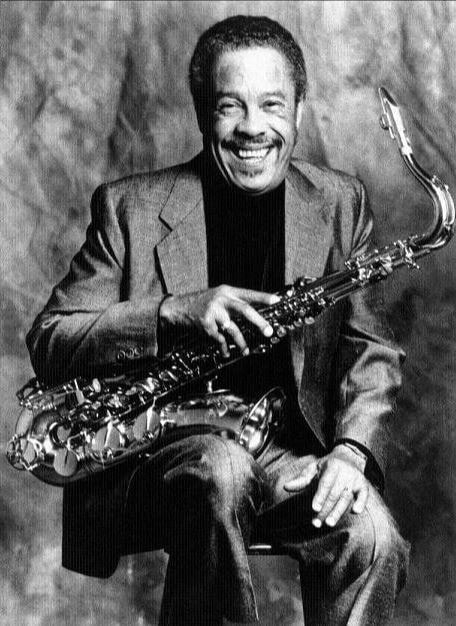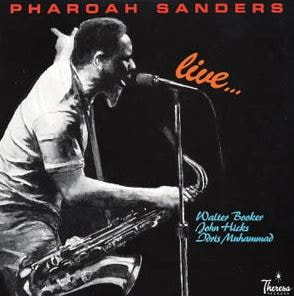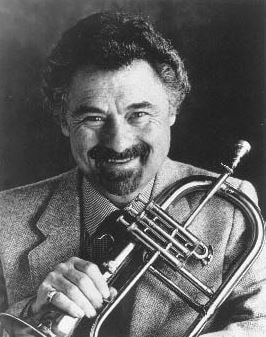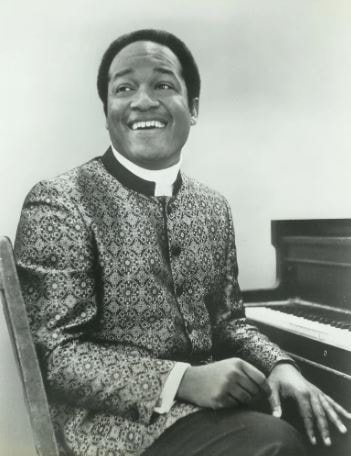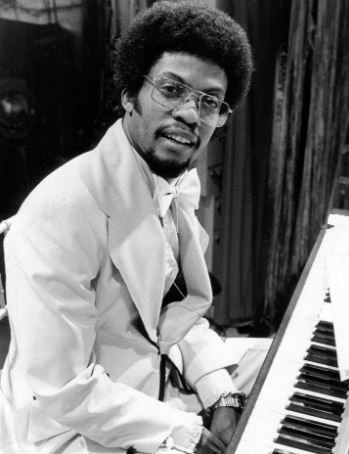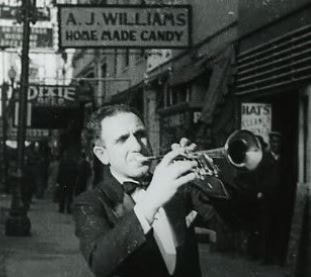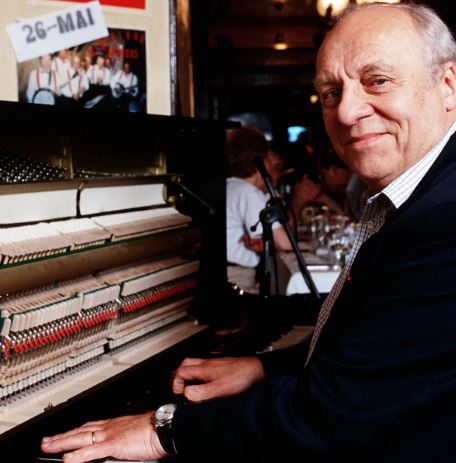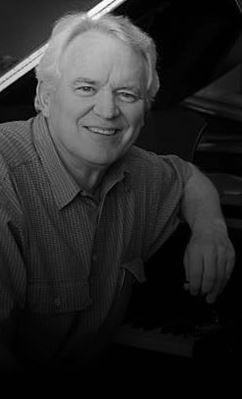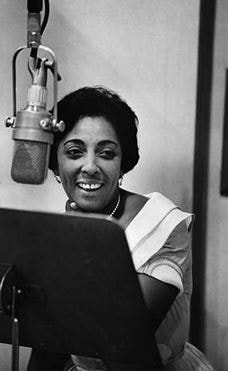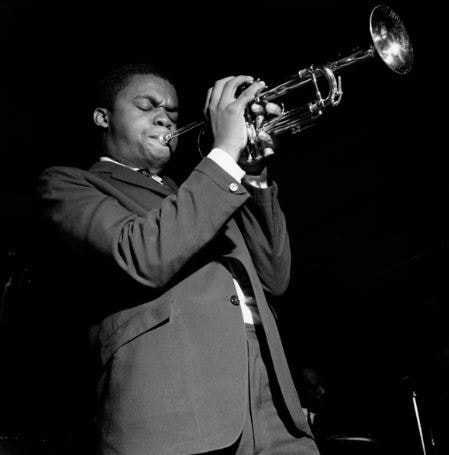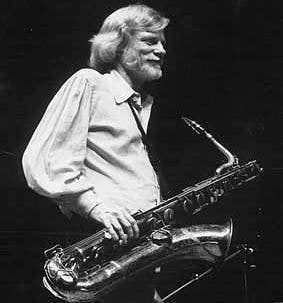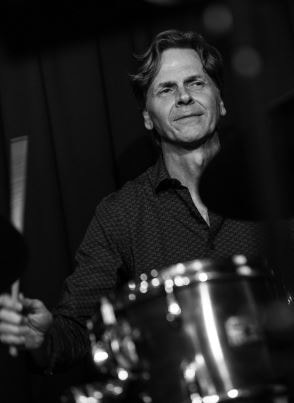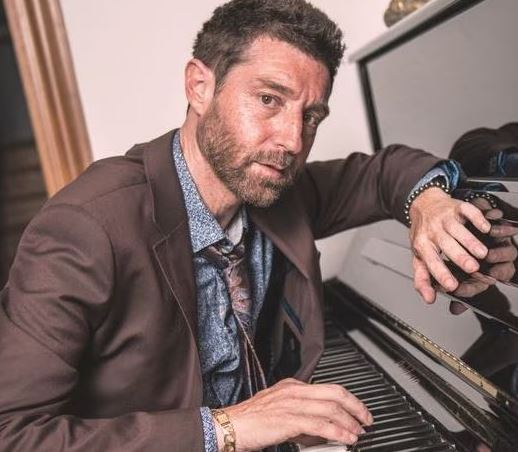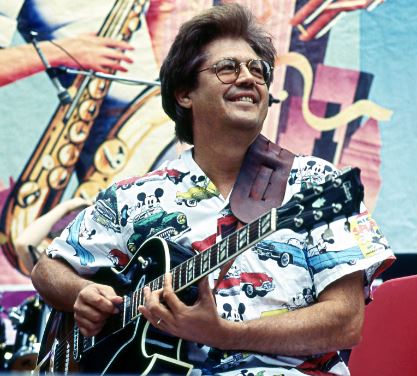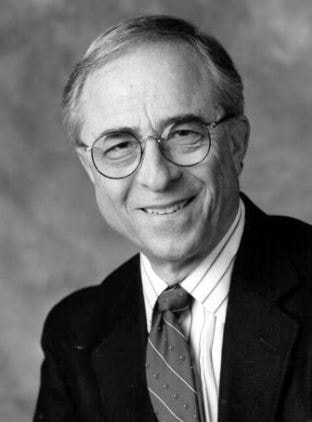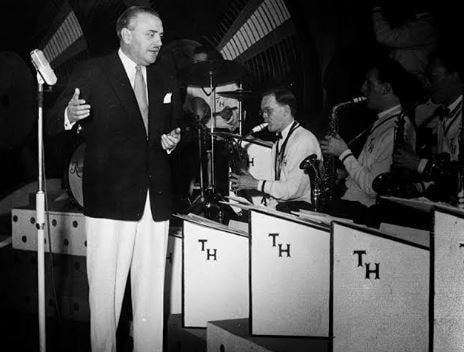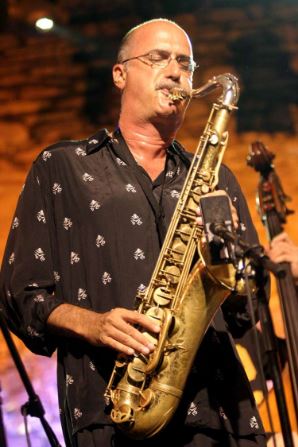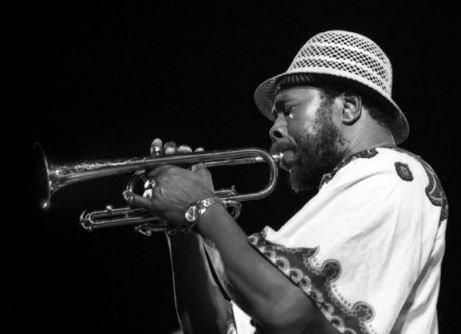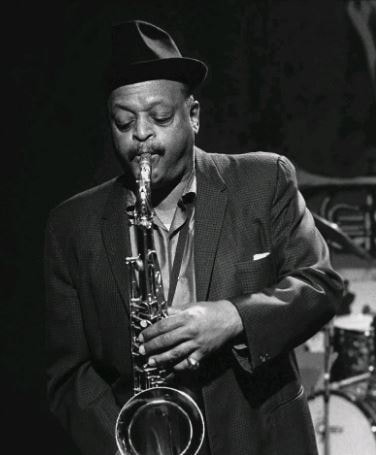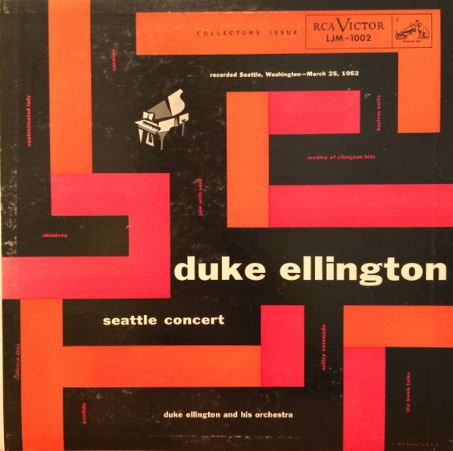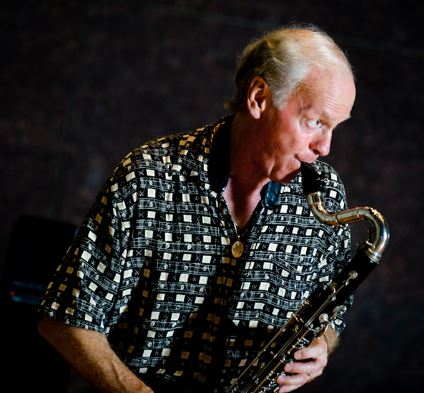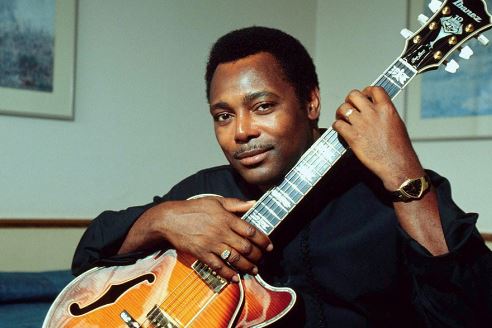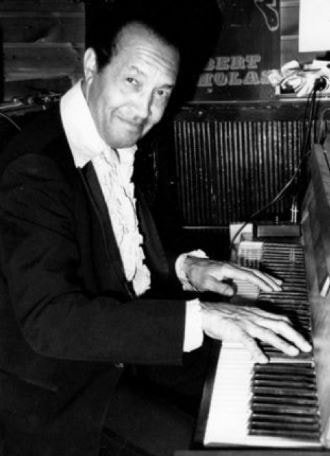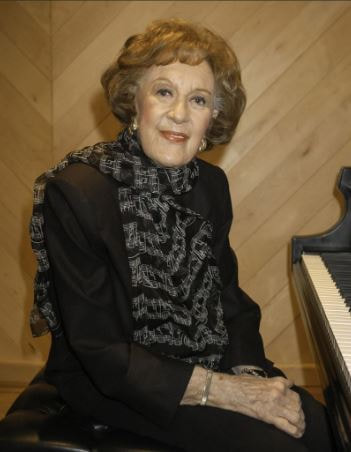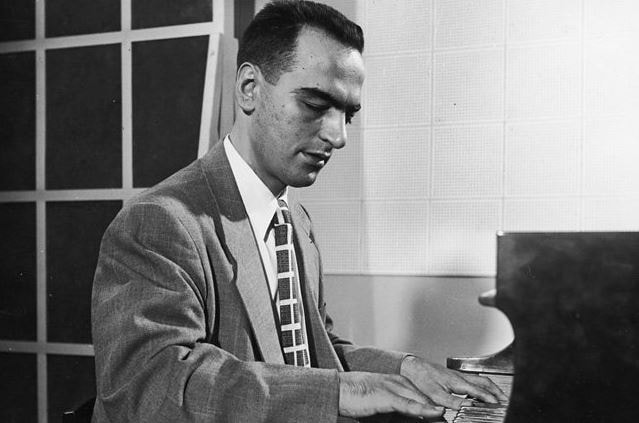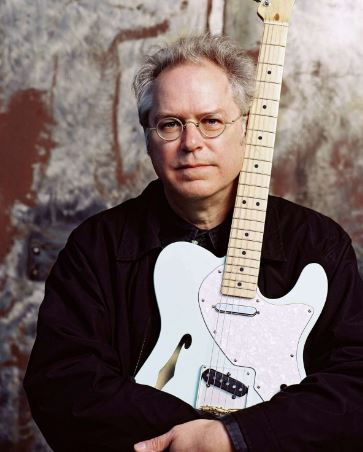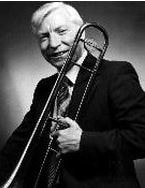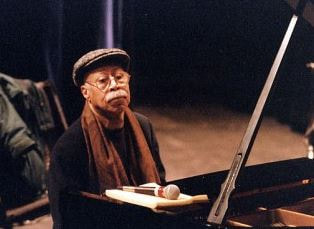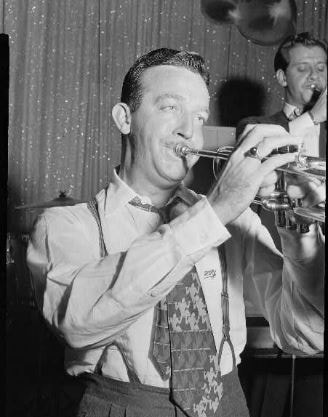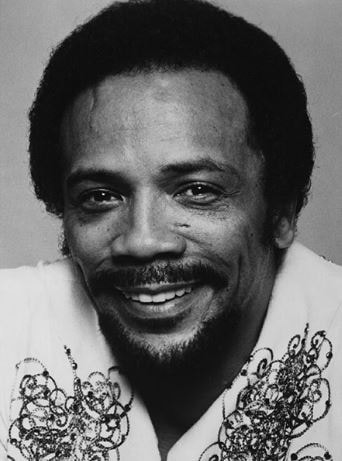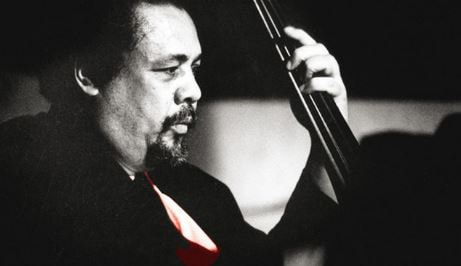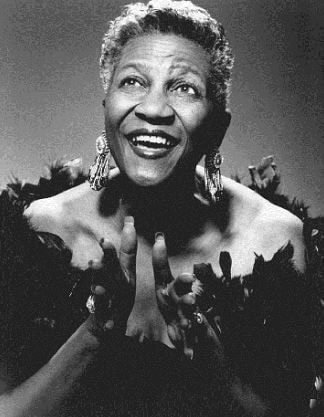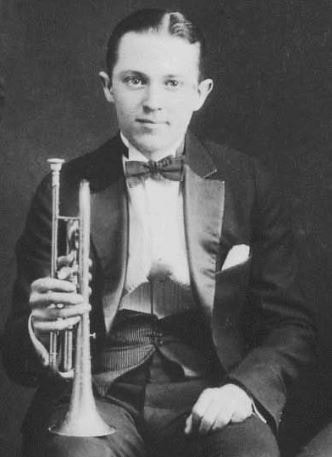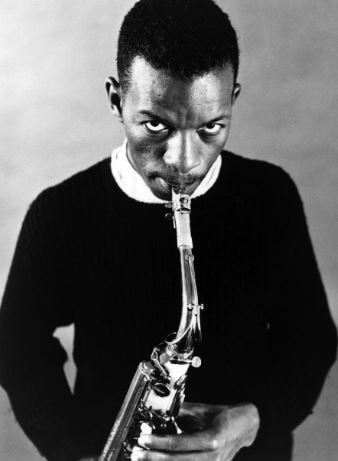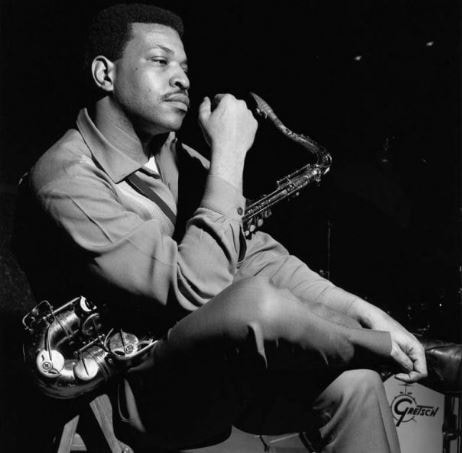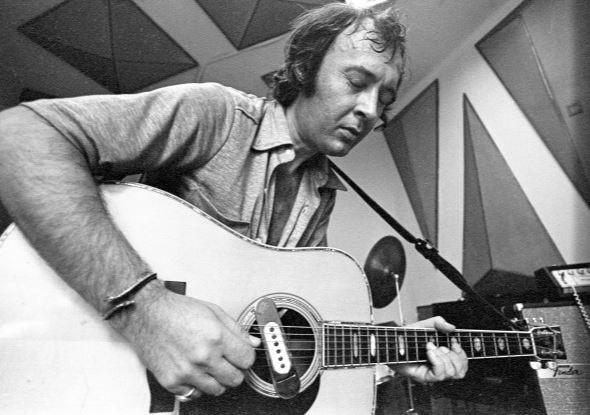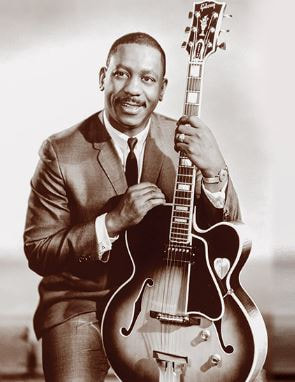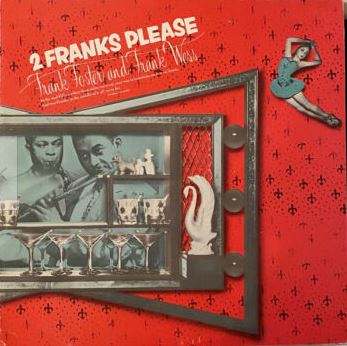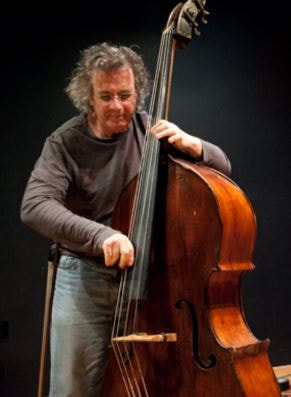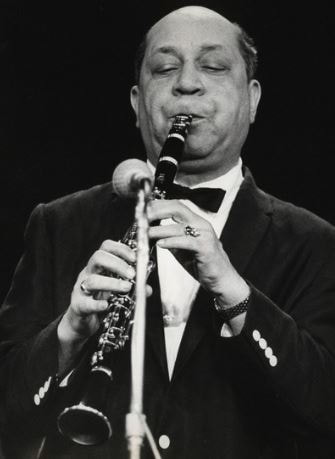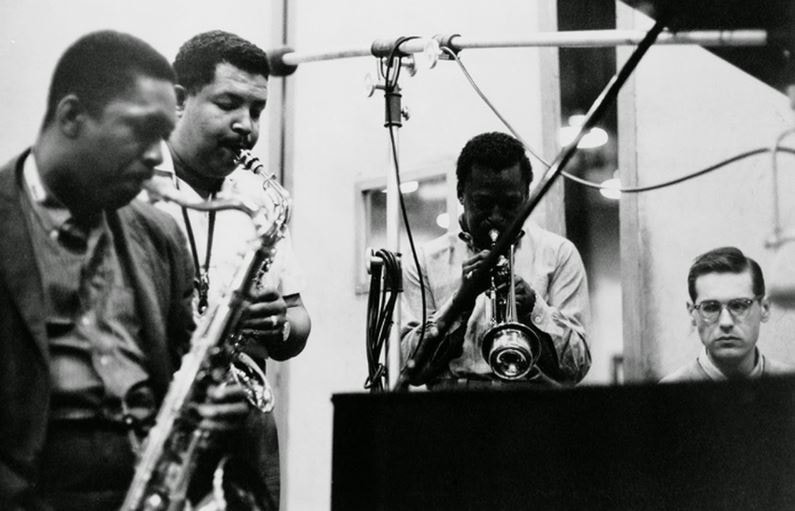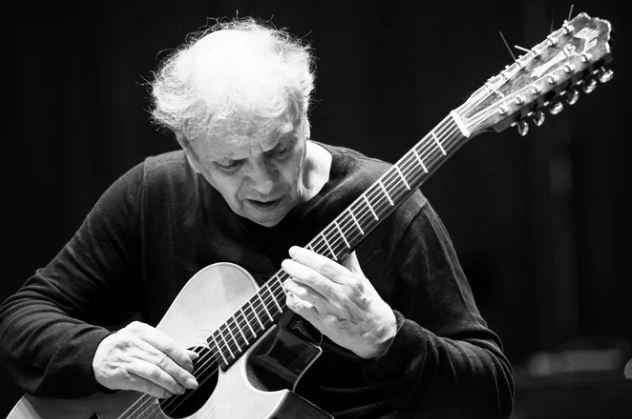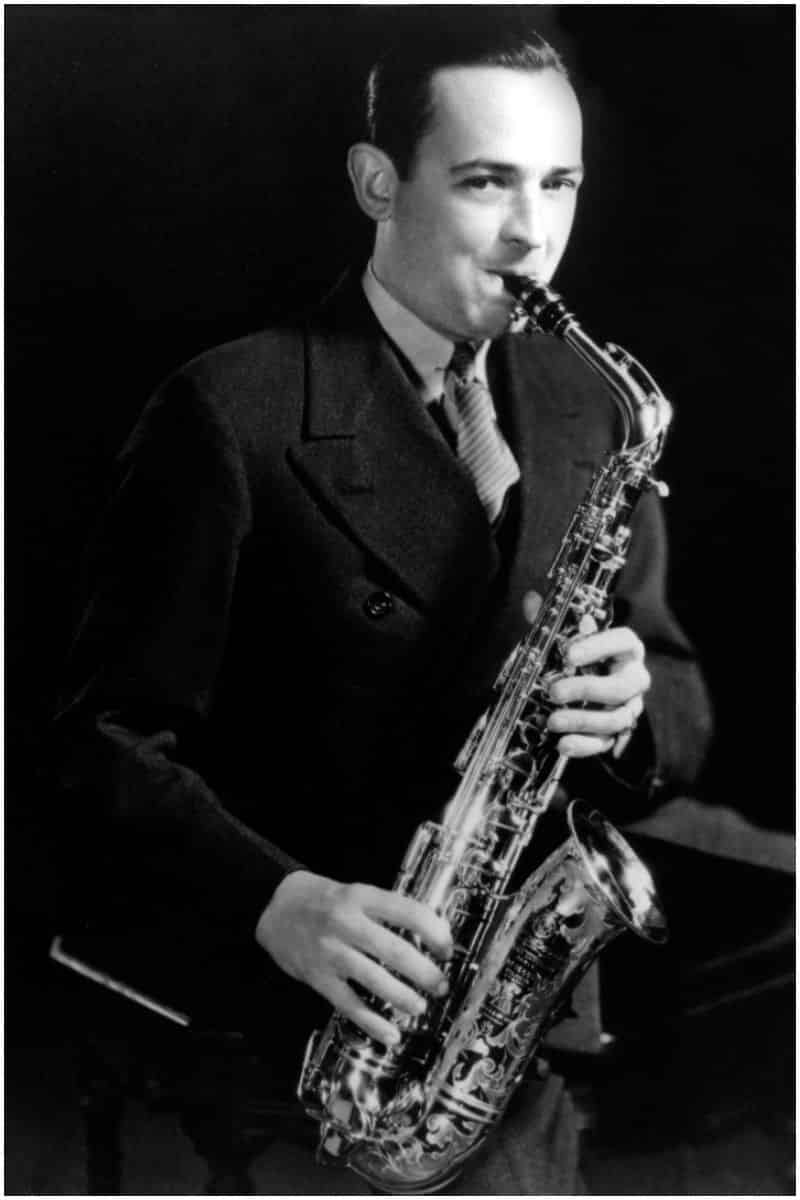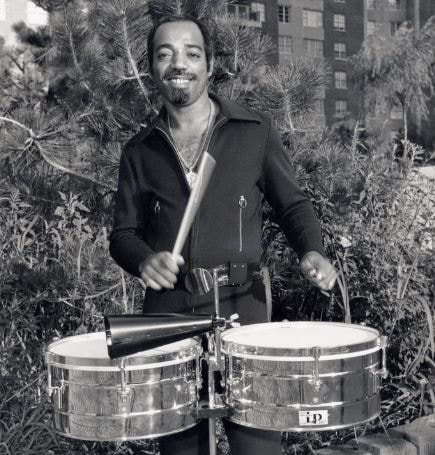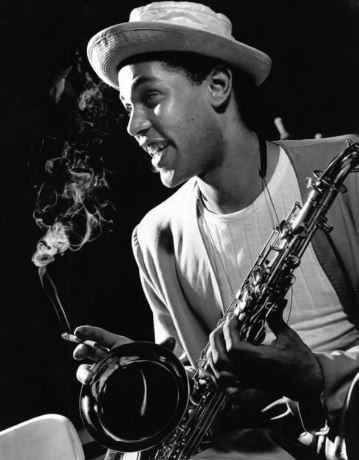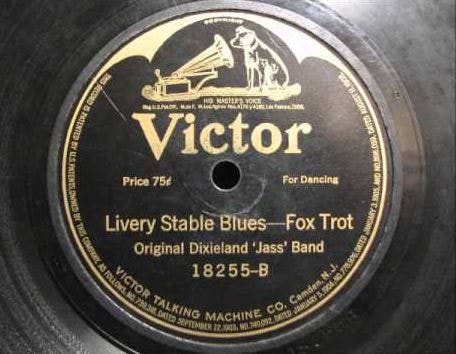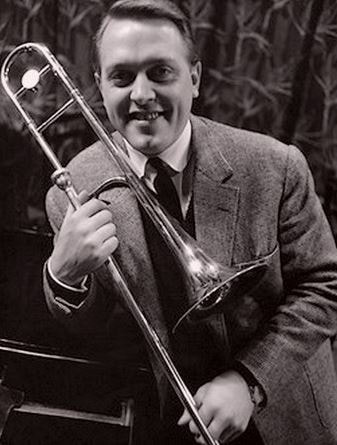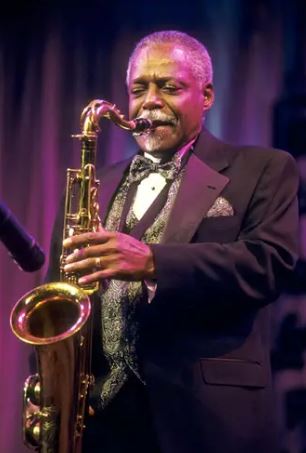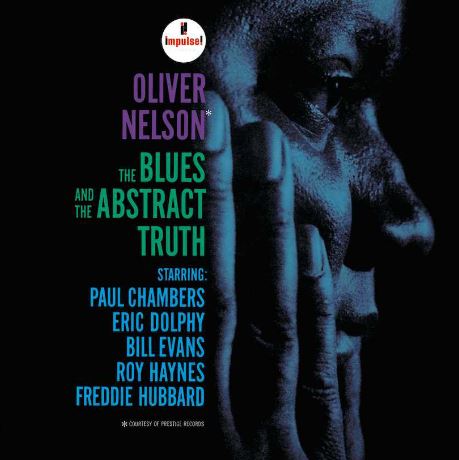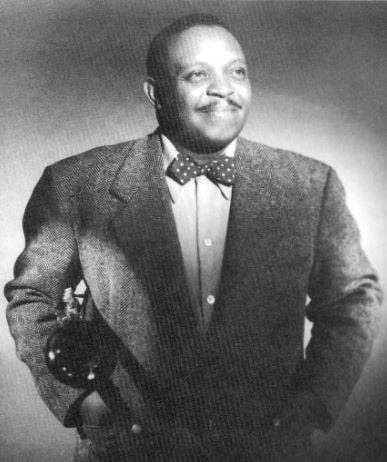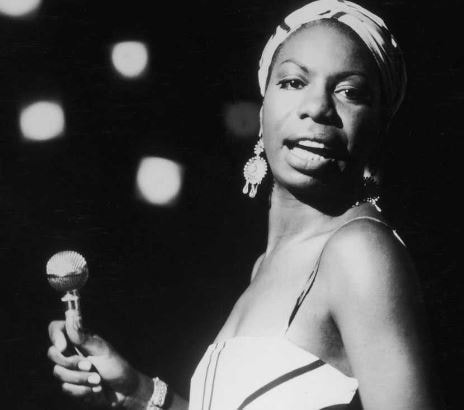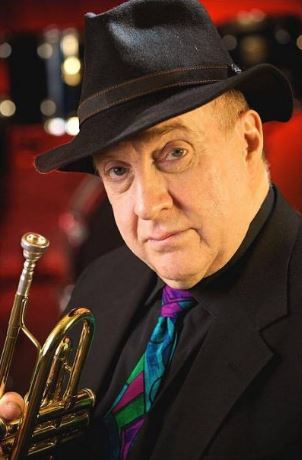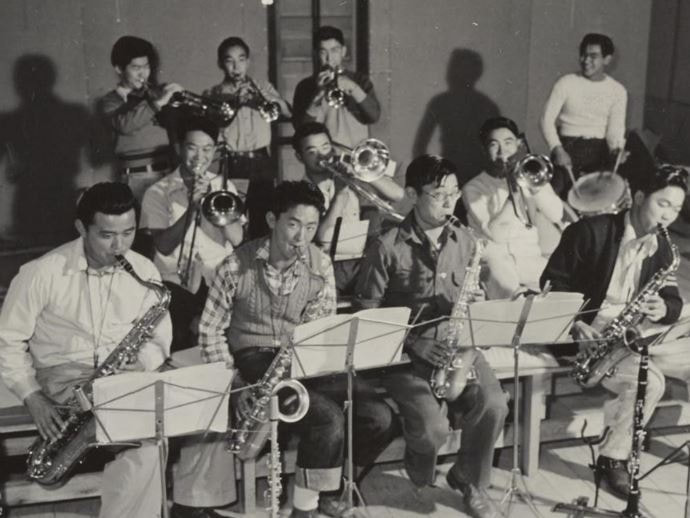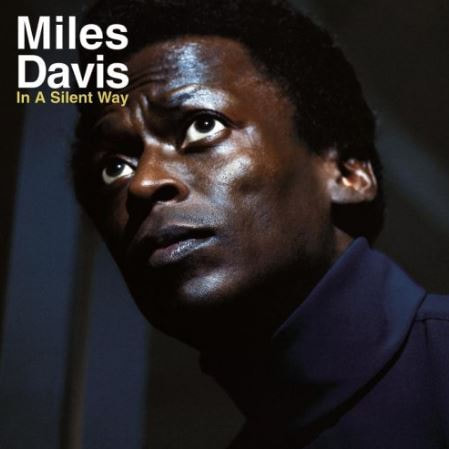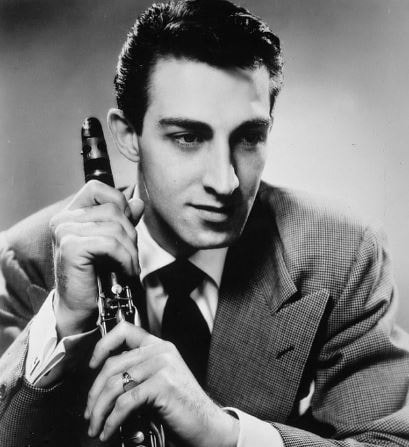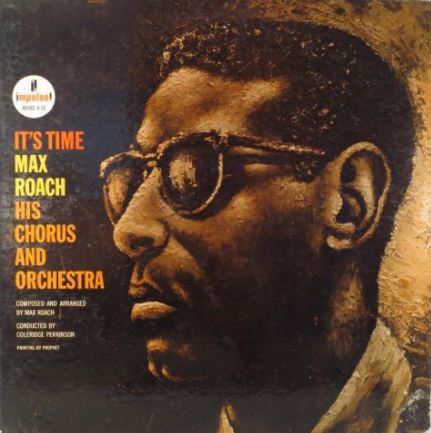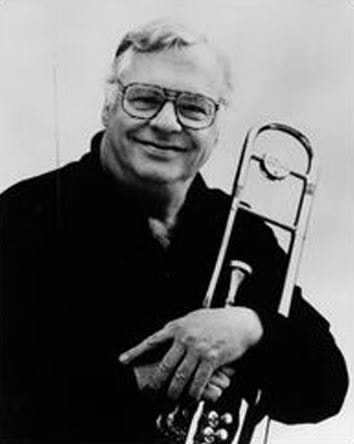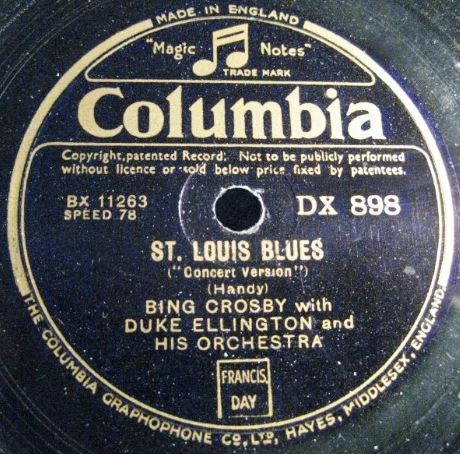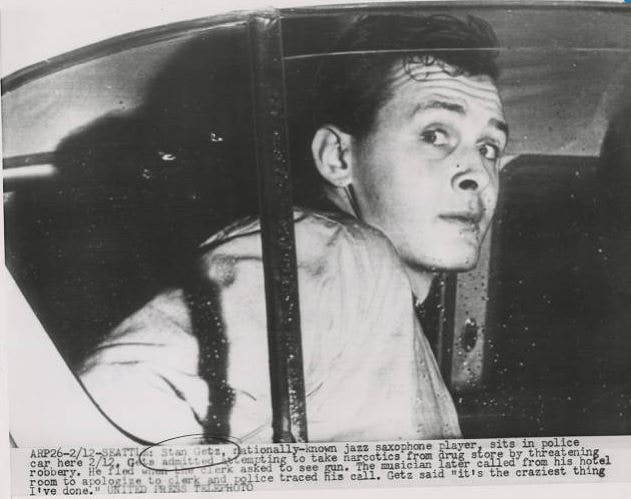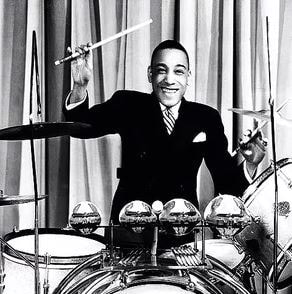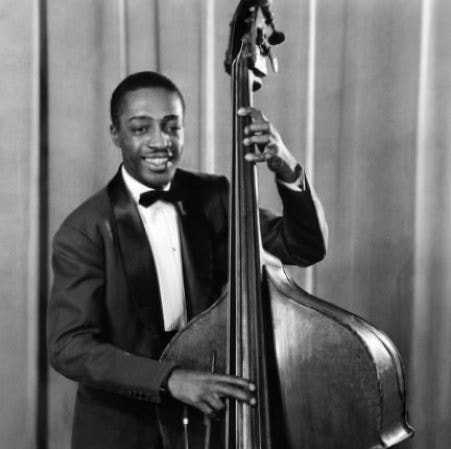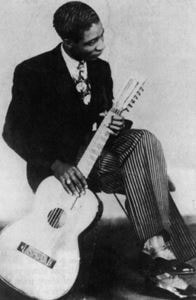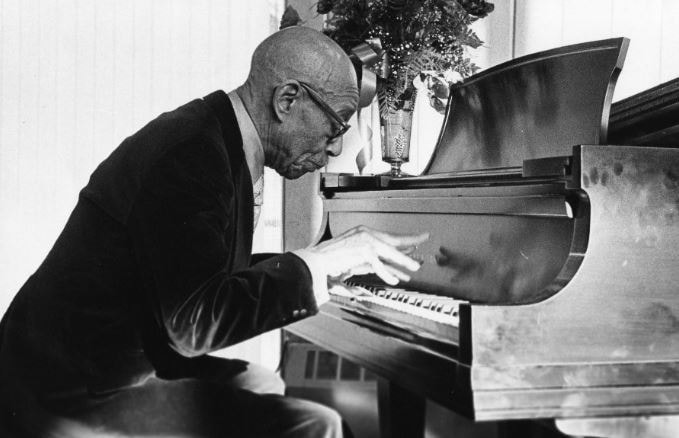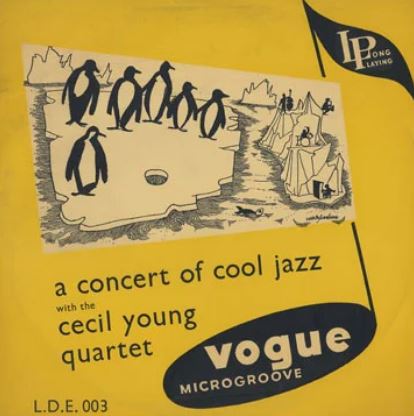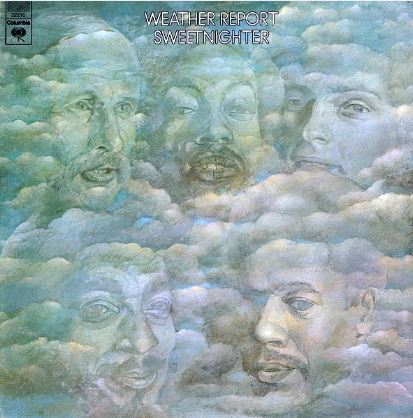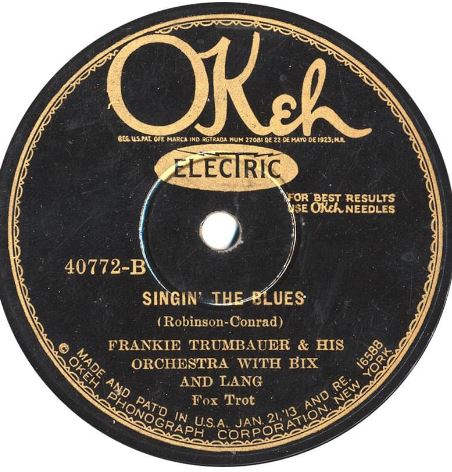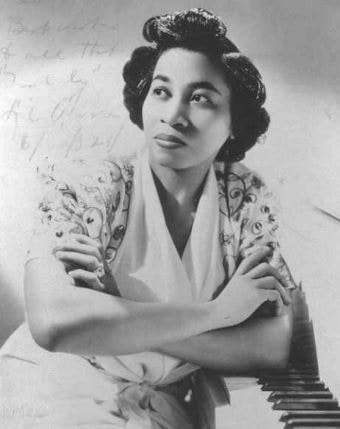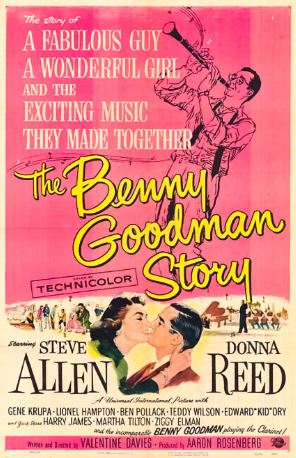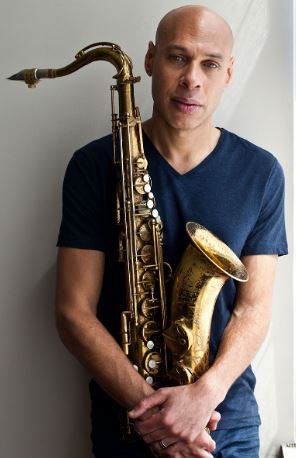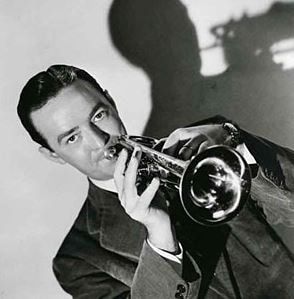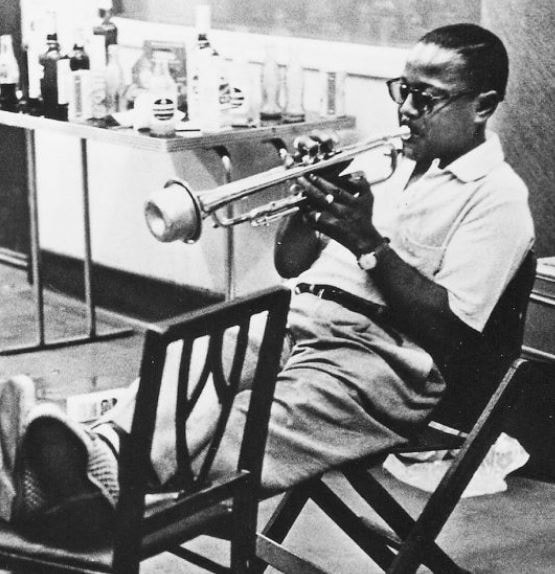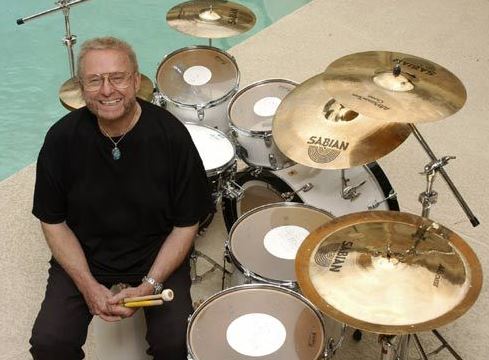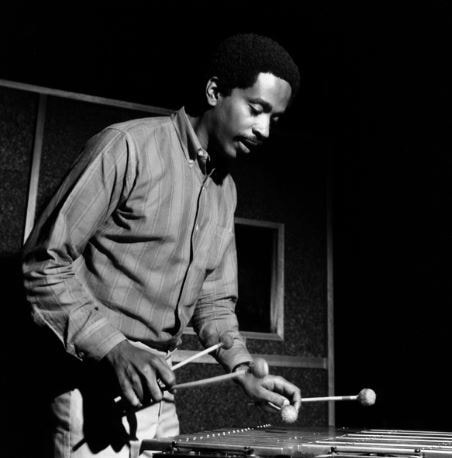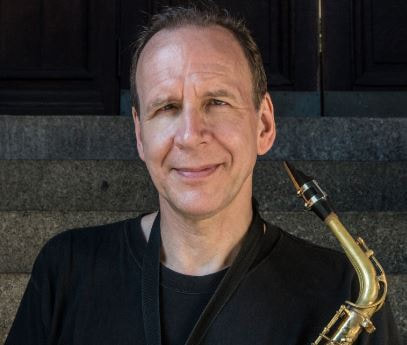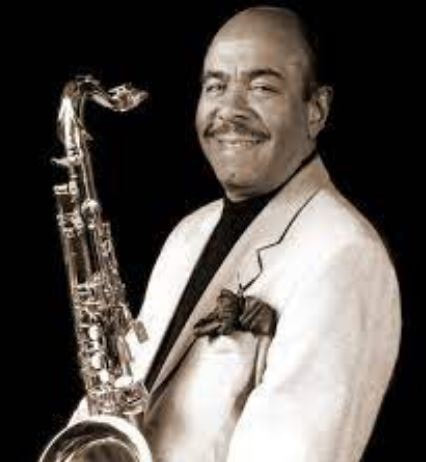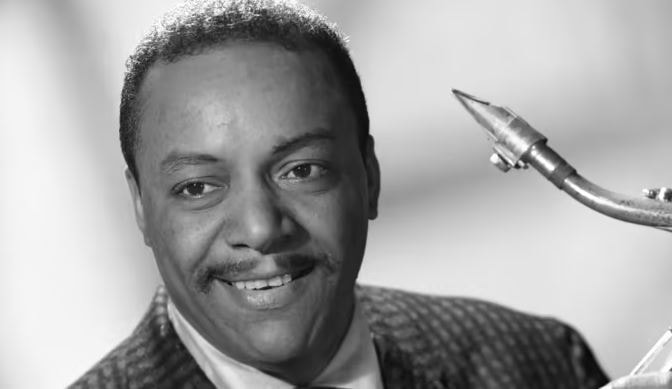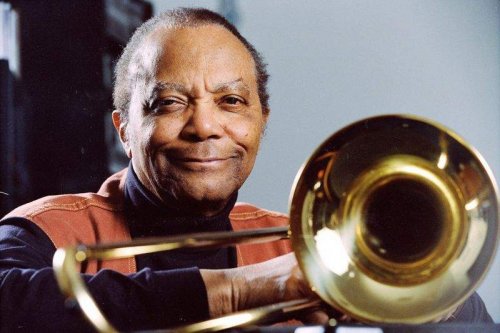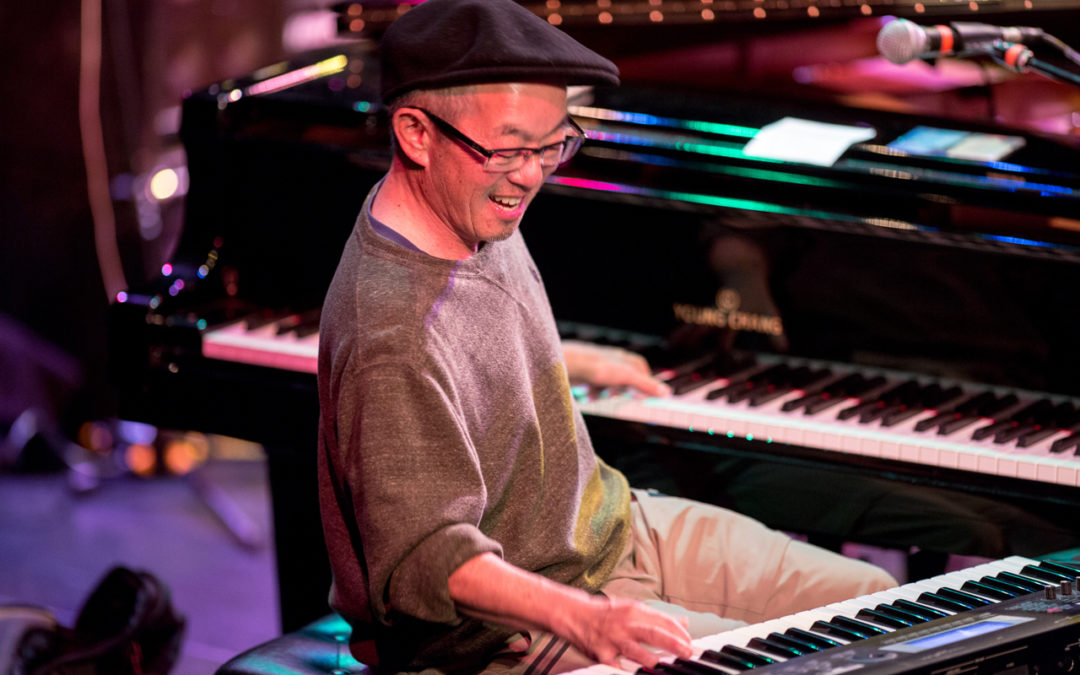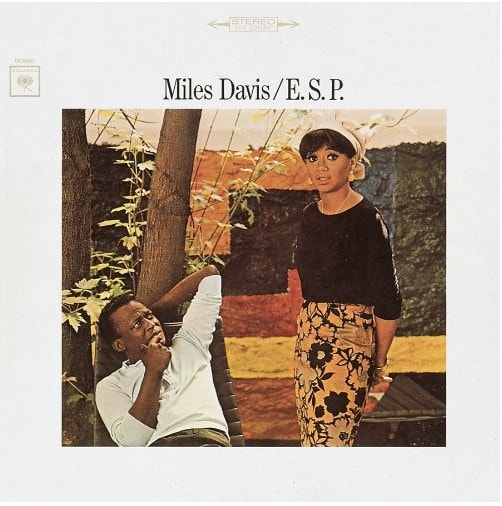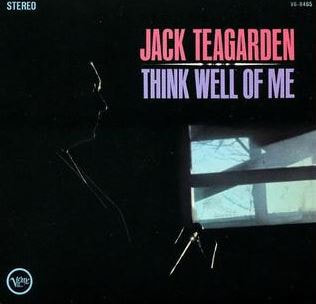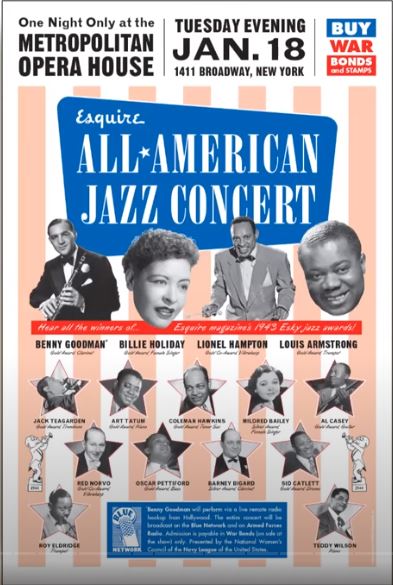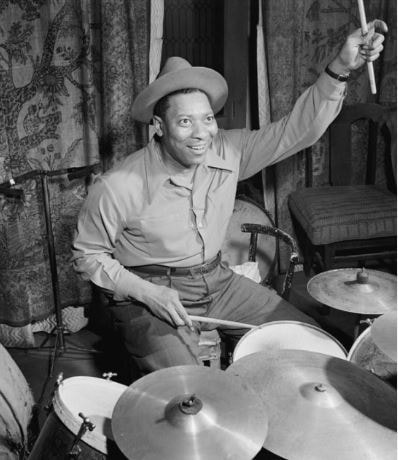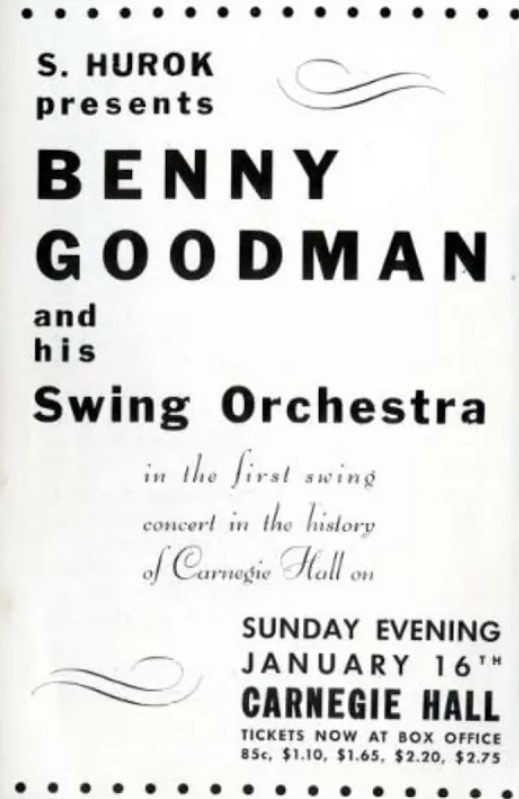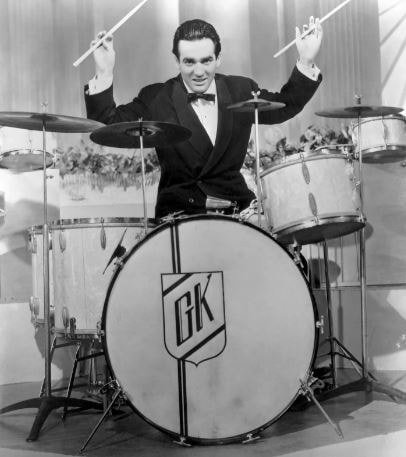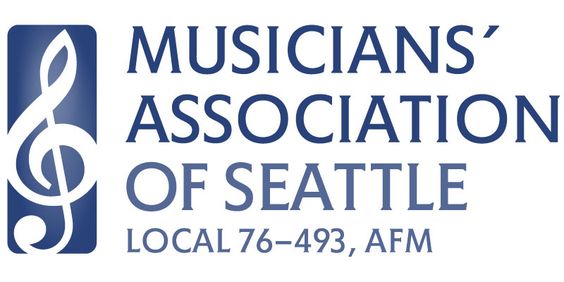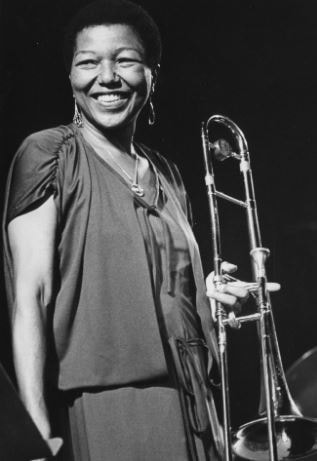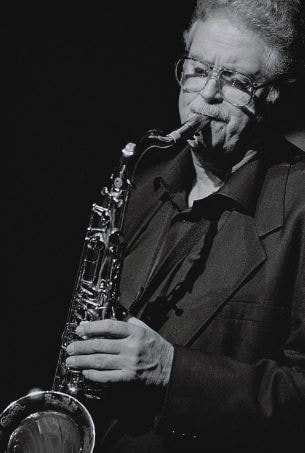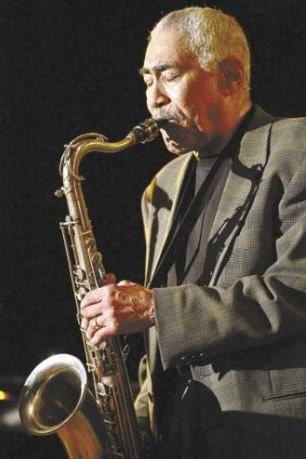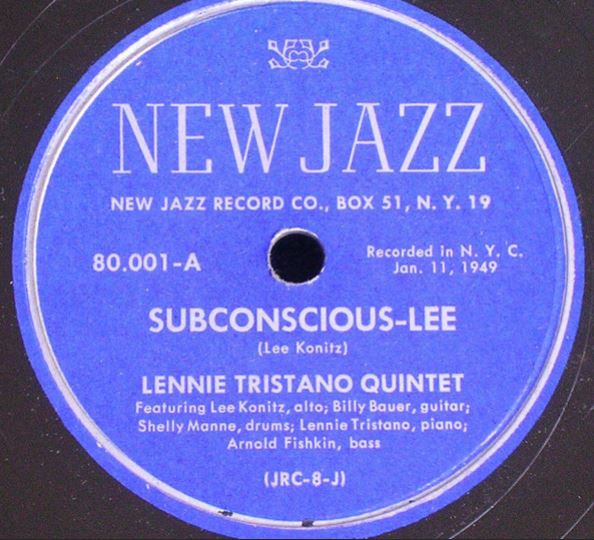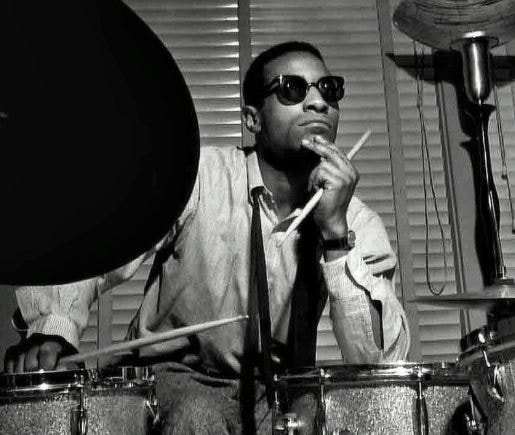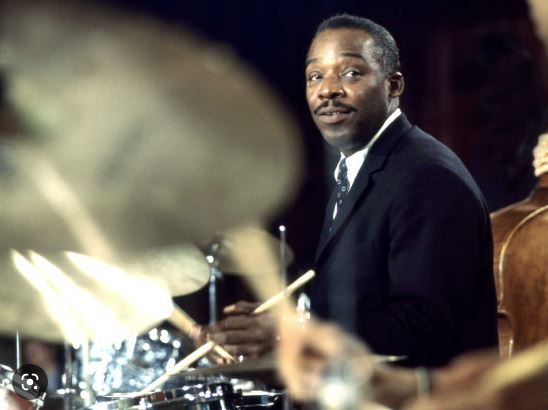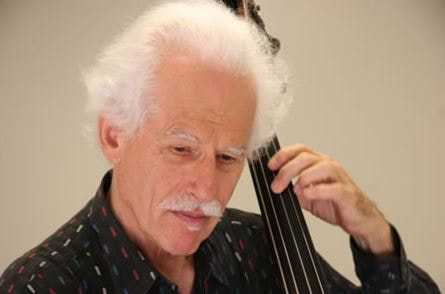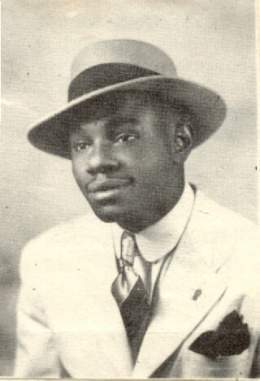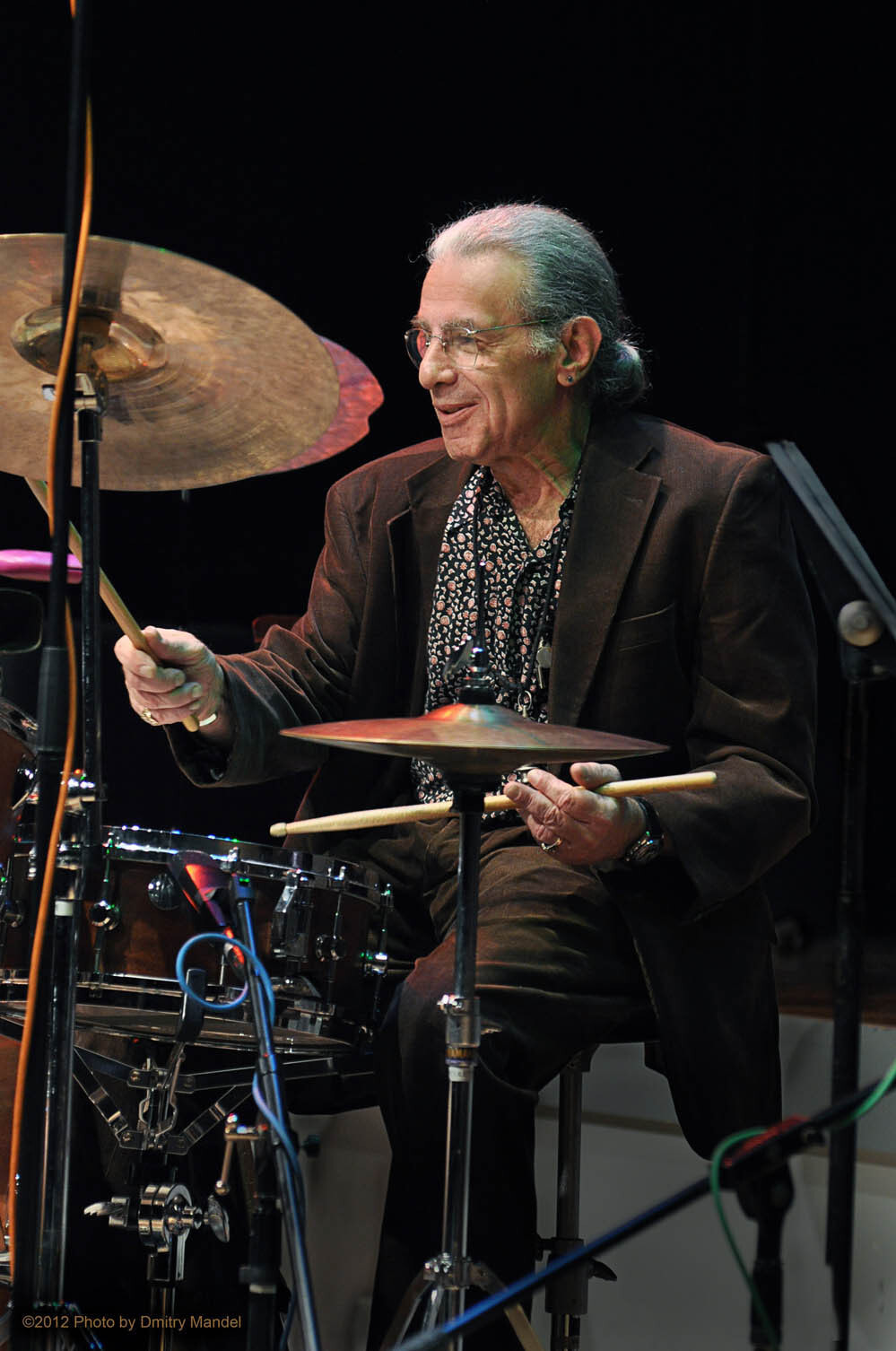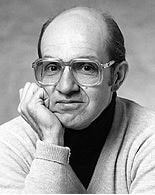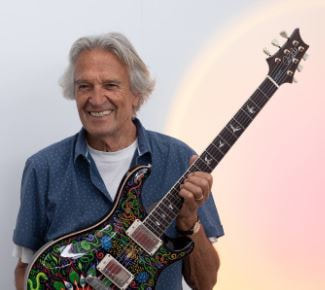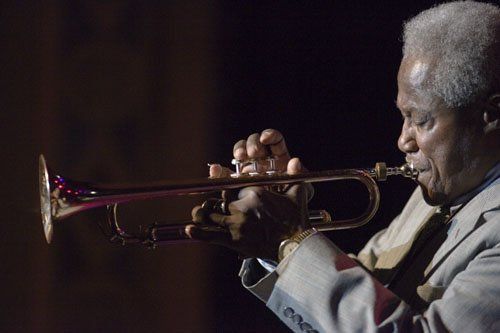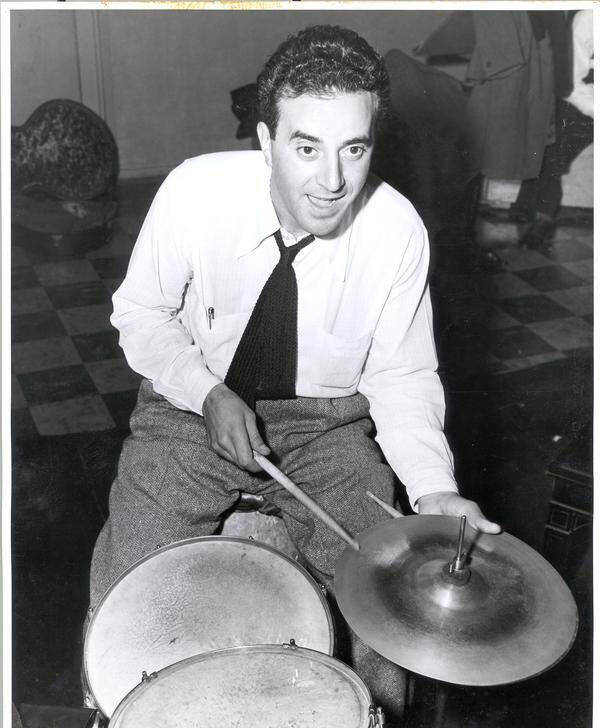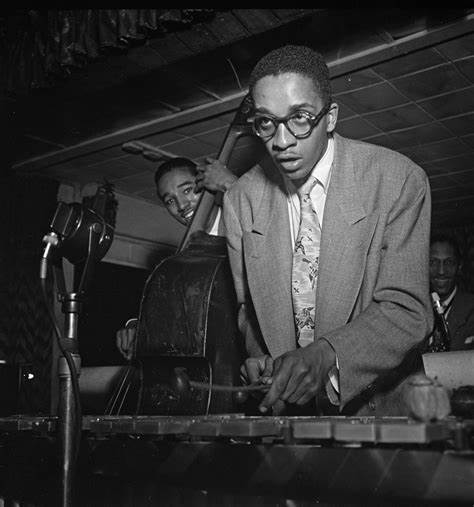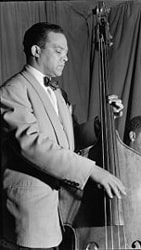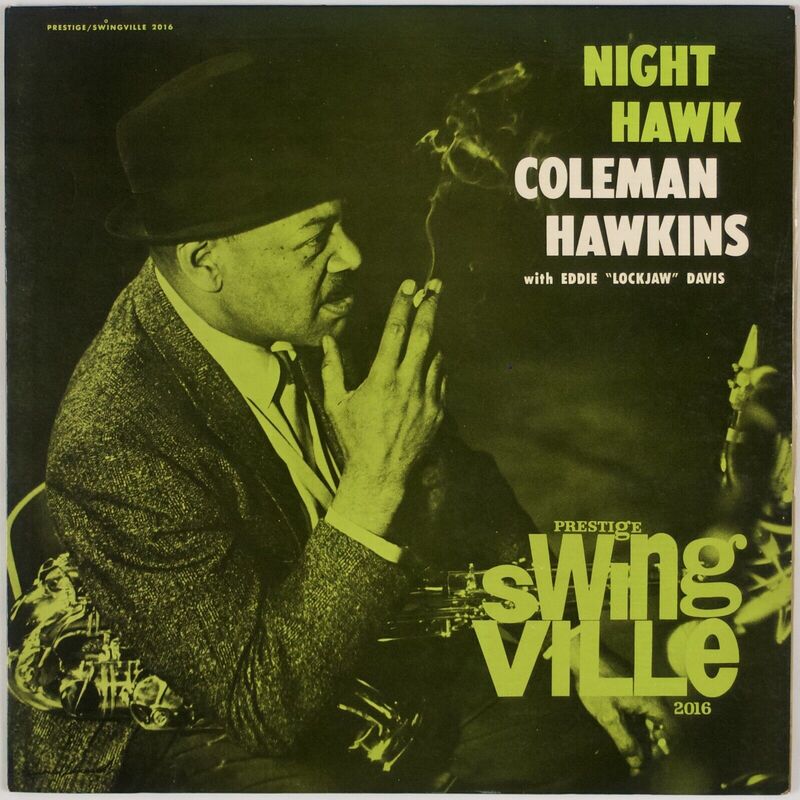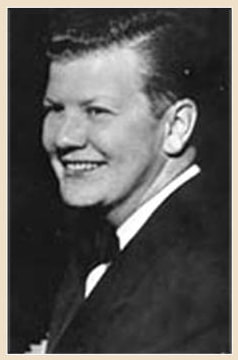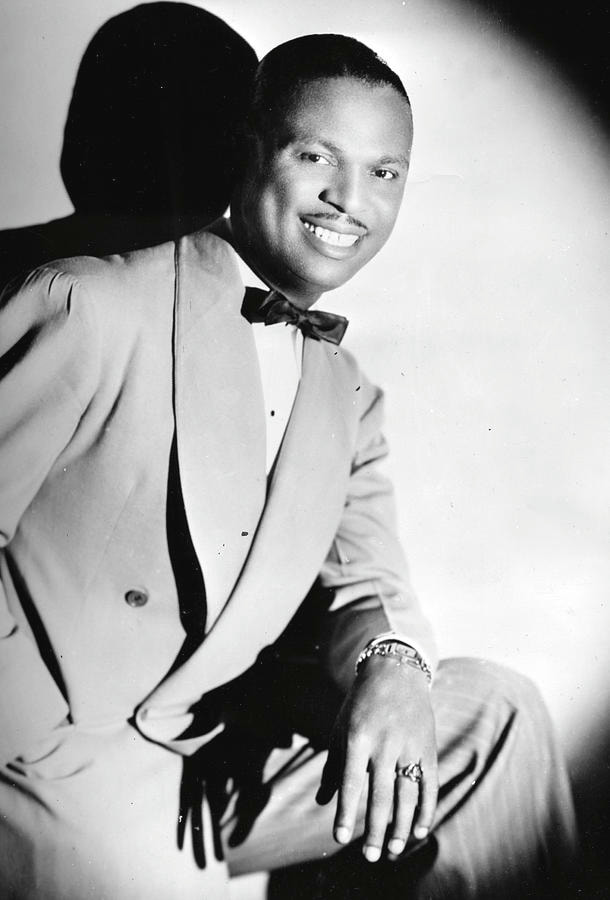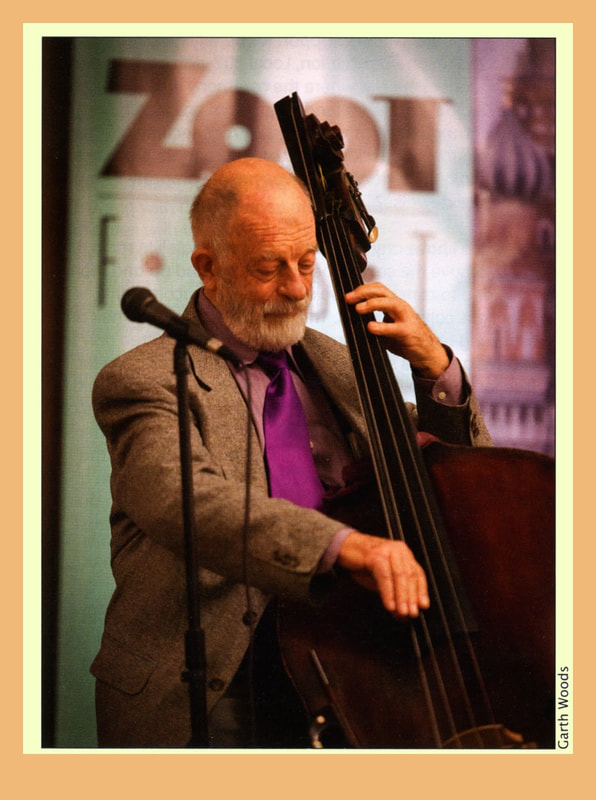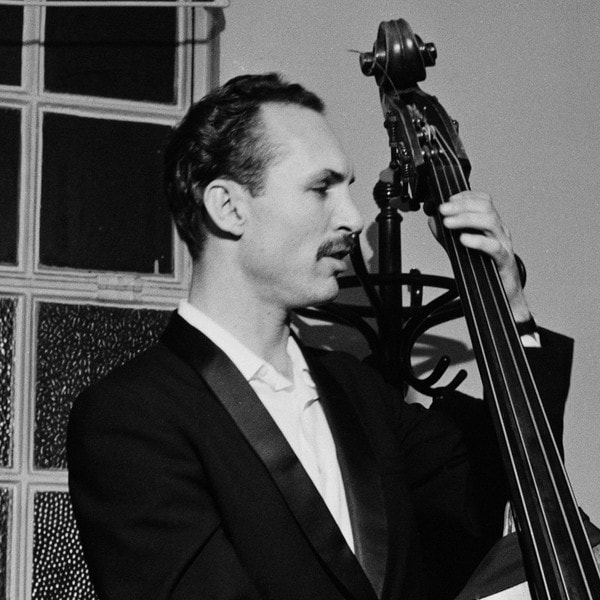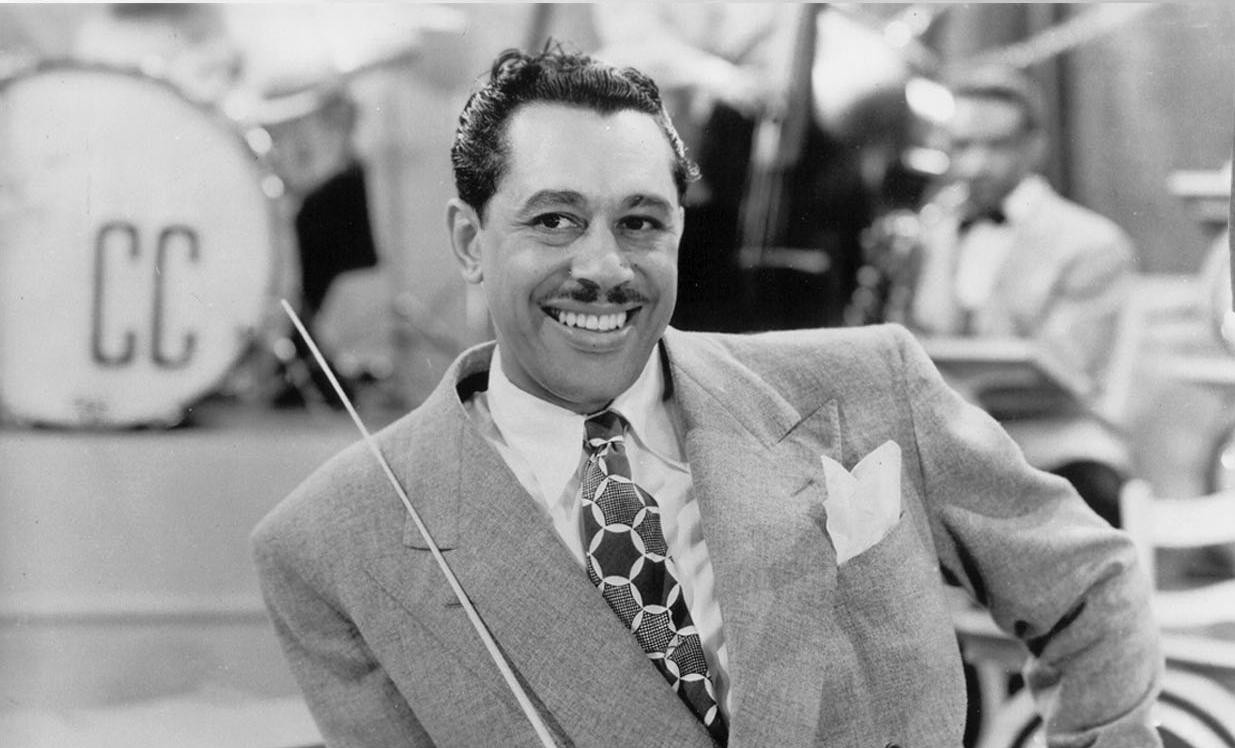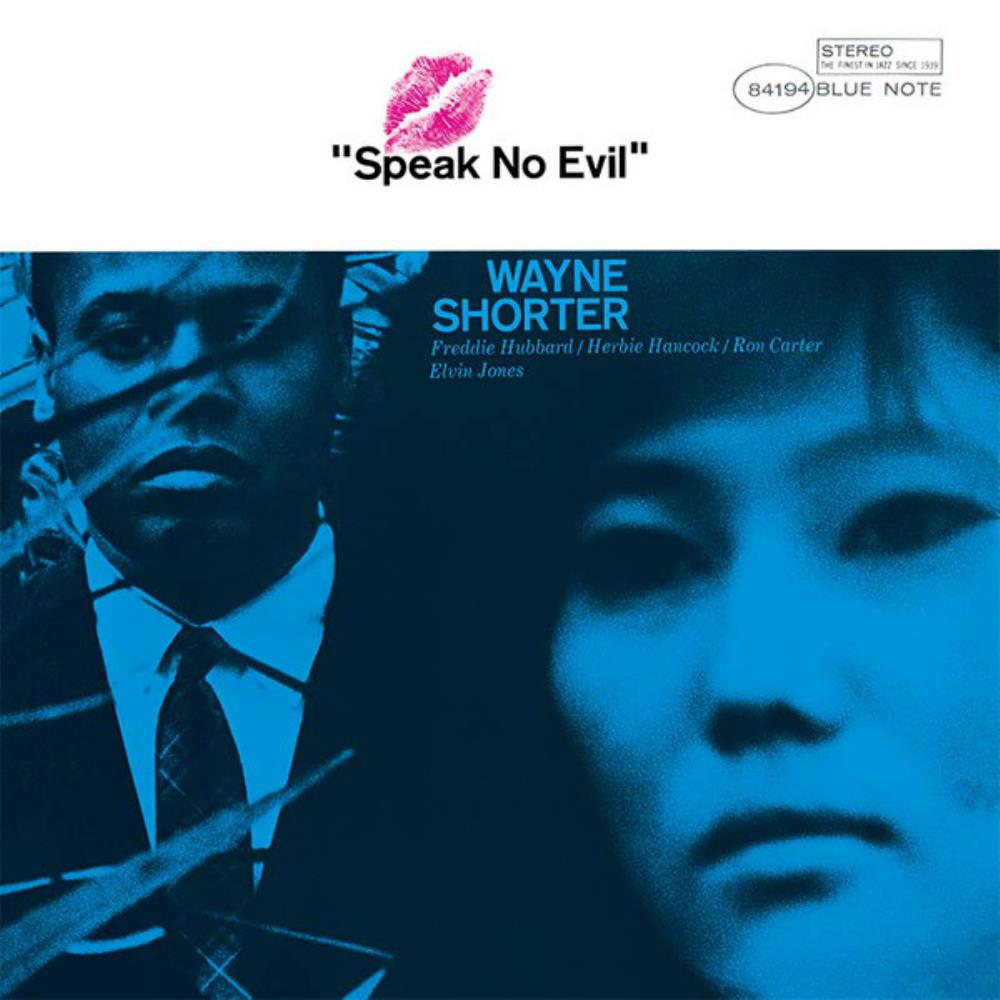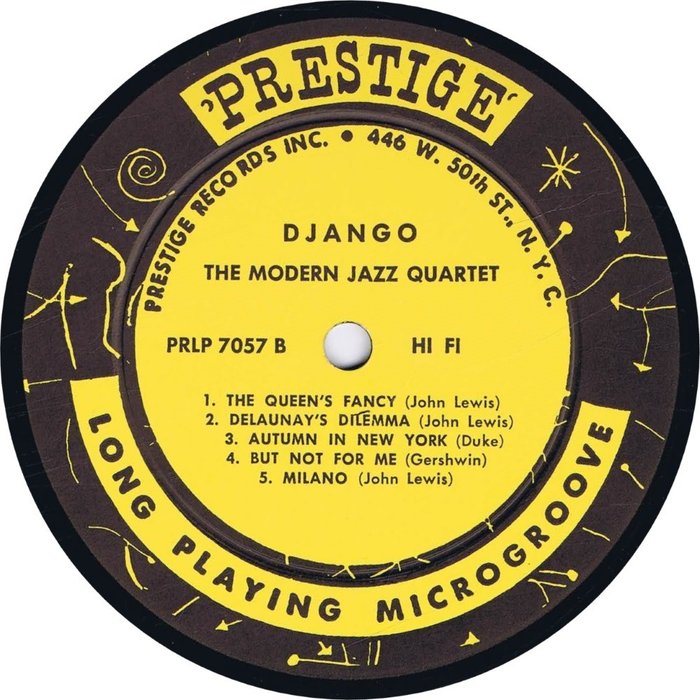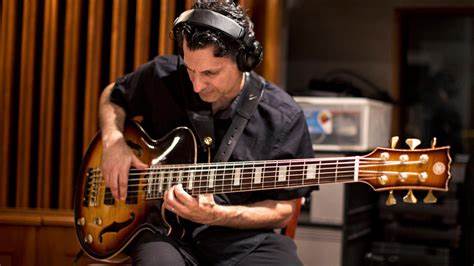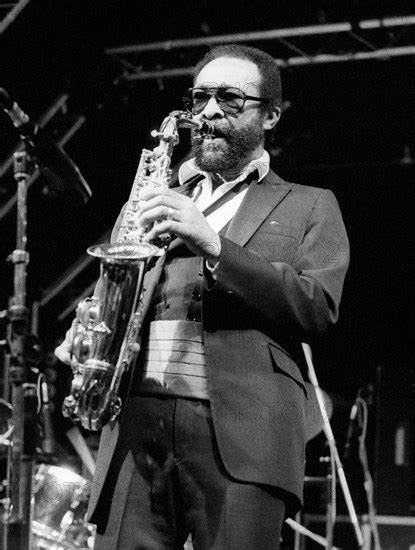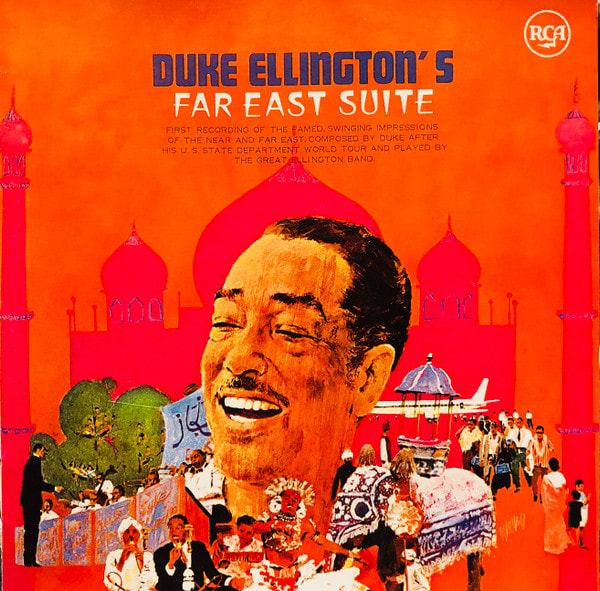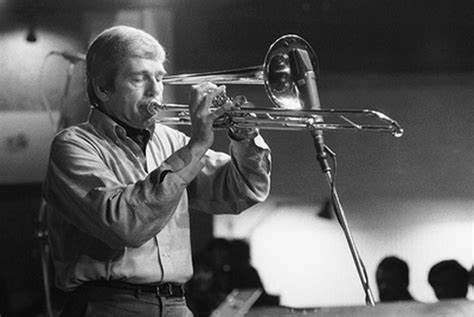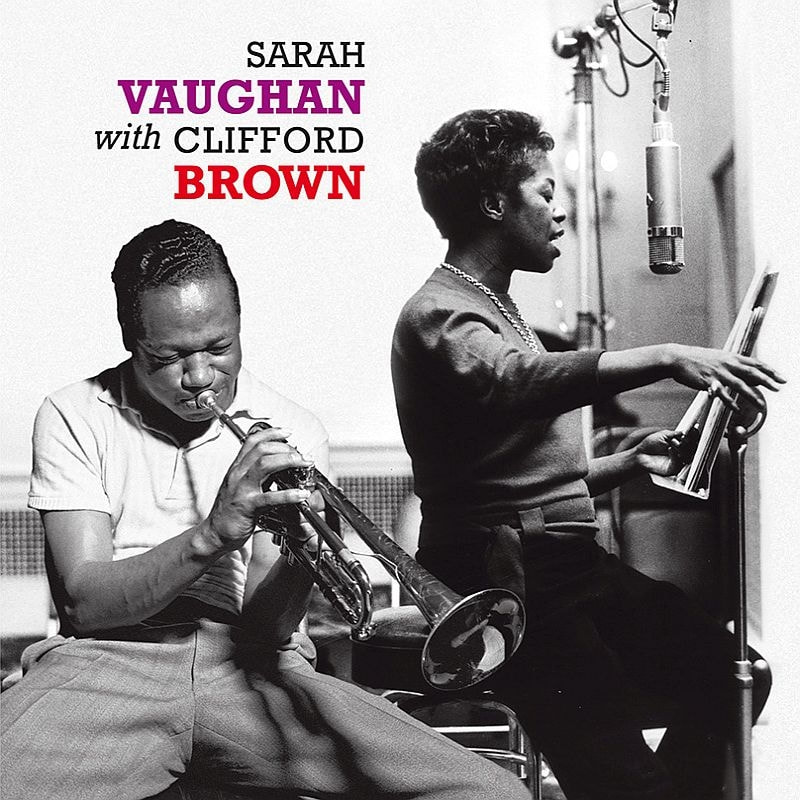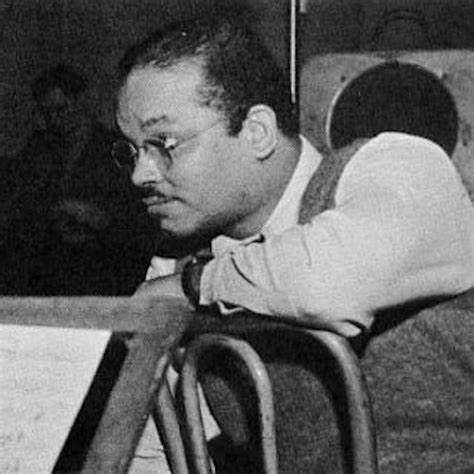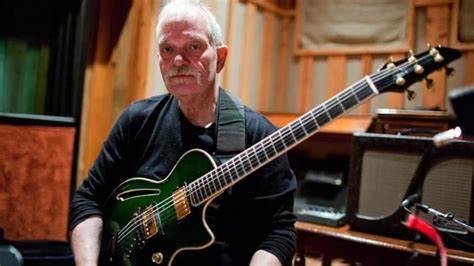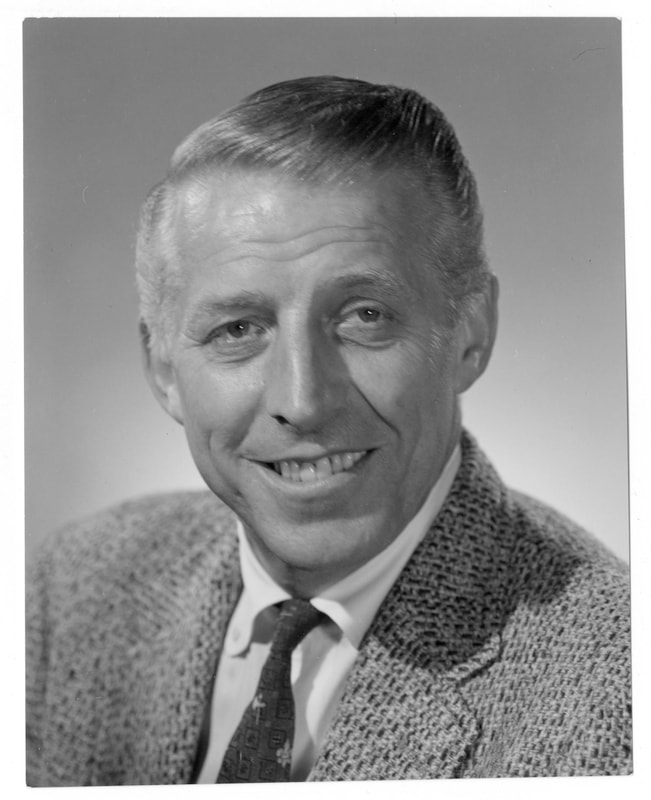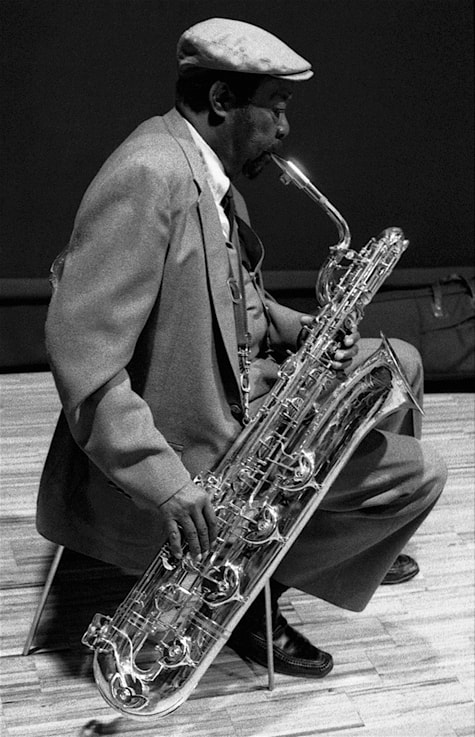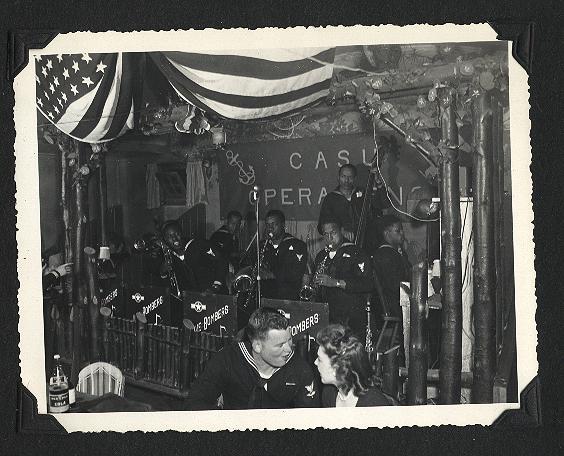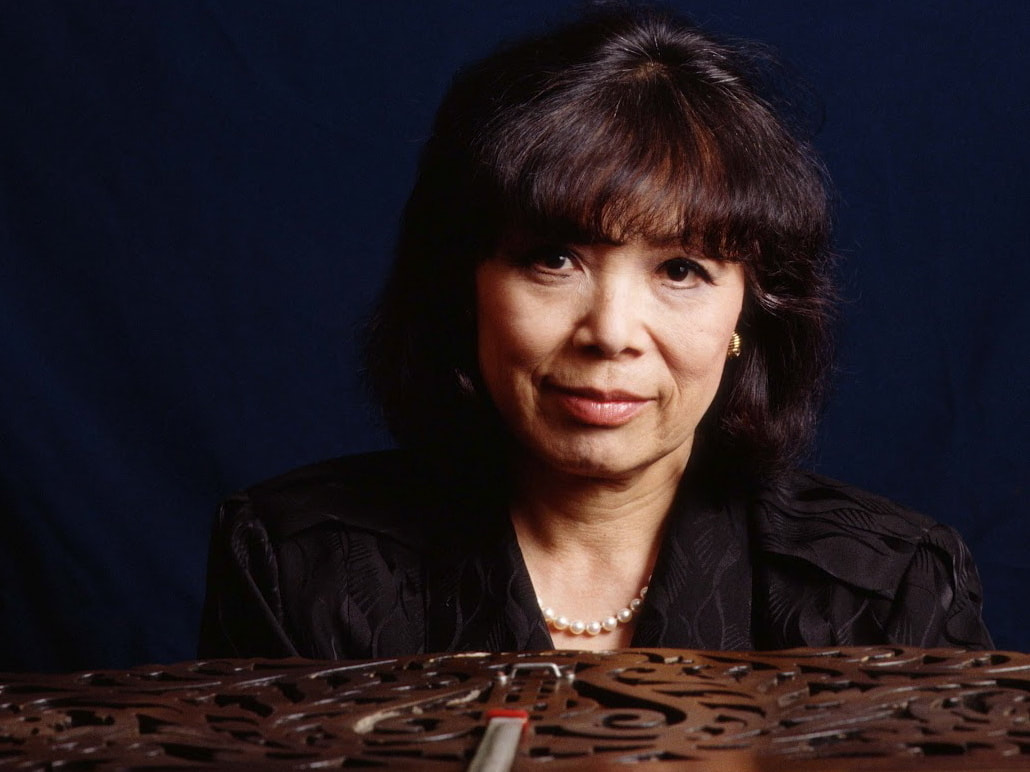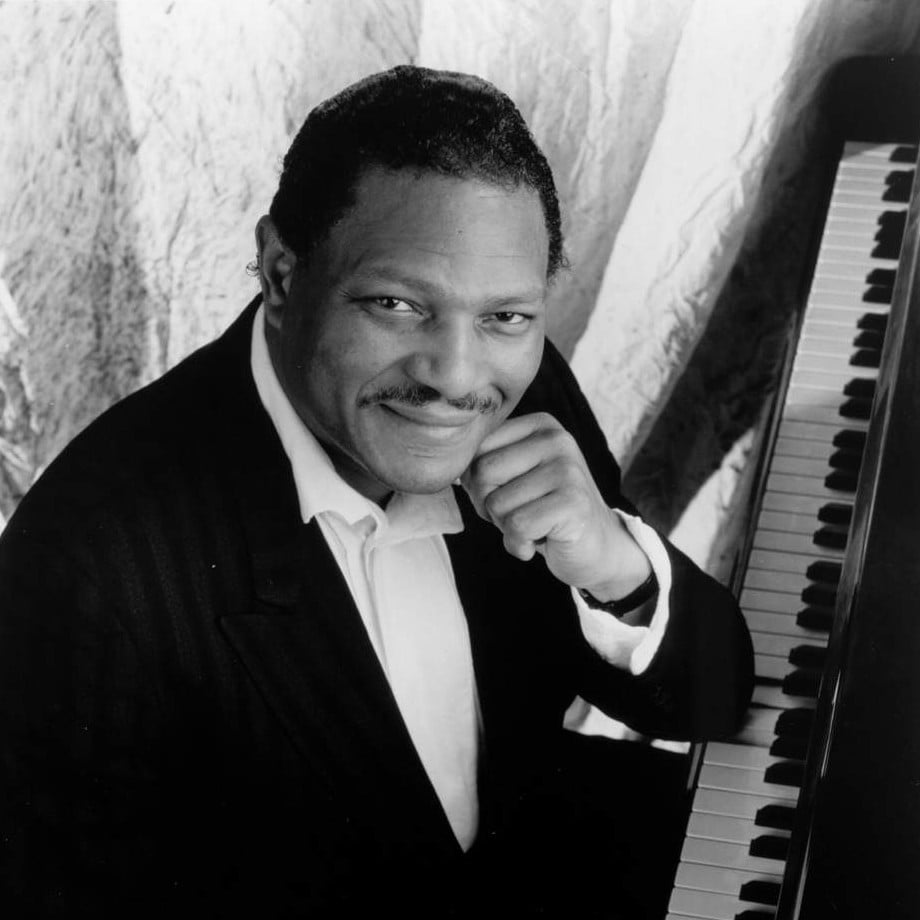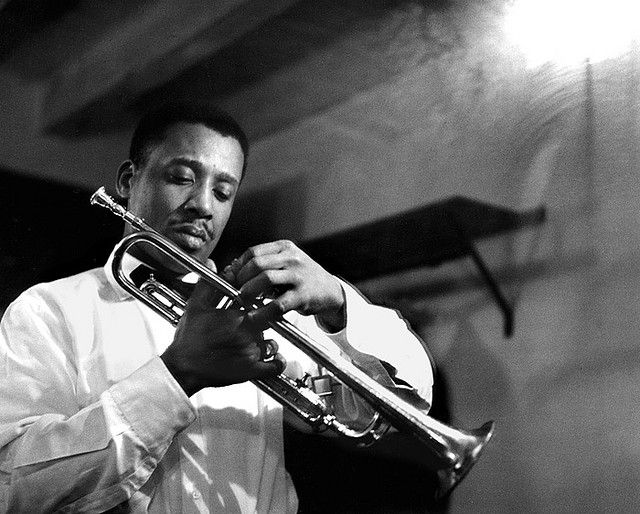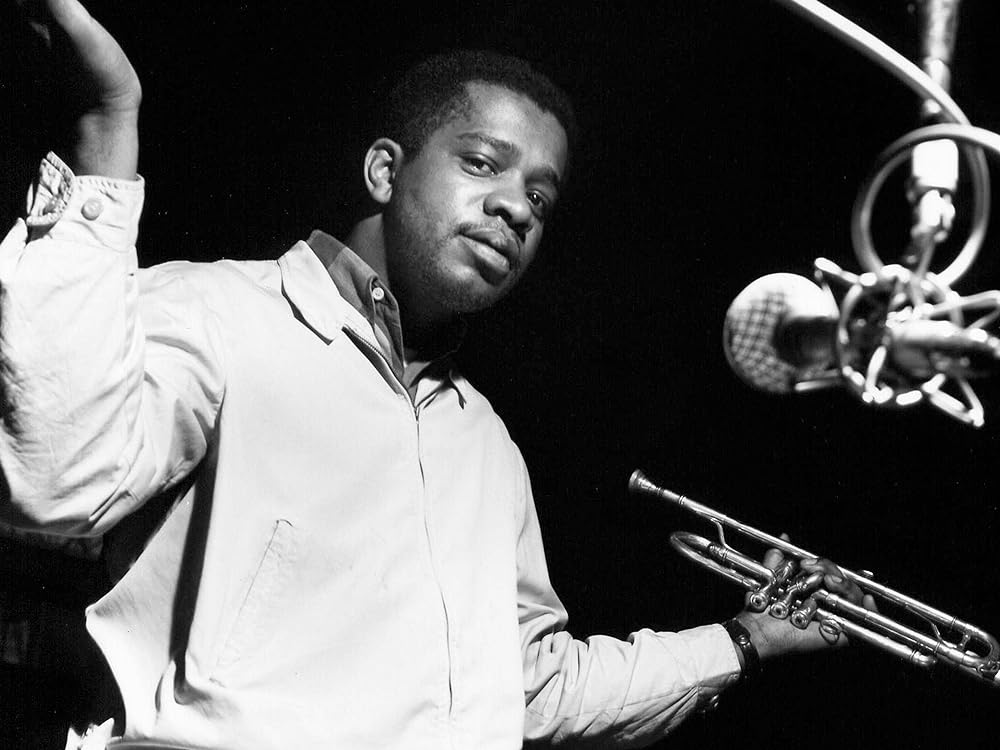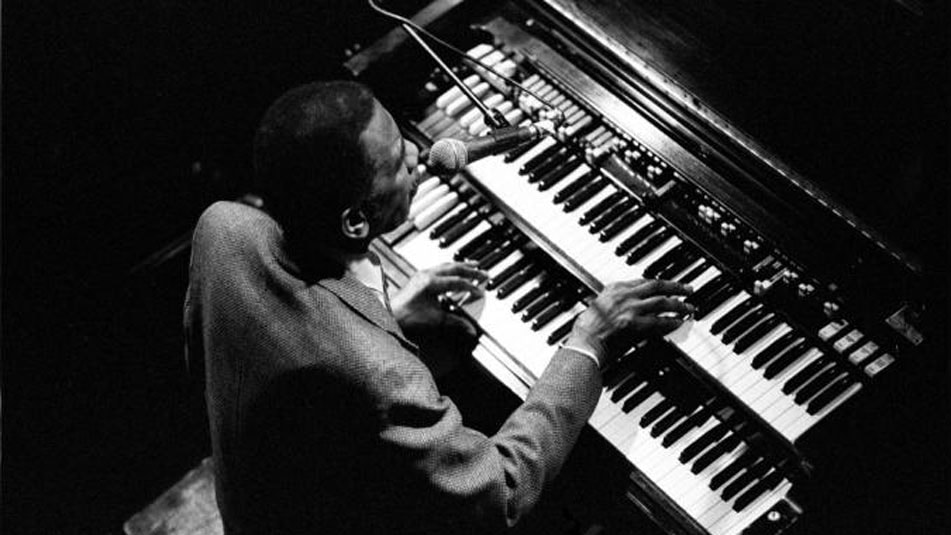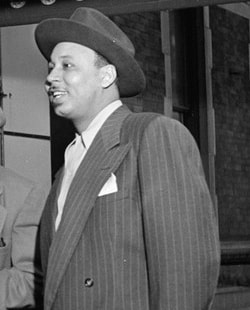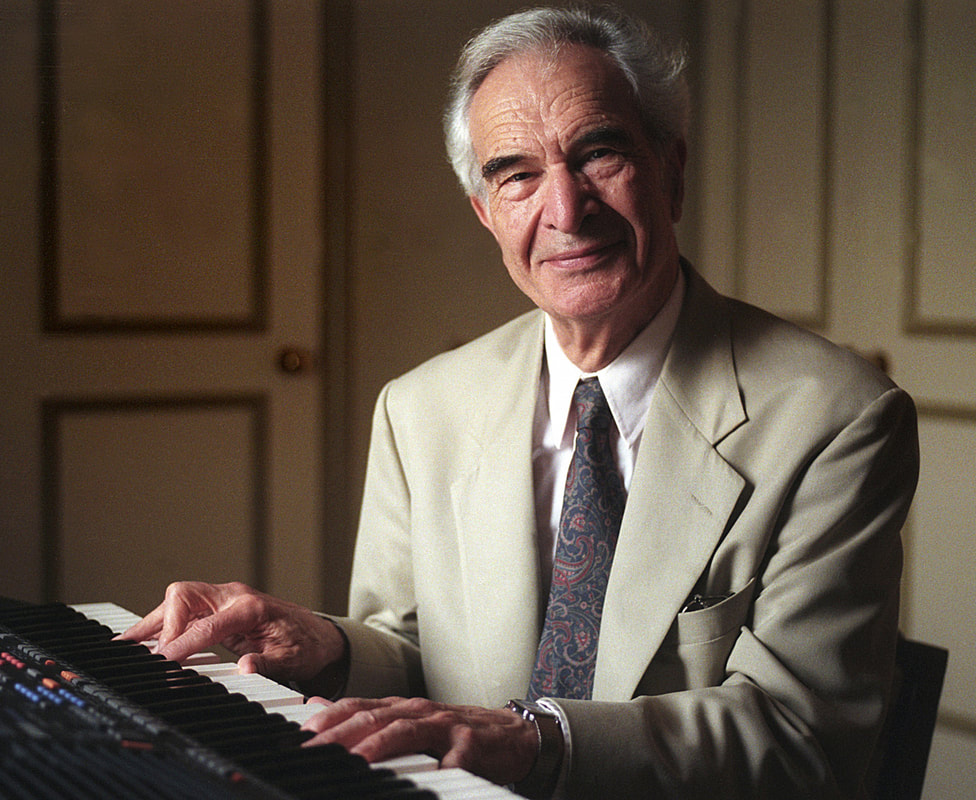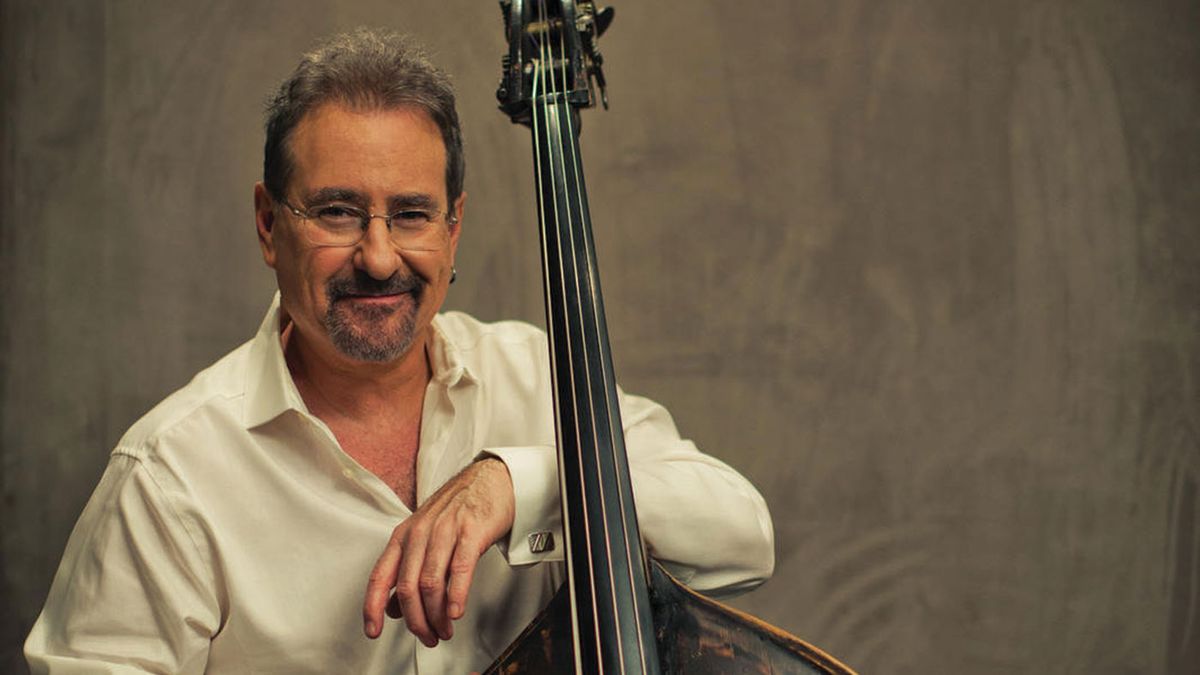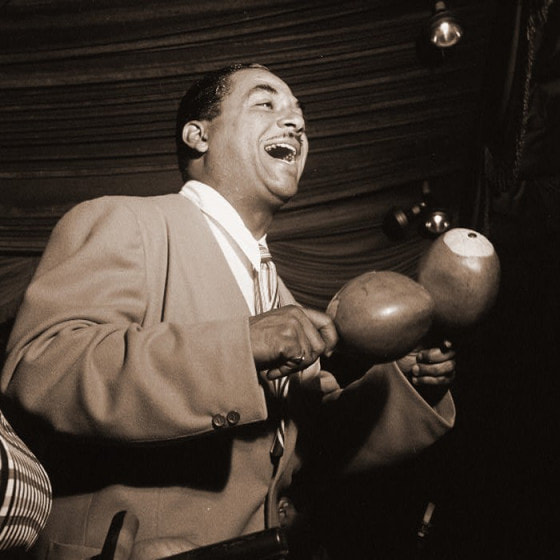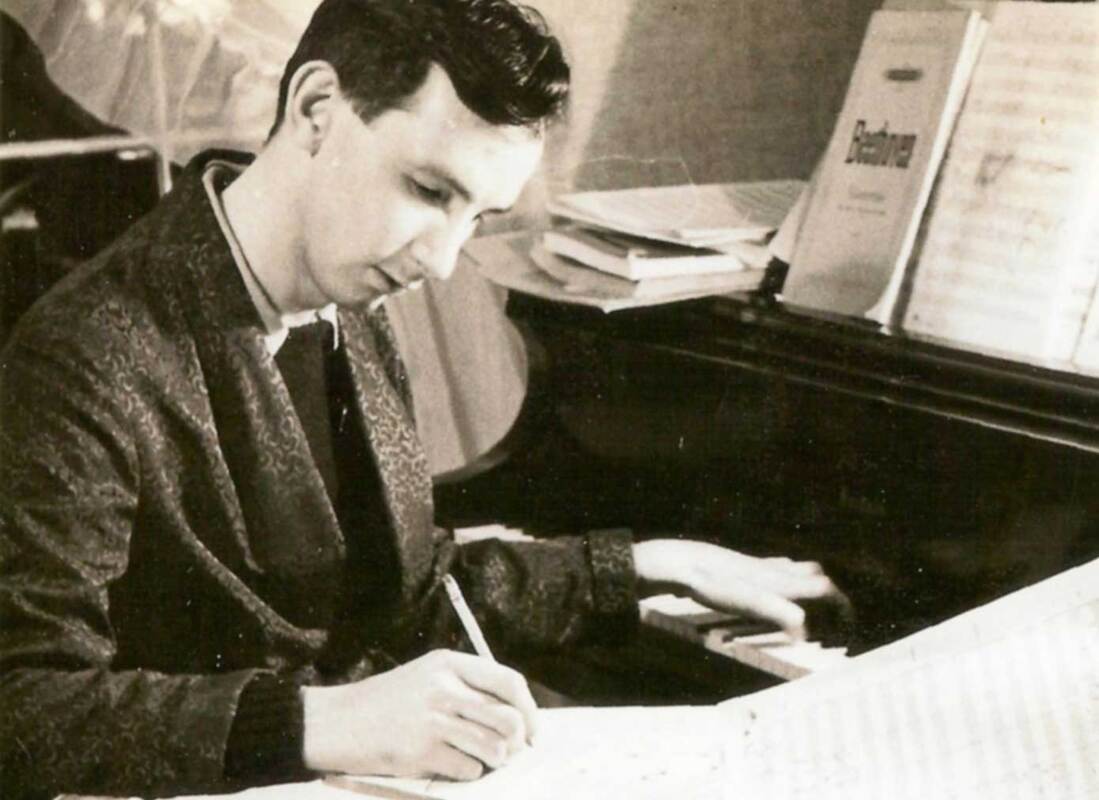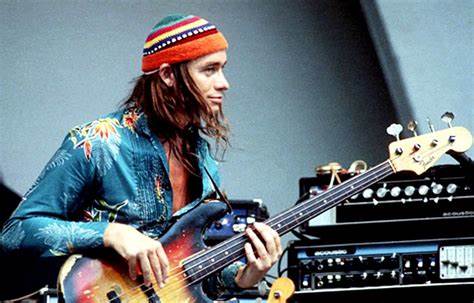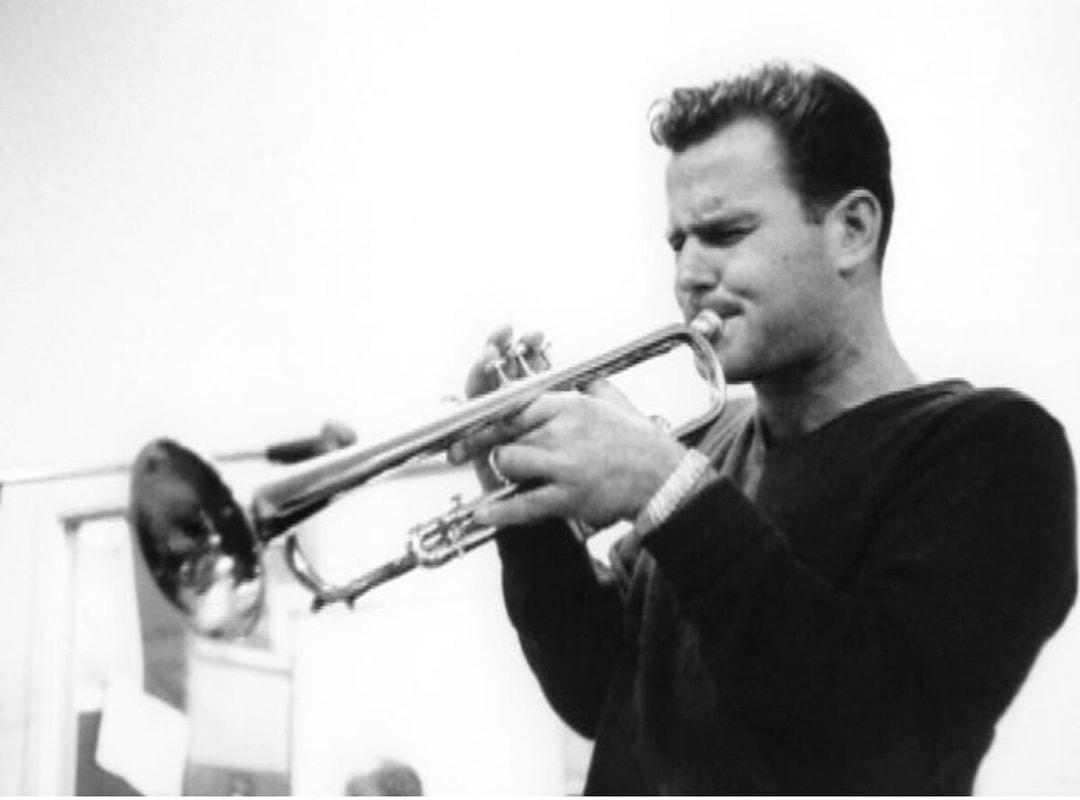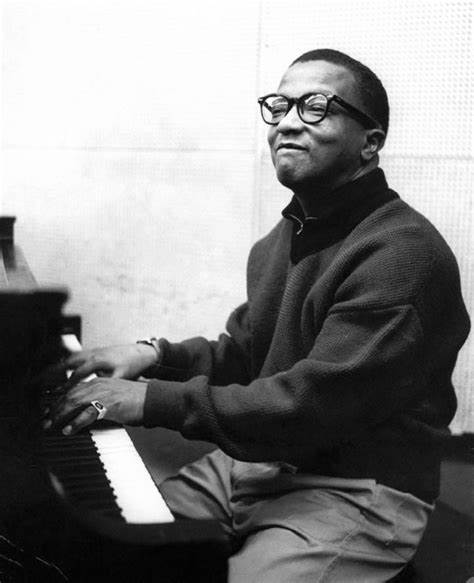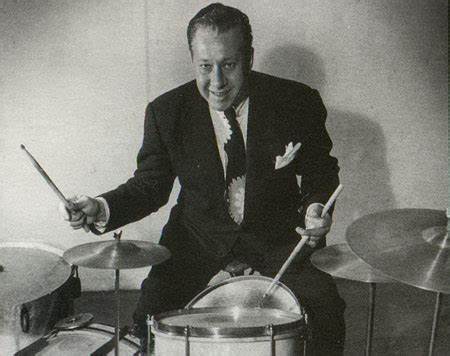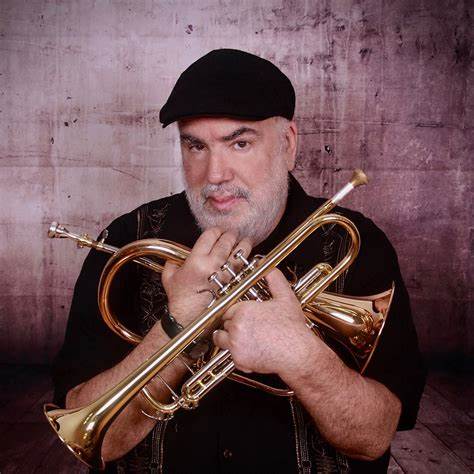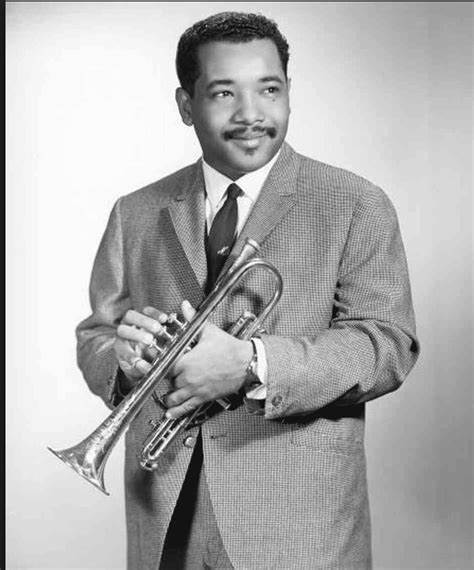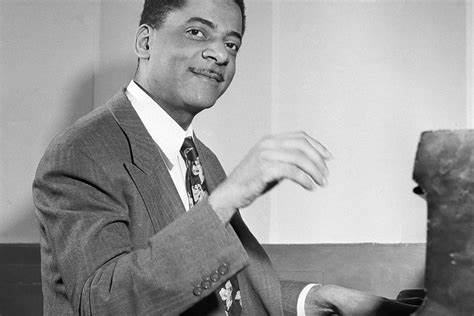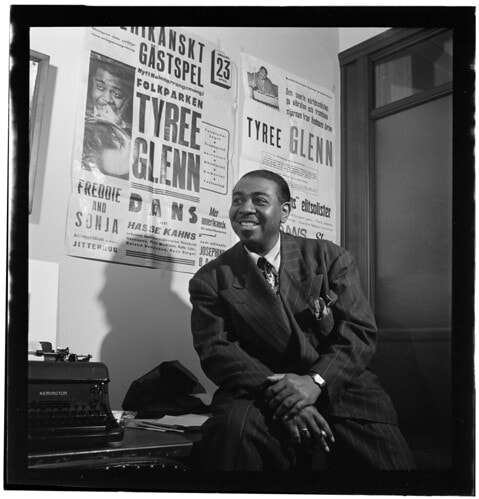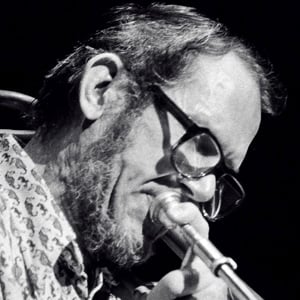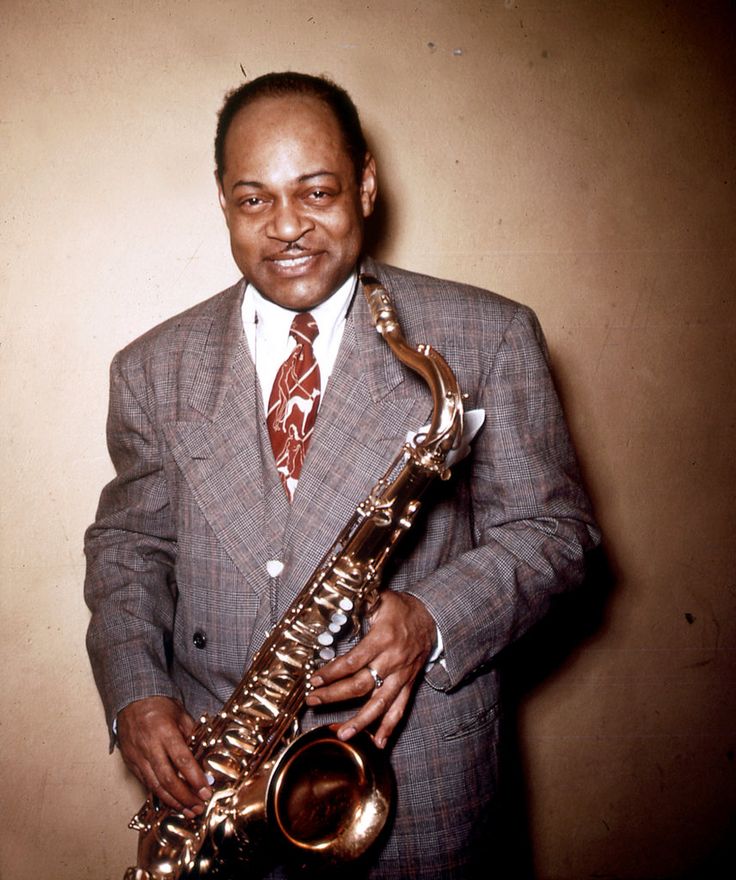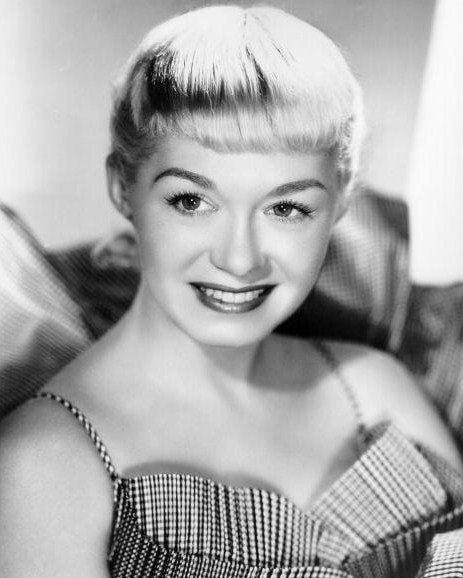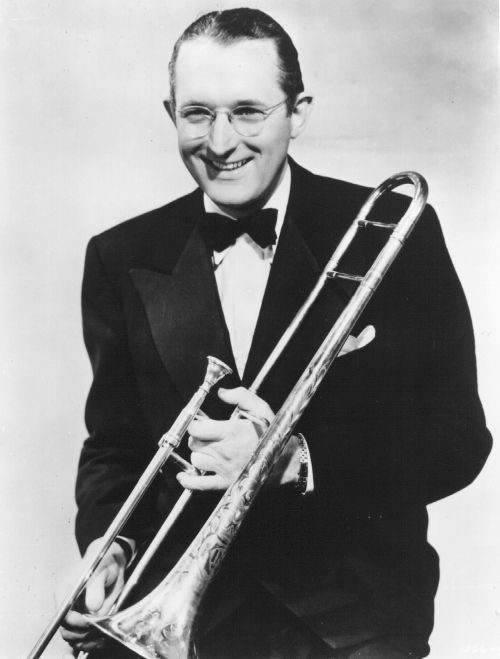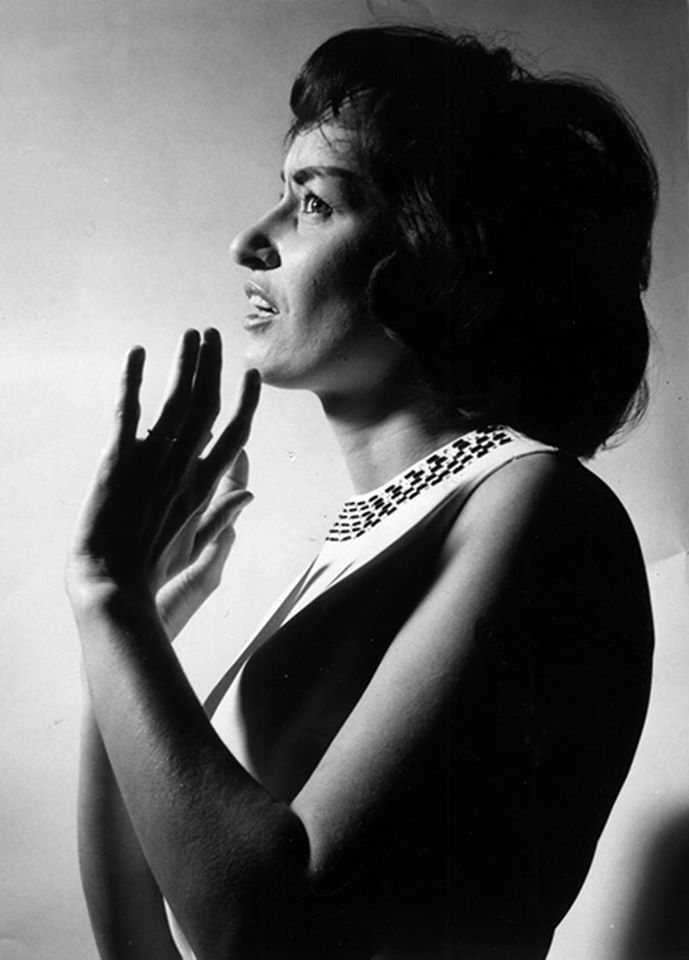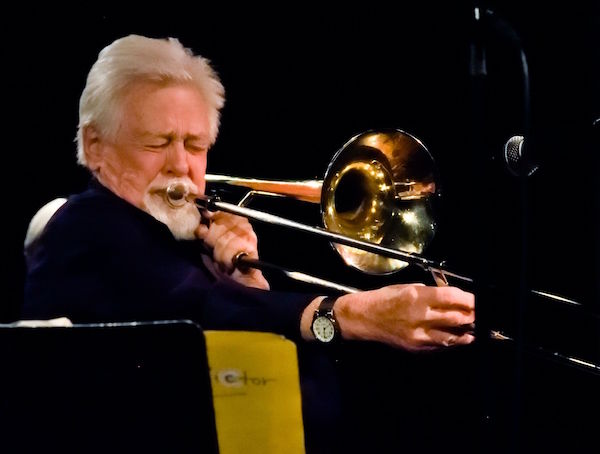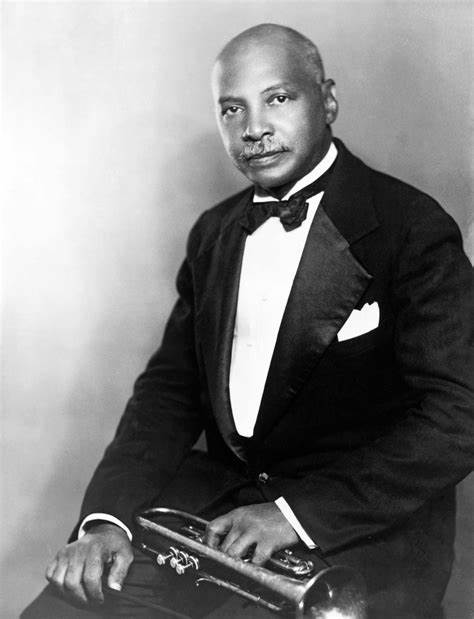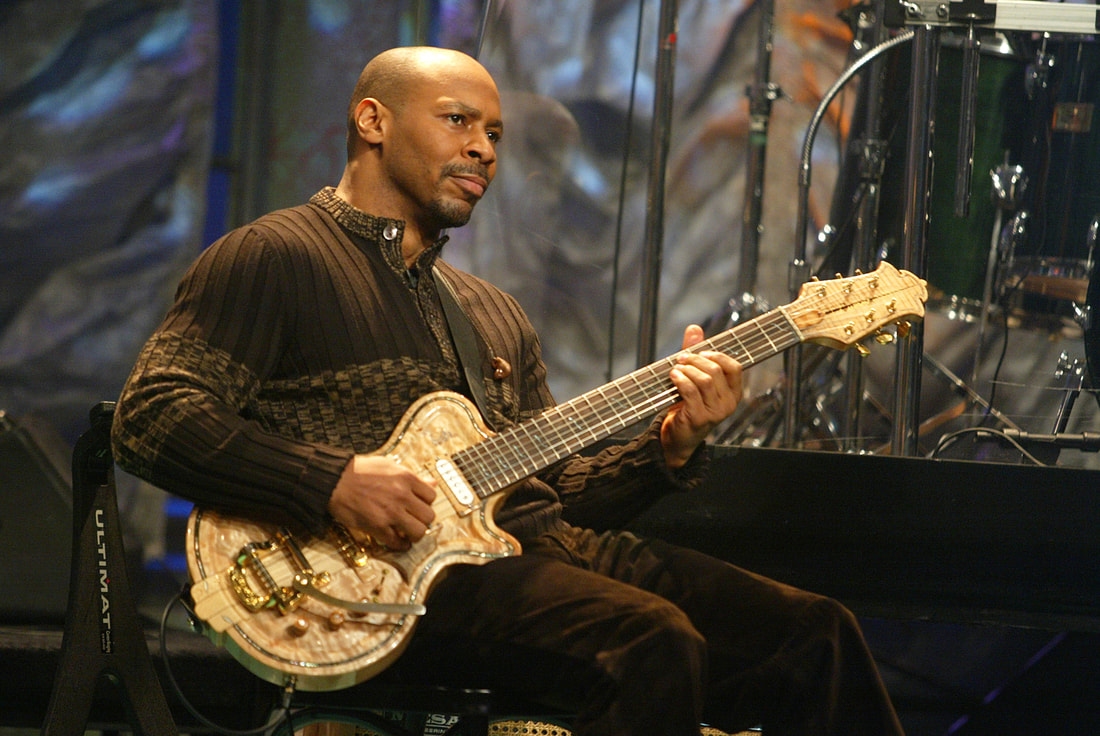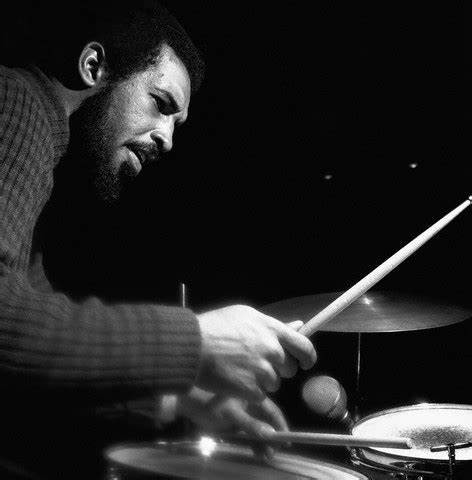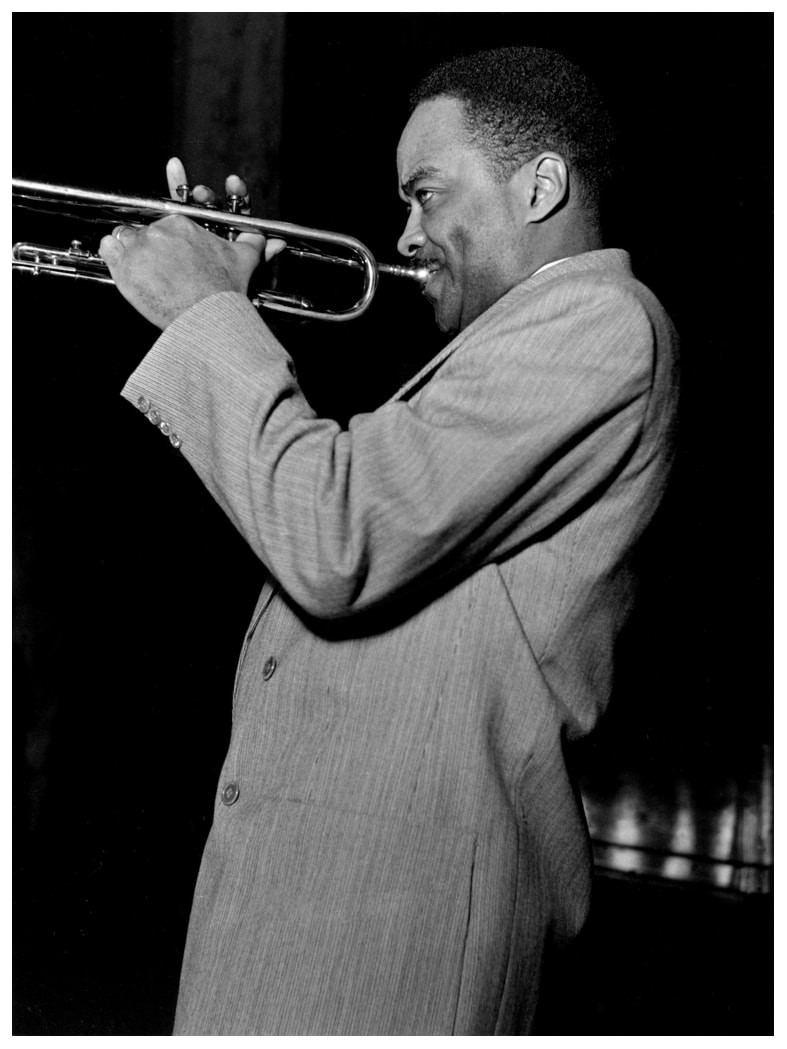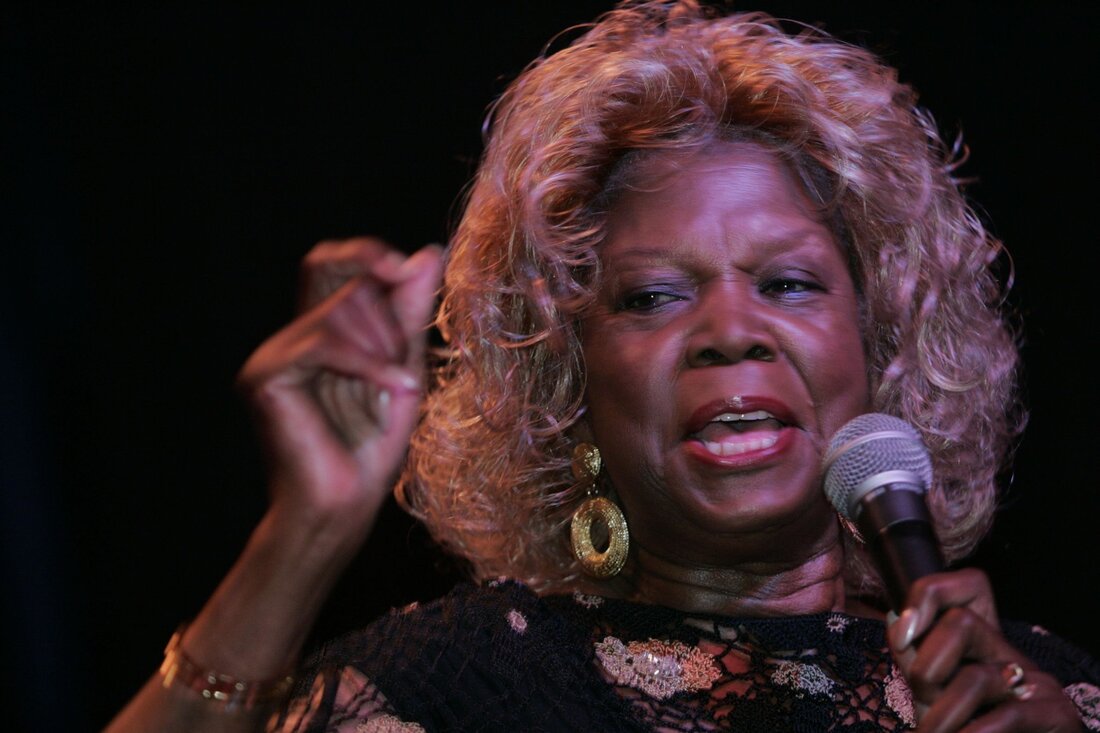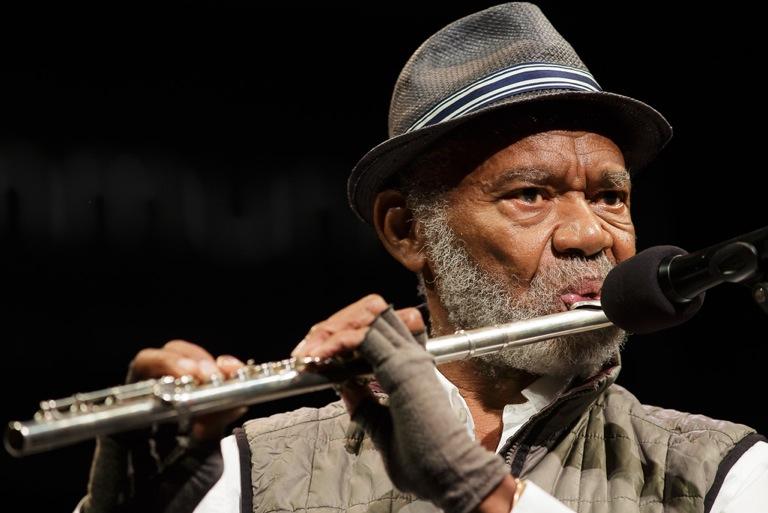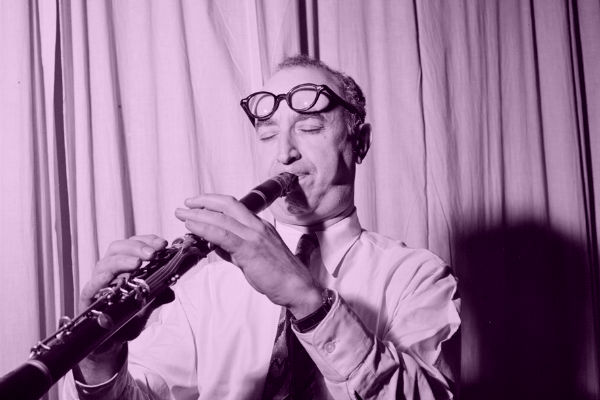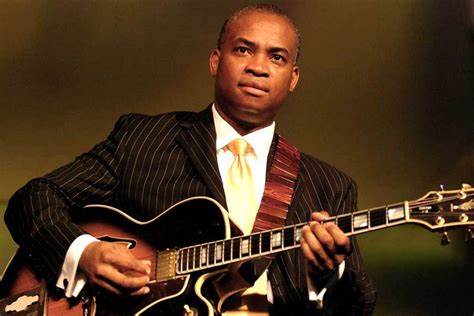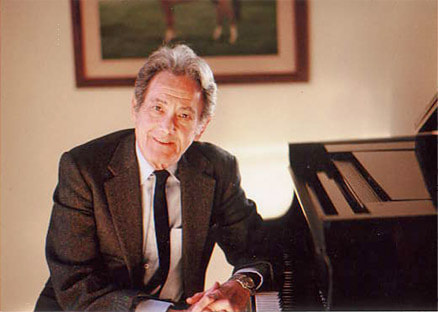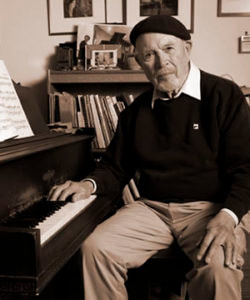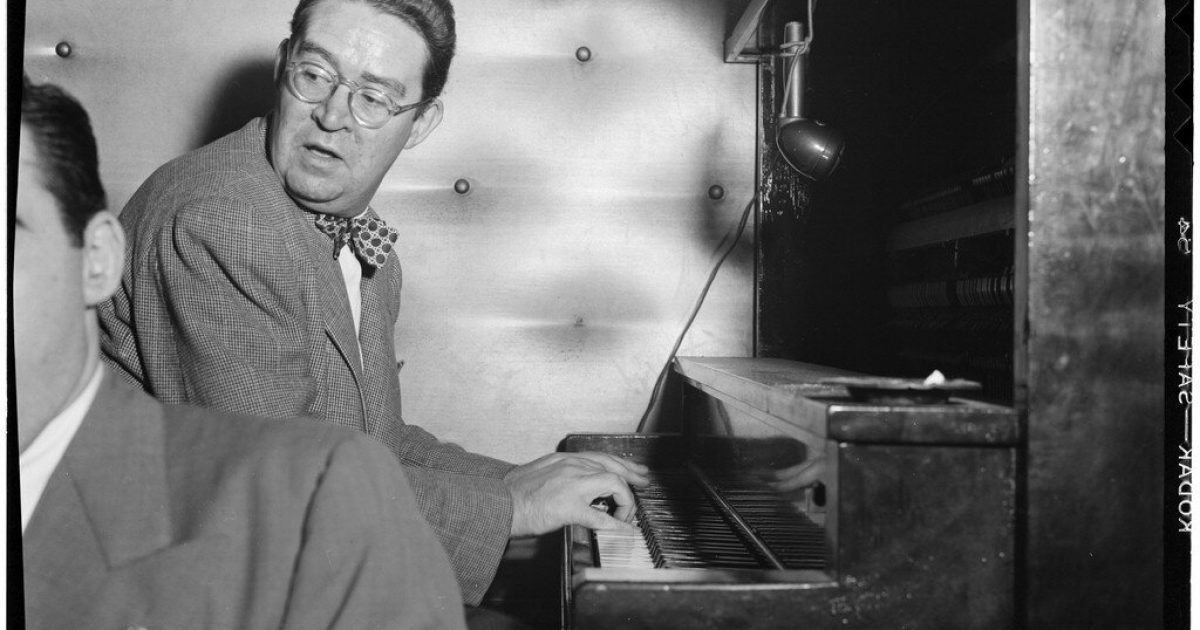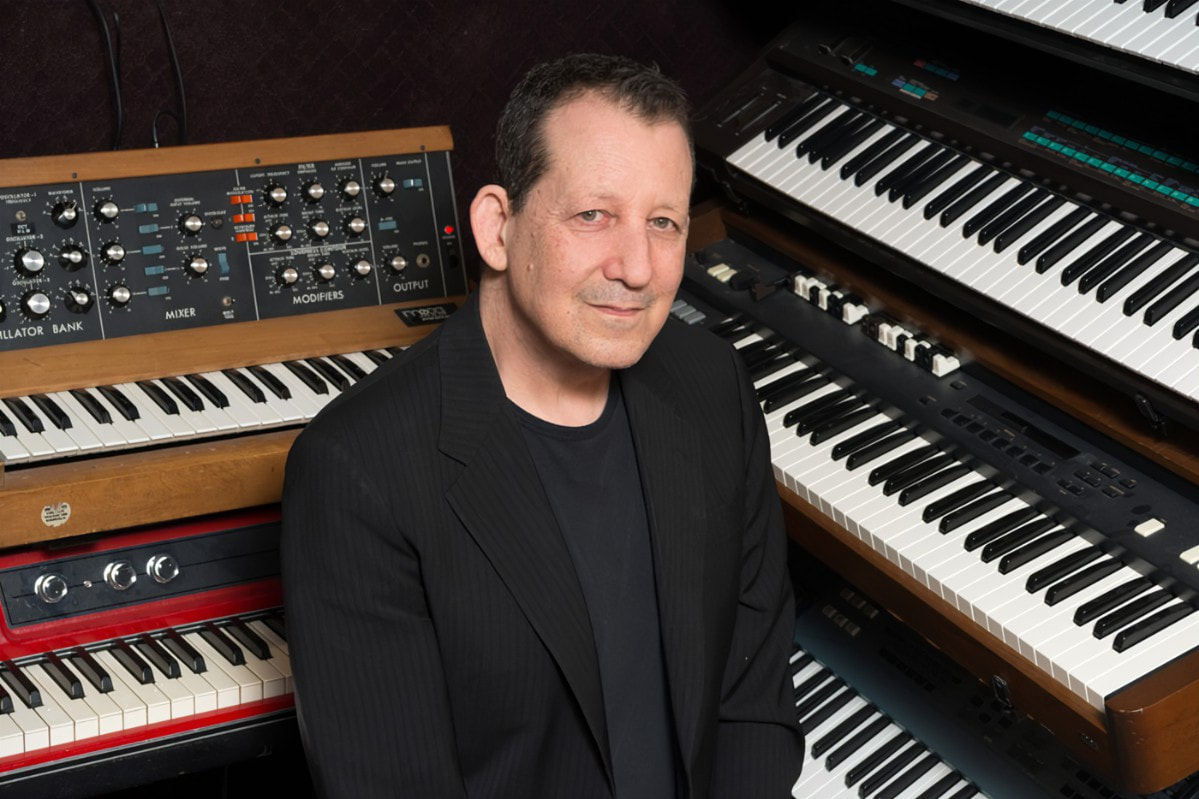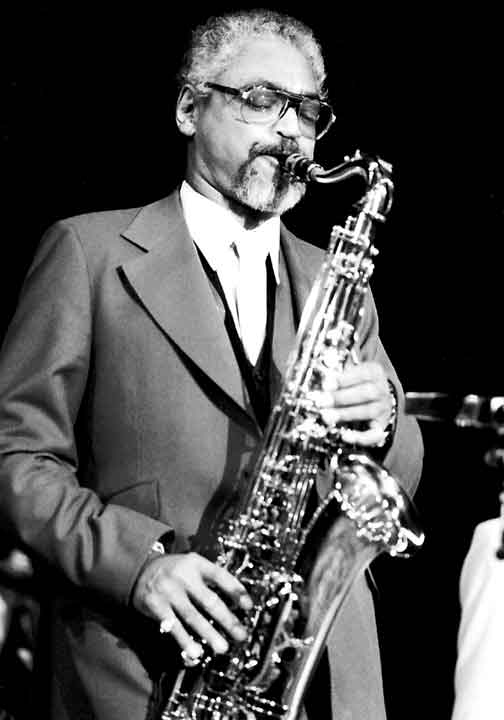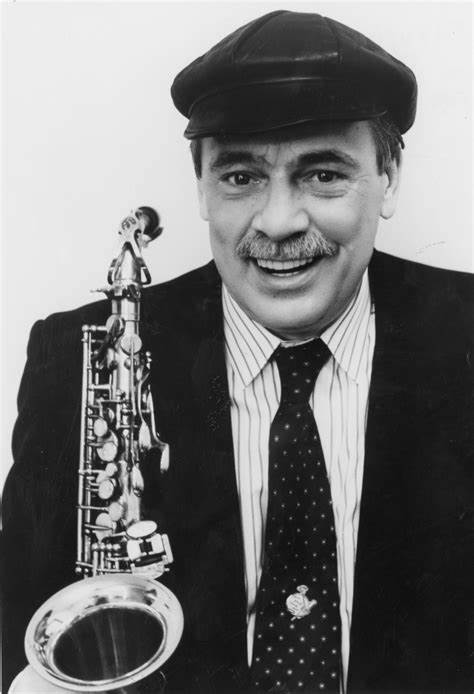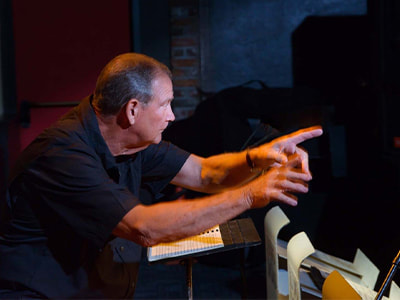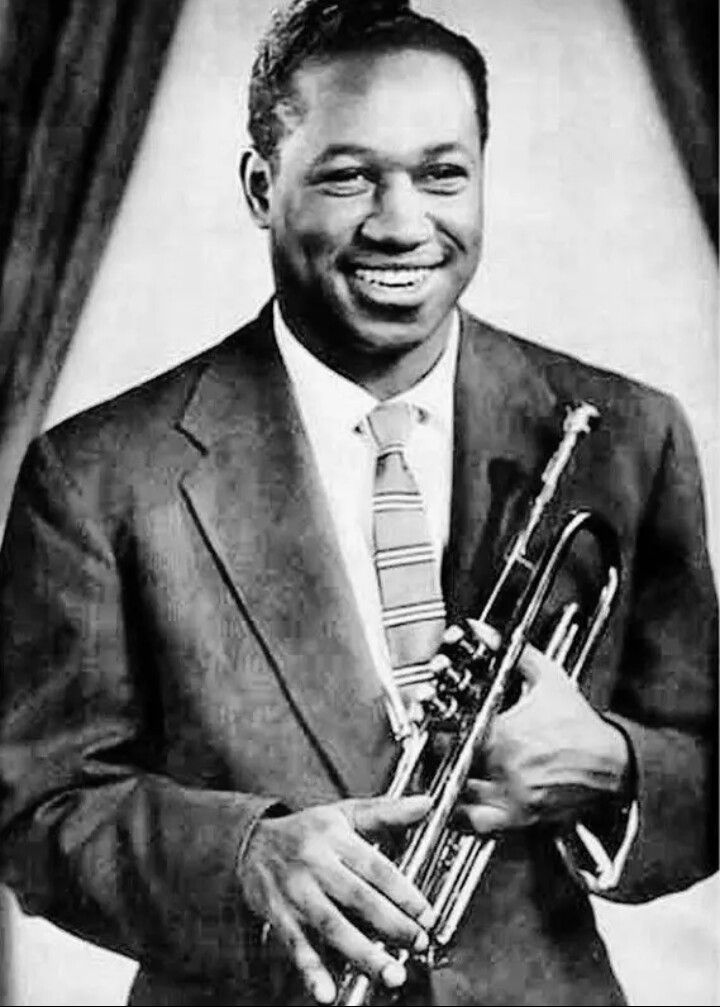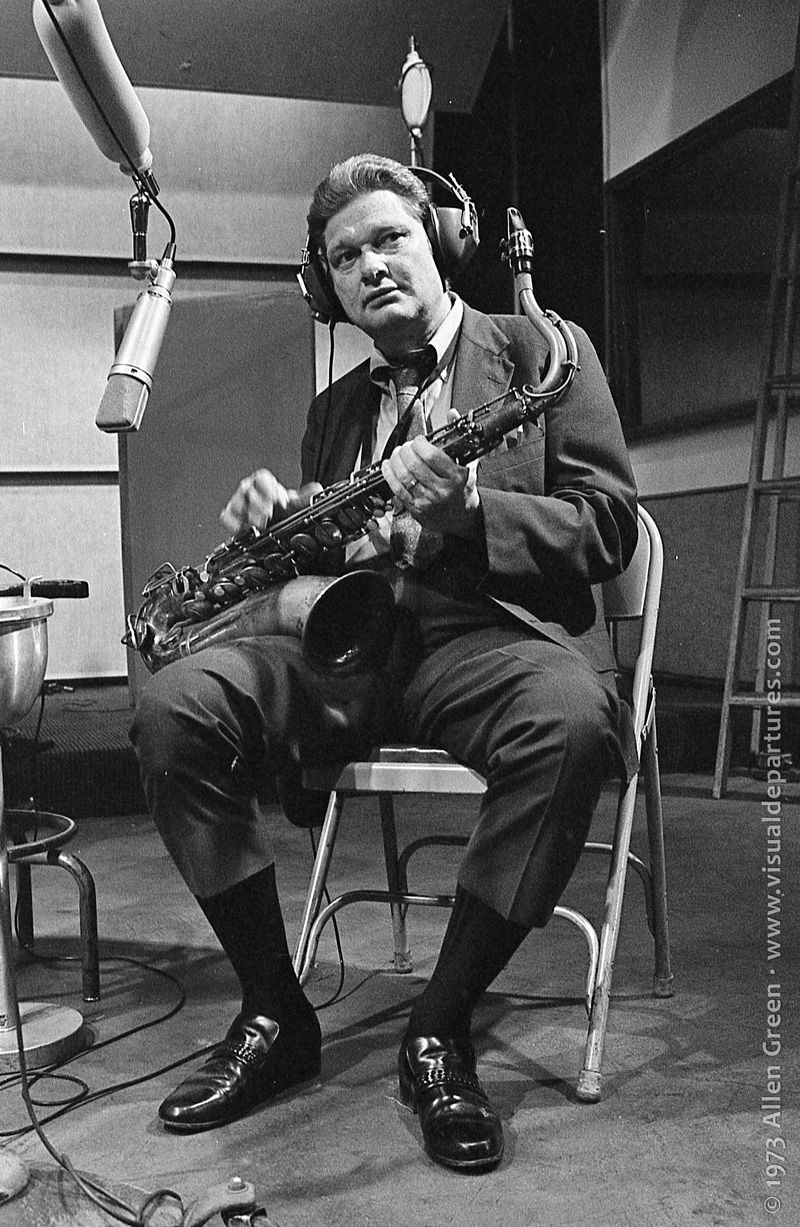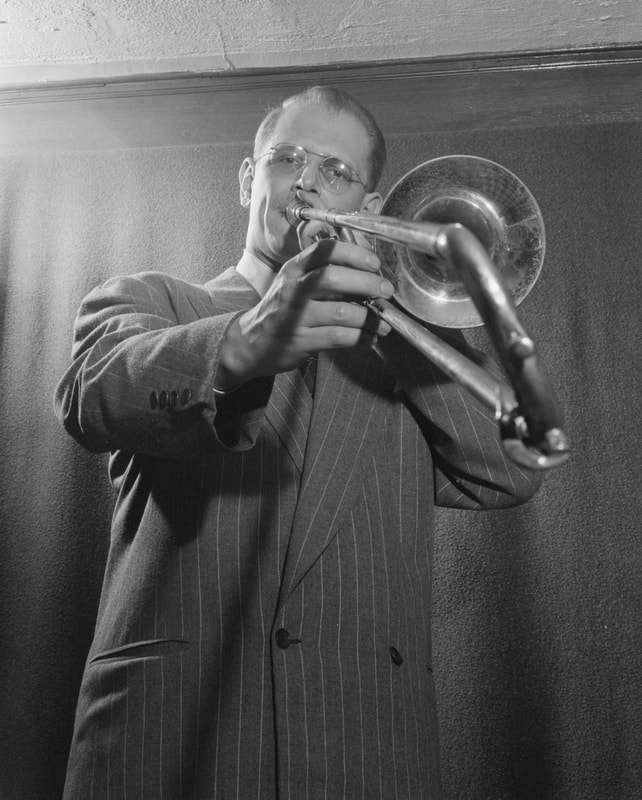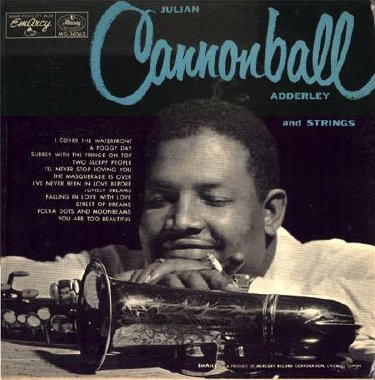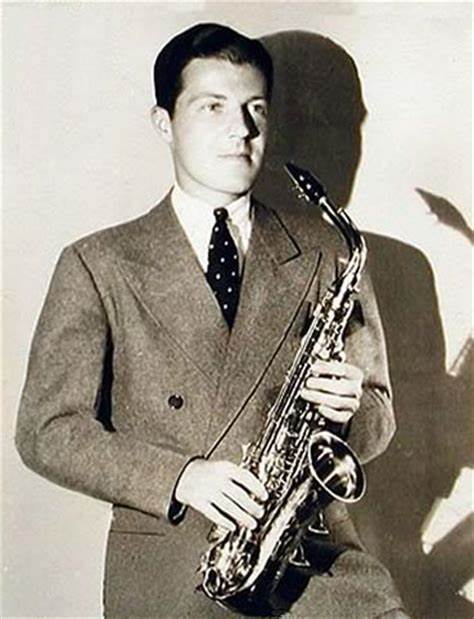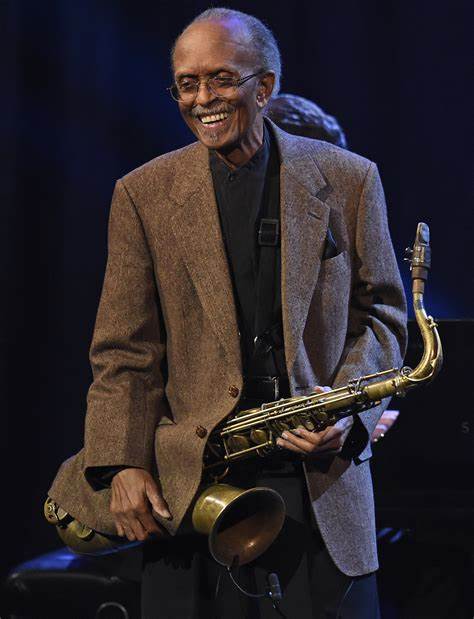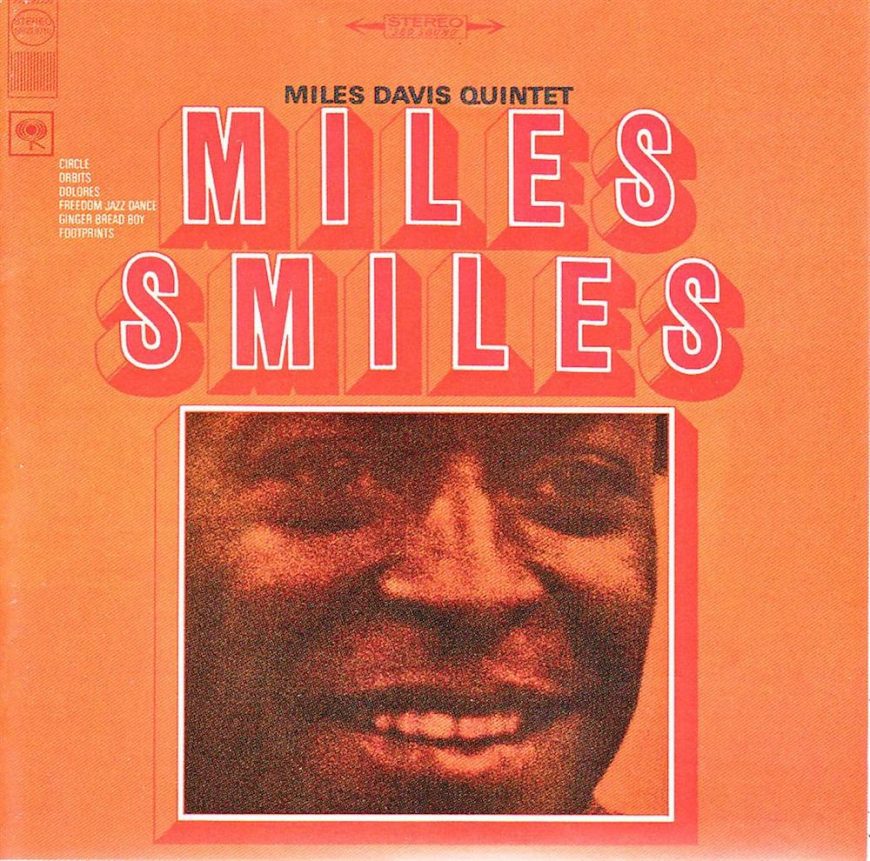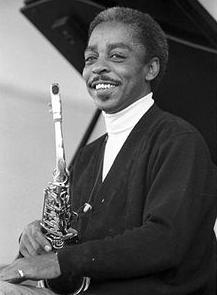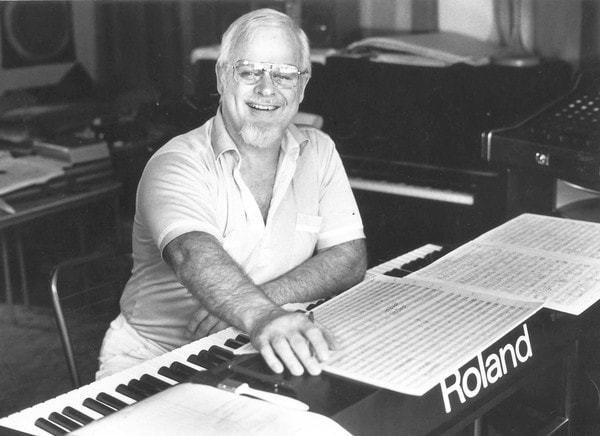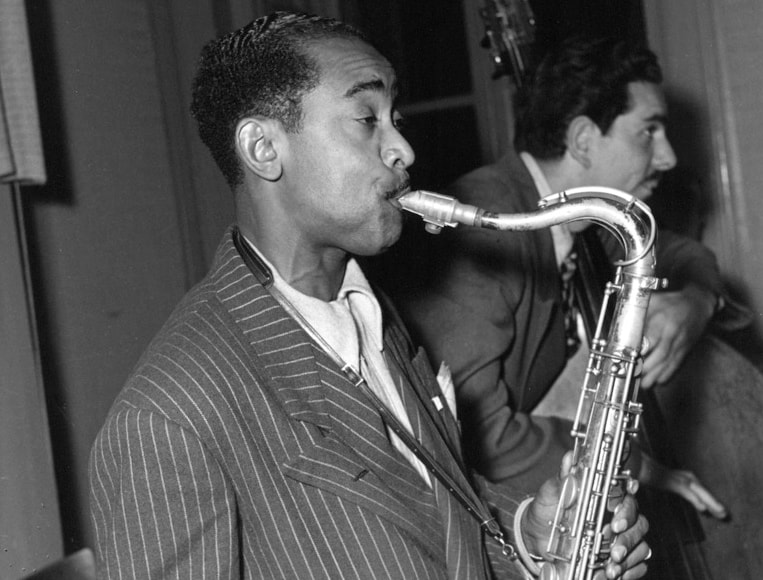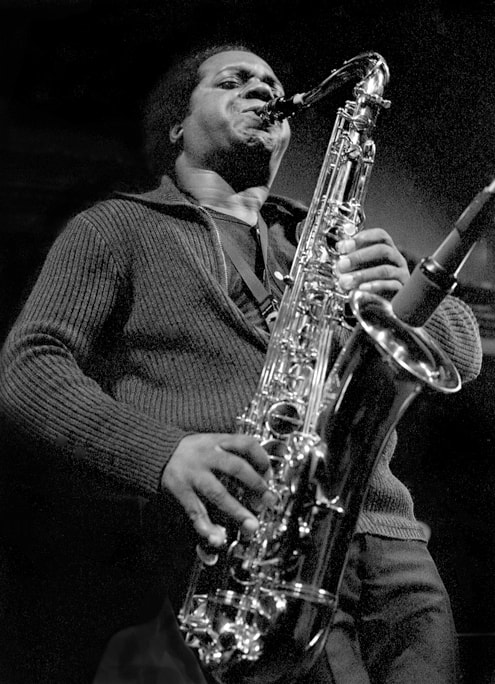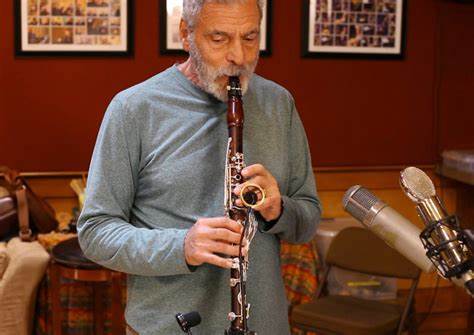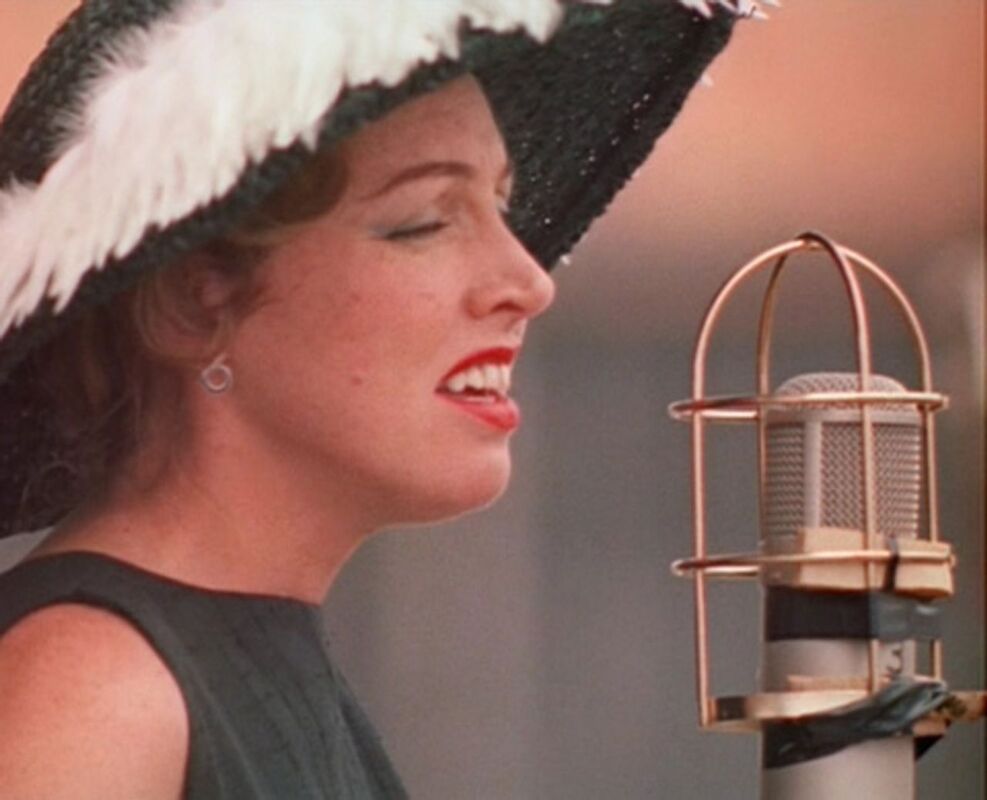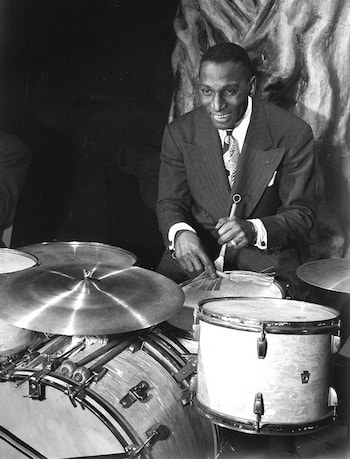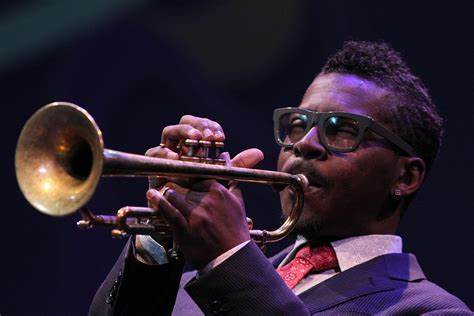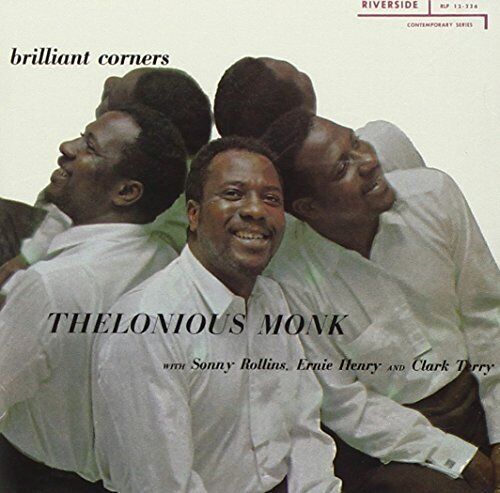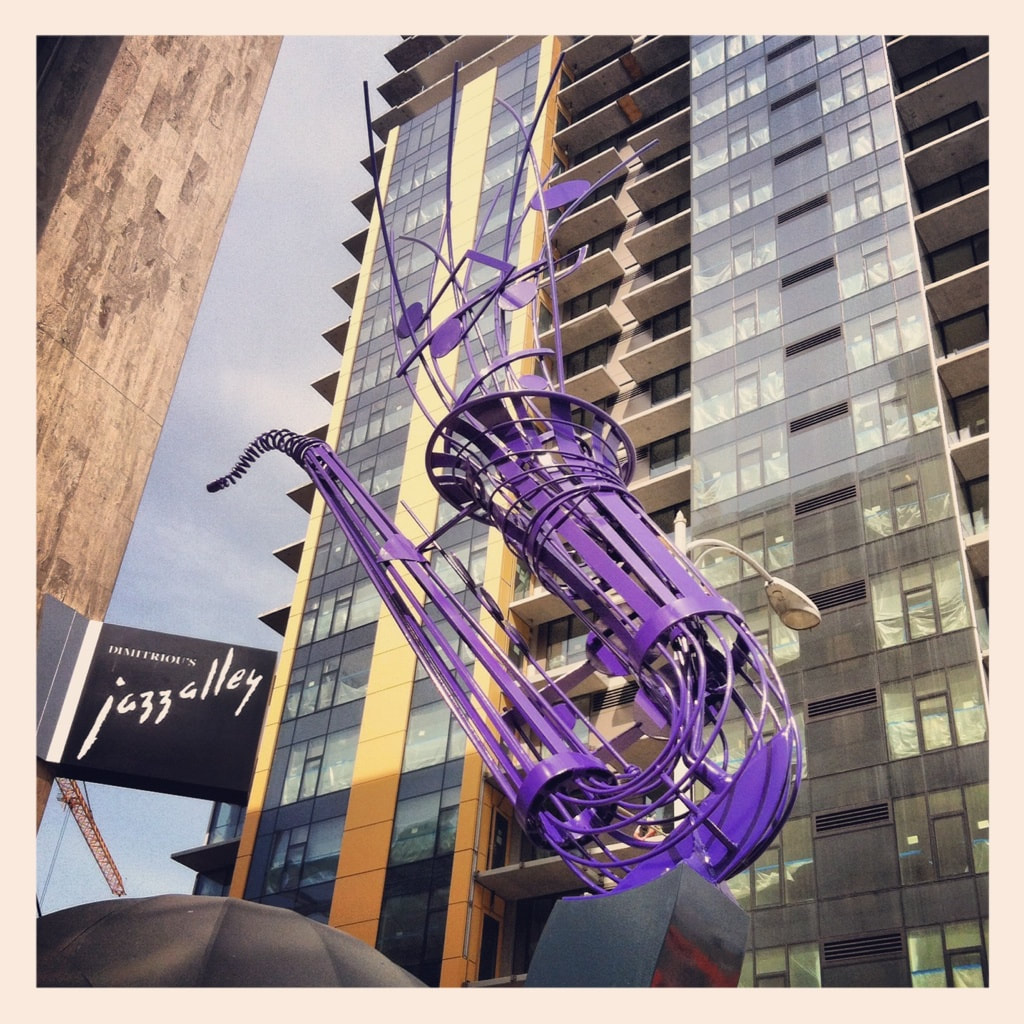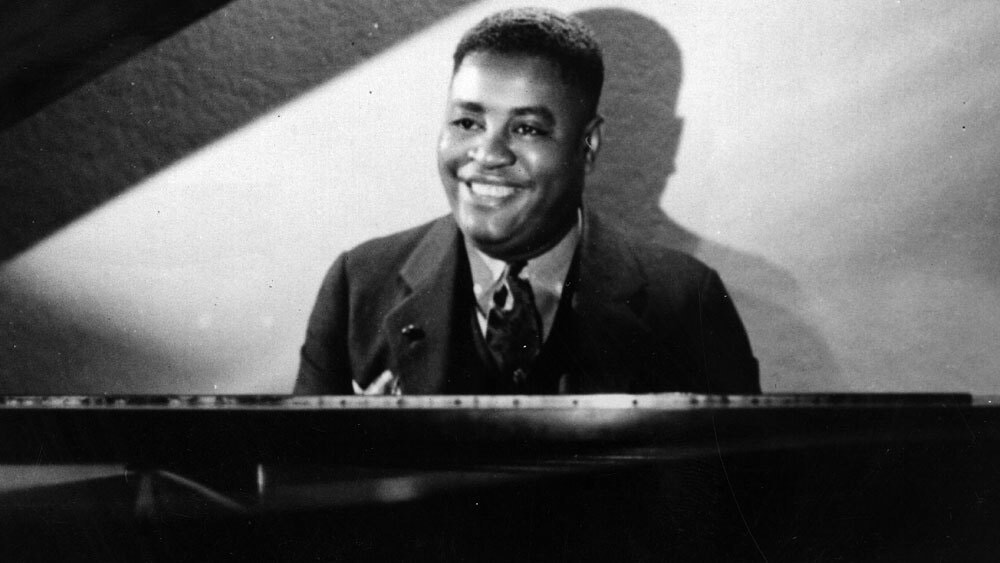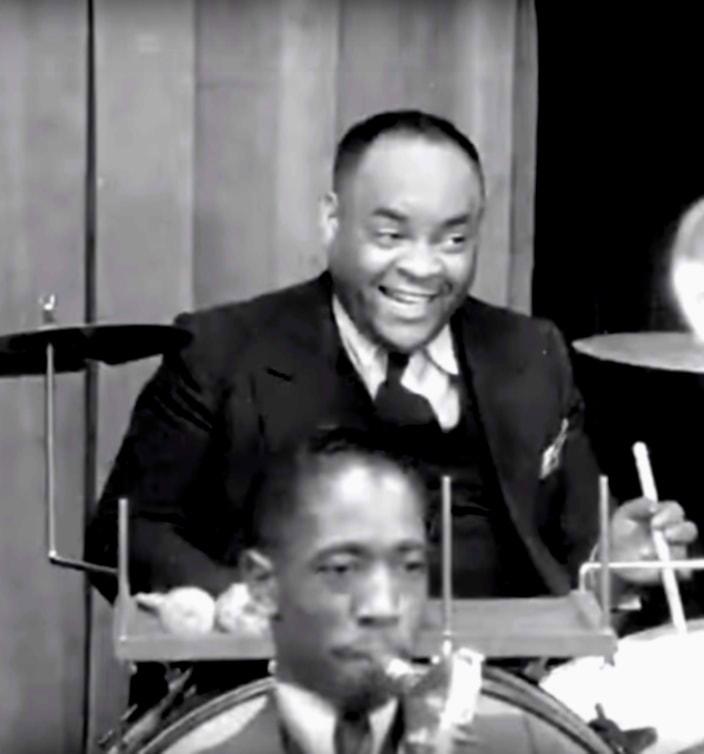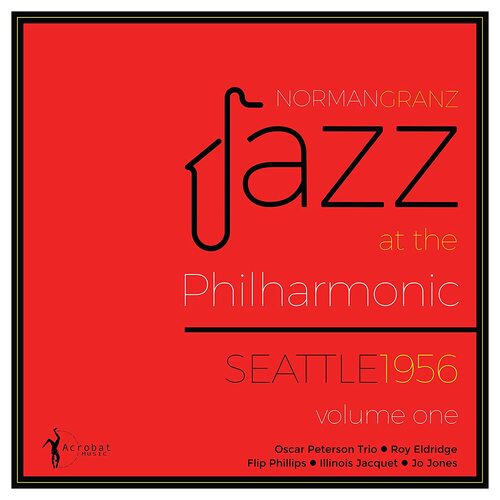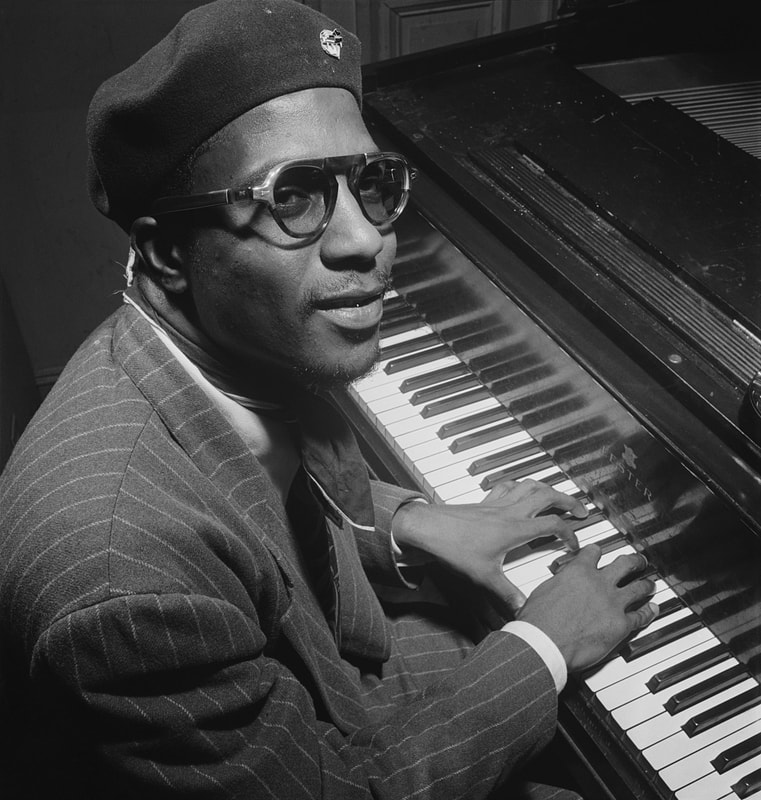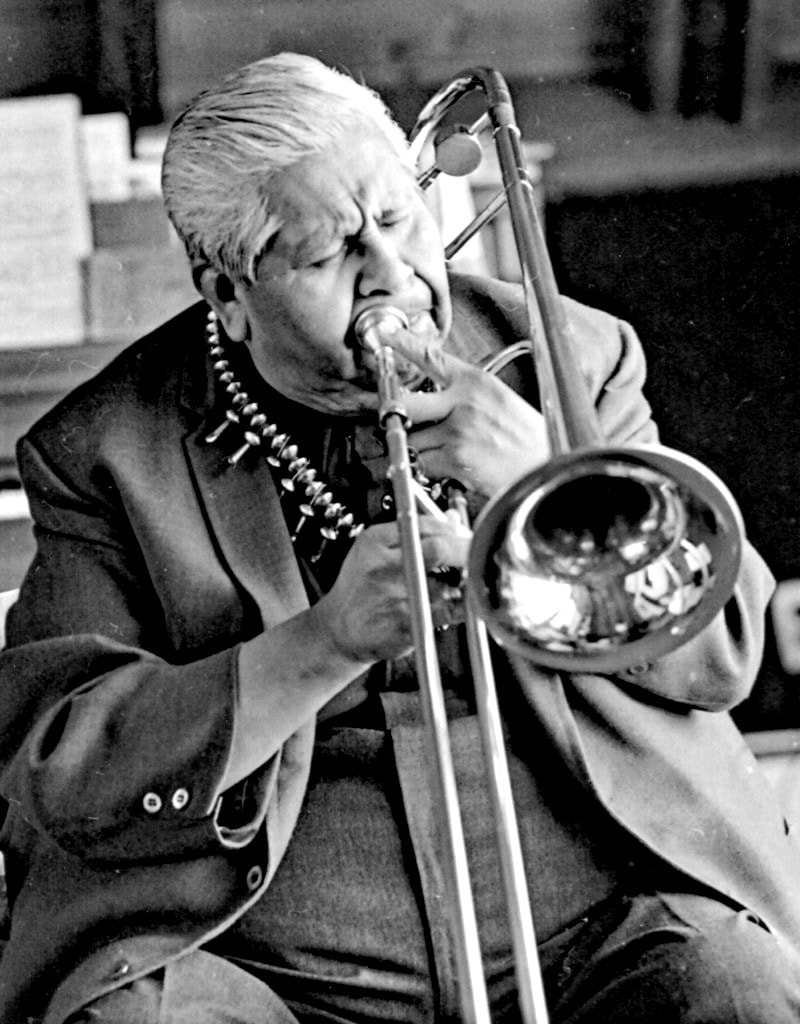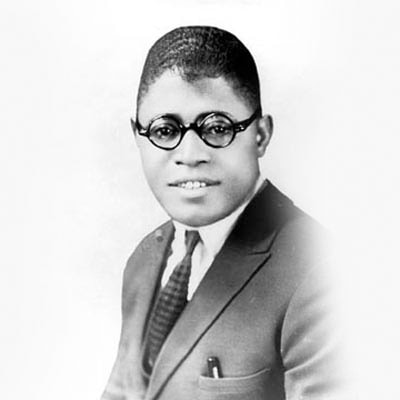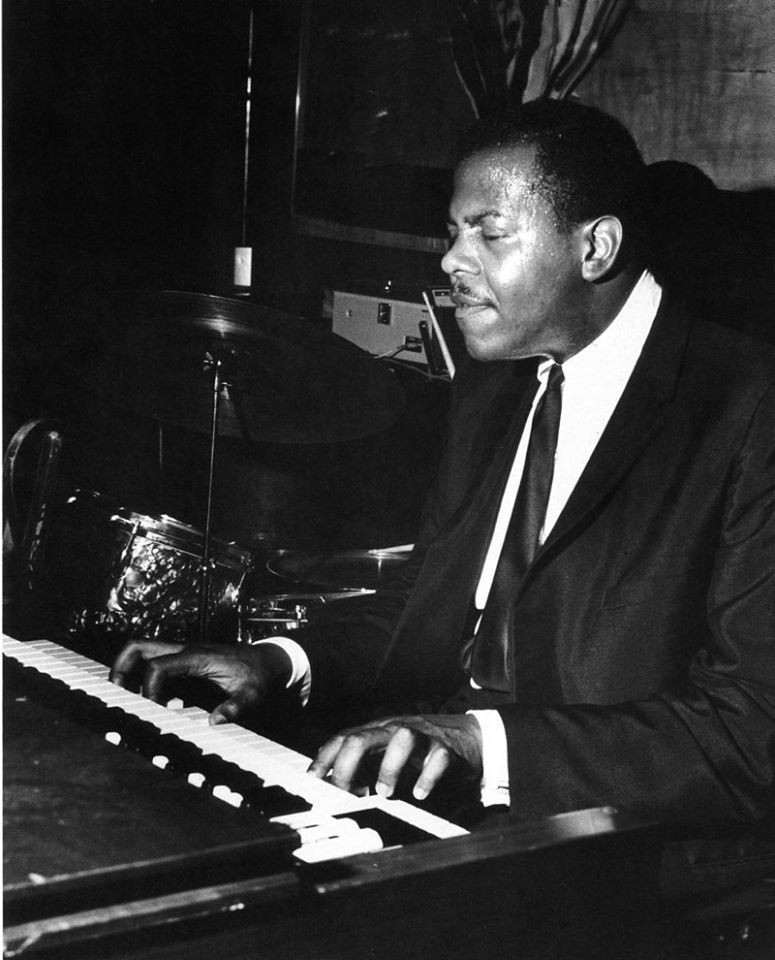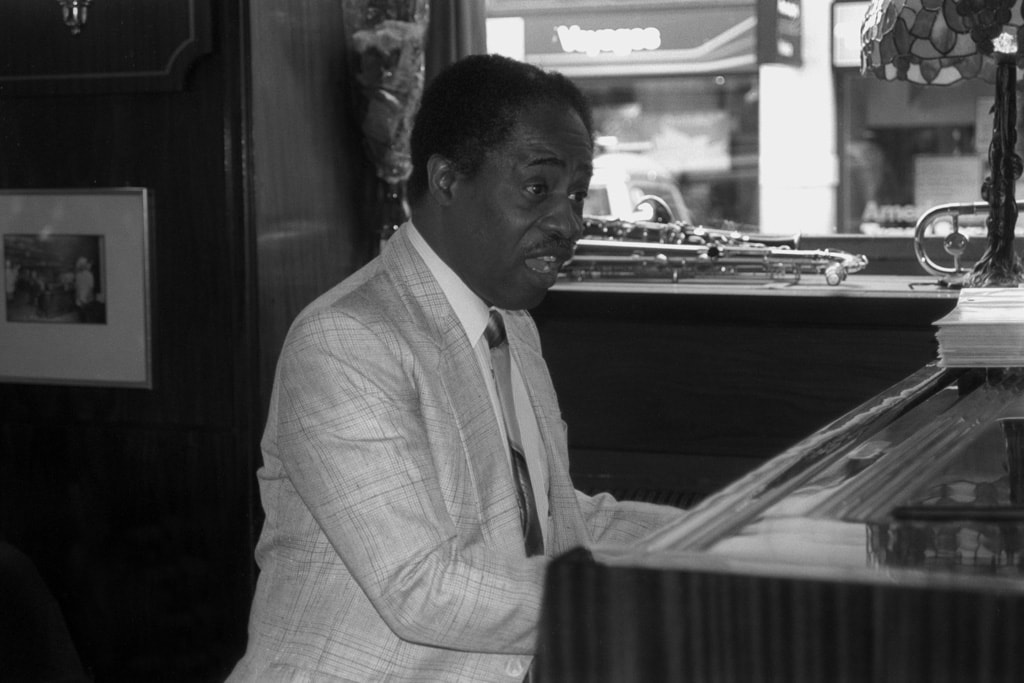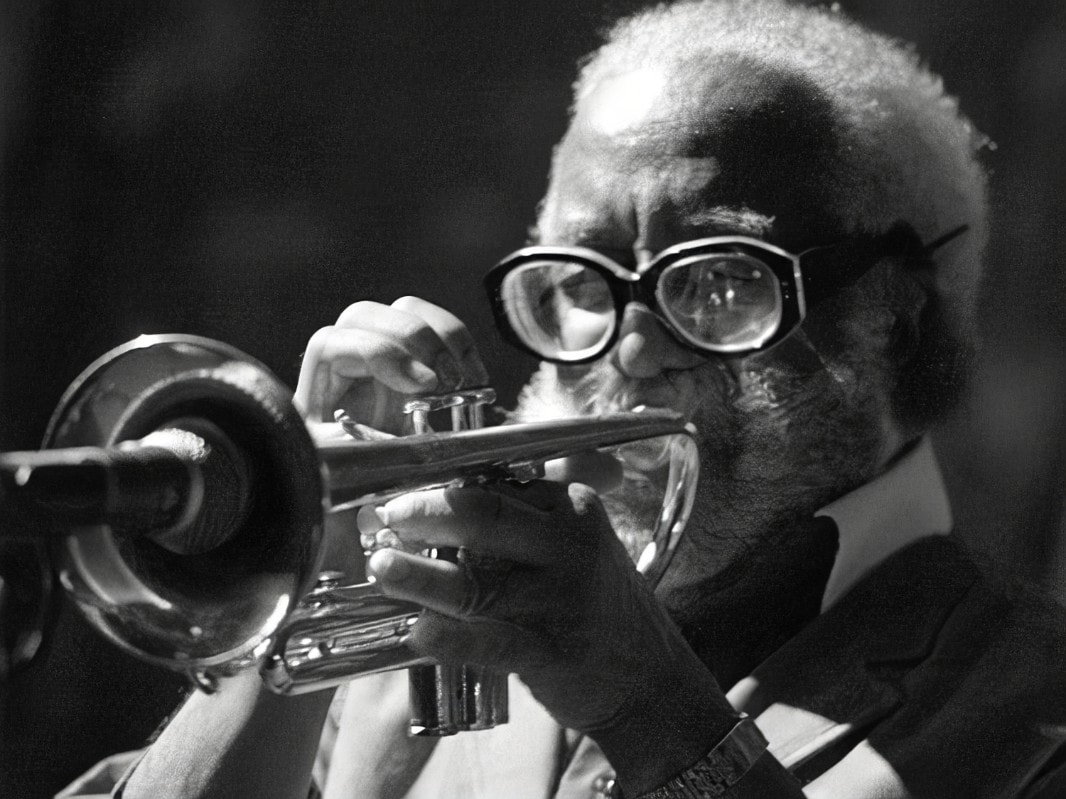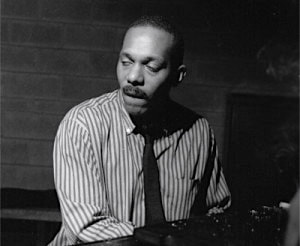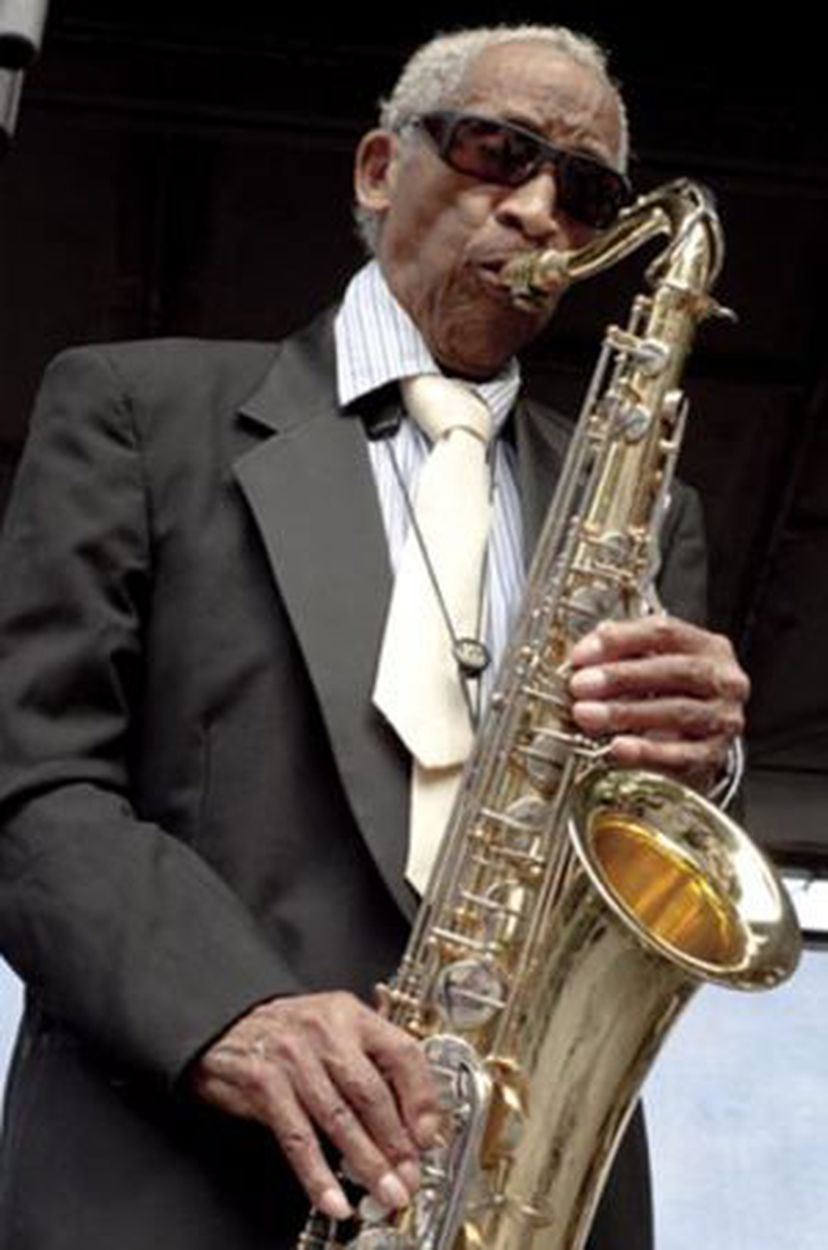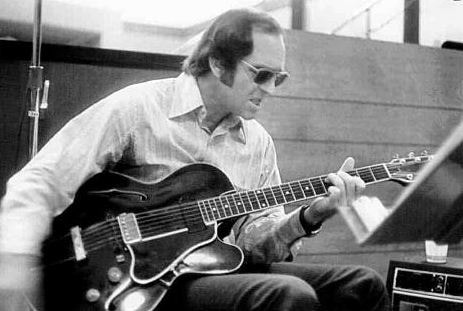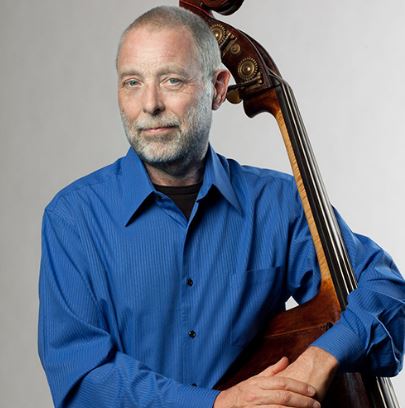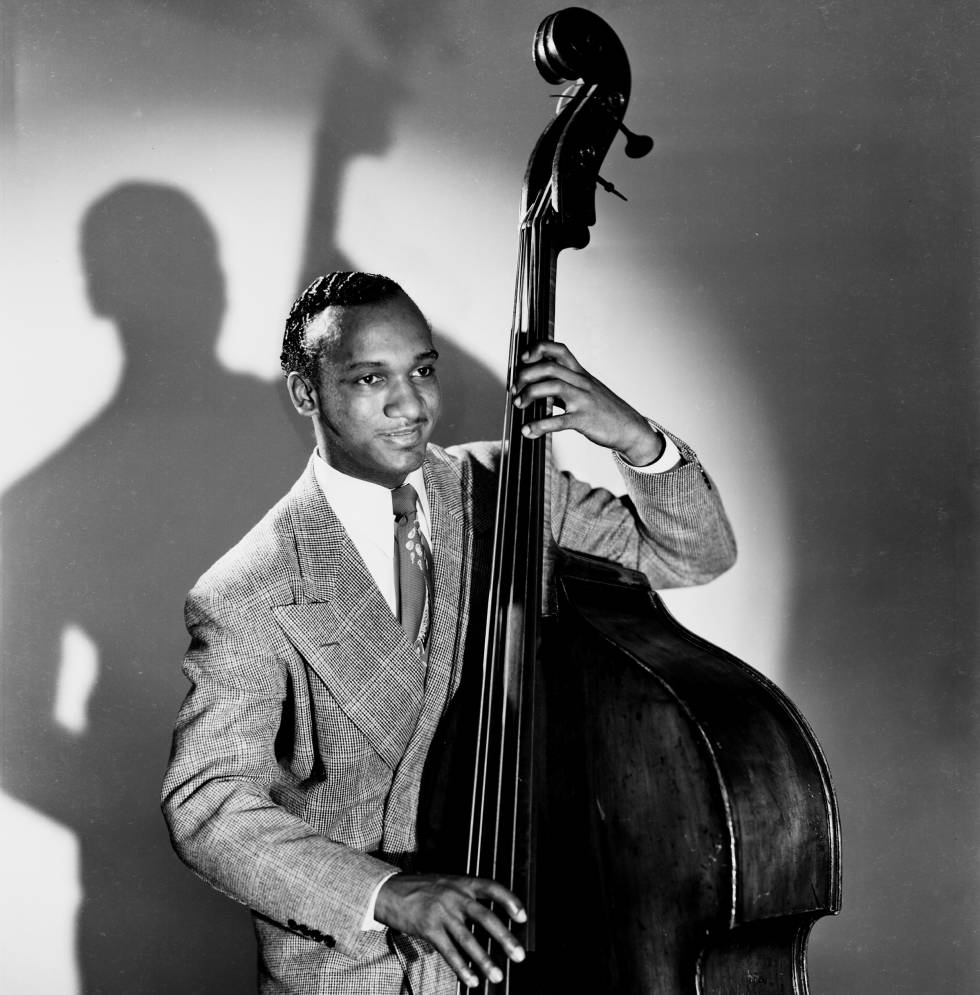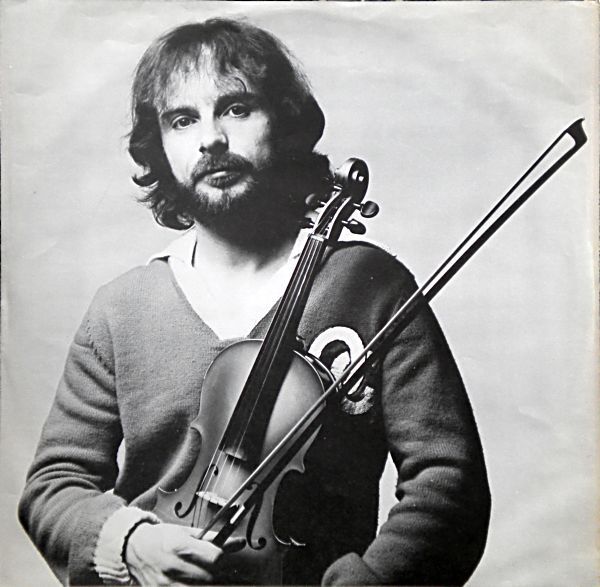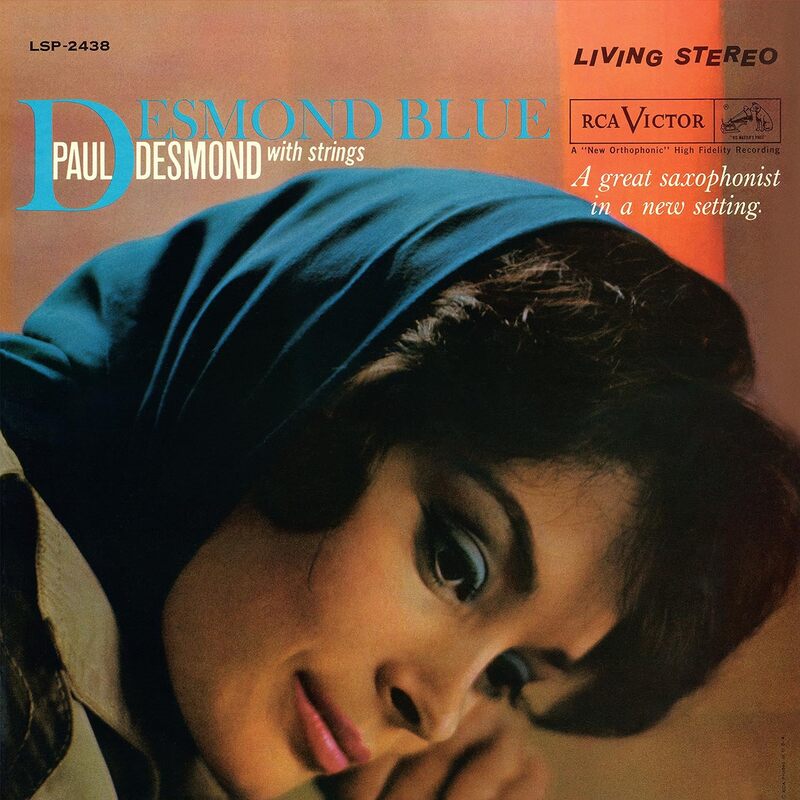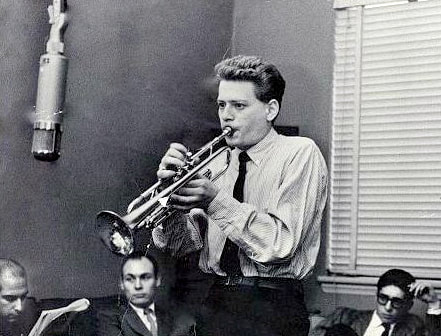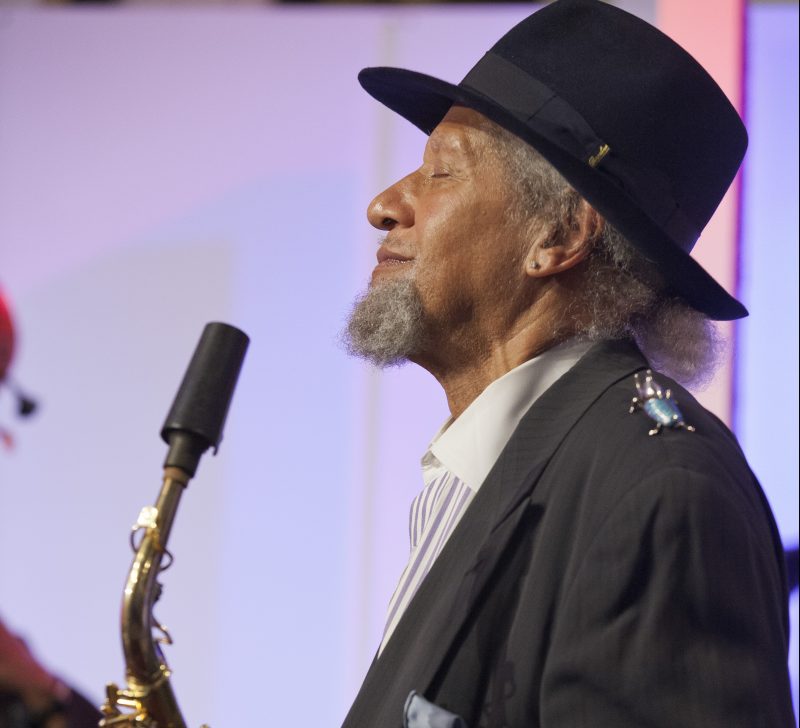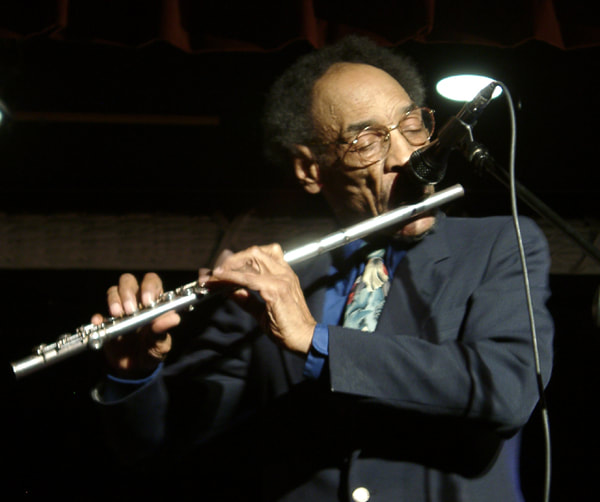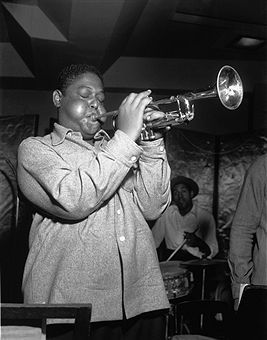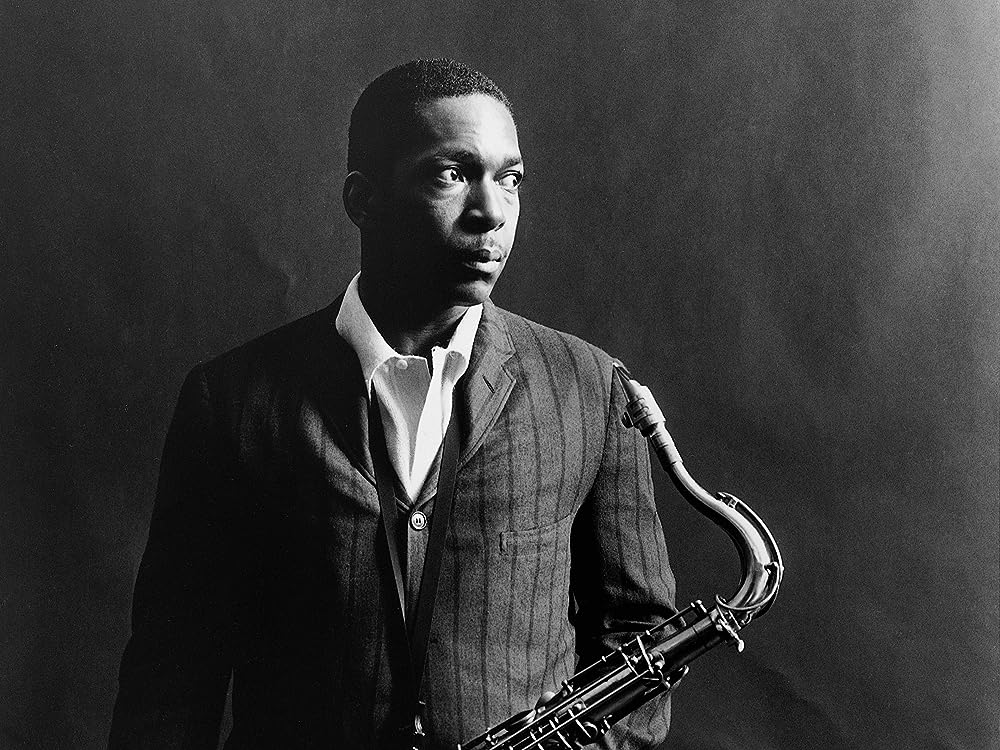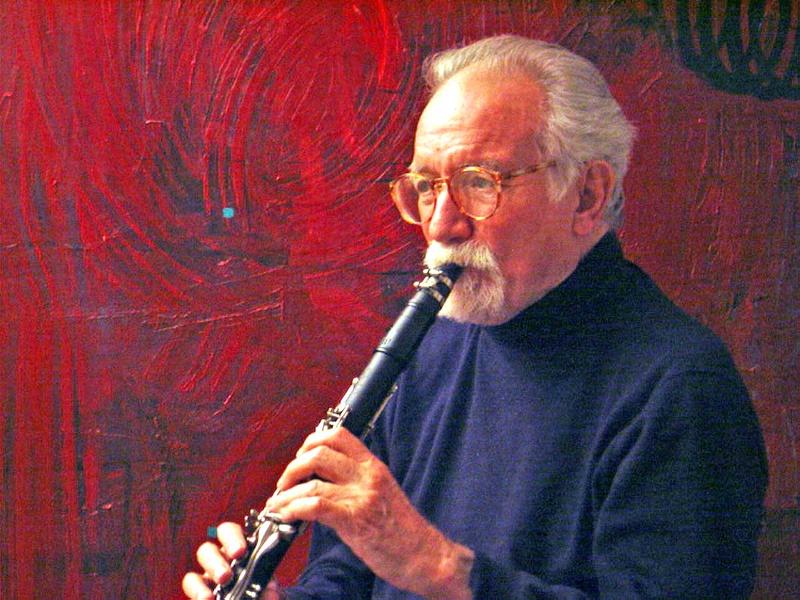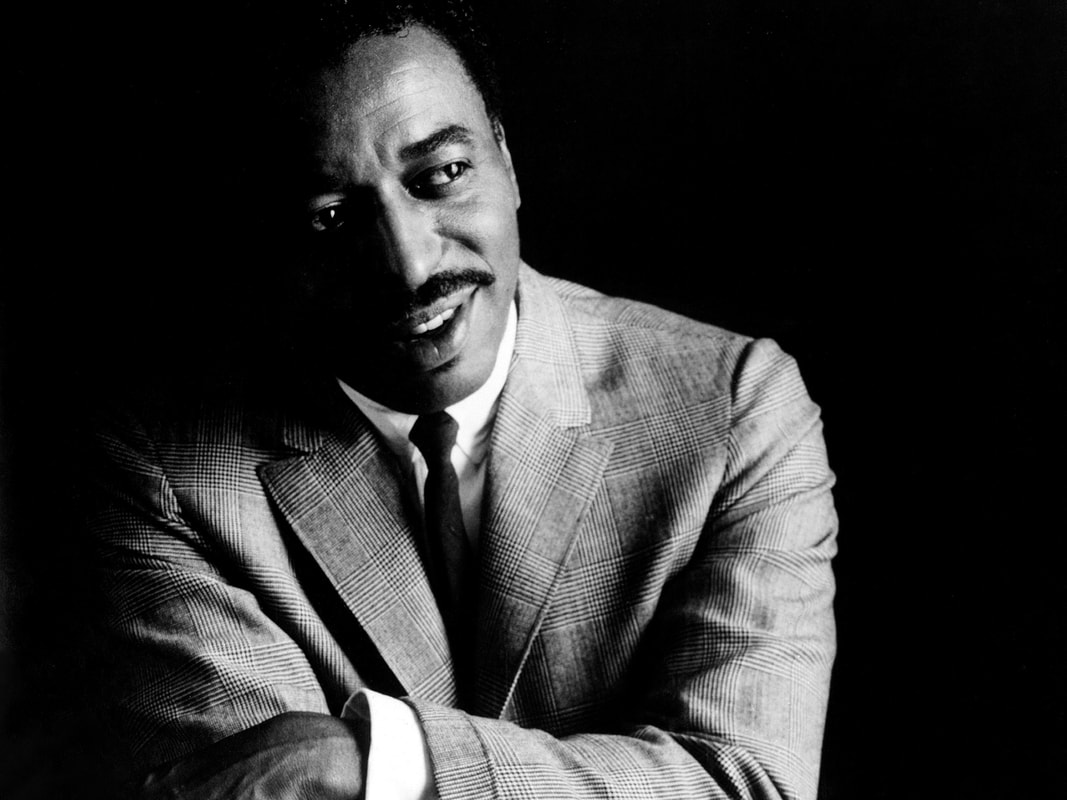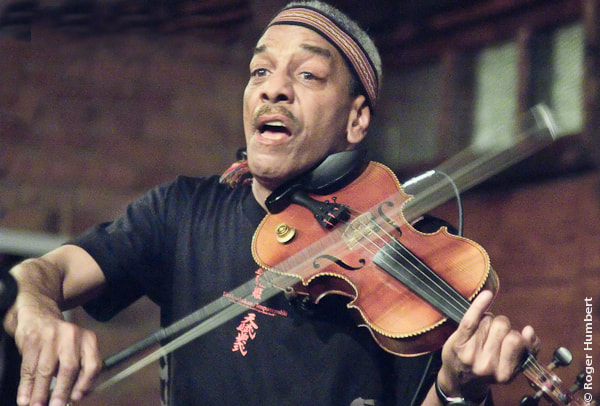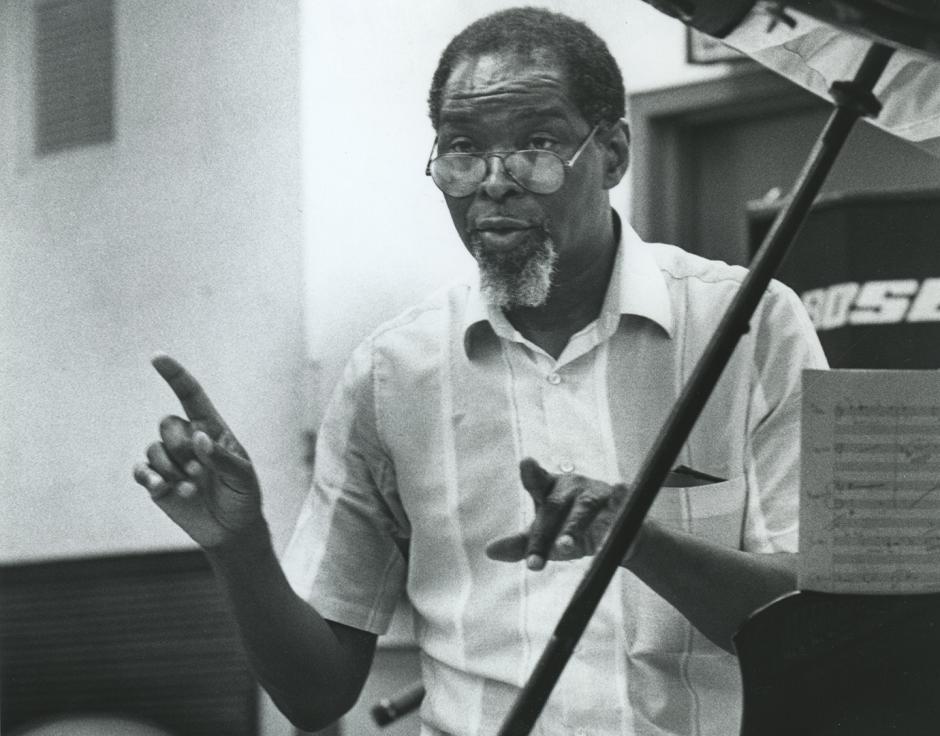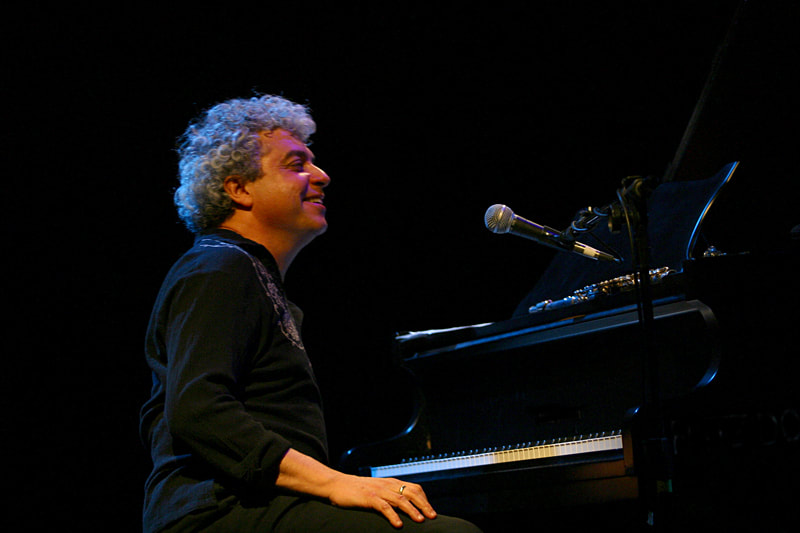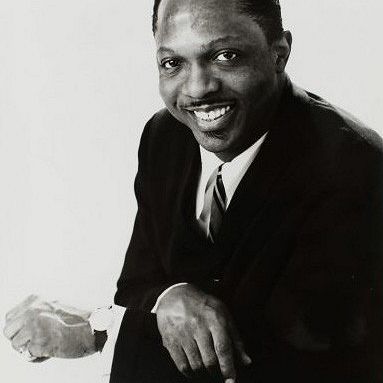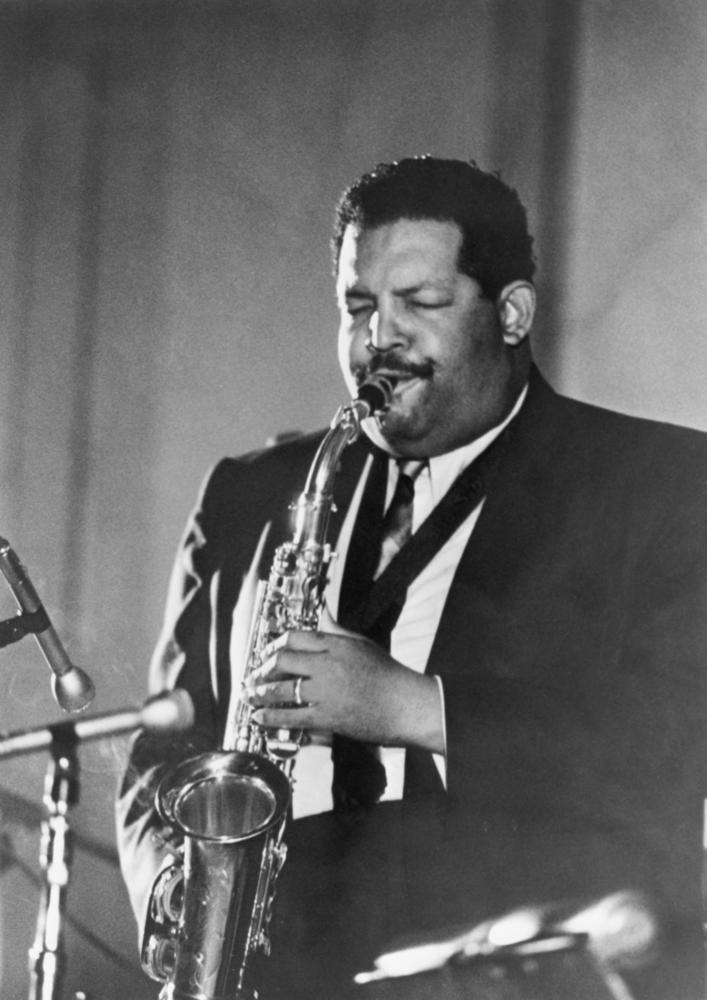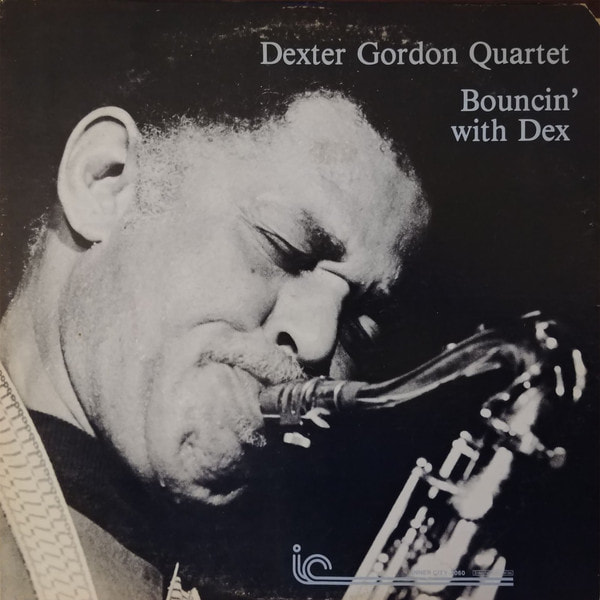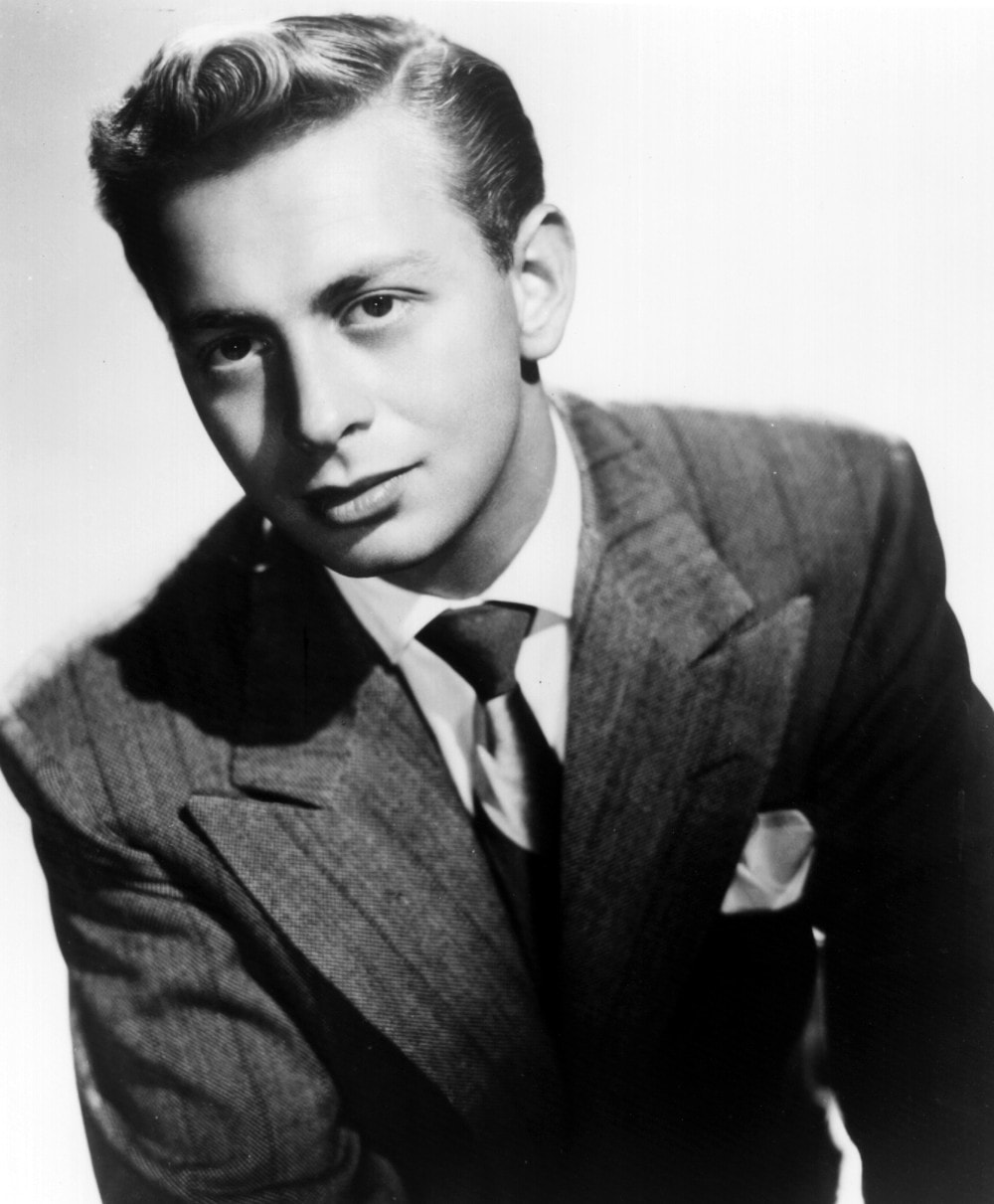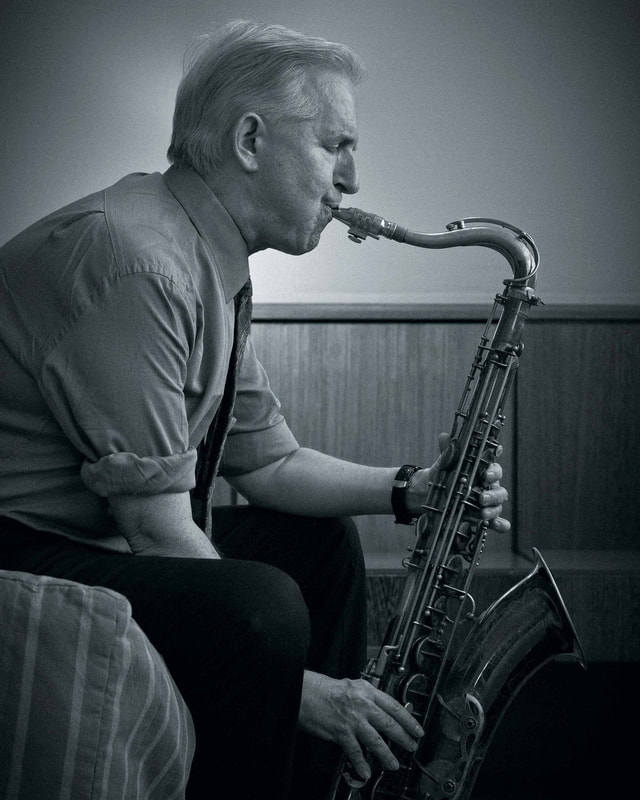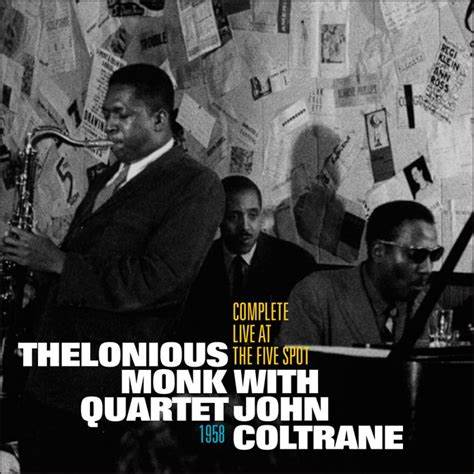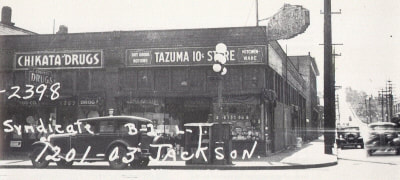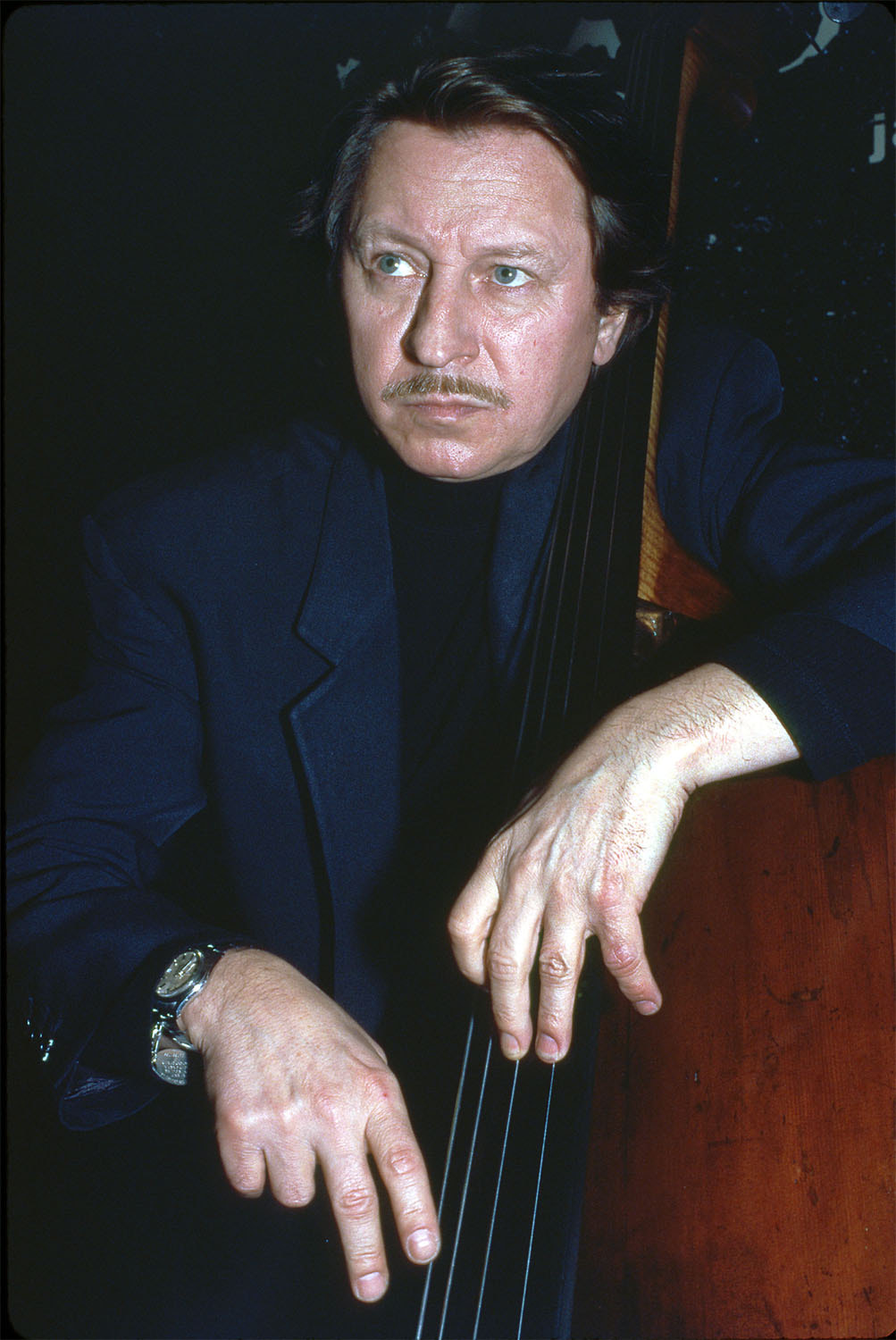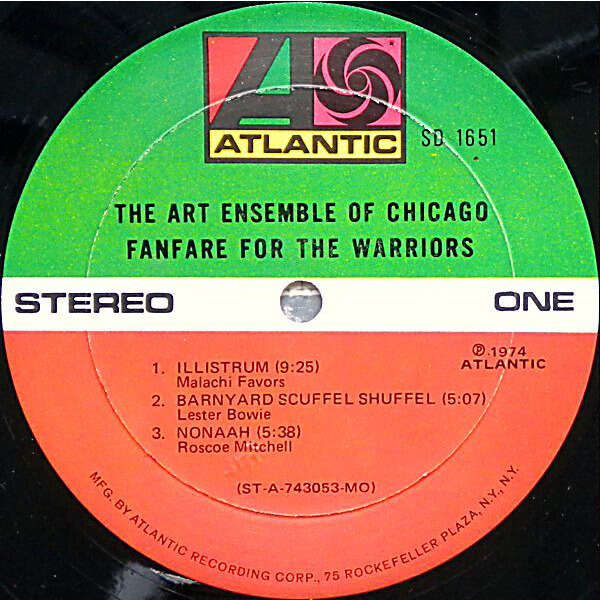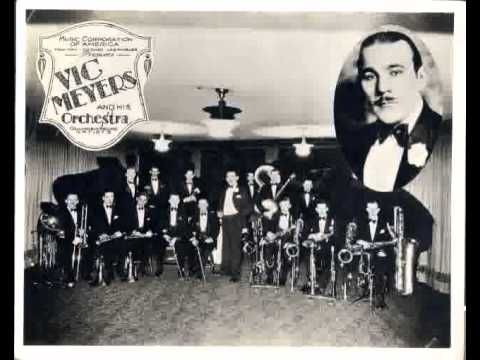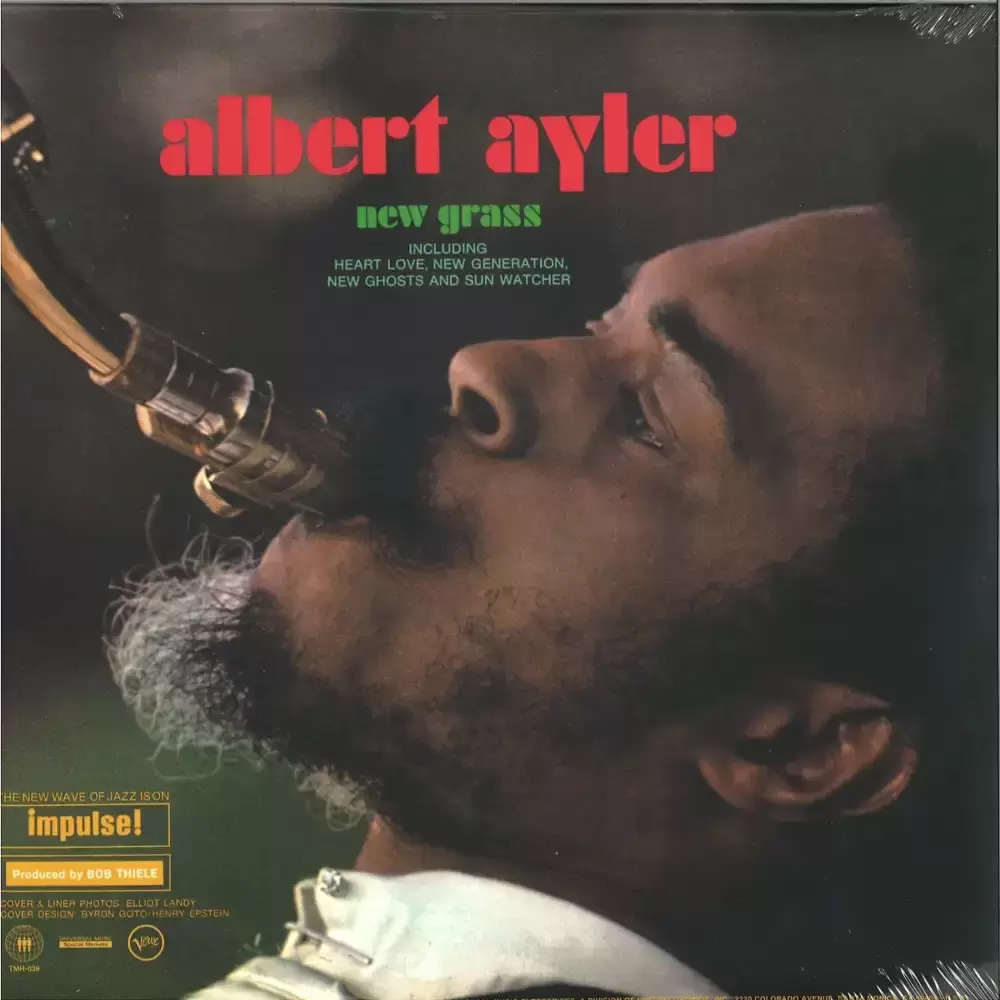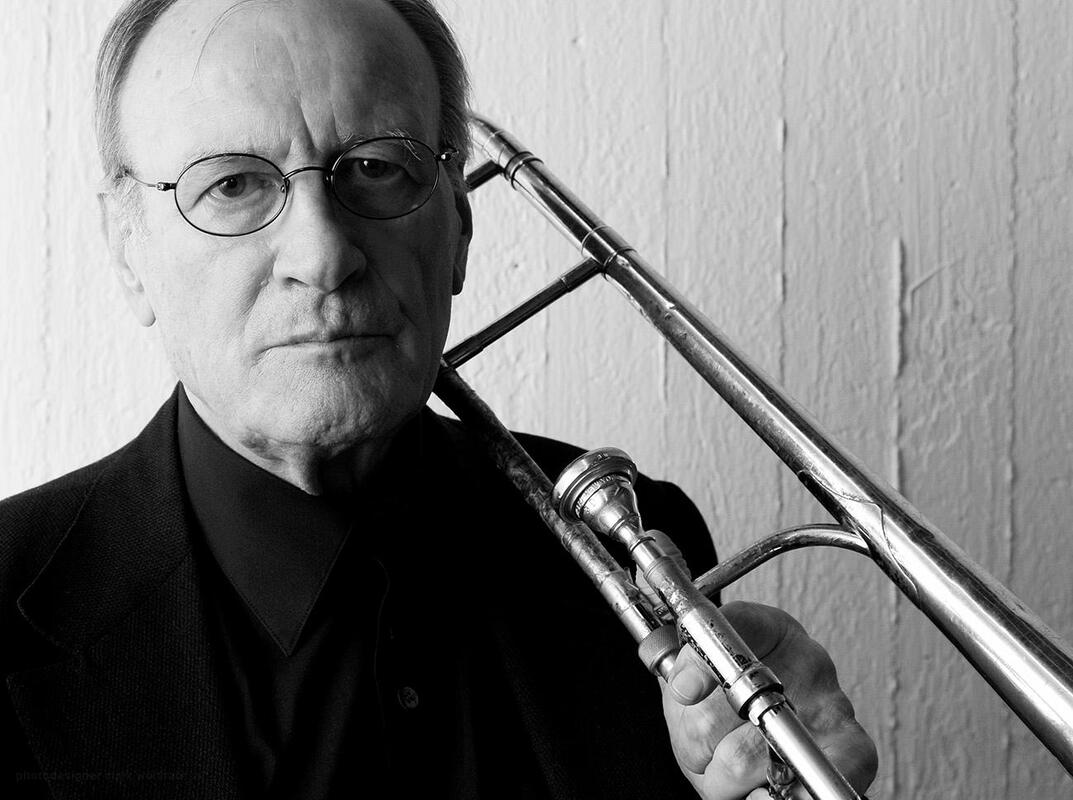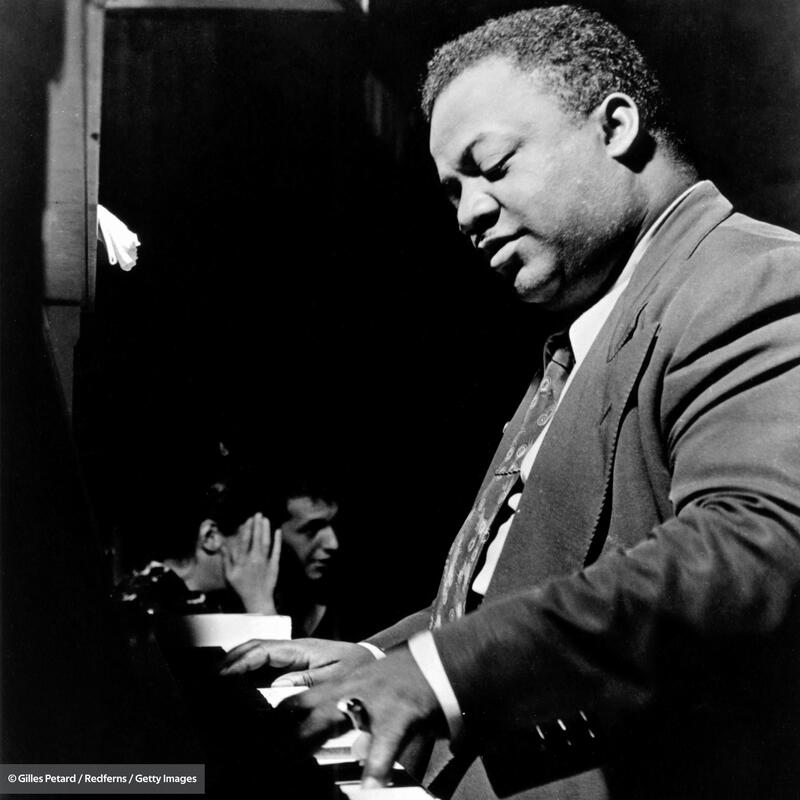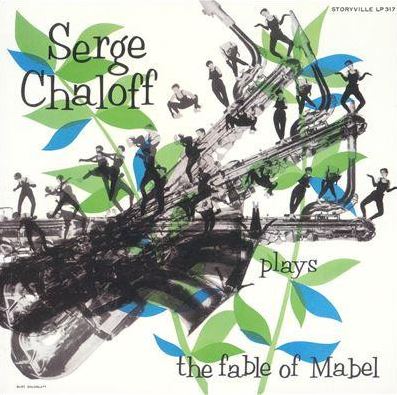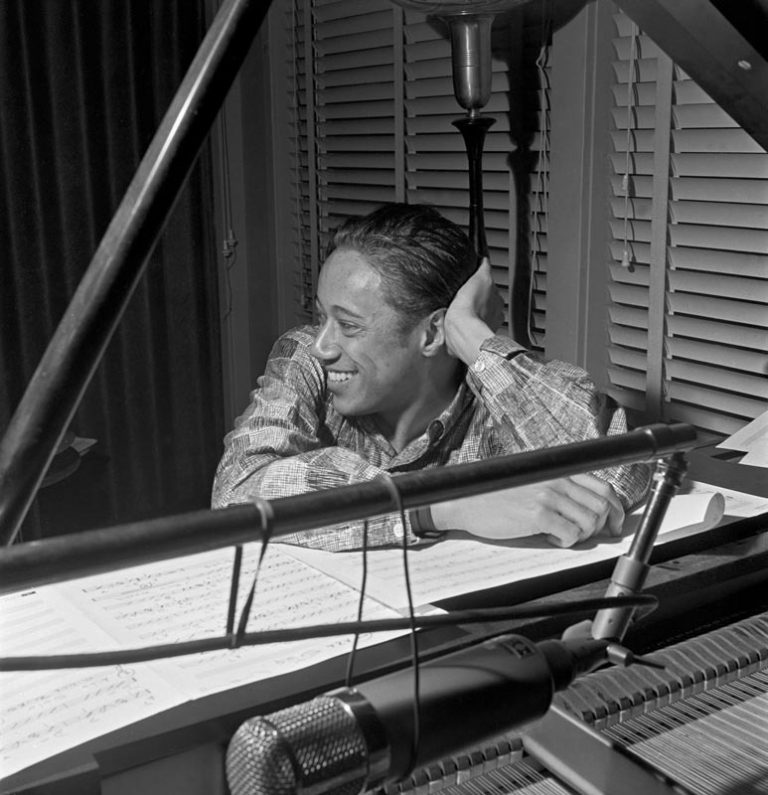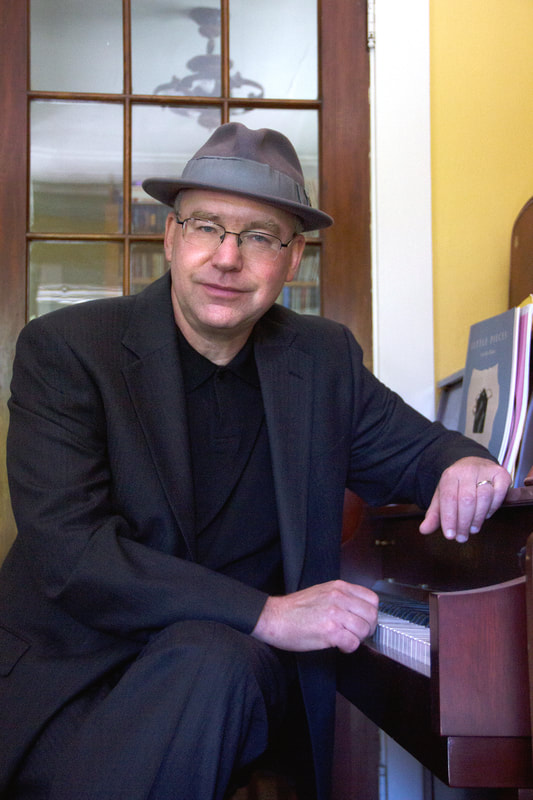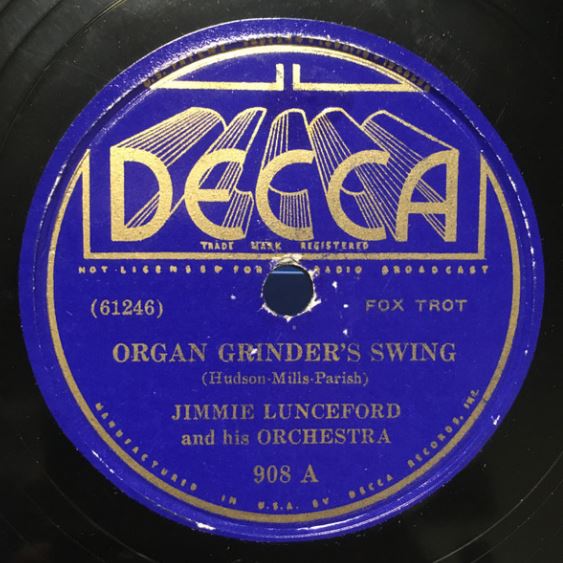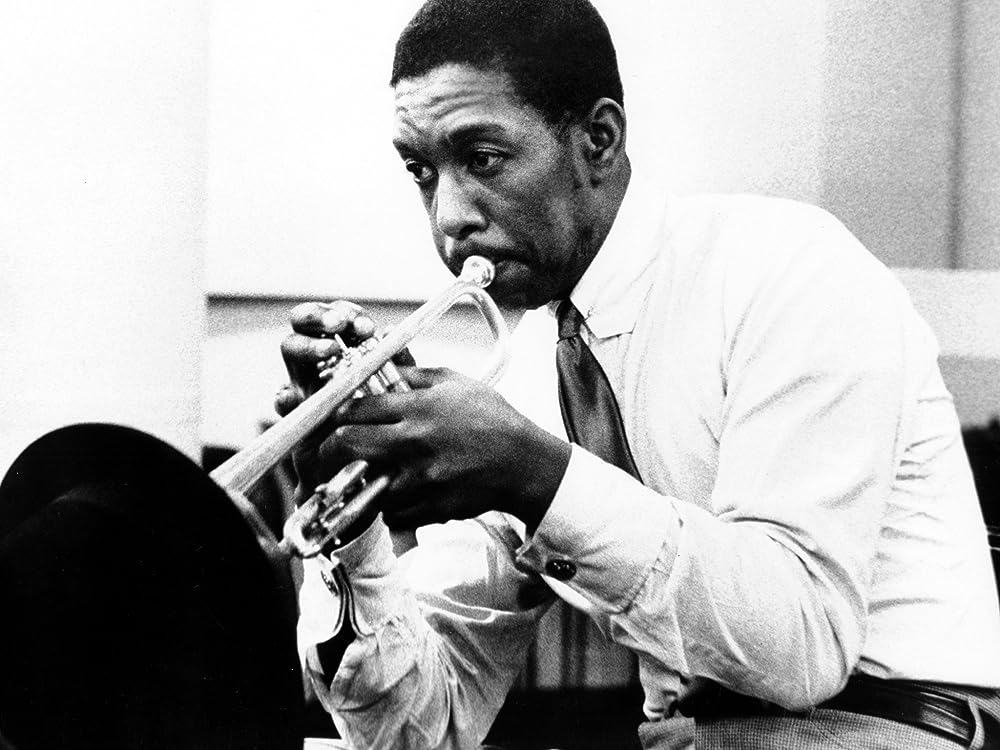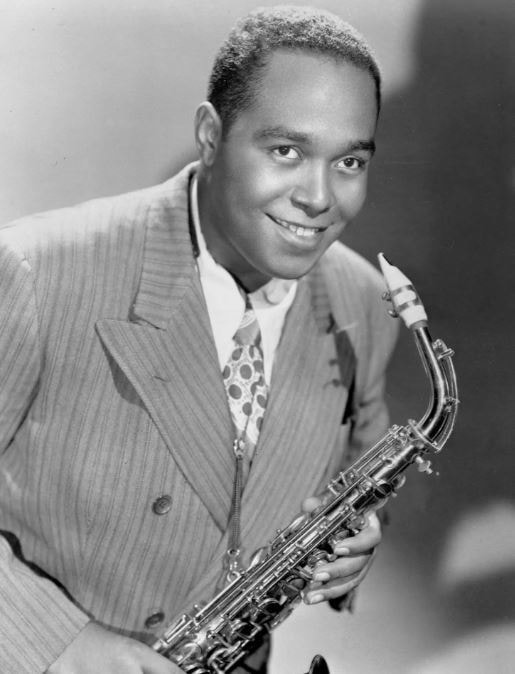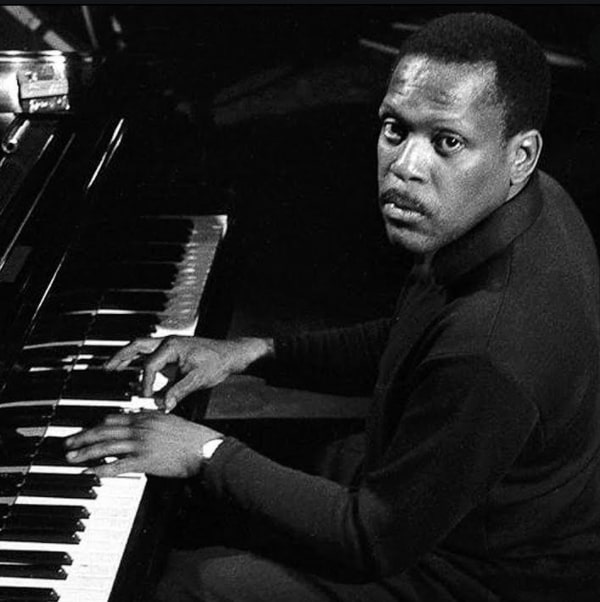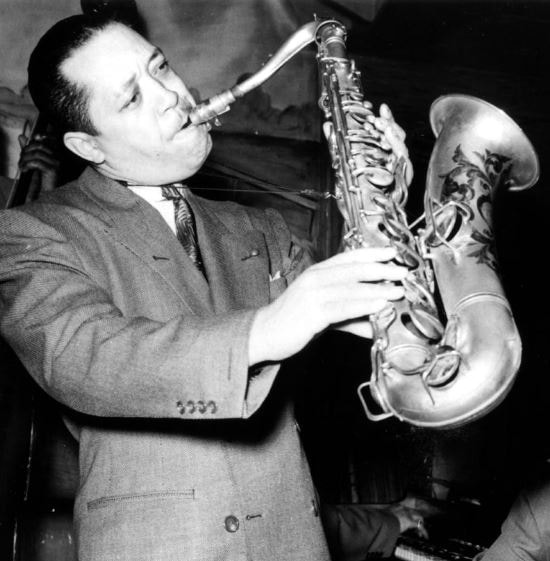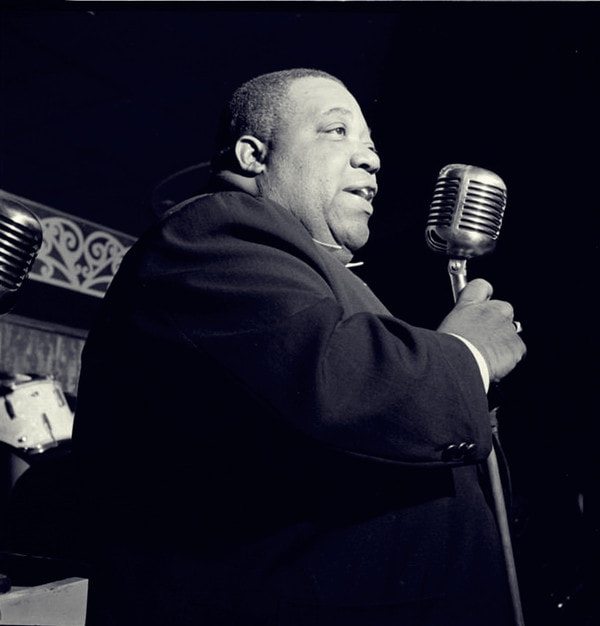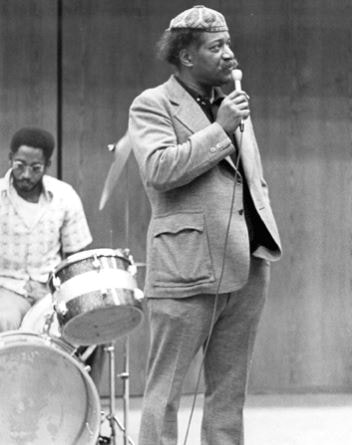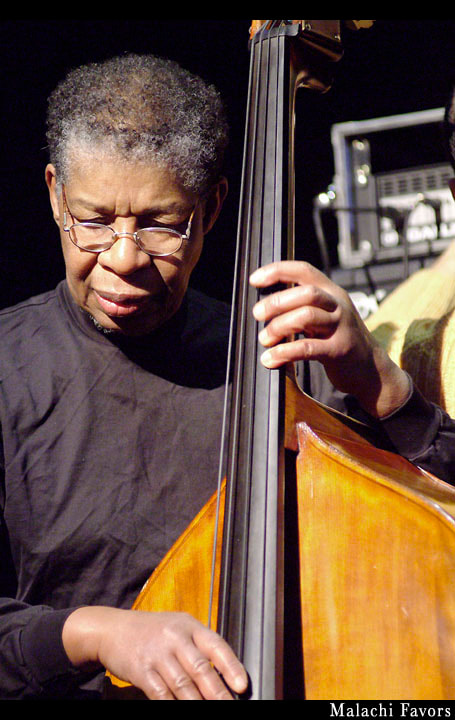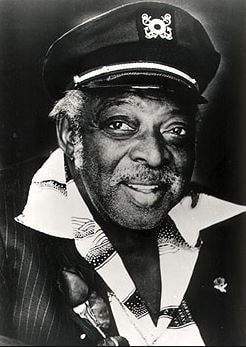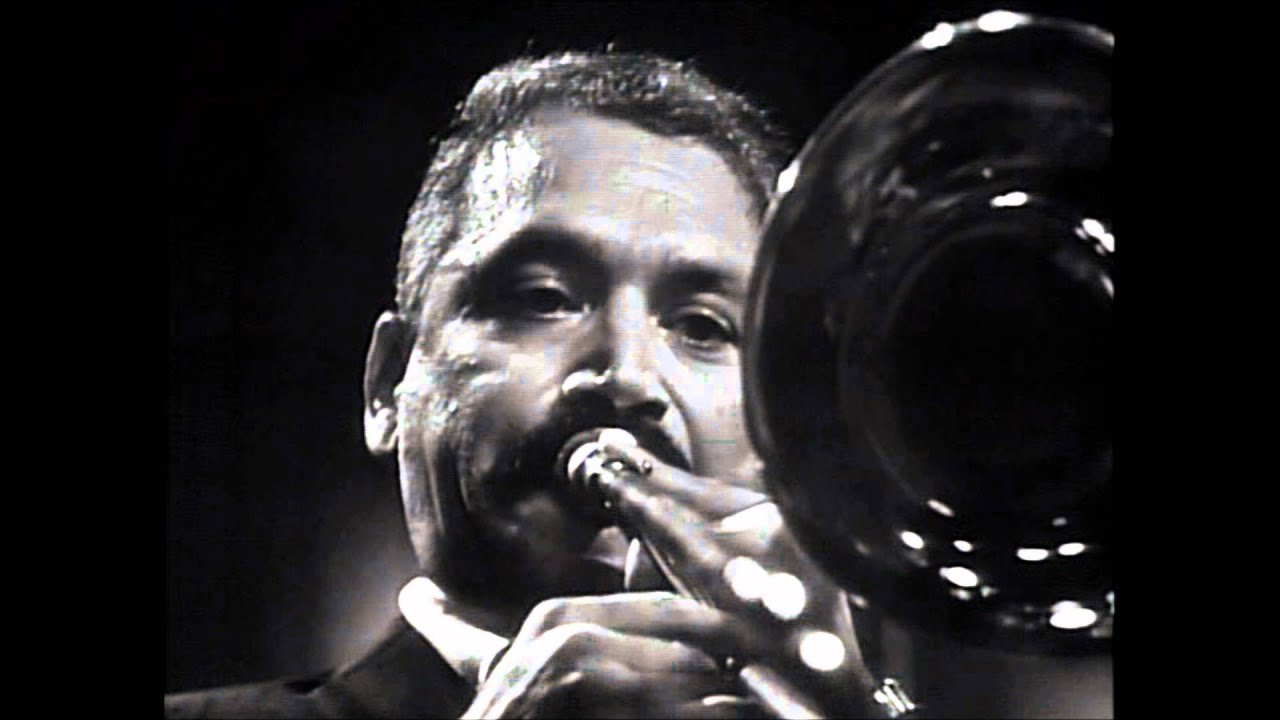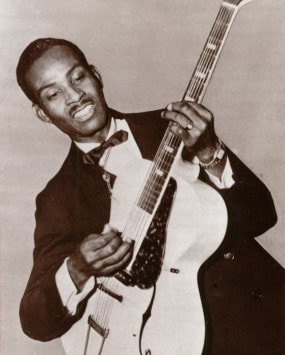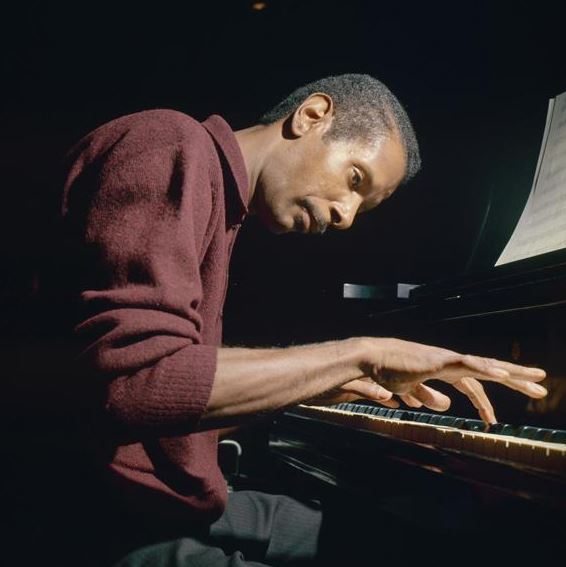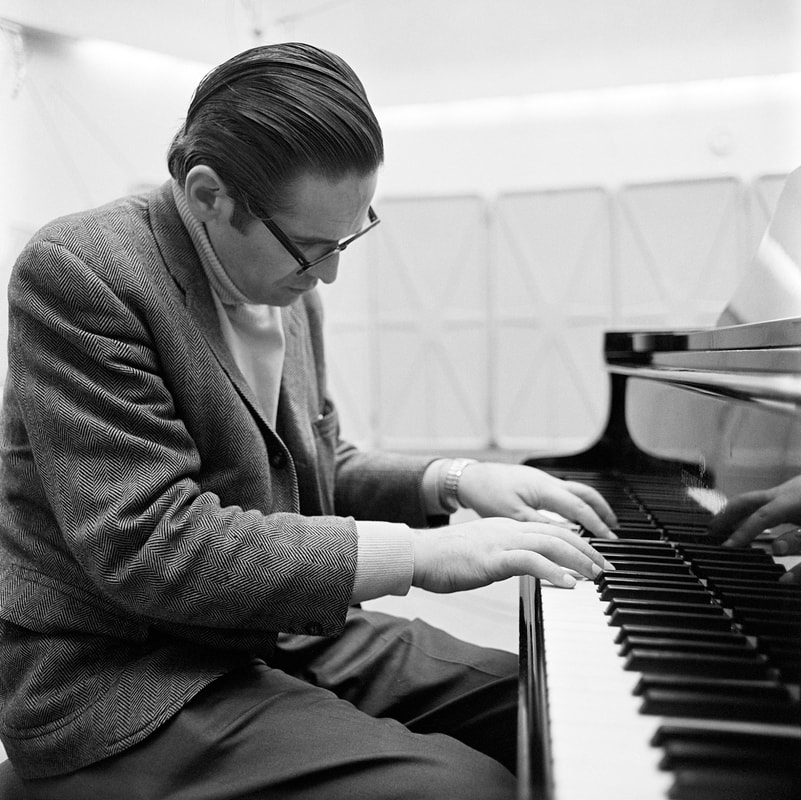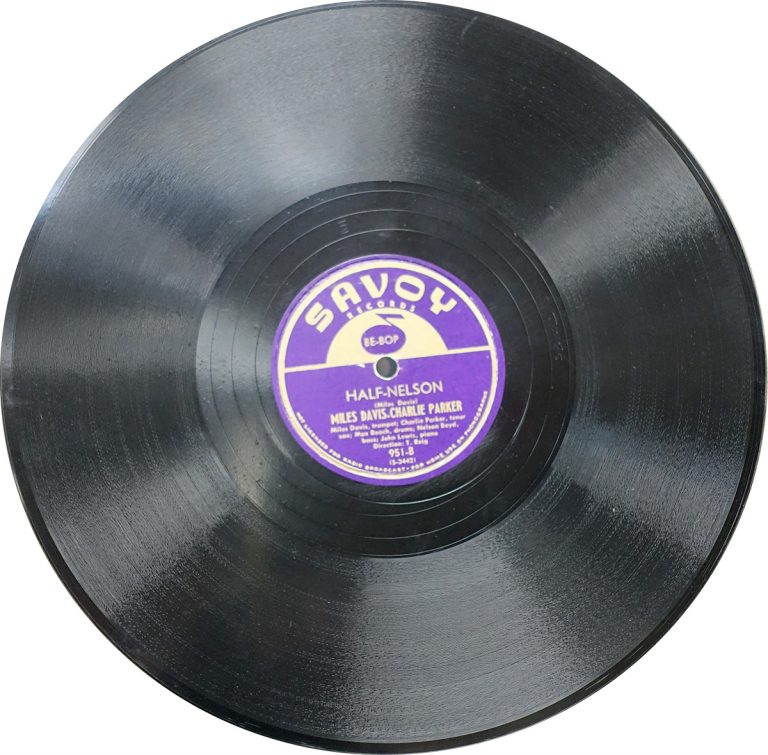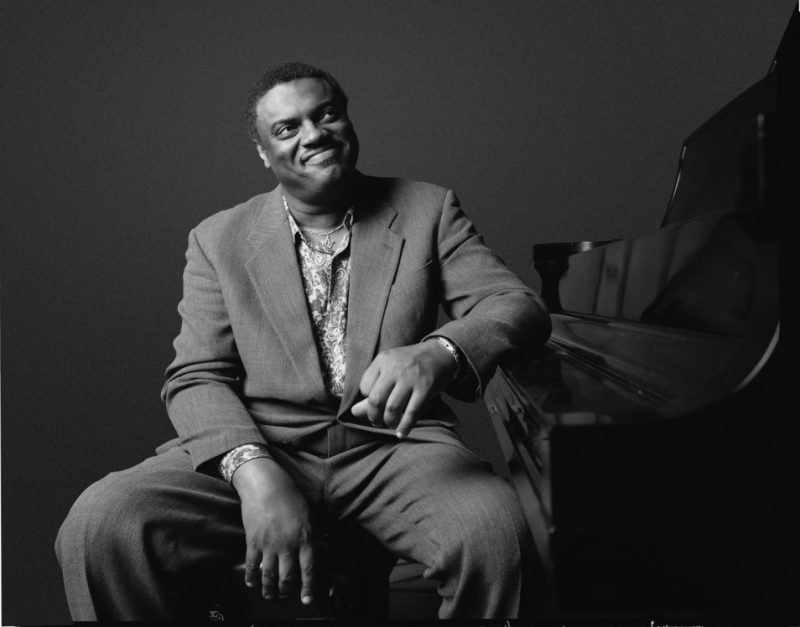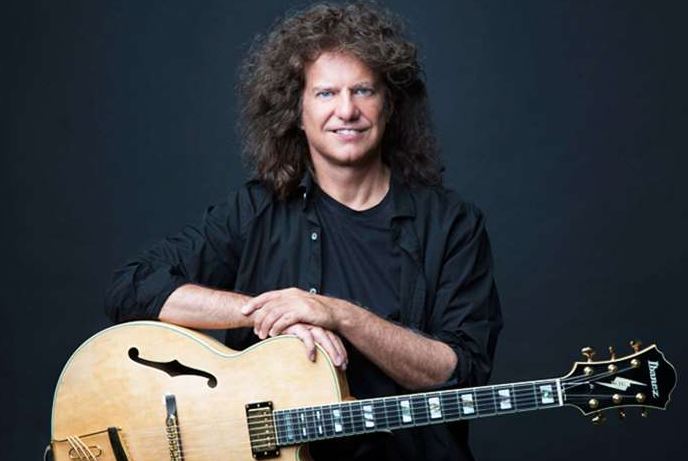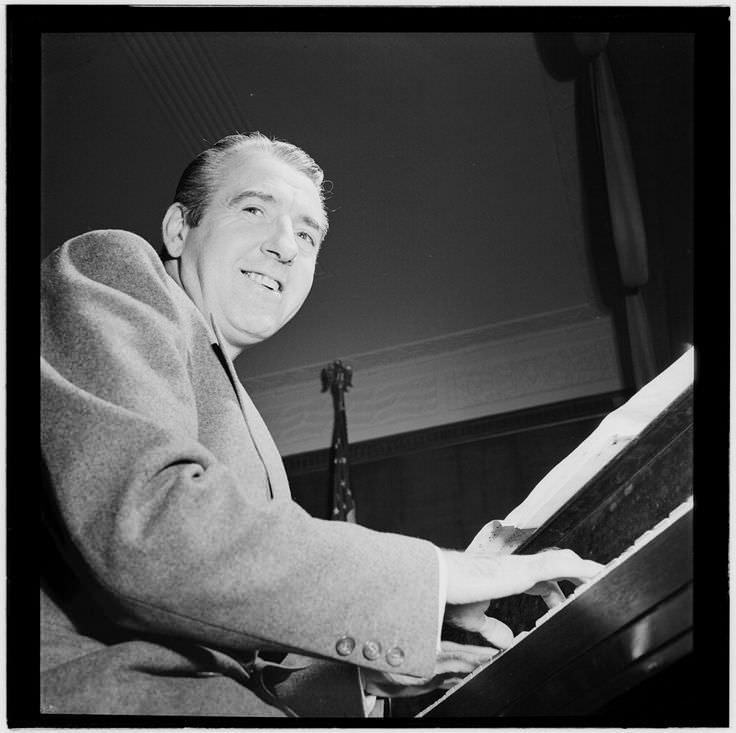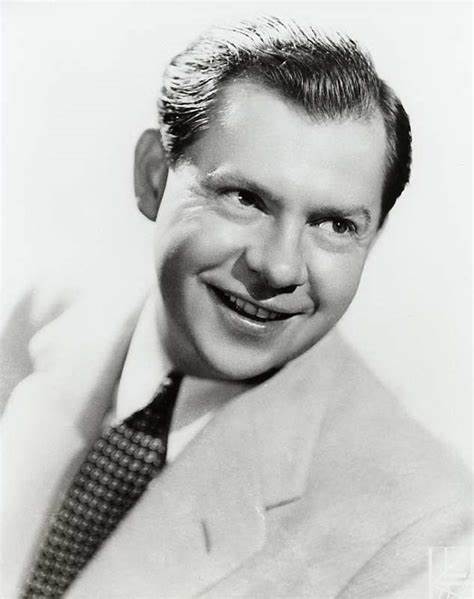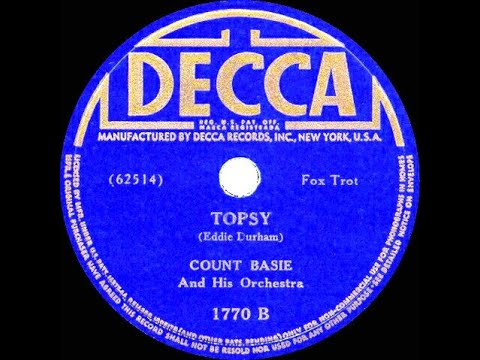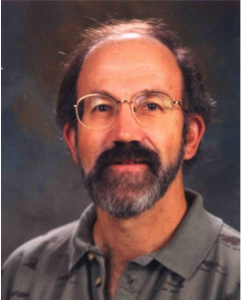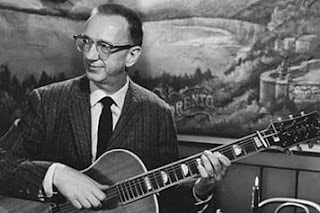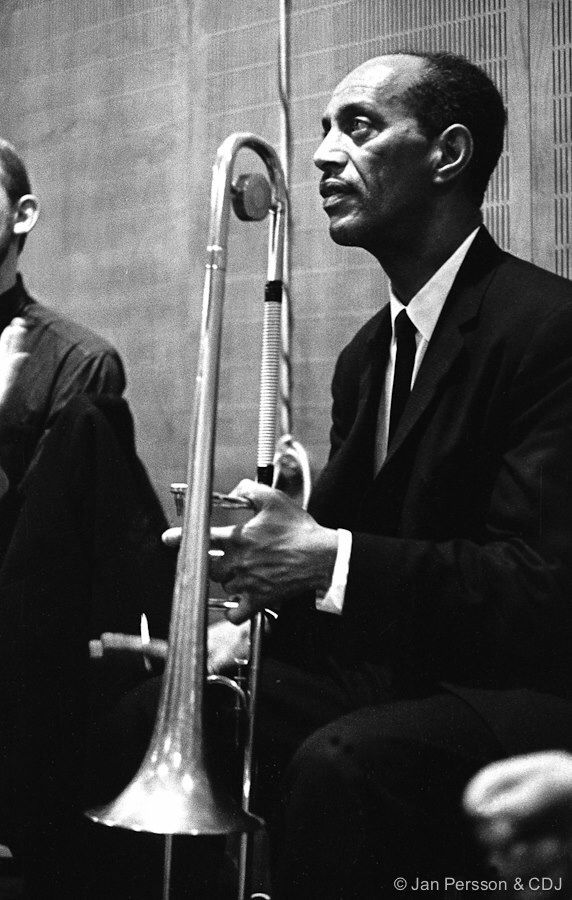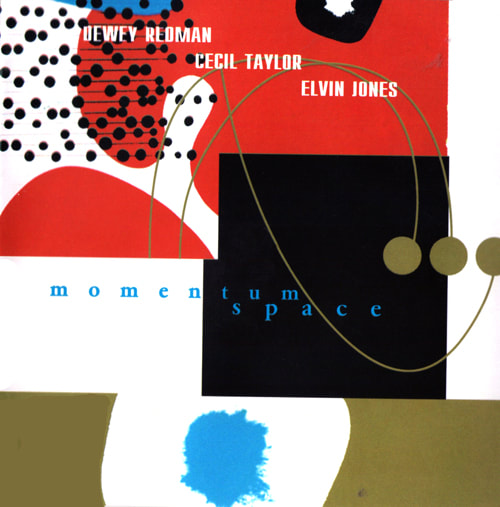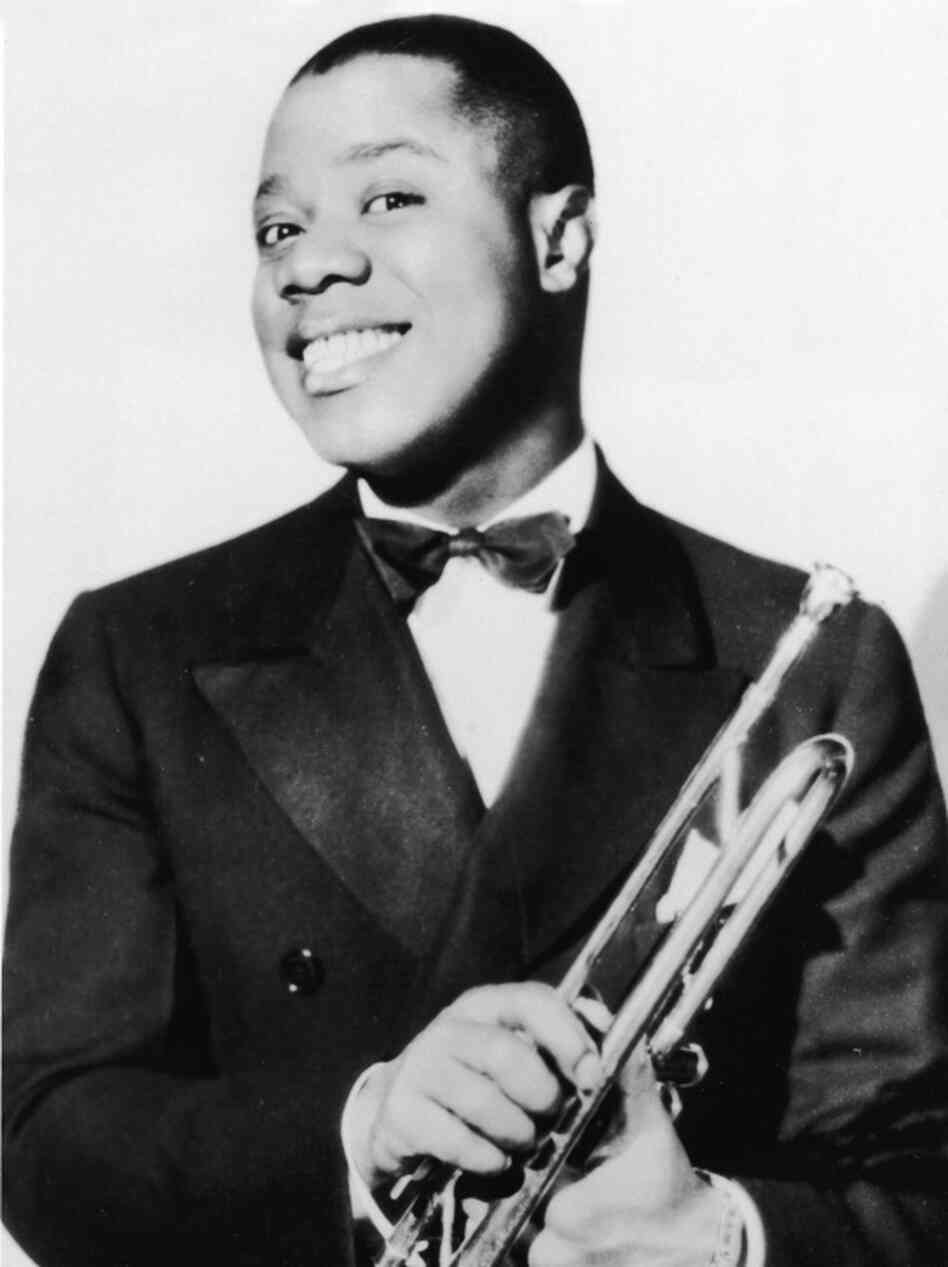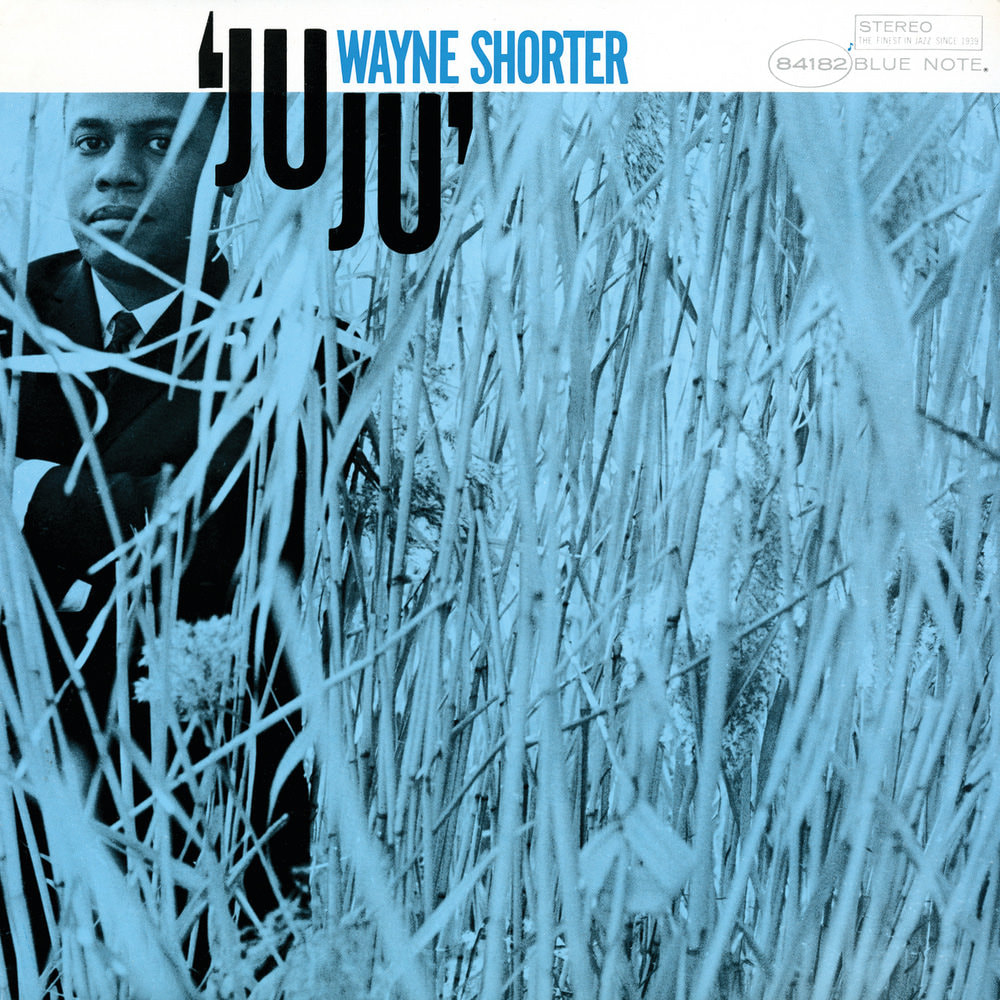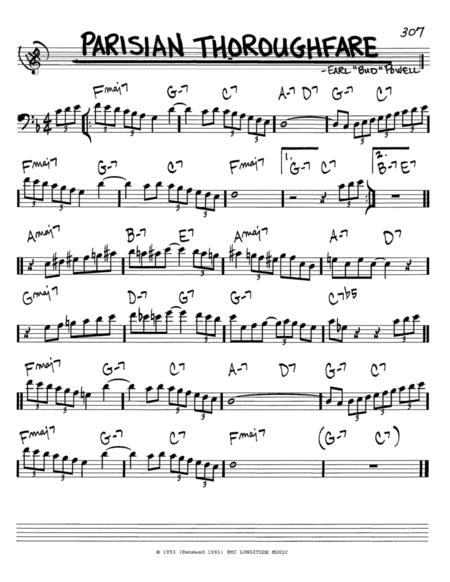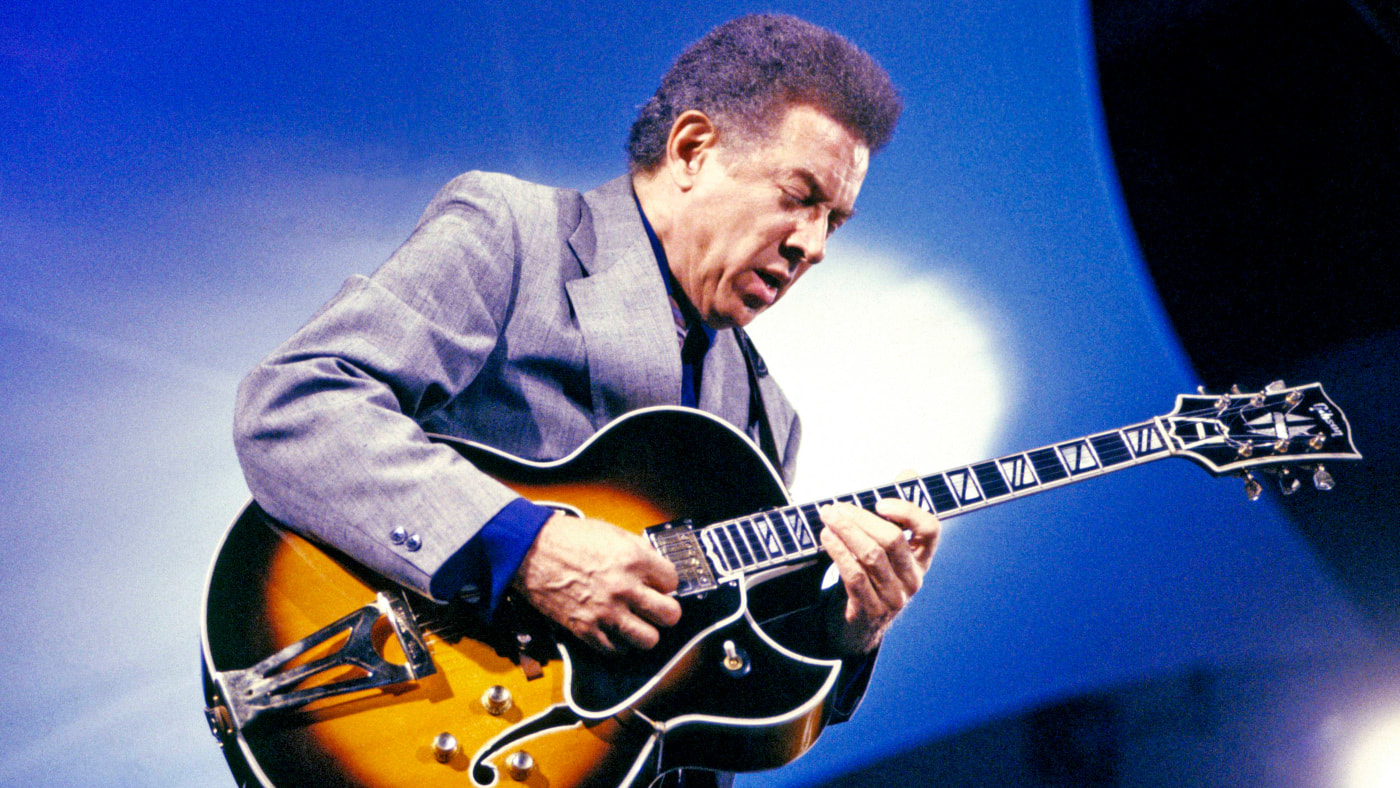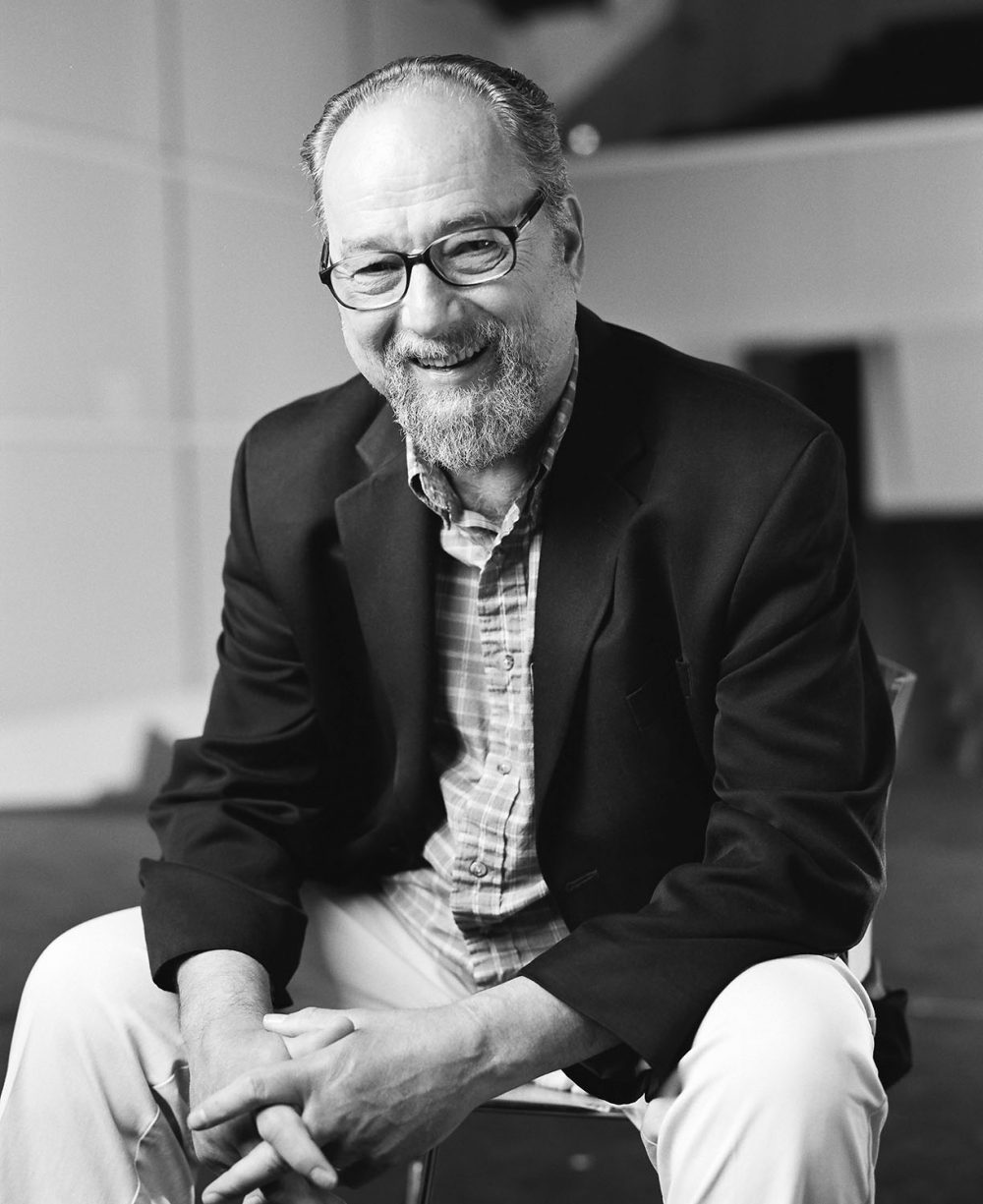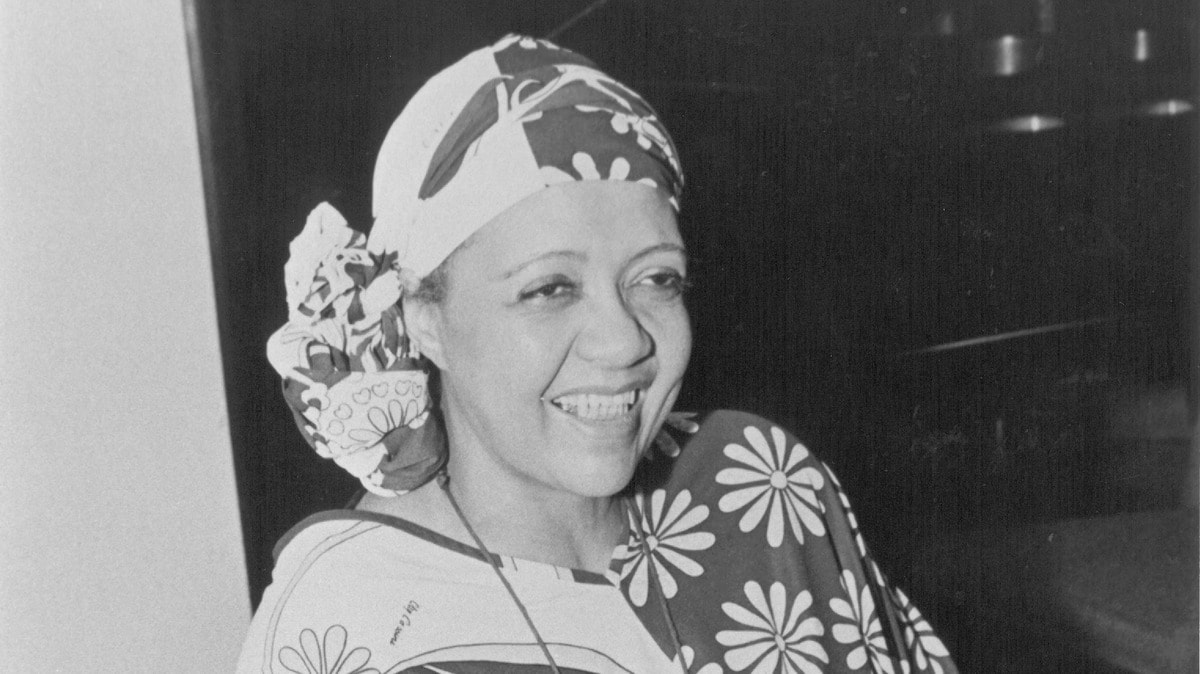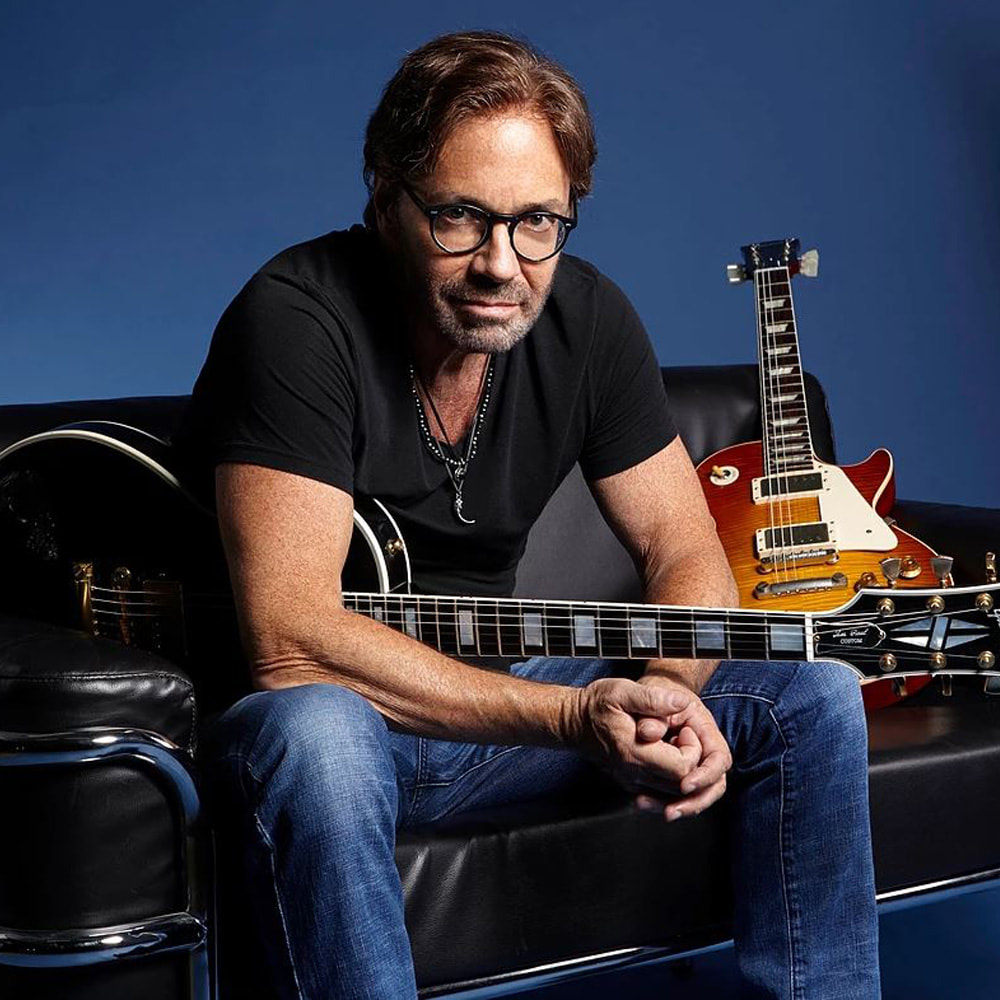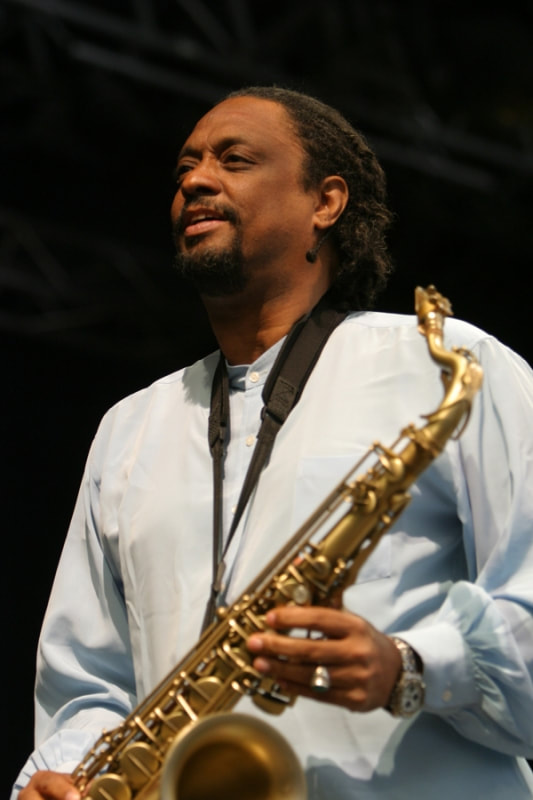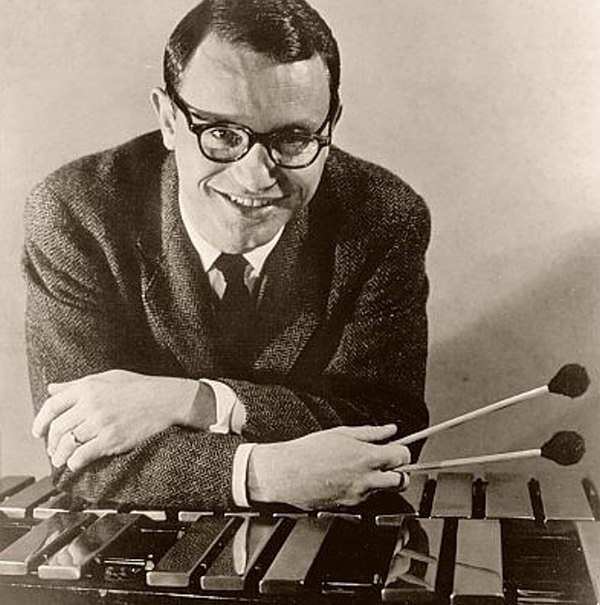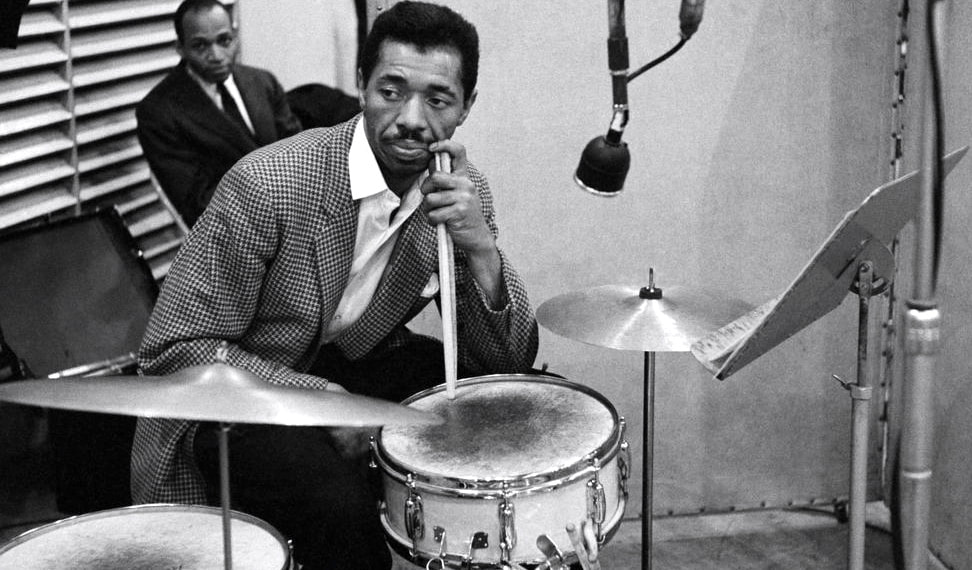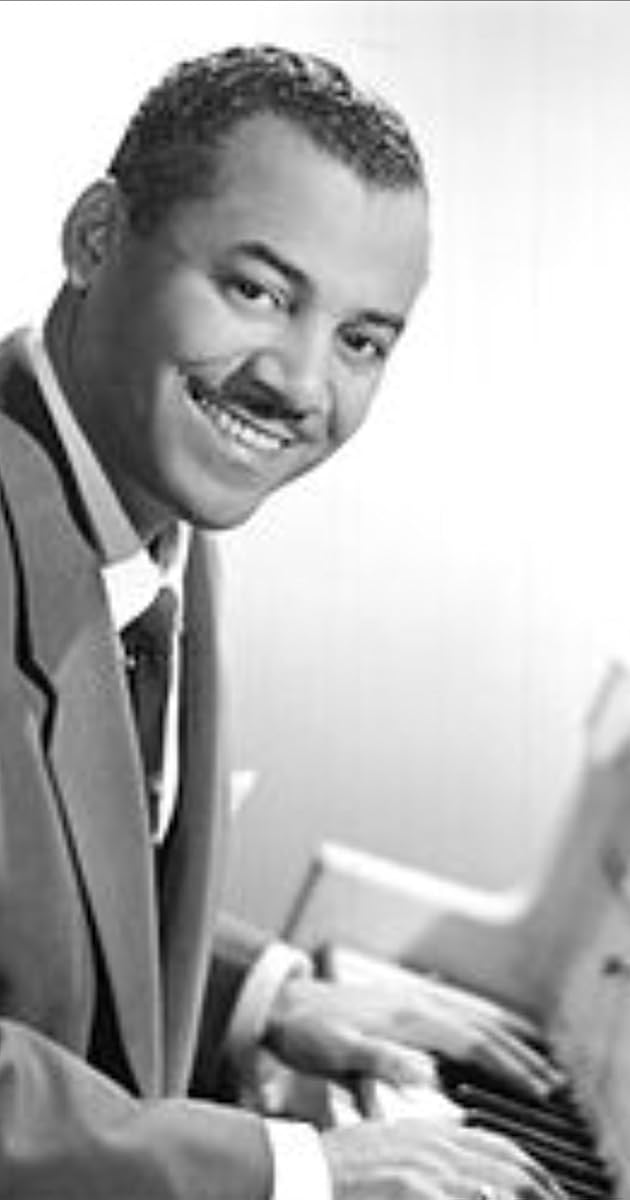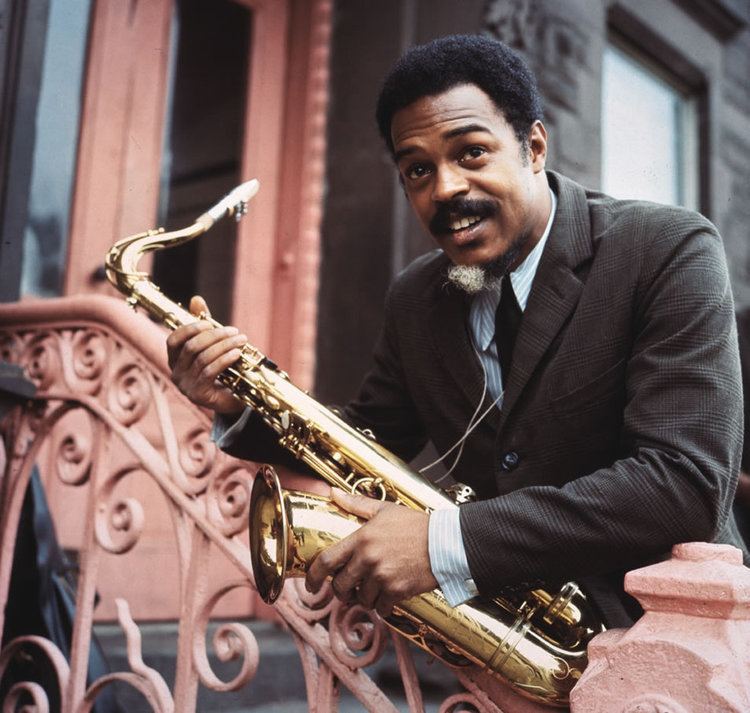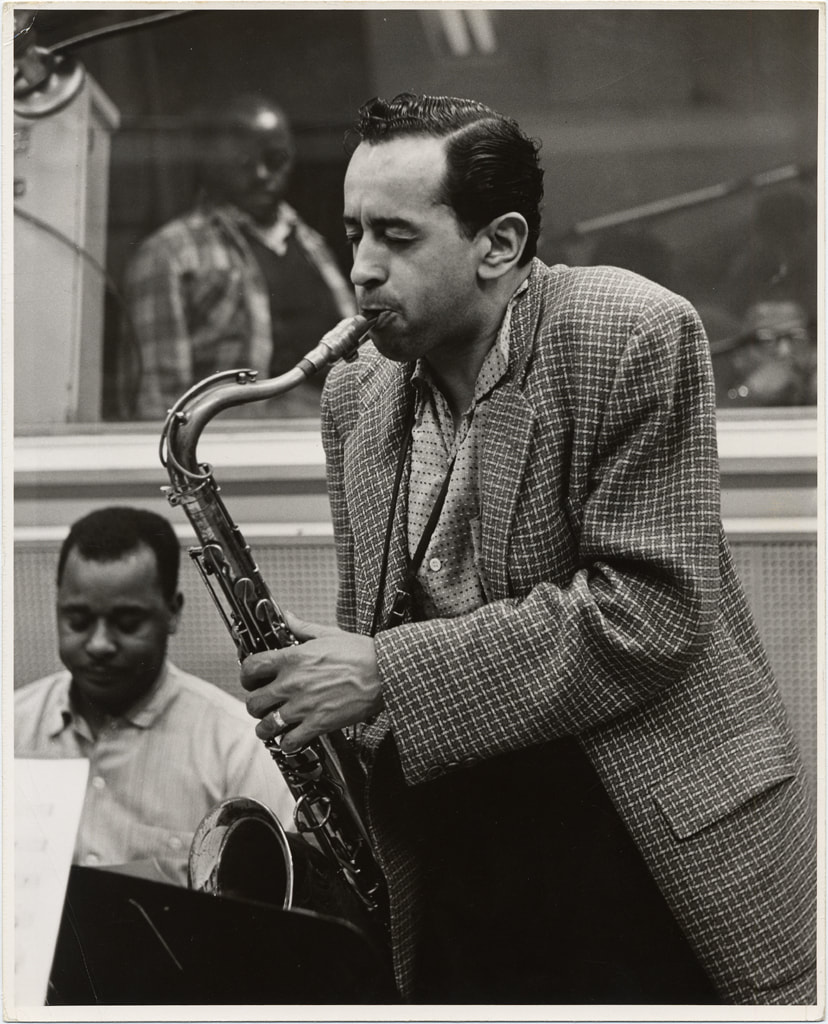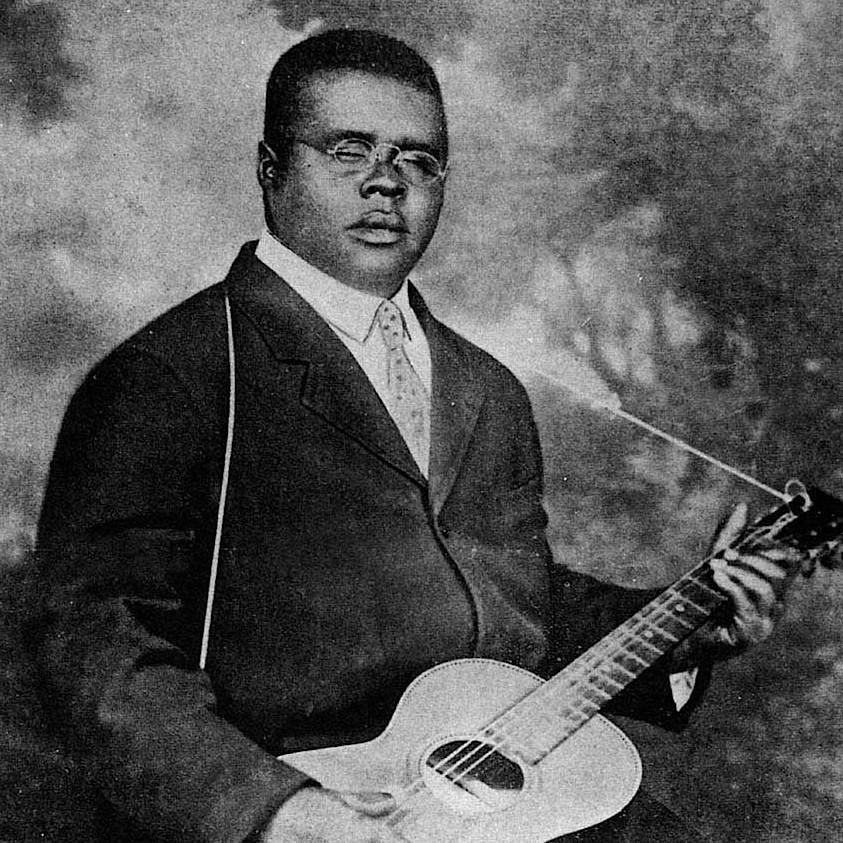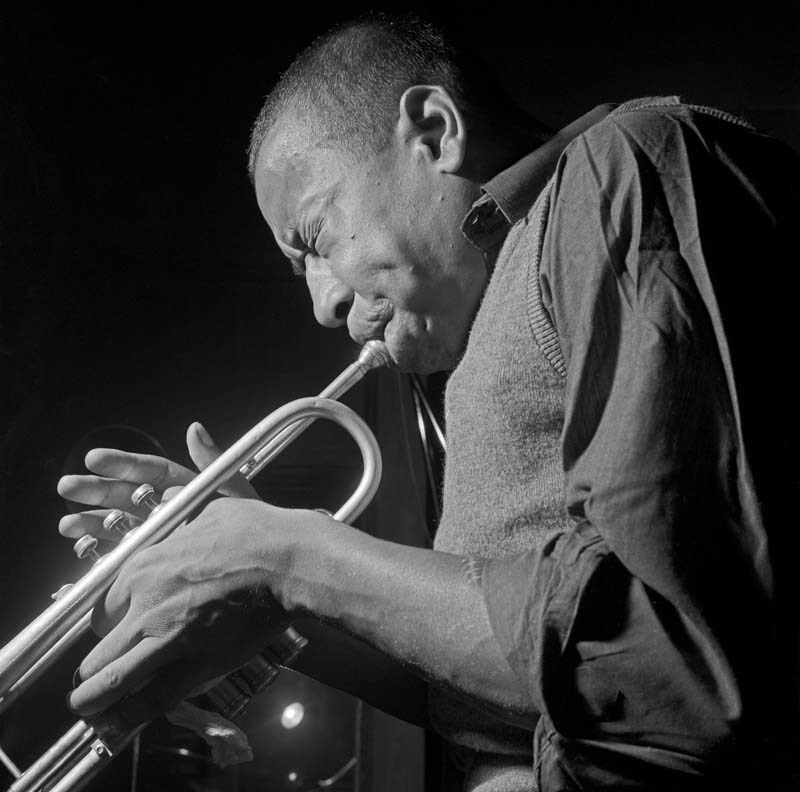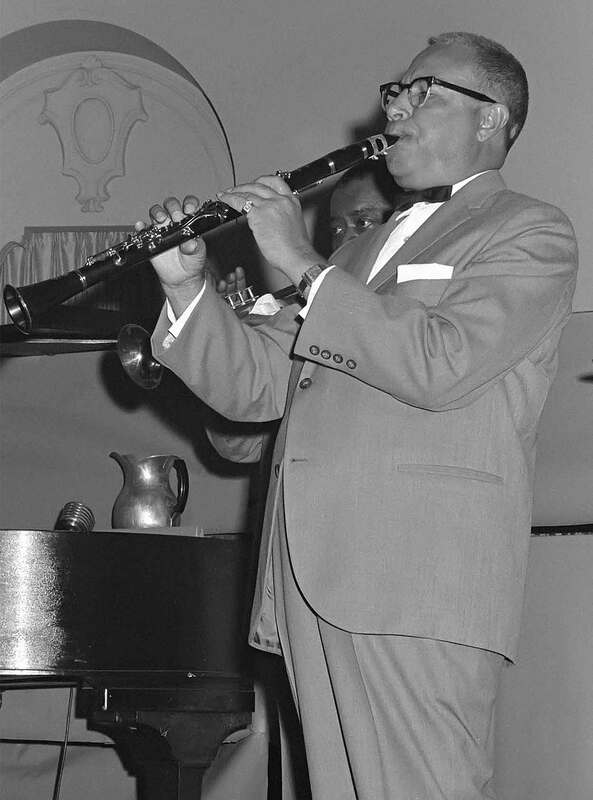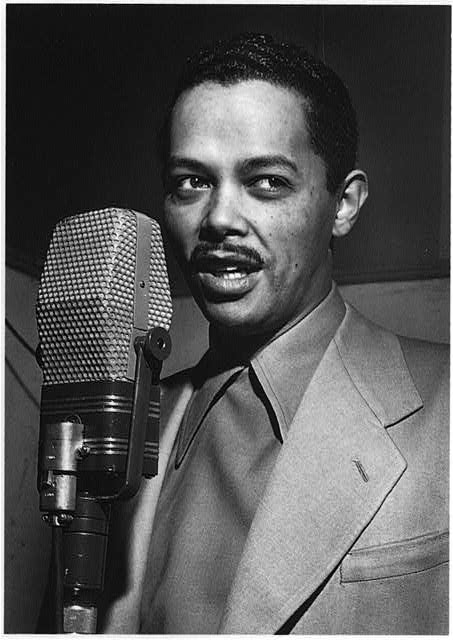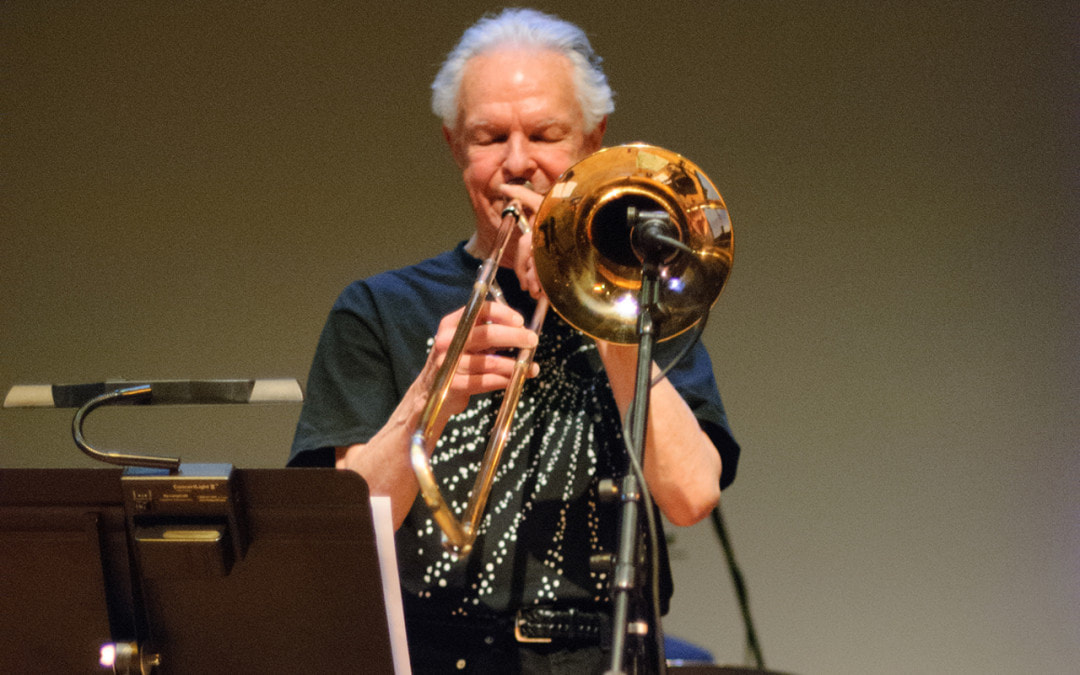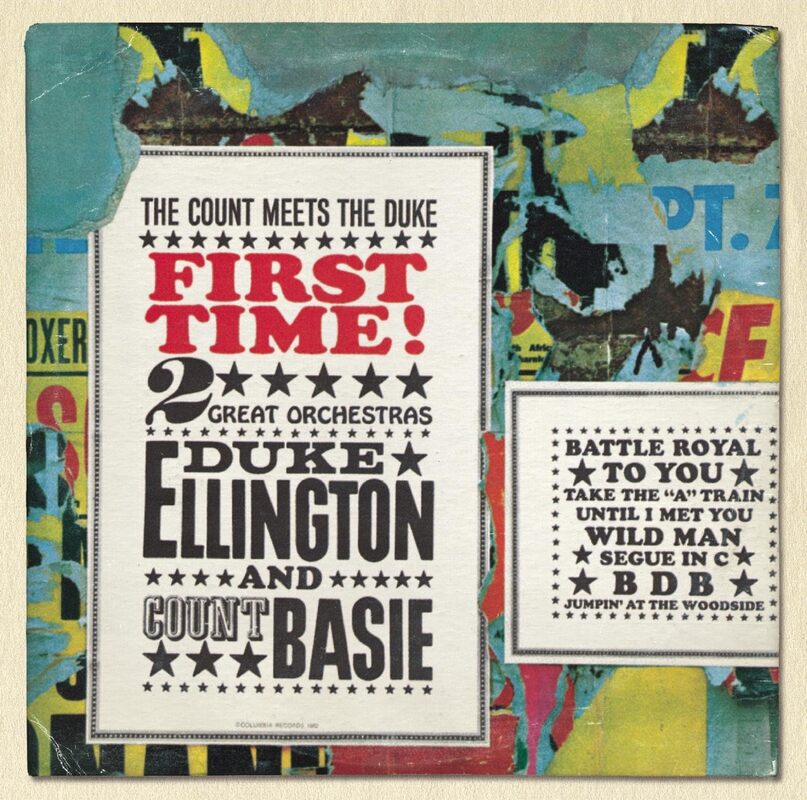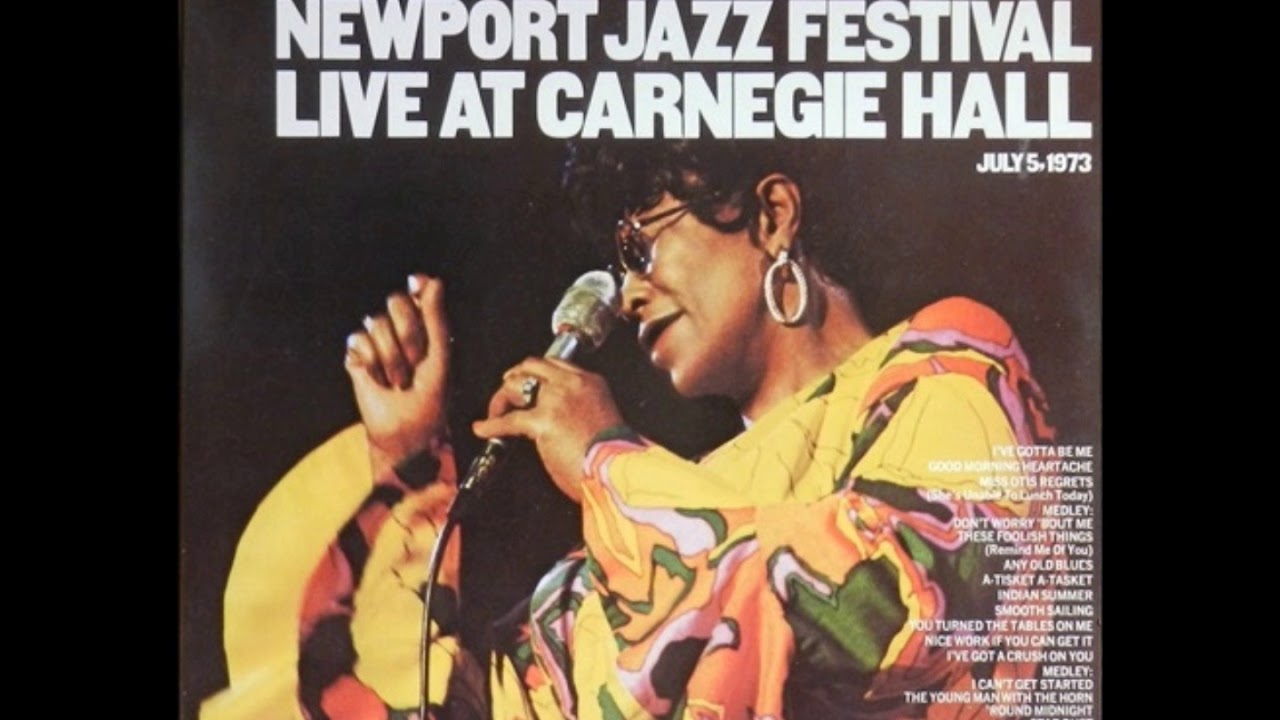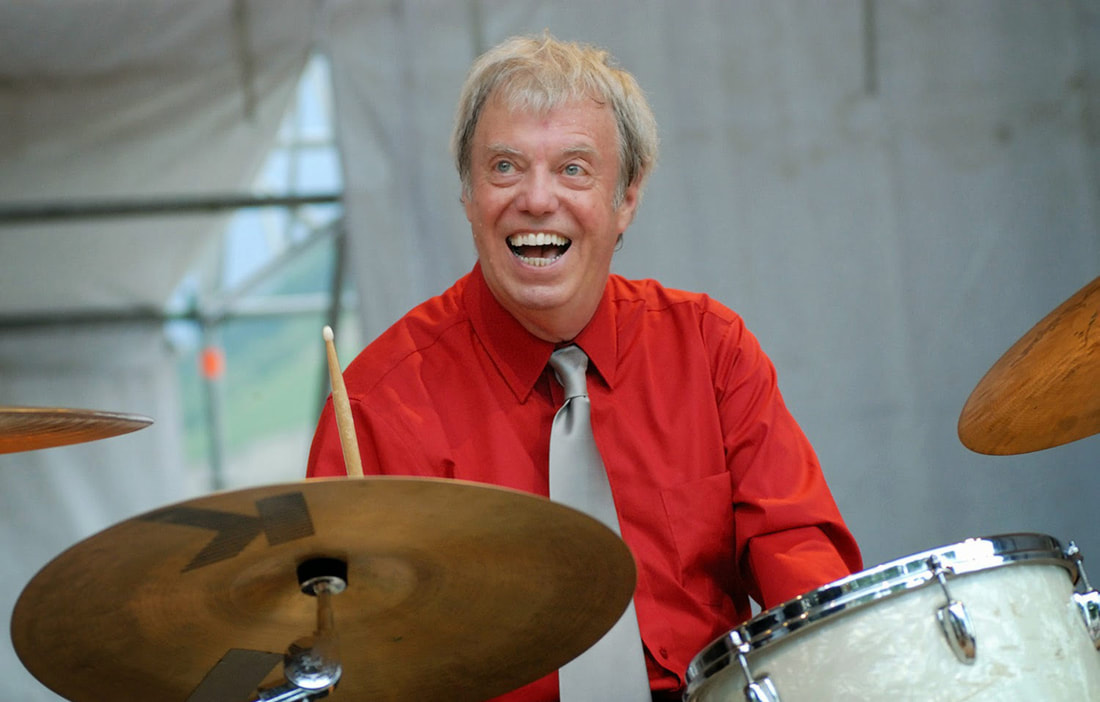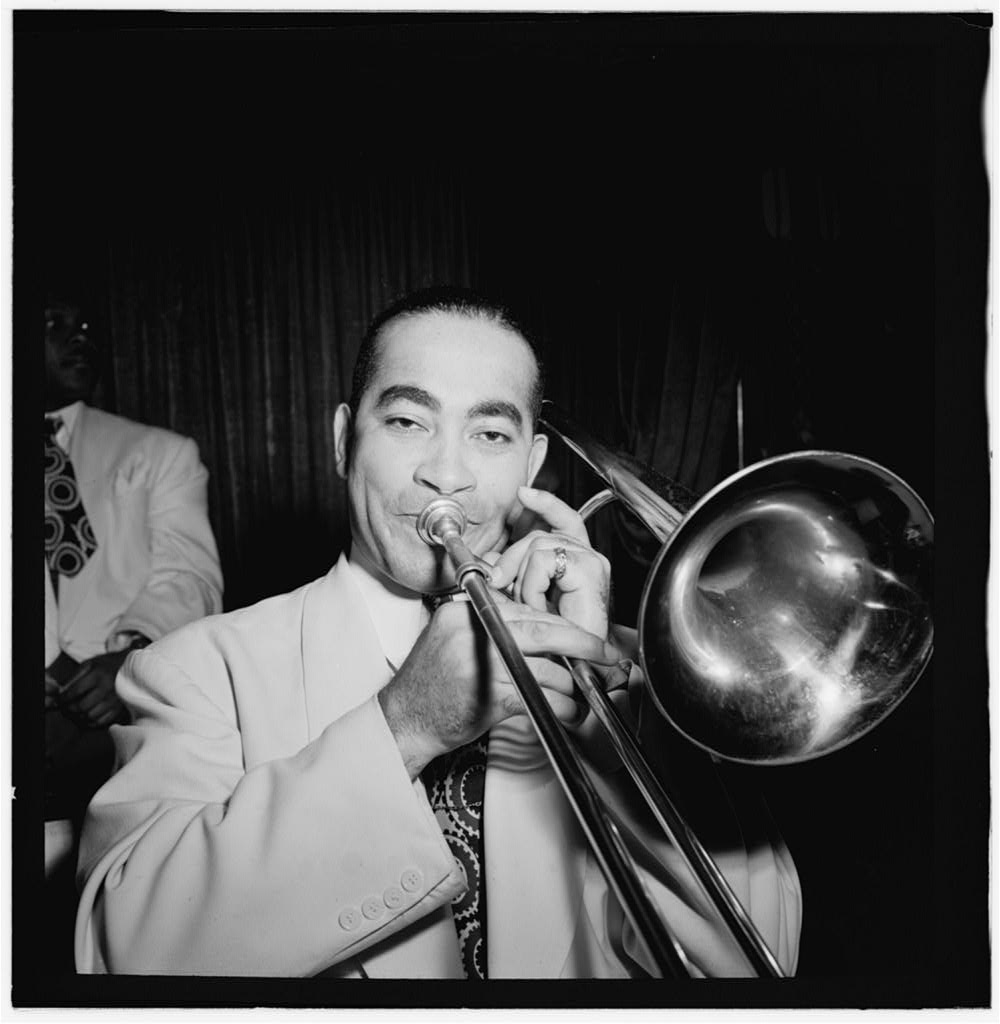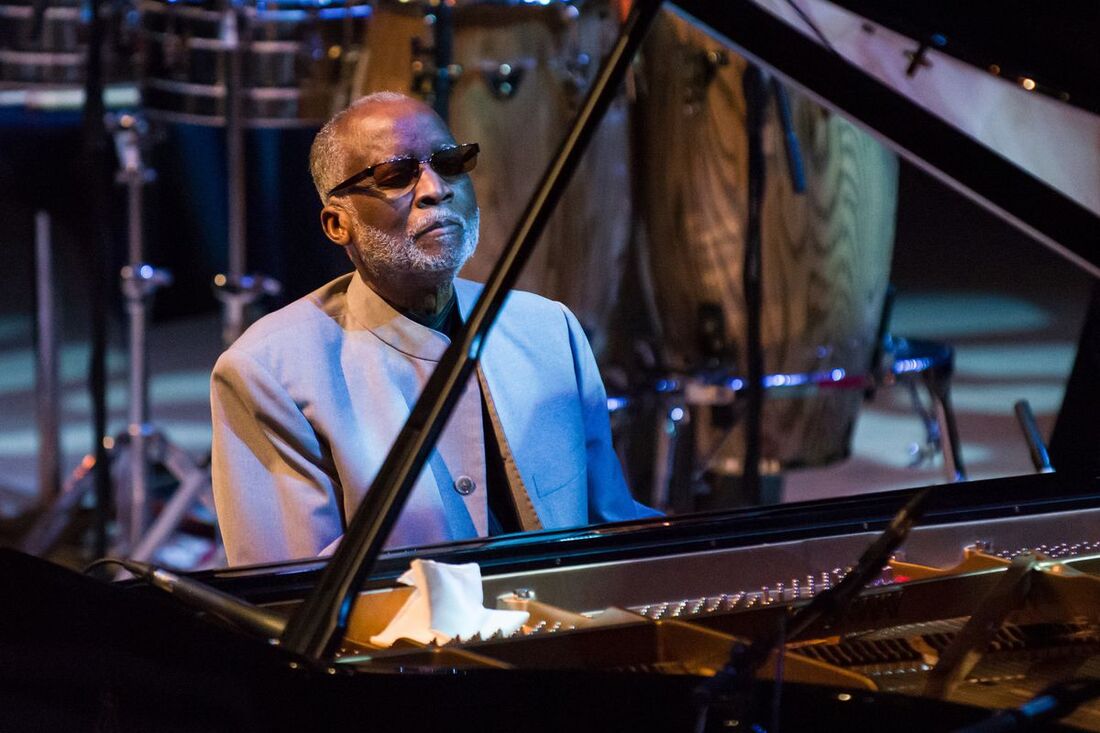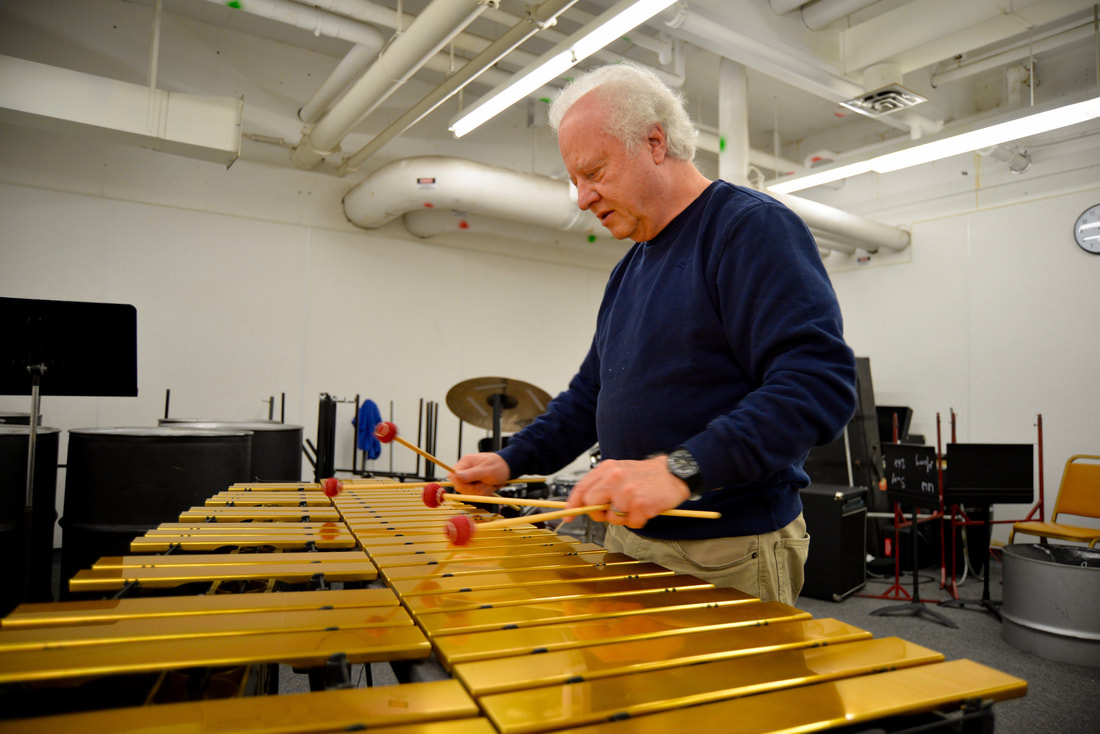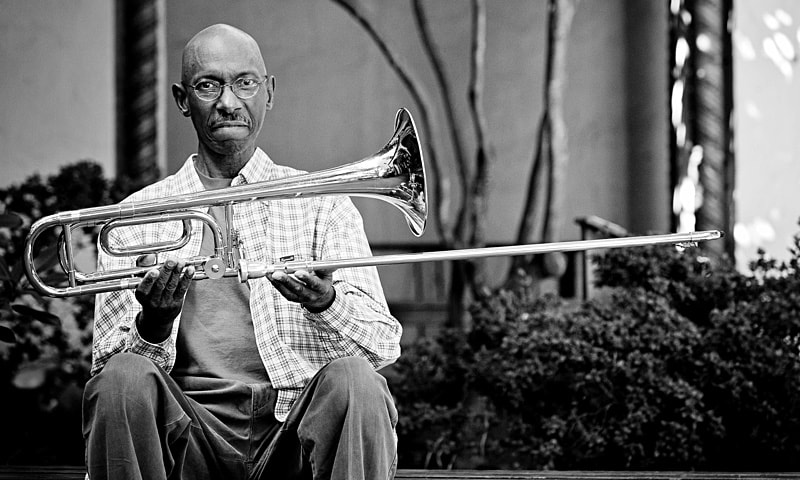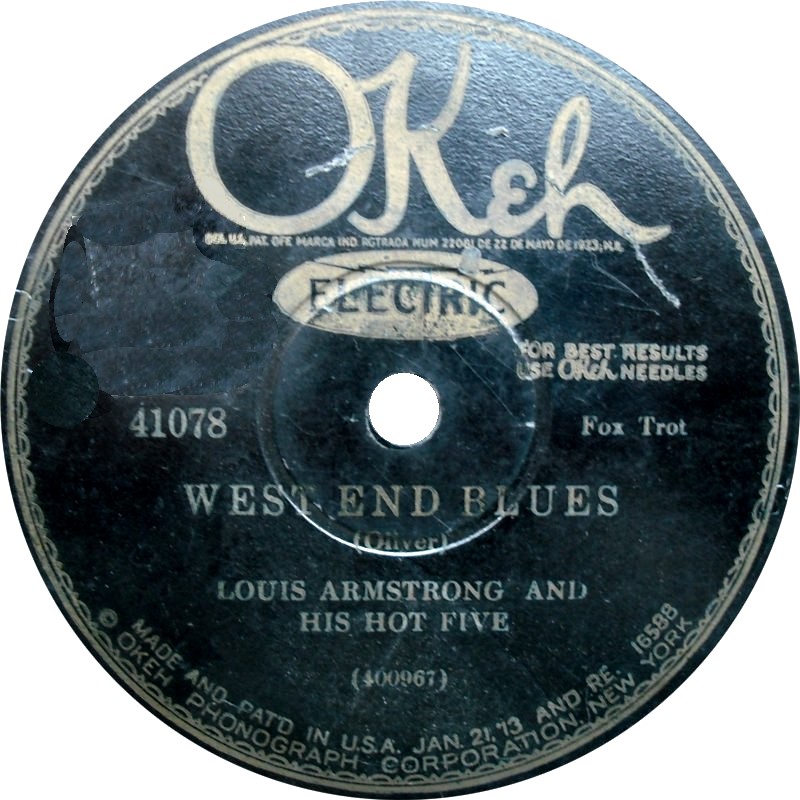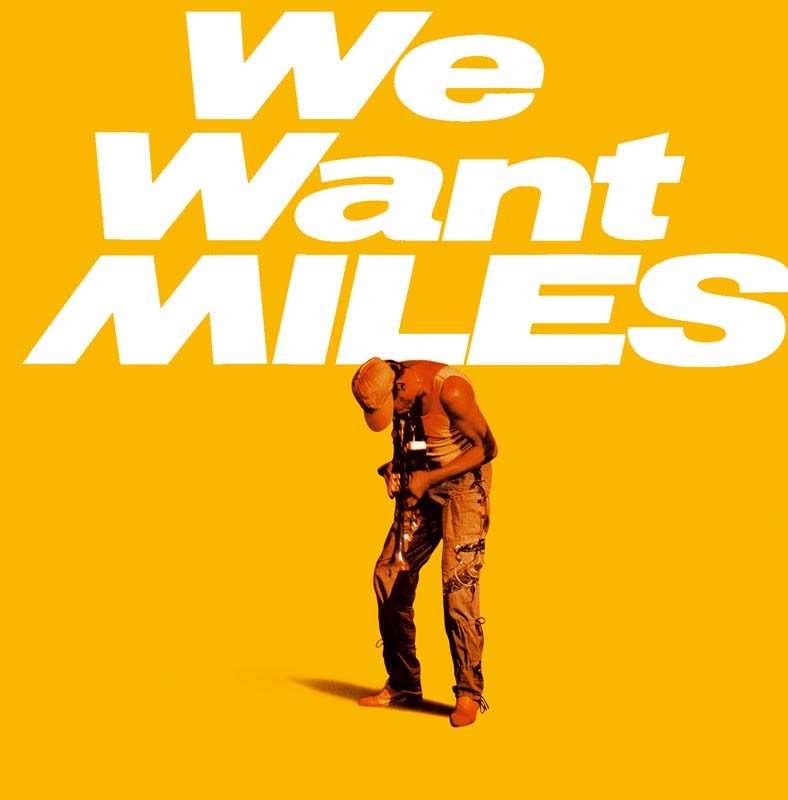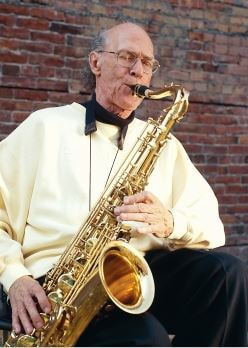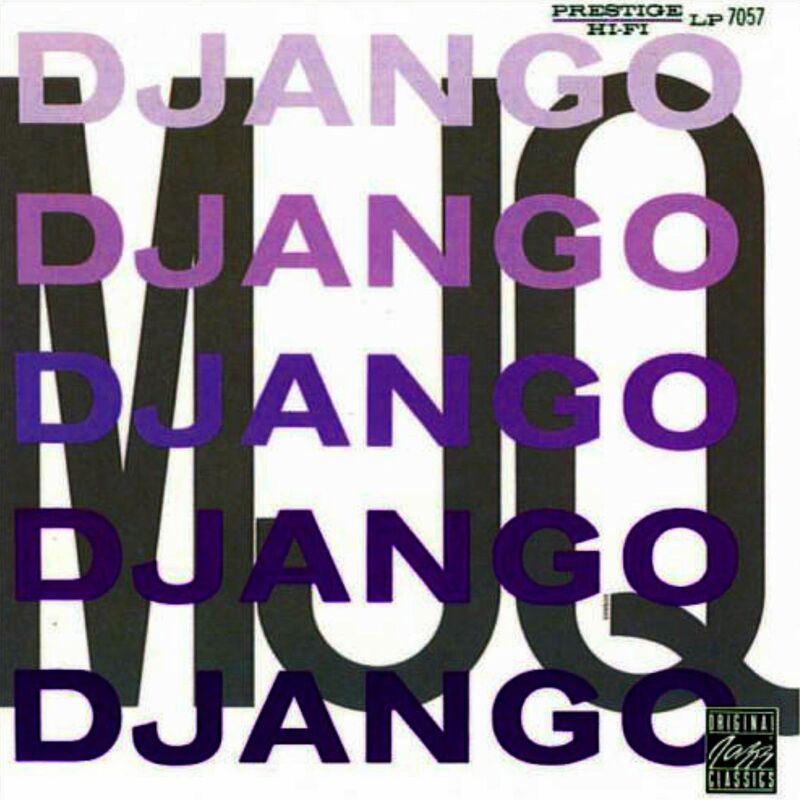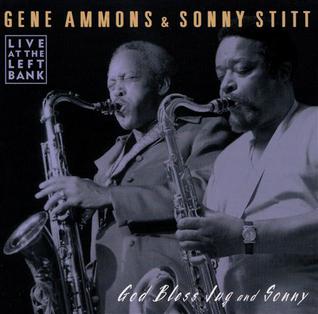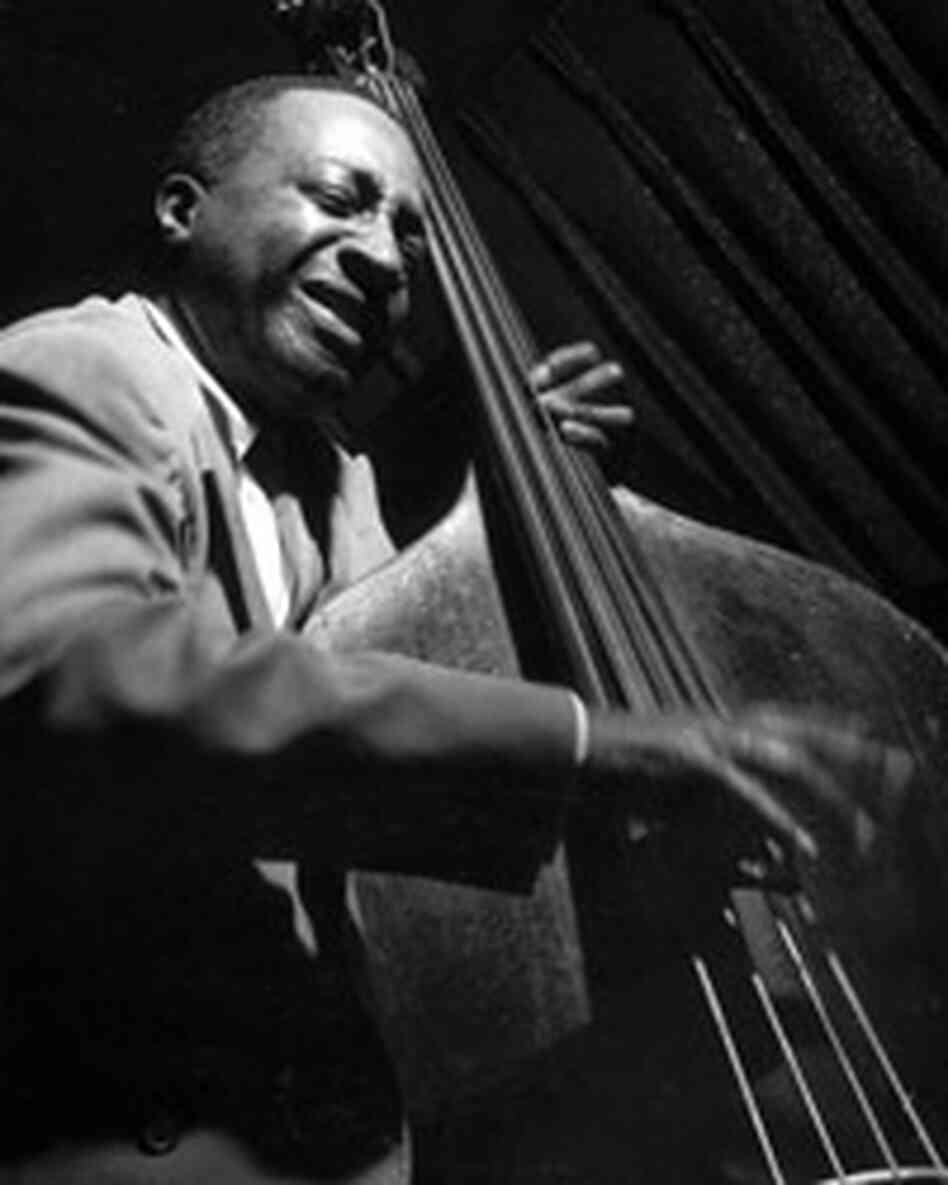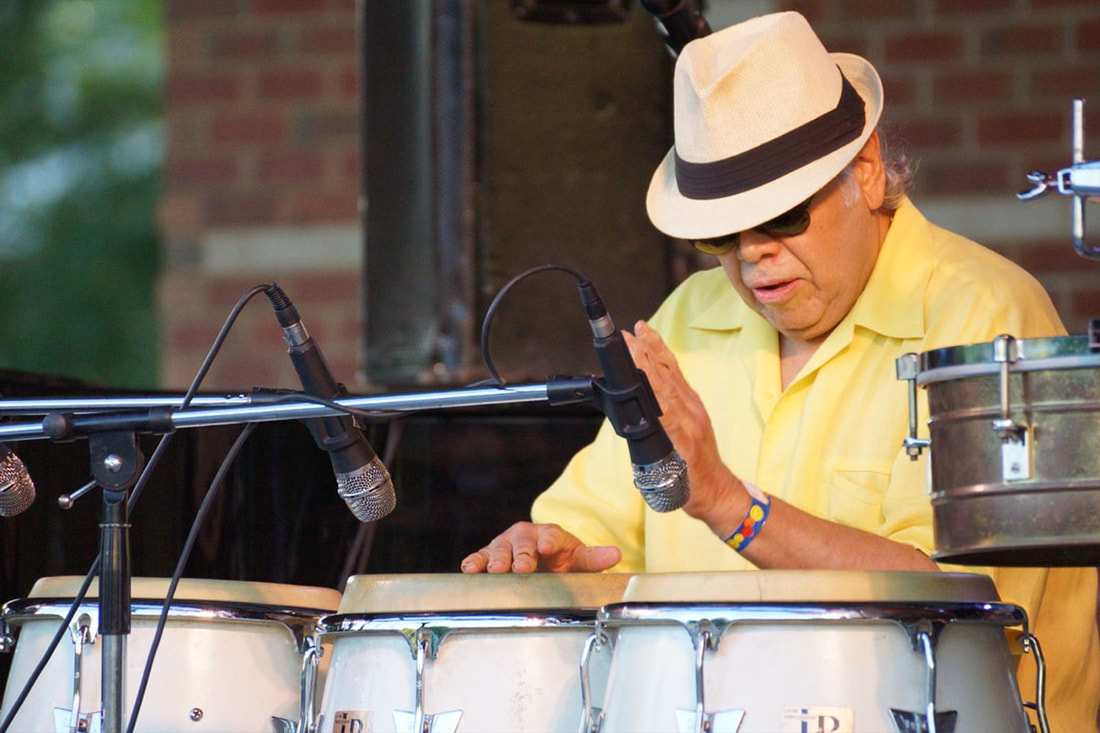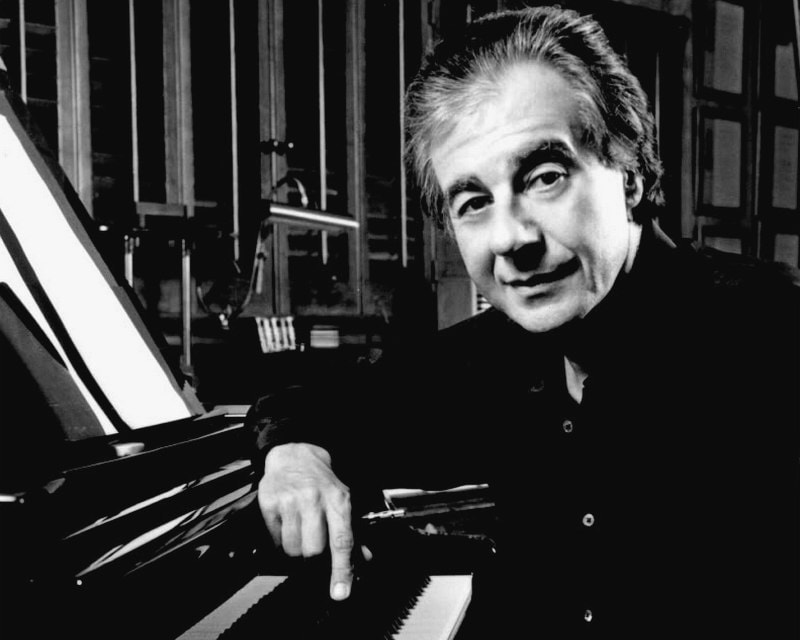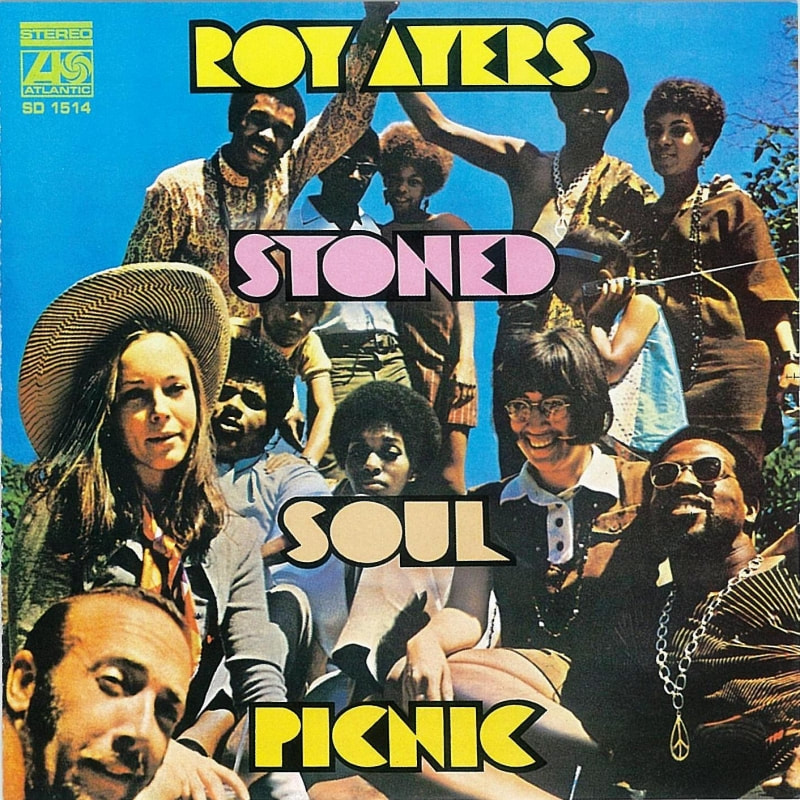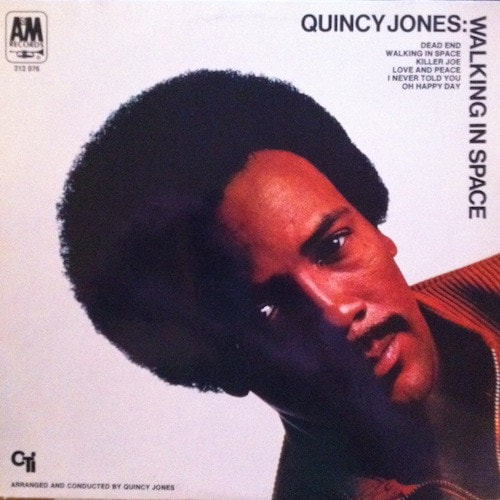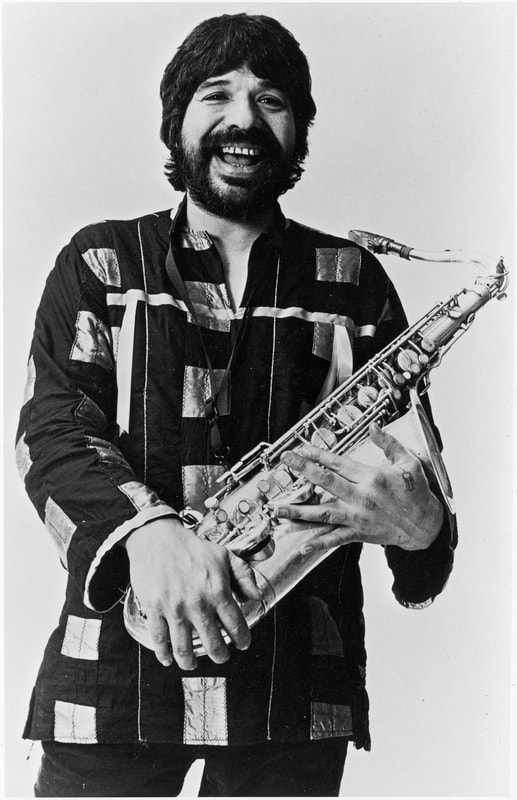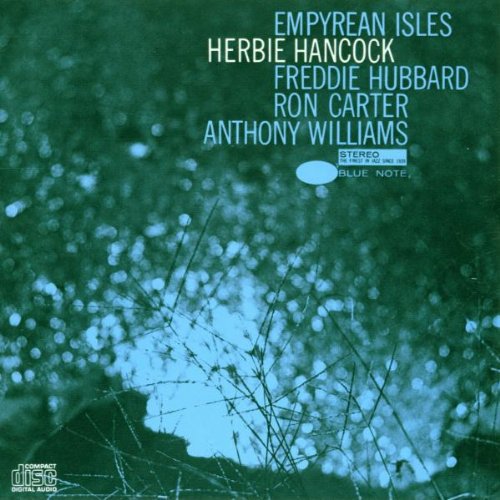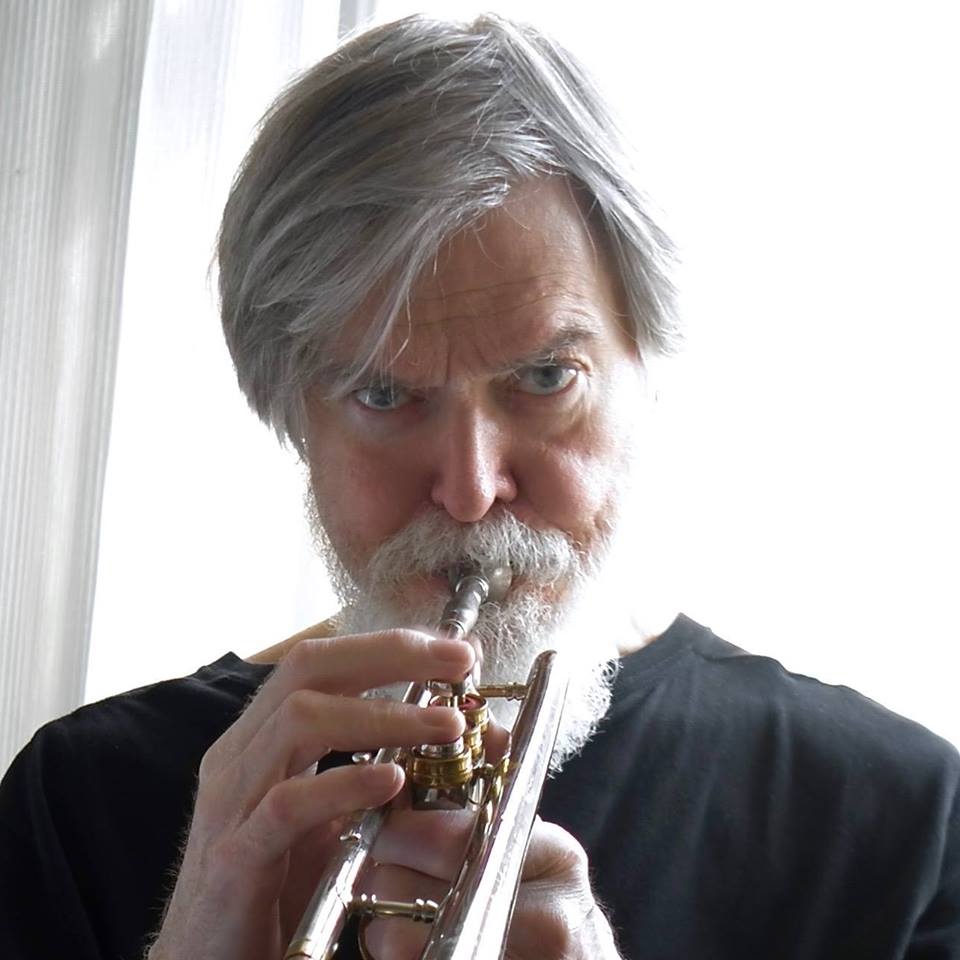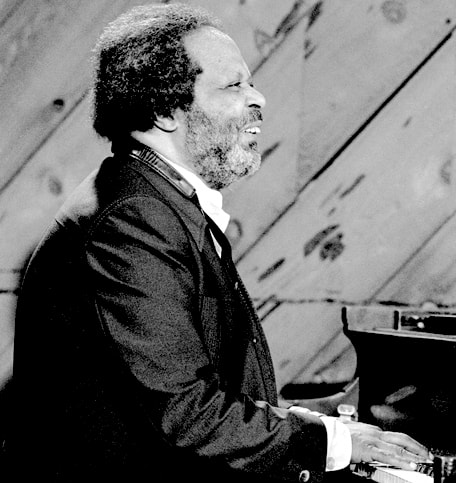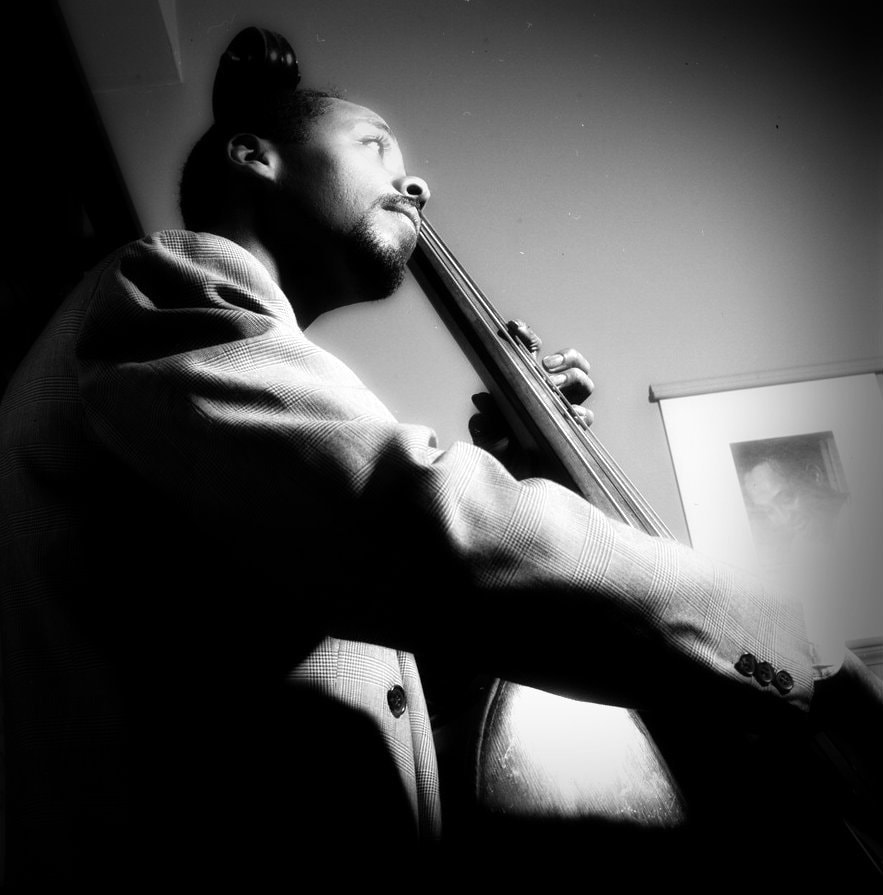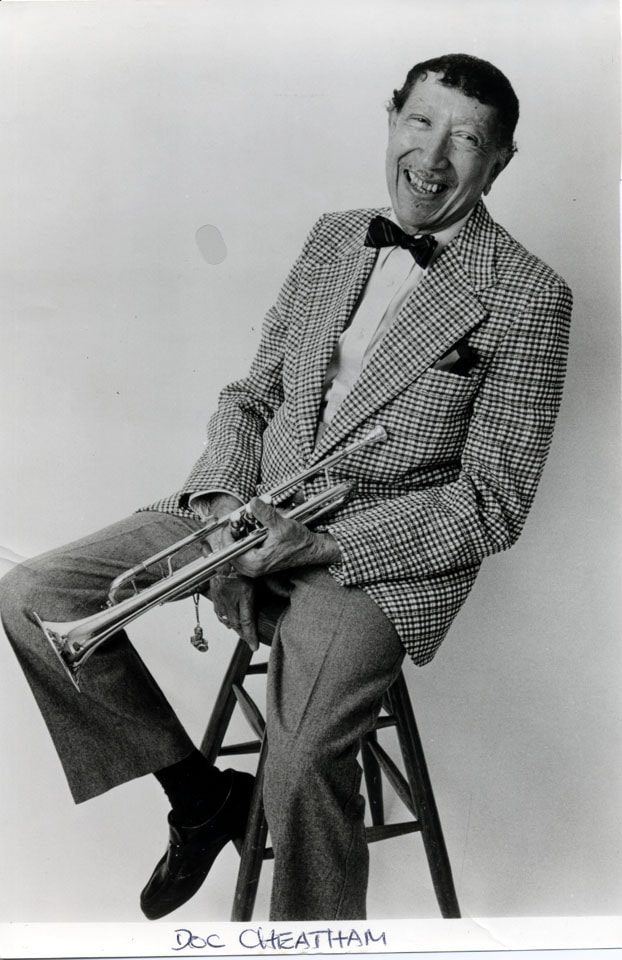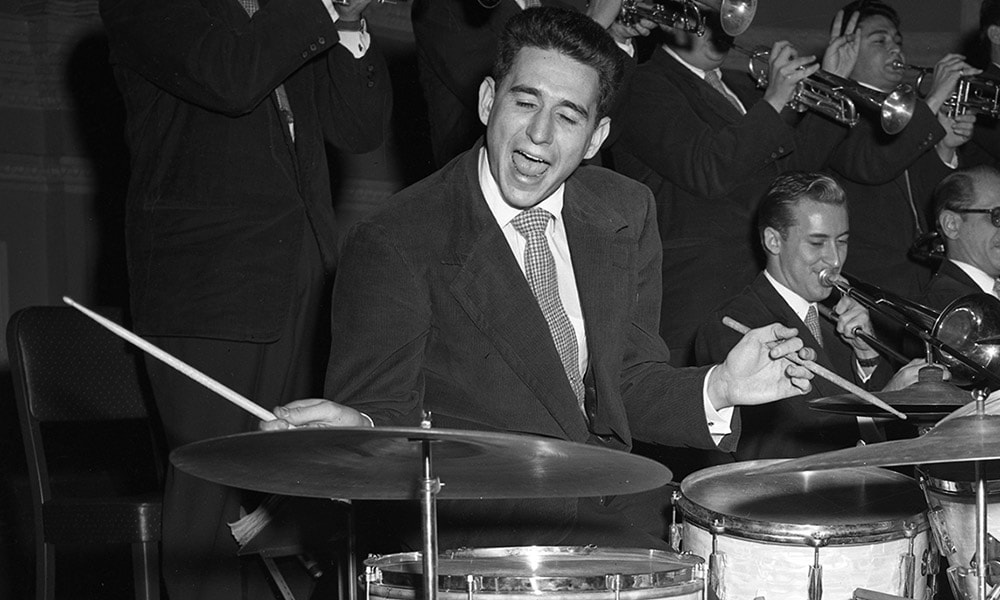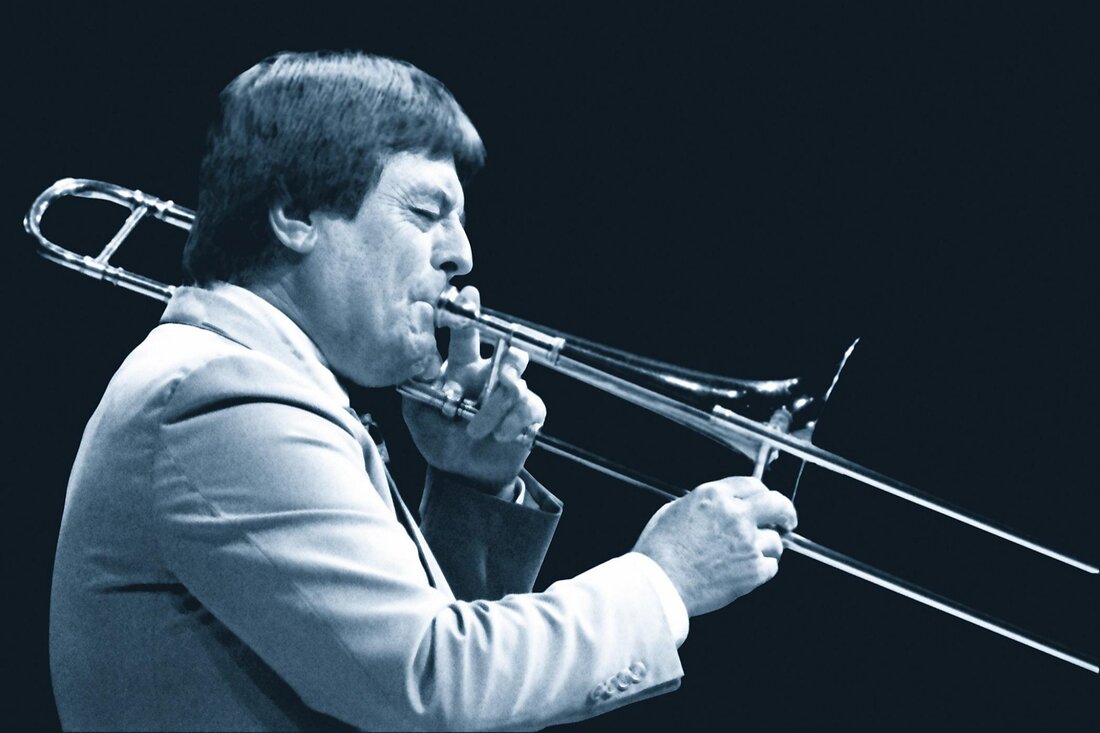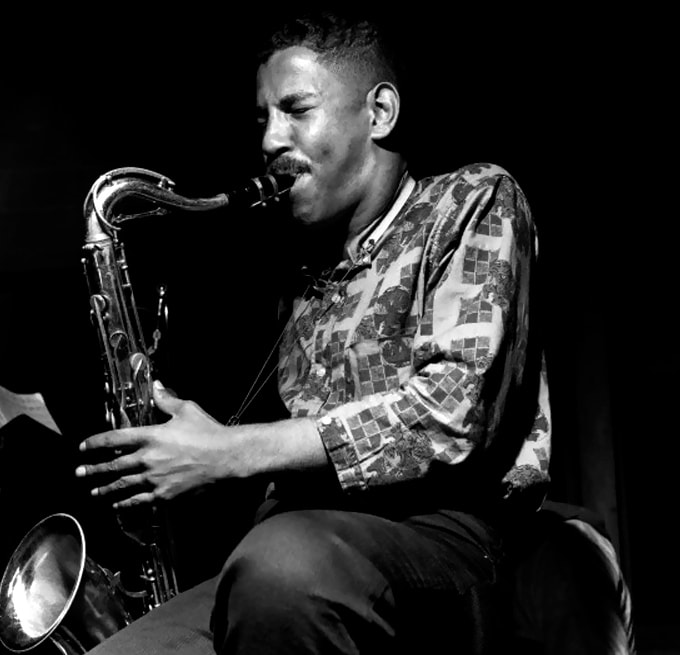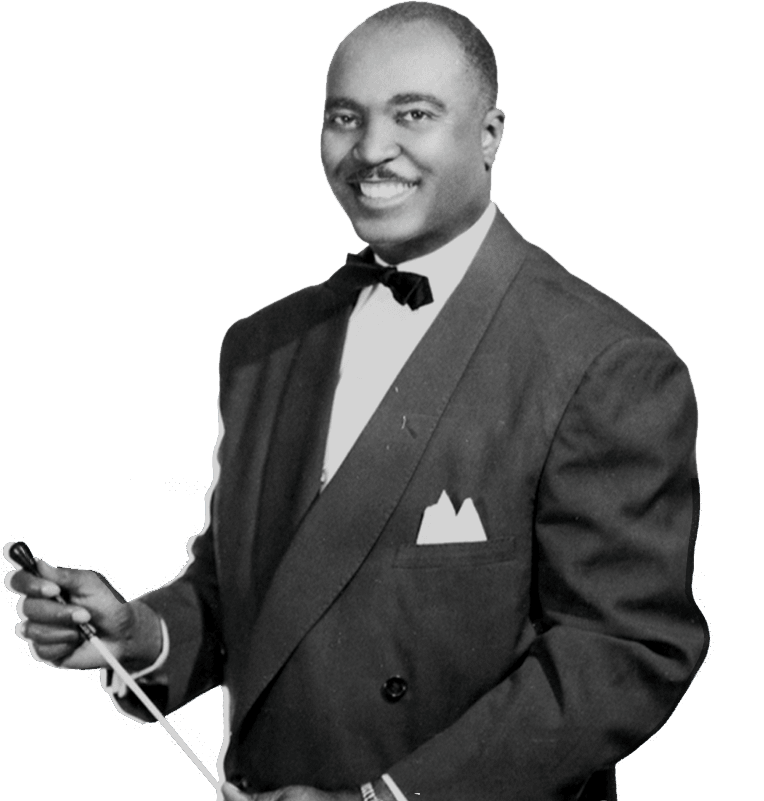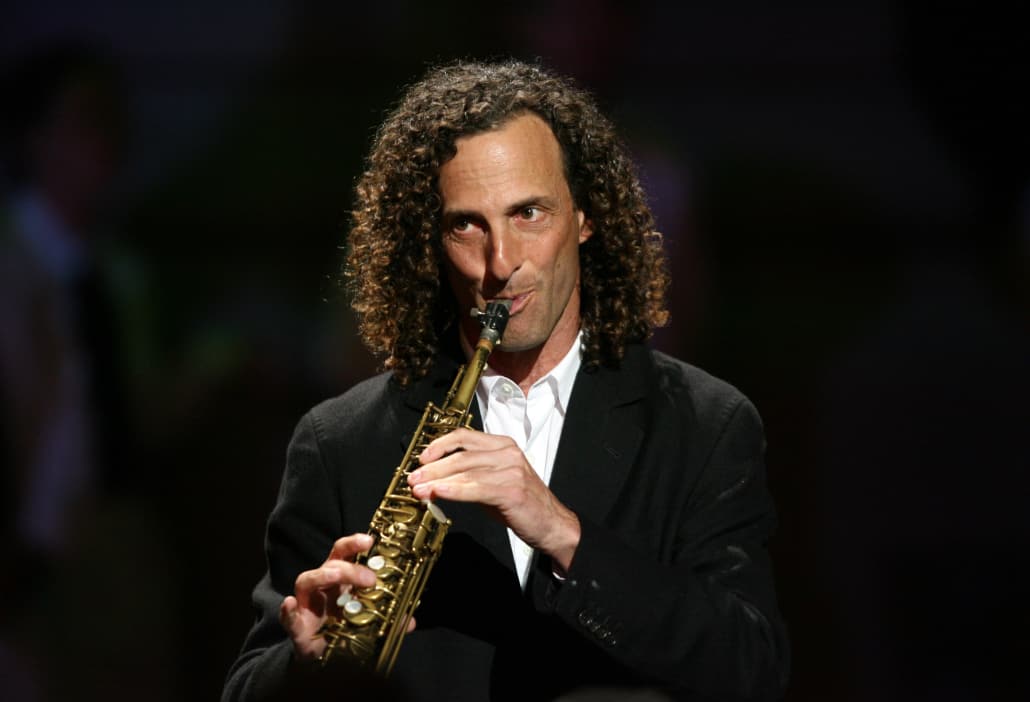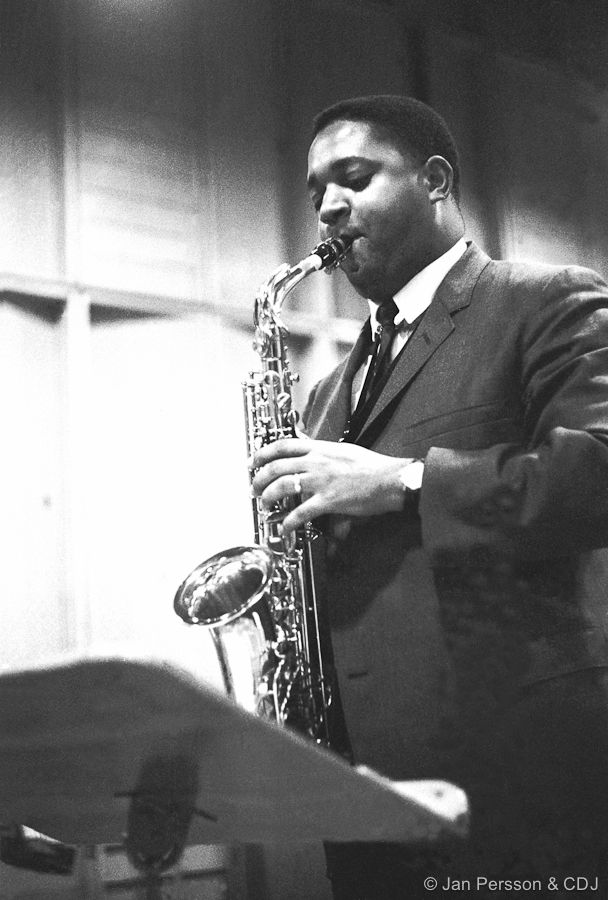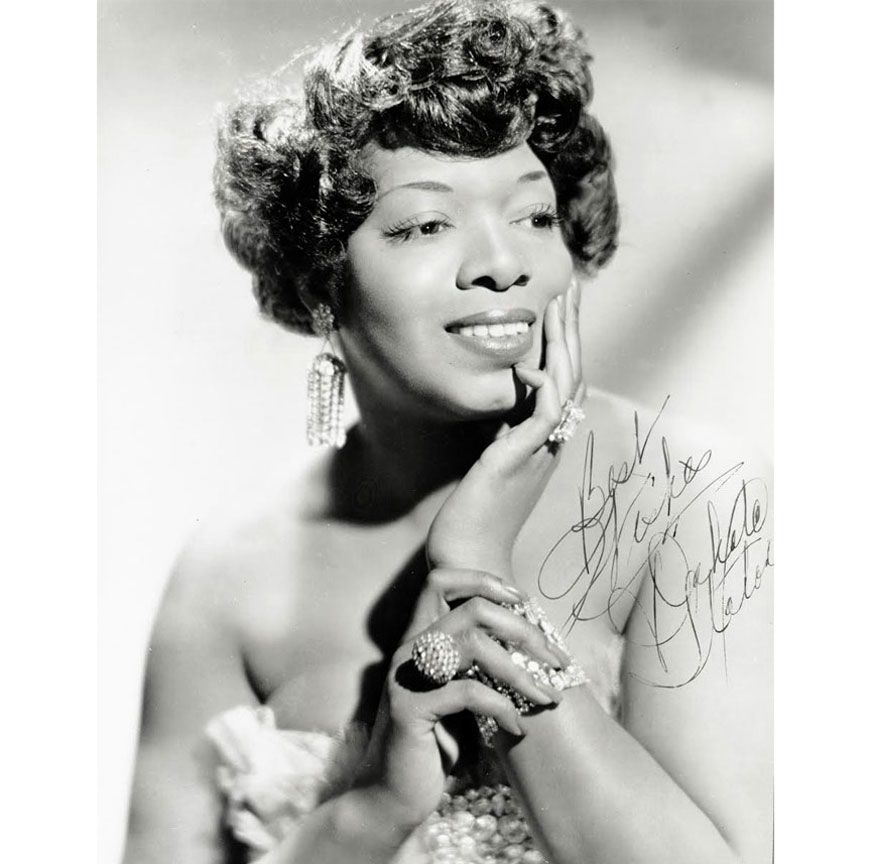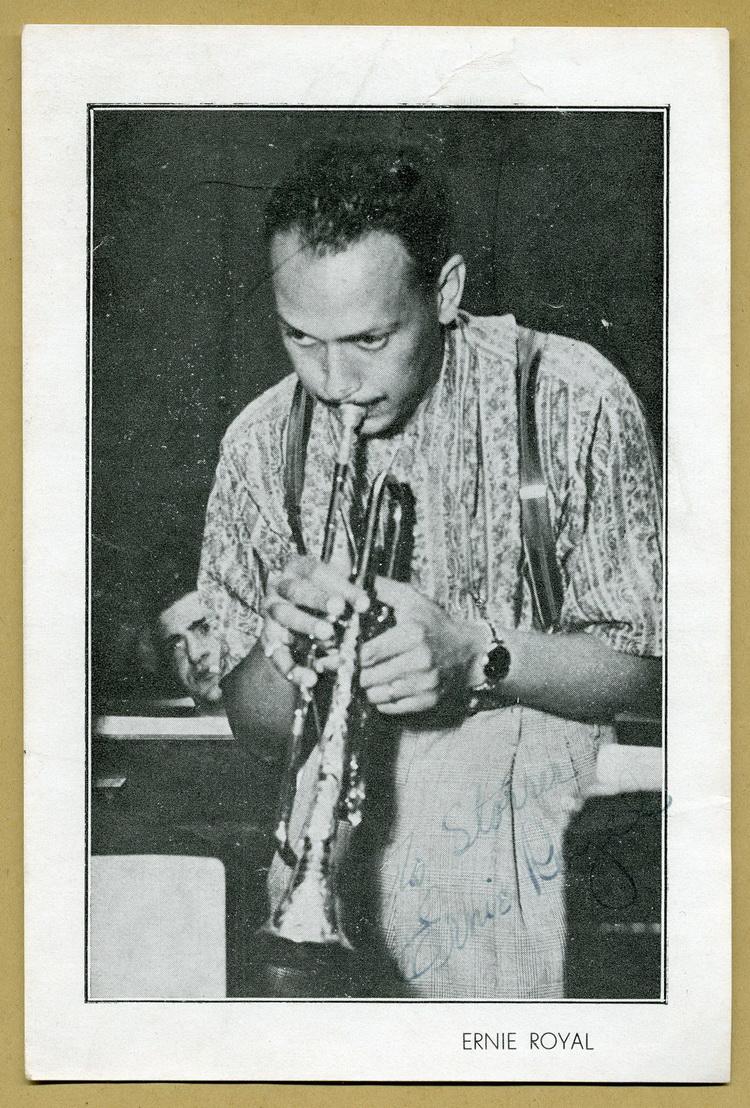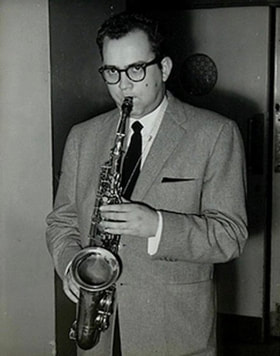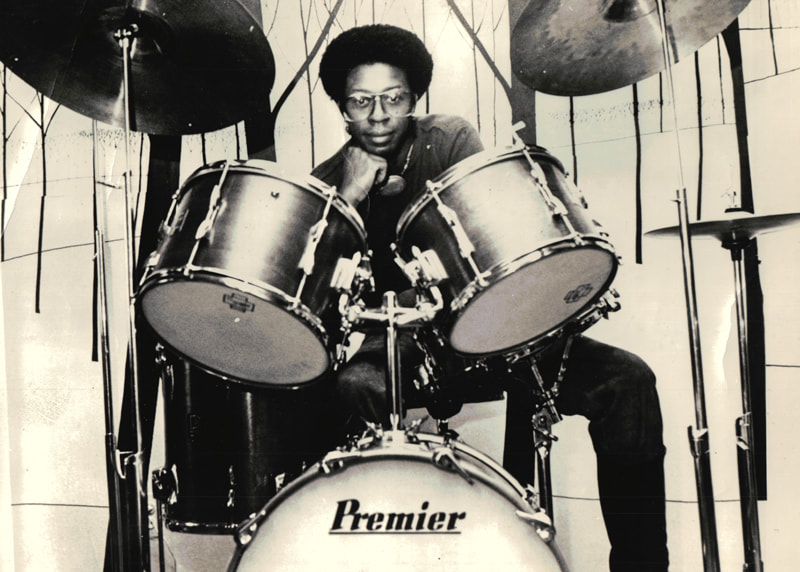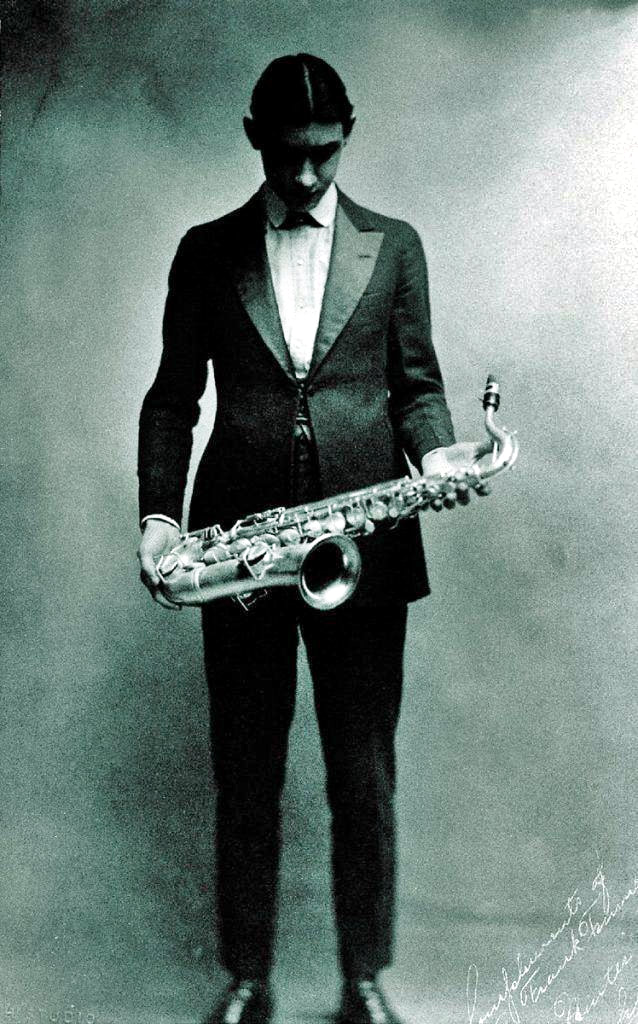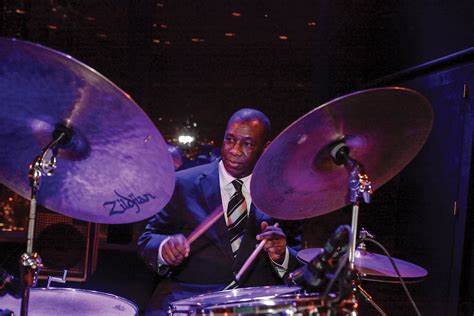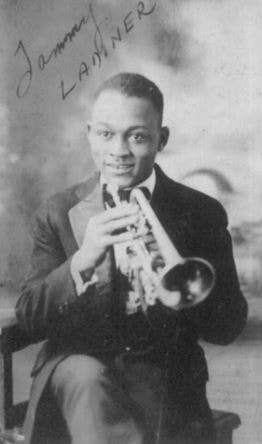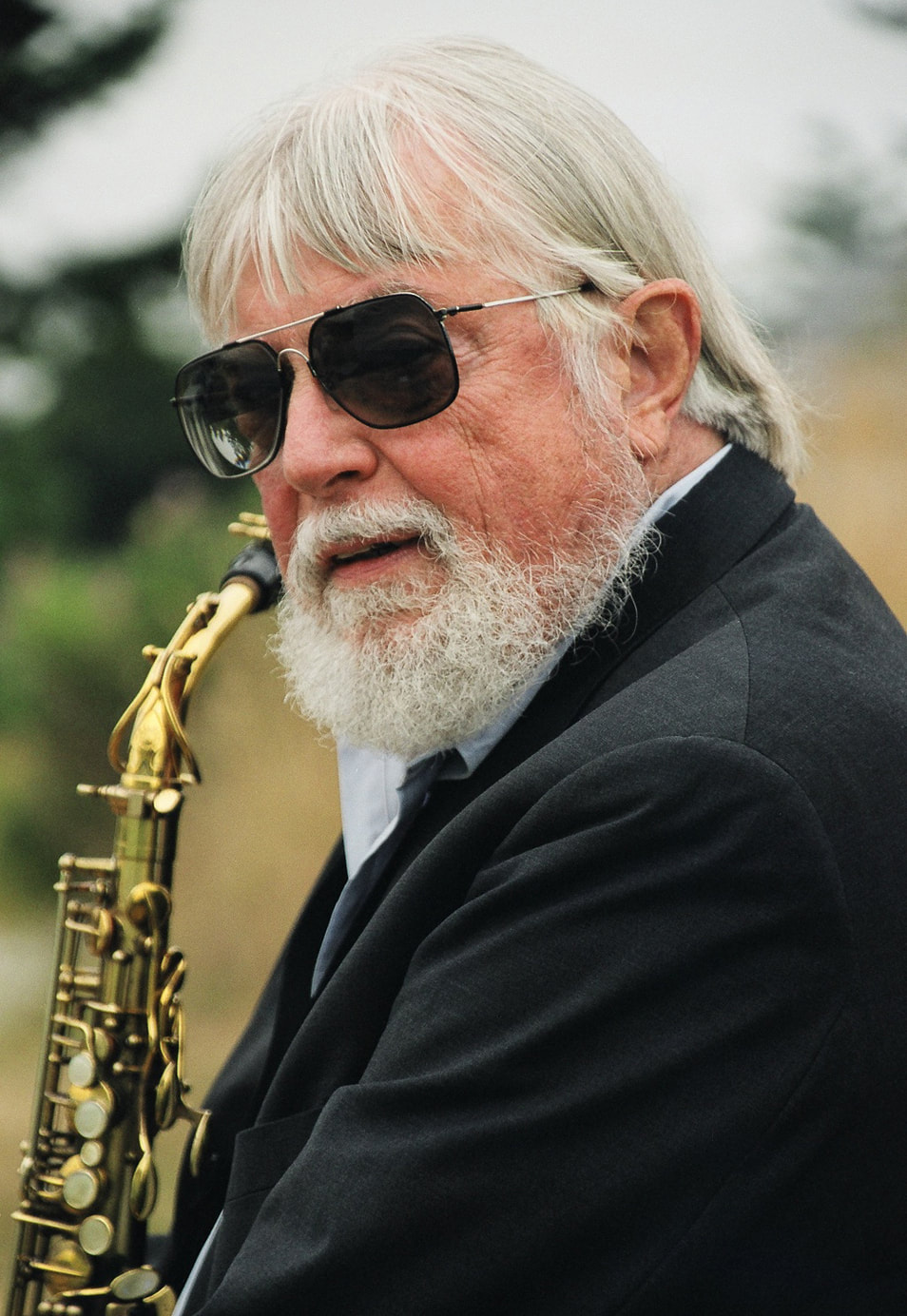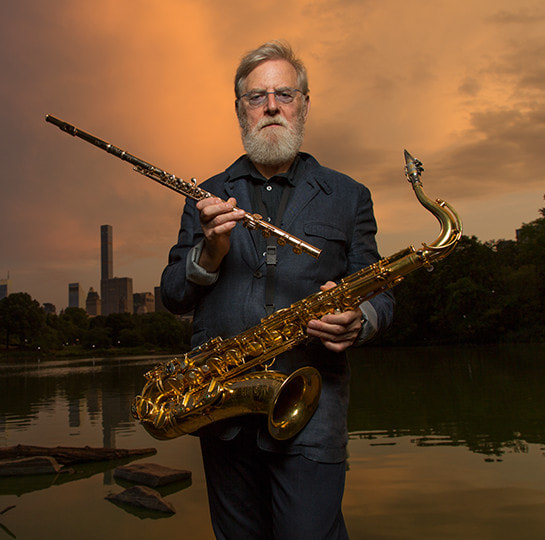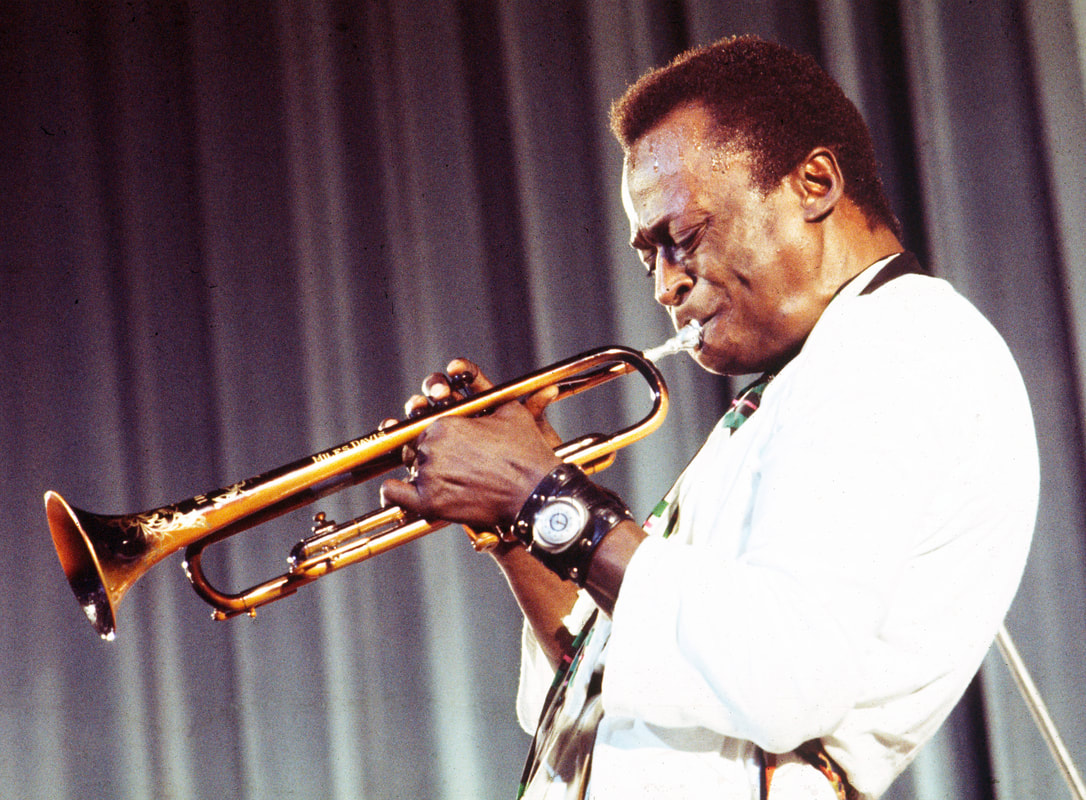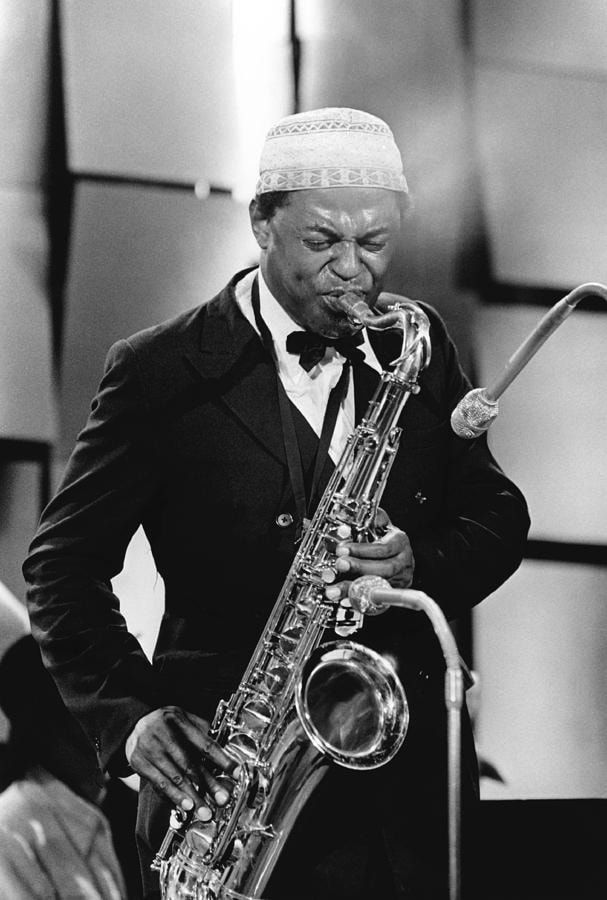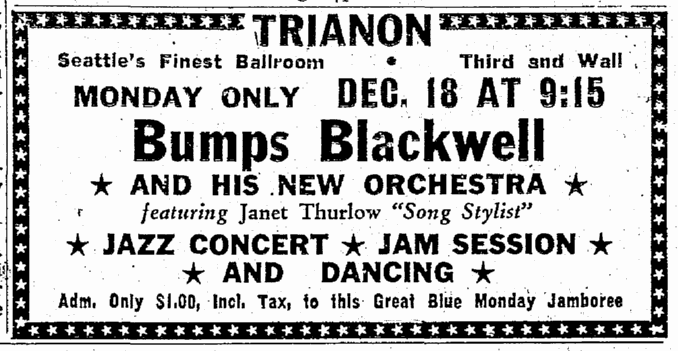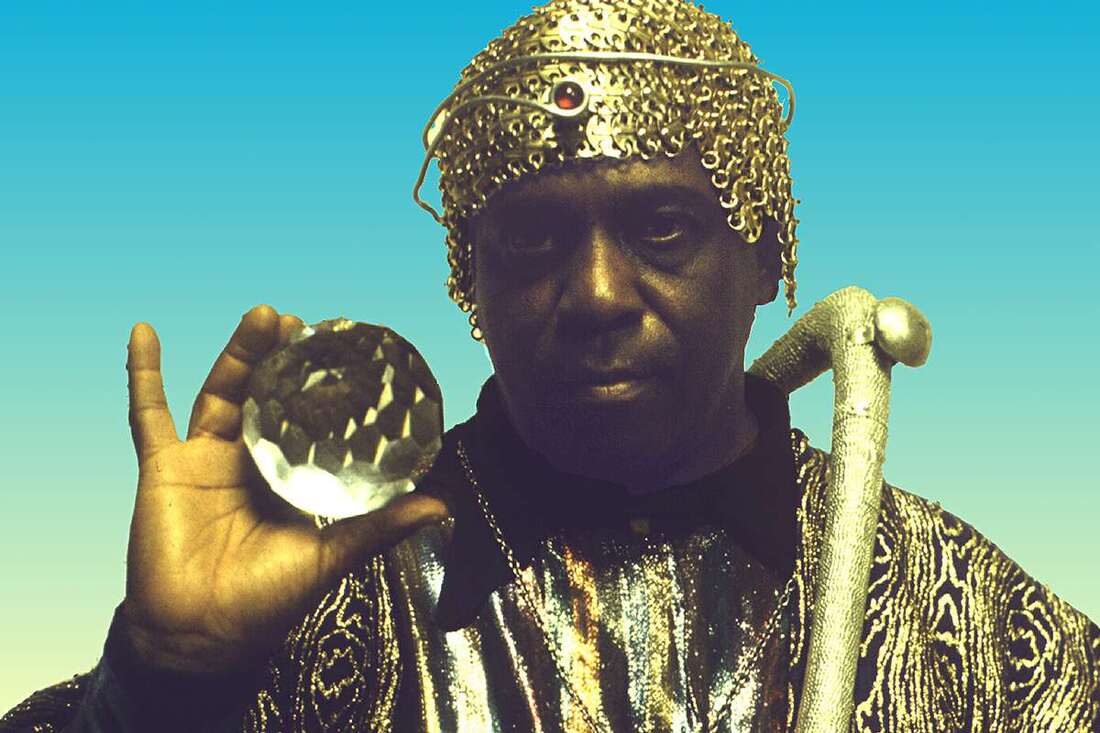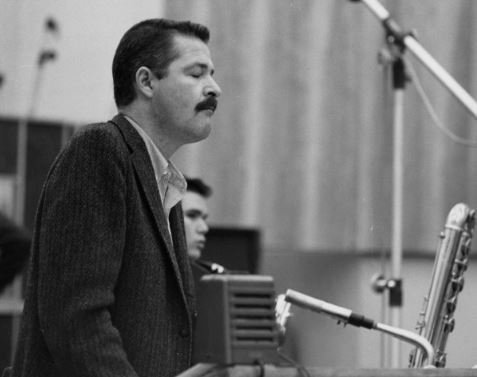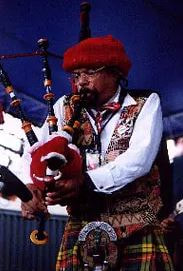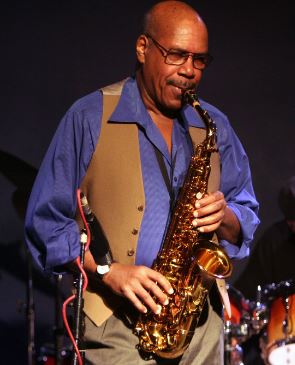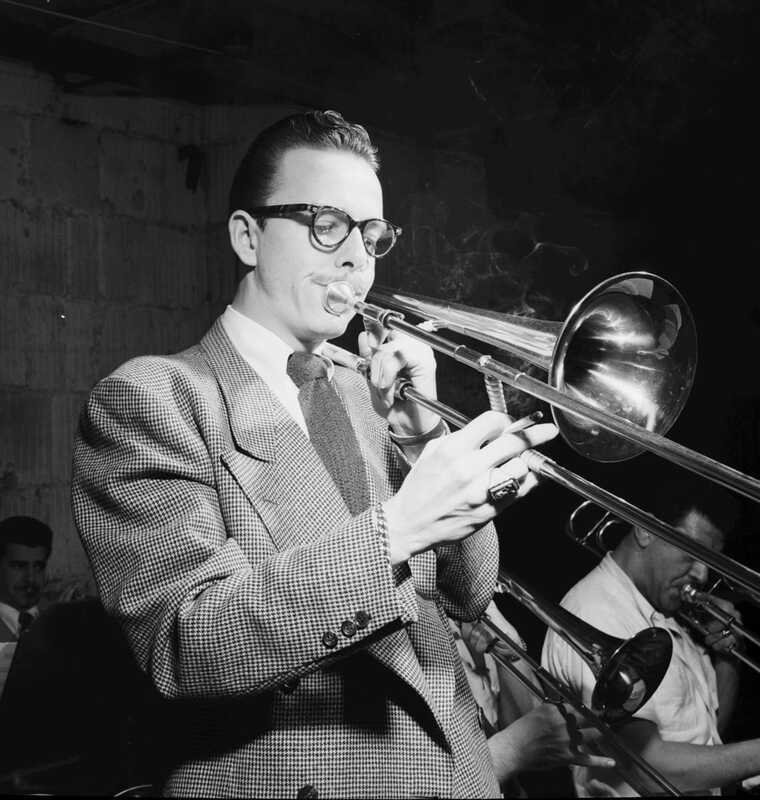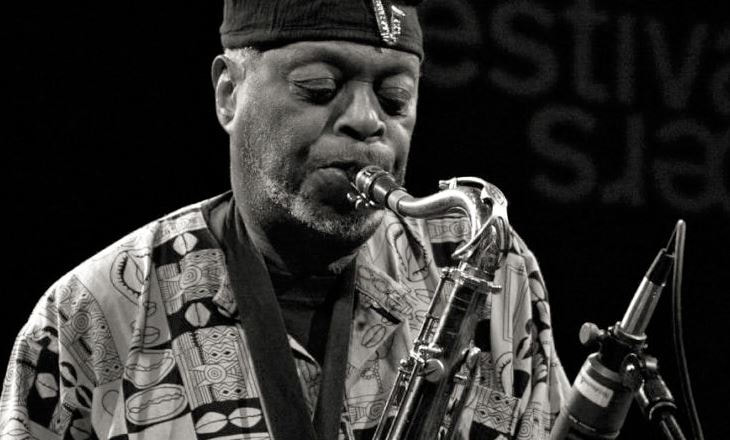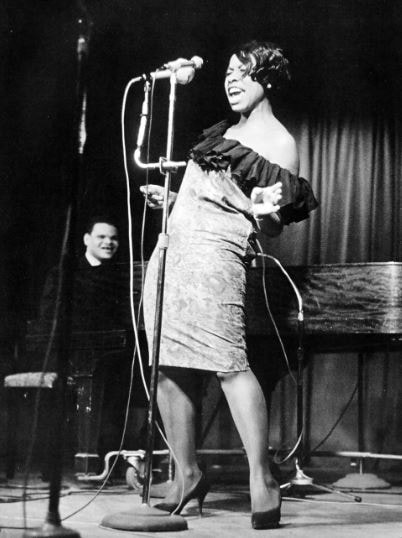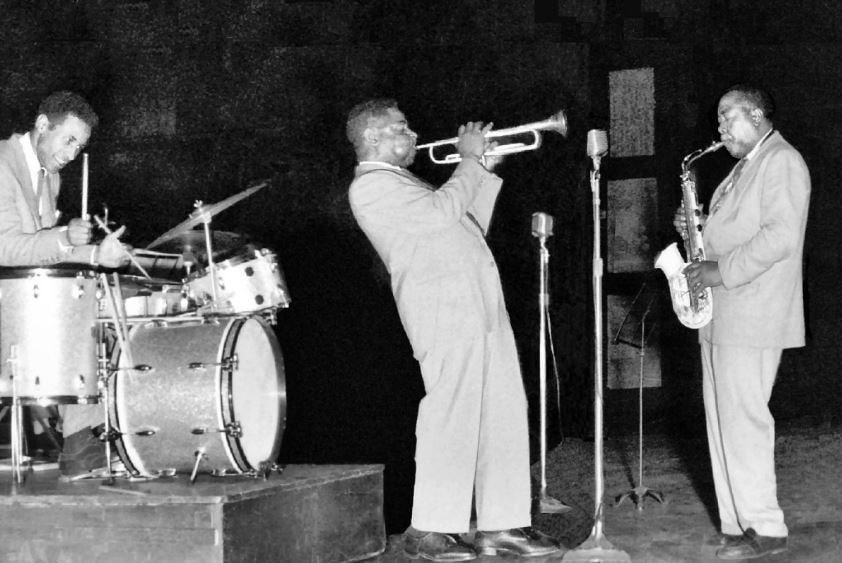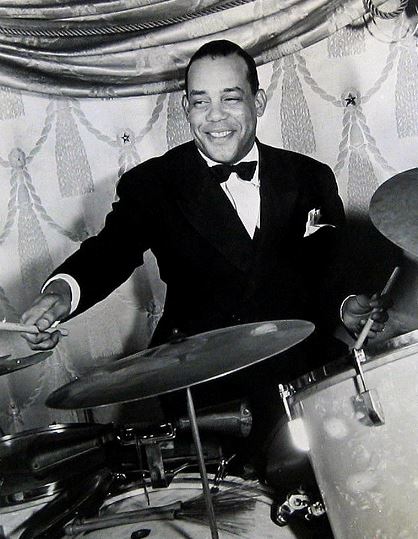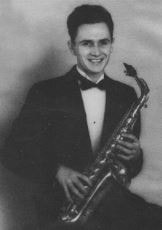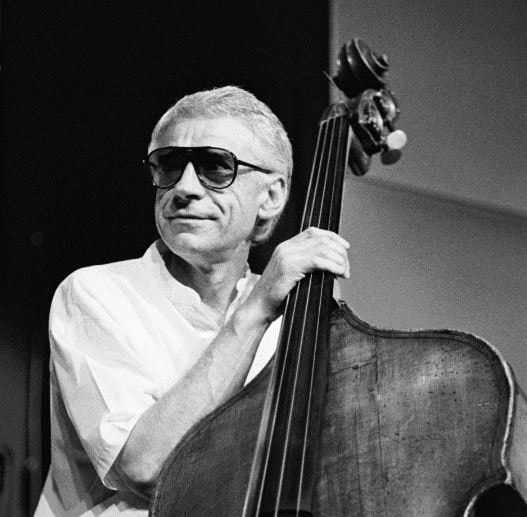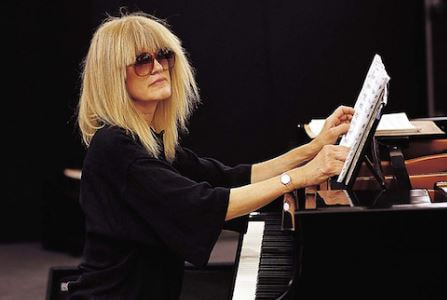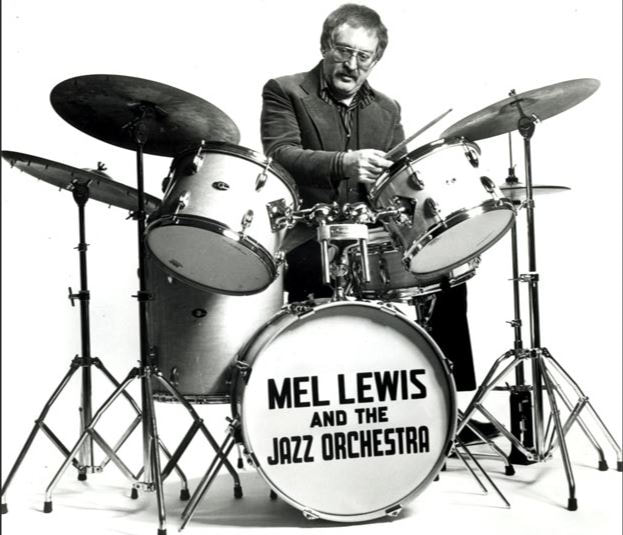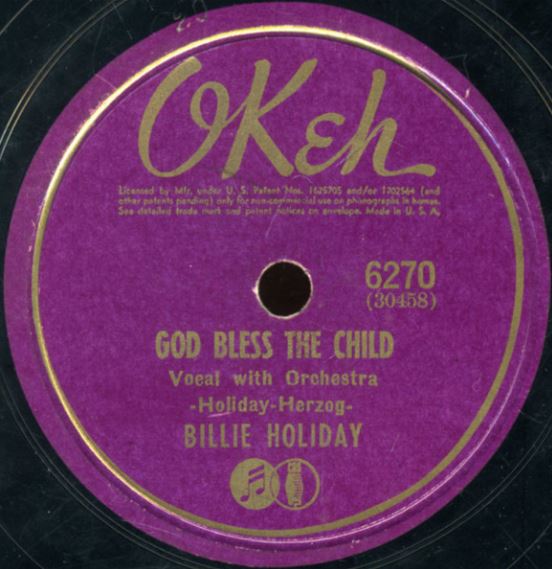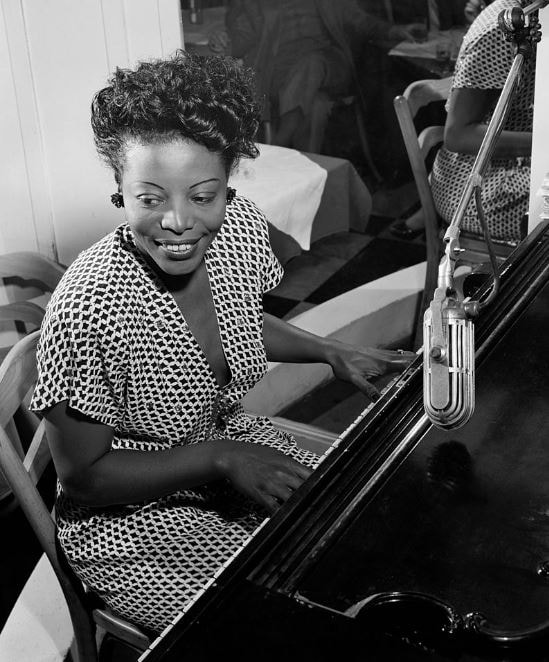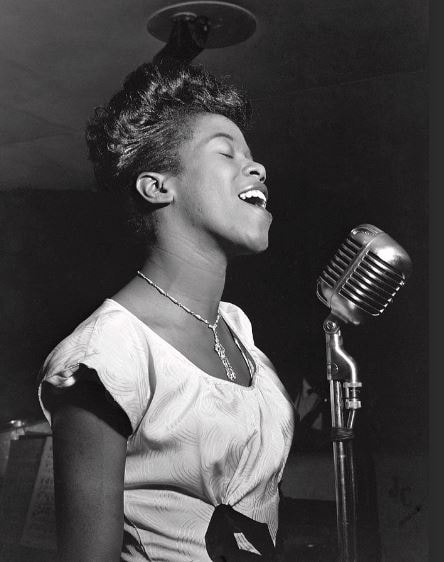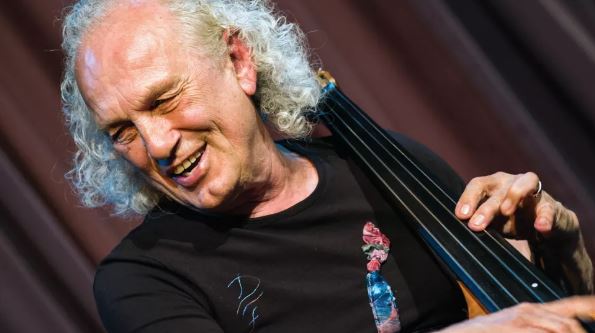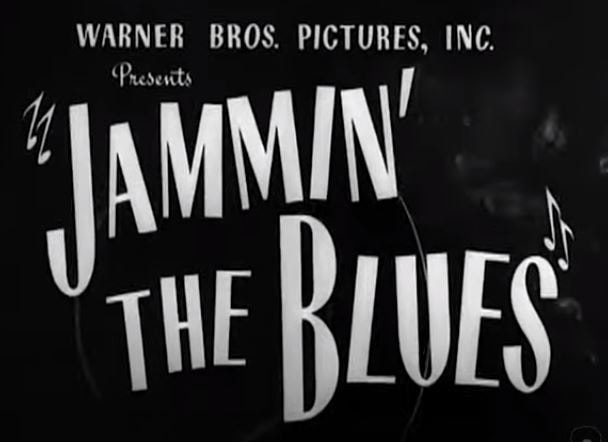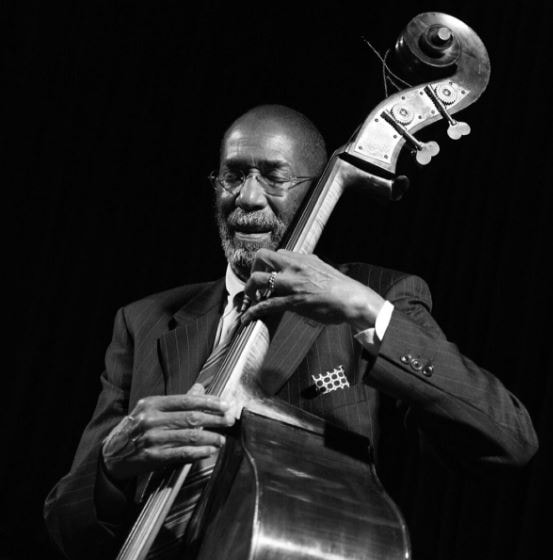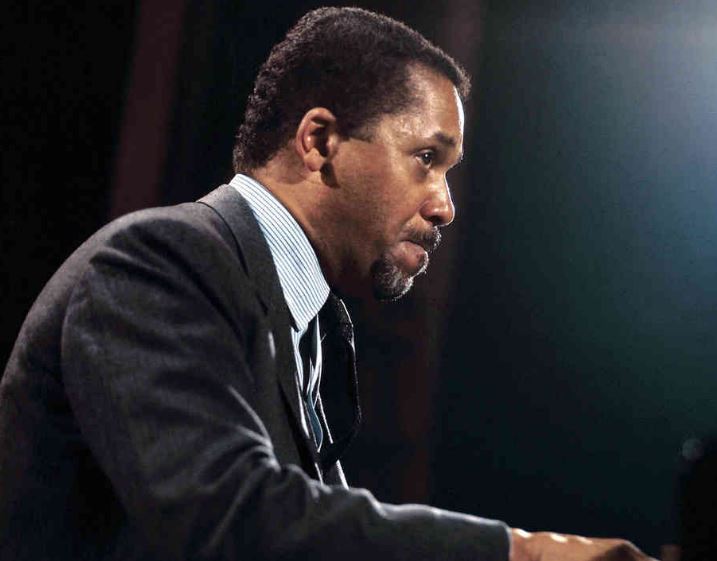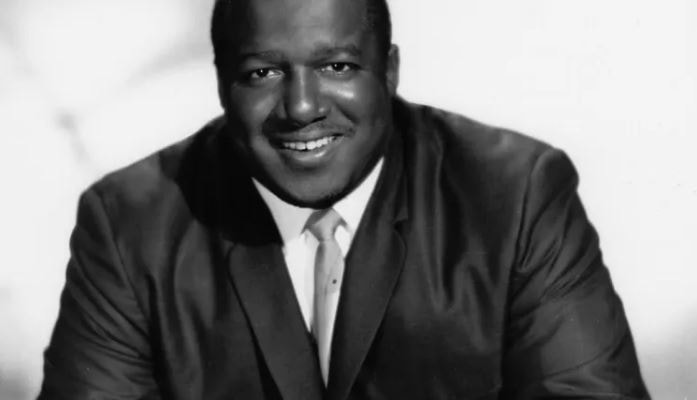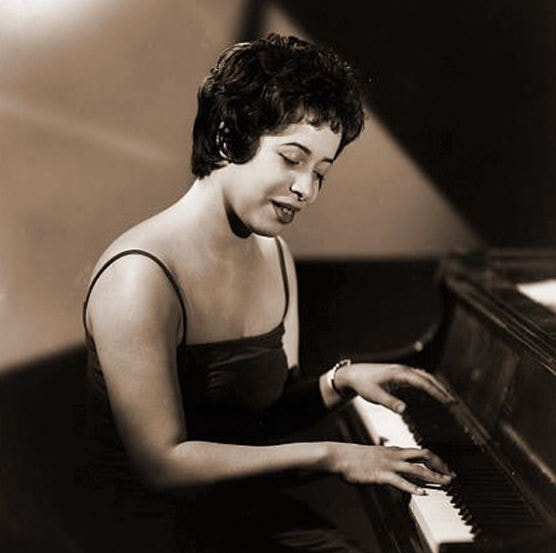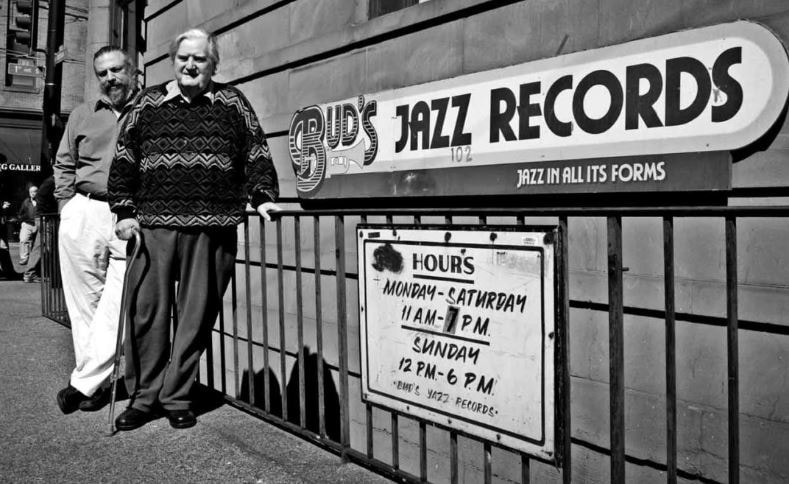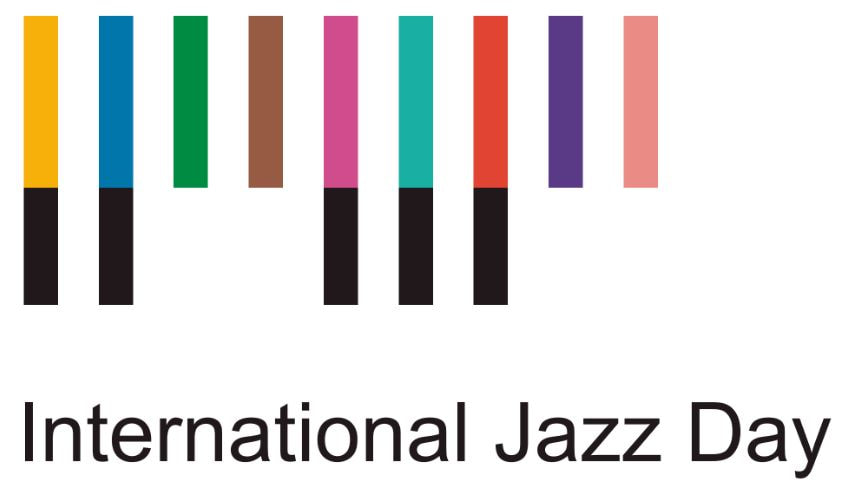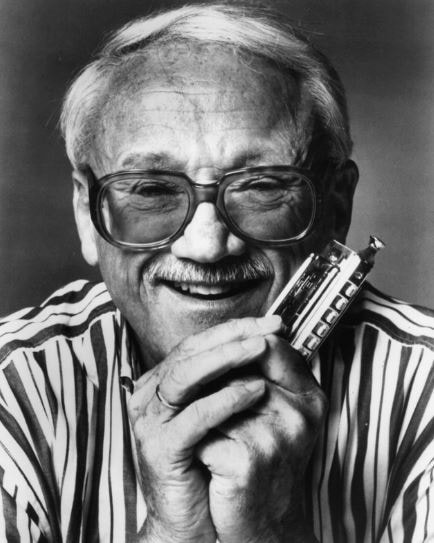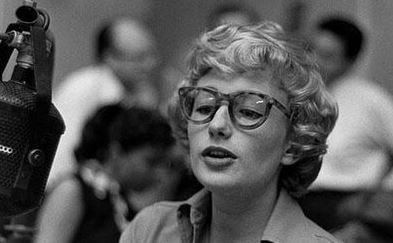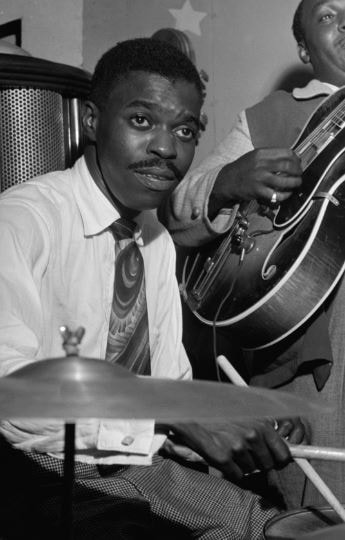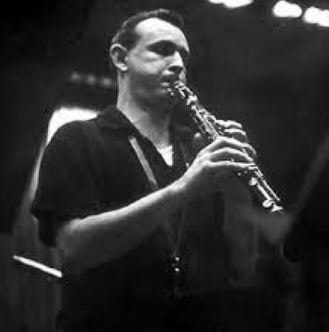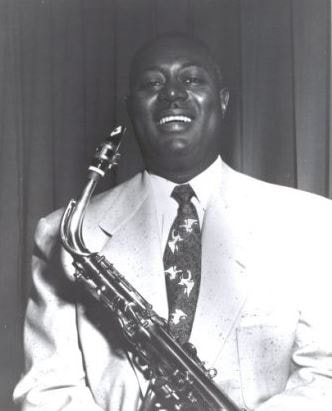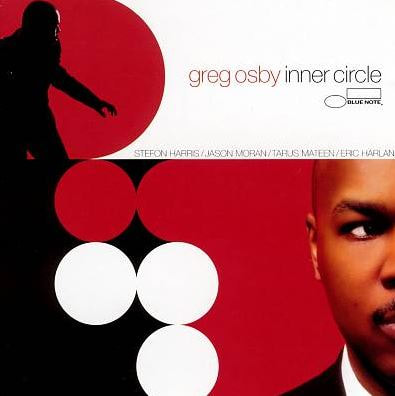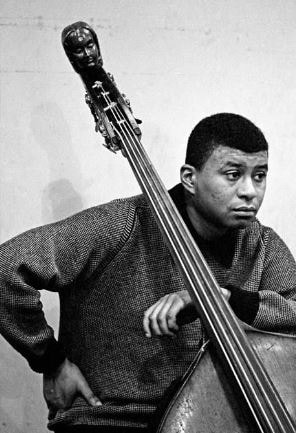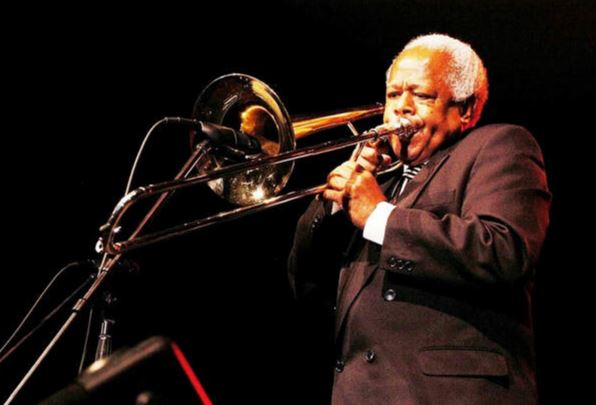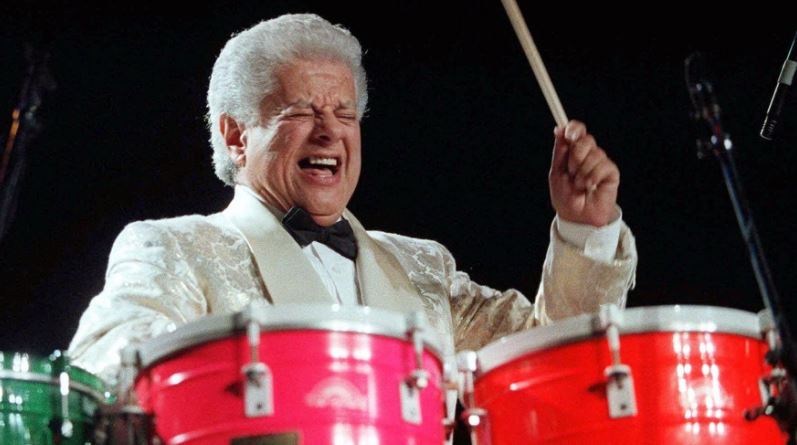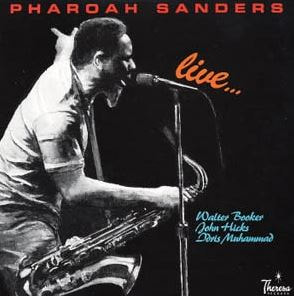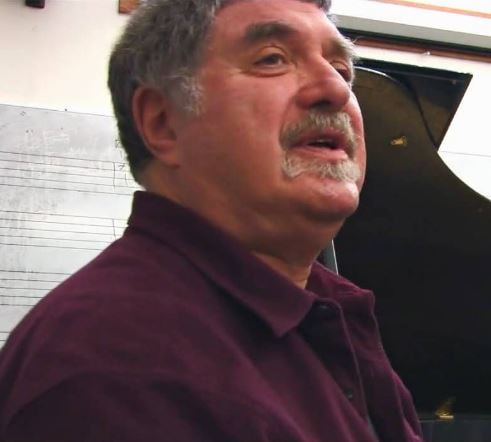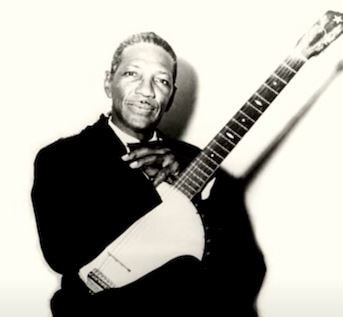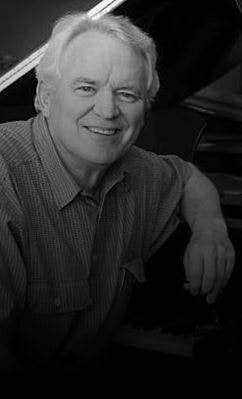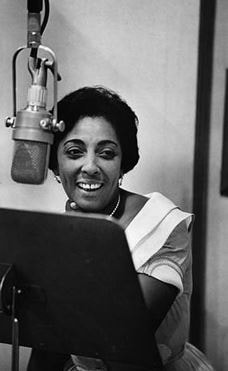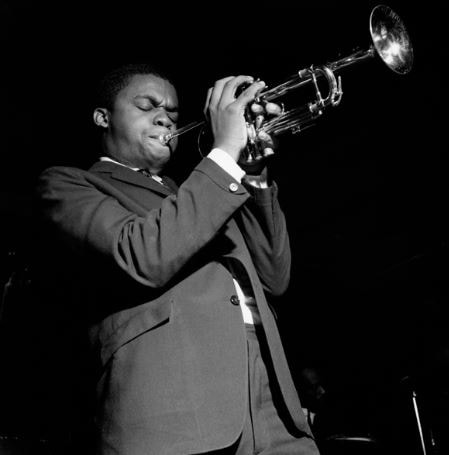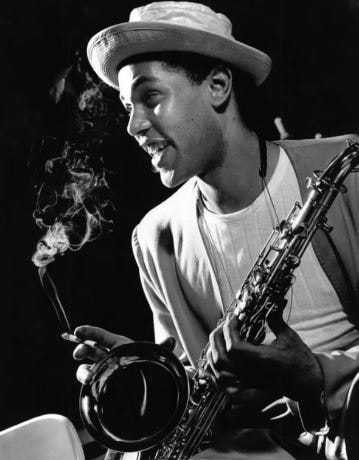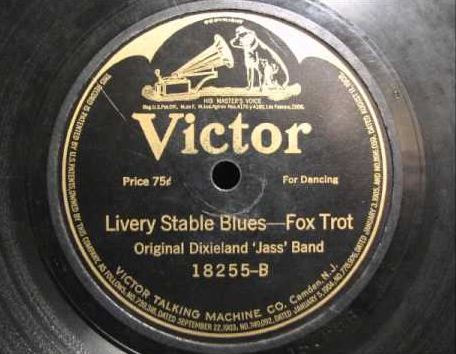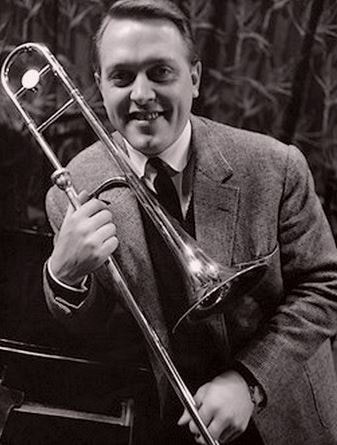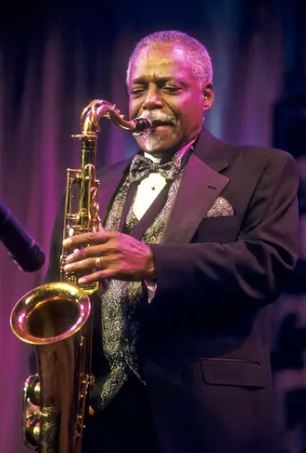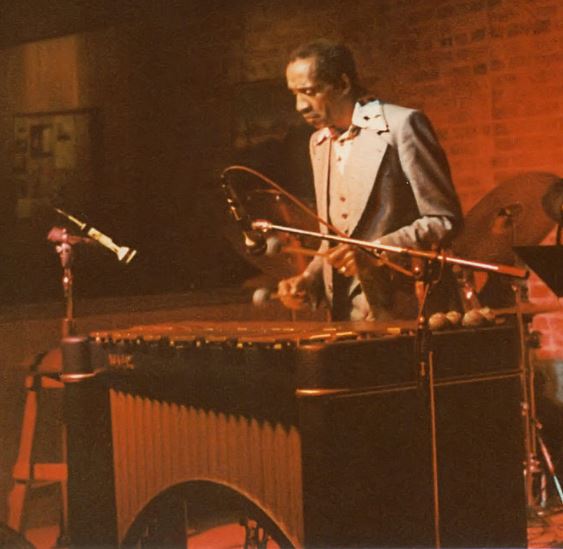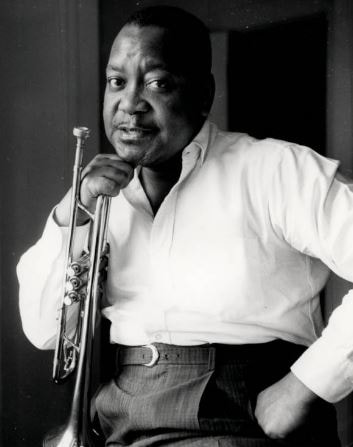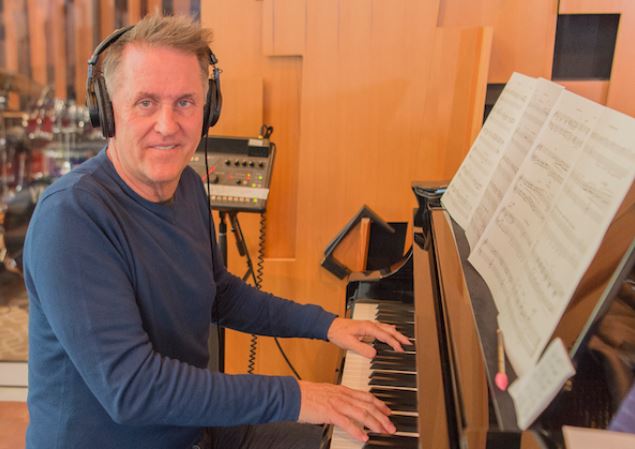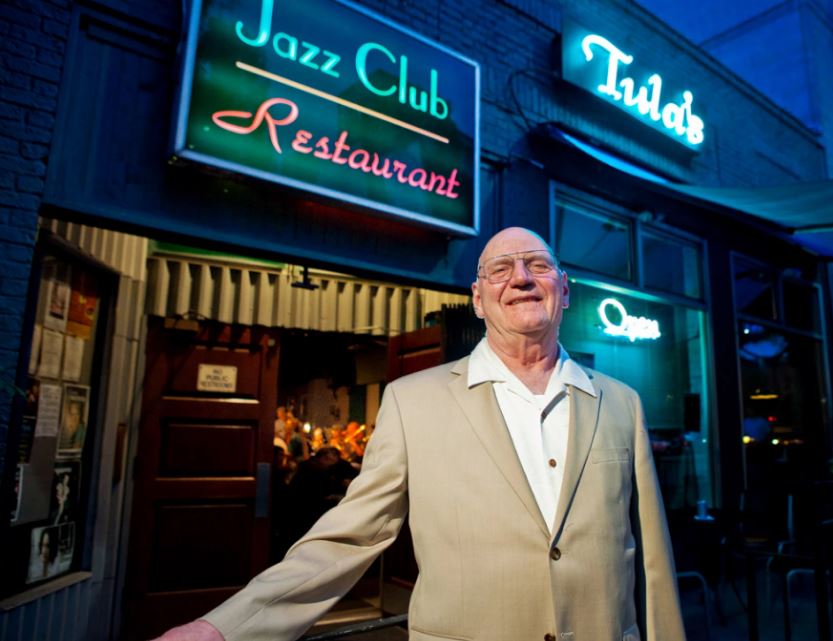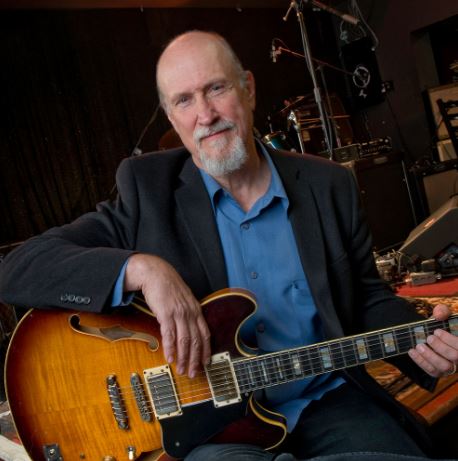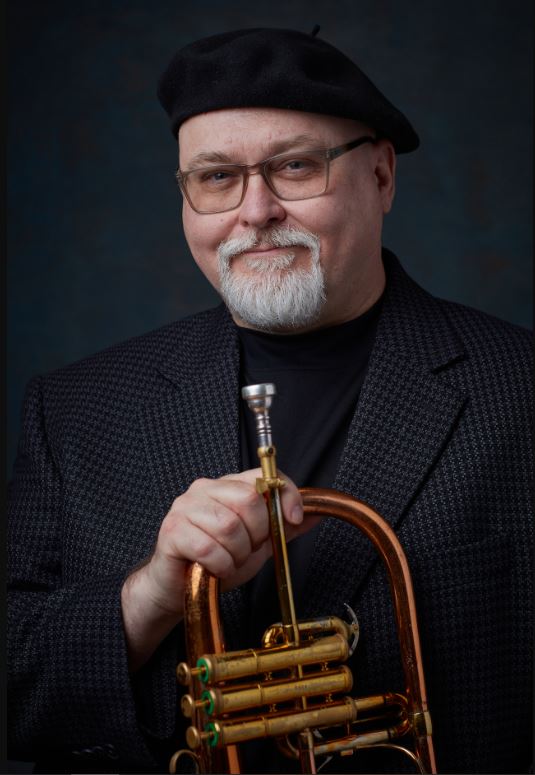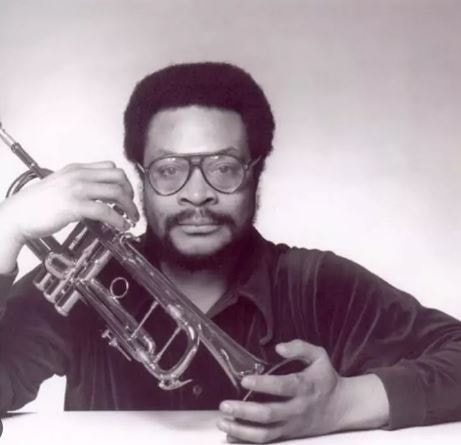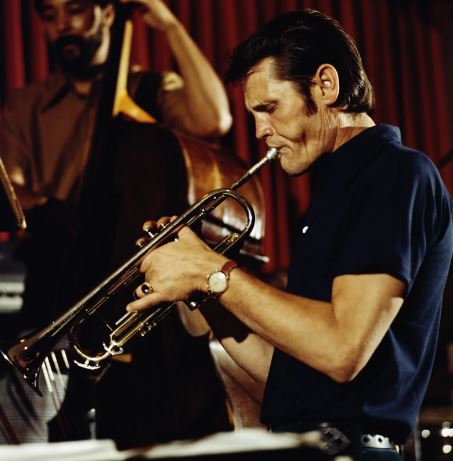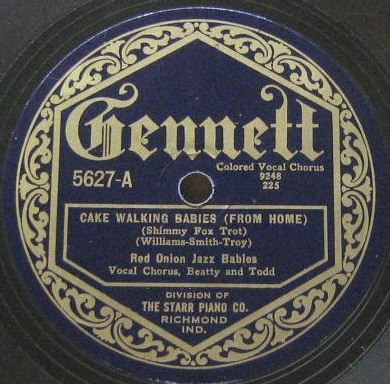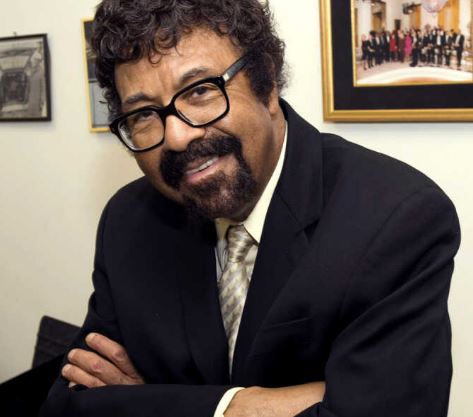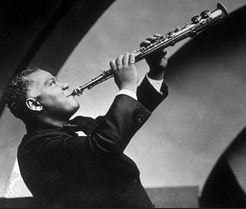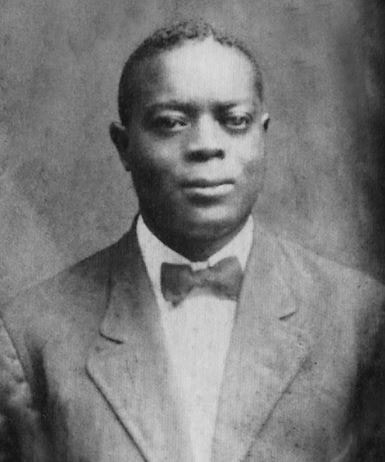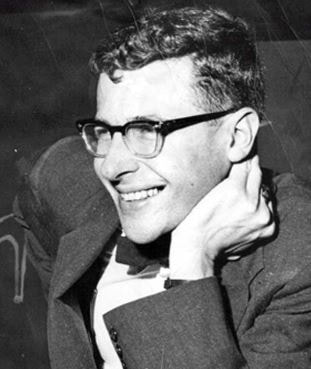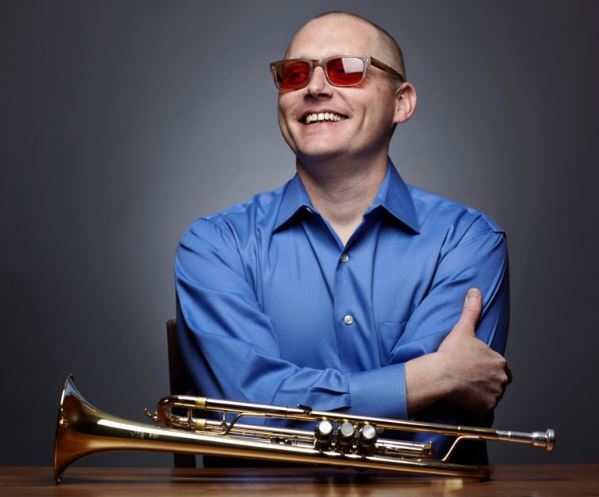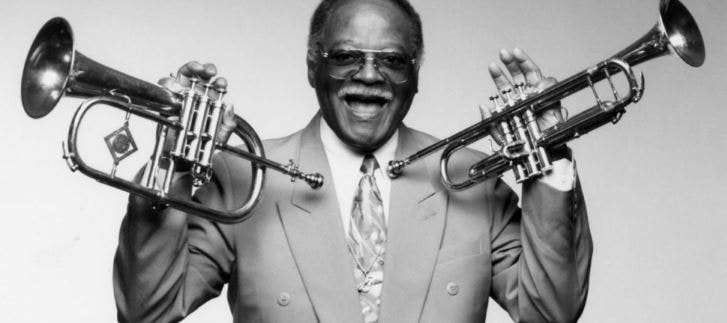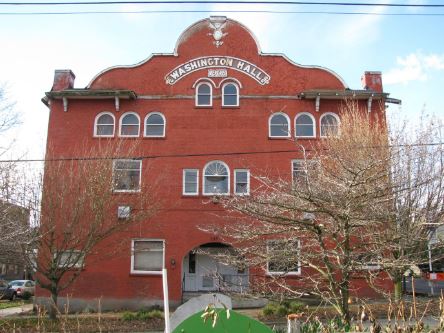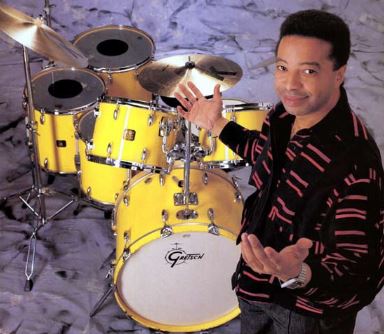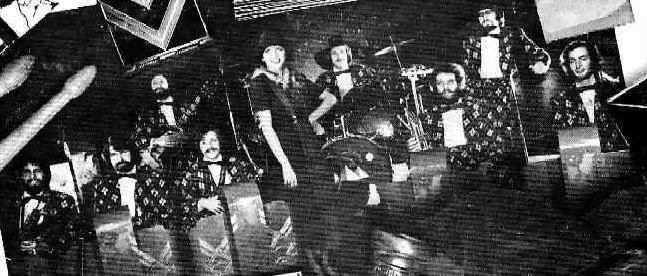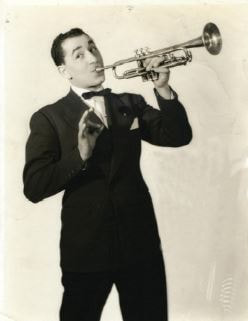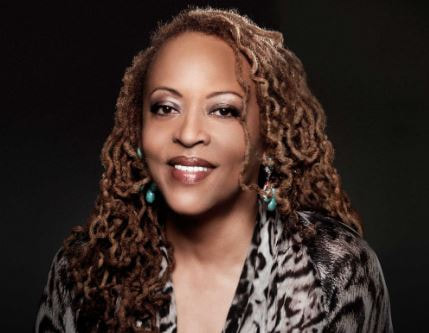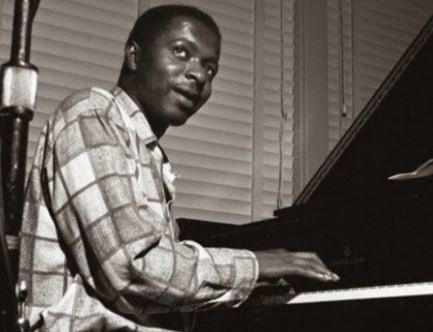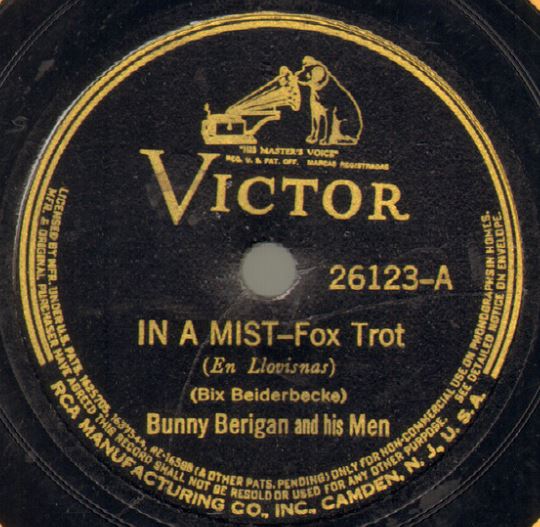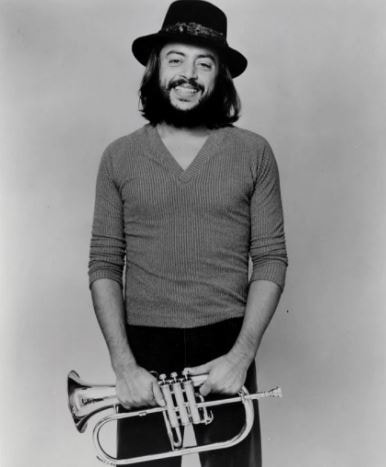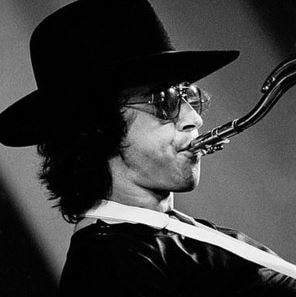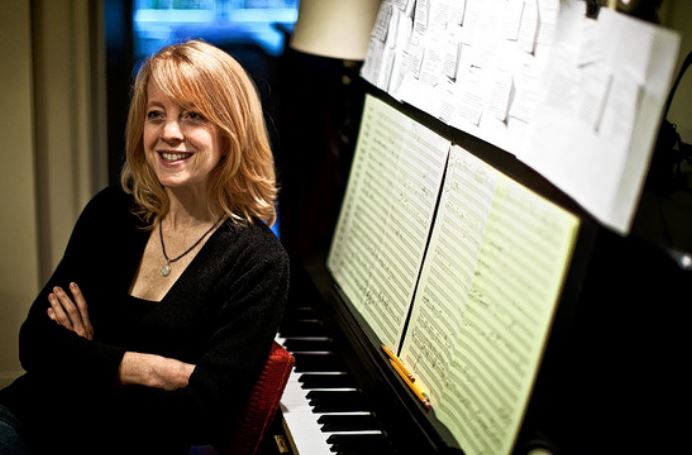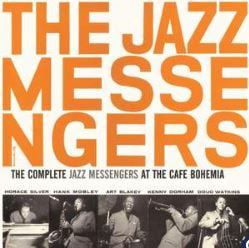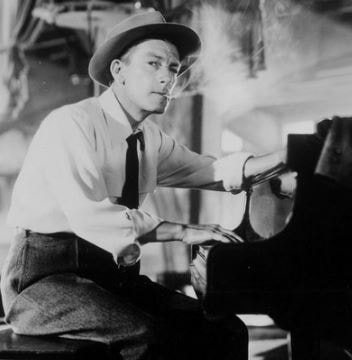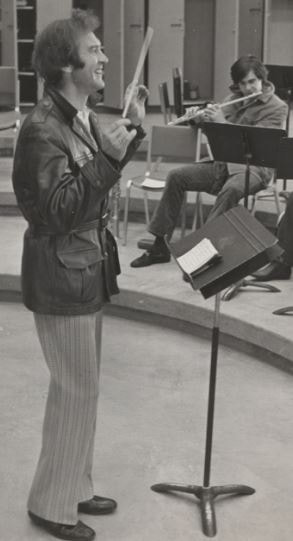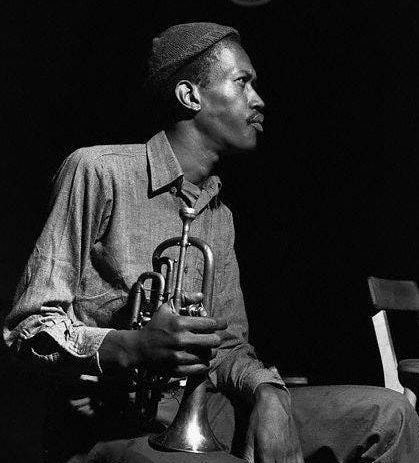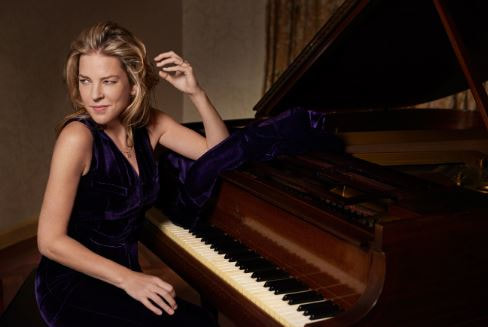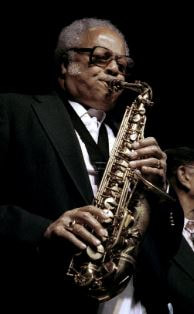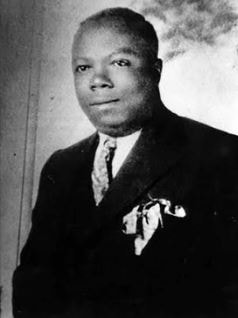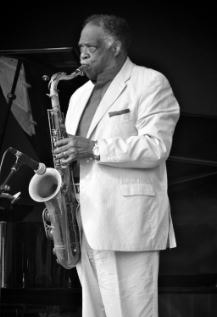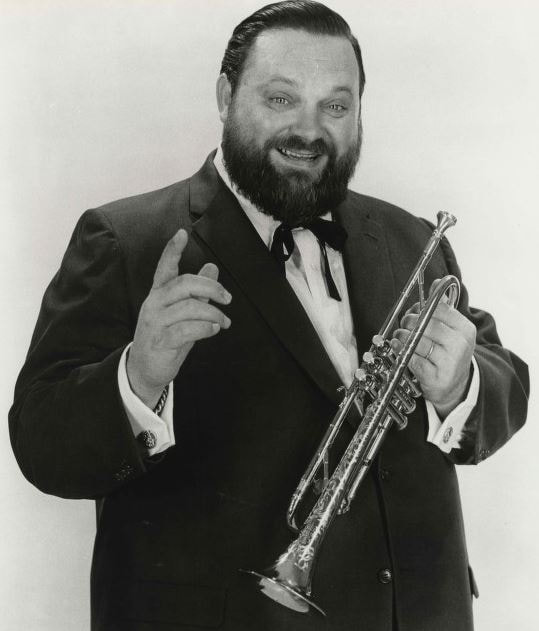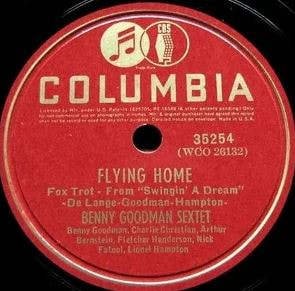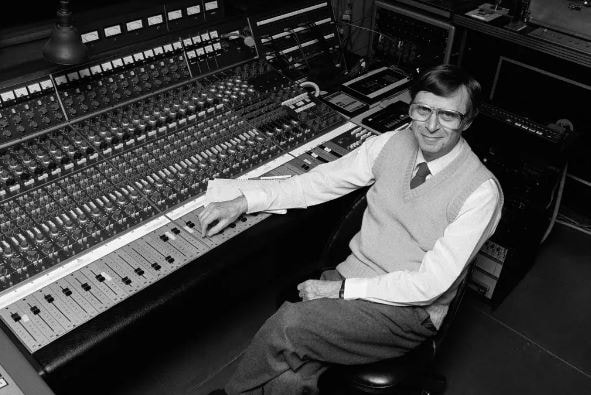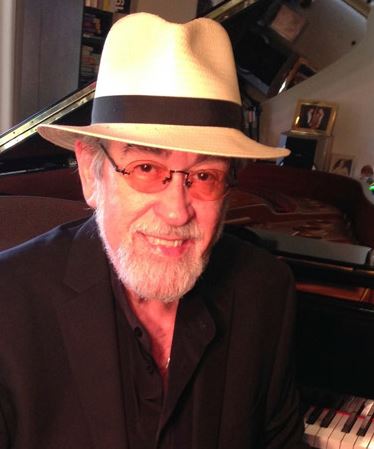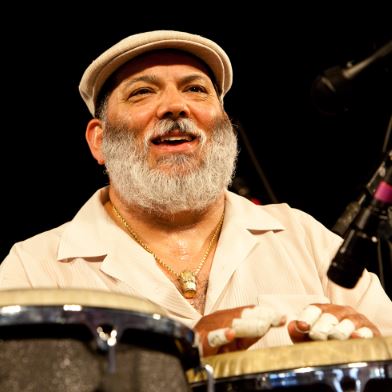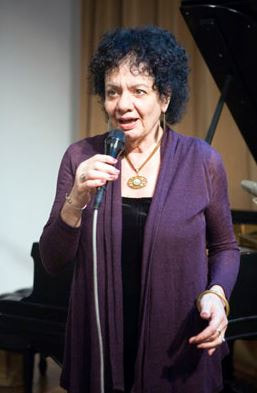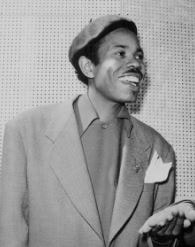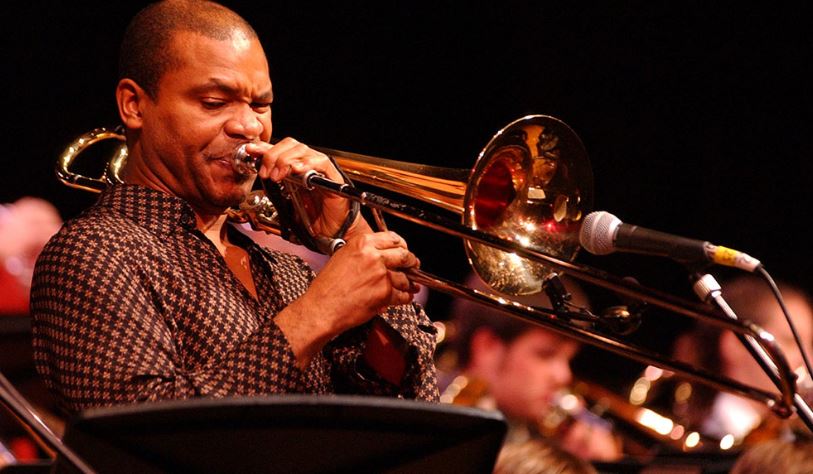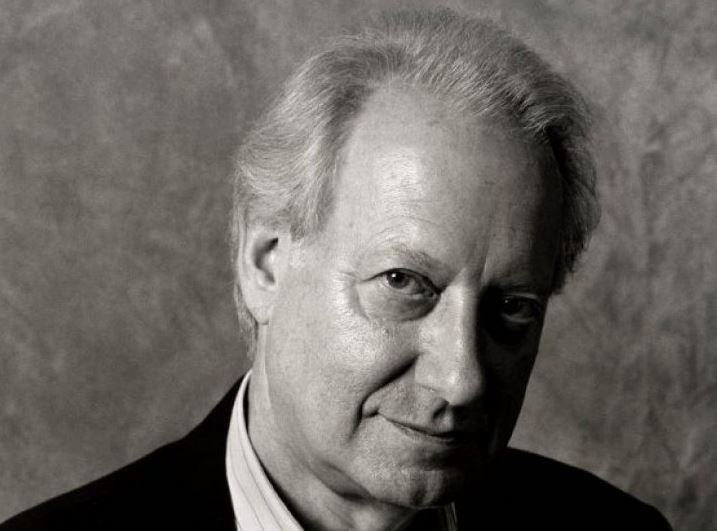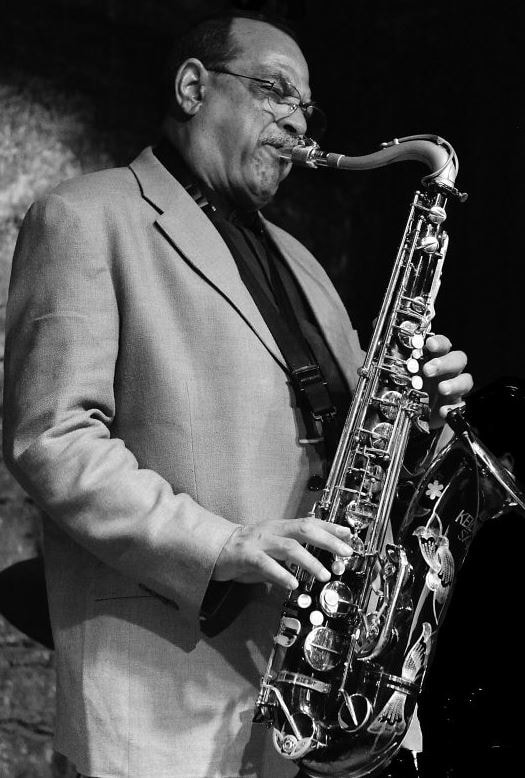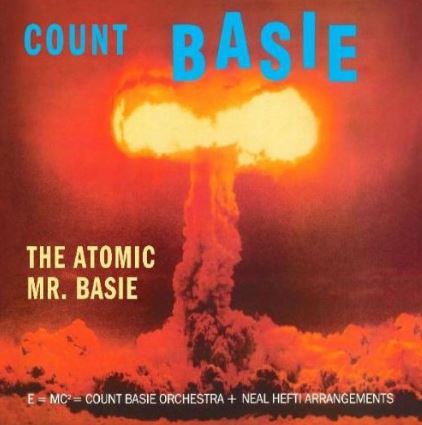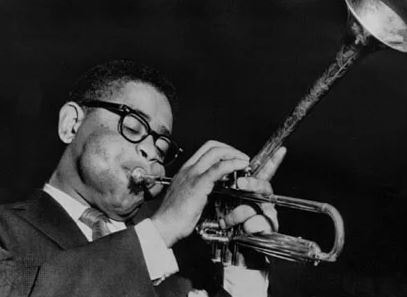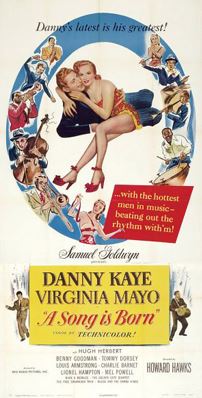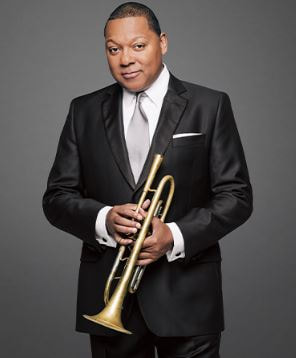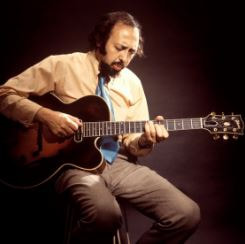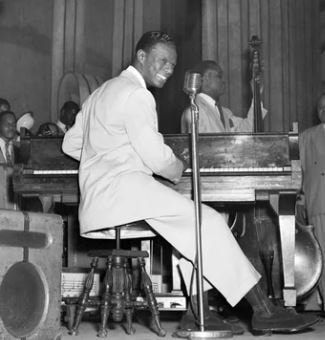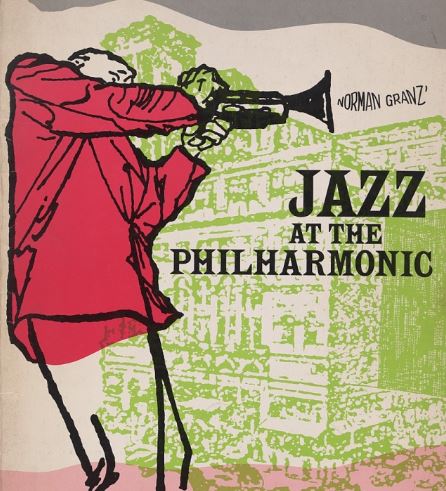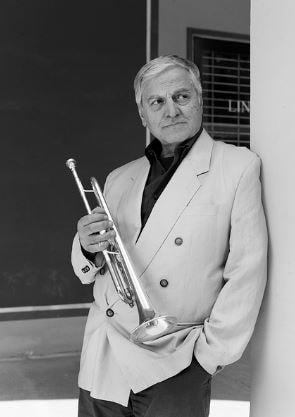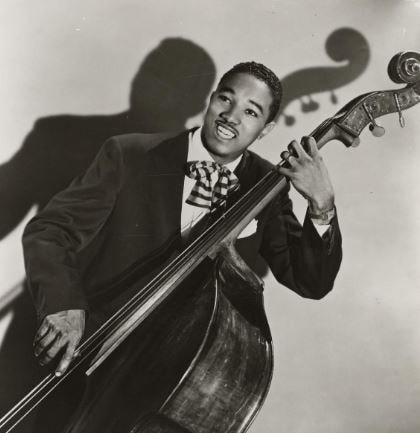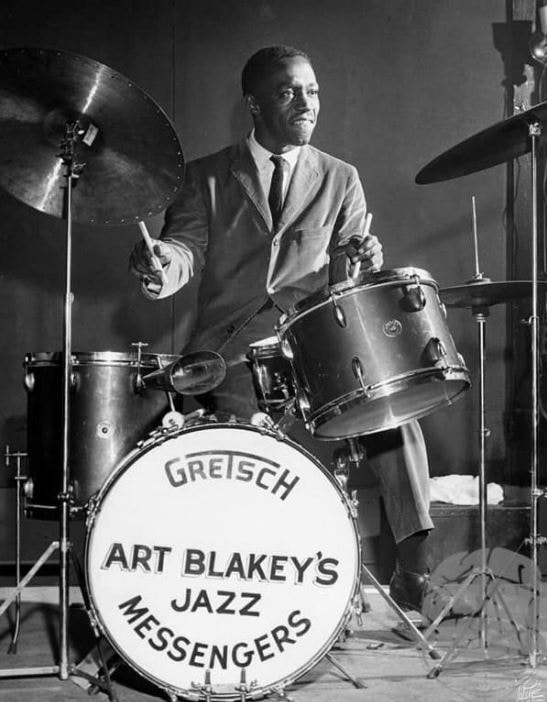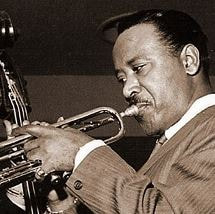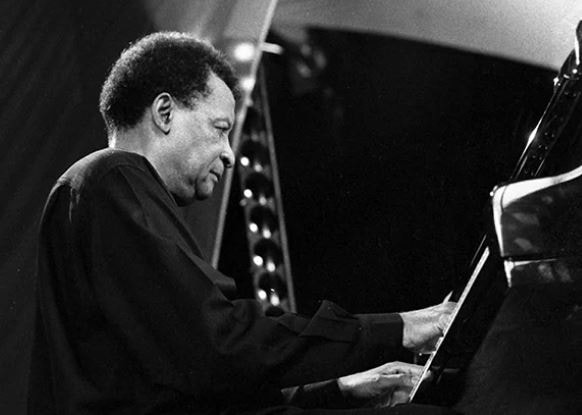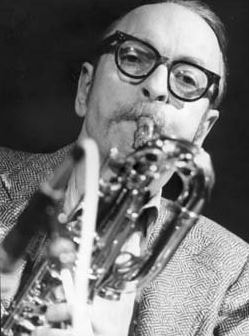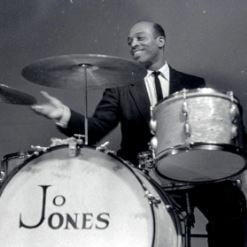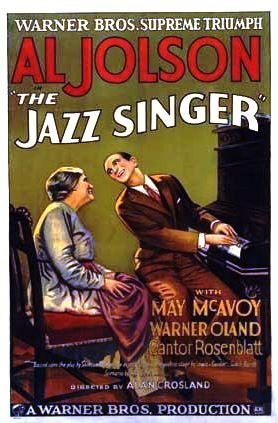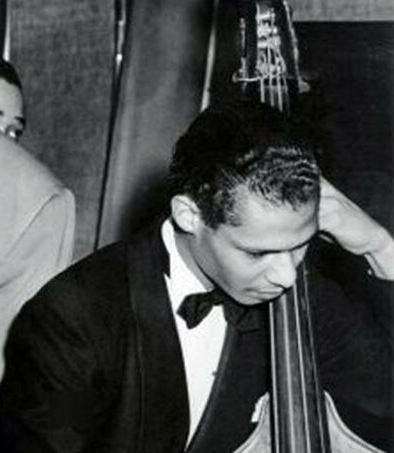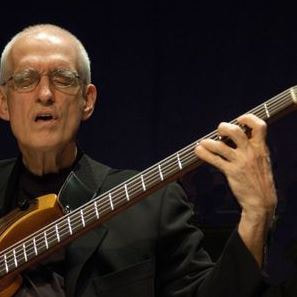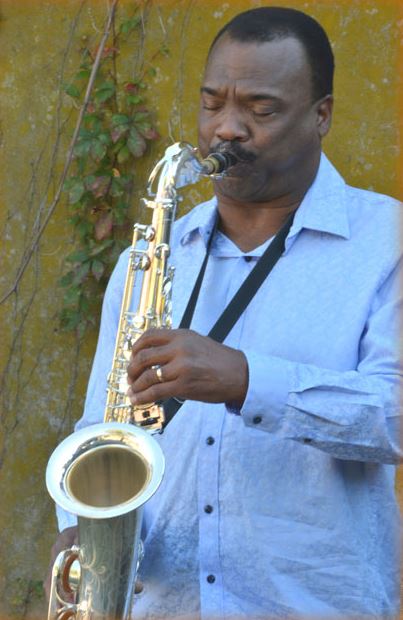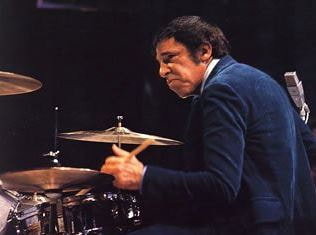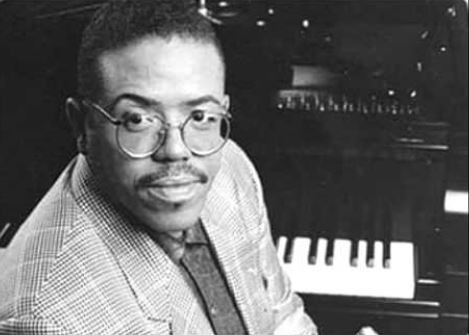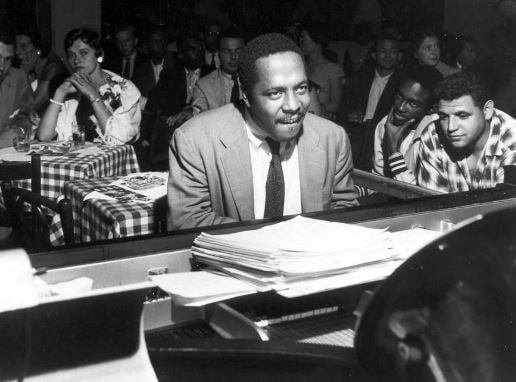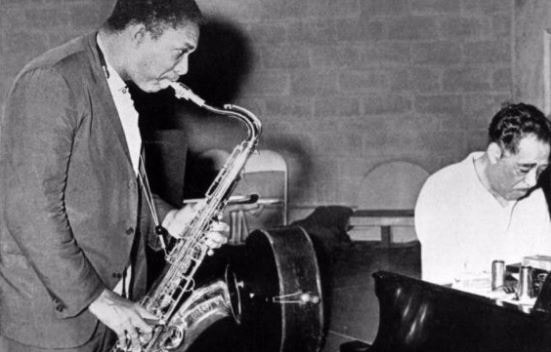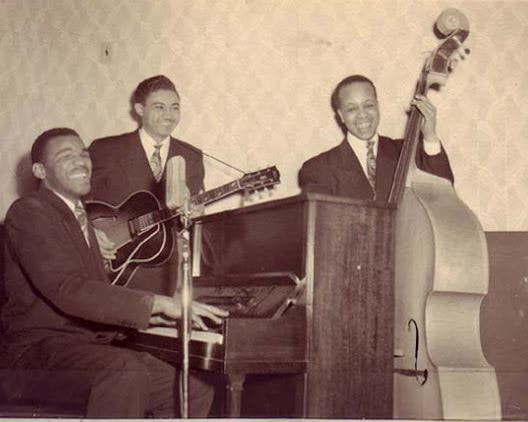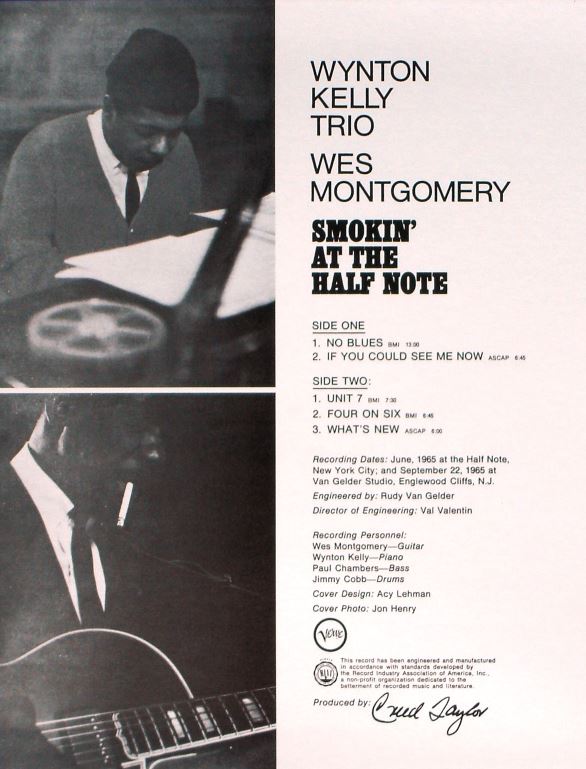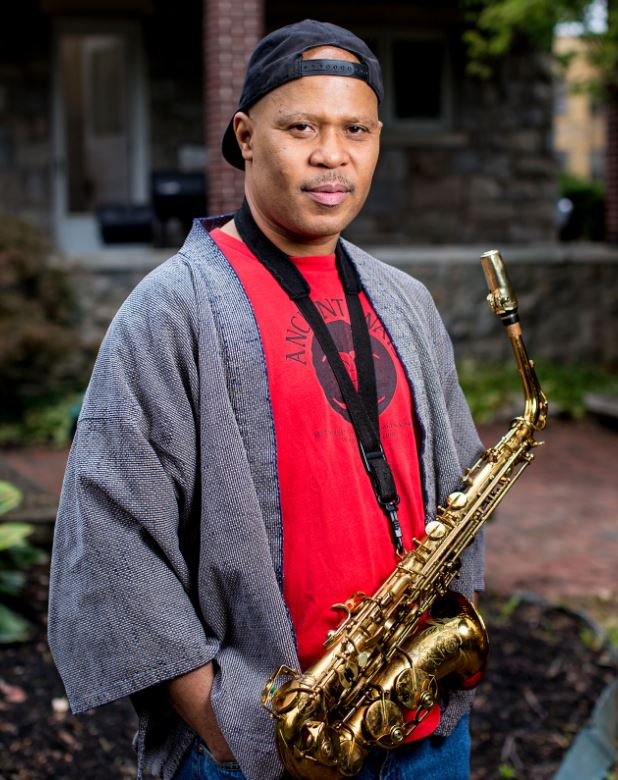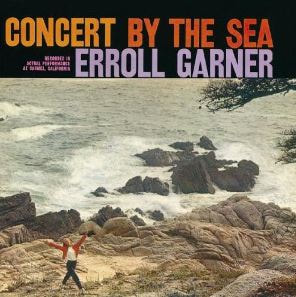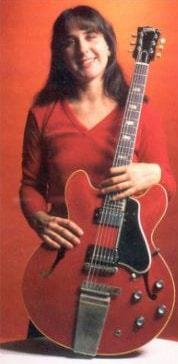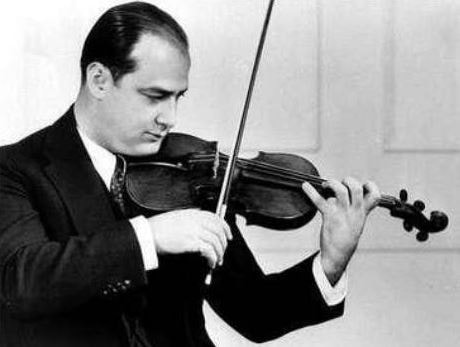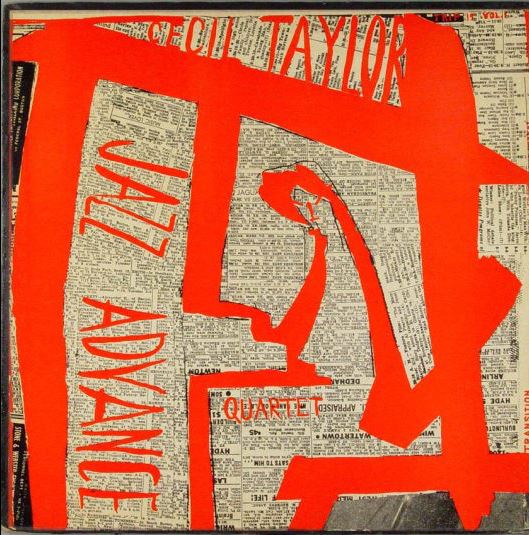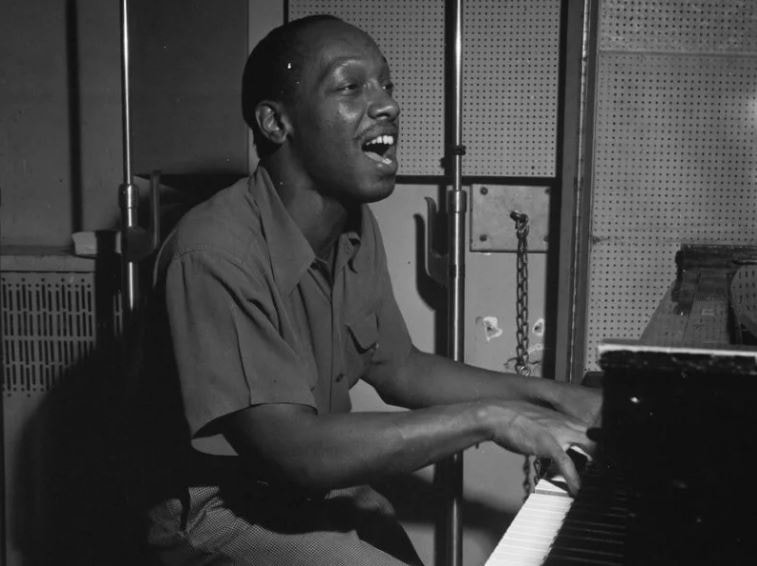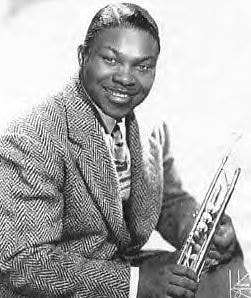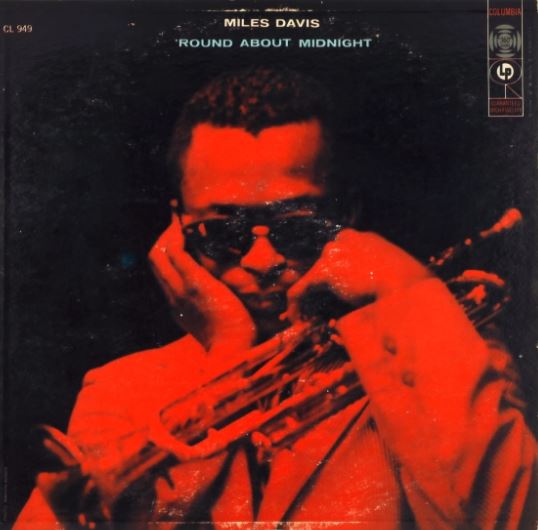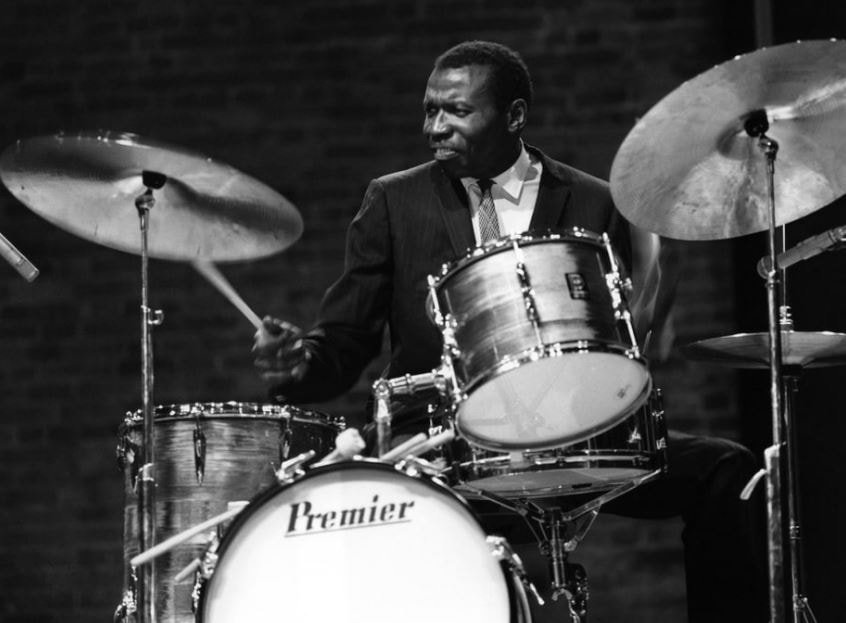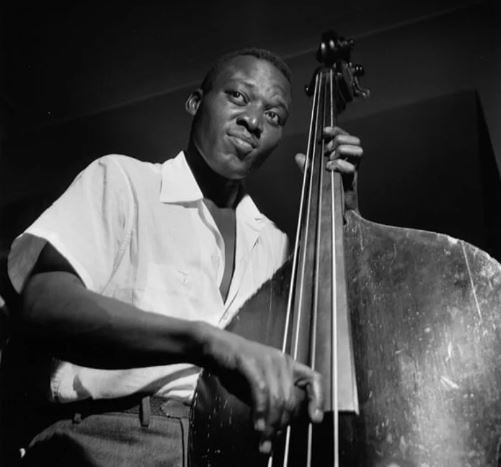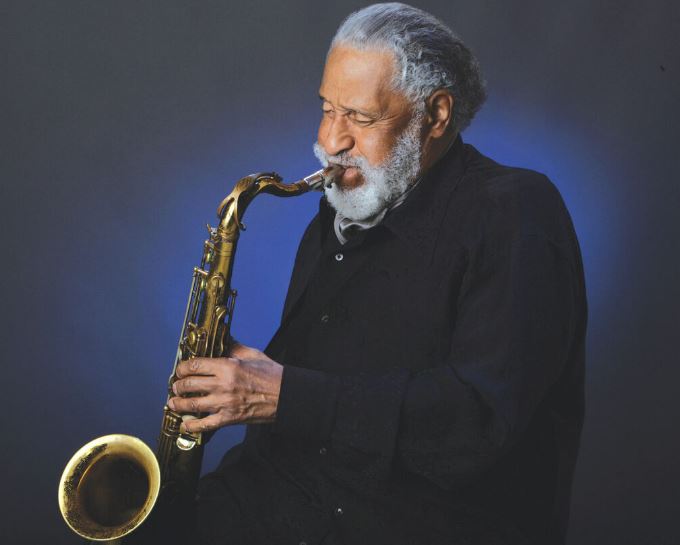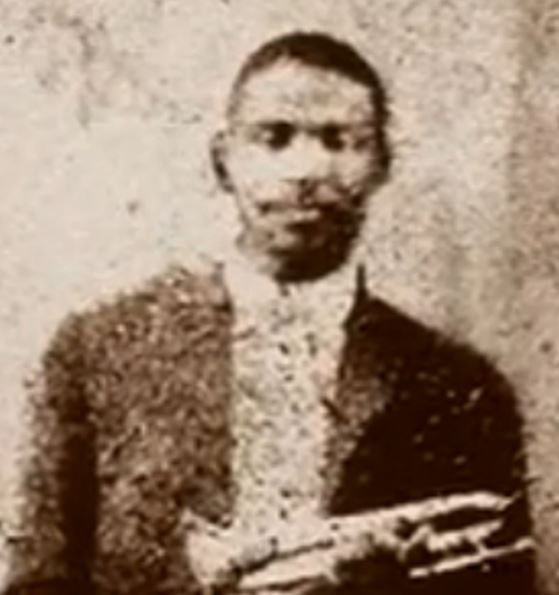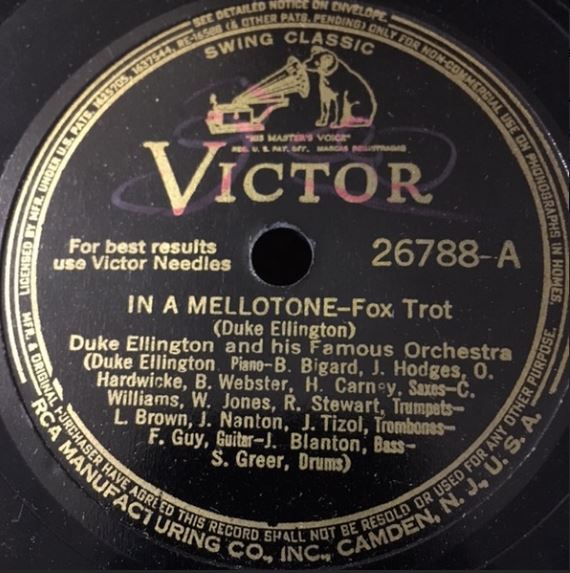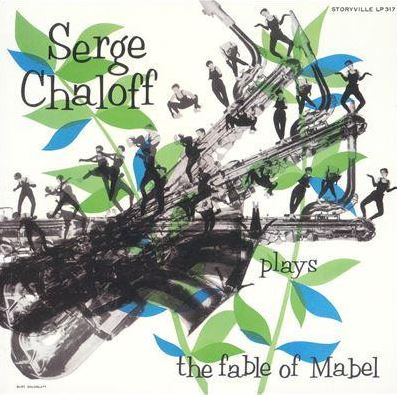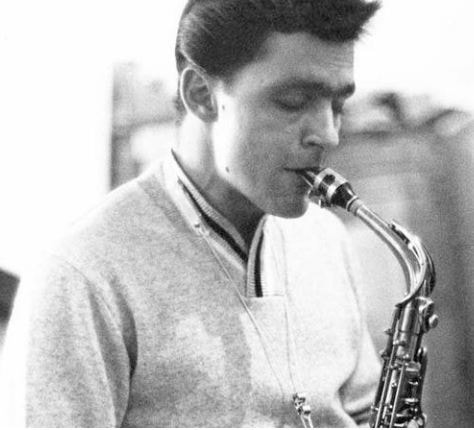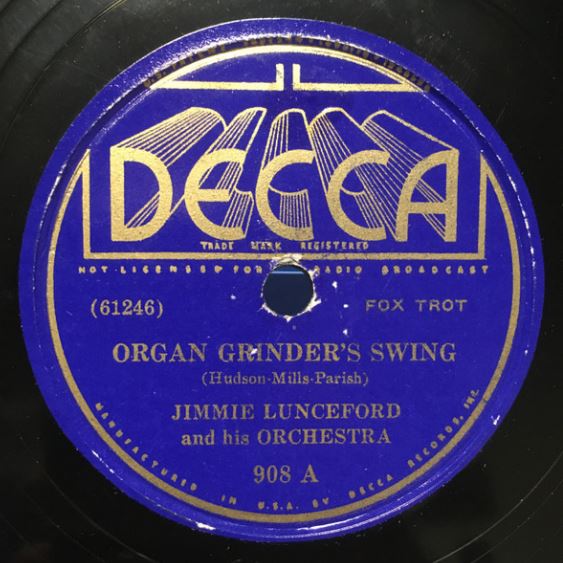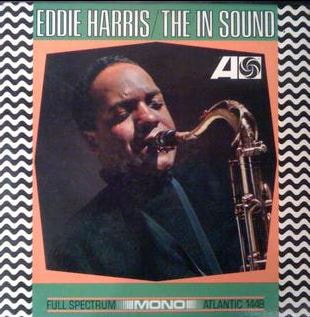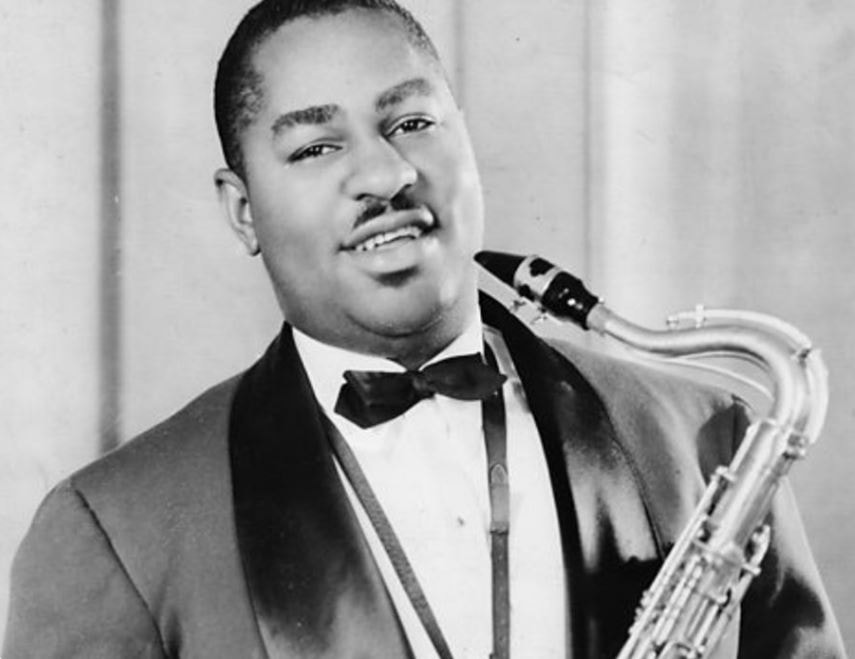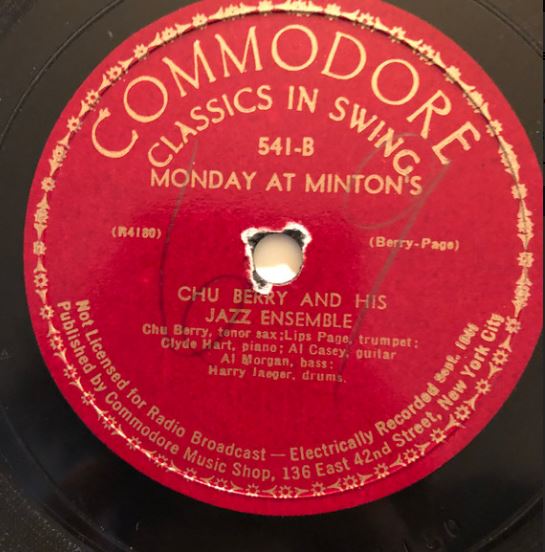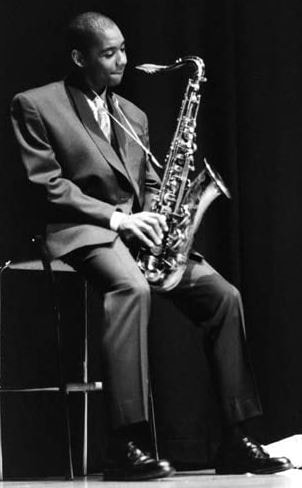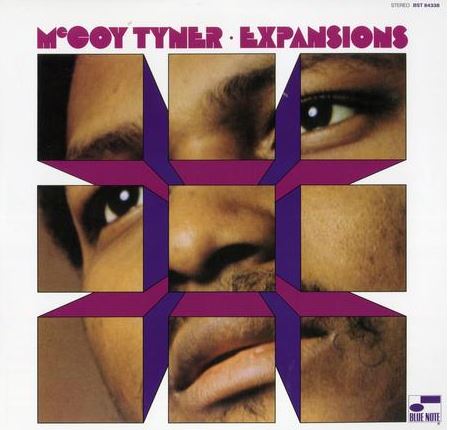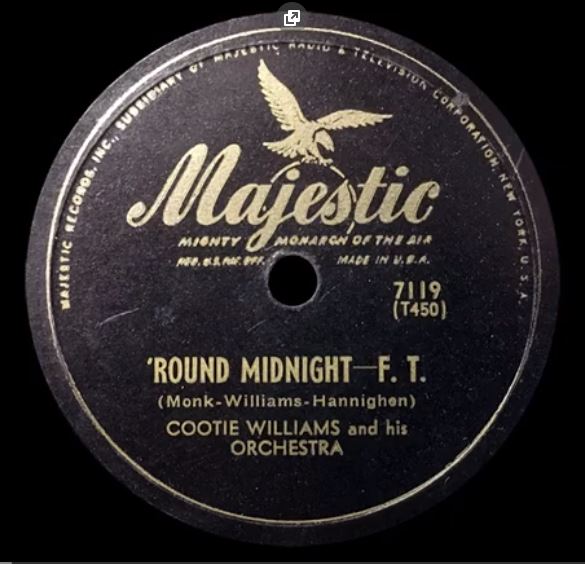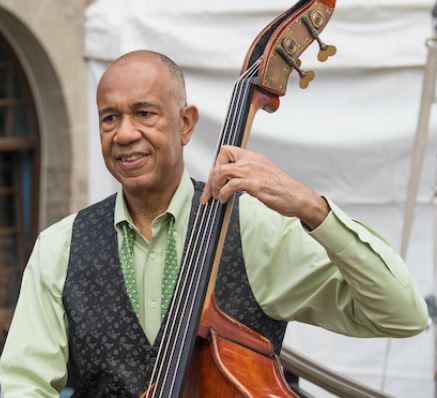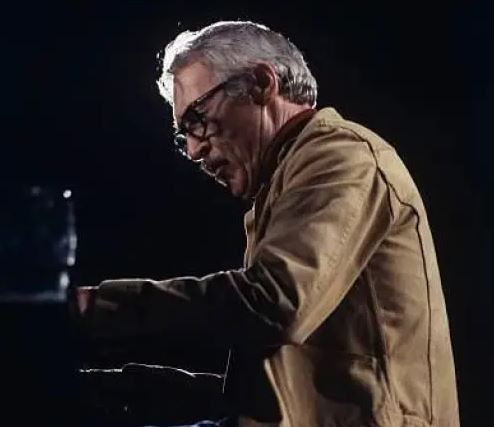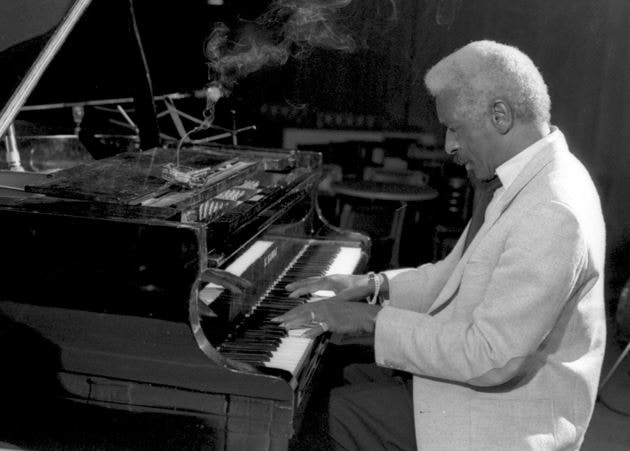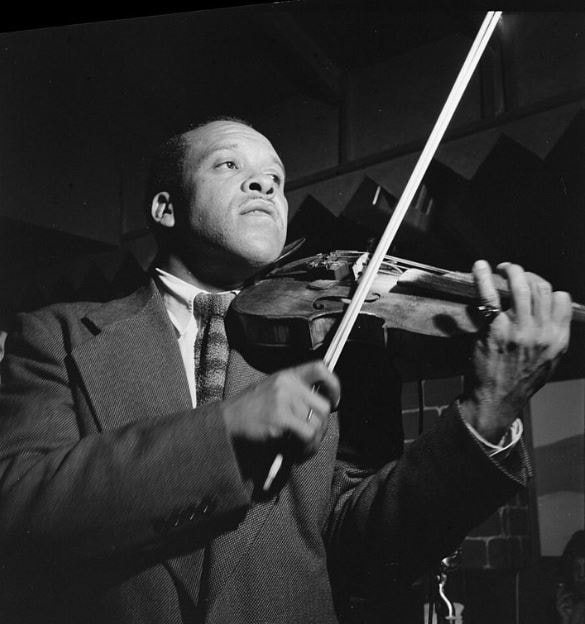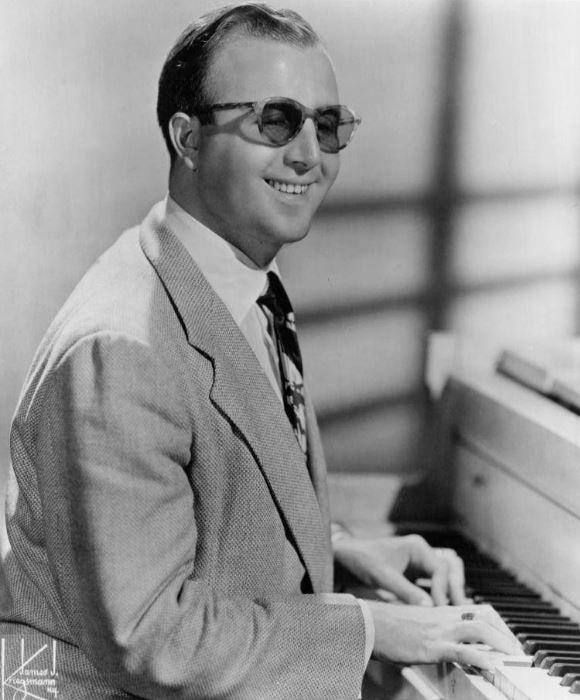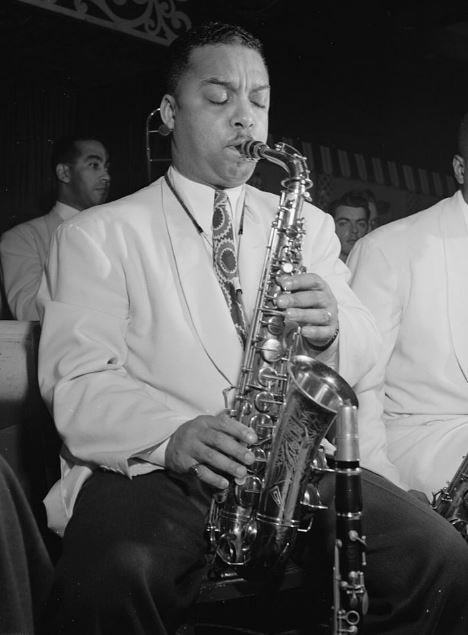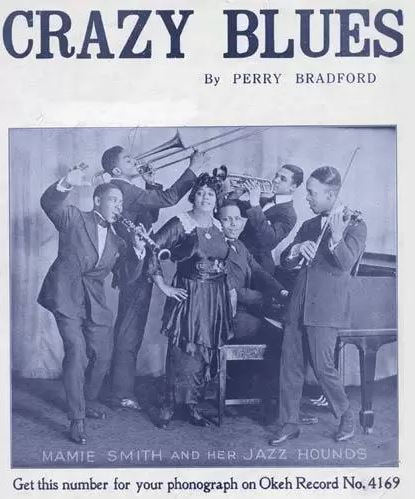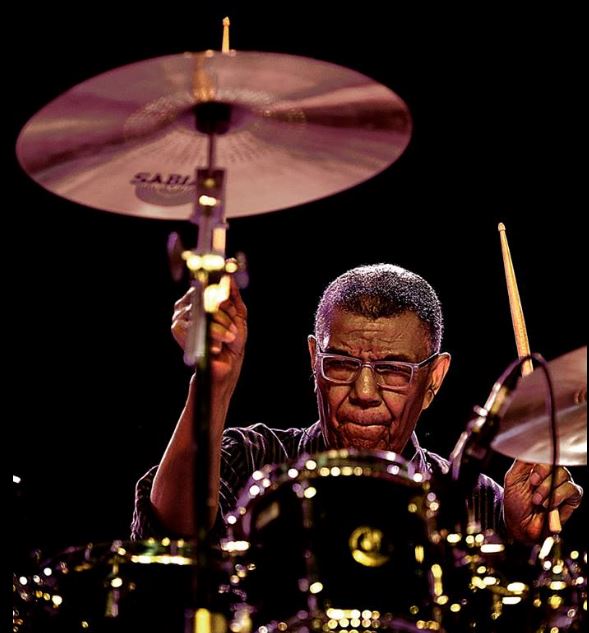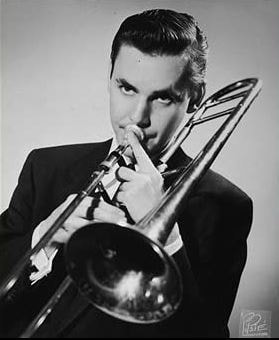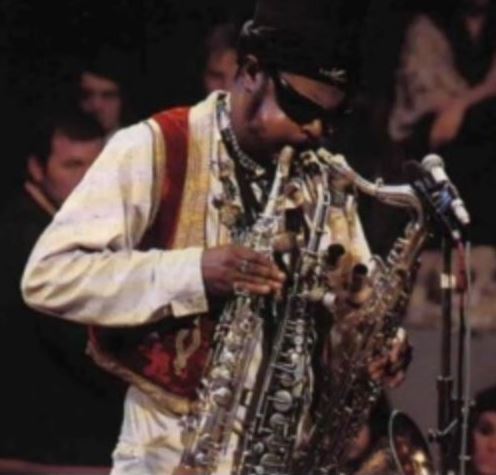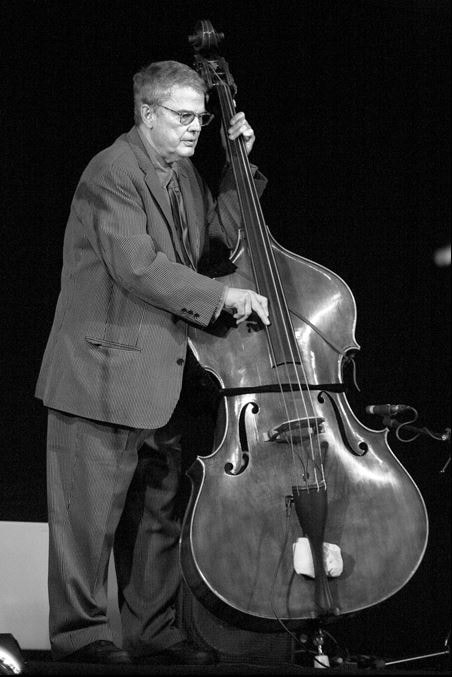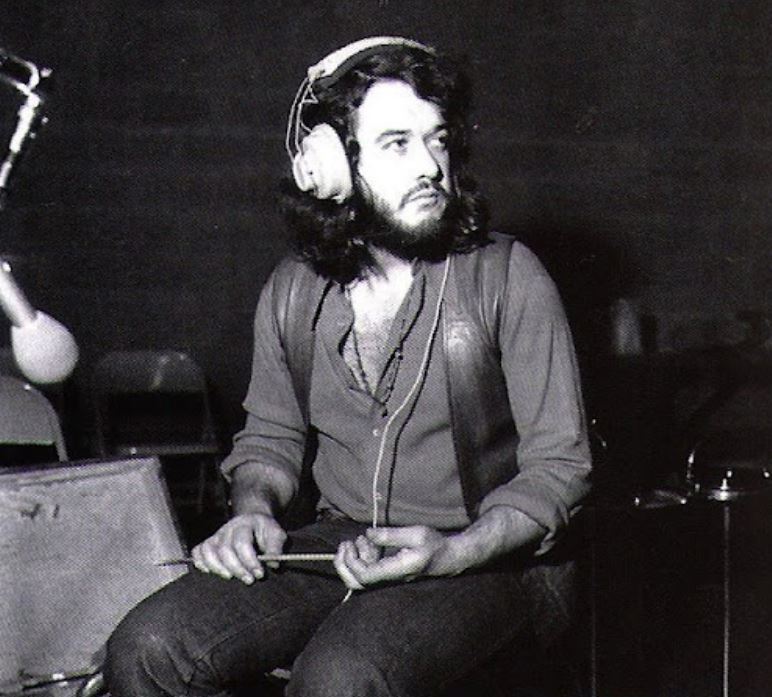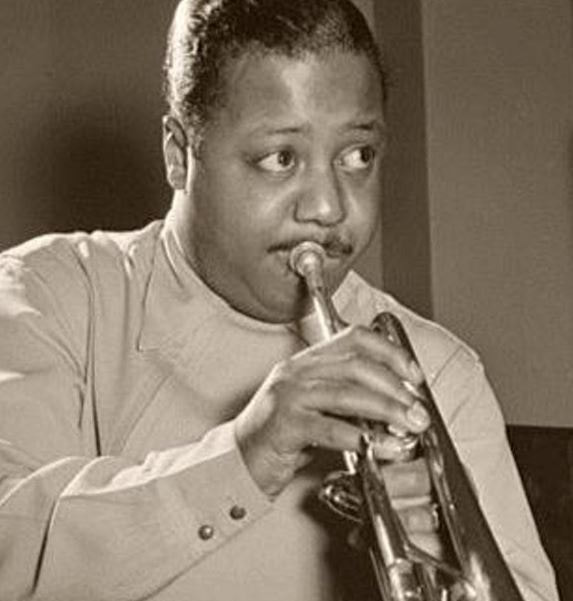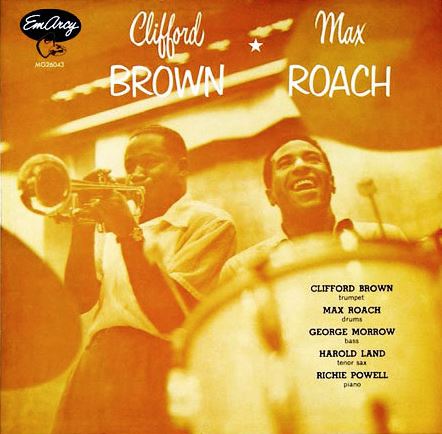TODAY IN JAZZ HISTORY - July 26th
|
Band leader Count Basie always had a good ear for talent, both instrumental and vocal. Billie Holiday and Jimmy Rushing both sang with the band. Another of the great Basie singers was Joe Williams with whom the orchestra recorded Alright, Okay, You Win on this date in 1955.
Joe Williams was born in Georgia and grew up on the south side of Chicago. At the age of 19 he was singing as a solo act and performed with Jimmy Noone, Les Hite, Coleman Hawkins and Lionel Hampton before coming to the Count Basie Orchestra in 1954. He stayed on until 1961. Joe’s second album with Basie was “Count Basie Swings, Joe Williams Sings” for Clef Records which included Alright, Okay, You Win as well as another big hit for the band, Every Day I Have the Blues. Alright, Okay, You Win was composed by Sid Wyche and Mayme Watts and had been recorded previous to the Basie/Williams collaboration. Wyche also wrote Elvis Presley’s hit A Big Hunk o’ Love and Talk That Talk which was a hit for Jackie Wilson. Additional performances of Alright, Okay, You Win have been recorded by Peggy Lee, Bria Skonberg and the Modernaires. Here is a link to the version Joe Williams recorded with Count Basie in 1955: "ALRIGHT, OKAY, YOU WIN" |
TODAY IN JAZZ HISTORY - July 25th

Trumpeter, drummer, composer and band leader Don Ellis was born July 25, 1934 in Los Angeles. Ellis became interested in jazz after hearing a concert by the Tommy Dorsey Orchestra and developed into what one critic has called “a free thinker” in the world of jazz.
Ellis graduated from Boston University with a composition degree in 1956 and his first gig after graduation was playing with the Glenn Miller ghost band, led by Ray McKinley. After spending two years in Germany as a member of the U.S. 7th Army Symphony Orchestra, Ellis returned to America where he played with both the Charlie Barnet and Maynard Ferguson bands.
In the late 1950s Ellis became part of the growing avant-garde movement in New York playing on records with Eric Dolphy, Charles Mingus and George Russell. He also was interested in the intersection between classical music and jazz, performing pieces with the New York Philharmonic. In the early 1960s Ellis moved back to California and entered the graduate program in ethnomusicology at UCLA.
In the mid-1960s the Don Ellis Orchestra came into being and performed a memorable set at the 1966 Monterey Jazz Festival. The ensemble experimented with unique instrumentation and unusual time signatures as well as employing techniques from non-Western musical influences. Ellis also began performing on a quarter-tone trumpet and often would employ electronic enhancement to his playing.
The band initially recorded with the Pacific Jazz label but was signed by John Hammond for Columbia Records in 1967. Their first album for Columbia, “Electric Bath,” was nominated for a Grammy and won DownBeat magazine’s Album of the Year award for 1968. It reached #8 on the Billboard jazz charts. The record produced what is perhaps the band’s best known piece Indian Lady.
In the 1970s Ellis’ band continued to play in various configurations, but Ellis himself was beginning to develop a serious heart condition which eventually limited his ability to perform. He spent more time composing and created the movie scores for The French Connection, The French Connection II and The Seven-Ups. Ellis passed away from a heart attack at his home on December 17, 1978 at the age 44.
Here is a link to the Don Ellis Orchestra playing Indian Lady:
"INDIAN LADY"
Ellis graduated from Boston University with a composition degree in 1956 and his first gig after graduation was playing with the Glenn Miller ghost band, led by Ray McKinley. After spending two years in Germany as a member of the U.S. 7th Army Symphony Orchestra, Ellis returned to America where he played with both the Charlie Barnet and Maynard Ferguson bands.
In the late 1950s Ellis became part of the growing avant-garde movement in New York playing on records with Eric Dolphy, Charles Mingus and George Russell. He also was interested in the intersection between classical music and jazz, performing pieces with the New York Philharmonic. In the early 1960s Ellis moved back to California and entered the graduate program in ethnomusicology at UCLA.
In the mid-1960s the Don Ellis Orchestra came into being and performed a memorable set at the 1966 Monterey Jazz Festival. The ensemble experimented with unique instrumentation and unusual time signatures as well as employing techniques from non-Western musical influences. Ellis also began performing on a quarter-tone trumpet and often would employ electronic enhancement to his playing.
The band initially recorded with the Pacific Jazz label but was signed by John Hammond for Columbia Records in 1967. Their first album for Columbia, “Electric Bath,” was nominated for a Grammy and won DownBeat magazine’s Album of the Year award for 1968. It reached #8 on the Billboard jazz charts. The record produced what is perhaps the band’s best known piece Indian Lady.
In the 1970s Ellis’ band continued to play in various configurations, but Ellis himself was beginning to develop a serious heart condition which eventually limited his ability to perform. He spent more time composing and created the movie scores for The French Connection, The French Connection II and The Seven-Ups. Ellis passed away from a heart attack at his home on December 17, 1978 at the age 44.
Here is a link to the Don Ellis Orchestra playing Indian Lady:
"INDIAN LADY"
TODAY IN JAZZ HISTORY - July 24th

Dr. Billy Taylor was a pianist, composer, broadcaster and music educator. He was born on July 24, 1921 in North Carolina, but grew up in Washington, D.C. His family was quite musical and young Billy played guitar, drums and saxophone before settling on piano as his instrument.
After graduating from Virginia State University with a degree in music in 1942 Taylor moved to New York City where he was employed by tenor man Ben Webster within a week of Billy’s arrival in town. Taylor also played with Dizzy Gillespie and Max Roach during his early years in New York, and pianist Art Tatum became something of a mentor for the young pianist.
At the end of World War II Taylor was a member of the first American jazz group to tour Europe after the war. Upon his return to the states Billy became the house pianist at Birdland, the legendary New York jazz club named in honor of Charlie Parker. Taylor was the longest serving pianist in the club’s history and afforded him the opportunity to play with a great many of the era's jazz greats.
Billy Taylor earned a Ph.D. in Music Education at the University of Massachusetts - Amherst and shortly thereafter founded the Jazzmobile program in New York. Jazzmobile was the first non-profit arts and cultural organization created just for jazz. To this day it provides arts education experiences like workshops, master classes and free concerts across New York. Taylor was also the first Black man to lead a television studio orchestra in the United States, did radio work with NPR and profiled musicians for “CBS Sunday Morning.”
During his life Dr. Billy Taylor received an Emmy, a Grammy, the National Medal for the Arts, two Peabody Awards and was the artistic director for jazz at the Kennedy Center in Washington, D.C. He was elected to the International Association for Jazz Education Hall of Fame and was appointed to the National Council of the Arts. Taylor passed away from a heart attack at age 89 in 2010.
Here is a link to a television appearance Dr. Billy Taylor in his jazz educator mode explaining how jazz musicians improvise:
"DR. BILLY TAYLOR ON IMPROVISATION"
After graduating from Virginia State University with a degree in music in 1942 Taylor moved to New York City where he was employed by tenor man Ben Webster within a week of Billy’s arrival in town. Taylor also played with Dizzy Gillespie and Max Roach during his early years in New York, and pianist Art Tatum became something of a mentor for the young pianist.
At the end of World War II Taylor was a member of the first American jazz group to tour Europe after the war. Upon his return to the states Billy became the house pianist at Birdland, the legendary New York jazz club named in honor of Charlie Parker. Taylor was the longest serving pianist in the club’s history and afforded him the opportunity to play with a great many of the era's jazz greats.
Billy Taylor earned a Ph.D. in Music Education at the University of Massachusetts - Amherst and shortly thereafter founded the Jazzmobile program in New York. Jazzmobile was the first non-profit arts and cultural organization created just for jazz. To this day it provides arts education experiences like workshops, master classes and free concerts across New York. Taylor was also the first Black man to lead a television studio orchestra in the United States, did radio work with NPR and profiled musicians for “CBS Sunday Morning.”
During his life Dr. Billy Taylor received an Emmy, a Grammy, the National Medal for the Arts, two Peabody Awards and was the artistic director for jazz at the Kennedy Center in Washington, D.C. He was elected to the International Association for Jazz Education Hall of Fame and was appointed to the National Council of the Arts. Taylor passed away from a heart attack at age 89 in 2010.
Here is a link to a television appearance Dr. Billy Taylor in his jazz educator mode explaining how jazz musicians improvise:
"DR. BILLY TAYLOR ON IMPROVISATION"
TODAY IN JAZZ HISTORY - July 23rd

Soprano saxophonist Steve Lacy was born Steven Norman Lackritz in New York City on July 23, 1934. Although he became associated with avant-garde jazz his first gigs were in his teens playing traditional jazz with much older players like Red Allen, Pee Wee Russell and Zutty Singleton and soon after with Buck Clayton and Dicky Wells. Lacy was the second prominent jazz player after Sidney Bechet to be associated almost exclusively with the soprano saxophone.
In the early 1950s Lacy studied at the Schillinger House of Music in Boston (later known as the Berklee College of Music) and at the Manhattan School of Music. In 1953 Lacy met pianist Cecil Taylor and his playing moved into the realm of the avant-garde appearing on Taylor’s first album, “Jazz Advance,” and played with him at the 1957 Newport Jazz festival. Lacy also played with Gil Evans in the late 1950s. In 1960 he was a member of Thelonious Monk’s group and Monk’s music became a central theme of Lacy’s performance career from then on.
Steve Lacy first toured Europe in 1965 with pianist Kenny Drew and shortly thereafter moved to Italy where he fronted his own group. By 1970 Lacy was living in Paris where over the next three decades he would become a leading figure on the European jazz scene. He formed a sextet and often performed with his wife Irene Aebi. Lacy was known for his use of poetry, prose and visual arts as inspirations for his music.
In 2002 Steve Lacy returned to the United States to take a teaching position at the New England Conservatory of Music where he remained until his death from liver cancer in June of 2004. One of his final performances was at an anti-war rally in the Boston Commons where more than 25,000 had come to protest the U.S. invasion of Iraq.
Here is a link to Lacy's trio playing live in Paris:
"ROBES"
In the early 1950s Lacy studied at the Schillinger House of Music in Boston (later known as the Berklee College of Music) and at the Manhattan School of Music. In 1953 Lacy met pianist Cecil Taylor and his playing moved into the realm of the avant-garde appearing on Taylor’s first album, “Jazz Advance,” and played with him at the 1957 Newport Jazz festival. Lacy also played with Gil Evans in the late 1950s. In 1960 he was a member of Thelonious Monk’s group and Monk’s music became a central theme of Lacy’s performance career from then on.
Steve Lacy first toured Europe in 1965 with pianist Kenny Drew and shortly thereafter moved to Italy where he fronted his own group. By 1970 Lacy was living in Paris where over the next three decades he would become a leading figure on the European jazz scene. He formed a sextet and often performed with his wife Irene Aebi. Lacy was known for his use of poetry, prose and visual arts as inspirations for his music.
In 2002 Steve Lacy returned to the United States to take a teaching position at the New England Conservatory of Music where he remained until his death from liver cancer in June of 2004. One of his final performances was at an anti-war rally in the Boston Commons where more than 25,000 had come to protest the U.S. invasion of Iraq.
Here is a link to Lacy's trio playing live in Paris:
"ROBES"
TODAY IN JAZZ HISTORY - July 22nd

Pianist Al Haig was born in Newark, New Jersey on July 22, 1922 and majored in piano performance at Oberlin College. Haig appeared with some of the most important musicians of his era and is considered an important be-bop keyboard man.
In 1945 Haig was playing in the combo led by Dizzy Gillespie and Charlie Parker and was much in demand during the latter portion of that decade. He also played with Fats Navarro, Eddie Davis and Stan Getz during that period as well as playing on at least one of the “Birth of the Cool” sessions led by Miles Davis and Gil Evans. Although best known as a small group player, Haig also spent time playing in the big bands led by Charlie Barnet and Jimmy Dorsey. In 1952 Al Haig played for a time with trumpeter and vocalist Chet Baker before forming his own trios and quartets that produced some fine records in the mid-1950s.
All but forgotten for most of the 1960s, he was often found playing in piano bars around New York. In 1968 Haig was accused of strangling his third wife. He was tried and acquitted the following year. There were those who doubted the outcome of the trial, however. Oddly enough, the notoriety of the trial and his subsequent acquittal seemed to somehow revive his career.
In the final decade of his life Haig spent much of his time performing in Europe and developed a significant following there. He died of a heart attack in 1982. During his career Al Haig was the pianist on some of the most significant recordings of the be-bop era.
Here is a link to a performance by the Al Haig Trio from 1954:
"AUTUMN IN NEW YORK"
In 1945 Haig was playing in the combo led by Dizzy Gillespie and Charlie Parker and was much in demand during the latter portion of that decade. He also played with Fats Navarro, Eddie Davis and Stan Getz during that period as well as playing on at least one of the “Birth of the Cool” sessions led by Miles Davis and Gil Evans. Although best known as a small group player, Haig also spent time playing in the big bands led by Charlie Barnet and Jimmy Dorsey. In 1952 Al Haig played for a time with trumpeter and vocalist Chet Baker before forming his own trios and quartets that produced some fine records in the mid-1950s.
All but forgotten for most of the 1960s, he was often found playing in piano bars around New York. In 1968 Haig was accused of strangling his third wife. He was tried and acquitted the following year. There were those who doubted the outcome of the trial, however. Oddly enough, the notoriety of the trial and his subsequent acquittal seemed to somehow revive his career.
In the final decade of his life Haig spent much of his time performing in Europe and developed a significant following there. He died of a heart attack in 1982. During his career Al Haig was the pianist on some of the most significant recordings of the be-bop era.
Here is a link to a performance by the Al Haig Trio from 1954:
"AUTUMN IN NEW YORK"
TODAY IN JAZZ HISTORY - July 21st
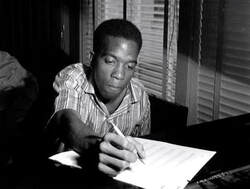
The youngest of eight children, hard bop pianist Sonny Clark was born on July 21, 1931 near the town of Herminie, Pennsylvania east of Pittsburgh. His father, a coal miner, died just two weeks after Sonny arrived. He never achieved widespread commercial success, but his playing was known and respected by those in the jazz world.
Already an accomplished keyboard man, Clark traveled to California at the age of 20 to visit a relative and ended up staying there, working first with Wardell Gray and then with Oscar Pettiford. At the age of 22 he was hired by clarinetist Buddy DeFranco and toured with him for three years before returning to southern California in 1956. While there he recorded three albums as a member of Howard Rumsey’s Lighthouse All-Stars.
In 1957 Clark was in New York City and working as the accompanist for singer Dinah Washington. He remained on the east coast for the remainder of his career recording as a sideman for Curtis Fuller, Jackie McLean, Dexter Gordon, Hank Mobley and Stanley Turrentine. He made his first record as a leader, “Dial ‘S’ for Sonny,” with Blue Note Records in 1957.
Clark struggled with drug addiction throughout his short life. On January 11th and 12th, 1963 Sonny Clark played gigs at Junior’s Bar in the Alvin Hotel at 52nd Street and Broadway in New York. The next day he was dead at the age of 31 from what was initially reported as a heart attack but was more likely a heroin overdose.
Here is a link to the title track from his 1958 record “Sonny’s Crib.” Along with Clark, the record features performances by trumpeter Donald Byrd, trombonist Curtis Fuller and John Coltrane on tenor saxophone:
"SONNY'S CRIB"
Already an accomplished keyboard man, Clark traveled to California at the age of 20 to visit a relative and ended up staying there, working first with Wardell Gray and then with Oscar Pettiford. At the age of 22 he was hired by clarinetist Buddy DeFranco and toured with him for three years before returning to southern California in 1956. While there he recorded three albums as a member of Howard Rumsey’s Lighthouse All-Stars.
In 1957 Clark was in New York City and working as the accompanist for singer Dinah Washington. He remained on the east coast for the remainder of his career recording as a sideman for Curtis Fuller, Jackie McLean, Dexter Gordon, Hank Mobley and Stanley Turrentine. He made his first record as a leader, “Dial ‘S’ for Sonny,” with Blue Note Records in 1957.
Clark struggled with drug addiction throughout his short life. On January 11th and 12th, 1963 Sonny Clark played gigs at Junior’s Bar in the Alvin Hotel at 52nd Street and Broadway in New York. The next day he was dead at the age of 31 from what was initially reported as a heart attack but was more likely a heroin overdose.
Here is a link to the title track from his 1958 record “Sonny’s Crib.” Along with Clark, the record features performances by trumpeter Donald Byrd, trombonist Curtis Fuller and John Coltrane on tenor saxophone:
"SONNY'S CRIB"
TODAY IN JAZZ HISTORY - July 20th
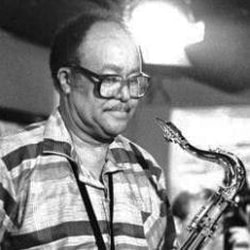
Tenor saxophonist and arranger Ernie Wilkins was born in St. Louis, Missouri on this date in 1922. Wilkins learned piano and violin and attended Wilberforce University before serving the U.S. Navy during World War II.
After separation from the navy, Wilkins played gigs around his hometown before joining up with Earl Hines’ last big band in 1948. In 1952 he became part of the saxophone section in the Count Basie Orchestra where he stayed for three years. He would continue to contribute compositions and arrangements to the Basie book for years to come. Wilkins also wrote for big bands led by Harry James, Maynard Ferguson, Buddy Rich and Tommy Dorsey and served as musical director on projects by Cannonball Adderley, Sarah Vaughan and Oscar Peterson.
In the 1970s he wrote for and played with Clark Terry’s group. In 1979 Wilkins moved to Copenhagen, Denmark where he lived until his death in 1999. While there he formed the Ernie Wilkins Almost Big Band which played his own arrangements and featured American expatriate musicians along with talent from Europe.
Here is a link to Ernie Wilkins Almost Big Band playing at the Montreux Jazz Festival in 1983:
"WELL YOU NEEDN'T"
After separation from the navy, Wilkins played gigs around his hometown before joining up with Earl Hines’ last big band in 1948. In 1952 he became part of the saxophone section in the Count Basie Orchestra where he stayed for three years. He would continue to contribute compositions and arrangements to the Basie book for years to come. Wilkins also wrote for big bands led by Harry James, Maynard Ferguson, Buddy Rich and Tommy Dorsey and served as musical director on projects by Cannonball Adderley, Sarah Vaughan and Oscar Peterson.
In the 1970s he wrote for and played with Clark Terry’s group. In 1979 Wilkins moved to Copenhagen, Denmark where he lived until his death in 1999. While there he formed the Ernie Wilkins Almost Big Band which played his own arrangements and featured American expatriate musicians along with talent from Europe.
Here is a link to Ernie Wilkins Almost Big Band playing at the Montreux Jazz Festival in 1983:
"WELL YOU NEEDN'T"
TODAY IN JAZZ HISTORY - July 19th
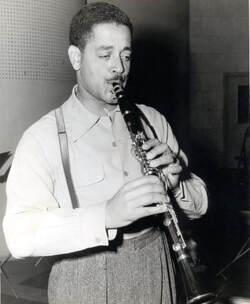
Clarinetist Buster Bailey was born in Memphis, Tennessee on July 19, 1902 and played in some of the best-known musical organizations of his time during his career.
As a youth Bailey took clarinet lessons from the same teacher that worked with Benny Goodman. By the time he was 15 years old Buster was playing in the group led by W.C. Handy. At 17 he was playing in Erskine Tate’s Vendome Orchestra in Chicago where he remained until joining King Oliver in 1923. While he was with Oliver he befriended bandmate Louis Armstrong. A year later Armstrong took a job with Fletcher Henderson in New York City and recommended Bailey to his new boss. Shortly thereafter Buster was also in New York and playing with the Henderson ensemble where he stayed for four years.
In 1927 Buster Bailey quit Henderson’s band and joined up with Noble Sissle. While in New York Bailey became a popular sideman and recorded with a number of well-known artists of the day including Clarence Williams. In the mid 1930s he joined up with the John Kirby Band where he remained for about a decade before leading his own short-lived group in 1946. Later in his career Bailey played with Wild Bill Davidson and Red Allen and made records with Jimmy Rushing, Eubie Blake and trombonist Vic Dickenson. Buster Bailey died after suffering a heart attack in 1967.
Here is a link to a 1958 Buster Bailey television appearance on the program “Jazz Party:
"ROSE ROOM"
As a youth Bailey took clarinet lessons from the same teacher that worked with Benny Goodman. By the time he was 15 years old Buster was playing in the group led by W.C. Handy. At 17 he was playing in Erskine Tate’s Vendome Orchestra in Chicago where he remained until joining King Oliver in 1923. While he was with Oliver he befriended bandmate Louis Armstrong. A year later Armstrong took a job with Fletcher Henderson in New York City and recommended Bailey to his new boss. Shortly thereafter Buster was also in New York and playing with the Henderson ensemble where he stayed for four years.
In 1927 Buster Bailey quit Henderson’s band and joined up with Noble Sissle. While in New York Bailey became a popular sideman and recorded with a number of well-known artists of the day including Clarence Williams. In the mid 1930s he joined up with the John Kirby Band where he remained for about a decade before leading his own short-lived group in 1946. Later in his career Bailey played with Wild Bill Davidson and Red Allen and made records with Jimmy Rushing, Eubie Blake and trombonist Vic Dickenson. Buster Bailey died after suffering a heart attack in 1967.
Here is a link to a 1958 Buster Bailey television appearance on the program “Jazz Party:
"ROSE ROOM"
TODAY IN JAZZ HISTORY - July 18th

Tuxedo Junction is a popular song written by Erskine Hawkins and recorded by his band for the Bluebird label on July 18, 1939. The record peaked at #7 on the charts later that year. The following year a cover was recorded by the Glenn Miller Orchestra and their version went to #1. The title refers to a transit stop in Birmingham, Alabama and a nearby jazz and blues club.
The Erskine Hawkins Orchestra traced its roots to a group named the ‘Bama State Collegians that was made up of students from Alabama State University and dated to the late 1920s. Hawkins was not the original director of the band but was its leader in 1934 when they decided to move to New York City and try their luck as the Erskine Hawkins Orchestra. They were a fixture at the Savoy Ballroom in Harlem, often being the relief band for Chick Webb’s ensemble. While at the Savoy the band often used Tuxedo Junction as their closing number.
The song was composed as an instrumental, but lyrics were added later by the publishing company. Aside from the Miller record, numerous covers have been recorded in the years since 1939, including versions by Ella Fitzgerald, the Andrews Sisters, Harry James, Frankie Avalon and Joe Jackson.
Here is a link to the original recording of Tuxedo Junction by Erskine Hawkins made 85 years ago today:
"TUXEDO JUNCTION"
TODAY IN JAZZ HISTORY - July 17th

A rather remarkable thing happened on July 17, 1923 at the studios of Gennett Records in Richmond, Indiana. One of the most popular jazz bands of the previous year, the New Orleans Rhythm Kings, were there to record with “Jelly Roll” Morton, the man who claimed to have “invented jazz in 1902.” That in itself might have been remarkable, but the date was also notable because this may have been the first integrated recording session in jazz history. The Rhythm Kings were an all-white band and Morton was Creole. It was not uncommon at the time for Black musicians to play with their white counterparts in private sessions, but it was not something one saw in professional situations.
Ferdinand “Jelly Roll” Morton was born in New Orleans in 1890 and by the age of 14 was playing piano in a Storyville sporting house. Later he toured with a minstrel show and performed in vaudeville. By his mid-20s Morton was writing down his compositions and in 1915 got one of them, “Jelly Roll Blues,” published. It was one of the first jazz pieces to be published. In 1926 he signed with Victor Records and cut several sides of carefully arranged and rehearsed jazz with his group The Red Hot Peppers. In 1938, while living in Washington, D.C., Morton participated in a series of fascinating recorded interviews with Alan Lomax for the Library of Congress.
Although the New Orleans Rhythm Kings were organized in Chicago and sometimes played under other names, several of the original members were natives to Louisiana who had come north in hopes of finding “better gigs.” In 1921 the group began a 17-month residency at The Friar’s Inn on Chicago’s loop. While there, many aspiring young musicians were frequent members of the audience, including a teen-aged Bix Beiderbecke who occasionally sat in with the band. They were also a tremendous influence on the Austin High Gang, a group of white high school student musicians that included Jimmy McPartland, Bud Freeman and Frank Teschemacher. The Rhythm Kings made their first records just a year before their session with Morton.
Here is a link to one of the tunes they recorded on that July day 101 years ago:
"MILENBERG JOYS"
Ferdinand “Jelly Roll” Morton was born in New Orleans in 1890 and by the age of 14 was playing piano in a Storyville sporting house. Later he toured with a minstrel show and performed in vaudeville. By his mid-20s Morton was writing down his compositions and in 1915 got one of them, “Jelly Roll Blues,” published. It was one of the first jazz pieces to be published. In 1926 he signed with Victor Records and cut several sides of carefully arranged and rehearsed jazz with his group The Red Hot Peppers. In 1938, while living in Washington, D.C., Morton participated in a series of fascinating recorded interviews with Alan Lomax for the Library of Congress.
Although the New Orleans Rhythm Kings were organized in Chicago and sometimes played under other names, several of the original members were natives to Louisiana who had come north in hopes of finding “better gigs.” In 1921 the group began a 17-month residency at The Friar’s Inn on Chicago’s loop. While there, many aspiring young musicians were frequent members of the audience, including a teen-aged Bix Beiderbecke who occasionally sat in with the band. They were also a tremendous influence on the Austin High Gang, a group of white high school student musicians that included Jimmy McPartland, Bud Freeman and Frank Teschemacher. The Rhythm Kings made their first records just a year before their session with Morton.
Here is a link to one of the tunes they recorded on that July day 101 years ago:
"MILENBERG JOYS"
TODAY IN JAZZ HISTORY - July 16th

It has been written that Cal Tjader was the “point man between Latin jazz and mainstream bop.” Of Swedish descent, he was sometimes called “the most successful non-Latino Latin musician” and spent the bulk of his career playing musical styles from Cuba, Mexico, the Caribbean and throughout Latin America. Known mainly as a vibraphonist, Tjader also can be heard on recordings playing drums, bongos and piano, as well. He was born on July 16, 1925, 99 years ago today.
Cal Tjader was born in St. Louis, Missouri because his vaudevillian parents were on tour there. His father was a tap dancer and his mother played piano in their act. When Cal was two his family settled in San Mateo, California where his parents opened a dance studio. His parents taught young Cal their skills and soon he was making appearances around the San Francisco Bay Area as Tjader Junior.
After serving as a medic in the Pacific during World War II, Tjader studied at San Francisco State College. While there he met pianist Dave Brubeck and accepted an offer to play drums in his octet. The octet was a short-lived project, but Tjader followed that by being the drummer in the Dave Brubeck Trio.
In 1953 Cal joined up with pianist George Shearing for a short while before forming his own group which capitalized on the mambo craze that swept America in the mid-1950s. Tjader was signed to Fantasy Records and began turning out a series of popular albums that featured seasoned Latin musicians. The band was the opening act at the second Monterey Jazz Festival.
In the 1960s Tjader signed with Verve Records and made a number of popular albums for them. He recorded in many different formats during the decade including with big bands, string groups. His 1964 album Soul Sauce and its title track were a huge success for Cal.
During the 1970s Cal Tjader experimented with electronic instruments and rock beats on his records but returned to a more standard instrumentation and style by the time the 1980s rolled around. He was on tour in the Philippines in 1982 when he suffered a fatal heart attack. In all, Cal Tjader recorded more than 70 albums as a leader between 1954 and 1982 and was one of the most popular jazz performers of his era.
Here is a link to Tjader’s 1964 hit Soul Sauce, a cover of a Dizzy Gillespie tune:
"SOUL SAUCE"
Cal Tjader was born in St. Louis, Missouri because his vaudevillian parents were on tour there. His father was a tap dancer and his mother played piano in their act. When Cal was two his family settled in San Mateo, California where his parents opened a dance studio. His parents taught young Cal their skills and soon he was making appearances around the San Francisco Bay Area as Tjader Junior.
After serving as a medic in the Pacific during World War II, Tjader studied at San Francisco State College. While there he met pianist Dave Brubeck and accepted an offer to play drums in his octet. The octet was a short-lived project, but Tjader followed that by being the drummer in the Dave Brubeck Trio.
In 1953 Cal joined up with pianist George Shearing for a short while before forming his own group which capitalized on the mambo craze that swept America in the mid-1950s. Tjader was signed to Fantasy Records and began turning out a series of popular albums that featured seasoned Latin musicians. The band was the opening act at the second Monterey Jazz Festival.
In the 1960s Tjader signed with Verve Records and made a number of popular albums for them. He recorded in many different formats during the decade including with big bands, string groups. His 1964 album Soul Sauce and its title track were a huge success for Cal.
During the 1970s Cal Tjader experimented with electronic instruments and rock beats on his records but returned to a more standard instrumentation and style by the time the 1980s rolled around. He was on tour in the Philippines in 1982 when he suffered a fatal heart attack. In all, Cal Tjader recorded more than 70 albums as a leader between 1954 and 1982 and was one of the most popular jazz performers of his era.
Here is a link to Tjader’s 1964 hit Soul Sauce, a cover of a Dizzy Gillespie tune:
"SOUL SAUCE"
TODAY IN JAZZ HISTORY - July 15th

Drummer Philly Joe Jones was born in Philadelphia (not surprisingly) on this date in 1923. His given name was Joseph Rudolph Jones and he learned the basics of music at a young age from his mother who was a piano teacher. He took on the moniker “Philly Joe” to distinguish himself from Jo Jones, the drummer with Count Basie’s All-American Rhythm Section.
In the 1940s Jones was playing in New York with jazz and blues groups and made his first record with saxophonist Johnny Griffin. Late in that decade and into the early 1950s Philly Joe could be heard playing in groups led by Tadd Dameron, Ben Webster, Dexter Gordon, Lee Konitz and Zoot Sims.
After 1953 Jones was associated with Miles Davis. Miles related in his autobiography that “Philly Joe Jones and I would go from city to city playing with local musicians. Philly would go ahead of me and get some guys together and then I would show and we’d play a gig.” Eventually the two found Red Garland and Paul Chambers and auditioned John Coltrane and the first Miles Davis Quintet was formed. Jones recorded his first record as a leader in 1958.
After his time with Davis ended, Philly Joe Jones could be heard on numerous Blue Note, Riverside and Prestige recordings and played regularly with Sonny Rollins, Art Pepper and is the drummer on Coltrane’s Blue Train album.
In 1968 Jones moved to Europe and played with many American expatriate and touring jazz musicians while also teaching in London. In the 1980s he founded the group Dameronia dedicated to playing the music of Tadd Dameron. Philly Joe Jones died of a heart attack in his hometown on August 30, 1985.
Here is a link to Philly Joe Jones soloing as part of the Bill Evans Trio at the Montreux Jazz Festival in 1978:
"PHILLY JOE JONES"
In the 1940s Jones was playing in New York with jazz and blues groups and made his first record with saxophonist Johnny Griffin. Late in that decade and into the early 1950s Philly Joe could be heard playing in groups led by Tadd Dameron, Ben Webster, Dexter Gordon, Lee Konitz and Zoot Sims.
After 1953 Jones was associated with Miles Davis. Miles related in his autobiography that “Philly Joe Jones and I would go from city to city playing with local musicians. Philly would go ahead of me and get some guys together and then I would show and we’d play a gig.” Eventually the two found Red Garland and Paul Chambers and auditioned John Coltrane and the first Miles Davis Quintet was formed. Jones recorded his first record as a leader in 1958.
After his time with Davis ended, Philly Joe Jones could be heard on numerous Blue Note, Riverside and Prestige recordings and played regularly with Sonny Rollins, Art Pepper and is the drummer on Coltrane’s Blue Train album.
In 1968 Jones moved to Europe and played with many American expatriate and touring jazz musicians while also teaching in London. In the 1980s he founded the group Dameronia dedicated to playing the music of Tadd Dameron. Philly Joe Jones died of a heart attack in his hometown on August 30, 1985.
Here is a link to Philly Joe Jones soloing as part of the Bill Evans Trio at the Montreux Jazz Festival in 1978:
"PHILLY JOE JONES"
TODAY IN JAZZ HISTORY - July 14th

Pianist Billy Kyle was born on July 14, 1914 in Philadelphia. He is probably best known for his time with Louis Armstrong’s All-Stars in the 1950s and 1960s.
Kyle began playing piano at age 8 and rarely recorded as a leader during his career but was a solid sideman for several name jazz groups throughout his career. Beginning his professional journey at 18, Billy Kyle played with the big bands of Lucky Millinder and Tiny Bradshaw during the 1930s and in the John Kirby Sextet from 1938 until 1942 at which time he was drafted into the U.S. Army.
After his discharge from the army at the end of World War II, Billy Kyle worked as a sideman, often with trumpeter and bandleader Sy Oliver. He also played gigs with Rex Stewart, Ella Fitzgerald and Buck Clayton. Kyle’s light touch and fluent style kept him in demand. In 1953 he became a member of Louis Armstrong’s quintet where he played for 13 years until he passed away in 1966. While with Armstrong Kyle appeared on 8 albums and in the 1956 movie High Society.
Here is a link to a Billy Kyle playing Perdido during a 1963 telecast of a performance by the Louis Armstrong All-Stars in Australia:
"PERDIDO"
Kyle began playing piano at age 8 and rarely recorded as a leader during his career but was a solid sideman for several name jazz groups throughout his career. Beginning his professional journey at 18, Billy Kyle played with the big bands of Lucky Millinder and Tiny Bradshaw during the 1930s and in the John Kirby Sextet from 1938 until 1942 at which time he was drafted into the U.S. Army.
After his discharge from the army at the end of World War II, Billy Kyle worked as a sideman, often with trumpeter and bandleader Sy Oliver. He also played gigs with Rex Stewart, Ella Fitzgerald and Buck Clayton. Kyle’s light touch and fluent style kept him in demand. In 1953 he became a member of Louis Armstrong’s quintet where he played for 13 years until he passed away in 1966. While with Armstrong Kyle appeared on 8 albums and in the 1956 movie High Society.
Here is a link to a Billy Kyle playing Perdido during a 1963 telecast of a performance by the Louis Armstrong All-Stars in Australia:
"PERDIDO"
TODAY IN JAZZ HISTORY - July 13th

The brilliant pianist Art Tatum recorded Willow Weep for Me on July 13, 1949. The jazz standard was composed by Ann Ronell in 1932 while she was a student at Radcliffe. While the tune has been recorded by dozens of artists as diverse as June Christie, Frank Sinatra, George Benson, Chad and Jeremy, Sam Cooke and Steve Miller, the Tatum solo piano record stands out for its complexity, technical difficulty and beauty.
Art Tatum was born in Toledo, Ohio in 1909 and was visually impaired from birth. He spent some time at the School for the Blind in Columbus, Ohio before transferring to the Toledo School of Music. He began playing piano by ear at a young age aided by an extraordinary memory and perfect pitch. By the age of 18 Tatum was playing on a local radio station during the noon hour so that he would have time to rest up before his club dates in the evening.
In 1932 Tatum had relocated to New York City and, after proving his musical mettle at a cutting contest where he impressed many of the great stride pianists that were his heroes, Art got a regular gig at the Onyx Club. Soon thereafter he was traveling around the country and occasionally abroad to perform. He sometimes played with a trio and often as a solo act.
He became close friends with Fats Waller. Aside from each possessing prodigious talents at the keyboard, both men were hard drinkers. One friend estimated that by the 1940s Tatum would routinely consume two quarts of whiskey and a case of Pabst Blue Ribbon Beer in a day. Art Tatum developed diabetes but refused to change his lifestyle or change his drinking habits and this eventually led to a serious deterioration in his health. By the mid 1950s he had developed serious uremia and he died in 1956 in his adopted home of Los Angeles.
Art Tatum was inducted into the Downbeat Jazz Hall of Fame in 1964 and received a posthumous Grammy Lifetime Achievement Award in 1989.
Here is a link to Art Tatum’s 1949 recording of Willow Weep for Me recorded 75 years ago today:
"WILLOW WEEP FOR ME"
Art Tatum was born in Toledo, Ohio in 1909 and was visually impaired from birth. He spent some time at the School for the Blind in Columbus, Ohio before transferring to the Toledo School of Music. He began playing piano by ear at a young age aided by an extraordinary memory and perfect pitch. By the age of 18 Tatum was playing on a local radio station during the noon hour so that he would have time to rest up before his club dates in the evening.
In 1932 Tatum had relocated to New York City and, after proving his musical mettle at a cutting contest where he impressed many of the great stride pianists that were his heroes, Art got a regular gig at the Onyx Club. Soon thereafter he was traveling around the country and occasionally abroad to perform. He sometimes played with a trio and often as a solo act.
He became close friends with Fats Waller. Aside from each possessing prodigious talents at the keyboard, both men were hard drinkers. One friend estimated that by the 1940s Tatum would routinely consume two quarts of whiskey and a case of Pabst Blue Ribbon Beer in a day. Art Tatum developed diabetes but refused to change his lifestyle or change his drinking habits and this eventually led to a serious deterioration in his health. By the mid 1950s he had developed serious uremia and he died in 1956 in his adopted home of Los Angeles.
Art Tatum was inducted into the Downbeat Jazz Hall of Fame in 1964 and received a posthumous Grammy Lifetime Achievement Award in 1989.
Here is a link to Art Tatum’s 1949 recording of Willow Weep for Me recorded 75 years ago today:
"WILLOW WEEP FOR ME"
TODAY IN JAZZ HISTORY - July 12th

Trumpeter Conte Candoli was born in Mishawaka, Indiana on this date in 1927. Known to many Americans as member of Doc Severinsen’s Tonight Show Band, Candoli had a long career as a studio musician and as a member of a number of notable big bands in the 1940s and 1950s.
Between his sophomore and junior years in high school Secondo “Conte” Candoli sat in with the Woody Herman band and joined the group full time after he graduated in 1945. His older brother Pete Candoli was also a trumpet player in that group. Conte spent the next decade touring with Herman, Stan Kenton, Dizzy Gillespie and Benny Goodman before settling in southern California and joining up with Shorty Rodgers and the Lighthouse All-Stars.
While in Los Angeles Conte Candoli had a busy schedule of studio work for television, movies and recording sessions and joined the Tonight Show Band on a permanent basis when Johnny Carson moved the show to Burbank in 1972. Candoli was active as a clinician at jazz festivals. He also played with such luminaries as Sammy Davis, Jr., Sarah Vaughan and Gerry Mulligan and played on all of the Frank Sinatra television specials. He was often the featured soloist with the Charlie Parker tribute band Supersax, as well.
Conte Candoli was inducted into the International Jazz Hall of Fame in 1997 and died of prostate cancer at his home in Palm Desert, California at the age of 74 in 2001.
Here is a link to Conte Candoli playing his own composition Secret Passion:
"SECRET PASSION"
Between his sophomore and junior years in high school Secondo “Conte” Candoli sat in with the Woody Herman band and joined the group full time after he graduated in 1945. His older brother Pete Candoli was also a trumpet player in that group. Conte spent the next decade touring with Herman, Stan Kenton, Dizzy Gillespie and Benny Goodman before settling in southern California and joining up with Shorty Rodgers and the Lighthouse All-Stars.
While in Los Angeles Conte Candoli had a busy schedule of studio work for television, movies and recording sessions and joined the Tonight Show Band on a permanent basis when Johnny Carson moved the show to Burbank in 1972. Candoli was active as a clinician at jazz festivals. He also played with such luminaries as Sammy Davis, Jr., Sarah Vaughan and Gerry Mulligan and played on all of the Frank Sinatra television specials. He was often the featured soloist with the Charlie Parker tribute band Supersax, as well.
Conte Candoli was inducted into the International Jazz Hall of Fame in 1997 and died of prostate cancer at his home in Palm Desert, California at the age of 74 in 2001.
Here is a link to Conte Candoli playing his own composition Secret Passion:
"SECRET PASSION"
TODAY IN JAZZ HISTORY - July 11th

A Detroit band called McKinney’s Cotton Pickers was one of the most popular jazz bands of the late 1920s and early 1930s making several hit records. On July 11, 1928 they were in a Chicago studio recording the song Crying and Sighing for Victor Records.
The Cotton Pickers were formed in 1926 and Don Redmond, Fletcher Henderson’s saxophonist and chief arranger, was asked to become the musical director of the group by its founder William McKinney. Redmond accepted the offer and began writing for and rehearsing the band making them one of the most technically proficient ensembles of the time.
During the group’s eight year run some prominent musicians of the time enjoyed membership including Doc Cheatham, Rex Stewart, James P. Johnson and Benny Carter, who took the helm of the band upon Redmond’s departure to form his own group in 1931. In 1929 several notables sat in with McKinney’s Cotton Pickers for recording sessions. These artists included Fats Waller and Coleman Hawkins.
In 1934 the Cotton Pickers disbanded due to financial difficulties in the depth of the Great Depression. In the 1970s a new group using the same name and playing the original Redmond arrangements was founded by David Hutson.
Here is a link to the original 1928 recording of Crying and Sighing by McKinney’s Cotton Pickers. Note the unusual celeste solo by Todd Rhodes:
"CRYING AND SIGHING"
The Cotton Pickers were formed in 1926 and Don Redmond, Fletcher Henderson’s saxophonist and chief arranger, was asked to become the musical director of the group by its founder William McKinney. Redmond accepted the offer and began writing for and rehearsing the band making them one of the most technically proficient ensembles of the time.
During the group’s eight year run some prominent musicians of the time enjoyed membership including Doc Cheatham, Rex Stewart, James P. Johnson and Benny Carter, who took the helm of the band upon Redmond’s departure to form his own group in 1931. In 1929 several notables sat in with McKinney’s Cotton Pickers for recording sessions. These artists included Fats Waller and Coleman Hawkins.
In 1934 the Cotton Pickers disbanded due to financial difficulties in the depth of the Great Depression. In the 1970s a new group using the same name and playing the original Redmond arrangements was founded by David Hutson.
Here is a link to the original 1928 recording of Crying and Sighing by McKinney’s Cotton Pickers. Note the unusual celeste solo by Todd Rhodes:
"CRYING AND SIGHING"
TODAY IN JAZZ HISTORY - July 10th

Best known for his time with the Duke Ellington Orchestra, trumpeter Cootie Williams was born Charles Melvin Williams on July 10, 1911 in Mobile, Alabama. His use of mutes and expressive techniques made him one of the more distinctive jazz musicians of his era.
Williams was a self-taught trumpet player and began touring the Young Family Band at the age of 14. Playing C melody saxophone in that group was Lester Young just two years older than Cootie. In 1928 Williams moved to New York City and played briefly with both the Chick Webb and Fletcher Henderson bands. He made his first appearance on record that same year with stride piano master James P. Johnson.
Only a year later he replaced plunger mute pioneer Bubber Miley in the trumpet section of the Duke Ellington Orchestra, then the house band at Harlem’s Cotton Club. Williams had greater technical abilities and his improvisation was more harmonically complex than Miley’s. He also expanded his sound palette through the use of various mutes. During his eleven years with Ellington, Williams was featured in compositions that Duke wrote especially for him, including Echoes of Harlem and Concerto for Cootie.
After leaving the Ellington ensemble in 1940 Cootie Williams spent a year playing in the Benny Goodman Orchestra and then spent most of the rest of the decade leading his own group. In the 1950s he led rhythm and blues and jump groups before re-joining Ellington in 1962. He stayed with the band until after Duke’s death in 1974. Williams was a featured performer during the halftime show of the Super Bowl in 1975 and was inducted into the Alabama Jazz Hall of Fame in 1991. Cootie Williams passed away on September 15, 1985 at the age of 74 due to a kidney ailment. He is remembered as a singular jazz stylist and an important member of the Ellington Orchestra.
Here is a link to Concerto for Cootie recorded by the Duke Ellington Orchestra in 1940:
"CONCERTO FOR COOTIE"
Williams was a self-taught trumpet player and began touring the Young Family Band at the age of 14. Playing C melody saxophone in that group was Lester Young just two years older than Cootie. In 1928 Williams moved to New York City and played briefly with both the Chick Webb and Fletcher Henderson bands. He made his first appearance on record that same year with stride piano master James P. Johnson.
Only a year later he replaced plunger mute pioneer Bubber Miley in the trumpet section of the Duke Ellington Orchestra, then the house band at Harlem’s Cotton Club. Williams had greater technical abilities and his improvisation was more harmonically complex than Miley’s. He also expanded his sound palette through the use of various mutes. During his eleven years with Ellington, Williams was featured in compositions that Duke wrote especially for him, including Echoes of Harlem and Concerto for Cootie.
After leaving the Ellington ensemble in 1940 Cootie Williams spent a year playing in the Benny Goodman Orchestra and then spent most of the rest of the decade leading his own group. In the 1950s he led rhythm and blues and jump groups before re-joining Ellington in 1962. He stayed with the band until after Duke’s death in 1974. Williams was a featured performer during the halftime show of the Super Bowl in 1975 and was inducted into the Alabama Jazz Hall of Fame in 1991. Cootie Williams passed away on September 15, 1985 at the age of 74 due to a kidney ailment. He is remembered as a singular jazz stylist and an important member of the Ellington Orchestra.
Here is a link to Concerto for Cootie recorded by the Duke Ellington Orchestra in 1940:
"CONCERTO FOR COOTIE"
TODAY IN JAZZ HISTORY - July 9th
|
Free jazz saxophonist Frank Wright was born on July 9, 1935 in Grenada, Mississippi. He grew up in Memphis, Tennessee and Cleveland, Ohio and was known for his energetic improvisation. Wright, an ordained minister sometimes referred to as the Reverend Frank Wright, was known to get so involved in his improvisation that he would sometimes break into dance while performing.
Wright began his career playing electric bass and backed artists B.B. King and Bobby “Blue” Bland. However, after hearing Albert Ayler in the early 1960s he switched to the tenor sax. He moved to New York City in 1964 and sat in with John Coltrane the following year. Coltrane, who referred to Wright as “little brother,” reportedly invited Wright to play on his album “Ascendancy,” but Wright declined feeling that his technical skills were not sufficient to participate in the project. That same year, though, Frank recorded his first record as a leader. In 1968 Frank Wright was a member of the Cecil Taylor group that was briefly in residency at Stanford University and performed at the Berkeley Jazz Festival. The following year Wright relocated to France and would do the bulk of his work in Europe over the next two decades. In 1984 he reunited with Taylor to play in his Orchestra of Two Continents. In 1988 he appeared with the Art Ensemble of Chicago and around that same time was working with German drummer A.R. Penck, as well. Frank Wright died in Germany at age 54 in 1990. Here is a link to a cut from Frank Wright’s first album: "THE EARTH" |
TODAY IN JAZZ HISTORY - July 8th

By the mid-1950s Duke Ellington’s orchestra was one of the few big bands still operating. Most of the others had disappeared due to the financial considerations of keeping a large ensemble working at a time when musical tastes were changing radically. The two best-selling records of 1956 were by Elvis Presley. Despite that dire situation for big band jazz, producer George Wein invited Duke and his group to be the closing act for that year’s Newport Jazz Festival. Ellington accepted and the resulting performance has become one of the most legendary in the history of jazz. It resulted in an album called Ellington at Newport and it all took place on this date 68 years ago.
The best remembered part of the performance was the ensemble’s rendition of Diminuendo and Crescendo in Blue, composed by Ellington 18 years earlier. Duke told saxophonist Paul Gonsalves to “blow as long as he felt like blowing” when his solo spot came. Gonsalves complied, producing an epic 27 chorus improvisation that was both exciting and intense, and eventually exhausting for the tenor man. His playing also inspired a female audience member to dance which, along with Gonsalves’ solo helped to whip the crowd into a frenzy. The band played six encores before festival organizers demanded that Ellington end the performance.
Here is a link to Diminuendo and Crescendo in Blue as recorded on that July evening in 1956:
"DIMINUENDO AND CRESCENDO IN BLUE"
The best remembered part of the performance was the ensemble’s rendition of Diminuendo and Crescendo in Blue, composed by Ellington 18 years earlier. Duke told saxophonist Paul Gonsalves to “blow as long as he felt like blowing” when his solo spot came. Gonsalves complied, producing an epic 27 chorus improvisation that was both exciting and intense, and eventually exhausting for the tenor man. His playing also inspired a female audience member to dance which, along with Gonsalves’ solo helped to whip the crowd into a frenzy. The band played six encores before festival organizers demanded that Ellington end the performance.
Here is a link to Diminuendo and Crescendo in Blue as recorded on that July evening in 1956:
"DIMINUENDO AND CRESCENDO IN BLUE"
TODAY IN JAZZ HISTORY - July 7th

Count Basie and his Orchestra made their first recording of One O’Clock Jump in New York City on July 7, 1937. It went on to be the band’s theme song and one of their most enduring hits.
One O’Clock Jump is a 12-bar blues and it is a “head arrangement,” which means it was originally made up by Basie and the band more or less spontaneously. However, Gunther Schuller claimed that some of the musical material can be traced back to a tune called Six or Seven Times recorded by the Chocolate Dandies in 1929.
Head arrangements are flexible and can be expanded by the band on cue during a live performance. Musicians can “mix and match” any number of short, repetitive melodic figures known as riffs to back up the soloists depending on how they feel like playing them during any particular performance. This technique was common practice in small groups dating back to the earliest days of jazz, but Basie’s band was one of the first to utilize it in a large ensemble setting. Sometimes a live performance of One O’Clock Jump could go on for fifteen or twenty minutes, but the technical restrictions of the standard 78 r.p.m. record limited the length to about three minutes.
Basie’s 1937 recording features improvised solos by tenor saxophonists Herschel Evans and Lester Young, trombone player George Hunt, Buck Clayton on trumpet and Basie himself at the piano. This song was inducted into the Grammy Hall of Fame in 1979 and later was designated as one of the “Songs of the 20th Century.”
Here is a link the 1937 recording of One O’Clock Jump, as performed by the Count Basie orchestra 87 years ago today:
"ONE O'CLOCK JUMP"
One O’Clock Jump is a 12-bar blues and it is a “head arrangement,” which means it was originally made up by Basie and the band more or less spontaneously. However, Gunther Schuller claimed that some of the musical material can be traced back to a tune called Six or Seven Times recorded by the Chocolate Dandies in 1929.
Head arrangements are flexible and can be expanded by the band on cue during a live performance. Musicians can “mix and match” any number of short, repetitive melodic figures known as riffs to back up the soloists depending on how they feel like playing them during any particular performance. This technique was common practice in small groups dating back to the earliest days of jazz, but Basie’s band was one of the first to utilize it in a large ensemble setting. Sometimes a live performance of One O’Clock Jump could go on for fifteen or twenty minutes, but the technical restrictions of the standard 78 r.p.m. record limited the length to about three minutes.
Basie’s 1937 recording features improvised solos by tenor saxophonists Herschel Evans and Lester Young, trombone player George Hunt, Buck Clayton on trumpet and Basie himself at the piano. This song was inducted into the Grammy Hall of Fame in 1979 and later was designated as one of the “Songs of the 20th Century.”
Here is a link the 1937 recording of One O’Clock Jump, as performed by the Count Basie orchestra 87 years ago today:
"ONE O'CLOCK JUMP"
TODAY IN JAZZ HISTORY - July 6th

On July 6, 1937 the Benny Goodman Orchestra was in a Los Angeles recording studio making a two-sided 12-inch record with just one song on it. That song was Sing, Sing, Sing and lasted 8 minutes and 43 seconds. This was an oddity in a time when almost all jazz records were limited to one side and about 3 minutes in length.
The song Sing, Sing, Sing was written by Louis Prima and he and his New Orleans Gang recorded it for Brunswick Records in February of 1936. The better-known Goodman record was based on a Jimmy Mundy arrangement and included references to Christopher Columbus, a Chu Berry tune, along with the Prima composition. In his 1993 book “Sing, Sing, Sing: The Life and Times of Benny Goodman,” author Ross Firestone quotes vocalist Helen Ward describing the development of the tune. “One night Gene [Krupa] just refused to stop drumming when he got to the end of the third chorus, where the tune was supposed to end, so Benny blithely picked up the clarinet and noodled along with him. Then someone else stood up and took it, and it went on from there."
For some, the 1938 Carnegie Hall recording by the Goodman ensemble is the better-known performance, but the studio version preceded it by six months. Goodman said that no one-nighter was complete without the band playing Sing, Sing, Sing. The tune has been heard in numerous movies and televisions shows and for many is one of the tunes that defines the swing era.
Here is a link to the studio version of Sing, Sing, Sing as recorded by the Benny Goodman Orchestra 87 years ago today:
"SING, SING, SING"
The song Sing, Sing, Sing was written by Louis Prima and he and his New Orleans Gang recorded it for Brunswick Records in February of 1936. The better-known Goodman record was based on a Jimmy Mundy arrangement and included references to Christopher Columbus, a Chu Berry tune, along with the Prima composition. In his 1993 book “Sing, Sing, Sing: The Life and Times of Benny Goodman,” author Ross Firestone quotes vocalist Helen Ward describing the development of the tune. “One night Gene [Krupa] just refused to stop drumming when he got to the end of the third chorus, where the tune was supposed to end, so Benny blithely picked up the clarinet and noodled along with him. Then someone else stood up and took it, and it went on from there."
For some, the 1938 Carnegie Hall recording by the Goodman ensemble is the better-known performance, but the studio version preceded it by six months. Goodman said that no one-nighter was complete without the band playing Sing, Sing, Sing. The tune has been heard in numerous movies and televisions shows and for many is one of the tunes that defines the swing era.
Here is a link to the studio version of Sing, Sing, Sing as recorded by the Benny Goodman Orchestra 87 years ago today:
"SING, SING, SING"
TODAY IN JAZZ HISTORY - July 5th

Alto saxophonist Arthur Blythe was born on July 5, 1940 in Los Angeles, but grew up in San Diego. He began playing sax at age 9 and, after initially being interested in rhythm and blues, discovered jazz during his teens. Blythe’s big alto sound was a signature of his playing which often fell into the avant-garde school, but Arthur was also a fine player on more mainstream material.
After moving back to Los Angeles, Arthur was associated with the Underground Musicians and Artists Association in the 1960s and made his debut on record with that group in 1969. Author Steven Isoardi has written that the UGMAA was a group of artists who “were able to discover and forge culturally-focused artistic lives, while growing up in the challenging social conditions of Los Angeles's postwar Black community.”
Blythe moved to New York City in the 1970s and by the middle of that decade was playing with Chico Hamilton’s group. He also played with Lester Bowie, Jack DeJohnette and the Gil Evans Orchestra during the late 1970s. His own group did dates at the Village Vanguard and played Carnegie Hall in 1979. His first album as a leader was “The Grip” which was released in 1977. In all he recorded 22 records as a leader during his career.
In the 1980s Blythe began playing with the all-star group known as The Leaders and joined the World Saxophone Quartet after Julius Hemphill had to leave due to illness. Arthur Blythe passed away due to complications from Parkinson’s Disease in 2017.
Here is a link to a 1979 Arthur Blythe recording of a tune called Lenox Avenue Breakdown:
"LENOX AVENUE BREAKDOWN"
After moving back to Los Angeles, Arthur was associated with the Underground Musicians and Artists Association in the 1960s and made his debut on record with that group in 1969. Author Steven Isoardi has written that the UGMAA was a group of artists who “were able to discover and forge culturally-focused artistic lives, while growing up in the challenging social conditions of Los Angeles's postwar Black community.”
Blythe moved to New York City in the 1970s and by the middle of that decade was playing with Chico Hamilton’s group. He also played with Lester Bowie, Jack DeJohnette and the Gil Evans Orchestra during the late 1970s. His own group did dates at the Village Vanguard and played Carnegie Hall in 1979. His first album as a leader was “The Grip” which was released in 1977. In all he recorded 22 records as a leader during his career.
In the 1980s Blythe began playing with the all-star group known as The Leaders and joined the World Saxophone Quartet after Julius Hemphill had to leave due to illness. Arthur Blythe passed away due to complications from Parkinson’s Disease in 2017.
Here is a link to a 1979 Arthur Blythe recording of a tune called Lenox Avenue Breakdown:
"LENOX AVENUE BREAKDOWN"
TODAY IN JAZZ HISTORY - July 4th

Drummer Butch Miles was born on the fourth of July 1944 in Ironton, Ohio. He is perhaps best known for his two stints with the Count Basie Orchestra, first in the 1970s and then again from 1997 to 2007. However, Miles also performed with Frank Sinatra, Ella Fitzgerald, Woody Herman, Sammy Davis, Jr., Benny Goodman, Willie Nelson and Itzhak Perlman during his long career. He played on more than 100 albums, three of which have been Grammy winners.
Butch Miles began playing drums at age 9 and eventually earned a Bachelor of Arts degree from West Virginia State University in 1966. He played with Mel Tormé for several years and it was he and Buddy Rich that recommended Miles to Basie. During the 1980s and 1990s he led the Jazz Express and performed at the Newport and Montreux jazz festivals.
Miles was a member of the music faculty at Texas State University San Marcos and was honored by the Texas State Senate in 2005 for his contributions to music. He was also inducted into the West Virginia Music Hall of Fame in 2011. Butch once said “There are two driving principles in my drumming. The first came from my teacher Mr. Frank Thompson who told me, “Always let the band know where ‘1’ is.” The second came from the great Count Basie who said, “Listen!” Butch miles died on February 2, 2023 at the age of 78.
Here is a link to Butch Miles playing with the Great American Swing Band in 1992:
"WIND MACHINE"
Butch Miles began playing drums at age 9 and eventually earned a Bachelor of Arts degree from West Virginia State University in 1966. He played with Mel Tormé for several years and it was he and Buddy Rich that recommended Miles to Basie. During the 1980s and 1990s he led the Jazz Express and performed at the Newport and Montreux jazz festivals.
Miles was a member of the music faculty at Texas State University San Marcos and was honored by the Texas State Senate in 2005 for his contributions to music. He was also inducted into the West Virginia Music Hall of Fame in 2011. Butch once said “There are two driving principles in my drumming. The first came from my teacher Mr. Frank Thompson who told me, “Always let the band know where ‘1’ is.” The second came from the great Count Basie who said, “Listen!” Butch miles died on February 2, 2023 at the age of 78.
Here is a link to Butch Miles playing with the Great American Swing Band in 1992:
"WIND MACHINE"
TODAY IN JAZZ HISTORY - July 3rd

Balladeer Johnny Hartman was born in Houma, Louisiana on July 3, 1923 but was raised in Chicago. Throughout his career in jazz Hartman sang primarily as a solo act, but also made some recordings with established bands. His work with John Coltrane produced what is probably his best-known recording.
Hartman attended DuSable High School in Chicago and then received a scholarship to the Chicago Musical College. After his time in the U.S. Army during World War II, Hartman won an amateur contest at the Apollo Theater in Harlem and was offered an opportunity to sing with the Earl Hines band. That gig was only supposed to last a week, but Hines liked Hartman’s singing and it ended up being a year-long musical relationship that lasted until the band broke up. After his time with Hines Johnny Hartman sang briefly with Dizzy Gillespie’s big band and spent a little time with the Erroll Garner group, too.
In 1950 Hartman decided to go it alone and became a solo artist. The record that really put him on the map was 1955’s “Songs from the Heart” on which he sang with a combo that included trumpeter Howard McGhee. Later in the decade Hartman also recorded with a big band led by former Basie saxophonist Ernie Wilkins.
In 1963 Johnny Hartman made the best-known record of his career when he teamed with John Coltrane to record the cleverly titled “John Coltrane and Johnny Hartman.” Many critics consider it Hartman’s best work. However, by the mid-1960s popular tastes in music were turning to rock and roll and the kind of music at which Hartman excelled was much less in demand. He continued to record for the rest of the decade and in to the 1970s with small labels and worked small clubs in the United States and did some gigs overseas, as well. In 1981 he received a Grammy nomination for his record “Once in Every Life.”
Johnny Hartman died of lung cancer in 1983. He is remembered as one of the great ballad singers of his era. In 1984 New York City designated a section of Harlem near Amsterdam Avenue and 143rd as Johnny Hartman Plaza in his honor.
Here is a link to one of the tracks from the 1963 album Johnny Hartman made with John Coltrane:
"MY ONE AND ONLY LOVE"
Hartman attended DuSable High School in Chicago and then received a scholarship to the Chicago Musical College. After his time in the U.S. Army during World War II, Hartman won an amateur contest at the Apollo Theater in Harlem and was offered an opportunity to sing with the Earl Hines band. That gig was only supposed to last a week, but Hines liked Hartman’s singing and it ended up being a year-long musical relationship that lasted until the band broke up. After his time with Hines Johnny Hartman sang briefly with Dizzy Gillespie’s big band and spent a little time with the Erroll Garner group, too.
In 1950 Hartman decided to go it alone and became a solo artist. The record that really put him on the map was 1955’s “Songs from the Heart” on which he sang with a combo that included trumpeter Howard McGhee. Later in the decade Hartman also recorded with a big band led by former Basie saxophonist Ernie Wilkins.
In 1963 Johnny Hartman made the best-known record of his career when he teamed with John Coltrane to record the cleverly titled “John Coltrane and Johnny Hartman.” Many critics consider it Hartman’s best work. However, by the mid-1960s popular tastes in music were turning to rock and roll and the kind of music at which Hartman excelled was much less in demand. He continued to record for the rest of the decade and in to the 1970s with small labels and worked small clubs in the United States and did some gigs overseas, as well. In 1981 he received a Grammy nomination for his record “Once in Every Life.”
Johnny Hartman died of lung cancer in 1983. He is remembered as one of the great ballad singers of his era. In 1984 New York City designated a section of Harlem near Amsterdam Avenue and 143rd as Johnny Hartman Plaza in his honor.
Here is a link to one of the tracks from the 1963 album Johnny Hartman made with John Coltrane:
"MY ONE AND ONLY LOVE"
TODAY IN JAZZ HISTORY - July 2nd

Pianist and composer Thelonious Monk first recorded Misterioso on July 2, 1948. It was released nearly a year later by Blue Note Records. Playing with Monk on the session were Milt Jackson on vibraphone, John Simmons on bass and Shadow Wilson at the drums.
Monk had been born in North Carolina in 1917 but moved to New York City as a young child. He began piano lessons when he was 11. He entered and won several amateur night contests at the Apollo Theater, and was eventually asked not to re-enter to be fair to other contestants. Although he was an excellent student excelling in math and science, he left school to accompany a traveling evangelist. Upon his return he took some classes at Julliard, but soon left to become the house pianist at Minton’s Playhouse in Harlem.
Misterioso is a 12-bar blues. The piece begins with the “head,” a chorus of “walking sixths” followed by Jackson’s solo. The striking piano accompaniment behind Jackson’s improvisation demonstrates the musical compatibility of the two performers. Jazz critic Dan Morgenstern has written that “Jackson’s ear is attuned to Monk’s harmonic universe. He does not mind being guided by Monk’s manner of accompanying”. Then it’s Monk’s turn to take a couple of choruses. The head returns, but this time with Jackson taking the lead.
The record had extremely poor sales, but the head of Blue Note Records, Alfred Lion, said that he simply had to record Monk because when he first heard him “I just flipped” and “had to record everything he did.” It is to his credit that he recognized Thelonious Monk’s genius, and it’s our great benefit that we get to hear the recordings they made together.
Here is a link to Thelonious Monk’s performance of Misterioso:
"MISTERIOSO"
Monk had been born in North Carolina in 1917 but moved to New York City as a young child. He began piano lessons when he was 11. He entered and won several amateur night contests at the Apollo Theater, and was eventually asked not to re-enter to be fair to other contestants. Although he was an excellent student excelling in math and science, he left school to accompany a traveling evangelist. Upon his return he took some classes at Julliard, but soon left to become the house pianist at Minton’s Playhouse in Harlem.
Misterioso is a 12-bar blues. The piece begins with the “head,” a chorus of “walking sixths” followed by Jackson’s solo. The striking piano accompaniment behind Jackson’s improvisation demonstrates the musical compatibility of the two performers. Jazz critic Dan Morgenstern has written that “Jackson’s ear is attuned to Monk’s harmonic universe. He does not mind being guided by Monk’s manner of accompanying”. Then it’s Monk’s turn to take a couple of choruses. The head returns, but this time with Jackson taking the lead.
The record had extremely poor sales, but the head of Blue Note Records, Alfred Lion, said that he simply had to record Monk because when he first heard him “I just flipped” and “had to record everything he did.” It is to his credit that he recognized Thelonious Monk’s genius, and it’s our great benefit that we get to hear the recordings they made together.
Here is a link to Thelonious Monk’s performance of Misterioso:
"MISTERIOSO"
TODAY IN JAZZ HISTORY - July 1st

Ferdinand “Jelly Roll” Morton claimed to have written King Porter Stomp in 1906 and first recorded it in 1923. Fletcher Henderson wrote an arrangement of the tune and recorded it a couple of times. But the song finally became a hit when Benny Goodman’s orchestra recorded Henderson’s arrangement for Victor Records in New York City on July 1, 1935.
In 1935 Benny Goodman was just emerging as a band leader and swing was just emerging as the dominant popular music of the next decade. Goodman’s record was released on July 31 of that year, just as the band was becoming the hottest topic in American popular music after their legendary performance at the Palomar Ballroom in Los Angeles earlier that same month.
The recording features lead trumpet player “Bunny” Berigan using a straight mute from the first measure and later improvising with an open horn. The trombone soloist is Jack Lacey, and Goodman solos, too. The call and response out chorus demonstrates the excitement that a big band can create for its listeners. The arrangement swings from beginning to end and has become the classic rendition of the song that achieved jazz standard status.
Here is a link to the 1935 Goodman recording of King Porter Stomp:
"KING PORTER STOMP"
In 1935 Benny Goodman was just emerging as a band leader and swing was just emerging as the dominant popular music of the next decade. Goodman’s record was released on July 31 of that year, just as the band was becoming the hottest topic in American popular music after their legendary performance at the Palomar Ballroom in Los Angeles earlier that same month.
The recording features lead trumpet player “Bunny” Berigan using a straight mute from the first measure and later improvising with an open horn. The trombone soloist is Jack Lacey, and Goodman solos, too. The call and response out chorus demonstrates the excitement that a big band can create for its listeners. The arrangement swings from beginning to end and has become the classic rendition of the song that achieved jazz standard status.
Here is a link to the 1935 Goodman recording of King Porter Stomp:
"KING PORTER STOMP"
TODAY IN JAZZ HISTORY - June 30th

Four-time Grammy winner, bassist, composer and producer Stanley Clarke was born on June 30, 1951 in Philadelphia. Although he is also an accomplished acoustic bassist with training in classical music, Clarke was one of the first musicians to legitimize the electric bass in jazz.
As a youth his Stanley’s mother encouraged him to study music and he played the accordion, the violin and the cello prior to starting on the acoustic bass while in high school. He also learned to play the electric bass as it allowed him to play in bands that performed more popular music. He played his first paid gig on bass when he was 15. After graduating high school Clarke attended the Philadelphia Musical Academy.
Stanley Clarke’s first appearance on record was as a sideman with trombonist Curtis Fuller. Although his goal had been to be the first Black member of the Philadelphia Orchestra he continued to play jazz gigs in the early 1970s with Stan Getz, Art Blakey, Dexter Gordon, Gil Evans and Horace Silver before meeting Chick Corea and becoming a founding member of the fusion band Return to Forever with whom he played from 1972 until 1977.
Since leaving Return to Forever Clarke has toured and recorded extensively, and not in just in the jazz realm. In 1979 he played in a band called The New Barbarians led by Rolling Stones guitarist Ronnie Wood and including Keith Richards. In 1980 he joined with keyboardist George Duke to found the Clarke/Duke Project, and played with Paul McCartney on two albums in the early 1980s.
Along with playing, Clarke has written music for television and movies and received an Emmy nomination for his soundtrack for “Pee-wee’s Playhouse.” He also wrote the scores for the movies “Passenger 57” and “Boyz n the Hood.” In 2010 Clarke founded the Roxboro Entertainment Group. He continues to be active as a performer today.
Here is a link to the tune School Days played live in 2011 during a Return to Forever reunion performance:
"SCHOOL DAYS"
As a youth his Stanley’s mother encouraged him to study music and he played the accordion, the violin and the cello prior to starting on the acoustic bass while in high school. He also learned to play the electric bass as it allowed him to play in bands that performed more popular music. He played his first paid gig on bass when he was 15. After graduating high school Clarke attended the Philadelphia Musical Academy.
Stanley Clarke’s first appearance on record was as a sideman with trombonist Curtis Fuller. Although his goal had been to be the first Black member of the Philadelphia Orchestra he continued to play jazz gigs in the early 1970s with Stan Getz, Art Blakey, Dexter Gordon, Gil Evans and Horace Silver before meeting Chick Corea and becoming a founding member of the fusion band Return to Forever with whom he played from 1972 until 1977.
Since leaving Return to Forever Clarke has toured and recorded extensively, and not in just in the jazz realm. In 1979 he played in a band called The New Barbarians led by Rolling Stones guitarist Ronnie Wood and including Keith Richards. In 1980 he joined with keyboardist George Duke to found the Clarke/Duke Project, and played with Paul McCartney on two albums in the early 1980s.
Along with playing, Clarke has written music for television and movies and received an Emmy nomination for his soundtrack for “Pee-wee’s Playhouse.” He also wrote the scores for the movies “Passenger 57” and “Boyz n the Hood.” In 2010 Clarke founded the Roxboro Entertainment Group. He continues to be active as a performer today.
Here is a link to the tune School Days played live in 2011 during a Return to Forever reunion performance:
"SCHOOL DAYS"
TODAY IN JAZZ HISTORY - June 29th

Trombonist and music educator Julian Priester was born on June 29, 1935 in Chicago. He attended DuSable High School and by his late teens was sitting in with Muddy Waters, Bo Diddley and Sonny Stitt. Since that time Priester has become an important voice in the avant-garde jazz movement. As opposed to the term “jazz improvisation” Priester prefers to refer to “spontaneous composition.”
In the 1950s Julian Priester played with Sun Ra, Dinah Washington, Lionel Hampton and Max Roach. It is said that he was one of the few trombonists that could keep up with the chord changes at the sometimes-breakneck tempos Roach chose and still play with style. Priester recorded with Roach no less than ten times.
In the 1960s Priester appeared on records with Booker Little, Stanley Turrentine, Freddie Hubbard, Joe Henderson and McCoy Tyner. Julian also spent six months in Duke Ellington’s trombone section in 1969. In the early 1970’s he recorded with Herbie Hancock three times, and since then has appeared on record regularly with Dave Holland and Charlie Haden’s Liberation Music Orchestra.
In 1979 Julian Priester began teaching at the Cornish College of the Arts in Seattle where he taught jazz composition, performance and history until his retirement in 2011. During that time, he continued to record, both as a leader and with the likes of Pat Metheney, Jane Ira Bloom and Reggie Workman. In recent years he has been leading weekly listening sessions for the Seattle Jazz Fellowship.
Here is a link to a 1960 recording by the Julian Priester Sextet called Blue Stride:
"BLUE STRIDE"
In the 1950s Julian Priester played with Sun Ra, Dinah Washington, Lionel Hampton and Max Roach. It is said that he was one of the few trombonists that could keep up with the chord changes at the sometimes-breakneck tempos Roach chose and still play with style. Priester recorded with Roach no less than ten times.
In the 1960s Priester appeared on records with Booker Little, Stanley Turrentine, Freddie Hubbard, Joe Henderson and McCoy Tyner. Julian also spent six months in Duke Ellington’s trombone section in 1969. In the early 1970’s he recorded with Herbie Hancock three times, and since then has appeared on record regularly with Dave Holland and Charlie Haden’s Liberation Music Orchestra.
In 1979 Julian Priester began teaching at the Cornish College of the Arts in Seattle where he taught jazz composition, performance and history until his retirement in 2011. During that time, he continued to record, both as a leader and with the likes of Pat Metheney, Jane Ira Bloom and Reggie Workman. In recent years he has been leading weekly listening sessions for the Seattle Jazz Fellowship.
Here is a link to a 1960 recording by the Julian Priester Sextet called Blue Stride:
"BLUE STRIDE"
TODAY IN JAZZ HISTORY - June 28th

Joe “King” Oliver composed West End Blues and made the first recording of the piece on June 11, 1928 with his group The Dixie Syncopators. Seventeen days later Oliver’s former protege Louis Armstrong was in the studio recording the song for Okeh Records. That was on June 28, 1928. Both Oliver and Armstrong were former New Orleans residents and knew “West End” as the final stop on the trolley line to Lake Pontchartrain.
Armstrong’s recording with his Hot Five is considered by many jazz critics and music historians to be one of the most important recordings in the history of jazz. Gunther Schuller of the New England Conservatory of Music wrote that West End Blues proved that jazz music “had the potential capacity to compete with the highest order of previously known musical expression.” In short, that jazz was indeed an art form worthy of consideration alongside of any other music.
In addition to playing trumpet and singing on the record, Armstrong is joined by Jimmy Strong on clarinet, Fred Robinson playing trombone, Mancy Carr on banjo, Zutty Singleton at the drums and Earl Hines is the pianist on the session. The record begins with an Armstrong cadenza that trumpet players have been woodshedding for nearly 100 years now. It also includes a mellow scat solo by “Satchmo” that he shares with Strong’s clarinet.
Clarence Williams later wrote lyrics for the tune and recorded it with Ethel Waters. Armstrong also re-recorded the tune on at least two occasions later in his career. Despite that, Armstrong’s recording from 1928 is the one that has become a classic and the performance that has come to “symbolize more than any other the ascendancy of a classic American music” according to critic Gary Giddens.
Here is a link to West End Blues as recorded by Louis Armstrong and his Hot Five 96 years ago today:
"WEST END BLUES"
Armstrong’s recording with his Hot Five is considered by many jazz critics and music historians to be one of the most important recordings in the history of jazz. Gunther Schuller of the New England Conservatory of Music wrote that West End Blues proved that jazz music “had the potential capacity to compete with the highest order of previously known musical expression.” In short, that jazz was indeed an art form worthy of consideration alongside of any other music.
In addition to playing trumpet and singing on the record, Armstrong is joined by Jimmy Strong on clarinet, Fred Robinson playing trombone, Mancy Carr on banjo, Zutty Singleton at the drums and Earl Hines is the pianist on the session. The record begins with an Armstrong cadenza that trumpet players have been woodshedding for nearly 100 years now. It also includes a mellow scat solo by “Satchmo” that he shares with Strong’s clarinet.
Clarence Williams later wrote lyrics for the tune and recorded it with Ethel Waters. Armstrong also re-recorded the tune on at least two occasions later in his career. Despite that, Armstrong’s recording from 1928 is the one that has become a classic and the performance that has come to “symbolize more than any other the ascendancy of a classic American music” according to critic Gary Giddens.
Here is a link to West End Blues as recorded by Louis Armstrong and his Hot Five 96 years ago today:
"WEST END BLUES"
TODAY IN JAZZ HISTORY - June 27th

Pianist Mal Waldron recorded “The Quest” at Rudy Van Gelder’s studio on June 27, 1961. Waldron was the child of West Indian parents living in New York City and began piano lessons at 7. His parents discouraged his interest in jazz, but Mal listened to it on the radio and even played saxophone for a while. After a stint in the army, Mal earned a B.A. in Music from Queens College in New York all the time checking out the jazz being played on 52nd Street.
Mal Waldron worked with Ike Quebec, Lucky Thompson and Charles Mingus and became the house pianist at the Prestige Records studio in New Jersey. While working at Prestige, Waldron played on records by Phil Woods, John Coltrane and Gene Ammons while also accompanying vocalist Abbey Lincoln. He was one of the artists to contribute to Music Minus One, a series of some of the earliest play along records that were used as tools for learning jazz.
Waldron’s first album as a leader was released by Prestige in 1956. “The Quest” was his ninth such record and featured Eric Dolphy on alto saxophone and clarinet, Booker Ervin playing the tenor saxophone, with Joe Benjamin on bass and Charlie Persip at the drums. Waldron played piano and a young Ron Carter was featured on cello. Critic Scott Yanow has written that the music on the record is complex and “falls somewhere between hard bop and the avant-garde.” The seven tracks are all Mal Waldron compositions.
Here is a link to a cut from "The Quest." Mal Waldron is the composer and plays piano here:
"THIRTEEN"
Mal Waldron worked with Ike Quebec, Lucky Thompson and Charles Mingus and became the house pianist at the Prestige Records studio in New Jersey. While working at Prestige, Waldron played on records by Phil Woods, John Coltrane and Gene Ammons while also accompanying vocalist Abbey Lincoln. He was one of the artists to contribute to Music Minus One, a series of some of the earliest play along records that were used as tools for learning jazz.
Waldron’s first album as a leader was released by Prestige in 1956. “The Quest” was his ninth such record and featured Eric Dolphy on alto saxophone and clarinet, Booker Ervin playing the tenor saxophone, with Joe Benjamin on bass and Charlie Persip at the drums. Waldron played piano and a young Ron Carter was featured on cello. Critic Scott Yanow has written that the music on the record is complex and “falls somewhere between hard bop and the avant-garde.” The seven tracks are all Mal Waldron compositions.
Here is a link to a cut from "The Quest." Mal Waldron is the composer and plays piano here:
"THIRTEEN"
TODAY IN JAZZ HISTORY - June 26th

Saxophonist and jazz educator Don Lamphere was born in Wenatchee, Washington on June 26, 1928. The Virgin Encyclopedia of Jazz calls Lamphere’s playing “exhilaratingly inventive” and over his career he played with some of the giants of the be-bop era.
Don found his father’s tenor saxophone in the family basement and shortly thereafter was playing himself. He played his first professional gig at the age of 13 and at age 17 he sat in with the Jimmie Lunceford band when they came to town. After briefly studying music at Northwestern University, Lamphere headed for New York City where he played with Fats Navarro and Max Roach. For a while he played in the Woody Herman band. However, after playing briefly with Sonny Durham in 1951 Lamphere’s life and career were threatened by his drug addiction.
Don returned to his hometown and worked in his father’s music store. He met his future wife at that time, and she encouraged him to start playing again. They moved to Boston and then New York and Don had short gigs with Charlie Barnet and Claude Thornhill when addiction reared its ugly head once again. Don and his wife both struggled with these issues for years and his musical career was on hold for most of the 1960s. In 1969 Don became a born again Christian and was able to kick drugs and alcohol from that time on.
Beginning in the 1980s Don Lamphere recorded a series of successful albums that many critics claimed provided listeners with his best playing ever. He also mentored many young jazz musicians including pianist Marc Seales. He was a regular figure at the annual Bud Shank Jazz Workshop and taught numerous private students. Don often performed on college campuses and had a regular gig at Tula’s Restaurant and Jazz Club in Seattle. He also played with the Seattle Repertory Jazz Orchestra and co-hosted a local jazz radio program in Seattle. Don passed away from hepatitis in 2003.
Here is a link to Don Lamphere playing with Marc Seales' New Stories:
"THE NIGHT HAS A THOUSAND EYES"
Don found his father’s tenor saxophone in the family basement and shortly thereafter was playing himself. He played his first professional gig at the age of 13 and at age 17 he sat in with the Jimmie Lunceford band when they came to town. After briefly studying music at Northwestern University, Lamphere headed for New York City where he played with Fats Navarro and Max Roach. For a while he played in the Woody Herman band. However, after playing briefly with Sonny Durham in 1951 Lamphere’s life and career were threatened by his drug addiction.
Don returned to his hometown and worked in his father’s music store. He met his future wife at that time, and she encouraged him to start playing again. They moved to Boston and then New York and Don had short gigs with Charlie Barnet and Claude Thornhill when addiction reared its ugly head once again. Don and his wife both struggled with these issues for years and his musical career was on hold for most of the 1960s. In 1969 Don became a born again Christian and was able to kick drugs and alcohol from that time on.
Beginning in the 1980s Don Lamphere recorded a series of successful albums that many critics claimed provided listeners with his best playing ever. He also mentored many young jazz musicians including pianist Marc Seales. He was a regular figure at the annual Bud Shank Jazz Workshop and taught numerous private students. Don often performed on college campuses and had a regular gig at Tula’s Restaurant and Jazz Club in Seattle. He also played with the Seattle Repertory Jazz Orchestra and co-hosted a local jazz radio program in Seattle. Don passed away from hepatitis in 2003.
Here is a link to Don Lamphere playing with Marc Seales' New Stories:
"THE NIGHT HAS A THOUSAND EYES"
TODAY IN JAZZ HISTORY - June 25th
|
Composer, arranger, trombonist and music educator Bill Russo was born in Chicago on June 25, 1928. During his career Russo composed more than 200 pieces for jazz ensemble and wrote four books about music composition and arranging.
Perhaps best known in the jazz realm for his work with the Stan Kenton Orchestra in the 1950s, Russo also collaborated with Billie Holiday, Cannonball Adderley and his idol Duke Ellington. After working with Kenton, Russo led his own 22 piece ensemble in New York for a few years. In addition to his work in jazz, Bill Russo also wrote extensively for classical music groups and for the theater. In 1959 Leonard Bernstein commissioned a symphony by Russo that was performed by the New York Philharmonic and featured Maynard Ferguson as soloist. In 1973 the San Francisco Symphony recorded his piece Three Pieces for Blues Band and Symphony Orchestra, and his 1968 opus The Civil War contrasted the American Civil War with the civil rights movement and unrest the country was experiencing at the time of its premiere. In addition to his writing, Bill Russo founded the music department at Chicago’s Columbia College in 1965. Early in his time there he founded the Chicago Jazz Ensemble. Russo continued as chair of the music department until shortly before his death from cancer in 2003. Here is a link to a Bill Russo composition as performed by the Stan Kenton Orchestra: "23 DEGREES NORTH - 82 DEGREES WEST" |
TODAY IN JAZZ HISTORY - June 24th

Manny Albam was born on June 24, 1922 in the Dominican Republic, a port of call during his parent’s journey from Lithuania to begin a new life in New York City. Manny grew up listening to his mother’s opera records but began his interest in jazz when he heard a Bix Beiderbecke record at the age of 7. Albam went on to become a prolific composer, arranger, producer and music educator as well as having a successful career as a clarinet and saxophone player.
By his late teens Albam was playing in a Dixieland band led by cornetist Muggsy Spanier and went on to perform with Georgie Auld, Lee Castle and Herbie Field. While with Auld he met Budd Johnson who had arranged music for the Earl Hines group, and he began to mentor Albam. By his late 20s Manny was concentrating more on writing than playing and produced work that was performed by Charlie Barnet, Count Basie, Stan Getz, Freddie Hubbard, Buddy Rich and Dizzy Gillespie. He wrote an Afro-Latin piece named Samana after the city of his birth that was recorded by the Stan Kenton Innovations Orchestra.
In addition to his work with jazz artists, Manny Albam also worked with Jose Feliciano and Dionne Warwick. Leonard Bernstein had Albam write some of the arrangements used in the Broadway production of “West Side Story,” as well. This collaboration with Bernstein garnered Manny a Grammy nomination in 1959.
During the 1960s Albam served as the musical director for Solid State Records. Beginning in 1964 he focused more on teaching and taught at Glassboro State College, the Eastman School of Music and the Manhattan School of Music. Manny Albam passed away at the age of 79 in 2001 after a battle with cancer.
Here is a link to a full orchestra featuring several jazz notables playing Manny Albam’s arrangement of Carioca. Albam is also the conductor on this record:
"CARIOCA"
By his late teens Albam was playing in a Dixieland band led by cornetist Muggsy Spanier and went on to perform with Georgie Auld, Lee Castle and Herbie Field. While with Auld he met Budd Johnson who had arranged music for the Earl Hines group, and he began to mentor Albam. By his late 20s Manny was concentrating more on writing than playing and produced work that was performed by Charlie Barnet, Count Basie, Stan Getz, Freddie Hubbard, Buddy Rich and Dizzy Gillespie. He wrote an Afro-Latin piece named Samana after the city of his birth that was recorded by the Stan Kenton Innovations Orchestra.
In addition to his work with jazz artists, Manny Albam also worked with Jose Feliciano and Dionne Warwick. Leonard Bernstein had Albam write some of the arrangements used in the Broadway production of “West Side Story,” as well. This collaboration with Bernstein garnered Manny a Grammy nomination in 1959.
During the 1960s Albam served as the musical director for Solid State Records. Beginning in 1964 he focused more on teaching and taught at Glassboro State College, the Eastman School of Music and the Manhattan School of Music. Manny Albam passed away at the age of 79 in 2001 after a battle with cancer.
Here is a link to a full orchestra featuring several jazz notables playing Manny Albam’s arrangement of Carioca. Albam is also the conductor on this record:
"CARIOCA"
TODAY IN JAZZ HISTORY - June 23rd

George Russell was a drummer and pianist born in Cincinnati on this date in 1923. His father was a music professor at Oberlin College. Although he was a performing musician, too, AllAboutJazz.com refers to Russell as “a hugely influential, innovative figure in the evolution of modern jazz, the music's only major theorist, one of its most profound composers, and a trail blazer whose ideas have transformed and inspired some of the greatest musicians of our time.”
After time playing drums in the Boy Scout Drum and Bugle Corps Russell received a scholarship to study music at Wilberforce University where he played with the campus jazz group The Collegians. There he played with future Count Basie saxophonist Ernie Wilkins. In 1941 Russell was diagnosed with tuberculosis and spent six months in the hospital where he took music theory lessons from a fellow patient. Following his hospitalization, he landed a gig playing drums for Benny Carter, but was soon replaced by Max Roach and began to concentrate less on performing and more on composing and arranging.
Russell moved to New York and began to associate with a group of musicians that met in Gil Evans’ basement apartment and discuss new musical ideas. Along with Evans, these musicians included Gerry Mulligan, Miles Davis and J.J. Johnson. Soon, however, Russell’s health became an issue again and he was hospitalized, this time for 16 months. He began to work on a book during his time in the hospital he began work on his book “The Lydian Concept of Tonal Organization.” Soon after the book's publication in 1953 it became a significant influence on many musicians and the basis of the modal improvisation concepts being developed by Miles Davis and John Coltrane.
During his career, George Russell worked with and wrote for Dizzy Gillespie, Art Farmer, Claude Thornhill, Artie Shaw and Bill Evans. During the 1960s Russell began to lead his own six-piece groups in the New York area before leaving to work in Europe for several years. In 1969 he returned to the United States to take a position teaching at the New England Conservatory of Music. Over the years his students included Eric Dolphy, Rahsaan Roland Kirk and Carla Bley. He toured with a small combo from time to time throughout the 1970s and 1980s and continued to write up until the time of his death in 2009. Russell’s 1953 book has been required reading at the Indiana University Music school since 1967.
Here is a link to a 1961 recording of The George Russell Sextet playing Ezz-thetic:
"EZZ-THETIC"
After time playing drums in the Boy Scout Drum and Bugle Corps Russell received a scholarship to study music at Wilberforce University where he played with the campus jazz group The Collegians. There he played with future Count Basie saxophonist Ernie Wilkins. In 1941 Russell was diagnosed with tuberculosis and spent six months in the hospital where he took music theory lessons from a fellow patient. Following his hospitalization, he landed a gig playing drums for Benny Carter, but was soon replaced by Max Roach and began to concentrate less on performing and more on composing and arranging.
Russell moved to New York and began to associate with a group of musicians that met in Gil Evans’ basement apartment and discuss new musical ideas. Along with Evans, these musicians included Gerry Mulligan, Miles Davis and J.J. Johnson. Soon, however, Russell’s health became an issue again and he was hospitalized, this time for 16 months. He began to work on a book during his time in the hospital he began work on his book “The Lydian Concept of Tonal Organization.” Soon after the book's publication in 1953 it became a significant influence on many musicians and the basis of the modal improvisation concepts being developed by Miles Davis and John Coltrane.
During his career, George Russell worked with and wrote for Dizzy Gillespie, Art Farmer, Claude Thornhill, Artie Shaw and Bill Evans. During the 1960s Russell began to lead his own six-piece groups in the New York area before leaving to work in Europe for several years. In 1969 he returned to the United States to take a position teaching at the New England Conservatory of Music. Over the years his students included Eric Dolphy, Rahsaan Roland Kirk and Carla Bley. He toured with a small combo from time to time throughout the 1970s and 1980s and continued to write up until the time of his death in 2009. Russell’s 1953 book has been required reading at the Indiana University Music school since 1967.
Here is a link to a 1961 recording of The George Russell Sextet playing Ezz-thetic:
"EZZ-THETIC"
TODAY IN JAZZ HISTORY - June 22nd
|
Ben Pollack was a drummer, vocalist and bandleader born in Chicago on June 22, 1903. He was playing professionally in several bands by his late teens and at the age of 21 was a member of the New Orleans Rhythm Kings, one of the most popular of the early jazz groups on record. By the mid-1920s Ben was spending time performing with groups based both in Chicago and in southern California.
In 1926 Ben Pollack formed his first band and recorded using his own name as well as under a number of other group names over the next decade. Those names included Goody’s Good Timers, The Hotsy Totsy Gang, The Kentucky Grasshoppers and The Whoopie Makers. His bands were filled with talented musicians, but there was often discord usually due to what his sidemen considered Pollack’s old-fashioned views. Possessing a fine eye for musical talent over the years many greats of the era cycled through Pollack’s ensembles including Benny Goodman, Frank Teschemacher, Harry James, Jack Teagarden, Bud Freeman, Jimmy McPartland and Glenn Miller. After a spell as a music agent and a record company executive in the 1940s Pollack returned to directing a jazz group in the 1950s and did so off and on until his death in 1971. Although once having been sued by Pollack, Benny Goodman acknowledged that although he was essentially a Dixieland drummer Pollack was “one of the first to hit all four beats in a measure.” This was an important step in the development of the drumming style that would be prevalent during the Swing Era. Pollack can also be seen in movies playing himself in both “The Glenn Miller Story” and “The Benny Goodman Story.” Here is a link to Ben Pollack and his Park Central Orchestra from a 1929 short film: "PARK CENTRAL MEDLEY" |
TODAY IN JAZZ HISTORY - June 21st
|
On June 21,1969 pianist and vocalist Les McCann and his group played at the Montreux Jazz Festival in Switzerland. The performance was recorded and released by Atlantic Records as the album "Swiss Movement." One of the tunes on the date, Compared to What, became a hit single. The performance and the recording also put the Montreux festival “on the map,” making it a preferred destination for jazz musicians to play and record live.
McCann’s group that day included Eddie Harris on tenor saxophone, Benny Bailey playing the trumpet, Leroy Vinnegar on bass and Donald Dean at the drums. The original pressing of the album featured five tracks including the well-known Cold Duck Time written by Harris. The album reached #1 on the jazz record charts and #2 on the R&B charts. It was also nominated for a Grammy. Les McCann’s first recording was “Les McCann Ltd. Plays the Truth” which was released in 1960. “Swiss Movement” was his 26th release. McCann released 53 albums as a leader, his most recent being “28 Juillet” in 2018. He also appeared as a sideman with Herbie Mann, Stanley Turrentine, Lou Rawls and Bill Evans. After suffering a stroke in the mid-1990s, McCann returned to performing in 2002. Les McCann passed away in late December of last year. Here is a link to Compared to What from the album “Swiss Movement” recorded 55 years ago today: "COMPARED TO WHAT" |
TODAY IN JAZZ HISTORY - June 20th

Multi-instrumentalist Eric Dolphy was born on June 20, 1928 in Los Angeles, and had one of the most influential careers in jazz despite his early death. His parents had immigrated to the United States from Panama, and they made sure young Eric had private music lessons on saxophone and clarinet beginning at age six.
While in junior high school he began to play the oboe and considered a career in classical music and was sufficiently proficient while attending Dorsey High School to be offered a scholarship to study music at the University of Southern California. During college he played with Art Farmer and Jimmy Knepper as a member of Roy Porter’s big band and made his first recordings with that group.
In 1950 Dolphy was inducted into the U.S. Army and was stationed at Fort Lewis near Tacoma, Washington. Two years later he was studying at the Navy Music School. Following his discharge, he returned to southern California and played with Gerald Wilson’s ensemble among others. When he was 26, Eric recorded with Clifford Brown and in 1958 began playing with Chico Hamilton’s quintet.
By the early 1960s Eric Dolphy was making a name for himself while playing with Charles Mingus, Ornette Coleman, John Coltrane, Oliver Nelson and Booker Little. He recorded his first album as a leader was “Outward Bound” released in 1960. Six more records featuring Dolphy as leader were released over the next four years. Following his death in 1964, recordings of 22 additional Eric Dolphy dates, both live and in the studio were made available.
Eric Dolphy died from undiagnosed diabetes in Berlin on June 29, 1964 at the age of 36. Dolphy is often categorized as a free jazz or avant-garde musician, but his playing encompassed more than that. He was an important figure in popularizing the flute in jazz and was the leading figure in introducing the bass clarinet to the genre.
Here is a link to a performance of the Charles Mingus Sextet featuring an Eric Dolphy solo on bass clarinet. The group performs a Duke Ellington standard during an appearance in Norway:
"TAKE THE A TRAIN"
While in junior high school he began to play the oboe and considered a career in classical music and was sufficiently proficient while attending Dorsey High School to be offered a scholarship to study music at the University of Southern California. During college he played with Art Farmer and Jimmy Knepper as a member of Roy Porter’s big band and made his first recordings with that group.
In 1950 Dolphy was inducted into the U.S. Army and was stationed at Fort Lewis near Tacoma, Washington. Two years later he was studying at the Navy Music School. Following his discharge, he returned to southern California and played with Gerald Wilson’s ensemble among others. When he was 26, Eric recorded with Clifford Brown and in 1958 began playing with Chico Hamilton’s quintet.
By the early 1960s Eric Dolphy was making a name for himself while playing with Charles Mingus, Ornette Coleman, John Coltrane, Oliver Nelson and Booker Little. He recorded his first album as a leader was “Outward Bound” released in 1960. Six more records featuring Dolphy as leader were released over the next four years. Following his death in 1964, recordings of 22 additional Eric Dolphy dates, both live and in the studio were made available.
Eric Dolphy died from undiagnosed diabetes in Berlin on June 29, 1964 at the age of 36. Dolphy is often categorized as a free jazz or avant-garde musician, but his playing encompassed more than that. He was an important figure in popularizing the flute in jazz and was the leading figure in introducing the bass clarinet to the genre.
Here is a link to a performance of the Charles Mingus Sextet featuring an Eric Dolphy solo on bass clarinet. The group performs a Duke Ellington standard during an appearance in Norway:
"TAKE THE A TRAIN"
TODAY IN JAZZ HISTORY - June 19th

Dave Lambert was a founding member of the highly popular vocal jazz trio Lambert, Hendricks and Ross. The group was together between 1957 and 1962. They are considered by many to be the greatest practitioners of vocalese, the art of putting words to existing jazz melodies and solos. Lambert was born in Boston, Massachusetts on June 19, 1917.
Lambert began his singing career midway through the big band era when he was in his early 20s. One of his first gigs was singing with the Johnny Long Orchestra, a group that had also backed Ella Fitzgerald, another pioneer of vocalese, on at least one record date. By the late 1940s Lambert was working with Buddy Stewart, a former singer with the Gene Krupa band. Their partnership was cut short, though, when Stewart was killed in an automobile accident in 1950.
Later in that decade Lambert had met and was singing with Jon Hendricks, yet another vocalist who was interested in moving the art of vocal jazz forward. Established songstress Annie Ross joined them in 1957 during a recording project that produced the album “Sing a Song of Basie,” which caused a sensation and led to the trio being in demand for public performances throughout the world, as well as spawning a succession of hit LPs.
Like his friend and singing partner Stewart, Lambert also died in a traffic-related accident while changing a tire along the roadway at night. He and another man were killed by a passing truck.
Dave Lambert’s influence on vocal jazz is significant and the records he made during his career still enchant listeners and inspire jazz vocalists around the world today.
Here is a link to Lambert, Hendricks and Ross performing live at a jazz festival in France in 1961:
"FOUR"
Lambert began his singing career midway through the big band era when he was in his early 20s. One of his first gigs was singing with the Johnny Long Orchestra, a group that had also backed Ella Fitzgerald, another pioneer of vocalese, on at least one record date. By the late 1940s Lambert was working with Buddy Stewart, a former singer with the Gene Krupa band. Their partnership was cut short, though, when Stewart was killed in an automobile accident in 1950.
Later in that decade Lambert had met and was singing with Jon Hendricks, yet another vocalist who was interested in moving the art of vocal jazz forward. Established songstress Annie Ross joined them in 1957 during a recording project that produced the album “Sing a Song of Basie,” which caused a sensation and led to the trio being in demand for public performances throughout the world, as well as spawning a succession of hit LPs.
Like his friend and singing partner Stewart, Lambert also died in a traffic-related accident while changing a tire along the roadway at night. He and another man were killed by a passing truck.
Dave Lambert’s influence on vocal jazz is significant and the records he made during his career still enchant listeners and inspire jazz vocalists around the world today.
Here is a link to Lambert, Hendricks and Ross performing live at a jazz festival in France in 1961:
"FOUR"
TODAY IN JAZZ HISTORY - June 18th

Drummer, vocalist, composer and band leader Ray McKinley was born on June 18, 1910 in Fort Worth, Texas. His parents bought him his first drum set at the age of nine and by 15 he had begun a career playing with several of the territory bands in the mid-west.
He met his good friend Glenn Miller in 1929 while they were both playing with the Smith Ballew group. The two played together again in the Dorsey Brothers Orchestra in 1934 before Miller left for Ray Noble’s band and eventually to start his own group. After the Dorsey brothers broke up McKinley stayed on with the Jimmy Dorsey band until 1939. In that year he teamed up with trombonist Will Bradley and the two fronted a band that specialized in boogie-woogie arrangements.
After a brief stint fronting his own ensemble, McKinley joined up with his old friend Glenn Miller’s Army Air Force Band and then co-led the group with Jerry Gray for a time after Miller’s disappearance in December of 1944. Following the war McKinley formed his own band but after a few years was unable to keep the group together due to changing public tastes and the economics of keeping a big band going. Following on the popularity of the movie “The Glenn Miller Story,” the Miller orchestra was re-formed and Ray led the band for ten years. He returned to lead the group again from 1973 until 1978. Ray McKinley passed away on May 7, 1995.
Ray McKinley was not a prolific composer, but the unique titles of his tunes are definitely memorable. He wrote Beat Me Daddy (Eight to the Bar), Scrub Me Mama with a Boogie Beat, Bounce Me Brother with a Solid Four and the unforgettable Fry Me a Cookie with a Can of Lard.
Here is a link to Will Bradley and his Orchestra featuring Ray McKinley on drums and vocals from their 1940 recording of Beat Me Daddy (Eight to the Bar):
"BEAT ME DADDY (EIGHT TO THE BAR)"
He met his good friend Glenn Miller in 1929 while they were both playing with the Smith Ballew group. The two played together again in the Dorsey Brothers Orchestra in 1934 before Miller left for Ray Noble’s band and eventually to start his own group. After the Dorsey brothers broke up McKinley stayed on with the Jimmy Dorsey band until 1939. In that year he teamed up with trombonist Will Bradley and the two fronted a band that specialized in boogie-woogie arrangements.
After a brief stint fronting his own ensemble, McKinley joined up with his old friend Glenn Miller’s Army Air Force Band and then co-led the group with Jerry Gray for a time after Miller’s disappearance in December of 1944. Following the war McKinley formed his own band but after a few years was unable to keep the group together due to changing public tastes and the economics of keeping a big band going. Following on the popularity of the movie “The Glenn Miller Story,” the Miller orchestra was re-formed and Ray led the band for ten years. He returned to lead the group again from 1973 until 1978. Ray McKinley passed away on May 7, 1995.
Ray McKinley was not a prolific composer, but the unique titles of his tunes are definitely memorable. He wrote Beat Me Daddy (Eight to the Bar), Scrub Me Mama with a Boogie Beat, Bounce Me Brother with a Solid Four and the unforgettable Fry Me a Cookie with a Can of Lard.
Here is a link to Will Bradley and his Orchestra featuring Ray McKinley on drums and vocals from their 1940 recording of Beat Me Daddy (Eight to the Bar):
"BEAT ME DADDY (EIGHT TO THE BAR)"
TODAY IN JAZZ HISTORY - June 17th

The big band formed by trumpeter Thad Jones and drummer Mel Lewis was founded in 1965 and featured the finest studio musicians in New York City. They played every Monday night at the Village Vanguard for 12 years until Jones moved to Denmark. For the next 13 years they were known as the Mel Lewis Orchestra and continued their Monday night gig. Since Lewis passed away in 1990 the band has performed as the Vanguard Jazz Orchestra. But, on this date in 1969, they were in the studio recording the album “Central Park North” for Solid State Records. The record would receive a Grammy nomination for Best Instrumental Jazz Performance by a Large Group.
The record featured four compositions by Thad Jones including the title track, The Groove Merchant by band member Jerome Richardson and an arrangement of Nat Adderley’s Jive Samba. Along with Jones, Lewis and Richardson, the ensemble featured reedmen Joe Farrell and Eddie Daniels, Jimmy Knepper on trombone, Snooky Young on trumpet and Sir Roland Hanna at the piano.
The song Central Park North is an ambitious nine-minute opus that moves from a somewhat schizophrenic up-tempo intro to a boogaloo-ish theme, followed by a mellow ballad and a blues. The piece “captures the essence of life” north of 110th Street in New York City in the late 1960s.
Here is a link to Central Park North:
"CENTRAL PARK NORTH"
The record featured four compositions by Thad Jones including the title track, The Groove Merchant by band member Jerome Richardson and an arrangement of Nat Adderley’s Jive Samba. Along with Jones, Lewis and Richardson, the ensemble featured reedmen Joe Farrell and Eddie Daniels, Jimmy Knepper on trombone, Snooky Young on trumpet and Sir Roland Hanna at the piano.
The song Central Park North is an ambitious nine-minute opus that moves from a somewhat schizophrenic up-tempo intro to a boogaloo-ish theme, followed by a mellow ballad and a blues. The piece “captures the essence of life” north of 110th Street in New York City in the late 1960s.
Here is a link to Central Park North:
"CENTRAL PARK NORTH"
TODAY IN JAZZ HISTORY - June 16th

Tenor sax man Lucky Thompson was born on June 16, 1924 in Columbia, South Carolina and grew up in Detroit. He has been described by one jazz critic as being the saxophonist that "connected the swing era to the more cerebral and complex bebop style. His sophisticated, harmonically abstract approach to the tenor saxophone built off that of Don Byas and Coleman Hawkins; he played with beboppers but resisted Charlie Parker's pervasive influence."
Thompson’s mother passed away when he was young and he became responsible for the care of his siblings, all the time practicing saxophone fingerings on a broomstick until he could afford to purchase an instrument. In the 1940s he played with bands led by Lionel Hampton and Lucky Millinder and spent some time as a member of the Count Basie Orchestra. In 1944 he was briefly a member of the Billy Eckstein group along with Dizzy Gillespie and Charlie Parker. In 1948 Lucky Thompson led a band at the Savoy Ballroom in New York.
During the 1950s Thompson worked with some rhythm and blues artists and became active in composing, recording and publishing. During that decade he also performed and recorded with Miles Davis, Quincy Jones, Kenny Clarke and Milt Jackson. By the time the 1960s rolled around Thompson was becoming tired of the music business and spent some time living in Europe. He is quoted as describing the business side of the music industry as being run by “parasites” and “vultures.”
After teaching at Dartmouth in the early 1970s, Lucky Thompson retired from the music business. He spent his final years living in Seattle, Washington where he was homeless for a while. Thompson suffered from Alzheimer’s disease and died in an assisted living facility in 2005.
Here is a link to Lucky Thompson playing I’ll Remember April during a televised appearance on French television in 1957:
"I'LL REMEMBER APRIL"
Thompson’s mother passed away when he was young and he became responsible for the care of his siblings, all the time practicing saxophone fingerings on a broomstick until he could afford to purchase an instrument. In the 1940s he played with bands led by Lionel Hampton and Lucky Millinder and spent some time as a member of the Count Basie Orchestra. In 1944 he was briefly a member of the Billy Eckstein group along with Dizzy Gillespie and Charlie Parker. In 1948 Lucky Thompson led a band at the Savoy Ballroom in New York.
During the 1950s Thompson worked with some rhythm and blues artists and became active in composing, recording and publishing. During that decade he also performed and recorded with Miles Davis, Quincy Jones, Kenny Clarke and Milt Jackson. By the time the 1960s rolled around Thompson was becoming tired of the music business and spent some time living in Europe. He is quoted as describing the business side of the music industry as being run by “parasites” and “vultures.”
After teaching at Dartmouth in the early 1970s, Lucky Thompson retired from the music business. He spent his final years living in Seattle, Washington where he was homeless for a while. Thompson suffered from Alzheimer’s disease and died in an assisted living facility in 2005.
Here is a link to Lucky Thompson playing I’ll Remember April during a televised appearance on French television in 1957:
"I'LL REMEMBER APRIL"
TODAY IN JAZZ HISTORY - June 15th

Pianist Erroll Garner was one of the most popular performers of his era. Garner was born on this date in 1921 in Pittsburgh, Pennsylvania. Erroll’s burgeoning talent as was recognized in early childhood and by the age of 10 he was performing regularly on radio programs broadcast by station KQV in his home town. At 16 he was playing with saxophonist Leroy Brown, and moved to New York City in 1944. Once there he gigging regularly in nightclubs and soon thereafter in the best hotels and on concert tours as a solo act or with a trio. With the exception of the occasional jam session and the time he spent with Slam Stewart in the mid-1940s Garner preferred to work alone or with his three-piece band.
Pianists continue to marvel at Garner’s creativity and the unique quality of his playing to this day, 45 years after his death on January 2, 1977. While Garner was deadly serious about his technique, his performances always exuded joy and individuality, and he included a bit of sly humor in much of his playing. He was a world-wide audience favorite for more than 30 years.
Erroll Garner’s best known of his more than 200 compositions is undoubtedly Misty, one of the most universally recognizable of the jazz standards. Originally composed as an instrumental for his trio in 1954, singer Johnny Mathis had lyrics written for the tune by Johnny Burke. Mathis’ 1959 recording of the song rose to #12 on the pop charts that year. Misty has been covered by artists as diverse as Sarah Vaughan and Ray Stevens, and was central to the 1971 Clint Eastwood movie “Play Misty for Me.”
Here is a link to a performance of Erroll Garner playing Misty with his trio on Belgian television:
"MISTY"
Pianists continue to marvel at Garner’s creativity and the unique quality of his playing to this day, 45 years after his death on January 2, 1977. While Garner was deadly serious about his technique, his performances always exuded joy and individuality, and he included a bit of sly humor in much of his playing. He was a world-wide audience favorite for more than 30 years.
Erroll Garner’s best known of his more than 200 compositions is undoubtedly Misty, one of the most universally recognizable of the jazz standards. Originally composed as an instrumental for his trio in 1954, singer Johnny Mathis had lyrics written for the tune by Johnny Burke. Mathis’ 1959 recording of the song rose to #12 on the pop charts that year. Misty has been covered by artists as diverse as Sarah Vaughan and Ray Stevens, and was central to the 1971 Clint Eastwood movie “Play Misty for Me.”
Here is a link to a performance of Erroll Garner playing Misty with his trio on Belgian television:
"MISTY"
TODAY IN JAZZ HISTORY - June 14th

On June 14, 1929 24-year-old Chick Webb and his “Jungle Band” made their first record and it was called Dog Bottom. On the flip side of the record was a tune called Jungle Mama. This was Webb’s first time in the studio as a leader and was part of his musical journey that had begun when he bought his first set of drums using the money he made selling newspapers and started playing dance gigs on pleasure boats around his home town of Baltimore, Maryland.
At the age of 17, Chick moved to New York City and was soon performing in jam sessions at Small’s Playhouse with musicians like Bobby Stark, Duke Ellington and with Webb’s cousin, Johnny Hodges. By 1933 Chick Webb would be leading an energetic band with expanded instrumentation and be offered the position of house band at the Savoy Ballroom in Harlem. There he and his orchestra became the premier “battling band” of the swing era, according to Ellington baritone saxophonist Harry Carney. Their manager would make sure that any “name band” that came to town was booked for a stop at the Savoy to take on the Chick Webb organization. Most did not fare well when pitted against Webb’s group, including Benny Goodman’s orchestra. The Chick Webb ensemble finally achieved widespread national popularity when they signed a teenaged Ella Fitzgerald as their vocalist in 1935 and recorded a series of hit records with her.
Chick Webb was a small man with physical disabilities that often left him in great pain as he played the drums. He suffered from tuberculosis of the spine and succumbed to that ailment in 1939, leaving leadership of his band to Fitzgerald.
Dog Bottom includes performances by Louis Jordan and Hilton Jefferson in the reed section and Ward Pinkett on trumpet. The tempo is extremely fast (238 bpm) which would make it a tune that would be almost impossible to dance to, except for the most proficient hoofer.
Here is a link to the 1929 Brunswick recording of Chick Webb’s Jungle band performing Dog Bottom:
"DOG BOTTOM"
At the age of 17, Chick moved to New York City and was soon performing in jam sessions at Small’s Playhouse with musicians like Bobby Stark, Duke Ellington and with Webb’s cousin, Johnny Hodges. By 1933 Chick Webb would be leading an energetic band with expanded instrumentation and be offered the position of house band at the Savoy Ballroom in Harlem. There he and his orchestra became the premier “battling band” of the swing era, according to Ellington baritone saxophonist Harry Carney. Their manager would make sure that any “name band” that came to town was booked for a stop at the Savoy to take on the Chick Webb organization. Most did not fare well when pitted against Webb’s group, including Benny Goodman’s orchestra. The Chick Webb ensemble finally achieved widespread national popularity when they signed a teenaged Ella Fitzgerald as their vocalist in 1935 and recorded a series of hit records with her.
Chick Webb was a small man with physical disabilities that often left him in great pain as he played the drums. He suffered from tuberculosis of the spine and succumbed to that ailment in 1939, leaving leadership of his band to Fitzgerald.
Dog Bottom includes performances by Louis Jordan and Hilton Jefferson in the reed section and Ward Pinkett on trumpet. The tempo is extremely fast (238 bpm) which would make it a tune that would be almost impossible to dance to, except for the most proficient hoofer.
Here is a link to the 1929 Brunswick recording of Chick Webb’s Jungle band performing Dog Bottom:
"DOG BOTTOM"
TODAY IN JAZZ HISTORY - June 13th
|
A Night in Tunisia is one of the best-known Dizzy Gillespie compositions and was recorded on this date in the year 1944 by Boyd Raeburn and his Orchestra. It is one of the first recorded examples of a bebop influence in a big band arrangement and features a then-unique ostinato bass line, as opposed to the standard “walking bass.” Gillespie originally called the tune “Interlude,” but, as Dizzy said “some genius decided to call it A Night in Tunisia.” The label on the original Musicraft 78rpm record does say Interlude, but “A Night in Tunisia” appears on subsequently pressed V-Discs.
The 1940s were a productive time for the tremendously influential Gillespie. During that decade he composed not only Night in Tunisia, but Groovin’ High, Salt Peanuts and Woody ‘N’ You, all of which have become part of the standard jazz repertoire. Conflicting accounts have Gillespie composing this tune around 1942 when he was either playing with the Earl Hines band or with Benny Carter’s group. On a copy of the aforementioned V-Disc recording handwritten notes indicate that, along with Gillespie, trombonist Trummy Young and alto player Johnny Bothwell appear on the record. Tenor man Al Cohn is also mentioned in those notes, but some jazz historians seem to feel that the tenor solo on the record was actually played by Lucky Thompson. The song was also recorded that same year by both Sarah Vaughan and the Gillespie-Oscar Pettiford quintet. Here is a link to Boyd Raeburn’s 1944 recording of A Night in Tunisia (or Interlude - your choice): "A NIGHT IN TUNISIA" |
TODAY IN JAZZ HISTORY - June 12th

Keyboard player and composer Chick Corea was born on June 12, 1941 in Chelsea, Massachusetts. He began playing piano at the age of four, encouraged by his father, a trumpeter that led a Boston area traditional jazz group in the 1930s and 1940s.
By the early 1960s, after spending time studying music at both Columbia university and Julliard, Chick was developing a reputation as a fine keyboard player in the New York area. He gigged with Blue Mitchell, Herbie Mann, Mongo Santamaria and Stan Getz. In 1966 he recorded “Tones for Joan’s Bones,” his first album as a leader, which was released two years later.
Between 1968 and 1970 Corea’s work with Miles Davis on albums like “In a Silent Way,” “Filles de Kilimanjaro” and “Bitches Brew” brought him world-wide acclaim. After leaving Davis’ group he formed the group Circle with bassist Dave Holland, reedman Anthony Braxton and drummer Bill Altschul. That group explored some of the more abstract aspects of jazz, but Corea left the group barely two years after their first gig.
The following year Corea formed another group with bass player Stanley Clarke, percussionist Airto Moreira, reed player Joe Farrell and vocalist Flora Purim. The band was called Return to Forever and it was one of the best fusion groups of the era combining elements of Latin jazz, classical music and rock. They filled concert halls around the world during their eight-year run (with several personnel changes), and then had several post-breakup reunions thereafter. Following the Return to Forever years, Corea continued working with his Elektric Band, the Akoustic Band and later in a trio setting. In 2015 he toured with fellow Davis alum Herbie Hancock in a “dueling piano format.”
Chick Corea is a member of the Downbeat magazine Hall of Fame, an NEA Jazz Master and was awarded 23 Grammys during his career. Along with Hancock and Keith Jarrett, Chick Corea is considered “one of the leading keyboard virtuosi, composer and bandleaders” of the late 20th Century. Corea passed away on February 9, 2021.
Here is a link to a Return to Forever performance recorded in 1974 for American television:
"SPACE CIRCUS"
By the early 1960s, after spending time studying music at both Columbia university and Julliard, Chick was developing a reputation as a fine keyboard player in the New York area. He gigged with Blue Mitchell, Herbie Mann, Mongo Santamaria and Stan Getz. In 1966 he recorded “Tones for Joan’s Bones,” his first album as a leader, which was released two years later.
Between 1968 and 1970 Corea’s work with Miles Davis on albums like “In a Silent Way,” “Filles de Kilimanjaro” and “Bitches Brew” brought him world-wide acclaim. After leaving Davis’ group he formed the group Circle with bassist Dave Holland, reedman Anthony Braxton and drummer Bill Altschul. That group explored some of the more abstract aspects of jazz, but Corea left the group barely two years after their first gig.
The following year Corea formed another group with bass player Stanley Clarke, percussionist Airto Moreira, reed player Joe Farrell and vocalist Flora Purim. The band was called Return to Forever and it was one of the best fusion groups of the era combining elements of Latin jazz, classical music and rock. They filled concert halls around the world during their eight-year run (with several personnel changes), and then had several post-breakup reunions thereafter. Following the Return to Forever years, Corea continued working with his Elektric Band, the Akoustic Band and later in a trio setting. In 2015 he toured with fellow Davis alum Herbie Hancock in a “dueling piano format.”
Chick Corea is a member of the Downbeat magazine Hall of Fame, an NEA Jazz Master and was awarded 23 Grammys during his career. Along with Hancock and Keith Jarrett, Chick Corea is considered “one of the leading keyboard virtuosi, composer and bandleaders” of the late 20th Century. Corea passed away on February 9, 2021.
Here is a link to a Return to Forever performance recorded in 1974 for American television:
"SPACE CIRCUS"
TODAY IN JAZZ HISTORY - June 11th

On this date in 1937 stride pianist Fats Waller recorded his version of I Ain’t Got Nobody. It’s solo piano with no vocal and none of the comedy elements that sometimes obscure Waller’s tremendous musical talent. In fact, this Victor record seems to find him in a more reflective mood as he plays the well-known tune at a slower tempo than many popular renditions.
The origin of the tune is somewhat murky as credit for the composition has been asserted by at least a handful people. Ragtime pianist Charles Warfield claims to have written the tune and obtained a 1914 copyright for I Ain’t Got Nobody and Nobody Cares For Me. Two years later, a copyright tune for I Ain’t Got Nobody was obtained by Spencer Williams with lyrics by Roger A. Graham. To add to the confusion, in 1911 two St. Louis musicians, Clarence E. Brandon and Billy Smythe, both applied for copyrights to a tune called “I Ain’t Got Nobody.”
Whoever the rightful composer may be, the tune has enjoyed several revivals in popularity over the years, the best known version probably being Louis Prima’s 1956 recording where he marries the tune with Just a Gigolo. It has also been recorded by Booker T. and the MG’s, Mos Def, David Lee Roth, Big Bad Voodoo Daddy and The Village People.
Here is a link to the Fats Waller 1937 recording of I Ain’t Got Nobody on Victor Records:
"I AIN'T GOT NOBODY"
The origin of the tune is somewhat murky as credit for the composition has been asserted by at least a handful people. Ragtime pianist Charles Warfield claims to have written the tune and obtained a 1914 copyright for I Ain’t Got Nobody and Nobody Cares For Me. Two years later, a copyright tune for I Ain’t Got Nobody was obtained by Spencer Williams with lyrics by Roger A. Graham. To add to the confusion, in 1911 two St. Louis musicians, Clarence E. Brandon and Billy Smythe, both applied for copyrights to a tune called “I Ain’t Got Nobody.”
Whoever the rightful composer may be, the tune has enjoyed several revivals in popularity over the years, the best known version probably being Louis Prima’s 1956 recording where he marries the tune with Just a Gigolo. It has also been recorded by Booker T. and the MG’s, Mos Def, David Lee Roth, Big Bad Voodoo Daddy and The Village People.
Here is a link to the Fats Waller 1937 recording of I Ain’t Got Nobody on Victor Records:
"I AIN'T GOT NOBODY"
TODAY IN JAZZ HISTORY - June 10th

Trombonist Dicky Wells was born in Centerville, Tennessee on June 10, 1907 and is remembered as one of the important solo voices of the Count Basie orchestras of the 1930s and 1940s. Dicky is also remembered as being a man with a great sense of humor, which often was reflected in his playing. Wells designed his own trombone mute that he called the “pepperpot mute” which he often employed in his solo work, much as a later Basie trombonist, Al Grey, would do with the plunger mute.
As a young man, Wells, now based in New York City, worked with many of the finest bands in town at that time. He played with Fletcher Henderson and Benny Carter before joining up with the Basie organization in 1938. After eight years with the Basie band, Wells played with Lucky Millinder and Sy Oliver’s groups, and by the late 1950’s was playing and recording in Europe with Buck Clayton’s All-Stars. Alcoholism began to affect Wells’ playing in the 1960s and some tours had to be truncated due to his drinking. At one point he left the music business to work on Wall Street. By the late 1970s, though, he was playing again and could be heard as a member of Earle Warren’s Countsmen. He continued to play and record until his death in 1985.
Dicky Wells published an autobiography with British jazz writer and critic Stanley Dance called “The Night People,” which recounts his life in music and the racism that plagued Black musicians touring in the United States during the 1930s and 1940s. Although the book addresses that deadly serious topic, Wells’ sense of humor also comes through.
Here is a link to a 1961 performance by trombonist Dicky Wells:
"BLUES IN F"
As a young man, Wells, now based in New York City, worked with many of the finest bands in town at that time. He played with Fletcher Henderson and Benny Carter before joining up with the Basie organization in 1938. After eight years with the Basie band, Wells played with Lucky Millinder and Sy Oliver’s groups, and by the late 1950’s was playing and recording in Europe with Buck Clayton’s All-Stars. Alcoholism began to affect Wells’ playing in the 1960s and some tours had to be truncated due to his drinking. At one point he left the music business to work on Wall Street. By the late 1970s, though, he was playing again and could be heard as a member of Earle Warren’s Countsmen. He continued to play and record until his death in 1985.
Dicky Wells published an autobiography with British jazz writer and critic Stanley Dance called “The Night People,” which recounts his life in music and the racism that plagued Black musicians touring in the United States during the 1930s and 1940s. Although the book addresses that deadly serious topic, Wells’ sense of humor also comes through.
Here is a link to a 1961 performance by trombonist Dicky Wells:
"BLUES IN F"
TODAY IN JAZZ HISTORY - June 9th

Les Paul was not just a guitarist or a producer or a composer or an inventor. Les Paul was all of these things and more. And he was born on June 9, 1915, 109 years ago today.
A self-taught guitarist, Les Paul was one of the pioneers of the solid body electric guitar. Born in Wisconsin, Les started by playing harmonica and then switched to piano before finally beginning to play guitar. By the time he was in his teens, Les Paul was performing as a guitarist/harmonica player/singer at country music venues. Even at that early age, Paul was experimenting with methods to amplify his guitar.
After dropping out of high school in favor of his musical career, Les Paul found himself playing on a country music radio show as a part of Sonny Joe Wolverton’s band, first in St. Louis and later in Chicago. He was living a double life: one as “Rhubarb Red” on the radio playing country music, and one as Les Paul playing jazz at night. Les Paul’s guitar style was heavily influenced by Django Reinhardt. Paul’s trio was regularly featured on the Fred Waring radio program in the late 1930s.
In the 1940s Paul began recording with his second wife, singer Mary Ford. They put out a series of hit records using the then-novel technique of multi-tracking, allowing Paul and Ford to harmonize with themselves. Paul used a close micing technique to add intimacy to the sound of Mary’s voice as well. These unique and popular recordings sounded quite different than much of the other post-war music available at the time. Their hits included How High the Moon, Vaya Con Dios and The World is Waiting for the Sunrise. Les Paul and Mary Ford had a radio program beginning in 1950 and moved to NBC television beginning in 1954 and ending in 1960. After their divorce in 1964, Les went into semi-retirement, emerging every once in a while to record, produce, or engineer.
Les Paul is the only person to be a member of the Rock and Roll Hall of Fame and the National Inventor’s Hall of Fame. His contributions to guitar construction resulted in one of the most successful lines of guitars ever produced by the Gibson company, and some of the playing techniques he developed are still used to this day by countless guitarists in many genres. His innovations in sound recording like multi-tracking, the use of echo, close micing and phasing techniques were also groundbreaking and have influenced recording engineers and producers for more than half a century.
Here is a link to Les Paul and Mary Ford’s 1951 hit record How High the Moon:
"HOW HIGH THE MOON"
A self-taught guitarist, Les Paul was one of the pioneers of the solid body electric guitar. Born in Wisconsin, Les started by playing harmonica and then switched to piano before finally beginning to play guitar. By the time he was in his teens, Les Paul was performing as a guitarist/harmonica player/singer at country music venues. Even at that early age, Paul was experimenting with methods to amplify his guitar.
After dropping out of high school in favor of his musical career, Les Paul found himself playing on a country music radio show as a part of Sonny Joe Wolverton’s band, first in St. Louis and later in Chicago. He was living a double life: one as “Rhubarb Red” on the radio playing country music, and one as Les Paul playing jazz at night. Les Paul’s guitar style was heavily influenced by Django Reinhardt. Paul’s trio was regularly featured on the Fred Waring radio program in the late 1930s.
In the 1940s Paul began recording with his second wife, singer Mary Ford. They put out a series of hit records using the then-novel technique of multi-tracking, allowing Paul and Ford to harmonize with themselves. Paul used a close micing technique to add intimacy to the sound of Mary’s voice as well. These unique and popular recordings sounded quite different than much of the other post-war music available at the time. Their hits included How High the Moon, Vaya Con Dios and The World is Waiting for the Sunrise. Les Paul and Mary Ford had a radio program beginning in 1950 and moved to NBC television beginning in 1954 and ending in 1960. After their divorce in 1964, Les went into semi-retirement, emerging every once in a while to record, produce, or engineer.
Les Paul is the only person to be a member of the Rock and Roll Hall of Fame and the National Inventor’s Hall of Fame. His contributions to guitar construction resulted in one of the most successful lines of guitars ever produced by the Gibson company, and some of the playing techniques he developed are still used to this day by countless guitarists in many genres. His innovations in sound recording like multi-tracking, the use of echo, close micing and phasing techniques were also groundbreaking and have influenced recording engineers and producers for more than half a century.
Here is a link to Les Paul and Mary Ford’s 1951 hit record How High the Moon:
"HOW HIGH THE MOON"
TODAY IN JAZZ HISTORY - June 8th

Trombonist Bill Watrous was born in Connecticut on this date in 1939. His father played trombone and Bill started on the instrument at a young age and grew up to be one of the most respected trombonists in the music business, noted for his fat sound and tremendous technique.
After a stint in the U.S. Navy, Watrous worked and made his first records while a member of the Billy Butterfield band. By the mid-1960s Bill was working regularly as a studio musician in New York and was a member of the studio orchestra for the Merv Griffin Show. He also found time to perform and record with Maynard Ferguson, Woody Herman, Count Basie, Quincy Jones, Frank Sinatra and Sarah Vaughan. He made his first record as a leader in 1964.
By the very early 1970s he was a member of the unfortunately now-forgotten jazz-rock band Ten Wheel Drive, and by 1974 he had formed his own jazz big band made up primarily of New York studio musicians called Manhattan Wildlife Refuge. The band recorded two acclaimed Columbia albums in the mid-1970s, the second of which, Tiger of San Pedro, received a Grammy nomination. Bill’s cadenza on the tune Fourth Floor Walk-up is the stuff of trombone player legend. When Watrous relocated to Los Angeles in the early 1980s the band was renamed Refuge West.
Throughout his career, Bill Watrous, who passed away in 2018, continued to record extensively as both a leader and as a sideman. Watrous played with such notables as Quincy Jones, Arturo Sandoval, Kai Winding, and Paul Desmond and was in the studio group that recorded Deodato’s 1973 hit Also Sprach Zarathustra. He wrote the book “Trombonisms” in the 1980s which discusses various technique issues peculiar to trombone performance. For the last two decades of his life he taught at the University of Southern California. Watrous recorded 23 albums as a leader.
Here is a link to Manhattan Wildlife Refuge’s 1974 recording of Fourth Floor Walk-up featuring Bill Watrous on trombone:
"FOURTH FLOOR WALK-UP"
After a stint in the U.S. Navy, Watrous worked and made his first records while a member of the Billy Butterfield band. By the mid-1960s Bill was working regularly as a studio musician in New York and was a member of the studio orchestra for the Merv Griffin Show. He also found time to perform and record with Maynard Ferguson, Woody Herman, Count Basie, Quincy Jones, Frank Sinatra and Sarah Vaughan. He made his first record as a leader in 1964.
By the very early 1970s he was a member of the unfortunately now-forgotten jazz-rock band Ten Wheel Drive, and by 1974 he had formed his own jazz big band made up primarily of New York studio musicians called Manhattan Wildlife Refuge. The band recorded two acclaimed Columbia albums in the mid-1970s, the second of which, Tiger of San Pedro, received a Grammy nomination. Bill’s cadenza on the tune Fourth Floor Walk-up is the stuff of trombone player legend. When Watrous relocated to Los Angeles in the early 1980s the band was renamed Refuge West.
Throughout his career, Bill Watrous, who passed away in 2018, continued to record extensively as both a leader and as a sideman. Watrous played with such notables as Quincy Jones, Arturo Sandoval, Kai Winding, and Paul Desmond and was in the studio group that recorded Deodato’s 1973 hit Also Sprach Zarathustra. He wrote the book “Trombonisms” in the 1980s which discusses various technique issues peculiar to trombone performance. For the last two decades of his life he taught at the University of Southern California. Watrous recorded 23 albums as a leader.
Here is a link to Manhattan Wildlife Refuge’s 1974 recording of Fourth Floor Walk-up featuring Bill Watrous on trombone:
"FOURTH FLOOR WALK-UP"
TODAY IN JAZZ HISTORY - June 7th

During June 1967 the Miles Davis Quintet was busy recording the album “Nefertiti” and the unique title tune was recorded on June 7th, 56 years ago today. The album was the fourth by the second quintet whose membership was Davis on trumpet, Wayne Shorter playing saxophone, Herbie Hancock at the piano, Ron Carter on bass and Tony Williams drumming. None of the six tracks on this record were composed by Davis, with Hancock contributing two songs, Williams one and Shorter three including Nefertiti. It would be the last time Davis would ever record with a fully acoustic group.
Nefertiti is interesting as a composition because the traditional function of rhythm section and horn players in a jazz combo is reversed. The rhythm section improvises as Wayne Shorter at first, and later Davis with him, repeat the melody. George Coleman had been the original saxophonist with this group but lasted only a year before Shorter was hired to replace him.
This combo is sometimes called “the second great quintet,” and it was formed as Miles was absorbing the groundbreaking work of Ornette Coleman, Cecil Taylor and John Coltrane in the early 1960s. His response was for this ensemble to incorporate their “structure-loosening” concepts to his own music. The reason the work of this group was so successful (it is arguably Miles’ finest band - let the debate begin!), was the care taken by Davis in choosing his young and immensely talented bandmates. They were five musicians who played together with such sensitivity that these challenging ideas and concepts were mastered and translated into interesting and fascinating music.
Here is a link to the June 7, 1967 recording of Nefertiti by the Miles Davis Quintet:
"NEFERTITI"
Nefertiti is interesting as a composition because the traditional function of rhythm section and horn players in a jazz combo is reversed. The rhythm section improvises as Wayne Shorter at first, and later Davis with him, repeat the melody. George Coleman had been the original saxophonist with this group but lasted only a year before Shorter was hired to replace him.
This combo is sometimes called “the second great quintet,” and it was formed as Miles was absorbing the groundbreaking work of Ornette Coleman, Cecil Taylor and John Coltrane in the early 1960s. His response was for this ensemble to incorporate their “structure-loosening” concepts to his own music. The reason the work of this group was so successful (it is arguably Miles’ finest band - let the debate begin!), was the care taken by Davis in choosing his young and immensely talented bandmates. They were five musicians who played together with such sensitivity that these challenging ideas and concepts were mastered and translated into interesting and fascinating music.
Here is a link to the June 7, 1967 recording of Nefertiti by the Miles Davis Quintet:
"NEFERTITI"
TODAY IN JAZZ HISTORY - June 6th

Jamaican pianist Monty Alexander was born in Kingston on June 6, 1944 (D-Day!). At an early age his parents noticed that he had a real knack for picking out melodies on the piano and Monty was taking piano lessons at the age of 6. His interest in jazz began in his early teens.
When he was 17 his family moved from Kingston to Miami and soon after Monty was playing in clubs. He was heard one night by Frank Sinatra who got him a gig as the house pianist at Jilly’s in New York City. While there he befriended bassist Ray Brown, vibraphonist Milt Jackson and trumpeter Miles Davis. Alexander recorded his first album as a leader in 1964 and has released nearly 70 more since then. He has also played as a sideman on dozens more including appearing on records with Tony Bennett, Dizzy Gillespie, Benny Golson, Clark Terry and Ernestine Anderson. In the 1970s he fronted a trio featuring himself on piano, John Clayton on bass and Jeff Hamilton on drums that recorded one of Alexander’s best records live at the Montreux Jazz Festival in 1976.
Alexander’s style is clearly influenced by Oscar Peterson, and he has often played with other musicians associated with the Canadian pianist. Beginning in the mid-1970s Monty Alexander began to feature more Caribbean musicians in his performances and recordings and fronted his own reggae band in the 1990s. Alexander’s live performances are always exciting and he continues to tour today.
Here is a link to Satin Doll from the 1976 live recording of the Monty Alexander Trio called “Montreux Alexander:”
"SATIN DOLL"
When he was 17 his family moved from Kingston to Miami and soon after Monty was playing in clubs. He was heard one night by Frank Sinatra who got him a gig as the house pianist at Jilly’s in New York City. While there he befriended bassist Ray Brown, vibraphonist Milt Jackson and trumpeter Miles Davis. Alexander recorded his first album as a leader in 1964 and has released nearly 70 more since then. He has also played as a sideman on dozens more including appearing on records with Tony Bennett, Dizzy Gillespie, Benny Golson, Clark Terry and Ernestine Anderson. In the 1970s he fronted a trio featuring himself on piano, John Clayton on bass and Jeff Hamilton on drums that recorded one of Alexander’s best records live at the Montreux Jazz Festival in 1976.
Alexander’s style is clearly influenced by Oscar Peterson, and he has often played with other musicians associated with the Canadian pianist. Beginning in the mid-1970s Monty Alexander began to feature more Caribbean musicians in his performances and recordings and fronted his own reggae band in the 1990s. Alexander’s live performances are always exciting and he continues to tour today.
Here is a link to Satin Doll from the 1976 live recording of the Monty Alexander Trio called “Montreux Alexander:”
"SATIN DOLL"
TODAY IN JAZZ HISTORY - June 5th
|
Trumpeter and percussionist Jerry Gonzalez was a major figure in the development of Latin jazz from the 1970s until his death in 2018. Gonzalez was of Puerto Rican descent and was born in New York City on June 5, 1949, 75 years ago today.
Jerry Gonzalez started playing in Afro-Cuban bands alongside his brother while still in his teens. He studied at New York University and played with George Benson, Eddie Palmieri and Tony Williams during the 1970s. Jerry appeared with Dizzy Gillespie when only 21 years old. In 1979 Jerry Gonzalez recorded his first album as a leader, and a year later formed the influential Fort Apache Band which featured “a return to Latin-bebop fusions with Latin jazz versions of the music of jazz pianist and composer Thelonious Monk.” The New York Times said the ensemble was “the best Latin jazz group working.” Gonzalez also played with Jaco Pastorius between 1984 and 1987, McCoy Tyner from 1984 until 1990 and with Tito Puente’s band from 1984 until 1999. In the year 2000 Jerry moved to Spain and lived in Madrid. While living there he fronted two bands: Los Piratas del Flamenco and El Comando de la Clave, and continued recording as well. He recorded 18 albums as a leader and dozens more as a sideman during his career. Gonzalez died in 2018 after suffering a heart attack during a fire in his home in Madrid. Here is a link to Jerry Gonzalez on flugelhorn with the Fort Apache Band: "EVIDENCE" |
TODAY IN JAZZ HISTORY - June 4th

Multi-instrumentalist, composer and educator Anthony Braxton was born in Chicago on this date in 1945. Growing up on the south side, Braxton attended Chicago Vocational High School where he was intrigued by drafting class and showed great interest in electronics. He joined the U.S. military in 1963 and was assigned to the 5th Army band stationed at Highland Park, Illinois. After some time playing with an army band in South Korea, Braxton returned to Chicago and studied composition and philosophy at Roosevelt University.
Around the time he was studying at Roosevelt University, Anthony was introduced to the Association for the Advancement of Creative Musicians (AACM), a group whose charter proclaims is "to nurturing, performing, and recording serious, original music." Soon he was performing with the group.
In 1969 Braxton released the solo album “For Alto” which received great critical acclaim, but had poor sales. Uncertain he could make a living as a musician, Anthony played chess for money for a time, but in 1970 joined Chick Corea’s group Circle, and has performed with small groups ever since. Braxton has published several volumes on music composition and taught music at Mills College from 1985-1990 and then at Wesleyan University between 1990 and 2013. He received a MacArthur Fellowship in 1994 and was named an NEA Jazz Master in 2014.
Here is a link to Anthony Braxton at the 1975 Montreux Jazz Festival playing his composition 23E:
"23E"
Around the time he was studying at Roosevelt University, Anthony was introduced to the Association for the Advancement of Creative Musicians (AACM), a group whose charter proclaims is "to nurturing, performing, and recording serious, original music." Soon he was performing with the group.
In 1969 Braxton released the solo album “For Alto” which received great critical acclaim, but had poor sales. Uncertain he could make a living as a musician, Anthony played chess for money for a time, but in 1970 joined Chick Corea’s group Circle, and has performed with small groups ever since. Braxton has published several volumes on music composition and taught music at Mills College from 1985-1990 and then at Wesleyan University between 1990 and 2013. He received a MacArthur Fellowship in 1994 and was named an NEA Jazz Master in 2014.
Here is a link to Anthony Braxton at the 1975 Montreux Jazz Festival playing his composition 23E:
"23E"
TODAY IN JAZZ HISTORY - June 3rd

Avant-garde trombonist Grachan Moncur III was born on this date in 1937. Born in New York City and raised in Newark, New Jersey he is the son of jazz bassist Grachan Moncur II.
Grachan III began playing cello at age 9 and switched to trombone two years later. He studied at the same North Carolina school where Dizzy Gillespie was a student. While there he often sat in with touring jazz artists who came to town including Jackie McLean and Art Blakey. After graduation Moncur played with Ray Charles, Sonny Rollins and Art Farmer. His first appearance on vinyl was on the 1962 Benny Golson album “Here and Now,” and his first record as leader was “Evolution,” a 1963 release on Blue Note.
During the 1960s Grachan Moncur III was a regular participant in performances and recordings with avant-garde and free jazz musicians and he was a member of Archie Shepp’s group for some time. Moncur was also a composer, having written Echoes of a Prayer for full orchestra with vocalists and jazz soloists. The work was commissioned by the Jazz Composer’s Orchestra, a group founded by Carla Bley and Michael Mantler that also performed compositions by Don Cherry and fellow trombonist Roswell Rudd. The JCO often featured jazz artists like Cecil Taylor, Pharoah Sanders and Larry Coryell. During the 1980s Grachan Moncur III played with vocalists Cassandra Wilson and the Paris Reunion Band, but mostly concentrated on teaching for the last 40 years or so of his life. Grachan Moncur III passed away on his 85th birthday in 2022.
Here is a link to music from Moncur III's 1963 album "Evolution:"
"EVOLUTION"
Grachan III began playing cello at age 9 and switched to trombone two years later. He studied at the same North Carolina school where Dizzy Gillespie was a student. While there he often sat in with touring jazz artists who came to town including Jackie McLean and Art Blakey. After graduation Moncur played with Ray Charles, Sonny Rollins and Art Farmer. His first appearance on vinyl was on the 1962 Benny Golson album “Here and Now,” and his first record as leader was “Evolution,” a 1963 release on Blue Note.
During the 1960s Grachan Moncur III was a regular participant in performances and recordings with avant-garde and free jazz musicians and he was a member of Archie Shepp’s group for some time. Moncur was also a composer, having written Echoes of a Prayer for full orchestra with vocalists and jazz soloists. The work was commissioned by the Jazz Composer’s Orchestra, a group founded by Carla Bley and Michael Mantler that also performed compositions by Don Cherry and fellow trombonist Roswell Rudd. The JCO often featured jazz artists like Cecil Taylor, Pharoah Sanders and Larry Coryell. During the 1980s Grachan Moncur III played with vocalists Cassandra Wilson and the Paris Reunion Band, but mostly concentrated on teaching for the last 40 years or so of his life. Grachan Moncur III passed away on his 85th birthday in 2022.
Here is a link to music from Moncur III's 1963 album "Evolution:"
"EVOLUTION"
TODAY IN JAZZ HISTORY - June 2nd
|
Eric Dolphy was a reedman whose unexpected death in Berlin at the age of 36 while on tour with Charles Mingus cut short what might have been one of the most significant careers in jazz. As it is, he is remembered with reverence, and the music he recorded in his short lifetime is still studied and appreciated by the generations of jazz musicians that have followed.
Dolphy was born in Los Angeles in 1928 and his early playing career was spent with west coast groups like those led by Gerald Wilson, Buddy Collette and Chico Hamilton. He moved to New York in 1958 and worked with Charles Mingus, Max Roach and George Russell as well as leading his own groups and touring Europe in the early 1960s. “Last Date in Hilversum” is an album recorded live on June 2, 1964 in The Netherlands and released posthumously in 1965 on Limelight Records. He is accompanied by Misha Mengelberg at the piano, Jacques Schols on bass and Han Bennik playing the drums. The set includes Theonious Monk’s Epistrophy, Miss Ann and an eleven minute rendition of You Don’t Know What Love Is. Despite the title, this was not Dolphy’s final performance, but only 27 days after this recording was made Eric Dolphy died from undiagnosed diabetes. Here is a link to Miss Ann, the closing track on “Last Date in Hilversum:” "MISS ANN" |
TODAY IN JAZZ HISTORY - June 1st

Thelonious Monk is the second most recorded jazz composer after Duke Ellington and on the first day of June 1959 he was in the studio recording Played Twice for the Riverside Records album “5 By Monk By 5.” The title of the album refers to the five original Monk tunes that appear on the record.
One of the most enigmatic figures in jazz, Monk was born in North Carolina in 1917 and was brought up in New York City after his family moved there in the early 1920s. He began taking piano lessons around the age of eleven and was playing Harlem rent parties by the time he was in his early teens. Around that same time, he was also accompanying his mother’s singing at church. Monk toured with a quartet associated with an evangelist and gigged extensively as a sideman in the 1930s.
By the early 1940s Thelonious Monk was the house pianist at Minton’s Playhouse in New York, where much of the coming bebop revolution was brewing. There he would back up many of the leading soloists of the time, as well as up-and-coming artists like Dizzy Gillespie, Miles Davis, Charlie Christian and Kenny Clarke. Monk’s first appearance on record came with Coleman Hawkins in 1944.
After being falsely imprisoned for drug possession in 1951 Monk lost his cabaret card which was a requisite for performing in New York City venues that sold alcohol. While he did play out of town during the six years it took for him to obtain a new card (including in Paris in 1954), Monk mostly spent this period of the 1950s practicing, composing and recording, although his records were not big sellers.
After two successful long-term bookings at the Five Spot Cafe in the East Village beginning in 1957, Thelonious Monk finally began to receive the critical and popular acclaim his innovative music deserved. The 1959 album that included the song Played Twice featured Monk at the piano, Charlie Rouse on tenor saxophone, Sam Jones playing bass and Art Taylor on drums.
Here is a link to the recording of Played Twice from the 1959 Riverside album “5 By Monk By 5:”
"PLAYED TWICE"
One of the most enigmatic figures in jazz, Monk was born in North Carolina in 1917 and was brought up in New York City after his family moved there in the early 1920s. He began taking piano lessons around the age of eleven and was playing Harlem rent parties by the time he was in his early teens. Around that same time, he was also accompanying his mother’s singing at church. Monk toured with a quartet associated with an evangelist and gigged extensively as a sideman in the 1930s.
By the early 1940s Thelonious Monk was the house pianist at Minton’s Playhouse in New York, where much of the coming bebop revolution was brewing. There he would back up many of the leading soloists of the time, as well as up-and-coming artists like Dizzy Gillespie, Miles Davis, Charlie Christian and Kenny Clarke. Monk’s first appearance on record came with Coleman Hawkins in 1944.
After being falsely imprisoned for drug possession in 1951 Monk lost his cabaret card which was a requisite for performing in New York City venues that sold alcohol. While he did play out of town during the six years it took for him to obtain a new card (including in Paris in 1954), Monk mostly spent this period of the 1950s practicing, composing and recording, although his records were not big sellers.
After two successful long-term bookings at the Five Spot Cafe in the East Village beginning in 1957, Thelonious Monk finally began to receive the critical and popular acclaim his innovative music deserved. The 1959 album that included the song Played Twice featured Monk at the piano, Charlie Rouse on tenor saxophone, Sam Jones playing bass and Art Taylor on drums.
Here is a link to the recording of Played Twice from the 1959 Riverside album “5 By Monk By 5:”
"PLAYED TWICE"
TODAY IN JAZZ HISTORY - May 31st

Today’s topic for “Today in Jazz History” is pianist Bill Evans’ recording of “Time Remembered” made on May 31, 1963 at Shelly’s Manne-Hole on Cahuenga Boulevard in Los Angeles. The recordings made that night were not released until two decades later, some three years after Evans’ death.
Evans was born in Plainfield, New Jersey in 1929 and received a B.A. in Piano Performance and a Bachelor’s in Music Education from Southeastern Louisiana University. After college he played for a short time in Herbie Field’s band out of Chicago before being drafted into the U.S. Army. During his three years in the military Evans played flute, piccolo and piano in the 5th Army Band at Fort Sheridan. Upon his discharge he spent a year working on his piano technique before going to New York City and enrolling in the composition program at the Mannes College of Music. During this time Evans played a variety of gigs around town as a sideman, and occasionally as a soloist in between sets by the Modern Jazz Quartet at the Village Vanguard, where he met Miles Davis. He eventually was getting regular gigs at Greenwich Village night spots.
Bill Evans’ first record as leader was “New Jazz Conceptions” for Riverside Records in 1956. While the album was a critical success it sold very few copies. In 1958 the Miles Davis was beginning to experiment with modalities instead of the traditional major/minor system in his compositions to provide a freer vehicle for improvisation. Having heard Bill Evans play, and knowing that he had worked with similar concepts while associated with composer and theorist George Russell, Miles asked Evans to join his group. Evans played with Davis for most of 1958 leaving the group briefly at the end of the year to record with Art Farmer and to record his second album as a leader, the trio recording “Everybody Digs Bill Evans.” In 1959, at Davis’ request, Evans returned to Miles’ band in time to record “Kind Of Blue,” the best-selling jazz record of all time. Later that year Evans recorded another trio record with himself at the piano, Scott LeFaro on bass and Paul Motian on drums, called “Portrait in Jazz.”
“Time Remembered” features Evans at the keyboard with Chuck Israels on bass and Larry Bunker at the drums. The 1983 release on vinyl was a double album with 16 tracks, including standards by Gershwin, Ellington and Cole Porter, along with the track Time Remembered written by Evans. A 1999 CD release has 13 tracks.
Throughout his life Bill Evans suffered from substance abuse problems, kicking heroin in the late 1970s after having been a user for years, only to become addicted to cocaine. Evans finally succumbed in the late summer of 1980 at the age 51. Although he left much too early, the legacy of Bill Evans is the legions of musicians that have incorporated the techniques he pioneered into their playing. Evans was nominated for 31 Grammys and won 7, and is a member of the Downbeat Magazine Hall of Fame. Although a low-key individual, Evans’ influence on future generations has been immense. There is an interesting documentary film about Evans, also titled “Time Remembered.”
Here is a link to the title track from the album “Time Remembered:”
"TIME REMEMBERED"
Evans was born in Plainfield, New Jersey in 1929 and received a B.A. in Piano Performance and a Bachelor’s in Music Education from Southeastern Louisiana University. After college he played for a short time in Herbie Field’s band out of Chicago before being drafted into the U.S. Army. During his three years in the military Evans played flute, piccolo and piano in the 5th Army Band at Fort Sheridan. Upon his discharge he spent a year working on his piano technique before going to New York City and enrolling in the composition program at the Mannes College of Music. During this time Evans played a variety of gigs around town as a sideman, and occasionally as a soloist in between sets by the Modern Jazz Quartet at the Village Vanguard, where he met Miles Davis. He eventually was getting regular gigs at Greenwich Village night spots.
Bill Evans’ first record as leader was “New Jazz Conceptions” for Riverside Records in 1956. While the album was a critical success it sold very few copies. In 1958 the Miles Davis was beginning to experiment with modalities instead of the traditional major/minor system in his compositions to provide a freer vehicle for improvisation. Having heard Bill Evans play, and knowing that he had worked with similar concepts while associated with composer and theorist George Russell, Miles asked Evans to join his group. Evans played with Davis for most of 1958 leaving the group briefly at the end of the year to record with Art Farmer and to record his second album as a leader, the trio recording “Everybody Digs Bill Evans.” In 1959, at Davis’ request, Evans returned to Miles’ band in time to record “Kind Of Blue,” the best-selling jazz record of all time. Later that year Evans recorded another trio record with himself at the piano, Scott LeFaro on bass and Paul Motian on drums, called “Portrait in Jazz.”
“Time Remembered” features Evans at the keyboard with Chuck Israels on bass and Larry Bunker at the drums. The 1983 release on vinyl was a double album with 16 tracks, including standards by Gershwin, Ellington and Cole Porter, along with the track Time Remembered written by Evans. A 1999 CD release has 13 tracks.
Throughout his life Bill Evans suffered from substance abuse problems, kicking heroin in the late 1970s after having been a user for years, only to become addicted to cocaine. Evans finally succumbed in the late summer of 1980 at the age 51. Although he left much too early, the legacy of Bill Evans is the legions of musicians that have incorporated the techniques he pioneered into their playing. Evans was nominated for 31 Grammys and won 7, and is a member of the Downbeat Magazine Hall of Fame. Although a low-key individual, Evans’ influence on future generations has been immense. There is an interesting documentary film about Evans, also titled “Time Remembered.”
Here is a link to the title track from the album “Time Remembered:”
"TIME REMEMBERED"
TODAY IN JAZZ HISTORY - May 30th
|
Benjamin David Goodman was born one of twelve children of Russian Jewish immigrants living on the Chicago’s south side on May 30, 1909. Although raised in poverty, Benny Goodman’s father took his children to free public concerts in Douglass Park when they were growing up. His father also got him music lessons at the local synagogue and Benny took lessons for two years with a clarinetist with the Chicago Symphony. By the time he was in high school Benny Goodman had a musician’s union card and was playing gigs with Bix Beiderbecke. At 17 he joined the popular Ben Pollack band and made his first records the following year.
Moving to New York City after his time with Pollack, Goodman worked as a session musician in recording and radio studios and played in pit orchestras for Broadway shows. By the early 1930s, after making just a few recordings as a leader, Goodman was leading a band at Billy Rose’s Music Hall, and attracting some interest with a weekly broadcast on the NBC radio network’s “Let’s Dance” program. The time slot was too late for most east coast listeners, but the Goodman band’s portion of the broadcast was right in prime time on the Pacific coast. Goodman’s orchestra was in the midst of a tour of one-nighters in the summer of 1935, most of which were poorly attended and produced muted responses from their audiences, at best. When the band arrived on the west coast they received an unexpectedly enthusiastic response during a show at McFadden’s Ballroom in Oakland, California. A few nights later they were receiving a decidedly less exuberant response from the crowd at the Palomar Ballroom in Los Angeles while they played stock arrangements for dancing. But, when drummer Gene Krupa suggested to Goodman that “If we’re gonna die, let’s die playing our own thing,” Goodman called up some of the band’s “hot” arrangements by Fletcher Henderson and Spud Murphy. Suddenly, the room was alive and the crowd became nearly uncontrollable. Some contemporary accounts referred to the aftermath as a riot, and many music historians have referred to that night as the “birth of the swing era.” From that point on the Benny Goodman orchestra caused excitement wherever they played, including at the Paramount Theater in New York. The band played the first concert of non-Classical music at Carnegie Hall in January of 1938. Goodman’s band, at times featuring the likes of Harry James and Bunny Berrigan, continued to be popular until after World War II. Benny disbanded the group in 1946, as did so many of the leaders of the big band era. Goodman continued an active performing life, for a while even playing in a be-bop group in the late 1940s and focusing more on classical music after 1950. In 1962 he toured the Soviet Union and in 1978 returned to Carnegie Hall for a 40th anniversary celebration of the landmark performance in 1938. Benny Goodman’s health was failing by the mid-1980s, but he continued to play gigs up until six days before his death in June of 1986. Here is a link to the Benny Goodman Orchestra’s recording of "Jelly Roll" Morton's King Porter Stomp, one of the Fletcher Henderson arrangements that excited the crowd at the Palomar Ballroom on that summer night in 1935: "KING PORTER STOMP" |
TODAY IN JAZZ HISTORY - May 29th
|
The 1959 Otto Preminger movie “Anatomy of a Murder” was groundbreaking in several ways. It’s frank approach to telling the story of a United States serviceman who killed an unarmed man who allegedly raped his wife, and the film’s realistic portrayal of the legal process are among it’s more striking aspects. Another revolutionary aspect of the production was its soundtrack, composed by Duke Ellington and Billy Strayhorn. “Anatomy of a Murder” was the first Hollywood movie to have a soundtrack composed by Black musicians, and legitimate jazz musicians, at that. It came one year after Miles Davis created the music for the French film “Elevator to the Scaffold.”
Based on actual Michigan case from 1952, “Anatomy of a Murder” starred Jimmy Stewart as a piano playing defense lawyer, Ben Gazzara as the accused, Lee Remick as the serviceman’s wife, George C. Scott as a representative of the state and Duke Ellington as the piano player and band leader “Pie Eye.” The soundtrack was recorded by Ellington’s orchestra and released on this date in 1959 on Columbia Records, less than a week before the film itself opened in New York. While perhaps not Ellington and Strayhorn’s best work, the music is integral to the movie and admirably sets the mood for the story. One film historian stated that the music for “Anatomy of a Murder” was “…the first significant Hollywood film music by African-Americans comprising…music whose source is not visible or implied by action in the film, like an on-screen band." The music from the movie was released on CD in 1995. Here is a link to the opening sequence of “Anatomy of a Murder” with music by Ellington and Strayhorn: "ANATOMY OF A MURDER: OPENING SEQUENCE" |
TODAY IN JAZZ HISTORY - May 28th
|
Saxophonist, tuba player and band leader Andy Kirk was born in Newport, Kentucky on this date in 1898, but grew up in Denver where his music teacher was Paul Whiteman’s father. In the 1920’s Kirk was playing in the Dallas-based territory band “The Dark Clouds of Joy” led by Terrence Holder. When Holder left in 1929 the members elected Andy Kirk as their new leader. He moved the band’s home base to Kansas City and renamed them the “Twelve Clouds of Joy,” and hired pianist Mary Lou Williams as their staff arranger.
By 1936 the band had produced a hit record, Until the Real Thing Comes Along, and they were playing more gigs in the Northeast United States than in the south and Midwest. They often played at Harlem’s famous Savoy Ballroom, and in 1939 they took over as the house band at the Cotton Club, following the Cab Calloway orchestra who had taken over from Duke Ellington eight years earlier. Unfortunately, it was a rather brief residency as the club had to close in 1940 due to tax issues. Kirk continued to lead successful bands throughout the 1940s featuring such artists as Don Byas, Howard McGhee and Shorty Baker. The Clouds of Joy eventually disbanded in 1948, following which Andy pursued a number of occupations including hotel management, real estate and as a musician’s union official in New York City. Andy Kirk passed away at the age of 94 in December of 1992. Here is a link to their 1936 hit record Until the Real Thing Comes Along: "UNTIL THE REAL THING COMES ALONG" |
TODAY IN JAZZ HISTORY - May 27th
|
Vocalist and actress Dee Dee Bridgewater was born on this date in 1950. Born in Memphis, Tennessee and raised in Flint, Michigan, her father was a trumpet player and teacher who exposed her to jazz at an early age. At 18, Dee Dee enrolled at Michigan State University later transferring to the University of Illinois where she was the featured vocalist with their jazz ensemble that toured the Soviet Union in 1969.
In 1970 she met and married trumpeter Cecil Bridgewater and they moved the New York City where he was a member of Horace Silver’s group. Soon Dee Dee Bridgewater was singing with the Thad Jones/Mel Lewis Orchestra every Monday night at the Village Vanguard. In 1973 she performed at the Montreux Jazz Festival in Switzerland. She released her first solo album the following year. Along with her successful career as a singer, Dee Dee Bridgewater was also cast as Glinda the Good Witch of the North in the Broadway production of “The Wiz,” for which she won the 1975 Tony Award for Best Featured Actress. Over the years Dee Dee has performed with a myriad of greats including Dizzy Gillespie, Sonny Rollins, Max Roach and Dexter Gordon. In addition, she has won two Grammys, in 1997 for the album ”Dear Ella,“ and in 2010 for the record ”Eleanora Fagan (1915-1959): To Billie with Love from Dee Dee.“ Today she continues to tour the world and is a major force working with UNESCO on the annual World Jazz Day celebration each April. Here is a link to Dee Dee Bridgewater singing Billie Holiday's God Bless the Child in 2021 at the New Orleans Jazz & Heritage Center: "GOD BLESS THE CHILD" |
TODAY IN JAZZ HISTORY - May 26th
|
On this date in 1942 the Lionel Hampton Orchestra recorded the jazz classic Flying Home. Although he was born in Louisville, Hampton grew up in Kenosha, Wisconsin and learned to play the snare drum from a nun at the Catholic school he attended in his youth. Later, after moving to Chicago in 1916, he learned to play timpani and marimba as a member of the Chicago Defender Newsboys Band, a group sponsored by the leading Black newspaper in the city.
In 1927 Lionel Hampton moved to Los Angeles and was soon playing drums in the Les Hite band. Hite’s group was hired to back up Louis Armstrong for performances and recording sessions. It was in L.A. he met his future wife and business manager Gladys Riddle who bought him his first vibraphone and encouraged him to enroll at the University of Southern California where he studied music theory. In 1936 Benny Goodman’s orchestra was in Los Angeles playing at the Palomar Ballroom when Goodman’s manager John Hammond took him to hear Hampton play at the Paradise Cafe. Goodman was so impressed with Hampton’s technique that he invited him to join his trio (making it a quartet) with Goodman on clarinet, Teddy Wilson on piano and Gene Krupa playing the drums. The combo was one of the most popular small jazz groups of the era, and one of the first to feature a racially integrated lineup. Hampton stayed with the Goodman ensemble long enough to participate in the legendary 1938 Carnegie Hall concert but was off to start his own big band in 1940. That group’s third recording was 1942’s Flying Home featuring tenor saxophonist Illinois Jacquet. The tune became a theme song of sorts for Hampton’s band that continued to tour until 1986, and even after that Lionel kept up a busy schedule of appearances until his death 2002. In 1988 the University of Idaho christened the Lionel Hampton Center for the Performing Arts and still hosts an annual jazz festival bearing his name. Here is a link to the original 1942 recording of Flying Home, recorded May 26, 1942: "FLYING HOME" |
TODAY IN JAZZ HISTORY - May 25th

Miles Davis was born on this date in 1926 in Alton, Illinois, but his family moved to East St. Louis, across the Mississippi River from St. Louis, before Miles’ was a year old. Miles got his first trumpet around the age of 9 or 10, took private lessons and played in the band high school. As a teen he met Clark Terry, Charlie Parker and Dizzy Gillespie when they came to town on tour. After high school Miles enrolled at Julliard but didn’t study there for long. Instead, his classroom became the jazz clubs clustered along New York’s 52nd Street.
Davis was playing trumpet in Parker’s quintet at the age of 19 and participated in the recording sessions that introduced much of the music world to the emerging be-bop style. He stayed with Parker’s band though 1948 and then began leading his own groups, including the nonet that would produce jazz music that provided a modern alternative to the frenetic be-bop tempos and “notey” improvisation so prevalent at the time. Along with composer Gil Evans and other young musicians like Gerry Mulligan and Lee Konitz, the nonet played in a more relaxed style and utilized a unique instrumentation including French horn and tuba. The resulting recordings ushered in the concept of “cool jazz.” His affiliation with Gil Evans produced several popular recordings during the 1950s and early 1960s, but one of Miles’ most important recordings was made without Evans: 1959’s “Kind of Blue,” which introduced a modal approach to jazz improvisation.
By the mid-1960s Miles Davis had formed a new group with Wayne Shorter, Herbie Hancock, Ron Carter and Tony Williams that experimented with the boundaries of time and harmony in jazz performance. By the latter years of the decade, though, Miles had moved on to a new area creating albums like “Bitches Brew” that featured electronic instruments and laid the groundwork for the jazz-rock and fusion trends of the 1970s. Miles announced his retirement in 1975 and did not play publicly again until 1980.
During the last decade of his life Miles Davis continued to test the boundaries of improvised music and embraced elements of hip-hop in his playing. In the 1980s he toured extensively and played to large and enthusiastic audiences. Miles passed away in September of 1991 leaving behind a legacy of innovation and mentorship that lives on and inspires musicians to this day.
While it is difficult to choose a single recording to illustrate Davis’ playing, here are links to recordings from three periods of his career: “Boplicity” from the “Birth of the Cool” sessions in 1949 and 1950, a television performance of “So What” from the “Kind of Blue” album, but with a somewhat larger ensemble than on the record, and a live performance of “Tutu” from 1986:
"BOPLICITY"
"SO WHAT"
"TUTU"
Davis was playing trumpet in Parker’s quintet at the age of 19 and participated in the recording sessions that introduced much of the music world to the emerging be-bop style. He stayed with Parker’s band though 1948 and then began leading his own groups, including the nonet that would produce jazz music that provided a modern alternative to the frenetic be-bop tempos and “notey” improvisation so prevalent at the time. Along with composer Gil Evans and other young musicians like Gerry Mulligan and Lee Konitz, the nonet played in a more relaxed style and utilized a unique instrumentation including French horn and tuba. The resulting recordings ushered in the concept of “cool jazz.” His affiliation with Gil Evans produced several popular recordings during the 1950s and early 1960s, but one of Miles’ most important recordings was made without Evans: 1959’s “Kind of Blue,” which introduced a modal approach to jazz improvisation.
By the mid-1960s Miles Davis had formed a new group with Wayne Shorter, Herbie Hancock, Ron Carter and Tony Williams that experimented with the boundaries of time and harmony in jazz performance. By the latter years of the decade, though, Miles had moved on to a new area creating albums like “Bitches Brew” that featured electronic instruments and laid the groundwork for the jazz-rock and fusion trends of the 1970s. Miles announced his retirement in 1975 and did not play publicly again until 1980.
During the last decade of his life Miles Davis continued to test the boundaries of improvised music and embraced elements of hip-hop in his playing. In the 1980s he toured extensively and played to large and enthusiastic audiences. Miles passed away in September of 1991 leaving behind a legacy of innovation and mentorship that lives on and inspires musicians to this day.
While it is difficult to choose a single recording to illustrate Davis’ playing, here are links to recordings from three periods of his career: “Boplicity” from the “Birth of the Cool” sessions in 1949 and 1950, a television performance of “So What” from the “Kind of Blue” album, but with a somewhat larger ensemble than on the record, and a live performance of “Tutu” from 1986:
"BOPLICITY"
"SO WHAT"
"TUTU"
TODAY IN JAZZ HISTORY - May 24th
|
Theodore “Sonny” Rollins was born in New York in 1930. He began his recording career on the saxophone (first alto sax, and soon thereafter the tenor sax) at the age of 18 as a sideman for J.J. Johnson and Bud Powell. He was also often heard playing alongside Thelonious Monk, Tadd Dameron and Miles Davis in the late 1940s and into the 1950s. He made his first record as a leader in 1951. In 1956 he made a record for Prestige Records called “Tenor Madness” and the title track featured both Rollins and John Coltrane. It was recorded 68 years ago today on May 24, 1956.
John Coltrane, another of jazz history’s tenor saxophone giants, was born in North Carolina in 1926. He, too, began as an alto saxophone player, switching to tenor in 1950, and then later in his career he played soprano saxophone almost exclusively. Both Coltrane and Rollins spent time playing with Miles Davis. Rollins is the leader on the album “Tenor Madness,” and Coltrane is only heard on the title track of the record. Both men were still relatively unheralded at the time the record was made, but between December of 1955 and December of 1956 Rollins produced seven full albums as a leader, including the classic “Saxophone Colossus.” While the song Tenor Madness may not be, as one critic put it, “the grand encounter one might have wished for,” the fact that one can hear these two jazz icons playing together is enough reason to listen. Both men are still growing into the musicians they would ultimately become, but one can hear their voices developing in this session. Here is a link to the 1956 recording of Tenor Madness featuring Sonny Rollins and John Coltrane: "TENOR MADNESS" |
TODAY IN JAZZ HISTORY - May 23rd

Clarinetist, composer and bandleader Artie Shaw was born on May 23, 1910 in New York City. Along with Benny Goodman, Shaw was one of the two leading clarinet players of the big band era.
Shaw was working in New York as an alto saxophone session musician in the early 1930s and played on records by Vincent Lopez, Teddy Wilson and Billie Holiday. He formed his first big band in 1936 and soon was producing hits like Frenesi and Cole Porter’s Begin the Beguine. Along with Shaw’s clarinet, tenor man Tony Pastor was a featured player, and the band also performed with Black artists like “Hot Lips” Page and Lena Horne, a practice that was rare in America at the time.
Along with his popularity as a musician and band leader, Shaw was often the target of the press for his marriages to movie stars Lana Turner and Ava Gardner, and for his avowed dislike of the music business, and even of his audiences. Reportedly disillusioned, he broke up his highly successful and lucrative band in 1939. However, he was back in business with a new group a year later.
Artie Shaw’s newly formed orchestra of 1940 featured small group within the band called the Grammercy Five regardless of the number of members in the group’s changing personnel over the years. The Grammercy Five created a unique sound, due in large part to their use of the harpsichord as the combo’s keyboard. Two years later Shaw was in the U.S. Navy leading an all-star big band that entertained Allied troops in the South Pacific theater.
After World War II, the big band era was over and Shaw did not reform his big band for almost 40 years. He did some combo performances over the following decade, and then made his living primarily as a writer during the 1960s and 1970s. He had penned a well-received autobiography in 1952, and in 1965 wrote three short stories “I Love You,” “I Hate You” and “Drop Dead,” presumably to be read in order. In 1983 he reassembled a big band and two years later an interesting documentary film was made about Shaw’s life called “Time is All You’ve Got.” Artie Shaw passed away in 2004.
Here is a link to Shaw’s best-selling record Begin the Beguine:
"BEGIN THE BEGUINE"
Shaw was working in New York as an alto saxophone session musician in the early 1930s and played on records by Vincent Lopez, Teddy Wilson and Billie Holiday. He formed his first big band in 1936 and soon was producing hits like Frenesi and Cole Porter’s Begin the Beguine. Along with Shaw’s clarinet, tenor man Tony Pastor was a featured player, and the band also performed with Black artists like “Hot Lips” Page and Lena Horne, a practice that was rare in America at the time.
Along with his popularity as a musician and band leader, Shaw was often the target of the press for his marriages to movie stars Lana Turner and Ava Gardner, and for his avowed dislike of the music business, and even of his audiences. Reportedly disillusioned, he broke up his highly successful and lucrative band in 1939. However, he was back in business with a new group a year later.
Artie Shaw’s newly formed orchestra of 1940 featured small group within the band called the Grammercy Five regardless of the number of members in the group’s changing personnel over the years. The Grammercy Five created a unique sound, due in large part to their use of the harpsichord as the combo’s keyboard. Two years later Shaw was in the U.S. Navy leading an all-star big band that entertained Allied troops in the South Pacific theater.
After World War II, the big band era was over and Shaw did not reform his big band for almost 40 years. He did some combo performances over the following decade, and then made his living primarily as a writer during the 1960s and 1970s. He had penned a well-received autobiography in 1952, and in 1965 wrote three short stories “I Love You,” “I Hate You” and “Drop Dead,” presumably to be read in order. In 1983 he reassembled a big band and two years later an interesting documentary film was made about Shaw’s life called “Time is All You’ve Got.” Artie Shaw passed away in 2004.
Here is a link to Shaw’s best-selling record Begin the Beguine:
"BEGIN THE BEGUINE"
TODAY IN JAZZ HISTORY - May 22nd

Ornette Coleman was a composer and multi-instrumentalist who is best known as a saxophonist and the primary progenitor of the free jazz movement of the 1960s. The first track on his groundbreaking 1959 Atlantic Records album “The Shape of Jazz to Come,” is Lonely Woman, a melancholy piece of music that perfectly evokes the mood suggested by its title. It was recorded on May 22, 1959.
Coleman was born in Fort Worth, Texas in March of 1930 and played saxophone in the high school band until he was kicked out for improvising during a performance of Sousa’s Washington Post March. Not long after he could be found playing tenor saxophone with small be-bop and R&B bands in the Fort Worth area. At 19 he had moved to New Orleans and was touring with a band until, after a show in Baton Rouge he was assaulted, and his saxophone was destroyed by his attackers. After that incident, Coleman purchased an alto saxophone and that would remain his primary instrument for the remainder of his career.
He toured for a time with the Pee Wee Crayton band and eventually found himself in Los Angeles where he met musicians that shared his musical outlook. By 1959 Coleman had formed his own quartet with Don Cherry on pocket trumpet, Charlie Haden playing bass and Billy Higgins at the drums. Their first album for Contemporary Records, “Tomorrow is the Question!,” led to a contract to record for Atlantic where their first release was “The Shape of Jazz to Come.”\
In a 1997 interview Coleman described his inspiration for Lonely Woman: “Before becoming known as a musician, when I worked in a big department store, one day, during my lunch break, I came across a gallery where someone had painted a very rich white woman who had absolutely everything that you could desire in life, and she had the most solitary expression in the world. I had never been confronted with such solitude, and when I got back home, I wrote a piece that I called Lonely Woman.”
Lonely Woman has been described as one of the seminal recordings in jazz history for its impact on the direction of jazz music for the next several decades. Some in the music world are still trying to come to grips with the concepts Coleman introduced more than six decades after its release.
Here is a link to Ornette Coleman’s Lonely Woman:
"LONELY WOMAN"
Coleman was born in Fort Worth, Texas in March of 1930 and played saxophone in the high school band until he was kicked out for improvising during a performance of Sousa’s Washington Post March. Not long after he could be found playing tenor saxophone with small be-bop and R&B bands in the Fort Worth area. At 19 he had moved to New Orleans and was touring with a band until, after a show in Baton Rouge he was assaulted, and his saxophone was destroyed by his attackers. After that incident, Coleman purchased an alto saxophone and that would remain his primary instrument for the remainder of his career.
He toured for a time with the Pee Wee Crayton band and eventually found himself in Los Angeles where he met musicians that shared his musical outlook. By 1959 Coleman had formed his own quartet with Don Cherry on pocket trumpet, Charlie Haden playing bass and Billy Higgins at the drums. Their first album for Contemporary Records, “Tomorrow is the Question!,” led to a contract to record for Atlantic where their first release was “The Shape of Jazz to Come.”\
In a 1997 interview Coleman described his inspiration for Lonely Woman: “Before becoming known as a musician, when I worked in a big department store, one day, during my lunch break, I came across a gallery where someone had painted a very rich white woman who had absolutely everything that you could desire in life, and she had the most solitary expression in the world. I had never been confronted with such solitude, and when I got back home, I wrote a piece that I called Lonely Woman.”
Lonely Woman has been described as one of the seminal recordings in jazz history for its impact on the direction of jazz music for the next several decades. Some in the music world are still trying to come to grips with the concepts Coleman introduced more than six decades after its release.
Here is a link to Ornette Coleman’s Lonely Woman:
"LONELY WOMAN"
TODAY IN JAZZ HISTORY - May 21st
|
Thomas Wright “Fats” Waller was a great stride pianist, organist, composer and entertainer and he was born on this date in 1904. One of eleven children, Waller started piano lessons at age six, and was playing the organ in the church where his father was pastor by age ten. He dropped out of high school at 15 to take a job as the organist at the Lincoln Theater in Harlem, providing the music for silent movies. It was there that he later gave organ lessons to the great Count Basie.
Known for his humorous asides while performing, Waller was a prolific composer, as well, copyrighting some 400 songs starting with “Squeeze Me” in 1924. Two of his best-known tunes are Honeysuckle Rose and Ain’t Misbehavin’. After a performance in Chicago in 1926, Waller was kidnapped and spirited to the Hawthorne Inn where he learned he was to be the special guest performer for Al Capone’s birthday party. “Fats” Waller composed and performed in a number of Broadway musicals including “Keep Shufflin’,” “Hot Chocolates,” and “Early to Bed.” Shortly before his death from pneumonia at the age of 39, he made a memorable appearance in the 1943 movie “Stormy Weather,” along with Lena Horne, Bill “Bojangles” Robinson, Cab Calloway, Dooley Wilson and the Nicholas Brothers. Here is a link to his 1943 performance of Ain't Misbehavin' from "Stormy Weather:" "AIN'T MISBEHAVIN'" |
TODAY IN JAZZ HISTORY - May 20th

In the spring of 1970 Antonio Carlos Jobim was in Rudy Van Gelder’s Englewood Cliffs, New Jersey studio hard at work on his sixth album. The title track from that record, Stone Flower, was recorded 52 years ago today.
Jobim was born in Rio de Janeiro in January, 1927 and lived near Ipanema Beach as a child. As a young man he made a living as a nightclub pianist and also worked as an arranger for Continental Records. In 1958 Joao Gilberto recorded Jobim’s composition Desifinado, and the bossa nova craze was set in motion. Jobim’s collaboration with saxophonist Stan Getz produced the hit album “Getz/Gilberto” which won the 1965 Grammy for Album of the Year (a rarity for a jazz record) and his song The Girl from Ipanema won Record of the Year at that same ceremony.
The record was produced by Creed Taylor, whose label, CTI Records, released the album in the summer of 1970. It primarily featured compositions by Jobim and made use of the talents of many well-known musicians including Hubert Laws on flute, bassist Ron Carter, saxophonist Joe Farrell, Urbie Green playing trombone, guitarist and arranger Eumir Deodato and percussionist Airto.
During his career, Antonio Carlos “Tom” Jobim recorded 14 albums as a leader and collaborated on more than a dozen more. Many of his compositions have become jazz standards and Jobim has been cited by some critics as one of the more important jazz composers of the last half of the twentieth century. His music has been recorded by Ella Fitzgerald, Frank Sinatra, Chick Corea, Herbie Hancock and Sergio Mendes, and he received the Grammy Lifetime Achievement Award posthumously in 2012. In 1999 Rio de Janeiro changed the name of Galeao International Airport to bear the musician's name.
Here is a link to the title track from Jobim’s 1970 album “Stone Flower:”
"STONE FLOWER"
Jobim was born in Rio de Janeiro in January, 1927 and lived near Ipanema Beach as a child. As a young man he made a living as a nightclub pianist and also worked as an arranger for Continental Records. In 1958 Joao Gilberto recorded Jobim’s composition Desifinado, and the bossa nova craze was set in motion. Jobim’s collaboration with saxophonist Stan Getz produced the hit album “Getz/Gilberto” which won the 1965 Grammy for Album of the Year (a rarity for a jazz record) and his song The Girl from Ipanema won Record of the Year at that same ceremony.
The record was produced by Creed Taylor, whose label, CTI Records, released the album in the summer of 1970. It primarily featured compositions by Jobim and made use of the talents of many well-known musicians including Hubert Laws on flute, bassist Ron Carter, saxophonist Joe Farrell, Urbie Green playing trombone, guitarist and arranger Eumir Deodato and percussionist Airto.
During his career, Antonio Carlos “Tom” Jobim recorded 14 albums as a leader and collaborated on more than a dozen more. Many of his compositions have become jazz standards and Jobim has been cited by some critics as one of the more important jazz composers of the last half of the twentieth century. His music has been recorded by Ella Fitzgerald, Frank Sinatra, Chick Corea, Herbie Hancock and Sergio Mendes, and he received the Grammy Lifetime Achievement Award posthumously in 2012. In 1999 Rio de Janeiro changed the name of Galeao International Airport to bear the musician's name.
Here is a link to the title track from Jobim’s 1970 album “Stone Flower:”
"STONE FLOWER"
TODAY IN JAZZ HISTORY - May 19th

|
On this date in 1939 the Count Basie Orchestra went into the studio and recorded the tune Pound Cake. Basie was a fine stride pianist who had been born in New Jersey and cut his teeth in New York City but was by the late 1930s associated with Kansas City. He had played with Walter Page’s Blue Devils and the Benny Moten outfit before starting his own band using many Moten sidemen after Benny’s death in 1935.
In 1936 producer John Hammond heard the band on a radio broadcast and offered Basie the chance to expand the instrumentation of the group and got him a gig playing the Roseland Ballroom on West 52nd Street in New York. The band initially struggled and there were significant personnel changes, but they did make some hit records including Jumpin’ at the Woodside and One O’Clock Jump. By 1939 the Count Basie Orchestra was hitting its stride, offering head arrangements with an emphasis on soloists and the blues. This stood in stark contrast with the complex compositions and arrangements featured by Duke Ellington and Benny Goodman. The foundation of that band was the “All-American Rhythm Section” consisting of guitarist Freddie Greene, bassist Walter Page, Jo Jones on drums and Basie at the piano. The band featured fine soloists like Buck Clayton, Harry “Sweets” Edison, Dicky Wells, Buddy Tate and Lester Young, while Jimmy Rushing and Helen Humes took care of the vocals. Pound Cake is a “head arrangement” with no written music, often created on stage with a series of riffs, or short repeating melodic phrase, usually supporting soloists. The Columbia Records label on this disc credits Basie and Edison as composers of the tune, but the real star here is the tenor saxophonist Lester Young. Here is a link to Pound Cake: "POUND CAKE" |
TODAY IN JAZZ HISTORY - May 18th
|
Trombonist Kai Winding was born in Denmark on this date in 1922. His father was a naturalized U.S. citizen and moved his family to New York City in 1934. After serving in World War II, Winding played with Benny Goodman and was a featured soloist in the Stan Kenton Orchestra. He was also a part of the “Birth of the Cool” sessions that took place in 1949 and 1950. He played often as a sideman with be-bop greats like Dizzy Gillespie, Charlie Parker and Tadd Dameron.
Kai Winding may be best known for his long association with fellow trombonist J.J. Johnson, with whom he made recorded 14 albums between 1953 and 1969. Some were duet sessions with a rhythm section, and some included as many as eight trombones. But he also made 34 records as a leader and collaborated a with a wide variety of other musicians including Sarah Vaughan, Quincy Jones, Tony Bennett, Gerry Mulligan and Chuck Mangione. In the 1970s, Kai Winding toured extensively with “The Giants of Jazz,” and eventually settled into a semi-retirement in Spain. He did perform one last time with his long-time collaborator J.J. Johnson at the Aurez Jazz Festival in 1982, just the year before his death at the age of 60. Here is a link to Kai Winding playing Lover Man live in 1971: "LOVER MAN" |
TODAY IN JAZZ HISTORY - May 17th

Saxophonist Jackie McLean grew up idolizing Charlie Parker and spoke about skipping school with friends to go hear “Bird” in New York City. Jackie’s father was a guitarist in the Tiny Bradshaw Orchestra, and in high school the younger McLean played in a band with Sonny Rollins. Young Jackie was good enough to get to sit in for his idol Parker.
McLean recorded with Miles Davis when only 20 years old, and shortly thereafter with Charles Mingus and as a member of Art Blakey’s Jazz Messengers. He made his first record as a leader in 1955.
His early records fell into the hard bop category, but McLean continued to explore new areas as his career progressed, playing with musicians as disparate as Freddie Hubbard, Ornette Coleman and Donald Byrd. In 1968 he began teaching at the University of Hartford and founded its African American Music Department, which now bears his name.
In 1979 director Ken Levis made a fascinating film study of McLean titled “Jackie McLean on Mars.” McLean was elected to Downbeat Hall of Fame in 2006, the year of his death at the age of 74 after a long illness.
Here is a link to Jackie McLean playing with Woody Shaw, Cedar Walton and others at the 1986 Mt. Fuji Jazz Festival in Japan:
"SONNY'S CRIB"
McLean recorded with Miles Davis when only 20 years old, and shortly thereafter with Charles Mingus and as a member of Art Blakey’s Jazz Messengers. He made his first record as a leader in 1955.
His early records fell into the hard bop category, but McLean continued to explore new areas as his career progressed, playing with musicians as disparate as Freddie Hubbard, Ornette Coleman and Donald Byrd. In 1968 he began teaching at the University of Hartford and founded its African American Music Department, which now bears his name.
In 1979 director Ken Levis made a fascinating film study of McLean titled “Jackie McLean on Mars.” McLean was elected to Downbeat Hall of Fame in 2006, the year of his death at the age of 74 after a long illness.
Here is a link to Jackie McLean playing with Woody Shaw, Cedar Walton and others at the 1986 Mt. Fuji Jazz Festival in Japan:
"SONNY'S CRIB"
TODAY IN JAZZ HISTORY - May 16th

Saxophonist, clarinetist, vocalist and band leader Woodrow Charles “Woody” Herman was born on May 16, 1913 in Milwaukee, Wisconsin. Woody’s father got him into performing at an early age and he was singing and dancing in vaudeville shows before he picked up a clarinet at the age of 12.
At age 15, Woody was working as a vocalist and sideman with several ensembles, including those of Gus Arnheim and Isham Jones, before becoming a bandleader himself. When Jones retired in 1936, Herman took over the band and before long the Woody Herman group became known as “The Band that Plays the Blues.” Their first recording was Wintertime Dream, made in November of 1936, but the band’s first hit was “Woodchopper’s Ball” in 1939.
Starting around 1942 Herman began to change the kind of music his band was playing, becoming one the first large ensembles to embrace the new sounds of the growing be-bop revolution. He hired Dizzy Gillespie to write some arrangements for the group including Woody’n You and Swing Shift. This band became known as the first of Woody Herman’s Thundering Herds. After signing with Columbia Records in 1945, the band recorded hits like Louis Jordan’s Caldonia, and Igor Stravinsky wrote Ebony Concerto specifically for Herman and his band. They performed the Stravinsky piece at their March 1946 appearance at Carnegie Hall. 1946 was not a good year for big bands and along with many others, the Herman group disbanded in December of that year.
By 1947, though, Herman had formed the second herd, or the “Four Brothers Band,” with Zoot Sims, Stan Getz, Herbie Steward and Serge Chaloff (the four brothers) in the sax section. Always adapting to the jazz environment in which he found himself, in the 1950s Herman’s band began to perform hard bop tunes by composers like Horace Silver, and by the early 1960s they were playing Charles Mingus, Thelonious Monk and Herbie Hancock. When the 1970s rolled around Woody Herman began performing on soprano saxophone almost exclusively, and his band was playing arrangements of Chick Corea’s La Fiesta, Eddie Harris’ Freedom Jazz Dance and Coltrane’s Giant Steps.
Woody Herman led a big band almost continuously from 1936 until his death in 1987. During that time his bands “managed the difficult feat of maintaining a feeling of continuity…while allowing a gradual stylistic evolution to take place over the decades.”
For the purposes of comparison, here are links to two recordings by the Woody Herman Orchestra. The first is their first hit record, Woodchoppers Ball from 1939:
"WOODCHOPPER'S BALL"
At age 15, Woody was working as a vocalist and sideman with several ensembles, including those of Gus Arnheim and Isham Jones, before becoming a bandleader himself. When Jones retired in 1936, Herman took over the band and before long the Woody Herman group became known as “The Band that Plays the Blues.” Their first recording was Wintertime Dream, made in November of 1936, but the band’s first hit was “Woodchopper’s Ball” in 1939.
Starting around 1942 Herman began to change the kind of music his band was playing, becoming one the first large ensembles to embrace the new sounds of the growing be-bop revolution. He hired Dizzy Gillespie to write some arrangements for the group including Woody’n You and Swing Shift. This band became known as the first of Woody Herman’s Thundering Herds. After signing with Columbia Records in 1945, the band recorded hits like Louis Jordan’s Caldonia, and Igor Stravinsky wrote Ebony Concerto specifically for Herman and his band. They performed the Stravinsky piece at their March 1946 appearance at Carnegie Hall. 1946 was not a good year for big bands and along with many others, the Herman group disbanded in December of that year.
By 1947, though, Herman had formed the second herd, or the “Four Brothers Band,” with Zoot Sims, Stan Getz, Herbie Steward and Serge Chaloff (the four brothers) in the sax section. Always adapting to the jazz environment in which he found himself, in the 1950s Herman’s band began to perform hard bop tunes by composers like Horace Silver, and by the early 1960s they were playing Charles Mingus, Thelonious Monk and Herbie Hancock. When the 1970s rolled around Woody Herman began performing on soprano saxophone almost exclusively, and his band was playing arrangements of Chick Corea’s La Fiesta, Eddie Harris’ Freedom Jazz Dance and Coltrane’s Giant Steps.
Woody Herman led a big band almost continuously from 1936 until his death in 1987. During that time his bands “managed the difficult feat of maintaining a feeling of continuity…while allowing a gradual stylistic evolution to take place over the decades.”
For the purposes of comparison, here are links to two recordings by the Woody Herman Orchestra. The first is their first hit record, Woodchoppers Ball from 1939:
"WOODCHOPPER'S BALL"
TODAY IN JAZZ HISTORY - May 15th
|
On May 15, 1953 “The Quintet” gave a concert at Massey Hall in Toronto, Canada. “The Quintet” consisted of “Dizzy” Gillespie on trumpet, Charlie “Bird” Parker playing alto saxophone, Bud Powell at the piano, bassist Charles Mingus and Max Roach on drums. The performance was recorded and released as “Jazz at Massey Hall” by Mingus’ Debut label later in that same year. It was the only time the five musicians recorded together, and it was the last time Bird and Dizzy were recorded together.
The concert was poorly attended as it conflicted with the “Jersey Joe“ Walcott/Rocky Marciano heavyweight title bout, and thus there were insufficient funds to pay the musicians. It is said that Gillespie kept leaving the stage while others were soloing so he could check on updates from the fight. Powell reportedly arrived drunk for the gig, and because he played a plastic alto sax in violation of certain contractual agreements Parker had, he was listed on the original issue of the record as ”Charlie Chan.“ Mingus over dubbed some of the bass parts with Roach on drums in the studio after the concert and before release of the record. The event was billed by some as “the greatest jazz concert ever,” and the recordings have been re-released several times over the years, each time with additional material. The album was added to the Grammy Hall of Fame in 1995 and is recognized by the Penguin Guide to Jazz Recordings as an “essential recording.” Here is a link to a tune recorded that night at Massey Hall from the original 10" LP: "HOT HOUSE" |
TODAY IN JAZZ HISTORY - May 14th

Among New Orleans musicians of the early 20th Century, perhaps only Louis Armstrong demonstrated more virtuosity than did clarinetist and soprano saxophonist Sidney Bechet, born on this date in 1897. Known for his wide vibrato and powerful sound, Bechet dominated any musical group in which he played.
Before leaving his hometown in 1914, Bechet played clarinet with luminaries Freddie Keppard, Bunk Johnson and “King” Oliver. By 1919 he was in New York performing with Will Marion Cook’s Southern Syncopated Orchestra and joined them on a European tour that included a five-month run in London. It was around this time that Bechet bought his first soprano saxophone.
Bechet stayed on in London but was arrested and deported to the United States in 1922. Upon his return he worked with Duke Ellington and pianists Willie “The Lion” Smith and James P. Johnson before returning to Europe in 1925 to play in the show Le Revue Negre with Josephine Baker in Paris. After another run-in, this time with the French authorities, Bechet was once again back in New York around 1930.
Sidney Bechet was an important part of the traditional jazz revival of the 1940s, playing with the likes of Eddie Condon and Muggsy Spanier. He spent the last decade of his life living in France and died there in 1959.
Here is a link to Sidney Bechet's 1939 recording of the Gershwin classic Summertime from "Porgy and Bess:"
"SUMMERTIME"
Before leaving his hometown in 1914, Bechet played clarinet with luminaries Freddie Keppard, Bunk Johnson and “King” Oliver. By 1919 he was in New York performing with Will Marion Cook’s Southern Syncopated Orchestra and joined them on a European tour that included a five-month run in London. It was around this time that Bechet bought his first soprano saxophone.
Bechet stayed on in London but was arrested and deported to the United States in 1922. Upon his return he worked with Duke Ellington and pianists Willie “The Lion” Smith and James P. Johnson before returning to Europe in 1925 to play in the show Le Revue Negre with Josephine Baker in Paris. After another run-in, this time with the French authorities, Bechet was once again back in New York around 1930.
Sidney Bechet was an important part of the traditional jazz revival of the 1940s, playing with the likes of Eddie Condon and Muggsy Spanier. He spent the last decade of his life living in France and died there in 1959.
Here is a link to Sidney Bechet's 1939 recording of the Gershwin classic Summertime from "Porgy and Bess:"
"SUMMERTIME"
TODAY IN JAZZ HISTORY - May 13th
|
Ian Earnest Gilmore “Gil” Evans was a Canadian composer, arranger, conductor and pianist born in Toronto on this date in 1912.
Best known for his collaborations with Miles Davis, Evans first drew notice as an arranger for the Claude Thornhill Orchestra in the 1940s. By 1948 he was living in New York City in a basement apartment below a Chinese laundry where musicians interested in finding new musical paths would meet and play. Among the regulars were Charlie Parker, Miles Davis and Gerry Mulligan. This collaboration resulted in a set of nonet arrangements that culminated in the “Birth of the Cool” recordings made in 1949 and 1950. Miles Davis and Gil Evans later worked together to create three of the most loved albums in jazz: “Miles Ahead,” “Porgy and Bess,” and “Sketches of Spain.” Later Evans began recording under his own name and regularly featured artists like Lee Konitz, “Cannonball” Adderley and Astrud Gilberto. A planned recording project that would feature Jimi Hendrix with a big band was shelved upon the guitarist’s untimely death, although Evans did release an album featuring arrangements of Hendrix tunes in 1974. Gil Evans was an early adopter of electronic instruments in jazz and worked with Jaco Pastorius, John Abercrombie and Sting. Late in his career Evans led a big band that performed every Monday at the Sweet Basil Jazz Club in Greenwich Village. Evans is a member of the Downbeat Magazine Jazz Hall of Fame and the Canadian Music Hall of Fame. He died in 1988. Here is a link to a 1959 performance featuring Gil Evans conducting his arrangements with Miles Davis as soloist: "SO WHAT" |
TODAY IN JAZZ HISTORY - May 12th
|
Gary Peacock was born in Idaho on this date in 1935. He played piano, trumpet and drums while in high school in Yakima, Washington, and studied piano at the Westlake School of Music in Los Angeles. But it was when he was playing keyboard in an army band in Germany that he began to develop an interest in the bass. When the bass player quit the band, he took over the chair and immediately knew it was the instrument for him.
In the 1960s Peacock was living in New York and collaborating with Paul Bley, and their playing was a major influence in developing the sound now associated with the ECM record label. Gary Peacock also played with pianist Bill Evans, drummer Tony Williams and briefly replaced Ron Carter in the Miles Davis Quintet. After studying Zen in Japan and biology at the University of Washington in Seattle, he became a longtime member of Jack DeJohnette’s Standard’s Trio and recorded 22 albums with pianist Keith Jarrett. Peacock passed away in September of 2020 at the age of 85. Here is a link to a 1993 performance of the Standards Trio in Tokyo with Keith Jarrett, Jack DeJohnette and Gary Peacock: "OLEO" |
TODAY IN JAZZ HISTORY - May 11th
|
Joe Oliver was born in Louisiana on this date in 1885. Oliver was a trombonist in his early years but switched to cornet as a teenager. By the turn of the 20th Century he was playing with various musical organizations in New Orleans, including “Kid” Ory’s band. By 1914, now leading his own ensemble, Joe “King” Oliver was the toast of the town, and mentor to a young cornet player named Louis Armstrong.
By 1922 King Oliver’s Creole Jazz Band was headlining at the Lincoln Gardens on the south side of Chicago when Oliver sent for his protégé Armstrong to join the band. The following year Oliver’s outfit made some of the most memorable sides in jazz history. Records like Chimes Blues and Dippermouth Blues demonstrated a sophisticated collective improvisation previously unheard by most Americans. The complex interplay between the two cornet players is remarkable to this day. Unfortunately, by 1924 many of the musicians in the Creole Jazz Band had moved on. Oliver led a band called The Dixie Syncopators for a few years later in the 20’s, but by 1929 his failing health and poor business decisions made him a mostly forgotten figure. By his death at the age of only 52 he had pawned his cornet and was working at a pool hall in Savannah, Georgia. Today, however, he is recognized for his significant contribution to the development of jazz. Here is a link to the 1923 recording of Dippermouth Blues by Joe "King" Oliver's Creole Jazz Band: "DIPPERMOUTH BLUES" |
TODAY IN JAZZ HISTORY - May 10th
|
Mel Lewis’ father was a professional drummer and Mel would follow in his footsteps. Mel was working full time by the time he was 15, and kept time for the Boyd Raeburn, Stan Kenton and Gerry Mulligan big bands. In 1962 he toured the Soviet Union with Benny Goodman.
Beginning in 1966 Mel Lewis co-led a big band with trumpeter and cornetist Thad Jones that played Monday nights at the Village Vanguard in New York City. The band, made up of studio musicians, specialized in compositions and arrangements by Jones, but when Jones moved to Europe in 1978 Lewis kept the band together until his death twelve years later. Lewis is probably best known as a big band drummer, but he also participated in countless small group recording dates with musicians Chet Baker, Eric Dolphy, Stan Getz and bluesman Jimmy Witherspoon. Here is a link to Lewis playing in a small group setting for Swiss television. The excerpt begins with a drum solo by Mel, followed by a harmonica solo by Toots Thielemans, Horst Jankowski on piano, Pierre Cavalli playing guitar, and Mats Vinding on bass. The tune is the Neal Hefti tune "Cute:" "CUTE" |
TODAY IN JAZZ HISTORY - May 9th
|
The first recording of the Billie Holiday/Arthur Herzog, Jr. song God Bless the Child was made on May 9, 1941. This recording, the first of three Holiday would make of her song during her life, was made at CBS Studios on 7th Avenue in New York City. Vocalist Billie Holiday was accompanied by Eddie Heywood and his Orchestra, featuring Roy Eldridge on trumpet. She would later record the song in 1950 for Decca Records, and in 1956 for Verve.
One of Holiday's best-known tunes, Billie recounted the story of its inception in her autobiography "Lady Sings the Blues." She said that the phrase "God bless the child that's got his own" was one she used while having an argument with her mother about money. She later collaborated with songwriter Arthur Herzog, Jr. to complete the composition. Many musicians considered God Bless the Child to be Holiday's signature song, and therefore shied away from recording it during her lifetime. In the ensuing years, however, there have been numerous interpretations released by artists like Harry Belafonte, Stevie Wonder, Aretha Franklin, Eric Dolphy, Eddie Harris, Sam Cooke and Blood, Sweat and Tears. Sonny Rollins included the tune on his album "The Bridge," and Diana Ross sang the song in the 1972 film "Lady Sings the Blues." Here is a link to the original 1941 Billie Holiday recording of God Bless the Child, which was released by Okeh Records in 1942: "GOD BLESS THE CHILD" |
TODAY IN JAZZ HISTORY - May 8th

Pianist, composer, arranger and music educator Mary Lou Williams was born on this date in 1910. Although she was born in Atlanta, Georgia, she spent most of her youth living in Pittsburgh where she initially learned to play the piano by ear. By the age of 13 she was performing at carnivals and in vaudeville shows. She married at 16 and moved with her husband, also a musician, to Memphis where she made her first recordings with his group called the Synco Jazzers. When he left to take a job playing in what would become Andy Kirk and his Twelve Clouds of Joy, a popular territory band based out of Kansas City, she hired Jimmie Lunceford to take her husband's place and ran the band herself. By 1929 she was in Kansas City, too, and soon thereafter was playing piano and writing arrangements for the Andy Kirk band.
Mary Lou Williams stayed with the Kirk ensemble until 1942, but during much of that time she was composing and writing arrangements for other groups including Benny Goodman's Orchestra, for whom she composed the tune "Roll 'Em" among others. After leaving Kirk, Williams formed her own group that included Art Blakey on drums. In the early 1940s she moved to New York City and was hired as a staff arranger for the Duke Ellington Orchestra. In 1945 Mary Lou performed her piece "Zodiac Suite" with the New York Philharmonic at Town Hall. Always innovative and forward-looking in her music outlook and composing style, her friendships with Bud Powell, Tadd Dameron and Thelonious Monk made her influential in the bebop movement in the 1940s.
During the 1950s Williams lived in Europe briefly and then retired from the music business completely for a few years. But, after an appearance with the Dizzy Gillespie group at the 1957 Newport Jazz Festival, she began writing and performing regularly again. Later in her career she played at the Benny Goodman Carnegie Hall anniversary concert in 1978 and played a solo recital at the Montreux Jazz Festival the following year. Important as a jazz educator, Mary Lou Williams was artist in residence at Duke University from 1977 until shortly before her death in 1981.
In 2015 director Carol Bash released a documentary about the life and music of Mary Lou Williams called "The Lady That Swings the Band," featuring interviews with musicians like Geri Allen and Teri Lyne Carrington and writer Stanley Crouch.
Here is a link to Mary Lou Williams playing The History of Jazz According to Mary Lou, a live recording from 1977:
"THE HISTORY OF JAZZ ACCORDING TO MARY LOU"
Mary Lou Williams stayed with the Kirk ensemble until 1942, but during much of that time she was composing and writing arrangements for other groups including Benny Goodman's Orchestra, for whom she composed the tune "Roll 'Em" among others. After leaving Kirk, Williams formed her own group that included Art Blakey on drums. In the early 1940s she moved to New York City and was hired as a staff arranger for the Duke Ellington Orchestra. In 1945 Mary Lou performed her piece "Zodiac Suite" with the New York Philharmonic at Town Hall. Always innovative and forward-looking in her music outlook and composing style, her friendships with Bud Powell, Tadd Dameron and Thelonious Monk made her influential in the bebop movement in the 1940s.
During the 1950s Williams lived in Europe briefly and then retired from the music business completely for a few years. But, after an appearance with the Dizzy Gillespie group at the 1957 Newport Jazz Festival, she began writing and performing regularly again. Later in her career she played at the Benny Goodman Carnegie Hall anniversary concert in 1978 and played a solo recital at the Montreux Jazz Festival the following year. Important as a jazz educator, Mary Lou Williams was artist in residence at Duke University from 1977 until shortly before her death in 1981.
In 2015 director Carol Bash released a documentary about the life and music of Mary Lou Williams called "The Lady That Swings the Band," featuring interviews with musicians like Geri Allen and Teri Lyne Carrington and writer Stanley Crouch.
Here is a link to Mary Lou Williams playing The History of Jazz According to Mary Lou, a live recording from 1977:
"THE HISTORY OF JAZZ ACCORDING TO MARY LOU"
TODAY IN JAZZ HISTORY - May 7th
|
One of the great ballads to come out of the be-bop era, this is If You Could See Me Now, composed by pianist Tadd Dameron, and sung by the great Sarah Vaughan. It was recorded 78 years ago today on May 5, 1946. Dameron and Sarah Vaughan collaborated regularly, and he wrote this song for her to sing. Vaughan had only been working as a solo artist for about a year when this record was made. She had previously worked with the Earl Hines and Billy Eckstein bands after having won an amateur night contest at the Apollo Theater in Harlem. Sarah Vaughan was blessed with an extensive vocal range and had an impeccable musical ear. Nicknamed “Sassie,” she went on to become recognized as one of the seminal vocalists in jazz over a career that spanned nearly half a century. Her final recording was as a guest on Quincy Jones’ 1989 “Back on the Block” album. Here is a link to that 1946 Sarah Vaughan recording: "IF YOU COULD SEE ME NOW" |
TODAY IN JAZZ HISTORY - May 6th
|
One hundred years ago today a band called the Wolverines from Cincinnati, Ohio walked into the Gennett Records recording studio in Richmond, Indiana and made jazz history. Many greats of the 1920’s recorded for Gennett, including “Jelly Roll” Morton, “Blind Lemon” Jefferson and “King” Oliver’s band featuring Louis Armstrong. But, that day the Wolverines, a band that had been together for less than a year, would record Hoagy Carmichael’s first composition, Riverboat Shuffle, and it would feature a young cornet player from Iowa named Leon Bismarck “Bix” Beiderbecke, making his first record. The song would go on to become a traditional jazz standard, and Beiderbecke to become a legendary performer.
Carmichael went on to write some of the best known American popular songs of the era, including “Heart and Soul,” “Georgia on my Mind” and “Stardust,” and appeared in several Hollywood movies, including as the piano player Cricket in “To Have and Have Not.” Beiderbecke would live a short and troubled life, but he is recognized as the first important white soloist in jazz, and his improvised solo on 1927’s Singin’ the Blues, recorded with Frankie Trumbauer inspired players like Jimmy McPartland, Rex Stewart and Bobby Hackett. The book and movie “Young Man with a Horn” are loosely based on Beiderbecke’s life. Here is a link to the recording of Riverboat Shuffle the Wolverines recorded that day in 1924: "RIVERBOAT SHUFFLE" |
TODAY IN JAZZ HISTORY - May 5th
|
Today marks the 62nd anniversary of the recording of the song “Giant Steps” by saxophonist John Coltrane. Giant Steps is the title track on Coltrane’s fifth studio album. The record, featuring Coltrane on tenor sax, Tommy Flannigan on piano, Paul Chambers playing bass and Art Taylor at the drums, although recorded in 1959, was not released by Atlantic Records until the next year.
Jazz critic Nat Hentoff quoted Coltrane on the album’s liner notes as saying the name “Giant Steps” came from the fact that “the bass line is a kind of loping one” that moves in a kind of “lop-sided pattern.” Over the six decades since its release, the tune has become a jazz standard that presents an improvisational challenge to musicians everywhere due to its rapid tempo and technically demanding chord pattern. The song is constantly changing keys – as in every two beats. Here's a link to Giant Steps: "GIANT STEPS" |
TODAY IN JAZZ HISTORY - May 4th

Bassist Ron Carter was born on this date in 1937 near Detroit, Michigan. A multi-instrumentalist, Carter started on cello at age 10, and switched to string bass while a student at Cass Technical High School. After graduation he studied at the Eastman School of Music in Rochester, New York, where he earned a bachelor's degree in music. He later got a master's degree at the Manhattan School of Music in New York City. Carter played and recorded with the Rochester Philharmonia Orchestra while at Eastman, and his first jazz gig was with Chico Hamilton in 1959. As a freelance artist Carter performed and recorded with the likes of Eric Dolphy, Cannonball Adderley, Randy Weston, Jaki Byard and Bobby Timmons in the early 1960s.
Ron Carter's big break came in 1963 when he was asked to join the Miles Davis Quintet that also featured Herbie Hancock at the piano, saxophonist Wayne Shorter and a teenaged Tony Williams on drums. Many experts consider this one of the greatest time-playing rhythm sections of all time. They often took "outrageous liberties with the pulse without ever losing the beat, with a freedom bordering on, but never disintegrating into, total abstraction." The Miles Davis Quintet of the mid-1960s was one of the most influential ensembles in the entire history of jazz. Carter left Davis' employ in 1968.
After time playing with George Benson and Lena Horne and recording with CTI Records, Ron reunited in 1977 with Hancock, Shorter and Williams in the all-star group VSOP that also included Freddie Hubbard on trumpet. In the years since, he has also played with jazz greats like Wynton Marsalis, McCoy Tyner and Sonny Rollins. Carter remains in demand as a session bassist having appeared on more than 500 albums. He also continues to be active in music education having both private students and associations with academic institutions.
Here is a link to a recent Ron Carter performance as part of the NPR Tiny Desk (Home) Concert series:
"TINY DESK CONCERT"
Ron Carter's big break came in 1963 when he was asked to join the Miles Davis Quintet that also featured Herbie Hancock at the piano, saxophonist Wayne Shorter and a teenaged Tony Williams on drums. Many experts consider this one of the greatest time-playing rhythm sections of all time. They often took "outrageous liberties with the pulse without ever losing the beat, with a freedom bordering on, but never disintegrating into, total abstraction." The Miles Davis Quintet of the mid-1960s was one of the most influential ensembles in the entire history of jazz. Carter left Davis' employ in 1968.
After time playing with George Benson and Lena Horne and recording with CTI Records, Ron reunited in 1977 with Hancock, Shorter and Williams in the all-star group VSOP that also included Freddie Hubbard on trumpet. In the years since, he has also played with jazz greats like Wynton Marsalis, McCoy Tyner and Sonny Rollins. Carter remains in demand as a session bassist having appeared on more than 500 albums. He also continues to be active in music education having both private students and associations with academic institutions.
Here is a link to a recent Ron Carter performance as part of the NPR Tiny Desk (Home) Concert series:
"TINY DESK CONCERT"
TODAY IN JAZZ HISTORY - May 3rd

Pianist and composer John Lewis was born in LaGrange, Illinois on this date 102 years ago, although he really grew up in Albuquerque, New Mexico where he began piano lessons at the age of 7. Lewis double-majored in Music and Anthropology at the University of New Mexico. and served in the army during World War II. It was there that he met drummer Kenny Clarke who, after the war, convinced Dizzy Gillespie to hire Lewis for his band. Although best known for his work with the Modern Jazz Quartet, John Lewis also played with Charlie Parker, Lester Young, and recorded and arranged music for Miles Davis’ seminal 1949 “Birth of the Cool” album.
The Modern Jazz Quartet was originally made up of members of that Dizzy Gillespie band rhythm section, but by 1955 until they disbanded in 1974 the personnel were Lewis on piano, Percy Heath bass, Connie Kay on drums and Milt Jackson played the vibes. The MJQ made a point of presenting jazz as serious music, often performing in tuxedos and in formal concert halls instead of nightclubs. John Lewis was the group’s leader and wrote much of their music.
During his career Lewis also composed music for several movies and television projects, taught at City College of New York, led the faculty at the Lenox School of Jazz and was the director of the Monterey Jazz Festival in California from 1958 until 1983. Lewis died in 2001.
One of his best-known compositions is “Django,” recorded by the MJQ in 1954 and dedicated to jazz guitarist Django Reinhardt. Here’s a link to that performance:
"DJANGO"
The Modern Jazz Quartet was originally made up of members of that Dizzy Gillespie band rhythm section, but by 1955 until they disbanded in 1974 the personnel were Lewis on piano, Percy Heath bass, Connie Kay on drums and Milt Jackson played the vibes. The MJQ made a point of presenting jazz as serious music, often performing in tuxedos and in formal concert halls instead of nightclubs. John Lewis was the group’s leader and wrote much of their music.
During his career Lewis also composed music for several movies and television projects, taught at City College of New York, led the faculty at the Lenox School of Jazz and was the director of the Monterey Jazz Festival in California from 1958 until 1983. Lewis died in 2001.
One of his best-known compositions is “Django,” recorded by the MJQ in 1954 and dedicated to jazz guitarist Django Reinhardt. Here’s a link to that performance:
"DJANGO"
TODAY IN JAZZ HISTORY - May 2nd

Richard “Groove” Holmes was born in Camden, New Jersey on this date in 1931. A self-taught organist, Holmes’ was discovered by Les McCann playing in Pittsburgh and was signed to record for Pacific Jazz in 1961. He gained national attention through the records he made with McCann, Ben Webster and Gene Ammons. Holmes also appeared with Gerald Wilson’s big band, but for most of his career worked in a trio setting with guitar and drums. He also frequently recorded with tenor saxophonist Houston Pearson.
“Groove” Holmes had a large and loyal following with soul-jazz fans, and has been described as a “very accessible, straightforward and warm player…who could effortlessly move from the grittiest of blues to the most sentimental of ballads.” His playing has been credited in part for a resurgence in the popularity of the organ in jazz circles since the 1990s. Holmes died of a heart attack at age 60 in 1991 after battling prostate cancer for some time.
Perhaps his best-known and most popular performance was his 1965 recording of the Erroll Garner tune “Misty.” Here is a link to that record on the Prestige label:
"MISTY"
“Groove” Holmes had a large and loyal following with soul-jazz fans, and has been described as a “very accessible, straightforward and warm player…who could effortlessly move from the grittiest of blues to the most sentimental of ballads.” His playing has been credited in part for a resurgence in the popularity of the organ in jazz circles since the 1990s. Holmes died of a heart attack at age 60 in 1991 after battling prostate cancer for some time.
Perhaps his best-known and most popular performance was his 1965 recording of the Erroll Garner tune “Misty.” Here is a link to that record on the Prestige label:
"MISTY"
TODAY IN JAZZ HISTORY - May 1st
|
Today is May Day, the first day of May, and it's also the birthday of vocalist and pianist Shirley Horn, born on this date in 1934. A native of Washington, D.C., Shirley began piano lessons at the age of 4. She earned a degree in classical music performance at Howard University and was offered a place at the Julliard School, but her family could not afford to have her attend.
Influenced by the work of Erroll Garner and Oscar Peterson, Horn formed her first piano trio in 1954. She was heard by a representative of Stere-O- Craft records playing at a club in D.C. and was signed by the label. Her first recording was "Embers and Ashes," released in 1960. It received public praise from Miles Davis who invited Shirley to play between his sets at the Village Vanguard. In 1962 Quincy Jones signed Horn to Mercury records where she sang on two pop-oriented albums and did not play piano. She recorded another album for ABC/Paramount Records in 1965 and then went into semi-retirement for more than a decade. In 1978, a Danish record label found Horn and asked her to make records for them. She agreed and produced four albums for Steeplechase, including two live albums recorded at the North Sea Jazz Festival. Shirley began to tour Europe and North America regularly for the rest of her life, recording often. Miles Davis appeared on one of her albums in the early 1990s. Some jazz critics have compared Horn's piano style with that of Bill Evans, and her intimate vocal stylings were quite influential. Shirley Horn received a Grammy for "Best Jazz Vocal Performance" for her record "I Remember Miles," and was nominated a total of nine times. In 2002 she received an honorary Doctor of Music degree from the Berklee College of Music and was awarded the National Endowment of the Arts "Jazz Masters Award" in 2005. Shirley Horn passed away from complications arising from diabetes on October 20, 2005. Here is a link to live performance of "Once I Loved" by Horn and others at an All-Star Tribute to Antonio Carlos Jobim: "ONCE I LOVED" |
TODAY IN JAZZ HISTORY - April 30th
|
In November 2011, the United Nations Educational, Scientific and Cultural Organization (UNESCO) officially designated April 30 as International Jazz Day in order to highlight jazz and its diplomatic role of uniting people in all corners of the globe. International Jazz Day is chaired and led by UNESCO Director General Audrey Azoulay and legendary jazz pianist and composer Herbie Hancock, who serves as a UNESCO Ambassador for Intercultural Dialogue and Chairman of the Herbie Hancock Institute of Jazz. The Institute is the nonprofit charged with planning, promoting and producing this annual celebration.
International Jazz Day brings together communities, schools, artists, historians, academics, and jazz enthusiasts all over the world to celebrate and learn about jazz and its roots, future and impact; raise awareness of the need for intercultural dialogue and mutual understanding; and reinforce international cooperation and communication. Each year on April 30, this international art form is recognized for promoting peace, dialogue among cultures, diversity, and respect for human rights and human dignity; eradicating discrimination; fostering gender equality; and promoting freedom of expression. International Jazz Day is the culmination of Jazz Appreciation Month, which draws public attention to jazz and its extraordinary heritage throughout April. In December 2012, the United Nations General Assembly formally welcomed the decision by the UNESCO General Conference to proclaim April 30 as International Jazz Day. The United Nations and UNESCO now both recognize International Jazz Day on their official calendars. Here is a link to follow for more information: INTERNATIONAL JAZZ DAY |
TODAY IN JAZZ HISTORY - April 29th
|
One of America's greatest composers and an icon in the jazz world was born on April 29, 1899. Edward Kennedy "Duke" Ellington was born to Edward, Sr. and Daisy Ellington of Washington, D.C., who had young Edward taking piano lessons at the age of 7. By his teens he was more interested in baseball than music, but was fascinated by the pianists he heard playing ragtime in Frank Holiday's Poolroom. Those pianists inspired young Duke to take the piano more seriously. His music teacher at Dunbar High School gave him lessons in theory and harmony, and in 1914, while working as a soda jerk, Ellington composed his first piece "Soda Fountain Rag."
By 1917 Ellington put together a small group called "The Duke's Serenaders" who played for dances, balls and private parties around Washington. In 1919 Sonny Greer, one of Ellington's longtime collaborators, joined the group on drums. When Greer was offered a gig playing in New York City with Wilber Sweatman's ensemble, Duke moved there, too. Living in Harlem in the 1920s, Ellington was very much a part of the artistic explosion that was the Harlen Renaissance. In 1923 his group, now known as "The Washingtonians," was hired to be the house band at the Hollywood Club on West 49th Street just off Broadway. They made their first recordings in 1924, and in 1925, after closing for repairs due to a fire, the club reopened as the Club Kentucky and the house band's new name was "Duke Ellington and his Kentucky Club Orchestra." In 1927, after "KIng" Oliver had turned down the same offer, Ellington and his band were asked to become the house band at Harlem's prestigious Cotton Club. The club's clientele was exclusively white and well-to-do, and a night at the Cotton Club with Duke and the band providing the music for floor shows as well as playing their own tunes, became the thing to do. Ellington's Cotton Club Orchestra also appeared on the weekly radio broadcast from the club. In 1929 the band appeared on Broadway, and Ellington appeared on film for the first time in the RKO movie "Black and Tan." Ellington's band ended their stay at the Cotton Club in 1931 and spent the better part of the next 40 years touring the world and playing such masterpieces as "Mood Indigo," "It Don't Mean a Thing," "Cottontail," "Sophisticated Lady" and "Take the A Train" which was composed by close collaborator Billy Strayhorn. Great musicians like Johnny Hodges, Harry Carney, Ben Webster, Juan Tizol, Cootie Williams, Lawrence Brown and Rex Stewart graced his bandstand, and Ellington knew how to write for each of them. Musical tastes began to change in America after the end of World War II and it became more difficult for the Ellington band to find consistent work. This was true for all of the big bands that had dominated the music scene in the 1930s and during the war. However, The Ellington Orchestra's appearance at the 1956 Newport Jazz Festival and the live recording that was made of that performance re-energized the group and their popularity grew again. The group continued to tour until Duke Ellington's death in May of 1974 at the age of 75. Ellington was presented the Presidential Medal of Freedom in 1969 and received a posthumous Pulitzer Prize in 1999. It is impossible to discuss the entirety of Ellington's life, career and influence in so short a piece, but suffice it to say that many in the music world consider him America's greatest composer. Ellington's innovative compositions and his sense of style made him one of the great ambassadors of jazz, famous throughout the world. Here is a link to the 1941 short subject "Hot Chocolate" with Arthur White's Lindy Hoppers and Jitterbugs dancing and the Ellington Orchestra playing "Cottontail" featuring tenor saxophonist Ben Webster: "COTTONTAIL" |
TODAY IN JAZZ HISTORY - April 28th
|
One of the most influential men in the development of Latin Jazz was born on this date in 1911 in Havana, Cuba. Mario Bauza was a child prodigy on the clarinet and was featured as a soloist with the Havana Symphony at age 11. While still in his teens, Bauza travelled to New York City as a member of a touring orchestra and became enamored of the Harlem jazz scene of the 1920s. After the orchestra returned to Cuba, Bauza declared his goal in life was to become a New York jazz musician and began learning the alto saxophone. Oddly enough, however, his chance to go back to America and came when a Cuban vocalist offered him a chance to record there with him, but Mario would need to learn to play the trumpet. Bauza got a trumpet and, after practicing for only two weeks, could handle the parts for the recording session and was hired. Now he decided to focus all of his musical energy on the trumpet and before long was playing lead for the Chick Webb Orchestra and, not long after that, was acting as musical director for the band. Legend has it that Bauza was the one who introduced Ella Fitzgerald to Webb.
By 1938, Bauza was playing with Cab Calloway and convinced Calloway to hire Dizzy Gillespie for the trumpet section. The next year Mario became co-founder and musical director for Machito and his Afro-Cubans. This band played Latin style dance music like the mambo, but also performed straight-ahead big band jazz at venues like the Palladium Ballroom in New York. Bauza hired a little known timbalero named Tito Puente for the group in 1942. Recording their first sides in 1941 for Decca Records, in 1943 the group recorded perhaps their most famous tune "Tanga." Bauza remained the musical director for the orchestra for more than thirty years until 1976. After his retirement from the Afro-Cubans in the mid-1970s, Bauza seemed to slip into obscurity, but thanks to some tribute concerts his career was revived in later life and he went on to record additional music in the 1980s and received two Grammy nominations, a tribute concert on the occasion of his 80th birthday featuring Dizzy Gillespie and Celia Cruz, and an appearance by his band on the Cosby Show in the early 1990s. Mario Bauza's contributions to the development of Latin jazz are immeasurable, as are the contributions to the music world by some of the people he discovered and promoted. Bauza passed away on July 11, 1993. Here is a link to a Machito recording of "Tanga," considered by many to be the first authentic Latin jazz song: "TANGA" |
TODAY IN JAZZ HISTORY - April 27th
|
Today is the birthday of drummer Connie Kay. He was born Conrad Henry Kirnon on April 27, 1927. Best known for his time as a member of the Modern Jazz Quartet, Kay, a self-taught drummer, was playing gigs in Los Angeles by the time he was in his late teens. Even though he made scores of records during his lifetime he never recorded as a session leader, but always as a sideman.
Perhaps Connie Kay's first appearance on vinyl was as part of the rhythm section at a jam session in 1947 featuring the saxophonists Dexter Gordon and Wardell Gray. Kay continued to play and record with important jazz figures such as Lester Young, Coleman Hawkins, Charlie Parker and Miles Davis. In the early 1950s he took part in recording sessions at Atlantic Records backing artists like Big Joe Turner and Ruth Brown. The Modern Jazz Quartet was founded in 1952 and originally included vibraphonist Milt Jackson, pianist John Lewis, Percy Heath on bass and Kenny Clarke on drums. When Clarke moved to Europe in 1955 Kay was asked to join the group where he remained until they broke up in 1974. The group incorporated their jazz with elements of blues, bebop and classical music, often performing in tuxedos and preferring the concert hall to noisy jazz clubs. During his time with the MJQ, Kay continued to record with other artists like Paul Desmond, Stan Getz and appeared on three albums with Van Morrison. Kay also appeared with the Benny Goodman Orchestra at the 40th anniversary of the that band's Carnegie Hall concert of 1938. In 1989 Connie Kay received an honorary doctorate from the Berklee College of Music in Boston. Kay suffered a stroke in 1992 but was able to recover sufficiently to resume performing. However, he passed away after suffering a heart attack in New York City just two years later at the age of 67. Here is a link to a 1961 performance by the Modern Jazz Quartet in Belgium. They're playing "Bag's Groove," a blues composed by vibraphonist Milt Jackson: "BAGS' GROOVE" |
TODAY IN JAZZ HISTORY - April 26th
|
Known as the “Mother of the Blues,” Gertrude “Ma” Rainey was born on this date in 1886 in Columbus, Georgia. She was the first popular female blues singer and had a great deal of influence on those who followed, including her friend Bessie Smith.
Rainey’s first known public performance was at a talent show in her hometown when she was 14 years old. She married at 18 and toured with traveling minstrel and vaudeville shows for most of the first two decades of the twentieth century. She and her husband often performed as a duo billed as “Rainey and Rainey, Assassinators of the Blues.” Their act was not just music, but included comedic and dramatic routines, too. In 1917, after their marriage ended, “Ma” Rainey continued to tour and perform with her own company called “Madame Gertrude Rainey and her Georgia Smart Sets.” “Ma” Rainey signed a contract with Paramount Records in 1923 and made almost 100 records for them over the next five years. These recordings included collaborations with many musicians including fellow Georgian Thomas Dorsey, guitarist Tampa Red, and trumpeter Louis Armstrong. As the 1920s came to a close and the Great Depression took hold of America, Rainey’s music was being replaced in popularity by new forms of jazz and, although she continued to tour the southern United States for several years, her audience was growing smaller. In 1935, “Ma” Rainey retired to manage theaters in Rome and Columbus, Georgia until her death from heart failure in 1939. There is no doubt of the influence “Ma” Rainey had in the music world as both an entertainer and as a businesswoman. Her legacy lives on in the blues singers that have followed in her footsteps for the next century. Here is a link to one of "Ma" Rainey's most famous recordings: "MA RAINEY'S BLACK BOTTOM" |
TODAY IN JAZZ HISTORY - April 25th
|
The “First Lady of Song,” Ella Fitzgerald was born on this date in 1917 in Newport News, Virginia. Soon after her birth, Ella’s parents separated and she moved with her mother to Yonkers, New York. Although her childhood was a difficult one, she developed a love of singing and dancing and, at age 17, entered and won an amateur night contest at the Apollo Theater in Harlem with her rendition of “Judy.” Her prize was a week-long engagement at the theater, during which she impressed saxophonist Benny Carter, who helped her in the early years of her career.
In 1935, while performing at the Harlem Opera House, Bardu Ali, the master of ceremonies for several New York area bands, heard Ella and persuaded Chick Webb to give her an audition. He did and hired her as his new “girl singer.” The Ella Fitzgerald and Chick Webb collaboration soon began to gain notoriety and popularity with their catchy tunes that enjoyed widespread popularity among the general public across the country, not just Black audiences in New York City. Their most popular record was “A -Tisket, A-Tasket” released on Decca Records in 1938. Fitzgerald sang the song in the 1942 Abbot and Costello movie “Ride ‘Em Cowboy.” After Webb’s death in 1939, Ella became leader of the band that performed under the names “Ella Fitzgerald’s Orchestra” and “Ella Fitzgerald and her Famous Band,” becoming perhaps the first woman to front an all-male band. By 1942, she had tired of leading a full orchestra and concentrated on working with small groups like The Three Keys and the Ink Spots. In 1946 Fitzgerald recorded with Louis Armstrong and Louis Jordan and she began to be regarded as a major star. Be-bop musicians appreciated her impeccable intonation and creative “scat singing” abilities. During the 1950s and 1960s Fitzgerald appeared regularly on television, in a handful of movies and toured extensively. She was the commercial spokesperson for Memorex audio tapes and continued to tour regularly until her health began to fail in the mid-1980s. In 1986 she underwent heart surgery and was diagnosed with diabetes. Ella Fitzgerald passed away on June 15, 1996 in Beverly Hills, California. Here is a video clip of Ella Fitzgerald singing "A-Tisket, A-Tasket" on the way to the Lazy S Ranch from the film "Ride 'Em Cowboy:" "A-TISKET A-TASKET" |
TODAY IN JAZZ HISTORY - April 24th
|
Tenor saxophonist Johnny Griffin was born on this date in 1928. A native to Chicago, Griffin played alto saxophone in high school and sometimes played gigs with T-Bone Walker while he was still in school. Three days after graduation high school, Lionel Hampton hired Johnny to play in his big band. Hampton encouraged him to switch to tenor sax, and Griffin appeared on his first recording while with the Hampton band at the age of 17.
Returning from a two-year stint in the army in 1951, Griffin returned to Chicago and played small group gigs while honing his craft and drawing a good deal of critical acclaim. He was signed by Blue Note Records and began a long career recording as a leader that yielded no less than 59 albums between 1956 and 2002. On many of those records, Griffin is listed as co-leader with his frequent collaborator and fellow tenor player Eddie “Lockjaw” Davis. Griffin also recorded extensively as a side man with the likes of Wes Montgomery, Chet Baker, Nat Adderley, Dizzy Gillespie and Thelonious Monk. In addition, he was a member of Art Blakey’s Jazz Messengers in 1957 and played regularly with the Kenny Clarke/Francy Boland Big Band after he moved to France in 1963. Johnny subsequently moved to the Netherlands in 1978, the same year he played a gig with fellow expatriate Dexter Gordon in the United States for the first time in many years. During the late 1970s, Griffin played with an all-star big band in Europe that featured many American musicians that had moved to Europe. Johnny Griffin played his last gig in France at the age of 80 just four days before dying from a heart attack in 2008. Here is a link to a video of one of Griffin’s groups playing live on Italian television: "WHEN WE WERE ONE" |
TODAY IN JAZZ HISTORY - April 23rd
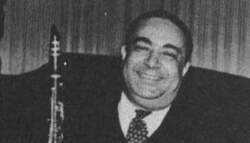
New Orleans clarinetist Jimmie Noone was born on this day in 1895. He was considered one of the elite clarinet players in early jazz along with Johnny Dodds and Sidney Bechet (who later switched almost exclusively to the soprano saxophone). In contrast to those two, Noone's playing was considered "smoother" and "more romantic," and his playing became an influence for many players of the swing era. Maurice Ravel also indicated that his famous piece "Bolero" was in large part based on a Jimmy Noone solo.
Born on a farm near Cut Off, Louisiana, Noone's family moved to New Orleans in 1910. As a teenager Noone studied with Lorenzo Tio, Jr., a legendary music teacher in early twentieth century New Orleans. Eventually Noone got a regular gig playing with Freddie Keppard in the famous Olympia Band, and in 1917 moved to Chicago to play in the Original Creole Orchestra led by Keppard. That group broke up in 1918 and Noone became a member of King Oliver's band, where he played for two years. His next musical employer was "Doc" Cook and his Dreamland Orchestra, with whom he played for six years before starting his own group.
In 1927 Noone fronted his own group for the first time at the Apex Club in Chicago. He hired pianist Earl Hines for his group and recorded on the Brunswick label beginning in 1928. His record "Four or Five Times" was a best seller. During his time fronting Jimmie Noone's Apex Club Orchestra a young clarinetist named Benny Goodman was often in the audience.
During the 1930s Noone worked steadily and even tried fronting a big band featuring vocalist Joe Williams for a short time, but soon returned to his small ensemble roots. In the 1940s he moved to California and played with trombonist "Kid" Ory's popular New Orleans style revival band, making several appearances on Orson Welles' radio program. Noone signed a contract with Capitol Records in 1944, but died suddenly and unexpectedly from a heart attack in April of that year. That August a memorial concert sponsored by the Musician's Congress was organized to benefit Noone's family.
Jimmie Noone is remembered as a talented musician that performed with and led popular jazz groups throughout his lifetime, and an important influence on a younger generation of jazz artists.
Here is a link to Noone's Apex Club Orchestra's 1928 recording of "Four or Five Times" with Noone on clarinet and Earl Hines at the piano:
"FOUR OR FIVE TIMES"
Born on a farm near Cut Off, Louisiana, Noone's family moved to New Orleans in 1910. As a teenager Noone studied with Lorenzo Tio, Jr., a legendary music teacher in early twentieth century New Orleans. Eventually Noone got a regular gig playing with Freddie Keppard in the famous Olympia Band, and in 1917 moved to Chicago to play in the Original Creole Orchestra led by Keppard. That group broke up in 1918 and Noone became a member of King Oliver's band, where he played for two years. His next musical employer was "Doc" Cook and his Dreamland Orchestra, with whom he played for six years before starting his own group.
In 1927 Noone fronted his own group for the first time at the Apex Club in Chicago. He hired pianist Earl Hines for his group and recorded on the Brunswick label beginning in 1928. His record "Four or Five Times" was a best seller. During his time fronting Jimmie Noone's Apex Club Orchestra a young clarinetist named Benny Goodman was often in the audience.
During the 1930s Noone worked steadily and even tried fronting a big band featuring vocalist Joe Williams for a short time, but soon returned to his small ensemble roots. In the 1940s he moved to California and played with trombonist "Kid" Ory's popular New Orleans style revival band, making several appearances on Orson Welles' radio program. Noone signed a contract with Capitol Records in 1944, but died suddenly and unexpectedly from a heart attack in April of that year. That August a memorial concert sponsored by the Musician's Congress was organized to benefit Noone's family.
Jimmie Noone is remembered as a talented musician that performed with and led popular jazz groups throughout his lifetime, and an important influence on a younger generation of jazz artists.
Here is a link to Noone's Apex Club Orchestra's 1928 recording of "Four or Five Times" with Noone on clarinet and Earl Hines at the piano:
"FOUR OR FIVE TIMES"
TODAY IN JAZZ HISTORY - April 22nd
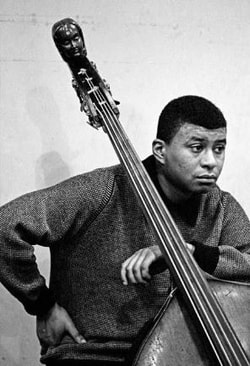
Bassist Paul Chambers was born on April 22, 1935 in Pittsburgh, Pennsylvania but he grew up in the Detroit area. Chambers began playing music on low brass instruments and switched to the string bass at around age 14. By the time he was 17 he was taking bass lessons from Gaston Brohan, the principal bassist for the Detroit Symphony.
Chambers left Detroit and moved to New York City in his late teens at the invitation of tenor saxophonist Paul Quinichette. Soon he was playing and touring with Quinichette, trombonist Bennie Green, pianist George Wallington and the trombone duo of J.J. Johnson and Kai Winding. In 1955 Paul Chambers began playing with Miles Davis’ quintet and won the “New Star Award” from DownBeat magazine in 1956. Chambers stayed with Davis through 1963 and appeared on many of his important albums of the period, including “Kind of Blue” where Chambers plays the head on the tune So What.
In addition to his time with Davis, Chambers was widely recorded on some of the most memorable records of the period. These include John Coltrane’s “Giant Steps,” Thelonious Monk’s “Brilliant Corners” and Oliver Nelson’s “The Blues and the Abstract Truth.” Coltrane wrote and recorded a tune dedicated to Paul Chambers called Mr. P.C.
Chambers battled drug and alcohol addiction throughout his adult life and it took a significant toll on his health. In 1968 he was hospitalized and it was discovered that he had tuberculosis. His addictions had weakened his ability to fight off the disease and he passed away on January 4, 1969 at the age of 33.
Paul Chambers was noted for his bowed solo improvisations. Here is a link to Chambers playing a bowed solo on the jazz standard Green Dolphin Street:
"ON GREEN DOLPHIN STREET"
Chambers left Detroit and moved to New York City in his late teens at the invitation of tenor saxophonist Paul Quinichette. Soon he was playing and touring with Quinichette, trombonist Bennie Green, pianist George Wallington and the trombone duo of J.J. Johnson and Kai Winding. In 1955 Paul Chambers began playing with Miles Davis’ quintet and won the “New Star Award” from DownBeat magazine in 1956. Chambers stayed with Davis through 1963 and appeared on many of his important albums of the period, including “Kind of Blue” where Chambers plays the head on the tune So What.
In addition to his time with Davis, Chambers was widely recorded on some of the most memorable records of the period. These include John Coltrane’s “Giant Steps,” Thelonious Monk’s “Brilliant Corners” and Oliver Nelson’s “The Blues and the Abstract Truth.” Coltrane wrote and recorded a tune dedicated to Paul Chambers called Mr. P.C.
Chambers battled drug and alcohol addiction throughout his adult life and it took a significant toll on his health. In 1968 he was hospitalized and it was discovered that he had tuberculosis. His addictions had weakened his ability to fight off the disease and he passed away on January 4, 1969 at the age of 33.
Paul Chambers was noted for his bowed solo improvisations. Here is a link to Chambers playing a bowed solo on the jazz standard Green Dolphin Street:
"ON GREEN DOLPHIN STREET"
TODAY IN JAZZ HISTORY - April 21st
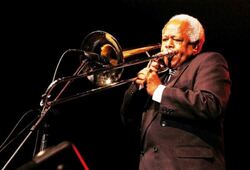
Trombonist, composer and arranger Slide Hampton was born in Jeannette, Pennsylvania on April 21, 1932. His given name was Locksley Wellington Hampton and he was one of twelve children. The family moved from Pennsylvania to Indianapolis, Indiana in 1938 where he played in his father’s jazz band. Young Slide Hampton was one of the few trombone players to play “backwards” as he was given a “left handed” set up when he was first introduced to the instrument and never changed.
By the time he was twenty years old, Slide Hampton was playing at Carnegie Hall with the orchestra led by Lionel Hampton (no relation). Between 1957 and 1959 he played with Maynard Ferguson’s band and contributed charts like Three Little Foxes, The Fugue and Slide’s Derangement to the book. Later he would work with bands lied by Thad Jones and Mel Lewis, Art Blakey, Tadd Dameron and Max Roach. In 1958 he appeared on an album with an entire stable of well-known jazz trombonists on the album “Melba Liston and her ‘Bones.”
In 1968 he toured with Woody Herman’s Herd and ended up settling in Europe, where he lived for the next nine years. In 1981 Hampton was artist-in-residence at Harvard University and also spent time teaching at the University of Massachusetts, DePaul University and at Indiana State University. During this period he also led a group known as Slide Hampton’s World of Trombones which featured nine trombones and a three-piece rhythm section.
In 1998 Hampton won a Grammy for Best Arrangement Accompanying a Vocalist for Cotton Tail, performed by Dee Dee Bridgewater. The American National Endowment for the Arts honored Hampton as an NEA Jazz master in 2005. In 2009 Slide Hampton premiered a new composition titled A Tribute to African-American Greatness that honored Nelson Mandela, Oprah Winfrey, Tiger Woods, Venus and Serena Williams and Barack Obama. Slide Hampton passed away on November 18, 2021 at the age of 89.
Here is a link to a track from Hampton’s 1979 “World of Trombones” album featuring Bill Watrous:
"MOMENT'S NOTICE"
By the time he was twenty years old, Slide Hampton was playing at Carnegie Hall with the orchestra led by Lionel Hampton (no relation). Between 1957 and 1959 he played with Maynard Ferguson’s band and contributed charts like Three Little Foxes, The Fugue and Slide’s Derangement to the book. Later he would work with bands lied by Thad Jones and Mel Lewis, Art Blakey, Tadd Dameron and Max Roach. In 1958 he appeared on an album with an entire stable of well-known jazz trombonists on the album “Melba Liston and her ‘Bones.”
In 1968 he toured with Woody Herman’s Herd and ended up settling in Europe, where he lived for the next nine years. In 1981 Hampton was artist-in-residence at Harvard University and also spent time teaching at the University of Massachusetts, DePaul University and at Indiana State University. During this period he also led a group known as Slide Hampton’s World of Trombones which featured nine trombones and a three-piece rhythm section.
In 1998 Hampton won a Grammy for Best Arrangement Accompanying a Vocalist for Cotton Tail, performed by Dee Dee Bridgewater. The American National Endowment for the Arts honored Hampton as an NEA Jazz master in 2005. In 2009 Slide Hampton premiered a new composition titled A Tribute to African-American Greatness that honored Nelson Mandela, Oprah Winfrey, Tiger Woods, Venus and Serena Williams and Barack Obama. Slide Hampton passed away on November 18, 2021 at the age of 89.
Here is a link to a track from Hampton’s 1979 “World of Trombones” album featuring Bill Watrous:
"MOMENT'S NOTICE"
TODAY IN JAZZ HISTORY - April 20th
|
Latin jazz superstar Ernest Anthony Puente, Jr., better known as Tito Puente, was born in the Spanish Harlem neighborhood of New York City on April 20, 1923. As a child Puente’s neighbors complained about the youngsters constant banging on pots and pans, but he started his musical journey taking piano lessons at the age of seven. By age ten, inspired by drummer Gene Krupa, he had switched to percussion. At one point in his teens Tito considered a career as a dancer, but an ankle injury prevented him from pursuing that dream. After having lost his drummer to the military draft, bandleader Machito hired Tito Puente to replace him in his popular orchestra and Puente’s musical career was launched.
Tito Puente served in the south Pacific for three years in the United States Navy during World War II, and upon his detachment from the service studied music theory, conducting and orchestration at the Julliard School of Music. He achieved his greatest popularity in the 1950s as the leader of his own band which was one of the three great orchestras that performed regularly for dancers at New York’s Palladium Ballroom on the corner of 53rd and Broadway. Along with Tito Puente’s ensemble, the bands led by Tito Rodriguez and Machito fueled the mambo craze of the 1950s and helped to popularize Afro-Cuban and Caribbean music forms such as the cha-cha-cha, mambo and son. Many notable jazz musicians of the era could be found at the Palladium including Count Basie, Paul Desmond, Duke Ellington, Buddy Rich, Dizzy Gillespie and Billie Holiday. In 1969 Puente received the Key to New York City from mayor John Lindsay and the Billboard Latin Music Lifetime Achievement Award in 1995. He also received an honorary doctorate from the Berklee College of Music in 1995. In 1990 he was honored with a star on the Hollywood Walk of Fame and in 1999 was inducted into the International Latin Music Hall of Fame. Tito Puente’s most famous composition is Oye Como Va, written in 1963 and popularized by Carlos Santana in 1970. Puente passed away in 2000 after suffering a massive heart attack and was posthumously awarded a Grammy Lifetime Achievement Award in 2003. Here is a link to percussionist Tito Puente playing live in concert: "OYE COMO VA" |
TODAY IN JAZZ HISTORY - April 19th
|
The album “Pharoah Sanders Live” was recorded over four days between April 16th and April 20th, 1981 at The Maiden Voyage in Los Angeles and at the Kuumbwa Jazz Center in Santa Cruz, California. The original issue included four tracks, three of which were composed by Sanders and one by Richard Rodgers. The record was released in 1982 on the Theresa label.
Pharoah Sanders was an avant garde tenor saxophonist who was born Ferrell Lee Sanders in Arkansas in 1940. He came to prominence in the 1960s playing with Sun Ra (who encouraged him to go by the name Pharoah), Don Cherry, Eric Dolphy and John Coltrane. As a leader he released more than thirty albums and worked extensively with vocalist Leon Thomas and pianist Alice Coltrane. Much of his playing has been described as “spiritual” and is based on his understanding of religious concepts such as Karma and Tawhid. Sanders is considered a disciple of John Coltrane largely for this reason. Fellow saxophonist Albert Ayler once said that “Trane was the Father, Pharoah was the Son, I am the Holy Ghost.” Commenting on the record “Pharoah Sanders Live,” critic Scott Yanow wrote “The musicianship is at a high level and, although Sanders does not shriek as much as one might hope (the Trane-ish influence was particularly strong during this relatively mellow period), he is in fine form.” The personnel are Sanders on tenor saxophone, John Hicks at the piano, Walter Booker playing bass and Idris Muhammad on drums. Here is a link to “Pharoah Sanders Live:” "PHAROAH SANDERS LIVE" |
TODAY IN JAZZ HISTORY - April 18th
|
Pianist, composer, arranger, bandleader and music educator Hal Galper was born in Salem, Massachusetts on April 18, 1938. Galper started playing classical piano as a boy, but concentrated on jazz during his time at the Berklee College of Music from 1955 until 1958. He hung out at Herb Pomeroy’s Stable Club in Boston listening to musicians like Sam Rivers and Jaki Byard before eventually being hired as the house pianist. Galper also played piano in Herb Pomeroy’s band.
In the 1960s Galper played with Chet Baker and Stan Getz and served as the accompanist for vocalists Joe Williams and Anita O’Day. In 1973 Galper replaced George Duke as keyboardist for the Cannonball Adderley group where he remained until Adderley’s death in 1975. During the 1970s he could be heard regularly playing at jazz clubs in New York City and Chicago, and he often appeared with guitarist John Scofield. Hal Galper spent the 1980s as pianist for alto saxophonist Phil Woods. In the 1990s he spent much of his time on the road touring with his trio which included bassist Jeff Johnson and drummer Steve Ellington. Galper has released 26 albums as a leader to date, including six with the Seattle-based Origin Records label since 2007. He has also appeared as a sideman with Randy Brecker, Nat Adderley and Tom Harrell. Hal Galper regularly contributes articles to DownBeat magazine and is on the faculty of both Purchase College and the New School for Jazz and Contemporary Music. Here is a link to Hal Galper performing with Seattleites Jeff Johnson and John Bishop in Los Angeles in 2014: "ASCENDANT" |
TODAY IN JAZZ HISTORY - April 17th
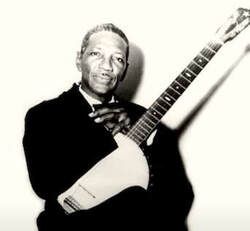
Guitarist and banjo player Johnny St. Cyr was born in New Orleans, Louisiana on April 17, 1890. He played in several of the “name bands” in his hometown during the early 20th century before moving to Chicago in 1923. St. Cyr is best-known for his time as a member of Louis Armstrong’s Hot Five and Hot Seven bands. He also was a member of Jelly Roll Morton’s Red Hot Peppers and composed the traditional jazz standard Oriental Strut.
Riding the wave of the traditional jazz and Dixieland revivals after World War II, Johnny St. Cyr led his own group, Johnny St. Cyr and his Hot Five, throughout most of the 1950s. From 1961 until his death in 1966 St. Cyr led a band called The Young Men of New Orleans which performed regularly at Disneyland. He passed away in Los Angeles on June 17, 1966 and is buried in that city.
Here is a link to Johnny St. Cyr playing solo guitar. The recording was made by Alan Lomax as a part of his Jelly Roll Morton project for the United States Library of Congress in 1938:
"GUITAR BLUES"
Riding the wave of the traditional jazz and Dixieland revivals after World War II, Johnny St. Cyr led his own group, Johnny St. Cyr and his Hot Five, throughout most of the 1950s. From 1961 until his death in 1966 St. Cyr led a band called The Young Men of New Orleans which performed regularly at Disneyland. He passed away in Los Angeles on June 17, 1966 and is buried in that city.
Here is a link to Johnny St. Cyr playing solo guitar. The recording was made by Alan Lomax as a part of his Jelly Roll Morton project for the United States Library of Congress in 1938:
"GUITAR BLUES"
TODAY IN JAZZ HISTORY - April 16th
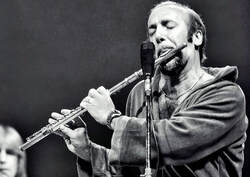
One of the best-known jazz flute players was born on April 16, 1930 in the borough of Brooklyn in New York City. His given name at birth was Herbert Jay Solomon, but he is known to his fans as Herbie Mann. Mann also played tenor saxophone, clarinet and bass clarinet early in his career, but became one of the first jazz musicians to specialize in flute. He was also a pioneer in the incorporation of world musics into his jazz performances.
After beginning his professional career playing in the Catskills while still in his teens, Mann became known as a bop flutist playing with the likes of saxophonist Phil Woods during the 1950s. In the 1960s Herbie Mann began to incorporate Afro-Cuban and Brazilian influences into his performances, playing and recording with Antonio Carlos Jobim, Chick Corea and guitarist Baden Powell. In 1969 he released the hit album “Memphis Underground.”
In the 1970s Mann’s recorded output touched on elements of reggae, funk, disco and rock and these records were often denigrated by jazz critics as being too commercially oriented. During this period Mann worked with musicians such as Duane Allman, Miroslav Vitous, Donald “Duck” Dunn and Larry Coryell. During the decade Mann also started his own record label, Embryo Records, which released work by Phil Woods, Ron Carter and Vitous.
Herbie Mann continued touring, recording and performing throughout the 1980s and 1990s, appearing at the Newport Jazz Festival and the New Orleans Jazz and Heritage Festival. Mann passed away in 2003 at the age of 73 after a long battle with prostate cancer.
Here is a link to Herbie Mann playing one of his best-known compositions live at the 1989 Newport Jazz Festival:
"MEMPHIS UNDERGROUND"
After beginning his professional career playing in the Catskills while still in his teens, Mann became known as a bop flutist playing with the likes of saxophonist Phil Woods during the 1950s. In the 1960s Herbie Mann began to incorporate Afro-Cuban and Brazilian influences into his performances, playing and recording with Antonio Carlos Jobim, Chick Corea and guitarist Baden Powell. In 1969 he released the hit album “Memphis Underground.”
In the 1970s Mann’s recorded output touched on elements of reggae, funk, disco and rock and these records were often denigrated by jazz critics as being too commercially oriented. During this period Mann worked with musicians such as Duane Allman, Miroslav Vitous, Donald “Duck” Dunn and Larry Coryell. During the decade Mann also started his own record label, Embryo Records, which released work by Phil Woods, Ron Carter and Vitous.
Herbie Mann continued touring, recording and performing throughout the 1980s and 1990s, appearing at the Newport Jazz Festival and the New Orleans Jazz and Heritage Festival. Mann passed away in 2003 at the age of 73 after a long battle with prostate cancer.
Here is a link to Herbie Mann playing one of his best-known compositions live at the 1989 Newport Jazz Festival:
"MEMPHIS UNDERGROUND"
TODAY IN JAZZ HISTORY - April 15th
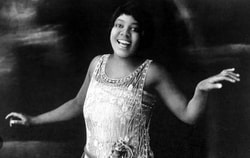
The Empress of the Blues, Bessie Smith, was born in Chattanooga, Tennessee on April 15, 1894. She was the most popular blues singer of the 1920s. Bessie’s father, a preacher, died when she was so young that she did not remember him, and her mother passed away before Bessie was nine. Bessie and her brother Andrew would often sing and dance on the streets of Chattanooga to make money for the family, which was now headed by her older sister Viola.
In 1912 another of Bessie Smith’s brothers, Clarence arranged to have her audition for a travelling show of which he was a member. Bessie was hired as a dancer because the troupe already had a singer - the blues great Ma Rainey. Rainey did not need to teach Bessie to sing (she could already do that!), but she did help her improve her stage presence and by 1913 Bessie had formed her own act and was performing at a theater in Atlanta.
In the early 1920s sales of fellow blues singer Mamie Smith’s record Crazy Blues were so impressive that record labels went in search of other such talents. By now Bessie Smith had acquired quite a following in the south and along the east coast of the United States. She was signed by Columbia Records and her first studio date for them was on February 15, 1923. Soon her Downhearted Blues was a best-seller and her popularity was growing nationwide. Bessie Smith was signed by the Theater Owners Booking Association and she soon became their top performer. Smith became the highest paid Black entertainer of the 1920s and travelled the country in her own 72-foot railroad car.
During her career Smith made 160 records for Columbia and was often backed by some of the premier musicians of the era including James P. Johnson, Louis Armstrong, Coleman Hawkins and Fletcher Henderson. In 1929 Bessie Smith appeared on film in a short entitled “St. Louis Blues” in which she sang the title tune by W.C. Handy. That same year she appeared on Broadway in the short-lived musical “Pansy.” Although her career was adversely affected by the Great Depression, she did make some recording for Okeh Records in the 1930s. Some of the records attempted to cater to the changing tastes of the listening public with nods to a more swing-oriented repertoire. On these sides she appeared with Jack Teagarden, Chu Berry and Benny Goodman.
Bessie Smith died on September 26, 1937 after being severely injured in an automobile accident on U.S. Route 61 south of Memphis, Tennessee.
Here is a link to that 1929 filmed performance of Bessie Smith singing St. Louis Blues:
"ST. LOUIS BLUES"
In 1912 another of Bessie Smith’s brothers, Clarence arranged to have her audition for a travelling show of which he was a member. Bessie was hired as a dancer because the troupe already had a singer - the blues great Ma Rainey. Rainey did not need to teach Bessie to sing (she could already do that!), but she did help her improve her stage presence and by 1913 Bessie had formed her own act and was performing at a theater in Atlanta.
In the early 1920s sales of fellow blues singer Mamie Smith’s record Crazy Blues were so impressive that record labels went in search of other such talents. By now Bessie Smith had acquired quite a following in the south and along the east coast of the United States. She was signed by Columbia Records and her first studio date for them was on February 15, 1923. Soon her Downhearted Blues was a best-seller and her popularity was growing nationwide. Bessie Smith was signed by the Theater Owners Booking Association and she soon became their top performer. Smith became the highest paid Black entertainer of the 1920s and travelled the country in her own 72-foot railroad car.
During her career Smith made 160 records for Columbia and was often backed by some of the premier musicians of the era including James P. Johnson, Louis Armstrong, Coleman Hawkins and Fletcher Henderson. In 1929 Bessie Smith appeared on film in a short entitled “St. Louis Blues” in which she sang the title tune by W.C. Handy. That same year she appeared on Broadway in the short-lived musical “Pansy.” Although her career was adversely affected by the Great Depression, she did make some recording for Okeh Records in the 1930s. Some of the records attempted to cater to the changing tastes of the listening public with nods to a more swing-oriented repertoire. On these sides she appeared with Jack Teagarden, Chu Berry and Benny Goodman.
Bessie Smith died on September 26, 1937 after being severely injured in an automobile accident on U.S. Route 61 south of Memphis, Tennessee.
Here is a link to that 1929 filmed performance of Bessie Smith singing St. Louis Blues:
"ST. LOUIS BLUES"
TODAY IN JAZZ HISTORY - April 14th
|
One of the important figures in the west coast jazz movement was trumpeter and flugelhorn player Shorty Rogers. Rogers was also well-respected as a composer, arranger and bandleader. Shorty Rogers was born in Great Barrington, Massachusetts on April 14, 1924.
Some of Shorty Rogers’ earliest professional gigs were with vibraphonist Red Norvo. In the late 1940s he worked with Woody Herman and was a member of the Stan Kenton Innovations Orchestra in 1950 and 1951, with whom he made three albums. 1951 was also the year Rogers made his first recordings as a leader. He would record more than a dozen albums as a leader during the decade on both the Atlantic and RCA Victor labels, including tributes to Count Basie and Richard Rodgers and collaborations with Bud Shank, Jimmy Giuffre, Perez Prado, Eartha Kitt and Shelly Manne. He also arranged the music for Chet Baker’s 1954 album “Chet Baker and Strings,” as well as for records by Perez Prado and Eartha Kitt. Shorty Rogers recorded eight records between 1960 and 1963 before taking a twenty-year hiatus from recording to concentrate on his arranging skills. During the 1960s he arranged music for Les Brown, Bobby Darin, Terry Gibbs, Vince Guaraldi, Lena Horne, Peggy Lee, Mel Torme, Herb Alpert and the Tijuana Brass and The Monkees. He also contributed charts recorded by the Buddy Rich band on the albums “Big Swing Face” and “Buddy and Soul.” Rogers returned to recording and leading a band in 1983 and made six more records before his death from melanoma in 1994 at the age of 70. The music he wrote for his own ensembles can be classified in the cool jazz or west coast jazz categories, but definitely includes occasional influences of the avant garde and often shows an awareness of the big band style of Count Basie, whom Rogers always cited as an important influence. Here is a link to Shorty Rogers and his Giants in a 1962 small group setting playing one of his compositions: "MARTIANS GO HOME" |
TODAY IN JAZZ HISTORY - April 13th
|
Overton Berry, a kindly pianist who lived in Seattle from 1945 until his death in 2020, saw and did it all, from lounge gigs to major jazz festivals, from one-nighters to years-long extended engagements, from taverns to opera houses, from department stores to city parks, and from solo shows to leading trios, quartets, and even bigger ensembles. In the 1950s Berry joined Seattle's segregated "Negro Musicians Union," the American Federation of Musicians (AFM) Local 493, but after integration came in 1958, he joined the suddenly inclusive AFM Local 76. Berry nurtured scores of local players (including guitarist Larry Coryell and jazz vocalist Diane Schuur) and jammed with plenty of national jazz heavyweights. The pianist did USO tours (including in Vietnam in 1968), was one of the few Seattle musicians who found employment on the fairgrounds in 1962 during the Century 21 World's Fair, held down a fabled gig at the Doubletree Inn in Tukwila from 1969-1974, played Festival '71 (the precursor to Bumbershoot), was spotlighted on numerous TV shows, and cut albums that have become treasures to hip-hop DJs and producers. The father of four, Berry once taught reading to deprived Seattle kids. In 2012, the Northwest piano legend was inducted into the Seattle Jazz Hall of Fame.
Overton Berry, Jr. was born on April 13, 1936, in Houston, Texas. His family moved to Seattle in 1945 where young Overton took classical piano lessons at Cornish and attended Garfield High School. During his Garfield years, he developed a fondness for the smooth jazz piano stylings of George Shearing and the work of pianist Lennie Tristano, and he also joined his first jazz trio, with classmates guitarist John Smith and bassist Bill Lee. Berry began gigging around Seattle in the mid-1950s and continued to do so until his death in 2020. In the 1960s he backed vocalist Peggy Lee at the 1962 Seattle World’s Fair and also opened a jazz club called the House of Entertainment on Occidental South in the Pioneer Square district. In May 1962 the club relocated to 1213 1st Avenue, where it continued to offer dancing and "hot espresso and cool jazz" nightly. Among the big-time players who dropped in to jam were members of Miles Davis's band, Stan Kenton's Orchestra, Les McCann, and George Shearing's percussion player, Armando Peraza. In 1968 he and Chuck Metcalf (bass) and Bill Kotick (drums) formed the Overton Berry Trio, and they were hired to tour military bases around the area (including Fort Lewis and Fort Lawton), performing in a USO show. Then, matched with singer Gene Stridel, their manager booked them on a bigger tour -- through South Vietnam. War-zone tour completed, the trio returned home safely, and then a new opportunity arose, via an audition for the house-band gig at a new Doubletree Inn hotel/restaurant/lounge at the Southcenter shopping center in Tukwila. Within weeks the place was a roaring success, and by August, Berry had inaugurated his special Jazz Showcase Sundays, in which various luminaries of Seattle's old jazz scene including Joe Brazil, Jabo Ward, Fred Radke and Floyd Standifer would appear over the following months and years. In the 1980s, Berry took to gigging a lot in Japan. By the 1990s he was in Hong Kong, and in 2000, in Thailand. In more recent times, the pianist performed concerts at Seattle's prestigious Seattle Town Hall and around the Puget Sound area. Overton Berry, who was inducted into the Seattle Jazz Hall of Fame in April 2012, died on October 19, 2020. His son Sean told The Seattle Times that his father had suffered from heart disease for several years and died peacefully at home. He was 84. He left a legacy that seems to be firmly established among both longtime fans and a whole new generation of music lovers. [This bio includes excerpts from historylink.org] Here is a link to Overton Berry playing a Beatle’s tune: "HEY JUDE" |
TODAY IN JAZZ HISTORY - April 12th
|
Herbie Hancock is a true icon of modern music. Throughout his explorations, he has transcended limitations and genres while maintaining his unmistakable voice. With an illustrious career spanning five decades and 14 Grammy Awards, including Album of the Year for “River: The Joni Letters,” he continues to amaze audiences across the globe. Herbie Hancock was born in Chicago on April 12, 1940. There are few artists in the music industry who have had more influence on acoustic and electronic jazz and R&B than Herbie Hancock. Miles Davis said in his autobiography, “Herbie was the step after Bud Powell and Thelonious Monk, and I haven’t heard anybody yet who has come after him.”
Herbie was a child piano prodigy who performed a Mozart piano concerto with the Chicago Symphony Orchestra at age 11. He began playing jazz in high school, initially influenced by Oscar Peterson and Bill Evans. He also developed a passion for electronics and science, and double-majored in music and electrical engineering at Grinnell College. In 1960, Herbie was discovered by trumpeter Donald Byrd. After two years of session work with Byrd as well as Phil Woods and Oliver Nelson, he signed with Blue Note as a solo artist. His 1963 debut album, “Takin’ Off,” was an immediate success, producing the hit Watermelon Man. His solo career blossomed with classic albums including “Maiden Voyage” and “Speak Like a Child.” He composed the score to Michelangelo Antonioni’s 1966 film “Blow Up,” which led to a successful career in feature film and television music. In 1963, Miles Davis invited Herbie to join the Miles Davis Quintet. During his five years with Davis, Herbie and his colleagues Wayne Shorter, Ron Carter, and Tony Williams recorded many classics, including E.S.P., Nefertiti and Sorceror. Later on, Herbie appeared on Davis’ groundbreaking “In a Silent Way.”After leaving Davis, Herbie put together a new band called The Headhunters and, in 1973, recorded “Head Hunters.” With its crossover hit single “Chameleon,” it became the first jazz album to go platinum. By mid-decade, Herbie was playing for stadium-sized crowds all over the world and had no fewer than four albums in the pop charts at once. In total, Herbie had 11 albums in the pop charts during the 1970s. His ’70s output inspired and provided samples for generations of hip-hop and dance music artists. Herbie also stayed close to his love of acoustic jazz in the ’70s, recording and performing with VSOP and in duet settings with Chick Corea and Oscar Peterson. In 1980, Herbie introduced the trumpeter Wynton Marsalis to the world as a solo artist, producing his debut album and touring with him as well. Herbie won an Oscar in 1986 for scoring the film “‘Round Midnight”, in which he also appeared as an actor. Numerous television appearances over the years led to two hosting assignments in the 1980s: “Rock School” on PBS and Showtime’s “Coast to Coast”. In 2007, Hancock recorded and released ‘River: The Joni Letters’, a tribute to longtime friend and collaborator Joni Mitchell featuring Wayne Shorter, guitarist Lionel Loueke and bassist Dave Holland. He enlisted vocalists Norah Jones, Tina Turner, Corinne Bailey Rae, Luciana Souza, Leonard Cohen and Mitchell herself to perform songs she wrote or was inspired by. The album received glowing reviews and was a year-end Top 10 choice for many critics. It also garnered three Grammy Awards, including Album of the Year; Herbie is one of only a handful of jazz musicians ever to receive that honor. In 2010 Hancock released the critically-acclaimed CD “Herbie Hancock’s The Imagine Project,” winner of two 20ll Grammy Awards for Best Pop Collaboration and Best Improvised Jazz Solo. Utilizing the universal language of music to express its central themes of peace and global responsibility, the “Imagine Project” was recorded around the world and features a stellar group of musicians including Jeff Beck, Seal, Pink, Dave Matthews, The Chieftains, Lionel Loueke, Oumou Sangare, Konono #l, Anoushka Shankar, Chaka Khan, Marcus Miller, Derek Trucks, Susan Tedeschi, Tinariwen, and Ceu. Herbie Hancock also maintains a thriving career outside the performing stage and recording studio. Recently named by the Los Angeles Philharmonic as Creative Chair For Jazz, he currently also serves as Institute Chairman of the Herbie Hancock Institute of Jazz, the foremost international organization devoted to the development of jazz performance and education worldwide. Hancock is also a founder of The International Committee of Artists for Peace, and was awarded the much esteemed “Commandeur des Arts et des Lettres” by French Prime Minister Francois Fillon. In July of 2011 Hancock was designated a UNESCO Goodwill Ambassador by UNESCO Director-General Irina Bokova. In December of 2013, Hancock was the recipient of a prestigious Kennedy Center Honor, and in 2014 he was was named the 2014 Norton Professor Of Poetry at Harvard University, completing his lectures series, “The Ethics Of Jazz,” as part of the Charles Eliot Norton Lecture Series for a period of six weeks. His memoirs, “Herbie Hancock: Possibilities,” were published by Viking in 2014, and in February 2016 he was awarded the Grammy Lifetime Achievement Award. Now in the sixth decade of his professional life, Herbie Hancock remains where he has always been: in the forefront of world culture, technology, business and music. Though one can’t track exactly where he will go next, he is sure to leave his inimitable imprint wherever he lands. [This bio excerpted from herbiehancock.com] Here is a link to a video where Herbie Hancock explains to Elvis Costello the development of his composition Watermelon Man: "WATERMELON MAN" |
TODAY IN JAZZ HISTORY - April 11th
|
Dominic James “Nick” LaRocca was born in New Orleans on April 11, 1889 and went on to play cornet and trumpet and lead the Original Dixieland Jazz Band. LaRocca also composed the early jazz standard Tiger Rag. In addition, LaRocca was a member of the ODJB when they made the first jazz record in 1917. Unfortunately, LaRocca’s later self-aggrandizement and claim that jazz was wholly a creation of white musicians and that Blacks “had nothing at all” to do with the creation of the music damaged his credibility and reputation.
LaRocca, of Sicilian descent, taught himself to play cornet covertly because his father did not want Nick to become a musician. Nonetheless, from 1910 until 1916 Nick LaRocca was a regular member of bands led by the popular Papa Jack Laine. He was not considered one of the more creative members of the group but was noted for his solid lead playing and his endurance which allowed him to play several gigs per day. In 1916 he was asked to come to Chicago as a replacement in a band led by Johnny Stein. That band morphed into the Original Dixieland Jazz Band and made the first commercial recordings of jazz the following year in New York City for Victor Records. The record, featuring Livery Stable Blues, became extremely popular, sold well, and made the ODJB into almost overnight national celebrities. This led many other New Orleans musicians and bands to come to New York to try to follow in the footsteps of LaRocca and the ODJB’s success. LaRocca did not take kindly to the competition and was accused of trying to eliminate it with underhanded tactics. For instance, on one occasion he was accused to slashing the heads of the drums played by Ragbaby Stevens after his band had defeated the ODJB at a battle of the bands. After World War I LaRocca led the ODJB on successful tours of the United States and Europe during the early 1920s before experiencing a “nervous breakdown” and retiring from music. He reformed the ODJB in 1936 claiming that they were the originators of jazz, but the band broke up a year later due to personality differences. In the 1950s Nick LaRocca “wrote numerous vehement letters to newspapers, radio, and television shows, stating that he was the true and sole inventor of jazz music, damaging his credibility and provoking a backlash against him, his reputation and career.” LaRocca passed away in February 1961 at the age of 71. Here is a link to The Original Dixieland Jazz Band playing LaRocca’s best-known composition: "TIGER RAG" |
TODAY IN JAZZ HISTORY - April 10th
|
French pianist and composer Claude Bolling was born on April 10, 1930, in Cannes, France, in a hotel where his father was the manager. His mother played piano, and Claude proved to be a prodigy. He spent most of his life in Paris, but in World War II, during the occupation, his mother took him to live in Nice. “During World War II, when I was a kid, jazz was all but banned by the Nazis in my country,” he told The Hartford Courant in 1991. “So I got most of my jazz from 78 r.p.m. recordings.”
At 14, he won an amateur jazz piano contest. At 15, returning to Paris at the end of the war, he became the youngest member of the French Society of Authors, Composers and Publishers of Music. He played with various jazz stars who came through Paris and had his own septet. He particularly admired Duke Ellington, and in 1956 he formed a big band to play Ellington’s music. In the 1960s, the two would meet and become friends. “Among the lessons I learned from Ellington,” Mr. Bolling said in 1991, “is that you write specifically for the personality of the instrumental soloists.” Bolling played and composed in a variety of styles — the Claude Bolling Big Band played regularly for years at the Méridien Etoile hotel in Paris — and wrote the scores for dozens of movies and television shows in both France and Hollywood. In 1975 he recorded his composition “Suite for Flute and Jazz Piano” for Columbia Records and the album spent more than 10 years on the Billboard classical album chart. Although the record drew criticism from both classical and jazz purists as, in the words of one article, “watered-down jazz with a thin classical veneer,” the listening public loved it. News accounts from the mid-1980s, noting that it was still on the charts after a decade, said that only the Pink Floyd album “The Dark Side of the Moon,” released in 1973, had achieved such longevity at that point. Bolling made numerous recordings and performed extensively in France, the United States and elsewhere. He passed away in 2020 at the age of 90. [This article is excerpted from the New York Times] Here is a link to one movement from Bolling and Rampal’s “Suite for Flute and Jazz Piano:” "BAROQUE AND BLUE, PART ONE" |
TODAY IN JAZZ HISTORY - April 9th
|
Pianist, organist and composer Barney McClure, born April 9, 1941 in Ohio, has been everywhere and done it all. Consider the following: Barney has performed and/or recorded with Ernestine Anderson, Mark Murphy, Eddie "Cleanhead" Vinson, Jimmy Witherspoon, Big Joe Turner, Don Shelton, Dee Daniels, Grady Tate, Herb Ellis, Barney Kessel, Larry Coryell, Mimi Fox, Joe Pass, Howard Roberts, Emily Remler, Bud Shank, Don Lanphere, Richie Cole, Harold Land, Scott Hamilton, Eddie "Lockjaw" Davis, Red Holloway, Buddy Tate, Sonny Stitt, Harry "Sweets" Edison, Kenny Wheeler, Shorty Rogers, Blue Mitchell, Bill Watrous, Milt Jackson, Terry Gibbs, Red Norvo, Gary Peacock, Billy Higgins and Jeff Hamilton. Barney has also backed such notables as Bob Hope, Bob Newhart, Professor Irwin Corey, George Kirby and Steve Allen.
McClure learned to arrange in the Army during the 1960s in Europe and continued in Hollywood for many years. His performances have taken him all over Europe, Japan, Australia, Mexico, Canada and the United States. You can hear Barney in the movies “Officer and a Gentleman” and on the soundtrack of “Mr. Holland’s Opus.” His book “There Is No Such Thing as a Mistake” is a "how-to" in improvisational jazz and is popular with teachers who use it as a curriculum guide and students who can use it as a self-help guide. For a period of time Barney McClure was the Mayor of Port Townsend, Washington where he helped establish the Port Townsend Jazz Festival, and followed this with a term as State Legislator in Washington State. [This bio is excerpted from originarts.com] Here is a link to the title track from a 2015 release featuring Barney McClure on organ with the Central Washington University Big Band. The arrangement is by Phil Kelly: "SHOW ME" |
TODAY IN JAZZ HISTORY - April 8th
|
Carmen McRae, one of the most influential vocalists in the history of jazz, was born on April 8, 1920 in Harlem. Both of Carmen’s parents were immigrants from Jamaica who filled their home with the music of Louis Armstrong and Duke Ellington. Carmen began piano lessons when she was eight years old and met Billie Holiday when she was 17. McRae considered Holiday to be her major influence throughout her career.
In her late teens Carmen McRae was discovered by the pianist Teddy Wilson and not too much later she was playing piano at Minton’s Playhouse. She was also singing as a chorus girl and supplementing her income as a secretary. At Minton’s she met Dizzy Gillespie, bassist Oscar Pettiford and drummer Kenny Clarke, whom she later married. McRae’s first prominent gig was as a pianist with Benny Carter’s band, and she later worked with Count Basie. She made her first recordings with the Mercer Ellington band in 1946 and 1947 before moving to Chicago in 1948. While there she played piano at several clubs in the Windy City. McRae returned to New York City in 1952 and got a record contract with Decca Records soon thereafter. While with Decca, she recorded several landmark LPs during the 1950s including two collaborations with Sammy Davis, Jr. and a record of songs by Noel Coward. In 1961 she recorded with Dave Brubeck and Louis Armstrong. She continued to perform at clubs throughout the world for the remainder of her career and was a regular at the Monterey Jazz Festival in California and made memorable appearances at the Montreux Jazz Festival in Switzerland and at the North Sea Jazz Festival with Duke Ellington. McRae moved to southern California in the late 1960s but still performed regularly in New York City, often at the Blue Note. Carmen McRae was nominated for seven Best Jazz Vocal Performance awards at the Grammys, won a NAACP Image Award in 1993 and was named a Jazz Master by the National Endowment for the Arts in 1994, the year of her death at age 74. Here is a link to Carmen McRae singing live in concert in 1986: "YESTERDAYS" |
TODAY IN JAZZ HISTORY - April 7th
|
Along with musicians J.J. Johnson, David Baker and Wes Montgomery, another jazz great from Indianapolis was trumpeter Freddie Hubbard who was born there on April 7, 1938. Hubbard started playing mellophonium and trumpet at Arsenal Technical High School and, after being heard and receiving a recommendation from a former Stan Kenton trumpeter, began studying privately with the principal trumpet of the Indianapolis Symphony. He also studied at the Arthur Jordan Conservatory of Music. While still in his teens he was playing gigs in his hometown with guitarist Wes Montgomery.
At the age of 20 Hubbard moved to New York City and before long was playing with jazz stars like Sonny Rollins, Slide Hampton, Eric Dolphy and Quincy Jones. Throughout his career Freddie Hubbard played on some of the great milestone jazz records of all time. The first of those was Ornette Coleman’s 1960 record “Free Jazz.” In addition, he was a sideman on Oliver Nelson’s “Blues and the Abstract Truth,” Herbie Hancock’s “Maiden Voyage” and Wayne Shorter’s “Speak No Evil.” Hubbard also played on several albums with John Coltrane in the early 1960s before replacing Lee Morgan in Art Blakey’s Jazz Messengers where he stayed until 1966. He recorded as a leader for the first time in 1960 with the Blue Note record “Open Sesame.” Freddie Hubbard reached his greatest popularity in the 1970s with a number of popular albums recorded for Creed Taylor’s CTI label, including the 1970 record “Red Clay.” He did, however, receive negative critical reviews for some of his albums later in the decade as they were deemed too pop-oriented. In 1977 Hubbard joined with Hancock, Shorter, Ron Carter and Tony Williams to form the quintet V.S.O.P. This group was a reunion of all the members of Miles Davis’ second great quintet, except for Hubbard. In the 1980s Hubbard was back leading his own group and often collaborating with saxophonist Joe Henderson. In 1992 Freddie Hubbard suffered a lip injury that required a lengthy hiatus from playing. He did return to playing later in the decade but continued to have health problems that curtailed his performance and recording schedule. Hubbard passed away in 2008 from complications caused by a heart attack. Freddie Hubbard was named an NEA Jazz Master in 2006. Here is a link to the title track from one of his best-known albums: "RED CLAY" |
TODAY IN JAZZ HISTORY - April 6th
|
Baritone saxophonist, composer, arranger and bandleader Gerry Mulligan was born April 6, 1927 in Queens, New York. Known for his light and delicate tone on the baritone saxophone, Mulligan was also important as a composer and arranger having written not only for himself and groups he led, but also for Claude Thornhill, Stan Kenton and Miles Davis. His quartet with trumpeter Chet Baker is considered by many to be the ultimate example of 1950s “west coast jazz.”
The youngest of four children, Gerry’s family moved often when he was growing up due to his father’s job. Gerry began learning clarinet while a student in Michigan, and later, while living in Reading, Pennsylvania in his early teens, he started taking private lessons and soon was playing clarinet and saxophone in local dance bands. While attending high school in Philadelphia Gerry organized a big band and was soon writing arrangements for his group as well as for the house band at radio station WCAU. He dropped out of high school during his senior year to pursue his dream of playing professionally with a touring band. In 1946 Mulligan moved to New York City and found work writing arrangements for Gene Krupa’s band, and later for Claude Thornhill’s innovative orchestra. Another arranger on Thornhill’s staff was Gil Evans, and before long Mulligan and Evans were sharing an apartment on 55th Street in Manhattan. That apartment became a regular hangout for young jazz musicians and the fertile ground that eventually produced the “Birth of the Cool” band led by Miles Davis that played music by Evans, John Lewis and Mulligan. The nonet, despite playing in the heart of New York City, became the birthplace of west coast jazz and their recordings are still influential today. In 1952 Gerry Mulligan moved to Los Angeles and began writing for the Stan Kenton Orchestra. Mulligan was spending his Monday nights playing at jam sessions in a small club on Wilshire Boulevard called The Haig. It was there that he met Chet Baker and the two started thinking about forming their own group. There was no piano at The Haig so necessity became the mother of innovation as they formed a quartet consisting of Mulligan on baritone sax, Baker on trumpet, Carson Smith playing bass and Chico Hamilton at the drums. This group created “improvised contrapuntal textures free from the rigid confines of a piano-enforced chordal structure. While novel at the time in sound and style, this ethos of contrapuntal group improvisation hearkened back to the formative days of jazz.” Soon the group’s dates at The Haig regularly sold out and their records were extremely popular. The quartet’s run ended abruptly when Mulligan was arrested on a narcotics charge and sentenced to six months at the Sheriff’s Honor Farm in 1953. Following his release, Mulligan continued to play in small group formats, including with valve trombonist Bob Brookmeyer, trumpeter Art Farmer, and saxophonists Zoot Sims and Lee Konitz. He also worked regularly as a sideman with Paul Desmond, Billie Holiday, Stan Getz, Thelonious Monk, Quincy Jones and Dave Brubeck. In 1960 Mulligan formed his Concert Jazz Band which at times featured Phil Woods, Conti Candoli, Doc Severinsen, Phil Woods, Clark Terry and Bill Crow as members. During the 1970s and 1980s Gerry Mulligan worked to create a repertoire of music featuring baritone saxophone with orchestra. He spent much of his time in Europe and met his future wife in Italy. He also worked with musicians from South America and Israel often recording abroad. He also appeared as a soloist with the Houston Symphony, Stockholm Philharmonic and the New York Philharmonic. In 1991 Mulligan contacted Miles Davis about a project revisiting some of the music from the 1949 “Birth of the Cool” recordings. Davis was interested, but passed away before the project could get underway. Mulligan eventually went ahead with it, though, using Wallace Roney and Art Farmer on trumpet. Gerry Mulligan passed away in 1996 after suffering complications from knee surgery. Here is a link to a 1962 televised performance by the Gerry Mulligan Quartet with Bob Brookmeyer on valve trombone: "GERRY MULLIGAN ON JAZZ CASUAL" |
TODAY IN JAZZ HISTORY - April 5th
|
As a drummer, educator, record label owner, graphic designer, publisher, and festival presenter, John Bishop has been one of the primary voices in Northwest Jazz for forty years. He has performed in concerts and in clubs with Lee Konitz, Slide Hampton, Benny Golson, George Cables, Bobby McFerrin, Jack Sheldon, Bobby Hutcherson, Dr. Lonnie Smith, Sonny Fortune, Herb Ellis, Buddy DeFranco, Jerry Bergonzi, Carla Bley, Ernestine Anderson, Larry Coryell, and countless others. He’s appeared on more than 100 albums and was inducted into the Seattle Jazz Hall of Fame in 2008.
In 1997, Bishop started the jazz label Origin Records and OriginArts, a graphic design & CD production company. In partnership with his former drum student, Matt Jorgensen, they have released over 750 recordings by 370 artists from around the world. In 2003 they began Seattle’s annual four-day Ballard Jazz Festival. Along with bassist Jeff Johnson, Bishop has been a member of New York pianist Hal Galper’s Trio for over a decade. Born in Seattle on April 5th and raised in Germany, Washington, DC, San Antonio and Eugene, Oregon, Bishop started playing drums at the age of nine in Washington, DC with the Patriots Drum and Bugle Corps. He played in multiple bands throughout junior high, high school and college, attending the University of Oregon and North Texas State University. He moved to Seattle in 1981 and for 20 years was a member of the piano trio New Stories along with pianist Marc Seales and bassist Doug Miller. They had four CDs of their own, and six with the late be-bop saxophone great Don Lanphere. They were a house trio for 17 years at Bud Shank’s Port Townsend Jazz Festival and headlined the 1993 JVC Jazz Festival in Vladivostok, Russia. They appeared in concert with Tom Harrell, Sonny Fortune, Charles McPherson, Vincent Herring, Nick Brignola, Bobby Shew, Jon Faddis, Larry Coryell, Mark Murphy and Ernie Watts. Bishop regularly does drum and jazz workshops throughout the country. [This article was excerpted from allaboutjazz.com] Here is a link to John Bishop playing in 2021 at Boxley’s in North Bend, Washington with his group: "THE JOHN BISHOP QUARTET" |
TODAY IN JAZZ HISTORY - April 4th
|
Hard bop pianist Benny Green was born in New York City on April 4, 1963 and grew up in Berkeley, California. He has been compared to Bud Powell and Oscar Peterson and counts both of those piano icons as important influences. Green began classical piano lessons at the age of seven, but was interested in jazz from an early age.
Green was playing with his high school jazz band in Berkeley when he began to perform with trio regularly at Yoshi’s jazz club in Oakland. After graduation he played gigs around the Bay Area before returning to New York City where he became the keyboardist in vocalist Betty Carter’s band. In the late 1980s he played piano in Art Blakey’s Jazz Messengers. In 1988 he recorded his first record as a leader. He has released 19 more in the years since. Aside from his prolific recording career as a leader, Benny Green has also worked with Freddie Hubbard, Don Braden, Ray Brown, Etta Jones, Houston Person, Milt Jackson, Clark Terry and Bobby Watson. Green also appears regularly as a clinician at jazz workshops across the United States, including at Centrum/Jazz Port Townsend in Washington state. Here is a link to Benny Green playing in Germany in 1993: "ME AND MY BABY" |
TODAY IN JAZZ HISTORY - April 3rd
|
Best known for his work with the Bill Evans trio, bassist Scott LaFaro was born on April, 3, 1936 in Newark, New Jersey. Despite the brevity of his career, LaFaro has had a lasting impact on jazz bassists for his innovative approach to the instrument. He developed countermelodic lines as opposed to the traditional “walking” basslines used up until that time.
Scott LaFaro played piano as a child, bass clarinet in middle school and tenor saxophone in high school. When he went to college to major in music education, it was required that he learn a string instrument, and it was at that time that he took up the double bass. He attended Ithaca College in New York state where he concentrated on bass as his primary instrument, playing gigs around the area. In 1955 LaFaro joined trombonist Buddy Morrow’s big band before relocating to Los Angeles where he played with pianist and vibraphonist Victor Feldman. While on the west coast he also played with Chet baker, Cal Tjader and Stan Kenton before returning to the east coast to join pianist Bill Evans’ group after Evans left Miles Davis’ employ. In the Evans group, LaFaro, Evans and drummer Paul Motian worked to create three equal voices with no specific player having the job of keeping the beat. It was during this time that LaFaro developed his countermelodic style. By 1961 Scott LaFaro was in demand as a bassist and replaced Charlie Haden as the bassist in the Ornette Coleman group. He also played with Stan Getz and reportedly received an offer from Miles Davis. Unfortunately, on July 6, 1961 LaFaro was killed in an automobile accident in Seneca, New York, just four days after playing with Getz at the Newport Jazz Festival. Here is a link to the only known footage of Scott LaFaro playing live. It’s a 1958 performance from the Los Angeles based television program “Stars of Jazz” hosted by Bobby Troup and featuring LaFaro playing with Richie Kamuca’s group: "STARS OF JAZZ" |
TODAY IN JAZZ HISTORY - April 2nd
|
Guitarist Larry Coryell was born on April 2, 1943 in Galveston, Texas, but grew up in the Seattle area playing in local bands as a teenager. After briefly studying journalism at the University of Washington, Coryell moved to New York City to pursue a career in music in 1965. Coryell spent that career in many ways blurring the lines between genres as he incorporated stylistic elements from many musical sources into his performances. Upon his death in 2017 the New York Times said the Coryell “was among the first musicians to bring a rock sound and sensibility to jazz” and that he was a member of “a younger cohort, steeped in the Beatles as well as bebop, [that] was beginning to explore an approach that bridged the stylistic gap. Mr. Coryell, who had grown up listening to a wide range of music, became one of the leaders of that cohort.”
A largely self-taught guitarist, Coryell began his recording career in 1966 with a group called the Free Spirits that included drummer Bob Moses and saxophonist Jim Pepper. He attracted wider attention the following year as a member of Gary Burton’s band that some have called the first jazz-rock band. He began recording as a leader in 1968 and his 1970 album “Spaces” is considered by some a “high water mark of the fusion movement.” Fellow guitarist John McLaughlin plays with Coryell on the record. In 1972 Coryell founded the band the Eleventh House which explored the hardest aspects of the fusion movement. Throughout the remainder of his life, Larry Coryell would continue to explore musics from various genres and cultures including playing with musicians from India, Brazil and elsewhere. He also regularly switched between acoustic and electric guitar. Here is a link to Larry Coryell playing with bassist Stanley Clarke in 1991: "SCHOOL DAYS" |
TODAY IN JAZZ HISTORY - April 1st
|
“Multi-instrumentalist, improviser, composer, and educator Denny Goodhew, born on April 1, 1952 in Walla Walla, Washington, has traveled the globe teaching, performing, and recording. He has performed and/or recorded over 50 CDs with Charlie Haden, Gary Peacock, Buster Williams, Dave Holland, Marc Johnson, Jimmy Garrison, Ralph Towner, Oregon, Etta James, Big Joe Turner, Albert King, Robert Cray, Ernestine Anderson, Johnny Mathis, Lou Rawls, The Temptations, Buddy Miles, The Dells, Bill Frisell, Gil Evans, Jack DeJohnette, Adam Nussbaum, Ed Blackwell, Andrew Cyrille, Mike Clark, Anthony Braxton, Sam Rivers, Art Lande, The Reputations, Composer’s and Improviser’s Orchestra, the International Creative Music Orchestra, First Avenue, the New York Composers Orchestra West, John Cage and Soundgarden (among others), playing in Japan, Poland, Norway, Germany, Israel, Canada and Taiwan. Goodhew served as Professor of Saxophone and Music Science at Berlin University of the Arts in Berlin from 1993 until 1999. During his tenure in Berlin he studied the Asian Healing Art, Reiki, receiving the Reiki Master/Teaching Degree. Since his return stateside, he has taught at Cornish College of the Arts.
“Mr. Goodhew has served as a designer and consultant for Claude Lakey Mouthpieces (1988-93) and has composed more than forty pieces for Current Rutledge Productions. He has been the recipient of a “Talent Deserving Wider Recognition” award in DownBeat magazine’s critics’ poll (1972), and five Earshot Jazz Golden Ear awards, including “Best Instrumentalist” (1990-93) and “Best Electric Jazz Group” (Towner/Goodhew duo, 1990) as well as many composition commissions. “Recent and current projects include composing and conducting “New Moon Suite,” a forty-minute orchestral Big Band piece presented at Benaroya Hall, Seattle, WA; the Qhromatics, a sextet for which Mr. Goodhew composed all the music and played saxophone, alto flute, piano and percussion; percussion with the impromptu group Synthesis; piano and percussion with the dynamic improvisation trio Mouth of Gravity. “ (This article quoted from denneygoodhew.com) Here is a link to Denny Goodhew playing saxophone on a 2008 Jerry Granelli record with Charlie Haden and Robben Ford: "UNTIL NOW" |
TODAY IN JAZZ HISTORY - March 31st
|
One of the greats in jazz education was born in Los Angeles on March 31, 1930. “Hal Sherman made a significant impact in the field of jazz education, which earned him the title of "Dr. Jazz". He began his 50+ year career with a junior high band in the Highline School District, then on to the well-recognized music program at Kent Meridian High School. There he gained national and international recognition for his jazz program while maintaining a symphonic program second to none.
“Having won the most coveted awards at festivals, Hal's program became more performance oriented. In his effort to motivate and educate his students he hosted the "Kent-Meridian Jazz Festival" at the Seattle Opera House, which sustained sold out crowds for the duration of his 20 years at Kent-Meridian. Dr. Jazz and his Kent-Meridian groups were in demand for performances at major jazz festivals and educational conferences from Canada to Europe. “While at the Kent School District Hal served as an adjunct at the University of Puget Sound for seven years. He also held the same position at Bellevue College prior to his retirement. He has been an adjunct instructor and lecturer at various universities and conferences throughout the country. Hal served on the staff of the Stan Kenton Summer Workshops and served as the Director of Jazz Studies at the University of Alaska Fairbanks Summer Fine Arts Camp. His groups backed many excellent professional musicians during his tenure. This list of professionals includes Bill Watrous, Clark Terry, Frank Rosolino, Dianne Reeves, Bobby Shew, Don Menza, Louie Bellson, Dick Oates, Jim Snidero, Randy Brecker, Conrad Herwig and others. “Hal was recognized for his knowledge of jazz literature. His library was second to none. He wrote articles for the "The Instrumentalist" magazine and the "IAJE Journal". He was also the author of three books related to jazz band techniques and materials. Hal Sherman has the distinction of being the first jazz educator to receive the Charlie Parker Foundation Award for Excellence. He shares the award with such great musicians as Quincy Jones, Stan Kenton and Count Basie, to name just few. He was also the recipient of the first National Band Association's Outstanding Jazz Educator Award.” Hal Sherman passed away in March of 2020 at the age of 90. (Much of this article is quoted from Mr. Sherman’s obituary) Here is a link to the Kent-Meridian Jazz Ensemble performing at their 3rd annual jazz festival held at the Seattle Opera House in 1975: "STANDING UP IN A HAMMOCK" |
TODAY IN JAZZ HISTORY - March 30th
|
British bandleader and trombonist Ted Heath was born on March 30, 1902 in London, England. Heath led the most popular post-World War II band in the U.K. and recorded more than 100 albums selling more than 20 million copies.
Heath began as a tenor horn player at the age of six and switched to trombone when he was a few years older. He worked as a street musician for a while in the early 1920s before becoming a member of the Southern Syncopated Orchestra and touring the European continent. In the late 1920s and 1930s Heath played for numerous dance bends, including those led by Bert Ambrose, Jack Hylton and Maurice Winnick as well as working as a sideman on lots of records, including a few made by Benny Carter. In 1940 Ted Heath, now one of the best-known trombonists in the British Isles, joined the band led by Geraldo, arguably Britain’s most popular dance orchestra. He met American bandleader Glenn Miller when he was in England with the U.S. Army Air Force band and the two talked at length. This discussion inspired Heath to put together his own group with backing from the BBC. His band would feature a larger instrumentation than was typical in England at the time. He carried five woodwinds, eight brass and a four-piece rhythm section and the music was more jazz-oriented than most British dance bands of the day. The band began performing live on the radio in 1944. At the conclusion of World War II Heath and his band continued to do radio programs, but also toured and appeared in movies. The band backed up Lena Horne at the London Casino and Ella Fitzgerald at the London Palladium. The band made appearances at command performances for King George VI in 1948 and 1949. Starting in 1947 Ted Heath and his Music began regular “Sunday Night Swing Sessions” at the London Palladium. These performances, which included large doses of jazz, were so popular that the Heath ensemble made 110 performances there in eight years. The band was voted “Best Band/Orchestra” by readers in the annual poll by The New Musical Express every year from 1952 until 1961. Ted Heath made his first concert tour of the United States in 1956. During his career, Ted Heath developed close working relationships with Nat “King” Cole, Woody Herman, Count Basie, Sarah Vaughan, Tony Bennett and June Christy, and made reciprocal tours in Europe and the United States with the Stan Kenton Orchestra. Heath continued to tour and record until he was struck with a cerebral thrombosis and collapsed during a performance in Cardiff, Wales in 1964. Heath continued to record until his death in November of 1969. Here is a link to Ted Heath and his Music performing in a 1956 British film “It’s a Wonderful World:” "HAWAIIAN WAR CHANT" |
TODAY IN JAZZ HISTORY - March 29th
|
Saxophonist Michael Brecker was born in Philadelphia on March 29, 1949 and raised in a suburb of that city. He began playing clarinet at age six and changed to alto saxophone when he was in eighth grade. After graduating high school in 1967 he spent the summer studying at the Berklee College of Music and that fall enrolled at Indiana University where his older brother, trumpeter Randy Brecker, had also matriculated.
At Indiana University Michael Brecker co-founded a jazz-rock band called Mrs. Seamon’s Sound Band that was a finalist at the Notre Dame University Collegiate Jazz Festival in 1968. They were disqualified for playing an arrangement of a piece by the rock group “The Doors,” though. The band experienced a good deal of tragedy including the suicide of one of its members. Brecker dropped out of school in 1968 and returned to Philadelphia where he played with, among others, Billy Paul. By 1969 Michael Brecker was in New York City where he was soon making a name for himself as a jazz soloist, and as a member of the group Dreams along with his brother Randy and drummer Billy Cobham. The short-lived group had a small but enthusiastic following that included Miles Davis. After Dreams broke up in 1972, Michael worked with Horace Silver and Billy Cobham before founding a band with his brother in 1975. The Brecker Brothers band stayed together for seven years and achieved popularity as a jazz-rock-funk ensemble releasing seven albums. Michael also performed and recorded with many of the top names of the period including Herbie Hancock, Chick Corea, George Benson, Max Roach, Jaco Pastorius, Bob Mintzer, Dave Holland and Pat Metheny. Aside from jazz musicians, he also played with James Taylor, Billy Joel, Steely Dan, Blue Oyster Cult and Bruce Springsteen. Michael Brecker began feeling ill while performing at the Mt. Fuji Jazz Festival in Japan in 2004. He was soon diagnosed with leukemia and, despite a world-wide search for a compatible stem cell donor and a period of remission, Brecker passed away on January 13, 2007 in New York City. Here is a link to Michael Brecker playing a jazz standard at Jazz Baltica in 2003: "SOFTLY AS IN A MORNING SUNRISE" |
TODAY IN JAZZ HISTORY - March 28th
|
Trumpeter, composer and bandleader Thad Jones was born on March 28, 1923 in suburban Detroit, Michigan. His older brother was pianist Hank Jones, and drummer Elvin Jones was his younger brother. Thad was a self-taught musician and began playing gigs at the age of 16. During World War II he served in the United States Army where he played in the bands. Following the war, Thad Jones worked with band in Des Moines, Iowa and Oklahoma City before joining the Count Basie Orchestra in May of 1954. While with Basie, Jones was a featured soloist on many of the band’s signature tunes such as Shiny Stockings, Corner Pocket and April in Paris. Jones also contributed dozens of compositions while on the band, and the orchestra’s 1959 album “Dance Along with Basie” includes numerous standard tunes arranged by Jones.
Thad Jones left the Basie organization in 1963 to become a freelance composer and arranger in New York City. Two years later he and drummer Mel Lewis formed the Thad Jones/Mel Lewis Orchestra which received great critical and popular acclaim when they took up a Monday night residence at the Village Vanguard in February 1966. The band recorded 19 records with Jones at the helm between 1966 and 1978. The band received a Grammy for their 1976 recording “Live in Munich.” In early 1979 Jones left the band and the United States somewhat abruptly and relocated to Copenhagen, Denmark. There he led the Danish Radio Big Band, which he quickly developed into one of the world’s best ensembles. He also taught at Royal Danish Conservatory in Copenhagen. In February 1985 Thad Jones took over leadership of the Count Basie Orchestra after Basie’s death. He wrote for the band and led them on several concert tours. However, Jones was diagnosed with cancer and had to leave the group due to health concerns in 1986 and passed away in Denmark in August of that year. Here is a link to Jones leading the Thad Jones/Mel Lewis in a live rendition of a tune written by Jerome Richardson and arranged by Jones: "THE GROOVE MERCHANT" |
TODAY IN JAZZ HISTORY - March 27th
|
One of the greatest tenor saxophonists of all time, Ben Webster, was born on March 27, 1909 in Kansas City, Missouri. After studying violin and piano as a youth, Webster took saxophone lessons from Budd Johnson and played with Lester Young in the Young Family Band. In the early 1930s Webster played in the Bennie Moten Orchestra with Count Basie, Walter Page and “Hot Lips” Page and later in the decade played with Fletcher Henderson, Cab Calloway, Benny Carter and Andy Kirk.
In 1940 Ben Webster was hired to fill a tenor saxophone chair in the Duke Ellington Orchestra and soon thereafter recorded a signature piece for both Ellington and Webster - Cotton Tail. However, despite Webster’s often brilliant playing there was a good deal of tension between the saxophonist, Ellington and other members of the group during Webster’s tenure with the band. He eventually left Ellington in 1943 after reportedly having slapped the band leader. Fellow musicians attributed much of Webster’s aggressive behavior to his drinking. Webster did return briefly to Ellington’s group for a few months in 1948, but spent much of his time performing with combos in clubs along New York City’s 52nd Street. He recorded frequently as both a leader and as a sideman during this period. He worked with Jay McShann, John Kirby and Sid Catlett. In 1957 he recorded a landmark album with fellow tenor man Coleman Hawkins and formed a quintet with baritone saxophonist Gerry Mulligan that performed regularly on the west coast. In 1964 Ben Webster moved to Europe living in England, then Scandinavia and then finally in Copenhagen where he lived until his death from a stroke in September 1973. When the Ellington orchestra was on tour in Denmark in 1971, Webster reunited with his old boss for two shows at Tivoli Gardens. Here is a link to Webster playing the tune many most readily associate with him: "COTTONTAIL" |
TODAY IN JAZZ HISTORY - March 26th
|
“James Moody was a jazz saxophone and flute player and occasional vocalist, playing predominantly in the bebop and hard bop styles. Quincy Jones called him a national treasure. Moody was known for his virtuosic playing, his ability to seamlessly blend distinctive styles and his infectious personality. He was a master of the saxophone and the flute, and his music remains an inspiration to musicians and jazz lovers all over the world.
“Moody was born in Savannah, Georgia on March 26,1925. He was raised by his single Mother, Ruby Hann Moody Watters in Newark, New Jersey. Moody was born partially deaf. He first became interested in music as a child, and his Uncle Louis bought him his first saxophone when he was 16 years old. He graduated from Newark Arts High School as did Sarah Vaughn and Wayne Shorter. “Moody was drafted into the segregated US Army Air Corps, where he played in the “Negro” band and honed his skills as a saxophonist. It was during the 1940’s and 1950’s that Moody’s career began to take off. He became known for his virtuosic playing and his ability to play in a wide range of styles, from swing and bebop to Latin jazz and beyond. His fluid, soulful playing and his distinctive sound made him a jazz legend. “In 1949, in Stockholm, Sweden Moody recorded his first album as a bandleader, “James Moody and His Modernists,” which featured the iconic track Moody’ Mood for Love. The song was based on the chord changes of I’m in the Mood for Love. “In the 1960’s, Moody became a member of The Dizzy Gillespie Quintet. The group’s performances and recordings are still considered to be some of the most important and influential in the history of jazz. Moody’s playing was marked by his ability to seamlessly blend distinctive styles and to infuse his playing with his own unique personality and humor. Dizzy once said, “Playing with James Moody is like playing with a continuation of myself.” “In 1997, Moody had the pleasure of playing Mr. Glover in Clint Eastwood’s Midnight in the Garden of Good and Evil. In 1998, he received the NEA Jazz Master Award and in 2000 was presented with an Honorary Doctorate from the Berklee College of Music and an Honorary Doctorate from Florida Memorial College. Moody was a 4-time Grammy nominee and a recipient posthumously in 2011.Moody continued to perform and record well into his later years, and he remained an active and much beloved figure in the jazz community until his death from pancreatic cancer on December 9, 2010.“ (This article is excerpted from jamesmoody.com) Here is a link to James Moody performing as a flute soloist with a big band led by Dizzy Gillespie in Copenhagen in 1968: "CHEROKEE" |
TODAY IN JAZZ HISTORY - March 25th
|
On March 25, 1952 The Duke Ellington Orchestra performed at the Seattle Civic Auditorium and the concert was recorded and released in 1954 by RCA Victor. This was the first live recording made by Duke Ellington and predates several more famous records he made later in the 1950s, including the iconic performance captured live at the 1956 Newport Jazz Festival. In the decades since, the recording has been re-released several times on vinyl and was, in 1995, released on CD by BMG. The 1995 re-release included quite a few additional tracks that were not present on the original record.
Kevin Kniestedt of KNKX radio has written about the concert and the recording that “One of the interesting things about this recording is that it showcases some new members at a time after Duke’s top star, Johnny Hodges, and two others, had departed. Drummer Louis Bellson was perhaps the most notable addition, along with [the return of] valve trombonist Juan Tizol, slide trombonist Britt Woodman, saxophonist Willie Smith, and trumpeter Willie Cook. “The new members contributed not only with their instruments to this concert, but with their compositions as well. The band performed Skin Deep (the opening number) and The Hawk Talks by new drummer Bellson, as well as contributions by Tizol including Caravan and Perdido.” Here is a link to a medley of Ellington favorites recorded that night 72 years ago: "ELLINGTON MEDLEY" |
TODAY IN JAZZ HISTORY - March 24th
|
Best known for his work with the group Oregon and with the Paul Winter Consort, multi-instrumentalist Paul McCandless was born on March 24, 1947 in the town of Indiana, Pennsylvania. Both of his parents were music teachers and Paul attended Duquesne University and the Manhattan School of Music. In 1971 he auditioned on English horn for the New York Philharmonic and was a finalist in that competition.
McCandless plays oboe, clarinet, English horn, soprano and sopranino saxophone, flute, bass clarinet, penny whistle and various ethnic flutes. McCandless recorded with the Paul Winter Consort for the first time in 1969 and has done so on many occasions since. In 2007 and 2011 he won Grammy’s for his work with that ensemble. While playing with Winter, Paul McCandless met and became friends with guitarist/pianist Ralph Towner, bassist Glen Moore and percussionist Collin Walcott. The four would form the group Oregon in the mid-1970s and continue working today despite the death of Walcott in 1983. To date they have released 23 albums. McCandless has recorded 14 records as a leader and has also worked with Bela Fleck and the Flecktones, Carla Bley, Wynton Marsalis, Mark Isham, Eberhard Weber, Andy Summers, Al Jarreau and the String Cheese Incident. Today is Paul McCandless’ 76th birthday. Here is a link to a live performance by the group Oregon featuring Paul McCandless playing a well-known Jim Pepper song: "WITCHI-TAI-TO" |
TODAY IN JAZZ HISTORY - March 23rd
|
Pianist, songwriter and vocalist Dave Frishberg was born on March 23, 1933 in St. Paul, Minnesota. Although he originally resisted classical training on piano, Frishberg showed an early interest in playing blues and boogie-woogie on the piano. By his teens he was playing in the house band at The Flame in his hometown, a club that featured performances by Art Tatum, Johnny Hodges and Billie Holiday.
After earning a degree in journalism at the University of Minnesota and serving two years in the U.S. Air Force, Dave Frishberg moved to New York City where he landed a job playing solo piano at The Duplex in Greenwich Village. He became known in the business for his work with Carmen McRae, Gene Krupa, Bud Freeman, Ben Webster, Eddie Condon and Zoot Sims. He also was noted for his humorous compositions including My Attorney Bernie, Peel Me Grape, I Want to be a Sideman, and I’m Hip, which he co-wrote with Bob Dorough. Many baseball fans are familiar with his song Van Lingle Mungo, which consists almost entirely of the names of old-time baseball players. In the early 1970s Frishberg moved to Los Angeles where he worked as a studio musician in addition to recording his own albums. He sometimes worked as a lyricist for composers like Gerry Mulligan, Johnny Mandel, Bob Brookmeyer, Johnny Hodges and Blossom Dearie. Frishberg received four Grammy award nomination during his career and won a Golden raspberry Award for Worst Original Song in 1981 for the tune Baby Talk used in the Burt Reynolds film “Paternity.” Dave Frishberg lived the last years of his life in Portland, Oregon and recorded 24 albums as a leader. He passed away in November of 2021 at the age of 88. Here is a link to Dave Frishberg performing one his best-known compositions on the Tonight Show starring Johnny Carson: "MY ATTORNEY BERNIE" |
TODAY IN JAZZ HISTORY - March 22nd
|
Guitarist George Benson was born in Pittsburgh, Pennsylvania on March 22, 1943. Benson was a child prodigy and first began playing publicly on ukulele when he was only seven years old. A year later he was playing guitar in an unlicensed nightclub until the police shut the place down. He made his first recordings when he was nine for RCA Victor in New York.
During his high school years, Benson developed a close musical relationship with organist Jack McDuff and the two performed together for a number of years. George Benson made his first album as a leader when he was 21. The album featured McDuff. Benson’s second album, released in 1966, was made with a different organist, Lonnie Smith, and featured saxophonist Ronnie Cuber, as well. In 1968 Benson appeared on Miles Davis’ “Miles in the Sky” album. In the late 1960s George Benson signed with CTI Records and made several records that were less straight-ahead jazz and leaned more into popular repertoire, including a salute to The Beatles called “The Other Side of Abbey Road.” In the mid-1970s Benson started receiving wide-spread popular acclaim with the release of his record “Breezin’” which included the single This Masquerade, which featured Benson’s guitar as well as his vocal skills. The 1978 single On Broadway, from the album “Weekend in L.A.,” also achieved widespread popular airplay. During his career, George Benson has been awarded ten Grammy Awards in addition to receiving and honorary doctorate from the Berklee College of Music in 1990. In 2009 he was named a Jazz Master by the National Endowment for the Arts. Today is George Benson’s 81st birthday. Here is a link to a performance by George Benson at the 1966 Newport Jazz Festival: "GEORGE BENSON AT NEWPORT 1966" |
TODAY IN JAZZ HISTORY - March 21st
|
Pianist Charles Phillip Thompson was better known to his musical colleagues and fans as Sir Charles Thompson. He received the moniker “Sir Charles” from saxophonist Lester Young. Thompson was born on March 21, 1918 in Springfield, Ohio and first studied violin and saxophone before taking up piano as a teen. By high school, Thompson’s family was living in Kansas City, and he would occasionally sit in with the Bennie Moten band subbing for Count Basie at the keyboard.
During his career, Thompson worked mainly in small group settings with musicians like Coleman Hawkins and Howard McGhee. During the 1940s he also recorded with Charlie Parker, Dexter Gordon, Miles Davis and Illinois Jacquet. In 1946 he spent time filling the piano chair in Lucky Millinder’s big band. During the 1970s and 1980s Thompson toured North America, Europe and Japan regularly and after spending some time playing with Jazz at the Philharmonic tours in the 1960s. Thompson recorded seven albums as a leader during his lifetime and also contributed to records made by Ike Quebec, Paul Gonsalves, Joe Williams and Buck Clayton. Thompson moved to Japan in 2002 and passed away at a hospital near Tokyo in 2016 at the age of 98. Here is a link to a recording of Sir Charles Thompson playing his composition Robbin’s Nest: "ROBBIN'S NEST" |
TODAY IN JAZZ HISTORY - March 20th
|
Pianist Marian McPartland was born in Slough, England on March 20, 1918. She demonstrated a true aptitude for music at an early age and began playing violin when she was nine years old but never really liked the instrument. She was 16 before her mother would allow her to take piano lessons. By that time Marian was already quite adept at learning music by ear and never became a strong reader. Marian McPartland had perfect pitch.
In 1935 McPartland was accepted to study at the Guildhall School of Music and Drama in London where she studied to become a concert pianist and also did coursework in vocal performance. Before completing her degree, though, she left Guildhall to tour with a four-piano vaudeville act. During World War II McPartland did shows with the USO and met American jazz cornetist Jimmy McPartland during a jam session in 1944. Jimmy invited Marian to join a sextet he was putting together to entertain the troops and she became the pianist in the group. A year later they were married and at the conclusion of the war they came to America as a married couple. Now living in New York City, Marian formed her own piano trio in 1951 and landed a gig at a club called The Embers and played with the likes of Roy Eldridge, Coleman Hawkins and Terry Gibbs. She signed her first recording contract with Savoy records that same year. McPartland also received a positive review from Leonard feather in DownBeat magazine that year. In 1952 she began a ten-year run at The Hickory House where her performances were often attended by Duke Ellington. In the 1960s Marian McPartland played with Benny Goodman and also developed an interest in jazz education. In 1964 she began participating in jazz clinics for young people organized by Clem DeRosa. She also received a grant to teach jazz in poor neighborhoods in Washington, D.C. She also worked as a clinician and adjudicator at jazz festivals for the rest of her life. In 1979 she began a weekly radio program on NPR called “Marian McPartland’s Piano Jazz” which was available to station across the United States for more than 30 years. The increased visibility created additional performance opportunities for McPartland and the show is heard to this day in reruns on many radio stations. McPartland passed away of natural causes in 2013. Here is a link to a live performance by Marian McPartland at the Monterey Jazz Festival in 1975: "AFTERGLOW" |
TODAY IN JAZZ HISTORY - March 19th
|
Over the years music critics and jazz historians have had differences when asked about the impact of pianist, composer and music educator Lennie Tristano. Some have claimed he had little influence on the music, while others have said that he provided a bridge between be-bop and later jazz styles. Tristano was born in Chicago on March 19, 1919.
Tristano was born with weak eyesight, perhaps because his mother had been affected by the 1918-1919 influenza epidemic while pregnant with Lennie. By the time he was around nine years old he was completely sightless. Lennie attended the Illinois School for the Blind for much of his youth and during that time he learned to play several instruments including saxophone, trumpet, guitar, drums and piano. Later Tristano would earn a bachelor’s degree in music performance from the American Conservatory of Music in Chicago and would stay on to do additional post-graduate work. In the early 1940s Tristano played saxophone in several bands and gave private lessons, including to Lee Konitz. He began teaching at the Axel Christensen School of Popular Music beginning in 1943 and was mentioned as an up-and-coming pianist in both Metronome and DownBeat magazines in the mid-1940s. In 1946 Tristano moved to New York City and made his first records with a trio there. In 1947 Tristano played regularly with Charlie Parker, Dizzy Gillespie and Max Roach for radio broadcasts. By the end of 1948 Tristano was leading his own quintet that included Konitz and tenor saxophonist Warne Marsh. The instrumentation was piano, guitar, bass and the two saxophonists. In 1949 the group made what were probably the first recordings that included free improvisation sections. While the music was praised by Parker and composer Aaron Copland, it failed to catch on commercially and, despite a five-week run at New York City’s Birdland, the band struggled to find work. During the 1950s Tristano lived in a Manhattan loft that included a recording studio and often hosted jam sessions. He made innovative recordings throughout the decade including a 1953 musical interpretation of Edgar Allan Poe’s “Descent into the Maelstrom.” That recording used multi-tracking and was completely improvised. By 1956 Tristano was concentrating more on teaching and less on performing. He did, however, perform occasionally including a reformation of his quintet with Konitz and Marsh in 1964. By the 1970s Tristano was in failing health and passed away in November of 1978 of a heart attack at his home in Jamaica, Queens, New York. Here is a link to a performance by Lennie Tristano recorded in Copenhagen, Denmark during a 1965 European tour: "LULLABY OF THE LEAVES" |
TODAY IN JAZZ HISTORY - March 18th
|
Although known as a guitarist, Bill Frisell began his musical journey when he started clarinet lessons in his youth. Born in Baltimore, Maryland, on March 18, 1951, Frisell grew up in Denver, Colorado and took clarinet lessons from Richard Joiner, a member of the Denver Symphony. In his teens Frisell became interested in guitar and studied the instrument, first at the University of Northern Colorado and later at the Berklee College of Music in Boston where Jim Hall was one his instructors.
Bill Frisell made his first recordings on the ECM label when Pat Metheny was unable to make a recording session and recommended Frisell as his replacement. Soon thereafter Frisell was the house guitarist at ECM working with Paul Motian and Jan Garbarek, among others. Frisell’s first recording as a leader was made at ECM in 1983. In the years since, he has worked extensively with Motian, Joe Lovano and John Zorn. In 1988 Bill Frisell moved to Seattle, Washington and has continued working and recording regularly since that time. He has released 35 albums as a leader over the past 34 years. His work has explored music by artists as diverse as Madonna, Aaron Copland, John Lennon, Elvis Costello and John Hiatt. Bill Frisell has been nominated for six Grammy awards and has won once. Today Frisell continues to be active on the music scene and lives on Bainbridge Island, Washington. Here is a link to Bill Frisell playing interpretations of John Lennon’s music during an NPR Tiny Desk Concert appearance: "SONGS OF JOHN LENNON" |
TODAY IN JAZZ HISTORY - March 17th
|
Since it’s St. Patrick’s Day I thought I would write a little bit today about an Irish jazz trombonist, composer, arranger and bandleader named Bobby Lamb. Lamb was born in Cork on February 11, 1931. Lamb started playing euphonium when he was in his teens before changing to trombone. In 1951 he moved to Dublin where he joined Johnny Devlin’s Downbeaters. A year later Lamb relocated to London, England where he played first with Teddy Foster and later with Jack Parnell.
In late 1955 Bobby Lamb came to the United States and spent a number of years playing with Charlie Barnett, Stan Kenton and put in a three-year stint playing with the Woody Herman band. At the end of the decade Lamb returned to England where he played with the BBC Show Band, Cyril Stapleton and the popular band led by Gerald Bright, better known as Geraldo. Lamb spent most of the 1960s as a studio musician and as a member of the BBC Radio Orchestra before co-founding an orchestra with fellow trombonist Raymond Premru. During the 1970s and 1980s Lamb composed and conducted their group, but he still found time to play and tour with Frank Sinatra, Peggy Lee, Buddy Rich, Kenny Wheeler, Laurie Johnson, Louis Bellson, Johnny Pearson and Ella Fitzgerald. In 1982 Bobby Lamb was appointed director of jazz studies at Trinity College of Music in London, a position he held until his retirement in 2007. Here is a link to the group co-led by Lamb and Premru performing at the Cork Jazz Festival in 1981. Lamb is the composer and conductor in this clip which has been digitized from an old video tape: "BOBBY LAMB" |
TODAY IN JAZZ HISTORY - March 16th
|
The youngest of six children, pianist Tommy Flanagan was born in Detroit, Michigan on March 16, 1930. Flanagan’s early influences included Art Tatum and Fats Waller, and was later influenced by bebop pianists like Bud Powell. Flanagan can be heard on several landmark jazz recordings both as a sideman and leader during a career that spanned half a century. He was long associated with Ella Fitzgerald having served as her accompanist for two stints. While still a teenager Flanagan began gigging around his hometown with artists like trombonist Frank Rosolino, guitarist Kenny Burrell and saxophonist Pepper Adams. He also played in a band led by Lucky Thompson and one night sat in on piano with Charlie Parker when Bird was in Detroit. Within months of moving to New York City in 1956, Flanagan was playing with Miles Davis, Thad Jones and Sonny Rollins, holding down the keyboard duties on the latter’s iconic “Saxophone Colossus” album. That same year Flanagan was the accompanist for Ella Fitzgerald at the Newport Jazz Festival. Over the next few years Flanagan would be a frequent sideman on recordings and played piano on John Coltrane’s “Giant Steps” album in 1959. He also appeared on the record “The Incredible Jazz Guitar of Wes Montgomery” in 1960. In the early 1960s Flanagan could be heard playing with Harry “Sweets” Edison and Coleman Hawkins, as well. Tommy Flanagan took a job as accompanist and musical director for singer Ella Fitzgerald in 1962 at the request of Norman Granz. His first stint with Fitzgerald lasted three years until Flanagan took a gig playing in trumpeter Art Farmer’s Sextet. He returned to Fitzgerald’s employ in 1968 and stayed for a decade until he suffered a heart attack in 1978 and had to leave the stressful touring which usually took up 40 or more weeks per year. After recovering from his heart attack Flanagan could be found playing solo piano in New York City and often led a trio throughout the 1980s. In 1991 Flanagan suffered an aneurism and had quadruple bypass heart surgery. After recovering he took to the road once again, touring both North America, Europe and in Japan. He continued playing regularly until his death in November of 2001. Here is a link to the Tommy Flanagan Trio playing in 1991: "TIN TIN DEO" |
TODAY IN JAZZ HISTORY - March 15th
|
Trumpeter and bandleader Harry James was born on March 15, 1916 in Albany, Georgia. His family worked in a circus - his mother was an acrobat and his father led the band. By the time he was four, young Harry was working as well, first as a contortionist and then playing snare drum in the band.
At age eight, Harry’s family moved to Beaumont, Texas and he began taking trumpet lessons from his father. He became accomplished enough that by the time he was 15 he won first place in a soloist contest held by the Texas Band Teacher’s Association. That same year Harry started playing gigs with local big bands and, after being heard by nationally known bandleader Ben Pollack, he was hired to play in Pollack's band in 1935. After two years with Pollack, James left to take the lead trumpet chair in the Benny Goodman Orchestra, the most popular big band in the country. James was with the Goodman outfit when they played the famous concert at Carnegie Hall in 1938. James is the trumpet soloist on the iconic Goodman recording of Sing, Sing, Sing. In 1939, with the financial backing of Goodman, James struck out on his own to front a big band. The band was not initially successful, but gained in popularity when James added a string section a couple of years later. That band can be seen in three Hollywood movies from the early 1940s - “Private Buckaroo,” “Springtime in the Rockies” and “Two Girls and a Sailor.” Other than James himself, the band’s best-known members were drummer Buddy Rich and vocalist Frank Sinatra, who sang with James’ group before his more celebrated stint with Tommy Dorsey. Harry James continued to lead his band for decades until his passing in 1983. The band continues to tour today under the direction of Seattle trumpeter Fred Radke. Here is a link to the Harry James Orchestra as they appeared in the 1942 movie “Private Buckaroo:” "PRIVATE BUCKAROO" |
TODAY IN JAZZ HISTORY - March 14th
|
Quincy Jones was born on the south side of Chicago on March 14, 1933, but moved at age ten to Bremerton, Washington with his father who had taken a job in the shipyard there during World War II. At the conclusion of the war, Quincy, his younger brother and his dad moved to Seattle where Quincy was a student at Garfield High School. While at Garfield, he worked on his skills as a trumpet player and arranger, skills that would serve him well in a musical career that has spanned more than 70 years.
One of Quincy Jones’ classmates in high school was Charles Taylor whose mother, Evelyn Bundy, had directed one of the most popular Seattle jazz bands of the 1930s. At age 14 Quincy befriended a 17-year-old piano player he had heard play at the Black Elks Club in Seattle. His name was Ray Charles and he became an inspiration for Jones to follow his dreams of a music career. After graduating high school Jones attended Seattle University on scholarship for a semester before transferring to the Berklee College of Music in Boston. He did not complete his studies there, though, after being offered an opportunity to play trumpet on a European tour with the Lionel Hampton Orchestra. In the 1950s Jones worked briefly in the studio orchestra for CBS television before playing trumpet and acting as musical director for Dizzy Gillespie on a tour of the Middle East and South America. He then settled in Paris where he studied theory and composition with Nadia Boulanger and Olivier Messiaen. Jones also toured Europe with several jazz bands during the decade. In the early 1960s Quincy Jones was back in the United States working in New York City as vice-president of Mercury Records. In 1961 movie director Sidney Lumet asked Jones to write the music for an upcoming picture called “The Pawnbroker.” It was the first of more than 40 movie scores Jones would compose. Because of the success of the score Jones relocated to Los Angeles and was writing movie music for films like “In the Heat of the Night,” “Mackenna’s Gold,” “The Color Purple” and “In Cold Blood.” He was also composing themes for television shows including “Ironside,” the original “Bill Cosby Show,” “Sanford and Son” and the mini-series “Roots.” For a significant portion of the 1960s Jones also worked closely with Frank Sinatra and the Count Basie Orchestra, directing the band on the iconic “Sinatra at the Sands” LP. In addition to his composing and arranging work Quincy Jones has been active as a record producer for more than half a century. He has produced records for Leslie Gore, Michael Jackson, Miles Davis, Billy Eckstein, Aretha Franklin, Donny Hathaway and Dizzy Gillespie. It is nearly impossible to do justice everything that Quincy Jones has accomplished in his career. What is written here is in many ways the “tip of the iceberg.” Jones continues to be a powerful force in American music to this day - his 90th birthday. Here is a link to Quincy Jones working in the studio with Frank Sinatra in the 1980s: "UNTIL THE REAL THING COMES ALONG" |
TODAY IN JAZZ HISTORY - March 13th
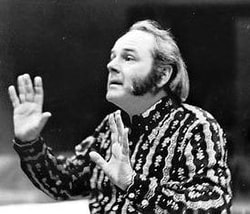
One of the founding fathers of jazz education in the state of Washington was born in Centralia, Washington on March 13, 1927. His name was Waldo King and he played saxophone and sang. His section mate in high school band was future Count Basie saxophonist Bill Ramsay. While a student at Central Washington College of Education (now Central Washington University), King formed “The Collegians,” a campus jazz band. After graduation he started the jazz bands at Garfield, Franklin and Roosevelt High Schools in Seattle. He also formed the city’s first high school jazz choir at Roosevelt High School.
A former student of King’s, composer, arranger and music educator Dave Barduhn described his mentor as “very nurturing. He was more about creating a culture where you would discover your own shortcomings rather than having them pointed out to you. He was a very gentle guy.” Scott Brown, who inherited the program at Roosevelt after King’s retirement said he was “a master music educator, but even more than that, a master of values. He taught humility. He taught students to listen to other bands, to have a love of the music and to play what you feel.” Fellow music educator Clarence Acox recalled Waldo King’s love of the Count Basie Orchestra: “I was at a Count Basie concert and he was sitting behind me and he was whooping and hollering so much everybody was wondering who this crazy guy was! He loved Basie!”
After his retirement King was active as a clinician and adjudicator at jazz festivals. Generations of musicians in the Pacific Northwest have been touched either directly or indirectly by the teaching and legacy of Waldo King. The region is now recognized nationally as a hotbed of jazz education and much of that reputation is because of the foundation laid by King. Waldo King passed away in 2019 at the age of 92.
Here is a link to Waldo King with a group of his Roosevelt High School alumni and Dave Barduhn. The band plays an original composition by Barduhn dedicated to King:
"BLUES FOR WALDO"
A former student of King’s, composer, arranger and music educator Dave Barduhn described his mentor as “very nurturing. He was more about creating a culture where you would discover your own shortcomings rather than having them pointed out to you. He was a very gentle guy.” Scott Brown, who inherited the program at Roosevelt after King’s retirement said he was “a master music educator, but even more than that, a master of values. He taught humility. He taught students to listen to other bands, to have a love of the music and to play what you feel.” Fellow music educator Clarence Acox recalled Waldo King’s love of the Count Basie Orchestra: “I was at a Count Basie concert and he was sitting behind me and he was whooping and hollering so much everybody was wondering who this crazy guy was! He loved Basie!”
After his retirement King was active as a clinician and adjudicator at jazz festivals. Generations of musicians in the Pacific Northwest have been touched either directly or indirectly by the teaching and legacy of Waldo King. The region is now recognized nationally as a hotbed of jazz education and much of that reputation is because of the foundation laid by King. Waldo King passed away in 2019 at the age of 92.
Here is a link to Waldo King with a group of his Roosevelt High School alumni and Dave Barduhn. The band plays an original composition by Barduhn dedicated to King:
"BLUES FOR WALDO"
TODAY IN JAZZ HISTORY - March 12th
|
Jazziz Magazine says “Bass great Charles Mingus recorded tracks from his album “The Clown” on March 12, 1957. Among those tracks was Haitian Fight Song, which he wrote as an ode to the triumph of freedom in the face of persecution. The song, one of the bassist and bandleader’s most enduring compositions, features some classic Mingus tropes: an intensely brooding solo bass opening, an urgent burst of call-and-response, and, of course, a round of raucous, blues-tinged solos."
There are six tracks on the album and five of them were recorded on March 12th, 67 years ago today. All the selections that appear on the record were composed by Charles Mingus. Along with Mingus on bass, the other musicians include Shafi Hadi playing alto and tenor saxophones, Jimmy Knepper on trombone, Wade Legge at the piano and Dannie Richards playing drums. Here is a link to the recording of Haitian Fight Song from 1957: "HAITIAN FIGHT SONG" |
TODAY IN JAZZ HISTORY - March 11th
|
Edmonia Jarrett was born in South Carolina on March 11, 1933. Like most of the jazz and soul greats she grew up in the church, singing in the choir and spreading the gospel through music. At the same time her parents pushed her to make something of herself. She chose the field of education. Her path would first lead her to work at The Pentagon, and eventually to Seattle and a job at Boeing. Then she was hired by the Seattle School District, first as a teacher of African-American History and Physical Education, and eventually as principal of Cleveland High School. Finally, after 23 years with the Seattle School District she retired. After retiring Edmonia then made a move that few would even attempt. She decided she would become a professional jazz singer. She was 55 years old.
In 1991 she got her first big break when she was chosen to play the part of Bessie Smith in an original play called “Janis” starring local R&B singer Duffy Bishop. The play followed the life of Janis Joplin and included a series of scenes in which Joplin spoke with and about some of people that had inspired her career. During the play’s run Edmonia was spotted by a booking agent who helped amp up Jarrett’s jazz career by getting her into several jazz clubs in the Seattle area. When Edmonia Jarrett was ready to record her first album she was surrounded by a wealth of local and national talent to help her. She entered the studio alongside Barney McClure, Bill Ramsay, Billy Wallace, Floyd Standifer and Clarence Acox. The result was the album “Live, Live, Live!”. It should be noted that although a live performance would have resulted in a great album, too, the title “Live, Live, Live!” actually refers to life, not to live performance. The songs recorded for the album were Jarrett’s interpretations of jazz standards, with a few lesser-known songs thrown in. Her next record, “Legal at Any Age” was released in 1998. Her third album, "Into the Light" was issued in early 2001. Throughout the late 1990s and early 2000s Edmonia Jarrett was a fixture on the Northwest jazz scene and audiences never tired of her performances. Unfortunately, cancer reared its ugly head in 2001 when Jarrett was diagnosed with lung cancer that had metastasized to her brain. She put trust in her strong Christian faith, but she was not able to overcome the disease. Edmonia Jarrett died on March 16, 2002. (portions of this piece are from jivetimerecords.com and allmusic.com) Here is a link to Edmonia Jarrett performing at Dimitiou’s Jazz Alley in Seattle: "MIDNIGHT LADY CALLED THE BLUES" |
TODAY IN JAZZ HISTORY - March 10th
|
One of the most influential jazz soloists of the 1920s was born on March 10, 1903 in Davenport, Iowa. Known primarily as a cornetist Leon Bismark “Bix” Beiderbecke was also a pianist and composer. During his short but impactful career in music, Beiderbecke was noted for his development of lyrical improvisations and for his lovely tone on the cornet.
Beiderbecke was a largely self-taught cornetist and used a unique fingering technique because no one ever taught him how to do it “the right way.” His first recordings were made with The Wolverines, a successful territory band in the American mid-west, in 1924. Following his stint with them, Beiderbecke played with C-melody saxophonist Frankie Trumbauer’s outfit at the Arcadia Ballroom in St. Louis before they both joined Jean Goldkette’s very popular orchestra in Detroit in 1926. Goldkette’s band toured and recorded profusely, and for time was in residence at the Roseland Ballroom in New York City opposite the Fletcher Henderson Orchestra. On October 12, 1926 the Roseland promoted a “Battle of the Bands” between the two ensembles and Goldkette’s group was declared the winner, an experience that Henderson lead trumpeter Rex Stewart described as “humbling” and “humiliating.” Shortly after Beiderbecke’s death a few years later Henderson recorded a cover of one of the tunes moist associated with Beiderbecke, Singin’ the Blues, and Stewart re-created his solo almost note for note. The Goldkette organization broke up in late 1927, but even before it did Trumbauer and Beiderbecke recorded several side for Okeh Records under their own names. These recordings capture some of Beiderbecke’s best playing on tunes like Clarinet Marmalade, I’m Coming Virginia, and Way Down Yonder in New Orleans. In October of 1927 Beiderbecke and his friend Trumbauer both signed on as members of the most popular and highest band of the era, the Paul Whiteman Orchestra. Although the Whiteman band was not a jazz band but could be better described as a popular dance orchestra, it used jazz elements in some of their music and Bix was featured on several Whiteman recordings including Sugar, You Took Advantage of Me, Ramona and Back in Your Own Back Yard. In November of 1928, while on tour with Whiteman in Cleveland, Ohio, Beiderbecke suffered what was described as a “nervous breakdown” due in no small part to his excessive use of alcohol. In February of 1929 he returned home to Iowa to convalesce but was back with Whiteman that summer for work on a planned movie about the bandleader to be called “The King of Jazz.” Unfortunately, production delays allowed for a lot of down time during which Beiderbecke’s drinking became more of a problem and his health continued to decline precipitously. By the fall he was back in Davenport where his parents helped him to seek treatment. He returned to New York City in early 1930 but gigs were hard to find due to the recent stock market crash and the onset of The Great Depression. Beiderbecke performed only sparingly over the next year and was found dead in his Queens apartment in August 1931 at the age of 28. Bix Beiderbecke had a short and, in many ways, sad career, but the music he produced as a cornetist and the compositions he penned, including In a Mist, continue to be influential almost a century later. Here is a link to one of the most famous Beiderbecke recordings, made with his friend Frankie Trumbauer. Bix’s solo follows Trumbauer’s: "SINGIN' THE BLUES" |
TODAY IN JAZZ HISTORY - March 9th
|
Musical trailblazer and saxophonist Randolph Denard Ornette Coleman was born on March 9, 1930 in Fort Worth, Texas. Ornette Coleman is recognized as one of the primary founders of the free jazz movement. All Music has referred to him as “one of the most beloved and polarizing figures in jazz history,” and that although he is "now celebrated as a fearless innovator and a genius, he was initially regarded by peers and critics as rebellious, disruptive, and even a fraud."
Coleman was a self-taught saxophonist that was kicked out of his high school band. His first professional gigs were with The Jam Jivers, a group he co-founded with reedman Prince Lasha and drummer Charles Moffett. After spending some time touring with a Silas Green from New Orleans tent show, Coleman moved to California where he encountered musicians with similar interests like drummers Billy Higgins and Ed Blackwell, trumpeter Don Cherry and bassist Charlie Haden. Coleman’s debut album was 1958’s “Something Else!!!!,” and soon after he recorded “Tomorrow is the Question” with Higgins, Cherry and Haden. By the time his quartet recorded “The Shape of Jazz to Come” for the Atlantic label in 1959 Coleman was becoming a controversial figure in jazz. His music was praised by Lionel Hampton, Leonard Bernstein and members of the Modern Jazz Quartet, but denigrated by many critics and, at least initially, by Miles Davis. In 1960 Ornette Coleman recorded and released “Free Jazz: A Collective Improvisation” which featured two quartets playing a 37-minute performance - the longest that had been recorded up until that time. Each quartet included a reed player (Coleman or Eric Dolphy), a trumpet player (Cherry or Freddie Hubbard), a bassist (Haden or Scott LaFaro) and a drummer (Higgins or Blackwell). The album received mixed reviews upon release but has more recently been rated as one of the “Twenty Essential Free Jazz Albums” by AllMusic.com. It is credited for giving the genre its name, although Ornette Coleman himself did not like his music to be called free jazz, citing his compositional work within his performances. Coleman continued to record with the Atlantic and Blue Note labels throughout the 1960s and performed with Elvin Jones, Dewey Redman and The Plastic Ono Band. Over the following three decades Coleman experimented with the use of strings and electronic instruments in his music and played with musicians as diverse as Pat Metheny and The Grateful Dead. Ornette Coleman was elected to the DownBeat Magazine Jazz Hall of Fame in 1969, received an honorary doctorate from the Berklee College of Music in 2006 and received a Grammy award for lifetime achievement in 2007. Ornette Coleman passed away due to a heart attack in 2015. Here is a link to video of a 1978 live performance by the Ornette Coleman Sextet in Germany: "FREE JAZZ" |
TODAY IN JAZZ HISTORY - March 8th
|
Saxophonist George Coleman is best known for his work with Miles Davis and Herbie Hancock during the 1960s. Coleman was born March 8, 1935 in Memphis, Tennessee. One of Coleman’s earliest gigs of note was playing alto saxophone with Ray Charles in the early 1950s, following which he played tenor sax with blues guitarist B.B. King. In 1956 he moved to Chicago where he played with saxophonists Gene Ammons and Johnny Griffin, organ master Jimmy Smith, trumpeter Lee Morgan, trombonist Curtis Fuller and guitarist Kenny Burrell. Later in the decade Coleman moved to New York City to play in the Max Roach Quintet for a year.
In the late 1950s and early 1960s George Coleman played with Slide Hampton, Wild Bill Davis, Ron Carter and Jimmy Cobb before being asked to join Miles Davis’s unit in 1963. While with Davis Coleman appeared on six albums including “My Funny Valentine” and “Seven Steps to Heaven.” Shortly after performing with the Davis quintet at the Lincoln Center in New York City, Coleman was replaced by Wayne Shorter, although Miles always spoke highly of Coleman’s musicianship. Davis was quoted as saying that “George played everything almost perfectly...He was a hell of a musician." George Coleman landed on his feet after leaving Davis, playing with Lionel Hampton, Clark Terry, Chet Baker and Horace Silver in the second half of the 1960s. He continued to be active as a sideman in the 1970s performing with organist Shirley Scott, pianist Cedar Walton and bassist and bandleader Charles Mingus. Coleman recorded his first record as a leader in 1977 when he released “Meditation,” a duo outing with pianist Tete Montoliu. He has gone on to record an additional thirteen records as leader or co-leader since. He has also stayed active as a sideman collaborating with Ahmad Jamal, Joey DeFrancesco, Nicholas Payton and Paul Brown. Today is George Coleman’s 89th birthday. Here is a link to George Coleman playing in a trio setting with pianist Ahmad Jamal: "MY FOOLISH HEART" |
TODAY IN JAZZ HISTORY - March 7th
|
Born in Budapest, Hungary on this date in 1936, Gabor Szabo would start playing guitar at the age of 14 and would eventually mold a career during which he played with some of the greats in jazz.
After the Hungarian Revolution of 1956, Szabo moved to the United States where he attended the Berklee College of Music in Boston and eventually settled in California. In 1961 he joined the Chico Hamilton quintet where he played with Hamilton and saxophonist Charles Lloyd. The group played “chamber jazz with a moderate avant-gardism.” Szabo would appear on eight albums with Hamilton between 1962 and 1966. During the decade he would also appear as a sideman on records by Steve Allen, Gary McFarland and Charles Lloyd, as well as releasing twelve records as a leader starting with “Gypsy ‘66” on the Impulse! label in 1966. Szabo’s song Gypsy Queen from his “Spellbinder” album was later covered by Carlos Santana on his “Abraxas” record in 1970. In 1968 Gabor Szabo started the Skye record label along with vibraphonists Gary McFarland and Cal Tjader. During the 1970s Szabo’s music began to employ more rock, pop and world music elements and he was able to make numerous trips to Europe to visit family and perform in the country of his birth. During one of those trips in late 1981, Gabor Szabo was hospitalized suffering from liver and kidney ailments. He passed away in February of 1982 at the age of 45. Here is a link to Szabo’s recording of Gypsy Queen from his 1966 “Spellbinder” album: "GYPSY QUEEN" |
TODAY IN JAZZ HISTORY - March 6th
|
Guitarist Wes Montgomery was born in Indianapolis, Indiana on March 6, 1923. His first guitar was a four-string tenor guitar he received as a gift from his older brother when he was twelve years old. He didn’t begin playing a six-string guitar until after being inspired by a Charlie Christian record when he was 20 years old. Although he spent years struggling to be successful in his musical career, his unique style would eventually make him one of the most recognizable guitarists in jazz history.
Montgomery worked day jobs at a dairy and also as a welder to support his wife and seven children while spending his evenings practicing guitar and playing gigs around Indianapolis. In 1948 Lionel Hampton’s band was in town and the leader was in search of a new guitarist. He heard Montgomery playing Charlie Christian solos and hired him for the Hampton ensemble. Wes spent two years playing with Hampton, but eventually returned to Indianapolis. Because he had a fear of flying and had opted to drive between gigs while on tour, he found the experience exhausting and opted to return home. For several years Wes Montgomery played in a group with two of his brothers and recorded with them for Pacific Jazz records in 1957. He stayed in Indiana, though, working regularly with his own trio. He was heard one night by Cannonball Adderley who convinced Riverside records to sign him to a contract. Montgomery would record nine albums with Riverside between 1959 and 1963. In 1964 he moved to Verve Records and made nine records with them, too, before moving to A&M Records in 1967. Montgomery’s work until the mid-1960s was based in hard bop, but in the latter part of the decade he started to move to more pop-oriented jazz recordings and achieved wider popular recognition. Wes Montgomery is known among musicians for his unique sound, and that is due in large part to his technique. He did not use a pick, but played guitar using the side of his thumb. He was also recognizable due to his extensive use of octaves. Montgomery was a self-taught musician and could not read music. He died suddenly from a heart attack at home on June 15, 1968 at the age of 45. Here is a link to a 1965 Montgomery television appearance playing a John Coltrane composition: "IMPRESSIONS" |
TODAY IN JAZZ HISTORY - March 5th
|
Frank Foster and Frank Wess teamed up several times through the years. Both tenor saxophonists came to prominence in the 1950s with the Count Basie Orchestra. They combined as co-leaders for an album called “Two Franks Please” which was recorded over three sessions in 1956, the first being on March 5th. The record mostly features a 1956 septet that, in addition to the two Franks (with Wess doubling on flute), also has trombonists Henry Coker and Benny Powell, guitarist Kenny Burrell, bassist Eddie Jones and drummer Kenny Clarke. The remaining three selections are more of a showcase for Foster, featured in a sextet with trumpeter Donald Byrd and Coker. With the exception of Serenata and Dancing on the Ceiling, all of the selections are group originals, mostly composed by either Foster or Wess. The record has been reissued in various forms over the 67 years since it was recorded in Hackensack, New Jersey and offers “enjoyable straight-ahead music.”
Here is a link to Foster and Wess playing the tune Two Franks as members of the Count Basie Orchestra: "TWO FRANKS" |
TODAY IN JAZZ HISTORY - March 4th
|
Former Seattle bassist and composer Michael Bisio was born March 4, 1955 in Troy, New York. During his career Bisio has appeared on more than 100 recordings, twelve as a leader and twelve more as a co-leader.
Bisio has composed more than 100 pieces that have been played by a wide variety of ensembles around the world. In addition to music for jazz groups, he has written music for the 1985 Karl Krogstad film “Strings” and the 2004 movie “Beat Angel.” Bisio wrote music for the play “Music for American Voices: Bukowski, Michelin and the First Amendment.” His music can also be heard in the animated film “Time & Object.” Seattle jazz writer Paul deBarros has described Bisio’s playing as "a spare, bluesy sound, the sweet and sour timbres favored by Charles Mingus." He has written that Bisio is “one of the heirs to Seattle's earthy yet innovative tradition.” In addition to his work as a composer and performer, Michael Bisio has also worked developing young musicians in public school settings and has appeared on educational videos for Jazz at Lincoln Center. Since 2009 Bisio has been the bassist in the Michael Shipp Trio. Here is a link to Michael Bisio playing solo bass in 2020: "SOLO BASS" |
TODAY IN JAZZ HISTORY - March 3rd
|
Clarinetist Barney Bigard was born in New Orleans on March 3, 1906. As a child he studied music with legendary New Orleans clarinetist and music teacher Lorenzo Tio, Jr. Bigard is best known for his time spent with the Duke Ellington Orchestra.
In the early 1920s Bigard moved north to Chicago where he played both clarinet and tenor saxophone with King Oliver, Johnny Dodds and others. In 1927 he was lured to New York City by the opportunity to join Duke Ellington’s orchestra playing at the Cotton Club in Harlem. Bigard stayed on with Ellington for fifteen years and was his featured clarinet soloist while playing tenor sax in the reed section. He is also credited as co-composer on the Ellington standard Mood Indigo. Ellington often encouraged his musicians to record in small group settings as well as with his big band. It was during one of these sessions, led by Barney Bigard, that the clarinetist became the first to record trombonist Juan Tizol’s classic Caravan in 1936. The record was released as Barney Bigard and his Jazzopaters which consisted of Bigard, Tizol, Cootie Williams playing trumpet and baritone saxophonist Harry Carney, with bassist Billy Taylor, Sonny Greer on drums and Ellington at the piano. After leaving Ellington’s employ in 1942 Bigard moved to Los Angeles where he worked as a studio musician for much of the rest of his life. He did, however, also spend some time touring with fellow New Orleans natives Louis Armstrong and Kid Ory. Bigard could also be found playing with Nat “King” Cole, Ella Fitzgerald, Eartha Kitt, Pearl Bailey and pianist Art Hodes. In addition, Bigard recorded several albums as a leader during the 1950s and 1960s. Barney Bigard passed away at the age 74 in June of 1980. Here is a link to a video of a televised 1968 performances with Bigard playing clarinet with the Art Hodes combo: "C JAM BLUES" |
TODAY IN JAZZ HISTORY - March 2nd
|
Many critics consider Miles Davis’s 1959 Columbia album “Kind of Blue” his masterpiece. Others have called it the greatest of all jazz records. One thing is certain: in the 64 years since it was recorded it has sold more than five million copies in the United States alone. The five tracks on “Kind of Blue” were recorded over two days, the first being March 2, 1959. The second session took place on April 22nd of that year, and both sessions were done at the Columbia Records 30th Street Studios in New York City. The album was released on August 17, 1959.
Davis had begun to move away from hard bop and toward more experimentation with a modal approach to composing and improvising with the 1958 album “Milestones." Inspired by George Russel’s book “The Lydian Chromatic Concept of Tonal Organization,” Davis set out to produce an entire album of music based on these modal theories. This was a departure from the major/minor chordal construct that epitomized bop and hard bop. The musicians employed for “Kind of Blue” included Davis on trumpet, alto saxophonist Julian “Cannonball” Adderley, and tenor saxophonist John Coltrane, along with Paul Chambers playing bass, drummer Jimmy Cobb and pianists Bill Evans and Wynton Kelly. The group recorded side one of the original album at the March 2nd session. That included the tunes Freddie Freeloader, So What and Blue in Green. In an interview with Nat Hentoff in Jazz Review Miles Davis talked about the use of modes for writing and improvisation: “No chords gives you a lot more freedom and space to hear things. When you go this way, you can go on forever. You don't have to worry about changes and you can do more with the [melody] line. It becomes a challenge to see how melodically innovative you can be. When you're based on chords, you know at the end of 32 bars that the chords have run out and there's nothing to do but repeat what you've just done—with variations. I think a movement in jazz is beginning away from the conventional string of chords. There will be fewer chords but infinite possibilities as to what to do with them.” Here is a link to one of the tracks recorded on that March day 65 years ago: "ALL BLUES" |
TODAY IN JAZZ HISTORY - March 1st
|
“Best known as the lead composer, guitarist, and keyboardist for the acoustic jazz ensemble "Oregon", Ralph Towner has also had a rich and varied solo career that has seen fruitful and memorable musical collaboration with such great modern musicians as Gary Burton, John Abercrombie, Egberto Gismonti, Larry Coryell, Keith Jarrett, Jan Garbarek, and Gary Peacock.
“Towner was born in Chehalis, Washington on March 1st, 1940 into a musical family, his mother a piano teacher and his father a trumpet player. In 1958, Towner enrolled in the University of Oregon as an art major, later changing his major to composition. He soon thereafter met bassist Glen Moore who would become a lifelong musical partner in the band Oregon. “In 1968 Towner moved to New York City and immersed himself in the New York jazz scene, eventually landing a position with the Paul Winter Consort where the friendships and musical partnering with Glen Moore, Paul McCandless, and Collin Walcott were forged, a musical chemistry which was destined to alchemize into the band Oregon. “Towner's working relationship with producer Manfred Eicher of ECM Records began in 1972 and would provide a forum for his growth as a leader and collaborator with other jazz giants, all while concomitantly breaking open musical frontiers with Oregon throughout the intervening years. ECM's roster of low-volume acts was decidedly contrary to the amplified popular zeitgeist of the era and provided Towner an opportunity to connect and create with some of the more iconoclastic and innovative artists of the musical culture in the 1970s. Towner's creativity and virtuosity into the new millennium retain all the vitality of his younger years, even now into his 70s.” (excerpted from ralphtowner.com) Here is a link to video of a Ralph Towner solo concert in St. Louis from 2017: "ANTHEM" |
TODAY IN JAZZ HISTORY - February 29th
|
Jimmy Dorsey was born February 29, 1904 in Shenandoah, Pennsylvania. A highly talented reedman, Jimmy was the older brother of trombonist Tommy Dorsey. The two brothers together and independently were very popular and successful bandleaders during the swing era.
Dorsey received his first musical training from his father, who was a music teacher and marching band director. Jimmy played both clarinet and alto saxophone and began playing in several bands with Tommy when they were both teenagers. In 1920 they formed their own combo. By 1922 the group was well-known in the Baltimore area and was among the first jazz bands to broadcast on the radio. In 1927 the Dorsey Brothers Orchestra began recording. Their hits included such songs as Coquette and Let’s Do It, the latter featuring singer Bing Crosby. By 1934 the Dorsey Brothers Orchestra had become a stable, full-time band, and the following year they recorded an impressive list of hit songs. However, the band broke up in May 1935 after Tommy left the bandstand during a live performance because he and his brother disagreed over the tempo of a song. Dorsey stayed with the remains of the Dorsey Brothers Orchestra, forming the Jimmy Dorsey Orchestra in late 1935, and within a few years he had emerged as one of the top bandleaders of the day. Singers Bob Eberly and Helen O’Connell figured prominently in the band’s success, as did such noted sidemen as trumpeters Shorty Sherock and Ralph Muzillo, trombonist Bobby Byrne, tenor saxophonist Herbie Haymer and drummer Ray McKinley. The band broke up in 1953, a casualty of changing popular taste in the postwar years. In addition to being a very successful bandleader, Dorsey was a highly respected jazz musician, in demand as a soloist from his earliest professional years. He was one of the top reed players of the era and saxophone greats including Lester Young and Coleman Hawkins readily acknowledged his influence. In 1947 Jimmy and Tommy reunited to play themselves in the fictionalized autobiographical movie “The Fabulous Dorseys.” Tommy hired Jimmy to be a soloist and band member in 1953 after Jimmy’s band had broken up. The two now reconciled brothers returned to calling their group the Dorsey Brothers Orchestra. From 1954 to 1956 they hosted the television program Stage Show on which Elvis Presley made his television debut. After Tommy’s death in 1956 Jimmy continued to lead the band until his own death in 1957. Here is a link to the Jimmy Dorsey Orchestra performing one of their best-known hits in 1942: "TANGERINE" |
TODAY IN JAZZ HISTORY - February 28th
|
“Willie Bobo was one of the great Latin percussionists of his time, a relentless swinger on the congas and timbales, a flamboyant showman onstage, and an engaging if modestly endowed singer. He also made serious inroads into the pop, R&B and straight ahead jazz worlds.
“Growing up in Spanish Harlem, Bobo, whose given name was William Correa, began on the bongos at age 14, only to find himself performing with Perez Prado a year later, studying with Mongo Santamaria while serving as his translator, and joining Tito Puente for a four-year stint at age 19. Mary Lou Williams gave Correa his nickname Bobo when they recorded together in the early '50s. “After working with Cal Tjader, Herbie Mann and Santamaria with whom he recorded the Latin standard Afro Blue, Bobo stepped forward in 1963 with his first recording as a leader, with Clark Terry and Joe Farrell as sidemen. Recording for Verve in the mid-'60s, Bobo achieved his highest solo visibility with albums that enlivened pop hits of the day with Latin rhythms, spelled by sauntering originals like "Spanish Grease" and "Fried Neck Bones and Some Home Fries." In addition, Bobo played on innumerable sessions in New York, recording with artists like Miles Davis, Cannonball Adderley, Herbie Hancock, Wes Montgomery, Chico Hamilton and Sonny Stitt. “In 1969, he moved to Los Angeles where he led jazz and Latin jazz combos, appeared on Bill Cosby’s first comedy series (1969-1971) and short-lived 1976 variety show, and recorded on his own for Sussex, Blue Note and Columbia. One of Bobo's last appearances, only three months before his death from cancer, was at the 1983 Playboy Jazz Festival where he reunited with Santamaria for the first time in 15 years.” (excerpted from allmusic.com) Here is a link to Willie Bobo and his band from a 1973 television appearance hosted by James Earl Jones: "2001: A SPACE ODYSSEY" |
TODAY IN JAZZ HISTORY - February 27th
|
“Widely regarded the as the first musician to translate the language of mid-20th century modern jazz to the tenor saxophone, Dexter Gordon was born on February 27, 1923 in Los Angeles, California. His father, Dr. Frank Gordon, was one of the first African American doctors in Los Angeles who arrived in 1918 after graduating from Howard Medical School in Washington, D.C. Among his patients were Duke Ellington and Lionel Hampton.
“Dexter began his study of music with the clarinet at age 13, then switched to the alto saxophone at 15, and finally to the tenor saxophone at 17. In his last year of high school, he received a call from alto saxophonist Marshall Royal asking him to join the Lionel Hampton Band. He left Los Angeles with the band, traveling down south and learning to play from fellow band members Illinois Jacquet and Joe Newman. In January 1941, the band played at the Grand Terrace in Chicago for six months and the radio broadcasts made there were Dexter’s first recordings. “It was in 1943, while in New York City with the Hampton band, that Dexter sat in at Minton’s Playhouse with Ben Webster and Lester Young. This was to be one of the most important moments in his long musical career as, as he put it, “people started to take notice.” “Back in Los Angeles in 1943, Dexter played mainly with Lee Young (Lester Young’s brother), with Jesse Price plus a few weeks with the Fletcher Henderson Orchestra. In 1944, he worked with Louis Armstrong‘s orchestra and it was during this period that Gordon made his first lengthy solo recordings as the leader of a quintet session with Nat “King” Cole as a sideman. “In 1944, Dexter joined the Billy Eckstine band, the source of many of the Bebop innovators of the time and many of the most prominent bandleaders in the future. He was surrounded nightly by Sarah Vaughan, Dizzy Gillespie, Fats Navarro, Sonny Stitt, Gene Ammons, Leo Parker, John Malachi, and other architects of the new music. “Dexter began to record for Savoy Records in 1945. These early recordings are examples of the development of his sound and his style which influenced many of the younger tenor players of that day, including Sonny Rollins and John Coltrane. In 1947, Dexter recorded his historic sides for Dial Records with tenor saxophonist Wardell Gray. The two tenor “duels” became very popular at this time and further established Dexter as a leader and a recording artist. “In the late 40s, Dexter appeared on the famed 52nd Street in New York City with Charlie Parker, Fats Navarro, Miles Davis, Max Roach, and many of the bebop innovators of the day. The classic photo of Dexter at the Royal Roost in 1948 has become the iconic photo of the bebop musician and has been reprinted on album covers, t-shirts, posters, and print ads. “In 1960, Dexter was approached by Alfred Lion to sign with Blue Note Records. For five years, he made one session after another, and they are all considered classics. A gig in 1962 at Ronnie Scott’s Club in London was a new experience for Dexter and he began to travel and work in Europe. Eventually, he settled in Copenhagen where he lived until his return to the U.S. in 1976. “In 1976, Dexter enjoyed a hero’s welcome in the U.S. when he made his return engagement at Storyville in New York City. He subsequently played the Village Vanguard, signed with Columbia Records, and was officially back in town. He organized his first working band during this period with George Cables, Rufus Reid, and Eddie Gladden. He considered this band to be his best band and he toured extensively with them. “In 1986, Dexter moved into his new career, acting, in the motion picture Round Midnight which was directed by Bertrand Tavernier. He was nominated for an Academy Award for Best Leading Actor in 1986 for his portrayal of Dale Turner, a character based on the lives of Lester Young and Bud Powell. The music for the film won an Oscar for musical director, Herbie Hancock. The film included fellow musicians Bobby Hutcherson, Billy Higgins, Cedar Walton, Freddie Hubbard, Tony Williams, Pierre Michelot, John McLaughlin, and Wayne Shorter. “Dexter Gordon’s last major concert appearance was with the New York Philharmonic in Ellingtones, a concerto written for him by acclaimed composer David Baker and conducted by James de Priest. Dexter died on April 25, 1990 in Philadelphia.“ (The above was excerpted from dextergordon.com) Here is a link to Dexter Gordon playing Lady Bird in Belgium in 1964: "LADY BIRD" |
TODAY IN JAZZ HISTORY - February 26th
|
The Original Dixieland Jass Band was made up of five white men from New Orleans who billed themselves as “The Creators of Jazz” - they weren’t, but that’s a whole different story than the one being told here. They had all met while members of Papa Jack Laine’s band. In 1916 clarinetist Alcide Nunez was contacted by a Chicago promoter who promised a gig in the Windy City if he were to form a band similar to Tom Brown’s Band from Dixieland that was enjoying great popularity there. Nunez assembled Eddie Edwards on trombone, Nick LaRocca playing cornet, pianist Henry Ragas and drummer Johnny Stein. Stein was later replaced by Tony Spargo. They moved to Chicago and began a regular gig at Schiller’s Cafe in March of 1916.
By January 1917 they had moved on to New York City where they were playing Reisenweber’s Cafe on Columbus Circle. Their popularity was quickly growing, and they did a test recording for Columbia Records at the end of January 1917, but nothing from that session was ever released. However, on February 26, 1917 the ODJB recorded two sides for Victor Records that were released nine days later, and the record is now considered the very first jazz recording ever made. Livery Stable Blues and Dixieland Jass Band One-Step were released on March 7, 1917 and originally sold around 250,000 copies. The record increased the visibility of jazz throughout the country and spawned hundreds of small groups across the country who began playing jazz. The ODJB went on to make additional records, some of which proved to be very popular during the 1920s. Many jazz fans will tell you that the “vaudevillian antics” of the ODJB set a poor example of what the music was really about. It has been reported that Black New Orleans jazz cornetist Freddie Keppard was offered an opportunity to be the first to record jazz, but that he refused because he didn’t want his music to become a “corporate commodity.” By the time Keppard agreed to make records the ODJB (and other similar bands) had become so popular with he general public that Keppard’s purer style was not appreciated as widely. Here is a link to Livery Stable Blues as recorded 107 years ago today: "LIVERY STABLE BLUES" |
TODAY IN JAZZ HISTORY - February 25th
|
Known to many as “The Comet,” trombonist Ake Persson was born in southern Sweden on February 25, 1932. Persson began his music studies as a child playing trumpet but went on to become one of Europe’s leading bebop trombonists.
Persson moved to Stockholm in 1951 and began his musical career in earnest playing for three years with the Simon Brehm Quintet. He also worked with leading Swedish jazz figures like reedmen Hacke Bjorksten, Arne Domnerus and Lars Gullin. Between 1956 and 1961 he played in the radio band led by saxophonist and composer/arranger Harry Arnold. Persson achieved wider international fame when he joined the trombone section of the Kenny Clarke/Francy Boland Big Band in 1963, a position he held for eight years. He appears on 16 albums with the band. In addition to his performances with European jazz artists and groups, Ake Persson played and recorded with prominent American stars like Count Basie, Duke Ellington, Roy Haynes, Dizzy Gillespie, Benny Golson, Herbie Mann and Quincy Jones. Persson also made several records as a leader for labels like Philips and EmArcy during the 1950s. Persson died in 1975 when the auto he was driving plunged into the Djurgarden Canal in central Stockholm. It has been a point of speculation for years whether this was an accident or was done purposefully. Here is a link to Ake Persson playing on a 1959 record: "THE MIDNIGHT SUN NEVER SETS" |
TODAY IN JAZZ HISTORY - February 24th
|
Saxophonist David “Fathead” Newman was born in Corsicana, Texas on February 24, 1933 and grew up in the Dallas area. Although Newman released dozens of records as a leader and worked extensively as a sideman, he is best known for his work as a featured soloist with Ray Charles during the 1950s and 1960s.
The story about Newman’s perhaps less than becoming nickname is that, according to the New York Times, he received it when “an outraged music instructor used it as an epithet after catching Mr. Newman playing a Sousa march from memory rather than from reading the sheet music, which rested upside down on the stand." Newman started saxophone in the seventh grade after hearing and being inspired by Louis Jordan records. He took private lessons from Buster Smith, a Count Basie Orchestra alum, and studied music at Jarvis Christian College for three years before dropping out to pursue a career in music full-time. Newman met Charles in 1951 and initially played baritone saxophone in Charles’ band when he joined in 1954. But he soon switched to tenor and became the band’s principal soloist for years thereafter. In his biography Atlantic Records producer Jerry Wexler referred to Newman as Charles’ ”alter ego on tenor.” Ray Charles himself wrote in his own autobiography that Newman "could make his sax sing the song like no one else.” After his time in Ray Charles’ ensemble, Newman worked briefly with flautist Herbie Mann and then did session work on records by Aretha Franklin, B.B. King, Jimmy McGriff, Stanley Turrentine, Joe Cocker, Hank Crawford and Queen Latifah. Trumpeter Roy Hargrove cited Newman as a major influence in his youth. David “Fathead” Newman died from pancreatic cancer in 2009 at the age of 75. Here is a link to David “Fathead” Newman in a live performance of a tune with which he was closely associated: "HARD TIMES" |
TODAY IN JAZZ HISTORY - February 23rd
|
The tune Stolen Moments by composer, arranger, bandleader and saxophonist Oliver Nelson has become a jazz standard. It first appeared on the Impulse! label record “The Blues and the Abstract Truth” which was recorded at Rudy Van Gelder’s studio in Englewood Cliffs, New Jersey on February 23, 1961 along with five other Nelson originals. Oddly, his composition named Blues and the Abstract Truth does not appear on this album.
Sixty-two years after it was recorded “The Blues and the Abstract Truth” is still Nelson’s most acclaimed record. The album features performances by some serious jazz heavyweights including Freddie Hubbard on trumpet, reedman Eric Dolphy, George Barrow playing baritone saxophone, pianist Bill Evans, bassist Paul Chambers and Roy Haynes on drums, not to mention Oliver Nelson himself on alto and tenor sax. Nelson was 29 years old when this record was made. He was a native of St. Louis, Missouri and had earned a master’s degree in theory and composition in 1958. He had spent time playing with Louis Jordan, Erskine Hawkins, Kenny Dorham, Louis Bellson, Duke Ellington, Quincy Jones and Count Basie prior to recording “The Blues and the Abstract Truth.” He would go on to work as an arranger on large ensemble records by Thelonious Monk, Sonny Rollins, Stanley Turrentine, Buddy Rich and Wes Montgomery. He also wrote music for films and television shows including “Ironside,” “Columbo” and “The Six Million Dollar Man.” Here is a link to the best-known track from “The Blues and the Abstract Truth:” "STOLEN MOMENTS" |
TODAY IN JAZZ HISTORY - February 22nd
|
Although he studied piano and violin as a youngster, Rex Stewart came to fame as a cornet player. He is best known for his eleven-year stint as a member of the Duke Ellington Orchestra. Rex Stewart was born in Philadelphia on February 22, 1907.
In the early 1920s Stewart dropped out of high school to join a band called The Ragtime Clowns, and over the next decade would play with some of the biggest bands of the 1920s including Elmer Snowden, Fletcher Henderson and McKinney’s Cotton Pickers. In 1933 Stewart led his own band at the Empire Ballroom in New York City. In 1934 Rex Stewart was hired by Duke Ellington and stayed with the ensemble until 1945. While working for Ellington, Stewart co-wrote the tunes Morning Glory and Boy Meets Horn. He also produced recording sessions by Ellington sidemen. After leaving the band Stewart led his own small ensemble and was a featured performer on the Jazz at the Philharmonic tours between 1947 and 1951. During the 1950s Stewart worked in radio and television and also wrote jazz criticism for DownBeat and Playboy magazines. For a while he lived in France and studied at Le Cordon Bleu cooking school. Back in the U.S., Stewart hosted radio programs and played in the studio band for The Steve Allen Show on television. He wrote an autobiography appropriately titled “Boy Meets Horn” which was published posthumously. Stewart died from a brain hemorrhage in Los Angeles at the age of 60. Here is a link to Rex Stewart playing with Nick Travis on a 1958 television broadcast of Art Ford’s Jazz Party: "THERE'LL NEVER BE ANOTHER YOU" |
TODAY IN JAZZ HISTORY - February 21st
|
Although her birth name was Eunice Kathleen Waymon, she was better known by her professional moniker, Nina Simone. The vocalist, pianist, songwriter and civil rights activist was born in North Carolina on February 21, 1933.
Nina Simone’s initial musical goal was to become a concert pianist and she was talented enough to study with Carl Friedberg at Julliard. However, when she applied for a scholarship to the Curtis Institute in Philadelphia her application was denied, an act which Simone attributed to the fact that she was a Black woman. Now living in Philadelphia she did study privately with Curtis piano professor Vladimir Sokoloff. Simone worked as an accompanist and taught private piano lessons during this time. She also took a job playing piano and singing at the Midtown Bar and Grill in Atlantic City, New Jersey. It was then that she adopted the name Nina Simone. Simone played at small clubs throughout the latter 1950s and achieved her first real commercial success with a recording of George Gershwin’s I Loves You Porgy which reached the Billboard Magazine Top 20 in 1958. The following year Simone recorded her first album “Little Girl Blue” on Bethlehem Records. In December 1959 she released a live record titled “Nina Simone at Town Hall,” and was soon a favorite performer on the New York City club scene. On the 1964 album “Nina Simone in Concert” she sang Mississippi Goddam, which Simone referred to as her “first civil rights song.” The song addressed the assassination of civil rights leader Medgar Evers and the bombing of the 16th Street Baptist Church in Birmingham, Alabama and was banned from airplay in several southern U.S. states. Following Mississippi Goddam songs addressing racial inequality in America became a significant portion of Simone’s repertoire and “as her political activism rose, the rate of release of her music slowed.” In 1967 she recorded Backlash Blues written by her friend Langston Hughes and in 1968 she sang Billy Taylor’s I Wish I Knew How It Would Feel To Be Free. On Questlove’s 2021 documentary about the Harlem Cultural Festival in the summer of 1969 Simone can be seen and heard singing her composition To Be Young, Gifted and Black. In the 1970s Nina Simone lived first in Barbados and then Liberia. She did not record for several years before making the album “Baltimore” for CTI Records. In the 1980s she performed regularly at Ronnie Scott’s Jazz Club in London and moved first to Switzerland, then to Paris, and eventually settled in the Netherlands. In 1987 Simone had a big hit record in Europe with My Baby Just Cares For Me. Later in her life, Nina Simone was diagnosed as being bi-polar and also developed breast cancer. She lived the final years of her life in the south of France and died in her sleep on April 21, 2003 at the age of 70. "SINNERMAN" |
TODAY IN JAZZ HISTORY - February 20th
|
Trumpeter Lew Soloff was born in New York City of February 20, 1944 and played with Machito, Tito Puente and Maynard Ferguson prior to achieving his widest popular fame as a member of Blood, Sweat and Tears from 1968 until 1973. His solo on the song Spinning Wheel has become a classic and the record received a Grammy award. Soloff studied trumpet at Eastman and Julliard.
In addition to his work with the groups mentioned above, Soloff was a long-time member of the Mingus Big Band, the Manhattan Jazz Quintet and was assistant director of the Gil Evans Monday Night Orchestra beginning in 1983. Soloff made frequent guest appearances with other groups including the Lincoln Center Jazz Orchestra and the Magic City Jazz Orchestra. He also worked as a sideman on records with George Benson, Carla Bley, Stanley Turrentine, Dizzy Gillespie, Aretha Franklin, Hank Crawford, Frank Sinatra, Herbie Mann and he played on Paul Simon’s “Graceland” album in 1986. Lew Soloff had the chops not only to play a searing lead trumpet, but also construct and perform intricate improvisations, making him a first call player in New York City for decades. Soloff passed away at age 71 after suffering a heart attack in 2015. Here is a link to Lew Soloff playing a solo on Spinning Wheel. This is not the original recording, but a performance with a big band recorded in Japan around 1991: "SPINNING WHEEL" |
TODAY IN JAZZ HISTORY - February 19th
|
On February 19, 1942 U.S. president Franklin Delano Roosevelt signed Executive Order 9066 which declared it a “military necessity” to incarcerate more than 120,000 people of Japanese descent, most of whom were American citizens, in hastily constructed camps throughout the western United States. Detainees were only allowed to bring with them what they could carry. This made it necessary to prioritize and only bring your most essential belongings, and for many this meant that they brought musical instruments. In an attempt to achieve some sense of normalcy under these conditions musical groups were formed at all ten relocation camps. At one of the camps, Heart Mountain, located in Wyoming, a well-known musician from Los Angeles named George Igawa created a big band to perform at the camp and eventually beyond its barbed wire boundary.
Prior to the United States entry into World War II, George Igawa was director of a popular Los Angeles-based band called Sho Tokyans that played swing music and standards for Japanese-American communities along the west coast. Once at Heart Mountain, Igawa recruited professional and amateur musicians and even some talented high school students for his group. Musicians in the 19-piece band received a meager salary from the camp’s recreation fund for playing. George Igawa’s band, which became known as the G.I. Orchestra because of its leader’s initials, played both American popular swing music and arrangements by the director. In addition, they performed some traditional Japanese tunes. The ensemble played for dances and other events at Heart Mountain. Eventually, word of the band reached beyond the confines of the camp and they were permitted to play for events all across the state of Wyoming. In an article on the website nationalww2museum.org the band’s drummer, Jimmie Akiya recalled that “A war bond rally in Powell was the first outside stint we had. It was amazing how they reacted.” That was just the first of many performances by Igawa’s orchestra that was soon playing community events, high school dances and other war bond rallies throughout the state. The G.I. Orchestra’s performances went a long way to prove to the “non-incarcerated world that Japanese Americans were just as American as their European-American counterparts. They were not only playing music, but in their own words were ‘spreading good will’ and expressing their shared humanity in front of an audience who was eager to hear them play.” They were referred to by one newspaper as “our American friends.” Here is a link to an interview with Joy Terakoa, the vocalist for the George Igawa Orchestra, who speaks about what it was like to live at Heart Mountain and sing with Igawa’s group: "JOY TERAKOA INTERVIEW" |
TODAY IN JAZZ HISTORY - February 18th
|
By January 1969 Miles Davis’ “second great quintet” had broken up and he was working with a group made up of Wayne Shorter on soprano saxophone, Chick Corea playing electric piano, Dave Holland on bass and drummer Jack DeJohnette. The last two albums by Davis had hinted at a move toward electrified instruments but it wasn’t until “In a Silent Way” that he fully embraced “a full-blown electric approach.” “In a Silent Way” included contributions from his working group (excepting DeJohnette) and former Davis sidemen Herbie Hancock, Tony Williams, Ron Carter as well as from keyboardist Joe Zawinul and guitarist John McLaughlin. The album was assembled and edited by producer Teo Macero from a three-hour session at the CBS 30th Street Studio in New York City on February 18, 1969.
The record consists basically of two pieces of music - one on each side of the original vinyl release. Shhh/Peaceful was composed by Davis and Zawinul and Davis share credit for In a Silent Way/It’s About That Time. Each of the two performances were edited by Macero into three distinct parts which have been compared by some to the exposition-development-recapitulation form familiar to classical music fans. Although current opinion of the recording is nearly unanimously positive, critics were divided at the time of the record’s release in July of 1969. It was Davis’ best-selling record since 1965’s “My Funny Valentine,” reaching the Billboard album chart and topping out at #3 on the jazz chart. Generally speaking, rock critics loved it, and jazz critics felt somehow betrayed because the music didn’t swing and it used electric instruments. Some critics have since even referred to “In a Silent Way” as proto-ambient music. Here is a link to the second side of “In a Silent Way:” "IN A SILENT WAY/IT'S ABOUT THAT TIME" |
TODAY IN JAZZ HISTORY - February 17th
|
Although he was just coming into his own as a musician about the time the big band era was starting to fade, Buddy DeFranco was able to forge a very successful career playing be-bop clarinet and is remembered by many as the leader of the Glenn Miller “ghost band” from 1966 until 1974. Boniface Ferdinand Leonard “Buddy” DeFranco was born in Camden, New Jersey on February 17, 1923.
Raised in South Philadelphia, DeFranco took up the clarinet at the age of nine and won the national Tommy Dorsey Swing Contest at 14. By his mid-20s DeFranco was a member of the Count Basie Septet and led his own groups in the early 1950s that featured Sonny Clark on piano and guitarist Tal Farlow. By 1954 he was recording albums for Norman Granz, and would go on to release 62 albums as a leader during his career. He also recorded with the Tommy Dorsey Orchestra and with Lionel Hampton in the 1950s. In the early 1960s DeFranco co-led an innovative quartet with accordionist Tommy Gumina before fronting the “World Famous Glenn Miller Orchestra, Directed by Buddy DeFranco” for nearly a decade. DeFranco performed with Gene Krupa, Art Blakey, Oscar Peterson, Billie Holiday, Miles Davis, Charlie Parker, Buddy Rich, Dizzy Gillespie and Eddie Daniels among others during his more than seventy years in the music business. Buddy DeFranco passed away on Christmas Eve 2014 in Florida. Here is a link to a 1991 Buddy DeFranco live performance in a sextet setting featuring frequent collaborator Terry Gibbs: "MEMORIES OF YOU" |
TODAY IN JAZZ HISTORY - February 16th
|
Reedman Jeff Clayton was born February 16, 1955 in Venice, California and grew up in Los Angeles. As a youngster his mother, a church pianist and organist, encouraged her children to be active in music. Jeff listened to gospel music, R&B and Motown growing up. He did not develop an interest in jazz until becoming a member of his high school jazz ensemble.
Jeff Clayton studied double reeds at California State University - Northridge but left school one quarter short of receiving his diploma when he joined the touring and recording band for Stevie Wonder. After three years with Wonder, Clayton returned to his hometown where he was an active studio musician recording with Gladys Knight, Michael Jackson and Madonna. He also toured with B.B. King, Ray Charles and Frank Sinatra. In 1977 Clayton would form a quartet with his older brother, bassist John Clayton, and the group recorded two albums. In the early 1980s the two brothers would play together in the Count Basie Orchestra, both under Basie’s direction and, after the pianist’s death, under Thad Jones. In 1985 the brothers joined forces with drummer Jeff Hamilton to form the 20-piece Clayton-Hamilton Orchestra which continues to perform and record to this day. Jeff Clayton was one of the band’s star soloists until his death from liver cancer in 2020. Jeff was not only a noted performer but also a music educator. He began his teaching career at UCLA in 1988 and later taught at USC, Cal State Long Beach and Cal State Los Angeles. He was very active as a clinician and adjudicator, as well. Here is a link to Jeff Clayton presenting an entertaining lesson about the blues scale at a jazz festival hosted by the University of Notre Dame in 2014: "WALKIN' BLUES" |
TODAY IN JAZZ HISTORY - February 15th
|
February 15, 1962 was the first day of recording at the Fine Recording Studio in New York City for a new Max Roach album on the Impulse! label that would be called “It’s Time.” Two tracks were cut that day: the title tune and another called Living Room. The record featured Roach on drums along with Clifford Jordan playing saxophone, trumpeter Richard Williams and Seattle resident Julian Priester on trombone. Along with Roach the rhythm section consisted of Mal Waldron at the piano and bassist Art Davis. The record also included performances by a choir under the direction of Coleridge-Taylor Perkinson and an appearance by vocalist (and Roach’s wife at the time) Abbey Lincoln on one track. All six pieces on the final album were written and arranged by Roach.
Max Roach supported the civil rights movement in the United States during this period and much of his music reflects that activism. “It’s Time” follows in the footsteps of his 1960 record “We Insist!” which was subtitled “Max Roach’s Freedom Now Suite.” Some reviewers have felt that use of the choir on “It’s Time” was overbearing, but other artists of the time were also employing choirs in their work, including Donald Byrd. It could be argued that the choir on “It’s Time” adds an intensity to the performance that underlines the urgency felt by those in the civil rights movement at the time. Here is a link to the title track from the album, recorded 63 years ago today: "IT'S TIME" |
TODAY IN JAZZ HISTORY - February 14th
|
Canadian trombonist, composer, arranger and bandleader Rob McConnell was born on Valentines Day 1935 in London, Ontario. After taking up the valve trombone in high school, McConnell went on to study and perform with trumpeters Clifford Brown and Maynard Ferguson. His big band, The Boss Brass, was founded in 1968 and it became McConnell’s primary musical outlet for the next 31 years.
Rob McConnell and the Boss Brass was made up primarily of Toronto area studio musicians and did not include a woodwind section for the first two years of its existence. The inaugural instrumentation employed French horns instead of saxophones. In 1970, though, McConnell added reeds bringing the total number of musicians to 22. The group recorded 31 albums between 1968 and 1998. During that time McConnell and his band were nominated for 17 Juno Awards and won six times. They were also nominated for 16 Grammys and won three including “Best Instrumental Performance by a Big Band” in 1984. In addition to his work with the Boss Brass, McConnell led a “tentet” and played with and wrote for Moe Kauffman, Dave Frishberg, Mel Torme, Al Grey, Phil Woods and Manny Albam. He was also active as a clinician. Rob McConnell was inducted into the Canadian Music Hall of Fame in 1997 and was made an Officer of the Order of Canada in 1998. McConnell passed away from liver cancer in 2010 at the age of 75. Here is a link to a television appearance by Rob McConnell and the Boss Brass: "START WITH MRS. BEANHART" |
TODAY IN JAZZ HISTORY - February 13th
|
“On this date in 1932, vocalist Bing Crosby, at just 29 years old, recorded “St. Louis Blues” with the Duke Ellington Orchestra for Columbia Records. The song was written by trumpeter and composer W.C. Handy in 1914 and became a hit for jazz luminaries such as Louis Armstrong and Glenn Miller. Bing’s version with Duke is a study in contrasts — the dark, shadowy harmonies of Ellington’s horn arrangements rendering Crosby’s coppery baritone in a new light.“ (Jazziz Magazine, 2020)
The first recorded version of the tune was made by Charles Prince’s Band on December 18, 1915 and released some two months later on Columbia Records. It has subsequently been waxed by dozens of artists including the Original Dixieland Jazz Band, Bessie Smith, the Mills Brothers, Guy Lombardo, Eubie Blake and Bob Wills and his Texas Playboys. But, the pairing of the Ellington orchestra with Tacoma-born crooner Crosby was a rare and interesting choice. The record was reportedly one of Louis Armstrong’s favorites, but he recognized similarities between Crosby’s scat singing near the end of St. Louis Blues and his own on an Armstrong recording of Lazy River released just weeks before the Ellington/Crosby side was cut. “The thievery is unmistakable,” said Armstrong. Here is a link to the 1932 recording: "ST. LOUIS BLUES" |
TODAY IN JAZZ HISTORY - February 12th
|
Stan Getz was one of the most popular and talented saxophonists of the second half of the 20th century. He began playing professionally as the age of 16 and was a member of the Woody Herman Orchestra in the late 1940s. But, Getz was also addicted to heroin and hit his low point in February 1954 when he attempted to rob a drug store while on tour in Seattle. The accompanying photo appeared in The Seattle Times on February 12, 1954. Later that year he wrote a letter to DownBeat magazine about the incident and his addiction. Here are excerpts from that letter:
“What happened in Seattle was inevitable. Me coming to the end of my rope. I shouldn’t have been withdrawing myself from narcotics while working and traveling. With the aid of barbiturates, I thought I could do it. Seattle was the eighth day of the tour and I could stand no more. (Stan you said no excuses.) Going into this drugstore, I demanded more narcotics. I said I had a gun (didn’t). The lady behind the counter evidently didn’t believe I had a gun so she told another customer. He, in turn, took a look at me and laughed, saying, ‘Lady, he’s kidding you. He has no gun.’ I guess I didn’t look the part. Having flopped at my first ‘caper,’ I left the store and went to my hotel. When I was in my room I decided to call the store and apologize. In doing so, the call was traced and my incarceration followed.” A Seattle Police officer who had been summoned to the drug store listened in on the saxophonist’s call to the drug store and reported that Getz said, “I’m sorry for the crazy thing I did. I’ve never done anything like that before. I’m not a stick-up man. I’m from a good family. I’m going to commit myself on Wednesday.” According to dangerousminds.net “The cop on the phone spoke up, pretending to be a doctor and asked if he could help. Stan blurted out his life’s story. The “doctor” said he was coming right over to help. Locked in his room, despairing and ashamed, Stan tried to kill himself by swallowing a fistful of barbiturates. The police knocked on his door minutes later and ran him in for booking. A photograph of Stan in the back seat of a patrol car looking sick and scared was flashed over the news wire services. The overdose of barbiturates took effect minutes after he was locked up and he collapsed. “ Although Stan Getz continued to battle relapses throughout his life, he was able to stay clean and sober for long periods of time and created some of the most memorable music of his era. Here is a link to Getz playing with John Coltrane, Oscar Peterson, Paul Chambers and Jimmy Cobb during a 1960 appearance on German television: "HACKENSACK" |
TODAY IN JAZZ HISTORY - February 11th
|
Musician and politician Vic Meyers was born in Minnesota in 1897. He was the fifteenth of sixteen children and went on to become one of Seattle’s most popular bandleaders in the 1920s and 1930s. Meyers’ love of music was inspired by his pianist mother and he learned to play multiple instruments as a youth.
After his family moved to Oregon, Meyers began his professional career as a musician playing drums in a band in Seaside. He eventually started his own ten-piece ensemble, toured the country and was signed by Brunswick Records. His band took up residence first at Seattle’s Trianon Ballroom, and later at the Rose Room in the Butler Hotel. The band did radio broadcasts heard up and down the Pacific Coast and eventually Meyers opened his own club, the Club Victor, on 4th Avenue in the Denny Regrade. In 1932 Vic Meyers and some of his buddies at The Seattle Times newspaper decided it would be fun and great publicity if Meyers joined that year’s mayoral race in Seattle. Michael Hood of Historylink.org wrote about the campaign in 2007: “With the help of the wags at the Times, Meyers cooked up gags, publicity stunts, and comically staged photos, and proposed outrageous policies, all of which never failed to make the front page and became the legendary "Clown Prince of Politics" of Seattle political lore. His most famous stunt was when the candidates were invited to speak three days before the primary at a Shrine Club luncheon at the Olympic Hotel, Meyers arrived in robes in the style of Mahatma Gandhi, wearing a top hat and leading a rented goat. There were stories in Variety and Time magazine; and famous band leader Guy Lombardo, wrote "Here's to Seattle and its next mayor, Vic Meyers." "I won't tell any lies about my opponent," Meyers said, "if he won't tell the truth about me." He proposed putting hostesses on the city's streetcars and appointing a City Gigolo. To prove he was against waste, he suggested putting flower boxes around the fire hydrants so as not to waste any water that dripped out.“ As part of the campaign the Times ran the accompanying photograph of Meyers with actress Laura LaPlante who became his campaign manager. Eventually Meyers decided to take politics more seriously and was elected Lieutenant Governor later in 1932, a post he held for twenty years. In 1956 he was elected Washington Secretary of State and held that position for eight years. Vic Meyers passed away in 1991. Here is a link to Vic Meyers and his Orchestra from a 1924 recording: "TELL ME WHAT TO DO" |
TODAY IN JAZZ HISTORY - February 10th
|
Drummer Chick Webb was born February 10, 1905 in Baltimore, Maryland - or 1907 or 1909 - it depends on the source you consult. They all agree, though, that his birthday was February 10th. When Webb was an infant, he fell down some stairs and the resulting injury progressed to tuberculosis of the spine. A doctor eventually recommended that playing an instrument would “loosen up his bones,” and Webb sold newspapers to earn enough money to purchase a drum set.
Webb played his first professional gig before reaching his teenage years, moved to New York City when he was 17, and was leading his own band in Harlem by 1926. In 1931 his group became the house band at the Savoy Ballroom in Harlem. Webb himself had developed into one of the best of the swing era drummers and his playing influenced many who followed him, including Gene Krupa, Art Blakey, Louis Bellson and Buddy Rich, who referred to Webb as “the daddy of them all.” During the Chick Webb Orchestra’s reign at the Savoy they regularly took part in tremendously popular “battles” with other bands including those led by Benny Goodman, Count Basie and Duke Ellington. Webb’s ensemble almost always came out the victor. In 1935 Chick Webb began featuring the teenaged Ella Fitzgerald as his vocalist and together they recorded a number of huge hit records in the 1930s, including A-Tisket, A-Tasket. In 1938 Webb’s health began to seriously deteriorate but he refused to stop playing and touring citing the need to keep his musicians employed during the Great Depression. Eventually, though, he required an operation at Johns Hopkins in Baltimore and succumbed on June 16, 1939. After Webb’s passing Ella Fitgerald headed the band for the next three years. In February 1940 more than 7500 people attended a Chick Webb Benefit in his hometown. Here is a link to the Chick Webb Orchestra playing one of their best-known tunes from a 1934 recording: "STOMPIN' AT THE SAVOY" |
TODAY IN JAZZ HISTORY - February 9th
|
Walter Page was an acoustic bass player with the Count Basie Orchestra and part of the “All-American Rhythm Section.” Prior to his time with Basie, he was the leader of the popular territory band Walter Page’s Blue Devils. Page was born in Gallatin, Missouri on February 9, 1900.
Walter Page showed an interest in music from a very young age. When he was ten years old he moved to Kansas City with his mother, and it wasn’t long before young Walter could be found playing tuba and bass drum in neighborhood bands. Page took up the string bass when he was a student at Lincoln High School and later studied music education at the University of Kansas. He completed the three-year course of study at KU in one year and then took a job playing with the Bennie Moten Orchestra. He spent three years with Moten before joining Billy King’s Road Show which toured the United States through the auspices of the Theater Owner’s Booking Agency. It was in that band that Page first met bandmates Basie and Jimmy Rushing. In 1925 Walter Page’s Blue Devils were formed in Oklahoma City and played throughout the southwest for six years before disbanding in. During that time it could be argued that the Blue Devils and Bennie Moten’s group were the two hottest bands in the region. Although he sorely wanted to, Page stated that the two bands never met head to head. Moten did, however, start poaching the best players from Page’s band until the leader himself broke up the Blue Devils and rejoined Moten’s ensemble. When Moten passed away in 1935 Basie took over the band and Page played in what was dubbed the “All-American Rhythm Section” until 1942. Along with Page on bass and Basie at the piano, the engine room of the Basie Orchestra included guitarist Freddie Green and drummer Jo Jones. Page returned to Basie in 1946 for a three-year stay. Although best known for his time with the Basie organization and as leader of the Blue Devils, Walter Page also performed as a sideman with Eddie Condon, Jimmy McPartland, Roy Eldridge, Ruby Braff, Vic Dickenson and Buck Clayton. Page died of pneumonia in New York City on December 20, 1957. Here is a link to a 1929 recording by Walter Page’s Blue Devils: "BLUE DEVIL BLUES" |
TODAY IN JAZZ HISTORY - February 8th
|
Musician Lonnie Johnson was primarily a bluesman who played guitar, banjo and was one of the earliest to experiment with the electric violin. He was born February 8, 1899. Here is a brief article about Mr. Johnson as it appeared in The Syncopated Times:
Lonnie Johnson was a pioneering Blues and Jazz guitarist and banjoist. He started playing in cafes in New Orleans and in 1917 he traveled in Europe, playing in revues and briefly with Will Marion Cook’s Southern Syncopated Orchestra. When he returned home to New Orleans in 1918 he discovered that his entire family had been killed by a flu epidemic except for one brother. He and his surviving brother, James “Steady Roll” Johnson moved to St. Louis in 1920 where Lonnie played with Charlie Creath’s Jazz-O-Maniacs and with Fate Marable in their Mississippi riverboat bands. In 1925 Johnson married Blues singer Mary Johnson and won a blues contest sponsored by the Okeh record company. Part of the prize was a recording deal with the company. Throughout the rest of the 1920s he recorded with a variety of bands and musicians, including Eddie Lang, Louis Armstrong and his Hot Five and the Duke Ellington Orchestra. In the 1930s Johnson moved to Cleveland, Ohio and worked with the Putney Dandridge Orchestra, and then in a tire factory and steel mill. In 1937 he moved back to Chicago and played with Johnny Dodds and Jimmie Noone. Johnson continued to play for the rest of his life, but was often forced to leave the music business for periods to make a living. In 1963 he once again appeared briefly with Duke Ellington. Lonnie Johnson passed away in 1970. Here is a link to a televised performance from 1963: "ANOTHER NIGHT TO CRY" |
TODAY IN JAZZ HISTORY - February 7th
|
Pianist and composer Eubie Blake was born in Baltimore, Maryland on February 7, 1883 and died almost exactly 100 years later on February 12, 1983. During that century Blake became an important figure in Black musical development in the 20th Century, playing ragtime, jazz, composing popular tunes and writing Broadway shows. Blake enjoyed a popular rediscovery of sorts during the ragtime revival of the 1970s.
Eubie Blake began playing pump organ at age four and by 15 he was playing piano in a brothel. In 1905 Blake moved to New York City and began looking for someone to publish his first song Sounds of Africa. Although he was initially unsuccessful in his quest, he did meet composer Will Marion Cook during the process. Years later Blake was finally able to get the song in print, but under the title The Charleston Rag. After returning to Baltimore, Blake played regularly around town and got his tune Chevy Chase published in 1914. The following year he met Noble Sissle, the man who would become his long-time writing partner. Together they wrote the song It’s All Your Fault for the hugely popular singer Sophie Tucker. Blake and Sissle then wrote the stage show “Shuffle Along” which included the hits I’m Just Wild About Harry and Love Will Find a Way. “Shuffle Along” was the first hit Broadway show with an all-Black cast. It was so popular, in fact, that in 1921 it had three touring companies performing the musical all across the United States. Blake also wrote the shows “Swing It” and “Blackbirds.” As the popularity of ragtime began to fade in the 1920s, Blake turned to playing jazz. He toured and performed continuously until 1946 he when he decided to take a 23 year break from the music business. Returning to the stage in 1969 at the age of 86, Blake toured the world performing and giving lectures on ragtime and early jazz music. Interest in ragtime was bolstered during the 1970s by the success of the 1973 film “The Sting” which featured a soundtrack of music written by fellow composer Scott Joplin. Blake continued to tour and make television appearances until well into his 90s. In 1979 the musical “Eubie” was produced and Blake himself made several cameo appearances during its run. Blake died in New York City five days after his 100th birthday in 1983. Here is a link to a 1923 Eubie Blake solo performance seen and heard on an experimental film (one of the first to synchronize picture and sound): "FANTASY ON SWANEE RIVER" |
TODAY IN JAZZ HISTORY - February 6th
|
Bebop pianist Cecil Young’s quartet was recorded at a benefit concert in Seattle in the summer of 1951. The resulting album was called "A Concert of Cool Jazz" and it was released on February 6, 1952, 72 years ago today. The following is an article by Peter Walton about Cecil Young written for blackpast.org in 2007:
Pianist Cecil Young’s quartet exploded onto the Seattle jazz scene in 1950, introducing the rhythmic fire of bebop to an eager new audience. His quartet’s debut record was immediately successful, and Young, known for his devilish sense of humor as well as his immense musical talents, rose to great but brief regional prominence. A vaudeville entertainer from New Haven, Connecticut, Cecil Young arrived in Seattle on a Palomar Theater date. Seeking to break out of the confinements of vaudeville piano, Young soon filled the void left by pianist Dave Henderson at the New Chinatown nightclub. For the gig Young assembled his quartet of local tenor saxophonist Gerald Brashear, white bassist Traff Hubert, and ex-Detroiter Jimmie Rodgers on drums. After the New Chinatown gig, Taylor secured a slot at the Elks Club in Seattle’s Chinatown. The Club had long been a center for local and national jazz performers. The Cecil Young quartet quickly became a regional sensation. Commanding breakneck tempos, the quartet’s aggressive rhythm section mesmerized crowds across Seattle, Tacoma, and Yakima. Young was a modern piano player whose sparse, fierce, and harmonically sophisticated playing propelled his quartet. Yet Young was also a complete entertainer – delighting audiences with his unique humor and talents as a tap dancer and singer. In addition to the tenor saxophone, Gerald Brashear was also an accomplished conga player, and he frequently sang scat with Young. (Brashear’s scat performance on the quartet’s “Who Parked the Car?” seemed to exist in a class by itself.) When Sid Nathan, the president of King Records, visited Seattle, Young and his manager pitched him the quartet. Nathan was impressed, and using previously-taped performances from the Ladies Music Club (later the Harvard Exit movie theater) and the Metropolitan Theater, Nathan mastered Young’s debut album. Released in 1952, Concert of Cool Jazz became a local hit, and its influence reached beyond Seattle, particularly to the San Francisco Bay area. On the strength of the album the quartet soon signed with the William Morris Agency, booking a national tour. The tour culminated in a performance at New York’s famed Birdland, where the quartet opened for singer Sarah Vaughan. The tour proved to be a disappointment, however, as Concert of Cool Jazz failed to catch on nationally and work opportunities steadily declined. Disappointed and impatient, members of the quartet struggled with drug abuse, and the group soon disbanded. Cecil Young never returned to Seattle, though he is believed to have performed professionally until his death in the 1970s. Though it dissolved soon after its initial success, the Cecil Young quartet nonetheless marked a high point for Seattle’s Jackson Street jazz scene in the 1950s. Soon after the quartet’s peak, a shift in state liquor laws rendered the Jackson Street nightclub community irrelevant, pushing the scene downtown, while the amalgamation of the local Black and white musicians’ unions threatened the sense of Black community that had defined Jackson Street. Here is a link to a recording by the Cecil Young Quartet: "THE CECIL YOUNG QUARTET" |
TODAY IN JAZZ HISTORY - February 5th
|
The third studio album by the 1970s fusion group Weather Report was released on Columbia Records on April 27, 1973. It was recorded in Connecticut, and it took five days to get the six tracks just the way the band wanted them. The album would be named Sweetnighter and three of tunes were written by keyboardist Joe Zawinul, two by sax player Wayne Shorter and one by bassist Miroslav Vitous. February 5, 1973 was the third day in the studio during the week of recording.
Weather Report was formed in 1970 by Austrian jazz musician Joe Zawinul, who had previously played with Cannonball Adderley and Miles Davis. Through numerous personnel changes the band continued playing, touring and recording regularly through 1986. The musicians who played on Sweetnighter included Zawinul, Shorter, Vitous, Herschel Dwellingham and Eric Gravatt on drums, Muruga Booker and Dom Um Romao playing percussion and Andrew White who played both electric bass and English horn. The record received a lukewarm reception from critics, achieving three-and-a-half stars from the Penguin Guide to Jazz recordings and the pithy comment “Ask yourself: What kind of a jazz (or rock) (or jazz-rock) group would conceive its sonar identity around electric keyboards and soprano sax? A pretty dinky (not dunky) one, right?” from Robert Christgau. Despite Mr. Christgau's opinion, the band was one of the most important ensembles of the era. Here is a link to one of the tunes that appeared on Sweetnighter, Zawinul’s 125th Street Congress: "125th STREET CONGRESS" |
TODAY IN JAZZ HISTORY - February 4th
|
On February 4, 1927 saxophonist Frankie Trumbauer and his Orchestra could be found in a New York City recording studio cutting sides for Okeh Records. The best known of these was Singin’ the Blues, a 1920 composition by J. Russel Robinson and Con Conrad. The tune was first recorded the year of it’s composition as an instrumental by the Original Dixieland Jazz Band on the Victor label. Another recording was made with lyrics later that same year was released by Aileen Stanley.
The Trumbauer recording included the leader on C melody saxophone, cornetist Bix Beiderbecke, Jimmy Dorsey playing clarinet, Miff Mole on trombone, Eddie Lang on guitar, Paul Mertz at the piano and Chauncey Morehouse on drums. It features solos by Trumbauer, Beiderbecke and Dorsey and is today considered a milestone in jazz recordings. It was inducted into the Grammy Hall of Fame in 1977. 20sJazz.com says “Singin’ the Blues is now considered a jazz classic due to Bix and Tram's ability to swing this slow tempo ballad and the record's lasting effects of inspiration on other musicians particularly Lester Young.“ The tune was subsequently recorded by Lionel Hampton, Eddie Condon, Fletcher Henderson and Connie Boswell. Here is a link to the 1927 Trumbauer record: "SINGIN' THE BLUES" |
TODAY IN JAZZ HISTORY - February 3rd
|
Pianist, composer and vocalist Lil Hardin was born in Memphis, Tennessee on February 3, 1898. She grew up in a house with her grandmother who was a former slave. Lil received her first piano lessons from her third-grade teacher and was schooled in religious and classical music. As she grew up, she developed an interest in popular music, jazz and blues.
Hardin attended Fisk University, an HBCU in Nashville, Tennessee with a strong music program, where she received advanced training. Upon graduation Hardin returned to Memphis but moved to Chicago about a year later. In Chicago her sight-reading skills landed her a job as a sheet music demonstrator at a music store at a salary of three dollars per week. But she was soon heard by Lawrence Duhe, a bandleader recently arrived in the Windy City from New Orleans. Duhe offered Hardin a job in his band at $22.50 per week. Hardin accepted the offer and before long was playing with the group at the De Luxe Cafe, and then at Dreamland where they played on the same bill with singer Alberta Hunter. When King Oliver’s band replaced Duhe’s group at Dreamland Oliver asked Hardin to join with his group and she agreed. It was with Oliver’s band in 1922 that Hardin met Louis Armstrong whom she would soon marry. Hardin helped Armstrong not only to “citify” his appearance, but to take more control of his career. Feeling that he was not able to grow as a musician playing second cornet with Oliver, she eventually convinced him to leave Oliver’s employ and strike out on his own. In 1924 Armstrong moved to New York City after being offered a chair in Fletcher Henderson’s orchestra playing at the Roseland Ballroom off Times Square. Hardin remained in Chicago and started her own group. Later she would arrange for Armstrong’s triumphant return to Chicago as “The World’s Greatest Trumpet Player” and later played piano on his original “Hot Five” recordings in the mid-1920s. Lil Hardin and Louis Armstrong began to drift apart in the late 1920s for various reasons and Hardin moved to the east coast where she earned a graduate degree at the New York College of Music. During the 1930s Hardin led an “All Girl Orchestra” that played regularly on coast-to-coast broadcasts for the NBC radio network. She also recorded sporadically as a pianist and vocalist and played for a while with trumpeter Red Allen’s group. After leaving the music business for a while in the 1950s, Hardin was part of a 1961 television project called “Chicago and All That Jazz.” Lil Hardin was playing in Chicago in 1971 on a televised memorial concert after the death of Louis Armstrong when she collapsed at the piano and died of a heart attack in an ambulance on the way to the hospital. Perhaps Hardin’s best-known composition is Struttin’ With Some Barbecue. Here is a link to Lil Hardin playing piano with Mae Barnes from a 1959 televised performance: "THE PEARLS" |
TODAY IN JAZZ HISTORY - February 2nd
|
On February 2, 1956 Universal Pictures released a (semi)biographical movie about the life of clarinetist Benny Goodman. "The Benny Goodman Story" starred Steve Allen as Goodman and also featured Donna Reed, Herbert Anderson and Sammy Davis, Sr. playing the part of Fletcher Henderson. Anderson played the part of producer John Hammond, an important figure in Goodman’s career. Hammond, however, objected to how he was portrayed in the movie and sued Universal for $50,000.
Although many events in Goodman's life were highly stylized for the picture, it is an interesting movie just to see the swing era stars (and some who pre-date the swing era) who portray themselves in the film. Those stars include Ben Pollack, Gene Krupa, Ziggy Elman, Lionel Hampton, Teddy Wilson, Martha Tilton, Harry James and “Kid” Ory. Benny Goodman plays the clarinet for the soundtrack while Steve Allen fakes it, but Goodman does not appear in the movie. “The Benny Goodman Story” was intended as a follow-up to Universal’s hit “The Glenn Miller Story” made two years earlier and starring Jimmy Stewart as the trombonist. Here is a link to the original trailer for the movie: "THE BENNY GOODMAN STORY" |
TODAY IN JAZZ HISTORY - February 1st
|
Saxophonist Joshua Redman was born in Berkeley, California on February 1, 1969. His father, Dewey Redman, was a well-known jazz saxophonist and his mother was a dancer studying at Berkeley’s Center for World Music. It was at the Center that young Joshua received some of his earliest musical experiences in a variety of musics from various cultures around the world. He began to play the clarinet at age nine and switched to tenor saxophone when he was ten. He played all four years in the award-winning jazz ensemble at Berkeley High School.
In 1991 Joshua Redman graduated summa cum laude from Harvard University with a degree in Social Studies and was a member of the Phi Beta Kappa Society. Although he had been accepted to Yale Law School, he took a year off from his studies and moved to Brooklyn, New York and was soon playing with musicians like Brad Mehldau, Roy Hargrove, Pat Metheny, Charlie Haden and Christian McBride. That same year he won the Thelonious Monk International Jazz Saxophone Competition and decided to pursue a career in music. He was soon signed by Warner Brothers Records and released his first record in early 1993. Later in 1993 his second album, “Wish,” was released and featured the Joshua Redman Quartet that consisted of Redman, Metheny, Haden and drummer Billy Higgins. That record reached #1 on the American jazz sales charts. Since the mid-1990s Redman has performed with and led a number of small ensembles and has also appeared in the movie “Blues Brothers 200” and on the PBS children’s television program “Arthur.” In 2000 Joshua Redman was named the Artistic Director for the SFJAZZ Collective and worked with that group through 2007. In recent years he has performed with the New Zealand Symphony, James Farm, the Rolling Stones, Yo Yo Ma, Umphrey’s McGee, Stevie Wonder and the Dave Matthews Band. He has also been heard with Chick Corea, Herbie Hancock, Clark Terry, Quincy Jones, Elvin Jones, Nicholas Payton, and Cedar Walton among many others. Here is a link to Joshua Redman playing the title tune from his second album live at the 1993 Newport Jazz Festival: "WISH" |
TODAY IN JAZZ HISTORY - January 31st
|
Bobby Hackett was a cornet, trumpet and guitar player born on January 31, 1915 in Providence, Rhode Island. He was a disciple of Bix Beiderbecke and played with the bands of both Benny Goodman and Glenn Miller during the swing era.
When Hackett was only 23 years old Benny Goodman hired him to recreate Beiderbecke’s solo on the tune I’m Coming Virginia during the “history of jazz” segment at the famous 1938 Carnegie Hall concert. After that performance Hackett played regularly with the Vic Schoen Orchestra and played on the soundtrack of the Fred Astaire movie “Second Chorus,” in which Astaire and Burgess Meredith play friendly rival big band trumpet players. After a short-lived attempt at leading his own big band, Bobby Hackett played with the Horace Heidt band before joining Glenn Miller. With Miller he not only played trumpet, but also guitar after dental surgery limited his trumpet playing ability for a time. Hackett can be heard as the trumpet soloist on Glenn Miller’s 1941 recording of String of Pearls. Louis Armstrong invited Hackett to play with him on his 1947 Town Hall concert in New York City. In the 1950s Bobby Hackett he appeared as a regular on Martha Wright’s Packard Showroom television show. He also recorded seven albums as cornet soloist with the Jackie Gleason Orchestra during the decade, all of which were certified gold. He also recorded and toured with Tony Bennett, Frank Sinatra, Jack Teagarden and Eddie Condon. Late in his career, Bobby Hackett performed with both vocalist Teresa Brewer and Dizzy Gillespie. Hackett passed away in the summer of 1976 from a heart attack at the age of 61. Here is a link to a television performance by the Bobby Hackett Sextet in 1962: "THE BOBBY HACKETT SEXTET" |
TODAY IN JAZZ HISTORY - January 30th
|
Also known as "Little Jazz," Roy Eldridge was a fiery, energetic trumpeter, the bridge between the towering trumpet stylists Louis Armstrong and Dizzy Gillespie. Some of the great rhythmic drive of Eldridge's later trumpet exploits could be traced to his beginnings on the drums, which he began playing at age six. Eldridge's older brother Joe, who played alto saxophone, was his first teacher. Roy Eldridge was born on January 30, 1911 in Pittsburgh, Pennsylvania.
In 1930, Eldridge moved to New York, heading straight to Harlem where he gained work with a number of dance bands before joining the Teddy Hill band. By 1935, Eldridge and saxophonist Chu Berry were Hill's principal soloists, and after gigs they would go around town on cutting contests, challenging musicians to see who could play the best. With his lightning speed and awesome range, Eldridge rarely lost. After Hill's band, Eldridge became the lead trumpet in the Fletcher Henderson Orchestra, where his upper register abilities were highlighted. It didn't take long for Eldridge to exert himself as a bandleader, forming his own octet in 1936 in Chicago, a band that included his brother Joe. By the end of the 1930s, after freelancing with a wide array of bands, Eldridge gained notice as one of the swing era’s most important soloists. In 1941, he joined drummer Gene Krupa's band. Not only did he provide trumpet fireworks for Krupa's outfit, he also sang, recording a memorable duet with the band's female singer Anita O’Day on the tune Let Me Off Uptown in 1941. Later, after Krupa's ensemble disbanded in 1943 and a period of freelancing, he toured with the Artie Shaw band in 1944. Then Eldridge led his own bands, usually small swing groups. In 1948, Norman Granz recruited Eldridge for his Jazz at the Philharmonic series, an ideal situation since Eldridge was one of the ultimate jam session trumpeters. He toured briefly with Benny Goodman and took up residence in Paris in 1950, where he made some of his most successful recordings. He returned to New York in 1951 and continued freelancing with small bands, including work with Coleman Hawkins, Benny Carter, Ella Fitzgerald and Johnny Hodges. He made notable albums for Verve Records alongside Hawkins and continued freelancing and leading a house band at Jimmy Ryan's club in New York. In 1971, he was inducted into the DownBeat Jazz Hall of Fame. A stroke in 1980 stopped him from playing the trumpet, but Eldridge continued to make music as a singer and pianist until his death in 1989. He was named an NEA Jazz Master in 1982 and much of this piece is quoted from his bio on the NEA webpage. Here is a link to a 1961 performance by Eldridge in a short film: "SUNDAY" |
TODAY IN JAZZ HISTORY - January 29th
|
Drummer Ed Shaughnessy was born across the Hudson River from Manhattan in Jersey City, New Jersey on January 29, 1929. Many people will remember him as the long-time drummer with Doc Severinsen’s Tonight Show band during the years that Johnny Carson hosted that program.
Shaughnessy worked in the 1940s with pianist George Shearing, trombonist Jack Teagarden and tenor saxophonist Charlie Ventura. During the 1950s he played in the big bands of Benny Goodman and Tommy Dorsey, and in the 1960s he spent time with the Count Basie Orchestra before joining the Tonight Show Band. Ed Shaughnessy was best known for his work with big bands but also did considerable work in small group settings. He played and recorded with Roy Eldridge, Gene Ammons, Billie Holiday, Shirley Scott, Horace Silver and Charles Mingus. In his many clinic appearances and workshops he spoke about the differences between combo and big band drumming. Like Gene Krupa he sometimes appeared in “drum battles” with Buddy Rich. Shaughnessy did not always confine his drumming to jazz settings and appeared on records with Maria Muldaur, Stephen Bishop, and with the band that played on the PBS television show Sesame Street. Active until his death from a heart attack, Ed Shaughnessy passed away in 2013. Here is a link to a 1978 “drum battle” featuring Ed Shaughnessy and Buddy Rich on the Tonight Show: "DRUM BATTLE" |
TODAY IN JAZZ HISTORY - January 28th
|
On January 28, 1946 one of producer Norman Granz’s Jazz at the Philharmonic concerts was presented at the Los Angeles Philharmonic Theater Auditorium. The series had begun a couple of years before and brought together some of the leading jazz musicians of the era to play and jam together. JATP would eventually tour cities across North American and Europe finally ending in 1983. On this January night 78 years ago two of the giants of the saxophone played together on George Gershwin’s Lady Be Good. Those two were Charlie Parker and Lester Young. Fortunately for posterity, the performance was captured and released by Mercury Records. It has since been reissued a number of times, on both vinyl and CD.
Jazziz Magazine has said of the performance: “Bird and Young’s take on this Great American Songbook standard is an exemplary showcase of the era’s prominent jazz styles: swing and bebop. Parker, soloing first, scribbles hard and fast outside the traditional jazz harmonic template, revealing a fleet mind and even fleeter fingers. Young, meanwhile, is cool and laconic, letting his deep-rooted sense of swing and seductive tone do the talking." Other musicians participating in the JATP concert that evening included Al Killian and Howard McGhee on trumpet, Willie Smith on alto saxophone, Arnold Ross at the piano, bassist Billy Hadnott and Lee Young on drums. Here is a link to the recording made that night featuring Brid and Prez: "LADY BE GOOD" |
TODAY IN JAZZ HISTORY - January 27th
|
Vibraphonist and marimba player Bobby Hutcherson was born in Los Angeles on this date in 1941. There was music all around him as he grew up. His sister sang with Gerald Wilson’s orchestra and Bobby’s older brother was friends with Dexter Gordon. His sister introduced him to her boyfriend - reedman Eric Dolphy. Inspired to learn the vibraphone at age 12 after hearing Milt Jackson, Hutcherson was playing professionally by his late teens with Dolphy, Curtis Amy, Carmell Jones and Charles Lloyd. Hutcherson made his first recording in the summer of 1960 with the Les McCann Trio.
By 1962 Bobby Hutcherson was playing with Al Grey and Billy Mitchell in San Francisco and New York City, and in 1963 moved to the Bronx. Shortly after relocating to the east coast, Hutcherson recorded with saxophonist Jackie McLean’s group on Blue Note Records. Soon thereafter Bobby could be found playing with Joe Henderson, Duke Pearson, Grant Green and Lee Morgan. After being signed with the label, Hutcherson made 24 records as a leader for them between 1963 and 2014. During his career he also made records with other labels including Columbia and Landmark Records. In 1967 New York City rescinded Hutcherson’s cabaret card after he was arrested for marijuana possession in Central Park. This denied him the right to work in any establishment in the city that served alcohol. This event prompted his return the California and there he began working regularly with saxophonist Harold Land. They made seven records together, some of which included sidemen Chick Corea and Joe Sample. In the 1980s Land and Hutcherson recorded with the likes of Curtis Fuller, Cedar Walton and Billy Higgins. In 2004 Hutcherson was a founding member of the SF Jazz Collective where he teamed with Joshua Redman and Nicholas Payton. He played at the grand opening of the SF Jazz Center in 2013 and spent the last decade of his career touring with his own quartet. In a 2013 article in DownBeat magazine about Bobby Hutcherson, author Dan Ouelette wrote that “Hutcherson took the vibes to a new level of jazz sophistication with his harmonic inventions and his blurring-fast, four-mallet runs…Milt Jackson was the guy, but Bobby took it to the next level. It's like Milt was Charlie Parker, and Bobby was John Coltrane." Bobby Hutcherson passed away in 2016 at the age of 75. Here is a link to Hutcherson playing what may be his best-known composition: "LITTLE B'S POEM" |
TODAY IN JAZZ HISTORY - January 26th
|
Saxophonist and flutist Mark Lewis was born into a musical family in Tacoma, Washington on January 26, 1958, and was raised on a farm near Gig Harbor. As a youth, Mark spent much of his time investigating his family’s record collection and continued his interest in music studying flute, piano, composition and electronic music at Western Washington University in Bellingham and at Cornish College in Seattle.
In the mid-1970s Lewis began gigging in Seattle at Norm Bobrow’s Jazz at the Cirque Showcase along with the likes of Buddy Catlett and Dee Daniels. One of Lewis’ mentors, drummer Otis Finch, encouraged him to play his music in places other than just his hometown and “in 1978 the 20-year-old saxophonist flew to Europe with a one-way ticket and his alto sax, $500 in his pocket, and virtually no contacts.” Mark Lewis ended up in Rotterdam where he worked regularly with American expatriate musicians and European jazz musicians until the early 1990s. During the 1980s he returned regularly to the United States, though, and was a regular in San Francisco area jazz clubs. When in America, Lewis could be heard playing with Randy Brecker and Bobby Hutcherson and sometimes subbing for Stan Getz. Today, Mark Lewis lives in Bremerton, Washington to be near his family and keeps a busy schedule teaching, touring and recording. A master improvisor, Lewis has recorded more than 30 albums and has composed a mindboggling catalog of tunes - the number exceeds 1700 titles. He has said “I try to approach each composition, each performance, with knowledge and technique from studying the masters who came before and also the innocence of a child. I hope it keeps the music authentic and genuine.” Here is a link to a video of Mark Lewis performing one of his compositions live with fellow Pacific Northwest musicians Bill Anschell, Clipper Anderson and Mark Ivester: "SWAMI'S SONG" |
TODAY IN JAZZ HISTORY - January 25th
|
Composer, arranger, lyricist, producer and tenor saxophonist Benny Golson was born on January 25, 1929. He, along with Sonny Rollins, is one of only two jazz musicians in the famous “Great Day in Harlem” photograph who are still living. He is also, according to his website, the only living jazz artist to have written 8 standards in the jazz repertoire. Among his famous compositions are Killer Joe, I Remember Clifford, Blues March, Stablemates and Five Spot After Dark.
Golson began playing the piano at age 9 and started on saxophone at 14. While attending Franklin High School in Philadelphia, he played with John Coltrane, Percy and Jimmy Heath, Philly Joe Jones, Red Rodney and Red Garland before matriculating at Howard University in Washington, D.C. During the 1950s Benny Golson came to prominence as a sideman in groups led by Tadd Dameron, Art Blakey, Johnny Hodges, Lionel Hampton and Dizzy Gillespie, but was often noted more as a writer more than as a performer. Dameron had a great influence on Golson’s writing. It was while playing with Hampton at the Apollo Theater in Harlem that Golson learned of trumpeter Clifford Brown’s untimely death in an automobile accident and penned I Remember Clifford in his honor. Between 1959 and 1962 Benny Golson co-lead the Jazztet with trumpeter Art Farmer before concentrating all of his efforts on composing and arranging for more than a decade. During that time, he contributed music to the television shows “Mannix,” “Mission: Impossible,” “Ironside,” “The Partridge Family” and “M*A*S*H*.” In the mid-1970s Golson returned to playing live on a regular basis and re-formed the Jazztet in 1982. Among the many accolades he has received, Benny Golson was named a NEA Jazz Master in 1996 and was granted an honorary doctorate from the Berklee College of Music in 1999. Howard University created a prestigious award in his honor, and he was named to the International Academy of Jazz Hall of Fame in 2009. Here is a link to a live recording of Benny Golson playing Killer Joe: "KILLER JOE" |
TODAY IN JAZZ HISTORY - January 24th
|
Widely known for his iconic recording of Night Train, tenor saxophonist Jimmy Forrest was born January 24, 1920 in St. Louis, Missouri. In his early career he played with Fate Marable, Jay McShann and later with Andy Kirk for six years. Following his time with Kirk, Forrest joined the Duke Ellington Orchestra for a while before leaving in the early 1950s to lead his own small groups. During that decade Forrest also played with Al Grey, Harry “Sweets” Edison, Miles Davis and Count Basie.
On November 27, 1951 Jimmy Forrest went into the studio to make the first recording of Night Train. It was released by United Records on March 1, 1952, and went to #1 on the Billboard Magazine R&B chart that same month. The record remained in the top spot for seven consecutive weeks. The tune was created using parts of an Ellington composition called That’s the Blues, Old Man, which Ellington also included in one of the movements of his Deep South Suite. Forrest shares writing credits for Night Train along with Oscar Washington and Lewis P. Simpkins. Late in his career Forrest played regularly in New York City with an all-star group that included trumpeter Howard McGhee, pianist John Hicks, bassist Major Holley and with Charlie Persip on drums. He also toured occasionally with Basie during the 1970s. His music was reportedly a favorite of world heavyweight champion Sonny Liston who would play Forrest records during his workouts. Over the course of his lifetime, Jimmy Forrest also played with greats like Jack McDuff, Blue Mitchell, Grant Green, Joe Williams, Bennie Green and Cat Anderson. Jimmy Forrest passed away in Grand Rapids, Michigan in August of 1980 at the age of 60. Here is a link to that original Jimmy Forrest recording of Night Train: "NIGHT TRAIN" |
TODAY IN JAZZ HISTORY - January 23rd
|
Although his real given name was Jean, guitarist Django Reinhardt was known by his Romani nickname and was one of the first major jazz artists from Europe. He was born in Belgium on January 23, 1910.
Reinhardt spent most of his early years living in Romani encampments near Paris, France and played multiple instruments in his family’s band. The band was led by his father, a pianist, and included Django and his seven brothers. Django played banjo and violin in addition to guitar. By the age of 15 he was playing professionally in cafes around Paris and made his first recordings as a sideman at the age of 18. In 1934 he and violinist Stephane Grappelli formed the legendary Quintette du Hot Club de France. This group quickly became known as one of the most innovative, accomplished, influential and respected jazz groups on the continent. The unique combo also included Reinhardt’s brother Joseph and Roger Chaput on guitar and Louis Vola playing the bass. It was one of the only jazz groups to have only string instruments in its lineup. Decca Records released the group’s first recordings in the United States in 1935. The Quintette du Hot Club de France played with American jazz musicians in Europe, as well, including Louis Armstrong, Coleman Hawkins and Benny carter. The group had achieved sufficient fame by 1938 that they played a gig at the London Palladium. During the German occupation of France during World War II Reinhardt lived and worked regularly in Paris and played on the radio, as well. Although, as a Romani man, he was under constant threat of being moved to a concentration camp as many of his Romani brothers and sisters had been. Django remained free throughout the conflict probably because the Germans were afraid to incarcerate such a famous figure. Reinhardt attempted to escape occupied France twice, but each time he was captured and returned to Paris. After the war Django Reinhardt made his first tour of the United States which included a performance with Duke Ellington and a two-night stand at Carnegie Hall. Following the tour he played a regular gig at Cafe Society Uptown in New York City before returning to France in 1947. In his final years Reinhardt developed a reputation for unreliability and would sometimes show up to performances without his instrument. He died suddenly from a brain hemorrhage in 1953 at the age of only 43. Here is a link to a short video of Django Reinhardt performing in Paris in 1945: "PARIS 1945" |
TODAY IN JAZZ HISTORY - January 22nd
|
James Louis J.J. Johnson was born on January 22, 1924 in Indianapolis, Indiana. He began piano lessons at the age of 9 and took up trombone at 14. One of the earliest trombonists to embrace be-bop, Johnson demonstrated that the rapid tempos and technical requirements of the genre were within the grasp of an instrument without keys or valves. Dizzy Gillespie once said to Johnson “I've always known that the trombone could be played different, that somebody'd catch on one of these days. Man, you're elected."
J.J. Johnson first played professionally at the age of 17 in a band led by Clarence Love. Later he played with Snookum Russell before being hired for the trombone section in Benny Carter’s big band in 1942. Johnson made his first recordings with that group and was also a participant at the very first Jazz at the Philharmonic concert in Los Angeles in 1944. Beginning in 1945 he began a one-year stint in the Count Basie Orchestra. Johnson left Basie’s group in 1946 and moved to New York City where he played in bebop combos and sometimes led groups with musicians such as Sonny Stitt, Bud Powell and Max Roach. In 1947 he toured with saxophonist Illinois Jacquet. In December 1947 he recorded with Charlie Parker. By the early 1950s he was recording as a leader on the Blue Note label and also made some records with Miles Davis. In the mid-1950s J.J. Johnson began a successful partnership with fellow trombonist Kai Winding. “Jay and Kai” toured extensively and recorded several commercially successful albums during the period, and also reunited on occasion in the 1960s and 1980s after their group broke up in 1956. Following that Johnson led small touring groups for several years but did not make a record as a leader after 1964 for more than a decade. Johnson moved to California and began working seriously as an arranger for other musicians, as well as writing for movie and television soundtracks. While in the Los Angeles area he played in the Cocoanut Grove Orchestra and in the orchestra for the Carol Burnett television variety program. He returned to touring with his own groups in 1987 but soon left the road after his wife suffered a severe stroke. After her passing he again toured with a combo beginning in 1992 and produced five albums as a leader while also working extensively with fellow trombonist Steve Turre and vocalist Abbey Lincoln. He retired from active touring in 1996 and moved back to his hometown of Indianapolis. Johnson was diagnosed with prostate cancer but wrote a trombone technique book and was the subject of a biography in 2000. Johnson took his own life in February of 2001. Here is a link to a 1991 performance by J.J. Johnson and his quartet: "CONFIRMATION" |
TODAY IN JAZZ HISTORY - January 21st
|
Deems Tsutakawa was born into one of Seattle’s leading artistic families on January 21,1952. His father was a renowned sculptor, and his mother was a classical musician. Named after the prominent music critic and composer Deems Taylor, Tsutakawa began piano lessons at an early age and won an award from the Washington State Music Teachers Association at the age of 9. Although his early training was in classical music, his time at Franklin High School turned him on to jazz. After high school Deems briefly studied ethnomusicology at the University of Washington, but left academia to pursue a career as a performing musician.
Deems began playing in clubs along Jackson Street in Seattle’s International District, and recorded his first album in 1976, and began his own record label, J-Town Records, the following year. His 1983 release, titled simply “Deems,” was chosen by Dr. Herb Wong to be on his “Top 20 Vital Jazz Vinyl” listing in the Jazz Educator’s Journal. Perhaps his best-known song Is Tough Tofu, found on his 1986 album “Living,” and also released as a single. In all, Deems Tsutakawa made 18 albums as a leader, still finding time to play with jazz luminaries like Roy Ayres, Kenny G and Julian Priester. He was also the opening act for shows by Spyro-Gyra, Hiroshima and Maynard Ferguson. Deems Tsutakawa was very popular in the Pacific Northwest and Hawaii, but performed around the world, including in Tokyo and London. Deems passed away in 2021 after battling cancer. He is remembered as a happy, funny, creative man who always supported his community, as well as a talented musician and composer. Here is a link to Deems Tsutakawa’s Tough Tofu: "TOUGH TOFU" |
TODAY IN JAZZ HISTORY - January 20th
|
For three days in January 1965 beginning on the 20th, the Miles Davis Quintet was in the Columbia records studios in Hollywood recording an album that would be called E.S.P. The record was named after a song composed by saxophonist Wayne Shorter that appears on the album. The recording was the first by what has become known as Miles’ second great quintet, and was the first Davis album with all original compositions by members of the band. That band consisted of Davis and Shorter along with Herbie Hancock at the piano, bassist Ron Carter and Tony Williams playing drums. The name of the tune and the album was reportedly inspired by the fact that “since Wayne Shorter's arrival, the five members of the quintet seemed to communicate by mental telepathy."
There are seven tracks on the album, two of which were made on January 20th - the title tracks and the Ron Carter composition R.J., which features an interesting nineteen bar form. On the second day they made Carter and Davis’ composition Eighty-One and Hancock’s tune Little One. On the final day of recording the five musicians waxed three tunes: Davis’ Agitation, another Shorter piece called Iris, and and Carter/Davis collaboration named Mood. The record, which featured a photo of Davis and his then-wife Frances on the sleeve, was released by Columbia on August 16, 1965. Despite the groundbreaking music it contained, the album received mixed reviews initially. Trumpeter Kenny Dorham reviewed “E.S.P.” for DownBeat magazine and commented that “Emotionally, as a whole, this one is lacking. It's mostly brain music.” Later reviews have been more complimentary, and at least one critic noted that this was the album where Davis really began to toy with rock influences. Brian Morton wrote in 2005 that “Any suggestion that Miles only began to explore a rock idiom on 1969's “Bitches Brew“ misses the mark by a good four years." Here is a link to the 1965 recording of the title track from “E.S.P.:” "E.S.P." |
TODAY IN JAZZ HISTORY - January 19th
|
January 19, 1962 was the last of three consecutive days spent by trombonist and vocalist Jack Teagarden in Rudy Van Gelder’s Englewood Cliffs, New Jersey studio. Teagarden was there recording an album called “Think Well of Me” that would be released on the Verve label later that year. The record was produced by Creed Taylor. Bob Brookmeyer and Russ Case conducted the string orchestra that backed Teagarden up. Also contributing their skills to the project were Don Goldie on trumpet, guitarist Barry Galbraith, keyboard man Bernie Leighton and bassist Art Davis.
The album has eleven tracks, ten of which are compositions by Willard Robison, a pianist, composer and vocalist that some have compared to Hoagy Carmichael. Aside from Teagarden’s tribute to Robison’s music on “Think Well of Me,” his music has been recorded by Mildred Bailey, Peggy Lee, Billy Eckstein, Nina Simone, Bing Crosby and Holly Cole. The one non-Robison tune on the record is Jimmy McHugh’s Where are You? Critic Doug Ramsay wrote in Jazz Times magazine that "This is a Teagarden album like nothing else in his 40-year discography. Made in 1962, precisely two years before his death, it reflects much that was important about the man and musician; the uncanny precision and languorous passion of his trombone playing, the intimacy of his singing, his blues core, the quality that never declined even in the weariness of his final years.“ Here is a link to a cut from “Think Well of Me:” "IN A LITTLE WATERFRONT CAFE" |
TODAY IN JAZZ HISTORY - January 18th
|
During the swing era magazines like DownBeat and Metronome regularly polled readers to learn their favorite bands and individual musicians categorized by instrument. These polls skewed heavily toward the most popular white bands and often marginalized Black bands and groups that were playing a purer style of jazz. Esquire Magazine ran a poll in its publication in 1943 that seems to have bucked that trend and then released a record in December of that year featuring the poll winners. On January 18, 1944 Esquire sponsored the Esquire All-American Jazz Concert featuring many of the same musicians in the “decidedly non-jazz friendly” Metropolitan Opera House in New York City.
The Esquire concert was held to raise funds for the war effort and brought in more than $600,000 toward that end. The evening featured performances by musicians who had won first place in the previous year’s Esquire jazz poll. Benny Goodman, who had been voted the top spot in the clarinet category, was not able to attend. But those who were there included a who’s who of jazz. Louis Armstrong and Roy Eldridge played trumpet that night, Jack teagarden was there playing trombone, Barney Bigard appeared on clarinet as did Coleman Hawkins on tenor saxophone. The rhythm section consisted of Art Tatum and Teddy Wilson at the piano, Al Casey on guitar, bassist Oscar Pettiford and Big Sid Catlett played the drums. Billie Holiday and Mildred Bailey were the vocalists that night. The performance was broadcast live on the NBC Blue Radio Network as well as on Armed Forces Radio for those in the service overseas. Here is a link to a recording of the concert held in midtown Manhattan on that January night 80 years ago: "ESQUIRE ALL-AMERICAN JAZZ CONCERT" |
TODAY IN JAZZ HISTORY - January 17th
|
Drummer “Big Sid” Catlett was born in Evansville, Indiana on January 17, 1910. His early music education was provided by a private teacher hired by his mother. Young Sid learned both piano and drum technique at his lessons. Catlett was an important drummer during the swing era and made a successful transition into playing with the beboppers in the 1940s.
After playing with several lesser-known groups, Sid Catlett played with “name bands” throughout the 1930s including those of Benny Carter, Don Redman, Fletcher Henderson and with McKinney’s Cotton Pickers. Between 1938 and 1942 he played with Louis Armstrong and appeared occasionally with Benny Goodman before doing a stint with Duke Ellington in 1945. Along with his swing band chops, Catlett played with Charlie Parker and Dizzy Gillespie at the Town Hall Concert in New York City in 1945. He also made records with Gillespie and appeared with Lester Young and others in the 1944 short film “Jammin’ the Blues,” although his playing was later overdubbed by Basie drummer Jo Jones for the soundtrack. “Big Sid” Catlett died in March of 1951 after battling pneumonia and finally succumbing to a heart attack backstage at a benefit concert in Chicago. He was only 41 years old. Here is a link to a video showing Sid Catlett playing drums with bassist John Kirby’s band featuring Charlie Shavers on trumpet, Buster Bailey on clarinet, Charlie Holmes playing alto saxophone and Billy Kyle at the piano: "CAN'T FIND A WORD TO SAY" |
TODAY IN JAZZ HISTORY - January 16th
|
On a cold Sunday in early 1938 an event took place at Carnegie Hall in New York City that was a first of its kind - a jazz concert in the hall that had hosted performances by the New York Philharmonic and such luminaries as Richard Strauss, Edward Elgar and Sergei Rachmaninov. James Reese Europe’s Clef Club Orchestra had played popular music at Carnegie Hall, one of the few desegregated venues in the city, as early as 1912. But, On January 16, 1938 Benny Goodman and his Swing Orchestra played the first true jazz concert at Carnegie Hall.
Carnegie Hall was opened in 1891 with a concert conducted by Pyotr Ilyich Tchaikovsky a year before the debut of his famous Nutcracker ballet. Some 47 years later producer Sol Hurok presented Benny Goodman and his Swing Orchestra in a one night performance in the 2,760 seat auditorium. Today a performance at Carnegie Hall is much less prestigious than it was at the time as pretty much anyone can book the facility if they have sufficient money. In 1938, though, the mystique of the building was much stronger and there were those who felt that a jazz concert in the hall was paramount to sacrilege. Goodman trumpeter Harry James peeked out at the crowd from backstage before the performance began and reportedly said “I feel like a whore in church.” The concert began with Goodman’s band playing Don’t Be That Way, a tune that would have been well-known to fans of the group. After a couple of other tunes by the full Goodman orchestra came a “history of jazz” portion of the program that began with a Dixieland ensemble. Then came a jam session on Honeysuckle Rose that featured members of Goodman’s band along with musicians from Duke Ellington and Count Basie’s groups. The evening also included performances by Goodman’s quartet and vocalist Martha Tilton. The finale was a performance of Sing, Sing, Sing. The concert was recorded by at least three studios and the acetates made by two of the recorders were used to produce a 1950 double album release by Columbia records. It has been subsequently re-released on CD in 1998, 2002 and 2006. Here is a link to Benny Goodman talking about the concert and a recording of the opening tune for the evening: "DON'T BE THAT WAY" |
TODAY IN JAZZ HISTORY - January 15th
|
The man Modern Drummer magazine called “the founding father of the modern drum set” was also one of the most popular and flashy drummers of the Swing Era. His solo on Benny Goodman’s recording of Sing, Sing, Sing elevated the big band drummer from accompanist status to important solo voice. This man, Gene Krupa, was born in Chicago on January 15, 1909.
Krupa was the youngest of nine children. His parents were Polish immigrants and Gene grew up attending parochial schools in Chicago. Krupa’s parents wanted him to become a priest, but after spending a year at St. Joseph’s College in Indiana, he decided the priesthood was not in his future. Gene Krupa started playing professionally in Wisconsin during the 1920s and made his first recording in 1927 with Red McKenzie’s band, the same year he began playing with Thelma Terry and her Playboys, one of the first mixed-gender jazz bands led by a woman. The Playboys were the house band at Chicago’s Golden Pumpkin nightclub and toured extensively throughout the mid-west and on the east coast. Krupa appeared on six recordings by the ensemble in 1928. At the end of 1934 Krupa caught on as the drummer in Benny Goodman’s newly formed big band stayed with him until shortly after the legendary 1938 Carnegie Hall concert. Then, Krupa left the group to form his own successful orchestra. His solos with Goodman are considered the first commercial recordings of extended drum solos. Perhaps the most famous tune by the Gene Krupa Orchestra is Drum Boogie, which was co-written by Krupa and trumpeter Roy Eldridge. Krupa disbanded his ensemble after being jailed for a short period of time on a trumped-up drug charge. Afterwards he returned briefly to Goodman’s band and also played with Tommy Dorsey. In the 1950s he often appeared on the Jazz at the Philharmonic tours during which producer Norman Granz would stage “drum battles” between Krupa and Buddy Rich. The 1952 Carnegie Hall contest was recorded and released as an album on the Verve label. The two drummers would appear on televised variety shows to recreate the battles throughout the 1950s and recorded two studio albums together during the decade. Over the final two decades of his life Gene Krupa most often led trios and quartets that played regularly at the Metropole in New York City. Krupa also appeared as himself in several movies, including 1941’s “Ball of Fire,” “The Benny Goodman Story” and “The Glenn Miller Story.” In 1959 actor Sal Mineo portrayed Krupa in “The Gene Krupa Story.” Krupa also participated in several Goodman reunions during this time. Gene Krupa passed away on October 16, 1973 from heart failure at the age of 64. Here is a link to Gene Krupa performing on an early 1970s television program with a band led by vibraphonist and fellow Goodman alumnus Lionel Hampton: "SING, SING, SING" |
TODAY IN JAZZ HISTORY - January 14th
|
It may come as a surprise to some in progressive Seattle to learn that until the late 1950s there were two musician’s unions in the city - one for white musicians and one for minority musicians.
The American Federation of Musicians Local 76 was founded in 1898 and rebuffed attempts at membership by Black, Latin and Asian musicians for years before the non-white musicians in town formed their own local in 1918. The rejection of minority musicians for membership in unions was common practice across the United States at the time. This, of course, limited the ability of those musicians to land jobs in the more upscale venues in the city, and those were the ones that paid the most. On January 14, 1958 reconciliation began as the two Seattle musician’s unions agreed to merge into one. Peter Blecha wrote a fascinating piece on the relationship between the musician’s unions in Seattle for historylink.org in 2013 that chronicles the history leading up to the merger of American Federation of Musicians Local 76 and Local 493. Here is a link to that article: "AFofM 493" |
TODAY IN JAZZ HISTORY - January 13th
|
Trombonist, composer, arranger and bandleader Melba Liston was born in Kansas City on January 13, 1926. She was the first female trombone player to play in the big bands of the 1940s, outside of the “all-girl” bands of the era. An excellent trombonist, Liston was also a fine arranger and spent much of the latter part of her career writing for others.
Melba Liston began playing trombone at age 7 and was largely self-taught. She achieved sufficient skill after a year of playing to appear on local radio in her home town. At age 10 she moved to Los Angeles and attended school with Dexter Gordon and befriended a young Eric Dolphy. By the time she was 17 she had decided on a career in music and joined the big band led by Gerald Wilson. In 1947 Liston recorded with Dexter Gordon and the following year took a chair in the trombone section of Dizzy Gillespie’s big band. Over the next several years she wrote for and played with Count Basie and Billie Holiday before leaving the road to spend time teaching music. In 1956 she returned to the Gillespie band for two U.S. State Department tours before recording with Art Blakey the following year. In 1959 she went to Europe with the band Quincy Jones put together for the stage show “Free and Easy.” That group, which included Seattleites Floyd Standifer, Buddy Catlett and Patti Brown, recorded an album in Paris in 1960. During the 1960s Liston was much in demand as an arranger. She wrote for Motown Records and worked extensively with pianist Randy Weston. She also played on records by Milt Jackson, Clark Terry and Johnny Griffin. In 1964 she was instrumental in the establishment of the Pittsburgh Jazz Orchestra. In the 1970s Melba Liston was an arranger for Stax Records and while there worked with Joe Sample, Wilton Felder and Paul Humphreys before moving to Jamaica to teach for six years. In the 1980s she returned to the United States and led her own band until suffering a stroke in 1985. The stroke ended her playing career, but she continued to write music. Liston was named an NEA Jazz master in 1987. Although she was a tremendously talented musician and arranger, she battled the inequalities of being a Black woman in a male-dominated industry. In his article in the Black Music Research Journal, Emmett G. Price III wrote, "It was clear that she had to continually prove her credentials in order to gain suitable employment as a musician, composer, and arranger. She was not paid equitable scale and was often denied access to the larger opportunities as a composer and arranger." Melba Liston passed away after a series of strokes in 1999. Here is a link to Melba Liston as the featured soloist with the Quincy Jones Band playing in Switzerland in 1960: "MY REVERIE" |
TODAY IN JAZZ HISTORY - January 12th
Today we celebrate the birth dates of two Northwest saxophone icons. William George “Rams” Ramsay was born in Centralia, Washington on January 12, 1929, and Hadley Caliman was born three years later in Idabel, Oklahoma. Bill Ramsay and Hadley Caliman both went on to make significant impacts on the regional jazz scene.
Caliman (top left photo) was raised in rural Oklahoma by his mother before moving to Los Angeles with his father at age 10. He attended Jefferson High School and learned music from Art Farmer. During his career, Caliman played with Freddie Hubbard, Joe Henderson, Don Ellis, Gerald Wilson, Earl Hines and Jon Hendricks. He also performed with Carlos Santana, the Grateful Dead and in a jazz-rock group led by Ray Draper. He moved to Cathlamet in southwest Washington state shortly after releasing his first album as a leader in 1971. Later Hadley Caliman taught at the Cornish College of the Arts until his retirement in 2003, while leading small groups at jazz venues in the Seattle area throughout the 1990s and early 2000s. Caliman died from liver cancer in 2010.
Bill Ramsay (top right photo) has played with a number of “name” bands over the years, including the bands of Benny Goodman, Maynard Ferguson, Ray McKinley, Buddy Morrow, Count Basie, Duke Ellington and Les Brown. He has also played with Thad Jones, Cab Calloway, Gene Harris and Quincy Jones. During the 1980s Ramsay led his own big band at Parnell’s jazz club in Seattle. He has also been a member of the Seattle Repertory Jazz Orchestra since its inception in 1995.
Below are links to Hadley Caliman playing live at the Cellar Jazz Club in Vancouver, B.C., and Bill Ramsay featured during a big band performance of The Midnight Sun Never Sets at the Centrum festival in Port Townsend, Washington:
"HADLEY CALIMAN"
"BILL RAMSAY"
Caliman (top left photo) was raised in rural Oklahoma by his mother before moving to Los Angeles with his father at age 10. He attended Jefferson High School and learned music from Art Farmer. During his career, Caliman played with Freddie Hubbard, Joe Henderson, Don Ellis, Gerald Wilson, Earl Hines and Jon Hendricks. He also performed with Carlos Santana, the Grateful Dead and in a jazz-rock group led by Ray Draper. He moved to Cathlamet in southwest Washington state shortly after releasing his first album as a leader in 1971. Later Hadley Caliman taught at the Cornish College of the Arts until his retirement in 2003, while leading small groups at jazz venues in the Seattle area throughout the 1990s and early 2000s. Caliman died from liver cancer in 2010.
Bill Ramsay (top right photo) has played with a number of “name” bands over the years, including the bands of Benny Goodman, Maynard Ferguson, Ray McKinley, Buddy Morrow, Count Basie, Duke Ellington and Les Brown. He has also played with Thad Jones, Cab Calloway, Gene Harris and Quincy Jones. During the 1980s Ramsay led his own big band at Parnell’s jazz club in Seattle. He has also been a member of the Seattle Repertory Jazz Orchestra since its inception in 1995.
Below are links to Hadley Caliman playing live at the Cellar Jazz Club in Vancouver, B.C., and Bill Ramsay featured during a big band performance of The Midnight Sun Never Sets at the Centrum festival in Port Townsend, Washington:
"HADLEY CALIMAN"
"BILL RAMSAY"
TODAY IN JAZZ HISTORY - January 11th
|
On January 11, 1949 pianist, composer and musical mentor Lennie Tristano had a group in the studio making a record that was released as a 78 on the New Jazz label. On that date they recorded a tune called Subconscious-Lee.
Tristano, who earned a master’s degree in music, began teaching music, and specifically jazz improvisation in the early 1940s in Chicago before moving to New York City in 1946. His groups made some interesting recordings in the late 1940s and early 1950s before Tristano decided to dedicate his energies to teaching rather than performing in the mid-1950s. Some critics have said that Tristano’s music was cold and unemotional, while others have indicated that his innovations bridged the gap between bebop and later cool and free jazz playing. Along with Tristano’s piano and the alto saxophone of Konitz, guitarist Billy Bauer is heard on the record, as is bassist Arnold Fishkin and drummer Shelly Manne. The song became one of twelve eventually making up a Prestige album that, on other tracks, also featured performances by tenor man Warne Marsh and pianist Sal Mosca. Tristano’s music of the period has been described as “forging a heady approach to Charlie Parker's innovations, full of lithe and at times super-fast solo lines, Tristano and his favorite pupil Konitz in particular nurtured an introverted, wan, yet still swinging alternative to the frenetic muscle of bebop." Here is a link to the Lennie Tristano Quintet’s recording of Subconscious-Lee made 75 years ago today: "SUBCONSCIOUS-LEE" |
TODAY IN JAZZ HISTORY - January 10th
|
Drummer, composer and jazz icon Max Roach was born on January 10, 1924. What follows is quoted from a 2021 posting on Frank Beacham’s Journal (www.beachamjournal.com):
A pioneer of bebop, Roach went on to work in many other styles of music, and is generally considered one of the most important drummers in history. He worked with many top jazz musicians, including Coleman Hawkins, Dizzy Gillespie, Charlie Parker, Miles Davis, Duke Ellington, Thelonious Monk, Charles Mingus, Billy Eckstine, Stan Getz, Sonny Rollins, Clifford Brown, Eric Dolphy and Booker Little. Roach also led his own groups and made numerous musical statements relating to the African American civil rights movement. Born in the Township of Newland, Pasquotank County, North Carolina, which borders the southern edge of the Great Dismal Swamp, Roach's family moved to the Bedford-Stuyvesant neighborhood of Brooklyn, New York when he was four years old. He grew up in a musical home, his mother being a gospel singer. He started to play bugle in parade orchestras at a young age. At the age of 10, he was already playing drums in some gospel bands. In 1942, as an eighteen-year-old fresh out of Boys High School, he was called to fill in for Sonny Greer with the Duke Ellington Orchestra when they were performing at the Paramount Theater. In 1942, Roach started to go out in the jazz clubs of the 52nd Street and at 78th Street & Broadway for Georgie Jay's Taproom (playing with schoolmate, Cecil Payne). His first professional recording took place in December, 1943, supporting Coleman Hawkins. Roach's most significant innovations came in the 1940s, when he and the jazz drummer, Kenny Clarke, devised a new concept of musical time. By playing the beat-by-beat pulse of standard 4/4 time on the "ride" cymbal instead of on the thudding bass drum, Roach and Clarke developed a flexible, flowing rhythmic pattern that allowed soloists to play freely. The new approach also left space for the drummer to insert dramatic accents on the snare drum, "crash" cymbal and other components of the trap set. By matching his rhythmic attack with a tune's melody, Roach brought a newfound subtlety of expression to his instrument. "When Max Roach's first records with Charlie Parker were released by Savoy in 1945," jazz historian Burt Korall wrote in the Oxford Companion to Jazz, "drummers experienced awe and puzzlement and even fear." One of those awed drummers, Stan Levey, summed up Roach's importance: "I came to realize that, because of him, drumming no longer was just time, it was music." Roach died in the early morning on August 16, 2007 in Manhattan. Here is a link to the Max Roach Quartet playing live in Paris. The trombonist is Seattleite Julian Priester and the saxophonist is Stanley Turrentine: "LIVE AT THE ALHAMBRA" |
TODAY IN JAZZ HISTORY - January 9th
|
Nicknamed “Klook,” percussionist Kenny Clarke was an innovator who changed the way future jazz drummers would play set forever after. He pioneered the use of the ride cymbal for keeping time, and the use of the bass drum for “dropping bombs” instead of playing “four on the floor” as was common during the swing era. Kenny Clarke was born January 9, 1914 in Pittsburgh, Pennsylvania.
Clarke was orphaned around age 5 and began to play drums at the urging of one of his teachers at the Coleman Industrial Home for Negro Boys where he lived. He turned professional at age 17 and moved to New York City four years later. In 1939 he was playing in Teddy Hill’s band along with friend Dizzy Gillespie. While in Hill's band he performed at the Apollo Theater and at the 1939 New York World’s Fair. By the early 1940s Clarke was the house drummer at Minton’s Playhouse in Harlem, the site of countless after-hours jam sessions where bebop was born. These jam sessions often included Gillespie, Thelonious Monk, Charlie Christian, Count Basie, Duke Ellington, Benny Goodman, Charlie Parker and Bud Powell, among others. In 1943 Kenny Clarke was drafted into the U.S. Army. He married vocalist Carmen McRae in 1944 during basic training and subsequently went AWOL for four months. After his capture he was sent to Europe where he was a part of Special Services and provided musical entertainment for the troops. Upon his discharge in 1946 Clarke joined Dizzy Gllespie’s big band for eight months where he worked in the rhythm section that would eventually go on to form the beginnings of the Modern Jazz Quartet. He also worked regularly on 52nd Street in New York and with Fats Navarro, Sonny Stitt, Tadd Dameron and Coleman Hawkins. Clarke played on some of the sessions for Miles Davis and Gil Evans’ “Birth of the Cool” and participated in the first Newport Jazz Festival in 1954. Kenny Clarke moved to Paris in 1956 where he regularly worked with both French jazz musicians and touring artists from the United States like Davis, Stan Getz and Dexter Gordon. He also performed on Davis’ groundbreaking soundtrack for the movie “Elevator to the Gallows.” In 1961 he joined with Belgian pianist Francy Boland to form the Kenny Clarke/Francy Boland Big Band which was one of the most respected groups of the era. Clarke’s drumming was subtle, but important to the sound of the band. Clarke suffered a heart attack in 1975 but was able to return to performing after a period of recovery. He taught briefly at the University of Pittsburgh in his hometown in 1979 and passed away after a second heart attack on January 26, 1985. Kenny Clarke was named an NEA Jazz Master in 1983 and to the DownBeat Jazz Hall of Fame in 1988. Here is a link to a video of Kenny Clarke performing on Italian television: "BEBOP" |
TODAY IN JAZZ HISTORY - January 8th
|
Bassist Chuck Metcalf was born on January 8, 1931 in Seattle. Both of his parents were music teachers and young Chuck started playing piano and violin while still in elementary school. By the time he was 12 his mother was dismayed by his interest in playing boogie-woogie instead of concentrating on the classics. At 15 he was encouraged to try his hand at the acoustic bass. That was the same year he started listening to the records of Charlie Parker and became enamored with the bebop scene.
Metcalf attended the University of Washington and became a part of the jazz scene on campus, even though there was no formal jazz music program at the school yet. He started gigging at local clubs and played with other up-and-coming local musicians including Ray Charles, Quincy Jones, Ernestine Anderson and Buddy Catlett. Metcalf graduated with a degree in architecture and worked as an architect during the 1950s while continuing to play on weekends. In the 1960s Metcalf decided to pursue a career in music full-time and got jobs touring with Anita O’Day, Joe Venuti and others. He also taught with Joe Brazil in the emerging jazz program at Garfield High School. In 1972 he moved to San Francisco where he continued work as a professional bassist and recorded with vocalist Mark Murphy before relocating to New York City in 1979. He spent much of the year 1980 on tour with Dexter Gordon before returning to Seattle to work with Ernestine Anderson, Bert Wilson, Jim Pepper, Frank Morgan and his own quartet. Chuck Metcalf’s first record as a leader, “Live in Seattle,” was released in 1987, and he made three more albums over the next decade and a half. He also appeared on five albums with reed man Bert Wilson during the 1980s and early 1990s including “Live at the Bellevue Jazz Festival” and “Live at Caffe Starbucks.” He also made records with pianists Overton Berry and Primo Kim. Chuck was married to vocalist Joni Metcalf and the two often hosted jam sessions at their Seattle home. Chuck Metcalf passed away in 2012 after a battle with cancer. Here is a link to a duet performance with Chuck Metcalf and saxophonist Mark Lewis from 2010: "LOVE FOR SALE" |
TODAY IN JAZZ HISTORY - January 7th
|
Best known to jazz fans as the co-composer of the classic Manteca, Chano Pozo was born in Cuba on January 7, 1915 and came to America in 1947. Although he was killed in a Harlem bar fight less than two years after his arrival in New York City, his influence in the development of Afro-Cuban and Latin jazz is still felt today.
Born into poverty, Pozo’s given name was Luciano Pozo Gonzalez and he showed an early interest in playing drums. His neighborhood was rough and Pozo, who was big for age, was often in trouble. At one point he spent time in a youth reformatory. Although Chano had a reputation as a tough guy, he was also well-known for his skill as a singer, dancer, drummer and for the music he contributed to religious celebrations, including music he created for Carnival. By the time Pozo was in his 20s he was developing quite a reputation as a talented musician and entertainer, but he experienced discrimination in Cuba because of his dark skin. In 1947 he was encouraged by Mario Bauza to try for a better life and immigrated to the United States. Once in America, it was Bauza that introduced Pozo to Dizzy Gillespie who wished to add a conga player to his band. Shortly after his arrival in New York City, Chano Pozo made the first commercial recordings of rhumbas, cumbias and guaguancos in the U.S. In September of 1947 Pozo was featured with Dizzy Gillespie’s band at Carnegie Hall and later on a tour of Europe. Together Gillespie and Pozo wrote the Latin jazz standards Tin Tin Deo and Manteca and often performed the George Russell tune Cubana Be, Cubana Bop. During his time in America, Pozo also performed and recorded with Ben Webster, Illinois Jacquet, Charlie Parker and Machito. Chano Pozo was shot and killed on December 2, 1948 in a Harlem bar called the El Rio by a bookie named Eusebio Munoz. He was interred in Havana. Here is a link to a video of Dizzy Gillespie talking about Chano Pozo and Manteca: "ON CHANO POZO" |
TODAY IN JAZZ HISTORY - January 6th
|
Barry Altschul was born in New York City on January 6, 1943. He began as a
self-taught drummer and has gone on to become one of the most prominent hard bop and free jazz players on the scene during the past 50 years. After studying with Charlie Persip in the 1960s, Altschul first gained widespread notice playing with Paul Bley before joining the group Circle in 1969. Besides Altschul, Circle consisted of Chick Corea playing keyboards, Dave Holland on bass and reedman Anthony Braxton. In the 1970s Barry Altschul was a member of Anthony Braxton’s avant-garde quartet along with Holland, trumpet and flugelhorn man Kenny Wheeler and trombonist George E. Lewis. Their performances and recordings featured Altschul playing a wide variety of percussion instruments. He also performed with more straight ahead players like Lee Konitz and Art Pepper. Barry Altschul recorded a dozen albums as a leader between 1977 and 2015, and also appeared on records by Sam Rivers, Chick Corea, Buddy Guy, Julius Hemphill, Roswell Rudd, Dave Holland and Kenny Drew. Altschul is still performing regularly today at age 80. Here is a link to a Barry Altschul drum solo during a performance with violinist Billy Bang and bassist Joe Fonda in Switzerland in 2009: "DRUM SOLO 1" |
TODAY IN JAZZ HISTORY - January 5th
|
On January 5, 2000 the Northwest jazz community was shocked and saddened by the untimely death of trumpet player and music educator Roy Cummings. Born in Yakima, Cummings grew up in Tacoma and attended Lincoln High School there. He was an important figure in the region’s music scene for decades after his graduation from the University of Washington in 1961. He taught thousands of students as the trumpet professor and chair of jazz studies at his alma mater.
After earning degrees in music and music education Cummings played at the Seattle World’s Fair in 1962, and with both the Seattle Symphony and Seattle Opera. He also performed with Tony Bennett, Dionne Warwick, Johnny Mathis, Wayne Newton and Mannheim Steamroller. Active in the musician’s union, Cummings booked musicians to play for countless shows and events in Seattle. In 1970 he returned to the University of Washington School of Music as the trumpet instructor and in 1975 became the director of the Studio Jazz Ensemble. That same year he became musical director for the Seattle Seahawks NFL team. In 1979 he was named chair of jazz studies at the UW, a post he held until 1993. In 1998 he was elected to the Washington Music Educators Hall of Fame. Clarence Acox, long time music teacher at Seattle’s Garfield High School, had this to say about Cummings: "He affected people's lives on a variety of levels—intellectual, spiritual and creative.“ Here is a link to the University of Washington Studio Jazz Ensemble under the direction of Roy Cummings performing during the Kent-Meridian Jazz Festival at the Seattle Opera House in January of 1977: "TALL COTTON" |
TODAY IN JAZZ HISTORY - January 4th
|
English guitarist and jazz fusion pioneer “Mahavishnu” John McLaughlin was born in Yorkshire on January 4, 1942. The man that has been called the “best living guitarist” by Jeff Beck, and the “world’s greatest guitarist” by Pat Metheny, was born into a family of musicians. McLaughlin took up the instrument at age 11, and by the time he was in his 20s he was giving guitar lessons to Led Zeppelin’s Jimmy Page.
During the 1960s McLaughlin played with groups like Georgie Fame and the Blue Flames, the Graham Bond Organisation (with Jack Bruce and Ginger Baker) and with Brian Auger. He also did studio work in London. In 1969 he moved to the United States and played with Tony Williams’ Lifetime as well as on several Miles Davis albums including "In a Silent Way" and "Bitches Brew." His debut album as a leader, “Extrapolation,” was also released in 1969. In the U.S. McLaughlin became a first call studio musician and played with Joe Farrell, Wayne Shorter, Larry Coryell, Carla Bley, Carlos Santana, Stanley Clarke, Buddy Miles and the Rolling Stones. In 1979 he was a member of a short-lived trio with Tony Williams and Jaco Pastorius called the Trio of Doom that performed at the Havana Jazz Festival. Perhaps John McLaughlin’s best-known project was the fusion group the Mahavishnu Orchestra. Along with McLaughlin’s guitar, the band originally included Jerry Goodman on electric violin, Jan Hammer playing keyboards, bassist Rick Laird and drummer Billy Cobham. Personality conflicts and musical differences precipitated personnel changes after their first three albums, but their performances were tremendously complex technical displays combining electronic jazz, rock and Eastern and Indian musics. In the 1970s McLaughlin also led a group called Shakti which focused on Indian classical music. During his career, McLaughlin has collaborated with the London Symphony Orchestra, with flamenco guitarist Paco de Lucia and appeared in the movie “’Round Midnight” with Dexter Gordon. He has appeared at Eric Clapton’s Crossroads Festival and with Elvin Jones and Joey DeFrancesco. Here is a link to John McLaughlin performing at the New York City Blue Note Jazz Club with Chick Corea, Victor Wooten and Lenny White: "ROMANTIC WARRIOR" |
TODAY IN JAZZ HISTORY - January 3rd
|
Floyd Standifer, one of the musicians that helped to establish the Seattle jazz scene, was born in Wilmington, North Carolina on January 3, 1929, but his family moved to a farm near Gresham, Oregon when young Floyd was seven. His father was a minister and his mother taught school. Floyd played tuba in high school, while teaching himself to play trumpet and saxophone and playing drums in a Portland WPA band during the depression.
After his father was transferred to a church in Seattle’s Central District in 1946, Floyd enrolled at the University of Washington to major in physics. Around the same time he fell in with a group of young musicians that met at the Madison Street YMCA that included Quincy Jones, Buddy Catlett, Ray Charles and Ernestine Anderson. Soon Standifer announced that he wanted to pursue a career as a musician, a decision that did not initially please his father. Standifer became a regular on Seattle’s Jackson Street jazz scene playing at clubs like the Black and Tan, the Washington Social Club, Birdland and Sessions. Standifer recalled those days by saying, “The weekend started on Thursday and it didn't stop until Monday morning about eight o'clock.” After becoming established as a force on the local jazz scene during the 1950s, he was one of several Seattle musicians that was contacted by his old friend Quincy Jones in 1959 to come to Europe and play in a big band he was forming there. Pianist Patti Brown and bassist Buddy Catlett also answered that call. The band, which also included Melba Moore, Clark Terry, Jerome Richardson and Phil Woods, was recorded live at the Alhambra Theater in Paris on February 14, 1960. A remastered CD of that performance was released by Qwest Records in the mid-1990s. In 1962 Floyd Standifer was back in Seattle playing at the World’s Fair and gigging with the likes of jazz violinist Joe Venuti and playing regularly at Pampas, El Gaucho and the New Orleans Creole Restaurant in Pioneer Square. Later in his career he was a member of the Seattle Repertory Jazz Orchestra. He also recorded two albums as a leader. Standifer made a significant contribution to jazz education in the region teaching at the Cornish College of the Arts, Olympic College and the University of Washington. Floyd Standifer passed away in 2007. Here is a link to Standifer playing trumpet with a number of Northwest jazz heavyweights at the Starbucks corporate headquarters: "PACIFIC NORTHWEST JAZZ LEGENDS" |
TODAY IN JAZZ HISTORY - January 2nd
|
Drummer Nick Fatool was born in Millbury, Massachusetts on January 2, 1915. He was one of the more popular drummers of the 1940s playing with many of the name big bands of the swing era, and later became a prolific studio musician in Los Angeles.
Fatool first played professionally in the mid-1930s in New England before catching on with the Joe Haymes band. By 1937 Fatool was touring with Don Beston’s Texas-based territory band. Then he played for a bit with cornetist Bobby Hackett. He got his big break, however, in 1939 when Benny Goodman hired him as the drummer for his orchestra, filling the chair that had previously been occupied by Gene Krupa. After leaving Goodman, Fatool played with Artie Shaw, Alvino Rey, Claude Thornhill, Jan Savitt and Les Brown during the 1940s. Nick Fatool moved to Los Angeles in 1943 and began doing work as a studio musician, particularly at the newly founded Capitol Records starting in 1944. He recorded with a plethora of famous names including Billy May, Johnny Mercer, Frank Sinatra, Jack Teagarden, Dean Martin, Nat King Cole, Red Nichols and Ray Anthony. In addition, he performed with Harry James, Ella Fitzgerald, Louis Armstrong, Eddie Condon, Joe Venuti, Bing Crosby, Lionel Hampton, Charlie Christian and Hoagy Carmichael. Beginning in 1949 he played regularly with Bob Crosby and his Bobcats and became associated with the traditional jazz revival in the 1950s and 1960s playing with Pete Fountain and the Dukes of Dixieland. Although he only recorded once as a leader (in 1987), Nick Fatool was active as a drummer into the 1990s. He passed away in 2000 at the age of 85. Here is a link to Nick Fatool playing in 1986 with a group led by bassist Bob Haggart in Cork, Ireland: "BIG NOISE FROM WINNETKA" |
TODAY IN JAZZ HISTORY - January 1st
|
Vibraphonist Milt Jackson, best known for his years with the Modern Jazz Quartet, was born on New Year’s Day 1923 in Detroit, Michigan. Jackson started playing guitar when he was seven and piano at age 11. While attending Miller High School he played percussion, performed on violin and sang in the choir. Jackson became interested in learning vibraphone after hearing Lionel Hampton play with Benny Goodman’s group.
Dizzy Gillespie heard Milt Jackson play when the vibraphonist was 22 years old and hired him to join his sextet. Soon thereafter, Jackson was playing with Gillespie’s big band and then with ensembles led by Charlie Parker, Howard McGhee, Thelonious Monk and Woody Herman. The rhythm section in the Gillespie big band included Jackson, John Lewis on piano, Ray Brown playing bass and Kenny Clarke at the drums. The four began playing gigs on their own around 1950 as the Milt Jackson Quartet. By 1952 they had changed the name of the group to the Modern Jazz Quartet and Percy Heath had replaced Brown on bass. When Clarke left for Europe in 1955 Connie Kay became the new drummer and that lineup would continue until the MJQ broke up in 1974. The MJQ reformed in 1981 and continued to play as a group until 1993. When not playing with that combo, Milt Jackson, known for his “unapologetically swinging” improvisation, toured with his own group. Jackson, known as “Bags,” also performed and recorded with Dinah Washington, Stanley Turrentine, Roy Eldridge, Quincy Jones, Benny Carter and Count Basie. Jackson received an honorary doctorate from the Berklee College of Music in 1989. He passed away from liver cancer in 1999 at the age of 76. Here is a link to a 1994 performance of Bag’s Groove: "BAG'S GROOVE" |
TODAY IN JAZZ HISTORY - December 31st
|
Bassist and bandleader John Kirby was born on New Year’s Eve 1908 in Winchester, Virginia. As a youth Kirby learned both piano and valve trombone. At about age 20 he moved to Baltimore where he played trombone in various bands for two years. While there he befriended saxophonist Coleman Hawkins and was persuaded by fellow trombonist Jimmy Harrison to switch to playing tuba.
By 1930 Kirby was in New York City and playing tuba with Fletcher Henderson’s band at the Roseland Ballroom off of Times Square and at the Savoy Ballroom in Harlem. In 1933 Kirby left Henderson’s employ to join Chick Webb’s orchestra. By this time the use of tuba in jazz orchestras was falling out of favor and so Kirby switched to upright bass. By the mid-1930s jazz empresario John Hammond said that Kirby was “the best bass player around,” and chose him to be in the group that backed Billie Holiday and Teddy Wilson on their first record together. Others on that session included trumpeter Roy Eldridge, tenor man Ben Webster, guitarist John Truehart and drummer Cozy Cole. In 1937 John Kirby could be found leading his own sextet at the Onyx Club on 52nd Street in New York. The group, known as the Onyx Club Boys, was essentially the house band and played there for several years. The group’s lineup featured Charlie Shavers on trumpet, clarinetist Buster Bailey, Russell Procope playing alto sax, Billy Kyle on piano and drummer O’Neil Spencer. Known as “The Biggest Little Band in the Land,” they began recording in the summer of 1937, their first record being a swing version of Loch Lomond. The band was prolific and popular from 1938 to 1941, but the Second World War took away Kyle and Procope, and Spencer died in 1944 due to tuberculosis. After the breakup of the group, Kirby kept trying to lead bands in clubs and in the studio, occasionally managing to attract such talents as Dizzy Gillespie, Benny Carter and Ben Webster. As Kirby's career declined, he drank heavily and was beset by diabetes. After the war, Kirby got the surviving sextet members back together, with Sarah Vaughan as vocalist, but the reunion did not last. A concert at Carnegie Hall in December 1950 with Bailey plus drummer Big Sid Catlett attracted only a small audience. Kirby moved to Hollywood, California, where he died at age 43 just before a planned comeback. Here is a link to a movie appearance by the John Kirby Sextet during their post-war reunion: "MUSICOMANIA" |
TODAY IN JAZZ HISTORY - December 30th
|
Two days before the calendar changed to 1961, two tenor saxophonists were in Rudy Van Gelder’s studio in Englewood Cliffs, New Jersey recording an album. The two saxophonists were Coleman Hawkins (the session leader) and Eddie “Lockjaw” Davis and the record they were making was “Night Hawk,” which was released on the Prestige/Swingville label in 1961.
The album consists of five tracks with one original, the title track written by Hawkins. Playing alongside the two saxmen are pianist Tommy Flanagan, bassist Ron Carter and drummer Gus Johnson. allmusic.com has awarded the record four stars and their reviewer wrote that “Hawkins was one of the main inspirations of his fellow tenor Eddie "Lockjaw" Davis, so it was logical that they would one day meet up in the recording studio. This album has many fine moments from these two highly competitive jazzmen.” Here is a cut from the record “Night Hawk” recorded 63 years ago today: "NIGHT HAWK" |
TODAY IN JAZZ HISTORY - December 29th
|
Musician and bandleader Billy Tipton was born in Oklahoma City on December 29, 1914. Tipton led one of the more unusual lives of any of the people we have featured in this column. Assigned female gender at birth, Tipton began to identify as male around 1933 and by 1940 was living life as a male in both his musical and personal life.
Tipton was born Dorothy Lucille Tipton to parents who divorced when she was four. Dorothy was sent to live with an aunt in Kansas City and had developed an interest in music, and specifically jazz, by high school. She learned to play piano and saxophone but was refused membership in the school band because it was for boys only. Shortly after finishing high school and returning to Oklahoma, Tipton was playing and touring with the Banner Playboys, a western swing band popular in the southwestern United States. As to the decision to live full time as a male Historylink.org reports that “…one biographer, Sally Lehrman, hypothesized was that the act was likely ‘a concession to the economic pressures of the Great Depression and the reality that women jazz musicians didn’t get jobs.’ Diane Wood Middlebrook, another writer who wrote of Tipton’s double life, added that ‘In order to keep playing jazz, without suffering from discrimination or judgment, Dorothy continued to live as a man for the rest of her life.’” In 1949 Tipton was playing piano in George Meyer’s band that performed regularly at the Boulevard Club in Coeur d’Alene, Idaho sharing the bill with groups like the Ink Spots and Billy Eckstein’s orchestra. By 1951 Tipton had a solo piano gig at the Elk’s Club in Longview, Washington before forming his own trio. In 1956 the trio was signed to a recording contract with Tops Records and made two albums with the label. Both were released in 1957. Following the success of the two records, Tipton and his trio were offered gigs at the Holiday Hotel in Reno, Nevada and as the opening act for Liberace. Tipton declined both offers and moved to Spokane, Washington where his trio had a weekly gig. By the late 1970s Tipton retired from performing due to worsening arthritis and concentrated more on work as a talent broker. By 1989 Tipton’s health was declining rapidly and he refused to see a doctor, assuming he was experiencing symptoms of emphysema due to a lifetime as a heavy smoker. In fact, he was suffering from a hemorrhaging peptic ulcer which eventually killed him. While paramedics worked on him it was discovered that Tipton was physically female, a development which "came as a shock to nearly everyone, including the women who had considered themselves his wives, as well as his sons and the musicians who had traveled with him. “ Following Billy Tipton’s death there was a good deal written and said about him in the popular media and his life has inspired numerous plays, musical compositions and documentaries, as well as the name of the Seattle-based musical group The Tipton Sax Quartet. Here is a link to a cut from the Billy Tipton Trio from one of their mid-1950s recordings: "BERNIE'S TUNE" |
TODAY IN JAZZ HISTORY - December 28th
|
Pianist, bandleader and composer Earl Hines was born near Pittsburgh, Pennsylvania on December 28, 1903. His unique playing style made him one of the most influential pianists in jazz history.
Hines was born into a musical family and as a child he learned trumpet from his father and piano from his mother. His sister, also a pianist, led bands in the 1930s. Beginning in 1925 Hines toured with Carroll Dickerson’s orchestra. When Louis Armstrong took over the group in 1927, Hines stayed on as pianist and musical director. In the late 1920s he participated in several groundbreaking recording sessions as a member of Armstrong’s Hot Five. Those recordings, which include West End Blues, Muggles, Skip the Gutter and Weather Bird, are jazz classics. On these sides, Hines demonstrates a virtuosic piano technique that was far more advanced than that of his contemporaries. He developed a “trumpet style” of improvisation in which he abandoned the block-chord technique of stride pianists and played often rapid single-note solo lines in the manner of a horn player. From 1928 through the 1930s, Hines’ big band was the house band at Chicago’s Grand Terrace Ballroom. Regular radio broadcasts brought their music to millions of fans. In the early 1940s Hines formed a new band on the west coast that included such jazz pioneers as Charlie Parker, Dizzy Gillespie, Sarah Vaughan and Billy Eckstein. Unfortunately, few recordings of this group survive because the musicians’ union was on strike against the major record companies from 1942 to 1944. Hines resumed his partnership with Louis Armstrong in 1948 and played in Armstrong’s All Stars until 1951. He next formed a sextet that became a fixture at San Francisco’s Hangover Club during the mid-1950s. Hines had a major career resurgence during the 1960s with concert performances and recordings that led to renewed critical and popular appreciation. During his years as an elder statesman of jazz, Hines’ technique remained as strong as ever, and his performance at the 1974 Montreux Jazz Festival revealed his continued openness to new ideas. Earl “Fatha” Hines, as he became known, set the standard for generations of jazz pianists including such comparatively modern players as Bud Powell and Oscar Peterson. He passed away in 1983 just a few months short of his 80th birthday. Here is a link to Armstrong and Hines playing a classic duet: "WEATHER BIRD" |
TODAY IN JAZZ HISTORY - December 27th
|
Bassist and author Bill Crow was born in Othello, Washington on December 27, 1927 and grew up in the Seattle suburb of Kirkland. He learned piano from his mother and began playing trumpet in the fourth grade. In the sixth grade he switched to baritone horn which he played all the way through high school, garnering soloist honors at Seattle high school band conferences.
Crow’s interest in jazz was fueled by his high school band director. Crow has written that “My school music teacher, Al Bennest, introduced me to jazz by playing Louis Armstrong's record of West End Blues for me. I found more jazz on the radio and began looking for records. My paper route money, and later, money I earned working after school in a print shop and a butcher shop went toward buying jazz records. I taught myself the alto saxophone and the drums in order to play in my high school dance band.” After high school Bill Crow attended the University of Washington and then joined the U.S. Army in 1946 and played in the 51st Army Band at Fort Lewis and later the 2nd Army Band in Maryland. After being discharged, Crow returned to his studies at the UW and gigged around the Seattle area. In 1950 he moved to New York City and studied with Lennie Tristano and hung out at Birdland with friends like Dave Lambert. He worked in the Adirondacks in the summer of 1950 which is where he started to play the bass. By the end of the summer, he returned to New York City with sufficient skill to begin playing gigs on bass. Soon Crow was playing gigs with Glen Moore, the Dave Lambert Singers, and Stan Getz before taking a job with the Claude Thornhill Orchestra. Following that he played with Marian McPartland, Terry Gibbs and Gerry Mulligan. Crow writes that “Between jobs with Mulligan, I often worked with the Gene DiNovi Trio, the Al Cohn and Zoot Sims Quintet and the Clark Terry and Bob Brookmeyer Quintet. And I played one concert at Lewisohn Stadium with Duke Ellington's orchestra, one of the biggest thrills of my life.“ Bill Crow has also played at the Seattle World’s Fair and with Benny Goodman, Phil Woods, Quincy Jones, Mel Torme, J.J. Johnson, Bud Freeman, Scott Hamilton, Jim Hall and Lee Konitz, among countless others. In addition to his prolific playing career, Bill Crow has authored two insightful and entertaining books about jazz and the people who play it. The first was titles “Jazz Anecdotes” (1990), and the second was “From Birdland to Broadway” (1992). Here is a link to Bill Crow playing with guitarist Flip Peters: "IN A MELLOTONE" |
TODAY IN JAZZ HISTORY - December 26th
|
Monte Budwig was a bassist associated with West Coast Jazz. He was born into a musical family in Pender, Nebraska on the day after Christmas 1929. He began playing bass during high school and continued in military bands while he served in the United States Air Force for three years.
In 1954 Budwig moved to Los Angeles and performed with Carmen McRae, Barney Kessel, Woody Herman, Red Norvo and Shelly Manne. Budwig may be best known as a member of the Vince Guaraldi Trio in the 1960s, with whom he made the album “Jazz Impressions of Black Orpheus” in 1962 and recorded the music for all the Charlie Brown television programs. He also began his career as a studio musician for film and television during this period, which included work on TV programs hosted by Steve Allen, Judy Garland, Merv Griffin and with the Tonight Show Band. Budwig was part of the Benny Goodman band during the mid-1960s, performing in New York and Japan. Monty Budwig’s sole recording as a leader was “Dig,” made for Concord records in 1978. He died of liver cancer at home in Los Angeles in March of 1992. Here is a link to a cut from Monty Budwig's album "Dig:" "A HANDFUL OF STARS" |
TODAY IN JAZZ HISTORY - December 25th
|
Singer and bandleader Cab Calloway was born Cabell Calloway III on Christmas Day 1907 in Rochester, New York. He grew up in Baltimore, Maryland and, after briefly studying law in Chicago, went on to become one of the most popular entertainers of the 1930s and 1940s.
While performing at Chicago's Sunset Club, Calloway met Louis Armstrong who tutored him in the art of scat singing. In 1928, Calloway took over the leadership of his own band and headed to New York City the following year. In 1930 Calloway got a gig replacing Duke Ellington at Harlem's famed Cotton Club. He hit the big time in 1931 with the song Minnie the Moocher, which became the best-selling record in the country and sold more than one million copies. The tune's famous call-and-response "hi-de-hi-de-ho" chorus — improvised when he couldn't recall a lyric — became Calloway's signature phrase for the rest of his career. In addition to his popular records, Calloway became a familiar performer on radio and in the movies. One of his best-known appearances on the big screen was in the movie “Stormy Weather” starring Lena Horne, Bill “Bojangles” Robinson, Dooley Wilson and the Nicholas Brothers. Calloway influenced the public with books, as well, such as 1944's The New Cab Calloway Hepster’s Dictionary: The Language of Jive, which offered definitions for terms like "in the groove" and "zoot suit." After the end of the big band era, Calloway performed with a smaller group and took stage acting roles. Beginning in 1952 he spent two years in the cast of a revival of the musical “Porgy and Bess.” In that show, he portrayed Sportin' Life, a character Calloway himself had reportedly inspired George Gershwin to create. Calloway took other onstage roles over the years, including the male lead in a 1967 production of “Hello Dolly!” Calloway introduced himself to new fans by appearing on the television program Sesame Street, in Janet Jackson’s music video for Alright and in the 1980 movie “The Blues Brothers.” In the 1980s Calloway also served for a time as the director of the Count Basie Orchestra after Basie died. In 1993 President Bill Clinton presented Calloway with a National Medal of the Arts. Cab Calloway passed away after a stroke in November of 1994 at the age of 86. Here is a link to the original Cab Calloway 1931 recording of his best-known song: "MINNIE THE MOOCHER" |
TODAY IN JAZZ HISTORY - December 24th
|
Yesterday’s entry for “Today in Jazz History” was about a recording session engineered by Rudy Van Gelder on December 23, 1954. Today’s is about an album that was recorded in its entirety by Van Gelder exactly ten years and one day later on December 24, 1964. That record is Wayne Shorter’s “Speak No Evil.”
“Speak No Evil” was the sixth album by saxophonist Wayne Shorter. Although recorded in late 1964, Blue Note Records did not release it until June of 1966. The music combines elements of hard bop and modal jazz, and features Shorter on tenor saxophone, trumpeter Freddie Hubbard, Herbie Hancock at the piano, bassist Ron Carter and Elvin Jones on drums. The album was one of several Shorter recorded for Blue Note in 1964, his first year as a member of Miles Davis’ quintet. The album is generally regarded as one of Shorter's finest, and also a highlight of the Blue Note catalogue. The Penguin Guide to Jazz selected this album as part of its suggested "Core Collection" calling it “by far Shorter's most satisfying record.” There were six songs on the original record (subsequent re-releases have included bonus tracks). All six are Shorter compositions and include Witch Hunt, Fee-Fi-Fo-Fum, Dance Cadaverous, Infant Eyes and Wild Flower along with the title track. Author Ian Carr wrote that the record is “a classic album in terms of both composition and improvisation and has been inspirational for many musicians.” Here is a link to the title track from the record: "SPEAK NO EVIL" |
TODAY IN JAZZ HISTORY - December 23rd
|
The album “Django” by the Modern Jazz Quartet was released in 1956, although the recording sessions took place over a twenty-month period between June 1953 and January 1955. The LP’s title track, composed by pianist John Lewis and dedicated to Belgian guitarist Django Reinhardt, was recorded on December 23, 1954 by Rudy Van Gelder’s at a studio in Hackensack, New Jersey. Two other tracks were cut that day, too: Dizzy Gillespie’s One Bass Hit and another Lewis tune called Milano.
In all, there are eight songs on the album which was released on the Prestige label, including five by Lewis, the Gillespie number, along with Gershwin’s But Not For Me and Autumn in New York composed by Vernon Duke. This record was made before the departure from the group of drummer Kenny Clarke and includes Milt Jackson on vibraphone, bassist Percy Heath and Lewis on piano. Douglas Payne described “Django” as "classic jazz in construction and execution" and said it was "the place to begin appreciating the many and great virtues of one of jazz's finest aggregates". Lindsay Planer wrote that "In terms of seminal Modern Jazz Quartet entries, it is hard to exceed the variety of styles and performances gathered on ‘Django.’" Here is a link to the title track from the album, recorded 69 years ago today: "DJANGO" |
TODAY IN JAZZ HISTORY - December 22nd
|
Electric and acoustic bassist John Patitucci was born in Brooklyn on this date in 1959. He began playing electric bass at age ten and started on acoustic bass five years later. After high school Patitucci moved to the west coast where he attended San Francisco State University and Long Beach State studying acoustic bass performance. In southern California he met and began to work with Tom Scott, Henry Mancini and Dave Grusin. In the mid-1980s he began a ten-year run playing with Chick Corea.
John Patitucci began recording as a leader in 1987 and has released sixteen such albums since then. He has also worked on musical projects with Gary Burton, Lee Ritenour, David Benoit, Wayne Shorter, Al DiMeola, Arturo Sandoval, Monty Alexander, Karrin Allyson and Manhattan Transfer. Patitucci was the artistic director of the Bass Collective, a school for bassists in New York City and is involved with the Thelonious Monk Institute of Jazz and the Betty Carter Jazz Ahead program. He was a Professor of Jazz Studies at City College of New York and has been appointed artist in residence at the Berklee College of Music. In June 2012 he started the Online Jazz Bass School. Here is a link to John Patitucci playing solo acoustic bass: "GRIDLOCK" |
TODAY IN JAZZ HISTORY - December 21st
|
Today is the birthday of saxophonist, pianist, arranger and conductor Hank Crawford. He was born in Memphis, Tennessee on December 21, 1934 and began playing his father’s alto saxophone in the high school band. Crawford attended Tennessee State University in Nashville where he studied music theory and composition while playing both alto and baritone saxes in the university’s jazz ensemble. Crawford’s first foray into the recording studio was in 1952 when he appeared on a B.B. King record while still in his teens.
In 1958 Crawford joined the band backing Ray Charles where he stayed for five years, eventually becoming Charles’ musical director. While still working for Charles in the early 1960s Crawford began recording records as a leader for the Atlantic label. He made twelve albums as a leader during the decade. In addition to his work as a saxophonist and musical director Crawford also wrote arrangements for Etta James, Jimmy McGriff, Dr. John and Lou Rawls. Although much of Crawford’s work was in the R&B and soul jazz realm, he began to produce more mainstream jazz records beginning in the 1970s. In all, he released more than forty albums as a leader or co-leader between 1960 and 2000, and appeared as a sideman with Grant Green, Shirley Scott, Eric Clapton and Janis Siegel. Crawford died on January 29, 2009 at his home in Memphis, aged 74, due to complications arising from an earlier stroke. Here is a link to Crawford playing on American television in 1989: "DON'T CRY BABY" |
TODAY IN JAZZ HISTORY - December 20th
|
December 20, 1966 was the second of three consecutive days the Duke Ellington Orchestra would spend in the studio recording Ellington’s Far East Suite. The record was released the following year on the RCA Victor label. Here is a 2004 review of the record by Kurt Gottschalk written for allaboutjazz.com:
“Duke Ellington's Far East Suite has never enjoyed the accolades lauded upon some of the Maestro's other major works. Black, Brown and Beige and Such Sweet Thunder are in the Ellington canon; Far East, it seems, was left behind. “That may be due to its dated Orientalism. It was recorded in 1966, a strange few years when jazz was looking to other cultures for inspiration but not embracing ethnic traditions the way it would in the coming decades (witness, for example, John Coltrane's Africa/Brass , from 1961, as compared to the actual African sources that were incorporated into jazz in the subsequent decades). “As such, Tourist Point of View is the most appropriately titled piece here. It might be regarded as less significant simply because of its geographical misnomer; except for Ad Lib on Nippon (composed in 1964 for the band's first trip to Japan), the pieces actually reference the Middle East, not the Far East. But more likely, Far East Suite hasn't been considered one of Duke Ellington's great works because it just isn't. “But it's a good one, and one that came at an interesting point in Ellington's career. It had been a good decade for the Duke. After his 1956 appearance at the Newport Jazz Festival, he had been remade. For the first part of the 1950s, he was an old man dragging around a big band when small groups were the thing. But now he was an elder statesman. He and his composing partner, Billy Strayhorn, were pushing for—and often finding—bigger and better. But in 1964 Strayhorn was diagnosed with liver cancer and soon stopped traveling with the band. “Far East Suite was composed in fits and starts following the band's State Department-sponsored tour of Syria, India, Sri Lanka, Iran, Iraq and other countries. During the two years that Ellington and Strayhorn pieced it together (building off the Impressions of the Far East suite first performed in England in 1964), Ellington also premiered the music theater piece My People, wrote the music for a production of Shakespeare's “Timon of Athens” and, of course, toured his band as much as possible. “As a result, the nine pieces (three by Strayhorn) that make up the suite are scattered and lack an overriding theme; the concept is carried out in the titles more than the music. But it's still a good Duke Ellington record, which is to say it's a great record. Strayhorn's Agra is beautiful and Nippon is infectious. Duke Ellington's back burner was still hotter than most musician's ovens. “The new issue, the third at least on CD, retains some of the previously issued and alternate takes and adds five new takes, none of which add anything to the original. Duke's men knew what to do, and alternate versions don't provide much by way of alternative. The digipack restores the original cover art, if with a label-branding motif. It is, in other words, the big label trick of selling music fans what they already own. For those who don't already own it, however, it's another opportunity to hear a good piece of Ellingtonia.” Here is a link to a track from "Far East Suite:" "TOURIST POINT OF VIEW" |
TODAY IN JAZZ HISTORY - December 19th
|
Valve trombonist and pianist Bob Brookmeyer was born on December 19, 1929 in Kansas City, Missouri. He began playing professionally in his teens and attended the Kansas City Conservatory of Music. He played piano in big bands led by Tex Beneke and Ray McKinley but concentrated on valve trombone when he moved to the Claude Thornhill Orchestra in the early 1950s. He was part of small groups led by Stan Getz, Jimmy Giuffre and Gerry Mulligan during the decade. During the 1950s and 1960s Brookmeyer was based in New York where he played clubs, on television (including being part of the house band for The Merv Griffin Show) and on studio recordings. He also worked as an arranger for Ray Charles and others.
Brookmeyer moved to Los Angeles in 1968 and became a full-time studio musician. He spent ten years on the west coast and developed a serious alcohol problem. After he overcame this he returned to New York where he became the musical director for the Thad Jones/Mel Lewis Orchestra in 1979. Beginning in the 1980s Brookmeyer worked with several European jazz groups as both a composer and as a performer. He founded and ran a music school in The Netherlands and also taught at the New England Conservatory of Music. In June of 2005, Brookmeyer joined ArtistShare and announced a project to fund an upcoming third album featuring his New Art Orchestra. The resulting Grammy-nominated CD, titled “Spirit Music,” was released in 2006. Brookmeyer was named a National Endowment for the Arts Jazz Master in the same year. In all, he received eight Grammy nominations during his lifetime. Bob Brookmeyer passed away from congestive heart failure on December 15, 2011. Here is a link to Bob Brookmeyer playing in a combo with Clark Terry: "STRAIGHT NO CHASER" |
TODAY IN JAZZ HISTORY - December 18th
|
December 18, 1954 was the second of two days in the studio for the musicians recording an album for the Emarcy label that was titled “Sarah Vaughan” at it’s first release in 1955, but was later reissued as Sarah Vaughan with Clifford Brown to denote the involvement of one of the top trumpeters of the day. Vaughan sings nine standards with a band including Brown on trumpet, Herbie Mann on flute, and Paul Quinichette playing tenor saxophone. Jimmy Jones was the pianist on the dates with Joe Benjamin on bass and Roy Haynes playing drums. Ernie Wilkins wrote the arrangements and directed at the sessions. John Bush reviewed the album for allmusic.com and wrote:
“Vaughan is arguably in the best voice of her career here, pausing and lingering over notes on April in Paris, Jim and Lullaby of Birdland. As touching as Vaughan is, however, Brown almost equals her with his solos on Lullaby of Birdland, Jim and September Song, displaying his incredible bop virtuosity in a restrained setting without sacrificing either the simple feeling of his notes or the extraordinary flair of his choices. Quinichette’s solos are magnificent as well, his feathery tone nearly a perfect match for Vaughan's voice. Ironically though, neither Brown nor Quinichette or Mann appear on the album's highlight, Embraceable You, which Vaughan performs with close accompaniment from the rhythm section. Vaughan rounds the notes with a smile and even when she's steeping to reach a few low notes, she never loses the tremendous feeling conveyed by her voice. In whichever incarnation it's reissued, Sarah Vaughan is one of the most important jazz-meets-vocal sessions ever recorded. Here is a link to a cut from the album: "LULLABY OF BIRDLAND" |
TODAY IN JAZZ HISTORY - December 17th
|
Composer, arranger, trumpet player, singer and bandleader Sy Oliver was born in Battle Creek, Michigan on December 17, 1910. During his sixty-year career Oliver wrote T’aint What You Do (It’s the Way That You Do It), Yes, Indeed!, Opus One and Well, Git It! and worked with some of the most popular musical organizations of the day.
Oliver’s mother was a piano teacher and his father played several instruments including saxophone. Sy left home at the age of 17 to go on the road with Zach Whyte and his Chocolate Beau Brummels. He played trumpet and was known for his growling style and use of muted effects. He also was sometimes featured on vocal numbers. In 1933 he joined the Jimmie Lunceford band and played with them for six years. During that time he made many recordings with the band, often singing on the records. He also wrote the band’s theme song For Dancers Only. Sy Oliver became one of the most visible Black men working with a white band when he was hired by Tommy Dorsey in 1939. Oliver was mostly responsible for writing the band’s up-tempo “hot” tunes, while fellow arranger Alex Stordahl primarily focused on the ballads. Oliver also occasionally sang with the Dorsey band, including a duet with white female vocalist Jo Stafford on 1941’s Yes, Indeed! Oliver’s arrangement of On the Sunny Side of the Street was a big hit for Tommy Dorsey. After leaving Dorsey’s employ in 1946, Oliver worked as a freelance arranger and musical director for Decca Records. While at Decca, Oliver worked with Louis Armstrong and Peggy Lee. In 1961 he collaborated with Frank Sinatra on an album tribute to their former boss, Tommy Dorsey. In 1974 Oliver started a ten-year nightly run at the Rainbow Room at Rockefeller Plaza in New York City which concluded when he retired in 1984. Sy Oliver passed away in May of 1988 at the age of 77. Here is a link to the 1941 recording of Yes, Indeed! with Sy Oliver singing with Jo Stafford and the Tommy Dorsey Orchestra: "YES INDEED!" |
TODAY IN JAZZ HISTORY - December 16th
|
Guitarist John Abercrombie was born in Port Chester, New York on December 16, 1944 and grew up in Greenwich, Connecticut, where he began playing guitar in his early teens, inspired at first by rock 'n' roll and rhythm and blues. His first jazz guitar hero was Barney Kessel but was also inspired by the work of Wes Montgomery and Jim Hall. Inspiration also came from non-guitarists with a lyrical style like Miles Davis and Bill Evans.
Abercrombie studied at the Berklee School of Music, sharing a room for a time with keyboardist Jan Hammer. Abercrombie graduated from Berklee in 1967 and attended North Texas State University before moving to New York City in 1969. In 1969 he joined the Brecker Brothers and Billy Cobham in the jazz-fusion band Dreams. Abercrombie did not feel comfortable playing in a group with a lot of rock-influenced music, so it was when he received an invitation from drummer Jack DeJohnette to play in his jazz-oriented ensemble that Abercrombie finally felt at home. He had also recorded with Gato Barbieri and Gil Evans when record producer Manfred Eicher, founder and president of the ECM Records label, invited him to record an album. He recorded his first album as a leader, “Timeless,” with DeJohnette and Hammer in 1975. That same year he formed the free jazz band Gateway with DeJohnette and bassist Dave Holland. Gateway played in a free jazz style with music written by all three members. Following his two albums as a member of the Gateway trio, Abercrombie moved to playing in a more traditional style. Though he would record for other labels going forward, ECM became his mainstay, and his association with that label continued for the rest of his career. During the 1980s and 1990s John Abercrombie played in small group setting with the likes of bassist Marc Johnson, drummer Peter Erskine, pianist Paul Bley, saxophonist Joe Lovano and trumpeter Kenny Wheeler. As he said in an interview, "I'd like people to perceive me as having a direct connection to the history of jazz guitar, while expanding some musical boundaries." Abercrombie died of heart failure in 2017 at the age of 72. Here is a link to a live performance of Gateway with John Abercrombie made when the group reunited in the 1990s: "HOMECOMING" |
TODAY IN JAZZ HISTORY - December 15th
|
One of jazz music’s most innovative bandleaders and educators was born on December 15, 1911 in Wichita, Kansas. His name was Stan Kenton and his influence is still heard in the compositions and arrangements played by jazz ensembles to this day. Kenton is also at least in part responsible for the tremendous growth of jazz programs in middle schools, high schools and colleges during the 1960s and 1970s.
Kenton’s family moved from Kansas to Colorado and then to the Los Angeles suburb of Bell, California during his youth. By the time he was a teen attending Bell High School, Stan Kenton was already playing solo piano gigs in a local eatery for fifty cents per night plus tips. Around the same time, he formed his own eight-piece band called The Bell Tones and began writing arrangements. After spending time playing piano and touring with territory bands throughout southern California, Nevada and Arizona he finally got his big break when he was hired by Gus Arnheim in 1936. It was as the keyboard man with Arnheim that Kenton made his first recordings. After leaving Arnheim, Kenton would work as a studio musician with NBC in Los Angeles while continuing to study piano and taking composition classes. In 1940 he formed his first band. The group struggled in the early years, although they did have a regular gig at the Rendezvous Ballroom in Newport Beach, California in 1941, and as the band on the Bob Hope radio show during 1943 and 1944. They started to gain popularity after being signed by the new Capitol Records label in 1943 and with their popular record Eager Beaver. When Pete Rugolo was hired as the band’s staff arranger in 1945, he was given free reign and began to incorporate classical and Afro-Cuban influences into the music the band played. By 1947 the band was touring and experiencing financial and popular success as the “Artistry in Rhythm” band. After a brief hiatus Kanton returned with a larger ensemble known as the “Progressive Jazz” orchestra. This group was followed by additional incarnations including the “Innovations in Modern Music” group that was 39 pieces strong and included 16 string players. Kenton achieved his greatest popularity in the middle of the 1950s with such albums as “Kenton in Hi-Fi” and “Cuban Fire!” In the early 1960s Kenton reformed his ensemble again, this time including a mellophonium section. Mellophoniums are essentially bell-front French Horns and added a unique texture to the standard big band sound. They recorded a very popular album of Christmas arrangements that was released in 1961. In 1970 Kenton left Capitol Records to form his own label and publishing concern, Creative World headed by trombonist and composer/arranger Bob Curnow. One of Stan Kenton’s lasting legacies is his support of jazz education. Every summer beginning in 1959 he sponsored what became known as the Stan Kenton Summer Jazz Clinics. They featured members of his orchestra along with leading music educators and musicians working with young players to help them develop the skills necessary to achieve success as a jazz musician. In 1968 Kenton was on the committee that formed the National Association of Jazz Educators. Here is a link to a 1972 televised performance of Stan Kenton and his Orchestra in London: "A LITTLE MINOR BOOZE" |
TODAY IN JAZZ HISTORY - December 14th
|
Cecil Payne, born December 14, 1922, was a baritone saxophonist born in Brooklyn, New York. Payne also played the alto saxophone and flute. He played with jazz greats such as Illinois Jacquet, Machito, Woody Herman, Randy Weston, Duke Jordan, Wynton Kelly, Kenny Dorham, Harold Mabern and Count Basie, in addition to his solo work as bandleader.
Payne received his first saxophone at age 13, asking his father for one after hearing Honeysuckle Rose by the Count Basie Orchestra, performed by Lester Young. Payne took lessons from a local alto sax player and began his professional recording career with J.J. Johnson on the Savoy label in 1946. During that year he was also began playing with Roy Eldridge, through whom he met Dizzy Gillespie. Gillespie hired him and he stayed onboard until 1949. Payne can be heard performing solos on Ow! and Stay On It. In the early 1950s Payne was working with Tadd Dameron and worked with Jacquet from 1952 to 1954. He then started freelance work in New York and frequently performed during this period with Randy Weston with whom Payne worked with until 1960. Payne was still recording regularly into the new millennium. He passed away in 2007 at the age of 84. Here is a link to a 1956 recording by a group co-led by Cecil Payne and trumpeter Kenny Dorham: "SAUCER EYES" |
TODAY IN JAZZ HISTORY - December 13th
|
The Jive Bombers, from Sand Point Naval Air Station, Seattle, Washington, trained at Great Lakes Naval Station near Chicago like most African-American Navy musicians during World War II. This 24-piece band arrived at Sand Point Naval Air Station in December 1942. They played for weekly bond rallies in Victory Square in downtown Seattle, participated in parades and played at other Navy functions. Several Navy musicians stayed in Seattle after the war and were active in the lively jazz scene that flourished there. David Keller’s excellent book “The Blue Note” credits Musicians’ Union Local 493, the Black musicians’ union, as being the “cradle of Seattle’s early jazz scene.” Also like the other Black Navy bands of World War II their chief and bandmaster was white.
The Jive Bombers was the name given to the jazz orchestra formed out of the larger band, which is identified by the Navy only as “Naval Air Station Band.” Little is known about specific engagements they played. Paul deBarros notes only that they “played USO shows with traveling stars, including Jack Benny.” They played a dance for the Carrier Service Unit Operations sailors on December 13, 1943 at the Jungle Inn near Sand Point. Seattle during World War II had a lively jazz scene. It was a mix of Sand Point Navy musicians, Army musicians from the 29th Special Services band at Fort Lawton, and some of the smartly trained musicians coming out of Garfield High School. “Big band musicians like Cab Calloway always made it a point to hit clubs such as the Black and Tan when in Seattle for camaraderie and jams.” Because the Army and Navy bands both allowed their players ample evening free time, the jams were frequent and late. Among the many stars who played Seattle during the war were Lucky Millinder, Noble Sissle, Jimmy Lunceford, Fletcher Henderson, Fatha Hines, Louis Armstrong, Coleman Hawkins, Sister Rosetta Tharpe, Ella Fitzgerald, Fats Waller and the International Sweethearts of Rhythm. The Jive Bombers, a “dynamic, Louis Jordan-inspired combo,” were regulars at the Washington Social Club, where they were known for their jive vocals performed in unison and jump tunes in the manner of Jordan. They played a half-hour version of “Flyin’ Home” that featured floor-walking solos by band members during which customers stuffed dollar bills into their horns. [This article is excerpted from one written by Alex Albright that can be found at alexalbight.works] |
TODAY IN JAZZ HISTORY - December 12th
|
Toshiko Akiyoshi has changed the face of jazz music over her sixty-year career. As a pianist, bandleader and composer-arranger she has cemented her place as one of the most important jazz musicians of the twentieth century.
Toshiko Akiyoshi was born on December 12, 1929 in Manchuria. Historically an area of China, many world powers fought to control Manchuria during the twentieth century. From 1932-1945, the Japanese held Manchuria under colonial control. At the end of World War II, the Japanese in Manchuria, including Akiyoshi’s family, were forced out. The family moved back to occupied Japan, where they experienced the hardships of postwar life. While Akiyoshi had been able to play piano in Manchuria, her parents were now unable to provide her with an instrument. Since Japan was still under occupation, there were many clubs that catered to both soldiers and the local community. The clubs needed musicians to entertain not only the foreign troops but the Japanese who wanted to dance and listen to music. To keep playing piano, the teenaged Akiyoshi got her first job playing in the clubs and in small combos. By 1951, she was playing piano professionally and leading her own jazz group. In 1952, pianist Oscar Peterson heard Akiyoshi while he was on a Jazz at the Philharmonic tour of Japan. After hearing her play in a Tokyo nightclub, Peterson persuaded producer Norman Granz to record her on his Verve label. This recording became Akiyoshi’s big break, and she subsequently came to the United States in 1956 to begin studying at the Berklee School of Music in Boston. She was the first Japanese musician at the school. In 1959, she moved to New York City and established a reputation as a fine bebop player. She played Birdland, The Village Gate, The Five Spot, and The Half Note. She remembered facing discrimination in the jazz world because she was a woman and Asian. In an interview, Akiyoshi recalled hearing people ask “’Japanese play jazz, really?’” and, when it came to her being female, she described it as a “‘Really, really?’ kind of thing.’” In addition, she began showing her talent as a composer-arranger for big bands and worked with Charles Mingus in 1962. By 1973 Akiyoshi had moved to Los Angelas with her second husband, saxophonist and flutist Lew Tabackin. That same year, Akiyoshi formed the Toshiko Akiyoshi Jazz Orchestra. Tabackin, who was playing with “The Tonight Show” band, helped fill the 16-piece orchestra with some of the best studio musicians in town. The Toshiko Akiyoshi Jazz Orchestra went on to have great success, winning the DownBeat Critic’s Poll and best jazz album of the year for “Long Yellow Road” by Stereo Review in 1976. In 1982 Akiyoshi and her husband moved back to New York and restarted their band with New York musicians. They continued to enjoy critical success. The band debuted at Carnegie Hall as part of the 1983 Kool Jazz Festival and went on to record 22 albums and receive 14 Grammy nominations. Akiyoshi became the first woman to place first in the Best Arranger and Composer category in the DownBeat Readers’ Poll. In 2003, Akiyoshi disbanded her orchestra to focus on piano. She said in an interview, “it has been 60 years since I discovered jazz and made it my lifetime work. I am so gratified to be recognized for my endeavors especially my infusing of Japanese culture into the jazz world, making it ever more universal.” [This article is excerpted from a piece written by Emma Rothberg for womenshistory.org] Here is a link to the Toshiko Akiyoshi/Lew Tabackin Big Band performing on television in Japan: "LONG YELLOW ROAD" |
TODAY IN JAZZ HISTORY - December 11th
|
One of the most influential pianists in jazz during the second half of the Twentieth Century, McCoy Tyner was born in Philadelphia on December 11, 1938. Best known for his work with the John Coltrane Quartet between 1960 and 1965, Tyner had a long and successful solo career, as well.
McCoy Tyner was encouraged to play the piano by his mother and family friend Bud Powell. He began to study piano and music theory at the Granoff School of Music when he was 13. Before joining Coltrane’s group at age 22, Tyner played briefly with saxophonist Benny Golson and trumpeter Art Farmer in a band called the Jazztet. During his five years with John Coltrane, McCoy Tyner appeared on twenty albums with the saxophonist including “My Favorite Things,” "Live at the Village Vanguard," “Impressions” and “A Love Supreme.” Tyner also recorded three records as a leader in a trio setting during this period. He also recorded as a sideman on several Blue Note records during the 1960s but was often not credited on the album due to his contractual obligations with the Impulse! label. After leaving Coltrane, Tyner formed a new trio and recorded several albums with Blue Note that could best be classified as falling into the hard bop genre. He also began to incorporate African and Asian musical elements into his music. Some have described McCoy Tyner’s playing in the 1970s as “innovative jazz that was neither fusion nor free jazz.” McCoy Tyner was named an NEA Jazz Master in 2002 and received five Grammy awards during his lifetime. He also received an honorary doctorate from the Berklee College of Music. Tyner recorded more than 80 records as a leader during his career. He passed away on March 6, 2020. Here is a link to a McCoy Tyner solo piano performance of John Coltrane’s Giant Steps from a German performance in 1996: "MR. P.C." |
TODAY IN JAZZ HISTORY - December 10th
|
Ray Nance was a multi-talented individual. He was a fine trumpeter who not only replaced Cootie Williams with Duke Ellington's Orchestra, but gave the "plunger" position in Duke's band his own personality. In addition, Nance was one of the finest jazz violinists of the 1940s, an excellent jazz singer and even a dancer.
Born in Chicago on December 10, 1913, Nance studied piano, took lessons on violin and was self-taught on trumpet. After leading a small group in Chicago and spending periods with the orchestras of Earl Hines and Horace Henderson, and a few months as a solo act, Nance joined Duke Ellington's orchestra. His very first night on the job was fully documented as the band's legendary Fargo concert. A very valuable sideman, Nance played a famous trumpet solo on the original version of Take the A Train and his violin added color to the suite Black, Brown and Beige. His singing on numbers such as A Slip of a Lip Will Sink a Ship and Tulip or Turnip was an added feature. Nance is also one of the well-known vocalists from the Ellington orchestra, having sung not the first version (that credit goes to Ivie Anderson), but arguably the definitive version of It Don't Mean a Thing If It Ain't Got That Swing. It was his contribution to take the previously instrumental horn riff into the lead vocal, which constitute the now infamous, "Doo wha, doo wha, doo wha, doo wha, yeah!" He was often featured as vocalist on Jump for Joy, Just A-Sittin' and A-Rockin' and Just Squeeze Me (But Please Don't Tease Me). Nance was with Ellington with few interruptions until 1963. Nance made a few recordings as a bandleader and also recorded or performed with Earl Hines, Rosemary Clooney and others. After leaving Ellington, Nance did occasional small-group dates, gigs with Brooks Kerr and Chris Barber and a few surprisingly advanced sideman recordings with Jaki Byard and Chico Hamilton. Ray Nance passed away on January 28, 1976. [This article was excerpted from allaboutjazz.com] Here is a link to singing and dancing with the Duke Ellington Orchestra: "SQUEEZE ME/IT DON'T MEAN A THING" |
TODAY IN JAZZ HISTORY - December 9th
|
Donald Byrd was born in Detroit, Michigan on December 9, 1932. His father was a minister and his mother introduced him to jazz music. He got his first trumpet from his brother. Donald Byrd became good enough on his instrument that he was invited to play with Lionel Hampton while he was still attending Cass Technical High School. He went on to have a career that successfully bridged the gap between jazz, soul, funk and R&B music. Byrd was also an important music educator.
After being discharged from the United States Air Force in the early 1950s, Byrd studied music at Wayne State University and then earned a master’s degree at the Manhattan School of Music in New York City. In 1955 Donald Byrd replaced Clifford Brown in the Jazz Messengers led by drummer Art Blakey. He left the group after about a year and began to record as a sideman with many of the leading jazz players of the time including Sonny Rollins, Thelonious Monk and John Coltrane. Byrd and Pepper Adams formed a quintet in 1958 and they played together for three years. In 1961 Donald Byrd released the album “Royal Flush” which featured a 21-year-old Herbie Hancock on piano. During the first part of his career, Byrd’s playing fell squarely into the hard bop category, but as the 1960s progressed his music moved more into the soul-jazz area. By the 1970s he was incorporating rock, R&B and soul elements into his performances and in 1973 he teamed up with the Mizell brothers to produce the album “Black Byrd.” It was the top selling album on the Blue Note label for years and the title track made an appearance on both the Billboard magazine R&B and pop charts. Byrd established the fusion group The Blackbyrds made up of students at Howard University in Washington, D.C. Byrd was teaching music there while earning a law degree. Later Byrd taught at North Carolina Central University and earned his Ph.D. in Music Education from teacher’s College at Columbia University. Hancock has said of Byrd “He has always nurtured and encouraged young musicians. He's a born educator, it seems to be in his blood, and he really tried to encourage the development of creativity.“ Late in his long career as a performer, Donald Byrd returned to a more straight-ahead style. During his life Donald Byrd played with Eric Dolphy, Sonny Clark, Hank Jones and Jimmy Smith, among many others. He passed away in 2013 at the age of 80. Here is a link to a mid-1960s recording by Donald Byrd that includes performances by Hank Mobley, Cedar Walton and Billy Higgins: "BLACKJACK" |
TODAY IN JAZZ HISTORY - December 8th
|
One of the giants of the mighty Hammond B-3 Organ, Jimmy Smith, was born on December 8, 1925 (or 1928 by some accounts) in Norristown, Pennsylvania. He was a jazz musician whose records regularly appeared on the top 40, even in an era dominated by rock and roll. Although the electric organ had been used in jazz prior to Smith, his improvisation and juxtaposition of a soul-jazz feel and rapid single note bebop lines, along with the combination of the B-3 with a Leslie tower made him perhaps the most influential organist in the history of jazz.
When Jimmy Smith was nine years old he won a contest on a Philadelphia radio station playing boogie-woogie on the piano. He had started teaching himself to play when he was six. In the late 1940s, after spending some time in the U.S. Navy, Smith attended the Royal Hamilton College of Music and the Leo Ornstein School of Music. In the early 1950s he could be found playing regularly around the Philadelphia area. Smith switched to performing on organ full time in 1954. He bought a Hammond organ and rented warehouse space in which to practice. After hearing Smith play in a club, Alfred Lion signed him to his Blue Note label and Jimmy released five albums in his first year under contract. He quickly became known as one of the most promising young stars on the jazz scene. Smith stayed with the label for eight years and produced the hit albums “The Champ,” “Home Cookin’” and “Back at the Chicken Shack.” In 1962 Jimmy signed with Verve Records. While there he recorded with small groups and also in big band settings. He played with Oliver Nelson, Kenny Burrell, George Benson, Wes Montgomery and Lalo Schifrin. His live performances were nearly always in a trio setting with guitar and drums. During the 1970s Smith owned a Los Angeles club where he played and recorded regularly. During the 1980s and 1990s Jimmy Smith recorded with Frank Sinatra, Michael Jackson, Quincy Jones, The Beastie Boys, B.B. King, Etta James, Dr. John and Dee Dee Bridgewater. He also performed and recorded with protege Joey DeFrancesco. Jimmy Smith died of natural causes at his home in Scottsdale, Arizona in 2004. Here is a link to Jimmy Smith performing live on German television: "WALK ON THE WILD SIDE" |
TODAY IN JAZZ HISTORY - December 7th
|
Though he led a successful big band throughout the 1930s, Teddy Hill is best remembered for managing Minton’s Playhouse in Harlem, a nightclub where experimental jam sessions eventually led to the birth of bebop. Hill was born December 7, 1909 in Birmingham, Alabama.
Primarily a sax and clarinet man who occasionally played drums, Hill’s musical career began after moving to New York in 1927 where he joined George Howe’s band, which become Luis Russell’s band within months. He stayed with Russell until 1931. Hill started his own group in 1934 and attracted such sidemen as Roy Eldridge, Chu Berry, Dicky Wells, Bill Coleman and Dizzy Gillespie, who recorded his first solos while with Hill. The band played at the Savoy Ballroom in Harlem regularly and toured England and France in the summer of 1937. By 1940 Hill had left the band business in order to manage Minton’s. There, such players as Gillespie, Berry, Charlie Christian, Jimmy Blanton, Thelonious Monk, and Kenny Clarke jammed after their regular gigs until past the wee hours, working out advanced harmonic innovations. Minton’s importance waned after World War II, finally discontinuing its music policy in 1969. At that time Hill became manager of the Baron Lounge. Teddy Hill passed away in Cleveland, Ohio in 1978. Here is a link to Teddy Hill’s orchestra from a 1935 recording: "WHEN THE ROBIN SINGS HIS SONG AGAIN" |
TODAY IN JAZZ HISTORY - December 6th
|
For many jazz fans pianist Dave Brubeck is the face of west coast jazz. His quartet was one of the most popular jazz groups of the 1950s and 1960s and they recorded some of the most recognizable music of the period. Their 1959 Columbia record “Time Out” was the first jazz album to sell more than a million copies. Dave Brubeck was born on December 6, 1920 in Concord, California.
Dave Brubeck grew up on a cattle ranch and took his first piano lessons from his mother. He went to college to study veterinary medicine, but, at the urging of one of his professors, changed his major to music. After graduating in 1942 Brubeck served in Patton’s Third Army in Europe during World War II. After volunteering to play piano at a Red Cross show Brubeck was heard by some influential brass. He was asked to start a band and created “The Wolfpack Band” which was one of the first racially integrated musical organizations in the United States military. After four years in the Army, Brubeck returned to the San Francisco Bay Area and began gigging. He formed a trio and an octet and made some records for San Francisco-based Coronet Records. The records sold well, but the label was not able to remain solvent. Brubeck’s masters were sold to Fantasy Records where he continued to record eventually being signed by Columbia. In 1951 Brubeck formed his quartet with saxophonist Paul Desmond. They had a regular gig at San Francisco’s Black Hawk and also toured college campuses where the group attained a substantial following. Brubeck’s quartet continued to play together with occasional personnel changes until the late 1960s. They became known for their musical excursions into odd meters, such as with Desmond’s Take Five and Brubeck’s Unsquare Dance and Blue Rondo a la Turk. Later in his career Brubeck focused more on classically inspired music, often with a religious theme. In 1968 Brubeck composed The Gates of Justice, a cantata which combined Biblical verses with the words of Dr. Martin Luther King, Jr. In the 1970s Brubeck toured with a group that featured his sons. Brubeck was honored at the Kennedy Center Honors in 2009, received a Grammy for Lifetime Achievement and garnered several honorary degrees from universities around the world. Dave Brubeck continued to play and record up until his death in 2012 one day short of his 92nd birthday. Here is a link to a video of his best-known quartet lineup playing in Belgium, with Desmond on alto saxophone, Eugene Wright on bass and Joe Morello at the drums: "TAKE FIVE" |
TODAY IN JAZZ HISTORY - December 5th
|
Brian Bromberg is a bassist who performs regularly on both acoustic and electric. To date he has released 26 albums as a leader. Brian Bromberg was born in Tucson, Arizona on December 5, 1960.
Because Brian’s father and older brother were both drummers, he began his musical life playing the drums, but switched to bass in high school when introduced to the instrument by the orchestra director. He took learning the bass very seriously and followed a rigorous practice schedule. Before he graduated high school Bromberg was gigging several nights per week with bands playing a variety of genres. In 1979 the bassist for pianist Bill Evans heard Brian Bromberg and recommended him to saxophonist Stan Getz who auditioned and hired Brian. Although he had only played bass for about six years, at the age of 19 Bromberg found himself touring as the bass player with one of the best-known saxophonists in the world. Bromberg recorded his first album as a leader in 1986. His earliest projects fell into the “smooth jazz” category and received significant airplay on radio stations featuring that format. In 1990, though, he recorded “It’s About Time: The Acoustic Project” which fell squarely into the mainstream jazz category. Since that time he has played both electric and acoustic basses in various settings including with Freddie Hubbard and Ernie Watts. Bromberg also plays the rare piccolo bass in lieu of using guitars on many of his records. Brian Bromberg remains active not only as a performer, but also as a clinician, an instrument designer and as a record producer. He has received producer credits on eight top ten hits. Bromberg’s most recent record, “A Little Driving Music,” was recorded during the Covid-19 pandemic and features 12 original compositions by the bassist along with a cover of Walking on Sunshine. Here is a link to a video of Brian Bromberg performing on “The Sound Room” for WEEU radio in Reading, Pennsylvania: "FROM THE SOUND ROOM" |
TODAY IN JAZZ HISTORY - December 4th
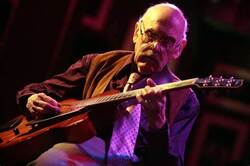
A harmonically advanced, cool-toned and subtle guitarist, Jim Hall was born on December 4, 1930 in Buffalo, New York, but grew up in Cleveland, Ohio. He began playing the guitar at the age of ten when his mother gave him an instrument as a Christmas present. At 13 he heard Charlie Christian play on a Benny Goodman record, an event he called his “spiritual awakening.” As a teenager Hall performed professionally and also took up the double bass. While he copied out solos by Charlie Christian and Barney Kessel it was horn players from whom he took the lead. Hall attended the Cleveland Institute of Music where he majored in composition, studied piano, bass and music theory.
Jim Hall moved to Los Angeles where he played with Chico Hamilton and began to gain attention from critics and fellow musicians. Hall left Hamilton's group to join the Jimmy Giuffre Three and worked on and off with Giuffre from 1957 to 1960. Hall recorded his first solo album in 1957. Hall toured during the late 1950s with Jazz at the Philharmonic and worked with Ben Webster. During 1959 he recorded the first of six albums as a featured soloist with Paul Desmond and a year later was touring Europe with Ella Fitzgerald.
Hall moved to New York City around 1960 and began performing with Lee Konitz, Sonny Rollins and Art Farmer. He formed a studio partnership with pianist Bill Evans during this time, appearing on four albums with Evans from 1962 to 1966. Hall also worked as a freelance studio guitarist for commercial recording dates during the early and mid-1960s, appearing on albums by Johnny Hartman, June Christy, Quincy Jones, Lalo Schifrin, Oliver Nelson, Gerry Mulligan, Sonny Stitt, Nat Adderley, Bob Brookmeyer and John Lewis. Starting in 1963 Hall played in the studio orchestra at The Merv Griffin Show.
In the late 1960s Hall decided to leave gig with the Griffin show and pursue a solo career more actively. He recorded and performed in Germany and Japan and in 1971 began recording for Milestone Records. While on Milestone, Hall recorded the first of three duet albums with Ron Carter. Moving to CTI Records, Hall made the 1975 “Concierto” album which featured Paul Desmond and Chet Baker. During the late 1970s and early 1980s Hall recorded with pianist George Shearing, classical violinist Itzhak Perlman and had a studio reunion with Art Farmer. He also continued recording in duos with Red Mitchell and Ron Carter. Hall recorded steadily from the 1970s until 2010, and continued to tour all over the world during these years as well. Jim Hall passed away in 2013 at the age of 83.
Here is a link to Jim Hall playing one of his own compositions on television in The Netherlands:
"CAREFUL"
Jim Hall moved to Los Angeles where he played with Chico Hamilton and began to gain attention from critics and fellow musicians. Hall left Hamilton's group to join the Jimmy Giuffre Three and worked on and off with Giuffre from 1957 to 1960. Hall recorded his first solo album in 1957. Hall toured during the late 1950s with Jazz at the Philharmonic and worked with Ben Webster. During 1959 he recorded the first of six albums as a featured soloist with Paul Desmond and a year later was touring Europe with Ella Fitzgerald.
Hall moved to New York City around 1960 and began performing with Lee Konitz, Sonny Rollins and Art Farmer. He formed a studio partnership with pianist Bill Evans during this time, appearing on four albums with Evans from 1962 to 1966. Hall also worked as a freelance studio guitarist for commercial recording dates during the early and mid-1960s, appearing on albums by Johnny Hartman, June Christy, Quincy Jones, Lalo Schifrin, Oliver Nelson, Gerry Mulligan, Sonny Stitt, Nat Adderley, Bob Brookmeyer and John Lewis. Starting in 1963 Hall played in the studio orchestra at The Merv Griffin Show.
In the late 1960s Hall decided to leave gig with the Griffin show and pursue a solo career more actively. He recorded and performed in Germany and Japan and in 1971 began recording for Milestone Records. While on Milestone, Hall recorded the first of three duet albums with Ron Carter. Moving to CTI Records, Hall made the 1975 “Concierto” album which featured Paul Desmond and Chet Baker. During the late 1970s and early 1980s Hall recorded with pianist George Shearing, classical violinist Itzhak Perlman and had a studio reunion with Art Farmer. He also continued recording in duos with Red Mitchell and Ron Carter. Hall recorded steadily from the 1970s until 2010, and continued to tour all over the world during these years as well. Jim Hall passed away in 2013 at the age of 83.
Here is a link to Jim Hall playing one of his own compositions on television in The Netherlands:
"CAREFUL"
TODAY IN JAZZ HISTORY - December 3rd
|
Francisco Raul Gutierrez Grillo was born in Havana, Cuba (or maybe Tampa, Florida) on December 3, 1909 (or maybe 1908 or 1912 or 1915). Despite the confusion surrounding the place and year of his birth, Grillo grew up to be one of the most important figures in the early Latin jazz movement using his stage name Machito.
In his youth Machito played in several bands in Havana before moving to New York City in 1937. His first gig in New York was as a vocalist with the Havana Stars, although he worked with several bands including Xavier Cugat’s group. In 1940 Machito started his own band, the Afro-Cubans which featured a typical swing-era big band instrumentation but added a bongo player. Machito hired multi-instrumentalist Mario Bauza as his musical director and they had a minor hit in 1941 with a song called Sopa de Pichon, a slang reference to “pigeon soup” a joke amongst Caribbean immigrants to New York about not having enough to eat. The Afro-Cubans were the first group to combine Afro-Cuban rhythms and jazz improvisation in a big band setting. In 1947 Machito’s band shared the stage with the Stan Kenton Orchestra for a concert at New York’s Town Hall and Machito played maracas on Kenton’s hit recording of The Peanut Vendor. In 1948 Machito recorded with Charlie Parker and the next year he played at Carnegie Hall on a program with Lester Young, Bud Powell, Coleman Hawkins and Duke Ellington. A young Willie Bobo started as a teenage Machito fan who volunteered to move equipment for the band in the late 1940s and eventually became an important part of the Latin jazz scene himself. The Machito Afro-Cubans were trend setters in the field of Latin Jazz and set the standard for future bands in the genre, including those of Tito Puente and Tito Rodriguez. All three bands were regular performers at the Palladium Ballroom on Broadway at 53rd in New York, and Machito’s band played an annual summer residency in the Catskills for more than two decades. Musicians like Dizzy Gillespie, George Shearing, Parker and Kenton all cited Machito and his orchestra as major influences. Machito was honored when New York City named the intersection of East 111th Street and 3rd Avenue “Machito Square” in 1984. Machito passed away that same year. Here is a link to the Machito Afro-Cubans performing live on Japanese television in the early 1960s: "LIVE IN JAPAN" |
TODAY IN JAZZ HISTORY - December 2nd
|
Eddie Sauter was a highly respected composer, arranger and bandleader during the swing era. He was born in the New York City borough of Brooklyn on December 2, 1914 and went on to study music at Columbia University and at Juilliard.
Sauter began as a drummer and then played trumpet professionally, including with Red Norvo’s big band. Eventually he became a full-time arranger for Norvo. He also arranged and composed for Artie Shaw, Tommy Dorsey, Woody Herman and Benny Goodman, earning a reputation for intricate work such as Benny Rides Again, Moonlight on the Ganges and Clarinet a la King. A bout of tuberculosis contracted in 1942, however, forced a stay at the Summit Park Sanatorium in Pomona, New York and stalled his musical career for some time. From 1952 to 1958 Sauter was co-leader of the Sauter/Finegan Orchestra and between 1957 and 1959 he was leader of the SWF orchestra in Germany. In 1961, he worked with tenor saxophonist Stan Getz on the album “Focus,” a collaboration for which Sauter wrote a suite of string compositions without primary melodies allowing Getz to improvise them in his customary style. Sauter and Getz collaborated again during Sauter's work composing the score for the 1965 film “Mickey One.” Sauter also composed for television programs, such as Rod Serling’s “Night Gallery.” Although Sauter is best known for jazz, he also orchestrated Broadway musicals such as “1776,” “The Apple Tree” and “It’s a Bird…It’s a Plane…It’s Superman.” In 2003, Sauter was inducted into the Big Band and Jazz Hall of Fame. Sauter died of a heart attack on April 21, 1981. Here is a link to the Benny Goodman Orchestra playing an Eddie Sauter chart on a 1941 recording: "THE BIRTH OF THE BLUES" |
TODAY IN JAZZ HISTORY - December 1st
|
John Francis Anthony “Jaco” Pastorius is proclaimed by many as the greatest electric bassist in jazz history. Of the seven bass players in the DownBeat Hall of Fame, he is the only one who specialized in the electric bass. Troubled by drug addiction and mental health issues, Pastorius’ short but brilliant career is still highly influential to musicians today. Jaco Pastorius was born on December 1, 1951 in Norristown, Pennsylvania.
By the time he was eight years old, Jaco’s family had moved to Florida and he spent many of his days at the beach and playing sports. He started his musical journey as a drummer but, after a wrist injury received while playing football required surgery and limited his ability to play the drums, he started on bass. He first tried the acoustic bass, but after a while switched to electric bass. By the time he was in his teens he was playing bass with Wayne Cochrane and the C.C. Riders. In the early 1970s Pastorius was teaching bass at the University of Miami and began a friendship with fellow faculty member and guitarist Pat Metheny. Metheny appeared on Pastorius’ debut album in 1974 along with pianist Paul Bley and drummer Bruce Ditmas. In return, Pastorius played bass on Metheny’s first record “Bright Size Life” in 1976. That same year Jaco released “Jaco Pastorius” on the Epic label. That record features Michael and Randy Brecker, Herbie Hancock, Hubert Laws, Wayne Shorter and Davis Sanborn as sidemen. After a concert by the group Weather Report Pastorius introduced himself to keyboardist and group leader Joe Zawinul. He reportedly said “I'm John Francis Pastorius III. I'm the greatest bass player in the world.” Zawinul asked for a demo tape and, sufficiently impressed with what he heard, asked Jaco to join the band in 1976. Pastorius joined in time to appear on the album “Black Market” and remained in the group until 1982. Warner Records signed Pastorius in 1981 and he produced a big band record that year called “Word of Mouth” which received a good deal of positive reviews but did not sell well. The band included Tom Scott, Wayne Shorter, Michael Brecker, Herbie Hancock, and Peter Erskine. While on tour in Japan, Pastorius’ increasingly odd behavior alarmed band members and he was soon after diagnosed as being bipolar. By the mid-1980s Jaco found it difficult to find work and was sometimes homeless. He died at the age of 35 after being beaten up by a bouncer behind a night club in Florida. He died several days later from a brain hemorrhage resulting from the beating. Here is a link to a track from Pastorius’ 1981 record “Word of Mouth:” "LIBERTY CITY" |
TODAY IN JAZZ HISTORY - November 30th
|
Jack Sheldon was a trumpet player, singer and actor. He was a member of the band on The Merv Griffin Show and participated in episodes of the educational music television series Schoolhouse Rock! where he became known for his distinctive voice. Jack Sheldon was born on November 30, 1931 in Jacksonville, Florida.
Sheldon became known through his participation in the West Coast jazz movement of the 1950s, performing and recording with such figures as Stan Kenton, Art Pepper and Gerry Mulligan. Sheldon played the trumpet and sang on the Merv Griffin Show and was Griffin's sidekick for many years. The voice of Jack Sheldon is perhaps best known from the Schoolhouse Rock! cartoons of the 1970s, such as Conjunction Junction and I’m Just a Bill. Beginning in 1984 he also voiced Louie the Lightning Bug in a series of animated musical public service announcements aimed at children across the United States and Canada promoting safety with electricity. A trumpet solo of his is featured throughout the 1984 Francis Ford Coppola film “One From the Heart.” Tom Waits' 1977 album “Foreign Affairs” includes Sheldon playing trumpet on several cuts, including the solo at the end of Burma Shave. Jack Sheldon passed away in Los Angeles in December of 2019 at the age of 88. Here is a link to Jack Sheldon playing trumpet and singing: "WHERE DO YOU START?" |
TODAY IN JAZZ HISTORY - November 29th
|
Born November 29, 1915 in Dayton, Ohio, composer, arranger and pianist Billy Strayhorn influenced the American jazz movement with his pioneering efforts. While largely unknown in his lifetime, his complex arrangements and classical components continue to inspire generations of jazz musicians.
After living in several cities in his early life, Strayhorn’s family settled in Pittsburgh, Pennsylvania in 1924, where he attended Westinghouse High School as well as the Pittsburgh Musical Institute for piano lessons and classical music study. In 1937, he started to compose and founded his first jazz group. One year later he became a protégé of Duke Ellington after meeting the renowned musician and composer in Pittsburgh. He remained with Ellington for the next 25 years in the roles of composer, arranger, and pianist. Between 1939 and 1967, Strayhorn created up to forty percent of the Ellington Orchestra’s material including the band’s most well-known song Take the A Train. Strayhorn toured internationally with the Ellington Band and lived for a brief time in Paris, but made his permanent home in New York City. Throughout his adulthood he lived as an openly gay man. Strayhorn’s classical background helped him to write longer, more complicated compositions containing music, narrative and choreography. With Ellington, he co-wrote the ground-breaking musical, “Jump for Joy.” With an all-Black cast, this satirical critique of racism opened in Los Angeles in 1941 and played Carnegie Hall in 1943. Strayhorn died of esophageal cancer at age 51 on May 31, 1967 in New York City. [This article is excerpted from a biography of Billy Strayhorn by Tisa M. Anders written for blackpast.org] Here is a link to Billy Strayhorn playing piano on his composition with the Duke Ellington Orchestra: "TAKE THE 'A' TRAIN" |
TODAY IN JAZZ HISTORY - November 28th
|
Drummer George Wettling was born in Topeka, Kansas on November 28, 1907, but by his early teens was living in Chicago. He was one of the young Chicagoans who fell in love with jazz as a result of hearing King Oliver’s Creole Jazz Band at Lincoln Gardens in the early 1920s. Oliver's drummer, Baby Dodds, made a particular and lasting impression on Wettling.
Wettling went on to work with the big bands of Artie Shaw, Bunny Berigan, Red Norvo and Paul Whiteman, but he was at his best with smaller groups led by Esddie Condon, Muggsy Spanier and himself. In these small bands, Wettling demonstrated the art of dynamics and responding to each soloist, a technique he had learned from Baby Dodds. He played with these groups throughout the 1940s and 1950s and in 1957 toured England with a Condon band that included cornetist “Wild Bill” Davison, trombonist Cutty Cutshall and pianist Gene Schroeder. Toward the end of his life, Wettling, like his friend clarinetist Pee Wee Russell, took up painting and was influenced by the American cubist Stuart Davis. Wettling believed that "jazz drumming and abstract painting seemed different for him only from the point of view of craftsmanship: in both fields he felt rhythm to be decisive". George Wettling passed away in New York City in July of 1968 at the age of 60. Here is a link to a 1944 recording by George Wettling and his Rhythm Kings: "STRUTTIN' WITH SOME BARBECUE" |
TODAY IN JAZZ HISTORY - November 27th
|
Trumpeter and composer Randy Brecker has helped shape the sound of jazz, R&B and rock for more than four decades. His trumpet and flugelhorn performances have graced hundreds of albums by a wide range of artists from James Taylor, Bruce Springsteen and Parliament/Funkadelic to Frank Sinatra, Steely Dan, Jaco Pastorius and Frank Zappa. Born in on November 27, 1945 in Philadelphia to a musical family, Randy’s musical talent was nurtured from an early age. He attended Indiana University from 1963 until 1966 and later moved to New York where he landed gigs with Clark Terry’s Big Bad Band, the Duke Pearson Big Band and the Thad Jones/Mel Lewis Jazz Orchestra.
In 1967, Brecker ventured into jazz-rock with the band Blood, Sweat and Tears, but left to join the Horace Silver Quintet. He recorded his first solo album, “Score,” in 1968. After playing with Silver, Brecker joined Art Blakey’s Jazz Messengers before teaming up with brother Michael, Barry Rogers, Billy Cobham, and John Abercrombie to form the seminal fusion group Dreams. The group recorded two adventurous and critically acclaimed albums for Columbia Records before they disbanded in 1971. By 1975, Randy and saxophonist brother Michael were ready to front their own group, the Brecker Brothers Band. They released six albums on Arista Records and garnered seven Grammy nominations between 1975 and 1981. Their eponymous first record, which Randy wrote, arranged and produced, featured his now classic composition Some Skunk Funk. In 1992, exactly ten years after they parted ways to pursue solo careers, Randy and Michael reunited for a world tour and the triple-Grammy nominated GRP recording, “The Return of the Brecker Brothers.” His 1997 record “Into the Sun” garnered Randy his first Grammy as a solo artist. He returned to his long-time love of Brazilian music in 2008 for the album “Randy in Brazil,” which was recorded in Sao Paulo with a full complement of great Brazilian musicians. As a composer, performer and in-demand clinician, Randy Brecker continues to influence and inspire young musicians around the world. Here is a link to Randy Brecker playing with the AMC Trio: "PAIN IS REAL" |
TODAY IN JAZZ HISTORY - November 26th
|
Nesuhi Ertegun was the son of the Turkish ambassador to the United States. From an early age he showed an interest in American jazz and by the time he was in his early 20’s Nesuhi was promoting jazz concerts around Washington, D.C. When his father died in 1944 and the rest of his family returned to Turkey, Nesuhi moved to California and married the owner of a jazz record shop. He helped run the store and also founded his own record label, Crescent Records. Nesuhi Ertegun was born on November 26, 1917 in Istanbul.
Ertegun founded Crescent Records for the purpose of recording New Orleans jazz legend and trombonist Kid Ory’s Creole Jazz Band and did so in 1944. Ertegun recorded mostly traditional jazz stars throughout his time with Crescent and later at Jazz Man Records and these records were a significant force in the New Orleans revival of the 1940s. He also made records with Bill Daily, Mutt Carey, Jimmy Noone and Turk Murphy. In the early 1950s Nesuhi Ertegun taught the first jazz history course for academic credit offered at a major U.S. university when he was hired at UCLA. Later in the decade he joined Jerry Wexler and Nesuhi’s brother Ahmet Ertegun at Atlantic Records in New York City. He became vice president in charge of jazz at the label. While there he produced landmark albums by John Coltrane, The Modern Jazz Quartet, Charles Mingus, Herbie Mann, Mose Allison, Lee Konitz and Ornette Coleman. He also did work outside the jazz realm producing records for Ray Charles, The Drifters, Bobby Darin and Roberta Flack. In 1971 Nesuhi left Atlantic to form what is now known as Warner Music Group where he remained until his retirement in 1987. Nesuhi was the first president of the National Association of recording Arts and Sciences which awards the Grammys. He and his brother Ahmet were also co-founders of the New York Cosmos soccer club, the most successful NASL side of the 1970s. Nesuhi died in 1989 at the age of 71 and was posthumously inducted into the Rock and Roll Hall of Fame in 1991, as well as receiving a Grammy award for lifetime achievement in 1995. The Nesuhi Ertegun Jazz Hall of Fame at Lincoln Center in New York City was named for him in 2004. Here is a link to a cut from a Lee Konitz and Warne Marsh album from 1955 produced by Nesuhi Ertegun: "TOPSY" |
TODAY IN JAZZ HISTORY - November 25th
|
Cornetist Nat Adderley played trumpet in his youth but switched to cornet while playing in a United States Army band led by his older brother, saxophonist “Cannonball” Adderley in the early 1950s. The two brothers would go on to play together in one of the most popular “soul jazz” groups in history. Nat Adderley was born in Tampa, Florida on November 25, 1931.
During the 1950s, Nat Adderley played with the big band of Lionel Hampton and with Woody Herman, as well as touring widely with trombonist J.J. Johnson. After spending time playing with Miles Davis, in 1959 Cannonball formed a quintet featuring himself and Nat and the group achieved almost immediate popularity. During the 1960s Nat Adderley would serve as cornetist, principal composer and manager for the group. His compositions Work Song, Jive Samba, Sermonette and Hummin’ have become jazz standards. For the1966 movie “A Man Called Adam,” Nat “ghosted” the trumpet playing by star Sammy Davis, Jr., who portrayed a jazz trumpeter in the film which also starred Ossie Davis and Louis Armstrong. After Cannonball’s death in 1975, Nat toured the world with his own quintet and also taught classes at Harvard University. He worked as a sideman with Sonny Fortune, Ron Carter, Gene Ammons, Benny Golson, Philly Joe Jones and Johnny Griffin. In all, Nat Adderley played on more than 100 albums, including 33 as a leader. Later he would become a member of the faculty at Florida Southern College and was inducted into the Jazz Hall of Fame in Kansas City. Nat Adderley passed away in 2000 from complications of diabetes at the age of 68. Here is a link to Nat Adderley leading his group in 1990: "WORK SONG" |
TODAY IN JAZZ HISTORY - November 24th
|
Probably best known for his work with Benny Goodman, pianist Teddy Wilson was born on November 24, 1912 in Austin, Texas. During his career he also played with Louis Armstrong, Lena Horne, Billie Holiday, Sarah Vaughan, Ella Fitzgerald and worked as a leader for more than fifty years. Wilson was one of the first Black musicians to be featured with predominantly white groups.
Teddy Wilson studied piano at the Tuskegee Institute and had early gigs with Speed Webb, Louis Armstrong and Benny Carter before being hired to play piano in Benny Goodman’s trio in 1935. The group later expanded to a quartet including Wilson, Goodman on clarinet, drummer Gene Krupa and vibraphonist Lionel Hampton. This group played during intermissions at performances by the hugely popular Benny Goodman Orchestra during the mid and late 1930s. After leaving Goodman's employ Wilson briefly led his own big band but spent most of his time working in small group settings with some of the giants of the swing era including Ben Webster, Roy Eldridge, Lester Young, Buck Clayton and Red Norvo. He also was supportive of left-wing causes and played at fund raising events for Russian War Relief during World War II. Wilson appeared as himself in a few films and was for a time the music director for the Dick Cavett television program. Later in life Teddy Wilson taught at Julliard and received an honorary doctorate from the Berklee College of Music in 1979. Wilson was known for his light touch and elegance at the piano and was influential for many later keyboard artists. He died of cancer in 1986 at the age of 73. Here is a link to Teddy Wilson playing the standard All of Me with his trio: "ALL OF ME" |
TODAY IN JAZZ HISTORY - November 23rd
|
Trombonist and vibraphonist Tyree Glenn was born in Coriscana, Texas on November 23, 1912 and went on to play with some of the most popular bands of the swing era including those led by Benny Carter, Cab Calloway and Duke Ellington.
Glenn played with Texas bands before moving to Washington, D.C. in the early 1930s where he played with Bob Young and Tommy Myles. In 1936 he moved to California and played with Carter before joining up with Cab Calloway’s orchestra in 1939. After seven years in Calloway’s employ, Glenn toured Europe with a band led by Don Redman shortly after the end of World War II. Between 1947 and 1951 Tyree Glenn was a member of the Duke Ellington Orchestra, where he played trombone as well as being the only vibraphonist Ellington ever had on the band. He is featured on Ellington’s recording of Liberian Suite and wrote the tune Sultry Serenade for the group. During the 1950’s Glenn worked as a studio musician, led his own quintet and did radio work. Between 1965 and 1971 he toured the globe with Louis Armstrong’s All-Stars. Tyree Glenn also played and recorded with Buck Clayton, Gene Krupa and Clark Terry in addition to recording seven albums as a leader. Glenn passed away from cancer in 1974 at the age of 61. Here is a link to playing in the U.K. with Louis Armstrong while a member of his All-Stars: "MOOD INDIGO" |
TODAY IN JAZZ HISTORY - November 22nd
|
Trombonist Jimmy Knepper was born in Los Angeles on November 22, 1927, the second son of a nurse and a police officer. His parents divorced shortly after his birth Jimmy and his older brother were sent to several boarding and military schools. He picked up his first instrument, an alto horn, at the age of six , but his music teacher persuaded him to put aside the alto and pick up the trombone because, as he said, he had a "trombone mouth". He played his first professional gigs in Los Angeles at the age of 15.
Knepper married Maxine Helen Fields, a trumpet player with the all-female jazz band the International Sweethearts of Rhythm while he was on a tour with the Maynard Ferguson band. In 1959 Knepper toured Africa with Herbie Mann and in 1962 traveled to the Soviet Union as member of Benny Goodman’s ensemble. Jimmy played trombone in the pit orchestra for the entire original run of the Broadway show “Funny Girl,” and was an original member of the Thad Jones/Mel Lewis Orchestra beginning in 1965 and remaining with the group until the mid-1970s. During his career Knepper collaborated with numerous jazz greats including Gil Evans, Clark Terry, Kenny Burrell, Lee Konitz and Dizzy Gillespie, but he may be best remembered for his stormy relationship with bassist and bandleader Charles Mingus, with whom he had several less-than-pleasant encounters. At one point Knepper sued Mingus for assaulting him. However, after Mingus’ death, Knepper led the Mingus Dynasty Orchestra for a time. In 1980 Knepper received a Grammy Award nomination, for “Best Jazz Instrumentalist Performance, Soloist,” and he was named “Best Trombonist” in the DownBeat Reader’s Poll from 1981 through 1984. Jimmy Knepper passed away in 2003 of complications from Parkinson’s Disease. Here is a link to the Jimmy Knepper Quintet in a recording from the 1980s: "FIGMENT FRAGMENT" |
TODAY IN JAZZ HISTORY - November 21st
|
One of the most influential saxophonists of all time was tenor man Coleman Hawkins. Although there were tenor saxophonists in jazz before Hawkins, he was the first to develop a style specific to the instrument and not just imitate clarinet technique. He was born on November 21, 1904 in St. Joseph, Missouri.
Coleman Hawkins, sometimes known by the nicknames “Hawk” or “Bean,” spent time in Chicago and Topeka, Kansas during his youth and studied music theory at Washburn College in Topeka while still attending high school. He played some piano and cello as a youngster and began his saxophone studies at the age of 9. By the time he was 15 he was playing gigs around eastern Kansas. He toured with Mamie Smith’s Jazz Hounds from 1921 until 1923 at which time he took up residence in New York City and became a member of the Fletcher Henderson Orchestra where he stayed until 1934. Hawkins recorded with many of the most important musicians of the 1920s and 1930s such as Ben Webster, Louis Armstrong, Benny Goodman, Django Reinhardt and Benny Carter. In 1939 Coleman Hawkins made one of the most significant recordings in jazz history when he went into the studio and cut Body and Soul for the Victor label. On the record Hawkins plays two choruses but eschews the melody almost completely except for the first four measures. The rest of the record is total improvisation and has been cited by many as the first “tremors” of the bebop era. Although some called the recording an “afterthought” at the session, Hawkins had in fact been playing the tune as an encore at live performances for some time prior to cutting the record. Hawkins led a big band briefly during the 1940s and was the leader on the record that some consider the first bebop recording. It was made on February 16, 1944 and featured Dizzy Gillespie, Oscar Pettiford and Max Roach. Hawkins also recorded with a then-unknown young pianist named Thelonious Monk. Always challenging himself by associating with young musicians, Hawkins recorded with John Coltrane in 1957 and sometimes toured with the Jazz at the Philharmonic series. Coleman Hawkins is mentioned with regularity as an important influence by musicians to this day and his 1939 recording of Body and Soul is still studied by students in jazz programs around the world. He passed away from liver disease in 1969. Here is a link to that legendary 1939 recording: "BODY AND SOUL" |
TODAY IN JAZZ HISTORY - November 20th
|
Although she was the epitome of a vocalist during the cool movement of the 1950s, June Christy was a warm, chipper vocalist able to stretch out her impressive voice on bouncy swing tunes and set herself apart from other vocalists with her deceptively simple enunciation. From her time in the Stan Kenton Orchestra she inherited a focus on brassy swing from arranger friends like Pete Rugolo. Rugolo would become a consistent companion far into her solo days, too, arranging most of her LPs and balancing her gymnastic vocal abilities with a series of attentive charts.
Born Shirley Luster in Springfield, Illinois on November 20, 1925, she began singing early on and appeared with a local society band during high school. She moved to Chicago in the early 1940s, changed her name to Sharon Leslie, and sang with a group led by Boyd Raeburn. In 1945, after hearing tha Anita O’Day had just left Kenton, she auditioned for the role and got it early that year. Despite an early resemblance to O’Day, the singer -- now renamed June Christy -- soon found her own style. As she became more and more popular with the band, arranger Rugolo began writing charts with her style especially in mind. When Kenton’s band broke up in 1948 Christy worked the nightclub circuit for awhile before reuniting with Kenton for his 1950 Innovations in Modern Music Orchestra. She had already debuted as a solo act the year before, recording for Capitol with a group led by her husband, tenor saxophonist Bob Cooper. Christy's debut album for Capitol Records, 1954's “Something Cool, was recorded with Rugolo at the head of the orchestra. The album launched the vocal cool movement and hit the Top 20 album charts. She recorded a number of concept albums prior to her retirement from the music business in 1965. Christy returned to the studio only once, for 1977's “Impromptu” on the Musicraft label. June Christy passed away in 1990 at the age of 64. [This article is excerpted from the biography of June Christy written by John Bush for allmusic.com] Here is a link to June Christy singing on the television program "Playboy's Penthouse" in 1959: "SOMETHING COOL" |
TODAY IN JAZZ HISTORY - November 19th
|
Legendary trombonist Tommy Dorsey always celebrated his birthday on November 19th, although records in the Pennsylvania county of his birth show that he was actually born eight days later than that in the year 1905. Tommy’s father, a coal miner and amateur cornetist, instilled a love for music in his children and, along with Tommy’s mother Tess, saw a career in music as a way for them to escape a life in the mines. Along with his older brother, reed man Jimmy Dorsey, Tommy did in fact escape and became one of the leading band leaders of the Swing Era.
When Tommy was 15 his family moved to Lansford, Pennsylvania where “Pops” Dorsey became a music teacher and the director of the town band. Both Tommy and Jimmy played in that group and others in the area. In the early 1920s the Dorsey brothers were quite intrigued with the emergence of jazz and were influenced by groups like The Original Dixieland Jazz Band and soon formed their own group called The Wild Canaries. Soon both brothers were hired to play in a band called the Scranton Sirens that travelled to New York City to make records for the Okeh label in 1923. A year later Tommy was playing for Jean Goldkette, one of the most successful of the early big band leaders. In January 1925 Tommy Dorsey played on Bix Beiderbecke’s first recording session as a leader, and two years later they would both be playing in the most successful popular music organization of the era, the Paul Whiteman Orchestra. In the early 1930s both Jimmy and Tommy Dorsey were finding lots of work as studio musicians in New York City. In 1934 they were convinced to start their own big band by Glenn Miller who became the arranger and musical director for the ensemble. Although successful, the band didn’t stay together long as Tommy’s legendary short temper and Jimmy’s drinking pushed the two apart. Eventually, in 1935 Tommy walked off the stage during a gig at the Glen Island Casino in New Rochelle, New York and soon the Dorsey Brothers Orchestra became Jimmy Dorsey and his Orchestra while Tommy went off to form his own group. The Tommy Dorsey Orchestra debuted October 1, 1935 at the French Casino in New York. Over the next year the band was selling records, touring and making regular appearances on radio programs. They were receiving positive reviews from the critics and had several #1 records. Eventually Tommy would create an ensemble within the big band called the Clambake Seven that would play small group jazz. Many bands of the era were classified as “sweet” bands that specialized in romantic ballads, or “hot” bands that played more up-tempo music. The Tommy Dorsey Orchestra was equally adept in both areas and one of the most popular groups of the era. Some great musicians passed through the band including Buddy Rich and Frank Sinatra. In the 1940s Tommy would briefly add a string section to his orchestra along with a harpist and dual pianos. Some memorable recordings were made by this larger group, but it became economically unfeasible to continue with that instrumentation. In the 1950s the Dorsey Brothers would reunite to host a television variety program on NBC which gave Elvis Presley his first national exposure. One of Tommy Dorsey’s lasting legacies is that he proved that the trombone could be a lyrical, melodic instrument and not just be used as a novelty in jazz. Dorsey passed away in his sleep in 1956. Here is a link to a 1943 performance by the Tommy Dorsey Orchestra during the era during which they featured a string section. Also seen is a 28-year-old Buddy Rich on drums: "WELL GIT IT" |
TODAY IN JAZZ HISTORY - November 18th
|
Vocalist, songwriter and pianist Sheila Jordan grew up in Summerhill, Pennsylvania before returning to her birthplace of Detroit, Michigan where she was born on November 18, 1928. During her career Jordan has recorded as a session musician with an array of critically acclaimed artists in addition to recording her own albums. Jordan pioneered a bebop scat singing style with an acoustic bass as the only accompaniment. Her music has earned praise from many critics, particularly for her ability to improvise lyrics.
Jordan sang and played piano in jazz clubs in Detroit and was a member of the trio Skeeter, Mitch, and Jean which wrote and performed lyrics to music by Charli Parker. They went to Parker's performances in Detroit, met him, and he would ask them to sing. In 1951, Jordan moved to New York City and studied harmony and music theory with Lennie Tristano and Charles Mingus, but she concentrated on the music of Parker, and Jordan and Parker became friends. She has referred to him as one of her teachers. In 1952 she married Duke Jordan who played piano in Parker's band. In the early 1960s she performed and recorded with George Russell, Herbie Nichols and Steve Kuhn and recorded her first record as a leader for Blue Note in 1962. Jordan then took a hiatus from the club scene to raise her daughter and work as a legal secretary. In the 1970’s she worked with Lee Konitz, Carla Bley and Roswell Rudd, and taught at the City College of New York from 1978 until 2005. Jordan was named an NEA Jazz Master in 2012. Today is Sheila Jordan’s 95th birthday. Here is a link to Jordan singing about her life: "SHEILA'S BLUES" |
TODAY IN JAZZ HISTORY - November 17th
|
Although trombonist Roswell Rudd was conversant in all jazz sub-genres, he is best known for his work as an avant-garde and free jazz musician, and for his work in the world music realm. Rudd was born in Connecticut 87 years ago on November 17, 1935.
While a student at Yale University, Roswell Rudd played in a Dixieland band during the mid-1950s. The group, Eli’s Chosen Six, made two albums. After graduation Rudd worked with a number of well-known avant-garde musicians including Cecil Taylor, Steve Lacy and the New York Art Quartet. He was also heard with Larry Coryell, Pharoah Sanders, Gato Barbieri and had a longstanding musical relationship with saxophonist Archie Shepp. In addition to his work as a performer, Rudd spent time working with ethnomusicologist Alan Lomax on his Cantometrics and Global Jukebox projects. He also taught ethnomusicology at the University of Maine and at Bard College. He could be found teaching master classes and conducting workshops around the globe. Roswell Rudd spent a good deal of time in Africa and worked extensively with musicians from Mali. He also recorded with the Mongolian Buryat Band in 2005. Rudd recorded 26 albums as a leader or co-leader and received two Grammy nominations. He was voted Best Trombonist in the 2010 DownBeat Critics Poll. Roswell Rudd passed away from prostate cancer in 2017. Here is a link to the title track from his 1967 record “Everywhere,” recorded for the Impulse! label: "EVERYWHERE" |
TODAY IN JAZZ HISTORY - November 16th
|
Musician and composer William Christopher “W.C.” Handy was born on November 16, 1873, in Florence, Alabama. Known as the “Father of the Blues,” Handy is recognized as one of the leaders in popularizing blues music. Young Handy’s interest in music was discouraged by his family and his church. He once saved his money and purchased a guitar which his father, Charles Bernard Handy, a pastor, made him return in exchange for a dictionary. Handy joined a band as a teenager and purchased a cornet which he kept secret from his parents.
Despite having little formal training, W.C. Handy was exceptionally bright. In 1892, he traveled to Birmingham to take a state teaching exam. He passed with ease and briefly became a schoolteacher. Handy soon realized, however, that teaching was a poor-paying profession and quit to pursue a career in music. In 1896, at the age of 23, Handy became bandmaster for “Mahara’s Minstrels.” He chose this group despite the low regard many educated African Americans had for these shows. Handy toured with this group for three years, traveling a circuit that crisscrossed the South but also took him as far as Chicago and Havana. Earning a living on the road proved difficult, however, and in 1909 Handy settled in Memphis, Tennessee. There he organized a band that performed on Beale Street. It was here that Handy wrote his first song, Mr. Crump, as a campaign tune for mayoral candidate and later political boss E.H. Crump. The song, which Handy later renamed Memphis Blues, became nationally popular. W.C. Handy started Handy Brothers Music Company and produced his next hit song, St. Louis Blues. Other successful songs followed, including Yellow Dog Blues in 1914 and Beale Street Blues in 1916. In 1918, Handy moved his business to New York City where he experienced continued success and worked steadily through the 1920s and 1930s promoting blues to mainstream audiences. In 1928, Handy became the first artist to perform the blues in New York City’s Carnegie Hall. One year later his St. Louis Blues became the basis for a Hollywood film by the same name. Handy continued to write and publish music and also wrote five books on the blues, black folk music, and early African American composers. By the 1940s Handy was wealthy and living on Striver’s Row in Harlem. An accidental fall in 1943 from a subway platform caused him to go blind. W. C. Handy died from pneumonia on March 29, 1958. His hometown hosts a music festival every year in his honor and his original house is now a museum and tourist attraction. [This article is excerpted from the W.C. Handy biography written by Victor Okocha for blackpast.org] Here is a link to W.C. Handy playing on the Ed Sullivan Show in 1949: "ST. LOUIS BLUES" |
TODAY IN JAZZ HISTORY - November 15th
|
Younger brother of trombonist Robin Eubanks, guitarist Kevin Eubanks was born in Philadelphia on November 15, 1957. While in elementary school, Kevin learned violin, trumpet and piano at the Settlement School in his hometown. After high school he attended the Berklee College of Music in Boston.
In 1979 Kevin was hired by Jazz Messengers bandleader Art Blakley to play in his 11-piece “big band” for a European tour. The ensemble was unique in that it caried as members two sets of brothers: Branford and Wynton Marsalis and Robin and Kevin Eubanks. During the 1980s Kevin played with Roy Haynes, Slide Hampton and Sam Rivers. He released his first album as a leader in 1983. He has recorded fifteen more in the intervening forty years and appeared on more the 100 albums in total. In 1995 Eubanks replaced Branford Marsalis as the bandleader on The Tonight Show with Jay Leno and continued working with the comedian until 2010. During that time he kept an active performing and recording schedule working with artists such as Jean-Luc Ponty, Dianne Reeves, Dave Holland and Terri Lyn Carrington. Eubanks also has taught at the Banff School of Fine Arts, Rutgers University and at the Charlie Parker School in Italy, and has received an honorary doctorate from Berklee. Here is a link to Kevin Eubanks playing at The Baked Potato in Los Angeles in 2007: "LIVE AT THE BAKED POTATO" |
TODAY IN JAZZ HISTORY - November 14th
|
Patriarch of a great New Orleans musical family, pianist and educator Ellis Marsalis was born on November 14, 1934. He played saxophone during high school but switched to piano while attending Dillon University. He later attended Loyola University of New Orleans for graduate work. Ellis Marsalis had a fine career as a pianist, but also taught at the New Orleans Center for Creative Arts where his students included Donald Harrison, Harry Connick, Jr., Terence Blanchard and Nicholas Payton. He had several children that have gone on to notable careers in the music world, as well, including Branford, Wynton, Delfeayo and Jason. As a family they received the NEA Jazz masters Award in 2011.
Ellis Marsalis began performing professionally during the 1940s and recorded 20 albums as a leader. In addition, he worked with Nat and Cannonball Adderley, Al Hirt, Eddie Harris, David “Fathead” Newman and Marcus Roberts. He also appeared on records by the Count Basie Orchestra, Gerald Wilson, the Preservation Hall Jazz Band and with his musicians sons. Ellis also taught at the University of New Orleans and Xavier University of Louisiana. Marsalis received an honorary doctorate from Tulane University in 2007 and was inducted into the Louisiana Music Hall of Fame in 2018. The Berklee College of Music also granted him an honorary doctorate that same year. Ellis Marsalis passed away in April of 2020 due to complications from Covid-19. Here is a link to a performance by the Ellis Marsalis Quartet at the 2012 New Orleans Jazz and Heritage Festival: "TWELVE'S IT" |
TODAY IN JAZZ HISTORY - November 13th
|
Drummer Idris Muhammad was born Leo Morris on November 13, 1939 in New Orleans and grew up in the city's Thirteenth Ward. As a youth he spent time with the Neville Brothers. Muhammad showed early talent as a percussionist and played in a Mardi Gras parade when he was only nine years old. He began his professional career at the age of fourteen performing with The Hawketts on their recording Mardi Gras Mambo. Two years later, in 1956, he played drums on Fats Domino’s recording Blueberry Hill.
Muhammad began touring with Sam Cooke and later played with Jerry Butler and Curtis Mayfield, working mostly with R&B acts before moving to New York City in the mid-1960s. Once there he became active in the jazz scene playing with Kenny Dorham, Horace Silver, Lou Donaldson and Betty Carter. He was also a member of the house band at the Apollo Theater. Muhammad made over 150 recordings for the Prestige, Blue Note and CTI labels and often performed with artists who were merging jazz and funk such as Donaldson and Charles Earland. He also appeared as a sideman with such artists as Gene Ammons, Nat Adderley, George Benson and Bob James. Recording engineer Rudy Van Gelder often worked with Muhammad and had a special musical relationship with him. In the early 1970s Idris Muhammad played for four years in the pit orchestra for the musical “Hair” on Broadway before leaving to tour with Roberta Flack. He recorded the first of his twelve albums as a leader for the Prestige label in 1970. Towards the end of the 1970s Muhammad joined saxophonist Johnny Griffin’s and also spent time playing with Pharoah Sanders. In the 1980s Muhammad had moved to Europe and continued to regularly play and record with the likes of Ahmad Jamal, Chico Freeman and Sonny Rollins. In 2011 he moved back to New Orleans where he died of kidney failure in 2014 at the age of 74. Here is a link to Idris Muhammad playing with Joe Lovano in the year 2000: "MODERN MAN" |
TODAY IN JAZZ HISTORY - November 12th
|
Perhaps best remembered as an important soloist in the Count Basie band, trumpeter Buck Clayton was born on November 12, 1911 in Parsons, Kansas. His career would take him to some pretty exotic places and he would be associated with some of the biggest names in jazz.
Although he began piano lessons at the age of six, Clayton did not take up the trumpet until he was in his teens, but by his early 20s he was briefly a member of the Duke Ellington Orchestra. Living in Los Angeles at the time, he led a band called The 14 Men from Harlem. By 1934 Clayton was living in Shanghai and leading a group called The Harlem Gentlemen, but returned to the United States in 1937 to accept an offer to play with Willie Bryant’s organization in New York. However, on his way across the country from California he stopped in Kansas City and was persuaded by Count Basie to stay and play with his band at the Reno Club there. He stayed with Basie for six years and, when the band moved their operations to New York City, Clayton was able to pick up additional work playing with Lester Young and Billie Holiday. In 1943 Clayton was drafted into the military which ended his time playing with Basie. After his discharge in 1946 he did continue to write arrangements for Basie as well as for Benny Goodman and Harry James. Around that same time he began an association with Norman Granz’s Jazz at the Philharmonic tours. In the 1950s Buck Clayton began to spend more and more time working in Europe and toured with Mezz Mezzrow’s group. Over the next several years he would tour and record in the UK, in Japan and in Australia. Buck Clayton underwent lip surgery in 1969 and did not return to playing until three years later. He finally gave up playing altogether in 1979 after participating in a U.S. State Department concert tour of Africa. After his playing days were through, he continued to write and arrange and taught at Hunter College in New York City. Buck Clayton died in his sleep in 1991 at the age of 80. Here is a link to a television appearance by the Buck Clayton All-Stars that features some of Clayton’s old bandmates from the Basie orchestra: "OUTER DRIVE" |
TODAY IN JAZZ HISTORY - November 11th
|
Vocalist Ernestine Anderson was born in Houston, Texas on this date in 1928. During her career in music Anderson would become one of the most recognized jazz singers of her time and be nominated for Grammy awards four times.
Growing up in Texas her family listened to a lot of blues records and Ernestine cited the big bands coming through her hometown as an additional influence on her musical interests. She specifically mentioned the Erskine Hawkins, Jimmie Lunceford, Billy Eckstein and Count Basie bands in a 1998 interview. Anderson would sing along with her parent’s blues records and was entered in a talent contest at the age of 12. She knew only two songs and when the accompanist asked what key she wanted she said “C.” It turned out that C was not a good key for her so she sang around the melody and afterwards one of the musicians told her that she was a jazz singer. At the age of 16 Ernestine Anderson’s family moved to Seattle, Washington where she attended Garfield High School. While still in her teens she began singing with the “Bumps” Blackwell band in Seattle that also included Quincy Jones on trumpet and Ray Charles playing piano. Shortly thereafter she went on tour with the Johnny Otis band and by 1952 she was singing with Lionel Hampton. The following year she relocated to New York City and in 1955 appeared on a Gigi Gryce album. In 1958 she made her first album as a leader in Sweden and the next year she was named a “New Star” by DownBeat Magazine. Anderson spent much of the 1960s living and working in Europe because popular tastes in the United States made it more difficult for jazz musicians to find work. She made a comeback of sorts starting at the 1976 Concord Jazz Festival which resulted in a contract with the Concord label and a string of eleven successful and critically acclaimed records over the following 15 years. In 1993 she was back in Seattle and signed with Qwest records, owned and operated by her old friend from high school days Quincy Jones. She continued to work and record over the next two decades and established herself as one of the great vocal talents of her era. Ernestine Anderson passed away in Seattle in 2016 at the age of 87. Here is a link to a live performance of an Ernestine Anderson favorite from 1984: "NEVER MAKE YOUR MOVE TOO SOON" |
TODAY IN JAZZ HISTORY - November 10th
|
Hubert Laws was born November 10, 1939 in Houston, Texas, the second of eight children. Many of Hubert’s siblings also entered the music industry, including saxophonist Ronnie Laws. Hubert began playing flute in high school after volunteering to substitute for the school orchestra's regular flutist. He became adept at jazz improvisation by playing in the Houston-area jazz group the Swingsters, which eventually evolved into the Modern Jazz Sextet, the Night Hawks, and The Crusaders. At the age of 15 he was a member of the early Jazz Crusaders for six years while also performing classical music.
Laws won a scholarship to the Julliard School of Music in 1960, where he studied music both in the classroom and with master flutist Julius Baker. He was a member of the New York Metropolitan Opera Orchestra and also played with the New York Philharmonic under the baton of Leonard Bernstein. While still at Juilliard Laws played flute during the evenings with several acts, including Mongo Santamaria, and in 1964, began recording as a bandleader for Atlantic Records. In addition, Hubert Laws appeared on albums by Chet Baker and George Benson. He later recorded with his younger brother Ronnie and played flute on Gil Scott-Heron’s 1971 album “Pieces of a Man,” which featured the jazz poem The Revolution Will Not Be Televised. During the 1970s, Laws was a member of the New York Jazz Quartet and recorded extensively. He can be heard on records by Herbie Hancock, Bob James, Aretha Franklin, Carly Simon, Quincy Jones, Jaco Pastorius, George Benson, Stevie Wonder, Clark Terry, J.J. Johnson, McCoy Tyner and James Moody. Laws has recorded thirty albums as a leader since 1964, in addition to being nominated for three Grammy awards. He is also an NEA Jazz Master. Here is a link to a Hubert Laws live performance from 2019: "MALAGUENA" |
TODAY IN JAZZ HISTORY - November 9th
|
One of the true characters in jazz history was clarinetist and saxophonist Mezz Mezzrow. He is probably better known today for the things he did off the bandstand rather than the music he made. His given name was Milton Mesirow and he was born on November 9, 1899 in Chicago.
Mezzrow is referred to as a “juvenile delinquent” by his biographer and he claims that it was in jail and reform schools that he learned to play jazz and blues. Although born into a Jewish family, by the time he was in his 20s Mezzrow had adopted Black culture as his own. He was a well-known figure on the Chicago jazz scene of the 1920s and was friendly with “King” Oliver, Sidney Bechet, Louis Armstrong and Bix Beiderbecke. Mezzrow made his first records in 1933 when he led The Mezz Mezzrow Orchestra, a diverse group made up of Benny Carter, Teddy Wilson, Willie “The Lion” Smith and Max Kaminsky. The following year Mezzrow appeared on record with Fats Waller. Beginning around 1938 Mezzrow began making a series of recordings that helped spur the “New Orleans Revival.” Many of these records were made with soprano saxophonist and friend Sidney Bechet. In the mid-1940’s Mezzrow started his own record label which most often released records featuring the owner. After appearing at the Nice Jazz festival on the French Riviera in 1948, Mezzrow moved to that country and continued to organize bands there, often made up of American expatriate musicians or Americans on tour in Europe. Mezzrow is known not only for his involvement with the music business, but also for his advocacy for marijuana. He was not only an advocate but as early as the 1920s he was supplying some of the biggest names in jazz with marijuana, most notably Louis Armstrong. He was so associated with cannabis that “Mezz” became a slang term for marijuana among musicians of the time. Although Mezzrow’s recordings were made on 78 rpm records, several compilations of his work have been released in the years after his passing. Mezz Mezzrow died in Paris in 1972. In 2015 a New York City jazz club was opened and named in his memory. Here is a link to a 1947 recording made by the Mezzrow Bechet Quintet on Mezzrow’s label: "CHICAGO FUNCTION" |
TODAY IN JAZZ HISTORY - November 8th
|
Guitarist Russell Malone has worked with Jimmy Smith, Harry Connick, Jr., Diana Krall, Benny Green and many others during his career. He first picked up a toy guitar when he was four years old and has gone on to become a leading jazz guitarist. Russell Malone was born on November 8, 1963 in Albany, Georgia.
Malone is mostly self-taught and remembers being inspired by seeing a televised performance by George Benson when he was young. After he first gained wide notice while playing with organist Jimmy Smith in 1988 Malone spent the early 1990s playing with Harry Connick, Jr. That three-year partnership ended when he joined the Diana Krall Trio in 1995 and was part of the group that produced three Grammy-nominated albums, one of which, “When I Look in Your Eyes,” won a Grammy. Malone followed that up by appearing with pianist Benny Green on a series of records in the late 1990s and early 2000s. Russel Malone has released 15 albums as a leader since 1992 and appeared as a sideman with David Sanborn, Houston Person, Ray Brown, Natalie Cole, Sonny Rollins, Diane Reeves and The Chieftains. He often appears in trio and quartet settings. Here is a link to Russel Malone playing a Juan Tizol classic: "CARAVAN" |
TODAY IN JAZZ HISTORY - November 7th
|
Born in New York City on November 7, 1916, Joe Bushkin began his career by playing trumpet and piano with New York City dance bands, including Frank LaMare's Band at the Roseland Ballroom. In 1935 he joined trumpeter Bunny Berigan’s band and played with Eddie Condon for two years beginning a year later. Bushkin rejoined Condon in 1938 before leaving again, this time to become a member of Muggsy Spanier’s Ragtime Band in 1939.
From the late 1930s through to the late 1940s, he also worked with Tommy Dorsey and Condon on records, radio and television. He worked on the soundtrack of the movie “The Road to Morocco” in 1942 before joining the United States Army Air Corps during World War II. After the war Bushkin recorded with Lester Young and played with Bud Freeman and Benny Goodman. Later he performed with Louis Armstrong and his All Stars at the Cavalcade of Jazz concert held at Wrigley Field in Los Angeles. In the 1950s Bushkin continued to play and record and made television appearances, as well. Joe Bushkin recorded eighteen albums as a leader between 1950 and 1979, including collaborations with trumpeter Buck Clayton and fellow keyboard man Mel Powell. In his 60s, Bushkin's semi-retirement was ended by an offer from Bing Crosby for them to tour together in 1976 and 1977. Bushkin also appeared on Crosby's 1975 Christmas TV special with Fred Astaire. He also performed in a concert series at New York's St. Regis Hotel in 1984 that celebrated his fifty years in show business. Joe Bushkin died of pneumonia in Santa Barbara, California, in 2004. Here is a link to Joe Bushkin in a televised performance from 1975. He's introduced by songwriter Johnny Mercer: "HALLELUJAH" |
TODAY IN JAZZ HISTORY - November 6th
|
Pianist Joe Baque was a mainstay of the jazz scene in the South Sound for three decades after he moved to Olympia, Washington in the mid-1980s. Baque was born in the borough of Queens in New York City in 1922 and passed away one year ago today at the age of 100.
Joe Baque began taking piano lessons at a young age and played his first paying gig at 13. As a young boy he developed an ability to understand and remember songs after hearing them just a few times. Over the ensuing 87 years he would play with Louis Armstrong, Coleman Hawkins, Lena Horne and Stan Getz, perform at Carnegie Hall and appear on the Tonight Show and the Merv Griffin Show. He also played regularly at the Olympia Farmer’s Market. In addition to his life as a musician, Joe was a foster parent to more than 70 children and cared for many rescue animals in his home. Baque also taught innumerable piano students over the years. Here is a link to Joe Baque playing at Boxley's Jazz Club in North Bend, Washington: "C JAM BLUES" |
TODAY IN JAZZ HISTORY - November 5th
|
Joe Sullivan was the ninth child of Irish immigrant parents. He studied classical piano for 12 years and at age 17, he began to play popular music in silent-movie theaters, on radio stations, and with dance orchestras where he was exposed to jazz. He graduated from the Chicago Conservatory of the Performing Arts at Roosevelt University and subsequently became an important contributor to the Chicago jazz scene of the 1920s. Joe Sullivan was born November 5, 1906.
Sullivan's recording career began in1927 when he joined McKenzie and Condon’s Chicagoans. The group, led by banjo player Eddie Condon and vocalist Red McKenzie made several recordings during that period that were important influences on the “Chicago Style” of 1920s jazz. Other musicians in Sullivan’s circle included cornetist Jimmy McPartland, saxophonists Frank Teschemacher and Bud Freeman, bassist Jim Lanigan and drummer Gene Krupa, some of whom were associated with the famous “Austin High Gang.” In 1933 Sullivan was hired by Bing Crosby as his accompanist. Together they made many recordings and were heard on numerous radio broadcasts. Four years later, while Joe was convalescing at a sanitarium in California after contracting tuberculosis, Crosby organized and appeared in a five-hour benefit for him before an audience of six thousand at the Pan-Pacific Auditorium in Los Angeles. The show was broadcast over two radio stations and featured performances by the bands led by Jimmy Dorsey, Ray Noble, Woody Herman and Louis Prima. After his recovery, Sullivan briefly rejoined Bing Crosby in 1938 and played with Bob Crosby and his Bobcats in 1939. While leading Joe Sullivan's Cafe Society Orchestra in 1940 he had a minor hit with the song I’ve Got a Crush on You. By the 1950s, Sullivan was largely forgotten, playing solo piano in San Francisco. Excessive drinking caused Sullivan to become increasingly unreliable and unable to keep a steady job, either as band member or soloist. However, in 1963 he did play with Jack Teagarden and Pee Wee Russell at the Monterey Jazz Festival. Joe Sullivan died in San Francisco in October 1971, at the age of 64. Here is a link to Joe Sullivan playing one of his compositions: "LITTLE ROCK GETAWAY" |
TODAY IN JAZZ HISTORY - November 4th
|
Jeff Lorber was born in a Philadelphia suburb on November 4, 1952. He has gone on to have a successful career as a keyboardist, composer and producer that has spanned more than four decades.
Lorber began piano studies at the age of 4 and attended the Berklee College of Music in the early 1970s. While there he played with guitarist and future Miles Davis sideman guitarist John Scofield. He later moved to Vancouver, Washington across the Columbia River from Portland, Oregon. His first group, Jeff Lorber Fusion, released their debut album on Inner City Records in 1977. The group played a jazz-funk fusion inspired by Herbie Hancock, Chick Corea and the band Weather Report. Lorber played multiple keyboards in the group as did Corea, Hancock and Joe Zawinul of Weather Report. On their fourth album, 1980’s “Wizard Island,” the group introduced a little-known saxophonist from Seattle named Kenneth Goerlick, who would soon become known as Kenny G. During the 1980s Lorber’s group came under increasing pressure from their labels to produce more pop-oriented songs featuring vocalists much to the leader’s dismay. In fact, in 1986 he began a seven-year hiatus from the music business. Even though his records were meeting with commercial success, he was not happy with the direction he was being forced to take the music. In addition to his work with Jeff Lorber Fusion, Lorber has released 13 albums as a solo act, as well as 4 with the trio Jazz Funk Soul. Lorber received six Grammy nominations prior to winning his first in 2018 for the album “Prototype.” In 2004 Jeff Lorber was diagnosed with polycystic kidney disease and received a kidney transplant. His wife was the donor. Since that time Lorber has been a spokesman for the PKD Foundation, raising money and awareness about the disease. Here is a link to a track from the 1980 Jeff Lorber Fusion record “Wizard Island:” "CITY" |
TODAY IN JAZZ HISTORY - November 3rd
|
Tenor saxophonist Billy Mitchell was born in Kansas City, Missouri on November 3, 1926. When he was a teenager his family moved to Detroit where he played music at Cass Technical High School. He was a close friend of trumpeter Thad Jones, also from Detroit, with whom he made several recordings.
By the time Mitchell was 17 he was on the road playing professionally. Known for his deep and confident sound, he worked with Nat Towles’ band in Detroit before joining Lucky Millinder’s orchestra in New York City in the late 1940s. He replaced Gene Ammons in the Woody Herman band for a time, and in 1949 recorded with Milt Buckner. From 1951 to 1954 Billy Mitchell led the house band at Detroit’s Blue Bird Inn. That group often featured Thad Jones on trumpet and, for several months in 1953, Miles Davis appeared with the group as a guest soloist. For two years beginning in he played with Dizzy Gillespie’s big band and was featured soloist on the tune Cool Breeze at the 1957 Newport Jazz Festival. From 1957 until 1961 and from 1966 to 1967 Mitchell played with the Count Basie Orchestra. In the early 1960s he co-led a group with Basie trombonist Al Grey called the Al Grey/Billy Mitchell Sextet, which won the DownBeat Magazine “Best New Band” award in 1962. Later in the decade Mitchell performed and recorded with the Kenny Clarke/Francy Boland Big Band in Europe. During his career Mitchell played and recorded with Milt Jackson, Tony Bennett, Ernestine Anderson, Jon Hendricks, Jimmy McGriff, Joe Williams and Sarah Vaughan. He was musical director for Stevie Wonder for a short time, as well. Billy Mitchell died of lung cancer in Rockville Centre, New York, in 2001 at the age of 74. Here is a link to a 1978 recording of Billy Mitchell in a quartet setting: "RECORDAME" |
TODAY IN JAZZ HISTORY - November 2nd
|
Today is the birthdate of saxophonist Phil Woods who was born in Springfield, Massachusetts on November 2, 1931. After inheriting a saxophone at age 12, he began taking lessons at a local music shop. Later, he studied music with Lennie Tristano at the Manhattan School of Music and at Julliard where he received a bachelor’s degree in 1952. Although he did not copy Charlie Parker, Woods was known as the New Bird, a nickname also applied to saxophonists Sonny Stitt and Cannonball Adderley.
Woods began to lead his own bands in the 1950s and Quincy Jones hired him to accompany Dizzy Gillespie on a world tour sponsored by the United States State Department. A few years later he toured Europe with Jones and in 1962 toured Russia with Benny Goodman. After moving to France in 1968 Woods led the avant-garde European Rhythm Machine. He returned to the United States in 1972 and, after an unsuccessful attempt to establish an electronic group, he formed a quintet which was still performing, with some changes of personnel, as late as 2004. Woods earned best alto sax player honors nearly thirty times in DownBeat magazine's annual readers poll. His quintet was awarded the top small combo title several times. Along with his work as a leader, Phil Woods played as a sideman on records by Gary Burton, Herbie Mann, Clark Terry, Oliver Nelson, Jimmy Smith and Milt Jackson. Perhaps his best known recorded work as a sideman is his alto sax solo on Billy Joel's Just the Way You Are, recorded in 1977. He also played on Steely Dan’s “Katy Lied” record and appeared on Paul Simon’s 1975 album “Still Crazy After All These Years.” Although Woods was primarily a saxophonist, he also played clarinet and solos on that instrument can be found scattered through his recordings. Woods was married to Chan Parker, the common-law wife of Charlie Parker, for seventeen years and was the stepfather to Chan's daughter, Kim. On September 4, 2015, Phil Woods performed a tribute to the “Charlie Parker with Strings” album at Pittsburgh’s Manchester Craftsmen’s Guild and announced at the end of the show that he would be retiring. He died a little more than three weeks later of emphysema on September 29, 2015 at the age of 83. Here is a link to the Phil Woods Quartet playing in 1990: "STEEPLECHASE" |
TODAY IN JAZZ HISTORY - November 1st
|
Bob Curnow was born in Easton, Pennsylvania on November 1, 1941. He is best known as a trombonist, arranger, composer and producer associated with the Stan Kenton Orchestra during the 1960s and 1970s. In 1976 Curnow founded and continues to serve as C.E.O. of Sierra Music Publications, a publishing firm that features jazz sheet music based in Liberty Lake, Washington.
Curnow began learning trumpet at age nine, but then switched to baritone horn. Eventually he started to play the trombone when he was twelve. During college he first met band leader Stan Kenton in person at one of the Kenton Stage band Clinics held each summer. Curnow graduated from West Chester University in May 1963 and started playing trombone in Kenton’s ensemble the very next day. After touring North America and Europe with the last of the Kenton “Mellophonium Orchestras,” Curnow returned to college and earned graduate degrees from Michigan State University. He served as Professor of Instrumental Music and director of the Jazz Lab bands at Case Western Reserve University from 1967 through 1973, and then returned to the Kenton organization as A&R director. By August Kenton fired the general manager and Curnow was in charge of the complete Creative World operations. He produced six of the final seven Stan Kenton studio albums for Creative World leading up to Kenton's death in August 1979. He also oversaw the re-issue of numerous albums from Kenton's Capitol Records catalogue. During this tenure with Kenton he was in charge as composer, arranger, and producer of one of the last commercial successes the band was to have with “Stan Kenton Plays Chicago.” In 1976 Bob Curnow accepted the position as Director of Jazz Studies at California State University, Los Angeles, a position he held until 1987. Between 1981 and 1989 he directed the McDonald’s All-American High School jazz Band which toured the United States. Since 1976 Curnow has been the C.E.O. of Sierra Music Publications, Inc. The company publishes music from the Stan Kenton library as well as many other large jazz ensemble scores and big band arrangements of music by Radiohead and Pat Metheny. Here is a link to Bob Curnow's L.A. Big Band playing a tune from the album "The Music of Pat Metheny and Lyle Mays:" "EVERY SUMMER NIGHT" |
TODAY IN JAZZ HISTORY - October 31st
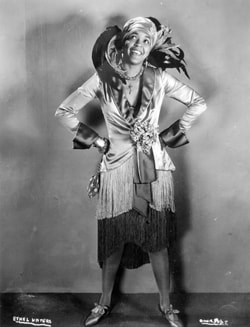
Ethel Waters was a singer and actress that often performed jazz, pop and gospel music. Her career began when she was asked to sing two songs at a party when she was 17 years old, and went on to making records and appearances on Broadway, in movies and on television. Three of her records have received Grammy Hall of Fame Awards. Ethel Waters was born on October 31, 1899 in Chester, Pennsylvania.
Waters’ birth was the result of a rape of her teenaged mother and she was raised in poverty by her grandmother and several aunts and uncles. She attended a Halloween party at a nightclub in 1916 and was persuaded to sing two songs. So impressive was her performance that she was offered a job singing at the Lincoln Theater in Baltimore. Three years later Waters was on Broadway in the play “Hello 1919!” In between she spent time on the Black vaudeville circuit, performing with a carnival and singing at an Atlanta club on the same bill as Bessie Smith.
During the 1920s Ethel Waters lived in New York City and was an important part of the Harlem Renaissance. She made her first record with the Cardinal label in 1921 and became a major star at Black Swan records, the first major record label owned and operated by African-Americans and featuring Black artists. During the decade Waters was the highest paid Black recording artist in the world. For a time she was also the highest paid performer on Broadway, appearing in 20 productions between 1919 and 1956. In 1925 she was signed by Columbia Records and her first big hit for them was Dinah, a record that has been selected for the Grammy Hall of Fame, along with her 1933 recording of Stormy Weather and her theme song, 1929’s Am I Blue?
Ethel Waters first appearance on screen was in the 1929 movie “On With the Show” and made ten additional movies and was nominated for an Academy Award for Best Supporting Actress in 1949 for her work in the movie “Pinky.” She also hosted a very early television program in 1939 and later was the star of the first nationally televised weekly series with a Black lead when she played the title role in “Beulah” in 1950.
For much of Waters’ later career she concentrated on gospel music and often toured with the Billy Graham Crusade. Ethel Waters passed away due to multiple health problems in 1977 at the age of 80.
Here is a link to Ethel Waters singing her signature song in the 1929 movie “On With the Show:”
"AM I BLUE?"
Waters’ birth was the result of a rape of her teenaged mother and she was raised in poverty by her grandmother and several aunts and uncles. She attended a Halloween party at a nightclub in 1916 and was persuaded to sing two songs. So impressive was her performance that she was offered a job singing at the Lincoln Theater in Baltimore. Three years later Waters was on Broadway in the play “Hello 1919!” In between she spent time on the Black vaudeville circuit, performing with a carnival and singing at an Atlanta club on the same bill as Bessie Smith.
During the 1920s Ethel Waters lived in New York City and was an important part of the Harlem Renaissance. She made her first record with the Cardinal label in 1921 and became a major star at Black Swan records, the first major record label owned and operated by African-Americans and featuring Black artists. During the decade Waters was the highest paid Black recording artist in the world. For a time she was also the highest paid performer on Broadway, appearing in 20 productions between 1919 and 1956. In 1925 she was signed by Columbia Records and her first big hit for them was Dinah, a record that has been selected for the Grammy Hall of Fame, along with her 1933 recording of Stormy Weather and her theme song, 1929’s Am I Blue?
Ethel Waters first appearance on screen was in the 1929 movie “On With the Show” and made ten additional movies and was nominated for an Academy Award for Best Supporting Actress in 1949 for her work in the movie “Pinky.” She also hosted a very early television program in 1939 and later was the star of the first nationally televised weekly series with a Black lead when she played the title role in “Beulah” in 1950.
For much of Waters’ later career she concentrated on gospel music and often toured with the Billy Graham Crusade. Ethel Waters passed away due to multiple health problems in 1977 at the age of 80.
Here is a link to Ethel Waters singing her signature song in the 1929 movie “On With the Show:”
"AM I BLUE?"
TODAY IN JAZZ HISTORY - October 30th
|
Trumpeter Clifford Brown was born into a musical family in Wilmington, Delaware on October 30, 1930. At age thirteen his father bought him a trumpet and provided him with private lessons. Clifford played in a jazz group while in high school and would go on to be one of the leading lights of hard bop during his tragically short career. His compositions Sandu, Joy Spring and Daahoud have all become jazz standards.
Brown briefly attended Delaware State University as a math major before transferring to Maryland State College where he played in the fourteen-piece jazz-oriented Maryland State Band. In June 1950, he was injured in a car crash after a performance. While in the hospital, he was visited by Dizzy Gillespie who encouraged him to pursue a career in music. Brown was also encouraged and influenced by Fats Navarro. Early in his professional career Clifford Brown played with Tadd Dameron, in Lionel Hampton’s big band and with trombonist J.J. Johnson. He was also a founding member of The Jazz Messengers along with drummer Art Blakey, pianist Horace Silver, sax man Lou Donaldson and bassist Curley Russell. A week at Club Harlem in May 1952 featured alto saxophonist Charlie Parker alongside Brown. In 1954 Brown formed a group co-led by drummer Max Roach. After some experimentation with other musicians, the lineup included saxophonist Harold Land, pianist Richie Powell (Bud’s brother) and former Count Basie bassist George Morrow. Their band became the definitive hard bop ensemble and recorded several stellar albums over their brief existence. On a rainy night in June 1956 Brown and Powell left Philadelphia after a jam session on a drive to Chicago for their next gig. Powell's wife Nancy was at the wheel so that Clifford and Richie could sleep. While driving at night on the Pennsylvania Turnpike she is presumed to have lost control of the car, which went off the road, killing all three instantly in the resulting crash. Brown developed an innate sense of solo form, a rich tone, and a virtuoso technique in all ranges. He was especially noted for the melodic qualities of his improvising, which often flowed in long phrases. His playing was influential to trumpeters like Freddie Hubbard and Donald Byrd. Clifford Brown won the DownBeat magazine Critics' Poll for New Star of the Year in 1954 and was inducted into the DownBeat Hall of Fame in 1972. Here is a link to a Clifford Brown composition played by the famous quintet he co-led with Max Roach. The tune's title is Brown's nickname for his wife: "JOY SPRING" |
TODAY IN JAZZ HISTORY - October 29th
|
Zoot Sims was born John Haley Sims into a family of vaudeville performers on October 29, 1925. Growing up in California, Sims played the clarinet and spent time listening to the records his older brother collected, including those by Lester Young and Ben Webster. Those records inspired Sims to pursue a career playing saxophone and he was soon a regular in the jazz clubs along Central Avenue in Los Angeles. It was there that he was heard by Benny Goodman who hired Sims and gave him his first high-profile gig.
After playing with Goodman Sims was hired by Woody Herman to be a part of his “Second Herd,” also known as the “Four Brothers” band. Along with fellow saxophonists Stan Getz, Herbie Steward and Serge Chaloff, Sims was one of the legendary “Four Brothers,” who took their name from a Jimmy Giuffre piece written for them. After leaving the Herman band, Sims moved to New York City and did freelance work before landing a chair in the sax section of the Stan Kenton Orchestra. His time with that group was short lived, though, as he disliked the way the group was run as well as the dearth of space for improvisation in the heavily orchestrated arrangements. For a while after quitting the Kenton band Sims lived in California and worked as a housepainter. Gerry Mulligan looked him up and offered him a job with his group. The time with Mulligan reinvigorated Sims’ career and by the mid-1950s Sims was working as a leader in small group formats and recording profusely. He released ten records in 1956 alone. Zoot Sims continued to perform throughout the 1960s and 1970s including a reunion with the Herman band. By the early 1980s his health was beginning to decline and he was diagnosed with cancer. He continued to perform up until his death in 1985. Here is a link to a quartet performance led by saxophonist Zoot Sims: "IT HAD TO BE YOU" |
TODAY IN JAZZ HISTORY - October 28th
|
Trombonist Bill Harris was born in Philadelphia, Pennsylvania on October 28, 1916. He is remembered for his broad, thick tone and rapid vibrato. Early in his career, he performed with Benny Goodman, Charlie Barnet and Eddie Condon.
Harris joined Woody Herman’s First Herd in 1944 and also played in the Four Brothers Second Herd during the late 1940s. He returned to work with Herman again in the 1950s. His solo on Bijou with Herman remains a classic, while his idiosyncratic treatment of the ballad Everything Happens to Me is known for its vocal quality. As an improviser, Harris was comfortable playing in a variety of styles from traditional jazz to bebop, as is heard in his recordings on the Norman Granz Jazz at the Philharmonic recordings. Harris later teamed up with saxophonist Charlie Ventura and played in bassist Chubby Jackson’s band. Together with tenor man Flip Phillips he became a stalwart of Benny Goodman's group in 1959, although it has been said that Goodman was frequently irritated at Harris because of Harris' indifferent approach to sight-reading. Later in his career Harris worked in Las Vegas and finally retired to Florida. Bill Harris died in August 1973 at the age of 56. Here is a link to Harris performing one of his signature tunes in a small group setting: "EVERYTHING HAPPENS TO ME" |
TODAY IN JAZZ HISTORY - October 27th
|
“Cannonball Adderley and Strings” was the alto saxophonists third album as a leader, and the second with EmArcy Records. A popular way to feature some jazz artists in the 1950s after the success of the “Charlie Parker with Strings” records, this outing features some nice playing by Adderley and more subtle string writing by arranger Bill Russo than is heard on some of the other attempts at the format. The album was recorded in New York City over a two-day period beginning on October 27, 1955, and was released later that year.
Musical director Richard Hayman leads the ensemble through twelve tracks consisting mostly of standards, pop tunes and numbers from Broadway shows. In his allmusic.com review, critic Stewart Mason writes that “Adderley himself plays beautifully, showing off his typically excellent soloing throughout.” He adds that “The opening I Cover the Waterfront is a stellar kickoff, a smoky ballad perfect for Adderley's soulful style, but barring a few minor missteps, all of “Cannonball Adderley and Strings” is well worth hearing. The recording has been re-released in various formats numerous times over the years, including on CD in 1994. Here is a link to one of the cuts from the record: "A FOGGY DAY" |
TODAY IN JAZZ HISTORY - October 26th
|
Saxophonist, clarinetist and bandleader Charlie Barnet was born on born October 26, 1913 in New York City. As a young member of a wealthy family, Barnet rejected their urging that he become a corporate lawyer and instead turned to music. He led his first band at age 16, on a transatlantic liner, and eventually made 22 such crossings. Barnet also visited the South Seas and parts of Latin America. In 1932 he became leader of the band at the Paramount Hotel in Manhattan and then formed a succession of large and small bands. He achieved his greatest fame with the 1939 hit record Cherokee, and with 1944’s Skyliner.
Barnet, who was nicknamed “Mad Mab,” was one of the big band era’s most colorful figures. He was said to have been married somewhere between six and eleven times. He was also one of the first white leaders to feature Black performers, among them Lena Horne, Roy Eldridge, Charlie Shavers and Benny Carter. He was especially influenced by the style of the Duke Ellington orchestra. Barnet and his various ensembles appeared in such motion pictures as “Syncopation” (1942), “The Fabulous Dorseys” (1947), and “Make Believe Ballroom” (1949). He also appears in the 1948 Danny Kaye/Virginia Mayo picture “A Song is Born” along with Tommy Dorsey, Louis Armstrong, Lionel Hampton and Benny Goodman. In later years, after the demise of the big bands, Barnet tried such careers as music publishing and the restaurant business, but nevertheless continued to play occasionally. His 1984 autobiography, “Those Swinging Years,” illuminated the jazz musician’s hectic life on the road. Barnet died from complications of Alzheimer’s Disease and pneumonia in San Diego, California on September 4, 1991, aged 77. Here is a link to Charlie Barnet's band: "SKYLINER" |
TODAY IN JAZZ HISTORY - October 25th
|
Born in Philadelphia on October 25, 1926, saxophonist Jimmy Heath was introduced to jazz and big-band music by his father, an auto mechanic and part-time clarinet player, and mother, a singer in their church choir. However, due to the Depression his father often found himself out of work. Subsequently, Heath and his siblings were sent to live with their grandparents who ran a grocery store in Wilmington, North Carolina. They would return home to Philadelphia for the summer, during which time Jimmy took private lessons.
After graduating high school in 1943 Heath started his own swing dance band. By 1947 he was leading his own small group, playing alongside a young John Coltrane and Benny Golson. It was also around this time that he discovered bebop and became influenced by the playing of Charlie Parker. In 1948 Heath joined trumpeter Howard McGhee’s group and was soon joined by his older brother, Percy Heath, who would go on to fame as the longtime bassist in the Modern Jazz Quartet. It was while with McGhee that Jimmy Heath earned his nickname "Little Bird," due in part to his love of Parker and his small stature - he had been turned away for the draft during WWII for being below the minimum weight. The following year, Heath became a member of trumpeter Dizzy Gillespie’s big band. In the early 1950s Heath switched to tenor saxophone to better set himself apart from Parker and to secure more gigs. He joined Miles Davis’ band and appeared on the trumpeter's second album, 1952's “Young Man with a Horn.” There were also recording dates with J.J. Johnson, Clifford Brown and Kenny Dorham. But, just as his career was taking off, Heath, an admitted drug addict, was arrested and convicted twice for the sale of heroin. Released from prison in 1959, Heath, now sober, immediately began to rebuild his career. That same year he made his long-awaited debut as leader with “The Thumper,” an all-star session for Riverside Records featuring cornetist Nat Adderley, trombonist Curtis Fuller, Wynton Kelly on piano and bassist Paul Chambers. His brother, Albert “Tootie” Heath played the drums on the record. Jimmy also appeared on trumpeter Blue Mitchell’s classic album “Blues Soul” and briefly re-joined Davis’ group, taking over for Coltrane. During the 1960s and 1970s Jimmy Heath appeared as a sideman on records by Freddie Hubbard, Milt Jackson and Mongo Santamaria as well as recording as a leader. In the 1980s, Heath expanded into teaching when he joined the faculty of the Aaron Copland School of Music at Queens College, City University of New York. Over the next twenty years he balanced teaching and performing and helped to create the school's jazz education program. He was successful in attracting other jazz luminaries to campus including Donald Byrd. He also served on the board of the school's Louis Armstrong Archives and aided in the restoration of Armstrong’s home in Corona, Queens. Despite his dedication to teaching he continued to perform and record during these years, releasing albums like 1992's Grammy-nominated “Little Man, Big Band.” Heath died on January 19, 2020 in Loganville, Georgia from natural causes. He was 93 years old. [This article is excerpted from a biography of Jimmy Heath written by Matt Collar for allmusic.com] Here is a link to the Jimmy Heath Quintet: "GINGERBREAD BOY" |
TODAY IN JAZZ HISTORY - October 24th
|
The first of two recording sessions that produced the album “Miles Smiles” took place on October 24, 1966 at the Columbia Records studio on 30th Street in New York City. The second session took place the following day. The record was released in February 1967 is the second of six albums recorded by Davis' second great quintet featuring saxophonist Wayne Shorter, pianist Herbie Hancock, Ron Carter playing bass and Tony Williams at the drums.
Produced by Teo Macero, the record has six tracks, including Davis’ composition Circle and three Shorter tunes, Footprints, Orbits and Delores. Also included on the album are the Jimmy Heath tune Ginger Bread Boy and Eddie Harris’ Freedom Jazz Dance. “Miles Smiles” showcases Davis' continuing exploration of modal performance with looser forms, tempos and meters. Although the album did not follow the conventions of bop or hard-bop, neither did it follow the formlessness of free jazz. Critic Martin Williams called the record “an exceptional recital, Davis' best album in some time, and clear evidence of his continuing dedication as an improvising musician.” He went on to write that it is “directly in the tradition of the 'experimental' Davis recordings, the tradition established by ‘Kind of Blue’ in 1959 - an album whose implications jazz musicians are still exploring.“ Here is a link to a cut from the record: "FOOTPRINTS" |
TODAY IN JAZZ HISTORY - October 23rd
|
Saxophonist Sonny Criss was born in Memphis, Tennessee on October 23, 1927 and moved with his family to Los Angeles when he was 15. By his late teens Criss was doing gigs with Johnny Otis and Billy Eckstein and played in Howard McGhee’s band alongside Charlie Parker. Criss’ playing was heavily influenced by Parker.
Criss’ first major break came in 1947 when he began playing on jam sessions arranged by jazz promoter Norman Granz. In 1956 he signed with Imperial Records and recorded a series albums including “Jazz U.S.A ,” “Go Man!” and “Sonny Criss Plays Cole Porter.” The latter featured pianist Sonny Clark. Capitol Records reissued these albums as a double-CD set on their Blue Note imprint in 2000. The Prestige label signed Criss in 1965 and he continued to record well-acclaimed albums which were mainly rooted in the hard-bop tradition. Later sessions were recorded for Muse and Impulse!. In all Criss recorded 22 albums as a leader and appeared as a sideman on records by Lou Rawls, Wardell Gray, Charlie Parker, Chet Baker, Buddy Rich and Dexter Gordon. By 1977, Criss had developed stomach cancer and did not play again. As a consequence of this painful condition, Criss committed suicide in 1977. Here is a link to Sonny Criss playing How High the Moon, cleverly disguised as Ornithology: "HOW HIGH THE MOON" |
TODAY IN JAZZ HISTORY - October 22nd
|
Clare Fischer was born October 22, 1928 in Durand, Michigan and was a keyboardist, composer, arranger, and bandleader. During high school he played a plethora of instruments including cello, clarinet, and saxophone. His high school band director gave him private lessons in arranging and by the time Clare was 15 he was leading his own band for which he wrote all the arrangements.
After graduating from Michigan State University he became the pianist and arranger for the vocal group the Hi-Lo’s. Fischer went on to work with Donald Byrd, Dizzy Gillespie, Bud Shank, George Shearing, Sergio Mendes, Joao Gilberto and Branford Marsalis and has been cited by Herbie Hancock as a major influence. Fischer became known for his Latin and bossa nova recordings in the 1960s and composed the Latin jazz standard Morning and the jazz standard Pensativa. Beginning in the early 1970s Fischer embarked on a parallel career becoming a much sought-after arranger for pop groups such as Rufus with Chaka Khan, Prince, Paula Abdul, Amy Grant, Robert Palmer, Paul McCartney and Michael Jackson. He was nominated for eleven Grammy Awards during his lifetime and won for his landmark album “2+2” in 1981. Fischer was also a posthumous Grammy winner in 2012 for “¡Ritmo!” and in 2013 for “Music for Strings, Percussion and the Rest.” Clare Fischer passed away in Los Angeles due to cardiac arrest several days after having undergone surgery in January 2012. Here is a link to a 1978 recording of Morning by Clare Fischer: "MORNING" |
TODAY IN JAZZ HISTORY - October 21st
|
Tenor saxophonist Don Byas was born in Muskogee, Oklahoma on October 21, 1913. During his career he played with Count Basie, Duke Ellington, Art Blakey and Dizzy Gillespie as well as leading his own bands.
Both of Byas' parents were musicians. His mother played the piano, and his father, the clarinet. Young Don began his musical education in the European classical tradition, learning to play violin, clarinet and alto saxophone, which he played until the end of the 1920s. He started to perform in local orchestras at the age of 17, with Bennie Moten, Terrence Holder and Walter Page. He founded and led his own college band, Don Carlos and His Collegiate Ramblers, during 1931–1932, at Langston College in Oklahoma. After college Byas moved to the west coast where he played with Lionel Hampton’s band in Los Angeles in 1934. By this time he was playing tenor sax almost exclusively. In 1937 Byas moved to New York City where he played in a group accompanying singer Ethel Waters on tour and at the Cotton Club in Harlem. He did a brief stint with Don Redman’s band and recorded his first solo record in May 1939. He also played with Lucky Millinder, Benny Carter and Andy Kirk during the late 1930s. His big break came in early 1941 when Count Basie chose him to succeed Lester Young in his big band. He stayed with Basie until November 1943. After leaving the Basie organization Byas frequently could be heard playing in New York City clubs along 52nd Street where he associated with beboppers such as Dizzy Gillespie, Charlie Parker, Oscar Pettiford and Max Roach. In May 1944 he shared tenor duties with Coleman Hawkins in his Sax Ensemble, as well as leading his own band in performances at the Three Deuces club. In September 1946, Byas was playing with Don Redman again as they were the first civilian jazz band to tour Denmark, Belgium, Switzerland, and Germany since the end of World War II. After playing in Belgium and Spain, Byas decided to settle permanently in Paris. He lived in Europe for the last 26 years of his life. He worked extensively in Europe, often with touring American musicians. Byas did not visit the United States again until 1970 when he appeared at the Newport Jazz Festival. He died in Amsterdam in 1972 from lung cancer at the age of 59. Here is a link to Byas playing with the Earl Hines band at the Paris Jazz Festival in 1965: "TENDERLY" |
TODAY IN JAZZ HISTORY - October 20th
|
Another Chicago musician that participated in Walter Dyett’s program at DuSable High School was saxophonist Eddie Harris. Others included Nat “King” Cole, Julian Priester and Johnny Griffin. Born on October 20, 1934, Harris attended Roosevelt University after high school where he studied piano and vibraphone along with the tenor sax. After college Harris did a stint in the U.S. Army in Germany where he played in the band with Don Ellis and Cedar Walton.
Upon his return to the states after being discharged from the army, Harris lived for a while in New York City where he recorded his first record, an album in 1961 for VeeJay Records called “Exodus to Jazz.” The record included a Harris arrangement of Ernest Gold’s theme for the movie “Exodus” which was released as a single and received heavy airplay on radio. It became the first jazz record to be certified gold. Eddie Harris was not only an accomplished saxophonist and keyboard man, he also experimented with new musical instruments many of his own design. These included the reed trumpet (which he premiered at the 1970 Newport Jazz Festival), the saxobone and the guitorgan. He also often collaborated with rock and blues musicians including Stevie Winwood and Albert Lee. In 1975 Harris released a stand-up comedy album, as well. His best-known composition is Freedom Jazz Dance, which he debuted on his 1966 record “The In Sound.” It was later notably covered by Miles Davis. In 1969 he appeared with Les McCann at the Montreux Jazz festival and that performance produced the classic album “Swiss Movement.” During his career Eddie Harris released 58 records as a leader. He passed away from congestive heart failure in 1996 at the age of 62. Here is a link to Harris playing two of his compositions at the 1969 Montreux Jazz Festival: "LISTEN HERE/FREEDOM JAZZ DANCE" |
TODAY IN JAZZ HISTORY - October 19th
|
Best known as a clarinetist, Eddie Daniels also plays saxophone and flute. He was born in New York City on October 19, 1941. Daniels became interested in jazz as a teenager when he was impressed by the musicians accompanying singers such as Frank Sinatra on recordings. Daniels' first instrument was the alto saxophone, but by age of 13 he was also playing clarinet, and by 15 he had played as part of the Newport Jazz Festival’s youth competition.
Daniels has toured and recorded with a variety of big bands, small groups and orchestras including with groups led by Bucky Pizzarelli, Freddie Hubbard, BillyJoel. DownBeat magazine gave Daniels the New Star on Clarinet Award in 1968. He played with the Thad Jones/Mel Lewis Orchestra or six years where he played tenor saxophone, clarinet and flute. Since the 1980s, Daniels has focused mainly on the clarinet. In 1989 he won a Grammy for his contribution to the Roger Kellaway arrangement of Memos from Paradise. He worked with Gordon Goodwin’s Big Phat Band on their debut album “Swinging for the Fences,” and was featured in Goodwin's arrangement of Mozart's 40th symphony in G minor on the Big Phat Band's album “The Phat Pack.” In 2009 Swiss composer and saxophonist Daniel Schnyder composed a Concerto for Clarinet and Orchestra for Daniels and dedicated it to him. Eddie Daniels has recorded 30 albums as a leader since 1966 and has appeared as a sideman on records by Bob James, Eric Gale, Jimmy McGriff, Arturo Sandoval, Stanley Turrentine, Lee Ritenour and Dave Grusin. Here is a link to Daniels playing with Goodwin's band: "TWO PART INVENTION IN D MINOR" |
TODAY IN JAZZ HISTORY - October 18th
|
Anita O’Day was born Anita Belle Colton was born in Kansas City, Missouri on October 18, 1919 and was raised in Chicago. She took the first chance to leave her unhappy home when, at age 14, she became a contestant in the dance marathons that were so popular during the Great Depression in the United States. In 1934 O’Day began touring as a dancer on those circuits, occasionally being called upon to sing. In 1936 she left the endurance contests determined to become a professional singer.
O’Day started out as a chorus girl and then found work as a singer and waitress at several clubs. At the Vialago, O'Day met the drummer Don Carter, who introduced her to music theory. They wed in 1937. Her first big break came in 1938 when DownBeat magazine editor Carl Cons hired her to work at his new club, the Off-Beat, which became a popular hangout for musicians. While performing at the Off Beat, she met drummer Gene Krupa who promised to call her if his vocalist ever left his band. The call from Krupa came in early 1941. Of the 34 sides she recorded with Krupa, it was Let Me Off Uptown, a novelty duet with trumpeter Roy Eldridge, that became her first big hit.The same year, DownBeat named O'Day "New Star of the Year". In 1942, she appeared with the Krupa band in two short musical films singing Thanks for the Boogie Ride and Let Me Off Uptown. The same year, the magazine’s readers voted her as one of the top five big band singers. After Krupa’s band broke up in 1943 O’Day sang briefly with Woody Herman’s orchestra before joining up with Stan Kenton in April 1944. During her eleven months with Kenton, O'Day recorded 21 sides and appeared in a Universal Pictures short film called “Artistry in Rhythm.” Her recording of And Her Tears Flowed Like Wine became a huge seller and put Kenton's band on the map. While living with husband Carl Hoff in Los Angeles in March 1947, two undercover policemen came to their home, during a party at which Dizzy Gillespie was playing from the branches of a tree in their front yard. The police found a small bag of marijuana for which Anita and Carl were arrested. On August 11 they were found guilty of possession and given 90-day sentences. After her jail stint, she performed again with Herman and Kenton. Her career was back on the upswing in September 1948 when she sang with Count Basie at the Royal Roost in New York City. But, what secured O'Day's place in the jazz pantheon were the 17 albums she recorded for the Norgran and Verve labels between 1952 and 1962. She recorded infrequently after the expiration of her Verve contract in 1962, and her career seemed over when she nearly died of a heroin overdose in 1968. In1980 she was a headliner along with Clark Terry, Lionel Hampton and Ramsey Lewis during the opening two-weeks at the short-lived resurgence of the Blue Note Lounge at the Marriott O'Hare Hotel near Chicago. O'Day spoke candidly about her drug addiction in her memoir High Times, Hard Times, published the following year. After several comebacks over the next two decades, O’Day passed away in her sleep on Thanksgiving Day 2006 at age 87. Here is a link to Anita O'Day performing at the 1958 Newport Jazz Festival: "SWEET GEORGIA BROWN/TEA FOR TWO" |
TODAY IN JAZZ HISTORY - October 17th
|
Drummer Cozy Cole was born on October 17, 1909 in East Orange, New Jersey. His given name was William Randolph Cole, and he would go on to have a successful career as a drummer playing with some of the all-time greats in the music and leading groups of his own. He was also Philly Joe Jones’ drum instructor.
Cole’s first gig was with clarinetist Wilbur Sweatman’s band in 1928. Two years later he was drumming with Jelly Roll Morton’s ensemble and was featured on their recording Load of Cole. Later in the decade he would perform with Benny Carter and Stuff Smith before landing a gig with Cab Calloway’s orchestra in 1938. he stayed with Calloway for about five years before leaving to play in the first racially integrated orchestra for the CBS Radio Network in New York City. After leaving CBS, Cole was the drummer with Louis Armstrong’s All-Stars with whom he played for many years, including an appearance at the ninth “Cavalcade of Jazz” performance in 1953 at Wrigley Field in Los Angeles. During the 1950s Cole could often be found at the Metropole Cafe in New York City playing “drum battles” with Gene Krupa. In 1958 Cozy Cole had a hit single with the two-sided Topsy, Parts I and II. In 1978, Capital University in Columbus, Ohio awarded Cole an honorary degree of Doctor of Musical Arts. Cole has been cited as an influence by numerous rock drummers. Cozy Cole died of cancer in 1981. Here is a link to perhaps his biggest hit record as a leader (or at least the second half of it): "TOPSY, PART II" |
TODAY IN JAZZ HISTORY - October 16th
|
Roy Hargrove was discovered by Wynton Marsalis when he was visiting Hargrove’s high school in Dallas, Texas. That high school, Booker T. Washington High School for the Performing Arts also produced Norah Jones and Erykah Badu. Hargrove, one of the most gifted trumpet players of his generation, was born on October 16, 1969.
After high school Hargrove spent a year studying at the Berklee College of Music in Boston before transferring to the New School in New York City. While there Hargrove made his first recording as a member of Bobby Watson’s group on the album “No Question About It,” released in 1988. Two years later, after spending time playing in the group Superblue with Watson, Mulgrew Miller and Kenny Washington, Hargrove released his first album as a leader, “Diamond in the Rough.” That album and the three additional albums Hargrove made with his quintet were among the most commercially successful jazz records of the early 1990s. During that period he won the DownBeat Magazine Critics Poll award for “Rising Star - Trumpet” three consecutive years. In 1993 Hargrove was commissioned to write a jazz suite for the Lincoln Center Jazz Orchestra and in 1995 he founded the Roy Hargrove Big Band. That group toured internationally and featured original compositions and arrangements by Hargrove and others. In the late 1990s Roy was a member of a collective known as Soulquarians which included Questlove and Common. In all, Roy Hargrove would record 25 albums as a leader and appear on dozens more as a sideman. During his career he would win two Grammy awards and be elected to the DownBeat Magazine Jazz Hall of Fame. He also was one of those responsible for the creation of the non-profit performance space The Jazz Gallery in New York. Hargrove suffered from kidney failure and was on dialysis for the last 14 years of his life. He passed away on November 2, 2018 from cardiac arrest brought on by his struggles with kidney failure. Here is a link to a Hargrove studio performance at KPLU radio in 2009: "SOULFUL" |
TODAY IN JAZZ HISTORY - October 15th
|
“Brilliant Corners” is an album by pianist Thelonious Monk. It was his third album for Riverside Records and the first, for this label, to include his own compositions. The album was recorded in three sessions in late 1956 with two different quintets. The second session took place on October 15th, and that was the day the title track was recorded. The other sessions were on October 9th and December 7th.
In the Reeves Sound Studio on West 49th Street in New York City that day were Ernie Henry playing alto saxophone, Sonny Rollins on tenor saxophone, bassist Oscar Pettiford, Max Roach on drums and, of course, Monk at the piano. The song Brilliant Corners, written by Monk, has an unconventional structure that deviates from both standard song form and blues structures. Its form uses an eight-bar A section, followed by a seven-bar B section, and a modified seven-bar A section, and features a double-time theme in each second chorus with complex rhythmic accents. The two other session produced an additional four tracks including Monk compositions Ba-Lue Bolivar Ba-Lues-Are, Pannonica and Bemsha Swing along with I Surrender, Dear. Musicians appearing on other album tracks are Paul Chambers and Clark Terry. According to DownBeat magazine “Brilliant Corners” was the most critically acclaimed album of 1957. The magazine gave it five stars in a review and called it "Riverside's most important modern jazz LP to date." Music critic Robert Christgau said that, along with his 1958 live album “Misterioso,” “Brilliant Corners” represents Monk's artistic peak. Here is a link to the title track from Thelonious Monk’s “Brilliant Corners,” recorded 67 years ago today: "BRILLIANT CORNERS" |
TODAY IN JAZZ HISTORY - October 14th
|
Dimitriou's Jazz Alley in Seattle has become one the West Coast's premiere jazz clubs. Every week the club brings the greatest names in jazz to Seattle's audiences. Artists of international stature such as Burt Bacharach, Judy Collins, Kenny G, Poncho Sanchez, Taj Mahal, Tower of Power, Diane Schuur, John Mayall, Earl Klugh, and Bill Frisell appear weekly at Jazz Alley. Dizzy Gillespie, J.J. Johnson, Elvin Jones, Oscar Peterson, Betty Carter, Eartha Kitt, Dave Brubeck and McCoy Tyner all performed there.
The nightclub first opened its doors in on October 14, 1980 in Seattle's University District. An intimate bistro setting, it attracted a diverse clientele. Equally popular among college students and die-hard jazz aficionados, one always found an exciting mixture of personalities and performers. Six years later Jazz Alley relocated to the larger and more accessible club at 6th and Lenora - the perfect venue for introducing new fans to world class jazz music while still offering the exuberant atmosphere of the old establishment. Since moving to its present location the club has undergone three remodels. In July of 1990, the club completed a renovation with the expansion of the existing stage and the addition of a full mezzanine overlooking the stage. The remodels have included a state-of-the-art sound system, expanded stage, orchestra pit style tiered floor and the addition of over 100 seats, all while maintaining the original bistro ambience that makes Jazz Alley an intimate experience. In 2016, DownBeat Magazine voted Jazz Alley as one of the top 100 jazz clubs in the world. Voted "Best Jazz Club" by the Seattle Weekly and voted “Best Jazz Club” on KING television’s Best of Western Washington poll eight years running. [This information comes from the Dimitriou’s Jazz Alley website] |
TODAY IN JAZZ HISTORY - October 13th
|
Virtuoso pianist Art Tatum was born in Toledo, Ohio on October 13, 1909 and was visually impaired from birth. He spent some time at the School for the Blind in Columbus, Ohio before transferring to the Toledo School of Music. He began playing piano by ear at a young age aided by an extraordinary memory and perfect pitch. By the age of 18 Tatum was playing on a local radio station during the noon hour so that he would have time to rest up before his club dates in the evening.
In 1932 Tatum had relocated to New York City and, after proving his musical mettle at a cutting contest where he impressed many of the great stride pianists that were his heroes, Art got a regular gig at the Onyx Club. Soon thereafter he was traveling around the country and occasionally abroad to perform. He sometimes played with a trio and often as a solo act. Tatum became close friends with Fats Waller. Aside from their prodigious talents at the keyboard, both men were hard drinkers. One friend estimated that by the 1940s Tatum would routinely consume two quarts of whiskey and a case of Pabst Blue Ribbon Beer in a day. Art Tatum developed diabetes, but refused to change his lifestyle or change his drinking habits and this eventually led to a serious deterioration in his health. By the mid 1950s he had developed serious uremia and he died in 1956 in his adopted home of Los Angeles. Art Tatum was inducted into the Downbeat Jazz Hall of Fame in 1964 and received a posthumous Grammy Lifetime Achievement Award in 1989. Here is a link to a 1953 recording of Tatum playing Willow Weep for Me: "WILLOW WEEP FOR ME" |
TODAY IN JAZZ HISTORY - October 12th
|
Drummer Alfred “Tubby” Hall was born on October 12, 1895 in Sellers, Louisiana, but his family moved the 18 miles downriver to New Orleans when he was a small child. His father was an amateur drummer and played in brass bands. Tubby grew up to be one of the most important drummers of the 1920s.
As a youth in New Orleans, Hall took lessons and learned to read “pretty well.” He was playing gigs in saloons and with parade bands by the time he was in his teens. In 1917 he joined the Great Migration and moved north to Chicago where he was unemployed as a musician at first. After several months, though, he joined Sugar Johnny’s Creole Orchestra, a group of fellow New Orleans expatriates with a regular gig at the DeLuxe Cafe on State Street. In 1918 Tubby’s career was interrupted when he was drafted into the U.S. Army. After his two-year stint was up, he returned to Chicago and by 1924 was the house drummer for the band at the Sunset Cafe. The group was led by violinist Carroll Dickerson and would soon include Earl Hines and Louis Armstrong. After Dickerson was fired one night for arriving at work drunk, club manager Joe Glaser appointed a new front man for the band and it became known as Louis Armstrong and his Stompers. The band recorded a tune called Chicago Breakdown on May 9, 1927. It was Hall’s first confirmed appearance on record. During the 1930s Tubby Hall was the drummer for a number of Armstrong ensembles and made several important records with Louis Armstrong and his Orchestra during the decade. He also appeared in movie shorts like “A Rhapsody in Black and Blue” with Armstrong. Some critics have called Tubby Hall one of the three most important jazz drummers of the 1920s along with Zutty Singleton and Baby Dodds. Hall passed away in Chicago in 1945. Here is a link to that first confirmed Tubby Hall recording session with Armstrong in the spring of 1927: "CHICAGO BREAKDOWN" |
TODAY IN JAZZ HISTORY - October 11th
|
Anyone who has taken even a modest interest in the post-World War II jazz scene will be aware of the extraordinary series of concerts and tours organized by jazz impresario Norman Granz. Spanning several decades and held in concert halls and auditoriums instead of the usual club venues where jazz was most commonly heard, they were called Jazz at the Philharmonic. The first JATP concert too place on July 2, 1944 at the Philharmonic Auditorium in Los Angeles and continued on for eighteen national tours through 1959 and expanded into Europe with annual tours between 1952 and 1959. The JATP tours continued intermittently to Europe and Japan thereafter, with the last shows taking place in Tokyo in October 1983.
The concert featured on the album “Jazz at the Philharmonic Seattle 1956” was part of the 17th National Tour in the autumn of 1956 and took place on October 11, 1956 at Seattle’s Civic Auditorium, now the site of McCaw Hall on the Seattle Center campus. A recording of the event was released as a two-CD set in 2011. Paul de Barros has reported in the Seattle Times that “Bill Carter of the San Francisco Traditional Jazz Foundation heard there was a storage container full of reel-to-reel tapes sitting next to the San Rafael dump [and] he figured it might be a good idea to check it out. Little did he know he had found a treasure chest from the golden age of jazz. Among the hundreds of tapes Carter retrieved from that container was a recording of a 1956 Seattle concert that featured Ella Fitzgerald, Oscar Peterson, Dizzy Gillespie, the Modern Jazz Quartet and Stan Getz — yes, all on the same show." In de Barros’ book ”Jackson Street After Hours," Quincy Jones as quoted as saying about the concert that it was “like the Beatles, man. People screaming, just happening. It was killer.” The recording also includes performances by Ray Brown, Herb Ellis, Illinois Jacquet, Percy Heath, Jo Jones, Gene Krupa, Dave McKenna, Flip Phillips, Roy Eldridge and Sonny Stitt. Here is a link to the Gene Krupa Quartet playing during the concert that night 67 years ago tonight: "BERNIE'S TUNE" |
TODAY IN JAZZ HISTORY - October 10th
|
Pianist and composer Thelonious Monk was born on October 10, 1917 in Rocky Mount, North Carolina. He started playing piano at the age of six, taking lessons from a neighbor who taught him stride playing in the style of Fats Waller, James P. Johnson and Eubie Blake. Monk's mother also taught him to play some hymns and he would sometimes accompany her singing at church. For two years, between about the ages 10 to 12, Monk's piano teacher was Austrian-born Simon Wolf, a pianist and violinist who studied under the concertmaster of the New York Philharmonic. Monk learned to play the classics, but the lessons were discontinued when it became clear that Monk's main focus was jazz music.
Monk put his first band together at the age of 16, and a year later began touring with an evangelist, playing organ. In his late teens he began to find work playing jazz and by the early 1940s he was the house pianist at Minton’s Playhouse in Harlem. Much of Monk's style was developed while he performed at Minton's, where he participated in after-hours cutting contests which featured many leading jazz soloists of the time. Monk's musical work at Minton's was crucial in the formulation of bebop, which was being developed by he and the other musicians he played with there, including Dizzy Gillespie, Charlie Christian, Kenny Clarke and Charlie Parker. Monk cut his first commercial recordings in 1944 with tenor saxophonist Coleman Hawkins. Hawkins was one of the earliest established jazz musicians to promote Monk. In 1947, Ike Quebec introduced Monk to Alfred Lion, the co-founder of Blue Note Records. Shortly after the meeting Monk was signed and made his first recordings as a leader for the label. Sales were a secondary consideration for Lion, which was a good thing for we jazz fans because there was almost no interest whatsoever in the records Monk made for the label in the late 1940s. Nonetheless the pianist continued to record for the label. In 1948 Lion’s wife Lorraine Gordon secured Monk a week-long gig at New York City’s Village Vanguard to which almost no one came. In August 1951 New York City police searched a parked car occupied by Monk and his friend and fellow pianist Bud Powell. They found narcotics in the car, presumed to have belonged to Powell. Monk refused to testify against his friend, so the police confiscated his cabaret card. Without a cabaret card, Monk was unable to play in any New York venue where liquor was served. This severely restricted his ability to perform for several years, so Monk spent most of the early and mid-1950s composing and performing at theaters, outer borough clubs and out-of-town venues. In 1955 Monk signed with the Riverside label and recorded the album “Brilliant Corners” in late 1956. Monk mainly performed his own music and the album is largely regarded as his first commercial success. After having his cabaret card restored, Monk relaunched his New York City career with a landmark six-month residency at the Five Spot Cafe in the East Village beginning in June 1957, leading a quartet with John Coltrane on tenor saxophone, Wilbur Ware on bass and Shadow Wilson playing drums. Although little of this group's music was documented owing to contractual problems, an amateur recording from the Five Spot was issued by Blue Note in 1993. After extended negotiations, Monk signed in 1962 with Columbia Records. Columbia's resources allowed Monk to receive more promotion than earlier in his career. “Monk's Dream“ became the best-selling album of his lifetime, and on February 28, 1964, he appeared on the cover of Time magazine. Monk had disappeared from the scene by the mid-1970s for health reasons and made only a small number of appearances during the final decade of his life. His last studio recordings as a leader were made in November 1971 for the English Black Lion label. Bassist Al McKibbon, who had known Monk for over twenty years and played on his final tour in 1971, later related that, "On that tour, Monk said about two words. I mean literally maybe two words. He didn't say 'Good morning,' 'Goodnight,' 'What time?' Nothing. Why, I don't know. He sent word back after the tour was over that the reason he couldn't communicate or play was that Art Blakey and I were so ugly." The 1988 documentary film “Thelonious Monk: Straight, No Chaser” attributes Monk's quirky behavior to mental illness. In the film, Monk's son says that his father sometimes did not recognize him and reports that Monk was hospitalized on several occasions owing to an unspecified mental illness that worsened in the late 1960s. As his health declined, Monk's last six years were spent as a guest in the New Jersey home of his long-standing patron and friend, the Baroness de Koenigswarter, who nursed Monk during his final illness. Thelonious Monk passed away due to a stroke on February 17, 1982. Thelonious Monk had a unique improvisational style and made numerous contributions to the standard jazz repertoire, including ‘Round Midnight, Blue Monk, Straight No Chaser, Ruby My Dear, In Walked Bud and Well You Needn’t. Monk is the second-most-recorded jazz composer after Duke Ellington. Here is a link to Monk playing live in 1966: "DON'T BLAME ME" |
TODAY IN JAZZ HISTORY - October 9th
|
Today, in recognition of Indigenous People’s Day, we salute Native American jazz trombonist Russell Moore, who sometimes used the nickname “Big Chief.” Born in Arizona in 1912, Moore was a member of the Pima tribe and grew up on the Gila River Indian Reservation. Musical performances were important to community life on the reservation particularly due to the inaccessibility of record players and radios. Moore's exposure to music from local bands and through performances of traditional Pima music sparked his interest in music from a young age.
Following the death of his father in 1924, Moore moved to Blue Island, Illinois where they lived with their uncle and aunt, William and Marie Moore. William was a bandleader who taught the brothers trumpet, French horn, trombone, piano, bass, euphonium and drums. In 1929 Moore left Blue Island and moved to Chicago’s South Side where he worked odd jobs. It was there that Moore heard Louis Armstrong play for the first time as he stood outside the Savoy Ballroom. Moore eventually returned to Arizona where he enrolled at Tucson High School and played trombone in the school band. In 1930 he attended Sherman Indian High School in California and again performed in the school band as well as with local acts. In 1933 Moore graduated and was named "up and coming jazz man of the year." After graduating Moore moved to Los Angeles and was a freelance trombonist. His career took a big step forward when he became a member of Lionel Hampton’s band in 1935. But, when Hampton’s band moved to New York City, Moore left the group and eventually moved to New Orleans where he joined Papa Celestin’s ensemble. In the early 1940s Moore played with Alberta Hunter and Noble Sissle. At the end of 1944, some musicians from Louis Armstrong’s band heard Moore performing in the Jeter-Pillars Orchestra and asked him to meet Armstrong in New York. Moore played lead trombone with Armstrong's last big band for three years. After the dissolution of Armstrong's orchestra, Moore joined Sidney Bechet’s quartet and toured in Europe. During the 1950s Moore played with Ruby Braff, Pee Wee Russell, Eddie Condon, Jimmy MCPartland, Wild Bill Davison, Buck Clayton and Frank Sinatra. In 1964, Moore re-joined Armstrong, taking Trummy Young’s place in the All Stars. With this line-up Moore appeared on some famous Armstrong recordings such as Hello Dolly. Moore toured across Europe, Asia, and the Pacific with the All Stars. Among Moore's final performances was an appearance on the "Night of the First Americans", a televised performance at the Kennedy Center in 1982. He played his own composition called Chant for Wounded Knee. Moore died after a lengthy illness associated with diabetes in December 1983. Here is a link to Moore playing with Louis Armstrong's All-Stars during a February 1964 television appearance: "BASIN STREET" |
TODAY IN JAZZ HISTORY - October 8th
|
Clarence Williams, born October 8, 1898 in Plaquemine, Louisiana, was a pianist, composer and one of the first successful Black music entrepreneurs. Williams ran away from home at age twelve to join Billy Kersand’s Traveling Minstrel Show before moving to New Orleans. After arriving in New Orleans Williams worked shining shoes and doing odd jobs, but soon became known as a singer and popular master of ceremonies. By the early 1910s he was a well-regarded local entertainer also playing piano and composing. By 1913 his songs were being published. Among the tunes that Clarence Williams wrote or co-wrote are Sugar Blues, Royal Garden Blues, Ain’t Nobody’s Business if I Do and Hank Williams’ My Bucket’s Got a Hole in It.
Williams started a music publishing business with violinist and bandleader Armand Piron in 1915, and by the 1920s their business had become the leading Black owned music publishing company in the country. He toured briefly with W.C. Handy before moving to New York City in the early 1920s. Williams played piano on scores of blues records recorded in New York during the 1920s. He also supervised race records for the New York offices of Okeh Records, producing records by Louis Armstrong, Sidney Bechet and Bessie Smith. He recruited many of the artists who performed on the label. In addition, he recorded extensively as a bandleader for the Okeh and Columbia labels. In 1943, Williams sold his extensive back-catalogue of tunes to Decca Records for $50,000 and bought a bargain used-goods store, the Harlem Thrift Shop. Williams died in Queens, New York City, in 1965. The late actor Clarence Williams III was his grandson. Here is a link to a 1923 solo piano recording by Williams of one of his own compositions: "MIXING THE BLUES" |
TODAY IN JAZZ HISTORY - October 7th
|
Larry Young, also known as Khalid Yasin, offered as radical an approach to organ in the 1960s as Jimmy Smith had posed in the 1950s. Young was born in Newark, New Jersey on October 7, 1940. Here excerpts from a biography of Young written by Ron Wynn for allmusic.com:
“His free, swirling chords, surging lines and rock-influenced improvisations were an alternative to the groove-centered, blues and soul jazz sound that had become the organ's dominant direction. He brought John Coltrane’s late-1960s approach to the organ, generating waves of sound and greatly influencing any session he participated in during the 1960s and 1970s. “As a youth Young studied piano rather than organ but began playing organ in R&B bands in the 1950s. He recorded in 1960 with saxophonist Jimmy Forrest. He played with and recorded with Grant Green in a hard bop vein in the mid-1960s, though he was beginning his experiments at that point. Young worked with Joe Henderson, Lee Morgan, Donald Byrd and Stanley Turrentine and toured Europe in 1964. When Young went to Blue Note later that year, he was well on his way to becoming a major innovator. Coltrane’s post-bop influence asserted itself more and more in Young's playing and composing, and his work grew much more cerebral and exploratory. His 1965 album ”Into Somethin“ alerted everyone that he was heading a different way, and ‘Unity,’ recorded the same year, remains his best-known album. He played with Coltrane, recorded with Woody Shaw and Elvin Jones before joining Miles Davis in 1969. Young worked with John McLaughlin in 1970 and was in Tony Williams’ Lifetime in the early 1970s. He only made a couple of other records, for Perception and Arista, both of them uneven but with some intriguing moments. Sadly, Young died in 1978 at 38. He'd only made a handful of recordings, and his labels never knew what to make of his music.” Several compilations of his work are available on various labels. Here is a link to Young playing with Tony Williams' Lifetime in 1972: "EGO" |
TODAY IN JAZZ HISTORY - October 6th
|
During a career that spanned more than 65 years, pianist, composer, arranger and music educator Norman Simmons is perhaps best known as the consummate accompanist, working with such stellar vocalists as Carmen McRae, Joe Williams, Sarah Vaughan, Anita O’Day, Mark Murphy, Dakota Staton and Helen Humes. A native of Chicago, Simmons was born on this date in 1929.
As a child Simmons learned to play music on his family’s upright player piano. Soon he was picking out songs by ear. His most formative influence was Duke Ellington, whom he admired both as a pianist and a composer and arranger. His own output always carried a similar sense of balance, with careful attunement to the personalities of his musical partners. For the first half of the 1950s Norman Simmons was the house pianist at the Beehive Lounge in Chicago and backed traveling artists like Wardell Gray and Lester Young. He was part of the band that played with bebop Charlie Parker in February 1955 during Parker's final appearance in Chicago. Upon his death at age 91 in 2021, WBGO reported “The strength of Simmons' instincts as an arranger and accompanist, especially but not exclusively behind vocalists, brought him into a rare stratum of musical achievement, but also played a likely role in his chronic undervaluing as a bandleader. He released fewer than a dozen albums" between 1956 and 2004. In 1966, his arrangement for Ramsey Lewis’ hit recording of Wade in the Water became a large commercial success. Simmons taught extensively, with Billy Taylor’s Jazzmobile in New York City, and at the New School. He was also deeply involved with Jazz House Kids, a community-based arts organization located in Montclair, New Jersey. Simmons was also a member of the Ellington Legacy Band beginning 2002. Here is a link to Norman Simmons in a trio setting: "STELLA BY STARLIGHT" |
TODAY IN JAZZ HISTORY - October 5th
|
Born in Nantucket, Massachusetts on October 5, 1925, free jazz trumpeter, composer and music educator Bill Dixon began playing music in Harlem after his family moved there when he was nine years old. Dixon was a master of the avant-garde jazz movement of the 1960s, not only playing trumpet and flugelhorn, but also keyboards and various electronic instruments and effects. He was an activist for artists rights and Black music traditions.
Bill Dixon served in the United States Army in Germany between 1944 and 1946 before returning home to attend the Hartnette Conservatory of Music on the G.I. Bill. He also studied painting at Boston University. Between 1956 and 1962 Dixon worked at the United Nation where he founded the U.N. Jazz Society. In the 1960s Dixon established himself as a major force in the jazz avant-garde. In 1964 he organized and produced the October Revolution in Jazz which was four days of music and seminars at the Cellar Café in Manhattan. The participants included pianist Cecil Taylor and keyboardist and bandleader Sun Ra. It was the first free jazz festival of its kind. Dixon later co-founded the Jazz Composers Guild, a cooperative organization that sought to create bargaining power with club owners and effect greater media visibility. A key participant in the seminal Judson Dance Theater at Judson Memorial Church in Greenwich Village, Dixon was one of the first artists to produce concerts mixing free jazz and improvisational dance. Dixon was Professor of Music at Bennington College in Vermont from 1968 to 1995 where he founded and chaired the college's Black Music Division. He was one of four featured musicians in the 1981 Canadian documentary film “Imagine the Sound” along with Cecil Taylor, Archie Shepp, and Paul Bley. During his career Dixon recorded 22 albums as a leader and was noted for his extensive use of the pedal register, playing below the trumpet's commonly ascribed range and well into the trombone and tuba registers. He also made extensive use of half-valve techniques. Dixon passed away at his home in Vermont in 2010 at the age of 84. Here is a link to a 1980 recording by Bill Dixon: "SUMMER SONG - ONE - MORNING" |
TODAY IN JAZZ HISTORY - October 4th
|
Pianist Walter Bishop, Jr. was born in New York City on October 4, 1927 and was brought up in the Sugar Hill neighborhood in Harlem. Walter’s father was well-known Jamaican-American drummer and composer Walter Bishop, Sr. As a child some of Walter Jr.’s friends included future jazz musicians Kenny Drew, Sonny Rollins and Art Taylor. Bishop left high school to play full-time with local dance bands and served in the United States Army Air Corps from 1945 until 1947.
Bishop, who was heavily influenced by the playing of Bud Powell and honed his bop chops during late-night jam sessions at Minton’s Playhouse, returned to New York City after his military service. In 1949 he recorded with Stan Getz and Milt Jackson and spent four months as a pianist in Art Blakey’s group. In the early 1950s he played and recorded with Miles Davis, Oscar Peterson, Oscar Pettiford and Kai Winding. For a time in the 1950s Bishop was imprisoned for drug use and lost his ability to play in New York City clubs when he had his cabaret card revoked by the authorities. In the 1960s Walter Bishop, Jr. led a trio with bassist Jimmy Garrison and drummer G.T. Hogan. He made his first recording as a leader in 1961 for the Black Lion label. He would go on to record a total of nineteen records a leader between 1961 and 1993. He also recorded as a sideman with Kenny Dorham, Curtis Fuller, Doc Cheatham, Milt Jackson, Jackie McLean and Hank Mobley. In the latter part of the 1960s Bishop studied at the Julliard School and by the early 1970s was teaching music theory at several colleges in the Los Angeles area. In the 1980s, Bishop taught at the University of Hartford while making frequent appearances at clubs and festivals in New York. He also wrote a book about jazz improvisation called “A Study in Fourths.” Bishop died of a heart attack at the Veterans Affairs Medical Center in Manhattan on January 24, 1998. Here is a link to a 1973 Walter Bishop, Jr. performance: "THOSE WHO CHANT" |
TODAY IN JAZZ HISTORY - October 3rd
|
Hard bop saxophonist Von Freeman was born in Chicago on October 3, 1923. Freeman was introduced to jazz as a young child because his father, a policeman, was good friends with Louis Armstrong. In fact, Armstrong lived at the Freeman home briefly after first arriving in Chicago. Freeman's father taught him to play piano and bought him his first saxophone when he was seven. He played music at Chicago’s DuSable High School, and first played professionally at the age of 16 with Horace Henderson’s band.
Freeman enlisted into the Navy during World War II and was trained at the Great Lakes Naval Training Center along with other jazz greats including trumpeter Clark Terry. Freeman once said that Great Lakes "was an incubator for the best and the brightest lights in the jazz world at that time, and the musical jam sessions were simply phenomenal." After training, Freeman was sent to Hawaii as part of the Hellcats stationed at Barbers Point Naval Air Station. The Hellcats were frequent winners of the islands' competitive Battle of the Bands competitions and included musicians who had formerly played in bands fronted by Duke Ellington, Fletcher Henderson, Ella Fitzgerald and Count Basie. After his return to Chicago, where he remained for the duration of his career, Freeman played with his brothers George on guitar and Eldridge on drums at the Pershing Hotel Ballroom. Various leading jazzmen such as Charlie Parker, Dizzy Gillespie and Roy Eldridge played there with the Freemans as the backing band. In the early 1950s, Von played in Sun Ra’s band. Von Freeman's first venture into the recording studio took place in 1954, backing a vocal group called The Maples. After years of recording as a sideman, Freeman first recorded under his own name in 1972. The album was called “Doin' It Right Now” and featured the support of Rahsaan Roland Kirk. His next effort was a marathon session in 1975 released over two albums by Nessa. After that he lived, regularly performed and recorded in Chicago. His recordings included three albums with his son, the tenor saxophonist Chico Freeman. Following their successful appearance at the 1999 Chicago Jazz Festival, four live albums for Steeplechase Records, documented his partnership with trumpeter Brad Goode. One of Freeman's lasting contributions to jazz was his mentoring of countless younger musicians such as Corey Wilkes and Ben Paterson, as well as his steadfast support of what he liked to call “hardcore jazz.” Freeman's quartet played Monday nights throughout the 1970s and 1980s at The Enterprise Lounge, and then Tuesdays at The New Apartment Lounge with his longtime trio of sidemen composed of drummer Michael Raynor, guitarist Mike Allemana and bassist Matt Ferguson. Freeman was considered a founder of the "Chicago School" of jazz tenorists along with Gene Ammons, Johnny Griffin and Clifford Jordan. His music has been described as "wonderfully swinging and dramatic" featuring a "large rich sound". Freeman was named an NEA Jazz Master in 2012. Freeman died of heart failure on August 11, 2012 at the age of 88. Here is a link to a Von Freeman performance from late in his career: "BEWITCHED, BOTHERED AND BEWILDERED" |
TODAY IN JAZZ HISTORY - October 2nd
|
Guitarist, educator and music technology innovator Howard Roberts was born on October 2, 1929 in Phoenix, Arizona. One of the most recorded guitarists of all time Roberts had a successful career as a jazz player, as a studio musician and as a member of the “Wrecking Crew” collective in Los Angeles. He also played the lead guitar part on the theme from the television show “The Twilight Zone,” and was the guy snapping his fingers on Peggy Lee’s recording of Fever.
Roberts began playing a student model Gibson guitar when he was eight years old and was soon out playing his teacher. By age 15 he was playing with blues bands and by the late 1940s he was performing with pianist, composer and friend Pete Jolly. Howard Roberts moved to Los Angeles in 1950 and began jamming at late night sessions with Buddy DeFranco, Sonny Stitt and Dexter Gordon. He was heard one night by guitarist Barney Kessel who helped Roberts get signed by Capitol Records. Roberts played his first recording date in 1952 with Gerry Mulligan and Jimmy Rowles. Later he would play on records by Wardell Gray, Chico Hamilton and Bobby Troup. Howard Roberts received the DownBeat Rising Star Award during this period and moved on to Verve Records in 1956. By the late 1950s and into the 1960s Roberts decided to focus on studio work and was a member of the loose collective of Los Angeles studio musicians known as “The Wrecking Crew.” This group provided the backing on records by Dean Martin, Roy Clark, Chet Atkins, The Monkees, The Righteous Brothers, The Beach Boys and The Electric Prunes, as well as being the backbone of Phil Spector’s “Wall of Sound” producing some of the most famous records in pop music history. From the 1960s to the mid-1970s it is estimated the Howard Roberts played an average of 900 sessions per year and appeared on more than 2000 records. In the 1970s Roberts began to focus more on teaching and toured the country giving clinics and writing instructional books for guitar. He also worked with a former student on developing more versatile guitar amplifiers and wrote the column “Jazz Improvisation” for Guitar Player magazine. In addition, he taught at Westlake College in Los Angeles and founded the Guitar Institute of Technology. Howard Roberts passed away in Seattle after a battle with cancer on June 28, 1992 at the age of 62. Here is a link to Howard Roberts playing one of his own compositions in a live performance: "APACHE NIGHTMARE" |
TODAY IN JAZZ HISTORY - October 1st
|
Bassist Dave Holland was born on the first day of October 1946 in Wolverhampton, England. He has been an important force in jazz music for the past five decades.
Holland began his musical journey playing ukulele at the age of four and followed that up by teaching himself guitar and then bass guitar. He left school at the age of 15 to play in a pop band, but after seeing a DownBeat magazine article about bass player Ray Brown he bought two record albums featuring the Brown and two more by Leroy Vinnegar. Soon after traded in his electric bass for an upright and began playing along with the records. At age 18 Holland moved to London and began playing in small clubs while taking private lessons from a bassist in the London Philharmonic. Holland received a full scholarship to the Guildhall School of Music and Drama and by the time he was 20 he was juggling school, studio dates and gigs at Ronnie Scott’s club. It was at Ronnie Scott’s in 1968 that he was heard by Miles Davis while playing for a combo that was opening for the Bill Evans Trio. A short time later he received word that Miles wanted him to be in New York City in three days to replace Ron Carter in Davis’ group. Holland arrived in America the night before the gig and stayed with Davis through the summer of 1970. During that time, along with touring, he appeared on the albums “Filles de Kilamanjaro,” “In a Silent Way” and “Bitches Brew.” After leaving Davis, Holland played for a time with Jack DeJohnette, Chick Corea, Barry Altschul and Anthony Braxton in the avant-garde group Circle. During the 1970s Holland also played with Sam Rivers, Thelonious Monk, John Abercrombie and Stan Getz and began recording as a leader. Over the next decades he toured and recorded regularly with musicians such as Herbie Hancock, Steve Coleman, Chris Potter, Robin Eubanks, Betty Carter and Joe Henderson. He also appeared on the Grammy award winning 2008 album “River: The Joni Letters” with Hancock. In 2017 the National Endowment for the Arts named Dave Holland as a Jazz Master Fellow and he has won critic's awards from DownBeat magazine as Musician of the Year and Acoustic Bassist of the Year, and his big band won top honors from the critics, as well. Holland has received honorary doctorates from the New England Conservatory of Music, the Berklee College of Music and the Birmingham Conservatoire in his native England. Holland has been a resident of the United States for over forty years. Here is a link to a performance by the Dave Holland Quintet from 2009: "VEIL OF TEARS" |
TODAY IN JAZZ HISTORY - September 30th
|
Bassist, cellist and early bebop devotee Oscar Pettiford was born on September 30, 1922 in Okmulgee, Oklahoma. His father was half African American and half Cherokee and his mother was Choctaw. Oscar grew up playing in the family band in which he sang and danced before switching to piano at the age of 12 and then to bass when 14. He is quoted as saying he did not like the way people were playing the bass and developed his own way of playing it. Despite being admired by the likes of Milt Hinton while still quite young, he gave up in 1941 as he did not believe he could make a living. Five months later, he once again met Hinton, who persuaded him to return to music.
In 1942 Pettiford joined the Charlie Barnet and a year later gained wider public attention after recording with Coleman Hawkins. He also recorded with Earl Hines and Ben Webster around this time. After moving to New York City, he was one of the musicians (together with Dizzy Gillespie, Thelonious Monk, Kenny Clarke) who in the early 1940s jammed at Minton’s Playhouse in Harlem, where the music style developed that became known as bebop. He and Gillespie fronted a bop group in 1943. In 1945, Pettiford went with Hawkins to California where he appeared in “The Crimson Canary,” a mystery movie known for its jazz soundtrack. He then worked with Duke Ellington from 1945 to 1948 and for Woody Herman. In the 1950s Pettiford mostly led his own groups and discovered saxophonist Cannonball Adderley after one of his musicians had tricked him into letting Adderley, an unknown music teacher, onto the stand. Oscar Pettiford is considered the pioneer of the cello as a solo instrument in jazz music. He first played the cello as a practical joke on Woody Herman, but in 1949, after suffering a broken arm, Pettiford found it impossible to play his bass, so he experimented with a cello a friend had lent him. Tuning it in fourths, like a double bass, but one octave higher, Pettiford found it possible to perform during his rehabilitation and made his first recordings with the instrument in 1950. In 1958 Pettiford moved to Denmark and started recording for European labels and performing with European musicians and American expatriates such as Bud Powell and Kenny Clarke. He died in 1960 in Copenhagen shortly before his 38th birthday from a virus closely related to polio. Here is a link to a clip from the 1945 movie "Crimson Canary that features Oscar Pettiford along with Coleman Hawkins and Howard McGhee: "HOLLYWOOD STAMPEDE" |
TODAY IN JAZZ HISTORY - September 29th
|
Jean Luc Ponty is one of the foremost jazz violinists and a pioneer in the realm of jazz and rock violin. He was born in France on September 29, 1942 into a family of musicians. His father taught violin and his mother was a piano teacher. At 16 he was admitted into a prestigious music conservatory in Paris and graduated two years later with top honors. Ponty was then hired by a major symphony orchestra in France and played there for three years. But his growing interest in jazz, and specifically the music of Miles Davis and John Coltrane eventually caused him to decide to devote his energies to that world.
In the mid-1960s Ponty was playing with some of the greats of European jazz and was developing a style was like that of a bebop horn player, which was unique for his instrument. In 1967 John Lewis invited Ponty to perform at the Monterey Jazz Festival and his performance received critical praise and landed him a recording contract with the World Pacific label. He made recordings with the Gerald Wilson Orchestra as well as with George Duke. In 1969 Ponty recorded an album of Frank Zappa music in collaboration with Zappa and was invited to play with Elton John on his 1972 record “Honky Chateau.” In the early 1970s Jean Luc Ponty’s reputation and popularity were growing and he moved to Los Angeles with his family. He was a member of guitarist John McLaughlin’s Mahavishnu Orchestra. In 1975 Ponty signed with Atlantic Records and formed his own band with whom he toured regularly for more than a decade and became one of the foremost musicians in the jazz-rock movement. Since the 1980s Jean Luc Ponty has collaborated with artists like Al DiMeola, Stanley Clarke, Bela Fleck, Chick Corea and Mark O’Connor as well as performing with West African and Indian musicians. Ponty is a prolific composer and has also appeared with symphony orchestras on four continents. Here is a link to a Ponty performing at the 1982 Montreal Jazz Festival: "RHYTHMS OF HOPE" |
TODAY IN JAZZ HISTORY - September 28th
|
Several tracks from saxophonist Paul Desmond’s “Desmond Blue” album were recorded on this date in 1962. The record would be released on the RCA Victor label later that same year. Here are excerpts from a review of the album written by Shawn M. Haney for allmusic.com:
“This album presents alto sax specialist Paul Desmond as never featured before, with the backing of a string orchestra. The record, filled with such beautiful jazz standards as My Funny Valentine, I've Got You Under My Skin and Body and Soul, is very rich in texture, yet subtle and mellow overall in mood. It's unyielding purpose: to soothe the souls of its listeners. Desmond's style and tone shine with an alluring quality, and the record is filled with melodies that don't fail to stimulate the sophisticated jazz listener. Desmond's melodies are eloquently detailed and charmingly spun in the midst of the string orchestra arranged and conducted by Bob Prince. The legendary guitarist Jim Hall is featured as a guest, playing yet another scintillating role and using his classic comping style. Desmond was most familiar to the jazz public for his sweeping scale passages and his seemingly effortless spontaneity during periods of improvisation, although here he is often featured in a more lyrical ballad style on such romantic tunes as My Funny Valentine, Late Lament and Then I'll Be Tired of You. This album is a highly innovative and meticulously crafted work, reflecting the ongoing success of both Desmond and Hall in the 1960s and during the cool jazz period. Both of these musicians spent time working with Dave Brubeck and later lent themselves to many of Antonio Carlos Jobim’s bossa nova projects. The arrangements are extraordinary, and the tone of the album is lush, reflective, thought-provoking and soul-stirring. This work is quite a plus for any listener and especially those who consider themselves avid fans of Paul Desmond.” Here is a link to a cut from "Desmond Blue:" "MY FUNNY VALENTINE" |
TODAY IN JAZZ HISTORY - September 27th
|
Jazz trumpeter Red Rodney was born 96 years ago today on September 27, 1927 in Philadelphia, Pennsylvania. His given name was Robert Roland Chudnick and he became a professional musician at the age of 15, working in the 1940s for the big bands of Jimmy Dorsey, Georgie Auld, Benny Goodman and Les Brown. He was inspired after hearing Dizzy Gillespie and Charlie Parker play to change his style and developed his bebop chops in the bands of Claude Thornhill, Gene Krupa and Woody Herman.
Rodney accepted an invitation from Charlie Parker to join his quintet and was a member of the band from 1949 to 1951. Being the only white member of the group, when playing in the southern United States he was billed as "Albino Red" as a ruse to avoid prejudice against mixed race musical combos. During the 1950s, Rodney worked as a bandleader in Philadelphia but became addicted to heroin and started a pattern of dropping in and out of jazz. In 1969, Rodney could be found playing in Las Vegas with fellow Woody Herman colleague, trombonist Bill Harris as part of the Flamingo Hotel house band led by Russ Black. In the early 1970s he was bankrupted by medical costs following a stroke but was eventually able to return to performing. In 1975 he was incarcerated in Lexington, Kentucky for drug offenses. Rodney continued to work and record into the 1990s and performed on a Charlie Parker tribute album by Charlie Watts, drummer for the Rolling Stones. He provided an early showcase for saxophonist Chris Potter, who was a member of his group and only 19 years old when Rodney recorded “Red Alert” in 1990. Late in his career Rodney performed with jazz at Lincoln Center and at the JVC Jazz Festival and worked as an adviser for Clint Eastwood’s Parker biopic “Bird.” Rodney died on May 27, 1994 from lung cancer. Here is a link to Red Rodney playing with Dexter Gordon in 1974: "RED CROSS" |
TODAY IN JAZZ HISTORY - September 26th
|
Today is the 83rd birthday of Grammy award winning saxophonist Gary Bartz. He was born on September 26, 1940 in Baltimore, Maryland. Bartz was first exposed to jazz as the son of the owners of a jazz nightclub in Baltimore. In 1958 he left his hometown to study at the Julliard School in New York City. In the early 1960s, he performed with Eric Dolphy and McCoy Tyner in Charles Mingus’ Jazz Workshop. Bartz also worked as a sideman with Max Roach and Abbey Lincoln before becoming a member of Art Blakey’s Jazz Messengers. In 1968, he was a member of The McCoy Tyner-led band Expansions.
In 1970 Gary Bartz played with Miles Davis’ group, performing live at the Isle of Wight festival in August and at a series of December dates at The Cellar Door in Washington, D.C. Portions of these shows were initially released on the 1971 “Live Evil” album. Bartz later formed the band Ntu Troop, which combined jazz, funk, and soul. Bartz was awarded a Grammy for Best Latin Jazz Performance for his work on Roy Hargrove’s "Habana" at the 40th Annual Grammy Awards, and for Best Jazz Instrumental Album, Individual or Group for Tyner’s “Illuminations.” In all, Bartz has recorded 30 albums as a leader starting with “Libra” which was released in 1967. In addition he has been a sideman on records by Roy Ayres, Kenny Burrell, Donald Byrd, Jackie McLean, Pharoah Sanders and George Cables. In 2015 Bartz was awarded the BNY Mellon Jazz Living Legacy Award at a ceremony held at the Kennedy Center in Washington, D.C. Bartz is Professor of Jazz Saxophone at Oberlin College. Here is a link to Bartz's quartet playing live in Italy in 2015: "LIVE AT THE BLUE NOTE MILANO" |
TODAY IN JAZZ HISTORY - September 25th
|
Avant-garde multi-instrumentalist, composer and maven of the New York City loft scene in the 1970s, Sam Rivers was born on September 25, 1930. His technical skill and creativity were unquestioned and it has been written that “Rivers was as substantial a player as avant-garde jazz ever produced." In contrast to Ornette Coleman who approached free jazz from a blues perspective, Rivers drew more upon his classical training to inform his music.
His parents were touring gospel musicians and Sam was born in El Reno, Oklahoma in the midst of one of those tours. He grew up in Chicago and Little Rock, Arkansas beginning his musical studies on the piano and violin at age five. He later played trombone for a while before settling on tenor saxophone as his instrument of choice, although he would later add flute and soprano saxophone to his array of performance instruments. After a three-year stint in the United States Navy on the west coast, Rivers moved to Massachusetts where he studied at the Boston Conservatory of Music and later at Boston University. While in Boston he played in Herb Pomeroy’s band that also featured Quincy Jones, Serge Chaloff and Jaki Byard. In 1959 Rivers met and began to play with drummer Tony Williams and they formed a free improvisation group. That relationship would later lead to Rivers playing briefly with the Miles Davis Quintet in 1964. During the early 1960s Sam Rivers worked regularly with members of the Jazz Composers Guild including Archie Shepp, Paul Bley and Cecil Taylor. He recorded his first album as a leader for Blue Note Records in 1964. In 1970, now living in New York City, Sam Rivers and his wife Beatrice opened a music and dance studio in Harlem, which later relocated to the SoHo district. Called Studio Rivbea, it soon became one of the best-known venues for the presentation of new improvised music and was a pioneer of the jazz loft scene of the 1970s. The studio also served as a rehearsal space for Rivers’ Rivbea Orchestra and his Winds of Change woodwind ensemble. His trio played improvised music in the purest sense in that there was no written music or precomposed melody. Instead, they relied upon “a stream-of-consciousness approach that differed structurally from the head-solo-head style that still dominated free jazz." In 1976 Rivers began a musical relationship with bassist Dave Holland that produced two duo albums. In the 1980s Rivers moved to Orlando, Florida and began a new version of the Rivbea Orchestra employing musicians that worked at local theme parks. From the middle of the decade on Rivers recorded for his own Rivbea Sound label, and also two very interesting big band records for RCA. Rivers died of pneumonia in late 2011 at the age of 88. Here is a link to a 1989 Sam Rivers Quartet performance of a tune named for his wife: "BEATRICE" |
TODAY IN JAZZ HISTORY - September 24th
|
Theodore “Fats” Navarro was born in Key West, Florida on September 24, 1923. During his short career Navarro was less well-known than Miles Davis or Dizzy Gillespie, but was “also a gifted and innovative trumpet player.” His solos were carefully constructed and lyrical and had a direct influence on the playing of Clifford Brown and Freddie Hubbard.
Navarro was of Cuban, African and Chinese heritage and began piano lessons at age 6. He began studying trumpet when he was 13 and by the time he was 18 left Key West to play in a big band based out of Orlando, Florida. Eventually, he ended up in Indianapolis where he became friends with trombonist J.J. Johnson while they were both members of Snookum Russel’s band. Then, after a short stint with Andy Kirk, Navarro was hired to take the chair being vacated by Gillespie in Billy Eckstein’s ensemble. He was immediately comfortable with playing in that band and was given opportunities to solo on recordings the group made in 1946. Navarro wanted more freedom than the big band setting afforded and, after 18 months with Eckstein, he left the group and moved to New York City where he played small group gigs with Kenny Clarke, Sonny Stitt, Bud Powell and Kenny Dorham. He also played with pianist/composer Tadd Dameron and is featured on Dameron’s Lady Bird. Navarro also appears on the Columbia album “One Night at Birdland” with Charlie Parker. “Fats” Navarro suffered from tuberculosis and that, in combination with his use of heroin, took a great toll on his health. He was in very poor condition for the final year of his life and passed away on July 7, 1950 at the age of 26. Here is a link to Fats Navarro and his Thin Men from a 1947 recording: "GOIN' TO MINTON'S" |
TODAY IN JAZZ HISTORY - September 23rd
|
One of the most iconic figures in jazz history is saxophonist John Coltrane born September 23, 1926 in Hamlet, North Carolina.
Coltrane’s first musical influence was his father who was a tailor and part-time musician. John studied clarinet and alto saxophone in his youth. He moved to Philadelphia, Pennsylvania in 1943 where he studied at the Ornstein School of Music and the Granoff Studios. He was drafted into the United States Navy in 1945 and played alto sax with a navy band until 1946. Coltrane switched to tenor saxophone in 1947 and over the next few years played in nightclubs and on recordings with such musicians as Eddie “Cleanhead” Vinson, Dizzy Gillespie, Earl Bostic, and Johnny Hodges. Coltrane’s first recorded solo can be heard on Gillespie’s We Love to Boogie recorded in 1951. Coltrane achieved national prominence when he joined the Miles Davis Quintet in 1955, but his abuse of drugs and alcohol during this period led to unreliability and Davis fired him in early 1957. He embarked on a six-month stint with Thelonious Monk and also began to make recordings under his own name. Each recording demonstrated a newfound level of technique as well as increased harmonic and rhythmic sophistication. It was during this period Coltrane developed what came to be known as his “sheets of sound” approach to improvisation. Coltrane described the approach this way: “I start in the middle of a sentence and move both directions at once.” The cascade of notes during his powerful solos showed his infatuation with chord progressions and culminated in the virtuoso performance heard on his 1959 “Giant Steps” album. Returning to play with Miles Davis in 1958, Coltrane contributed to the “modal phase” albums “Milestones“ (1958) and ”Kind of Blue“(1959). Coltrane’s work on these recordings has been described as proficient and often brilliant, though relatively subdued and cautious. After ending his association with Davis in 1960, Coltrane formed his own acclaimed quartet, featuring pianist McCoy Tyner, bassist Jimmy Garrison, and drummer Elvin Jones. At this time Coltrane began to feature the soprano saxophone in addition to tenor. Throughout the early 1960s Coltrane focused on modal-based improvisation in which solos were played atop one- or two-note accompanying figures that were repeated for extended periods of time. A good example of this technique can be heard in his popular recording of My Favorite Things. “My Favorite Things”). At the same time, his study of the musics of India and Africa affected his approach and these influences, combined with a unique interplay with the drums and the steady vamping of the piano and bass, made the Coltrane quartet one of the most noteworthy jazz groups of the 1960s. During the short period between 1965 and his death in 1967, Coltrane’s work expanded into free improvisation based on prearranged scales. It was the most radical period of his career and his avant-garde experiments divided critics and audiences. Coltrane’s best-known work spanned a period of only 12 years but, because he recorded prolifically, his musical development is well-documented. Coltrane died of liver cancer at the age of 40 on July 17, 1967. Here is a link to Coltrane, Tyner, Garrison and Jones playing live: "IMPRESSIONS" |
TODAY IN JAZZ HISTORY - September 22nd
|
Clarinetist and composer William O. Smith was born in Sacramento, California on September 22, 1926. Smith worked extensively in the worlds of classical music, third stream and mainstream jazz. He was perhaps best known for having played with Dave Brubeck intermittently from the 1940s to the early 2000s. Smith frequently recorded jazz under the name Bill Smith, but his classical compositions are credited under the name William O. Smith.
Although born in Sacramento, Smith grew up in Oakland, California and began playing clarinet when he was ten years old. He put together a jazz group to play for dances at 13, and at the age of 15 he played with the Oakland Symphony. He idolized Benny Goodman, but after high school a brief cross-country tour with a dance band ended his romance for the life of a traveling jazz musician. He gave two weeks' notice when the band reached Washington, D.C. Encouraged by an older band member Smith then moved to New York. He began his formal music studies at the Julliard School of Music but was playing in New York jazz clubs at night. Uninspired by the Juilliard faculty, he returned to California upon hearing and admiring the music of Darius Milhaud who was teaching at Mills College in Oakland. While attending Mills, Smith met Brubeck and became a member of the Dave Brubeck Octet. Later he occasionally subbed for saxophonist Paul Desmond in the Dave Brubeck Quartet. Brubeck's 1960 albums “The Riddle” and “Brubeck a la Mode” featured Smith performing his own compositions with Brubeck's quartet. Smith rejoined Brubeck's group in the 1990s. Winning the Prix de Paris presented Smith the opportunity for two years of study at the Paris Conservatory, and in 1957, he was awarded the prestigious Prix de Rome and spent six years in that city. He would go on to win numerous other awards including two Guggenheim grants. After a teaching stint at the University of Southern California, Smith began a thirty-year career at the University of Washington in Seattle where he taught music composition and performance, co-leading the forward-thinking Contemporary Group, with trombonist Stuart Dempster until 1997. As a composer Smith investigated a wide range of techniques on the clarinet including the use of two clarinets simultaneously by a single performer and multiphonics. He was among the early composers interested in electronic music, and as a performer he experimented with amplified clarinet and electronic delays. He remained active nationally, internationally, and on the local Seattle music scene until well into his 90s. William O. Smith died at age 93 on February 29, 2020. Here is a link to Smith and Brubeck playing together in 2002: "AT THE ARENA THEATER" |
TODAY IN JAZZ HISTORY - September 21st
|
Drummer Chico Hamilton, born September 21, 1921 in Los Angeles, may be best remembered for the series of quintets that he led between 1955 and 1965. A subtle and creative percussionist, Hamilton first played drums while in high school with the many fine young players who were in Los Angeles at the time, including Dexter Gordon, Illinois Jacquet, Ernie Royal and Charles Mingus. He made his recording debut with Slim Gaillard, was house drummer at Billy Berg’s and played gigs with Lionel Hampton, Count Basie, Lester Young, Duke Ellington, Charlie Barnet, Billy Eckstein, Nat “King” Cole and Billie Holiday. Hamilton toured as Lena Horne’s and gained recognition for his work with the original Gerry Mulligan piano-less quartet in the early 1950s.
In 1955, Hamilton put together his first quintet, a chamber jazz group with woodwind man Buddy Collette,guitarist Jim Hall, bassist carson Smith and cellist Fred Katz. One of the last important West Coast jazz bands, the Chico Hamilton Quintet was immediately popular and appeared in a memorable sequence in the 1958 documentary about the Newport Jazz Festival “Jazz on a Summer's Day” and the Hollywood film “The Sweet Smell of Success.” The personnel changed over the ensuing years, but the ensemble retained its unusual sound. By 1961 Charles Lloyd was playing reeds, Gabor Szabo was the new guitarist and soon the cello was dropped in favor of trombonist Garnett Brown giving the group an advanced hard bop style. In 1966, Chico Hamilton started composing for commercials and movie and television studios and broke up his quintet. However, he continued leading various groups, playing music that ranged from the avant-garde to fusion and advanced hard bop. Such up-and-coming musicians as Larry Coryell, Arthur Blythe and Steve Turre were among the younger players he helped discover. In 1989, Chico Hamilton had a recorded reunion with the original members of his 1955 quintet and in the 1990s made a number of records for Soul Note Records. He continued playing gigs and recording into the 2000s, releasing four albums in 2006 for the label Joyous Shout! in celebration of his 85th birthday. Chico Hamilton died in New York City on November 25, 2013 at the age of 92. Here is a link to the 1980 edition of the Chico Hamilton Quintet playing live at the Village Vanguard in New York City: "THE BARON" |
TODAY IN JAZZ HISTORY - September 20th
|
Although he played an instrument more closely identified with concert halls than jazz clubs, there was no mistaking the primary source of Billy Bang's musical inspiration. While his violin technique was extensive and his familiarity with contemporary classical forms apparent, Bang's rough-edged, sometimes almost guttural tone and old-fashioned sense of swing defined him as a jazz musician.
Billy Bang was born as Billy Walker on September 20, 1947 in Mobile, Alabama. As an infant he moved with his mother to Harlem in New York City. He was a small youngster, so when he showed an interest in music as a junior-high student he was given a violin. About this time he began being called Billy Bang after a cartoon character. Prompted by a fascination with Afro-Cuban rhythms, he switched to percussion in the early 1960s. As a hardship student at a Massachusetts prep school, Bang played drums with his fellow student, the folksinger Arlo Guthrie. Bang was drafted into the service and was sent to Vietnam. He became radicalized upon returning to the United States and worked in the antiwar movement. Bang began playing music again in the late 1960s. Bang was inspired by the free jazz movement, especially the music of John Coltrane and Ornette Coleman. In the 1970s Bang was a member of Sun Ra’s Arkestra. In 1977, Bang co-founded the String Trio of New York with guitarist James Enery and bassist John Lindberg. In the 1980s, Bang played briefly with a funk band called Forbidden Planet and collaborated on various projects with pianist Marilyn Crispell, trumpeter Don Cherry and guitarist James “Blood” Ulmer. In the 1990s, Bang fronted his own ensembles and occasionally led groups on record dates. Bang explored his experience in Vietnam in two albums: “Vietnam: The Aftermath” (2001) and Vietnam: Reflections“ (2005). These albums were recorded with a band which included several other veterans of that war. The latter album also features two Vietnamese musicians based in the United States. The documentary “Billy Bang Lucky Man” documents his return to Vietnam in 2008 to collaborate with Vietnamese musicians and come to terms with his experiences in the war. Suffering from lung cancer, Billy Bang died due to complications from the disease at his home in Harlem on April 11, 2011 at the age of 63. Here is a link to Bang's quintet playing live in the year 2000: "LIVE AT THE KNITTING FACTORY" |
TODAY IN JAZZ HISTORY - September 19th
|
Composer, arranger and pianist Muhal Richard Abrams was deeply influenced by the bop innovations of Bud Powell. In 1965 Abrams was co-founder and first president of the Association for the Advancement of Creative Musicians (AACM). He was born in Chicago on September 19, 1930.
As a child, Abrams was interested in the arts – film, painting, sculpture, and music. In 1946 he decided to concentrate on the last of these and left school to begin piano lessons with a classically trained church pianist. He went on to study at the Metropolitan School of Music, which later merged with Roosevelt University in Chicago. Abrams started out "playing all kinds of gigs - blues, jazz, stage shows, rhythm and blues, and church socials." His musical abilities earned him jobs working with Dexter Gordon, Max Roach, Ruth Brown and Woody Shaw. In the mid-1950s Abrams was becoming better known as both a pianist and a composer. A strong influence on his direction as a pianist at that time was King Fleming, for whom Abrams composed and arranged. Another Chicago man, William E. Jackson, helped Abrams develop his arranging and orchestration skills. Abrams co-founded a quintet named the MJT+3 and recorded with them in 1957. Throughout his career Abrams’ compositions and recordings revealed his strength as an innovator. While Abrams was well known as a mentor to three generations of younger musicians, as a bandleader and professor at the Banff Center, Columbia University, Syracuse University, and the BMI Composers Workshop, he was not always recognized for his substantial contribution as a player and recording artist. His 1967 debut record as a leader on the Delmark label set the course for his own career and that of many of his AACM contemporaries, including Henry Threadgill, the Art Ensemble of Chicago and Anthony Braxton. Abrams moved through the classical tradition as well. Novi, his first symphony for orchestra and jazz quartet, has been performed at various festivals, and the Kronos String Quartet performed his String Quartet, No. 2, at Carnegie Hall in 1985. In 2010 the National Endowment for the Arts named Abrams a Jazz Master. Muhal Richard Abrams died at his home in New York City in October 2017. He was 87 years old. Here is a link to Abrams' Experimental Band playing live at the 2015 Chicago Jazz Festival: "MILLENNIUM PARK" |
TODAY IN JAZZ HISTORY - September 18th
|
Three-time Latin Grammy nominee, pianist, flutist, producer, composer, arranger and music educator Jovino Santos Neto is among the top Brazilian musicians working today. He lives in Seattle where he leads his group Quinteto after teaching piano and composition at Cornish College of the Arts for 26 years. Jovino Santos Neto was born September 18, 1954 in Rio de Janeiro.
Neto started playing piano at age 13 and by 16 was playing keyboards in a band called the Vacancy Group in Rio. He earned a degree in biology, from the Federal University of Rio de Janeiro and later studied at McGill University in Montreal, Canada. In 1977, he joined the group led by Brazilian composer Hermeto Pascoal. Since leaving Hermeto's group in 1992 and relocating to the United States, Santos Neto has released several albums. He has toured internationally as the leader of his own ensemble and with musicians such as Airto Moreira and Flora Purim. He can also be heard around the world as a piano soloist, working with symphony orchestras, jazz big bands, chamber music groups, and in collaboration with musicians such as Bill Frisell, Paquito d’Rivera and Claudio Roditi. Jovino Santos Neto’s personal style is a creative blend of energetic grooves, deep harmonies, telepathic improvisation, lyrical melodies and great ensemble playing, always inspired and informed by the colorful richness of Brazilian music. His compositions include samba, choro, baião, xote, forró, marcha and many more styles, rooted in centuries-old musical tradition while pointing to new and adventurous harmonic languages. He is currently working on writing his musical memoirs, to be published in the near future. Here is a link to Jovino Santos Neto performing on an NPR Tiny Desk Concert: "PONTAPE'" |
TODAY IN JAZZ HISTORY - September 17th
|
Born Eugene McDuffy in Champaign, Illinois on September 17, 1926, “Brother” Jack McDuff began playing bass and appearing in saxophonist Joe Farrell’s group. Encouraged by tenor man Willis Jackson, McDuff moved to the organ and began to attract the attention of Prestige Records while still with Jackson's group. McDuff soon started his own band and led groups featuring a young George Benson on guitar, Red Holloway on tenor saxophone and Joe Dukes on drums.
McDuff recorded many classic albums on Prestige, including his debut solo “Brother Jack” in 1960; “The Honeydripper” in 1961, with tenor saxophonist Jimmy Forrest and guitarist Grant Green; “Brother Jack Meets The Boss” in 1962, featuring Gene Ammons; 1962’s “Screamin’," with guitarist Kenny Burrell; and “Brother Jack McDuff Live!” in 1963, which featured Holloway and Benson and includes McDuff’s biggest hit, Rock Candy. After his tenure at Prestige, McDuff joined the Atlantic label for a brief period, and in the 1970s he recorded for Blue Note. His album “To Seek a New Home” (1970) was recorded in England with a line-up featuring blues shouter Jimmy Witherspoon and some of Britain's top jazz musicians of the day. Decreasing interest in jazz and blues during the late 1970s and 1980s meant that many jazz musicians went through a lean time. But in 1988, with “The Re-Entry,” recorded for the Muse label, McDuff once again began a successful period of recordings, initially for Muse, then on the Concord Jazz label beginning in 1991. Despite health problems, McDuff continued working and recording throughout the 1980s and 1990s, and he toured Japan with Atsuko Hashimoto in 2000. "Capt'n" Jack McDuff, as he later became known, died of heart failure at the age of 74 in Minneapolis, Minnesota. Here is a link to McDuff's quartet playing live at a French festival in 1964: "ANTIBES" |
TODAY IN JAZZ HISTORY - September 16th
|
Jazz vocalist and composer Jon Hendricks was born on September 16, 1921 in Newark, Ohio. Hendricks and his fourteen siblings moved many times, following their father's assignments as an A.M.E. pastor, before settling permanently in Toledo, Ohio. The house was often full of visiting jazz musicians for whom Jon's mother provided meals.
Hendricks began his singing career at the age of seven. Hendricks said, "By the time I was ten, I was a local celebrity in Toledo. I had offers to go with Fats Waller when I was twelve and offers to go with Ted Lewis when I was thirteen.“ Art Tatum’s family lived on the same street as his family, and Jon Hendricks received early musical training from the piano prodigy. Eventually, the two of them began appearing together around town. As a teenager, Jon made good money from singing on the radio with a harmony group called The Swing Buddies. This earned him enough money to support his entire family. He continued performing around Toledo and Detroit until he was drafted into the US Army. As a soldier during World War II, Hendricks took part in the D-Day landings of June 6, 1944, and was later attached to the quartermaster's headquarters in France. After the war Hendricks returned home to attend the University of Toledo on the G.I. Bill as a pre-law major. Just when he was about to enter the graduate law program, the G.I. benefits ran out. One night in 1950, Hendricks got up and scatted at a Charlie Parker gig in Toledo. Parker encouraged him to come to New York and look him up. Hendricks moved his family there two years later and resumed his singing career. After several years during which he wrote songs for Louis Jordan and recorded with King Pleasure, he teamed up with Dave Lambert, who had the idea to record a selection of Count Basie instrumental numbers with voices replacing the Basie orchestra's wind instruments. Jon wrote the lyrics, and they sold the idea to Creed Taylor who had recently started working as an A&R man for ABC-Paramount Records. After a disastrous initial attempt to record the songs with a choir, they decided to multi-track their own voices, with Annie Ross providing the high notes. It was not the first time the technique of overdubbing had been used, but it was an early and innovative example. The result was a best-selling album “Sing a Song of Basie.” Its success prompted them to form the legendary vocal trio Lambert, Hendricks and Ross. With Hendricks as lyricist and Lambert as arranger, the trio perfected the art of vocalese and took it around the world, earning them numerous awards and accolades. In September 1959, they appeared on the cover of DownBeat Magazine under the headline “The Hottest New Group in Jazz.” Countless singers cite the work of Lambert, Hendricks and Ross as an influence, including Joni Mitchell, Van Morrison, Al Jarreau and Bobby McFerrin. After living for several years in the San Francisco Bay Area and participating in Duke Ellington’s Concert of Sacred Music in San Francisco, Hendricks moved his family to London, England in 1968. While residing there he toured Europe and Africa, performed frequently on British radio and television and did many sold-out club dates at Ronnie Scott’s club, which drew Fans such as the Rolling Stones and the Beatles. Jon Hendricks remained active, productive and creative until his death in 2017 at the age of 96. Hendricks was recognized as an NEA Jazz Master in 1993, received multiple Grammy Awards and was honored in France with the Legion of Honor in 2004. In 2000 Hendricks returned to his hometown to teach at the University of Toledo, where he was appointed Distinguished Professor of Jazz Studies and received an honorary Doctorate of the Performing Arts. He was selected to be the first American jazz artist to lecture at the Sorbonne in Paris. Here is a link to Lambert, Hendricks and Ross performing live in 1961: "FOUR" |
TODAY IN JAZZ HISTORY - September 15th
|
Julian Edwin “Cannonball” Adderley was born September 15, 1928 in Tampa, Florida. He was one of the most prominent and popular American jazz musicians of the 1950s and 1960s whose music was firmly in the bop school, but also employed the melodic sense of traditional jazz. A multi-instrumentalist, Adderley is best-known for his work on alto saxophone and for his recordings with Miles Davis and with his own small groups.
The son of a jazz cornetist, Adderley taught high school band in Fort Lauderdale, Florida, studied at the United States Navy School of Music and led two army bands before moving to New York City in the mid-1950s. In the summer of 1955 Adderley attracted attention within New York jazz circles, garnering rave reviews for his performances with bassist Oscar Pettiford at Café Bohemia. He soon thereafter formed a quintet with his brother Nat, a noted cornetist, that met with little success, although recordings made by the group received considerable praise years later. In 1957 Adderley embarked upon an 18-month stint with trumpeter Miles Davis, which proved to be one of the most fertile and creative periods in the careers of both men. Playing in Davis’s sextet alongside saxophonist John Coltrane, Adderley favored a busy style that contrasted well with Davis’s spare understatement. Adderley was prominently featured on Davis’s albums “Milestones” (1958) and “Kind of Blue” (1959), both considered benchmarks of 1950s hard bop and modal jazz. Also significant was 1958’s “Somethin’ Else,” a classic album released under Adderley’s own name on which Davis was a guest player. In 1959 Adderley again joined with brother Nat to form a quintet, this time successfully, and he continued to lead popular small groups for the remainder of his career. Adderley was first acclaimed as a stylistic heir to Charlie Parker, although the more traditional Benny Carter’s rhythm-and-blues phrasing also inspired his music. Although his music was not regarded as particularly groundbreaking, Adderley was an extremely gifted musician technically, known for an improvisational style that featured restless, highly decorated, often florid lines, emphatic blues harmonies, and a full, rich alto tone. As jazz became more atonal and rhythmically complex during the 1960s, Adderley’s straightforward approach helped keep jazz popular with mainstream audiences. His was “happy music, and none the worse for that,” according to one critic. Adderley’s quintet (which was occasionally expanded to a sextet with the addition of another saxophone) released popular recordings such as Dis Here, Work Song, Jive Samba and Mercy, Mercy, Mercy. A kind and generous man who nurtured and promoted several young musicians, Adderley was also a forceful and articulate spokesman, serving on several university and government committees for the advancement of jazz. In July 1975, Adderley suffered a stroke from a cerebral hemorrhage and died four weeks later on August 8, 1975. He was 46 years old. Here is a link to his sextet playing live on The Jazz Scene in 1962: "WORK SONG" |
TODAY IN JAZZ HISTORY - September 14th
|
Tenor saxophonist Dexter Gordon’s album “Bouncin’ with Dex” was recorded on this date in 1975 for Steeplechase Records. Here is Ken Dryden’s review of the record as written for allmusic.com:
Dexter Gordon thrived on the attention of European jazz fans while living there during the 1960s and early 1970s, while he also had a wealth of opportunities to record for labels on the continent. This 1975 session for Steeplechase, one of a dozen he made as a leader for the label in the mid-1970s, finds him in top form, accompanied by pianist Tete Montoliu, along with frequent collaborators Niels-Henning Orsted Pedersen on bass and drummer Billy Higgins. Gordon's big tone carries the brisk treatment of Charlie Parker’s Billie's Bounce, though he inserts a few humorous quotes into his solo as well. Two versions of the standard Easy Living are played at a loping tempo in a heartfelt manner, though the master is a tad better in its execution. The familiar bop vehicle Four (usually credited to Miles Davis, though the CD acknowledges Eddie “Cleanhead” Vinson as its more likely composer) explodes in a furious performance. Gordon wrote the Latin-flavored Catalonian Nights especially for Montoliu, while the tenorist's Benji's Bounce is a lively, thinly disguised reworking of Thelonious Monk’s Rhythm-a-Ning. Here is a link to a cut from the album: "CATALONIAN NIGHTS" |
TODAY IN JAZZ HISTORY - September 13th
|
Mel Tormé was born September 13, 1925 in Chicago. He was a singer, songwriter, composer, arranger, pianist, drummer, actor and author. Tormé is considered by many to be one of the 20th century’s most versatile, respected and influential jazz vocalists.
Tormé began singing professionally when he was just four years old. By age six he was performing in vaudeville, at eight he starred on radio and at 15 he composed his first hit, Lament to Love. Tormé began touring with Chico Marx’s band just before he turned 17 and in 1943 he made his motion picture debut in “Higher and Higher.” The same year he formed a quintet, Mel Tormé and His Mel-Tones. Such other films as 1947’s “Good News” and Words and Music released a year later. Blue Moon, which he sang in “Words and Music,” became his first solo hit and one of his signature tunes. In 1949 Capitol Records chose Tormé’s California Suite for its first long-playing album, and in 1954 he recorded “Mel Tormé at the Crescendo,” his first live album. With the rise of rock music, Tormé’s career faltered, but rebounded in the late 1970s. Eventually Tormé earned two Grammy Awards for best male jazz vocalist, for the albums “An Evening with George Shearing and Mel Tormé” (1982) and “Top Drawer” (1983). His performing career lasted until he suffered a stroke in 1996. Tormé wrote about his life in three books: “The Other Side of the Rainbow: With Judy Garland on the Dawn Patrol,” about working on Judy Garland’s television series, “It Wasn’t All Velvet,” his autobiography and “My Singing Teachers.” He also wrote a biography of Buddy Rich, "Traps, the Drum Wonder" in 1991. Known to his chagrin as the “Velvet Fog” for his smooth vocal quality, he mastered a variety of styles from mellow love songs to scat, and he wrote more than 300 songs. His most familiar, The Christmas Song, cowritten with Robert Wells and better known by its opening line, “Chestnuts roasting on an open fire,” was made famous by Nat “King” Cole in 1946 and has subsequently been recorded more than 1,700 times. Mel Tormé passed away in 1999 at the age of 73. Here is a link to a 1989 Tormé performance with George Shearing: "A NIGHTINGALE SANG IN BERKELEY SQUARE" |
TODAY IN JAZZ HISTORY - September 12th
|
To many Scott Hamilton is the premier mainstream saxophonist of today. Born in Providence, Rhode Island, on September 12,1954, he came along at the time when the kind of jazz he loved - the small-group swing of Illinois Jacquet and Eddie Lockjaw Davis - was out of fashion and largely out of the public ear. Hamilton's sound and impeccable phrasing were a rare commodity among young jazzmen. When he was signed by Concord Records and began making albums for label boss and mainstream advocate Carl Jefferson, it caused a buzz among both devotees of the style and in the wider musical world.
His first Concord set, titled “Scott Hamilton is A Good Wind Who Is Blowing Us No Ill” was recorded in 1977 and took its title from an admiring remark from veteran jazz critic Leonard Feather. But it was only the first in a long and memorable series of albums for the label, which now stretches to nearly thirty releases. They feature Hamilton's playing in all kinds of settings - with small groups, string orchestras, in partnership with such distinguished players as Ruby Braff and Dave McKenna and in many other situations. The constant is Hamilton's creative imagination and the beautiful, sound he gets out of the tenor saxophone. While he acknowledges the influence of players such as John Coltrane, he continues to perform the music he loves and which first brought him into jazz: great ballads and blues, played from the heart, with the timeless virtues of swinging playing underscoring every phrase. Long regarded a consummate interpreter of standards, Scott Hamilton's big, warm tenor saxophone tone and unerring sense of swing have a way of making every tune he plays uniquely his own. In addition to Braff and McKenna, Hamilton has recorded as a sideman with Cal Tjader, Rosemary Clooney, Tony Bennett, k.d. lang, Charlie Byrd, Woody Herman and Gerry Mulligan. [Portions of this article were excerpted from Hamilton’s biography that appears on allaboutjazz.com] Here is a link to Hamilton playing live in 2019: "PURE IMAGINATION" |
TODAY IN JAZZ HISTORY - September 11th
|
On the evening of September 11, 1957, as usual, there was live music at the Five Spot Cafe in New York City’s Bowery neighborhood. On this particular night the group on the bandstand consisted of saxophonist John Coltrane, pianist Thelonious Monk, bassist Ahmed Abdul-Malik and drummer Roy Haynes. The music played was captured on a handheld tape recorder by Coltrane’s wife Juanita Naima Coltrane and later released as an album by Blue Note Records. The Album was called “The Thelonious Monk Quartet with John Coltrane: Complete Live at the Five Spot”
Jim Santella wrote in his 1997 review of the record for allaboutjazz.com that “Since it was captured on a portable tape the total immersion of being in a live session pervades, with audience conversations and other background noises popping up at unexpected intervals. Unfortunately, the single microphone was positioned too far away from John Coltrane, so that there's an imbalance in the volume level of the artists. Other than that, the sound quality is something that you get used to, and the material is plentiful at forty-three minutes, with lengthy solos from each member of the quartet.” Here is a link to a sample of the music created by these two jazz icons on that night at the Five Spot: "IN WALKED BUD" |
TODAY IN JAZZ HISTORY - September 10th
|
One of Seattle’s premier Jackson Street jazz clubs, the Black and Tan, was raided on this date ninety years ago today. If the 1910s and 1920s firmly ensconced jazz in Seattle’s nightlife, the Depression era showcased the unique power of jazz music to bring people of all races and classes together. It also let the city see and hear the evolution of jazz on Jackson Street. According to local jazz pianist Palmer Johnson, in the 1920s we played “no Dixieland and no two-beat…That’s old-time stuff. It was jazz man.” And it was jazz that made Jackson Street famous. This is what the Northwest Enterprise, a Seattle based African American newspaper, had to say about Jackson Street in the midst of the Depression in 1933:
“It attracts persons from all sections of the city and numerous migrants who are attracted by the bright lights and other allurements. And there are allurements, if you know where to find them…Jackson Street might well be called the ‘Poor Man’s Playground.’ Here all races meet on common ground and rub elbows as equals. Filipinos, Japanese, Negros and whites mingle in the same hotels and restaurants and there is an air of comradeship." Nevertheless, some Seattleites — particularly upper-class whites — disapproved of the abundance of vice and racial mixing on Jackson Street. Prompted by distaste for vice, as well as their own racist sentiments, city officials and police began to take action against Jackson Street clubs’ illicit activities, and police raids increased during the Depression. By 1933 the Alhambra nightclub, owned by Noodles Smith and Blackie Williams, had been renamed the Black and Tan and business was booming. The venue had been open in one form or another for more than a decade. On Sunday September 10, 1933, King County constables raided the Black and Tan. The Northwest Enterprise reported on the raid the following Thursday: "In what was purported to be a gambling raid, four constables from the Morningside precinct engaged in a battle royal with employees of the Black and Tan Club, 12th Ave. S. and Jackson Street early Sunday Morning. Finding no evidence of gambling two constables said to have been under the influence of liquor, began abusing the employees by cursing. Suddenly the lights went out and a battle ensued in which the county officers were roughly handled…Not satisfied with their raid Sunday morning and incensed by the beating they received, two of the constables returned to the club Tuesday night and assaulted Lem Turner, colored bystander outside the club…The raid and actions of the constables has caused city wide condemnation and is generally regarded as an attempt to shakedown the sporting district for graft money." In the midst of the Great Depression and plagued by racially targeted police raids, the resilience of Jackson Street’s jazz clubs like the Black and Tan is remarkable. But is it not so surprising: as local jazz pianist Julian Henson put it, Seattle “was a town-and-a-half, man…Nothing happening ‘til after twelve o’clock, then it came alive. All night people running from club to club. It was an after-hours circus.” This positive view was no doubt held by many—though clearly not all—Seattleites of the time. The unique racial makeup of the Jackson Street area and the political context that “licensed” illegal activity made Jackson Street, as the Northwest Enterprise claimed, the city’s “playground.” The Black and Tan Club continued to operate until the late 1960s. [This article is excerpted from a piece by Kaegan Faltys-Burr titled “Jazz on Jackson Street: The Birth of a Multi-Racial Musical Community in Seattle” written for the University of Washington’s Civil Rights and Labor History Consortium] |
TODAY IN JAZZ HISTORY - September 9th
|
Bassist George Mraz was born Jiri Mraz in what is now the Czech Republic on September 9,1944. When he was a teenager he heard a Louis Armstrong record on a Voice of America radio broadcast. “I couldn’t figure out the music,” he told Bass Musician magazine in a 2009 interview, “and wondered how someone with a voice like Satchmo’s got away with singing like that. The music made me feel good, and I liked it better than a lot of other things I had heard. That’s when I started looking into jazz.”
Mraz graduated from the Prague Conservatory in 1966 and was playing with top jazz groups in Czechoslovakia while still a teenager. When the Soviet Union cracked down on liberalization in Prague in the summer of 1968 he was out of the country playing at a jazz club in West Germany. That fall, he accepted a scholarship to the Berklee College of Music in Boston. It was almost a quarter-century before he was able to return to his homeland to perform. Mraz became an American citizen in 1975. In 1969 Dizzy Gillespie invited Mraz to join his group in New York and soon thereafter pianist Oscar Peterson made him part of his trio. He toured with Peterson for two years and then established himself in New York. He spent six years with the Thad Jones-Mel Lewis Jazz Orchestra in its famed Monday-night slot at the Village Vanguard. He became a first-call player — a status he held for decades, appearing on scores of albums and playing with name musicians as well as with up-and-coming ones. Mraz was schooled in classical music and would practice it as a conservatory student, but he said he rarely practiced jazz while a student or in later years. “Mostly I learned everything on the bandstand,” he said. The collapse of the Soviet Union gave him a chance to return to his home country and to step to the fore as bandleader. “It’s not easy to decide how to put a band together,” Mr. Mraz told The Boston Globe in 1999. “But I needed a group when I went to Prague in 1991 to play at a festival.” His approach as bandleader was laid back. “You can never tell people exactly what to do,” he said. “So you just try to find a way to work your concepts into the music, as well as their concepts, and just let them do what they do.” George Mraz (the Americanization of his first name) passed away in Prague on September 16, 2021. [Parts of this article were excerpted from Neil Genzlinger’s obituary of Mraz that appeared in the New York Times] Here is a link to a cut from a 1996 Mraz album: "SPRING IS HERE" |
TODAY IN JAZZ HISTORY - September 8th
|
September 8, 1973 was the last of three days members of the Art Ensemble of Chicago spent in the studio recording the album “Fanfare for the Warriors.” The album, recorded at Paragon Studios in Chicago and released later in 1973 by Atlantic Records, has been described by reviewer Scott Yanow as the ensemble’s “most significant” recording of the period.
The Art Ensemble of Chicago is an avant-garde musical group that grew out of the Association for the Advancement of Creative Musicians in the late 1960s. Members of what was to become the Art Ensemble performed together under various band names in the mid-1960s and began performing as the Art Ensemble in 1969. In concert the group wore costumes and face paint while performing. These characteristics combined to make the ensemble's live performances both aural and visual. All of the musicians were multi-instrumentalists. The sextet that played on “Fanfare for the Warriors” were Lester Bowie, Malachi Favors, Joseph Jarman, Roscoe Mitchell, Don Moye and Muhal Richard Abrams. Six digital re-releases of the album have been made on various labels since 1999. Several members of the original Art Ensemble of Chicago have passed away, but Moye and Mitchell still perform with group. Here is a link to the title track from the album: "FANFARE FOR THE WARRIORS" |
TODAY IN JAZZ HISTORY - September 7th
|
Vic Meyers, a popular Depression-era Seattle bandleader, got into politics as a publicity stunt, but became one of the most enduring politicians the state has ever known. After an unsuccessful bid for mayor of Seattle in 1932, Meyers, a Democrat, ran later that year for Lieutenant Governor and won. He was re-elected four times before being defeated in 1952. He ran successfully for Secretary of State in 1956, was re-elected in 1960, and defeated in 1964. Although his tenure in office was often remembered fondly for his early publicity-grabbing stunts and one-line jokes, Meyers took the work of his state offices very seriously, standing up for workers rights, pensions and against racist laws.
He was born on September 7, 1897, in Little Falls, Minnesota, the 15th of 16 children. His mother, a pianist, inspired his pursuit of music. He played several instruments, specializing in drums. His family moved to Oregon, and Victor embarked on a fast-rising musical career, playing drums professionally at a Seaside, Oregon, resort while still a teenager. He went on to tour the country with his own ten-piece band and was contracted by Brunswick Records. The Meyers Band played at Seattle's Trianon at 3rd Avenue and Wall Street, did coast-wide radio broadcasts and landed a long-term engagement in the Rose Room of Seattle's posh Butler Hotel. He later built his own Club Victor in a former garage on 4th Avenue in the Denny Regrade. Meyers often told the story of auditioning a jug-eared, young tenor with a peculiar singing style that prompted Meyers to counsel the singer to seek another profession. The aspiring songster turned out to be Bing Crosby. Here is a link to a recording of Vic Meyers and his orchestra made December 2, 1924: "THE ONLY, ONLY ONE" |
TODAY IN JAZZ HISTORY - September 6th
|
On September 5th and 6th, 1968, saxophonist Albert Ayler was busy in the studio recording what would become his most “misunderstood” record “New Grass.” The record would be released on the Impulse! label early the next year. The album mixed Ayler's familiar tenor saxophone playing with elements from rhythm and blues and other genres, and included a horn section, backing singers and electric bass. Ayler sings on a few of the tracks.
“New Grass” met a hostile reception from fans and critics alike on its release, with many accusing Ayler of "selling out.“ Critic Larry Neal wrote ”lately Albert's music seems to be motivated by forces that are not at all compatible with his genius. There is even a strong hint that the brother is being manipulated by Impulse! Records... At any rate, this album is a failure...the direct confrontation with experience as lived by the artist himself is not there." Ayler was hurt by the negative reaction to the album and responded "You have to make changes in life. Just like dying and being born again, artistically speaking. You become very young again through this process, then you grow up, and listen and grow young again." Recent reviews have been more sympathetic. The authors of “The Penguin Guide to Jazz” wrote "this isn't the ghastly sell-out some Albert fans would love you to think... Albert's sound here... isn't so very different from that of the revered “Spiritual Unity”... Ayler made an apparently radical stylistic switch in order to maintain the integrity of his vision." Here is a link to a cut from “New Grass:” "MESSAGE FROM ALBERT/NEW GRASS" |
TODAY IN JAZZ HISTORY - September 5th
|
German free jazz trombonist Albert Mangelsdorff was born September 5, 1928 in Frankfurt, Germany. He was among the first post-World War II European jazz musicians to create original music.
Albert attended secret meetings of the Hot Club of Frankfurt during the period when jazz was banned by the Nazis. He played trombone in a Frankfurt radio band that he led, as well as with various German bop groups in the 1950s. Mangelsdorff first played in the United States in 1958. A tour of Asia led to his recording with sitarist Ravi Shankar in 1964 and to his growing involvement with unusual structures and eventually with free jazz. As was typical of many free jazz players, Mangelsdorff formed many associations over the years. From 1967 to the 1980s he was associated with the Globe Unity Orchestra, a touring ensemble of major European free jazz improvisers. He also worked often with the United Jazz and Rock Ensemble. Mangelsdorff was most noted for his expressive virtuosity, especially evident in his unaccompanied solos, as in his 1976 “Tromboneliness” album, which featured long lines in multiphonics (simultaneously played and sung notes). The Albert Mangelsdorff Prize, an annual award offered by the German Jazz Union, was introduced in 1994. Albert Mangelsdorff passed away in 2005. Here is a link to a cut from his record “Tromboneliness:” "DO YOUR OWN THING" |
TODAY IN JAZZ HISTORY - September 4th
|
Meade “Lux” Lewis was born into a musical family in Chicago on September 4, 1905. His real middle name was Anderson, but he acquired the nickname "Lux" because as a child he would imitate the excessively polite comic strip characters Alphonse and Gaston, calling himself the Duke of Luxembourg.
Meade’s father insisted he play the violin as a child. At age 16 Lewis switched to the piano after hearing local boogie-woogie pianist Jimmy Yancey. Lewis was entirely self-taught on piano. He was a boyhood friend of Albert Ammons, and together they studied the music of Jimmy Yancey and other Chicago blues pianists. They also drove taxis together around 1924. In 1927 Lewis recorded Honky Tonk Train Blues, a driving boogie based on the sounds of the trains that rumbled past his boyhood home on South La Salle Street in Chicago as many as a hundred times a day. The record was released 18 months later in 1929, but attracted little attention. The recording company, Paramount, went out of business, and the record became almost impossible to obtain. In 1933, jazz promoter and producer John Hammond obtained a copy of Lewis's recording. He was so impressed with it that he embarked on a two-year search for the pianist. Hammond found Lewis two years later washing cars in a Chicago garage. After a few days practice, Lewis got Honky Tonk Train Blues back up to speed and Hammond arranged a recording session to re-record it. The following year Hammond recorded Lewis's other classic Yancey Special and booked him for a concert in New York. Following the concert Lewis performed at Nick's in Greenwich Village for six weeks before returning to Chicago. Lewis was lured back to New York City in January 1938 to perform as part of the legendary Benny Goodman Carnegie Hall concert along with fellow pianists Ammons and Pete Johnson. Following the concert, the three held down a long-term gig engagement at the Cafe Society Downtown that featured singer Joe Turner. In 1941 Lewis moved to Los Angeles where most of his appearances were relatively low-paying solo gigs. He made a number of short films in 1944 and appeared with Louis Armstrong in the 1947 film “New Orleans.” He made frequent appearances on television during its early years. Lewis died in an auto accident in Minnesota in 1964. Lewis had the most complex style then most boogie pianists. Noted for his power, polyrhythms and adventurous chord clusters, he had a vast repertoire of bass patterns and right hand riffs and figures. He was more intense and quicker than his mentor Jimmy Yancey, and he frequently varied his left hand by going into stride. He had a fertile musical imagination and technique to match. [Parts of this article were excerpted from a biography of Lewis written by James Nadal for allaboutjazz.com] Here is a link to Lewis playing one of his best-known pieces: "HONKY TONK TRAIN BLUES" |
TODAY IN JAZZ HISTORY - September 3rd
|
Boston native and baritone saxophonist Serge Chaloff was the son of a composer and a piano teacher known as Madame Chaloff. His career is often overlooked due to his erratic behavior due to drug abuse and alcoholism and his early death from spinal cancer at age 33. Nonetheless, Chaloff was the first great be-bop baritone player and his musicianship was much admired during his time. He won the DownBeat Magazine poll for best baritone saxophonist every year between 1949 and 1953. On this date in 1954 Chaloff was in the studio recording The Fable of Mabel for Storyville Records.
Serge Chaloff first came to national attention in 1945 as a member of the Boyd Raeburn band where he played with Dizzy Gillespie on the first recording of A Night in Tunisia (or Interlude, as it was called on the record). He was also one of the “four brothers” in Woody Herman’s Second Herd along with Zoot Sims, Stan Getz and Al Cohn. In 1950 he briefly played with the Count Basie Octet. The Fable of Mabel is the title track of a 10“ record and was written by pianist Dick Twardzik. On the liner notes, Twardzik describes the piece as "The Fable of Mabel was introduced to jazz circles in 1951-52 by the Serge Chaloff Quartet. Audiences found this satirical jazz legend a welcome respite from standard night club fare. In this legend, Mabel is depicted as a woman who loves men, music and her silver saxophone that played counterpoint (her own invention which proved impractical). The work is divided into three movements: 1. New Orleans 2. Classical 3.Not Too Sad an Ending. The soulful baritone solo by Serge Chaloff traces Mabel's humble beginnings working railroad cars in New Orleans to her emergence as a practicing crusader for the cause of Jazz. During her Paris days on the Jazz Houseboat, her struggle for self-expression is symbolized by an unusual saxophone duet Charlie Mariano and Varty Haritrounian. Mabel always said she wanted to go out blowing. She did." Here is a link to the 1954 recording by the Serge Chaloff nonet: "THE FABLE OF MABEL" |
TODAY IN JAZZ HISTORY - September 2nd
|
Hard bop pioneer Horace Silver played both tenor saxophone and piano while a youth in his native state of Connecticut, but settled on piano when offered a job accompanying Stan Getz at the age of 22. Silver moved to New York City in the early 1950s and was successful leading a trio and working as a sideman, but really came into his own when he joined forces with drummer Art Blakey to co-lead The Jazz Messengers around 1954. Horace Silver was born on September 2, 1928.
Silver left The Jazz Messengers in 1956 and played as a sideman for several notables including Sonny Rollins and Miles Davis before concentrating on his own quintet. The original lineup for that group was Hank Mobley playing saxophone, Art Farmer on trumpet, Doug Watkins on bass and Louis Hayes playing the drums. Later incarnations of the band would feature Joe Henderson, Bennie Maupin, Randy Brecker and Billy Cobham. As the years went by Silver began to limit his touring and public performances to spend more time with his family and to concentrate on composing and his growing interest in spirituality. In 1995 Horace was named a Jazz Master by the National Endowment for the Arts and the following year was added to the DownBeat Magazine Jazz Hall of Fame. The National Academy of Recording Arts and Sciences awarded Silver their President’s Merit Award in 2005 and Berklee College of Music bestowed an honorary doctorate, as well. He passed away in 2014 at the age 85. Silver was a renowned for his compositional skills as he was for his playing. He wrote several pieces that have become jazz standards including Senor Blues, Cape Verdean Blues, Sister Sadie, Doodlin’, Nutville and Song for My Father. Here is a link to the Horace Silver Quintet performing Senor Blues in 1959: "SENOR BLUES" |
TODAY IN JAZZ HISTORY - September 1st
|
Recipient of the 2019 American Prize in Composition for Orchestra, composer, pianist and electronic musician Wayne Horvitz performs extensively throughout Europe, Japan, and North America. He is the leader of and principal composer for The Snowghost Trio, Sweeter Than the Day, The Royal Room Collective Music Ensemble, Brooks/Horvitz/Kim, Electric Circus and The Royal We. He performs regularly as an improviser on both piano and electronics. Horvitz was born in New York City on September 1, 1955.
Horvitz came to prominence in the “Downton Scene” of the 1980s and 1990s New York City. He is noted for working with John Zorn’s naked City among others. Horvitz now lives in Seattle where he has several ongoing groups and has worked as an adjunct professor of composition at the Cornish College of the Arts. Horvitz has been described as a "defiant cross-breeder of genres" and has led the groups The President, Pigpen, Zony Mash and the Four Plus One Ensemble. He has recorded or performed with Bill Frisell, Fred Frith, Julian Priester and Carla Bley among others. He has produced records for Frisell, the World Saxophone Quartet, Human Feel, Fontella Bass and Eddie Palmieri. In 2016 Horvitz was granted the three year Doris Duke Performing Artists Award. As a composer Horvitz has been commissioned by The Kitchen, The Seattle Symphony, The Kronos Quartet, Brooklyn Academy of Music, New World Records, The Seattle Chamber Players, NOCCO, The Seattle Modern Orchestra, The White Oak Dance Company and Earshot Jazz. In December 2011, Horvitz opened the Royal Room, a live music venue in the Columbia City neighborhood in Seattle. Here is a link to Horvitz performing one of his compositions at the Royal Room: "THE CABINET OF DR. CALIGARI" |
TODAY IN JAZZ HISTORY - August 31st
|
The Jimmie Lunceford Orchestra was one of the great “show bands” of the swing era. One of their signature pieces, Organ Grinder’s Swing, was recorded on August 31, 1936, 87 years ago today.
Although born in Mississippi in 1902, young Jimmie grew up in Denver, Colorado where his high school band director was Paul Whiteman’s father. After high school Lunceford continued his education at Fisk University. At the age of 25 he was teaching at Manassas High School in Memphis, Tennessee when he started a student band called “The Chickasaw Syncopators.” Lunceford was the first public high school band director in the city. A couple of years later in 1929 the band changed its name and made its professional debut as “The Jimmie Lunceford Orchestra” and made their first record a year after that. While many prominent bands of the era like those led by Duke Ellington and Count Basie focused on their great soloists, the Lunceford group was known for its ensemble playing which showcased great musicianship and precision. However, those attributes were sometimes lost on audiences because Lunceford’s band often employed what some have called vaudevillian aspects to their performances. These included costumes, dancing, skits and parodies of other bands. But, when listening to their recordings of great Sy Oliver compositions and arrangements, one is struck by the fine music the orchestra produced. Organ Grinder’s Swing was written by Will Hudson and published in 1936. It is based on the nursey rhyme “I Like Coffee, I like Tea.” While Lunceford’s recording was most likely the first time the song was put to vinyl, Organ Grinder’s Swing was recorded by Ella Fitzgerald just three months later. Other records of the song were made by Benny Goodman, The Mills Brothers, Django Reinhardt and Milt Jackson. Organist Jimmy Smith made a very successful recording of the tune in the 1960s. Here is a link to the 1936 Jimmie Lunceford recording of Organ Grinder’s Swing: "ORGAN GRINDER'S SWING" |
TODAY IN JAZZ HISTORY - August 30th
|
Kenny Dorham, born in Fairfield, Texas on August 30, 1924, was one of the most active bebop trumpeters. He played in the big bands of Lionel Hampton, Billy Eckstein, Dizzy Gillespie and Mercer Ellington. He joined Charlie Parker's quintet in December 1948. He was also a charter member of the original cooperative The Jazz Messengers. Dorham recorded as a sideman with Thelonious Monk and Sonny Rollins and replaced Clifford Brown in the Max Roach Quintet after Brown's death in 1956. In addition to sideman work Dorham led his own groups including the Jazz Prophets, formed shortly after drummer Art Blakey took over the Jazz Messengers name. The Jazz Prophets, featuring a young Bobby Timmons on piano, bassist Sam Jones, and tenor saxophonist J.R. Monterose with guest Kenny Burrell on guitar, recorded a live album “’Round About Midnight at the Cafe Bohemia” in 1956 for Blue Note Records.
In 1963 Dorham added the 26-year-old tenor saxophonist Joe Henderson to his group. The friendship between the two musicians led to a number of other albums, such as Henderson's “Page One,” “Our Thing” and “In ‘n Out.” Dorham recorded frequently throughout the 1960s for Blue Note and Prestige Records, as leader and as sideman for Henderson, Jackie McLean, Cedar Walton, Milt Jackson and others. Dorham's later quartet consisted of the well-known jazz musicians pianist Tommy Flanagan, bassist Paul Chambers and drummer Art Taylor. Their recording debut was “Quiet Kenny,” an album which featured mostly ballads. During his final years Dorham suffered from kidney disease, from which he died on December 5, 1972 at the age of 48. Here is a link to Dorham playing in Sweden in 1963: "IN STOCKHOLM" |
TODAY IN JAZZ HISTORY - August 29th
|
Today is the 103rd anniversary of Charlie Parker’s birth. It is hardly an overstatement to say that Parker changed the jazz landscape forever when his prodigious talent burst onto the scene in the 1940s. His legacy is that of the artist that changed the art itself.
Parker began playing the alto saxophone at age 11 and at 14 joined the band at his high school in Kansas City, Missouri. He practiced constantly (sometimes as much as 15 hours per day) and at 15 dropped out of high school, joined the musician's union local and began playing professionally around his hometown. Saxophonist Buster Smith was a tremendous influence on the young Parker and taught him to play double and triple-time figures. While travelling with a band to an out-of-town gig in 1936 Parker was seriously injured in an automobile accident. After the accident in which his spine was fractured, he was treated with opioid pain killers and one can trace his life-long issues with drug abuse to the incident. Charlie Parker, or “Yardbird” or just “Bird,” joined the Jay McShann band in 1938. McShann’s group travelled throughout the mid-west as well as to gigs in Chicago and New York City. Parker left McShann in 1939 and moved to New York where he had his musical epiphany. One night in a Harlem chili restaurant while soloing on Cherokee, Parker discovered a new way of improvising. He found, as he said, “that by using the higher intervals of a chord as a melody line and backing them with appropriately related changes, I could play the thing I'd been hearing. I came alive." There were other musicians that were feeling artistically suffocated by the commercial demands of the swing era and were champing at the bit to play something new. Many of them met for jam sessions at Minton’s Playhouse led by house pianist Thelonious Monk. Other regulars included Dizzy Gillespie, Charlie Christian and Kenny Clarke. The style that was evolving would eventually be known as be-bop and was characterized by rapid tempos, complex harmonies, angular melodies and virtuosic improvisation. Much of their work, though, went on without public notice as there was a recording ban during much of the time the music was evolving. But, at the end of World War II recordings of these musicians and the new musical style became available and created a firestorm of controversy within the jazz community. Some older musicians like Coleman Hawkins, Mary Lou Williams and Ella Fitzgerald embraced the new sounds, while others like Louis Armstrong and Cab Calloway made derisive comments. Parker, and his friend Gillespie, were seen as the leaders of the movement and Bird developed a fanatical following of fans. After continued bouts with drug addiction, Charlie Parker died on March 12, 1955, due to multiple health problems brought on by his abuse. Almost immediately graffiti began to appear around New York and elsewhere proclaiming “Bird Lives.” Bird’s music most definitely does live on in recordings and in the tremendous number of musicians influenced by his playing to this day. Here is a link to Bird playing Yardbird Suite: "YARDBIRD SUITE" |
TODAY IN JAZZ HISTORY - August 28th
|
Kenny Drew was born in New York City on August 28, 1928 and received piano lessons beginning at the age of five. He attended the High School of Music and Art in Manhattan. Drew made his first recording in 1950 with bebop trumpeter Howard McGhee and over the next two years he worked in bands led by Buddy DeFranco, Coleman Hawkins, Lester Young and Charlie Parker. After a brief period with his own trio in California, Drew returned to New York, and played with Dinah Washington, Johnny Griffin, Buddy Rich and several others over the following few years. He led many recording sessions throughout the 1950s and in 1957 appeared on John Coltrane's album “Blue Train.”
Drew was one of the American jazz musicians who settled in Europe. He moved to Paris in 1961 and to Copenhagen three years later. While he sacrificed much of the interest of the American jazz audience he gained a wide following across Europe. Kenny Drew was a well-known figure on the Copenhagen jazz scene, recording many sessions with the Danish bassist Niels-Henning Orsted Pedersen. "Living in Copenhagen, and travelling out from there," Drew remarked, "I have probably worked in more different contexts than if I had stayed in New York where I might have got musically locked in with a set-group of musicians. This way, I have been able to keep my musical antennas in shape, while at the same time I have had more time to study and also get deeper into my own endeavors." Drew and saxophonist Dexter Gordon appeared on screen in Ole Ege's theatrically released hardcore 1971 pornographic film, “Pornografi – en musical,” for which they composed and performed the score. Kenny Drew died in August 1993 in Copenhagen, Denmark. He had stomach cancer, but it was unclear if this was the cause of death. He has a street named after him in Copenhagen. His son, Kenny Drew, Jr., was also a jazz pianist. Here is a link to Dew playing live with a trio in 1992: "ST. THOMAS" |
TODAY IN JAZZ HISTORY - August 27th
|
One of the most identifiable and influential musicians in jazz history was saxophonist (and occasional clarinetist) Lester Young. He was born in Mississippi on this date in the year 1909.
Although young Lester was born in Mississippi, he grew up in the Algiers section of New Orleans. As a youngster he was able to play a number of musical instruments in his family’s band, led by his father who was a teacher and band director. The Young Family Band toured the southwestern United States before moving to Minnesota in 1919. When Lester Young was 18, he left the band because he was not willing to tour the American south where Jim Crow laws discriminated so harshly against Blacks. By the time Lester was 23 he was a member of the same Blue Devils band as Count Basie, Walter Page and Buster Smith. A year later he was living in Kansas City and playing with a number of groups, eventually landing with the group led by Basie and becoming one of its most prominent soloists. He stayed with the Count until 1940, leaving to perform with Fletcher Henderson and then with Andy Kirk. However, he continued to make occasional appearances with the Count Basie Orchestra for years to come. In addition to his work with large ensembles, “Prez,” as Young was nicknamed by Billie Holiday (short for “The President”), made many small group recordings over the years. After being drafted into the U.S. Army during World War II and being dishonorably discharged after an incident where marijuana was found in his barracks, Young worked and recorded with musicians like Nat “King” Cole, Buddy Rich, Roy Eldridge and Vic Dickenson as well as being a regular participant on the Jazz at the Philharmonic tours. By the mid-1950s Lester Young’s health was deteriorating and he suffered a “nervous breakdown” which was in large part precipitated by his heavy use of alcohol. He was hospitalized for a while and after his release began playing again, touring Europe with Miles Davis and the Modern Jazz Quartet. In December of 1957 he was a participant in the CBS Television broadcast “The Sound of Jazz” where he performed Fine and Mellow with his old friend Billie Holiday who was also in failing health. Within two years both of them would be gone. Lester Young’s musicianship and artistry has served as an inspiration for many who have followed him, including Stan Getz, Zoot Sims, Paul Desmond and Lee Konitz. Young’s cool, smooth and softer style stood in direct contrast to the other tenor players of his era like Coleman Hawkins and Ben Webster. Young was also renowned for his use of language and some credit him with originating the use of the word “cool” to connotate something fashionable. Lester Young passed away on March 15, 1959 in New York City at the age of 49. Here is a link to the performance featuring Young and Holiday from the television program “The Sound of Jazz:” "FINE AND MELLOW" |
TODAY IN JAZZ HISTORY - August 26th
|
Jimmy Rushing, affectionately known as “Mister Five-By-Five” for being “five feet tall and five feet wide,” was a blues shouter born in Oklahoma City to a musical family on August 26, 1902. His father played trumpet and his brother and mother were both vocalists. Jimmy studied violin, piano and music theory. After moving across the Middle West, Rushing made his way to California in the mid-1920s and began performing in nightspots. He left the Billy King Revue for Walter Page’s Blue Devils in 1927 and two years later he started touring with Kansas City bandleader Bennie Moten until the bandleader’s death in 1935. Count Basie drew together many of the members of Moten’s band and had Rushing open for him at the Reno Club. He remained Basie’s featured vocalist until 1948.
Rushing’s booming blues voice matched well with the swinging Basie rhythm section. While with Basie from 1935 to 1950, his fame reached its greatest height. His studio debut came in 1936 with his recording of Boogie Woogie which signaled his arrival onto the national scene along with Lester Young. His performance on Sent For You Yesterday helped maintain the Kansas City jump blues tradition. He may be best known for Going to Chicago and Every Day I Have the Blues. Rushing also made several short and feature film appearances with the Count Basie Orchestra. After a hiatus following the break up of Basie’s ensemble in 1950, Rushing formed his own septet. He continued recording music in the 1950s, first with a series of solo albums and then with several recordings with various jazz greats and Basie alumni. In 1957 he made a television appearance on the legendary CBS program “The Sound of Jazz.” Jon Hendricks featured him in the film “The Evolution of the Blues” and Gordon Parks gave him a singing and acting role in his 1969 film “The Learning Tree.” Rushing died of leukemia on June 8, 1972, in New York City. His profound impact on African American popular music inspired B. B. King to call him the Henry Ford of the Blues, “a real inventor.” [This article was excerpted from a biography of Jimmy Rushing written by Amilcar Shabazz for blackpast.org] Here is a link to Rushing singing with the Count Basie Orchestra at the 1962 Newport Jazz Festival: "I'M COMING VIRGINIA/GOIN' TO CHICAGO" |
TODAY IN JAZZ HISTORY - August 25th
|
Joe Brazil was a saxophonist and jazz educator born in Detroit on August 25, 1927. The basement of his home became the venue for legendary jam sessions that included musicians like Donald Byrd, Joe Henderson, Barry Harris and it is said that Alice Coltrane met her future husband John Coltrane at one of those sessions.
Brazil moved to Seattle in 1961 to work for Boeing Aircraft and began gigging around the city shortly after his arrival. In 1965 he played with John Coltrane at The Penthouse and recorded with him while he was in town, as well. The session resulted in the album “Om” released the year after Coltrane’s death. Brazil also appears on records by James Moody and Roy Ayers. In 1967 he founded the Black Academy of Music (BAM) in Seattle and began teaching aspiring jazz musicians along with colleagues including trumpeter Floyd Standifer and saxophone player Jabo Ward. The Academy offered instruments, teachers and equipment so that anyone who was interested in studying music could do so. Workshops were held there that featured Cannonball Adderley, Dizzy Gillespie, Archie Shepp, McCoy Tyner and others. After teaching at Garfield High School in Seattle for a year Brazil became the first Black music professor at the University of Washington School of Music in 1969. He laid the groundwork for the school’s jazz program which was all but non-existent up until then. In 1976 the University denied Brazil tenure causing a good deal of backlash among students. His jazz history course was very popular on campus. But, the university stood by their decision and Brazil left the school. Joe Brazil passed away in 2008. Here is a link to a tape of one of those legendary jam session in his basement featuring Brazil on alto saxophone and Coltrane on tenor: "JAM SESSION" |
TODAY IN JAZZ HISTORY - August 24th
|
Even though his given name was Henry Franklin Smith he was known to friends, family and fans as Buster Smith and sometimes as Professor Smith. Noted for the prodigious volume level of his playing, saxophonist Smith often used a tenor reed on his alto and went on to play with many jazz greats and mentor others.
Buster Smith was born near Dallas, Texas on August 24, 1904 and by the age of 18 was able to play organ, guitar, clarinet and alto saxophone. By 19 he was playing professionally with a medicine show. Just two years after that he was playing with the Blue Devils, a band that included Oran “Hot Lips" Page on trumpet, Lester Young on tenor saxophone, Walter Page at the bass, Count Basie playing piano and Jimmy Rushing was the vocalist. The Blue Devils were a ”territory band“ on tour throughout the mid-west and southwestern parts of the United States. After leaving the Blue Devils Buster and Basie formed the Buster Smith-Count Basie Band of Rhythm in Kansas City. While living and working in that hot bed of 1930s jazz Smith gave saxophone lessons to a young and promising alto player named Charlie Parker. In 1941, tiring of touring, Smith returned to Dallas where he spent most of the rest of his life playing and teaching. He mentored young musicians from the area including “T-Bone” Walker and Red Garland. He also did session work with Eddie Durham and Don Redman. Buster Smith was involved in a serious automobile accident in 1961 that left him unable to play saxophone. He did, however, teach himself to play electric bass and continued to perform until his death from a heart attack in 1991. Here is a link to a cut from Buster Smith’s only record as a leader made in 1959 for Atlantic Records: "SEPTEMBER SONG" |
TODAY IN JAZZ HISTORY - August 23rd
|
“Memphis Underground” is an album by flutist Herbie Mann, that fuses jazz and rhythm & blues. While Mann and sidemen vibraphonist Roy Ayres, guitarists Larry Coryell and Sonny Sharrock and bassist Miroslav Vitous were leading jazz musicians, the album was recorded in Chips Moman's American Studios in Memphis, a studio used by many well-known R&B and pop artists. The rhythm section was the house band at American Studios which included keyboard players Bobby Emmons and Bobby Wood, bass player Tommy Cogbill and drummer Gene Christman. The record was recorded over a three day span finishing on August 23,1968. It was released on Atlantic Records in April 1969.
Three of the five songs on the album were covers of songs originally released by soul music artists: Hold On, I’m Comin’ first recorded by Sam and Dave, Chain of Fools by Arethe Franklin and New Orleans released by R&B artist Gary U.S. Bonds. Two members of the rhythm section on Franklin's recording, Christman and Cogbill, perform on “Memphis Underground.” The other two tunes on the record were the traditional Battle Hymn of the Republic and the title track composed by Herbie Mann. Though the only one song was certifiably of Memphis vintage, the conglomeration of young jazz musicians with one of the most storied southern rhythm sections proved to be the catalyst for creating strong, fresh music. Rolling Stone magazine said "Memphis Underground is a piece of musical alchemy, a marvelously intricate combination of the Memphis sound and jazz lyricism". This unique sound appealed to a large audience and the record is one of the best-selling jazz albums of all time. [Parts of this article were excerpted from artandpopularculture.com] Here is a link to the title track from this record: "MEMPHIS UNDERGROUND" |
TODAY IN JAZZ HISTORY - August 22nd
|
Free jazz bassist Malachi Favors was born in Lexington, Mississippi on August 22, 1927, although, like many Black people born in the American south during that hateful period, he would claim a northern birthplace. He grew up with a preacher father in religious surroundings that encouraged the belief that anything other than church music was taboo.
Favors was 15 and in Chicago when he started playing the double bass. He turned professional on graduating from high school, inspired by Wilbur Ware, the city's bass-playing hero, and developed swiftly. He switched easily between the popular rhythm-and-blues demanded by dancers and the more cerebral bebop epitomized by pianist Andrew Hill, with whom he spent two years. In pianist Norman Simmons's house band at the Bee Hive, a leading jazz nightclub, Favors accompanied such visiting stars as trumpeters Freddie Hubbard and Dizzy Gillespie, but he turned his back on the comfortable lounges of the Black Southside region of the city in favor of more serious activity. Like many of his peers, Favors was caught up in the 1960s Black liberation movement that followed the struggle for civil rights in the south. Chicago was a segregated city, where autonomous African-American organizations had always flourished, and, with self-determination the watchword of the era, he became a founder member of the Association for the Advancement of Creative Musicians (AACM), the important community body that grew out of pianist Muhal Richard Abrams's Experimental Band. He worked with several AACM units, but it was with saxophonist Roscoe Mitchell, whose group became the Art Ensemble of Chicago, that he found his natural home. The Art Ensemble was one of the most significant improvising collectives of modern times. Spontaneity was a major feature in its uncategorizable mix of procedures and methodologies, and Favors' robust bass often played a cohesive function in the days before the introduction of a regular drummer. Performing beneath the rubric Great Black Music, the Art Ensemble moved to Europe in 1969. They drew on sources as diverse as John Cage and the blues, and, using theatrical presentation and dress, offered music inspired by the adventure and innovation of Ornette Coleman. African-style chants and polyrhythms played on gongs, shakers and cymbals were part of the show, too. With Lester Bowie, the group's trumpeter, Favors shared a background of religious church practice and playing the blues. In Paris, both men found an outlet for their love of variety in the company of other musical radicals Archie Shepp, Jimmy Lyons, Sunny Murray and Alan Silva. In the 1980s Favors worked with the trumpeters Ahmed Abdullah and Dennis Gonzalez, recording with them for the Swedish Silkheart label. His other recordings include a solo album, and one with Martha Bass, the magisterial gospel singer and mother-in-law of Lester Bowie. Malachi Favors passed away due to pancreatic cancer in 2004 at age 76. [Portions of this article are excerpted from Malachi Favors’ biography found at malachifavors.com] Here is a link to a piece featuring Favors from a 1977 recording: "PEACE BE UNTO YOU" |
TODAY IN JAZZ HISTORY - August 21st
|
William James “Count” Basie was born in Red Bank, New Jersey on August 21, 1904. He received his first piano lessons from his mother and by his teens was able to improvise music to accompany silent movies at a local theater. He would go on to lead one of the most successful jazz bands in the history of the genre.
In the early 1920s Basie moved to New York City and took up residence in Harlem where he fell in with some of the finest stride piano players of the era. He also toured with various musical acts before being asked to join Walter Page’s Blue Devils, a territory band popular in the mid-west, in 1928. The next year he joined up with Bennie Moten’s band in Kansas City. After Moten’s death in 1935 Basie started his own 9-piece ensemble and took up residency at the Reno Club in Kansas City where they regularly played on live radio programs. Famed producer John Hammond heard the Basie organization on one of those broadcasts and signed them to a recording contract. They made their first records shortly thereafter. The Basie band of the late 1930s featured such luminaries as Lester Young, Dickie Wells, Buck Clayton, Harry “Sweets” Edison, and the All-American Rhythm section of Freddie Green on guitar, bassist Walter Page, Jo Jones on drums and, of course, Basie at the piano. The group also featured great vocalists like Billie Holiday, Jimmy Rushing and Helen Humes. After World War II musical tastes were changing and big bands were going out of business left and right. Basie’s group was no exception. But, by the early 1950s, Basie re-formed his band and continued to lead it through the end of his life. While his early Kansas City groups relied heavily on the blues and “head arrangements,” later incarnations of the ensemble relied more on written arrangements and precision while still featuring fine solo work. Count Basie passed away from pancreatic cancer in 1984 at the age of 79. His legacy lives on today and the sound of his bands continues to be both informative and inspirational to later generations of jazz musicians. Here is a link to a 1965 performance by the Count Basie Orchestra: "ALL OF ME" |
TODAY IN JAZZ HISTORY - August 20th
|
Jazz trombonist Frank Rosolino matched any of the idiom's giants in fluidity, technique, and imagination. He was a comic vocalist, but there was nothing funny about his solos. They were smooth and dazzling, delivered with ease and precision.
Born in Detroit on August 20, 1926, Rosolino began as a guitarist at 10 and trombone later in his teens. He joined the army at 18, and played with service bands both in America and the Philippines. He played in several big bands after his discharge, among them Glen Gray, Gene Krupa, Tony Pastor and Georgie Auld. Rosolino began leading his own group in Detroit before joining the Stan Kenton Orchestra in late 1952. Rosolino spent the latter part of his career in California, playing with Howard Rumsey’s Lighthouse All-Stars from 1954 to 1960 and with the band for Steve Allen’s television show from 1962 to 1964. Rosolino did studio dates in Hollywood and worked in Europe with trumpeter Conte Candoli during the 1970s. He toured with Benny Carter in 1974, and worked with the Grammy award winning group Supersax and played with Quincy Jones. Rosolino often appeared on recording sessions and film soundtracks. Rosolino's private life was highly troubled. On November 26, 1978, Rosolino shot both of his sons as they slept. Rosolino then committed suicide. [Parts of this piece are excerpted from Ron Wynn’s biography of Frank Rosolino on allmusic.com] Here is a link to Rosolino playing a ballad: "LOVER MAN" |
TODAY IN JAZZ HISTORY - August 19th
|
Eddie Durham, one of the most important Swing Era composer–arrangers, was born in San Marcos, Texas on August 19, 1906. He was the son of Luella Rabb and Joseph Durham, Sr. In addition to their African-American ancestry, his father was also part Irish and Mohawk, and his mother was part Cherokee. His father played the fiddle at square dances, and his oldest brother, Joe, who played cello briefly with Nat King Cole, took correspondence lessons and in turn taught Eddie and his other brothers to read and notate music. Joe Jr. also served as musical director for Teddy Roosevelt's Rough Riders Cavalry Band during World War I.
Joe Jr., with his brothers Eddie, Earl, and Roosevelt, formed the Durham Brothers Orchestra in the early 1920s. The brothers were occasionally accompanied by their sister Myrtle, a pianist. Their cousins Allen and Clyde Durham later joined them. They were later joined in Dallas by another cousin, the great tenor saxophonist Herschel Evans. According to his own account, Eddie began as a professional musician at age ten. At eighteen he was with the 101 Ranch Brass Band playing for circuses and traveling as far as New York City, where he performed in Yankee Stadium. In 1926 he joined a jazz group and toured the American Southwest before joining the Blue Devils, a territory band based in Oklahoma City, in 1928. He then played with Benny Moten out of Kansas City from about 1929 to 1933 before moving to New York City in 1934. Durham's early training in music theory led to his work during the 1930s and 1940s as a jazz composer–arranger for four important bands: the Blue Devils, Bennie Moten, Count Basie and Jimmie Lunceford. The tunes Durham composed or arranged for these bands include such classics as Moten Swing, Swinging the Blues, Topsy, John's Idea, Every Tub, Sent for You Yesterday, One O'Clock Jump, Jumpin' at the Woodside and Lunceford Special. In addition, he arranged music for Artie Shaw and Glenn Miller, among other white big bands of the Swing Era. Durham contributed to one of Miller's greatest hits, In the Mood. He is primarily considered a key figure in working out arrangements in the famous Kansas City riff style. As an instrumentalist, Durham was proficient on both guitar and trombone. By 1929 he had begun experimenting with homemade resonators and megaphones to enhance the projection of his guitar. He is credited with being the first person to record an amplified guitar when he was featured on the 1935 Jimmie Lunceford recording of Durham's arrangement of Hittin' the Bottle. In the 1940s Durham organized his own band and directed an all-female orchestra, the International Sweethearts of Rhythm. During the 1950s and 1960s he performed less but still worked as an arranger for various groups. In the 1980s Durham toured Europe with the Harlem Blues and Jazz Band. He died in New York City on March 6, 1987. His hometown of San Marcos declared August 19 as "Eddie Durham Day" and in 2003 began an annual Eddie Durham Day Musical Tribute and Festival with the long-term goal to establish a Durham Family Archival Museum and Memorial Park. Eddie Durham Park was dedicated on August 13, 2013, in San Marcos, Texas. [This piece is excerpted from a biography written by Dave Oliphant for the Texas State Historical Association] Listen for Durham's guitar by following this link: "HITTIN' THE BOTTLE" |
TODAY IN JAZZ HISTORY - August 18th
|
“Porgy and Bess” was the second album collaboration between trumpeter Miles Davis and composer/arranger Gil Evans. The record was made in four sessions during the summer of 1958 at the Columbia Records 30th Street Studios in New York City. The fourth and final session took place on August 18th, 64 years ago today.
After the success of the first Davis/Evans project “Miles Ahead” the previous year, Columbia was keen to follow up with a second record by the two. With an upcoming movie version of “Porgy and Bess” scheduled for 1959, and the fact that Davis’ girlfriend was appearing on stage in a production of same, the Gershwin score was chosen as the source material for their interpretation. Davis and Evans made use of their continuing experimentation with modal improvisation ideas in the writing for the album. Along with the cream of the crop of New York studio musicians the ensemble included members Cannonball Adderley, Philly Joe Jones, Paul Chambers and Jimmy Cobb from Miles’ regular group. Upon its release, the album received widespread critical acclaim and has continued to be an influential recording in the years that have followed. It remains one of Miles Davis’s best-selling and most popular albums and has been recognized as a “landmark in orchestral jazz.” The magazine Jazz Times has called the record “possibly the best of the collaborations between Miles Davis and Gil Evans…” Here is a link to Summertime from the Miles Davis/Gil Evans recording of “Porgy and Bess:” "SUMMERTIME" |
TODAY IN JAZZ HISTORY - August 17th
|
Pianist, composer, arranger and producer Columbus Calvin “Duke” Pearson, Jr. was born in Atlanta, Georgia on August 17, 1932. He would make 17 records as a leader and appear as a sideman with jazz greats like Donald Byrd, Carmen McRae and Thad Jones. As an arranger and producer for Blue Note Records, he would help to mold the label’s hard bop sound working with artists like Stanley Turrentine, Lee Morgan, Lou Donaldson and Hank Mobley.
Duke Pearson began taking piano lessons from his mother at the age of 5 but showed an interest in brass instruments so played the trumpet in high school and at Clark College in Atlanta. After a stint in the U.S. Army Pearson returned to the piano citing embouchure problems. In the late 1950s he performed around the southern United States and got one of his compositions recorded by alto saxophonist Cannonball Adderley. In 1959 Pearson moved to New York City and began playing with Art Pepper, Donald Byrd and as the accompanist for vocalist Nancy Wilson. In 1963 Pearson became the A&R man for Blue Note Records and played on many artist’s records all the while continuing to record as a leader. During the 1960s and 1970s he led a big band with trumpeter and friend Donald Byrd that featured Chick Corea and Randy Brecker as members. After leaving Blue Note in 1971 Pearson took a position teaching at his alma mater and performing occasionally, Duke Pearson was diagnosed with multiple sclerosis in the last years of his life and passed away at the Atlanta Veteran’s Hospital in 1980. Here is a link to the tune that is perhaps Duke Pearson’s best-known composition, Jeannine, as performed by Pearson and his trio on a 1961 recording: "JEANNINE" |
TODAY IN JAZZ HISTORY - August 16th
|
Pianist Bill Evans was born in Plainfield, New Jersey on August 16, 1929. He learned to play the piano as a child and later studied classical music at Southeastern Louisiana University before moving to New York City in the mid-1950s to work with bandleader George Russell. In September 1956, he made his first recording with his own band and an album for Riverside named “New Jazz Conception,” featuring the original version of perhaps his most famous composition Waltz for Debby. Evans joined Miles Davis’ sextet in April 1958 and in May made his first studio album with the trumpeter. The following year they recorded the masterpiece “Kind of Blue.” Both trumpet player and pianist had a deep love of model jazz and Evans exerted a strong influence on Davis through his knowledge of European classical music.
In 1958 Evans recorded with Cannonball Adderley, cutting the first version of Nardis, a piece written by Miles Davis for the “Portrait of Cannonball” album, it would be associated with Evans for much of the rest of his career. Despite having so much success, or perhaps because of it, Evans was seeing a psychiatrist, unsure whether to continue with his career. After a period at his parents’ home in Florida, he returned to New York to record once again. In June 1961 Bill Evans Trio with Scott LaFaro on bass and Paul Motion on drums recorded two albums, “Sunday at the Village Vanguard” and “Waltz for Debby,” both for Riverside Records. These two live recordings from the same date are among the greatest jazz recordings of all time. Tragically LaFaro was killed in a car accident only ten days after the Vanguard sessions at the age of 25. Evans was devastated and withdrew from public life. Eventually persuaded to return to playing by his producer Orrin Keepnews, Evans threw himself into work and the remainder of the decade was a prolific period. Between 1969 and 1970, Evans recorded “From Left to Right,” featuring his first use of electric piano. In mid-1971 he recorded “The Bill Evans Album” which won two Grammy awards. This all-originals album featured alternation between acoustic and electric piano. During the mid-1970s Bill Evans collaborated with the singer Tony Bennett on two critically acclaimed albums. A long-time heroin addict, by the middle of September 1980 Evans had been in bed with severe stomach pains at his home in Fort Lee, New Jersey for several days. He was taken by his girlfriend and the drummer Joe LaBarbera to Mount Sinai Hospital in New York City where he died from a combination of a peptic ulcer, cirrhosis, bronchial pneumonia and untreated hepatitis on September 15, 1980. Gene Lees who co-wrote ‘Waltz for Debby’ described his friend’s life-long drug addiction as “the longest suicide in history.” During his career Evans received 31 Grammy nominations and seven awards and was inducted into the DownBeat Magazine Jazz Hall of Fame. His use of impressionist harmony, interpretation of traditional jazz repertoire, block chords and trademark rhythmically independent, "singing" melodic lines continues to influence jazz pianists today. Here is a link to Bill Evans playing perhaps his best-known composition: "WALTZ FOR DEBBY" |
TODAY IN JAZZ HISTORY - August 15th
|
One of the most technically superb pianists in jazz, Oscar Peterson was born in Montreal, Canada on August 15, 1925. During a career that spanned more than six decades, Peterson would make more than 200 records, win seven Grammys and receive a lifetime achievement award from the National Academy of Recording Arts and Sciences. Beginning in 1950 he won the DownBeat magazine poll for best pianist for twelve consecutive years.
Known to jazz musicians as “O.P.,” Oscar Peterson began piano lessons at the age of five, learning from his father and an older sister. At 14 years old he won a national competition sponsored by the Canadian Broadcasting Corporation. After his victory he dropped out of high school and joined a band with trumpeter Maynard Ferguson. While still a teenager, Peterson was playing gigs as a solo act and had a weekly radio program. By 1945 he was playing in a trio setting and recording for Victor Records. In 1949 producer Norman Granz heard Oscar Peterson on the radio while riding in a cab in Montreal. Granz had the driver take him to the club where the live broadcast was taking place and invited Peterson to come to New York City and become part of his Jazz at the Philharmonic concert tours. The next year O.P. began playing as a duo with bassist Ray Brown and later added guitarist Barney Kessel to their group. After Kessel quit, Herb Ellis replaced him on guitar. Ellis left the group in 1958 and was replaced by drummer Ed Thigpen. All of these configurations made popular and musically stimulating records throughout the 1950s and 1960s. Later in his career, Oscar Peterson began to experience difficulties with arthritis which made playing more and more difficult. He eventually had to reduce the number of performances per year and, after a stroke in 1993, his public performances became extremely rare. In 1997 Oscar Peterson was inducted into the International Jazz Hall of Fame. He passed away in 2007 after having been in poor health for some time. Here is a link to the Oscar Peterson trio playing Duke Ellington’s C Jam Blues on Danish television: 'C JAM BLUES" |
TODAY IN JAZZ HISTORY - August 14th
|
On August 14, 1947 Miles Davis could be found in the Harry Smith Studios at 2 West 46th Street in New York City. The occasion was Davis’ first recording date as a leader. Davis had previously appeared on records by singer Henry “Rubberlegs” Williams and saxophonist Charlie “Bird” Parker, but this was the first time he was in charge of the session. As opposed to Parker’s habit of recording without any prior rehearsal, Davis chose to have two rehearsals prior to recording. Four sides were cut that day and all were Davis compositions: Sippin’ at Bells, Little Willie Leaps, Half Nelson and Milestones.
The band Miles Davis employed to record with were all from Parker’s group including Parker himself uncharacteristically playing tenor saxophone, pianist and later Modern Jazz Quartet co-founder John Lewis, Nelson Boyd on bass and Max Roach on drums. The four tunes recorded on that date 76 years ago today were released as 78 r.p.m. records on the Savoy label. Here is a link to one of the tunes recorded that day: "HALF NELSON" |
TODAY IN JAZZ HISTORY - August 13th
|
Hard bop pianist, composer and educator Mulgrew Miller was born August 13, 1955 in Greenwood, Mississippi. As a child he taught himself to play piano by ear and eventually played in churches. By high school Miller had formed a trio that played at cocktail parties. His primary early influences were Ramsay Lewis and Oscar Peterson.
Miller received a scholarship to Memphis State University in Tennessee and began attending the school in 1973. While there he played euphonium in the band but met pianists Donald Brown and James Williams who introduced him to the music of players such as Wynton Kelly, Bud Powell and McCoy Tyner. After leaving the university he was pianist with the Duke Ellington Orchestra for three years, then accompanied vocalist Betty Carter. Three-year stints with trumpeter Woody Shaw and with Art Blakey’s Jazz Messengers followed. Soon Miller was forming his own bands recording under his own name. Later he played with drummer Tony Williams’ quintet while continuing to play and record as a sideman with numerous other leaders. For several years after he had turned 40 Miller concentrated on composing and playing his own music. He reduced his recording and club appearances. Miller was director of jazz studies at William Patterson University in New Jersey beginning in 2005. In 2010, while working with guitarist John Scofield, Miller suffered a mild stroke. After recovering and returning to work he had a second stroke on May 24, 2013 and was admitted to a hospital in Allentown, Pennsylvania where he died five days later. During his career Miller made more than 15 albums under his own name during his career and appeared on more than 400 for other leaders. Here is a link to Miller playing solo in Austria in 2012: "I'VE GOT IT BAD AND THAT AIN'T GOOD" |
TODAY IN JAZZ HISTORY - August 12th
|
Guitarist Pat Metheny was born August 12, 1954 in Lee’s Summit, Missouri and has gone on to record three gold albums and win twenty Grammy awards in twelve different categories. He is the only person to have achieved that feat.
Pat Metheny, younger brother of flugelhornist Mike Metheny, began playing trumpet at the age of 8 and took up the guitar at 12. When Pat was 15 he won a DownBeat Magazine scholarship to jazz camp and was already playing gigs around Kansas City. At 18 he was a student at the University of Miami and was teaching there shortly after arriving. At 19 he became the youngest teacher ever at the Berklee College of Music in Boston and was working with bassist Jaco Pastorius. The following year he began a three-year stint with vibraphonist Gary Burton. The 1976 album “Bright Size Life” on ECM Records was Metheny’s first as a leader and preceded the formation of the Pat Metheny Group by a year. That group’s first album in 1978, with Metheny on guitar, Lyle Mays playing keyboards, bassist Mark Egan and with Danny Gottlieb at the drums, immediately sold more than 100,000 copies and remained on the Billboard jazz album chart for more than a year. The Pat Metheny Group won an impressive seven consecutive Grammys for seven consecutive albums. During the past four decades Pat Metheny has continued to lead his group although the personnel has changed over time. He has also dedicated time to other projects with musicians like Charlie Haden, Dave Holland, Ornette Coleman, Joni Mitchell, Jim Hall and Michael Brecker. Here is a link to The Pat Metheny Group in a live performance in 1991 in Lisbon, Portugal. They’re playing Phase Dance from their first album: "PHASE DANCE" |
TODAY IN JAZZ HISTORY - August 11th
|
One of the great swing pianists, Jess Stacy is known for his solo on Sing, Sing, Sing, a solo that was cut from the studio recording, but was finally captured on record at Benny Goodman’s historic 1938 Carnegie Hall Concert. Jesse Alexander Stacy was born in Bird’s Point, Missouri on August 11, 1904.
A mostly self-taught player, Stacy did take lessons from a woman who accompanied silent movies on piano in a theater. By 1920 he was playing piano in Peg Meyer's jazz ensemble at Cape Girardeau (Missouri) High School, the Bluebird Confectionary and the Sweet Shop. Schoolmates called them the Agony Four. By 1921, the band was known as Peg Meyer’s Melody Kings and started touring the Mississippi River on riverboats. Later Stacy moved to Chicago where he performed with Paul Mares, leader of the New Orleans Rhythm Kings. His style was influenced by Earl Hines, Louis Armstrong and Bix Beiderbecke. Still fairly obscure when he joined the Benny Goodman Orchestra in 1935, Stacy soon became well-known as one of Goodman’s top sidemen, working with him through 1939 and on-and-off during the next five years. Stacy also spent time with the bands of Bob Crosby, Horace Heidt and Tommy Dorsey. He recorded with Eddie Condon and did some solo recordings of his own beginning in 1935. He tried twice to lead big bands of his own with little success. In 1950, Stacy moved to Los Angeles where his career declined to club work. While playing at the piano bar in Leon's Steak House, he walked out after a drunken woman spilled beer in his lap and announced he was quitting the music business. Jess Stacy worked as a salesman, warehouseman, postman, and for Max Factor cosmetics before being rediscovered. He played for Nelson Riddle on the soundtrack of 1974 movie “The Great Gatsby.” The same year as the film's release he was invited to play at the Newport Jazz Festival in New York and was asked to record twice for the Chiaroscuro label in 1974 and 1977. His final performance was broadcast on “Marian McPartland’s Piano Jazz” on NPR Radio December 1, 1981. Jess Stacy passed away in Los Angeles on New Year’s Day 1995 at the age of 90. Here is a link to Jess Stacy’s famous piano solo during the Carnegie Hall concert performance of Sing, Sing, Sing: "SING, SING, SING" |
TODAY IN JAZZ HISTORY - August 10th
|
Composer, arranger and bandleader Claude Thornhill was born in Terre Haute, Indiana on August 10, 1908. The shy-but-gifted boy was a prodigal pianist, playing as a teenager in movie houses, on riverboats and with local orchestras. The Terre Haute Star called him “years ahead of his time in the playing of modern popular music.”
Thornhill left Terre Haute by the end of the 1920s and spent the next decade making a slow but steady climb to bandleader. He became good friends with a young, up-and-coming clarinetist named Artie Shaw. Thornhill worked as an arranger and pianist with Ray Noble, as well as the first big bands of Benny Goodman and Glenn Miller. He played on several early Billie Holiday recordings, and he also gave Maxine Sullivan her first hit with an arrangement of “Loch Lomond.” A stint with popular light-classical music maestro Andre Kostelanetz’s radio orchestra would influence Thornhill’s later use of tonal color. By 1939 Thornhill was ready to start his own band, and he worked hard to develop an original sound—one that would evolve over the next ten years, described by jazz writer Ira Gitler as “vibrato used sparingly to heighten expressiveness; trumpets and trombones that could imitate French horns; unison clarinets suggesting strings, and a masterful control of dynamics, which made the band sound strong when playing softly.” It evoked classical composers like Ravel, Berlioz and Thornhill’s beloved Debussy. The sound, as Gil Evans later remarked, hung like a cloud—or else it seemed to glide like one. Thornhill’s most famous tune was one that he originally wrote as part of a suite for Ray Noble’s band in the 1930s, called A Fountain in Havana. In 1940, in need of a band theme, he pulled the composition out and gave it a new title that made its future as a holiday classic: Snowfall. Evocative and ethereal, Snowfall embodies its author’s lyrical, melancholy temperament. Snowfall was recorded in 1941, a significant year for Thornhill, because Gil Evans joined his band. Evans was a brilliant arranger who expanded on Thornhill’s innovations in instrumentation and arrangement and added increasingly advanced harmonies. Evans, who became famous for his work with Miles Davis, offered much of the credit for his sound to Thornhill, saying that he had given him a musical vision and an orchestra within which Evans was able to create something even more interesting and complex. In 1942, with America fully immersed in World War II, Thornhill broke up his band and joined the Navy. He spent some time playing piano with Artie Shaw’s Naval orchestra, but the two men’s friendship became strained, and Thornhill eventually left to lead his own band. By war’s end he wanted to reform his civilian orchestra, and because he was so liked and respected, he managed to get many of his former musicians back, including Evans. The war had taken a toll on Thornhill, however, and more and more of the writing duties fell upon the shoulders of Evans. Given creative license by Thornhill, Evans took the orchestra in a more modernistic direction, incorporating bebop’s revolutionary new sounds into his charts. Up-and-coming musicians such as Lee Konitz, Red Rodney and Gerry Mulligan all did stints with the band, and they recorded several bebop anthems including Anthropology and Donna Lee. Thornhill’s recordings from this period point the way to the cool-jazz movement of the 1950s, founded with Davis’ "Birth of the Cool" recordings at the end of the 1940s. Many of the tunes were recorded by a circle of musicians that included former members of the Thornhill orchestra. In 1957, Thornhill became Tony Bennett’s musical director. He offered his big band library to Gerry Mulligan when Mulligan formed the Concert Jazz Band, but Mulligan declined the gift, since his instrumentation was different. A large portion of his extensive library of music is currently held by Drury University in Missouri. Thornhill died of a heart attack in 1965 at the age of 56. In 1984 he was posthumously inducted into the Big Band and Jazz Hall of Fame. [Portions of this article were excerpted from a piece in DownBeat Magazine from June 25, 2012] Here is a link to Claude Thornhills’ theme song: "SNOWFALL" |
TODAY IN JAZZ HISTORY - August 9th
|
On August 9, 1937 Count Basie and his Orchestra were in the studio to record Topsy, a composition by Edgar Battle and Eddie Durham. The recording was released in 1938 on the Decca label as the B side of a record opposite a tune called Don’t You Miss Your Baby which would be recorded two months later. Although it was the reverse side of the 78 r.p.m. single, Topsy became the bigger hit and the more durable of the two tunes on the record. In 1938 a Benny Goodman recording of the song made it to #14 on the pop charts.
In the years since Basie’s band made the original recording of Topsy many artists have released cover versions of the tune including Django Reinhardt, Shorty Rogers, Oscar Peterson, Paul Bley, Jimmy Rowles, Lee Konitz, Chico Hamilton, Manhattan Transfer, Freddie Hubbard and The Incredible Bongo Band. In 1958 former Basie drummer Cozy Cole released a two-sided 45 r.p.m. recording of the song that reached as high as #4 on the Billboard Magazine Hot 100. Here is a link to the original Basie recording of Topsy made 86 years ago today: "TOPSY" |
TODAY IN JAZZ HISTORY - August 8th
|
Greg Metcalf, a music educator, composer and gifted professional musician, was born in Coalinga, California on August 8, 1950. His dad, a skilled tradesman in disciplines from welding to blueprinting, moved his family often and Greg grew up in places like Concord, California, Blackfoot, Idaho and Anacortes, Washington. As a boy, he convinced his father to let him have his first instrument, an old metal clarinet, and soon proved it was not a passing fancy through the hard work he dedicated to mastering it. He also turned to writing and recording music. His track Super Fine Woman was being broadcast on radio airwaves before his 21st birthday. When the Stan Kenton Band was seeking a top talent to fill a seat with other masterful musicians for its world tour, Greg sent in a demo to audition. They promptly shot back the response “Meet us in Kansas City.”
Greg earned his degree in Music from Central Washington University and began his legendary teaching career in Ellensburg in 1973. From there, he taught music in Kennewick before bringing his talent and passion to Eisenhower Middle School and the Everett School District in 1990. During his teaching career, his bands attained many successes and received numerous awards and accolades. Greg was honored as “Teacher of the Year” in the Kennewick School District, received the “Golden Acorn Award” in the Everett Public Schools, was inducted into the Hall of Fame for the Washington Music Educators Association, and was inducted into the Hall of Fame of his alma mater, Pasco High School. Metcalf’s extensive performance history included Central Washington University’s award-winning jazz band, the Stan Kenton Orchestra, Seattle’s Fifth Avenue and Paramount Theatres, the Jazz Police, the Jim Cutler Jazz Orchestra, the Jim Knapp Orchestra, the Seattle Symphony, and backing a number of artists and legends including Dizzy Gillespie, Buddy DeFranco, Johnny Mathis, The Temptations, Barry Manilow, Linda Ronstadt, Bernadette Peters and Natalie Cole. In 2000, he started the North End Jazz Camp and many of his former students have gone on to become professional musicians and music educators. Greg wrote a book, “Help! I’m In the Band!” and many compositions including Millennium, commissioned by Washington Music Educators Association for the 2000 All-State Jazz Band. In addition, Greg wrote and published Jazz Symphony #1, a piece in four movements, which was recorded by the Jazz Police on their album “Celebration.” Greg Metcalf passed away after a long battle with cancer on December 18, 2013. Here is a link to the jazz police playing the second movement of Greg Metcalf's Jazz Symphony #1: "JOYFUL DANCE" |
TODAY IN JAZZ HISTORY - August 7th
|
George Van Eps was born August 7, 1913 in Plainfield, New Jersey into a family of musicians. His three brothers were musicians, his mother was a classical pianist and his father was a banjo player and sound engineer. George began playing banjo when he was eleven years old. However, after hearing Eddie Lang on the radio, he put down the banjo and devoted himself to guitar. By the age of thirteen he was performing on the radio. Through the middle of the 1930s, he played with Harry Reser, Smith Ballew, Freddy Martin, Benny Goodman and Ray Noble.
Later Van Eps moved to California and spent most of his remaining career as a studio musician playing on many commercials and movie soundtracks. Dixieland music had a following in Los Angeles during the 1940s and 1950s, and he played in groups led by Bob Crosby and Matty Matlock. Van Eps appeared in the film “Pete Kelly’s Blues” and played guitar on Frank Sinatra’s 1955 album “In the Wee Small Hours.” In the 1930s, he invented a model of guitar with another bass string added to the common six-string guitar. The seven-string guitar allowed him to play basslines below his chord voicings, unlike the single-string style of Charlie Christian and Django Reinhardt. He called his technique "lap piano". It anticipated the fingerpicking style of country guitarists Chet Atkins and Merle Travis and inspired jazz guitarists Bucky Pizzarelli and Howard Alden to pick up the seven-string. Van Eps played guitar into his eighties, having built a career that lasted over sixty years. He died of pneumonia in Newport Beach, California on November 29, 1998 at the age of 85. Here is a link to a live Van Eps performance from 1989: "ALL THE THINGS YOU ARE" |
TODAY IN JAZZ HISTORY - August 6th
|
A distinctive trombonist with a sly wit and the ability to sound as if he were playing underwater, Vic Dickenson was born on August 6, 1906 in Xenia, Ohio. A prolific sideman on recordings, Dickenson an asset to any session on which he appeared.
Dickenson studied organ before changing to trombone and beginning to perform with local bands. He made his recording debut in December 1930 as a vocalist with Luis Russell’s band before associations with Blanche Calloway (1933-1936), Claude Hopkins (1936-1939), Benny Carter (1939) Count Basie (1940), Carter again (1941), and Frankie Newton (1941-1943) preceded a high-profile gig with Eddie Heywood’s popular sextet (1943-1946). Dickenson also played and recorded with Sidney Bechet. From then on, he was a freelancing soloist who spent time on the West Coast, Boston, and New York, appearing on many recordings and on the legendary CBS Sound of Jazz telecast in 1957. In the 1960s, Dickenson co-led The Saints and Sinners, toured with George Wein’s Newport All-Stars and worked regularly with Wild Bill Davison and Eddie Condon. Dickenson was a member of The World's Greatest Jazz Band, the house band at The Roosevelt Grill in New York City. He also performed at the same venue in a smaller group that featured him alongside trumpeter Bobby Hackett. Dickenson is in Art Kane’s famous photograph, “A Great Day in Harlem.” Dickenson passed away due to cancer in 1984 at the age of 78. Here is a link to performing in France in 1977: "IN A SENTIMENTAL MOOD" |
TODAY IN JAZZ HISTORY - August 5th
|
“Momentum Space” was released in 1999 on Verve Records. Considering the players, saxophonist Dewey Redman, pianist Cecil Taylor and drummer Elvin Jones, the album didn't make much of a splash. Reviews were mixed, leaning toward the dismissive. The album was recorded over a two-day stretch - August 4th and 5th, 1998.
Taylor was 70 at the time. Jones was in his early 70s and saxman Redman was in his late 60s. Taylor was widely considered a genius of free jazz, or a madman who was going out there on the bandstand and jiving us—the same things that were said about alto saxophonist Ornette Coleman. Elvin Jones rose to fame on his work with John Coltrane during the saxophonist's '60s Impulse! Records years. He went on the carve out his own high-level career as a leader. Redman was best known for his late-'60s and early-'70s work with Ornette Coleman, and his playing in Keith Jarrett’s American Quartet from 1971 through 1976. Given the trio's pedigrees, fireworks could be expected. They were delivered. The opener, Nine, written by Redman, is wild. Redman blows with determined ferocity. Jones pounds out a dense, free-swinging ruckus and Cecil Taylor is, well, Cecil Taylor, flying all over the place, spewing clusters and interludes of "glass chandelier in a tornado" explosions. It is hard to say what the audience for these three players' collaboration expected, but what they got was three established veterans at the top of their games. Bekei, an ominous four-minute Elvin Jones drum solo, follows the opener. Spoonin’, another Redman tune, is a drums and saxophone duet and Life As is Cecil Taylor going solo, in an uncharacteristically pensive mood in the piece's opening, before the energy level gradually grows while still maintaining a beautiful structure. It is a darkly rollicking Taylor/Jones teaming. Is, a 21-minute trio workout, is the masterpiece here, a Taylor tune that is as inspired as anything he ever recorded. Taylor is crazy, Redman shoots flames and Jones sets up a thick jumble of a percussion assault. What is clear here, and in any number of Taylor performances, is that the pianist's madness always seems to have a method to it. This is not some medium-talent artist flailing at the 88s for the sake of flailing - this is a genius at work. The album wraps up with A 49-second, hollow-sounding, shamanistic Redman solo—a chance for the listener to consider what they have just heard. Reconsidering “Momentum Space,” perhaps its lackluster reception in some quarters was due to the solo/trio/ duet/ aspect of the outing - a method that has the potential to break the thematic cohesion of the set. That is not the case here. The pieces fit together and the players were inspired. Major late-career statements were made by all involved. [This review was written by Dan McClenaghan for allaboutjazz.com] Here is a link to the first cut from the album: "NINE" |
TODAY IN JAZZ HISTORY - August 4th
|
For many years it was believed the Louis Armstrong was born on July 4, 1900, but in reality his birthdate was August 4, 1901. There has never been any dispute that the most influential musician in jazz history was New Orleans born and raised. Armstrong’s playing, first on cornet and then trumpet, along with his vocal stylings, were the inspiration for countless musicians all around the world.
Armstrong grew up in a rough part of New Orleans known as “The Battlefield” and he had an unstable family life, moving often and living with different family members throughout his youth. He became interested in music around his eleventh birthday and received some tutoring from the great New Orleans cornet star Joe “King” Oliver. On New Year’s Eve 1912 young Louis fired a blank in the air from his stepfather’s handgun and was arrested and sent to the Colored Waif’s Home where he became a member of the band and eventually it’s leader. After his release, Louis returned to his family and worked odd jobs around town all the while continuing his interest in the new jazz music he heard being played around town. Eventually Louis Armstrong began playing on a Mississippi River steamboat with Fate Marable’s band. Marable insisted that all his musicians learn to read music and Armstrong cited his experience as a member of the group as “going to the university.” Armstrong eventually replaced his mentor King Oliver in trombonist Kid Ory’s band. By 1921 he had become a popular musician with quite a following in New Orleans taking extended solos and singing during his performances. The next year Oliver asked Armstrong to come north to play second cornet with his band that was gigging at the Lincoln Gardens in south Chicago. He accepted the invitation and made his first recordings with the band the following year. King Oliver and his Creole Jazz Band were the talk of early 1920’s Chicago. After Armstrong left Oliver’s group he was invited to play with Fletcher Henderson’s popular ensemble in New York City. While playing with Henderson at the Roseland Ballroom Armstrong changed from cornet to trumpet because that’s what the other musicians in his section were playing. After a year in New York, Louis Armstrong returned to Chicago at the urging of his wife, pianist Lil Hardin, and formed his own group made up mostly of ex-New Orleans musicians. The resulting “Hot Five” and “Hot Seven” recordings were some of the most influential ever produced in the genre. A Hot Five recording of Heebie Jeebies is often cited as the first recorded example of scat singing. During the Great Depression Louis Armstrong was fronted his own big band for a time and toured constantly. He appeared in several Hollywood movies and and had trouble with his managers, who were connected to the mob. After World War II Armstrong formed Louis Armstrong and his All Stars, which at times featured Jack Teagarden, Barney Bigard, Earl Hines, Trummy Young, Billy Kyle, Barrett Deems and Arvill Shaw. During the next three decades Armstrong and his band averaged around 300 performances annually and even knocked the Beatles off the top of the pop charts in 1964 with their recording of Hello Dolly. Louis Armstrong passed away in New York on July 6, 1971. Here is a link to a 1933 performance of Louis Armstrong and his big band performing Dinah: "DINAH" |
TODAY IN JAZZ HISTORY - August 3rd
|
Fulfilling the potential promised on his Blue Note debut, “Night Dreamer,” Wayne Shorter's “JuJu” was the first great showcase for both his performance and compositional gifts. Early in his career as a leader, Shorter was criticized as a mere acolyte of John Coltrane, and his use of Coltrane’s rhythm section on his first two Blue Note albums only bolstered that criticism. The truth is, though, that Elvin Jones, Reggie Workman and McCoy Tyner were the perfect musicians to back Shorter. Jones’ playing at the time was almost otherworldly. He seemed to channel the music through him when improvising and emit the perfect structure to hold it together. Workman, too, seemed to almost instinctively understand how to embellish Shorter's compositions. McCoy Tyner’s role as one of the greatest jazz pianists of all time was played here as well, and his light touch and beautiful, joyful improvisations would make him a much better match for Shorter than Herbie Hancock would later prove to be. What really shines on “Juju” is the songwriting. From the African-influenced title track, with its short, hypnotic, repetitive phrases, to the mesmerizing interplay between Tyner and Shorter on Mahjong, the album (which is all Shorter originals) blooms with ideas, pulling in a world of influences and releasing them again as a series of stunning, complete visions.
[This review was written by Stacia Proefrock and appears on allmusic.com] Here is a link to the title track from “Juju:” "JUJU" |
TODAY IN JAZZ HISTORY - August 2nd
|
One of the most influential groups of its time, the Clifford Brown/Max Roach Quintet were in the Capitol Studios in Hollywood on August 2, 1954 recording their first album together for EmArcy Records. It was eventually released as a 10“ vinyl disc in December of 1954 that included five tracks including Parisian Thoroughfare which was recorded 68 years ago today. The album was titled merely ”Clifford Brown and Max Roach.“
At the time Parisian Thoroughfare was recorded by the quintet, trumpeter Clifford Brown was only 23 years old, but already had impressed many of the older jazz musicians who had heard him play. Brown was born in Wilmington, Delaware in 1930 and attended both Delaware State University and Maryland State University. After being injured in an automobile accident in 1950 and was visited by Dizzy Gillespie who encouraged him to pursue a career in jazz. Before his association with drummer Max Roach, Brown also played with Art Blakey, Tadd Dameron and Lionel Hampton. Max Roach is generally considered one of the most important drummers in jazz history. Born in North Carolina and raised in Brooklyn, he studied classical percussion at the Manhattan School of Music before embarking on a career that would see him performing with Charlie Parker, Dizzy Gillespie, Thelonious Monk, Art Blakey, Abbey Lincoln, Stan Getz, Sonny Rollins, Miles Davis and Coleman Hawkins, among others. During the 1960s Roach’s music often gave voice to the civil rights movement in America, including with his 1960 composition We Insist! Roach invited Brown to form a group with him in early 1954. The lineup changed often in the early days, but finally included Harold Land playing tenor saxophone, Bud Powell’s brother Richie at the piano and George Morrow on bass. The tune Parisian Thoroughfare was written by Bud Powell and was first recorded by him in 1951. Other tracks on the original issue of the album include Duke Jordan’s Jordu, Delilah, a Victor Young composition and two Clifford Brown tunes, Daahoud and Joy Spring. Here is a link to the recording of Parisian Thoroughfare from the album “Clifford Brown and Max Roach:” "PARISIAN THOROUGHFARE" |
TODAY IN JAZZ HISTORY - August 1st
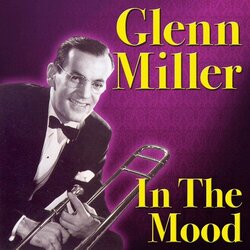
Well on their way to becoming one of the most popular bands of the swing era, Glenn Miller and his Orchestra were in the RCA Victor studios on East 24th Street in New York City on August 1, 1939. One of the sides they would record that day went on to become one of the most popular songs of the swing era. It was Joe Garland’s arrangement of In The Mood.
The origin of the tune is somewhat in dispute, but most agree that In The Mood is based on a Wingy Manone tune called Tar Paper Stomp which he recorded in 1930. The first recording of Garland’s In The Mood arrangement was by Edgar Hayes and his Orchestra in 1938. Miller’s version was released as a V-Disc in 1944 and Glenn Miller’s Overseas band in 1945. No performance by the Glenn Miller Orchestra, which still tours to this day, would be complete without a rendition of In The Mood.
The song was also featured in the 1941 20th Century Fox movie “Sun Valley Serenade.” In that picture the Glenn Miller Orchestra appears as a band led by Phil Corey (played by Miller) with the exception of actor John Payne who plays the part of the band’s pianist. The movie also features Sonja Henie and Milton Berle and is played 24 hours per day on dedicated television channel in every room at the the Sun Valley Lodge and Inn. The highlight of the film is the production number featuring Miller’s ensemble along with Dorothy Dandridge and the Nicholas Brothers performing Chatanooga Choo-Choo.
Here is a link to In The Mood as performed by Glenn Miller and his Orchestra in the movie “Sun Valley Serenade:”
"IN THE MOOD"
The origin of the tune is somewhat in dispute, but most agree that In The Mood is based on a Wingy Manone tune called Tar Paper Stomp which he recorded in 1930. The first recording of Garland’s In The Mood arrangement was by Edgar Hayes and his Orchestra in 1938. Miller’s version was released as a V-Disc in 1944 and Glenn Miller’s Overseas band in 1945. No performance by the Glenn Miller Orchestra, which still tours to this day, would be complete without a rendition of In The Mood.
The song was also featured in the 1941 20th Century Fox movie “Sun Valley Serenade.” In that picture the Glenn Miller Orchestra appears as a band led by Phil Corey (played by Miller) with the exception of actor John Payne who plays the part of the band’s pianist. The movie also features Sonja Henie and Milton Berle and is played 24 hours per day on dedicated television channel in every room at the the Sun Valley Lodge and Inn. The highlight of the film is the production number featuring Miller’s ensemble along with Dorothy Dandridge and the Nicholas Brothers performing Chatanooga Choo-Choo.
Here is a link to In The Mood as performed by Glenn Miller and his Orchestra in the movie “Sun Valley Serenade:”
"IN THE MOOD"
TODAY IN JAZZ HISTORY - July 31st
|
Guitarist and jazz educator Kenny Burrell was born July 31, 1931 in Detroit. Both of his parents played were musicians and Kenny began playing guitar at the age of 12 after listening to Charlie Christian recordings, but it was Django Reinhardt who showed him "that you could get your own individuality on an instrument." He went on to study composition, theory and classical guitar at Wayne State University. while a student there he made his recording debut as a member of Dizzy Gillespie’s sextet in 1951, followed by a single recorded under his own name for Fortune Records in Detroit. While in college, Burrell founded the New World Music Society collective with fellow Detroit musicians Pepper Adams, Donald Byrd, Elvin Jones and Yusef Lateef.
Burrell toured with pianist Osacar Peterson after graduating in 1955 and then moved to New York City in 1956 with pianist Tommy Flanagan. Within months of arriving in New York Burrell had recorded his first album as leader for Blue Note Records and both he and Flanagan were sought-after as sidemen and studio musicians, performing with singers Tony Bennett and Lena Horne and recording with Billie Holiday, Jimmy Smith, Gene Ammons and Kenny Dorham. From 1957 to 1959 Burrell occupied the former chair of Charlie Christian in the Benny Goodman band. Since his New York debut Burrell has had a prolific recording career and critics have cited “The Cats“ with John Coltrane in 1957,”Midnight Blue“ with Stanley Turrentine in 1963, and ”Guitar Forms“ with arranger Gil Evans in 1965 as particular highlights. In 1978 Burrell began teaching a course at UCLA called "Ellingtonia," examining the life and accomplishments of Duke Ellington. Although the two never collaborated directly, Ellington called Burrell his "favorite guitar player," and Burrell has recorded a number of tributes to and interpretations of Ellington's works. Since 1996 Burrell has served as Director of Jazz Studies at UCLA, mentoring such notable alumni as Kamasi Washington. Burrell wrote, arranged and performed on the 1998 Grammy Award-winning album “Dear Ella” by vocalist Dee Dee Bridgewater, received the 2004 Jazz Educator of the Year Award from DownBeat Magazine and was named a 2005 National Endowment of the Arts Jazz Master. Here is a link to a 1985 Kenny Burrell performance in New York City: "SUMMERTIME" |
TODAY IN JAZZ HISTORY - July 30th
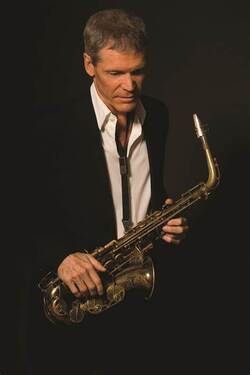
David Sanborn is among the most commercially successful saxophonists to emerge from the 1970s. Though a self-professed jazz musician, he has consistently subverted and transcended genres. He is a best-selling, multi-Grammy-winning saxophonist, composer, and arranger. A pioneer of smooth and contemporary jazz, he is also a prolific session player whose horn has graced recordings by more than 100 artists including Stevie Wonder, David Bowie, Roger Waters and James Brown. Sanborn was born in Tampa, Florida on July 30, 1945.
Sanborn was born Florida, but raised in Kirkwood, Missouri, a suburb of St. Louis. Contracting polio at the age of three, he struggled with the disease for eight years. In its aftermath, he began to play saxophone on the advice of a doctor, who thought it would aid him in strengthening his chest muscles. Sanborn's practice sessions became marathons. His first major influence on the alto was Hank Crawford, whose openly emotional tone he admired. The youngster made his professional debut at the age of 14 in 1959, playing with visiting Chicago bluesmen Little Milton and Albert King.
Sanborn traveled to California and met Paul Butterfield in 1965. After relocating to the Bay Area, he joined the Paul Butterfield Blues Band. He appeared with them at Woodstock and went on to record with the group. He began a long association with composer and arranger Gil Evans while simultaneously playing as a session player. Some of the classic records he played on during the era include Stevie Wonder’s “Talking Book,” Todd Rundgren’s “A Wizard, a True Star,“ David Bowie’s “Young Americans“ (the iconic solo on the title track is his) and Michael Frank’s “The Art of Tea.“ Relocating to New York, Sanborn's first real break as a leader came with 1980's “Hideaway,” which hit number two on the Jazz Albums chart and number 33 on the R&B Albums chart and marked the beginning of a long association with bassist/producer Marcus Miller.
In 1988, Sanborn began hosting Night Music, a cult TV show where invited musical guests performed their own work, discussed it in depth with the host, and jammed with the house band under musical directors like Marcus Miller and George Duke. Canceled after two seasons, it has since developed a reputation as one of the finest musical series in television history.
Sanborn's biting, instantly recognizable tone is passionate and completely committed. His second album, 1977's “Promise Me the Moon,” made the jazz charts and precipitated a three-decade chart and sales run. Sanborn topped the contemporary jazz charts again with 2015's “Time and the River.”
[This article is excerpted from Thom Jurek’s biography of Sanborn which appears on allmusic.com]
Here is a link to Sanborn performing live at the Montreux Jazz festival in 1984:
"STRAIGHT TO THE HEART"
Sanborn was born Florida, but raised in Kirkwood, Missouri, a suburb of St. Louis. Contracting polio at the age of three, he struggled with the disease for eight years. In its aftermath, he began to play saxophone on the advice of a doctor, who thought it would aid him in strengthening his chest muscles. Sanborn's practice sessions became marathons. His first major influence on the alto was Hank Crawford, whose openly emotional tone he admired. The youngster made his professional debut at the age of 14 in 1959, playing with visiting Chicago bluesmen Little Milton and Albert King.
Sanborn traveled to California and met Paul Butterfield in 1965. After relocating to the Bay Area, he joined the Paul Butterfield Blues Band. He appeared with them at Woodstock and went on to record with the group. He began a long association with composer and arranger Gil Evans while simultaneously playing as a session player. Some of the classic records he played on during the era include Stevie Wonder’s “Talking Book,” Todd Rundgren’s “A Wizard, a True Star,“ David Bowie’s “Young Americans“ (the iconic solo on the title track is his) and Michael Frank’s “The Art of Tea.“ Relocating to New York, Sanborn's first real break as a leader came with 1980's “Hideaway,” which hit number two on the Jazz Albums chart and number 33 on the R&B Albums chart and marked the beginning of a long association with bassist/producer Marcus Miller.
In 1988, Sanborn began hosting Night Music, a cult TV show where invited musical guests performed their own work, discussed it in depth with the host, and jammed with the house band under musical directors like Marcus Miller and George Duke. Canceled after two seasons, it has since developed a reputation as one of the finest musical series in television history.
Sanborn's biting, instantly recognizable tone is passionate and completely committed. His second album, 1977's “Promise Me the Moon,” made the jazz charts and precipitated a three-decade chart and sales run. Sanborn topped the contemporary jazz charts again with 2015's “Time and the River.”
[This article is excerpted from Thom Jurek’s biography of Sanborn which appears on allmusic.com]
Here is a link to Sanborn performing live at the Montreux Jazz festival in 1984:
"STRAIGHT TO THE HEART"
TODAY IN JAZZ HISTORY - July 29th
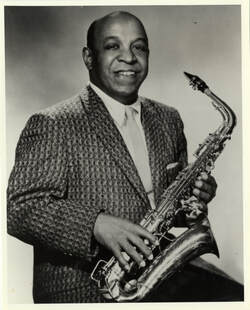
Reedman, vocalist, composer, arranger and bandleader Don Redman was born July 29, 1900 in Piedmont, West Virginia. His father was a music teacher and his mother was a singer. Young Don began playing the trumpet at the age of three and joined his first band at the age of six. By age of 12 he was proficient on all wind instruments ranging from trumpet to oboe as well as piano. Redman studied at Storer College in Harper’s Ferry and later at the Boston Conservatory of Music. After finishing school he joined Billy Page's Broadway Syncopators in New York City.
In 1923, Redman joined the Fletcher Henderson Orchestra, mostly playing clarinet and saxophones. He began writing arrangements for the band and did much to formulate the sound that was to become swing. A trademark of Redman's arrangements was the band playing harmony under written solos. He played brass and reed sections off each other in a call and response pattern, having one section punctuate the figures of another, and moved the melody around to different sections and soloists. Although this such writing is now so common as to be unremarkable, it was a brand new and innovative technique in the 1920 and formed the basis of much big band jazz writing to this day.
In 1927, bandleader and entrepreneur Jean Goldkette persuaded Redman to become the musical director of McKinney’s Cotton Pickers, one of the leading jazz groups of the era. He was responsible for their great success and arranged over half of their music.
Redman formed his own band in 1931, gaining a residency at the Harlem jazz club Connie’s Inn. Redman signed with the Brunswick label and also began a series of radio broadcasts. The Brunswick records Redman made between 1931 and 1934 were some of the most complex pre-swing hot jazz arrangements of popular tunes. Redman's band did not rely on just a driving rhythm or great soloists, but it had an overall level of arranging sophistication that was seldom heard by other bands of the period. In 1933, Redman’s band made a short film for Warner Brothers Studio which is available on the DVD of the Busby Berkeley feature film “Dames.“
When Redman disbanded his orchestra in 1940, he concentrated on freelance work writing arrangements. Some of his arrangements became hits for Jimmy Dorsey, Count Basie and Harry James. He traveled to Europe in 1946 leading an all-star band that included Don Byas, Tyree Glenn and Billy Taylor. He appeared on the “Uptown Jubilee” program on CBS television during the 1949 season. In the 1950s he was music director for singer Pearl Bailey. In the early 1960s, he played piano for the Georgia Minstrels Concert and soprano sax with Eubie Blake and Noble Sissle. Don Redman was the uncle of saxophonist Dewey Redman and great-uncle of saxophonist Joshua Redman. Don Redman died in New York City on November 30, 1964 at the age of 64.
Here is a link to Don Redman and his Orchestra from a 1932 recording which includes a vocal by Redman:
"HOW'M I DOIN'?"
In 1923, Redman joined the Fletcher Henderson Orchestra, mostly playing clarinet and saxophones. He began writing arrangements for the band and did much to formulate the sound that was to become swing. A trademark of Redman's arrangements was the band playing harmony under written solos. He played brass and reed sections off each other in a call and response pattern, having one section punctuate the figures of another, and moved the melody around to different sections and soloists. Although this such writing is now so common as to be unremarkable, it was a brand new and innovative technique in the 1920 and formed the basis of much big band jazz writing to this day.
In 1927, bandleader and entrepreneur Jean Goldkette persuaded Redman to become the musical director of McKinney’s Cotton Pickers, one of the leading jazz groups of the era. He was responsible for their great success and arranged over half of their music.
Redman formed his own band in 1931, gaining a residency at the Harlem jazz club Connie’s Inn. Redman signed with the Brunswick label and also began a series of radio broadcasts. The Brunswick records Redman made between 1931 and 1934 were some of the most complex pre-swing hot jazz arrangements of popular tunes. Redman's band did not rely on just a driving rhythm or great soloists, but it had an overall level of arranging sophistication that was seldom heard by other bands of the period. In 1933, Redman’s band made a short film for Warner Brothers Studio which is available on the DVD of the Busby Berkeley feature film “Dames.“
When Redman disbanded his orchestra in 1940, he concentrated on freelance work writing arrangements. Some of his arrangements became hits for Jimmy Dorsey, Count Basie and Harry James. He traveled to Europe in 1946 leading an all-star band that included Don Byas, Tyree Glenn and Billy Taylor. He appeared on the “Uptown Jubilee” program on CBS television during the 1949 season. In the 1950s he was music director for singer Pearl Bailey. In the early 1960s, he played piano for the Georgia Minstrels Concert and soprano sax with Eubie Blake and Noble Sissle. Don Redman was the uncle of saxophonist Dewey Redman and great-uncle of saxophonist Joshua Redman. Don Redman died in New York City on November 30, 1964 at the age of 64.
Here is a link to Don Redman and his Orchestra from a 1932 recording which includes a vocal by Redman:
"HOW'M I DOIN'?"
TODAY IN JAZZ HISTORY - July 28th
|
Jim Knapp was born on July 28, 1939 in Chicago. He was a trumpet player, composer and music educator who taught at the Cornish College of the Arts in Seattle for 45 years.
Knapp studied piano at age six and took up trumpet when he was twelve. He studied music composition at the University of Illinois and received his Bachelor of Music in 1962. After a stint in the United States Army he returned to the University of Illinois where he studied composition and wrote for the college jazz band. In 1968, Knapp's rotary-valve flugelhorn solos and composition Medley were noted at the National Collegiate Jazz Festival. A year later Knapp was awarded the Best Composer award by the festival. He completed his Master of Music in Composition in 1969. Knapp began teaching at Cornish in 1971, When Floyd Standifer left Cornish to teach at Olympic College in Bremerton, Washington, Knapp took over the jazz program there in 1971. He played with Joe Field's Seattle-based chamber jazz ensemble Matrix during the mid-1970s, and when Field left town in 1977 Knapp renamed the group the Composers and Improvisors Orchestra and made it the Cornish group-in-residence for until 1985. Guest artists who performed and wrote for the group included Gil Evans, Carla Bley, Sam Rivers and Anthony Braxton. While at Cornish Knapp assembled a jazz faculty that included bassist Gary Peacock, vocalist Jay Clayton, drummer Jerry Granelli, saxophonist Denney Goodhew, and trombonist Julian Priester. Knapp won a Fellowship from the National Endowment for the Arts to compose for the Composers and Improvisors Orchestra in 1984. Knapp retired in 2016 and passed away in November of 2021. Origin Records head and drummer described Jim Knapp’s music as “the sound of Seattle.” Here is a link to the Jim Knapp Orchestra playing one of his compositions at the Royal Room in Seattle: "NOWHERE FAST" |
TODAY IN JAZZ HISTORY - July 27th
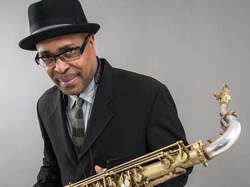
Tenor and soprano saxophonist Jean Toussaint was born on July 27, 1960 in Aruba and grew up in St. Thomas and New York City. Today is his 62nd birthday.
Toussaint attended the Berklee College of Music in Boston studying under Bill Pierce. After graduation spent four years as a member of Art Blakey and the Jazz Messengers along with Terence Blanchard, Mulgrew Miller and Donald Harrison. One of the albums he appeared on while a member of that group, “New York Scene,” won a Grammy for Best Instrumental Jazz Performance of 1984.
Since moving to London, England in 1987 Jean Toussaint has acted as artist-in-residence at the Guildhall School of Music and has become a familiar figure on the European jazz scene. In addition to his work as a band leader, Toussaint has been a sideman in groups led by McCoy Tyner, Cedar Walton, Max Roach and Horace Silver. In 2015 he headed a project to pay tribute to his Art Blakey called Roots and Herbs: The Blakey Project.
Here is a link to Jean Toussaint’s All-Star 6tet playing live at the Jazz Cafe:
"MAJOR CHANGES"
TODAY IN JAZZ HISTORY - July 26th
|
Patti Bown was one of a pair of sisters who diligently studied classical piano as young girls in Seattle. The word "young" is meant in its fully glory because she played piano in the Washington State governor's mansion at the age of two. Her sister launched a career as a classical keyboardist and wound up marrying composer Gerald Valentine, while Patti Bown decided to play jazz. Patti Bown was born on July 26, 1931.
Occupying a hefty place in her discography are her collaborations with arranger, composer, bandleader and fellow Garfield High School alum Quincy Jones. This relationship actually extends back to Bown's childhood when the two were friends and have reported playing games such as "house" together. Little did they know back then that Jones would be taking his own big band on tour in Europe in 1959 with Bown as the featured pianist. The occasion for this tour was the revue “Free and Easy,” featuring music written by Harold Arlen. A frequent contest winner as a child, Bown studied at the University of Washington and began working with local Seattle bands in the late 1940s, well before graduating. Bown relocated to New York City in the mid-1950s, often playing at cocktail lounges as well as getting into the more upfront rhythm of a jazz gig. In the 1960s, she recorded with Gene Ammons, Oliver Nelson, Duke Ellington, Rashaan Roland Kirk, George Russell and Harry “Sweets” Edison. Her musical compositions were recorded by no less than Benny Golson and Duke Ellington. She also recorded with soul musicians such as Aretha Franklin and James Brown. She Billy Eckstein, Jimmy Rushing, Dinah Washington, Sarah Vaughan and Leon Redbone. Her compositions include the tune G'won Train. In the 1970s, Bown worked as a pianist in orchestras on Broadway and composed for film and television. She played regularly at the Village Gate nightclub for many years and lived in Greenwich Village for the last 37 years of her life. She was chosen to perform at the Kennedy Center in 1997. Patti Bown passed away in 2008. [Portions of this piece were excerpted from a Patti Bown biography by Eugene Chadbourne found on allmusic.com] Here is a link to Patti Bown appearing on NPR’s “Piano Jazz” with Marian McPartland in 1980: "PATTI BOWN ON PIANO JAZZ" |
TODAY IN JAZZ HISTORY - July 25th

Born on July 25, 1907 in Cambridge, Massachusetts, Johnny Hodges was the saxophonist of choice for Duke Ellington. Hodges possessed a technical mastery of his instrument and an individualistic style. His use of vibrato was one-of-a-kind. At Hodges’s funeral, Ellington had this to say: “Never the world’s most highly animated showman or greatest stage personality, but a tone so beautiful it sometimes brought tears to the eyes – this was Johnny Hodges. This is Johnny Hodges.”
After learning to play both piano and drums, Hodges first played soprano sax before switching to the alto saxophone. He went to New York while still in his teens where he played with Luckey Roberts, Sidney Bechet and Chick Webb before joining Duke Ellington’s Orchestra in 1928. From the very beginning of their association Hodges became pivotal to the Ellington sound. Ellington's practice of writing tunes specifically for members of his orchestra resulted in the Hodges specialties Jeep's Blues, Sultry Sunset and Hodge Podge. Other songs recorded by the Ellington Orchestra which prominently feature Hodges's smooth sound are "Magenta Haze", Prelude to a Kiss, The Star-Crossed Lovers, I Got It Bad and That Ain’t Good, Blood Count and Passion Flower.
Hodges left Ellington in 1951 to work within a small group environment. His first session for the Norgran label was in January along with two other Ellingtonians, trombonist Lawrence Brown and Duke’s long serving drummer Sonny Greer. Over the next decade or so, Hodges recorded for both Norgran and Verve.
In the early 1960s, he rejoined Ellington’s band and was in the studio when Duke and Frank Sinatra recorded the album, “Francis A And Edward K” in December 1967. Among the songs they recorded was the beautiful Indian Summer, which featured a sumptuous Billy May arrangement that featured Hodges. It is among the best songs Sinatra recorded for the Reprise label, and Hodges’s sax solo certainly had a lot to do with it.
[Portions of this article were excerpted from Richard Haven’s biography of Johnny Hodges on udiscovermusic.com]
Here is a link to Johnny Hodges playing one of his signature tunes:
"PASSION FLOWER"
After learning to play both piano and drums, Hodges first played soprano sax before switching to the alto saxophone. He went to New York while still in his teens where he played with Luckey Roberts, Sidney Bechet and Chick Webb before joining Duke Ellington’s Orchestra in 1928. From the very beginning of their association Hodges became pivotal to the Ellington sound. Ellington's practice of writing tunes specifically for members of his orchestra resulted in the Hodges specialties Jeep's Blues, Sultry Sunset and Hodge Podge. Other songs recorded by the Ellington Orchestra which prominently feature Hodges's smooth sound are "Magenta Haze", Prelude to a Kiss, The Star-Crossed Lovers, I Got It Bad and That Ain’t Good, Blood Count and Passion Flower.
Hodges left Ellington in 1951 to work within a small group environment. His first session for the Norgran label was in January along with two other Ellingtonians, trombonist Lawrence Brown and Duke’s long serving drummer Sonny Greer. Over the next decade or so, Hodges recorded for both Norgran and Verve.
In the early 1960s, he rejoined Ellington’s band and was in the studio when Duke and Frank Sinatra recorded the album, “Francis A And Edward K” in December 1967. Among the songs they recorded was the beautiful Indian Summer, which featured a sumptuous Billy May arrangement that featured Hodges. It is among the best songs Sinatra recorded for the Reprise label, and Hodges’s sax solo certainly had a lot to do with it.
[Portions of this article were excerpted from Richard Haven’s biography of Johnny Hodges on udiscovermusic.com]
Here is a link to Johnny Hodges playing one of his signature tunes:
"PASSION FLOWER"
TODAY IN JAZZ HISTORY - July 24th
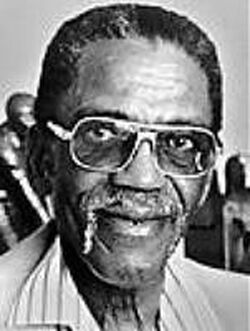
Saxophonist Jabo Ward was a highly revered and beloved figure on the Pacific Northwest jazz scene for over sixty years. He was born Ulysses Ward on July 24th and grew up in Kansas City, Missouri where he heard Count Basie and was able to absorb the thriving jazz scene that city offered in the 1930s.
Ward left his hometown in 1937 when his father gave him a train ticket to visit Seattle and look for work. He worked in a southwest Washington lumber mill for three years before joining the Merchant Marine. On one of his trips to Alaska he decided that he wanted to learn to play saxophone. The ships on which he served dropped off their cargo and returned empty, so Ward had lots of time and solitude in which to practice. He also started taking lessons on the side from Frank Waldron when in Seattle.
Although he didn’t play music until he was an adult, Jabo Ward turned his late start into an asset by studying music so hard that he pushed past his swing-era peers and went on to absorb the more modern sounds of bebop in the 1940s. He was a central figure in Seattle's legendary Jackson Street music scene, where from 1943 to 1950 he played baritone saxophone six nights a week at the Union Club with bandleader Al Pierre’s Little Big Band and toured with band, as well.
Ward also played at all the other Jackson Street venues, including Basin Street and the Far East Veterans Club, where he worked for three years with vocalist Dee Dee Hackett beginning in 1951. He played the New Chinatown from 1954-56 and the black musicians’ union “clubhouse,” the Blue Note. Ward had a second heyday as a more modern saxophonist and flutist under the influence of John Coltrane when he co-led a group with saxophonist and flutist Bob Winn at Pete’s Poop Deck. Ward made music a sideline in later life, but remained a fixture on the Seattle jazz scene through the 1980s and 1990s when he played with the Inner City Jazz Quartet.
Jabo Ward's music never sounded dated because he had a rare ability to play the most modern of jazz styles while retaining his Kansas City blues roots. The timeless quality of his music and warmth of his personality made him constantly in demand to play weddings and parties. Jabo Ward passed away in 2004.
[parts of this article were excerpted from Jabo Ward’s obituary in the Seattle Times written by Marius Nordal]
Ward left his hometown in 1937 when his father gave him a train ticket to visit Seattle and look for work. He worked in a southwest Washington lumber mill for three years before joining the Merchant Marine. On one of his trips to Alaska he decided that he wanted to learn to play saxophone. The ships on which he served dropped off their cargo and returned empty, so Ward had lots of time and solitude in which to practice. He also started taking lessons on the side from Frank Waldron when in Seattle.
Although he didn’t play music until he was an adult, Jabo Ward turned his late start into an asset by studying music so hard that he pushed past his swing-era peers and went on to absorb the more modern sounds of bebop in the 1940s. He was a central figure in Seattle's legendary Jackson Street music scene, where from 1943 to 1950 he played baritone saxophone six nights a week at the Union Club with bandleader Al Pierre’s Little Big Band and toured with band, as well.
Ward also played at all the other Jackson Street venues, including Basin Street and the Far East Veterans Club, where he worked for three years with vocalist Dee Dee Hackett beginning in 1951. He played the New Chinatown from 1954-56 and the black musicians’ union “clubhouse,” the Blue Note. Ward had a second heyday as a more modern saxophonist and flutist under the influence of John Coltrane when he co-led a group with saxophonist and flutist Bob Winn at Pete’s Poop Deck. Ward made music a sideline in later life, but remained a fixture on the Seattle jazz scene through the 1980s and 1990s when he played with the Inner City Jazz Quartet.
Jabo Ward's music never sounded dated because he had a rare ability to play the most modern of jazz styles while retaining his Kansas City blues roots. The timeless quality of his music and warmth of his personality made him constantly in demand to play weddings and parties. Jabo Ward passed away in 2004.
[parts of this article were excerpted from Jabo Ward’s obituary in the Seattle Times written by Marius Nordal]
TODAY IN JAZZ HISTORY - July 23rd
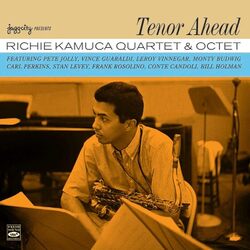
An excellent cool-toned tenor who found his own voice in the Lester Young-influenced Four Brothers sound, Richie Kamuca tended to be overshadowed by those who came first like Stan Getz, Zoot Sims, and Al Cohn, but musicians knew how good he was. Kamuca was born in Philadelphia, Pennsylvania on July 23,1930.
Kamuca was a soloist with the orchestras of Stan Kenton (1952-1953) and Woody Herman (1954-1956) and then worked steadily on the West Coast with groups led by Chet Baker and Maynard Ferguson, as a member of The Lighthouse All-Stars (1957-1958), and with Shorty Rogers and Shelly Manne (1959-1961). He recorded one album each as a leader for the Liberty, Mode and Hi Fi labels during 1956 and 1957. Moving to New York in 1962, Kamuca worked with Gerry Mulligan, Gary McFarland and Roy Eldridge between 1966- and 1971, but toiled in obscurity for all but the most ardent jazz fans. In 1972, he moved back to Los Angeles to work in the studios, but also played jazz locally with small groups and with Bill Berry’s L.A. Big Band. In his later years before his death from cancer in 1977 a day before his 47th birthday, Richie Kamuca recorded three wonderful albums for Concord.
[This piece includes excerpts from a biography of Richie Kamuca written by Scott Yanow for allmusic.com]
Here is a link to the Richie Kamuca Quintet playing live on Los Angeles television in 1958:
"CHERRY"
TODAY IN JAZZ HISTORY - July 22nd
|
Born on July 22, 1954 in Jersey City, New Jersey, guitarist Al Di Meola started playing at a young age, inspired by bands like The Ventures and The Beatles. A diligent student, he progressed quickly and by his teens was already a gifted player. It was during high school that he discovered jazz, listening to artists like Kenny Burrell and Tal Farlow. However, it was his exposure to innovative fusion guitarist Larry Coryell that sparked him to blend jazz, blues, rock, and more. In 1972, he enrolled at Boston's Berklee College of Music, where he joined a quartet featuring keyboardist Barry Miles. A tape of the group eventually landed in the hands of keyboardist Chick Corea, who quickly offered Di Meola a chance to replace outgoing guitarist Bill Connors in his fledgling fusion ensemble Return to Forever. Di Meola left school prior to finishing his degree and hit the road with the group, which then included bassist Stanley Clarke, and drummer Lenny White. It was with Di Meola that Return to Forever achieved their greatest commercial success.
After Return to Forever disbanded, Di Meola, still only 22 years old, embarked on a solo career, starting with his 1976 record “Land of the Midnight Sun.” In many ways it was a continuation of his work with Return to Forever, the album included contributions by Corea and White, as well as drummer Steve Gadd, bassists Jaco Pastorius and Stanley Clarke, Barry Miles and others. A string of successful albums followed, and some remain the finest jazz fusion recordings of the era. Throughout the 1980s and 1990s, Di Meola earned yearly top honors in Guitar Player magazine polls. He also found himself in demand as a collaborator and showcase performer, playing on albums by Paul Simon, Stanley Jordan, and Stomu Yamashta, among others. In the 1990s Di Meola shifted almost entirely away from fusion, concentrating more on acoustic-based music that found him incorporating global traditions. Tango rhythms especially played a role in his sound. DiMeola continues to perform actively today. [This piece is excerpted from a biography of Al DiMeola written by Matt Collar for allmusic.com] Here is a link to DiMeola playing live: "RACE WITH DEVIL ON SPANISH HIGHWAY" |
TODAY IN JAZZ HISTORY - July 21st

The youngest of eight children, hard bop pianist Sonny Clark was born on July 21, 1931 near the town of Herminie, Pennsylvania east of Pittsburgh. His father, a coal miner, died just two weeks after Sonny arrived. He never achieved widespread commercial success, but his playing was known and respected by those in the jazz world.
Already an accomplished keyboard man, Clark traveled to California at the age of 20 to visit a relative and ended up staying there, working first with Wardell Gray and then with Oscar Pettiford. At the age of 22 he was hired by clarinetist Buddy DeFranco and toured with him for three years before returning to southern California in 1956. While there he recorded three albums as a member of Howard Rumsey’s Lighthouse All-Stars.
In 1957 Clark was in New York City and working as the accompanist for singer Dinah Washington. He remained on the east coast for the remainder of his career recording as a sideman for Curtis Fuller, Jackie McLean, Dexter Gordon, Hank Mobley and Stanley Turrentine. He made his first record as a leader, “Dial ‘S’ for Sonny,” with Blue Note Records in 1957.
Clark struggled with drug addiction throughout his short life. On January 11th and 12th, 1963 Sonny Clark played gigs at Junior’s Bar in the Alvin Hotel at 52nd Street and Broadway in New York. The next day he was dead at the age of 31 from what was initially reported as a heart attack, but was more likely a heroin overdose.
Here is a link to the title track from his 1958 record “Sonny’s Crib.” Along with Clark, the record features performances by trumpeter Donald Byrd, trombonist Curtis Fuller and John Coltrane on tenor saxophone:
"SONNY'S CRIB"
Already an accomplished keyboard man, Clark traveled to California at the age of 20 to visit a relative and ended up staying there, working first with Wardell Gray and then with Oscar Pettiford. At the age of 22 he was hired by clarinetist Buddy DeFranco and toured with him for three years before returning to southern California in 1956. While there he recorded three albums as a member of Howard Rumsey’s Lighthouse All-Stars.
In 1957 Clark was in New York City and working as the accompanist for singer Dinah Washington. He remained on the east coast for the remainder of his career recording as a sideman for Curtis Fuller, Jackie McLean, Dexter Gordon, Hank Mobley and Stanley Turrentine. He made his first record as a leader, “Dial ‘S’ for Sonny,” with Blue Note Records in 1957.
Clark struggled with drug addiction throughout his short life. On January 11th and 12th, 1963 Sonny Clark played gigs at Junior’s Bar in the Alvin Hotel at 52nd Street and Broadway in New York. The next day he was dead at the age of 31 from what was initially reported as a heart attack, but was more likely a heroin overdose.
Here is a link to the title track from his 1958 record “Sonny’s Crib.” Along with Clark, the record features performances by trumpeter Donald Byrd, trombonist Curtis Fuller and John Coltrane on tenor saxophone:
"SONNY'S CRIB"
TODAY IN JAZZ HISTORY - July 20th

Tenor saxophonist and arranger Ernie Wilkins was born in St. Louis, Missouri on this date in 1922. Wilkins learned piano and violin and attended Wilberforce University before serving the U.S. Navy during World War II.
After separation from the navy, Wilkins played gigs around his hometown before joining up with Earl Hines’ last big band in 1948. In 1952 he became part of the saxophone section in the Count Basie Orchestra where he stayed for three years. He would continue to contribute compositions and arrangements to the Basie book for years to come. Wilkins also wrote for big bands led by Harry James, Maynard Ferguson, Buddy Rich and Tommy Dorsey and served as musical director on projects by Cannonball Adderley, Sarah Vaughan and Oscar Peterson.
In the 1970s he wrote for and played with Clark Terry’s group. In 1979 Wilkins moved to Copenhagen, Denmark where he lived until his death in 1999. While there he formed the Ernie Wilkins Almost Big Band which played his own arrangements and featured American expatriate musicians along with talent from Europe.
Here is a link to Ernie Wilkins Almost Big Band playing at the Montreux Jazz Festival in 1983:
"HI FLY"
After separation from the navy, Wilkins played gigs around his hometown before joining up with Earl Hines’ last big band in 1948. In 1952 he became part of the saxophone section in the Count Basie Orchestra where he stayed for three years. He would continue to contribute compositions and arrangements to the Basie book for years to come. Wilkins also wrote for big bands led by Harry James, Maynard Ferguson, Buddy Rich and Tommy Dorsey and served as musical director on projects by Cannonball Adderley, Sarah Vaughan and Oscar Peterson.
In the 1970s he wrote for and played with Clark Terry’s group. In 1979 Wilkins moved to Copenhagen, Denmark where he lived until his death in 1999. While there he formed the Ernie Wilkins Almost Big Band which played his own arrangements and featured American expatriate musicians along with talent from Europe.
Here is a link to Ernie Wilkins Almost Big Band playing at the Montreux Jazz Festival in 1983:
"HI FLY"
TODAY IN JAZZ HISTORY - July 19th

Clarinetist Buster Bailey was born in Memphis, Tennessee on July 19, 1902 and played in some of the best-known musical organizations of his time during his career.
As a youth Bailey took clarinet lessons from the same teacher that worked with Benny Goodman. By the time he was 15 years old Buster was playing in the group led by W.C. Handy. At 17 he was playing in Erskine Tate’s Vendome Orchestra in Chicago where he remained until joining King Oliver in 1923. While he was with Oliver he befriended bandmate Louis Armstrong. A year later Armstrong took a job with Fletcher Henderson in New York City and recommended Bailey to his new boss. Shortly thereafter Buster was also in New York and playing with the Henderson ensemble where he stayed for four years.
In 1927 Buster Bailey quit Henderson’s band and joined up with Noble Sissle. While in New York Bailey became a popular sideman and recorded with a number of well-known artists of the day including Clarence Williams. In the mid 1930s he joined up with the John Kirby Band where he remained for about a decade before leading his own short-lived group in 1946. Later in his career Bailey played with Wild Bill Davidson and Red Allen and made records with Jimmy Rushing, Eubie Blake and trombonist Vic Dickenson. Buster Bailey died after suffering a heart attack in 1967.
Here is a link to a 1958 Buster Bailey television appearance on the program “Jazz Party:”
"BUSTER BAILEY"
As a youth Bailey took clarinet lessons from the same teacher that worked with Benny Goodman. By the time he was 15 years old Buster was playing in the group led by W.C. Handy. At 17 he was playing in Erskine Tate’s Vendome Orchestra in Chicago where he remained until joining King Oliver in 1923. While he was with Oliver he befriended bandmate Louis Armstrong. A year later Armstrong took a job with Fletcher Henderson in New York City and recommended Bailey to his new boss. Shortly thereafter Buster was also in New York and playing with the Henderson ensemble where he stayed for four years.
In 1927 Buster Bailey quit Henderson’s band and joined up with Noble Sissle. While in New York Bailey became a popular sideman and recorded with a number of well-known artists of the day including Clarence Williams. In the mid 1930s he joined up with the John Kirby Band where he remained for about a decade before leading his own short-lived group in 1946. Later in his career Bailey played with Wild Bill Davidson and Red Allen and made records with Jimmy Rushing, Eubie Blake and trombonist Vic Dickenson. Buster Bailey died after suffering a heart attack in 1967.
Here is a link to a 1958 Buster Bailey television appearance on the program “Jazz Party:”
"BUSTER BAILEY"
TODAY IN JAZZ HISTORY - July 18th
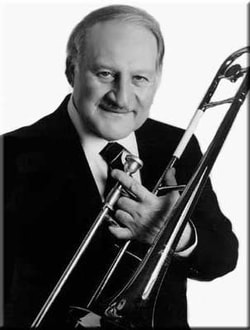
Carl Fontana was one of the most talented and innovative trombonists of his generation. He became known as a lyrical, technically brilliant and inventive soloist. His fluid style was quite different from the bebop staccato of his great contemporaries, such as J.J. Johnson and Frank Rosolino. Carl Fontana was born on July 18, 1928 in Monroe, Louisiana.
Fontana learned jazz music from his father Collie, a saxophonist and violin player, and first performed with his father’s band while in high school. Fontana attended the school known today as University of Louisiana Monroe for two years. He then transferred to Louisiana State University, receiving his degree in Music Education in 1950.
His first break into the professional jazz scene came the following year, when he was hired to sit in for one of Woody Herman’s regular trombonists, Urbie Green. Herman was so impressed with Fontana, particularly his improvisational skills, that when Green returned Herman kept Fontana on as a permanent member of the band.
After three years with Herman, Fontana joined Lionel Hampton’s big band in 1954. In early 1955 he played briefly with Hal McIntyre before joining Stan Kenton’s big band later in the year. He recorded three albums with Kenton and also worked with fellow trombonist Kai Winding during this period.
In 1958, Fontana moved to Las Vegas, Nevada. After that, he would tour only on rare occasions, such as a 1966 tour of Africa with Herman’s band sponsored by the United States State Department. Instead, he primarily performed with house orchestras in Las Vegas during the 1960s, particularly Paul Anka’s band (with Rosolino). He also performed in the bands backing Sammy Davis Jr., Tony Bennett, Wayne Newton and with the Benny Goodman Orchestra.
Fontana was greatly admired for his mastery of “doodle tonguing,” a technique he developed for playing rapid-fire passages with technical brilliance in double-time phrasing. This skill allowed Fontana to smoothly execute “runs of notes” at speeds many had not previously considered possible to achieve on a slide trombone.
Although Carl Fontana never earned great fame with general jazz audiences, he is on every great jazz trombonist’s list of great jazz trombonists. Bill Watrous, for example, cited Fontana as his favorite trombonist, and the two recorded together near the end of Fontana’s career. J. J. Johnson called him, “One fantastic trombone player.” Legendary jazz critic and historian Leonard Feather summed up Fontana’s career as follows: “Fontana has long been regarded as the most fluid, innovative trombonist after J. J. Johnson. A modern trombonist with exceptional technique and ideas.” Carl Fontana died in Las Vegas, Nevada aged 75 after suffering from Alzheimer’s disease.
Here is a link Fontana performing on Dutch television in 1988:
"I THOUGHT ABOUT YOU"
Fontana learned jazz music from his father Collie, a saxophonist and violin player, and first performed with his father’s band while in high school. Fontana attended the school known today as University of Louisiana Monroe for two years. He then transferred to Louisiana State University, receiving his degree in Music Education in 1950.
His first break into the professional jazz scene came the following year, when he was hired to sit in for one of Woody Herman’s regular trombonists, Urbie Green. Herman was so impressed with Fontana, particularly his improvisational skills, that when Green returned Herman kept Fontana on as a permanent member of the band.
After three years with Herman, Fontana joined Lionel Hampton’s big band in 1954. In early 1955 he played briefly with Hal McIntyre before joining Stan Kenton’s big band later in the year. He recorded three albums with Kenton and also worked with fellow trombonist Kai Winding during this period.
In 1958, Fontana moved to Las Vegas, Nevada. After that, he would tour only on rare occasions, such as a 1966 tour of Africa with Herman’s band sponsored by the United States State Department. Instead, he primarily performed with house orchestras in Las Vegas during the 1960s, particularly Paul Anka’s band (with Rosolino). He also performed in the bands backing Sammy Davis Jr., Tony Bennett, Wayne Newton and with the Benny Goodman Orchestra.
Fontana was greatly admired for his mastery of “doodle tonguing,” a technique he developed for playing rapid-fire passages with technical brilliance in double-time phrasing. This skill allowed Fontana to smoothly execute “runs of notes” at speeds many had not previously considered possible to achieve on a slide trombone.
Although Carl Fontana never earned great fame with general jazz audiences, he is on every great jazz trombonist’s list of great jazz trombonists. Bill Watrous, for example, cited Fontana as his favorite trombonist, and the two recorded together near the end of Fontana’s career. J. J. Johnson called him, “One fantastic trombone player.” Legendary jazz critic and historian Leonard Feather summed up Fontana’s career as follows: “Fontana has long been regarded as the most fluid, innovative trombonist after J. J. Johnson. A modern trombonist with exceptional technique and ideas.” Carl Fontana died in Las Vegas, Nevada aged 75 after suffering from Alzheimer’s disease.
Here is a link Fontana performing on Dutch television in 1988:
"I THOUGHT ABOUT YOU"
TODAY IN JAZZ HISTORY - July 17th
|
Chico Freeman is a composer, bandleader, educator, and multi-reedist from Chicago. He was born on July 17, 1949. The son of the late saxophonist Von Freeman, he has issued dozens of recordings as a leader, and played on hundreds more.
Freeman was born Earl Lavon Freeman, Jr., and nicknamed "Chico" by his dad. He started playing piano at age five, and began playing trumpet at ten, inspired by seeing his father sit in with the Miles Davis Quintet. Though he was exposed to jazz early on, many of Freeman's early professional gigs were in Chicago clubs as a teen with blues artists including Memphis Slim and Lucky Carmichael. He switched to tenor sax while at Northwestern University, where he studied math, advanced composition, and theory. While studying for his master's in composition and theory at Governor State University with Muhal Richard Abrams, Freeman taught at the Association for the Advancement of Creative Musicians' music school. As a graduate student, he was the principal soloist in the university's big band and toured Brazil with them during the 1970s. He won awards at the Notre Dame Jazz Festival in 1973. After completing his master's degree, Freeman moved to New York, where he found work with Elvin Jones, Sun Ra, Sam Rivers, Jack DeJohnette, and Don Pullen. He began leading his own bands during the mid-1970s and released his debut album, “Morning Prayer,” in 1976. The latter part of the decade was a prolific period for Freeman as he released no less than six albums over a period of about four years. The year 1982 proved seminal in the saxophonist's career. He was part of the then-controversial Columbia album “Fathers and Sons” on which he and his father were showcased on one side while Ellis and Wynton Marsalis led the other. Freeman played a major role in the filming of the “Young Lions” event that year in Central Park which showcased the talents of rising jazz stars including Bobby McFerrin, Wynton Marsalis, Paquito D’Rivera and Kevin Eubanks at the dawn of the "new traditionalists" era. In 1984, when superstar bands were being organized by promoters in Europe, Freeman founded The Leaders, an all-star sextet of internationally recognized bandleaders. The original lineup included Cecil McBee, Lester Bowie, Arthur Blythe, and Famoudou Don Moye. The Leaders set the standard for eclectic and innovative music from a band comprised entirely of composers. In 1992, Freeman formed another leader-based collective called Roots. Chico Freeman has lived in Europe for most of this century. On tour in Russia in March of 2020, Freeman caught the last flight out of Moscow before the borders closed due to COVID-19. However, he had no way of traveling to the United States. Locked down in Europe and self-quarantined, he watched the pandemic's effects unfold across the globe. Desiring to contribute in some way, he reached out to his online musical family to do something to help heal and inspire. Freeman chose the Bill Withers song You Just Can't Smile It Away to record and enlisted Texas gospel singer Yatronin Texas, keyboardist Jeremy Mage in Switzerland, and synthesizer player Jan Pulsford in London. After cutting the track, Merlyn Bruce mixed it at London's Mothership Studios for release by Efficacy Recordings. The label and Freeman designated all proceeds from the track be donated to the charity Chicago HOPES for Kids. [This piece is excerpted from a biography of Chico Freeman written by Thom Jurek and available on allmusic.com] Here is a link to Chico Freeman and the Leaders: "THE SOUND OF YOU" |
TODAY IN JAZZ HISTORY - July 16th
|
It has been written that Cal Tjader was the “point man between Latin jazz and mainstream bop.” Of Swedish descent, he was sometimes called “the most successful non-Latino Latin musician” and spent the bulk of his career playing musical styles from Cuba, Mexico, the Caribbean and throughout Latin America. Known mainly as a vibraphonist, Tjader also can be heard on recordings playing drums, bongos and piano, as well. He was born on July 16, 1925, 98 years ago today.
Cal Tjader was born in St. Louis, Missouri because his vaudevillian parents were on tour there. His father was a tap dancer and his mother played piano in their act. When Cal was two his family settled in San Mateo, California where his parents opened a dance studio. His parents taught young Cal their skills and soon he was making appearances around the San Francisco Bay Area as Tjader Junior. After serving as a medic in the Pacific during World War II, Tjader studied at San Francisco State College. While there he met pianist Dave Brubeck and accepted an offer to play drums in his octet. The octet was a short-lived project, but Tjader followed that by being the drummer in the Dave Brubeck Trio. In 1953 Cal joined up with pianist George Shearing for a short while before forming his own group which capitalized on the mambo craze that swept America in the mid-1950s. Tjader was signed to Fantasy Records and began turning out a series of popular albums that featured seasoned Latin musicians. The band was the opening act at the second Monterey Jazz Festival. In the 1960s Tjader signed with Verve Records and made a number of popular albums for them. He recorded in many different formats during the decade including with big bands, string groups. His 1964 album Soul Sauce and its title track were a huge success for Cal. During the 1970s Cal Tjader experimented with electronic instruments and rock beats on his records but returned to a more standard instrumentation and style by the time the 1980s rolled around. He was on tour in the Philippines in 1982 when he suffered a fatal heart attack. In all, Cal Tjader recorded more than 70 albums as a leader between 1954 and 1982 and was one of the most popular jazz performers of his era. Here is a link to Tjader’s 1964 hit Soul Sauce, a cover of a Dizzy Gillespie tune: "SOUL SAUCE" |
TODAY IN JAZZ HISTORY - July 15th
|
Drummer Philly Joe Jones was born in Philadelphia (not surprisingly) on this date in 1923. His given name was Joseph Rudolph Jones and he learned the basics of music at a young age from his mother who was a piano teacher. He took on the moniker “Philly Joe” to distinguish himself from Jo Jones, the drummer with Count Basie’s All-American Rhythm Section.
In the 1940s Jones was playing in New York with jazz and blues groups and made his first record with saxophonist Johnny Griffin. Late in that decade and into the early 1950s Philly Joe could be heard playing in groups led by Tadd Dameron, Ben Webster, Dexter Gordon, Lee Konitz and Zoot Sims. After 1953 Jones was associated with Miles Davis. Miles related in his autobiography that “Philly Joe Jones and I would go from city to city playing with local musicians. Philly would go ahead of me and get some guys together and then I would show and we’d play a gig.” Eventually the two found Red Garland and Paul Chambers and auditioned John Coltrane and the first Miles Davis Quintet was formed. Jones recorded his first record as a leader in 1958. After his time with Davis ended, Philly Joe Jones could be heard on numerous Blue Note, Riverside and Prestige recordings and played regularly with Sonny Rollins, Art Pepper and is the drummer on Coltrane’s Blue Train album. In 1968 Jones moved to Europe and played with many American expatriate and touring jazz musicians while also teaching in London. In the 1980s he founded the group Dameronia dedicated to playing the music of Tadd Dameron. Philly Joe Jones died of a heart attack in his hometown on August 30, 1985. Here is a link to Philly Joe Jones soloing as part of the Bill Evans Trio at the Montreux Jazz Festival in 1978: "DRUM SOLO" |
TODAY IN JAZZ HISTORY - July 14th
|
Pianist Billy Kyle was born on July 14, 1914 in Philadelphia. He is probably best known for his time with Louis Armstrong’s All-Stars in the 1950s and 1960s.
Kyle began playing piano at age 8 and rarely recorded as a leader during his career but was a solid sideman for several name jazz groups throughout his career. Beginning his professional journey at 18, Billy Kyle played with the big bands of Lucky Millinder and Tiny Bradshaw during the 1930s and in the John Kirby Sextet from 1938 until 1942 at which time he was drafted into the U.S. Army. After his discharge from the army at the end of World War II, Billy Kyle worked as a sideman, often with trumpeter and bandleader Sy Oliver. He also played gigs with Rex Stewart, Ella Fitzgerald and Buck Clayton. Kyle’s light touch and fluent style kept him in demand. In 1953 he became a member of Louis Armstrong’s quintet where he played for 13 years until he passed away in 1966. While with Armstrong Kyle appeared on 8 albums and in the 1956 movie High Society. Here is a link to a Billy Kyle playing Perdido during a 1963 telecast of a performance by the Louis Armstrong All-Stars in Australia: "PERDIDO" |
TODAY IN JAZZ HISTORY - July 13th
|
Albert Ayler was born in Cleveland, Ohio on July 13,1936 and grew up in the Shaker Heights neighborhood. He first played saxophone as a child, getting lessons from his father and playing duets with him in their church. Ayler was gigging professionally as early as age 16, playing sax in R&B performer Little Walter’s touring band. After some time in the military he relocated to Sweden in 1962. There he led some bands of his own and also jammed on occasion with Cecil Taylor, finding his voice as he strayed from the more traditional playing of his upbringing toward more avant-garde ideas. In 1963 he returned to the United States, living in New York and immersing himself in the burgeoning free jazz scene there. 1963 also saw the release of his debut album, “My Name is Albert Ayler,” which presented a more subdued reading of his quickly evolving style. He hit a stride in terms of both artistry and momentum in 1964, working with ESP-Disk on what would be the label’s first jazz record, “Spirits Rejoice,” as well as recording multiple studio and live dates that would eventually be released as albums.
Around 1965, Ayler’s younger brother Donald joined his band on trumpet. Donald’s unschooled technique and visceral playing heightened the already transcendent sound his brother was achieving, and the Aylers began playing frequently with a revolving cast of like-minded improvisers. In 1966, Impulse! Records offered Ayler a recording contract at the urging of John Coltrane, who was the label’s main attraction at that time. Impulse! would release some of Ayler’s most groundbreaking material over the next few years. By the end of 1967, Donald Ayler had stopped playing music after suffering a mental and emotional breakdown, and Albert struggled with the guilt of feeling responsible for dragging his brother into an unhealthy lifestyle. His struggle was compounded as he continued to face commercial failure, even with the prestigious Impulse! in his corner. 1969 recording sessions would result in the music that became 1970’s “Music is the Healing Force of the Universe” and 1971’s The Last Album,“ but it would also be his last time in the studio. Following a tour of France in July of 1970, Ayler returned to New York. He went missing in early November of that year, and on November 25, 1970, his body was found floating in the East River. The circumstances surrounding his death have never been brought to light publicly, but many close to him suspected suicide. [This piece is excerpted from a biography of Albert Ayler by Fred Thomas on allmusic.com] Here is a link to a 1964 recording by the Albert Ayler Trio featuring Gary Peacock on Bass and Sunny Murray on drums: "GHOSTS: VARIATION 1" |
TODAY IN JAZZ HISTORY - July 12th
|
Paul Gonsalves was born on July 12, 1920, in Boston, Massachusetts, which is where he had his first professional engagement. He played tenor saxophone with the Sabby Lewis band for several years, a stretch split by military service during World War Two. In 1946, he left the Lewis band to join Count Basie for almost three years, was briefly with Dizzy Gillespie in 1949, and then joined Duke Ellington in 1950. He was to remain with Ellington for the rest of his life. In common with many other tenor players who aspired to play with Ellington, Gonsalves learned Ben Webster's famous 'Cottontail' solo note for note, but it was not long before his own distinctive style thrust aside imitation.
By the time of his sixth year with Ellington, Gonsalves had experienced the ups and downs of playing with a big band. Gonsalves was building a reputation as a consummate balladeer and also as a crowd pleaser thanks to Ellington's choice of him as the soloist to bridge the opening and closing sections of Diminuendo and Crescendo in Blue. He had already done this on some dance dates when Ellington called this number at the 1956 Newport Jazz Festival. It had been a mixed night. Ellington was irritated by his placing on the bill, the show was a long one and the audience was already drifting homewards, and some of the band had been more than usually tardy in returning to the stand after the intermission. Whatever the truth behind the moment, the fact is that Ellington called this number, the band played the opening section, and then Gonsalves stepped forward and began to play. And he played and he played and he played. His storming, 27-chorus bridge dragged the audience back to its seats. The band had already been playing well and everyone was in marvelous form and enjoying the occasion. Now, stoked by Sam Woodyard's drumming and the leader's jabbing chords from the piano, they transcended all that had come before on that night and much of what had transpired in the quarter century of the band's existence. A legend was born. The astonishing impact on the audience present that night was imparted to the world, thanks to suddenly focused media attention. This was the start of Ellington's renaissance and neither he nor Gonsalves ever looked back. The downside was, inevitably perhaps, that the saxophonist was obliged to play extended gallery-pleasing, up-tempo solos every night, a fact which overshadowed his great love for ballads. Nevertheless, ballad performances there were. Gonsalves's relaxed and thoughtful approach to tunes displayed a love for melody and an ability to develop long, clean and logical solo lines. His rhapsodic playing on many Ellington performances all testify to his vulnerable, often tender sound. His playing on records made outside the Ellington aegis is usually of a similarly reflective nature. A 1970 album with Ray Nance is a good example, including a marvelous performance of Don't Blame Me. Gonsalves surpassed even this on a 1967 album of duets with Eddie “Lockjaw” Davis, where he delivers what might well be the definitive instrumental version of this same song. Although he had a 24-year tenure with the band, it was not uninterrupted. There were occasional absences, caused by drug addiction and alcohol dependence early in life and his career was forever dogged by these twin perils. He was in London, England, when his health broke for the last time. He died there on May 15, 1974. At this time, Duke Ellington was himself close to death and was never told that Paul Gonsalves had gone before him. [This article is excerpted from a biography by James Nadal on allaboutjazz.com] Here is a link to that 1967 performance on Eddie "Lockjaw" Davis' record: "DON'T BLAME ME" |
TODAY IN JAZZ HISTORY - July 11th
|
Country blues guitarist and vocalist Blind Lemon Jefferson is indisputably one of the main figures in country blues. He was one of the founders of Texas blues, one of the most popular bluesmen of the 1920s, and the first truly commercially successful male blues performer. Although his exact birth date is disputed by scholars, some over the years have placed the date of his birth as July 11, 1897.
Up until Jefferson's achievements, the only real successful blues recordings were by women performers, including Bessie Smith and Ida Cox, who usually sang songs written by others and accompanied by a band. With Jefferson came a blues artist who was solo, self-accompanied, and performing a great deal of original material in addition to the more familiar repertoire of folk standards and shouts. These originals include his most well-known songs: "Matchbox Blues," "See That My Grave Is Kept Clean," and "Black Snake Moan." In all, Blind Lemon Jefferson recorded almost 100 songs in just a few years, making his mark on not only the bluesmen of the time, including Leadbelly and Lightnin’ Hopkins, but also on music fans in the years to come. The legacy of Jefferson's unique and powerful sound did not fade with the passing decades. His songs have been covered by many over the years including Bob Dylan, and his name is said to have been the inspiration for 1960s rock band Jefferson Airplane. [This article includes excerpts from a biography of Jefferson by Joslyn Lane for allmusic.com] Here is a link to one of Jefferson's best-known recordings: "MATCH BOX BLUES" |
TODAY IN JAZZ HISTORY - July 10th
|
Lee Morgan was born in Philadelphia on July 10, 1938. He grew up a jazz lover and his sister apparently gave him his first trumpet at age 14. He took private lessons, developing rapidly, and continued his studies at Mastbaum High School. By the time he was 15, he was already performing professionally on the weekends. Morgan also participated in weekly workshops that gave him the chance to meet the likes of Miles Davis, Dizzy Gillespie and his idol Clifford Brown. After graduating from high school in 1956, Morgan got the chance to perform with Art Blakey’s Jazz Messengers when they swung through Philadelphia. Not long after, Gillespie hired Morgan to replace Joe Gordon in his big band, and afforded the talented youngster plenty of solo space, often featuring him on the signature piece A Night in Tunisia. Clifford Brown's death in a car crash in June 1956 sparked a search for his heir apparent, and the precocious Morgan seemed a likely candidate to many. Accordingly, he soon found himself in great demand as a recording artist. His first session as a leader was cut for Blue Note in November 1956, and over the next few months he recorded for Savoy and Specialty as well, often working closely with Hank Mobley and Benny Golson. Later in 1957, he performed as a sideman on John Coltrane’s classic “Blue Train,” as well as with Jimmy Smith.
Morgan's early sessions showed him to be a gifted technician who had his influences down pat, but subsequent dates found him coming into his own as a distinctive, original stylist. Still only 19, Morgan's playing was imbued with youthful enthusiasm, but he was also synthesizing his influences into an original sound of his own. In 1958, Gillespie's big band broke up, and Morgan soon joined the third version of Art Blakey's Jazz Messengers, which debuted on the classic "Moanin'" album later that year. Morgan, grappling with heroin addiction, wound up leaving the Jazz Messengers in 1961. He returned to his hometown of Philadelphia to kick the habit and spent most of the next two years away from music, working occasionally with saxophonist Jimmy Heath on a local basis. Morgan returned to New York in late 1963, and recorded with Blue Note avant-gardist Grachan Moncur III on the trombonist's debut “Evolution.” He then recorded a comeback album for Blue Note called “The Sidewinder” which prominently featuring the up-and-coming,saxophonist Joe Henderson. The Morgan-composed title track was a funky, danceable groover that drew from soul-jazz, Latin boogaloo, blues, and R&B in addition to Morgan's trademark hard bop. Morgan led what turned out to be the last session of his life in September 1971. On February 19, 1972, he was performing at the New York club Slug's when he was shot and killed by his common-law wife. Accounts of exactly what happened vary; whether they argued over drugs or Morgan's fidelity, whether she shot him outside the club or up on the bandstand in front of the audience, jazz lost a major talent. [This article is excerpted from a biography of Lee Morgan written by Steve Huey for allmusic.com] Here is a link to Morgan’s best-known tune: "THE SIDEWINDER" |
TODAY IN JAZZ HISTORY - July 9th
|
Traditional jazz clarinetist and saxophonist Joe Darensbourg was born in Baton Rouge, Louisiana on July 9, 1906. During his career he played with some of the giants of early jazz including Jelly Roll Morton, Andy Kirk, Kid Ory and Louis Armstrong.
Jazz historian and critic Ron Wynn has written that the New Orleans-based Darensbourg was “One of the purest soloists in traditional jazz. Joe Darensbourg got some early training from New Orleans great Alphone Picou. After playing with local groups and traveling with a medicine show and a circus band, Darensbourg settled in Los Angeles and worked with Mutt Carey’s Liberty Syncopators. He worked in Seattle from 1929 to 1944, working on cruise lines, playing in after-hours clubs and roadhouses, and backing several non-jazz entertainers. Darensbourg resumed playing jazz in 1944, in a traditional group with Johnny Wittwer. When he returned to Los Angeles, he recorded with Kid Ory and worked briefly with R&B bandleader Joe Liggins. From 1947 to 1953 he worked solely with Kid Ory, then spent the rest of his career in traditional ensembles, working with such musicians as Gene Mayl, Teddy Buckner and Louis Armstrong’s All-Stars. Darensbourg also led his own groups and had a hit with the song Yellow Dog Blues. He toured with the Legends of Jazz from 1973 to 1975." Here is a link to a 1958 Darensbourg hit record: "YELLOW DOG BLUES" |
TODAY IN JAZZ HISTORY - July 8th
|
Billy Eckstine's smooth baritone and distinctive vibrato broke down barriers throughout the 1940s, first as leader of the original bop big band and then as the first romantic Black male in popular music. An influence looming large in the cultural development of soul and R&B singers from Sam Cooke to Prince, Eckstine was able to play it straight on his pop hits Prisoner of Love, My Foolish Heart and I Apologize. Born in Pittsburgh on July 8, 1914, but raised in Washington, D.C., Eckstine began singing at the age of seven and entered many amateur talent shows. He had also planned on a football career, though after breaking his collar bone, he made music his focus. After working his way west to Chicago during the late '30s, Eckstine was hired by Earl Hines to join his Grand Terrace Orchestra in 1939. Though white bands of the era featured males singing straight-ahead romantic ballads, Black bands were forced to stick to novelty or blues vocal numbers until the advent of Eckstine and Herb Jeffries of the Duke Ellington Orchestra.
Though several of Eckstine's first hits with Hines were novelties like Jelly, Jelly and The Jitney Man, he also recorded straight-ahead songs, including the hit Stormy Monday. By 1943, he gained a trio of stellar bandmates: Dizzy Gillespie, Charlie Parker and Sarah Vaughan. After forming his own big band that year, he hired all three and gradually recruited still more modernist figures and future stars: Wardell Gray, Dexter Gordon, Miles Davis, Kenny Dorham, Fats Navarro and Art Blakey, as well as arrangers Tadd Dameron and Gil Fuller. The Billy Eckstine Orchestra was the first bop big-band group, and its leader reflected bop innovations by stretching his vocal harmonics into his normal ballads. Despite the group's modernist slant, Eckstine hit the charts often during the mid-1940s, with Top Ten entries including A Cottage for Sale and Prisoner of Love. On the group's frequent European and American tours, Eckstine also played trumpet, valve trombone, and guitar. Though he was forced to give up the band in 1947 Eckstine made the transition to string-filled balladry with ease. He recorded more than a dozen hits during the late '1940s, including My Foolish Heart and I Apologize. He was also quite popular in Britain, hitting the Top Ten there twice during the 1950s - No One But You and Gigi - as well as several duet entries with Sarah Vaughan. Eckstine returned to his jazz roots occasionally as well, recording with Count Basie and Quincy Jones for separate LPs, and the 1960 live LP “no Cover, No Minimum” featured him taking a few trumpet solos as well. He recorded several albums for Mercury and Roulette during the early 1960s and he appeared on Motown for a few standards albums during the mid-1960s. After recording very sparingly during the '70s, Eckstine made his last recording in 1986. He died of a heart attack in 1993. [This article was written for allmusic.com by John Bush] Here is a link to Billy Eckstein singing with his orchestra: "PRISONER OF LOVE" |
TODAY IN JAZZ HISTORY - July 7th
|
Trombonist and composer Stuart Dempster may not be categorized as a “jazz artist,” but his contributions to improvised music cannot be minimized. Dempster was born in Berkeley, California on July 7, 1936 and studied at San Francisco State College where he received a B.A. in Trombone Performance and an M.A. in Music Composition. From 1962 until 1966 he was the principal trombonist in the Oakland Symphony Orchestra and joined the faculty of the University of Washington in Seattle in 1968.
A recipient of numerous grants and fellowships, Dempster studied aboriginal didjeridu as part of his time Australia as a Fulbright Scholar and is generally considered to be the central figure in its introduction to American audiences. In 1976 he began work on his first solo album “In the Great Abbey of Clement VI” which was recorded while on tour in Europe with choreographer Merce Cunningham. He has recorded on several labels including Columbia, Deep Listening, Nonesuch and New Albion, the latter having produced his "Abbey" recording which has become, in the words of one reviewer: "a cult classic." Dempster has toured regularly as a solo recitalist performing his own works as well as his commissioned works by Luciano Berio and Donald Erb as well as others. His work, such as Sound Massage Parlor, and environmental/site specific works such as SWAMI (State of Washington As a Musical Instrument) have earned him a reputation as a composer/performer whose work is at once deep, meditative, and amusing. He has collaborated with former classmate Pauline Oliveros and is co-founder of the Deep Listening Band. He commissioned Theater Piece for Trombone Player from Oliveros and choreographer Elizabeth Harris. His book “The Modern Trombone: A Definition of Its Idioms“ was first published in 1979. Dempster practices yoga and breath control including circular breathing. Here is a link to a Stuart Dempster performance from 1976: "STANDING WAVES" |
TODAY IN JAZZ HISTORY - July 6th
|
On July 6, 1961 two great jazz orchestras gathered in the 30th Street Studios of Columbia Records in New York City to try something new: a combined recording of two big bands playing together and complimenting each other. The two bands were those of Edward Kennedy “Duke” Ellington and William James “Count” Basie. There had been innumerable “battles’ of the bands” over the years, but this was different. The resulting record was called “First Time! The Count Meets the Duke.”
The record, produced by Teo Macero and released later in 1961, included eight tracks and featured performances by some of the greats in each band including Cat Anderson, Thad Jones, Ray Nance, Snooky Young, Lawrence Brown, Juan Tizol, Frank Foster, Johnny Hodges, Freddie Green, Paul Gonsalves, Marshall Royal and Harry Carney, not to mention the two bandleaders at their pianos. Tunes include some of the titles one would expect from the libraries of the two great ensembles. Strayhorn’s Take the A Train, Jumpin’ at the Woodside, Corner Pocket and B.D.B. are among the charts played that day. A 1999 CD reissue includes the original eight tracks plus seven additional alternate takes and songs that didn’t make the original album. Scott Yanow reviewed the album on allmusic.com and gave the outing 4 and half stars. He says “Ellington's elegance and unique voicings meet Basie's rollicking, blues-based Kansas City swing, and it works gloriously. There's no clutter, each band is focused, and they sound great together.” Here is a link to the opening track of the album recorded on this date in 1961: "BATTLE ROYAL" |
TODAY IN JAZZ HISTORY - July 5th
|
Fifty years ago today vocalist Ella Fitzgerald made her second appearance at the Newport Jazz Festival. The festival was first held in Newport, Rhode Island in 1954, but between 1972 and 1981 it was held in New York City. Fitzgerald’s performance was at Carnegie Hall and featured the singer backed by members of the Chick Webb band with whom she had first achieved widespread popularity in the 1930s. She also sang with pianist Ellis Larkins and with the Tommy Flanagan Quartet featuring Joe Pass on guitar. The performance was captured and released as a double album on Columbia Records called “Ella Fitzgerald: Live at Carnegie Hall.”
Aside from Fitzgerald, the record includes a few jam session numbers from the Jazz at Carnegie All-Stars. Trumpeter Roy Eldridge, trombonist Al Grey and tenor saxophonist Eddie “Lockjaw” Davis all perform on those tracks. Ella sings songs she made famous with Webb’s orchestra at the Savoy Ballroom in Harlem as well as selections by Cole Porter, Victor Herbert, George Gershwin and even Marvin Gaye. A review on allmusic.com says that the record, which was reissued on CD in 2001 with additional tracks not present on the initial pressing, is “an excellent retrospective of Fitzgerald's first forty years in jazz.” Here is a link to a scat-heavy track from the record: "LEMON DROP" |
TODAY IN JAZZ HISTORY - July 4th
|
Drummer Butch Miles was born on the fourth of July 1944 in Ironton, Ohio. He is perhaps best known for his two stints with the Count Basie Orchestra, first in the 1970s and then again from 1997 to 2007. However, Miles also performed with Frank Sinatra, Ella Fitzgerald, Woody Herman, Sammy Davis, Jr., Benny Goodman, Willie Nelson and Itzhak Perlman during his long career. He played on more than 100 albums, three of which have been Grammy winners.
Butch Miles began playing drums at age 9 and eventually earned a Bachelor of Arts degree from West Virginia State University in 1966. He played with Mel Tormé for several years and it was he and Buddy Rich that recommended Miles to Basie. During the 1980s and 1990s he led the Jazz Express and performed at the Newport and Montreux jazz festivals. Miles was a member of the music faculty at Texas State University San Marcos and was honored by the Texas State Senate in 2005 for his contributions to music. He was also inducted into the West Virginia Music Hall of Fame in 2011. Butch once said “There are two driving principles in my drumming. The first came from my teacher Mr. Frank Thompson who told me, “Always let the band know where ‘1’ is.” The second came from the great Count Basie who said, “Listen!” Butch miles died on February 2 of this year at the age of 78. Here is a link to Butch Miles playing with the Great American Swing Band in 1992: "WIND MACHINE" |
TODAY IN JAZZ HISTORY - July 3rd
|
Trombonist Lawrence Brown was born in July 3, 1907 in Kansas. Best known for his time in the Duke Ellington Orchestra, here are excerpts of a piece written about him by David Guion for allpurposeguru.com in 2014:
“Lawrence Brown is best known as one the great players in Duke Ellington’s trombone section. In fact, when Brown joined, the Ellington band became the first jazz band to have three trombones. He became the band’s lead trombonist and a very versatile soloist. How versatile? In addition to his incredible displays of virtuosity, he is probably the first of the great jazz ballad trombonists. “Brown joined Ellington’s band in 1932 after Irving Mills, Ellington’s manager, heard him play solos at Sebastian’s Cotton Club in Culver City, California. He was hardly the typical jazz trombonist. Instead of playing a raucous tail-gate style or simple oom-pah bass lines, his ambition from the first time he picked up a trombone was to emulate the melodic sound of the cello. “When Mills urged Ellington to hire Brown, Ellington offered a contract without auditioning him or even having met him. Brown was available because he had just quit the Cotton Club, where the band backed Louis Armstrong, because he refused to participate in a studio session Armstrong’s manager called for Easter. “On tour of England, Brown played a solo called Trees. It outraged many jazz fans because it was so little like what they expected from a trombone solo. It was a slow and smooth tune. In other words, a ballad. In fact, it was the same tune that had so impressed Mills at the Cotton Club. “When Brown first became interested in playing jazz trombone, only a few other trombonists had attempted to break loose from the tailgate style, notably Jimmy Harrison and Miff Mole. Brown didn’t play jazz like other trombonists. Tailgate trombonists like Kid Ory played in the middle and lower registers because they lacked a good upper register and apparently saw no need to develop it. Brown’s contemporaries like Jack Teagarden and Tommy Dorsey played their solos almost entirely in the upper register. Brown used the entire range of the instrument. “Blue Cellophane, which Brown co-composed, illustrates his ability to dazzle. For ears used to the frenetic pace of bebop after J. J. Johnson demonstrated it was possible on slide trombone, the piece might seem tame to some. But it certainly must have inspired awe in the first audiences that heard it. And it doesn’t resemble ballad playing at all.” Lawrence Brown passed away in 1988 at the age of 81. Here is a link to Lawrence Brown playing with the Duke Ellington Orchestra in 1945: "BLUE CELLOPHANE" |
TODAY IN JAZZ HISTORY - July 2nd
|
Pianist Ahmad Jamal passed away this past April at the age of 92. During his eight decades as a performing musician he produced some of the most creative music in jazz, although he would prefer that it be called American classical music. Miles Davis said of Jamal in his 1989 autobiography “[He] knocked me out with his concept of space, his lightness of touch, his understatement, and the way he phrases notes and chords and passages." Miles recorded Jamal's composition New Rhumba on his 1957 album ”Miles Ahead.“
Jamal was born Frederick Russell Jones on July 2, 1930 in Pittsburgh, Pennsylvania and began playing piano at the age of three when his uncle challenged him to imitate what he was playing and the youngster actually could. He began piano lessons when he was 7 and studied both jazz and classical piano music. When interviewed by Eugene Holley, Jr. in 2018, Jamal said “I studied Art Tatum, Bach, Beethoven, Count Basie, John Kirby, and Nat Cole. I was studying Liszt. I had to know European and American classical music. My mother was rich in spirit, and she led me to another rich person: my teacher, Mary Cardwell Dawson, who started the first African-American opera company in the country." By the time he was 14 Ahmad Jamal had begun playing professionally and was lauded by Art Tatum as “a coming great.” In the 1950s he was leading a trio with bassist Israel Crosby and drummer Vernel Fournier. In 1958 they released an album called “At the Pershing: But Not for Me” that spent an amazing 108 weeks on the Billboard Magazine Top 200 Album Chart. In the early 1960s Jamal took time off from recording, but released the album “The Awakening” in 1969 to much critical praise. Ahmad Jamal continued to play, record and innovate for another five decades after the release of “The Awakening.” As recently as 2017 his record “Marseille” was receiving similar critical acclaim. His music can also be heard in movie soundtracks like that for “M*A*S*H” and “The Bridges of Madison County.” Jamal was named a Jazz Master by the National Endowment for the Arts in 1994. Here is a link to the title track from Jamal’s 1958 recording “At the Pershing: But Not for Me:” "BUT NOT FOR ME" |
TODAY IN JAZZ HISTORY - July 1st
|
Born Robert Patterson on July 1, 1933 in Philadelphia, the drummer better known as Rashied Ali went on to have a long career during which he played with such jazz luminaries as John Coltrane and Sonny Rollins. His brother, also a drummer, played with Albert Ayler.
Ali started his musical journey playing piano, and then, after trying out trumpet and trombone, decided his calling was as a percussionist. He played with military bands during the Korean War and then returned home and studied with Miles Davis drummer “Philly Joe” Jones before touring with Rollins. He moved to New York City in 1963 and worked with musicians exploring free jazz and avant-garde music, playing with trumpeter Bill Dixon and pianist Paul Bley. Coltrane planned to have Ali be a second drummer on the album “Ascension,” but Ali was not available for the recording sessions. He did, however, play on Coltrane’s “Meditations” in 1965 and remained with the saxophonist until his death in 1967. After John Coltrane died, Rashied Ali played in a group led by his widow Alice Coltrane for a time. In the 1970s he managed a loft jazz club in New York called Ali’s Alley and started his own records label, Survival Records. During this period Ali also taught at Wesleyan University in Connecticut. During the 1980s he played in a group led by guitarist James Blood Ulmer and a band called There Goes the Neighborhood with Jaco Pastorius. Later he worked extensively with guitarist Tisziji Munoz and saxophonist Pharoah Sanders as well as leading his own quintet. Rashied Ali was also involved with work outside of the jazz realm, including multi-media performances with Cosmic legends and a tribute to composer John Cage. Ali passed away in 2009 due to a heart attack at age 76. Here is a link to Ali's group playing at a German jazz festival: "M.O." |
TODAY IN JAZZ HISTORY - June 30th
|
Percussionist and music educator Tom Collier was born on June 30, 1948 in Puyallup, Washington, but grew up in Seattle where he attended West Seattle High School and the University of Washington. His parents both played music professionally and young Tom made his debut on xylophone at age five. He first appeared on television in 1957 as a part of a talent program hosted by Lawrence Welk. At age 13 Collier would perform with Welk at the Seattle World’s Fair.
After high school, Collier studied theory and arranging in Dr. Ralph Mutchler’s program at Olympic College in Bremerton, Washington while playing drums in the school’s jazz ensemble. In 1967 he was the recipient of a Rockefeller Fellowship and began a four-year course of study at the University of Washington, focusing on modern and avant-garde music, while playing drum set in the university’s Studio Jazz Ensemble. Tom Collier continued to work professionally after graduating the University of Washington, often with bass player and high school buddy Dan Dean. They released the successful album “Whistling Midgets” in 1979. Collier has also worked and recorded with clarinetist William O. Smith, guitarist Larry Coryell, pianist Don Grusin, percussionists Emil Richards and Joe Porcaro and saxophonist Bud Shank, among others. While keeping an active performance schedule, Collier was Director of Percussion Studies at the University of Washington from 1980 until his retirement in 2016. Here is a link to a cut from the "Whistling Midgets" album: "SAN JUAN" |
TODAY IN JAZZ HISTORY - June 29th
|
Trombonist and music educator Julian Priester was born on June 29, 1935 in Chicago. He attended DuSable High School and by his late teens was sitting in with Muddy Waters, Bo Diddley and Sonny Stitt. Since that time Priester has become an important voice in the avant-garde jazz movement. As opposed to the term “jazz improvisation” Priester prefers to refer to “spontaneous composition.”
In the 1950s Julian Priester played with Sun Ra, Dinah Washington, Lionel Hampton and Max Roach. It is said that he was one of the few trombonists that could keep up with the chord changes at the sometimes breakneck tempos Roach chose and still play with style. Priester recorded with Roach no less than ten times. In the 1960s Priester appeared on records with Booker Little, Stanley Turrentine, Freddie Hubbard, Joe Henderson and McCoy Tyner. Julian also spent six months in Duke Ellington’s trombone section in 1969. In the early 1970’s he recorded with Herbie Hancock three times, and since then has appeared on record regularly with Dave Holland and Charlie Haden’s Liberation Music Orchestra. In 1979 Julian Priester began teaching at the Cornish College of the Arts in Seattle where he taught jazz composition, performance and history until his retirement in 2011. During that time, he continued to record, both as a leader and with the likes of Pat Metheney, Jane Ira Bloom and Reggie Workman. In recent years he has been leading weekly listening sessions for the Seattle Jazz Fellowship. Here is a link to a 1960 recording by the Julian Priester Sextet called “Blue Stride:” "BLUE STRIDE" |
TODAY IN JAZZ HISTORY - June 28th
|
Joe “King” Oliver composed “West End Blues” and made the first recording of the piece on June 11, 1928 with his group The Dixie Syncopators. Seventeen days later Oliver’s former protege Louis Armstrong was in the studio recording the song for Okeh Records. That was on June 28, 1928. Both Oliver and Armstrong were former New Orleans residents and knew “West End” as the final stop on the trolley line to Lake Pontchartrain.
Armstrong’s recording with his Hot Five is considered by many jazz critics and music historians to be one of the most important recordings in the history of jazz. Gunther Schuller of the New England Conservatory of Music wrote that “West End Blues” proved that jazz music “had the potential capacity to compete with the highest order of previously known musical expression.” In short, that jazz was indeed an art form worthy of consideration alongside of any other music. In addition to playing trumpet and singing on the record, Armstrong is joined by Jimmy Strong on clarinet, Fred Robinson playing trombone, Mancy Carr on banjo, Zutty Singleton at the drums and Earl Hines is the pianist on the session. The record begins with an Armstrong cadenza that trumpet players have been woodshedding for nearly 100 years now. It also includes a mellow scat solo by “Satchmo” that he shares with Strong’s clarinet. Clarence Williams later wrote lyrics for the tune and recorded it with Ethel Waters. Armstrong also re-recorded the tune on at least two occasions later in his career. Despite that, Armstrong’s recording from 1928 is the one that has become a classic and the performance that has come to “symbolize more than any other the ascendancy of a classic American music” according to critic Gary Giddens. Here is a link to “West End Blues” as recorded by Louis Armstrong and his Hot Five 95 years ago today: "WEST END BLUES" |
TODAY IN JAZZ HISTORY - June 27th
|
“We Want Miles” is a double album on Columbia Records recorded in three locations over a span of just over three months in 1981. It was the first live album made by trumpeter Miles Davis after his hiatus from the trumpet that began in 1975. He had returned to the studio in 1980 with the record “The Man with the Horn,” but changed up some of the personnel for his first live shows in many years. Bill Evans played saxophone, Mike Stern was on guitar, Marcus Miller was the bassist, Al Foster played drums and Mino Cinelu was the percussionist. Davis’s return to the stage began in late June 1981 at a club called Kix in Boston, Massachusetts, and it was there on June 27th that the first tracks for the album were recorded.
The engagement at Kix was four nights in length and the sets were all build around four tunes. Typically, the band would play a long medley using three of the songs for each set. The songs were Back Seat Betty, Aida, Gershwin’s My Man’s Gone Now and an original called Kix that was developed specifically for the gig. Following the Boston performances, Miles and the band moved on to New York City where they played at the Kool Jazz Festival. The event was held at Avery Fisher Hall and received mixed reviews, although the New York shows were all sold out. Additional recording for the album was done at an October 4th, 1981 show in Tokyo. The album was released in May of 1982 and received a Grammy Award for Best Jazz Instrumental Performance by a Soloist. Here is a link to a cut recorded 42 years ago today: "BACK SEAT BETTY" |
TODAY IN JAZZ HISTORY - June 26th
|
Saxophonist and jazz educator Don Lamphere was born in Wenatchee, Washington on June 26, 1928. The Virgin Encyclopedia of Jazz calls Lamphere’s playing “exhilaratingly inventive” and over his career he played with some of the giants of the be-bop era.
Don found his father’s tenor saxophone in the family basement and shortly thereafter was playing himself. He played his first professional gig at the age of 13 and at age 17 he sat in with the Jimmie Lunceford band when they came to town. After briefly studying music at Northwestern University, Lamphere headed for New York City where he played with Fats Navarro and Max Roach. For a while he played in the Woody Herman band. However, after playing briefly with Sonny Durham in 1951 Lamphere’s life and career were threatened by his drug addiction. Don returned to his hometown and worked in his father’s music store. He met his future wife at that time and she encouraged him to start playing again. They moved to Boston and then New York and Don had short gigs with Charlie Barnet and Claude Thornhill when addiction reared its ugly head once again. Don and his wife both struggled with these issues for years and his musical career was on hold for most of the 1960s. In 1969 Don became a born again Christian and was able to kick drugs and alcohol from that time on. Beginning in the 1980s Don Lamphere recorded a series of successful albums that many critics claimed provided listeners with his best playing ever. He also mentored many young jazz musicians including pianist Marc Seales. He was a regular figure at the annual Bud Shank Jazz Workshop and taught numerous private students. Don often performed on college campuses and had a regular gig at Tula’s Restaurant and Jazz Club in Seattle. He also played with the Seattle Repertory Jazz Orchestra and co-hosted a local jazz radio program in Seattle. Don passed away from hepatitis in 2003. Here is a link to Don Lamphere playing with Marc Seales' New Stories: "THE NIGHT HAS A THOUSAND EYES" |
TODAY IN JAZZ HISTORY - June 25th
|
Many jazz critics consider the album “Django” to be some of the best work ever recorded by the Modern Jazz Quartet. The music on the record was recorded over three sessions between June of 1953 and January of 1955. The first of those three sessions occurred on June 25, 1953 in New York City. The album was released by Prestige Records in 1956 and a digitally remastered CD was produced in 1987.
The Modern Jazz Quartet was originally founded by members of the rhythm section in Dizzy Gillespie’s big band and they became leaders in the sub-genre of “third stream” jazz, which combined elements of classical music with jazz. The MJQ always preferred performing on the concert stage to noisy and often smoky clubs. The four musicians on “Django” are pianist John Lewis and vibraphonist Milt Jackson, with Percy Heath playing bass and Kenny Clarke at the drums. The record opens with the title track, a Lewis composition dedicated to the Belgian Roma guitarist Django Reinhardt, but it is tracks four through seven that were recorded on that June day seventy years ago. The Queen’s Fancy and Delaunay’s Dilemma are both Lewis tunes, the latter being dedicated to a French jazz critic. The other two songs the quartet waxed that day are both standards: Gershwin’s But Not for Me and Autumn in New York by Vernon Duke. Lindsay Planer has written about the album “Django” that “In terms of seminal Modern Jazz Quartet entries, it is hard to exceed the variety of styles and performances gathered on Django.” Here is a link to a cut from the album "Django" recorded seventy years ago today: "DELAUNAY'S DILEMMA" |
TODAY IN JAZZ HISTORY - June 24th
|
On June 24, 1973 two old friends played a gig at the Famous Ballroom in Baltimore, Maryland sponsored by the Left Bank Jazz Society. The friends were saxophonists Sonny Stitt and Gene Ammons (who had received the nickname jug from his boss while a member of the Billy Eckstein band in the 1940s). The evening’s performance was recorded and released as the album “God Bless Jug and Sonny,” which was released on the Prestige label some 28 years after the performance.
Gene Ammons and Sonny Stitt are considered by many to be two of the best saxophone “duelists” in jazz history. They made several outstanding recordings earlier in their careers, but their association was interrupted by Ammons’ two incarcerations for narcotics possession. This recording was made just over a year before Ammons passed away from bone cancer at only 49 years of age. Sonny Stitt met Charlie Parker in 1943 and was accused by many early in his career as being a Parker imitator. In fact, while the two sounded similar, they had developed their styles independently. Gene Ammons was the son of boogie-woogie pianist Albert Ammons. The two met in Billy Eckstein’s band where they played in the saxophone section with Dexter Gordon. Some of their best duo recordings were made in the late 1940s and early 1950s. Along with the two saxophonists, “God Bless Jug and Sonny” included Cedar Walton at the piano, Sam Jones on bass and drummer Billy Higgins. The tracks include standards like God Bless the Child, Autumn in New York and Bye Bye Blackbird in addition to Dizzy Gillespie’s Blue ‘n’ Boogie and an original Walton composition called Ugetsu. Here is a link to an up-tempo outing by the group: "STRINGIN' THE JUG" |
TODAY IN JAZZ HISTORY - June 23rd
|
Many people consider Milt Hinton the dean of jazz bassists. He was born in Vicksburg, Mississippi on June 23, 1910 and had an amazing career both playing and documenting jazz during the 20th Century. Along with being a world-class musician, Hinton was an accomplished photographer. His photographs are archived at the Oberlin Conservatory in Ohio.
Hinton’s childhood was marked by poverty and racism in the deep south. He spoke of accidentally coming upon a lynching when he was a child. When Milt was nine years old his family moved north to Chicago as a part of the Great Migration, and it was there that he heard concerts by Louis Armstrong, Duke Ellington and Fletcher Henderson. At age 13 he began studying the violin and while a student at Crane Junior College Hinton began playing gigs around the Chicago area. He performed with Erskine Tate, Freddie Keppard and Art Tatum. At around this time, he began to teach himself to play the double bass, mostly because the opportunities were more plentiful for bassists than for violinists in the jazz world. In 1932 Hinton attended Northwestern University briefly before dropping out to pursue a career in music full time. He was hired as the bassist for the very popular Cab Calloway Orchestra in 1936 when they were in residency at the Cotton Club in Harlem. Hinton ended up staying with Calloway for 15 years. During that time the band included the likes of Ben Webster, Doc Cheatham, Chu Berry, Dizzy Gillespie, Ike Quebec and Cozy Cole. Hinton credited Gillespie with introducing him to many of the experimental harmonic practices and chord substitutions, that would later be associated with bebop. After Calloway’s group disbanded in the early 1950s, Hinton worked regularly in the studios of New York, as well as playing bass for Count Basie for a time. For the next several decades he played in studio orchestras for television shows, including those hosted by Jackie Gleason, Dick Cavett and Mitch Miller. He did copious work in the record studios in New York City. He backed up a wide variety of musical artists including Frank Sinatra, Billie Holiday, Barbra Streisand, Paul McCartney, Sam Cooke and Leon Redbone. Beginning in the early 1970s Hinton took a job teaching at Hunter College and stayed in that position for twenty years while still playing regularly in clubs around the New York City area, including the Rainbow Room, where he played with Benny Goodman, Red Norvo and Teddy Wilson. By the 1990s, Hinton was considered a living treasure and received eight honorary doctorates and was named a Jazz Master by the National Endowment for the Arts in 1993. Hinton passed away in December of 2000 at the age of 90. Here is a link to Milt Hinton playing in Japan in 1991: "THREE LITTLE WORDS" |
TODAY IN JAZZ HISTORY - June 22nd
|
Fellow percussionist and New York City native Bobby Sanabria says the great Ray Mantilla was an S.O.B. What he means by that, of course, that Mantilla was a “Son of the Bronx.” He was born there on June 22, 1934, and would go on to be one of the three most recorded conga players in history along with Ray Baretta and Candido Camera.
Sanabria also says that Ray Mantilla’s “childhood friends included some of the major forces in the Afro-Cuban music scene that became redefined by New York’s City’s Puerto Rican community into what we know as salsa.” Those friends included Eddie Palmieri and Johnny Pacheco. But his very best friend was Ray Baretta. “Me and Ray were like peas in a pod,” Mantilla once recalled. “He got me into the studios, since he would send me to cover dates he couldn’t do. Between Ray, Johnny Pacheco, Willie Rodriguez, Cándido, and me, we were doing all the Latin percussion work on studio sessions in New York.” Baretta also introduced Mantilla to flautist Herbie Mann who hired him for his first really high profile gig in the early 1960s. After catching the ear of many in the scene Mantilla was subsequently hired to play with Charles Mingus and Art Blakey. In 1972 Max Roach asked mantilla to join his all-percussion group M’Boom. Warren Smith, another member of M’Boom, recalls: “Ray understood the subtle nuances in African, Latin, and jazz-based music and he adapted beautifully. The first time he played with us it was seamless. What also impressed me was the variety of solo contexts he could do. He could play solo on bongos, congas, whatever, and hold the audience. He was also funny as an emcee. When we performed in Barcelona, Max let him speak to the audience in Spanish. He had them in the palm of his hand introducing each one of us with funny quips and jokes.” In 1977 Mantilla was a part of the Dizzy Gillespie group that made history by being the first American band to perform in Cuba since the travel band went into place fifteen years earlier. Ray Mantilla recorded his first record as a leader in 1978. His group was called Space Station and it not only played Afro-Cuban rhythms, but also experimented with unusual meters like 7/4 time. Ray Mantilla passed away at the age of 77 after a battle with lymphoma. Here is a link to a recording by Mantilla’s band Space Station: "MARIPOSA" |
TODAY IN JAZZ HISTORY - June 21st
|
Today is the 91st birthday of Argentine pianist, composer, arranger and conductor Lalo Schifrin. Best known for his film and television scores that incorporate Latin and jazz elements, Schifrin has won five Grammy awards and has been nominated for six Academy Awards and four Emmys. In 2019 he received an honorary Oscar for his work in film scoring.
Schifrin, the son of a classical violinist, began piano lessons at age six and studied with Daniel Berenboim’s father. Although he studied sociology and law at the University of Buenos Aries, Schifrin became a student at the Conservatoire de Paris at age 20 and played piano at night in Paris jazz clubs. He also performed with Astor Piazzolla and at the International Jazz Festival in France. Back in Argentina after school Schifrin led a 16-piece jazz big band that regularly played on television in his native country. While on a trip to New York City he met Dizzy Gillespie, for whom he wrote Gillespiana, an extended work for Gillespie’s big band that the trumpeter recorded in 1958. Later Gillespie would offer Schifrin the piano chair in his quintet and Schifrin accepted. He had also been doing writing for popular Latin bandleader Xavier Cugat’s group and recorded with alto saxophonist Johnny Hodges. In 1963 Lalo Schifrin was under contract to MGM Studios and received his first assignment for a movie score. Over the next six decades he would compose some of the most recognizable music for movies, including for the films “Cool Hand Luke,” “Bullitt,” “Dirty Harry,” and “Enter the Dragon.” He was also responsible for the theme music for television programs “Mannix” and “Mission: Impossible.” During his career Lalo Schifrin, who became a United States citizen in 1969, has also worked with Stan Getz, Cannonball Adderley, Jimmy Smith, Count Basie, Cal Tjader and Sarah Vaughan. Here is a link to organist Jimmy Smith playing a popular Schifrin composition: "THE CAT" |
TODAY IN JAZZ HISTORY - June 20th
|
“Stoned Soul Picnic“ is vibraphonist Roy Ayers' third and probably best solo album. It was recorded in New York City on June 20,1968 while he was still a part of Herbie Mann's group. Ayers stands clearly in the shadow of Bobby Hutcherson on this primarily modally oriented date, sounding nothing like the groovemeister he would become known as later in the 1970s.
Producer Mann assembles an especially exceptional septet for Ayers here with Gary Bartz on alto sax, arranger Charles Tolliver on trumpet and flugelhorn, Hubert Laws on flute, Herbie Hancock on keyboards, Ron Carter and Miroslav Vitous on bass and Grady Tate on drums. The program is a typical late 1960s menu, heavy on such Top 40 pop covers as Laura Nyro’s Stoned Soul Picnic, Stevie Wonder’s For Once in My Life and What The People Say. What sets these, and the interesting cover of Jobim's Wave, apart are Tolliver's rather ingenious arrangements. Tolliver seems to tear apart the constraints of these tunes by dramatically slowing down the melodies, providing Ayers the time and space to set the mood (Tolliver correctly recognizes Ayers's strengths with ballads) and punctuating with nicely considered horn statements in between. It is the two modal originals here — Ayers lovely A Rose for Cindy and Tolliver's waltz, Lil's Paradise — that make this disc worth hearing. Ayers plays some of his finest-ever work on these pieces. You're sure to hear something new and different in these pieces every time. Hancock fans will also be especially pleased with the pianist's performance here (and on What the People Say too). Except for the nods toward late 1960s pop-jazz conventions, “Stoned Soul Picnic” is a marvelous disc well worth investigating. With so much of Ayers's West Coast work of the 1960s (especially with Jack Wilson) lost in limbo, this disc serves as a cogent reminder of the strength of the vibraphonist's chops. And groove lovers might be happily surprised hearing what Ayers was up to before the groove. [This piece is from an album review by Douglas Payne available on allaboutjazz.com] Here is a link to a tune from the album: "A ROSE FOR CINDY" |
TODAY IN JAZZ HISTORY - June 19th
|
Yet another classic album was recorded on June 18th and 19th, 1969 at Rudy Van Gelder’s studio in New Jersey. This time the leader was Quincy Jones and the album was “Walking in Space.” The record includes six tracks, five of which are Jones arrangements (the other being by up-and-coming keyboardist Bob James). “Walking in Space” would be released by A&M Records in November of 1969 and would receive the award for Best Large Jazz Ensemble Performance at the Grammy Award ceremony the following year.
On the original vinyl release, side one consists of two songs from the Broadway musical “Hair:” Dead End, and the title track which features solos by Hubert Laws on flute, Rahsaan Roland Kirk on tenor saxophone, trombonist Jimmy Cleveland, trumpeter Freddie Hubbard and vocalist Valerie Simpson. Side two opens with Benny Golson’s Killer Joe, followed by James’ arrangement of Love and Peace. Then Jerome Richardson plays solo soprano saxophone on I Never Told You and the record concludes with a version of the Edwin Hawkins song Oh Happy Day. The record is notable for the top-tier jazz talent that Jones was able to attract. In addition to the musicians mentioned above, Eric Gale plays guitar on the album, as does Toots Thielemans (as well as playing harmonica). Both Kai Winding and J.J. Johnson are in the trombone section and Marvin Stamm and Snooky Young join Hubbard on trumpet. Ray Brown plays both acoustic and electric bass. The album was produced by Creed Taylor and many consider it his best work at A&M. Here is a link to what some consider the quintessential recording of this Benny Golson standard: "KILLER JOE" |
TODAY IN JAZZ HISTORY - June 18th
|
Tenor saxophonist Jim Pepper was an internationally recognized and influential jazz musician. He is best remembered for Witchi-Tai-To, his elaboration of a Comanche peyote chant learned from his grandfather Ralph Pepper, a ceremonial leader of the Kaw Tribe in Oklahoma. Witchi-Tai-To may be the most recorded and performed Native American song of all time.
Born in Salem, Oregon, on June 18, 1941, Pepper was raised in the Parkrose District of Portland. He began moving between cultures as a dancer during his early teens. Encouraged by his parents he alternated between tap and Indian dancing at school assemblies, powwows, and on Portland television with his grandfather Ralph. Beginning with the clarinet and then saxophones and flute, Jim Pepper's extraordinary ear and facility as an instrumentalist led to underage appearances at Portland jazz venues such as the Shadows and the Cotton Club. Pepper's mercurial career is best characterized as a crossing of boundaries—musical, cultural, and social. The consequences were both magnificent and painful. "Jim got shiny eyes," wrote a fan in Europe, where Pepper had his greatest success. He was an explosion of contradictions, a loner who created community every time he sang. There were a host of Jim Peppers. There was the person who related jubilantly to African Americans and American Indians, "the brothers and skins," in his words. There was the literate, articulate colleague of artists and intellectuals. There was the educator, ministering to young American Indians and aspiring musicians. There were also the substance abuser and the exalting outdoors man who celebrated the natural beauty of Oregon and Alaska, where he played his flute with a bird. Pepper favored the large tone and muscular attack of the eastern, hard-edged jazz of the 1960s, and he developed an exceptionally distinctive sound. His was a music of extremes, blistering rapid runs over and around the chord changes at one pole, caressing balladry at the other. The success of Witchi-Tai-To, a collaboration with guitarist Larry Coryell and bassist Chris Hills, led to a bifurcation of his career. He alternated mainstream and avant-garde jazz with performances of Creek, Lakota, Caddo, and other American Indian songs. The Native American material made him a celebrity in Europe, where American Indians have had exalted standing since nineteenth-century tours by Buffalo Bill's Wild West show and the popular western novels of Karl May. The bulk of his recordings were produced in Germany, which accounts for the general inaccessibility of his music in the United States. Pepper had a lifelong fascination with the interface between Native and African Americans and considered a U.S. State Department sponsored tour of West Africa in 1980 to be a defining experience. For an urban, largely assimilated, half-blood Indian, village life in Africa (performances were in the bush, not concert halls) vivified a connection with the traditional life of his origins. The tour was organized by Don Cherry who was African American and Choctaw and an influential figure in jazz and world music. The collaboration between Pepper and Cherry conjoined two trickster traditions, Coyote and the Signifying Monkey. Lymphoma ended Pepper's life in 1992 when, according to all accounts, he was on the cusp of international fame. Since then, scores of Pepper memorial concerts have been staged in the Unites States and Europe, including one arranged and conducted by conductor Gunther Schuller, a Pulitzer Prize-winning composer and jazz scholar. [This article appears on oregonencyclopedia.org] Here is a link to Pepper’s best-known composition: "WITCHI-TAI-TO" |
TODAY IN JAZZ HISTORY - June 17th
|
On June 17, 1964 a quartet consisting of some of the finest young musicians of the era met in Rudy Van Gelder’s Englewood Cliffs, New Jersey studio to record the fourth studio album by pianist Herbie Hancock. The record was finished in just one day and would be released by Blue Note records in November of 1964. It was titled “Empyrean Isles” and featured trumpeter Freddie Hubbard (who actually plays cornet on the album), bassist Ron Carter and drummer Tony Williams (referred to as Anthony Williams on the record sleeve) along with Hancock.
“Empyrean Isles” has four tracks, each of which was composed by Hancock over the two years prior to the recording session. On the original vinyl release One Finger Snap and Oliloqui Valley appear on side one, while Cantaloupe Island precedes The Egg on side two. Cantaloupe Island has gone on to become a jazz standard and has been designated as a “quintessential jazz song” by Jazz24.org. Hancock recorded another version of the song in 1976 and the hip-hop group Us3 sampled Cantaloupe Island in their popular 1993 song Cantaloop Island which peaked at #9 on the Billboard Hot 100. AllMusic.com has called “Empyrean Isles” the record that “officially established Hancock as a major artist in his own right." A 1999 reissue on CD includes two additional takes of One Finger Snap and Olilogui Valley that did not appear on the original album. Here is a link to the best-known track from this classic Herbie Hancock album: "CANTALOUPE ISLAND" |
TODAY IN JAZZ HISTORY - June 16th
|
Trumpeter Tom Harrell was born on June 16, 1946 in Urbana, Illinois, but his family moved to the San Francisco area when he was five years old. He began playing trumpet when he was 8 and by age 13 was playing gigs with local bands. Harrell attended Stanford University and graduated in 1969 with a degree in Music Composition. Harrell has had a long and successful career despite suffering from schizophrenia since his youth.
After graduating college Tom Harrell almost immediately got a gig in the trumpet section of the Stan Kenton Orchestra and played and recorded with the band for a year before moving on to Woody Herman’s Herd. Active throughout the 1970s, Harrell was a member of the group Azteca, as well as with groups led by saxophonist Lee Konitz and pianists Horace Silver and George Russell. During the decade he also co-led a big band. In the 1980s, after a brief stint with the Mel Lewis Orchestra in New York City, Harrell became a member of the combo led by saxophonist Phil Woods, with whom he played for six years. Since 1989 he has mostly led his own quintets and has made 35 records as a leader to date. In addition, Harrell is a prolific composer whose music has been played by Ron Carter, Kenny Barron, Art Farmer, Tom Scott and Hank Jones. As an arranger he has done work for Vince Guaraldi (including music for several Peanuts cartoons), Carlos Santana, the Danish Radio Big Band and the Vanguard Jazz orchestra. Tom Harrell has performed with many elite jazz stars during his career including Bill Evans, Dizzy Gillespie, Jim Hall, Bob Berg, Lionel Hampton, Bob Brookmeyer, Joe Lovano, Charlie Haden and others. Here is a link to Harrell's quintet playing one of his competitions at George Mason University in 2013: "JOURNEY TO THE STARS" |
TODAY IN JAZZ HISTORY - June 15th
|
Jaki Byard was born on June 15, 1922, in Worcester, Massachusetts. Both Jaki’s parents played instruments and young Jaki began piano lessons at the age of eight. Jaki was influenced at an early age by big band and swing music. Unfortunately, the Great Depression forced the family to discontinue young Jaki’s piano lessons and because of this, he began to play a trumpet that belonged to his dad. During these early years he also spent as much time as possible attending concerts in Worcester seeing the likes of Benny Goodman, Chick Webb, and Fats Waller, inspiring him to eventually master the trombone, saxophone, and drums.
In 1941 Byard was drafted into the U.S. Army. There he was paired in the service with Earl Bostic with whom Byard would go on to collaborate with in the years to follow. Byard studied music theory while in the military in addition to the works of classical composers like Chopin and Stravinsky. While serving, he met Julian “Cannonball” Adderley, who became a mentor to the young saxophonist. Jaki ended his military service in 1946. Byard joined Earl Bostic’s band in 1947, after that returning to the Boston area and playing with Joe Gordon, Charlie Mariano and Sam Rivers. Byard went on from there and played tenor saxophone in Herb Pomeroy’s band for three years recording with him in 1957. Jaki Byard’s first solo effort on piano was 1960’s “Blues for Smoke“ and other albums in a trio format soon followed, including 1964’s ”Out Front!“ He also played piano on bassist Charles Mingus’s 1963 offerings ”The Black Saint and the Sinner Lady“ and ”Mingus Mingus Mingus Mingus Mingus.“ His work on Eric Dolphy’s ”Outward Bound“ is regarded as a true classic among jazz aficionados. The mystifying reality was, that despite being a tremendously talented multi-instrumentalist, and playing with such prominent musicians of the day, Jaki Byard never got the recognition one would expect. He remained relatively ignored outside of the inner circles of the jazz world. Byard was always known to put a high value on what he like to call “academia” referring to music education and its vital role in the development of an artist. So it is no coincidence that he became a professor at the New England Conservatory of Music and several other institutions. Jaki continued to tour along with being an educator, filling in for Duke Ellington on piano when needed, and in 1979 fronting a big band he created in New York called the Apollo Stompers. Byard won many awards for his contributions over the years. In 1988 Boston Mayor Ray Flynn awarded him the Dr. Martin Luther King Jr. Award for Outstanding Contributions in Black Music and Presence in Boston. Tragically Jaki Byard was shot and killed in his home in Queens, New York in 1999 in a bizarre unsolved homicide with no apparent motive. [excerpted from an article by Mark Turner on mmone.org] Here is a link to Jaki Byard performing live in 1965: "JAZZ PIANO WORKSHOP" |
TODAY IN JAZZ HISTORY - June 14th
|
Bassist John Simmons played trumpet as a youth until a sports injury prevented him from continuing on the instrument. It was at that time that he took up the bass and a mere four months later was playing his first gigs on the instrument. Simmons was born on June 14, 1918 in Haskell, Oklahoma.
Early in his professional career Simmons played with pianist Teddy Wilson and pianist and singer Nat “King” Cole. By the early 1940s he was playing with Roy Eldridge before spending some time in groups led by Benny Goodman, Cootie Williams and Louis Armstrong. In 1943 John Simmons was the bassist in the Duke Ellington Orchestra and by 1946 was backing up tenor man Illinois Jacquet. Simmons spent the 1950s mostly working as a studio musician, but played with Erroll Garner for a couple of years, as well as doing stints with Art Tatum and Harry “Sweets” Edison. He also recorded with Lester Young, Billie Holiday, Ben Webster, Tadd Dameron, Benny Carter, Coleman Hawkins, Ella Fitzgerald and Thelonious Monk. Simmons retired from the music business in the early 1960s due to poor health and passed away in 1979. Here is a link to the Duke Ellington orchestra with John Simmons on bass from a 1943 movie short: "ELLINGTON 1943" |
TODAY IN JAZZ HISTORY - June 13th
|
During a career spanning seven decades, trumpeter Doc Cheatham was involved in virtually every phase of jazz history. He started as an ensemble player and blossomed into an expressive soloist in small group settings. He was comfortable playing big, brassy music, but his sound could also be soft and delicate. His articulation and clarity became pillars of his style.
Adolphus Anthony "Doc" Cheatham was born on June 13, 1905, in Nashville, Tenn. Although Nashville was not known for jazz, the town did have the Bijou Theater, where Cheatham began playing with the pit band at an early age. It was there that he met and played with the great blues artists Ma Rainey and Bessie Smith. In 1926, Cheatham met trumpeter Louis Armstrong, an encounter Cheatham would later describe as the best thing that ever happened to him. Armstrong and his wife Lil helped Cheatham get work, and eventually Armstrong asked Doc to fill in for him. "I substituted for him two or three times," Cheatham says. "It was hard to do, because he was such a great player. I knew I wasn't capable, but I was young and I listened to what he was doing, and I learned what he was playing." After his experience with Armstrong, Cheatham became more dedicated than ever to playing the trumpet, absorbing all he could from fellow musicians. From the late 1920s to the 1940s he played lead trumpet with Sam Wooding, McKinney’s Cotton Pickers and Benny Carter. Cheatham also played in Cab Calloway's Orchestra, with its grueling schedule, for nine years. For health reasons, Cheatham left the band and took a few months off, but he eventually returned to music, joining Teddy Wilson's big band and later the Eddie Heywood Jr. Sextet. With the decline of big bands, Cheatham found a new challenge playing Latin music. He joined the bands of Marcelino Guerra, Perez Prado and later Machito's band. In the mid-1960s Cheatham landed a job with the Benny Goodman Quintet and decided to use his past influences to refashion himself as a soloist and improviser. For the rest of his career, Cheatham remained in demand on both the concert and festival circuits, and he maintained his peak musical form until his death at age 91. He was an eyewitness to 70 years of American musical history and a living testament to the diversity and vitality of jazz, blues, big band and Latin music. On June 2, 1997, Cheatham died while on tour, doing what he loved to do. [This article is excerpted from Cheatham’s obituary found at npr.org] Here is a link to Doc Chatham playing (and singing) at the 1985 Chicago Jazz Festival: "SOMEDAY YOU'LL BE SORRY" |
TODAY IN JAZZ HISTORY - June 12th
|
Pianist, composer and music educator Geri Allen was born on this date in 1957 in Pontiac, Michigan and grew up in the rich musical environment of Detroit. She began playing piano at the age of 7 and by her early teens knew that she wanted to be a jazz pianist. Allen attended Howard University and graduated with a degree in Jazz Studies in 1979. After earning her degree she moved to New York City where she studied with pianist Kenny Barron and then earned an M.A. in Ethnomusicology at the University of Pittsburgh.
Returning to New York City, Allen became involved with the M-Base collective where she worked with Steve Coleman, Cassandra Wilson, Greg Osby and Robin Eubanks. In 1984 she released “The Printmakers,” her first record as a leader. It’s a piano trio outing featuring some of Allen’s own compositions. She would go on to record an additional 19 albums during her career. In the 1990s Geri Allen worked and recorded with Ornette Coleman, Dave Holland, Jimmy Cobb, Ron Carter, Paul Motian, Tony Williams, Charlie Haden and Wallace Roney, to whom she was married for a time. She taught jazz and improvisational studies at the University of Michigan for a decade and became the director of the Jazz Studies program at the University of Pittsburgh in 2013. Allen was the first woman to receive the Danish Jazzpar Prize in 1996 and later accepted the Distinguished Alumni Award from Howard University. She was also awarded the Benny Golson Jazz Award in 2005, a Guggenheim Fellowship in 2008 and received an honorary doctorate from the Berklee College of Music in 2014. Geri Allen passed away in 2017 after a battle with cancer. Here is a link to Allen in a trio setting during a performance at Jazzaldia in 1995: "1, 2, GOODBYE" |
TODAY IN JAZZ HISTORY - June 11th
|
Shelly Manne was one of the great jazz drummers in history, appearing on more than a thousand records and enjoying a celebrated career as a Hollywood movie musician. Manne played with a dazzling array of musicians, including Bill Evans, Charlie Parker and Dizzy Gillespie and ran his own nightclub in the 1960s. Although Manne, who was born in New York City on June 11, 1920, started out playing the alto saxophone, he was destined to be a percussionist. His father Max, who produced shows at the Roxy Theatre, was an acclaimed drummer. And Max’s friend, Billy Gladstone, a top drummer in the theatres of New York, showed the young Shelly how to hold the sticks and set up a kit.
Manne spent his late teenage years playing for bands on Transatlantic liners. He made his recording debut with Bobby Byrne’s band in 1939. In 1942, Manne signed up for military service and assigned to the US Coast Guard Band in Brooklyn. The posting meant he was a short subway ride from the jazz clubs of Manhattan and Brooklyn. Still wearing his service uniform, Manne would sit in for his drummer hero Max Roach alongside trumpeter Dizzy Gillespie. He jammed with saxophone greats Coleman Hawkins and Ben Webster. After the end of World War II Manne went on the road with Stan Kenton’s band and worked with trombonist Kai Winding and bandleader Woody Herman. He said talking to all these top musicians, including a stint on a Jazz at the Philharmonic tour with Ella Fitzgerald was a priceless apprenticeship. In 1952, Manne made the key decision of his life: he and wife Florence “Flip” Butterfield, a former dancer, relocated to California. It was there that the drummer became the leading light of the West Coast Jazz movement. He formed his own small combos, including the acclaimed Shelly Manne and his Men. Manne’s rendition of Bud Powell’s Un Poco Loco for Contemporary Records in 1956, in which he played the three-minute solo with only one brush in his right hand and a small floor tom is considered one of the most creative drums solos of the era. Manne’s ability to tailor his skills to the job made him a favorite with Hollywood. In 1954, Manne was hired to play some “complicated” things for Alfred Hitchcock’s Rear Window. He can also be heard on the soundtrack of classics such as “Breakfast at Tiffany’s,” “Some Like it Hot” and “Doctor Zhivago.” Manne advised Frank Sinatra on drumming technique for his role in “The Man with the Golden Arm” and got his own chance to shine in front of the camera when he acted in the Oscar-winning 1958 picture “I Want to Live!” and “The Gene Krupa Story.” Manne continued to work hard in the 1970s and 1980s he branched out and appeared on two albums with Tom Waits and, along with Gerry Mulligan, one with Barry Manilow. He said that late in life he enjoyed most playing in a small trio. On September 9, 1984, he was honored by Los Angeles mayor Tom Bradley and the Hollywood Arts Council, who declared it Shelly Manne Day. Just a few weeks later, the 64-year-old suffered a heart attack at home and died on September 26th. [This piece is excerpted from an article on udiscovermusic.com] Here is a link to an appearance by Shelly Manne and his Men on a local Los Angeles television program in the early 1960s: "STRAIGHT NO CHASER" |
TODAY IN JAZZ HISTORY - June 10th
|
The first documented jazz performance by a local band in the state of Washington took place on June 10, 1918 at Seattle’s Washington Hall at the corner of 14th Avenue and Fir Street. The performers were Miss Lillian Smith’s Jazz Band. Little is known about the group or it’s members, or about Miss Lillian Smith, for that matter. Jazz historians assume that the group was made up of Black musicians and that “It’s likely that Smith played syncopated dance music with a ragtime-to-jazz feeling, though it’s hard to say just how ”hot“ Miss Lillian's band really was.” The event was a fundraiser billed as a “Grand Benefit Ball” for the National Association for the Advancement of Colored People (NAACP).
Writer Paul de Barros wrote in his 1993 book “Jackson Street After Hours” that ”Donald Gatewood, whose mother directed the choir at Mount Zion Baptist Church, remembers Black society bands such as Smith’s playing mostly ballroom dance music, with hot jazz numbers with solos thrown in for spice.“ Whatever the music, Miss Lillian and her ensemble were playing pretty regularly around Seattle in 1918, making appearances at the Renton Hill Club House, the Odd Fellows’ picnic at Wildwood Park and on a ”Moonlight Excursion“ sponsored by the Efficiency Club. In November they had a return engagement at Washington Hall for the Elk’s Club Grand Ball, advertised as providing ”Plenty of Jazz Music by the Best Jazz Band in Town.“ As de Barros wrote ”Whatever her jazz quotient, Smith was the first in a long and honorable line of Seattle jazz bandleaders to come.“ |
TODAY IN JAZZ HISTORY - June 9th
|
Multi-instrumentalist and composer Amy Denio has written music for dance, theater and film and performs as a vocalist and on accordion, saxophone, guitar, piano, electric bass, clarinet and various world music instruments. She was born in Seattle, Washington on June 9, 1961 and grew up in Michigan.
Amy attended Colorado College and received a B.A. in Music Composition and Improvisation from Hampton College in 1984. She has also studied in India. In 1987 she founded the Billy Tipton Memorial Saxophone Quartet (now known as The Tipton’s Sax Quartet), an internationally renown group that continues to be popular today. Between 1985 and 1990 Denio served as the Programming Office Coordinator of Yesco Foreground Music. Over the past 35 years Denio has performed at festivals in India, Japan, Hong Kong, Taiwan, Brazil, Argentina, North America and Europe. She teaches workshops on composition, improvisation and extended vocal techniques throughout the United States and Europe and has produced two albums for the Mediterranean band OU and often collaborates with them in performance. Amy Denio can be heard on more than fifty recordings as a leader and supporting musician. Amy Denio is a member of the Seattle Jazz Hall of Fame. Here is a link to The Tiptons playing live on KMHD-FM in Gresham, Oregon in 2012: "THE TIPTONS - LIVE" |
TODAY IN JAZZ HISTORY - June 8th
|
Trombonist Bill Watrous was born in Connecticut on this date in 1939. His father played trombone and Bill started on the instrument at a young age and grew up to be one of the most respected trombonists in the music business, noted for his fat sound and tremendous technique.
After a stint in the U.S. Navy, Watrous worked and made his first records while a member of the Billy Butterfield band. By the mid-1960s Bill was working regularly as a studio musician in New York and was a member of the studio orchestra for the Merv Griffin Show. He also found time to perform and record with Maynard Ferguson, Woody Herman, Count Basie, Quincy Jones, Frank Sinatra and Sarah Vaughan. He made his first record as a leader in 1964. By the very early 1970s he was a member of the unfortunately now-forgotten jazz-rock band Ten Wheel Drive, and by 1974 he had formed his own jazz big band made up primarily of New York studio musicians called Manhattan Wildlife Refuge. The band recorded two acclaimed Columbia albums in the mid-1970s, the second of which, Tiger of San Pedro, received a Grammy nomination. Bill’s cadenza on the tune Fourth Floor Walkup is the stuff of trombone player legend. When Watrous relocated to Los Angeles in the early 1980s the band was renamed Refuge West. Throughout his career, Bill Watrous, who passed away in 2018, continued to record extensively as both a leader and as a sideman. Watrous played with such notables as Quincy Jones, Arturo Sandoval, Kai Winding, and Paul Desmond and was in the studio group that recorded Deodato’s 1973 hit Also Sprach Zarathustra. He wrote the book “Trombonisms” in the 1980s which discusses various technique issues peculiar to trombone performance. For the last two decades of his life he taught at the University of Southern California. Watrous recorded 23 albums as a leader. Here is a link to Manhattan Wildlife Refuge’s 1974 recording of Fourth Floor Walk-Up featuring Bill Watrous on trombone: "FOURTH FLOOR WALKUP" |
TODAY IN JAZZ HISTORY - June 7th
|
Tenor saxophonist Tina Brooks was a supremely trained hard bopper with a passionate full sound and soulful compositional prowess. Tina Brooks should have been a major jazz artist, but his legacy is confined to a series of dates that he did for Blue Note as a sideman and leader. Brooks ran into trouble at the height of his career and spent the last decade of his life unsuccessfully trying to find his way back. Brooks was one of the most brilliant, if not underrated tenor saxophonists in modern jazz. He was born June 7, 1932 in Fayetteville, North Carolina.
Brooks is best known for his work for Blue Note Records between 1958 and 1961, recording primarily as a sideman with Kenny Burrell, Freddie Hubbard, Jackie McLean, Freddie Redd and Jimmy Smith. As a leader, he recorded only four albums for the label, two of which were not released at the time and only came to light after 1980. Some of the records he made during this period are now considered classics by jazz fans, but Brooks didn’t record again after 1961. He’d become addicted to heroin, and spiraled steadily downward over the next dozen years. Although he did work in clubs whenever possible, his health inevitably deteriorated and he finally became unable to perform and died of liver failure at age 42. Tina Brooks’ passionate full sound and forward-looking style, along with his exceptional compositional gifts, made him a powerful force during his prime years. Brooks’ star burned with intense brightness for a brief period before disappearing in the same tragic manner of too many other young bop players of the time. Tina Brooks was a magnificent talent who was among us all too briefly. He was a unique, sensitive improviser who could weave beautiful and complex tapestries through his horn. His lyricism, unity of ideas and inner logic were astounding. Far lesser talents have been far more celebrated. [This article is copied from tinabrooks.jazzgiants.net] Here is a link to Tina Brooks battling with David "Fathead" Newman during a performance with the Ray Charles Orchestra in Brazil: "BIRTH OF A BAND" |
TODAY IN JAZZ HISTORY - June 6th
|
Jimmie Lunceford, born in Fulton, Mississippi on June 6, 1902, led what many consider to be the best swing orchestra of the 1930s. Flashy and talented, Lunceford's band was without a doubt the most entertaining of its day. No one who saw it in performance could ignore the group's infectious attitude and enthusiastic presence. Many of the era's top bandleaders openly borrowed from Lunceford's showmanship.
Lunceford spent his formative years in Denver, Colorado, where he studied music under Paul Whiteman's father and in 1922 played saxophone with George Morrison's orchestra at the Empress Theatre. In 1926 he earned a bachelor's degree from Fisk University in Nashville. Lunceford also attended the City College in New York. During school breaks he performed with such artists as Wilbur Sweatman, Elmer Snowden, John C. Smith, and Deacon Jones. After graduation Lunceford taught high school in Memphis, Tennessee. In 1927 he formed a student band, the Chickasaw Syncopaters. The Syncopaters went professional in 1929, making their recording debut in 1930. They worked in both Cleveland and Buffalo before settling in New York in 1933, where they earned a spot at the Cotton Club. By that time known as the Jimmie Lunceford Orchestra, the group proved quite popular and quickly emerged as one of the top bands in the country. Though at first influenced by the Casa Loma Orchestra Lunceford's band soon developed its own unique sound, led by the masterful arrangements of trumpeter Sy Oliver. Noted musicians include trombonists Eddie Durham and Trummy Young, saxophonists Willie Smith and Joe Thomas, trumpeter Paul Webster, and pianist Eddie Wilcox. Vocals were provided by many of the musicians themselves, all multi-talented performers. In 1935 a long list of superb Decca two-beat recordings associated with Lunceford's name but written by Sy Oliver began. For Dancers Only, Margie, Posin’, Slumming On Park Avenue, My Blue Heaven and Organ Grinders Swing are still great listens today. Unfortunately, based on the merits of his band's recordings, Lunceford may never receive his just due as a leader simply because his group's superb showmanship is lost on record. Lunceford's orchestra was best as a live experience. The band prided itself on its showmanship. Members dressed impeccably, often changing uniforms several times during the night. Famous was the trumpet section, which would toss their instruments into the air during breaks. Lunceford suffered a setback in 1939 when Oliver left the band to join Tommy Dorsey. Gerald Wilson and Bill Moore Jr. took his place as arrangers. Despite the loss of Oliver the orchestra remained solid until 1942 when internal conflict caused Lunceford to fire many of his best musicians. Lunceford was often cited for his extravagance while his men were among the lowest paid musicians in the country. Part of the problem was that Lunceford did not control the finances of his own group. Actual ownership of the band was by MCA booking agent Harold Oxley. Lunceford's orchestra remained popular throughout the 1940s, though his later line-up never achieved the same level of musicianship as did his earlier band. Tragedy struck in 1947, however, when Lunceford died suddenly one night, collapsing while signing autographs in Seaside, Oregon. Though officially ruled a heart attack it was rumored at the time that he was poisoned by a racist restaurant owner who took issue with having to feed the band. Wilcox and Thomas took over the orchestra under Lunceford's name, though Thomas left the following year. By 1950, however, the group had permanently disbanded. [This article was written by James Nadal for allaboutjazz.com] Here is a link to a portion of a 1936 short film featuring Jimmie Lunceford and his orchestra: "RHYTHM IS OUR BUSINESS" |
TODAY IN JAZZ HISTORY - June 5th
|
Kenneth Bruce Gorelick, better known to the public as Kenny G, was born in Seattle, Washington on June 5, 1956 and attended Franklin High School where he played on the golf team and in the school’s Jazz Lab. After high school he went on to the University of Washington where he graduated magna cum laude with a degree in accounting. In the time since he has gone on to become one of the best-selling recording artists of all time selling more than 75 million records.
In 1973, while still in high school, Kenny was a member of Barry White’s Love Unlimited Orchestra and later played with the Seattle funk band Cold, Bold and Together before becoming a member of Jeff Lorber Fusion. He left Lorber and recorded his first solo album for Arista Records in 1981. It was at that time Gorelick took on the stage name Kenny G because “it had a nice ring to it.” The record received positive reviews and topped out at #10 on the Billboard Jazz Album chart. Kenny G continued to record hit albums throughout the 1980s and several of his records achieved platinum status. He worked with other artists including George Benson, Patti LaBelle, Aretha Franklin, Dionne Warwick, Lee Ritenour, David Sanborn, Frank Sinatra, Smokey Robinson and Lenny Williams. His 1992 album “Breathless” has become the biggest selling instrumental record in history with over fifteen million copies sold. Over the years, Kenny G’s music has been a source of much controversy in the jazz community. Guitarist Pat Metheny has been critical of his musicianship claiming that he is “not really an advanced player.” Fellow saxophonist Branford Marsalis has said, however, that "When all these jazz guys get in a tizzy over Kenny G, they need to leave Kenny alone. He's not stealing jazz. The audience he has wouldn't be caught dead at a real jazz concert or club. It's a completely different audience." Here is a link to the title track from Kenny G's best-selling album: "BREATHLESS" |
TODAY IN JAZZ HISTORY - June 4th
|
Born June 4, 1932 in St. Louis, Missouri, Oliver Nelson was one of the most significant jazz voices of his generation, and an important big band composer and arranger of the 1960s. As difficult as his music might have been to play, and as hard as it is to analyze, it is extremely easy to listen to.
Oliver Nelson came from a musical family. His brother played saxophone with Cootie Williams in the 1940s and his sister was a singer and pianist. Nelson himself began piano studies at age six and saxophone at eleven. In the late 1940’s he played in various territory bands and then spent two years with Louis Jordan’s big band in the early 1950s. After two years in a Marine Corps ensemble, he returned to St. Louis to study composition and theory at both Washington and Lincoln universities. After graduation in 1958, Nelson moved to New York and played with Erskine Hawkins, Wild Bill Davis, and Louie Bellson. He also became the house arranger for the Apollo Theatre in Harlem. Though he began recording as a leader in 1959, Nelson’s breakthrough came in 1961 with “The Blues and the Abstract Truth,” featuring an all- star septet of Eric Dolphy, Bill Evans, Roy Haynes, Paul Chambers and Freddie Hubbard. With the success of that album, Nelson’s career as a composer blossomed, and he was subsequently the leader on a number of memorable big-band recordings, including “Afro-American” and “Full Nelson.”. He also became an in-demand studio arranger, collaborating with Cannonball Adderley, Johnny Hodges, Stanley Turrentine and others. In addition to dates he led under his own name, he wrote, scored and conducted under the names Leonard Feather's Encyclopedia of Jazz All Stars and the Jazz Impressions Orchestra, did dates for Shirley Scott, Ray Brown, Milt Jackson, organist Jimmy Smith, Wes Montgomery and Pee Wee Russell. During the 1960s, Nelson became one of the most strongly identifiable writing voices in jazz. Nelson moved to Los Angeles in 1967 and became involved extensively in scoring for television and films. It's no wonder Oliver Nelson was so eagerly embraced by Hollywood - his music is all about drama. He loved painting tonal pictures, and his pieces do portray dramatic situations perfectly. He continued active in jazz and led an all-star big band in various live performances between 1966 and 1975 in appearances in Berlin, Montreux, New York, and Los Angeles. He also toured West Africa with a small group. Besides composing music for television and films, he was producing and arranging for pop stars such as Nancy Wilson, James Brown, the Temptations, and Diana Ross. Though Nelson continued to write for jazz record dates and play his saxophone, the demands of writing commercial music increased and the accompanying stress ultimately may have been his undoing. On October 28, 1975, he died suddenly of a heart attack. [This piece is excerpted from James Nadal’s Nelson biography which can be found at allaboutjazz.com] Here is a link to Nelson’s Blues in the Abstract Truth, which oddly is not on the album of that name: "BLUES AND THE ABSTRACT TRUTH" |
TODAY IN JAZZ HISTORY - June 3rd
|
Described by influential critic Leonard Feather as "a dynamic song stylist recalling at times elements of Dinah Washington and Sarah Vaughan," Dakota Staton never enjoyed the widespread acclaim or commercial success of her reference points, but she remains one of the most soulful and commanding jazz singers of the postwar era.
Born outside of Pittsburgh, Pennsylvania on June 3, 1930, Staton began singing and dancing as a child, later attending the Filion School of Music. At 16, she starred in the stage show Fantastic Rhythm and two years later joined local bandleader Joe Wespray. From there, Staton headlined a lengthy residency at Detroit's landmark Flame Show Bar, followed by years traveling the Midwest club circuit. Eventually she settled in New York City, and while performing at Harlem's Baby Grand she captured the attention of a Capitol Records producer who extended a contract offer. Staton's debut single What Do You Know About Love? appeared in 1954, and a year later she claimed DownBeat's “Most Promising Newcomer” award. By no means strictly a jazz act, Staton was also a bold, brassy R&B singer and performed alongside Big Joe Turner and Fats Domino at legendary disc jockey Alan Freed’s first Rock 'n' Roll Party showcases. Freed regularly played Staton's My Heart's Delight on his daily WINS radio show, and when her long-awaited full-length debut “The Late, late Show” finally hit retail in 1957, it proved an enormous crossover hit, peaking at number four on the Billboard pop charts. Its 1958 follow-up, “The Dynamic Dakota Staton” reached the number 22 spot. After ten Capitol dates, culminating in 1961's live “Dakota at Storyville,” she jumped to the United Artists label for three albums before exiting the label and then did not cut another record for eight years. Upon relocating to Britain in 1965, Staton worked hotels and cruise ships, and was largely forgotten by the time she returned to the U.S. in the early 1970s, signing to Groove Merchant and cutting the 1972 comeback attempt “Madame Foo Foo” with soul-jazz great Richard “Groove” Holmes. Sessions for the Muse and Simitar labels followed, and in 1999 she signed with High Note for her final studio date. Staton's health declined slowly but steadily in the years to follow, and she died on April 10, 2007 at the age of 76. [This piece is excerpted from Jason Ankeny’s biography of Dakota Staton that can be found at allmusic.com] Here is a link to Dakota Staton's debut single: "WHAT DO YOU KNOW ABOUT LOVE?" |
TODAY IN JAZZ HISTORY - June 2nd
|
Trumpeter Ernie Royal was born on June 2, 1921 in Los Angeles, California. The younger brother of Count Basie saxophonist Marshall Royal, he went on to play with some of the great bands and individual musicians of his time, and to make records as a leader, too. Ernie Royal’s first notable gig was with the Les Hite band in 1937 when Ernie was only 16 years of age. During the next two decades he would also play in the orchestras led by Lionel Hampton, Count Basie, Stan Kenton and Wardell Gray. He would also be a member of Charles Mingus Octet and record with Dizzy Gillespie, Coleman Hawkins, Milt Jackson, Cal Tjader, Sonny Stitt, Aretha Franklin, B.B. King, Johnny Hodges, Oliver Nelson and Oscar Peterson. He is also heard in the orchestras backing Miles Davis on the albums “Sketches of Spain,” “Porgy and Bess” and “Miles Ahead.” In addition to an impressive resume as a sideman, Ernie Royal also made ten records as a leader, mostly made in France. In 1957 he became a staff musician for the ABC television network and later played in the Tonight Show Band. Ernie Royal passed away from cancer in 1983 at the age of 61. Here is a link to a recording by Ernie Royal made in Paris, France in 1955: "STOMPIN' AT THE SAVOY" |
TODAY IN JAZZ HISTORY - June 1st
|
Alto saxophonist, composer and arranger Lennie Niehaus was born June 1, 1929 in St. Louis, Missouri. His father was a Russian immigrant who played violin in silent movie orchestras. When sound pictures took over he moved his family to Los Angeles where he got a job playing in studio orchestras for motion pictures. Although young Lennie began playing violin and then bassoon, he switched to alto saxophone and clarinet at age 13.
Lennie earned a music education degree from Los Angeles State College in 1951 and began writing arrangements for a local band led by Phil Carreon. Then Niehaus was hired to play in the saxophone section of the Stan Kenton Orchestra and toured with the band for six months before being drafted into the United States Army. After receiving his discharge in 1954 Lennie rejoined the Kenton ensemble and spent five years as the lead alto on the band. During those years Niehaus also wrote extensively for the group as well as being a featured soloist. Niehaus left Kenton in 1959 to concentrate on writing music full time. Although he remained on Kenton’s writing staff throughout the next decade he also wrote for Mel Torme, Dean Martin, Carol Burnett and The King Sisters. In 1962 he began to orchestrate music for television and movies, working along side of Jerry Fielding. Niehaus worked on television programs including “Hogan’s Heroes,” “McMillan and Wife” and “Charlie’s Angels.” He also scored music for the movies “Straw Dogs,” “The Bad News Bears” and “Demon Seed.” When it came to writing his own original scores for the big screen, Niehaus’ most important relationship was with actor and director Clint Eastwood, whom he had met while in the army back in the early 1950s. Lennie Niehaus composed and/or orchestrated scores for many Eastwood films including “Pale Rider,” “Blood Work,” “Unforgiven” and, perhaps most notably, 1988’s “Bird,” a biopic about saxophonist Charlie Parker starring Forest Whitaker. During his later years Niehaus picked up his saxophone again and returned to performing with jazz combos in the Los Angeles area. He also wrote several instructional and technique books relating to jazz performance. Lennie Niehaus passed away in 2020 at the age of 90. Here is a link to Lennie Niehaus playing All the Things You Are: "ALL THE THINGS YOU ARE" |
TODAY IN JAZZ HISTORY - May 31st
|
Louis Hayes was born May 31, 1937 in Detroit Michigan. He was always surrounded by music, first starting with the piano before his father gave him a set of drums at age ten. A cousin noticed his talent, took him under his wing and made sure that his approach to the instrument would serve him well. And well it did, for after developing his skills in the fertile musical ground of Detroit in the 1950s with the likes of Yusef Lateef, Kenny Burrell, Doug Watkins and others, Louis found himself at the tender age of 18 in New York as a member of the great Horace Silver Quintet. His first recording with Horace, the classic "Six Pieces of Silver," would introduce him to the jazz world as a new force to be acknowledged.
Louis continued to enhance his reputation with Horace from 1956 until 1959 when he joined Cannonball Adderley and propelled the quintet to joyous musical heights and timeless recordings through 1965. He joined piano master Oscar Peterson from 1965 until 1967 during which time he and bassist Sam Jones became known as the "dynamic duo." Louis would rejoin Oscar in 1971 for a year. For the next decade or more he became leader or co-leader of a series of groups which included musicians such as Freddie Hubbard, Kenny Barron, Junior Cooke, Woody Shaw and Dexter Gordon. Louis also spent several years touring with McCoy Tyner. The Louis Hayes Group with Herald Mabern and Frank Strozier culminated four years of artistry with the album “Variety Is The Spice” which received five stars, truly an accomplishment during a period when his style of hard driving bebop was less popular. In 2002 he formed and led the Cannonball Adderley Legacy Band and produced 3 successful CDs. Louis has played and recorded with jazz greats such as John Coltrane, Thelonious Monk, J J Johnson, Sonny Rollins, Jackie McLean, Wes Montgomery, Joe Henderson, Cedar Walton, George Benson as well as Ravi Shankar, John Lee Hooker and others. His current endeavor is a project entitled "Serenade for Horace" which is a tribute to his friend and mentor Horace Silver and his debut as a leader on Blue Note Records. [Information in this piece was excerpted from louishayes.net] Here is a link to a Louis Hayes drum solo while paying with Cannonball Adderley in 1964: "BOHEMIA AFTER DARK" |
TODAY IN JAZZ HISTORY - May 30th
|
One of the important early jazz saxophonists, Frankie Trumbauer, was born in Carbondale, Illinois on May 30, 1901. Trumbauer had Cherokee ancestry and his mother directed theater orchestras. After serving in the United States Navy during World War I he became a professional musician, working first in local bands before moving to Chicago to play and record with the Edgar Benson Orchestra and with Ray Miller. In 1925 and 1926 he led a band in St. Louis with cornetist Bix Beiderbecke, who became his close associate. The two men later worked together orchestras led by Jean Goldkette, Adrian Rollini, and Paul Whiteman. By this time Trumbauer's originality was easily discernible, and in 1927 he signed his own recording contract with Okeh Records, leading to the creation of some of the most important recordings of the era by white jazz musicians. These performances reveal Trumbauer and Beiderbecke, together with guitarist Eddie Lang, at the peak of their inspiration.
In 1934, while still with Whiteman, Trumbauer his led own recording band, which included several young swing stars, such as Bunny Berigan. After a brief spell in 1936 as a member of the Three T's with Jack and Charlie Teagarden, he moved to California. As Frank Trombar, he occasionally led his own big band, but was more occupied with studio work. During World War II he was a test pilot with North American Aviation and trained military crews in the operation of the B-25 bomber. He worked for the Civil Aeronautics Authority after the war, and also played in the NBC Radio Orchestra. After 1947, although he continued to play and record, he earned most of his income in aviation. Frankie Trumbauer played most members of the saxophone family but specialized in alto and C-melody saxophones. He was only successful jazz specialist on the C-melody instrument. His graceful, light-toned improvisations were extremely individual amd they were acknowledged to have influenced the tenor saxophone style of Lester Young who was greatly impressed with Trumbauer and Beiderbecke’s 1927 recording of Singin' the Blues. Trumbauer introduced delicacy into the art of jazz saxophone playing. His individuality was effectively displayed in many of his recordings with Paul Whiteman's orchestra, where his pithy sense of understatement and dry, delicate tone stood out against the lush backgrounds. Later, however, he had difficulty adjusting to the new swing style, and in his recordings from the mid-1930s his timing often appeared stiff and uneasy and his phrasing anachronistic. Trumbauer passed away in Kansas City on June 11, 1956 at the age 55. Here is a link to arguably Trumbauer's most famous recording: "SINGIN' THE BLUES" |
TODAY IN JAZZ HISTORY - May 29th
|
Drummer Kenny Washington was born in New York City on May 29, 1958. One of the many young hard-bop revivalists to have arrived on the scene in the late 1970s and early 1980s, Washington has been in particular demand by much older musicians, playing with such legendary veterans as Lee Konitz, Betty Carter, Johnny Griffin, Dizzy Gillespie, Clark Terry and Tommy Flanagan. Washington studied with the former Dizzy Gillespie drummer Rudy Collins and attended New York's LaGuardia High School for Music & Art.
Washington worked with saxophonist Konitz while still in his teens, recording with the his nonet in 1977. He then worked with vocalist Betty Carter during 1978 and 1979, and sax man Griffin from 1980. A prolific freelancer, Washington has compiled an enormous discography, performing on dozens of sessions by many of jazz's most prominent figures. He has recorded with Ruby Braff, George Cables, Plas Johnson, Jimmy McGriff, Jane Monheit, Houston Person, Wallace Roney and Mingus Dynasty. Kenny Washington has a strong interest in jazz history and has written liner notes for and helped prepare classic jazz re-releases by Art Blakey and Count Basie, among others. He's also taught jazz drumming at the New School in New York City and is a lecturer in the music department at Purchase College in New York. In addition, he has worked as an announcer at the New Jersey jazz radio station WBGO. [This bio was excerpted from Chris Kelsey's work on allaboutjazz.com] Here is a link to a video of Kenny Washington trading fours with tenor saxophonist Johnny Griffin: "KENNY WASHINGTON BRINGS IT!" |
TODAY IN JAZZ HISTORY - May 28th
|
Trumpeter Tommy Ladnier was born in Florenville/Mandeville, Louisiana on May 28, 1900. He played in local bands beginning in 1914 and one of his teachers was famed New Orleans trumpet player Bunk Johnson. In 1917 Ladnier relocated to Chicago with his mother.
Ladnier began his career playing in St. Louis with Charlie Creath. Beginning in 1923 he made numerous recordings for Paramount Records with pianist Lovie Austin accompanying the three leading female blues singers of the era: Ma Rainey, Ida Cox, and Alberta Hunter. For some time, Ladnier also played with King Oliver's Band. In 1925, Ladnier joined pianist Sam Wooding for his first European tour. He returned to New York City and played with the Fletcher Henderson Orchestra from October 1926 to November 1927. The Henderson Orchestra was then at its peak and Ladnier was one of the main soloists making some of the most cherished Henderson recordings during this year. Ladnier then rejoined the Sam Wooding Orchestra for another European tour, but left Wooding in January 1929 to work as a free-lancer in Paris until summer 1930. While in Paris he joined Noble Sissle's dance band which was then performing in Paris and London. Sissle returned to the United States at the end of 1930 and Ladnier remained with him until January 1932. During that time, they did a U.S. tour and took another short visit to Paris. In 1932, Ladnier teamed up with saxophonist Sidney Bechet forming the New Orleans Feetwarmers and made some classic jazz recordings. During the Great Depression, Ladnier and Bechet ran a small tailor shop in Harlem. Ladnier continued to play periodically along the East Coast, sometimes giving trumpet lessons. Tommy Ladnier’s recordings with Paramount Records earned him the name “The Praying Cornet.” During this period, he developed a more direct style inspired by Louis Armstrong, which he later refined into a forerunner of the swing style. Ladnier’s use of syncopations was outstanding and his intensity sometimes overwhelming. In his last recordings his playing is more simplified. Ladnier was a true jazz improviser whose varied playing can be heard in the many alternate take recordings. Tommy Ladnier also learned during his European years that skin color was not as important there and he loved the “colorblind” Frenchmen. In 1938, Ladnier made a series of recordings with clarinetist Mezz Mezzrow. Later that year he reunited with Bechet for one recording session and then participated in the first Spirituals to Swing concert in December 1938. His very last recordings were with singer Rosetta Crawford in February 1939. Tommy Ladnier died of a heart attack in New York City on June 4th, 1939. [This piece is excerpted from an article by Bo S. Lindstrom which can be found at blackpast.org] Here is a link to a late Tommy Lanier recording made with Mezz Mezzrow: "REALLY THE BLUES" |
TODAY IN JAZZ HISTORY - May 27th
|
Clifford Everett “Bud” Shank was born in Dayton, Ohio, on May 27, 1926. Shank, whose career spanned sixty years, was a versatile player, both as a sideman and bandleader, in a wide variety of musical arenas, from big band swing to symphonic to pop, with a wide variety of collaborators. According to his wife, he was known as Bud from childhood, though she did not know why. “I can just tell you he hated the name Clifford,” she said. As a young man he studied clarinet, flute and tenor saxophone as well as alto. He attended the University of North Carolina, studying music and business, and eventually dropped out because he wanted to play jazz. He hitched a ride with a friend to Los Angeles and liked the weather and the jazz scene, so he stayed.
In the 1950s, living in Los Angeles along with musicians like the trumpeter Chet Baker and the baritone saxophonist Gerry Mulligan, Mr. Shank helped establish the laid-back, nonchalant-seeming sound that came to be called West Coast jazz. Shank played with the Stan Kenton big band in the early 1950s and, with other Kenton big band alumni, he was a regular presence at the legendary jam sessions at the Lighthouse Cafe in Hermosa Beach, California. In the 1970s Shank was a member of the L.A. Four along with guitarist Laurindo Almeida, bassist Ray Brown and drummer Shelly Manne. Along with Almeida, Shank was one of the first American musicians to explore Brazilian jazz. But, despite his association with west coast and cool jazz, he thought of himself primarily as a bebop alto sax player, and no matter whom he was playing with, his sound, crisply melodic with an underlying swing, reflected his earliest influences: Lester Young, the great swing saxophonist of the 1930s and 1940s, and the bebop generation that followed him. In the 1980s Bud Shank moved to Port Townsend, Washington and began a 21-year run as director of Jazz Port Townsend at Centrum that ended in 2004. He spent the last few years of his life living in Tucson, Arizona for health reasons. Bud Shank passed away in the spring of 2009 only four hours after playing his final recording session. [This piece was excerpted from Bruce Weber’s obituary for Mr. Shank, which appeared in the New York Times in 2009] Here is a link to Bud Shank playing a bossa nova interpretation of a well-known Erroll Garner classic in the 1960s: "MISTY" |
TODAY IN JAZZ HISTORY - May 26th
|
Lew Tabackin, flutist and tenor saxophonist, was born on May 26, 1940 in Philadelphia, Pennsylvania. He first studied flute and then tenor saxophone in high school and majored in flute at the Philadelphia Conservatory of Music, from where he graduated in 1962. Tabackin also studied privately with composer Vincent Persichetti. After a three-year stint in the U.S. Army service ending in 1965, Tabackin moved to New Jersey and then to New York, where he played first with Tal Farlow and Don Friedman and later in the big bands led by Cab Calloway, Les and Larry Elgart, Maynard Ferguson, Joe Henderson, Chuck Israels, Thad Jones and Mel Lewis, Clark Terry, and Duke Pearson. During the late 1960s Tabackin led a trio at a club called La Boheme in Philadelphia, in addition to playing in smaller groups with Donald Byrd, Roland Hanna, Elvin Jones, and Attila Zoller. In those early years he worked with Doc Severinsen and the studio band for Dick Cavett's television show. He also spent some time in Europe, where he was a soloist with various orchestras, including the Danish Radio Orchestra and the Hamburg Jazz Workshop.
In 1968 he met pianist Toshiko Akiyoshi when the two played together in a quartet. They eventually married and moved to Los Angeles, where they formed the award-winning big band known as the Toshiko Akiyoshi Jazz Orchestra. While in Los Angeles, Tabackin also played with Shelley Manne and with various trios of his own with Billy Higgins, John Heard, and Charlie Haden. He also toured Japan frequently with his wife and her orchestra as well as with his own trio, which included drummer Joey Baron and bassist Michael Moore. During the 1980s he began to get recognition as a flutist, winning many DownBeat critic's and reader's polls. In 1982 Tabackin and Akiyoshi moved to New York, which brought him back to the Manhattan jazz scene. Since then he has solidified his position as a major tenor saxophone and flute artist, both in live concerts and on recordings. In 1990 Tabackin released his first disc for Concord, “Desert Lady,” featuring Hank Jones, Dave Holland, and Victor Lewis, followed by the acclaimed “I'll Be Seeing You” with Benny Green, Peter Washington, and Lewis Nash. In 1994 the same group recorded “What a Little Moonlight Can Do.” Lew Tabackin has also been associated with several all-star bands, including George Wein's Newport All-Star Band, the New York Jazz Giants, and the Carnegie Hall Jazz Band. He continues to tour the world as a soloist, playing clubs and jazz festivals with his own groups and as featured soloist with the Toshiko Akiyoshi Jazz Orchestra. [This piece was excerpted from lewtabackin.com] Here is a link to Lew Tabackin playing in a trio setting: "LEW TABCKIN" |
TODAY IN JAZZ HISTORY - May 25th
|
Miles Davis was born on this date in 1926 in Alton, Illinois, but his family moved to East St. Louis, across the Mississippi River from St. Louis, before Miles’ was a year old. Miles got his first trumpet around the age of 9 or 10, took private lessons and played in the band during high school. As a teen he met Clark Terry, Charlie Parker and Dizzy Gillespie when they came to town on tour. After high school Miles enrolled at Julliard but didn’t study there for long. Instead, his classroom became the jazz clubs clustered along New York’s 52nd Street.
Davis was playing trumpet in Parker’s quintet at the age of 19 and participated in the recording sessions that introduced much of the music world to the emerging be-bop style. He stayed with Parker’s band through 1948 and then began leading his own groups, including the nonet that would produce jazz music that provided a modern alternative to the frenetic be-bop tempos and “notey” improvisation so prevalent at the time. Along with composer Gil Evans and other young musicians like Gerry Mulligan and Lee Konitz, the nonet played in a more relaxed style and utilized a unique instrumentation including French horn and tuba. The resulting recordings ushered in the concept of “cool jazz.” His affiliation with Gil Evans produced several popular recordings during the 1950s and early 1960s, but one of Miles’ most important recordings was made without Evans: 1959’s “Kind of Blue,” which introduced a modal approach to jazz improvisation. By the mid-1960s Miles Davis had formed a new group with Wayne Shorter, Herbie Hancock, Ron Carter and Tony Williams that experimented with the boundaries of time and harmony in jazz performance. By the latter years of the decade, though, Miles had moved on to a new area creating albums like “Bitches Brew” that featured electronic instruments and laid the groundwork for the jazz-rock and fusion trends of the 1970s. Miles announced his retirement in 1975 and did not play publicly again until 1980. During the last decade of his life Miles Davis continued to test the boundaries of improvised music and embraced elements of hip-hop in his playing. In the 1980s he toured extensively and played to large and enthusiastic audiences. Miles passed away in September of 1991 leaving behind a legacy of innovation and mentorship that lives on and inspires musicians to this day. While it is difficult to choose a single recording to illustrate Davis’ playing, here are links to recordings from three periods of his career: Boplicity from the “Birth of the Cool” sessions in 1949 and 1950, a television performance of So What from the “Kind of Blue” album, but with a somewhat larger ensemble than on the record, and a live performance of Tutu from 1986: "BOPLICITY" "SO WHAT" "TUTU" |
TODAY IN JAZZ HISTORY - May 24th
|
Today is saxophonist Archie Shepp’s 86th birthday. It was 86 years ago today that the man associated with the free and avant-garde schools of jazz was born in Florida. Although born in Fort Lauderdale, he was brought up in Philadelphia where he studied piano, clarinet and alto saxophone prior to deciding to focus on the tenor saxophone.
Shepp performed with a Latin jazz band early in his career before joining pianist Cecil Taylor’s group. His first recording was in 1962 with a group Shepp co-led with trumpeter Bill Dixon. In 1963 he was a founding member of the New York Contemporary Five along with trumpeter Don Cherry and alto saxophonist John Tchicai. John Coltrane was so impressed with Shepp’s playing that he invited him to take part in the sessions for the album “A Love Supreme” in 1964, although none of the takes on which he played were eventually included. He does appear on the Coltrane record “Ascension,” though. Coltrane’s admiration helped Archie Shepp land a contract with Impulse! Records. In the second half of the 1960s and into the 1970s Shepp began to incorporate African influences into his performances, and he also played music that focused on the civil rights movement. In 1971 he took a position teaching music at the University of Massachusetts - Amherst where he taught courses like “Revolutionary Concepts in African-American Music” and “The Black Musician in the Theater.” Shepp taught at Amherst until the early 2000s. In 1981 Archie Shepp appeared in a Canadian documentary film about the free jazz movement called “Imagine the Sound.” He can also be seen in the 1984 French documentary “Mystery, Mr. Ra,” a film about musician and bandleader Sun Ra. In his later career Shepp has spent much of his time working in France where he often performs with trumpeter Eric Le Lann and where he founded his own record company, Archieball Records, in 2002. Here is a link to an Archie Shepp performance at the 1978 Jazz Jamboree in Warsaw, Poland: "U-JAMAA" |
TODAY IN JAZZ HISTORY - May 23rd
|
Robert A. ‘Bumps’ Blackwell was born in Seattle on May 23, 1918, and graduated from Garfield High School. By 1935 he was leading a dance band known as Bump's Rhythm Maniacs. In addition to operating a butcher shop just off East Madison Street, he also led the Bumps Blackwell Band and the Bumps Blackwell Orchestra.
In 1947 Blackwell discovered a talented local teenage band led by their drummer, Charles Taylor (a son of the local pianist Evelyn Bundy who’d formed the pioneering Garfield Ramblers jazz combo back in the 1920s). Taylor had recruited two of Oscar Holden, Sr.’s kids along with a newcomer whose family had just moved to the to Seattle from Bremerton. That recruit was the teen trumpet phenom Quincy Jones. Blackwell offered to manage them as the Bumps Blackwell Junior Band and began reshaping the band by bringing in new members, including a blind teenage pianist named Ray Charles, and singer from Garfield High School named Ernestine Anderson. Along the way those youngsters got opportunities to play with stars like Billie Holiday, Cab Calloway and Billy Eckstine. In 1951 Blackwell moved to Los Angeles where he began working as a talent scout and producer for Specialty Records. In 1955 he began working with Little Richard and is crediting with co-writing such hits as Good Golly Miss Molly, Long Tall Sally, and Rip It Up. In 1956 Blackwell produced a couple songs with the gospel singer Sam Cooke. Although Bumps Blackwell appears to have never issued recordings highlighting his own name, his band is credited on numerous releases. He also went on to garner seventeen gold records while producing a variety of artists including Sly Stone, Lou Rawls, the Fifth Dimension, Herb Alpert, the Chambers Brothers, the Five Blind Boys of Alabama, the Coasters, Ike and Tina Turner, and Bob Dylan. The Blackwell International Academy of the Performing Arts was opened after his death in 1985. |
TODAY IN JAZZ HISTORY - May 22nd
|
Herman Poole Blount, better known as Sun Ra, was born on May 22, 1914 in Birmingham, Alabama. He was an American jazz composer, bandleader, keyboard player, and poet known for his experimental music, "cosmic" philosophy, prolific output, and theatrical performances. For much of his career, Ra led "The Arkestra", an ensemble with an ever-changing name and flexible line-up.
Blount became involved in the Chicago jazz scene during the late 1940s. He soon abandoned his birth name, taking the name Le Sony'r Ra, shortened to Sun Ra after Ra, the Egyptian god of the sun. Claiming to be an alien from Saturn on a mission to preach peace, he developed a mythical persona and an idiosyncratic credo that made him a pioneer of Afrofuturism. Throughout his life he denied ties to his prior identity saying, "Any name that I use other than Ra is a pseudonym." His eclectic and avant-garde music echoed the entire history of jazz, from ragtime and early New Orleans jazz, to swing, bebop, free jazz and fusion. His compositions ranged from keyboard solos to works for big bands of over thirty musicians, along with electronic excursions, songs, chants, percussion pieces and anthems. From the mid-1950s until his death, Ra led the musical collective The Arkestra which featured artists such as Marshall Allen, Julian Priester, John Gilmore and June Tyson throughout its various iterations. Its performances often included dancers and musicians dressed in elaborate, futuristic costumes inspired by ancient Egyptian attire and the Space Age. Following Ra's illness-forced retirement in 1992, the band remained active as The Sun Ra Arkestra, and, as of today, continues performing under the leadership of veteran Ra sideman Marshall Allen. Though his mainstream success was limited, Sun Ra was a prolific recording artist and frequent live performer, and remained influential throughout his life for his music and persona. He is now widely considered an innovator; among his distinctions are his pioneering work in free improvisation and modal jazz and his early use of electronic keyboards and synthesizers. Over the course of his career, he recorded dozens of singles and over one hundred full-length albums, comprising well over a thousand songs, making him one of the most prolific recording artists of the 20th century. In 2020 filmmaker Robert Mugge released an interesting documentary about Sun Ra entitled "Sun Ra: A Joyful Noise," which is available to stream on Amazon. Here is a link to a 1989 appearance by The Sun Ra Arkestra on the American television program "Nigh Music:" "RETROSPECTIVE/FACE THE MUSIC" |
TODAY IN JAZZ HISTORY - May 21st
|
Today marks composer and arranger Bill Holman’s 96th birthday. He was born in Olive, California on May 21, 1927 and has gone on to write for bands led by Charlie Barnet, Stan Kenton, Count Basie, Woody Herman, Louie Bellson, Buddy Rich, Maynard Ferguson and many others during a career that has spanned more than seven decades.
After playing clarinet and saxophone and leading his own swing band during high school in southern California, Holman spent two years in the United States Navy near the end of World War II. He received training as an engineer at the University of Colorado and at UCLA before studying at the Westlake College of Music. In 1952 Holman was hired to play tenor saxophone in the Stan Kenton Orchestra and before long was submitting compositions for the band to Kenton. Soon he was one of the primary arrangers for the group and was being commissioned to write for other ensembles, too. In the late 1950s and early 1960s Holman fronted his own big band. In addition to his writing work with jazz big bands, Bill Holman has been a successful arranger for pop acts such as The Monkees, The Association and The Fifth Dimension as well as doing work for the famous Wrecking Crew, a legendary loose association of studio musicians in Los Angeles. In addition, Holman continued to perform on saxophone with Carmen McRae, Shorty Rogers, Terry Gibbs, Chest Baker, Manhattan Transfer and with the Lighthouse All-Stars. Bill Holman has been nominated for 16 Grammy awards and has won on three occasions. He has also contributed compositions or arrangements for seven albums that have garnered Grammys, including records by Natalie Cole, Michael Buble and Tony Bennett. Here is a link to Bill Holman directing the WDR Big Band in a performance of his arrangement of a jazz standard in 2000: "JUST FRIENDS" |
TODAY IN JAZZ HISTORY - May 20th
|
Rufus Harley, Jr. was born of mixed African-American and Cherokee descent, near Raleigh, North Carolina on May 20, 1936. His family moved to Philadelphia when Rufus was two. He bought a saxophone while in high school, and although family hardships forced him to leave school at 16, his enthusiasm for music was sustained by lessons on the saxophone, oboe and flute. During the 1950s, he played local clubs in Philadelphia's thriving jazz and blues scene. But it was in November 1963, haunted by the chilling wail of the Black Watch pipe band on the broadcasts of President John F. Kennedy's funeral, that Harley set off in pursuit of a very different tonal palette for a jazz instrument. Rufus Harley was the first jazz bagpiper.
Saxophonist John Coltrane was already developing split-note multi-phonic effects for the tenor saxophone, and some of Sonny Rollins' hoarse, braying sounds also suggested a distant relative of the bagpipes. Though Harley also attempted to explore these effects on the sax at first, he quickly came to the conclusion that Coltrane and Rollins had the field sewn up. A friend of Harley's, knowing of his interest in the pipes, saw a used set selling for $120 in a pawnshop and bought it for him. He hurled himself into the bagpipes' mysteries with help from Dennis Sandole, a local musician and teacher who had also encouraged Coltrane. Within months, Harley was playing local clubs, and in little more than a year he was recording his first album. Harley made four albums for the Atlantic label between 1965 and 1969, performed in Francis Ford Coppola's 1966 comedy “You're a Big Boy Now,” appeared on the Johnny Carson and Bill Cosby television shows, once gave a bagpipe lesson to Muhammad Ali, and accompanied singer Laurie Anderson on her 1982 album “Big Science.” Harley continued to work into the 1990s, giving a solo concert at the Lincoln Center in 1993 and working with hip-hop band The Roots. His career included performances with many major jazz figures including Sonny Rollins, John Coltrane, Dizzy Gillespie, Dexter Gordon, Sonny Stitt and Herbie Mann. Harley also lived an active parallel life as a community worker for Philadelphia's poor (for the city's Housing Authority) and tireless one-man campaigner for the tightening of gun laws. Rufus Harley, Jr. passed away on August 1, 2006 at the age of 70. Here is a link to Rufus Harley, Jr. from a 1965 recording: "BAGPIPE BLUES" |
TODAY IN JAZZ HISTORY - May 19th
|
Reedman Sonny Fortune was born on May 19, 1939 in Philadelphia, Pennsylvania. Associated with the free jazz and fusion movements, Fortune played with some of the most influential musicians of his era.
Fortune moved to New York City when he was 22 years old and was soon playing with drummer Elvin Jones’ group. A year later he was performing with Cuban percussionist Mongo Santamaria’s band and by the early 1970s spent two years as a sideman in McCoy Tyner’s ensemble. In 1974 Sonny Fortune replaced Dave Liebman as the saxophonist in the Miles Davis group and recorded four albums with Davis. After his time with Miles, Fortune did a stint with Nat Adderley’s band and also formed his own combo in 1975. In addition to leading his own groups for around three decades, Fortune also could be heard performing with Buddy Rich, Roy Ayres, George Benson, Oliver Nelson, Kenny Barron, Dizzy Gillespie, Charles Mingus, Mal Waldron, Billy Bang, Gary Bartz and Pharoah Sanders. In 1977 he appeared on the record “The Atlantic Family Live at Montreux” and made records on the Blue Note label in the 1990s. In all, Sonny Fortune recorded 18 albums as a leader between 1966 and 2009. Fortune passed away in October of 2018 after suffering a stroke at the age of 79. Here is a link to Sonny Fortune playing with a group of all-stars at the 1976 DownBeat Poll Winners award show: "INVITATION" |
TODAY IN JAZZ HISTORY - May 18th
|
Trombonist Kai Winding was born in Denmark on this date in 1922. His father was a naturalized U.S. citizen and moved his family to New York City in 1934. After serving in World War II, Winding played with Benny Goodman and was a featured soloist in the Stan Kenton Orchestra. He was also a part of the “Birth of the Cool” sessions that took place in 1949 and 1950. He played often as a sideman with be-bop greats like Dizzy Gillespie, Charlie Parker and Tadd Dameron.
Kai Winding may be best known for his long association with fellow trombonist J.J. Johnson, with whom he recorded 14 albums between 1953 and 1969. Some were duet sessions with a rhythm section, and some included as many as eight trombones. But he also made 34 records as a leader and collaborated a with a wide variety of other musicians including Sarah Vaughan, Quincy Jones, Tony Bennett, Gerry Mulligan and Chuck Mangione. In the 1970s, Kai Winding toured extensively with “The Giants of Jazz,” and eventually settled into a semi-retirement in Spain. He did perform one last time with his long-time collaborator J.J. Johnson at the Aurez Jazz Festival in 1982, just the year before his death at the age of 60. Here is a link to Kai Winding playing "Lover Man" live at a Jazz Giants concert in his home country in 1971 along with Thelonious Monk, Art Blakey, Sonny Stitt, Dizzy Gillespie and others: "LOVER MAN" |
TODAY IN JAZZ HISTORY - May 17th
|
Walter “Dewey” Redman was born on May 17, 1931 in Fort Worth, Texas. He began playing clarinet at 13 in a church band. Not long after, he met Ornette Coleman when they both played saxophone in the high school marching band. Their friendship would become one of the crucial links in Redman’s life. After attending Prairie View A&M University in Texas, where he played alto and tenor saxophone in the college band, and then a stint in the Army, Redman taught fifth grade in Bastrop, Texas, near Austin. In 1959 he moved to Los Angeles and then San Francisco, playing with Pharoah Sanders and others.
Typical of late-1950's jazz tenor saxophone players, Redman was informed by the sound and style of Dexter Gordon, John Coltrane and Sonny Rollins. But he didn't immerse himself in technique and harmonic theory, as those musicians did, or lead a band until his mid-30's. Until then, he said, he was largely playing by ear. Consequently, his playing always kept a rawness, a willingness to play outside tonality, a closeness to the blues and above all a powerful sound: an expressive, dark-toned, vocalized expression that he could apply in any situation. Redman missed the ascension of his old friend Ornette Coleman, moving to New York to join the band only in 1967. His performances with Coleman over the next seven years, on albums like "New York Is Now!," "Love Call" and "Science Fiction," on which his tenor saxophone meshes with Mr. Coleman's alto, are good ways to understand some of the great jazz of the period, intuitively finding a third way between general conceptions of the jazz tradition and the avant-garde. Dewey Redman recorded with Charlie Haden's Liberation Music Orchestra in 1969 and then, beginning in 1971, spent five years off and on with a band known to music historians as Keith Jarrett's American quartet. Ornette Coleman then provided the impetus for the next phase of Redman's work, but in absentia. Old and New Dreams was a quartet of mainstays from different Coleman bands: Redman, Haden, Don Cherry and Ed Blackwell. They recorded and toured from 1976 to 1984, relying mostly on Coleman's repertory. From the mid-60's on, Dewey Redman often led his own bands, usually quartets with piano, bass and drums; he recorded twice with his son Joshua Redman, the popular jazz saxophonist. Redman passed away in 2006 at the age 75. [Much of this piece is excerpted from Ben Ratliff’s obituary for Dewey Redman that appeared in the New York Times on September 4, 2006] Here is a link to a German television appearance by the Dewey Redman Quartet filmed just months before Redman’s death: "THREN" |
TODAY IN JAZZ HISTORY - May 16th
|
Known for her creative improvisational scatting, vocalist Betty Carter was born Lillie Mae Jones in Flint, Michigan on May 16,1929. Fellow jazz singer Carmen McRae once said of Carter that “There's really only one jazz singer — only one: Betty Carter.”
Betty Carter grew up in Detroit where her father was the musical director at a church. At age 15 Carter enrolled at the Detroit Conservatory of Music where she studied piano. A year later she began to take singing seriously and would often sneak out of her parent’s home at night to audition as a vocalist for amateur shows around the city. Eventually she won one of those contests and began to sing professionally, although she was too young to sing in bars and had to obtain a fake birth certificate to do so. Carter’s biographer William R. Bauer has written that “Even at a young age, Carter was able to bring a new vocal style to jazz. The breathiness of her voice was a characteristic seldom heard before her appearance on the music scene. She also was well known for her passion for scat singing and her strong belief that the throwaway attitude that most jazz musicians approached it with was inappropriate and wasteful. Her scatting was known to display a degree of spontaneity and basic inventiveness that was seldom seen elsewhere.“ Soon Carter was performing with bebop heavyweights Dizzy Gillespie, Charlie Parker, Miles Davis and Max Roach, and in 1948 was asked to join Lionel Hampton’s orchestra. Hampton and Carter often clashed over musical issues and during the two-and-a-half years she was on the band Hampton fired Carter on seven different occasions. During the 1950s Carter was active on the jazz scene in New York City, performing with King Pleasure, Ray Bryant and at the Apollo Theater in Harlem. In 1955 she was signed by Epic Records and released her first solo album in 1958 on the Peacock label. In 1960 Betty Carter was recommended by Miles Davis to Ray Charles who recorded a duet record, cleverly titled “Ray Charles and Betty Carter,” in 1961. The two also made a duet recording of Baby It’s Cold Outside that topped the R&B charts. During the decade Carter also performed with Sonny Rollins, but refused to make records that catered to popular taste preferring to remain true to her jazz roots. This stand kept her out of the public eye for much of the late 1960s and into the 1970s. In 1969 Betty Carter founded her own record label called Bet-Car Records. When asked about it Cater said “I think I was probably the first independent label out there in '69. People thought I was crazy when I did it. 'How are you gonna get any distribution?' I mean, 'How are you gonna take care of business and do that yourself?' 'Don't you need somebody else?' I said, 'Listen. Nobody was comin' this way and I wanted the records out there, so I found out that I could do it myself.' So, that's what I did. It's the best thing that ever happened to me. You know. We're talking about '69!“ Carter continued to tour and record for nearly 30 more years until she was diagnosed with pancreatic cancer in the summer of 1998 and passed away that September. Here is a link to Betty Carter singing a John Coltrane classic with Geri Allen, Jack DeJohnette and Dave Holland at the Hamburg Jazz Festival in 1993: "GIANT STEPS" |
TODAY IN JAZZ HISTORY - May 15th
|
On May 15, 1953 “The Quintet” gave a concert at Massey Hall in Toronto, Canada. “The Quintet” consisted of “Dizzy” Gillespie on trumpet, Charlie “Bird” Parker playing alto saxophone, Bud Powell at the piano, bassist Charles Mingus and Max Roach on drums. The performance was recorded and released as “Jazz at Massey Hall” by Mingus’ Debut label later in that same year. It was the only time the five musicians recorded together, and it was the last time Bird and Dizzy recorded together.
The concert was poorly attended as it conflicted with the “Jersey Joe“ Walcott vs. Rocky Marciano heavyweight title bout, and thus there were insufficient funds to pay the musicians. It is said that Gillespie kept leaving the stage while others were soloing so he could check on updates from the fight. Powell reportedly arrived drunk for the gig, and because he played a plastic alto sax in violation of certain contractual agreements Parker had, he was listed on the original issue of the record as ”Charlie Chan." Mingus over dubbed some of the bass parts with Roach on drums in the studio after the concert and before release of the record. The event was billed by some as “the greatest jazz concert ever,” and the recordings have been re-released several times over the years, each time with additional material. The album was added to the Grammy Hall of Fame in 1995, and is recognized by the Penguin Guide to Jazz Recordings as an “essential recording.” Here is a link to a tune recorded that night at Massey Hall from the original 10" LP: "ALL THE THINGS YOU ARE" |
TODAY IN JAZZ HISTORY - May 14th
|
Arthur James “Zutty” Singleton was an important drummer in early jazz. He was born in Bunkie, Louisiana on May 14, 1898 and raised in New Orleans. His nickname is Creole for “cute,” according to his biography.
By the time he was 17 years old Zutty Singleton was playing professionally with the eccentric pianist Steve Lewis before serving in the United States Navy during World War I. After the war he returned to New Orleans and worked with trumpeter Papa Celestin, clarinetist “Big Eye” Louis Nelson, drummer and violinist John Robichaux and played on riverboats under bandleader Fate Marable. After spending some time in St. Louis playing in Charlie Creath’s band, Zutty moved north to Chicago like many of his New Orleans musical compatriots were doing at the time. In Chicago, Zutty Singleton played in pit orchestras and with clarinetist Jimmy Noone before joining Louis Armstrong’s band. Singleton appeared on some of the era’s most important jazz recordings while a member of Armstrong’s Hot Five and moved to New York City with the trumpeter in 1929. Along with playing and recording in Armstrong’s group, Singleton played with Bubber Miley, Otto Hardwicke, Fats Waller and Jelly Roll Morton. In 1943 Zutty moved to Los Angeles where he played for movies and radio programs. He also worked with Wingy Manone, Eddie Condon, Slim Gaillard, Max Kaminsky and “Hot Lips” Page during the Dixieland revival of the 1940s and 1950s. He retired from playing in 1970 after suffering a stroke and passed away in 1975. Here is a link to a tour-de-force by drummer Zutty Singleton: "DRUM FACE" |
TODAY IN JAZZ HISTORY - May 13th
|
The son of Danish immigrants, reed man John Pagaard Jessen was born May 13, 1909 in Seattle. Known to his family, friends and legions of students as Johnnie Jessen, he was one of the leading music educators in the Pacific Northwest for more than 70 years.
Jessen started young, learning the violin and entertaining at Capitol Hill parties at age 9. Soon after, he formed his first Seattle band, the Rinky Dinks. Music later took him around the world. He entertained on cruise ships to Hawai’i, China, Japan and the Philippines in the 1920s. In the 1930s he traveled with the RKO vaudeville circuit, performing behind stars such as Betty Grable, Judy Garland and Sammy Davis Jr. Jessen played in Los Angeles with Jack Benny and in many local music halls. In the 1950s and 1960s, his band, the Esquires, were regulars at the Washington Athletic Club. Johnnie Jessen began teaching saxophone, flute and clarinet at the Sherman Clay music store downtown in 1947. He later taught students at his home, at Capitol Hill Music and he taught for ten years at the University of Washington. When Jessen retired from the University of Washington in 1989, the music department held a concert at Meany Hall to celebrate the work of the saxophonist and fellow jazz instructor Roy Cummings. Kenny Gorelick, one of the many musicians Jessen mentored over the years, returned to pay homage to his teacher. The long-locked musician better known as Kenny G studied under Jessen for 12 years. "I made a breakthrough after I started studying with Johnnie," Gorelick said at the time. "One morning I woke up, and I could play twice as fast. He had this great tone on flute and got me to the point where I was doubling on clarinet and flute." Though 79 when he retired from the UW, Jessen continued teaching until he turned 90. Johnnie Jessen passed away at his home in the Magnolia neighborhood of Seattle on October 7, 2003. In 2001 The Jessen Music Foundation published a book about Johnnie’s life entitled “It’s All in the Tone: The Life and Music of Johnnie Jessen.” [Portions of this piece are excerpted from David Bowermaster’s obituary for Johnnie Jessen that appeared in the Seattle Times on October 19, 2003] |
TODAY IN JAZZ HISTORY - May 12th
|
Gary Peacock was born in Idaho on this date in 1935. He played piano, trumpet and drums while in high school in Yakima, Washington, and studied piano at the Westlake School of Music in Los Angeles. But it was when he was playing keyboard in an army band in Germany that he began to develop an interest in the bass. When the bass player quit the band, he took over the chair and immediately knew it was the instrument for him.
In the 1960s Peacock was living in New York and collaborating with Paul Bley, and their playing was a major influence in developing the sound now associated with the ECM record label. Gary Peacock also played with pianist Bill Evans, drummer Tony Williams and briefly replaced Ron Carter in the Miles Davis Quintet. After studying Zen in Japan and biology at the University of Washington in Seattle, he became a longtime member of Jack DeJohnette’s Standard’s Trio and recorded 22 albums with pianist Keith Jarrett. Peacock passed away in September of 2020 at the age of 85. Here is a link to a 1993 performance of the Standards Trio in Tokyo with Keith Jarrett, Jack DeJohnette and Gary Peacock: "I FALL IN LOVE TOO EASILY" |
TODAY IN JAZZ HISTORY - May 11th
|
Lovella May Borg was born on May 11, 1936 in Oakland, California and has gone on to be a jazz composer, bandleader, pianist, organist and an important figure in the free jazz movement of the 1960s. She is better known to fans as Carla Bley.
Bley’s father was a piano teacher and church choir director who encouraged her to learn piano and sing. At the age of 17 she moved across the country to New York City and got a job as a cigarette girl at Birdland. While working there (and now going by the name Carla Borg) she met pianist Paul Bley who thought Carla should try her hand at composing. She toured with his group in 1957 and married him the same year. They divorced in 1967, but Carla has retained his surname professionally. By the early 1960s a number of notable musicians were recording Carla’s compositions, including George Russell and Jimmy Giuffre. In 1965 she and Austrian trumpeter Michael Mantler organized the Jazz Composer’s Guild Orchestra, which brought together some of the most innovative musicians in New York City and over the years featured Roswell Rudd, Gato Barbieri, Cecil Taylor, Don Cherry, Pharoah Sanders and Larry Coryell. In 1971 the group, now known as the Jazz Composer’s Orchestra, recorded Carla Bley’s jazz opera “Escalator Over the Hill,” on a three-LP set. Critic Jonathon Cott wrote that “Like an electric transformer, “Escalator Over the Hill“ synthesizes and draws on an enormous range of musical materials – raga, jazz, rock, ring modulated piano sounds, all brought together through Carla Bley's extraordinary formal sense and ability to unify individual but diverse musical sections by means of the editing of the record medium...The opera is an international musical encounter of the first order." Along with Mantler, Bley co-headed a record label that has provided an outlet for creative improvised and avant-garde music. Bley has also recorded on the WATT and ECM labels. She has collaborated with musicians from many genres over the years and continues to record frequently with her own band. In 2015 Carla Bley was named a Jazz Master by the National Endowment for the Arts. She currently resides in Woodstock, New York. Here is a link to a live performance on Polish television. Carla Bley introduces and play piano on one of her compositions: "REACTIONARY TANGO" |
TODAY IN JAZZ HISTORY - May 10th
|
Mel Lewis’ father was a professional drummer and Mel would follow in his footsteps. He was born on May 10, 1929 in Buffalo, New York. Mel was working full time by the time he was 15, and kept time for the Boyd Raeburn, Stan Kenton and Gerry Mulligan big bands. In 1962 he toured the Soviet Union with Benny Goodman.
Beginning in 1966 Mel Lewis co-led a big band with trumpeter and cornetist Thad Jones that played Monday nights at the Village Vanguard in New York City. The band, made up of studio musicians, specialized in compositions and arrangements by Jones, but when Jones moved to Europe in 1978 Lewis kept the band together until his death twelve years later. Lewis is probably best known as a big band drummer, but he also participated in countless small group recording dates with musicians Chet Baker, Eric Dolphy, Stan Getz and bluesman Jimmy Witherspoon. Here is a link to Lewis playing in a small group setting for Swiss television. The excerpt begins with a drum solo by Mel, followed by a harmonica solo by Toots Thielemans, Horst Jankowski on piano, Pierre Cavalli playing guitar, and Mats Vinding on bass. The tune is the Neal Hefti tune "Cute:" "CUTE" |
TODAY IN JAZZ HISTORY - May 9th
|
The first recording of the Billie Holiday/Arthur Herzog, Jr. song "God Bless the Child" was made on May 9, 1941. This recording, the first of three Holiday would make of her song during her life, was made at CBS Studios on 7th Avenue in New York City. Vocalist Billie Holiday was accompanied by Eddie Heywood and his Orchestra, featuring Roy Eldridge on trumpet. She would later record the song in 1950 for Decca Records, and in 1956 for Verve.
One of Holiday's best-known tunes, Billie recounted the story of its inception in her autobiography "Lady Sings the Blues." She said that the phrase "God bless the child that's got his own" was one she used while having an argument with her mother about money. She later collaborated with songwriter Arthur Herzog, Jr. to complete the composition. Many musicians considered "God Bless the Child" to be Holiday's signature song, and therefore shied away from recording it during her lifetime. In the ensuing years, however, there have been numerous interpretations released by artists like Harry Belafonte, Stevie Wonder, Aretha Franklin, Eric Dolphy, Eddie Harris, Sam Cooke and Blood, Sweat and Tears. Sonny Rollins included the tune on his album "The Bridge," and Diana Ross sang the song in the 1972 film "Lady Sings the Blues." Here is a link to the original 1941 Billie Holiday recording of "God Bless the Child," which was released by Okeh Records in 1942: "GOD BLESS THE CHILD" |
TODAY IN JAZZ HISTORY - May 8th
|
Pianist, composer, arranger and music educator Mary Lou Williams was born on this date in 1910. Although she was born in Atlanta, Georgia, she spent most of her youth living in Pittsburgh where she initially learned to play the piano by ear. By the age of 13 she was performing at carnivals and in vaudeville shows. She married at 16 and moved with her husband, also a musician, to Memphis where she made her first recordings with his group called the Synco Jazzers. When he left to take a job playing in what would become Andy Kirk and his Twelve Clouds of Joy, a popular territory band based out of Kansas City, she hired Jimmie Lunceford to take her husband's place and ran the band herself. By 1929 she was in Kansas City, too, and soon thereafter was playing piano and writing arrangements for the Andy Kirk band.
Mary Lou Williams stayed with the Kirk ensemble until 1942, but during much of that time she was composing and writing arrangements for other groups including Benny Goodman's Orchestra, for whom she composed the tune "Roll 'Em" among others. After leaving Kirk, Williams formed her own group that included Art Blakey on drums. In the early 1940s she moved to New York City and was hired as a staff arranger for the Duke Ellington Orchestra. In 1945 Mary Lou performed her piece "Zodiac Suite" with the New York Philharmonic at Town Hall. Always innovative and forward-looking in her music outlook and composing style, her friendships with Bud Powell, Tadd Dameron and Thelonious Monk made her influential in the bebop movement in the 1940s. During the 1950s Williams lived in Europe briefly and then retired from the music business completely for a few years. But, after an appearance with the Dizzy Gillespie group at the 1957 Newport Jazz Festival, she began writing and performing regularly again. Later in her career she played at the Benny Goodman Carnegie Hall anniversary concert in 1978 and played a solo recital at the Montreux Jazz Festival the following year. Important as a jazz educator, Mary Lou Williams was artist in residence at Duke University from 1977 until shortly before her death in 1981. In 2015 director Carol Bash released a documentary about the life and music of Mary Lou Williams called "The Lady That Swings the Band," featuring interviews with musicians like Geri Allen and Teri Lyne Carrington and writer Stanley Crouch. Here is a link to Mary Lou Williams playing "The History of Jazz According to Mary Lou," a live recording from 1977: "THE HISTORY OF JAZZ ACCORDING TO MARY LOU" |
TODAY IN JAZZ HISTORY - May 7th
|
One of the great ballads to come out of the be-bop era, “If You Could See Me Now,” composed by pianist Tadd Dameron, and sung by the great Sarah Vaughan, was recorded 76 years ago today on May 7, 1946. Dameron and Sarah Vaughan collaborated regularly, and he wrote this song for her to sing.
Vaughan had only been working as a solo artist for about a year when this record was made. She had previously worked with the Earl Hines and Billy Eckstein bands after having won an amateur night contest at the Apollo Theater in Harlem. Sarah Vaughan was blessed with an extensive vocal range and had an impeccable musical ear. Nicknamed “Sassie,” she went on to become recognized as one of the seminal vocalists in jazz over a career that spanned nearly half a century. Her final recording was as a guest on Quincy Jones’ 1989 “Back on the Block” album. Here is a link to that 1946 Sarah Vaughan recording: "IF YOU COULD SEE ME NOW" |
TODAY IN JAZZ HISTORY - May 6th
|
Bassist David Friesen was born in Tacoma, Washington May 6, 1942, he was raised in Seattle, though his first exposure to jazz music was at the age of five in Spokane, Washington hearing in his home a friend of his sister Diane playing boogie-woogie on his family’s upright piano. After this individual left the home, David went to the piano and tried to emulate what he had just heard. Far removed from the music world, his mother was a professional bowler and his father was a life insurance executive. However, both his parents supported his love for music and made it possible for David to explore it on many different instruments. David began playing the ukulele and the accordion at 10, and a guitar professionally at 16. His sister Diane’s love for the movies and acting as a child, eventually led her into a very successful career as an actress, she is known as Dyan Cannon.
At 19, while stationed with the U.S. Army in Paris, he sat in with George Arvanitas, Johnny Griffin and Art Taylor. Then, in Copenhagen, he gigged with drummer Dick Berk and met Ted Curson in 1961. Back in the U.S., he became committed to the bass in 1964, practicing about ten hours a day. He was jamming in Seattle with local musicians - Larry Coryell and Randy Brecker were among his young compatriots - at such places as the Penthouse, where Miles, Coltrane and Bill Evans performed. David would play opposite them and occasionally sat in with the visiting giants. Also, for two years Friesen played piano and bass at a coffee house called the Llahngaelhyn owned by bassist Jerry Heldman. After a long tenure touring with Elmer Gill, Friesen opened his own coffee house in 1973 in Portland where he and his family make their home. Jazz education also entered his sphere of interest, and he became a faculty member of the National Stage Band Camps for a couple of summers working with Marian McPartland, John La Porta, Phil Wilson, and the Jamey Aebersold combo clinics. Joe Henderson was his next association, which was followed by a 1975 summer tour of Europe with the Billy Harper Quintet. This tour opened new doors and led to stints with Stan Getz, Sam Rivers, Kenny Drew, George Adams and Danny Richmond, and concerts with Dexter Gordon and Mose Allison. Then in 1976, he joined Ted Curson, who showcased Friesen's solo bass work and gave him more visibility in the jazzscape. Musical associations with legendary pianist Mal Waldron and flutist Paul Horn resulted in duet albums with each man, and several concert tours in Europe and America. In August of 1983, Friesen accompanied Paul Horn on a historic 4 week, 18 concert tour of the Soviet Union. David Friesen has recorded over 80 CD's as a leader or co-leader and appeared as a sideman or featured artist on more than 100 recordings. He has performed and/or recorded with many of the great names and legends of jazz including Michael Brecker, Bud Shank, Dizzy Gillespie, Woody Shaw, Freddie Hubbard, Art Farmer, Clark Terry, Joe Venuti, Jaki Byard, Kenny Drew Sr., Chick Corea, Milt Jackson, Slim Gaillard, John Scofield, Philly Joe Jones, Elvin Jones, Paul Motian, Jack Dejohnette and Airto Moreira. [This piece is excerpted from davidfriesen.net] Here is a link to David Friesen performing live on solo bass in Germany: "LAMENT FOR THE LOST/PROCESSION" |
TODAY IN JAZZ HISTORY - May 5th
|
A short music movie was released on May 5, 1944 by Warner Brothers Pictures. It was directed by Gjon Mili and produced by Gordon Hollingshead. The project was spearheaded by jazz impresario Norman Granz. Only ten minutes in length, the movie was intended to recreate the atmosphere of a late-night jam session in a club and features performances by some of the leading jazz musicians of the day. Seen and heard in “Jammin’ the Blues” are Lester Young, Harry “Sweets” Edison, Illinois Jacquet, “Big Sid” Catlett, Jo Jones, Red Callender and Barney Kessel. The movie also includes a performance by vocalist and dancer Marie Bryant and dancer Archie Savage.
Three songs are performed in “Jammin’ the Blues:” Lester Young’s Midnight Symphony, On the Sunny Side of the Street and Jammin’ the Blues. All of the performers are Black except for guitarist Kessel who is hidden in the shadows and whose hands were stained with berry juice lest any audience members be offended by the thought of Black and white musicians playing together (which, of course, happened all the time in jam sessions). “Jammin’ the Blues” was nominated for an Oscar for “Best Short Subject” in 1944 and was added to United States National Film registry by the Library of Congress in 1995. Here is a link to the film in its entirety: "JAMMIN' THE BLUES" |
TODAY IN JAZZ HISTORY - May 4th
Bassist Ron Carter was born on this date in 1937 near Detroit, Michigan. A multi-instrumentalist, Carter started on cello at age 10, and switched to string bass while a student at Cass Technical High School. After graduation he studied at the Eastman School of Music in Rochester, New York, where he earned a bachelor's degree in music. He later got a master's degree at the Manhattan School of Music in New York City. Carter played and recorded with the Rochester Philharmonia Orchestra while at Eastman, and his first jazz gig was with Chico Hamilton in 1959. As a freelance artist Carter performed and recorded with the likes of Eric Dolphy, Cannonball Adderley, Randy Weston, Jaki Byard and Bobby Timmons in the early 1960s.
Ron Carter's big break came in 1963 when he was asked to join the Miles Davis Quintet that also featured Herbie Hancock at the piano, saxophonist Wayne Shorter and a teenaged Tony Williams on drums. Many experts consider this one of the greatest time-playing rhythm sections of all time. They often took "outrageous liberties with the pulse without ever losing the beat, with a freedom bordering on, but never disintegrating into, total abstraction." The Miles Davis Quintet of the mid-1960s was one of the most influential ensembles in the entire history of jazz. Carter left Davis' employ in 1968.
After time playing with George Benson and Lena Horne and recording with CTI Records, Ron reunited in 1977 with Hancock, Shorter and Williams in the all-star group VSOP that also included Freddie Hubbard on trumpet. In the years since, he has also played with jazz greats like Wynton Marsalis, McCoy Tyner and Sonny Rollins. Carter remains in demand as a session bassist having appeared on more than 500 albums. He also continues to be active in music education having both private students and associations with academic institutions.
Here is a link to a recent Ron Carter performance as part of the NPR Tiny Desk Concert series:
"RON CARTER TINY DESK CONCERT 2022"
Ron Carter's big break came in 1963 when he was asked to join the Miles Davis Quintet that also featured Herbie Hancock at the piano, saxophonist Wayne Shorter and a teenaged Tony Williams on drums. Many experts consider this one of the greatest time-playing rhythm sections of all time. They often took "outrageous liberties with the pulse without ever losing the beat, with a freedom bordering on, but never disintegrating into, total abstraction." The Miles Davis Quintet of the mid-1960s was one of the most influential ensembles in the entire history of jazz. Carter left Davis' employ in 1968.
After time playing with George Benson and Lena Horne and recording with CTI Records, Ron reunited in 1977 with Hancock, Shorter and Williams in the all-star group VSOP that also included Freddie Hubbard on trumpet. In the years since, he has also played with jazz greats like Wynton Marsalis, McCoy Tyner and Sonny Rollins. Carter remains in demand as a session bassist having appeared on more than 500 albums. He also continues to be active in music education having both private students and associations with academic institutions.
Here is a link to a recent Ron Carter performance as part of the NPR Tiny Desk Concert series:
"RON CARTER TINY DESK CONCERT 2022"
TODAY IN JAZZ HISTORY - May 3rd
|
Pianist and composer John Lewis was born in LaGrange, Illinois on this date 102 years ago, although he really grew up in Albuquerque, New Mexico where he began piano lessons at the age of 7. Lewis double-majored in Music and Anthropology at the University of New Mexico. and served in the army during World War II. It was there that he met drummer Kenny Clarke who, after the war, convinced Dizzy Gillespie to hire Lewis for his band. Although best known for his work with the Modern Jazz Quartet, John Lewis also played with Charlie Parker, Lester Young, and recorded and arranged music for Miles Davis’ seminal 1949 “Birth of the Cool” album.
The Modern Jazz Quartet was originally made up of members of that Dizzy Gillespie band rhythm section, but by 1955 until they disbanded in 1974 the personnel were Lewis on piano, Percy Heath bass, Connie Kay on drums and Milt Jackson played the vibes. The MJQ made a point of presenting jazz as serious music, often performing in tuxedos and in formal concert halls instead of nightclubs. John Lewis was the group’s leader and wrote much of their music. During his career Lewis also composed music for several movies and television projects, taught at City College of New York, led the faculty at the Lenox School of Jazz and was the director of the Monterey Jazz Festival in California from 1958 until 1983. Lewis died in 2001. One of his best-known compositions is “Django,” recorded by the MJQ in 1954 and dedicated to jazz guitarist Django Reinhardt. Here’s a link to that performance: "DJANGO" |
TODAY IN JAZZ HISTORY - May 2nd
|
Richard “Groove” Holmes was born in Camden, New Jersey on this date in 1931. A self-taught organist, Holmes’ was discovered by Les McCann playing in Pittsburgh and was signed to record for Pacific Jazz in 1961. He gained national attention through the records he made with McCann, Ben Webster and Gene Ammons. Holmes also appeared with Gerald Wilson’s big band, but for most of his career worked in a trio setting with guitar and drums. He also frequently recorded with tenor saxophonist Houston Pearson.
“Groove” Holmes had a large and loyal following with soul-jazz fans, and has been described as a “very accessible, straightforward and warm player…who could effortlessly move from the grittiest of blues to the most sentimental of ballads.” His playing has been credited in part for a resurgence in the popularity of the organ in jazz circles since the 1990s. Holmes died of a heart attack at age 60 in 1991 after battling prostate cancer for some time. Perhaps his best-known and most popular performance was his 1965 recording of the Erroll Garner tune “Misty.” Here is a link to that record on the Prestige label: "MISTY" |
TODAY IN JAZZ HISTORY - May 1st
|
Today is May Day, the first day of May, and it's also the birthday of vocalist and pianist Shirley Horn, born on this date in 1934. A native of Washington, D.C., Shirley began piano lessons at the age of 4. She earned a degree in classical music performance at Howard University and was offered a place at the Julliard School, but her family could not afford to have her attend.
Influenced by the work of Erroll Garner and Oscar Peterson, Horn formed her first piano trio in 1954. She was heard by a representative of Stere-O- Craft records playing at a club in D.C. and was signed by the label. Her first recording was "Embers and Ashes," released in 1960. It received public praise from Miles Davis who invited Shirley to play between his sets at the Village Vanguard. In 1962 Quincy Jones signed Horn to Mercury records where she sang on two pop-oriented albums and did not play piano. She recorded another album for ABC/Paramount Records in 1965 and then went into semi-retirement for more than a decade. In 1978, a Danish record label found Horn and asked her to make records for them. She agreed and produced four albums for Steeplechase, including two live albums recorded at the North Sea Jazz Festival. Shirley began to tour Europe and North America regularly for the rest of her life, recording often. Miles Davis appeared on one of her albums in the early 1990s. Some jazz critics have compared Horn's piano style with that of Bill Evans, and her intimate vocal stylings were quite influential. Shirley Horn received a Grammy for "Best Jazz Vocal Performance" for her record "I Remember Miles," and was nominated a total of nine times. In 2002 she received an honorary Doctor of Music degree from the Berklee College of Music, and was awarded the National Endowment of the Arts "Jazz Masters Award" in 2005. Shirley Horn passed away from complications arising from diabetes on October 20, 2005. Here is a link to live performance of "Once I Loved" by Horn and others at an All-Star Tribute to Antonio Carlos Jobim: "ONCE I LOVED" |
TODAY IN JAZZ HISTORY - April 30th
|
On April 30, 2008 a Seattle jazz landmark closed its doors forever. Located in a Pioneer Square basement, Bud’s Jazz Records served the Pacific Northwest jazz community for more than two decades.
In July 1982, after retiring from Montgomery Ward & Co. in Chicago, Bud Young opened Bud’s Jazz Records at 1st and Jackson. It served as a gathering place for students of jazz from Seattle and far afield. DownBeat magazine recognized Bud’s as one of the best jazz stores in the country. Its reputation, fueled by the store’s diverse and extensive stock and the certainty that Bud could share informed comments about everything he sold, attracted fans and musicians from around the world. In an autograph book, Bud collected signatures from the likes of Branford Marsalis, James Moody, and Dizzy Gillespie. Born in Boston, Young listened to swing music during the 1930s before it was popular, and as a student at Columbia University in New York during the 1940s, he frequented the clubs of 52nd Street, hearing the likes of Gillespie and Charlie Parker. When he moved to Chicago, he discovered the Jazz Record Mart, an all-jazz record store that would serve as the model for his own shop. In 2008 Young told Earshot Jazz “I thought maybe I would come out to the West Coast and open a store similar to the Jazz Record Mart. I had been in and around retail all of my life and I have loved jazz all of my life, so I put the two together and came out to Seattle and found this place. The rest is history.” James Rasmussen, who had worked for Bud for eleven years, bought the store in 1999. But in 2008, with changing music-buying patterns, James shut down what Seattle Times jazz critic Paul de Barros called “the homey basement hub and hangout for Seattle jazz musicians and fans.” At the time, Bud said: “I’m a little sad, but that is a very small percentage of what I feel. The dominating feeling that I have is a degree of pride in the accomplishment of keeping this thing going for 25 plus years.” Trumpeter Thomas Marriott reflected, “When my brother and I were teenagers we spent many hours and dollars in there. Bud always had a recommendation, the new DownBeat, hot new release, etc. It was a paradise for jazz nerds and Bud always supported the local musicians by stocking their albums.“ [This piece excerpted from Earshot Jazz] April 30th is also International Jazz Day. In November 2011, the United Nations Educational, Scientific and Cultural Organization (UNESCO) officially designated April 30 as International Jazz Day in order to highlight jazz and its diplomatic role of uniting people in all corners of the globe. International Jazz Day is chaired and led by UNESCO Director General Audrey Azoulay and legendary jazz pianist and composer Herbie Hancock, who serves as a UNESCO Ambassador for Intercultural Dialogue and Chairman of the Herbie Hancock Institute of Jazz. The Institute is the nonprofit charged with planning, promoting and producing this annual celebration. International Jazz Day brings together communities, schools, artists, historians, academics, and jazz enthusiasts all over the world to celebrate and learn about jazz and its roots, future and impact; raise awareness of the need for intercultural dialogue and mutual understanding; and reinforce international cooperation and communication. Each year on April 30, this international art form is recognized for promoting peace, dialogue among cultures, diversity, and respect for human rights and human dignity; eradicating discrimination; fostering gender equality; and promoting freedom of expression. International Jazz Day is the culmination of Jazz Appreciation Month, which draws public attention to jazz and its extraordinary heritage throughout April. In December 2012, the United Nations General Assembly formally welcomed the decision by the UNESCO General Conference to proclaim April 30 as International Jazz Day. The United Nations and UNESCO now both recognize International Jazz Day on their official calendars. Here is a link to follow for more information: JAZZDAY.COM |
TODAY IN JAZZ HISTORY - April 29th
|
Jean-Baptiste "Toots" Thielemans, the Belgian-American musician who cut a singular path as a jazz harmonica player, was born on April 29, 1922 in Brussels. Thielemans' first instrument was actually the accordion. He was a child entertainer in the Brussels sidewalk cafe run by his parents. As a teenager, he took up harmonica and guitar. He began his professional career as a guitar player (and added the ability to whistle a line above it), but inspired by the mid-20th-century innovations of Charlie Parker and Dizzy Gillespie, he returned to the chromatic harmonica and developed a bebop-influenced technique on it. He performed and recorded widely with his bebop heroes and many other stars of postwar jazz, and his tune "Bluesette" quickly became a jazz standard. His work also graces many film and television scores.
Toots Thielemans heard jazz, and it became his passion, playing along to radio broadcasts of swing bands and, later, bebop. However, the harmonica was and is still best-known as a blues or folk instrument — or a toy — and he faced an uphill battle for acceptance. In 1948, he visited the U.S. for the first time and sat in on a few jam sessions. He caught the ear of an agent for star clarinetist Benny Goodman, who invited Thielemans to join Goodman on a European tour. From there, Thielemans was off and running. He moved to the U.S. and joined pianist George Shearing's popular quintet for five years, and he freelanced with many jazz greats. Thielemans became a first-call studio musician for top arrangers like Quincy Jones. His harmonica graced the theme song for “Sesame Street” and the score for the movie “Midnight Cowboy.” And that's his whistling in the commercial jingle for Old Spice toiletries. Jazz remained his first love and even toward the end of his career, he would begin every morning with practice on the complex changes to John Coltrane's Giant Steps. He suffered a stroke in his 60s, which limited his facility for playing the guitar, but he continued touring. He was named a National Endowment for the Arts Jazz Master in the U.S., and a baron by the king of Belgium. And he only retired from performing at the age of 92. Thielmans passed away on August 22, 2016 at the age of 94. [This piece was excerpted from an article by Tom Cole on npr.org] Here is a link to Toots Thielmans playing his most famous composition in the Netherlands in 2009: "BLUESETTE" |
TODAY IN JAZZ HISTORY - April 28th
Many people may have become familiar with the voice of singer Blossom Dearie from the television program “Schoolhouse Rock,” from the record album “Multiplication Rock,” or even from television commercials for Hires Root Beer. Dearie, though, had a long and successful career as a jazz vocalist starting in the early 1950s and continued though 35 albums until her passing. Blossom Dearie was born in East Durham, New York on April 28, 1924.
After graduating high school Blossom Dearie, who received the name Blossom reportedly because a neighbor delivered peach blossoms to her home on the day she was born, moved to New York City to pursue a career in music. One of her earliest gigs was singing as a member of the Blue Flames, a vocal group that sand with the Woody Herman band. Later she would sing with the Blue Reys, an ensemble associated with bandleader Alvino Rey’s groups.
In 1952 Dearie moved to Paris where she formed a vocal group called the Blue Stars that included her life-long friend and collaborator Bob Dorough. The group had a hit recording in France of Lullaby of Birdland (sung in French) which was arranged by pianist Michel Legrand. The Blue Stars would eventually morph into the well-known Swingle Singers.
After having returned to the United States in 1957, Dearie made her first recordings in America for the Verve label. She also made numerous national television appearances during this period, notably on NBC’s “Today Show.” In 1962 she made a memorable radio commercial for Hires Root Beer and a Blossom Dearie record became available to purchasers with proof of purchase. Throughout the 1960s she performed frequently in trio and quartet settings in New York City and London.
During the 1970s Blossom Dearie worked with Bob Dorough recording and producing much of the music for the television program “Schoolhouse Rock!” She also started her own record label, Daffodil Records, in 1972. Dearie continued performing in clubs until 2006 and her music has been heard in countless movies and television programs including “Kissing Jessica Stein,” “ The Artist,” “The Marvelous Mrs. Maisel” and “Call the Midwife.” Blossom Dearie passed away in 2009 at the age of 84.
Here is a link to Blossom Dearie singing a song co-written by her friends Bob Dorough and Dave Frishberg:
"I'M HIP"
After graduating high school Blossom Dearie, who received the name Blossom reportedly because a neighbor delivered peach blossoms to her home on the day she was born, moved to New York City to pursue a career in music. One of her earliest gigs was singing as a member of the Blue Flames, a vocal group that sand with the Woody Herman band. Later she would sing with the Blue Reys, an ensemble associated with bandleader Alvino Rey’s groups.
In 1952 Dearie moved to Paris where she formed a vocal group called the Blue Stars that included her life-long friend and collaborator Bob Dorough. The group had a hit recording in France of Lullaby of Birdland (sung in French) which was arranged by pianist Michel Legrand. The Blue Stars would eventually morph into the well-known Swingle Singers.
After having returned to the United States in 1957, Dearie made her first recordings in America for the Verve label. She also made numerous national television appearances during this period, notably on NBC’s “Today Show.” In 1962 she made a memorable radio commercial for Hires Root Beer and a Blossom Dearie record became available to purchasers with proof of purchase. Throughout the 1960s she performed frequently in trio and quartet settings in New York City and London.
During the 1970s Blossom Dearie worked with Bob Dorough recording and producing much of the music for the television program “Schoolhouse Rock!” She also started her own record label, Daffodil Records, in 1972. Dearie continued performing in clubs until 2006 and her music has been heard in countless movies and television programs including “Kissing Jessica Stein,” “ The Artist,” “The Marvelous Mrs. Maisel” and “Call the Midwife.” Blossom Dearie passed away in 2009 at the age of 84.
Here is a link to Blossom Dearie singing a song co-written by her friends Bob Dorough and Dave Frishberg:
"I'M HIP"
TODAY IN JAZZ HISTORY - April 27th
|
Born in New York City on April 27, 1917, drummer Denzil Best was perhaps the best brush player of all time. He was cited as a favorite by both Jake Hanna and Elvin Jones. Best’s legato drumming stood in stark contrast to the more assertive “dropping of bombs” by most of the be-bop drummers of his era. He also was the composer of the tune Move which appeared on the seminal Miles Davis "Birth of the Cool" record.
As a youngster Denzil Best received musical training on the piano, trumpet and string bass before taking up the drums in 1943. Less than a year later he was playing with Ben Webster, Coleman Hawkins and Illinois Jacquet. He was also known to sit in at the late night jazz sessions at Minton’s Playhouse in Harlem. In 1948 Best was a founding member of the quartet led by pianist George Shearing and stayed on with Shearing until 1952. In 1953 Best fractured both legs in an automobile accident and was sidelined for some time thereafter. He returned to performing with Artie Shaw in 1954. Between 1955 and 1957 he was a member of pianist Erroll Garner’s trio and is the drummer on Garner’s 1955 best-selling album “Concert by the Sea.” Denzil Best also played and recorded with Lee Konitz, Billie Holiday, Lennie Tristano, Sheila Jordan, Nina Simone and Phineas Newborn, Jr. during his career. In 1963 Best began to suffer from physical ailments including partial paralysis and died at age 48 from injuries received in a fall down some stairs in a New York City subway station in 1965. Here is a link to a 1950 movie short featuring George Shearing in a quintet setting with Best on drums playing Denzil’s composition Move: "MOVE" |
TODAY IN JAZZ HISTORY - April 26th
|
A central figure in “west coast jazz,” clarinetist, saxophonist, composer and arranger Jimmy Giuffre was born in Dallas, Texas on this date in 1921. Giuffre’s arrangements and compositions were creative and unusual and often were noted for allowing greater interplay between the musicians than had works by previous writers in the jazz realm. Over the years he released 37 albums as a leader and also appeared on records by Chet Baker, Anita O’Day, Paul Bley, Lee Konitz, Sonny Stitt and Herb Ellis as well as having played in the bands led by Howard Rumsey and Shorty Rogers. One of Giuffre’s best-known compositions is Four Brothers which he wrote while a staff arranger for Woody Herman in the late 1940s.
In 1957 Jimmy Giuffre was leading a trio with guitarist Jim Hall and bassist Ralph Pena that had a minor hit with the tune The Train and the River which they performed on the famous CBS television program “The Sound of Jazz.” Eventually the bass player was replaced by valve trombonist Bob Brookmeyer and the unusual trio can be seen and heard performing at the 1958 Newport Jazz Festival in the movie “Jazz on a Summer’s Day.” Throughout the 1960s Giuffre led small groups that explored wholly improvised music. One of those groups was a trio that included musicians pianist Paul Bley and bassist Steve Swallow. As opposed to the more aggressive free jazz played by musicians like Albert Ayler, Giuffre’s music tended to be more low-key and could be described as a kind of free jazz chamber music. A graduate of North Texas State, Jimmy Giuffre led the jazz ensemble at New York University and later taught at the New England Conservatory of Music. By the mid-1990s Giuffre was suffering from Parkinson’s disease and retired from performing. He passed away from pneumonia in Massachusetts on April 24, 2008, just two days short of his 87th birthday. Here is a link to Giuffre’s trio performance at the Newport Jazz festival as captured on film in the movie “Jazz on a Summer’s Day: "THE TRAIN AND THE RIVER" |
TODAY IN JAZZ HISTORY - April 25th
|
Alto saxophonist Earl Bostic played jazz, swing, jump and rhythm and blues during his career and put out a number of popular records including Flamingo, Temptation, Special Delivery Stomp and Harlem Nocturne. Bostic was born on April 25, 1913 in Tulsa, Oklahoma.
As a youngster Bostic played clarinet and saxophone in his school band and in a Boy Scout band, as well. He played his first professional gigs at age 18 with Terence Holder’s Twelve Clouds of Joy and with Fate Marable, and still found time to earn a degree at Xavier University in New Orleans. By 1939 was playing in the Lionel Hampton Orchestra, which at the time included Charlie Christian and Big Sid Catlett. For a time Earl Bostic led the house band at Small’s Paradise in New York City and was a regular at the late night jam sessions at Harlem’s Minton’s Playhouse where he jammed with Charlie Parker, Thelonious Monk, Coleman Hawkins and Dizzy Gillespie in the early 1940s. By the latter part of the decade, though, Bostic was playing mostly rhythm and blues and had several hit records with his small groups. These groups sometimes included early performances Stanley Turrentine, Benny Golson, Blue Mitchell and John Coltrane. In 1953 Earl Bostic and his Orchestra played at the famous “Cavalcade of Jazz” performance at Wrigley Field in Los Angeles. Bostic was also a prolific arranger and wrote for Paul Whiteman, Louis Prima, Artie Shaw, Gene Krupa, Lionel Hampton and Alvino Rey. His compositions include Let Me Off Uptown and Brooklyn Boogie. Bostic died after suffering a heart attack while playing with his band in Rochester, New York on October 28, 1965. He was only 52 years old. Here is a link to Earl Bostic’s take on a well-known jazz standard: "CHEROKEE" |
TODAY IN JAZZ HISTORY - April 24th
Tenor saxophonist Joe Henderson was born in Lima, Ohio on April 24, 1937 and had a successful musical career that spanned more than four decades. One of fourteen children, young Joe was not only interested in saxophone, but also played piano, drums and liked to write his own music, too. By the time he was in high school Henderson was listening to Lester Young, Stan Getz and Charlie Parker and was composing music for his high school band.
After graduating high school Henderson moved to Detroit where he was soon very active on the local jazz scene. While there he also studied music at Wayne State University where he was classmates with Donald Byrd, Yusef Lateef and Barry Harris. Henderson also studied at the Teal School of Music and Kentucky State College. He formed his first group in 1959 but was drafted into the U.S. Army the next year.
While in the army at Fort Benning, Georgia, Henderson won a talent competition and was chosen for a world tour to entertain soldiers. While in France he met and played with Kenny Clarke and Kenny Drew. Upon his discharge in 1962, Joe Henderson went to New York City where he associated with Kenny Dorham and Dexter Gordon. Soon thereafter he was playing in the band led by pianist Horace Silver and played the saxophone solo on the iconic recording of Song for my Father.
After leaving Silver in 1966 Henderson became a mainstay on Blue Note Records appearing on more than thirty of their albums in the second half of the 1960s, including five as leader. During this period he also co-led a big band with Dorham and appeared briefly as a replacement for Wayne Shorter in Miles Davis’ quintet. In 1967 and 1968 he led The Jazz Communicators along with trumpeter Freddie Hubbard
.
After a short stint with the jazz-rock group Blood, Sweat and Tears in 1971, Henderson moved to San Francisco where he lived for the remainder of his days occasionally appearing as a sideman, but mostly as a leader of small groups where he specialized in interpretations of jazz standards and his own compositions. Joe Henderson passed away at age 64 in June of 2001 after a long bout with emphysema.
Here is a link to a 1985 performance of a Joe Henderson composition featuring Henderson along with Freddie Hubbard, Bobby Hutcherson, Herbie Hancock, Ron Carter and Tony Williams:
"RECORDA-ME"
After graduating high school Henderson moved to Detroit where he was soon very active on the local jazz scene. While there he also studied music at Wayne State University where he was classmates with Donald Byrd, Yusef Lateef and Barry Harris. Henderson also studied at the Teal School of Music and Kentucky State College. He formed his first group in 1959 but was drafted into the U.S. Army the next year.
While in the army at Fort Benning, Georgia, Henderson won a talent competition and was chosen for a world tour to entertain soldiers. While in France he met and played with Kenny Clarke and Kenny Drew. Upon his discharge in 1962, Joe Henderson went to New York City where he associated with Kenny Dorham and Dexter Gordon. Soon thereafter he was playing in the band led by pianist Horace Silver and played the saxophone solo on the iconic recording of Song for my Father.
After leaving Silver in 1966 Henderson became a mainstay on Blue Note Records appearing on more than thirty of their albums in the second half of the 1960s, including five as leader. During this period he also co-led a big band with Dorham and appeared briefly as a replacement for Wayne Shorter in Miles Davis’ quintet. In 1967 and 1968 he led The Jazz Communicators along with trumpeter Freddie Hubbard
.
After a short stint with the jazz-rock group Blood, Sweat and Tears in 1971, Henderson moved to San Francisco where he lived for the remainder of his days occasionally appearing as a sideman, but mostly as a leader of small groups where he specialized in interpretations of jazz standards and his own compositions. Joe Henderson passed away at age 64 in June of 2001 after a long bout with emphysema.
Here is a link to a 1985 performance of a Joe Henderson composition featuring Henderson along with Freddie Hubbard, Bobby Hutcherson, Herbie Hancock, Ron Carter and Tony Williams:
"RECORDA-ME"
TODAY IN JAZZ HISTORY - April 23rd
|
[This review of M-Base alto saxophonist Greg Osby’s album “Inner Circle” was written in 2002 by Mark F. Turner that appears allaboutjazz.com. Parts of the album were recorded on April 23, 1999.]
“Jazz fans searching for a quintessential forward-thinking artist should look no further than the musical musings of Mr. Greg Osby. He's an artist who will not be satisfied with the status quo. Distinguished as an alto saxophone stylist, his voice is unique and easily recognizable among the masses. His recordings of the past few years have all been modern exercises in jazz music that are entertaining, cerebral, and illuminating. As any successful visionary, he has surrounded himself with like-minded individuals who continue to push the envelope of jazz, such as piano extraordinaire Jason Moran and vibraphonist Stefon Harris. His previous recording ”Symbols of Light (A Solution),“ which implemented a string quartet into his eclectic mix, was one of 2001's top jazz picks. “Inner Circle” continues on the same high level that Osby has been operating at throughout his career. His music is progressively expanding into new boundaries on the ubiquitous jazz theme. It swings, grooves and moves with a distinctive style. The recording features Osby originals with covers by Euro-Pop sensation Bjork and famous bassist Charles Mingus. The title “Inner Circle” could easily refer to one of the tightest set of young musicians paving the jazz path today. The musicians have been featured on recordings by Jason Moran and Stefon Harris. Bassist Taurus Mateen and drummer Eric Harland comprise one of the most dynamic and talented rhythm sections on the scene today. Osby and Moran have formed a unique and wonderful symbiosis over the past few years that allows for freedom and expression with wide possibilities. Stefon Harris' vibe work just keeps getting better. All the compositions are creative with odd patterns and complex arrangements that never leave the listener too far, and will also encourage a deeper appreciation for the art form. The many highlights include the circuitous and hypnotic Fragment Decoding and the brilliant Inner Circle with its memorable solos expressed by each musician. Here is a link to the title track from this album: "INNER CIRCLE" |
TODAY IN JAZZ HISTORY - April 22nd
|
Bassist Paul Chambers was born on April 22, 1935 in Pittsburgh, Pennsylvania but he grew up in the Detroit area. Chambers began playing music on low brass instruments and switched to the string bass at around age 14. By the time he was 17 he was taking bass lessons from Gaston Brohan, the principal bassist for the Detroit Symphony.
Chambers left Detroit and moved to New York City in his late teens at the invitation of tenor saxophonist Paul Quinichette. Soon he was playing and touring with Quinichette, trombonist Bennie Green, pianist George Wallington and the trombone duo of J.J. Johnson and Kai Winding. In 1955 Paul Chambers began playing with Miles Davis’ quintet and won the “New Star Award” from DownBeat magazine in 1956. Chambers stayed with Davis through 1963 and appeared on many of his important albums of the period, including “Kind of Blue” where Chambers plays the head on the tune So What. In addition to his time with Davis, Chambers was widely recorded on some of the most memorable records of the period. These include John Coltrane’s “Giant Steps,” Thelonious Monk’s “Brilliant Corners” and Oliver Nelson’s “The Blues and the Abstract Truth.” Coltrane wrote and recorded a tune dedicated to Paul Chambers called Mr. P.C. Chambers battled drug and alcohol addiction throughout his adult life and it took a significant toll on his health. In 1968 he was hospitalized and it was discovered that he had tuberculosis. His addictions had weakened his ability to fight off the disease and he passed away on January 4, 1969 at the age of 33. Paul Chambers was noted for his bowed solo improvisations. Here is a link to Chambers playing a bowed solo on the jazz standard Green Dolphin Street: "ON GREEN DOLPHIN STREET" |
TODAY IN JAZZ HISTORY - April 21st
|
Trombonist, composer and arranger Slide Hampton was born in Jeannette, Pennsylvania on April 21, 1932. His given name was Locksley Wellington Hampton and he was one of twelve children. The family moved from Pennsylvania to Indianapolis, Indiana in 1938 where he played in his father’s jazz band. Young Slide Hampton was one of the few trombone players to play “backwards” as he was given a “left handed” set up when he was first introduced to the instrument and never changed.
By the time he was twenty years old, Slide Hampton was playing at Carnegie Hall with the orchestra led by Lionel Hampton (no relation). Between 1957 and 1959 he played with Maynard Ferguson’s band and contributed charts like Three Little Foxes, The Fugue and Slide’s Derangement to the book. Later he would work with bands lied by Thad Jones and Mel Lewis, Art Blakey, Tadd Dameron and Max Roach. In 1958 he appeared on an album with an entire stable of well-known jazz trombonists on the album “Melba Liston and her ‘Bones.” In 1968 he toured with Woody Herman’s Herd and ended up settling in Europe, where he lived for the next nine years. In 1981 Hampton was artist-in-residence at Harvard University and also spent time teaching at the University of Massachusetts, DePaul University and at Indiana State University. During this period he also led a group known as Slide Hampton’s World of Trombones which featured nine trombones and a three-piece rhythm section. In 1998 Hampton won a Grammy for Best Arrangement Accompanying a Vocalist for Cotton Tail, performed by Dee Dee Bridgewater. The American National Endowment for the Arts honored Hampton as an NEA Jazz master in 2005. In 2009 Slide Hampton premiered a new composition titled A Tribute to African-American Greatness that honored Nelson Mandela, Oprah Winfrey, Tiger Woods, Venus and Serena Williams and Barack Obama. Slide Hampton passed away on November 18, 2021 at the age of 89. Here is a link to a track from Hampton’s 1979 “World of Trombones” album featuring Bill Watrous: "CHEROKEE" |
TODAY IN JAZZ HISTORY - April 20th
|
Latin jazz superstar Ernest Anthony Puente, Jr., better known as Tito Puente, was born in the Spanish Harlem neighborhood of New York City on April 20, 1923. As a child Puente’s neighbors complained about the youngsters constant banging on pots and pans, but he started his musical journey taking piano lessons at the age of seven. By age ten, inspired by drummer Gene Krupa, he had switched to percussion. At one point in his teens Tito considered a career as a dancer, but an ankle injury prevented him from pursuing that dream. After having lost his drummer to the military draft, bandleader Machito hired Tito Puente to replace him in his popular orchestra and Puente’s musical career was launched.
Tito Puente served in the south Pacific for three years in the United States Navy during World War II, and upon his detachment from the service studied music theory, conducting and orchestration at the Julliard School of Music. He achieved his greatest popularity in the 1950s as the leader of his own band which was one of the three great orchestras that performed regularly for dancers at New York’s Palladium Ballroom on the corner of 53rd and Broadway. Along with Tito Puente’s ensemble, the bands led by Tito Rodriguez and Machito fueled the mambo craze of the 1950s and helped to popularize Afro-Cuban and Caribbean music forms such as the cha-cha-cha, mambo and son. Many notable jazz musicians of the era could be found at the Palladium including Count Basie, Paul Desmond, Duke Ellington, Buddy Rich, Dizzy Gillespie and Billie Holiday. In 1969 Puente received the Key to New York City from mayor John Lindsay and the Billboard Latin Music Lifetime Achievement Award in 1995. He also received an honorary doctorate from the Berklee College of Music in 1995. In 1990 he was honored with a star on the Hollywood Walk of Fame and in 1999 was inducted into the International Latin Music Hall of Fame. Tito Puente’s most famous composition is Oye Como Va, written in 1963 and popularized by Carlos Santana in 1970. Puente passed away in 2000 after suffering a massive heart attack and was posthumously awarded a Grammy Lifetime Achievement Award in 2003. Here is a link to percussionist Tito Puente playing live in concert: "FIVE BEAT MAMBO" |
TODAY IN JAZZ HISTORY - April 19th
|
The album “Pharoah Sanders Live” was recorded over four days between April 16th and April 20th, 1981 at The Maiden Voyage in Los Angeles and at the Kuumbwa Jazz Center in Santa Cruz, California. The original issue included four tracks, three of which were composed by Sanders and one by Richard Rodgers. The record was released in 1982 on the Theresa label.
Pharoah Sanders was an avant garde tenor saxophonist who was born Ferrell Lee Sanders in Arkansas in 1940. He came to prominence in the 1960s playing with Sun Ra (who encouraged him to go by the name Pharoah), Don Cherry, Eric Dolphy and John Coltrane. As a leader he released more than thirty albums and worked extensively with vocalist Leon Thomas and pianist Alice Coltrane. Much of his playing has been described as “spiritual” and is based on his understanding of religious concepts such as Karma and Tawhid. Sanders is considered a disciple of John Coltrane largely for this reason. Fellow saxophonist Albert Ayler once said that “Trane was the Father, Pharoah was the Son, I am the Holy Ghost.” Commenting on the record “Pharoah Sanders Live,” critic Scott Yanow wrote “The musicianship is at a high level and, although Sanders does not shriek as much as one might hope (the Trane-ish influence was particularly strong during this relatively mellow period), he is in fine form.” The personnel are Sanders on tenor saxophone, John Hicks at the piano, Walter Booker playing bass and Idris Muhammad on drums. Here is a link to one of Sanders’ best-known compositions as he played it on “Pharoah Sanders Live:” "YOU'VE GOT TO HAVE FREEDOM" |
TODAY IN JAZZ HISTORY - April 18th
|
Pianist, composer, arranger, bandleader and music educator Hal Galper was born in Salem, Massachusetts on April 18, 1938. Galper started playing classical piano as a boy, but concentrated on jazz during his time at the Berklee College of Music from 1955 until 1958. He hung out at Herb Pomeroy’s Stable Club in Boston listening to musicians like Sam Rivers and Jaki Byard before eventually being hired as the house pianist. Galper also played piano in Herb Pomeroy’s band.
In the 1960s Galper played with Chet Baker and Stan Getz and served as the accompanist for vocalists Joe Williams and Anita O’Day. In 1973 Galper replaced George Duke as keyboardist for the Cannonball Adderley group where he remained until Adderley’s death in 1975. During the 1970s he could be heard regularly playing at jazz clubs in New York City and Chicago, and he often appeared with guitarist John Scofield. Hal Galper spent the 1980s as pianist for alto saxophonist Phil Woods. In the 1990s he spent much of his time on the road touring with his trio which included bassist Jeff Johnson and drummer Steve Ellington. Galper has released 26 albums as a leader to date, including six with the Seattle-based Origin Records label since 2007. He has also appeared as a sideman with Randy Brecker, Nat Adderley and Tom Harrell. Hal Galper regularly contributes articles to DownBeat magazine and is on the faculty of both Purchase College and the New School for Jazz and Contemporary Music. Here is a link to the Hal Galper Trio performing in Los Angeles in 2014: "ASCENDANT" |
TODAY IN JAZZ HISTORY - April 17th
|
Guitarist and banjo player Johnny St. Cyr was born in New Orleans, Louisiana on April 17, 1890. He played in several of the “name bands” in his hometown during the early 20th century before moving to Chicago in 1923. St. Cyr is best-known for his time as a member of Louis Armstrong’s Hot Five and Hot Seven bands. He also was a member of Jelly Roll Morton’s Red Hot Peppers and composed the traditional jazz standard Oriental Strut.
Riding the wave of the traditional jazz and Dixieland revivals after World War II, Johnny St. Cyr led his own group, Johnny St. Cyr and his Hot Five, throughout most of the 1950s. From 1961 until his death in 1966 St. Cyr led a band called The Young Men of New Orleans which performed regularly at Disneyland. He passed away in Los Angeles on June 17, 1966 and is buried in that city. Here is a link to Johnny St. Cyr playing solo guitar. The recording was made by Alan Lomax as a part of his Jelly Roll Morton project for the United States Library of Congress in 1938: "ORIGINAL JELLY ROLL BLUES" |
TODAY IN JAZZ HISTORY - April 9th
|
Pianist, organist and composer Barney McClure, born April 9, 1941 in Ohio, has been everywhere and done it all. Consider the following: Barney has performed and/or recorded with Ernestine Anderson, Mark Murphy, Eddie "Cleanhead" Vinson, Jimmy Witherspoon, Big Joe Turner, Don Shelton, Dee Daniels, Grady Tate, Herb Ellis, Barney Kessel, Larry Coryell, Mimi Fox, Joe Pass, Howard Roberts, Emily Remler, Bud Shank, Don Lanphere, Richie Cole, Harold Land, Scott Hamilton, Eddie "Lockjaw" Davis, Red Holloway, Buddy Tate, Sonny Stitt, Harry "Sweets" Edison, Kenny Wheeler, Shorty Rogers, Blue Mitchell, Bill Watrous, Milt Jackson, Terry Gibbs, Red Norvo, Gary Peacock, Billy Higgins and Jeff Hamilton. Barney has also backed such notables as Bob Hope, Bob Newhart, Professor Irwin Corey, George Kirby and Steve Allen.
McClure learned to arrange in the Army during the 1960s in Europe and continued in Hollywood for many years. His performances have taken him all over Europe, Japan, Australia, Mexico, Canada and the United States. You can hear Barney in the movies “Officer and a Gentleman” and on the soundtrack of “Mr. Holland’s Opus.” His book “There Is No Such Thing As A Mistake” is a "how-to" in improvisational jazz and is popular with teachers who use it as a curriculum guide and students who can use it as a self-help guide. For a period of time Barney McClure was the Mayor of Port Townsend, Washington where he helped establish the Port Townsend Jazz Festival, and followed this with a term as State Legislator in Washington State. [This bio is excerpted from originarts.com] Here is a link to the title track from a 2015 release featuring Barney McClure on organ with the Central Washington University Big Band. The arrangement is by Phil Kelly: "SHOW ME" |
TODAY IN JAZZ HISTORY - April 8th
|
Carmen McRae, one of the most influential vocalists in the history of jazz, was born on April 8, 1020 in Harlem. Both of Carmen’s parents were immigrants from Jamaica who filled their home with the music of Louis Armstrong and Duke Ellington. Carmen began piano lessons when she was eight years old and met Billie Holiday when she was 17. McRae considered Holiday to be her major influence throughout her career.
In her late teens Carmen McRae was discovered by the pianist Teddy Wilson and not too much later she was playing piano at Minton’s Playhouse. She was also singing as a chorus girl and supplementing her income as a secretary. At Minton’s she met Dizzy Gillespie, bassist Oscar Pettiford and drummer Kenny Clarke, whom she later married. McRae’s first prominent gig was as a pianist with Benny Carter’s band, and she later worked with Count Basie. She made her first recordings with the Mercer Ellington band in 1946 and 1947 before moving to Chicago in 1948. While there she played piano at several clubs in the Windy City. McRae returned to New York City in 1952 and got a record contract with Decca Records soon thereafter. While with Decca, she recorded several landmark LPs during the 1950s including two collaborations with Sammy Davis, Jr. and a record of songs by Noel Coward. In 1961 she recorded with Dave Brubeck and Louis Armstrong. She continued to perform at clubs throughout the world for the remainder of her career and was a regular at the Monterey Jazz Festival in California and made memorable appearances at the Montreux Jazz Festival in Switzerland and at the North Sea Jazz Festival with Duke Ellington. McRae moved to southern California in the late 1960s but still performed regularly in New York City, often at the Blue Note. Carmen McRae was nominated for seven Best Jazz Vocal Performance awards at the Grammys, won a NAACP Image Award in 1993 and was named a Jazz master by the National Endowment for the Arts in 1994, the year of her death at age 74. Here is a link to Carmen McRae singing live in concert in 1986: "NO MORE BLUES" |
TODAY IN JAZZ HISTORY - April 7th
|
Along with musicians J.J. Johnson, David Baker and Wes Montgomery, another jazz great from Indianapolis was trumpeter Freddie Hubbard who was born there on April 7, 1938. Hubbard started playing mellophonium and trumpet at Arsenal Technical High School and, after being heard and receiving a recommendation from a former Stan Kenton trumpeter, began studying privately with the principal trumpet of the Indianapolis Symphony. He also studied at the Arthur Jordan Conservatory of Music. While still in his teens he was playing gigs in his hometown with guitarist Wes Montgomery.
At the age of 20 Hubbard moved to New York City and before long was playing with jazz stars like Sonny Rollins, Slide Hampton, Eric Dolphy and Quincy Jones. Throughout his career Freddie Hubbard played on some of the great milestone jazz records of all time. The first of those was Ornette Coleman’s 1960 record “Free Jazz.” In addition, he was a sideman on Oliver Nelson’s “Blues and the Abstract Truth,” Herbie Hancock’s “Maiden Voyage” and Wayne Shorter’s “Speak No Evil.” Hubbard also played on several albums with John Coltrane in the early 1960s before replacing Lee Morgan in Art Blakey’s Jazz Messengers where he stayed until 1966. He recorded as a leader for the first time in 1960 with the Blue Note record “Open Sesame.” Freddie Hubbard reached his greatest popularity in the 1970s with a number of popular albums recorded for Creed Taylor’s CTI label, including the 1970 record “Red Clay.” He did, however, receive negative critical reviews for some of his albums later in the decade as they were deemed too pop-oriented. In 1977 Hubbard joined with Hancock, Shorter, Ron Carter and Tony Williams to form the quintet V.S.O.P. This group was a reunion of all the members of Miles Davis’ second great quintet, except for Hubbard. In the 1980s Hubbard was back leading his own group and often collaborating with saxophonist Joe Henderson. In 1992 Freddie Hubbard suffered a lip injury that required a lengthy hiatus from playing. He did return to playing later in the decade but continued to have heath problems that curtailed his performance and recording schedule. Hubbard passed away in 2008 from complications caused by a heart attack. Freddie Hubbard was named an NEA Jazz Master in 2006. Here is a link to the title track from one of his best-known albums: "RED CLAY" |
TODAY IN JAZZ HISTORY - February 27th
|
“Widely regarded the as the first musician to translate the language of mid-20th century modern jazz to the tenor saxophone, Dexter Gordon was born on February 27, 1923 in Los Angeles, California. His father, Dr. Frank Gordon, was one of the first African American doctors in Los Angeles who arrived in 1918 after graduating from Howard Medical School in Washington, D.C. Among his patients were Duke Ellington and Lionel Hampton.
“Dexter began his study of music with the clarinet at age 13, then switched to the alto saxophone at 15, and finally to the tenor saxophone at 17. In his last year of high school, he received a call from alto saxophonist Marshall Royal asking him to join the Lionel Hampton Band. He left Los Angeles with the band, traveling down south and learning to play from fellow band members Illinois Jacquet and Joe Newman. In January 1941, the band played at the Grand Terrace in Chicago for six months and the radio broadcasts made there were Dexter’s first recordings. “It was in 1943, while in New York City with the Hampton band, that Dexter sat in at Minton’s Playhouse with Ben Webster and Lester Young. This was to be one of the most important moments in his long musical career as, as he put it, “people started to take notice.” “Back in Los Angeles in 1943, Dexter played mainly with Lee Young (Lester Young’s brother), with Jesse Price plus a few weeks with the Fletcher Henderson Orchestra. In 1944, he worked with Louis Armstrong‘s orchestra and it was during this period that Gordon made his first lengthy solo recordings as the leader of a quintet session with Nat “King” Cole as a sideman. “In 1944, Dexter joined the Billy Eckstine band, the source of many of the Bebop innovators of the time and many of the most prominent bandleaders in the future. He was surrounded nightly by Sarah Vaughan, Dizzy Gillespie, Fats Navarro, Sonny Stitt, Gene Ammons, Leo Parker, John Malachi, and other architects of the new music. “Dexter began to record for Savoy Records in 1945. These early recordings are examples of the development of his sound and his style which influenced many of the younger tenor players of that day, including Sonny Rollins and John Coltrane. In 1947, Dexter recorded his historic sides for Dial Records with tenor saxophonist Wardell Gray. The two tenor “duels” became very popular at this time and further established Dexter as a leader and a recording artist. “In the late 40s, Dexter appeared on the famed 52nd Street in New York City with Charlie Parker, Fats Navarro, Miles Davis, Max Roach, and many of the bebop innovators of the day. The classic photo of Dexter at the Royal Roost in 1948 has become the iconic photo of the bebop musician and has been reprinted on album covers, t-shirts, posters, and print ads. “In 1960, Dexter was approached by Alfred Lion to sign with Blue Note Records. For five years, he made one session after another, and they are all considered classics. A gig in 1962 at Ronnie Scott’s Club in London was a new experience for Dexter and he began to travel and work in Europe. Eventually, he settled in Copenhagen where he lived until his return to the U.S. in 1976. “In 1976, Dexter enjoyed a hero’s welcome in the U.S. when he made his return engagement at Storyville in New York City. He subsequently played the Village Vanguard, signed with Columbia Records, and was officially back in town. He organized his first working band during this period with George Cables, Rufus Reid, and Eddie Gladden. He considered this band to be his best band and he toured extensively with them. “In 1986, Dexter moved into his new career, acting, in the motion picture Round Midnight which was directed by Bertrand Tavernier. He was nominated for an Academy Award for Best Leading Actor in 1986 for his portrayal of Dale Turner, a character based on the lives of Lester Young and Bud Powell. The music for the film won an Oscar for musical director, Herbie Hancock. The film included fellow musicians Bobby Hutcherson, Billy Higgins, Cedar Walton, Freddie Hubbard, Tony Williams, Pierre Michelot, John McLaughlin, and Wayne Shorter. “Dexter Gordon’s last major concert appearance was with the New York Philharmonic in Ellingtones, a concerto written for him by acclaimed composer David Baker and conducted by James de Priest. Dexter died on April 25, 1990 in Philadelphia.“ (The above was excerpted from dextergordon.com) Here is a link to Dexter Gordon playing Lady Bird in Belgium in 1964: "LADY BIRD" |
TODAY IN JAZZ HISTORY - February 26th
|
The Original Dixieland Jass Band was made up of five white men from New Orleans who billed themselves as “The Creators of Jazz” - they weren’t, but that’s a whole different story than the one being told here. They had all met while members of Papa Jack Laine’s band. In 1916 clarinetist Alcide Nunez was contacted by a Chicago promoter who promised a gig in the Windy City if he were to form a band similar to Tom Brown’s Band from Dixieland that was enjoying great popularity there. Nunez assembled Eddie Edwards on trombone, Nick LaRocca playing cornet, pianist Henry Ragas and drummer Johnny Stein. Stein was later replaced by Tony Spargo. They moved to Chicago and began a regular gig at Schiller’s Cafe in March of 1916.
By January 1917 they had moved on to New York City where they were playing Reisenweber’s Cafe on Columbus Circle. Their popularity was quickly growing, and they did a test recording for Columbia Records at the end of January 1917, but nothing from that session was ever released. However, on February 26, 1917 the ODJB recorded two sides for Victor Records that were released nine days later, and the record is now considered the very first jazz recording ever made. Livery Stable Blues and Dixieland Jass Band One-Step were released on March 7, 1917 and originally sold around 250,000 copies. The record increased the visibility of jazz throughout the country and spawned hundreds of small groups across the country who began playing jazz. The ODJB went on to make additional records, some of which proved to be very popular during the 1920s. Many jazz fans will tell you that the “vaudevillian antics” of the ODJB set a poor example of what the music was really about. It has been reported that Black New Orleans jazz cornetist Freddie Keppard was offered an opportunity to be the first to record jazz, but that he refused because he didn’t want his music to become a “corporate commodity.” By the time Keppard agreed to make records the ODJB (and other similar bands) had become so popular with he general public that Keppard’s purer style was not appreciated as widely. Here is a link to Livery Stable Blues as recorded 105 years ago today: "LIVERY STABLE BLUES" |
TODAY IN JAZZ HISTORY - February 25th
|
Known to many as “The Comet,” trombonist Ake Persson was born in southern Sweden on February 25, 1932. Persson began his music studies as a child playing trumpet but went on to become one of Europe’s leading bebop trombonists.
Persson moved to Stockholm in 1951 and began his musical career in earnest playing for three years with the Simon Brehm Quintet. He also worked with leading Swedish jazz figures like reedmen Hacke Bjorksten, Arne Domnerus and Lars Gullin. Between 1956 and 1961 he played in the radio band led by saxophonist and composer/arranger Harry Arnold. Persson achieved wider international fame when he joined the trombone section of the Kenny Clarke/Francy Boland Big Band in 1963, a position he held for eight years. He appears on 16 albums with the band. In addition to his performances with European jazz artists and groups, Ake Persson played and recorded with prominent American stars like Count Basie, Duke Ellington, Roy Haynes, Dizzy Gillespie, Benny Golson, Herbie Mann and Quincy Jones. Persson also made several records as a leader for labels like Philips and EmAry during the 1950s. Persson died in 1975 when the auto he was driving plunged into the Djurgarden Canal in central Stockholm. It has been a point of speculation for years whether this was an accident or was done purposefully. Here is a link to Ake Persson playing in a small group setting with saxophonist Hacke Bjorksten: "PENTA" |
TODAY IN JAZZ HISTORY - February 24th
|
Saxophonist David “Fathead” Newman was born in Corsicana, Texas on February 24, 1933 and grew up in the Dallas area. Although Newman released dozens of records as a leader and worked extensively as a sideman, he is best known for his work as a featured soloist with Ray Charles during the 1950s and 1960s.
The story about Newman’s perhaps less than becoming nickname is that, according to the New York Times, he received it when “an outraged music instructor used it as an epithet after catching Mr. Newman playing a Sousa march from memory rather than from reading the sheet music, which rested upside down on the stand." Newman started saxophone in the seventh grade after hearing and being inspired by Louis Jordan records. He took private lessons from Buster Smith, a Count Basie Orchestra alum, and studied music at Jarvis Christian College for three years before dropping out to pursue a career in music full-time. Newman met Charles in 1951 and initially played baritone saxophone in Charles’ band when he joined in 1954. But he soon switched to tenor and became the band’s principal soloist for years thereafter. In his biography Atlantic Records producer Jerry Wexler referred to Newman as Charles’ ”alter ego on tenor.” Ray Charles himself wrote in his own autobiography that Newman "could make his sax sing the song like no one else.” After his time in Ray Charles’ ensemble, Newman worked briefly with flautist Herbie Mann and then did session work on records by Aretha Franklin, B.B. King, Jimmy McGriff, Stanley Turrentine, Joe Cocker, Hank Crawford and Queen Latifah. Trumpeter Roy Hargrove cited Newman as a major influence in his youth. David “Fathead” Newman died from pancreatic cancer in 2009 at the age of 75. Here is a link to David “Fathead” Newman in a live performance of a tune with which he was closely associated: "HARD TIMES" |
TODAY IN JAZZ HISTORY - January 1st
|
Vibraphonist Milt Jackson, best known for his years with the Modern Jazz Quartet, was born on New Year’s Day 1923 in Detroit, Michigan. Jackson started playing guitar when he was seven and piano at age 11. While attending Miller High School he played percussion, performed on violin and sang in the choir. Jackson became interested in learning vibraphone after hearing Lionel Hampton play with Benny Goodman’s group.
Dizzy Gillespie heard Milt Jackson play when the vibraphonist was 22 years old and hired him to join his sextet. Soon thereafter, Jackson was playing with Gillespie’s big band and then with ensembles led by Charlie Parker, Howard McGhee, Thelonious Monk and Woody Herman. The rhythm section in the Gillespie big band included Jackson, John Lewis on piano, Ray Brown playing bass and Kenny Clarke at the drums. The four began playing gigs on their own around 1950 as the Milt Jackson Quartet. By 1952 they had changed the name of the group to the Modern Jazz Quartet and Percy Heath had replaced Brown on bass. When Clarke left for Europe in 1955 Connie Kay became the new drummer and that lineup would continue until the MJQ broke up in 1974. The MJQ reformed in 1981 and continued to play as a group until 1993. When not playing with that combo, Milt Jackson, known for his “unapologetically swinging” improvisation, toured with his own group. Jackson, known as “Bags,” also performed and recorded with Dinah Washington, Stanley Turrentine, Roy Eldridge, Quincy Jones, Benny Carter and Count Basie. Jackson received an honorary doctorate from the Berklee College of Music in 1989. He passed away from liver cancer in 1999 at the age of 76. The accompanying photo was taken during a performance in Seattle around 1980. Here is a link to a 1994 performance of Bag’s Groove: "BAGS GROOVE" |
TODAY IN JAZZ HISTORY - December 31st
|
Trumpeter and bandleader Jonah Jones was born Robert Elliott Jones on December 31, 1909 in Louisville, Kentucky. He began as a saxophonist but switched to trumpet at an early age. He reportedly acquired the nickname “Jonah” from a music instructor that stuttered when pronouncing Jones’ last name.
In the 1920s Jones played on riverboats on the Ohio and Mississippi Rivers before joining up with the Horace Henderson orchestra in 1928. In the 1930s and 1940s he played with the bands of Jimmie Lunceford, Benny Carter, Fletcher Henderson and spend a decade as a member of the Cab Calloway band. He also was heard performing with jazz violinist Stuff Smith and with soprano saxophonist Sidney Bechet. In the 1950s Jones formed his own quartet which achieved popular success with up-tempo renditions of tunes like On the Street Where You Live. In 1958 his combo appeared on a television special headlined by Fred Astaire and in 1960 they won a Grammy for Best Jazz Instrumental Album. During the 1970s Jones was quite popular in Europe, and especially in France where he appeared at the Nice Jazz Festival in 1978. Jones continued to perform into the 1990s and was inducted into the Big Band and Jazz Hall of fame in 1999. Jonah Jones passed away in the year 2000 at the age of 90. Here is a link to Jonah Jones and his quartet from a 1957 recording for Capitol Records: "ON THE STREET WHERE YOU LIVE" |
TODAY IN JAZZ HISTORY - December 30th
|
Gordon Goodwin is a pianist, saxophonist, composer, arranger and bandleader. Based in Los Angeles, Gordon Goodwin’s Big Phat Band has been performing and producing recordings for more than two decades. Goodwin was born in Wichita, Kansas on December 30, 1954.
Goodwin wrote his first big band chart, Hang Loose, while he was in the seventh grade. He attended college at Cal State - Northridge where he studied with Joel Leach and Bill Calkins. After college Goodwin worked as a musician at Disneyland. Eventually he was commissioned by the Disney Corporation to compose a musical featuring current and past members of the Mouseketeers. He started a big band made up of fellow southern California studio musicians that featured his compositions and arrangements in 1999.To date they have recorded a dozen albums and Goodwin’s charts are very popular among high school and college jazz ensembles. Goodwin has won two Grammy awards (including one for the score to the movie “The Incredibles”) and has been nominated for seven more. In addition, Gordon Goodwin has won two Daytime Emmy awards for music. During his career Goodwin has written for and worked with musicians like Ray Charles, John Williams, Idina Menzel, Leslie Odom, Jr., Sarah Vaughan, Natalie Cole and Quincy Jones. He also hosts a nationally syndicated radio program called “Phat Tracks with Gordon Goodwin.” Here is a link to Gordon Goodwin’s Big Phat Band playing live at Disneyland: "HIT THE GROUND RUNNING" |
TODAY IN JAZZ HISTORY - December 29th
|
Musician and bandleader Billy Tipton was born in Oklahoma City on December 29, 1914. Tipton led one of the more unusual lives of any of the people we have featured in this column. Assigned female gender at birth, Tipton began to identify as male around 1933 and by 1940 was living life as a male in both his musical and personal life.
Tipton was born Dorothy Lucille Tipton to parents who divorced when she was four. Dorothy was sent to live with an aunt in Kansas City and had developed an interest in music, and specifically jazz, by high school. She learned to play piano and saxophone but was refused membership in the school band because it was for boys only. Shortly after finishing high school and returning to Oklahoma, Tipton was playing and touring with the Banner Playboys, a western swing band popular in the southwestern United States. As to the decision to live full time as a male Historylink.org reports that “…one biographer, Sally Lehrman, hypothesized was that the act was likely ‘a concession to the economic pressures of the Great Depression and the reality that women jazz musicians didn’t get jobs.’ Diane Wood Middlebrook, another writer who wrote of Tipton’s double life, added that ‘In order to keep playing jazz, without suffering from discrimination or judgment, Dorothy continued to live as a man for the rest of her life.’” In 1949 Tipton was playing piano in George Meyer’s band that performed regularly at the Boulevard Club in Coeur d’Alene, Idaho sharing the bill with groups like the Ink Spots and Billy Eckstein’s orchestra. By 1951 Tipton had a solo piano gig at the Elk’s Club in Longview, Washington before forming his own trio. In 1956 the trio was signed to a recording contract with Tops Records and made two albums with the label. Both were released in 1957. Following the success of the two records, Tipton and his trio were offered gigs at the Holiday Hotel in Reno, Nevada and as the opening act for Liberace. Tipton declined both offers and moved to Spokane, Washington where his trio had a weekly gig. By the late 1970s Tipton retired from performing due to worsening arthritis and concentrated more on work as a talent broker. By 1989 Tipton’s health was declining rapidly and he refused to see a doctor, assuming he was experiencing symptoms of emphysema due to a lifetime as a heavy smoker. In fact, he was suffering from a hemorrhaging peptic ulcer which eventually killed him. While paramedics worked on him it was discovered that Tipton was physically female, a development which "came as a shock to nearly everyone, including the women who had considered themselves his wives, as well as his sons and the musicians who had traveled with him. “ Following Billy Tipton’s death there was a good deal written and said about him in the popular media and his life has inspired numerous plays, musical compositions and documentaries, as well as the name of the Seattle-based musical group The Tipton Sax Quartet. Here is a link to a cut from the Billy Tipton Trio from one of their mid-1950s recordings: "DON'T BLAME ME" |
TODAY IN JAZZ HISTORY - December 28th
|
In April of 2015 the Jazz Journalist’s Association named Seattle club owner Mack Waldron a Seattle Jazz Hero. He owned and operated Tula’s Restaurant and Jazz Club in the Belltown neighborhood for 26 years until it was forced to close in September 2019 due to real estate development in the area. Mack Waldron was born on December 28, 1941.
Waldron began life in Kilgore, Texas and played jazz in high school and also at Kilgore Junior College before joining the U.S. Navy. While in the service, Waldron joined the band and eventually was promoted to bandleader. At the time of his retirement he was stationed at the Sand Point Naval Air Station in Seattle, his wife’s hometown. Waldron always wanted to own a jazz club and opened Tula’s after leaving the Navy. The club was named after his wife. Tula’s Restaurant and Jazz Club was an important venue in the Seattle jazz ecosystem because it presented local musical talent seven nights per week. There were occasional performances by national figures like Roy Hargrove and Wynton Marsalis (who ranked the club as one of the ten best in the United States), but more often than not the stage would be filled with musicians from the Pacific Northwest, both professional and amateur. Trumpeter Thomas Marriott said that “Tula’s was one of the last venues where being local was an asset rather than a liability. If you worked at Tula’s as a sideman, they would probably give you an opportunity to have a night of your own.” Tula’s also featured local high school and college musicians. Waldron said that “Seattle has a wealth of good high-school band directors and music teachers. The parents are also very supportive of music education. We have a wonderful education system here. It’s very exciting to participate and I feel like I’m contributing something to further young musicians in the Seattle area.” Mack Waldron was indeed a jazz hero to countless musicians and music lovers in the region. Here is a link to the Axiom Quartet playing live at Tula’s in 2016: "SPIRAL" |
TODAY IN JAZZ HISTORY - December 27th
|
Bassist and author Bill Crow was born in Othello, Washington on December 27, 1927 and grew up in the Seattle suburb of Kirkland. He learned piano from his mother and began playing trumpet in the fourth grade. In the sixth grade he switched to baritone horn which he played all the way through high school, garnering soloist honors at Seattle high school band conferences.
Crow’s interest in jazz was fueled by his high school band director. Crow has written that “My school music teacher, Al Bennest, introduced me to jazz by playing Louis Armstrong's record of West End Blues for me. I found more jazz on the radio, and began looking for records. My paper route money, and later, money I earned working after school in a print shop and a butcher shop went toward buying jazz records. I taught myself the alto saxophone and the drums in order to play in my high school dance band.” After high school Bill Crow attended the University of Washington and then joined the U.S. Army in 1946 and played in the 51st Army Band at Fort Lewis and later the 2nd Army Band in Maryland. After being discharged, Crow returned to his studies at the UW and gigged around the Seattle area. In 1950 he moved to New York City and studied with Lennie Tristano and hung out at Birdland with friends like Dave Lambert. He worked in the Adirondacks in the summer of 1950 which is where he started to play the bass. By the end of the summer, he returned to New York City with sufficient skill to begin playing gigs on bass. Soon Crow was playing gigs with Glen Moore, the Dave Lambert Singers, and Stan Getz before taking a job with the Claude Thornhill Orchestra. Following that he played with Marian McPartland, Terry Gibbs and Gerry Mulligan. Crow writes that “Between jobs with Mulligan, I often worked with the Gene DiNovi Trio, the Al Cohn and Zoot Sims Quintet and the Clark Terry and Bob Brookmeyer Quintet. And I played one concert at Lewisohn Stadium with Duke Ellington's orchestra, one of the biggest thrills of my life.“ Bill Crow has also played at the Seattle World’s Fair and with Benny Goodman, Phil Woods, Quincy Jones, Mel Torme, J.J. Johnson, Bud Freeman, Scott Hamilton, Jim Hall and Lee Konitz, among countless others. In addition to his prolific playing career, Bill Crow has authored two insightful and entertaining books about jazz and the people who play it. The first was titles “Jazz Anecdotes” (1990), and the second was “From Birdland to Broadway” (1992). Here is a link to Bill Crow talking a little about folks he’s worked with and playing a bit, too: "YARDBIRD SUITE" |
TODAY IN JAZZ HISTORY - December 26th
|
“John Scofield’s guitar work has influenced jazz since the late 70’s and is going strong today. Possessor of a very distinctive sound and stylistic diversity, Scofield is a masterful jazz improviser whose music generally falls somewhere between post-bop, funk edged jazz, and R & B.” Scofield was born on December 26, 1951.
“Scofield was born in Ohio but raised in suburban Connecticut, Scofield took up the guitar at age 11, inspired by both rock and blues players. He attended Berklee College of Music in Boston. After a debut recording with Gerry Mulligan and Chet Baker, Scofield was a member of the Billy Cobham-George Duke band for two years. In 1977 he recorded with Charles Mingus, and joined the Gary Burton quartet. He began his international career as a bandleader and recording artist in 1978. From 1982–1985, Scofield toured and recorded with Miles Davis. His Davis stint placed him firmly in the foreground of jazz consciousness as a player and composer.” “Since that time he has prominently led his own groups in the international jazz scene, recorded over 30 albums as a leader (many already classics) including collaborations with contemporary favorites like Pat Metheny, Charlie Haden, Eddie Harris, Medeski, Martin & Wood, Bill Frisell, Brad Mehldau, Mavis Staples, Government Mule, Jack DeJohnette, Joe Lovano and Phil Lesh. He’s played and recorded with Tony Williams, Jim Hall, Ron Carter, Herbie Hancock, Joe Henderson, Dave Holland, Terumasa Hino among many jazz legends. Throughout his career Scofield has punctuated his traditional jazz offerings with funk-oriented electric music. All along, the guitarist has kept an open musical mind.” “Touring the world approximately 200 days per year with his own groups, he is currently an Adjunct Professor of Music at New York University.” (Biography from johnscofield.com) Here is a link to the John Scofield Trio performing in Italy: "LAWNS" |
TODAY IN JAZZ HISTORY - December 25th
|
Flugelhornist Dmitri Matheny was born on Christmas Day 1965 in Nashville, Tennessee and was raised in Georgia and Arizona. Dmitri began piano lessons at age 5 and started to play trumpet when he was 9. At 18 he took up flugelhorn and has been on the jazz scene now for more than thirty years.
Matheny attended the Interlochen Arts Academy in Michigan and graduated magna cum laude from the Berklee College of Music in 1989. He took private lessons from Carmine Caruso in New York City and became a protege of Art Farmer. Farmer convinced Matheny to devote all his energies to the flugelhorn and not concern himself with the trumpet. After spending time doing studio work on the west coast, Matheny moved to New York City and made his debut at the Weill Recital Hall at Carnegie Hall at age 29. Critics compared his performances favorably to Miles Davis, Chet Baker and Farmer. For the past quarter century Matheny has toured extensively, performing in 21 countries in North America, Asia and Europe. He has performed with Larry Coryell, Tommy Flanagan, Billy Higgins, Joe Lovano, James Moody, Max Roach, Billy Taylor, Bobby Watson and Bud Shank. In addition to his work in the jazz field, Dmitri has also performed with the O’Jays, The Temptations, The Four Tops and Martha Reeves. Today Matheny leads the Dmitri Matheny Group which is described by All About Jazz as “an all-star jazz band featuring some of the most accomplished musicians in the western United States.” He also is a prolific composer and a dedicated music educator having held teaching positions at several institutions. He also makes regular appearances at clinics and festivals leading masterclasses and workshops for young musicians. Matheny now lives in Centralia, Washington. Here is a link to a KNKX studio performance by Dmitri Matheny with some leading northwest jazz players: "PERFECT PEACHES" |
TODAY IN JAZZ HISTORY - December 24th
|
The tremendously influential trumpeter Woody Shaw was born on Christmas Eve 1944 in Laurinburg, North Carolina, but his family moved to New Jersey when he was only one year old. Shaw’s parents were both musical and young Woody started playing the bugle when he was nine years old. He played in several drum and bugle corps in his youth, but trumpet was not his preferred in instrument when he began music studies in school. Here is Shaw from a 1978 interview:
“The trumpet was not my first choice for an instrument. In fact, I ended up playing it by default. When we were asked what we wanted to play in the Eighteenth Avenue School Band, I chose the violin, but I was too late since all the violins were taken. My second choice was the saxophone or the trombone, but they were also all spoken for. The only instrument that was left was the trumpet, and I felt why did I have to get stuck with this "tinny" sounding thing. “ Shaw quickly fell in love with the trumpet, though, and ended up studying trumpet performance at Newark Arts High School while playing pick-up gigs on the side and still managing to be successful enough academically to skip two grades. Newark Arts High School already boasted an impressive group of musical alumni including Wayne Shorter, Sarah Vaughan and Melba Moore. After school Woody Shaw worked with Willie Bobo, Chick Corea, Joe Farrell and as a sideman for Eric Dolphy. Following Dolphy’s death in 1964 Shaw toured Europe with some of his fellow Dolphy bandmates and ended up settling in France. In 1965 he started recording with Blue Note Records. He appeared on albums with Horace Silver, Jackie McLean, Herbie Hancock, Bobby Hutcherson and Booker Ervin. He also toured with drummer Max Roach. In the 1970s Shaw spent some time as a member of Art Blakey’s Jazz Messengers and also began recording as a leader on Columbia Records. During this period he played with Ron Carter, Bennie Maupin, George Cables, Anthony Braxton, Lenny White and Arthur Blythe. Shaw’s health began to decline in the 1980s, due not in small part to his long-time use of heroin. By the latter part of the decade he was nearly blind due to a degenerative eye disease and was confined to a wheelchair, too. In February 1989 he was struck by a subway car in Brooklyn, New York and the resulting injuries required the amputation of his left arm. He was hospitalized for three months and put on a respirator. He finally succumbed on May 10, 1989 at the age of 44. Here is a link to Woody Shaw playing live in 1979: "THEME FOR MAXIME" |
TODAY IN JAZZ HISTORY - December 23rd
|
Trumpeter and vocalist Chet Baker was born in Yale, Oklahoma on December 23, 1929. Baker started his musical journey playing trombone but switched to trumpet because it was easier for him to hold. His family moved to Glendale, California when he was a youth and he attended Glendale High School for a while before dropping out at age 16 to join the U.S. Army. After his discharge he studied music at El Camino College in Los Angeles, but dropped out during his sophomore year to reenlist in the army. He played in the Sixth Army Band at the Presidio in San Francisco. While in the bay area he frequented jazz clubs like the Black Hawk and Bop City. After leaving the army a second time in 1951 he devoted his life to a career in music.
Chet Baker played with Stan Getz, Vido Musso and Charlie Parker before joining the Gerry Mulligan Quartet in 1952. The drummer-less combo featured intricate interplay between Mulligan’s baritone saxophone lines and those of Baker’s trumpet. This stood in contrast to most bebop groups where the melody was played in unison by the horns before launching into the solo section. Their recording of My Funny Valentine, and Baker’s solo in particular, was a hit. For many, the sound of this group is the epitome of the west coast jazz sound of the 1950s. Soon, however, the group was disbanded when Mulligan was imprisoned on drug charges and Baker formed his own group that released a number of successful records between 1953 and 1956. During this period Baker beat both Miles Davis and Clifford Brown for Best Trumpet in both DownBeat and Metronome magazines. In 1954 the album “Chet Baker Sings” was released on the Pacific Jazz label and, though critics have debated the quality of Baker’s singing ever since, he continued to sing for the remainder of his career. Baker also began to appear in a handful of Hollywood movies during this period, too. Throughout his career Baker struggled with drug abuse issues and at some points this aspect of his life overshadowed the music he was making. He was jailed and hospitalized on numerous occasions throughout the 1960s both in the United States and in Europe. In 1966 he was beaten outside the Trident restaurant in Sausalito, California in what was most likely a drug deal gone bad. Several of his teeth were broken and his trumpet embouchure was ruined. Unable to play trumpet, Baker worked at a gas station for three years until he could purchase dentures and reestablish his embouchure to begin playing again. Chet Baker enjoyed a career resurgence in the late 1970s and 1980s playing much of the time in Europe. He made a record in 1983 with Elvis Costello, and in 1986 released a successful album called “Chet Baker: Live at Ronnie Scott’s London” with Costello and Van Morrison playing a set of jazz standards. In addition, Costello talks with Baker about his life. On May 13, 1988 Chet Baker was found dead on the street below the open window of his second story Amsterdam hotel room. Drugs were found in his system as well as in the hotel room leading to years of speculation about the cause of his demise. The death was ruled an accident by Dutch officials. Here is a link to the 1952 recording of the Gerry Mulligan Quartet recording of My Funny Valentine featuring Chet Baker on trumpet: "MY FUNNY VALENTINE" |
TODAY IN JAZZ HISTORY - December 22nd
|
After leaving King Oliver’s Creole Jazz Band in 1924 and heading to New York City with his new wife Lil Hardin, Louis Armstrong joined up with Fletcher Henderson’s band at the Roseland Ballroom. Armstrong switched from cornet to trumpet to better fit in sonically with his section mates. He also started making recordings in New York including Cake Walking Babies (From Home) with a group called The Red Onion Jazz Babies on December 22nd of 1924. It was released on the Gennett label about two months later.
Cake Walking Babies (From Home) was written by Henry Troy, Chris Smith and Clarence Williams, and the Red Onion Jazz Babies recording was the first time the song had been put to wax. The band was a sort of “supergroup” of early jazz stars and consisted of Louis Armstrong on trumpet, Sidney Bechet on soprano saxophone, Charlie Irvis playing trombone, Lil Armstrong at the piano and Buddy Christian on banjo. There is also a vocal chorus by Clarence Todd and Alberta Hunter, although Hunter goes by the pseudonym Josephine Beatty. The Red Onion Jazz Babies were not together long as a band, but their recordings offer a glimpse into what was going on with the most talented jazz musicians of their time, now nearly a century ago. Armstrong and Bechet had only started making records the year before, so this record offers a fascinating opportunity to hear two of the greatest jazz musicians of all time in the early stages of their careers. Here is a link to the Red Onion Jazz Babies record made 98 years ago today: "CAKE WALKING BABIES (FROM HOME)" |
TODAY IN JAZZ HISTORY - December 21st
|
Trombonist, cellist, composer, author and music educator David Baker was born in Indianapolis on December 21, 1931. A fine musician and composer, Baker is best known for his contributions to growth of jazz music education as the founder of the jazz studies program at the Jacobs School of Music at Indiana University, and for his many books and articles about jazz pedagogy. His students have included Michael and Randy Brecker, Chris Botti, Peter Erskine, Jeff Hamilton and Jamey Aebersold.
Baker attended Crispus Attucks High School, one of three segregated Black high schools in Indianapolis. Along with Baker, alumni of the school include trombonist J.J. Johnson, guitarist Wes Montgomery and basketball great Oscar Robertson. After graduation Baker played trombone professionally with Johnson, Montgomery and Slide Hampton, as well as in the bands of Lionel Hampton, Stan Kenton, Maynard Ferguson and George Russell. In 1953 Baker received a severe facial injury in an automobile accident that effectively ended his career as a trombonist. Although he would take up the cello as a primary instrument, he focused on teaching from that point on. Baker completed a bachelor’s degree in Music Education in 1953 and earned a master’s the following year, both at Indiana University. He also attended the Lenox School of Jazz in Massachusetts in 1959 and 1960 on scholarship. In 1966 Baker became just the second Black professor in the music department at his alma mater. For a number of years he was the only jazz instructor on the faculty. The jazz studies program at Indiana was approved as a degree program in 1968, becoming one of only about a dozen colleges in the United States that offered jazz studies as an academic discipline at the time. Baker served as chair of jazz studies from 1968 until 2013 growing the program into one of the most distinguished in the world. Baker also wrote 70 books and more than 400 articles on jazz and music pedagogy. His compositions, of which there are more than 500, often fall into the “third stream” category, marrying jazz and classical music elements. Baker received an Emmy award in 2003 for the score to “For God and Glory,” a PBS documentary and was nominated for a Grammy in 1979. He was named an NEA Jazz Master in 2000 and a “Living Jazz Legend” by the Kennedy Center for the Performing Arts in 2007. In addition, Baker was director of the Smithsonian Jazz Masterworks Orchestra from 1991 until 2012. Baker passed away due to complications from Parkinson’s disease in 2016 at the age of 84. Here is a link to one of Davis Baker’s compositions: "SCREAMIN' MEEMIES" |
TODAY IN JAZZ HISTORY - December 20th
|
By December of 1944 soprano saxophonist and clarinetist Sidney Bechet had not been in the studio for about a year. On the 20th of that month he returned to the studio to record on the Blue Note label for the second time. This session produced the slow blues recording called Blue Horizon, and Bechet’s six chorus improvisation on clarinet has been described in the Penguin Guide to Jazz on CD as “a solo of structural perfection and exquisite grace.”
Bechet was born in New Orleans on May 14, 1897, the son of a Creole shoemaker and amateur flautist. Mostly self-taught, young Sidney was playing clarinet by the age of 6, and in his teens he played with renown trumpeters Freddie Keppard and Bunk Johnson, clarinetist Lorenzo Tio and cornet player Joe “King” Oliver. When Bechet was 22 he moved to New York City to play in Will Marion Cook’s Syncopated Orchestra. Soon after joining, the group traveled to London and played at Royal Philharmonic Hall. It was at about this time that Bechet discovered the soprano saxophone and began to play it almost exclusively. Bechet liked to musically dominate the groups he played in, and his huge sound on soprano often competed with trumpet players in terms of volume. Bechet was also noted for his use of broad vibrato. Bechet’s combative and sometimes erratic personality often hindered his musical career and he spent time behind bars in both England and France. After returning to the United States he made his first recordings in 1923 and 1924 with pianist Clarence Williams. He then returned to Europe where he was a member of the Revue Negre featuring Josephine Baker. Referring to Bechet’s Blue Horizon, Peter Coles has written that “it’s not just one of the greatest blues performances, but must also be one of the greatest laments that has ever been produced in music of any kind. It’s absolutely pure sadness – there’s no bitterness, anger or resentment about it – and it develops through the stately choruses into a sense of great pride and even, ultimately, of triumph.” Here is a link to the recording made 78 years ago today: "BLUE HORIZON" |
TODAY IN JAZZ HISTORY - December 19th
|
There is some debate about the correct year of birth for Joe “King” Oliver. Some records indicate it was 1881. Others claim 1884 or 1885 as his birth year. But, all agree that Oliver was born in Aben, Louisiana on December 19th. Oliver was a major star in early jazz and Louis Armstrong once said that “if it had not been for Joe Oliver, jazz would not be what it is today.”
After his family moved to New Orleans, young Oliver started studying trombone, but eventually switched to cornet. Joe Oliver played in various musical ensembles between 1908 and 1917, very often in the infamous Storyville district of New Orleans. For a while he co-led a popular band with trombonist “Kid” Ory. In 1918 Joe Oliver moved to Chicago after the U.S. Navy closed Storyville putting many New Orleans musicians out of work. In 1920 he formed a band at the Dreamland dance hall in Chicago that toured the west coast and returned to Chicago in 1922. That year the band added personnel and became known as Joe “King” Oliver's Creole Jazz Band. Musicians included Oliver on cornet, Johnny Dodds on clarinet, Honore Dutrey playing trombone, Lil Hardin at the piano, Bill Johnson on string bass, “Baby” Dodds on drums and a second cornetist Oliver brought up from New Orleans to join the group named Louis Armstrong. They had a regular gig at Lincoln Gardens on Chicago’s south side and many musicians, both Black and white, made the pilgrimage there to hear what was probably the hottest jazz band in America. In 1923 the band became nationally known as they made records for Okeh, Gennett, Paramount and Columbia, including the iconic Dippermouth Blues. After the band broke up in 1924 Armstrong and Hardin got married and moved to New York, while Oliver formed a nine-piece ensemble he called King Oliver and his Dixie Syncopators. They played at the Plantation Cafe until 1927 when Oliver took the band to New York. That group subsequently broke up because the individual musicians could make more money playing freelance gigs there. King Oliver’s career began to decline in the late 1920s. He suffered from gum disease which made it increasingly difficult for him to play cornet as it progressed. Oliver was offered jobs at both the Savoy Ballroom and the Cotton Club in Harlem, but lost both jobs because he held out for more money than the venues were willing to pay him. He eventually ended up stranded in Savannah, Georgia without sufficient funds to move on, even after pawning his best suits and his instrument. He was working as a custodian at a pool hall in Savannah when he passed away from untreated arteriosclerosis in April of 1938. Joe Oliver was a mentor and an important influence on later cornet and trumpet players like Muggsy Spanier, Tommy Ladnier and Louis Armstrong and Oliver’s use of mutes was groundbreaking. His 1923 recordings with the Creole Jazz Band are a wonderful example of the collective improvisation style brought to Chicago by New Orleans musicians during that period. Here is a link to King Oliver’s 1923 recording of Dippermouth Blues: "DIPPERMOUTH BLUES" |
TODAY IN JAZZ HISTORY - December 18th
|
Seattle jazz impresario Norm Bobrow was born in Brooklyn, New York on December 18, 1917 and grew up in Westchester County. During his life Bobrow was a concert promoter, radio disc jockey, club owner, newspaper columnist, musician and bandleader. Norm Bobrow was one of the first to promote jazz music as culture and not merely a popular diversion.
Norm Bobrow’s family moved to Seattle from the east coast in 1936 and Norm enrolled at the University of Washington where he started the Husky Hot Club. The group promoted swing music and particularly the band of Gaylord Jones that played in the style of Jimmie Lunceford. Only two years after the legendary Benny Goodman Carnegie Hall Concert, Norm Bobrow presented the first formal jazz concert on the west coast February 4, 1940 at Seattle’s Metropolitan Theater. He followed that up by producing a concert by “Fats” Waller at the Moore Theater the following year. After spending time in the U.S. Army during World War II, Bobrow returned to Seattle and hosted radio programs on KING and KRSC while continuing to work as a concert promoter. In 1946 he produced a concert featuring a 17-year-old singer from Garfield High School named Ernestine Anderson. Another historic concert put on by Bobrow was in 1952 and headlined Charlie Parker, Chet Baker and Dave Brubeck. He also organized the Stan Getz Seattle concert after which Getz was infamously arrested after attempting to rob a drug store. In 1955 Bobrow opened a nightclub called the Colony Club. It was there that he began to promote vocalist Pat Suzuki, whom he would eventually marry. In the 1960s he hosted a KING-TV entertainment and interview program while continuing his work as a concert promoter. Norm Bobrow played jazz on Seattle radios stations well into the 1990s and passed away from cancer in April of 2008 at the age of 90. Here is a link to Norm Bobrow’s one-time wife and singer Pat Suzuki: "HOW HIGH THE MOON" |
TODAY IN JAZZ HISTORY - December 17th
|
Composer, arranger, trumpet player, singer and bandleader Sy Oliver was born in Battle Creek, Michigan on December 17, 1910. During his sixty-year career Oliver wrote T’aint What You Do (It’s the Way That You Do It), Yes, Indeed!, Opus One and Well, Git It! and worked with some of the most popular musical organizations of the day.
Oliver’s mother was a piano teacher and his father played several instruments including saxophone. Sy left home at the age of 17 to go on the road with Zach Whyte and his Chocolate Beau Brummels. He played trumpet and was known for his growling style and use of muted effects. He also was sometimes featured on vocal numbers. In 1933 he joined the Jimmie Lunceford band and played with them for six years. During that time he made many recordings with the band, often singing on the records. He also wrote the band’s theme song For Dancers Only. Sy Oliver became one of the most visible Black men working with a white band when he was hired by Tommy Dorsey in 1939. Oliver was mostly responsible for writing the band’s up-tempo “hot” tunes, while fellow arranger Alex Stordahl primarily focused on the ballads. Oliver also occasionally sang with the Dorsey band, including a duet with white female vocalist Jo Stafford on 1941’s Yes, Indeed! Oliver’s arrangement of On the Sunny Side of the Street was a big hit for Tommy Dorsey. After leaving Dorsey’s employ in 1946, Oliver worked as a freelance arranger and musical director for Decca Records. While at Decca Oliver worked with Louis Armstrong and Peggy Lee. In 1961 he collaborated with Frank Sinatra on an album tribute to their former boss, Tommy Dorsey. In 1974 Oliver started a ten-year nightly run at the Rainbow Room at Rockefeller Plaza in New York City which concluded when he retired in 1984. Sy Oliver passed away in May of 1988 at the age of 77. Here is a link to the 1941 recording of Yes, Indeed! with Sy Oliver singing with Jo Stafford and the Tommy Dorsey Orchestra: "YES, INDEED" |
TODAY IN JAZZ HISTORY - December 16th
|
Today is the birthday of jazz trumpeter, composer and producer Thomas Marriott. A graduate of Clarence Acox’s outstanding music program at Seattle’s Garfield High School, Marriott has gone on to become one of the most respected names in jazz.
Marriott followed up winning the 1999 Carmine Caruso Jazz Trumpet Competition by playing with the bands led by Tito Puente and Chico O’Farrill, and becoming the featured jazz soloist for three world tours with Maynard Ferguson’s Big Bop Nouveau Band. He also performed and recorded with the likes of Rosemary Clooney, Charlie Hunter, Stix Hooper, Michael Feinstein and the Spanish Harlem Orchestra. Since returning to his hometown in 2004, Marriott has recorded 13 albums for Origin Records, including his 2009 record “East-West Trumpet Summit” which reached #1 on the national jazz radio airplay charts. His 2010 album “Constraints and Liberations” received critical acclaim in DownBeat magazine. In addition to his own records, Marriott has produced for other musicians including saxophonist Hadley Caliman and trumpeter Ray Vega. He also was the featured soloist with the Seattle Repertory Jazz Orchestra for 20 years. In addition to his playing, Thomas Marriot has served on the Board of Governors of the Pacific Northwest Chapter of the National Academy of Recording Arts and Sciences and the Board of Directors of Earshot Jazz. In 2021 he founded the non-profit Seattle Jazz Fellowship with “goals of building the local jazz community, increasing mentorship and lowering barrier to access the music as a performer and listener.” Here is a link to Thomas Marriott playing with other Pacific Northwest jazz musicians during a studio session for KNKX radio: "BOTH SIDES OF THE FENCE" |
TODAY IN JAZZ HISTORY - December 14th
|
Trumpet and flugelhorn player, educator, composer and arranger, instrument designer and writer. Clark Terry was all of these things. He was born on December 14, 1920 in St. Louis, Missouri.
Clark Terry’s first instrument was valve trombone and he played in a United States Navy band during World War II. His first high profile gig after the war was in the Charlie Barnet band. In 1948 he joined Count Basie’s group and played with him until 1951 when he was recruited by Duke Ellington. He played with Ellington throughout most of the 1950s and was frequently a featured soloist. In 1960 he played with Quincy Jones, who he had mentored during frequent visits to Seattle while playing with Basie. From 1962 through 1972 Terry was a member of the Tonight Show Band and a staff musician for NBC television. During his time with the group, he turned his unique “mumbling” scat singing style into a feature that he would perform for the rest of his career. In addition to playing at NBC, Terry also co-led a group with trombonist Bob Brookmeyer. In addition, he performed with J.J. Johnson and has a long musical relationship with Canadian pianist Oscar Peterson. In 1967 he performed along side Dizzy Gillespie, James Moody, Benny Carter, Coleman Hawkins, Teddy Wilson with Jazz at the Philharmonic. Over a career that lasted more than 70 years, Clark Terry performed for eight U.S. presidents, was named to DownBeat magazine’s Hall of Fame and received 16 honorary doctorates. Terry was named a NEA Jazz Master in 1991. Terry passed away in February 2015 while in hospice care for advanced diabetes. Here is a link to a Clark Terry performance of his unique Mumbles: "MUMBLES" |
TODAY IN JAZZ HISTORY - December 13th
|
In 1907 the Danish Brotherhood in America, Seattle Lodge #29 hired architect Victor Voorhees to design and Hans Pederson to build Washington Hall at the corner of 14th Avenue and Fir Street in Seattle. The purpose of the building was to provide meeting space for the fraternal group and living space for recent immigrants. It also included a performance space for lodge social events that could also be rented for performances, and, over the years, some of the most notable jazz musicians performed there. The building was completed and opened for business the following year.
Since 1908 the building has changed ownership and several times but has consistently hosted performances by some of the biggest stars in music. Duke Ellington and his Orchestra performed on the Washington Hall stage as did Billie Holiday. The Count Basie band played there, too. Social activists like Marcus Garvey and W.E.B. DuBois spoke from its podium. Marian Anderson sang in Washington Hall. Its ballroom has hosted Yiddish theater presentations, Filipino Youth Club dances, boxing matches and was the original home of Seattle’s On the Boards theater company. In addition, artists as diverse as Jimi Hendrix, Elvis Costello, Macklemore, David Byrne and Mark Morris have performed there. Washington Hall was purchased by Historic Seattle in 2009. It was renovated and reopened the following year. The three-story brick building was added to the National Register of Historic Places on December 13, 2010. Here is a link to a short tour of the building hosted by former Washington Secretary of State Ralph Munro: "MY FAVORITE PLACES - WASHINGTON HALL" |
TODAY IN JAZZ HISTORY - December 12th
|
Once described by music critic Robert Christgau of The Village Voice as “probably the best drummer in the world,” Tony Williams was born on December 12, 1945 in Chicago. Williams grew up in Boston and began playing drums when he was quite young. He was playing professionally with saxophonist Sam Rivers when he was only 13 years old. By age 16 he was playing with another well-known saxophonist, Jackie McLean.
Tony Williams became known world-wide when he was chosen by Miles Davis to play drums in what became known as Davis’ “Second Great Quintet” in 1963. Williams was still only 17 when he first sat down to play the drums with Davis, Herbie Hancock and Ron Carter. Williams pre-dated Wayne Shorter’s arrival in the band and initially played with George Coleman and sometimes Sam Rivers on saxophone. Davis lauded Williams’ importance to that innovative ensemble in his autobiography. At the same time he was playing with Davis, Williams recorded two albums on the Blue Note label and worked on several records as a sideman at that label, too. He can be heard on albums by Herbie Hancock, Grachan Moncur III, Charles Lloyd, Kenny Dorham and Eric Dolphy. Williams left Davis’ employ in 1969 and that same year formed his own group called Tony Williams Lifetime. It featured John McLaughlin on guitar and Larry Youngs playing organ along with former Cream bassist Jack Bruce. This was a pioneering group in the jazz-fusion realm, and they released their first album, “Emergency!,” in 1969 on the Verve label. In the mid-1970s Williams reunited with Hancock, Shorter and Carter along with trumpeter Freddie Hubbard to form the group V.S.O.P that recorded for Columbia and toured for several years. In 1979 Williams played with McLaughlin and bassist Jaco Pastorius at the Havana Jazz Festival. This performance by the short-lived group that called themselves the “Trio of Doom” was released on CD in 2007. In the 1980s Tony Williams returned to Blue Note Records and released a series of albums for them. During his career Williams also played with Chet Baker, Hank Jones, McCoy Tyner, Stanley Clarke, Carlos Santana, Yoko Ono and Wynton Marsalis. During the last decades of his life Tony Williams lived and taught in the San Francisco Bay area. He died after suffering a heart attack following routine gallbladder surgery in 1997. Tony Williams was only 51 years old. Here is a link to a recording of the “Trio of Doom” made in 1979: "DARK PRINCE" |
TODAY IN JAZZ HISTORY - December 10th
|
Seattle area reed man, arranger and bandleader John Holte was born on December 10, 1943 in Massachusetts. He was one of the leaders of the west coast swing band revival of the 1970s.
Over the years John Holte formed and led several bands in the Pacific Northwest including The New Deal Rhythm Band (pictured), Swingland Express, The John Holte Swing Band and Radio Rhythm Orchestra. The New Deal Rhythm Band was formed in in 1972 and played regularly at the District Tavern on Roosevelt Avenue in Seattle’s University District. The NDRB appeared in a film about jazz violinist Joe Venuti. The band’s first female vocalist was Cheryl Bentyne, who left the group in 1979 to join Manhattan Transfer. After turning over leadership of the NDRB to Jerry Ranger, Holte formed Swingland Express which included Seattle jazz mainstay Ronnie Pierce. That band played a regular Monday night gig at the G Note Tavern on 85th Street as well as gigging regularly throughout the region. Swingland Express broke up in 1980. Holte’s next enterprise was the John Holte Swing Band that performed regularly at the University Towers Hotel and the Old Ballard Firehouse. They were also heard at the Bite of Seattle and Bumbershoot. John Holte’s final ensemble was The Radio Rhythm Orchestra which he created in the late 1980s. Even though Holte passed away in 2003, the band still performs and plays many of Holte’s arrangements under the leadership of bass player Pete Leinonen. Here is a link to a video of a performance by the John Holte Swing Band playing at the Tacoma, Washington Sheraton Hotel on New Year’s Eve 1984: "JOHN HOLTE SWING BAND" |
TODAY IN JAZZ HISTORY - December 7th
|
Louis Prima was born in New Orleans on December 7, 1910. Prima’s mother made sure that each of her children had an opportunity to play a musical instrument and young Louis began on the violin. Louis’ older brother played cornet, and one summer while he was away in Texas, Louis began teaching himself to play it. When he was in high school, he played in the band and was influenced by hearing Louis Armstrong. By the time he was a senior in high school Louis Prima decided that he would pursue a career as a professional musician.
Prima’s professional career began slowly as he played in some local bands and eventually decided to try his luck in New York City. Although he was Italian-American, Prima was sometimes denied jobs because club owners thought he was Black. In 1934 he started his own group. Louis Prima and his New Orleans Gang got a regular gig at the Famous Door on 52nd Street and began recording for the Brunswick label. They produced a few minor hits in the mid 1930s. One of those hits was his 1936 recording of Sing, Sing, Sing, a song Prima wrote and which would later become a monster hit for Benny Goodman. In 1939 first lady Eleanor Roosevelt invited Prima and his band to play at the president’s birthday party at the White House. They did perform and the ensuing publicity greatly enhanced their visibility. By the mid-1940s his band was doing very well and was touring and recording regularly. In 1948 Louis Prima hired a new singer for his band, a woman named Keely Smith. She and Prima would not only marry but would produce a series of extremely popular records over the next decade. In 1954 Louis Prima and Keely Smith became a regular attraction at the Sahara Hotel in Las Vegas. During the decade Prima recorded some of his most popular songs including I Ain’t Got Nobody, Just a Gigolo and That Old Black Magic which stayed on the top 40 for two months. After having relocated their home base to The Desert Inn, Prima and Smith were invited to perform at President John F. Kennedy’s inauguration party in 1961. Unfortunately, constant touring and performing took a toll on their marriage and Smith and Prima divorced that same year. In 1967 Louis Prima supplied the voice of the orangutan King Louis in the Disney film “The Jungle Book.” Prima continued performing until his death in 1978. Here is a link to Louis Prima and Keely Smith performing one of their best-known numbers during a 1959 television appearance: "THAT OLD BLACK MAGIC" |
TODAY IN JAZZ HISTORY - December 4th
|
Singer, songwriter and producer Cassandra Wilson was born in Jackson, Mississippi on December 4, 1955. Her father was a music educator and her mother was an elementary school teacher who held a Ph.D. in Education. Cassandra began classical piano lesson at age 6 and played clarinet in the school band. She also taught herself guitar and began writing her own songs. During college she sang with local bands. After she graduated from Jackson State University with a degree in Mass Communications she moved to New Orleans. Once there Wilson was mentored by Alvin Batiste and Ellis Marsalis and they soon convinced her to move to New York City to pursue a career in music.
Once in New York, Cassandra Wilson became associated with the M-Base collective which included musicians like Steve Coleman, Geri Allen and Greg Osby. She honed her skills with ear-training lessons from trombonist Grachan Moncur III. Wilson released her first solo album, “Point of View,” in 1986 on the JRT label. Since then, she has released an additional 18 albums as a leader. In addition, she has appeared on records by such diverse artists as Wynton Marsalis, The Roots, Regina Carter, Terri Lyne Carrington, Elvis Costello, the Count Basie Orchestra, Angelique Kidjo and Charlie Haden. Cassandra Wilson has won two Grammy awards, has been selected Best Female Vocalist by DownBeat magazine three times and has received the Spirit of Ireland Award from the Irish Arts Centre. In addition to her earned doctorate from Milsaps College, she has received honorary doctorates from the Berklee College of Music and The New School. She was also named an NEA Jazz master in 2022. In addition she was named “America’s Best Singer” by Time magazine in 2001. Critic Gary Giddens has described Wilson as “a singer blessed with an unmistakable timbre and attack [who has] expanded the playing field by incorporating blues, country, and folk music into her work.“ Here is a link to a song from her 2015 album “Coming Forth by Day:” "DON'T EXPLAIN" |
TODAY IN JAZZ HISTORY - December 2nd
|
Wynton Kelly was born in Brooklyn, New York the son of Jamaican immigrants on December 2, 1931. He began playing piano when he was four years old and went on to lead his own small combos and play in groups led by others, most notably Miles Davis.
Kelly began his professional career when he was 15 touring with the Ray Abrams R&B band. He made his recording debut as the keyboard man on Cornbread, a 1948 #1 hit by saxophonist Hal Singer. After spending time performing with “Hot Lips” Page and Eddie “Lockjaw” Davis. Kelly’s first record as a leader was a trio outing called “Piano Interpretations” released by Blue Note Records in 1951. That same year Kelly was the accompanist for vocalist Dinah Washington, and played with Lester Young and Dizzy Gillespie in 1952 before being drafted into the United States Army where he became musical director of the Third Army Travelling Show. After his time in the service was over, Wynton Kelly played with Charles Mingus, Benny Golson, Billie Holiday, Cannonball Adderley, Johnny Griffin and Sonny Rollins before joining up with the Miles Davis ensemble in January of 1959. Red Garland had been the pianist for Davis but had a bad habit of showing up late for gigs. One night it was time for the show to start and Garland was missing again. Kelly was at the club and Miles asked him to sit in. When Garland finally arrived Davis told him “Wynton’s got the gig,” and that’s how Kelly ended up with Miles. He stayed on with the band until 1963. After leaving the Miles Davis group Kelly started a trio with two other ex-Miles players, bassist Paul Chambers and drummer Jimmy Cobb. They toured and had a recording contract with Verve Records. The trio stayed together until Chambers’ death in 1969. Kelly suffered from epilepsy throughout his life and died in a Toronto hotel room in 1971 from an apparent seizure. Here is a link to a cut from the 1965 album “Smokin’ at the Half Note” by the Wynton Kelly Trio and guitarist Wes Montgomery: "UNIT 7" |
TODAY IN JAZZ HISTORY - November 30th
|
Cornetist Bix Beiderbecke wrote the song In a Mist and recorded it as a solo piano performance in 1927. He had to be coaxed into making the record and it was released on the Okeh label. Eleven years later another notable recording of the tune was made by trumpeter Bunny Berigan and his group on November 30, 1938.
After spending time doing studio work in New York City, in the mid-1930s Bunny Berigan played trumpet in the immensely popular Benny Goodman Orchestra. He recorded several memorable solos with Goodman including on King Porter Stomp and Blue Skies. In 1937 Berigan left to form his own big band which he led until his death in 1942 at the age of 33. In 1937 Berigan had asked his chief arranger Joe Lippman to begin work on a suite of six tunes associated with Beiderbecke and by 1938 the band was playing them at live performances and on the radio. After some convincing of the powers that be at Victor Records that such tunes could sell, at the end of November they went into the studio and waxed In a Mist. It was released in early 1939 with another Lippman arrangement of a song associated with Beiderbecke on the B side - Walking the Dog. The band includes Ray Coniff on trombone, Georgie Auld playing tenor saxophone and Buddy Rich at the drums. Here is a link to the Berigan recording of In a Mist made 84 years ago today: "IN A MIST" |
TODAY IN JAZZ HISTORY - November 29th
|
In the mid-1960s trumpeter and flugelhorn player Chuck Mangione was a member of Art Blakey’s Jazz Messengers and recorded two albums with them. Mangione was in the chair that had previously been filled by such jazz trumpet luminaries as Clifford Brown, Lee Morgan, Kenny Dorham and Freddie Hubbard. A decade later he was one of the most popular solo artists in the world releasing a series of records that made their mark on both the jazz and pop charts. Chuck Mangione was born in Rochester, New York on November 29, 1940, 82 years ago today.
Early in his career Chuck Mangione worked with his pianist brother and released three albums as The Mangione Brothers on Riverside Records. Chuck studied at the Eastman School of Music in his hometown before joining the Jazz Messengers. From 1968 until 1972 he served as the director of the Eastman Jazz Ensemble. Chuck Mangione’s big breakthrough came with the 1973 record “Land of Make Believe” which received significant airplay. It was Chuck’s eighth album as a leader and featured his brother Gap, Jon Faddis on trumpet and vocalist Esther Satterfield. Three years later, Marngione’s composition Chase the Clouds Away was featured at the 1976 Summer Olympics in Montreal. Mangione reached the pinnacle of his popularity with the huge success of the 1978 album “Feels So Good,” and its title track which reached #4 on the U.S. pop charts. The song was #1 on the Billboard magazine adult contemporary charts. That same year Mangione composed the soundtrack for the movie “Children of Sanchez.” His performance of the title tune won him a Grammy for Best Pop Instrumental Performance. In addition to his career as a musician, Chuck Mangione has also appeared as an actor in Magnum P.I. and had a recurring role as a voice actor in the animated television series “King of the Hill” where he played himself in cartoon form. Here is a link to Chuck Mangione’s best-known song: "FEELS SO GOOD" |
TODAY IN JAZZ HISTORY - November 28th
|
Saxophonist Gato Barbieri was born in Rosario, Santa Fe, Argentina on November 28, 1932. He rose to prominence in the free jazz movement of the 1960s and is also known for his Latin jazz recordings.
Barbieri played clarinet and alto saxophone while working with fellow Argentinian Lalo Schifrin in the late 1950s. By the early 1960s he was performing in Europe and made several recordings with trumpeter Don Cherry. Influenced by the recordings of John Coltrane, Pharoah Sanders and Albert Ayler, Barbieri moved in the free jazz and avant-garde circles. He played with Charlie Haden’s Liberation Jazz Orchestra in 1969 and contributed to Carla Bley’s 1971 record “Escalator Over the Hill.” In 1972 Gato Barbieri won a Grammy for his film score for the film “Last Tango in Paris.” Barbieri wrote the music and played the saxophone solos while Oliver Nelson conducted the orchestra. Later in the decade, Barbieri signed with A&M Records and began to play in more of a soul jazz style. Two of his most popular records of the period were produced by trumpeter and A&M Records co-founder Herb Alpert. Barbieri more or less disappeared from the music scene from the mid-1980s until the mid-1990s as he cared for his wife who was battling cancer. She passed away in 1995 and Barbieri returned to performing shortly thereafter, often playing in a more “smooth jazz” style. Gato Barbieri released 31 albums as a leader during his career and played as a sideman on more than a dozen more. He passed away from pneumonia in 2016. Here is a link to Gato Barbieri and guitarist Carlos Santana performing a tune that was a hit for both artists: "EUROPA" |
TODAY IN JAZZ HISTORY - November 27th
|
Maria Schneider has won multiple Grammy awards in her career as one of the most important contemporary jazz composers and band leaders. She was born in Windom, Minnesota on November 27, 1960.
Schneider graduated from the University of Minnesota where she studied music theory and composition in 1983. After earning a master’s degree from the Eastman School of Music in 1985, she spent time studying with composer and trombonist Bob Brookmeyer. Then Schneider went to work as assistant and music copyist for Gil Evans. While in that position she worked with Evans on a tour with Sting and in writing the music for the movie “The Color of Money.” Schneider formed her first band with then-husband John Fedchock in 1988. That band was short-lived but she began the Maria Schneider Jazz Orchestra in 1992 and they played a regular gig at the New York City jazz club Visiones until the club closed in 1998. Between 2005 and 2019 Schneider’s band played an annual Thanksgiving week gig at the Jazz Standard in New York and has toured regularly throughout North and South America, Europe and Asia. A tireless advocate for musician’s rights and enforcement of copyright laws, Schneider filed suit against You Tube in 2020 claiming that the online video giant violated small copyright holders' rights by denying them access to content ID. Maria Schneider has won seven Grammy awards, has been named best arranger, best composer and best big band in the Down Beat magazine annual critics poll eight times and was named an NEA Jazz Master in 2019. She regularly conducts clinics and workshops around the world and received an honorary doctorate from the University of Minnesota in 2013, Here is a link to part of a live performance by the Maria Schneider Orchestra in Vienna, Austria in 2011: "JAZZ IM KONZERTHAUS" |
TODAY IN JAZZ HISTORY - November 26th
|
Nesuhi Ertegun was the son of the Turkish ambassador to the United States. From an early age he showed an interest in American jazz and by the time he was in his early 20’s Nesuhi was promoting jazz concerts around Washington, D.C. When his father died in 1944 and the rest of his family returned to Turkey, Nesuhi moved to California and married the owner of a jazz record shop. He helped run the store and also founded his own record label, Crescent Records. Nesuhi Ertegun was born on November 26, 1917 in Istanbul.
Ertegun founded Crescent Records for the purpose of recording New Orleans jazz legend and trombonist Kid Ory’s Creole Jazz Band and did so in 1944. Ertegun recorded mostly traditional jazz stars throughout his time with Crescent and later at Jazz Man Records and these records were a significant force in the New Orleans revival of the 1940s. He also made records with Bill Daily, Mutt Carey, Jimmy Noone and Turk Murphy. In the early 1950s Nesuhi Ertegun taught the first jazz history course for academic credit offered at a major U.S. university when he was hired at UCLA. Later in the decade he joined Jerry Wexler and Nesuhi’s brother Ahmet Ertegun at Atlantic Records in New York City. He became vice president in charge of jazz at the label. While there he produced landmark albums by John Coltrane, The Modern Jazz Quartet, Charles Mingus, Herbie Mann, Mose Allison, Lee Konitz and Ornette Coleman. He also did work outside the jazz realm producing records for Ray Charles, The Drifters, Bobby Darin and Roberta Flack. In 1971 Nesuhi left Atlantic to form what is now known as Warner Music Group where he remained until his retirement in 1987. Nesuhi was the first president of the National Association of recording Arts and Sciences which awards the Grammys. He and his brother Ahmet were also co-founders of the New York Cosmos soccer club, the most successful NASL side of the 1970s. Nesuhi died in 1989 at the age of 71 and was posthumously inducted into the Rock and Roll Hall of Fame in 1991, as well as receiving a Grammy award for lifetime achievement in 1995. The Nesuhi Ertegun Jazz Hall of Fame at Lincoln Center in New York City was named for him in 2004. Here is a link to a cut from a Lee Konitz and Warne Marsh album from 1955 produced by Nesuhi Ertegun: "TOPSY" |
TODAY IN JAZZ HISTORY - November 25th
|
Paul Desmond began playing clarinet at the age of 12 and continued with the instrument throughout his high school years. It was while majoring in English at San Francisco State College that he began to play the alto saxophone. He would go on to become a leading figure in the west coast cool jazz movement as the reed man in the Dave Brubeck Quartet and as the composer of Take Five. Desmond was born Paul Emil Breitenfeld on November 25, 1924 in San Francisco.
Desmond’s father was a pianist, organist and composer and played in silent film theaters when his son Paul was a child. He wrote the song The Last Long Mile, which was one of the most popular tunes in America during World War I. His son served three years in the United States Army during World War II and played in the Army band. After being discharged at the end of the war, Desmond began gigging around the San Francisco Bay area. He occasionally played with pianist Dave Brubeck whom he had met when they were both musicians in the service. While the two initially did not get along, by 1951 they were the founding members of the Dave Brubeck Quartet and worked together until Brubeck broke up the group in 1967 to concentrate on composing. That group, along with bassist Eugene Wright and drummer Joe Morello, became one of the most popular jazz ensembles of their era, earning airplay not only on jazz radio programs, but on mainstream media, as well. They were especially popular with college audiences and their 1959 Columbia album “Time Out” remains one of the best-selling jazz records of all time. In addition to his work with Brubeck, Desmond also played with baritone saxophonist Gerry Mulligan, trumpeter Chet Baker, vocalist Carmen McRae, guitarist Jim Hall and the Modern Jazz Quartet. Throughout his adult life Desmond was a heavy drinker and a chain smoker and these habits took a serious toll on his health. He passed away from lung cancer in 1977 at the age of 52. He is remembered for his light and lyrical tone on the alto saxophone. Desmond said he tried to sound like “a dry martini.” Here is a link to Paul Desmond’s most famous composition as played by the Dave Brubeck Quartet live in 1964: "TAKE FIVE" |
TODAY IN JAZZ HISTORY - November 23rd
|
On November 23, 1955 Art Blakey and the Jazz Messengers were playing a gig at the Cafe Bohemia in New York’s Greenwich Village. The evening’s music was recorded for Blue Note Records and released as an album in April of 1956.
“At the Cafe Bohemia, Volume 1” was the first of two volumes of music recorded live on that November night. They are the only two live recordings made by the original lineup of the Jazz Messengers. That group consisted of Kenny Dorham on trumpet, Hank Mobley playing tenor saxophone, Horace Silver at the piano, bassist Doug Watkins and Art Blakey on drums. Produced by Alfred Lion, the original release of the record includes five tracks and a spoken introduction by Blakey. The songs on Volume 1 are Soft Winds, The Theme, Minor’s Holiday, Alone Together and Prince Albert. A 2001 re-issue of the album included three additional tracks: Lady Bird, What’s New? and Deciphering the Message. The Jazz Messengers started as a collective in the early 1950s. Drummer Art Blakey either led or co-led the group for more than 35 years. It became known to some as “the greatest jazz university in the world,” and many up-and-coming jazz artists passed through the group over the decades including Wayne Shorter, Bobby Timmons, Freddie Hubbard, Keith Jarrett, Chuck Mangione, Wynton Marsalis and Terence Blanchard. Here is a link to a cut from the album recorded that night 67 years ago today: "MINOR'S HOLIDAY" |
TODAY IN JAZZ HISTORY - November 22nd
|
Hoagy Carmichael was born in Bloomington, Indiana on November 22, 1899. Carmichael trained as a lawyer at Indiana University but is known as one of the 20th Century’s most successful composers and one of America’s first singer-songwriters. His music is known to millions today just as it was during a great part of the last century.
In addition to his success as a composer Carmichael also sang and played piano on records, on radio and television and in the movies. Carmichael made hundreds of records between 1925 and his death in 1981. Perhaps his best-known and most recorded song is Stardust, which he first recorded on Halloween 1927 along with a group he assembled that included Bix Beiderbecke, Frankie Trumbauer and the Dorsey brothers. The song has been covered by such luminaries as Frank Sinatra, Ella Fitzgerald, Artie Shaw and Willie Nelson. Carmichael appeared in a number of popular movies including “To Have and Have Not,” “The Best Years of our Lives” and “Young Man with a Horn.” He also appeared regularly on radio and television. His final public performance was on a CBS Television special with country artist Crystal Gayle in 1981. A brief list of his compositions includes Stardust, Up a Lazy River, Georgia on My Mind, Heart and Soul, Rockin’ Chair, Skylark, Riverboat Shuffle, Lazybones and the Oscar winning song In the Cool, Cool, Cool of the Evening. Here is a link to that first 1927 recording of Stardust. Carmichael plays the piano. There is no vocal as the lyrics to the song were not written until two years after this record was made: "STARDUST" |
TODAY IN JAZZ HISTORY - November 20th
|
Composer, arranger and music educator Ralph Mutchler was born on November 20, 1929 in Northwood, North Dakota. The youngest child of a farming family, Ralph took piano and saxophone lessons in his youth. He began playing sax in his older brother Jim’s dance band at 15, and when Jim was drafted into the military Ralph took over as leader of the band. The Ralph Mutchler Orchestra was popular in the upper plains states and allowed its director to develop skills as a composer, arranger and band leader at a young age.
Mutchler attended North Dakota State College in Fargo and then spent time in the military after his graduation. He was assigned to the Sixth Armored Division Band at Fort Leonard Wood where he became assistant director and led the dance band. He also attended the U.S. Naval Musical School in Washington, D.C., during which time two of Mutchler’s arrangements were recorded on major labels. After his time in the military, Ralph Mutchler did graduate work at Northwestern University while gigging regularly in Chicago. After earning his master's degree, Mutchler was hired in 1960 as the band and jazz band director at Olympic College in Bremerton, Washington. While there he wrote more than 500 arrangements for jazz band and marching and pep band. For many years he was the primary arranger for the University of Washington Husky Marching Band, as well. Upon Mutchler’s arrival at Olympic College he took over the one-year-old Olympic College Jazz Festival and grew it into an annual three-day event that hosted up to 80 jazz ensembles and served as a model for the jazz festivals that began to appear at educational institutions around the country in the 1960s and 1970s. Mutchler invited his friends and colleagues to act as adjudicators and clinicians at the Olympic College festival and that roster included Quincy Jones, Lou Marini, Gary Burton, Doc Serverinsen and Stan Kenton. Kenton hired Mutchler, now with a doctorate from Colorado State, to teach at the annual Kenton clinics. Mutchler was also an active member of the National Association of Jazz Educators formed in Seattle in 1968. During its run from 1960 to 1974 the Olympic College Jazz Festival became one of the premier festivals in the United States, and Mutchler’s program at O.C. was one of the early powerhouses in college jazz education. Mutchler retired from teaching in 1982 and passed away three days short of his 60th birthday in 1989. Here is a link to a youth jazz ensemble performing one of Ralph Mutchler’s arrangements: "HAPPY" |
TODAY IN JAZZ HISTORY - November 18th
|
Don Cherry may be best remembered for his long association with free jazz icon saxophonist Ornette Coleman, but he also had a long career as a solo artist and was a pioneer in the area of world fusion music. Cherry, who almost always played a “pocket trumpet,” was born on November 18, 1936 in Oklahoma City.
Cherry’s mother, a pianist, was of Native American descent (Choctaw) and his father, a trumpet player, was Black. His father owned a night club in Oklahoma City which hosted performances by Charlie Christian and Fletcher Henderson. When young Don was four or five years of age his family moved to Los Angeles where his father worked tending bar at a jazz club on Central Avenue. As a teenager Don Cherry would skip his high school classes to go to another high school that had a jazz band so he could sit in with them. By the 1950s Cherry was becoming a regular on the L.A. jazz scene and occasionally sat in with Art Farmer’s group, sometimes at the piano. One time he attended a jam session at Eric Dolphy’s home where he met Clifford Brown, who for a time mentored Cherry. Don Cherry’s big break came in 1958 when he appeared on a record as a member of Ornette Coleman’s groundbreaking group. He stayed with Coleman for several years, but also played with John Coltrane, Albert Ayler, Archie Shepp and Sun Ra. He did side projects with Coleman bandmates Charlie Haden and Ed Blackwell. He released his first record as a leader for the Blue Note label in 1966. During the 1970s Cherry began to concentrate his efforts in the emerging world fusion genre, incorporating instruments and concepts from Africa, India and the Middle East into his music. He recorded three albums for ECM in the latter part of the decade and the early 1980s along with Brazilian percussionist Nana Vasconcelos and tabla and sitar player Collin Walcott. Don Cherry passed away in 1995 due to liver cancer. Here is a link to a live performance by Cherry with Herbie Hancock playing a Thelonious Monk composition: "BEMSHA SWING" |
TODAY IN JAZZ HISTORY - November 16th
|
Diana Krall was born in Nanaimo, British Columbia, Canada on November 16, 1962. She began playing piano at the age of four and played with her high school jazz band. By the time she was 15 she was playing professionally on Vancouver Island and received a scholarship to the Berklee College of Music where she studied from 1981 to 1983. Following that she lived in Los Angeles for a time studying with her mentors bassists Ray Brown and John Clayton who convinced Krall that she should sing as well as play the piano.
To date, Krall has released 17 albums as a leader and has sold more than 15 million records worldwide. She is the only jazz singer to have eight albums debut at #1 on the Billboard Jazz Albums chart. Nine of her albums have been certified gold, three have gone platinum and seven of them have been multi-platinum sellers. Billboard magazine named Diana Krall the second greatest jazz artists of the first decade of the 21st Century. Krall has collaborated with Tony Bennett, Ray Charles and her husband, singer-songwriter Elvis Costello. She has explored a wide variety of material during her career including music from Ella Fitzgerald, Billy Joel, Paul McCartney, Nat “King” Cole, The Eagles and Elton John. She has been awarded an honorary doctorate by the University of Victoria (Canada) and is an officer of the Order of Canada. Krall’s career is going strong today, and she is one of the most popular jazz artists on the planet. Here is a link to a live performance by Diana Krall and her group: "FLY ME TO THE MOON" |
TODAY IN JAZZ HISTORY - November 15th
|
Jerome Richardson played pretty much all the woodwind instruments: soprano, alto, tenor and baritone saxophones, bass clarinet, flute, alto flute and piccolo. During his six-decade career he played with his own combos, with big bands and as a sideman on a tremendous number of recordings by jazz and non-jazz artists alike. Jerome Richardson was born on November 15, 1920 in Oakland, California.
Richardson began his musical journey playing alto saxophone when he was 8 years old. By 14 he was performing publicly and after high school attended San Francisco State College. While serving in the military during World War II he sometimes played in a big band directed by Count Basie sax man Marshall Royal. After the war he toured with the big bands led by Lionel Hampton and Earl Hines before moving to New York City where he gigged with Cootie Williams, Lucky Millinder, Gerry Mulligan, Chico Hamilton and Gerald Wilson. In 1960 Richardson could be found touring Europe with Quincy Jones’ band and he was an original member of the Thad Jones/Mel Lewis Orchestra. One of his best-known compositions is Groove Merchant, which was recorded by that ensemble. Richardson kept an active studio schedule in the late 1960s while playing with the Jones/Lewis organization, as well. In 1971 Jerome Richardson relocated to southern California where he worked as a studio musician for most of the remainder of his life. He released five albums as a leader between 1959 and 1997 and appeared on more than one hundred records as a sideman between 1955 and 1992. He played with artists as varied as Cannonball Adderley, Gene Ammons, Eddie “Lockjaw” Davis, Etta James, Blue Mitchell and Oliver Nelson, as well as on records by Steely Dan, the Bee Gees and Earth, Wind and Fire. Jerome Richardson died of heart failure in 2000. Here is a link to a piece on Richardson’s first record as a leader released in 1959: "LYRIC" |
TODAY IN JAZZ HISTORY - November 13th
|
Pianist and bandleader Bennie Moten was born in Kansas City, Missouri on November 13, 1893. He led one of the most successful early territory bands in the American Midwest and helped to develop the riff style of playing that became so prevalent in the 1930s.
Moten was organizing bands in the Kansas City area while still in his 20s. His group made their first recording for Okeh Records in 1923. These records show the influence of Joe “King” Oliver’s popular group, then playing in Chicago. After signing with Victor Records in 1926, though, the band's recordings began to show more of an influence from groups like Fletcher Henderson’s ensemble in New York. In 1929 Moten added new musicians to his group: Walter Page playing bass, Oran “Hot Lips” Page on trumpet and Count Basie at the piano. The change to Page’s walking bass lines from the previous use of a tuba for the bass line being played mostly with a “2-feel” made a tremendous difference in the music. Moten also added singer Jimmy Rushing to his group. In 1932 the band recorded prolifically and used Eddie Durham arrangements on tunes like Milenburg Joys, Toby and Moten Swing for Victor. After Moten’s death following a failed tonsillectomy in 1935, the band reorganized under the leadership of Count Basie and went on to create important music for decades. The core of the early Basie orchestra, however, was made up of the players from the Moten band that preceded them. Here is a link to the 1932 Victor recording of Bennie Moten’s Orchestra playing a song named for the bandleader and featuring an intro by their piano player Count Basie: "MOTEN SWING" |
TODAY IN JAZZ HISTORY - November 10th
|
Tenor saxophonist Houston Person was born on November 10, 1934 in Florence, South Carolina. He has had a long and productive career playing hard bop, swing and soul jazz.
Person studied music at South Carolina State College prior to serving in the United States Air Force. While in the Air Force he played in a legendary band in West Germany that featured Don Ellis, Cedar Walton and Eddie Harris. After his discharge, he continued his music studies at the Hartt College of Music in Hartford, Connecticut. Houston person first made a name for himself in the early 1960s playing in organist Johnny Hammond’s group. It was there that he began a long musical relationship with vocalist Etta James. Person released his first album as a leader on the Prestige label in 1966. In the ensuing years he has released more than 75 additional records. He has also worked as a sideman with many luminaries including Ron Carter, Lena Horne, Lou Rawls, Horace Silver, Grant Green and Richard “Groove” Holmes. Today Person lives in Newark, New Jersey and is still active on the scene. Here is a link to Houston Person playing a song often associated with his friend Etta James in a trio setting: "AT LAST" |
TODAY IN JAZZ HISTORY - November 7th
|
New Orleans trumpet icon Al Hirt was born on November 7, 1922. Although Hirt always claimed that he was not a jazz trumpeter much of his best-known work was done with jazz and swing bands. Son of a policeman, Hirt was given his first trumpet at age 6 and played with the Junior Police Band and at Jesuit High School. He was playing professionally in his teens before leaving his hometown to study with former Sousa soloist Frank Simon at the Cincinnati Conservatory of Music.
During World War II Hirt was a bugler in the United States Army. After the war he played in several name swing bands including those led by Tommy Dorsey, Jimmy Dorsey, Benny Goodman and Ina Ray Hutton. Starting in 1950 Al Hirt played lead trumpet in the Horace Heidt band for several years before returning to his hometown. Once back in New Orleans Hirt played in several bands and started his own group that played at Dan’s Pier 600 on Bourbon Street until the early 1960s. During that time he was signed to RCA Records and recorded 22 albums that charted during the 1950s and 1960s. In 1962 Hirt opened his own club in the French Quarter where he played until 1983. In 1964 Al Hirt released an album called “Honey in the Horn” that featured perhaps his best-known song, a cover of Alan Toussaint’s Java. The single of Java earned Hirt a Grammy award and sold more than a million copies. 1964 was a big year for him as it also saw the release of two other big selling singles, Cotton Candy and Sugar Lips. In 1966 he played the theme music for the television show “The Green Hornet,” which was a Billy May arrangement of Rimsky-Korsakov’s Flight of the Bumblebee. In 1967 Hirt was one of the original investors in the New Orleans Saints, an NFL football team. He was the featured soloist with the marching bands from Grambling State University and the University of Arizona during the halftime show of Super Bowl I in Los Angeles. In 1970 Hirt was injured when he was struck in the mouth by a heavy object that was thrown at him while he performed on a float at a Mardi Gras parade in New Orleans. The injury required 12 stitches in his jaw, but he was able to return to performing and played Ave Maria for Pope John Paul II when he visited New Orleans in 1987. Al Hirt passed away from liver failure at the age of 76 in 1999. Here is a link to Al Hirt playing a medley of his best-known songs in 1987: "AL HIRT MEDLEY" |
TODAY IN JAZZ HISTORY - November 6th
|
Sometime in 1939 the Benny Goodman Orchestra had to fly from Los Angeles to Atlantic City, New Jersey for a gig. Vibraphonist Lionel Hampton had never flown on an airplane before and was a little bit nervous about the flight. While waiting on the tarmac for the plane to taxi before take-off Hampton was absentmindedly whistling a tune “to keep his mind off the impending flight.” Goodman asked him what the tune was, and Hampton replied, “I don’t know. We can call it Flying Home, I guess.” The next night Goodman played the tune for the first time, and on November 6, 1939 the Goodman sextet went into the studio to record Flying Home.
Although many may be more familiar with the big band recording with the famous solo by saxophonist Illinois Jacquet made by Hampton’s band in May of 1942, the Goodman record was the first time Flying Home was ever put to wax. That first recording also features a memorable solo by guitarist Charlie Christian. Eventually Sid Robin would contribute lyrics to the original tune and many notable covers would be recorded. Later versions of the song were recorded by Harry James, Chris Connor and Ella Fitzgerald. Flying Home also appears in a sequence of the 1992 movie “A League of Their Own.” As for the reluctant air passenger Hampton - he liked it so much it became the theme song for his big band after he left the Goodman organization. The personnel on the November 6, 1939 recording are Benny Goodman on clarinet, Lionel Hampton at the vibraphone, Charlie Christian playing guitar, Fletcher Henderson on piano, Artie Bernstein on bass and the drummer was Nick Fatool. Here is a link to the Benny Goodman Sextet’s first recording on Flying Home, made 83 years ago today: "FLYING HOME" |
TODAY IN JAZZ HISTORY - November 5th
|
On November 5, 1976 pianist Keith Jarrett played a concert in Kaikan Hall in Kyoto, Japan. It was the first of eight solo piano concerts Jarrett gave in Japan during that month. He performed in Kyoto, Tokyo, Nagoya, Sapporo and Osaka. Five of the concerts were recorded in their entirety for ECM Records and released as a ten-record set in January of 1978. Jarrett named the tour the “Sun Bear Concerts” after seeing a sun bear, native to Japan, in a zoo during the tour.
Jarrett first came to prominence in the mid-1960s as a member of Art Blakey’s Jazz Messengers, although he did not remain with that ensemble long due to disagreements with the leader. Later Jarrett, a native of Allentown, Pennsylvania and an alumus of the Berklee College of Music, played with Jack DeJohnette, Charlie Haden and Charles Lloyd before releasing his first album as a leader in 1967. In 1968 he was hired by Miles Davis and played keyboards in that band along with Chick Corea for three years. Since that time Jarrett has expressed a preference for playing acoustic piano and regards electronic instruments as “toys.” His solo album “The Koln Concerts” released in 1975 became the best-selling piano recording of all time. Keith Jarrett’s biographer Ian Carr has written that the Sun Bear Concerts are “a monumental record of Jarrett's work at a crucial stage of his development…There are amazingly few dead or dull patches, and all five concerts seem related like a massive suite. The improvisation also seems much more organic than on the earlier live solo albums...There are more new colors and new rhythms... and the music tends to evolve rather than to chop and change.” Here is a link to a segment of that first Sun Bear Concert in Kyoto played 46 years ago today: "KYOTO" |
TODAY IN JAZZ HISTORY - November 3rd
|
Jane Monheit is a vocalist born on New York’s Long Island on November 3, 1977. Jane was drawn to jazz music and Broadway musicals from an early age. Today she is one of the most successful jazz vocalists in the business.
Jane’s father played banjo and guitar, while her mother was a singer that introduced her to many of the great jazz vocalists including Ella Fitzgerald. Monheit was singing professionally while still in high school and later attended the Manhattan School of Music. She studied with Peter Eldridge, one of the founders of the New York Voices. In 1998 Jane was the runner-up at vocal competition sponsored by the Thelonious Monk Institute of Jazz. Jane Monheit released her first album, “Never Never Land” in the year 2000. In the ensuing years she has released an additional ten albums as a leader and appeared on two albums with David Benoit. In 2016 Monheit released the first record on her own label called Emerald City Records. The album was “The Songbook Sessions: Ella Fitzgerald,” which included arrangements and performances by trumpeter Nicholas Payton. Monheit’s vocals were featured in the 2010 movie “Never Let Me Go,” as well. She is considered by many critics to be one of the premier interpreters of the Great American Songbook on the scene today. Here is a link to a 2014 performance of the Burton Lane tune How About You? from a studio session for radio station KPLU: "HOW ABOUT YOU?" |
TODAY IN JAZZ HISTORY - November 2nd
|
Many jazz fans are familiar with the name Rudy Van Gelder. It appears as the audio engineer on some of the most important recordings in jazz history including Sonny Rollins’ “Saxophone Colossus,” Herbie Hancock’s “Maiden Voyage” and John Coltrane’s “A Love Supreme.” As the New York Times obituary read at the time of Van Gelder’s death in 2016, he “was an engineer and not a producer. He was not in charge of the sessions he recorded; he did not hire the musicians or play any role in choosing the repertoire. But he had the final say in what the records sounded like, and he was, in the view of countless producers, musicians and listeners, better at that than anyone.”
Van Gelder was born on November 2, 1924 in Jersey City, New Jersey and played trumpet as a youth. He also passed the exams to become a ham radio operator while in his teens and was interested in sound recording equipment. After high school he attended the Pennsylvania College of Optometry and worked for several years as an optometrist by day and a recording engineer by night. He used all the money he made in optometry to build his own recording studio and was recording local musicians when he came to the attention of Blue Note Records owner Alfred Lion in 1952. Lion appreciated the intimate nature of Van Gelder’s recordings and the attention to detail shown in his process. He did everything from setting up microphones and running cable in the studio to the actual recording, mixing and mastering of each project. After Blue Note started using Van Gelder word of his talent spread in the business. By 1959 he was able to build and open his own studio in the basement of his Englewood Cliffs, New Jersey home. He also quit the optometry business and became a full-time recording engineer. Soon he was doing recording sessions not only for Blue Note, but also for the Prestige and Impulse! labels. In the 1970s he was primarily associated with the CTI label and engineered such albums as Grover Washington, Jr.’s “Mister Magic” and a series of popular Bob James records. Van Gelder was one of the first to embrace digital recording techniques. “I think I’ve been associated with more records, technically, than anybody else in the history of the record business,” Van Gelder told The New York Times in 1988. He passed away in 2016 at the age of 91 leaving a tremendous legacy of recorded jazz for generations of listeners to enjoy. Here is a link to a 1994 interview with Rudy Van Gelder: "RUDY VAN GELDER ON SIMPLY JAZZ" |
TODAY IN JAZZ HISTORY - November 1st
|
Grammy Award winning and Academy Award nominated pianist and composer Roger Kellaway was born on November 1, 1939. Native to Massachusetts, Kellaway is a graduate of the New England Conservatory of Music and, aside from his career as a jazz pianist, has composed music for television, movies, ballet and stage productions. Perhaps his best-known composition is Remembering You, the closing theme from the 1970s television series “All in the Family.”
Kellaway began studying piano at the age of 7 and played percussion and bass in his high school orchestra. His first professional jobs after leaving the New England Conservatory were as a bass player. By the age of 22, though, he was living in New York City and was one of the most sought-after studio pianists in town. He recorded with Sonny Rollins, Wes Montgomery, Oliver Nelson, Ben Webster and Clark Terry, and was for a time the accompanist for Lena Horne. By the mid-1960s Roger Kellaway had moved to Los Angeles and was not only performing, but also writing and conducting film scores. To date he has written 29 film scores and received an Oscar Nomination for Barbra Streisand’s “A Star is Born” in 1976. In 1970 the Roger Kellaway Cello Quartet was formed with cellist Edgar Lustgarden. Their 1972 album “Come to the Meadow” achieved a good deal of commercial success. The group also included Chuck Domenico on bass and Emil Richards playing the drums. Some have pointed to this record as a major influence on early “New Age” music artists. Now in his 80s, Kellaway continues to work as prolifically as ever and has often teamed up with clarinetist Eddie Daniels on musical projects. Here is a link to the title track from “Come to the Meadow:” "COME TO THE MEADOW" |
TODAY IN JAZZ HISTORY - October 30th
|
The youngest of eleven children in his family, Ildelphonso “Poncho” Sanchez was born October 30, 1951 in Laredo, Texas. He would grow up to be one of the most influential figures in modern Latin jazz.
Sanchez was exposed to Afro-Cuban music and bebop as a child and started his musical journey playing the guitar. Later he taught himself to play flute and drums while he was in high school. He also found a passion for singing as the lead vocalist for a local R&B group. In his teens Sanchez decided to focus his instrumental skills on playing the congas. One of young Pancho’s musical idols was vibraphonist Cal Tjader and he got an opportunity to sit in with Tjader’s band when he was 24. Tjader was so impressed with his skills that he soon hired Sanchez as part of his group. Sanchez played congas with Tjader from 1975 until the leader’s death in 1982. Tjader was influential in getting Sanchez a recording contract with the Concord label for whom Poncho recorded 19 albums. He won a Grammy award for Best Latin Jazz Performance for his 1999 record “Latin Soul.” Aside from Tjader, Poncho Sanchez has also collaborated with Hugh Masakela, Art Pepper, Mongo Santamaria, Clare Fischer, Benny Golson, Woody Herman and Tower of Power. He has recorded 37 albums as a leader and continues to be "among the most influential percussionists in jazz." Here is a link to Poncho Sanchez and his group playing live at the Catalina Jazz Club in Los Angeles: "YESTERDAYS" |
TODAY IN JAZZ HISTORY - October 28th
|
Avant-garde vocalist and music educator Jay Clayton was born on this date in 1941 in Youngstown, Ohio. Born Judith Colantone, Clayton played piano and accordion as a youth and attended Miami University in Oxford, Ohio, graduating with a degree in music education in 1963.
After college, Clayton moved to New York City and became involved in the avant-garde jazz scene there. She worked with Steve Lacy, Muhal Richard Abrams, Jane Ira Bloom and George Cables, among many others. In 1967 Clayton and her husband, drummer Frank Clayton began a loft concert series in their home which featured some of the leading avant-garde performers. In 1982, Jay Clayton moved to Seattle to take a position building the jazz vocal program at the Cornish College of the Arts, a position she held for 20 years. She also has led clinics and workshops at Princeton University, the New School in New York, the University of Music and Performing Arts in Vienna and at the Banff Centre in Canada. Clayton has released 17 albums as a leader and also appeared on records by John Cage and Charlie Haden. Here is a link to a 1978 performance by Jay Clayton with pianist Kirk Nurock: "MY FUNNY VALENTINE" |
TODAY IN JAZZ HISTORY - October 27th
|
Born Lee Brown in Newark, New Jersey on October 27, 1919, but better known by his stage name, Babs Gonzales was a bebop vocalist, poet and self-published author. Gonzales was a trained pianist and drummer but preferred to concentrate on his singing. He felt that bebop had much to offer, but was not being accepted by the general public, and made it one of his goals to try and bridge that gap.
The name “Babs” was given to him because his two older brothers were known as “Big Babs” and “Middle Babs," and he was known as “Little Babs.” The surname Gonzales was taken on because he was hospitalized in 1944 with appendicitis and “didn’t want to be treated as a Negro.” Babs Gonzales worked with the Jimmie Lunceford, Charlie Barnet and Lionel Hampton big bands before settling in New York City where he became involved with the bebop scene. Dizzy Gillespie taught Gonzales about the melodies and harmonies being used in the music and “opened the music up” to him. Gonzales formed a group called Three Bips and a Bop in the late 1940s and they recorded a number of singles on the Blue Note, Capitol and Apollo labels. Notable musicians who appeared on those records included Tadd Dameron, Wynton Kelly and Sonny Rollins with whom Gonzales struck up a life-long friendship. The most successful of those records was Oop-Pop-a-Da, which was later covered by Gillespie. Gonzales continued to record as a leader throughout the 1950s and 1960s while also appearing as a guest vocalist on recordings with James Moody, Jimmy Smith and Johnny Griffin. In the late 1950s Gonzales briefly owned a nightclub in Harlem and was always hard at work connecting musicians to one another and helping them get recording contracts. He intermittently lived in Europe during that period. Babs Gonzales authored two books: 1967’s “I Paid My Dues - Good Times…No Bread” and “Movin’ on Down de Line” in 1975. These books combine autobiographical material as well as colorful anecdotes about characters he knew. The books have been described as “more colorful than accurate.” He also published a bebop dictionary that he sold at gigs. Babs Gonzales died of cancer in 1980. Here is a link to one of his best-known tunes, from a recording by Three Bips and a Bop: "OOP-POP-A-DA" |
TODAY IN JAZZ HISTORY - October 26th
|
Tenor saxophonist Warne Marsh was born in Los Angeles on October 26, 1927. He was the son of a famous Hollywood cinematographer and the nephew of silent film star Mae Marsh. Never a household name, Warne Marsh was known for his lyrical improvisation and was well-respected amongst his colleagues in the jazz community.
Marsh played in a Hoagy Carmichael group known as The Teenagers when he was 18 before serving in the United States Army. After his discharge, Marsh became a student of pianist and improvisation guru Lennie Tristano and remained true to his philosophy which espoused “the purity of the long line, the avoidance of licks and emotional chain-pulling.“ Warne Marsh is associated with the west coast school of jazz but came to prominence while playing with Tristano in New York from 1949 to 1952. After leaving that group, Marsh led his own small groups and appeared on records with Chet Baker, Lee Konitz and Bill Evans. In the 1970s he was a member of the group Supersax that played harmonized arrangements of Charlie Parker tunes. Marsh recorded 31 albums as a leader during his lifetime, and many other compilations have been released since his death in 1987. Marsh died on stage from a heart attack at Donte’s nightclub while playing the tune Out of Nowhere. Marsh has achieved a kind of cult following in recent years. Here is a link to Warne Marsh’s quartet playing live at a 1980 jazz festival in Berlin: "BODY AND SOUL: |
TODAY IN JAZZ HISTORY - October 25th
|
Grammy award winning trombonist and music educator Robin Eubanks was born on October 25, 1955 in Philadelphia. He has been one of the more prominent jazz trombonists since he hit the scene in the early 1980s. Born into a musical family, Robin’s mother Vera is a pianist who holds a doctorate in music and was Kenny Barron’s first piano teacher. Robin’s brothers Kevin and Duane are also well-known professional musicians.
Robin Eubanks began studying music when he was 8 and a decade later matriculated at the University of the Arts in Philadelphia. He graduated cum laude when he had completed his studies in music theory, composition and trombone performance. After leaving school he moved to New York City and did studio work and played in the Saturday Night Live band. In addition, he was a member of Art Blakey’s Jazz Messengers and played with Slide Hampton, Sun Ra and Stevie Wonder. Eubanks spent 15 years playing with bassist Dave Holland’s ensembles. Fellow trombonist J.J. Johnson recommended Eubanks for a teaching position at Oberlin College in Ohio, and he spent two decades there as professor of Jazz Trombone and Jazz Composition. He has also taught at the Berklee College of Music and the New England Conservatory of Music and is a frequent lecturer and clinician at jazz festivals. Robin is associated with the M-Base movement along with artists like Steve Coleman and Geri Allen. Eubanks has released ten albums as a leader and has also worked as a sideman on records by B.B. King, Barbra Streisand, Joe Henderson and Elvin Jones. Here is a link to Robin Eubanks performing at his alma mater in 2016: "FULL CIRCLE" |
TODAY IN JAZZ HISTORY - October 24th
|
92-year-old jazz historian, writer and producer Dan Morgenstern was born on October 24, 1929 in Munich, Germany. His mother was a writer and Dan was raised in Vienna and Copenhagen. He immigrated to the United States after World War II and, after serving in the U.S. Army, Morgenstern attended Brandeis University on the G.I Bill.
Morgenstern wrote for several music publications during the 1960s and 1970s including Metronome and DownBeat. He is also the author of two books, “Jazz People” published in 1976, and “Living with Jazz” from 2004. Both books won the ASCAP Deems Taylor Award recognizing excellence in music journalism and research. In 2007 Morgenstern received an award for music advocacy from the National Endowment for the Arts. In addition to writing books and articles, Morgenstern has received eight Grammy awards for outstanding liner notes. In 1976 Dan Morgenstern was named the director of the Institute of Jazz Studies at Rutgers University - Newark. In his decades in that position he created the world’s largest collection of jazz documents, recordings and memorabilia. He has also served on countless panels at jazz festivals and participated in the Ken Burn’s “Jazz” series on PBS. He has hosted television and radio programs about jazz and founded the Jazz in the Garden Series at the Museum of Modern Art in New York City. Here is a link to Dan Morgenstern talking about Lester Young in a 2017 interview: "DAN MORGENSTERN ON LESTER YOUNG" |
TODAY IN JAZZ HISTORY - October 23rd
|
Ernie Watts is a much-heralded reedman who has done extensive work both in the jazz world and as a studio musician. A winner of two Grammy awards, he has toured and recorded both as a leader and as a sideman for more than fifty years and is still going strong today. He was born on October 23, 1945 in Norfolk, Virginia.
Watts began playing saxophone when he was 13 and attended the Berklee College of Music. Although primarily associated with the tenor saxophone today, in the late 1960s he held down one of the alto sax chairs in the Buddy Rich big band. He played with Oliver Nelson for a while and played in the Tonight Show Band with Doc Severinsen for twenty years. Ernie Watts has released 13 albums as a leader but has appeared on many more records and soundtracks as a sideman. He has played with jazz artists including Charlie Haden, Donald Byrd, Sarah Vaughan, Stanley Clarke, Pat Metheny, Blue Mitchell, Kurt Elling, J.J. Johnson and Quincy Jones. He has also been on records with non-jazzers like Marvin Gaye, Paul McCartney, Steely Dan, Frank Zappa, Carole King, Glenn Frey, Bill Withers and James Taylor, as well as having toured with the Rolling Stones. In addition, he can be heard on the soundtracks to the movies “The Color Purple” and “Grease.” He also played the theme music for the 1980s television comedy “Night Court.” Here is a link to Ernie Watts playing with his quartet at a jazz festival in Minneapolis in 1986: "NO DOUBT ABOUT IT" |
TODAY IN JAZZ HISTORY - October 22nd
|
On October 22, 1957 the Count Basie Orchestra was in the Capitol Records studio on West 46th Street in New York City for the second of two days recording the album that would be named “The Atomic Mr. Basie.” The record was released on the Roulette label the following year and featured compositions and arrangements by Neal Hefti including Kid From Red Bank, Whirlybird, Splanky, Flight of the Foo Birds and Li’l Darlin’. Critic Bruce Eder wrote that the record “took Basie's core audience and a lot of other people by surprise, as a bold, forward-looking statement within the context of a big-band recording."
The arranger Neal Hefti was a trumpet player from Nebraska who began writing charts as a teenager playing in Woody Herman’s First Herd. After leaving Herman in 1946 he concentrated on his writing and started working with Basie in 1950. In addition to his work in the jazz field, Hefti also wrote the music for the “Odd Couple” movie and the theme for the Batman television show in the mid-1960s. The Basie band that was in the studio on that October day 65 years ago included Snooky Young and Thad Jones on trumpet, trombonist Al Grey and saxophonists Marshall Royal, Frank Foster and Eddie “Lockjaw” Davis. The record received widespread critical acclaim and the Hefti tunes are still played regularly today by jazz big bands worldwide. Here is a link to one of the better-known songs from “The Atomic Mr. Basie:” "WHIRLY BIRD" |
TODAY IN JAZZ HISTORY - October 21st
|
John Birks “Dizzy” Gillespie is one of the seminal figures in the development of jazz. He was a composer, bandleader and one of the most talented trumpet players of his or any other era. Gillespie and his friend saxophonist Charlie Parker are considered by most to be the two most important figures in the development of bebop and the primary progenitors of modern jazz. Gillespie acquired the nickname “Dizzy” because of his “penchant for clowning and capriciousness.” Dizzy Gillespie was born in Cheraw, South Carolina on October 21, 1917.
Gillespie’s father was a bricklayer and amateur musician who taught his son the basics of music and gave him a start on several instruments. After his father died when he was 10, Dizzy taught himself to play trumpet and trombone. He attended the Laurinburg Institute where he studied music. As a young man Gillespie was influenced by the playing of trumpet great Roy Eldridge and replaced his idol in the Teddy Hill Orchestra in 1937. It was with Hill that Gillespie made his first recoding. After his time with Teddy Hill, Gillespie played in several other bands including those led by Cab Calloway, Ella Fitzgerald, Earl Hines and Billy Eckstein. During the early 1940s he was one of the regular participants in the late-night jam sessions held at Minton’s Playhouse in Harlem where the seeds of the bebop movement were sprouting. Other musicians that frequented those sessions included Parker, Thelonious Monk, Charlie Christian and Max Roach. Dizzy Gillespie played trumpet on what is considered the first bebop recording session in 1944 with saxophonist Coleman Hawkins. His composition Woody ‘n’ You was one of the sides they waxed that day. Throughout the late 1940s and into the 1950s Gillespie and Parker often played and recorded together and, although Parker was sometimes annoyed with Gillespie’s comic behavior on stage, together they created some of the most important music in jazz history. Each seemed to inspire greater creativity in the other. Dizzy Gillespie formed a big band in 1946. It's repertoire included bebop tunes and Afro-Cuban jazz and featured music by Tadd Dameron, George Russell and John Lewis. Gillespie led big bands sporadically throughout the 1950s, but worked in small group settings for most of the rest of his career. He led the United Nations Orchestra for three years in the 1980s. Gillespie’s signature bent trumpet came about due to an accident when two dancers fell on his trumpet and bent the bell upward while performing at Dizzy’s wife’s birthday party in 1953. Dizzy liked the sound and had the Martin company build him a similar model. Gillespie’s other trademark was his puffed cheeks when he played. While any music educator would tell you that was a bad way to play the trumpet, it certainly worked for Dizzy! Dizzy Gillespie made tremendous contributions to the world of music and is revered by jazz musicians to this day. He was an important influence on Miles Davis, John Faddis, Arturo Sandoval and Clifford Brown among many others. Gillespie passed away due to pancreatic cancer in 1993 at the age of 75. Here is a link to a mid-1940s film short featuring a performance by Dizzy Gillespie’s big band playing one his best-known compositions: "SALT PEANUTS" |
TODAY IN JAZZ HISTORY - October 19th
|
On October 19, 1948 RKO Pictures released a new movie starring Danny Kaye and Virginia Mayo called “A Song is Born.” It is a light comedy and received mixed critical reviews. Despite being the top box office earner for the month after its release, it never broke even financially. It was a remake of a 1941 Gary Cooper/Barbara Stanwyck movie called “Ball of Fire” based on a Billy Wilder story. Both the films were directed by Howard Hawks, who never liked the remake.
Whatever your opinion of the movie as a whole, it is worth a viewing just to see the jazz and swing musicians that play themselves. The story revolves around a group of stodgy old musicologists who have been working for years on a comprehensive encyclopedia of music while living in a Victorian mansion in New York City. They have no idea what is going on in the contemporary music scene and send Professor Hobart Frisbee (Danny Kaye) out to research the question. During his academic forays into nightclubs and jazz bars he meets a host of music stars of the era. At one point they come together to help make the recording that will accompany the encyclopedia. Watch the linked clip below and see if you can spot Benny Goodman (who plays one of the musicologists), Louis Armstrong, Tommy Dorsey, Charlie Barnet, Lionel Hampton, Louis Bellson, Mel Powell, Laurindo Almeida and others (it’s not that difficult). Here is a link to the recording scene from the movie “A Song Is Born,” released on this date 74 years ago: "A SONG IS BORN" |
TODAY IN JAZZ HISTORY - October 18th
|
One of the most prominent jazz musicians of the past 40 years is trumpet player, composer, band leader and music educator Wynton Marsalis. The second of six sons in the Marsalis family of musicians from New Orleans, Wynton was born on October 18, 1961.
The son of pianist Ellis Marsalis who was friends with many jazz greats, Wynton was named after pianist Wynton Kelly. One night when Wynton was 6, his father was hosting Miles Davis, Al Hirt and Clark Terry at their home and jokingly suggested he should get Wynton a trumpet, too. Al Hirt volunteered and bought Wynton his first horn. Wynton attended a high school for the performing arts and studied both classical and jazz trumpet. He was the only Black musician in the New Orleans Civic Orchestra. When he was 14 he won a contest and performed Haydn’s Trumpet Concerto with the New Orleans Philharmonic. At 17 he attended the Tanglewood Music Festival in Massachusetts and was admitted to Julliard in 1979. Between 1980 and 1982 Wynton Marsalis was a member of Art Blakey’s Jazz Messengers and made his first recordings with that group. After spending some time touring with Herbie Hancock after leaving Blakey’s employ, Marsalis was signed to Columbia Records and his first album as a leader was released on January 8, 1982. He was the first musician to win Grammy awards in both the classical and jazz categories in the same year. In all, Marsalis has won nine Grammys. In 1987 Marsalis was instrumental in beginning the “Classical Jazz” summer series at Lincoln Center in New York City. This eventually led to Jazz at Lincoln Center being recognized as its own entity and eventually to the formation of the Jazz at Lincoln Center Orchestra. Wynton Marsalis is the director of the program as well as musical director of the orchestra. Wynton Marsalis’ career has not been without controversy. He has indicated that he considers much of the music jazz musicians have created since 1965 to be outside the realm of jazz, in part, at least, due to the use of electronic instruments and the heavy influence of rock and pop music. His opinions have put him at odds sometimes with musicians like Keith Jarrett and Stanley Clarke, as well as with some critics. Marsalis has won the Pulitzer Prize for Music, has been named an NEA Jazz Master and is one of the youngest members ever inducted into the DownBeat Jazz Hall of Fame. He has also been honored with honorary doctorates from twelve universities. He remains one of the most important figures in jazz today. Here is a link to Wynton with his quartet playing at a festival in 1987: "GIANT STEPS" |
TODAY IN JAZZ HISTORY - October 17th
|
Barney Kessel was born in Muskogee, Oklahoma on October 17, 1923 and went on to become one of the most prolific jazz guitarists of the Twentieth Century. During his career he would record 49 albums as a leader, be a first call guitarist for studio work for decades and play with jazz greats like Billie Holiday, Benny Carter, Ella Fitzgerald, Dexter Gordon and Roy Eldridge.
Kessel had very little formal training on guitar, but by the time he was in his teens he was playing with Hal Price and the Varsitonians. Fellow musicians recalled that Kessel was practicing up to 16 hours a day as a youth and was often the only white member of the bands he performed with. When he appeared in the musical short movie “Jammin’ the Blues” in 1944, he was kept in shadows because all the other musicians were Black and producers feared negative audience reaction for featuring a mixed-race ensemble. By the time Barney was 20 he was living in Los Angeles and playing in the Chico Marx Big Band. Shortly thereafter, he also spent time playing in the bands fronted by Artie Shaw and Charlie Barnet. He also performed and recorded with Oscar Peterson, Sonny Rollins, Art Tatum and Charlie Parker. During the 1950s Kessel was a frequent winner of “Best Guitarist” polls, including those in Metronome, Esquire, Playboy and DownBeat magazines. Kessel spent much of his career doing studio work with Columbia and as member of the Tonight Show Band. He was also part of “The Wrecking Crew,” a loose collaboration of studio musicians working in Los Angeles. As a Wrecking Crew member, Kessel recorded with Sonny and Cher, The Monkees and The Beach Boys. During the 1960s and into the 1970s Gibson Guitars manufactured a Barney Kessel model guitar. Kessel suffered a stroke in 1992 and was in poor health for years before his death in 2004. Here is a link to Barney Kessel playing a Jimmy Van Heusen standard: "HERE'S THAT RAINY DAY" |
TODAY IN JAZZ HISTORY - October 15th
|
Nathaniel Adams Coles was born in Montgomery, Alabama and raised in Chicago. A child prodigy, Nat “King” Cole grew up to become an outstanding jazz pianist as well as a hugely popular singer. He was the first Black man to host his own network television program in the United States and on October 15, 1957 the guests on his show were members of Norman Granz’s Jazz at the Philharmonic tour.
Cole began taking piano lessons from his mother when he was 4 and left school at 15 to lead his own bands. By 18 he was married and living in Los Angeles while fronting the King Cole Trio. The group was very popular and an influence on Oscar Peterson and Ahmad Jamal, pianists who formed similar trios. Cole’s biographer has said that had Cole never sung a note he would be remembered as one of the five most influential pianists in jazz history. The Jazz at the Philharmonic tours were the brainchild of producer Norman Granz. The first JATP performance took place at Philharmonic Auditorium in Los Angeles on July 2, 1944 and the last took place in 1983. In between swing and bop musicians presented countless performances around the globe and released numerous recordings on different labels. Many of the preeminent musicians of the era participated and JATP concerts were many times the first opportunity for audiences in some places to see and hear an integrated group musicians perform. Here is a link to video from the 1957 JATP appearance on the Nat “King” Cole television program: "JATP ON THE NAT "KING" COLE SHOW" |
TODAY IN JAZZ HISTORY - October 14th
|
One of the great European jazz trumpeters was born on October 14, 1931 in Bosnia. Dusko Goykovich began playing trumpet with traditional jazz bands while a youth and was accomplished enough to join the Radio Big Band of Belgrade at the age of 18. He played with that group for five years before moving to Germany where he was a member of the Frankfurt All-Stars. Then came a four-year stint with Kurt Edelhagen’s band where he was the featured trumpet soloist.
In 1958 Dusko received an invitation to play at the Newport Jazz Festival and soon after was offered a grant to study composition and arranging with Herb Pomeroy at the Berklee College of Music in Boston. Goykovich was such a dedicated student that he turned down offers to play with Benny Goodman, Count Basie and Stan Kenton. Upon completing his studies, though, Dusko took a job playing with the Maynard Ferguson band where he was second trumpet soloist and wrote arrangements for the group. After the band broke up in 1964 Goykovich spent a year with Woody Herman. Returning to Europe in 1966 Dusko Goykovich played with many jazz greats touring the continent including Miles Davis, Lee Konitz, Clark Terry and Phil Woods. He sat in with the Thad Jones/Mel Lewis Orchestra and was a member of the Kenny Clarke/Francy Boland Big Band. In 1968 he started leading and writing for his own big band in Munich and kept them together for eight years. The band re-formed in 1986 and has been going strong ever since. Here is a link to a 1998 small group recording by Dusko Goykovich which also features Tommy Flanagan on piano and Jimmy Heath on saxophone: "SOUL CONNECTION" |
TODAY IN JAZZ HISTORY - October 13th
|
One of the most prolific bassists in jazz history was born in Pittsburgh on October 13, 1926. Ray Brown began piano lessons when he was 8 years old and began playing upright bass in the orchestra when he was in high school.
Ray Brown began playing gigs around his hometown in his late teens and moved to New York City when he was 20 in hopes of finding work on 52nd Street. Shortly after arriving he met up with pianist Hank Jones. Jones introduced Brown to Dizzy Gillespie who was looking for a bass player for his band. Brown was hired and spent the five years playing in Gillespie’s rhythm section which included John Lewis on piano, Milt Jackson on vibraphone and Kenny Clarke at the drums. In 1947 Brown met and married singer Ella Fitzgerald while the two were on tour with the Gillespie band. After leaving Gillespie in 1951 Brown became the bass player for Oscar Peterson’s combos for the next 14 years, while also keeping a busy schedule as a studio musician. During this period, he appeared on recordings with Count Basie, Roy Eldridge, Coleman Hawkins, Barney Kessel, Peggy Lee, Stan Getz and Gerry Mulligan. After leaving Peterson’s employ in 1965 Brown concentrated on studio work in Los Angeles and made records as a sideman with artists as diverse as Frank Sinatra, Linda Ronstadt, Steely Dan, Kiri Te Kanawa, Elvis Costello and Elton John. Ray Brown was a member of The L.A. Four between 1974 and 1982 along with guitarist Laurindo Almeida, reedman Bud Shank and drummer Shelly Manne. Ray Brown also is responsible for discovering pianist and vocalist Diana Krall at a restaurant in Nanaimo, British Columbia and convincing her to come to Los Angeles. Ray Brown won a Grammy for his composition The Gravy Waltz and received an honorary doctorate from the Berklee College of Music in 1995. He died in his sleep in 2002 and was posthumously inducted into the DownBeat Magazine Jazz Hall of Fame in 2003. Here is a link to an L.A. Four recording from the mid-1970s: "RONDO ESPRESSIVO" |
TODAY IN JAZZ HISTORY - October 11th
|
Art Blakey was born on October 11, 1919 in Pittsburgh, Pennsylvania. A driving hard bop drummer, Blakey is best known as the leader of The Jazz Messengers, a group through which many of the most important musicians of the second half of the twentieth century passed.
Blakey was raised by siblings and a family friend after his mother died when he was very young. He began learning piano at school and didn’t start playing drums until later. Although there are a number of differing accounts of his early years, one claims that Blakey was playing music professionally by the time he was in the seventh grade. Another says he was forced to switch from piano to drums at gunpoint by a club owner who wanted him to relinquish the piano chair to Erroll Garner. However the change in instruments occurred, Blakey was playing drums for Mary Lou Williams by the time he was 20 and shortly thereafter secured the drum chair in the Fletcher Henderson band. After being beaten by a police officer in Georgia while on tour with Henderson, a steel plate was placed in Blakey’s head which exempted him from military service during World War II. He would later do a three-year stint with the Billy Eckstein Orchestra where he met bandmates Miles Davis, Dexter Gordon, Dizzy Gillespie, Fats Navarro, Charlie Parker and Sarah Vaughan and became associated with the growing bebop movement. After living in Africa from 1947 until 1949, Art Blakey returned to America and spent several years as a popular sideman on recordings by Davis, Parker, Gillespie, Bud Powell and Thelonious Monk. In fact, Blakey was the drummer on Monk’s first record, and he also played on Monk’s very last recording session, too. In 1954 Blakey co-founded The Jazz Messengers with pianist Horace Silver. The original lineup also included Hank Mobley on tenor saxophone, Kenny Dorham on trumpet and Doug Watkins playing the bass. Silver left the group less than two years later and Blakey took over leadership and continued to lead the band for the remainder of his life. Over the years The Jazz Messengers developed the reputation as “the greatest jazz university on earth” as young players would come into the group, grow as musicians, and then move on to lead their own ensembles. A list of these musicians includes (but is not limited to) Donald Byrd, Benny Golson, Wayne Shorter, Freddie Hubbard, Chuck Mangione, Joanne Brackeen, Keith Jarrett, Terrence Blanchard, Donald Harrison and Wynton and Branford Marsalis. Art Blakey passed away from lung cancer on October 16, 1990, just five days after his 71st birthday. Here is a link to a live Jazz Messengers performance featuring a composition by the pianist on the gig, Bobby Timmons: "MOANIN'" |
TODAY IN JAZZ HISTORY - October 10th
|
Trumpeter Harry “Sweets” Edison was born on October 10, 1915 in Columbus, Ohio and grew up in Louisville, Kentucky. He is perhaps best known for the 13 years he spent as a member of the trumpet section and featured soloist with the Count Basie Orchestra between 1937 and 1950.
After moving back to Columbus when he was 12, Edison took up the trumpet and was playing with local bands while still in his teens. In 1933 he began playing with the Jeter-Pillars Orchestra in Cleveland, and later with Lucky Millinder before joining up with Basie when he was 22. It is said that his nickname “Sweets” was given to him by Lester Young because he was handsome, and all the girls flocked to him when the band performed. After the Basie band temporarily broke up in 1950 Edison played on the Jazz at the Philharmonic tours and led his own groups. He settled in California and became a much-in-demand studio musician contributing to recordings by Billie Holiday, Frank Sinatra and Ella Fitzgerald. He also worked in many television show orchestras on programs like Hollywood Palace, Leslie Uggams Show and on Sinatra specials. He was the musical director for Redd Foxx's theater shows and his playing was featured in the movie “Lady Sings the Blues.” Edison also performed regularly in Europe and Japan. Harry “Sweets” Edison died at his home in Columbus, Ohio on July 27, 1999 at the age of 83. Here is a link to a televised performance by Edison in a quartet setting: "WILLOW WEEP FOR ME" |
TODAY IN JAZZ HISTORY - October 9th
|
South African pianist and composer Abdullah Ibrahim was born in Cape Town on October 9, 1934. His birth name was Adolph Johannes Brand and for many years he worked professionally as Dollar Brand. His composition Mannenberg became an anti-apartheid anthem in his home country and around the world.
Ibrahim began piano lessons at the age of 7 and made his professional debut at 15. By his mid-20s, he was a member of “The Jazz Epistles,” a group that included trumpeter Hugh Masekela. In 1960 the band went into the Gallo studio in Johannesburg and recorded the first full-length jazz album by South African Black musicians. Later that same year he released his first record as a leader “Dollar Brand Plays Sphere Jazz.” In 1962 Ibrahim moved to Europe and was introduced to Duke Ellington by Abdullah’s future wife, singer Sathima Bea Benjamin. Ellington arranged to have Ibrahim signed to do a record for the Reprise label and a year later “Duke Ellington presents the Dollar Brand Trio” was released. In 1965 Benjamin and Ibrahim were married and moved to New York City, toured the United States and appeared at the Newport Jazz Festival. In 1966 Ibrahim substituted for Ellington and led his band for five gigs. The following year he received a grant from the Rockefeller Foundation for study at Julliard. While living in New York Ibrahim worked with and was influenced by Don Cherry, John Coltrane, Cecil Taylor and Ornette Coleman. He was also influenced by the Black Power movement and the continuing struggle of Black people in his native South Africa. During this period, he began to incorporate more African musical elements into his writing and playing. He converted to Islam and changed his name in 1968. In 1974 Abdullah Ibrahim released a quintet album called “Mannenburg - ‘Is Where It’s Happening.” Mannenburg is a township of Cape Town that was created by the apartheid government in 1966 as a place to relocate Black citizens who were forced out of their homes in areas designated as “white only.” In all, Ibrahim has 70 records as a leader on his resume and remains active as a musician today at the age of 87. In 2018 he was named as one of four recipients of the United States National Endowment of the Arts Jazz Masters Fellowships. He has received numerous additional awards throughout the world including South Africa’s Order of Ikhamanga "For his excellent contribution to the arts, putting South Africa on the international map and his fight against racism and apartheid." Here is a link to his 1974 recording of Mannenburg: "MANNENBURG" |
TODAY IN JAZZ HISTORY - October 8th
|
The early years of Pepper Adams’ life were spent moving around the American Midwest as his family followed the availability of work during the Great Depression. Adams, who was born in Michigan on October 8, 1930, also moved around musically, starting on piano, and trying his hand at trombone, clarinet and tenor saxophone before settling on the instrument that he would eventually be known for, the baritone saxophone, at age 16.
After purchasing his first baritone saxophone using his employee discount at the Detroit music store where he worked, he was gigging around the city and eventually dropped out of the 11th grade to concentrate on his musical career. He later attended Wayne State University and also served in the United States Army in Korea. Adams cited Wardell Gray and Harry Carney as primary influences and spent time playing with Count Basie, Lucky Thompson and Kenny Burrell. He joined up with the Stan Kenton Orchestra in 1956 followed by a year-long stint with Chet Baker. In 1965 he was a founding member of the Thad Jones-Mel Lewis Orchestra in New York City and played with them for 11 years. In 1977, at age 47, Pepper Adams began a solo career and was nominated for a Grammy for Best Instrumental Performance as a Soloist in 1984. Adams was severely injured in a freak automobile accident at his home in 1983 and spent about a year in a wheelchair. He was able to return to performing, though, in January of 1985. He was also a heavy smoker for most of his life and was diagnosed with lung cancer. He passed away on September 10, 1986 at the age of 55. Here is a link to Pepper Adams playing with Clark Terry in a 1978 performance for Swedish television: "STRAIGHT, NO CHASER" |
TODAY IN JAZZ HISTORY - October 7th
|
Jo Jones was born on October 7, 1911 in Chicago, Illinois and grew up to become one of the most influential drummers in jazz history. He is credited with promoting the use of brushes on the drums as well as moving the essential pulse from the bass drum to the hi-hat. He is best known for his years as the drummer in Count Basie’s “All-American Rhythm Section,” along with Basie, guitarist Freddie Green and bassist Walter Page.
He began his career as a youth travelling the American south and performing as a drummer and tap dancer with carnival shows. He also could play the saxophone and piano. In the late 1920s he joined Walter Page’s Blue Devils, a territory band from Oklahoma City and later played with Lloyd Hunter’s Serenaders before becoming a member of the Basie ensemble in 1934. He stayed with Basie until 1948, with a two-year break during World War II for military service. In addition to being known for his amazing abilities as a percussionist, Jones was also known for his occasional outbursts of temper. The best known of these was the night in Kansas City when, during a jam session, he threw his cymbal at the feet of a 16-year-old saxophonist named Charlie Parker to get him to leave the stage because Parker got lost in the changes. After leaving Basie, Jo Jones made 11 albums as a leader and played as a sideman with artists such as Art Blakey, Coleman Hawkins, Ben Webster, Teddy Wilson and Woody Herman. Jones’ playing contrasted with the bass drum heavy sound of contemporaries like Gene Krupa, and served as an influence for younger drummers like Kenny Clarke, Roy Haynes, Louis Bellson and Max Roach. Jo Jones passed away from pneumonia in 1985 at the age of 75. Here is a link to a 1964 drum solo by Jo Jones: "JO JONES SOLO" |
TODAY IN JAZZ HISTORY - October 6th
|
The era of silent movies heard it’s death knell on October 6, 1927 when Warner Brothers Studio premiered “The Jazz Singer” in New York City. While the movie had little or nothing to do with jazz beyond the word being used in the title, it certainly represented a milestone in entertainment history.
Starring the hugely popular Al Jolson, the story is adapted from a 1922 Samson Raphaelson short story called “Day of Atonement” about conflict in a Jewish family. The story had been adapted for the stage in 1925 using the title “The Jazz Singer.” In the movie, Jolson plays Jakie Rabinowitz who runs away from home after being scolded by his father for singing pop tunes in a beer garden. Years later the estranged Jakie has become a successful jazz singer who performs in blackface and uses the pseudonym Jack Robin. The story revolves around how Jack’s professional life continues to create conflict with his family and his religious beliefs. Although often referred to as the first “talkie,” there were numerous movies made during the 1920s that featured sound prior to "The Jazz Singer," but they were always short subjects and featured sequences of synchronized speaking and other sounds. “The Jazz Singer” was a full-length picture that included a synchronized musical score, sound effects, a few synchronized speaking scenes and six lip-synched singing sequences featuring Jolson. The movie used the Vitaphone sound-on-disc system and is more or less a hybrid between a silent and sound film. Here is a link to 1920s superstar Al Jolson performing one of his hits from the movie “The Jazz Singer” that premiered 95 years ago today: "TOOT TOOT TOOTSIE" |
TODAY IN JAZZ HISTORY - October 5th
|
Jimmie Blanton, a bassist best known for his time with the Duke Ellington Orchestra, was born on October 5, 1918 in Chattanooga, Tennessee. Although his career was shortened by his early death, Blanton was important in jazz history as one of the first bassists to incorporate classical pizzicato and bowing techniques to the genre.
Blanton played violin as a child but switched to acoustic bass while a student a Tennessee State University in the mid-1930s. While matriculating there he played with a campus jazz group known as the Tennessee State Collegians during the school year and gigged with Fate Marable on Mississippi riverboats during summer breaks. In 1938 Blanton left school and relocated to St. Louis where he played with the Jeter-Pillars Orchestra. A year later he was picked up by Duke Ellington’s orchestra and had an immediate impact on the group. Not too long after he joined Ellington, Blanton and the band leader made two sides that were the first commercially recorded piano-bass duets. In 1940 the two recorded additional duets and Blanton was increasingly featured in live performances and on records by the Ellington band. Blanton was put front and center on the bandstand at live performances and was often featured as a soloist. Along with tenor saxophonist Ben Webster, Blanton was such an important member of the orchestra that it is sometimes referred to as the Blanton-Webster band. When possible, Jimmie Blanton also participated in some of the late-night jam sessions at Minton’s Playhouse where bebop was being incubated. In late 1941 Blanton’s health began to deteriorate, and he was diagnosed with tuberculosis. He was hospitalized at a sanatorium in Duarte, California and died there on July 30, 1942. Historian J. Bradford Robinson wrote of Blanton that “until the advent of the styles of Scott LaFaro and Charlie Haden in the 1960s all modern bass players drew on his innovations." Here is a link to one of the Ellington/Blanton duets recorded in November of 1939. Note that Blanton’s first name is misspelled on the record label: "BLUES" |
TODAY IN JAZZ HISTORY - October 4th
|
Bassist and composer Steve Swallow was born in New Jersey on this date in 1940. One of the first bassists to make the switch from upright bass to electric he is known for his collaborations with Jimmy Giuffre, Gary Burton and Carla Bley.
Swallow began playing piano and trumpet as a child and switched to upright bass at age 14. While in high school he began experimenting with jazz improvisation and later studied composition at Yale University. He left school in 1960 to pursue a career as a performing musician in New York City. During that decade he performed with Jimmy Giuffre, Art Farmer and Paul Bley and began a long association with vibraphonist Gary Burton that would extend for decades and include various types of ensemble settings. Around 1970 Steve Swallow made a permanent change from acoustic to electric bass. Swallow usually plays a five-string bass. He plays with a copper pick and has regularly won the DownBeat readers and critics polls for best electric bassist for more than thirty years. Swallow first recorded with pianist and composer Carla Bley in 1978 and has been her romantic partner since the 1980s. They have collaborated on more than twenty albums. Swallow has recorded 24 albums as a leader or co-leader during his career. He has also played and recorded with Don Ellis, Chico Hamilton, Sheila Jordan, Michael Mantler, Pat Metheny and John Scofield. His compositions have been recorded by Stan Getz, Bill Evans and Chick Corea. Here is a link to a live performance of Carla Bley and Steve Swallow from 2014: "LAWNS" |
TODAY IN JAZZ HISTORY - October 3rd
|
Born into a musical family from Houston, Texas on October 3, 1950, today is Ronnie Laws’ 72nd birthday. He taught himself to play saxophone at age 11 and, after an eye injury derailed his hopes to become a professional baseball player, devoted all his energy to his music. Laws, brother of flautist Hubert Laws and vocalist sisters Eloise and Debra, studied music at Stephen F. Austin State and Texas Southern University.
In 1970 Ronnie moved to Los Angeles where he worked with High Masakela, Walter Bishop, Jr. and The Crusaders. He also spent two years as saxophonist for Earth, Wind and Fire before pursuing a solo career. Trumpeter Donald Byrd helped Laws get a recording contract with Blue Note Records, and his debut album was produced by Crusaders trombonist and family friend Wayne Henderson. The album “Pressure Sensitive” produced the hit single Always There which reached #45 on the U.S. R&B charts. It was the first of eleven Ronnie Laws singles that would chart in the United States. Since "Pressure Sensitive" Ronnie Laws has released 18 additional albums and has appeared on records with Ramsey Lewis, Sister Sledge, Deniece Williams, Jeff Lorber and Alphonse Mouzon. He has also been active as a producer. Post-production work is currently underway for a new Ronnie Laws album called ”Solo.“ Here is a link to Ronnie Laws’ 1975 hit Always There: "ALWAYS THERE" |
TODAY IN JAZZ HISTORY - September 30th
|
One of the most influential drummers of all time, Buddy Rich, was born on September 30, 1917 in New York City. Rich was the son of two vaudevillians and by the time he was two years old young Buddy was a part of their stage show. By the time he passed away in 1987 he was one of the most revered drummers in jazz history and had played with some of the greatest musicians in the genre. He was also a highly successful band leader.
In the early 1920s Buddy Rich was a child star playing drums on Broadway as “Baby Traps the Drum Wonder,” and in his teens he led a band that performed around the United States and in Australia. At age 15 he was the second-highest paid child star in the world behind Jackie Coogan. He began his jazz career at age 20 and over the next few years played in the bands of Artie Shaw, Bunny Berrigan, Tommy Dorsey and Les Brown. After a stint in the United States Marine Corps, Rich started his own band that sometimes played at the Apollo Theater in Harlem and occasionally backed Frank Sinatra. In addition, he played and recorded with Lester Young, Harry James, on Jazz at the Philharmonic tours and with Charlie Parker. In 1955 he recorded an album with his great swing era rival, Gene Krupa. On one track the two have a famous six-minute “drum battle.” In 1966 Buddy Rich formed a new big band in an era when such an ensemble was thought to be outdated and without commercial potential. However, his band successfully toured and recorded over the next two decades combining traditional jazz standards with arrangements of music from Broadway, pop and rock sources. Rich could not read music, but as trumpeter Bobby Shew said in an interview for jazzwax.com “He'd always have a drummer there during rehearsals to read and play the parts initially on new arrangements. Buddy would just sit in the empty audience seats in the afternoon and listen to the band... He'd only have to listen to a chart once and he'd have it memorized. We'd run through it and he'd know exactly how it went, how many measures it ran and what he'd have to do to drive it." Rich suffered a stroke in March of 1987 and upon further examination his doctors found and removed a brain tumor. While undergoing treatment a nurse asked Rich if he had any allergies and he reportedly replied “Yes, country and western music.” Here is a link to Rich’s band playing one of their best-known pieces at the North Sea Jazz Festival in 1978: "CHANNEL ONE SUITE" |
TODAY IN JAZZ HISTORY - September 29th
|
Jean Luc Ponty is one of the world's foremost jazz violinists and a pioneer in the realm of jazz and rock violin. He was born in France on September 29, 1942. His father taught violin and his mother was a piano teacher. At 16 he was admitted into a prestigious music conservatory in Paris and graduated two years later with top honors. Ponty was then hired by a major symphony orchestra in France and played there for three years. But, his growing interest in jazz, and specifically the music of Miles Davis and John Coltrane, eventually caused him to decide to devote his energies to that world.
In the mid-1960s Ponty was playing with some of the greats of Eurpoean jazz and was developing a style was like that of a bebop horn player, which was unique for his instrument. In 1967 John Lewis invited Ponty to perform at the Monterey Jazz Festival and his performance received critical praise and landed him a recording contract with the World Pacific label. He soon thereafter made recordings with the Gerald Wilson Orchestra as well as with George Duke. In 1969 Ponty recorded an album of Frank Zappa music in collaboration with the composer and was later invited to play with Elton John on his 1972 record “Honky Chateau.” In the early 1970s Jean Luc Ponty’s reputation and popularity were growing and he moved to Los Angeles with his family. He was a member of guitarist John McLaughlin’s Mahavishnu Orchestra for a time. In 1975 Ponty signed with Atlantic Records and formed his own band with whom he toured regularly for more than a decade becoming one of the foremost musicians in the jazz-rock movement. Since the 1980s Jean Luc Ponty has collaborated with artists like Al DiMeola, Stanley Clarke, Bela Fleck, Chick Corea and Mark O’Connor as well as performing with West African and Indian musicans. Ponty is a prolific composer and has appeared with symphony orchestras on four continents. Here is a link to a Ponty performance from 1981 as captured by Brazilian television: "COSMIC MESSENGER" |
TODAY IN JAZZ HISTORY - September 28th
|
Kenny Kirkland was born in Brooklyn, New York on September 28, 1955 and began playing piano at the age of six. Although he is best remembered for his work with Wynton and Branford Marsalis, Kirkland also played with Carla Bley, John Scofield, Arturo Sandoval, Terence Blanchard and Sting. Although he only recorded one album as a leader, his musicianship and concepts of harmony and improvisation were widely recognized and sought-after in the jazz community.
Kirkland studied classical piano performance, theory and composition at the Manhattan School of Music and had his first notable gig with Polish jazz violinist Michael Urbaniak in 1977. He also toured Europe with bass player Miroslav Vitous’ band in the late 1970s. Kenny met Wynton Marsalis in Japan in 1980 and subsequently appeared on the trumpeter’s first four albums. In 1985 Kirkland began playing with another Marsalis brother, saxophonist Branford. He stayed on with him for over a decade, and when Branford agreed to appear on Sting’s 1985 record “Dream of the Blue Turtles,” Kirkland played on the record, too. That started an eight year and four album musical relationship between Kirkland and Sting. When Branford Marsalis took the job as band leader for the Tonight Show with Jay Leno, Kirkland went there, as well. Kirkland’s one recording as a leader is an eponymously titled release for GRP in 1991. By 1999 Kenny Kirkland was feeling poorly and declined to seek medical attention after working with friend Jeff “Tain” Watts in the recording studio on June 3rd. On June 4th, however, he was diagnosed with congestive heart failure. Kirkland attended Branford Marsalis’ wedding on November 7th and was found dead in his Queens apartment less than a week later due to his heart condition. After his death guitarist and collaborator Kevin Eubanks said of his friend Kirkland "In my heart, I've always felt that Kenny Kirkland really embodied the essence of a generation of musicians, bridging the past and the future while taking no bows. He always left us wanting more." Here is a link to a solo Kenny Kirkland played at the Montreux Jazz Festival in 1997: "GIANT STEPS" |
TODAY IN JAZZ HISTORY - September 27th
|
One of the leading figures in the development of modern jazz piano, Bud Powell was born on September 27, 1924 in New York City. Along with his astonishing keyboard technique Powell was also a composer. Miles Davis wrote in his autobiography that Powell was “one of the few musicians I knew who could play, write, and read all kinds of music. Bud was a genius piano player–the best there was of all the bebop piano players."
Bud Powell grew up in Harlem where his father was a stride piano player. Bud began piano lesson at age 5 and by the time he was in his teens was playing Fats Waller tunes at rent parties and was the pianist in his older brother’s band. By his late teens he was trying to play like Art Tatum and attending performances at Uptown House where he met another keyboard man named Thelonious Monk. Monk would become Powell’s mentor and introduced him to many of the bebop pioneers that were jamming regularly at Minton’s Playhouse. Monk’s tune In Walked Bud is dedicated to Powell. Powell was the pianist in the Cootie Williams band and played on the first recording of Monk’s ‘Round Midnight in 1944. After being dismissed from the Williams orchestra in early 1945 Powell played on a series of recording dates with Sarah Vaughan, Dexter Gordon, J.J. Johnson, Fats Navarro and Kenny Clarke. In 1947 he made his only recording with Miles Davis. Powell’s career was continually interrupted by incidents of erratic and sometimes violent behavior. He was incarcerated on several occasions and confined to hospitals on several others. After a confrontation in a Harlem bar in 1947 Powell was sent to Creedmore State Hospital for eleven months during which time he received electroconvulsive therapy. After being discharged he resumed his career and made several records as a leader for Blue Note which some critics have called the best playing of his career. During the 1950s Bud Powell’s mental and physical health continued to deteriorate and he was hospitalized and incarcerated on several more occasions during the decade. He did participate in the famous “Jazz at Massey Hall” concert in 1953 along with Charlie Parker, Dizzy Gillespie, Charles Mingus and Max Roach. He also continued to record sporadically throughout the decade for Blue Note Records and for producer and promoter Norman Granz. In 1959 Bud Powell moved to Paris where he continued to perform and record. In 1963 he was diagnosed with tuberculosis and returned to New York City. Continuing his battle with schizophrenia and alcoholism in addition to the new diagnosis, Powell’s condition deteriorated rapidly, and his behavior became more and more erratic. He passed away on July 31, 1966. The causes of death were listed as tuberculosis, malnutrition and alcoholism. Despite his personal demons, Bud Powell was one of the most talented and creative pianists in the history of jazz. Herbie Hancock stated in a 1966 interview that Bud Powell was “the foundation out of which stemmed the whole edifice of modern jazz piano.” Here is a link to a 1960 live performance made while Powell was living in Paris: "SWEET AND LOVELY" |
TODAY IN JAZZ HISTORY - September 26th
|
In the early 1960s Duke Ellington made several records that teamed him with what some might consider to be unlikely musical partners. He recorded with Louis Armstrong, Charles Mingus, Max Roach and made one record with his full orchestra playing with the entire Count Basie big band. On September 26, 1962 he and saxophonist John Coltrane made a quartet album for Impulse! Records at the Van Gelder Studios in New Jersey. The record was titled simply “Duke Ellington and John Coltrane.”
The album has seven tracks and includes five Ellington compositions, both old and new, Billy Strayhorn’s My Little Brown Book and one by Coltrane called Big Nick, the only tune on the album where Coltrane plays soprano instead of tenor saxophone. Ellington and Coltrane are backed on a kind of rotating basis by Jimmy Garrison and Aaron Bell on bass along with Elvin Jones and Sam Woodyard on drums. On the album’s liner notes Coltrane says “I was really honored to have the opportunity of working with Duke. It was a wonderful experience. He has set standards I haven’t caught up with yet. I would have liked to have worked over all those numbers again, but then I guess the performances wouldn’t have had the same spontaneity. And they mightn’t have been any better.” In his memoir “Music is my Mistress,” Ellington writes “The only time I had the privilege of working with John Coltrane was on a record date. It was a very interesting session. We recorded some of his tunes with his rhythm section, and some of mine with my rhythm section. No hassle, no sweat. John Coltrane was a beautiful cat. The date flowed so smoothly we did the whole album in one session, and that is rare. I loved every minute of it.” Here is a link to Ellington’s 1935 composition In a Sentimental Mood from the record recorded 60 years ago today: "IN A SENTIMENTAL MOOD" |
TODAY IN JAZZ HISTORY - September 25th
|
Avant-garde multi-instrumentalist, composer and maven of the New York City loft scene in the 1970s, Sam Rivers was born on September 25, 1930. His technical skill and creativity were unquestioned and it has been written that “Rivers was as substantial a player as avant-garde jazz ever produced." In contrast to Ornette Coleman who approached free jazz from a blues perspective, Rivers drew more upon his classical training to inform his music.
His parents were touring gospel musicians and Sam was born in El Reno, Oklahoma in the midst of one of those tours. He grew up in Chicago and Little Rock, Arkansas beginning his musical studies on the piano and violin at age 5. He later played trombone for a while before settling on tenor saxophone as his instrument of choice, although he would later add flute and soprano saxophone to his array of performance instruments. After a three-year stint in the United States Navy on the west coast, Rivers moved to Massachusetts where he studied at the Boston Conservatory of Music and later at Boston University. While in Boston he played in Herb Pomeroy’s band that also featured Quincy Jones, Serge Chaloff and Jaki Byard. In 1959 Rivers met and began to play with drummer Tony Williams and they formed a free improvisation group. That relationship would later lead to Rivers playing briefly with the Miles Davis Quintet in 1964. During the early 1960s Sam Rivers worked regularly with members of the Jazz Composers Guild including Archie Shepp, Paul Bley and Cecil Taylor. He recorded his first album as a leader for Blue Note Records in 1964. In 1970, now living in New York City, Sam Rivers and his wife Beatrice opened a music and dance studio in Harlem, which later relocated to the SoHo district. Called Studio Rivbea, it soon became one of the best-known venues for the presentation of new improvised music and was a pioneer of the jazz loft scene of the 1970s. The studio also served as a rehearsal space for Rivers’ Rivbea Orchestra and his Winds of Change woodwind ensemble. His trio played improvised music in the purest sense in that there was no written music or precomposed melody. Instead, they relied upon “a stream-of-consciousness approach that differed structurally from the head-solo-head style that still dominated free jazz." In 1976 Rivers began a musical relationship with bassist Dave Holland that produced two duo albums. In the 1980s Rivers moved to Orlando, Florida and began a new version of the Rivbea Orchestra employing musicians that worked at local theme parks. From the middle of the decade on Rivers recorded for his own Rivbea Sound label, and also two very interesting big band records for RCA. Rivers died of pneumonia in late 2011 at the age of 88. Here is a link to a 1989 Sam Rivers Quartet performance of a tune named for his wife: "BEATRICE" |
TODAY IN JAZZ HISTORY - September 24th
|
Theodore “Fats” Navarro was born in Key West, Florida on September 24, 1923. During his short career Navarro was less well-known than Miles Davis or Dizzy Gillespie, but was “also a gifted and innovative trumpet player.” His solos were carefully constructed and lyrical and had a direct influence on the playing of Clifford Brown and Freddie Hubbard.
Navarro was of Cuban, African and Chinese heritage and began piano lessons at age 6. He began studying trumpet when he was 13 and by the time he was 18 left Key West to play in a big band based out of Orlando. Eventually, he ended up in Indianapolis where he became friends with trombonist J.J. Johnson while they were both members of Snookum Russel’s band. Then, after a short stint with Andy Kirk, Navarro was hired to take the chair being vacated by Gillespie in Billy Eckstein’s ensemble. He was immediately comfortable with playing in that band and was given opportunities to solo on recordings the group made in 1946. Navarro wanted more freedom than the big band setting afforded and, after 18 months with Eckstein, he left the group and moved to New York City where he played small group gigs with Kenny Clarke, Sonny Stitt, Bud Powell and Kenny Dorham. He also played with pianist/composer Tadd Dameron and is featured on Dameron’s Lady Bird. Navarro also appears on the Columbia album “One Night at Birdland” with Charlie Parker. “Fats” Navarro suffered from tuberculosis and that, in combination with his use of heroin, took a great toll on his health. He was in very poor condition for the final year of his life and passed away on July 7, 1950 at the age of 26. Here is a link to a taste of the playing of "Fats" Navarro: "WAIL" |
TODAY IN JAZZ HISTORY - September 23rd
|
Is Ray Charles a jazz musician? Probably not in the strictest definition of the term. However, it can be safely said that Ray Charles combined aspects of jazz into his music, and that his music most definitely had an influence on many jazz musicians. Ray Charles was born on September 23, 1930, in Albany, Georgia.
Charles was not born blind but began to lose his vision around the age of four and was completely blind by the time he was seven, likely due to glaucoma. He learned to play the piano from a family friend and, after his mother’s death when he was 14, Ray decided not to return to school. He moved to Jacksonville, Florida where he made money by playing piano in a local theater. But, since this appears on the webpage of a Seattle-based band, we’ll focus on Charles’ two years in Seattle. When he was 18 he moved to Seattle and played piano in “Bumps” Blackwell’s band along with trumpeter Quincy Jones. Blackwell had quite a career as a musical promoter, having a hand in the development of Ernestine Anderson, Sam Cooke, Herb Alpert, Little Richard and Sly and the Family Stone. While in the Pacific Northwest Ray Charles also had his own trio with guitarist Gossie McKee and bassist Milt Garred (see photo). They called themselves the Maxim Trio and played the 1 to 5 a.m. shift at the Rocking Chair at 14th and Yesler as well as having gigs at the Black and Tan Club and the Black Elks Club. Charles once wrote a song about the Rocking Chair which included the lyrics “I’m telling you, it’s the gone-est place in town.” The trio mostly stuck to a cool Nat “King” Cole kind of sound, but very occasionally Ray Charles would sing some blues. That was rare though because, as he told a friend, “Oh man, you can’t make a nickel singing like that.” Clearly at some point he changed his mind about that and made more than a few nickels after doing so. Here is a link to a 1949 studio recording made by the Maxim Trio while they were playing at the Rocking Chair: "BLUES BEFORE SUNRISE" |
TODAY IN JAZZ HISTORY - September 22nd
|
In 1989 Len Lyons and Don Perlo wrote that “[Wes] Montgomery was the most innovative and influential guitarist to emerge since Charlie Christian. His solos displayed an intuitive gift for thematic development, a relaxed, natural delivery, and technical innovations such as playing solos in octaves and using his thumb instead of a pick to achieve a soft, warm tone.” On September 22, 1965 Montgomery was at Van Gelder Studios in Englewood Cliffs, New Jersey with the Wynton Kelly Trio recording the studio takes for their Verve Records release “Smokin’ at the Half Note.”
Of the five tracks on “Smokin’ at the Half Note,” only two were actually recorded live at the Half Note, a New York City club. The remaining three tracks were made three months later in the studio. Among the tunes recorded that day was Unit 7, a composition by bassist Sam Jones that was originally recorded several years earlier by Cannonball Adderley and Nancy Wilson. The Montgomery/Wynton Kelly performance is the one that “helped establish the tune as a jazz standard.” The Wynton Kelly Trio is the Miles Davis rhythm section from the late 1950s and includes Kelly at the piano, Paul Chambers on bass and Jimmy Cobb playing drums. This 1965 outing was not the first time the trio had performed with Montgomery. They had previously recorded together for the Riverside label, had toured together and appeared at the Newport Jazz Festival. The live cuts from the record are Davis’ No Blues and Tadd Dameron’s If You Could See Me Now. The other two studio tracks are What’s New? and a Montgomery composition called Four on Six. Pat Metheny has said that “’Smokin’ at the Half Note’ is ”the absolute greatest jazz guitar album ever made. It is also the record that taught me how to play." Here is a link to Wes Montgomery and the Wynton Kelly Trio playing Unit 7, 57 years ago today: "UNIT 7" |
TODAY IN JAZZ HISTORY - September 21st
|
Ferdinand Joseph LaMothe was born in Louisiana in 1890 and loved music as a child. He tried his hand at guitar and trombone but settled on piano as his instrument of choice when he was 10. By the time he was 14 he was playing piano in a brothel in the New Orleans red light district known as Storyville. He used the name Jelly Roll Morton to in hopes that his family would not find out about his activities. It didn’t work, though, and his family disowned him. He went on to become the first significant composer in jazz and one of its most controversial figures. Morton claimed to have “invented jazz in 1902,” and while that assertion seems a bit silly, there is no doubt that he was one of the most innovative musicians in the early years of the genre.
Fast forward to September of 1926. Morton was at his peak in popularity and creativity. He and his group the Red Hot Peppers were in Chicago doing a series of recordings at the Webster Hotel for Victor Records. On the 21st one of the tunes they cut was Dead Man Blues, a Morton composition that was actually first recorded less than a week earlier by King Oliver and his Dixie Syncopators. The record simulates a New Orleans funeral and is complete with a scripted conversation between Morton and banjo player Johnny St. Cyr over the strains of Chopin’s Marche Funebre. The performance is carefully arranged by Morton with a few opportunities for brief improvised breaks and fills. Perhaps the most notable feature of the performance is the composed clarinet trio played by Omer Simeon, Darnell Howard and Barney Bigard. At the time of its release in January 1927 Dead Man Blues provided listeners with a glimpse into the traditions of a New Orleans funeral procession that were not widely known at the time outside of the southern United States. Here is a link to the recording made that day 96 years ago: "DEAD MAN BLUES" |
TODAY IN JAZZ HISTORY - September 20th
|
Saxophonist, composer, producer, researcher and band leader Steve Coleman was born in Chicago on September 20, 1956. He has become an important performer and theorist in the arena of improvised music.
Coleman began his musical journey as a violinist at South Shore High School in Chicago when he was 14 but switched to alto saxophone before the end of his freshman year. After high school he spent two years studying music at Illinois Wesleyan University before transferring to the Chicago Music College at Roosevelt University. Along with his academic studies, Coleman spent a good deal of time learning from the veteran saxophonists active on the Chicago music scene in the 1970s. By the time he moved to New York in 1978 Steve Coleman was working as a band leader and becoming “increasingly dissatisfied with what he felt was a creative dead end in the Chicago scene.” In New York, Coleman landed a gig playing with the Thad Jones/Mel Lewis Orchestra at the Village Vanguard and was playing as a sideman for various artists around the city including Dave Holland, Michael Brecker and Abbey Lincoln. He also formed a street band with trumpeter Graham Haynes which would eventually become known as Steve Coleman and the Five Elements. Coleman is associated with the M-Base movement in music, which he points out is a philosophical movement centered on creating music from one’s own experiences. It does not denote a style of playing, but rather a way of thinking about creating music. Others involved with the movement have included Cassandra Wilson and Robin Eubanks. Steve Coleman explained the substantial elements of the concept as:
Here is a link to Steve Coleman and the Five Elements playing live in Los Angeles: STEVE COLEMAN AND THE FIVE ELEMENTS |
TODAY IN JAZZ HISTORY - September 19th
|
One of the best-selling jazz albums of the 1950s was the 1956 Erroll Garner record “Concert by the Sea.” It was released by Columbia Records on October 13, 1955, and by 1958 had sold more than a million dollars worth of retail copies. The concert took place on September 19, 1955, in Carmel-by-the-Sea, California.
The Erroll Garner trio had been working at a San Francisco nightclub and on an off day their manager, Martha Glaser, booked them to play a one-night gig about 120 miles down the Pacific coast at the Sunset School Auditorium in Carmel. An Armed Forces Radio DJ named Will Thornbury had secured permission to record evening’s music so that he could play it on the base radio station at nearby Fort Ord. Glaser gave Thornbury permission with the proviso that after his broadcast she would be given the tape. After receiving the tape, Glaser edited into album form and played it for Columbia records A&R man George Avakian who worried that the quality of the tape was not such that it could be used to make a record. But, after setting Columbia’s engineers loose on the project, they brought the sound up to an acceptable quality and the record was released less than a month after the concert. Along with Garner the trio includes Eddie Calhoun on bass and Denzil Best on drums. “Concert by the Sea” has been called by AllMusic “arguably the finest record pianist Erroll Garner ever made.” They awarded the album five stars. The original cover photograph was taken by Art Kane, who later took the famous 1958 “Great Day in Harlem” photograph for Esquire magazine. Here is a link to one of the 11 tracks on the original pressing of “Concert by the Sea:” "AUTUMN LEAVES" |
TODAY IN JAZZ HISTORY - September 18th
|
Emily Remler was born on September 18, 1957 in Englewood Cliffs, New Jersey and began playing guitar at the age of 10. She was self-taught and talented enough that when she graduated high school early, she was admitted to the Berklee College of Music in Boston at age 16. Remler once said of herself that “I may look like a nice Jewish girl from New Jersey, but inside I'm a 50-year-old, heavy-set black man with a big thumb, like Wes Montgomery."
Remler finished her four-year program at Berklee in just two years and, after graduating at 18, she moved to New Orleans where she was heard by Herb Ellis, who became her mentor. She moved to New York City where another mentor was Miles Davis’ guitarist John Scofield who introduced her to bassist John Clayton. Clayton invited Remler to California where she made her first recording with the Clayton Brothers in 1981. Clayton’s label, Concord Records, was impressed enough to offer her a contract and she released her first album “Firefly,” that same year. Remler would record five more records for Concord over the next seven years. She also married pianist Monty Alexander in 1981, but the marriage lasted only three years. After the end of her marriage in 1984, Remler became depressed and eventually turned to drugs. Despite emotional pain she continued to record and tour, producing an album with Larry Coryell in 1985 and a salute to Wes Montgomery in 1988. While on tour in Australia in May of 1990 Emily Remler was found dead in her hotel room in Sydney. The official cause of death was heart failure, but it was most likely brought on by her use of heroin and Dilaudid. Her final album “This Is Me” was released that same year by Justice Records. Here is a link to Emily Remler performing with Monty Alexander: "JOY SPRING" |
TODAY IN JAZZ HISTORY - September 17th
|
On September 17, 1962 three jazz legends met at Sound Makers Studio in mid-town Manhattan to make an album for United Artists Records. The three musicians were Duke Ellington, piano, Charles Mingus, bass and Max Roach, drums. The album was “Money Jungle.”
“Money Jungle” has seven tracks all of which are tunes either written by or strongly associated with Ellington. Ellington had approached producer Paul Douglas about making a piano trio recording and Douglas recommended Mingus as the bassist. Mingus then agreed and insisted that they ask Roach to play drums on the date. Mingus had sat in on bass for the Duke Ellington Orchestra some years earlier but had been fired after four days for getting in a fight with trombonist Juan Tizol. When Mingus and Roach arrived for the session, they were given lead sheets and chord changes for each piece along with a description of what the musicians should be trying to represent through their playing. According to Max Roach one such description was “crawling around on the streets are serpents who have their heads up. These are agents and people who have exploited artists. Play that along with the music" At one point during the session Mingus packed up his bass and left the studio. There are varying accounts of the reason for Mingus’ departure. One story is that Mingus was unhappy with the way Roach was playing, and another says that his unhappiness was due to Ellington not choosing any of his compositions for the session. Whatever the reason, Ellington went after him and persuaded him to return and finish recording. The album was released in February 1963 and contemporary reviews of the album were mostly favorable, with some pointing out that there were obvious stylistic differences between the musicians. Later reviews have been more positive. The album has been re-released on CD with additional takes and additional tunes. Here is a link to the title track from 1962’s “Money Jungle:” "MONEY JUNGLE" |
TODAY IN JAZZ HISTORY - September 16th
|
Joe Venuti is regarded as the first great jazz violinist. According to official records he was born on September 16, 1903 in Philadelphia. No one really knows much about his early life as Venuti often purposefully obscured the details of his youth for unknown reasons. There has been much speculation about those reasons, but no one has ever really confirmed anything. In school Venuti played in the same violin section with a friend named Salvatore Massaro who would later change his name to Eddie Lang and the two would make some of the most memorable jazz records of the late 1920s and early 1930s.
In 1924 Venuti was living in Detroit and playing with the Jean Goldkette Orchestra, one of the most popular of the decade. Just over a year later he was living in New York City and playing gigs with his childhood friend Lang. In the late 1920s Venuti played with some of the biggest stars in jazz including Red Nichols, Adrian Rollini, Frankie Trumbauer and Bix Beiderbecke. Between 1929 and 1931 Venuti was a member of Paul Whiteman’s hugely popular orchestra and appeared in the 1930 film “King of Jazz” with the group. The most famous record of Venuti’s career was made in October of 1931 with Lang, Benny Goodman and Jack Teagarden. Venuti was known not only for his musicianship, but also for his practical jokes. Once he called every bass player he could find in the New York telephone directory and asked them to meet him on a street corner. More than 50 bassists showed up with their instruments causing a traffic jam. Subsequently, the musician’s union local required Venuti to pay for their time. After Lang’s death in 1933, Venuti toured Europe and then formed his own big band which enjoyed limited success and finally broke up in 1943. Venuti moved to southern California and worked as a studio musician for a number of years. He fell into obscurity during the 1950s and 1960s as he battled alcoholism, but made a comeback in the 1970s recording with Marian McPartland, Earl Hines, Dave McKenna, Zoot Sims and Leon Redbone. He was also a regular at the Colorado Jazz Party and made an appearance at the Newport Jazz Festival in 1968. Joe Venuti died in his adopted home of Seattle in 1978. Here is a link to that 1931 record Joe Venuti made in 1931: "BEALE STREET BLUES" |
TODAY IN JAZZ HISTORY - September 15th
|
Alto saxophonist Julian Edwin “Cannonball” Adderley was born in Tampa. Florida on September 15, 1928, and spent a good deal of his youth in Tallahassee where both his parents taught at Florida A&M University. Julian obtained his nickname in elementary school where his classmates would call him “cannibal” (which eventually became “Cannonball”) because of his tremendous appetite.
As a youth he and his brother Nat played with Ray Charles during his time living in Tallahassee. Eventually, Cannonball would matriculate at the university where his parents taught and graduate with a degree in music. He then moved to south Florida to be the band director at Dillard High School in Fort Lauderdale. In 1955 Adderley moved to New York City in hopes of doing graduate studies in music. One night he had his saxophone with him at Cafe Bohemia where Oscar Pettiford’s group was playing. Pettiford’s saxophonist was late, and Adderley was asked to sit in. His performance that night was heard by many on the New York jazz scene and soon Cannonball was the talk of the town. He was signed by Savoy Records and his first album “Presenting Cannonball Adderley” was released in 1955. Adderley was heard by Miles Davis who asked him to join his group in 1957 after which Cannonball appeared on several of Davis’ iconic recordings including “Milestones” and “Kind of Blue.” He left Davis in September of 1959 and formed his own group featuring his brother Nat on cornet. The group was an immediate success and was known for their soul jazz tunes like Bobby Timmons’ This Here, Nat Adderley’s Work Song and Jive Samba, and Mercy, Mercy, Mercy, written by the group’s keyboardist Joe Zawinul. Over the next 16 years Cannonball Adderley’s group would fluctuate in number but would feature musicians like Yusef Lateef, Charles Lloyd, George Duke and Walter Booker. Cannonball was also a supporter of young musicians and helped launch the careers of Wes Montgomery, Chuck Mangione and Nancy Wilson. He stayed true to his roots in music education with his 1962 album “The Child’s Introduction to Jazz.” Cannonball Adderley passed away due to a stroke in August 1975 at only 46 years of age. He is buried in Tallahassee. Here is a link to Cannonball Adderley and his brother playing Nat's Work Song from a 1962 television appearance: "WORK SONG" |
TODAY IN JAZZ HISTORY - September 14th
|
“Jazz Advance” was the debut recording for pianist Cecil Taylor and the entire album was recorded in one day. The session was in Boston and featured Taylor, saxophonist Steve Lacy, Buell Neidlinger on bass and Denis Charles on drums. The recording was made on September 14, 1956 and released by the Transition label.
Cecil Taylor was born in Queens, New York in 1929 and was trained as a classical pianist beginning at age 6. He went on to study music at the New York College of Music and at the New England Conservatory of Music where he majored in composition. He formed the quartet that is heard on “Jazz Advance” in 1955. They performed at the 1957 Newport Jazz Festival and at the Five Spot Cafe in Greenwich Village. Taylor’s music was always considered avant-garde and he performed with both John Coltrane and Ornette Coleman. “Jazz Advance” has been selected by the Penguin Guide to Jazz as part of its “core collection,” and has seven tracks. It features three original compositions by Taylor, and four by other composers including Ellington’s Azure, Monk’s Bemsha Swing, Cole Porter’s You’d Be So Nice to Come Home To and Gus Arnheim’s Sweet and Lovely. Here is a link to one of the Cecil Taylor originals from “Jazz Advance:” "RICK KICK SHAW" |
TODAY IN JAZZ HISTORY - September 13th
|
Although written in 1939, Tadd Dameron’s tune Lady Bird was not recorded until nine years later on September 13, 1948. Dameron began working as a pianist in his late teens, but he is best known for his compositional skills. Underappreciated by the general public, his music stands at the intersection between the swing and be-bop eras and has always been highly appreciated by other musicians. Dexter Gordon referred to him as “the romanticist of be-bop.”
A native of Cleveland, Ohio, Tadley Ewing Peake Dameron contributed arrangements to the books of Jimmie Lunceford, Billy Eckstein, Georgie Auld and Count Basie in the early 1940s and occasionally sat in on piano with Charlie Parker and Dizzy Gillespie. Those two recorded Dameron’s Hot House in 1945. In the second half of that decade Dameron wrote for Dizzy Gillespie’s big band, wrote arrangements for Sarah Vaughan and was named “best New Jazz Arranger” by Esquire Magazine in 1947. His sextet was the house band at the Royal Roost in New York in 1948 and 1949 and featured Fats Navarro on trumpet. Lady Bird is a 16-bar song in the key of C and is the first of his compositions to feature the “Tadd Dameron Turnaround:” Cmaj7 - Ebmaj7 - Abmaj7 - Dbmaj7. Miles Davis based his tune Half Nelson on the changes of Lady Bird. Along with Dameron, that first recording of Lady Bird featured Navarro, Wardell Gray and Alan Eager on tenor saxophone, Curley Russell on bass and Kenny Clarke playing the drums. Here is a link to Lady Bird, recorded 74 years ago today: "LADY BIRD" |
TODAY IN JAZZ HISTORY - September 12th
|
Trumpeter Cat Anderson was a mainstay in the Duke Ellington Orchestra during three stints with the group between 1944 and 1971. Before Maynard Ferguson, Anderson explored the upper registers of the instrument in a big band setting. With a range exceeding five octaves his playing became an important part of Ellington’s compositional palette.
Born on September 12, 1916, William Alonzo “Cat” Anderson learned trumpet at the Jenkins Orphanage in South Carolina after losing both of his parents when he was four years old. While a resident he played with the Carolina Cotton Pickers, a group based at the orphanage. After leaving the home he played professionally with Lucky Millinder, Erskine Hawkins and Lionel Hampton before being persuaded to join Ellington’s ensemble. Noted widely for his high note playing, Anderson was also a fine soloist with a big sound in the lower register and great skill as a plunger mute soloist. When not playing with Ellington he fronted his own big band for short periods in the late 1940s and 1950s. Anderson was also a fine composer and arranger. After leaving Ellington in 1971, Anderson lived in Los Angeles and did studio work. He occasionally played with Louis Bellson’s big band, too. Cat Anderson passed away from brain cancer in 1981 at the age of 64. Here is a link to Cat Anderson playing one of his own compositions with the Duke Ellington Orchestra in 1969: "EL GATO" |
TODAY IN JAZZ HISTORY - September 11th
|
Pianist, actor and television host Harry Connick, Jr. was born in New Orleans on September 11, 1967. He began playing piano at age 3, made his debut public performance at 5 and his first record with a local jazz band at age 10. He performed Beethoven’s Piano Concerto #3 with the New Orleans Symphony Orchestra when he was only nine years old. He studied music at Loyola University, Hunter College and the Manhattan School of Music.
Harry Connick, Jr. signed with Columbia Records and made his first record with them in 1987. Cleverly titled “Harry Connick, Jr.” it consisted mostly of standards and was purely instrumental. Connick introduced vocals on his second album and began to become recognized in the jazz world during bookings at several New York clubs in the late 1980s and early 1990s. Harry provided the music for the 1989 movie “When Harry Met Sally” and won a Grammy for his work. He introduced his big band in 1990. Connick made his acting debut in 1990 in the movie “Memphis Belle,” and has appeared in numerous movies and television programs since including a recurring role on the NBS comedy “Will and Grace” between 2002 and 2006. Additionally, he has been involved in numerous Broadway shows and has contributed music for the soundtracks of several movies. Recently he appeared as Daddy Warbucks in the production of “Annie Live!” After Hurricane Katrina devastated his hometown of New Orleans in 2005, Connick teamed up with Branford Marsalis to lead the effort to create the Musician’s Village. Here is a link to Harry Connick, Jr. singing and playing Ellington’s Don’t Get Around Much Anymore: "DON'T GET AROUND MUCH ANYMORE" |
TODAY IN JAZZ HISTORY - September 10th
|
After hearing Miles Davis play the tune ‘Round Midnight with Theolonius Monk and members of the Modern Jazz Quartet during a jam session at the Newport Jazz Festival in 1955, George Avakian was persuaded to sign him to Columbia Records. At the time Davis was under contract to the Prestige label and owed them four more albums to satisfy the terms of that contract. He recorded the four albums in just three sessions in order to get out of the contract as soon as possible.
Davis began work on his first album for Columbia in October of 1955. The record was not completed for 11 months, and the final session took place on September 10, 1956, during which All of You and ‘Round Midnight were recorded. The finished album was named “’Round About Midnight.” The record began a long, successful and lucrative, although not always cordial, relationship between the Columbia and Davis. This album featured Davis’ first great quintet with John Coltrane playing tenor saxophone, Red Garland at the piano, Paul Chambers on bass and Philly Joe Jones playing the drum set. The finished product was released on March 4, 1957. Here is a link to ‘Round Midnight from the album “'Round About Midnight“ recorded 66 years ago today: "'ROUND MIDNIGHT" |
TODAY IN JAZZ HISTORY - September 9th
|
Drummer Elvin Jones was born on this date in 1927, the younger brother of pianist Hank Jones and trumpeter, composer and band leader Thad Jones. Elvin went on to be one of the most influential drummers in jazz history.
The family was from the Detroit area and young Elvin was fascinated by the drummers he saw in a circus parade and went on to play drums in his high school marching band. After a three-year stint in the U.S. Army, he used the money he received at detachment to buy his first drum set. Returning to his hometown, Jones played gigs with saxophonists Billy Mitchell and Wardell Gray during the early 1950s. Elvin Jones moved to New York City in 1955 and, after a failed audition with the Benny Goodman Orchestra, was soon playing with Charles Mingus, Bud Powell, Donald Byrd and Miles Davis and later became a member of the Sonny Rollins Trio. In 1960 Elvin Jones accepted the gig that he is probably best known for - he joined the John Coltrane Quartet. During his five years with Coltrane, Jones was an important member of a group that consistently pushed the boundaries of the music, taking jazz to new places. In 1965 Coltrane hired a second drummer for the band and Jones decided to leave the group soon after that. After leaving Coltrane’s employ, Jones toured Europe with Duke Ellington and then started his own ensemble that eventually became known as Elvin Jones’ Jazz Machine. Over the years Jones’ group featured such sidemen as Joe Farrell, Pepper Adams, Ravi Coltrane, Abdullah Ibrahim and Nicholas Payton. Jones continued to perform into the early 2000s, even as his health began to fail. Elvin Jones suffered heart failure on May 18, 2004 and passed away. His impact on jazz lives on. Here is a link to a 1968 performance by Elvin Jones accompanied by Joe Farrell on saxophone and bassist Jimmy Garrison: "VILLAGE GREENE" |
TODAY IN JAZZ HISTORY - September 8th
|
Wilbur Ware was one of the leading bassists of his time. He was essentially the studio bass player for Riverside Records through much of the 1950s and was heard on recordings by Kenny Dorham, Thelonious Monk, and Kenny Drew. Wilbur Ware was born on September 8, 1923, in Chicago.
Growing up in his hometown, Ware learned to play multiple instruments at his church including banjo and drums. By the 1940s he had settled on the double bass as his instrument of choice and was becoming known for the percussive nature of his playing. During the decade he performed and recorded with Stuff Smith, Sonny Stitt and Roy Eldridge during those early years of his career. Ware’s most productive decade was the 1950s where he recorded with Sonny Clark, Zoot Sims, Art Blakey, Sun Ra, Herbie Mann, Lee Morgan and Buddy DeFranco while living in New York City. His one record as leader was “The Chicago Sound” with saxophonist Johnny Griffin, which was made in 1957. That same year he spent time as a member of Monk’s quartet and also played with Sonny Rollins at the Village Vanguard. In the early 1960s Ware was battling drug addiction and returned to Chicago. He was subsequently arrested and jailed. He remained off the scene for a number of years but returned to music at the end of the decade performing with Clifford Jordan and Elvin Hayes. During his life Ware was one of the most sought-after bassists in jazz and a significant contributor to many important jazz recordings. He died of emphysema in 1979. Here is a link to a cut from Wilbur Ware’s 1957 record “The Chicago Sound:” "LULLABY OF THE LEAVES" |
TODAY IN JAZZ HISTORY - September 7th
|
One of the most interesting characters in the history of jazz music is saxophonist Sonny Rollins. Perpetually dissatisfied, Rollins has throughout his eight-decade career continuously pushed his own limits as a musician while pushing the boundaries of the music itself. Sonny Rollins was born on September 7, 1930, in New York City.
Growing up not far from the Savoy Ballroom in Harlem, Rollins started on alto saxophone but switched to tenor at age 16. He was a fan of Coleman Hawkins and was also interested in the be-bop movement and the music of Charlie Parker. Thelonious Monk was one of Sonny’s early mentors and by the 1950s Rollins was developing a reputation as the “most brash and creative young tenor on the scene.” Miles Davis was a fan and wrote in his autobiography that “Some thought [Rollins] was playing the saxophone on the level of Bird. I know one thing – he was close. He was an aggressive, innovative player who always had fresh musical ideas. I loved him back then as a player and he could also write his ass off…” Rollins has composed Airegin, Doxy, Oleo, and his theme song St. Thomas, all of which have become jazz standards. After having played and recorded with Miles, Monk, the Modern Jazz Quartet and the Clifford Brown-Max Roach Quintet, Sonny began recording as a leader in 1954. He produced a series of great records over the next five years and was widely considered the most innovative tenor player in jazz. In 1959, though, he decided to take a break from public performance because “I was getting very famous at the time, and I felt I needed to brush up on various aspects of my craft. I felt I was getting too much, too soon, so I said, wait a minute, I’m going to do it my way. I wasn’t going to let people push me out there, so I could fall down. I wanted to get myself together, on my own. I used to practice on the Bridge, the Williamsburg Bridge because I was living on the Lower East Side at the time.” He returned to action in late 1961 with the appropriately titled album “The Bridge.” After taking a second sabbatical from performing from the late 1960s until 1972, Rollins returned to jazz and has accumulated an astonishing list of accolades in the years since. These include being elected to the DownBeat Jazz Hall of Fame in 1973, winning a Lifetime Achievement Grammy in 2004, being recognized at the Kennedy Center Honors on his 81st birthday and receiving honorary doctorates from at least ten colleges and universities. During his career he has performed with Dizzy Gillespie, Miles Davis and the Rolling Stones. Today, on his 92nd birthday, Sonny Rollins continues to have great influence on jazz music and jazz musicians to this day. Here is a link to Rollins playing perhaps his best-known tune from his 1956 album “Saxophone Colossus:” "ST. THOMAS" |
TODAY IN JAZZ HISTORY - September 6th
|
Before Louis Armstrong, before Joe “King” Oliver and before Freddie Keppard there was Buddy Bolden, the first great cornetist in jazz history and a key figure in the development of the music. He was born on September 7, 1877, in New Orleans.
While many of the details of Bolden’s life have been obscured by time, we do know that he led one of the most popular bands in New Orleans from around 1900 until 1907. Cited by at least one jazz historian as “the father of jazz,” Bolden’s band played a looser style than the ragtime bands of time. They incorporated more improvisation and added aspects of the blues and Black church music to their performances. Bolden himself was known for his powerful playing and was an influence on other early New Orleans cornetists like Oliver, Keppard and Bunk Johnson. Buddy Bolden’s valve trombonist Willie Cornish claimed to have made cylinder recordings of the band performing, but none have ever been found, so we have no recordings of Bolden playing, only the descriptions of those that heard him. He is credited with developing “the big four,” a syncopated bass drum pattern, and with composing the song Funky Butt, now sometimes called Buddy Bolden’s Blues or performed as the Jelly Roll Morton interpretation I Thought I Heard Buddy Bolden Say. Buddy Bolden was admitted to the Louisiana State Insane Asylum in 1907 after having suffered an episode of “acute alcoholic psychosis.” He was later diagnosed as being schizophrenic and remained in the mental institution until his death in 1931 at the age of 54. Here is a link to Jelly Roll Morton playing and singing Buddy Boldon's Blues: "BUDDY BOLDEN'S BLUES" |
TODAY IN JAZZ HISTORY - September 5th
|
Duke Ellington wrote the song In a Mellotone in 1939 and his orchestra recorded it for Victor Records on September 5, 1940. The song uses the harmonic structure of the 1919 composition Rose Room which had been well-loved by jazz musicians (notably Benny Goodman and Charlie Christian) for years and superimposes a simple riff over the top. Then Duke turned his great soloists loose and a classic was born.
In 1940 Duke Ellington and his Orchestra were at the peak of their popularity with wonderful musicians and the great writing of their leader. The list of players on the record is practically a who’s who of jazz musicians including Johnny Hodges, Ben Webster, Rex Stewart, Juan Tizol and Sonny Greer. As was the case with many Ellington tunes, lyrics were added at a later date, in this case by record producer Milt Gabler. The song’s popularity has remained strong through the years with notable recordings of In a Mellotone being made by Ella Fitzgerald, Count Basie, Harry James, Buddy Rich and The Manhattan Transfer. Here is a link to the 1940 recording of In a Mellotone by Duke Ellington and his Famous Orchestra, made 82 years ago today: "IN A MELLOTONE" |
TODAY IN JAZZ HISTORY - September 4th
|
Gerald Wilson was a trumpet player, but gained his greatest fame as a composer, arranger and band leader. He was born on September 4, 1918 in Shelby, Mississippi.
In 1939 Wilson joined the Jimmie Lunceford band replacing arranger Sy Young in the trumpet section. He wrote music for Lunceford and also contributed to the libraries of groups led by Duke Ellington, Dizzy Gillespie, Count Basie and Benny Carter. During World War II Gerald Wilson was stationed at the Great Lakes Naval Station in Waukegan, Illinois and played in the jazz band there along with Clark Terry, Al Grey, Ernie Wilkins and Jimmy Nottingham. After the war Wilson led his own band in Los Angeles which performed at the Cavalcade of Jazz, the first outdoor jazz festival produced by an African American. Beginning in 1960 Wilson led a big band in Los Angeles that included such jazz stars as Joe Pass, Bud Shank, Snooky Young, Harold Land, Roy Ayres and Richard “Groove” Holmes. For some years Wilson maintained jazz orchestras on both coasts and recorded 25 albums as a leader during his career. His unique conducting style while leading his bands, or as a guest conductor with the Carnegie Hall Jazz Band, the Lincoln Center Jazz Orchestra and the BBC Big Band garnered a good deal of notice, too. Gerald Wilson was named a Jazz Master by the National Endowment for the Arts in 1990 and was presented the Monterey Jazz Festival Jazz Legends Award in 2008. Wilson passed away in 2014 at the age of 96. Here is a link to a video of Gerald Wilson leading his band in the studio while making the album “Detroit” in 2009: "BEFORE MOTOWN" |
TODAY IN JAZZ HISTORY - September 3rd
|
Boston native and baritone saxophonist Serge Chaloff was the son of a composer and a piano teacher known as Madame Chaloff. His career is often overlooked due to his erratic behavior due to drug abuse and alcoholism and his early death from spinal cancer at age 33. Nonetheless, Chaloff was the first great be-bop baritone player and his musicianship was much admired during his time. He won the DownBeat Magazine poll for best baritone saxophonist every year between 1949 and 1953. On this date in 1954 Chaloff was in the studio recording The Fable of Mabel for Storyville Records.
Serge Chaloff first came to national attention in 1945 as a member of the Boyd Raeburn band where he played with Dizzy Gillespie on the first recording of A Night in Tunisia (or Interlude, as it was called on the record). He was also one of the “four brothers” in Woody Herman’s Second Herd along with Zoot Sims, Stan Getz and Al Cohn. In 1950 he briefly played with the Count Basie Octet. The Fable of Mabel is the title track of a 10“ record and was written by pianist Dick Twardzik. On the liner notes, Twardzik describes the piece as "The Fable of Mabel was introduced to jazz circles in 1951-52 by the Serge Chaloff Quartet. Audiences found this satirical jazz legend a welcome respite from standard night club fare. In this legend, Mabel is depicted as a woman who loves men, music and her silver saxophone that played counterpoint (her own invention which proved impractical). The work is divided into three movements: 1. New Orleans 2. Classical 3.Not Too Sad an Ending. The soulful baritone solo by Serge Chaloff traces Mabel's humble beginnings working railroad cars in New Orleans to her emergence as a practicing crusader for the cause of Jazz. During her Paris days on the Jazz Houseboat, her struggle for self-expression is symbolized by an unusual saxophone duet Charlie Mariano and Varty Haritrounian. Mabel always said she wanted to go out blowing. She did." Here is a link to the 1954 recording by the Serge Chaloff nonet: "THE FABLE OF MABEL" |
TODAY IN JAZZ HISTORY - September 2nd
|
Hard bop pioneer Horace Silver played both tenor saxophone and piano while a youth in his native state of Connecticut, but settled on piano when offered a job accompanying Stan Getz at the age of 22. Silver moved to New York City in the early 1950s and was successful leading a trio and working as a sideman, but really came into his own when he joined forces with drummer Art Blakey to co-lead The Jazz Messengers around 1954. Horace Silver was born on September 2, 1928.
Silver left The Jazz Messengers in 1956 and played as a sideman for several notables including Sonny Rollins and Miles Davis before concentrating on his own quintet. The original lineup for that group was Hank Mobley playing saxophone, Art Farmer on trumpet, Doug Watkins on bass and Louis Hayes playing the drums. Later incarnations of the band would feature Joe Henderson, Bennie Maupin, Randy Brecker and Billy Cobham. As the years went by Silver began to limit his touring and public performances to spend more time with his family and to concentrate on composing and his growing interest in spirituality. In 1995 Horace was named a Jazz Master by the National Endowment for the Arts and the following year was added to the DownBeat Magazine Jazz Hall of Fame. The National Academy of Recording Arts and Sciences awarded Silver their President’s Merit Award in 2005 and Berklee College of Music bestowed an honorary doctorate, as well. He passed away in 2014 at the age 85. Silver was as renowned for his compositional skills as he was for his playing. He wrote several pieces that have become jazz standards including Senor Blues, Cape Verdean Blues, Sister Sadie, Doodlin’, Nutville and Song For My Father. Here is a link to the Horace Silver Quintet performing Senor Blues in 1959: "SENOR BLUES" |
TODAY IN JAZZ HISTORY - September 1st
|
Alto saxophonist Art Pepper was born on September 1, 1925 in Gardena, California, a suburb of Los Angeles. Although his career was interrupted on several occasions due to battles with heroin addiction and imprisonment on drug charges, Pepper is considered by many to be the finest alto player of his time.
Both of Art Pepper’s parents were alcoholics and young Art was sent to live with his grandmother at an early age. He began playing clarinet at age 9 and switched to saxophone when he was 13. While still in his teens he could be found regularly at jam sessions on Los Angeles’ Central Avenue. Only four years after having taken up the alto saxophone, Art Pepper was playing in the Benny Carter band and shortly thereafter was playing with The Stan Kenton Orchestra. His tenure with Kenton was interrupted by military service during World War II. In 1952 Pepper placed second in the DownBeat Magazine reader’s poll for best alto player. The winner was Charlie Parker. Because of numerous arrests and convictions for drug possession and use Art Pepper served four separate stints in prison. Two of those incarcerations were at San Quentin where he formed a band with fellow prisoner and alto player Frank Morgan. After each of his stays in prison Pepper was able to mount successful musical comebacks and some critics believe he was producing his best work when he passed away due to a stroke in 1982 at the age of 56. Two years prior to his death he co-wrote a book about his life with his wife. Here is a link to Art Pepper performing at the Kongsberg Jazz Festival and talking about his life in footage from a Norwegian television documentary: "ART PEPPER AT KONGSBERG" |
TODAY IN JAZZ HISTORY - August 31st
|
The Jimmie Lunceford Orchestra was one of the great “show bands” of the swing era. One of their signature pieces, Organ Grinder’s Swing, was recorded on August 31, 1936, 86 years ago today. Although born in Mississippi in 1902, young Jimmie grew up in Denver, Colorado where his high school band director was Paul Whiteman’s father. After high school Lunceford continued his education at Fisk University. At the age of 25 he was teaching at Manassas High School in Memphis, Tennessee when he started a student band called “The Chickasaw Syncopators.” Lunceford was the first public high school band director in the city. A couple of years later in 1929 the band changed its name and made its professional debut as “The Jimmie Lunceford Orchestra” and made their first record a year after that. While many prominent bands of the era like those led by Duke Ellington and Count Basie focused on their great soloists, the Lunceford group was known for its ensemble playing which showcased great musicianship and precision. However, those attributes were sometimes lost on audiences because Lunceford’s band often employed what some have called vaudevillian aspects to their performances. These included costumes, dancing, skits and parodies of other bands. But, when listening to their recordings of great Sy Oliver compositions and arrangements, one is struck by the fine music the orchestra produced. Organ Grinder’s Swing was written by Will Hudson and published in 1936. It is based on the nursey rhyme “I Like Coffee, I like Tea.” While Lunceford’s recording was most likely the first time the song was put to vinyl, Organ Grinder’s Swing was recorded by Ella Fitzgerald just three months later. Other records of the song were made by Benny Goodman, The Mills Brothers, Django Reinhardt and Milt Jackson. Organist Jimmy Smith made a very successful recording of the tune in the 1960s. Here is a link to the 1936 Jimmie Lunceford recording of Organ Grinder’s Swing: "ORGAN GRINDER'S SWING" |
TODAY IN JAZZ HISTORY - August 30th
|
It took two sessions in the month of August 1965 for tenor saxophonist Eddie Harris and his group to record the album “The In Sound” for Atlantic Records. They finished two tracks on August 9th and four more on August 30th, including the first recording of Harris’ composition Freedom Jazz Dance. The tune has gone on to achieve jazz standard status in the time since that day 57 years ago.
Eddie Harris was born in Chicago in 1934 and played the saxophone at DuSable High School in the music program that also turned out Nat “King” Cole, Johnny Griffin, Gene Ammons and Julian Priester. Harris attended Roosevelt University in Chicago and became proficient not only on saxophone, but also piano and vibraphone. After college he was drafted by the U.S. Army and played with the 7th Army Band in Europe along with bandmates Don Ellis and Cedar Walton. Upon his return to America, Harris signed with Vee-Jay Records and in 1961 released a single on which he played a version of the theme from the movie “Exodus.” The record received a good deal of airplay and was the first jazz record to be certified gold. Besides tenor, Harris sometimes performed on electric piano and often veered into the funk and rhythm and blues realm in the 1960s. “The In Sound” was his first album after signing with Atlantic. In 1969 he was on stage at the Montreux Jazz festival to record “Swiss Movement” with keyboardist Les McCann. In all, Eddie Harris recorded 61 albums as a leader, three of which were released posthumously. Harris passed away in 1996. Harris’ 1965 recording of Freedom Jazz Dance also featured Ray Codrington on trumpet, Cedar Walton, piano, with bassist Ron Carter and Billy Higgins playing the drums. Some critics believe that the album is the best Harris ever made. Freedom Jazz Dance has since been recorded by many musicians, notably by Miles Davis on “Miles Smiles." Here is a link to the 1965 Eddie Harris recording of Freedom Jazz Dance: "FREEDOM JAZZ DANCE" |
TODAY IN JAZZ HISTORY - August 29th
|
Today is the 102nd anniversary of Charlie Parker’s birth. It is hardly an overstatement to say that Parker changed the jazz landscape forever when his prodigious talent burst onto the scene in the 1940s. His legacy is that of the artist that changed the art itself.
Parker began playing the alto saxophone at age 11 and at 14 joined the band at his high school in Kansas City, Missouri. He practiced constantly (sometimes as much as 15 hours per day) and at 15 dropped out of high school, joined the musician's union local and began playing professionally around his hometown. Saxophonist Buster Smith was a tremendous influence on the young Parker and taught him to play double and triple-time figures. While travelling with a band to an out-of-town gig in 1936 Parker was seriously injured in an automobile accident. After the accident in which his spine was fractured, he was treated with opioid pain killers and one can trace his life-long issues with drug abuse to the incident. Charlie Parker, or “Yardbird” or just “Bird,” joined the Jay McShann band in 1938. McShann’s group travelled throughout the mid-west as well as to gigs in Chicago and New York City. Parker left McShann in 1939 and moved to New York where he had his musical epiphany. One night in a Harlem chili restaurant while soloing on Cherokee, Parker discovered a new way of improvising. He found, as he said, “that by using the higher intervals of a chord as a melody line and backing them with appropriately related changes, I could play the thing I'd been hearing. I came alive." There were other musicians that were feeling artistically suffocated by the commercial demands of the swing era and were champing at the bit to play something new. Many of them met for jam sessions at Minton’s Playhouse led by house pianist Thelonious Monk. Other regulars included Dizzy Gillespie, Charlie Christian and Kenny Clarke. The style that was evolving would eventually be known as be-bop and was characterized by rapid tempos, complex harmonies, angular melodies and virtuosic improvisation. Much of their work, though, went on without public notice as there was a recording ban during much of the time the music was evolving. But, at the end of World War II recordings of these musicians and the new musical style became available and created a firestorm of controversy within the jazz community. Some older musicians like Coleman Hawkins, Mary Lou Williams and Ella Fitzgerald embraced the new sounds, while others like Louis Armstrong and Cab Calloway made derisive comments. Parker, and his friend Gillespie, were seen as the leaders of the movement and Bird developed a fanatical following of fans. After continued bouts with drug addiction, Charlie Parker died on March 12, 1955, due to multiple health problems brought on by his abuse. Almost immediately graffiti began to appear around New York and elsewhere proclaiming “Bird Lives.” Bird’s music most definitely does live on in recordings and in the tremendous number of musicians influenced by his playing to this day. Here is a link to Bird playing Yardbird Suite: "YARDBIRD SUITE" |
TODAY IN JAZZ HISTORY - August 28th
|
During the 1930s tenor saxophonist Chu Berry was one of the men who was making the instrument an important voice in jazz along with Coleman Hawkins and Lester Young. Although it would not be released for another three years, on August 28, 1941 Berry was in the studio recording Mondays at Minton's for Commodore Records in New York.
Born in West Virginia in 1908, Berry attended West Virginia State College and originally was an alto saxophonist. He switched to tenor after hearing Hawkins play in person. Chu Berry, whose given name was Leon, spent most of his career playing in big bands during the swing era. Those included groups led by Benny Carter, Teddy Hill, Fletcher Henderson and Cab Calloway. He did, however, play as a sideman as well, on records by Mildred Bailey, Teddy Wilson, Billie Holiday, Bessie Smith and Lionel Hampton. Chu Berry is the composer of the 1936 Fletcher Henderson hit Chrispoher Columbus, which was also used by Jimmy Mundy as part of his Sing, Sing, Sing arrangement for the Benny Goodman Orchestra. Berry was a regular participant in the jam sessions at Minton’s Playhouse in Harlem where the elements of be-bop were being developed in the early 1940s. Mondays at Minton's is on the flip side of Blowin’ Up a Breeze and features “Hot Lips” Page on trumpet, Clyde Hart at the piano, Al Morgan playing bass, guitarist Al Casey and Harry Jaeger on drums along with Berry. Chu Berry died in an Ohio car accident less than two months after the recording was made. Charlie Parker named his first son Leon in honor of Berry. Here is a link to the August 28, 1941 recording made by Chu Berry and his Jazz Ensemble: "MONDAY AT MINTON'S" |
TODAY IN JAZZ HISTORY - August 27th
|
One of the most identifiable and influential musicians in jazz history was saxophonist (and occasional clarinetist) Lester Young. He was born in Mississippi on this date in the year 1909.
Although young Lester was born in Mississippi, he grew up in the Algiers section of New Orleans. As a youngster he was able to play a number of musical instruments in his family’s band, led by his father who was a teacher and band director. The Young Family Band toured the southwestern United States before moving to Minnesota in 1919. When Lester Young was 18, he left the band because he was not willing to tour the American south where Jim Crow laws discriminated so harshly against Blacks. By the time Lester was 23 he was a member of the same Blue Devils band as Count Basie, Walter Page and Buster Smith. A year later he was living in Kansas City and playing with a number of groups, eventually landing with the group led by Basie and becoming one of its most prominent soloists. He stayed with the Count until 1940, leaving to perform with Fletcher Henderson and then with Andy Kirk. However, he continued to make occasional appearances with the Count Basie Orchestra for years to come. In addition to his work with large ensembles, “Prez,” as Young was nicknamed by Billie Holiday (short for “The President”), made many small group recordings over the years. After being drafted into the U.S. Army during World War II and being dishonorably discharged after an incident where marijuana was found in his barracks, Young worked and recorded with musicians like Nat “King” Cole, Buddy Rich, Roy Eldridge and Vic Dickenson as well as being a regular participant on the Jazz at the Philharmonic tours. By the mid-1950s Lester Young’s health was deteriorating and he suffered a “nervous breakdown” which was in large part precipitated by his heavy use of alcohol. He was hospitalized for a while and after his release began playing again, touring Europe with Miles Davis and the Modern Jazz Quartet. In December of 1957 he was a participant in the CBS Television broadcast “The Sound of Jazz” where he performed Fine and Mellow with his old friend Billie Holiday who was also in failing health. Within two years both of them would be gone. Lester Young’s musicianship and artistry has served as an inspiration for many who have followed him, including Stan Getz, Zoot Sims, Paul Desmond and Lee Konitz. Young’s cool, smooth and softer style stood in direct contrast to the other tenor players of his era like Coleman Hawkins and Ben Webster. Young was also renowned for his use of language and some credit him with originating the use of the word “cool” to connotate something fashionable. Lester Young passed away on March 15, 1959 in New York City at the age of 49. Here is a link to the performance featuring Young and Holiday from the television program “The Sound of Jazz:” "FINE AND MELLOW" |
TODAY IN JAZZ HISTORY - August 26th
|
The Marsalis family of New Orleans is one of the most renown in jazz. Oldest brother and saxophonist Branford Marsalis celebrates his 62nd birthday today.
Branford Marsalis was still a student at the Berklee College of Music when he first played with Art Blakey on a European tour in 1980. By the end of the next year, he was a regular member of Blakey’s Jazz Messengers playing alongside his brother trumpeter Wynton. In 1985 he joined the band of bassist and vocalist Sting, and the following year formed his own quartet. Between 1992 and 1995 Branford led The Tonight Show Band for the first three years of the Jay Leno era. Along with his quartet, Marsalis started the group Buckshot LeFonque in 1994. That band combines jazz, rock and hip hop influences and released their first record within months of their founding. In addition to his own projects, Branford Marsalis has performed and recorded with a wide variety of musical artists including Dizzy Gillespie, Roy Hargrove, Harry Connick, Jr., James Taylor, the Allman Brothers, Sonny Rollins, the Dave Matthews Band and the Grateful Dead. After Hurricane Katrina he along with his friend Harry Connick, Jr., created the “Musicians Village” along with Habitat for Humanity. Branford has also made a name for himself on Broadway, where he wrote the music for the revival of the August Wilson play Fences, as well as in the world of classical music. He made his debut with the New York Philharmonic in 2010. Marsalis has also appeared and performed in Spike Lee films and several television programs, and written scores for movies. In 2011, along with his brothers and father, he received the NEA Jazz Masters Award. Branford has also been active as a music educator having taught at Michigan State University, San Francisco State University and North Carolina Central University. Here is a link to a popular cut from Buckshot LeFonque's 1994 debut album: "SOME COW FONQUE" |
TODAY IN JAZZ HISTORY - August 25th
|
Joe Brazil was a saxophonist and jazz educator born in Detroit on August 25, 1927. The basement of his home became the venue for legendary jam sessions that included musicians like Donald Byrd, Joe Henderson, Barry Harris and it is said that Alice Coltrane met her future husband John Coltrane at one of those sessions.
Brazil moved to Seattle in 1961 to work for Boeing Aircraft and began gigging around the city shortly after his arrival. In 1965 he played with John Coltrane at The Penthouse and recorded with him while he was in town, as well. The session resulted in the album “Om” released the year after Coltrane’s death. Brazil also appears on records by James Moody and Roy Ayers. In 1967 he founded the Black Academy of Music (BAM) in Seattle and began teaching aspiring jazz musicians along with colleagues including trumpeter Floyd Standifer and saxophone player Jabo Ward. The Academy offered instruments, teachers and equipment so that anyone who was interested in studying music could do so. Workshops were held there that featured Cannonball Adderley, Dizzy Gillespie, Archie Shepp, McCoy Tyner and others. After teaching at Garfield High School in Seattle for a year Brazil became the first Black music professor at the University of Washington School of Music in 1969. He laid the groundwork for the school’s jazz program which was all but non-existent up until then. In 1976 the University denied Brazil tenure causing a good deal of backlash among students. His jazz history course was very popular on campus. But, the university stood by their decision and Brazil left the school. Joe Brazil passed away in 2008. Here is a link to a tape of one of those legendary jam session in his basement featuring Brazil on alto saxophone and Coltrane on tenor: "BASEMENT JAM SESSION" |
TODAY IN JAZZ HISTORY - August 24th
|
Even though his given name was Henry Franklin Smith he was known to friends, family and fans as Buster Smith and sometimes as Professor Smith. Noted for the prodigious volume level of his playing, saxophonist Smith often used a tenor reed on his alto and went on to play with many jazz greats and mentor others.
Buster Smith was born near Dallas, Texas on August 24, 1904 and by the age of 18 was able to play organ, guitar, clarinet and alto saxophone. By 19 he was playing professionally with a medicine show. Just two years after that he was playing with the Blue Devils, a band that included Oran “Hot Lips“ Page on trumpet, Lester Young on tenor saxophone, Walter Page at the bass, Count Basie playing piano and Jimmy Rushing was the vocalist. The Blue Devils were a ”territory band“ on tour throughout the mid-west and southwestern parts of the United States. After leaving the Blue Devils Buster and Basie formed the Buster Smith-Count Basie Band of Rhythm in Kansas City. While living and working in that hot bed of 1930s jazz Smith gave saxophone lessons to a young and promising alto player named Charlie Parker. In 1941, tiring of touring, Smith returned to Dallas where he spent most of the rest of his life playing and teaching. He mentored young musicians from the area including “T-Bone” Walker and Red Garland. He also did session work with Eddie Durham and Don Redman. Buster Smith was involved in a serious automobile accident in 1961 that left him unable to play saxophone. He did, however, teach himself to play electric bass and continued to perform until his death from a heart attack in 1991. Here is a link to a cut from Buster Smith’s only record as a leader made in 1959 for Atlantic Records: "KANSAS CITY RIFFS" |
TODAY IN JAZZ HISTORY - August 23rd
|
Although it was not released until nearly two years later, pianist McCoy Tyner’s tenth album as a leader, “Expansions,” was recorded on August 23, 1968, 54 years ago today. Tyner is often associated with his time in the John Coltrane Quartet from 1960 until 1965, but he had a long and successful career as a leader himself. He is considered one of the most influential jazz pianists of the second half of the 20th century. Much of his post-Coltrane career was spent playing in a trio setting and he recorded 72 albums as a leader. During a career that spanned more than six decades McCoy Tyner won five Grammys, received an honorary doctorate from the Berklee College of Music and was named an NEA Jazz Master by the National Endowment of the Arts in 2002. “Expansions” features performances by Woody Shaw on trumpet, Ron Carter playing cello, Herbie Lewis on bass and Freddie Waits at the drums. Saxophonists Wayne Shorter and Gary Bartz also make guest appearances on the record. Here is a link to a Tyner composition, Visions, from the album “Expansions:” "VISIONS" |
TODAY IN JAZZ HISTORY - August 22nd
|
Somewhere around 1940 or 1941 Thelonious Monk composed a tune that was originally titled I Need You So. But, by the time it was recorded by Cootie Williams and his Orchestra on August 22, 1944, it was known as ‘Round Midnight.
It has been written in Jazziz magazine that playing ‘Round Midnight is a kind of rite of passage for jazz players. While Monk is the composer and eventually recorded the himself tune in 1947, the first recording by Cootie Williams’ group was just the beginning as ‘Round Midnight is, by some accounts, the most recorded jazz standard in history. It seems that all of the greats have had their turn with the song. There have been versions by Miles Davis, Bud Powell, Charlie Parker, Ella Fitzgerald, Dizzy Gillespie, Bill Evans, Sarah Vaughan, Oscar Peterson and Sun Ra to name just a fraction. And yes, there is even a Jazz Underground recording of the Alan Baylock arrangement of the tune. Here is a link to the very first ‘Round Midnight recording mad by Cootie Williams on this date 78 years ago today: "'ROUND MIDNIGHT" |
TODAY IN JAZZ HISTORY - August 21st
|
William James “Count” Basie was born in Red Bank, New Jersey on August 21, 1904. He received his first piano lessons from his mother and by his teens was able to improvise music to accompany silent movies at a local theater. He would go on to lead one of the most successful jazz bands in the history of the genre.
In the early 1920s Basie moved to New York City and took up residence in Harlem where he fell in with some of the finest stride piano players of the era. He also toured with various musical acts before being asked to join Walter Page’s Blue Devils, a territory band popular in the mid-west, in 1928. The next year he joined up with Bennie Moten’s band in Kansas City. After Moten’s death in 1935 Basie started his own 9-piece ensemble and took up residency at the Reno Club in Kansas City where they regularly played on live radio programs. Famed producer John Hammond heard the Basie organization on one of those broadcasts and signed them to a recording contract. They made their first records shortly thereafter. The Basie band of the late 1930s featured such luminaries as Lester Young, Dickie Wells, Buck Clayton, Harry “Sweets” Edison, and the All-American Rhythm section of Freddie Green on guitar, bassist Walter Page, Jo Jones on drums and, of course, Basie at the piano. The group also featured great vocalists like Billie Holiday, Jimmy Rushing and Helen Humes. After World War II musical tastes were changing and big bands were going out of business left and right. Basie’s group was no exception. But, by the early 1950s, Basie re-formed his band and continued to lead it through the end of his life. While his early Kansas City groups relied heavily on the blues and “head arrangements,” later incarnations of the ensemble relied more on written arrangements and precision while still featuring fine solo work. Count Basie passed away from pancreatic cancer in 1984 at the age of 79. His legacy lives on today and the sound of his bands continues to be both informative and inspirational to later generations of jazz musicians. Here is a link to a 1965 performance by the Count Basie Orchestra: "APRIL IN PARIS" |
TODAY IN JAZZ HISTORY - August 20th
|
Bassist John Clayton was born on August 20, 1952, in Venice, California near Los Angeles. He began taking lessons from legendary jazz bass player Ray Brown at the age of 16 and before the end of his teens was playing with Henry Mancini. In the years since Clayton has become one of the most respected musicians, composers and jazz educators in the business.
After graduating from Indiana University in 1975, Clayton toured with the Monty Alexander Trio and the Count Basie Orchestra before taking a position as principal bass in the Amsterdam Philharmonic Orchestra. After returning from Europe John Clayton, along with his brother saxophonist Jeff, formed the Clayton Brothers band. In 1985 John co-founded the Clayton-Hamilton Jazz Orchestra with drummer Jeff Hamilton. During his career Clayton has been the artistic director for the Lionel Hampton Jazz Festival in Moscow, Idaho and the director of the Jazz Port Townsend Summer Workshop in Washington state. In addition, he has served as the Artistic Director of Jazz for the Los Angeles Philharmonic and taught at the University of Southern California. He is past president of the International Society of Bassists. John Clayton has composed and arranged for the Count Basie Orchestra, Diana Krall, Ernestine Anderson, Quincy Jones and the Tonight Show Band. He won a Grammy in 2007 for his work with Queen Latifah. His son Gerald is an accomplished jazz pianist. Here is a link to John Clayton directing the Clayton-Hamilton Jazz Orchestra at a performance in Europe: "MAX" |
TODAY IN JAZZ HISTORY - August 19th
|
James George Hunter was born in Spokane, Washington on August 19, 1918. He was known professionally, however, as Jimmy Rowles and he was one of the most respected pianists in the jazz community. His might not have been a household name for the general public, but jazz musicians, especially pianists and vocalists, were well aware of his talent. Both Chick Corea and Herbie Hancock were among those who were more than impressed with his artistry.
After being introduced to jazz while attending Gonzaga University, Rowles moved to Los Angeles in the early 1940s and soon was playing with Lester Young. He followed up that gig with stints in the Benny Goodman and Woody Herman bands. He also played with Les Brown and Tommy Dorsey and worked as a studio musician, too. Jimmy Rowles can be heard as a sideman on records by Benny Carter, Lee Konitz, Gerry Mulligan, Buddy Rich, Nat “King” Cole and Ben Webster. Jimmy Rowles was also renown as an accompanist for vocalists and worked with some of the greats including Billie Holiday, Ella Fitzgerald, Sarah Vaughan and Peggy Lee. It was Rowles who worked with an aspiring pianist named Diana Krall and convinced her that she should sing as well. Over the years Rowles amassed a library of songs and charts so large that he had to purchase a place in which to house them. It is said that he knew over 2000 songs himself. His best-known composition is The Peacocks which he debuted on an album with Stan Getz in 1975. It has since been recorded by Bill Evans and Esperanza Spalding. Jimmy Rowles passed away from a heart attack in 1996. Here is a link to a live performance by Jimmy Rowles: "HONEY" |
TODAY IN JAZZ HISTORY - August 18th
|
“Porgy and Bess” was the second album collaboration between trumpeter Miles Davis and composer/arranger Gil Evans. The record was made in four sessions during the summer of 1958 at the Columbia Records 30th Street Studios in New York City. The fourth and final session took place on August 18th, 64 years ago today.
After the success of the first Davis/Evans project “Miles Ahead” the previous year, Columbia was keen to follow up with a second record by the two. With an upcoming movie version of “Porgy and Bess” scheduled for 1959, and the fact that Davis’ girlfriend was appearing on stage in a production of same, the Gershwin score was chosen as the source material for their interpretation. Davis and Evans made use of their continuing experimentation with modal improvisation ideas in the writing for the album. Along with the cream of the crop of New York studio musicians the ensemble included members Cannonball Adderley, Philly Joe Jones, Paul Chambers and Jimmy Cobb from Miles’ regular group. Upon its release, the album received widespread critical acclaim and has continued to be an influential recording in the years that have followed. It remains one of Miles Davis’s best-selling and most popular albums and has been recognized as a “landmark in orchestral jazz.” The magazine Jazz Times has called the record “possibly the best of the collaborations between Miles Davis and Gil Evans…” Here is a link to Summertime from the Miles Davis/Gil Evans recording of “Porgy and Bess:” "SUMMERTIME" |
TODAY IN JAZZ HISTORY - August 17th
|
Pianist, composer, arranger and producer Columbus Calvin “Duke” Pearson, Jr. was born in Atlanta, Georgia on August 17, 1932. He would make 17 records as a leader and appear as a sideman with jazz greats like Donald Byrd, Carmen McRae and Thad Jones. As an arranger and producer for Blue Note Records, he would help to mold the label’s hard bop sound working with artists like Stanley Turrentine, Lee Morgan, Lou Donaldson and Hank Mobley.
Duke Pearson began taking piano lessons from his mother at the age of 5 but showed an interest in brass instruments so played the trumpet in high school and at Clark College in Atlanta. After a stint in the U.S. Army Pearson returned to the piano citing embouchure problems. In the late 1950s he performed around the southern United States and got one of his compositions recorded by alto saxophonist Cannonball Adderley. In 1959 Pearson moved to New York City and began playing with Art Pepper, Donald Byrd and as the accompanist for vocalist Nancy Wilson. In 1963 Pearson became the A&R man for Blue Note Records and played on many artist’s records all the while continuing to record as a leader. During the 1960s and 1970s he led a big band with trumpeter and friend Donald Byrd that featured Chick Corea and Randy Brecker as members. After leaving Blue Note in 1971 Pearson took a position teaching at his alma mater and performing occasionally, Duke Pearson was diagnosed with multiple sclerosis in the last years of his life and passed away at the Atlanta Veteran’s Hospital in 1980. Here is a link to the tune that is perhaps Duke Pearson’s best-known composition, Jeannine, as performed by Pearson and his trio on a 1961 recording: "JEANNINE" |
TODAY IN JAZZ HISTORY - August 16th
|
Mal Waldron was born on August 16, 1925 in New York City. By the time he passed away in 2002, pianist Waldron had recorded more than 100 albums as a leader and appeared on an additional 70 as a sideman. Malcom Earl “Mal” Waldron began classical piano lessons at the age of 7. Although his parents discouraged his interest in jazz Mal played saxophone for a time having been inspired to do so by hearing the 1939 Coleman Hawkins recording of Body and Soul. Waldron played alto saxophone around New York before serving in the U.S. Army during World War II. After hearing Charlie Parker perform on 52nd Street one night, Waldron decided that he had neither the dexterity to play saxophone in the emerging be-bop style nor the extroverted personality he deemed necessary to be successful as a sax player. Waldron received a B.A. in music from Queens College in 1949. Having returned to the piano, Mal Waldron began working with tenor man Ike Quebec in 1950 and made his first record with his group two years later. He also worked with Charles Mingus for a time and was Billie Holiday’s accompanist from 1957 until 1959. Waldron made his recording debut as a leader in 1955 and appeared on the CBS television 1958 program “The Sound of Jazz.” For a time he was the house pianist at Prestige Records and appeared on albums by Jackie McLean, Phil Woods and John Coltrane. In 1963 Mal Waldron suffered a heroin overdose and spent several years in recovery. When he returned to performing, he spent much of his time in Europe and moved to West Germany in 1967 citing the “cutthroat competition” in America and the pay disparity between white and Black musicians in the United States. In Europe Waldron often played with fellow expatriates like Kenny Clarke and Ben Webster. Waldron also wrote music for ballets and composed film scores. Waldron cited Charles Mingus, Art Tatum, Billie Holiday, Max Roach, Bud Powell and Duke Ellington as major influences for his playing and his composing. In turn, many younger musicians have cited Waldron as an influence including Matthew Shipp and Stanley Cowell. Mal Waldron passed away in Brussels, Belgium at the age of 77. Here is a link to a solo performance of All Alone by Mal Waldron: "ALL ALONE" |
TODAY IN JAZZ HISTORY - August 15th
|
One of the most technically superb pianists in jazz, Oscar Peterson was born in Montreal, Canada on August 15, 1925. During a career that spanned more than six decades, Peterson would make more than 200 records, win seven Grammys, and receive a lifetime achievement award from the National Academy of Recording Arts and Sciences. Beginning in 1950 he won the DownBeat magazine poll for best pianist for 12 consecutive years.
Known to jazz musicians as “O.P.,” Oscar Peterson began piano lessons at the age of five, learning from his father and an older sister. At 14 years old he won a national competition sponsored by the Canadian Broadcasting Corporation. After his victory he dropped out of high school and joined a band with trumpeter Maynard Ferguson. While still a teenager, Peterson was playing gigs as a solo act and had a weekly radio program. By 1945 he was playing in a trio setting and recording for Victor Records. In 1949 producer Norman Granz heard Oscar Peterson on the radio while riding in a cab in Montreal. Granz had the driver take him to the club where the live broadcast was taking place and invited Peterson to come to New York City and become part of his Jazz at the Philharmonic concert tours. The next year O.P. began playing as a duo with bassist Ray Brown and later added guitarist Barney Kessel to their group. After Kessel quit, Herb Ellis replaced him on guitar. Ellis left the group in 1958 and was replaced by drummer Ed Thigpen. All of these configurations made popular and musically stimulating records throughout the 1950s and 1960s. Later in his career, Oscar Peterson began to experience difficulties with arthritis which made playing more and more difficult. He eventually had to reduce the number of performances per year and, after a stroke in 1993, his public performances became extremely rare. In 1997 Oscar Peterson was inducted into the International Jazz Hall of Fame. He passed away in 2007 after having been in poor health for some time. Here is a link to the Oscar Peterson trio playing Duke Ellington’s C Jam Blues on Danish television in 1965: "C JAM BLUES" |
TODAY IN JAZZ HISTORY - August 14th
|
One of the most prominent jazz violinists of the swing era was Stuff Smith who was born on this date in 1909. During his life, Smith, whose given name was Hezekiah Leroy Gordon Smith, performed with his own groups as well as with other jazz luminaries. He is credited as being the first violinist to use electronic amplification for his instrument.
Stuff Smith was born in Portsmouth, Ohio and learned to play the violin from his father and cited Louis Armstrong as his primary influence. Like Armstrong, Stuff Smith sang as well as played his violin at performances. In the 1920s he could be found playing with the Alphonse Trent ensemble, a territory band in Texas. After moving to New York City in the 1930s, Smith led his own six-piece group at the Onyx Club on 52nd Street. The group, known as Stuff Smith and his Onyx Club Boys, made their first records in 1936, including a hit called I’se a Muggin’. Smith could also be heard playing with Coleman Hawkins, Ben Webster and Ella Fitzgerald and at the 1938 Randall’s Island “Carnival of Swing.” Although a critic of the bebop movement, Stuff Smith played with both Charlie Parker and Dizzy Gillespie. He appeared on an album with Nat “King” Cole and performed with Sun Ra’s orchestra, as well. Smith is one of the musicians appearing in the famous “Great Day in Harlem” photograph taken in 1958. In later life Smith moved to Denmark and passed away in Munich, West Germany in 1967 at the age of 58. Here is a link to a 1965 Stuff Smith performance of Bugle Call Blues made for Danish television: "BUGLE CALL BLUES" |
TODAY IN JAZZ HISTORY - August 13th
|
English jazz pianist George Shearing was born on this date in 1919 in London. The youngest of nine children of working-class parents, Shearing was blind at birth and went on to compose more than 300 songs and become one of the most beloved jazz pianists of the 20th century.
Shearing was born in Battersea, London and began playing piano at the age of three. He took lessons at the Linden Lodge School for the Blind while he was a student there. Although offered scholarships to several schools he opted to start gigging on both piano and accordion at a young age. He was a member of Claude Brampton’s Blind Orchestra and made his first record at the age of 18. During World War II he played in French jazz violinist Stephane Grappelli’s band in the UK. During the 1940s Shearing won the Top Pianist award from Melody Maker magazine six consecutive years during the 1940s. After the war George Shearing immigrated to the United States and began leading his own quintet in 1949. Although the personnel and instrumentation changed periodically, he played in the quintet format for most of the next 20 years. George Shearing became a naturalized United States citizen in 1956. Beginning in the early 1970s Shearing began to tire of his quintet playing and often thereafter could be found performing solo or in as part of a duo. His quintet formally disbanded in 1978. Shearing made appearances in a duo setting with bassist Brian Torff, singer Mel Torme (with whom he won two Grammys in the 1980s), and pianists Marian McPartland and Hank Jones. Shearing had a fall in his home in 2004 and did not perform in public after that. He was knighted by Queen Elizabeth II in 2007 and passed away in 2011 at the age of 91. Lullaby of Birdland is probably George Shearing’s best-known composition. Here is a link to a live 1992 performance of the composer playing the tune in duet with bass: "LULLABY OF BIRDLAND" |
TODAY IN JAZZ HISTORY - August 12th
|
Guitarist Pat Metheny was born August 12, 1954 in Lee’s Summit, Missouri and has gone on to record three gold albums and win 20 Grammy awards in 12 different categories. He is the only person to have achieved that feat.
Pat Metheny, younger brother of flugelhornist Mike Metheny, began playing trumpet at the age of 8 and took up the guitar at 12. When Pat was 15 he won a DownBeat Magazine scholarship to jazz camp and was already playing gigs around Kansas City. At 18 he was a student at the University of Miami and was teaching there shortly after arriving. At 19 he became the youngest teacher ever at the Berklee College of Music in Boston and was working with bassist Jaco Pastorius. The following year he began a three-year stint with vibraphonist Gary Burton. The 1976 album “Bright Size Life” on ECM Records was Metheny’s first as a leader and preceded the formation of the Pat Metheny Group by a year. That group’s first album in 1978, with Metheny on guitar, Lyle Mays playing keyboards, bassist Mark Egan and with Danny Gottlieb at the drums, immediately sold more than 100,000 copies and remained on the Billboard jazz album chart for more than a year. The Pat Metheny Group won an impressive seven consecutive Grammys for seven consecutive albums. During the past four decades Pat Metheny has continued to lead his group although the personnel has changed over time. He has also dedicated time to other projects with musicians like Charlie Haden, Dave Holland, Ornette Coleman, Joni Mitchell, Jim Hall and Michael Brecker. Here is a link to The Pat Metheny Group in a live performance in 1991 in Lisbon, Portugal. They’re playing Phase Dance from their first album: "PHASE DANCE" |
TODAY IN JAZZ HISTORY - August 11th
|
Clarinetist and saxophonist Russell Procope was born on August 11, 1908 in New York City. Procope is best known as a reedman in the Duke Ellington Orchestra, but during his career he played with some of the greatest groups in jazz history.
Born into a middle-class family that valued classical music, young Russell played violin in an award-winning high school orchestra. He also persuaded his mother to purchase him a clarinet and an alto saxophone even though his father was not enthused about the idea. In the mid-1920s Russell heard Louis Armstrong playing with the Fletcher Henderson outfit and “right then…I decided what I was going to do with the rest of my life.” By 1928 Procope was playing and recording with Jelly Roll Morton and followed that gig up with some time performing in Benny Carter’s ensemble before moving on to the Chick Webb band. In 1931 there was a trade of musicians not unlike one might see in professional sports between Chick Webb and Fletcher Henderson. Webb got Benny Carter and trombonist Jimmy Harrison from Henderson who got Chick’s trombone player Benny Morton and Procope in return. Henderson’s band broke up in 1934 and Procope moved on to Teddy Hill’s organization where he played with a 19-year-old Dizzy Gillespie. In 1937 Russell Procope was playing in the John Kirby Sextet along with Buster Bailey and Charlie Shavers. He left the group to serve in the U.S. Army during World War II. After his return from the war, Procope was contacted to replace Otto Hardwick in the Duke Ellington Orchestra. Procope accepted the offer and stayed with Ellington for the next 28 years until the bandleader’s death. Russell Procope was described by Ellington as "an utterly sober and reliable musician, always to be depended upon." Procope died in 1981 at the age of 72. Here is a link to an Ellington Orchestra recording of Indian Summer featuring Russell Procope on saxophone: "INDIAN SUMMER" |
TODAY IN JAZZ HISTORY - August 10th
|
Mamie Smith was known in the 1920s as the “Queen of the Blues.” On August 10, 1920, along with her group The Jazz Hounds, she recorded Crazy Blues which is generally considered the first genuine blues record ever made. It sold over a million copies in its first year after release by Okeh Records.
Although there had been many recordings made of songs with the word “blues” in the title previous to Smith’s record, this was the first in a true blues format. Additionally, Crazy Blues is thought to be the first record made by a Black artist using the word “blues” in the title. The record was a hit with large sales in the Black community and marked the beginning of an era of popular Black female blues singers. Mamie Smith’s popularity would assist the careers of Bessie Smith, Alberta Hunter, Ethel Waters and others. Crazy Blues was penned by composer and pianist Perry Bradford who changed the title from the original Harlem Blues written in 1918. Bradford spent time in a courtroom defending his rights to the song. Although Willie “The Lion” Smith is seen on promotional material for the record, it is believed that Bradford actually played piano on the record. Mamie Smith would go on to have a string of successful records during the 1920s and most certainly led the way for Black artists being able to perform Black music on records for a Black audience. Smith retired from performing for most of the 1930s and passed away in 1946. Here is a link to Crazy Blues as recorded by Mamie Smith and her Jazz Hounds on this date 102 years ago today: "CRAZY BLUES" |
TODAY IN JAZZ HISTORY - August 9th
|
One of the most influential drummers in jazz, Jack DeJohnette was born on August 9, 1942 in Chicago. DeJohnette incorporates elements of straight ahead jazz, free jazz, world music and rhythm and blues into his playing.
Originally a pianist, DeJohnette took classical piano lessons for ten years and graduated from the American Conservatory of Music in his hometown. He began playing the drums in his high school band, having been inspired by hearing Max Roach. In his early 20s Jack was practicing eight hours a day, four at the piano and four on drums, as well as gigging around Chicagoland. He moved to New York City in 1966 and played with Jackie McLean, Abbey Lincoln, John Coltrane, Freddie Hubbard, Bill Evans and Betty Carter. In the late 1960s DeJohnette was a member of Charles Lloyd’s group and did several world tours with that ensemble. In 1969 he played on Miles Davis’ “Bitches Brew” album and played with the Davis band for over a year. During the 1970s Jack DeJohnette could be heard regularly as a sideman on ECM recordings and also with his own group New Directions with John Abercrombie, Lester Bowie and Eddie Gomez. DeJohnette was also a founding member of Keith Jarrett’s standards trio in the 1980s. In the 1990s he was in a group called Voicestra with vocalist Bobby McFerrin and keyboardist Lyle Mays. Aside from his work as a percussionist and keyboard player, DeJohnette is an accomplished composer. DeJohnette has won two Grammy Awards and been nominated for five others during his career. In addition, he was inducted in the Modern Drummers Hall of Fame in 2007. He was named an NEA Jazz Master in 2012. Here is a link to a Jack DeJohnette drum solo: "JACK DEJOHNETTE" |
TODAY IN JAZZ HISTORY - August 8th
|
Trombonist Urbie Green was known for his smooth, warm and mellow sound and was called “the trombonists trombonist.” Green won the National Academy of Recording Arts and Sciences “Most Valuable Player” award on numerous occasions and some claim he is the most recorded musician of all time. He was born in Mobile, Alabama on this date in 1926.
Like many musicians profiled in this series, Urban Clifford “Urbie” Green began playing professionally at an early age. In this case Green was a member of Tommy Reynolds’ band at the age of 16 and went on to tour with Jan Savitt, Frankie Carle and Gene Krupa before joining Woody Herman’s Thundering Herd in 1950. In 1954 Green won the DownBeat Magazine International Critic’s Award for Best New Star. After appearing in the movie “The Benny Goodman Story,” Urbie fronted Goodman’s band for a three-month tour in 1956. Urbie Green recorded more than 30 albums as a leader but was one of the most prolific sidemen in jazz history. The list of artists with whom he played is long and includes Louis Armstrong, Billie Holiday, Frank Sinatra, Dizzy Gillespie, Coleman Hawkins, Quincy Jones, Aretha Franklin, Miles Davis, Charlie Parker, Antonio Carlos Jobim and Count Basie. In addition, Green was active on the jazz festival circuit and conducted many clinics for jazz musicians. Urbie Green passed away on December 31, 2018. Here is a link to a live performance featuring Urbie Green from the JVC Jazz Festival: "YOU'VE CHANGED" |
TODAY IN JAZZ HISTORY - August 7th
|
Multi-instrumentalist Rashaan Roland Kirk was born on this date 86 years ago today in Columbus, Ohio. After losing his sight at a very young age he was educated at the Ohio State School for the Blind and went on to be one of the most unique musicians in the history of jazz.
By the time he was 15 years old, Kirk, whose birth name was Ronald Kirk, was playing on the weekends with rhythm and blues bands. His ability to play multiple instruments at one time made him a sensation at these performances. Kirk was primarily a woodwind player playing saxophones, clarinet and flute as well as recorder and nose flute. He also sometimes played trumpet. Usually performing with three saxophones slung around his neck he was able to accompany himself by playing chords often employing circular breathing. Because of his unusual musical performance style, along with his concerts including comedic interludes, Black history lessons and the occasional political commentary, some did not take Rashaan Roland Kirk seriously, but his talent was most definitely recognized by critics as being worthy of notice. After suffering a stroke in 1975 Kirk returned to the concert stage still playing multiple instruments simultaneously but using only one arm. He passed away after suffering a second stroke in 1977 the morning after playing a concert at Indiana University. Here is a link to Kirk and his group performing Serenade to a Cuckoo at the 1972 Montreux Jazz Festival: "SERENADE TO A CUCKOO" |
TODAY IN JAZZ HISTORY - August 6th
|
Bassist Charlie Haden was born on August 6, 1937 in Shenandoah, Iowa. As a member of Ornette Coleman’s group Haden was one of the earliest and most successful avant-garde bass players in jazz, but he was an equally strong musician as a “straight ahead” player. It has been said that he “revolutionized the harmonic concept of bass playing in jazz.”
Charlie’s was a musical family and he was playing and singing on a daily radio show as a child with his family’s band that played country and folk music. In his teens Haden contracted polio and was forced to cease performing for a time. Around this time he heard Charlie Parker and the Stan Kenton Orchestra and began to develop an interest in jazz. Charlie Haden moved to Los Angeles in 1957 and attended the Westlake College of Music while gigging with Hampton Hawes, Paul Bley and Art Pepper. In 1959 he recorded as an original member of the Ornette Coleman Quartet and was the bass player for their groundbreaking six-week engagement at the Five Spot in New York’s Greenwich Village. A year later, however, Haden left the group to enter rehab for his drug problem. Haden returned to the music scene in 1963 playing with John Handy and Archie Shepp among others. In 1967 he began a long association with pianist Keith Jarrett. Upon the recommendation of New York Philharmonic conductor Leonard Bernstein, Haden received a Guggenheim Grant for composition in 1970. That same year he began a band with arranger and pianist Carla Bley called the Liberation Music Orchestra that played “political music” in a free jazz context. Their first recording focused on music from the Spanish Civil War with allusions to contemporary political situations. The group would reconvene for projects from time to time throughout the remainder of Haden’s life. In 1986 Haden formed a more traditional jazz quartet called Quartet West that included saxophonist Ernie Watts, Alan Broadbent at the piano and drummer Billy Higgins. In the ensuing years Haden would engage in many musical projects including duet albums with guitarist Pat Metheny and pianist Hank Jones. In 2012 Charlie Haden was named an NEA Jazz Master and he received a Grammy Lifetime Achievement Award in 2013. Haden died from liver disease in 2014. Here is a link to a live performance by Charlie Haden’s Quartet West : "FIRST SONG" |
TODAY IN JAZZ HISTORY - August 5th
|
Brazilian percussionist Airto Moreira was born on August 5, 1941. Airto became a professional musician at the age of 13 playing samba music in his home country. In the mid-1960s he was a member of Trio Novo (later Quarteto Novo) before coming to the United States with his wife vocalist Flora Purim in 1968.
Shortly after moving to America, Airto was playing in New York City with musicians like Joe Zawinul and Walter Booker. In 1970 he became a member of the Miles Davis group that was experimenting with what would become known as the jazz fusion genre. After leaving Miles, Airto Moreira was a founding member of the both the group Weather Report with Zawinul and Wayne Shorter as well as Chick Corea’s band Return to Forever. On his 81st birthday Airto can look back on his career having played with many important jazz musicians like Paul Desmond, Lee Morgan, Cannonball Adderley, Keith Jarrett and Stan Getz. In addition he has also appeared on recordings with artists as diverse as Paul Simon, James Taylor, The Average White Band, Mickey Hart of the Grateful Dead and Depeche Mode. Moreira has also recorded 27 albums as a leader. Here is a link to Airto Moreira in a solo performance at the 2003 Modern Drummer Festival: "AIRTO" |
TODAY IN JAZZ HISTORY - August 4th
|
For many years it was believed that Louis Armstrong was born on July 4, 1900, but in reality, his birthdate was August 4, 1901. There has never been any dispute that the most influential musician in jazz history was the New Orleans born and raised Armstrong. His playing, first on cornet and then trumpet, along with his vocal stylings, were the inspiration for countless musicians all around the world.
Armstrong grew up in a rough part of New Orleans known as “The Battlefield” and had an unstable family life, moving often and living with different family members throughout his youth. He became interested in music around his eleventh birthday and received some tutoring from the great New Orleans cornet star Joe “King” Oliver. On New Year’s Eve 1912 young Louis fired a blank in the air from his stepfather’s handgun and was arrested and sent to the Colored Waif’s Home where he became a member of the band and eventually it’s leader. After his release, Louis returned to his family and worked odd jobs around town all the while continuing his interest in the new jazz music he heard being played around town. Eventually Louis Armstrong began playing on a Mississippi River steamboat with Fate Marable’s band. Marable insisted that all his musicians learn to read music and Armstrong cited his experience as a member of the group as “going to the university.” Armstrong eventually replaced his mentor King Oliver in trombonist Kid Ory’s band. By 1921 Louis had become a popular musician with quite a following in New Orleans taking extended solos and singing during his performances. The next year Oliver asked Armstrong to come north to play second cornet with his band that was gigging at the Lincoln Gardens in south Chicago. He accepted the invitation and made his first recordings with the band the following year. King Oliver and his Creole Jazz Band were the talk of early 1920’s Chicago. After Armstrong left Oliver’s group, he was invited to play with Fletcher Henderson’s popular ensemble in New York City. While playing with Henderson at the Roseland Ballroom, Armstrong changed from cornet to trumpet because that’s what the other musicians in his section were playing. After a year in New York, Louis Armstrong returned to Chicago at the urging of his wife, pianist Lil Hardin, and formed his own group made up mostly of ex-New Orleans musicians. The resulting “Hot Five” and “Hot Seven” recordings were some of the most influential ever produced in the genre. A Hot Five recording of Heebie Jeebies on which Armstrong sings is often cited as the first recorded example of scat singing. During the Great Depression Louis Armstrong was fronted his own big band for a time and toured constantly. He appeared in several Hollywood movies and had trouble with his managers, who were connected to the mob. After World War II Armstrong formed Louis Armstrong and his All Stars, which at times featured Jack Teagarden, Barney Bigard, Earl Hines, Trummy Young, Billy Kyle, Barrett Deems and Arvill Shaw. During the next three decades Armstrong and his band averaged around 300 performances annually and even knocked the Beatles off the top of the pop charts in 1964 with their recording of Hello Dolly. Louis Armstrong passed away in New York on July 6, 1971. Here is a link to a 1933 performance of Louis Armstrong and his big band performing Dinah: "DINAH" |
TODAY IN JAZZ HISTORY - August 3rd
|
Charlie Shavers was a jazz trumpet player who was born on August 3, 1920 in New York City and went on to become one of the most popular trumpet soloists of the swing era.
Shavers began his career playing with the Tiny Bradshaw band when he was only 16 years old. He lied about his age in order to defy child labor laws. By 1937 he was playing with Lucky Millinder’s organization and then joined up with the John Kirby Sextet where he remained for the better part of eight years. While with Kirby, Charlie was known for his muted solos and wrote a number of arrangements for the group. Shavers also composed the hit song “Undecided” which became a standard. In addition to his work with Kirby, Charlie also was in high demand as a sideman and played with such jazz luminaries as Johnny Dodds, Jimmy Noone and Sidney Bechet. After leaving John Kirby in 1945, Shavers played in the Tommy Dorsey Orchestra for more than a decade as well as becoming a popular featured performer on the Jazz at the Philharmonic tours. His trumpet duels with Roy Eldridge were the highlight of many a JATP concert. Charlie Shavers died of throat cancer in 1970 and one of his mouthpieces was reportedly buried with his friend Louis Armstrong who passed away only two days before Shavers. Here is a link to a Charlie Shavers performance with Ben Webster recorded for Danish television: "STARDUST" |
TODAY IN JAZZ HISTORY - August 2nd
|
One of the most influential groups of its time, the Clifford Brown/Max Roach Quintet were in the Capitol Studios in Hollywood on August 2, 1954 recording their first album together for EmArcy Records. It was eventually released as a 10” vinyl disc in December of 1954 that included five tracks including Parisian Thoroughfare which was recorded 68 years ago today. The album was titled “Clifford Brown and Max Roach.”
At the time Parisian Thoroughfare was recorded by the quintet, trumpeter Clifford Brown was only 23 years old, but already had impressed many of the older jazz musicians who had heard him play. Brown was born in Wilmington, Delaware in 1930 and attended both Delaware State University and Maryland State University. After being injured in an automobile accident in 1950 he was visited by Dizzy Gillespie who encouraged him to pursue a career in jazz. Before his association with drummer Max Roach, Brown also played with Art Blakey, Tadd Dameron and Lionel Hampton. Max Roach is generally considered one of the most important drummers in jazz history. Born in North Carolina and raised in Brooklyn, he studied classical percussion at the Manhattan School of Music before embarking on a career that would see him performing with Charlie Parker, Dizzy Gillespie, Thelonious Monk, Art Blakey, Abbey Lincoln, Stan Getz, Sonny Rollins, Miles Davis and Coleman Hawkins. During the 1960s Roach’s music often gave voice to the civil rights movement in America, including with his 1960 composition We Insist! Roach invited Brown to form a group with him in early 1954. The lineup changed often in the early days, but finally included Harold Land playing tenor saxophone, Bud Powell’s brother Richie at the piano and George Morrow on bass. The tune Parisian Thoroughfare was written by Bud Powell and was first recorded by him in 1951. Other tracks on the original issue of the album include Duke Jordan’s Jordu, Delilah, a Victor Young composition and two Clifford Brown tunes, Daahoud and Joy Spring. Here is a link to the recording of Parisian Thoroughfare from the album “Clifford Brown and Max Roach:” "PARISIAN THOROUGHFARE" |
































